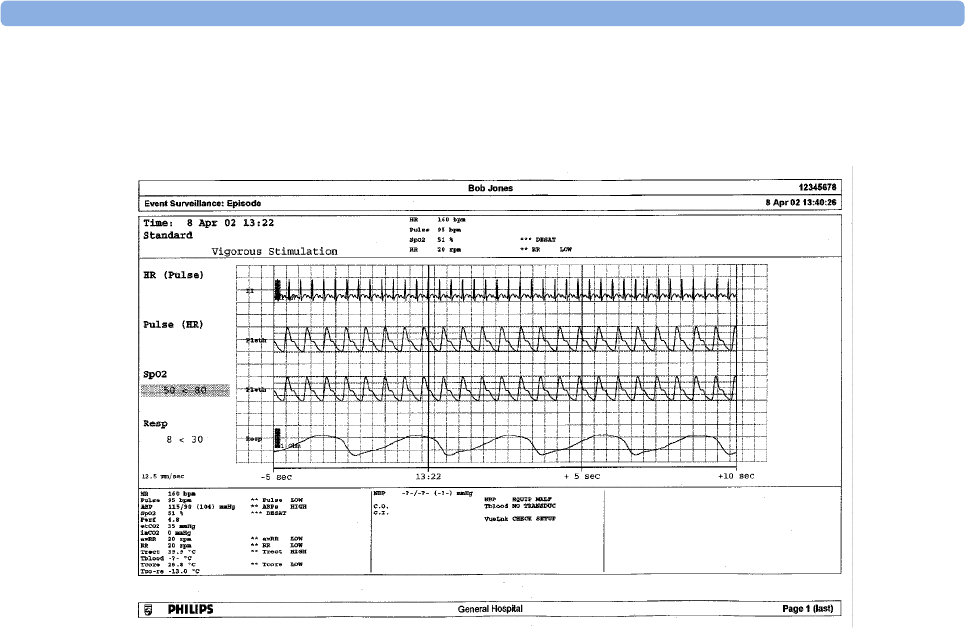Philips Medical Systems North America SRRBV3 SRR Module User Manual ait fm manual
Philips Medical Systems North America Co. SRR Module ait fm manual
IfU example english

Instructions for Use
IntelliVue Patient Monitor
MX400/450/500/550/600/700/800
MX400/450/500/550 Release K with Rev. K.1x.xx
MX600/700/800 Release J with Revison J.xx.xx
Patient Monitoring

3
1Table of Contents
1Introduction 13
Safety Information 14
Security Information 15
Introducing the Monitor 16
Devices for Acquiring Measurements 18
Operating and Navigating 27
Operating Modes 36
Understanding Screens 37
Connecting Additional Displays to the Monitor 38
Using the XDS Remote Display 39
Using the Visitor Screen 39
Understanding Profiles 39
Understanding Settings 41
Changing Wave Speeds 42
Freezing Waves 42
Using Labels 44
Entering Measurements Manually 46
Changing Monitor Settings 47
Checking Your Monitor Revision 48
Getting Started 48
Disconnecting from Power 49
Networked Monitoring 50
Using the Integrated PC 50
Using Your Monitor with a Monitor in Companion Mode 52
2What's New? 55
What's New in Release K.1 (for MX400/450/500/550 only) 55
What's New in Release K.0 55
What's New in Release J.0 56
3Alarms 59
Visual Alarm Indicators 60
Audible Alarm Indicators 61
Acknowledging Alarms 63
Pausing or Switching Off Alarms 64
Alarm Limits 67
Reviewing Alarms 71
Latching Alarms 72
Testing Alarms 73
Alarm Behavior at Power On 73
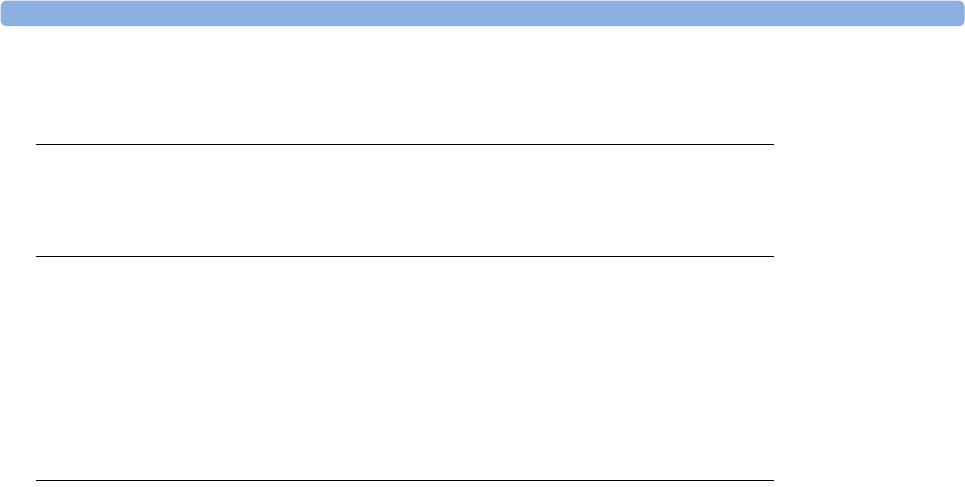
4
Alarm Recordings 73
4Patient Alarms and INOPs 75
Patient Alarm Messages 75
Technical Alarm Messages (INOPs) 81
5Managing Patients and Equipment 105
Patient Concepts 105
Equipment Concepts 105
Managing Patients 106
Managing Equipment 119
Care Groups 126
Information Center Compatibility 132
6ECG, Arrhythmia, ST and QT Monitoring 133
Skin Preparation for Electrode Placement 133
Connecting ECG Cables 133
Selecting the Primary and Secondary ECG Leads 134
Checking Paced Mode 134
Understanding the ECG Display 134
Monitoring Paced Patients 135
Changing the Size of the ECG Wave 136
Changing the Volume of the QRS Tone 137
Changing the ECG Filter Settings 137
Selecting Positions of Va and Vb Chest Leads (for 6-lead placement) 138
Choosing EASI or Standard Lead Placement 138
About ECG Leads 138
ECG Lead Fallback 139
ECG Lead Placements 139
EASI ECG Lead Placement 145
Capture 12-Lead 146
ECG and Arrhythmia Alarm Overview 149
Using ECG Alarms 151
ECG Safety Information 152
About Arrhythmia Monitoring 154
Switching Arrhythmia Analysis On and Off 154
Choosing an ECG Lead for Arrhythmia Monitoring 155
Atrial Fibrillation Alarm 155
Aberrantly-Conducted Beats 156
Intermittent Bundle Branch Block 156
Understanding the Arrhythmia Display 156
Arrhythmia Relearning 159
Arrhythmia Alarms 160
About ST Monitoring 164
Switching ST or STE On and Off 165
Understanding the ST Display 166

5
Updating ST Baseline Snippets 168
Recording ST Segments 168
About the ST Measurement Points 168
ST Alarms 171
STE Alarms 171
Viewing ST Maps 172
About QT/QTc Interval Monitoring 175
QT Alarms 178
Switching QT Monitoring On and Off 179
7Monitoring Pulse Rate 181
Entering the Setup Pulse Menu 181
System Pulse Source 181
Switching Pulse On and Off 182
Using Pulse Alarms 182
8Monitoring Respiration Rate (Resp) 185
Lead Placement for Monitoring Resp 185
Understanding the Resp Display 186
Changing Resp Detection Modes 186
Changing the Size of the Respiration Wave 187
Changing the Speed of the Respiration Wave 188
Using Resp Alarms 188
Changing the Apnea Alarm Delay 188
Resp Safety Information 188
9Monitoring SpO2 191
SpO2 Sensors 191
Applying the Sensor 191
Connecting SpO2 Cables 192
Measuring SpO2 192
SpO2 Signal Quality Indicator (FAST SpO2 only) 193
Assessing a Suspicious SpO2 Reading 194
Changing the Averaging Time 194
Understanding SpO2 Alarms 194
Pleth Wave 200
Perfusion Numeric 200
Perfusion Change Indicator 200
Setting SpO2/Pleth as Pulse Source 200
Setting Up Tone Modulation 201
Setting the QRS Volume 201
Calculating SpO2 Difference 201
10 Monitoring NBP 203
Introducing the Oscillometric NBP Measurement 203
Preparing to Measure NBP 205

6
Starting and Stopping Measurements 207
Enabling Automatic Mode and Setting Repetition Time 208
Enabling Sequence Mode and Setting Up The Sequence 208
Choosing the NBP Alarm Source 209
Switching Pulse from NBP On/Off 209
Assisting Venous Puncture 210
Calibrating NBP 210
11 Monitoring Temperature 211
Making a Temp Measurement 211
Calculating Temp Difference 212
12 Monitoring Invasive Pressure 213
Setting up the Pressure Measurement 213
Zeroing the Pressure Transducer 215
Adjusting the Calibration Factor 217
Displaying a Mean Pressure Value Only 217
Changing the Pressure Wave Scale 217
Optimizing the Waveform 217
Using the Wave Cursor 217
Non-Physiological Artifact Suppression 218
Choosing the Pressure Alarm Source 218
Calibrating Reusable Transducer CPJ840J6 219
Calculating Cerebral Perfusion Pressure 221
Calculating Pulse Pressure Variation 221
Measuring IAP 222
Measuring Pulmonary Artery Wedge Pressure 222
Editing the Wedge 223
Identifying the Pressure Analog Output Connector 224
13 Monitoring Cardiac Output 225
Hemodynamic Parameters 226
Using the C.O. Procedure Window 226
Accessing the Setup C.O. and Setup CCO Menus 228
Entering the HemoCalc Window 228
Measuring C. O. Using the PiCCO Method 228
Measuring C.O. Using the Right Heart Thermodilution Method 233
Documenting C.O. Measurements 235
C.O. Injectate Guidelines 235
C.O./CCO Curve Alert Messages 236
C.O./CCO Prompt Messages 238
C.O./CCO Warning Messages 238
C.O./CCO Safety Information 239
14 Monitoring Carbon Dioxide 241
Measurement Principles 242

7
Measuring CO2 using M3014A or X2 242
Measuring Mainstream CO2 using M3016A 246
Measuring Microstream CO2 using M3015A/B 248
Setting up all CO2 Measurements 250
Understanding the IPI Numeric 252
15 Monitoring Airway Flow, Volume and Pressure 255
Attaching the Flow Sensor 256
Zero Calibration 258
Automatic Purging 258
Manual Purging 259
Gas Compensation 259
Setting up Spirometry 260
16 Monitoring tcGas 263
Identifying tcGas Module Components 263
Setting the tcGas Sensor Temperature 264
Using the tcGas Site Timer 264
Setting the tcGas Barometric Pressure 265
Remembraning the tcGas Transducer 265
Calibrating the tcGas Transducer 265
Applying the tcGas Transducer 267
Finishing tcGas Monitoring 268
Zeroing the tcGas Relative Heat Power 268
TcGas Corrections 268
17 Monitoring Intravascular Oxygen Saturation 271
Selecting a Measurement Label 272
Preparing to Monitor with the M1021A Wide Module 272
Preparing to Monitor with the M1011A Narrow Module 275
Further Information for Both Modules 277
18 Monitoring EEG 279
EEG Monitoring Setup 279
Using the EEG Impedance/Montage Window 280
About Compressed Spectral Arrays (CSA) 282
Changing EEG Settings 283
EEG Reports 284
EEG Safety Information 284
EEG and Electrical Interference 284
19 Monitoring BIS 285
BIS Monitoring Setup 286
BIS Continuous Impedance Check 288
BIS Cyclic Impedance Check 288
BIS Window 289

8
Changing the BIS Smoothing Rate 290
Switching BIS and Individual Numerics On and Off 290
Changing the Scale of the EEG Wave 290
Switching BIS Filters On or Off 290
BIS Safety Information 291
20 Monitoring NMT 293
Stimulation Modes 294
Preparing to Measure NMT 295
Taking NMT Measurements 296
Changing the NMT Measurement Settings 298
Alarms 299
Understanding NMT Numerics 299
21 Guardian Early Warning Scoring 301
Performing the Scoring Procedure 301
Understanding Guardian Early Warning Scoring 303
Viewing EWS Trend Data 304
Using Different Types of Scoring 305
22 Using a Telemetry Device and a Monitor (PIIC only) 307
How Can You Combine Devices? 307
Use Models With Telemetry 309
23 Trends 311
Viewing Trends 311
Setting Up Trends 315
Documenting Trends 319
Trends Databases 319
Screen Trends 320
24 Calculations 325
Viewing Calculations 326
Reviewing Calculations 327
Performing Calculations 327
Entering Values for Calculations 328
Documenting Calculations 329
25 High Resolution Trend Waves 331
Changing the Hi-Res Trend Waves Displayed 331
Hi-Res Trend Wave Scales 331
Hi-Res Trend Waves and OxyCRG 331
Printing Hi-Res Trend Wave Reports 332
Hi-Res Trend Wave Recordings 332

9
26 Event Surveillance 333
Levels of Event Surveillance 333
Event Groups 334
Event Episodes 334
Events Pop-Up Keys 335
Event Triggers 336
The Events Database 339
Viewing Events 340
Annotating Events 342
Documenting Events 342
27 ProtocolWatch 349
SSC Sepsis Protocol 349
28 Recording 357
Paper-Strip Recording 357
Electronic Recording 365
29 Printing Patient Reports 369
Starting Report Printouts 369
Stopping Reports Printouts 371
Setting Up Reports 371
Setting Up Individual Print Jobs 372
Checking Printer Settings 373
Printing a Test Report 374
Switching Printers On or Off for Reports 374
Dashed Lines on Reports 374
Unavailable Printer: Re-routing Reports 374
Checking Report Status and Printing Manually 375
Printer Status Messages 375
Sample Report Printouts 376
30 Using the Drug Calculator 381
Accessing the Drug Calculator 382
Performing Drug Calculations 382
Charting Infusion Progress 385
Using the Titration Table 385
Documenting Drug Calculations 386
31 VueLink Modules 387
Connecting an External Device 388
Changing VueLink Waves and Numerics Displayed 388
Viewing the VueLink Device Data Window 389
Using VueLink Screens 389
Switching VueLink On and Off 389
Alarms/INOPs From External Devices 389

10
Language Conflict with External Device Drivers 390
32 IntelliBridge EC10 391
Connecting an External Device 391
Changing Waves and Numerics Displayed 392
Viewing the IntelliBridge Device Data Window 392
Using Screens with External Device Data 393
Alarms/INOPs from External Devices 393
33 Using Timers 395
Viewing Timers 395
Timer Setup Pop-up Keys 396
Setting Up Timers 396
Displaying a Timer On The Main Screen 397
Displaying A Clock On The Main Screen 398
34 Respiratory Loops 399
Viewing Loops 399
Capturing and Deleting Loops 400
Showing/Hiding Loops 400
Changing Loops Display Size 400
Using the Loops Cursor 400
Changing Loops Type 401
Setting Up Source Device 401
Documenting Loops 401
35 Laboratory Data 403
Viewing Received Data 403
36 Using Batteries 405
Battery Power Indicators 405
Checking Battery Charge 407
When Battery Lifetime is Expired 407
Replacing a Battery 407
Optimizing Battery Performance 408
Battery Safety Information 409
37 Care and Cleaning 411
General Points 411
Cleaning the Equipment 412
Disinfecting the Equipment 412
Sterilizing the Equipment 413
Cleaning, Sterilizing and Disinfecting Monitoring Accessories 413
Cleaning the SO2 Optical Module 413
Cleaning the Recorder Printhead (M1116B only) 413
Cleaning Batteries and the Battery Compartment 414

11
38 Maintenance and Troubleshooting 415
Inspecting the Equipment and Accessories 415
Inspecting the Cables and Cords 416
Maintenance Task and Test Schedule 416
Troubleshooting 417
Returning Equipment for Repair 417
Disposing of the Monitor 417
Disposing of Empty Calibration Gas Cylinders 418
39 Accessories 419
ECG/Resp Accessories 419
NBP Accessories 423
Invasive Pressure Accessories 426
SpO2 Accessories 429
Temperature Accessories 435
Cardiac Output (C.O.) Accessories 436
Mainstream CO2 Accessories 437
Sidestream CO2 Accessories 437
Mainstream CO2 Accessories (for M3016A) 438
Microstream CO2 Accessories 438
Spirometry Accessories 439
tcGas Accessories 439
EEG Accessories 440
BIS Accessories 440
SO2 Accessories for M1021A 440
SO2 Accessories for M1011A 441
NMT Accessories 441
Recorder Accessories 442
Battery Accessories 442
40 Specifications 443
Indications for Use 443
Restricted Availability 444
Use Environment 444
Manufacturer's Information 444
Symbols 445
Installation Safety Information 447
Monitor Mounting Precautions 455
Altitude Setting 456
Monitor Safety Specifications 456
Physical Specifications 457
Environmental Specifications 458
EMC and Radio Regulatory Compliance 462
Monitor Performance Specifications 464
Interface Specifications 470
Display Specifications 474
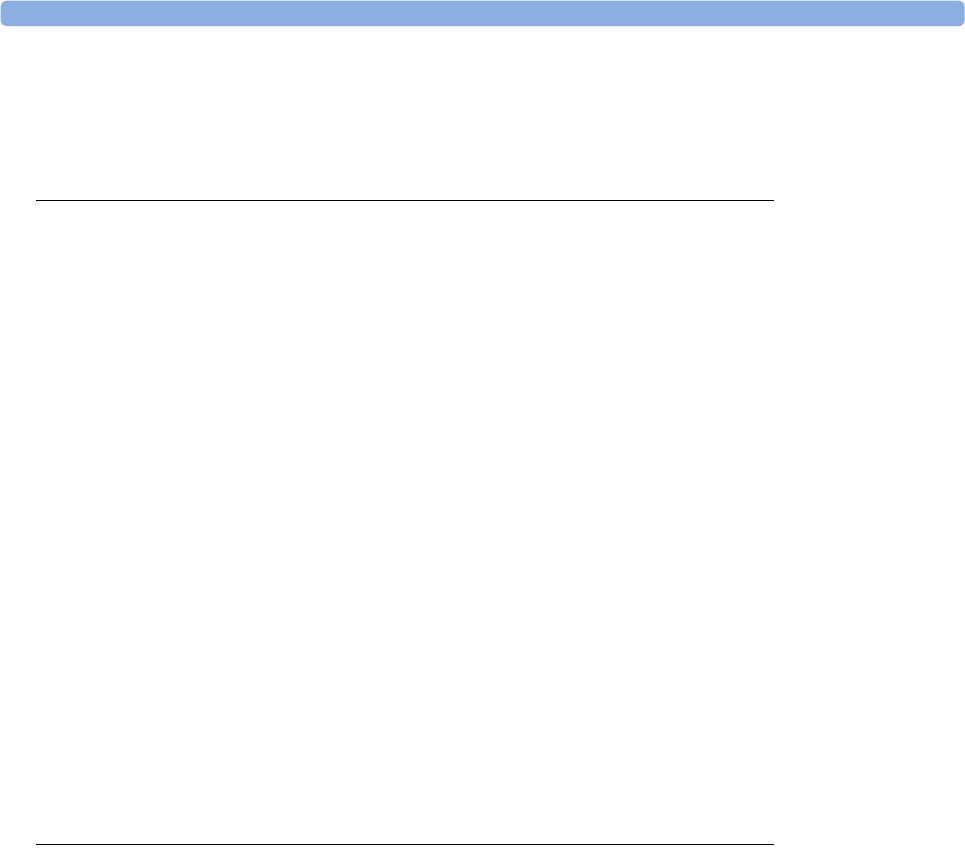
12
M4605A Battery Specifications 475
Measurement Specifications 475
Safety and Performance Tests 495
41 Default Settings Appendix 501
Country-Specific Default Settings 501
Alarm and Measurement Default Settings 508
Alarm Default Settings 508
ECG, Arrhythmia, ST and QT Default Settings 509
Pulse Default Settings 512
Respiration Default Settings 513
SpO2 Default Settings 513
NBP Default Settings 514
Temperature Default Settings 514
Invasive Pressure Default Settings 515
Cardiac Output Default Settings 517
CO2 Default Settings 518
Spirometry Default Settings 518
tcGas Default Settings 519
Intravascular Oxygen Saturation Default Settings 519
SvO2 Default Settings 520
ScvO2 Default Settings 520
EEG Default Settings 520
BIS Default Settings 521
NMT Default Settings 521
VueLink Default Settings 522
Index 523

1
13
1Introduction
These Instructions for Use are for clinical professionals using the IntelliVue MX400/MX450, MX500/
MX550, and MX600/MX700/MX800 patient monitor.
This basic operation section gives you an overview of the monitor and its functions. It tells you how to
perform tasks that are common to all measurements (such as entering data, switching a measurement
on and off, setting up and adjusting wave speeds, working with profiles). The alarms section gives an
overview of alarms. The remaining sections tell you how to perform individual measurements, and
how to care for and maintain the equipment.
Familiarize yourself with all instructions including warnings and cautions before starting to monitor
patients. Read and keep the Instructions for Use that come with any accessories, as these contain
important information about care and cleaning that is not repeated here.
This guide describes all features and options. Your monitor may not have all of them; they are not all
available in all geographies. Your monitor is highly configurable. What you see on the screen, how the
menus appear and so forth, depends on the way it has been tailored for your hospital and may not be
exactly as shown here.
In this guide:
•A warning alerts you to a potential serious outcome, adverse event or safety hazard. Failure to
observe a warning may result in death or serious injury to the user or patient.
•A caution alerts you to where special care is necessary for the safe and effective use of the
product. Failure to observe a caution may result in minor or moderate personal injury or damage
to the product or other property, and possibly in a remote risk of more serious injury.
MX400/
MX450 Whenever a monitor's identifier appears to the left of a heading or paragraph, it means that the
information applies to that monitor only. Where the information applies to all models, no distinction is
made.
For installation, repair, testing and troubleshooting instructions, refer to the Service Guide for your
monitor model.
Rx only: U.S. Federal Law restricts this device to sale by or on the order of a physician.

1Introduction
14
Safety Information
The following warnings apply to the monitors in general. Warnings that apply to specific
measurements or procedures can be found in the corresponding chapters.
Electrical Hazards and Interference
WARNING
Grounding: To avoid the risk of electric shock, the monitor must be grounded during operation. If a
three-wire receptacle is not available, consult the hospital electrician. Never use a three-wire to two-
wire adapter.
Electrical shock hazard: Do not open the monitor or measurement device. Contact with exposed
electrical components may cause electrical shock. Refer servicing to qualified service personnel.
Leakage currents: If multiple instruments are connected to a patient, the sum of the leakage currents
may exceed the limits given in IEC/EN 60601-1, IEC 60601-1-1, UL 60601-1. Consult your service
personnel.
Radio frequency interference: The monitor generates, uses and radiates radio-frequency energy, and
if it is not installed and used in accordance with its accompanying documentation, may cause
interference to radio communications.
Use Environment
WARNING
Explosion Hazard: Do not use in the presence of flammable anesthetics or gases, such as a
flammable anesthetic mixture with air, oxygen or nitrous oxide. Use of the devices in such an
environment may present an explosion hazard.
Positioning Equipment: The monitor should not be used next to or stacked with other equipment.
If you must stack the monitor, check that normal operation is possible in the necessary configuration
before you start monitoring patients.
Environmental Specifications: The performance specifications for the monitors, measurements and
accessories apply only for use within the temperature, humidity and altitude ranges specified in
“Environmental Specifications” on page 458.
Liquid Ingress: If you spill liquid on the equipment, battery, or accessories, or they are accidentally
immersed in liquid, contact your service personnel or Philips service engineer. Do not operate the
equipment before it has been tested and approved for further use.
Prohibited Environments: The monitors are not intended for use in an MRI environment or in an
oxygen-enriched environment (for example, hyperbaric chambers).
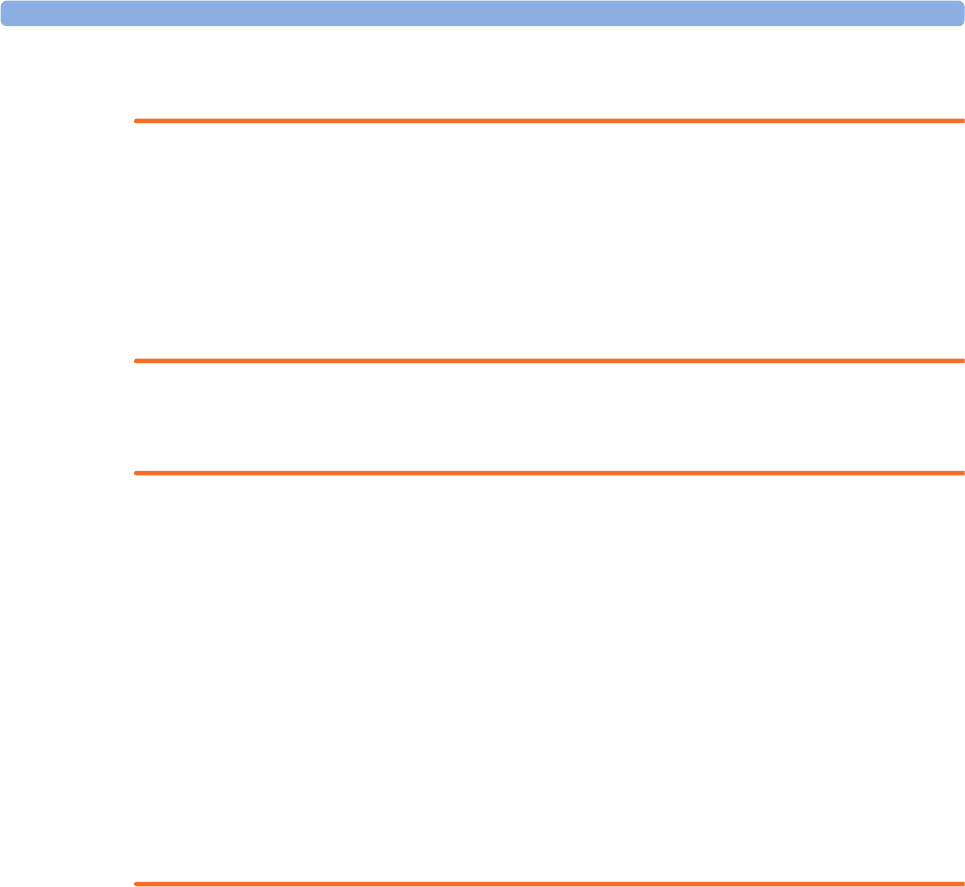
1 Introduction
15
Alarms
WARNING
• Do not rely exclusively on the audible alarm system for patient monitoring. Adjustment of alarm
volume to a low level or off during patient monitoring may result in patient danger. Remember
that the most reliable method of patient monitoring combines close personal surveillance with
correct operation of monitoring equipment.
• Be aware that the monitors in your care area may each have different alarm settings, to suit
different patients. Always check that the alarm settings are appropriate for your patient before you
start monitoring.
Accessories
WARNING
Philips' approval: Use only Philips-approved accessories. Using other accessories may compromise
device functionality and system performance and cause a potential hazard.
Reuse: Never reuse disposable transducers, sensors, accessories and so forth that are intended for
single use, or single patient use only. Reuse may compromise device functionality and system
performance and cause a potential hazard.
Electromagnetic compatibility: Using accessories other than those specified may result in increased
electromagnetic emission or decreased electromagnetic immunity of the monitoring equipment.
Damage: Do not use a damaged sensor or one with exposed electrical contacts.
Cables and tubing: Always position cables and tubing carefully to avoid entanglement or potential
strangulation.
MR Imaging: During MR imaging, remove all transducers, sensors and cables from the patient.
Induced currents could cause burns.
Security Information
Protecting Personal Information
Protecting personal health information is a primary component of a security strategy. Each facility
using the monitors must provide the protective means necessary to safeguard personal information
consistent with country laws and regulations, and consistent with the facility’s policies for managing
this information. Protection can only be realized if you implement a comprehensive, multi-layered
strategy (including policies, processes, and technologies) to protect information and systems from
external and internal threats.
As per its intended use, the patient monitor operates in the patient vicinity and contains personal and
sensitive patient data. It also includes controls to allow you to adapt the monitor to the patient's care
model. To ensure the patient's safety and protect their personal health information you need a security
concept that includes:

1Introduction
16
•Physical security access measures - access to the monitor must be limited to authorized users.
It is essential that you consider physical security measures to ensure that unauthorized users
cannot gain access.
•Operational security measures - for example, ensuring that patients are discharged after
monitoring in order to remove their data from the monitor.
•Procedural security measures - for example, assigning only staff with a specific role the right to
use the monitors.
In addition, any security concept must consider the requirements of local country laws and regulations.
Always consider data security aspects of the network topology and configuration when connecting
patient monitors to shared networks. Your medical facility is responsible for the security of the
network, where sensitive patient data from the monitor may be transferred.
Note: Log files generated by the monitors and measurement modules are used for system
troubleshooting and do not contain patient data.
About HIPAA Rules
If applicable, your facility’s security strategy should include the standards set forth in the Health
Insurance Portability and Accountability Act of 1996 (HIPAA), introduced by the United States
Department of Health and Human Services. You should consider both the security and the privacy
rules and the HITECH Act when designing policies and procedures. For more information, please
visit http://www.hhs.gov/ocr/privacy/.
About the EU Directives
If applicable, your facility’s security strategy should include the practices set forth in the Directive on
the protection of individuals with regard to the processing of personal data and on the free movement
of such data (Directive 95/46/EC of the European Parliament and of the Council of
24 October 1995). In addition, your facility should also take into account any additional, more
stringent standards put forward by any individual EU countries; that is, Germany, France, and so on.
For more information, please visit http://eur-lex.europa.eu/en/dossier/dossier_27.htm.
Philips Product Security Policy Statement
Additional security and privacy information can be found on the Philips product security web site at
http://www.healthcare.philips.com/main/support/equipment-performance/product-security/
index.wpd
Manufacturer Disclosure Statement for Medical Device Security –
MDS2
You can view the Manufacturer Disclosure Statements for Medical Device Security (MDS2) for
specific devices at http://www.healthcare.philips.com/main/support/equipment-performance/
product-security/index.wpd
Introducing the Monitor
The IntelliVue MX400/MX450, MX500/MX550, and MX600/MX700/MX800 patient monitor
offers a monitoring solution optimized for the high-end surgical, cardiac, medical and neonatal care
environments. Combining patient surveillance and data management, it allows multi-measurement
monitoring by linking separate modules. The MX600 uses the navigation knob as primary input device
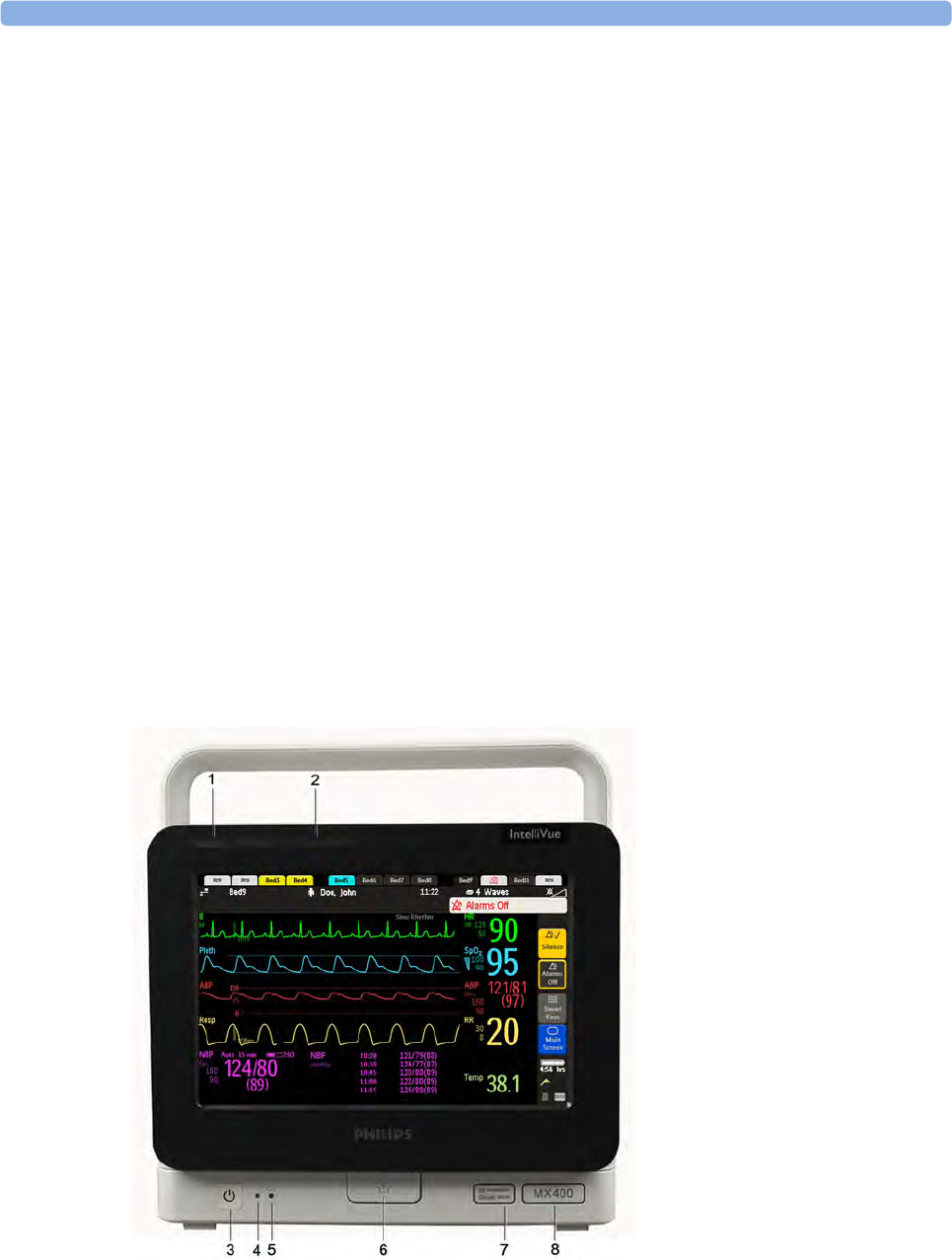
1 Introduction
17
and the MX400/MX450, MX500/MX550, and MX700/MX800 use the touch screen as primary input
device. All monitors have a remote control for convenient access to the five main keys and numeric
data input.
The monitor stores data in trend, event, and calculation databases. You can see tabular trends (vital
signs) and document them on a printer. You can view measurement trend graphs, with up to three
measurements combined in each graph, to help you identify changes in the patient's physiological
condition. You can view fast-changing measurement trends with beat to beat resolution and see up to
four high resolution trend segments. Event surveillance enhances documentation and review of
physiologically significant events by automatically detecting and storing up to 50 user-defined clinical
events over a 24 hour period.
MX600/700/
800 With the optional Integrated PC, you have computer functionality directly in the monitor. You can use
standard applications (e.g. Web browsers), connect to the hospital network or intranet, and run a
second independent display with content from the patient monitor.
An IntelliVue X2 can be connected to your monitor, where it acts as a multi-measurement module,
acquiring measurements for the host monitor. When the X2 is disconnected from the original host
monitor, it continues to monitor the patient as a fully independent, battery powered patient monitor,
eliminating the need for a separate transport monitor. On connection to a new host monitor, the X2
resumes its role as multi-measurement module, ensuring fully continuous monitoring.
Major Parts and Keys
MX400/450/500/550
The MX400/450/500/550 monitors have the same parts, controls and indicators. Here the MX400 is
shown.
1Color coded alarm lamps
2Alarms Off lamp
3Power on/Standby switch with
integrated LED: Green - On/
Standby, Red - Error
4AC power LED
5Battery LED
6Mounting quick-release lever
(when this is pressed the
monitor is not fixed on the
mounting)
7Service number and serial
number
8Device type
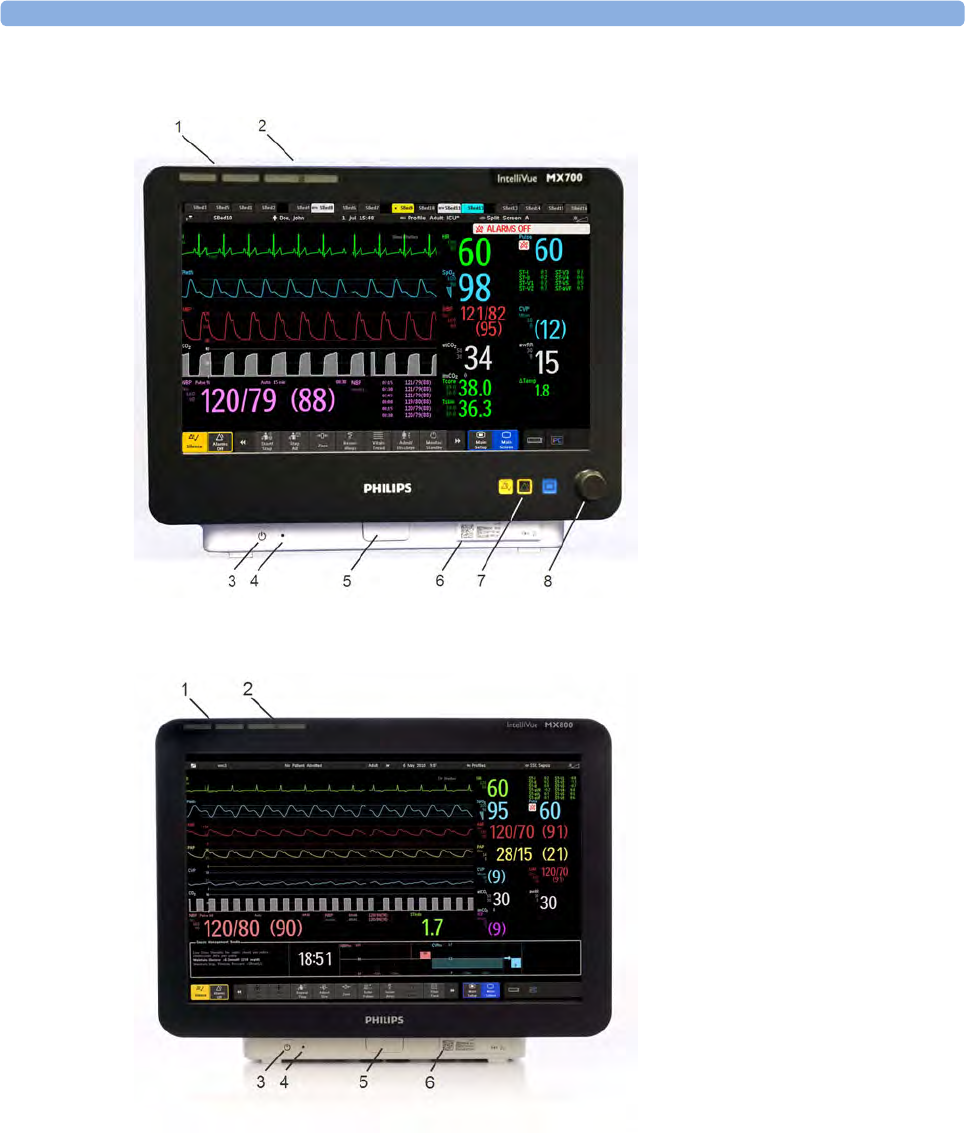
1Introduction
18
MX600/700
MX800
Devices for Acquiring Measurements
The patient monitor acquires patient measurements using the devices described in this section. You
can also extend the measurement capabilities of your monitor with such devices. Of these
measurement devices, only the X2 has its own power on/standby switch, and can be powered from an
external power supply or a rechargeable battery when not directly connected to the monitor (refer to
the IntelliVue X2 Instructions for Use for details). All the rest take their power exclusively from the
1Color coded alarm lamps
2Alarms Off lamp
3Power on/Standby switch with
integrated LED: Green - On/
Standby, Red - Error
4AC power LED
5Mounting quick-release lever
(when this is pressed the
monitor is not fixed on the
mounting)
6Part number and serial number
7Hardkeys (Silence, Alarms Off,
Main Screen)
8Navigation knob
1Color coded alarm lamps
2Alarms Off lamp
3Power on/Standby switch with
integrated LED: Green - On/
Standby, Red - Error
4AC power LED
5Mounting quick-release lever
(when this is pressed the
monitor is not fixed on the
mounting)
6Part number and serial number
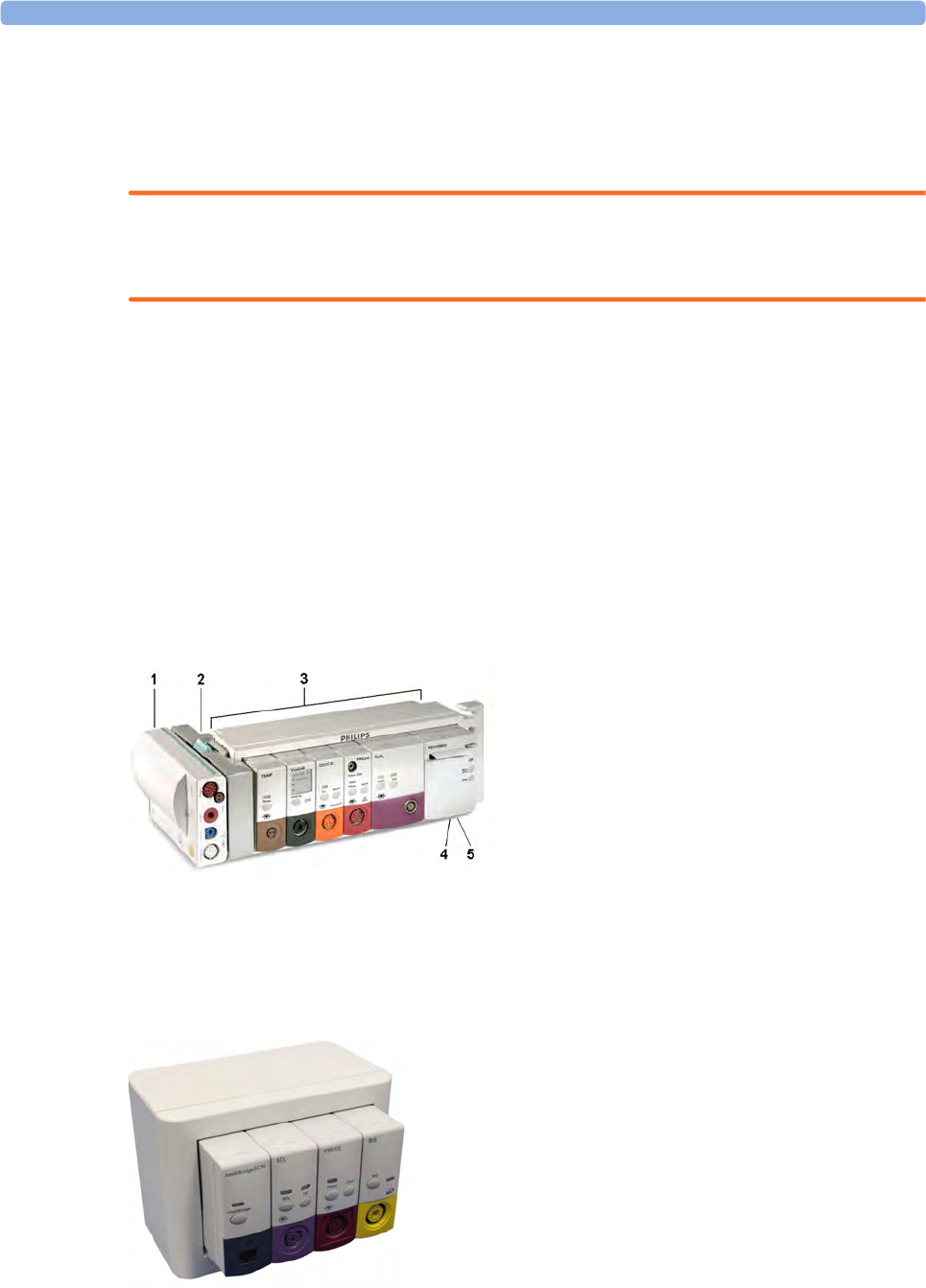
1 Introduction
19
monitor, and switch on automatically when you turn on the monitor. A green power-on LED indicates
when they are drawing power from the monitor. A permanently illuminated, or flashing, red LED
indicates a problem with the unit that requires the attention of qualified service personnel.
All symbols used on the front panels are explained in “Symbols” on page 445.
WARNING
When connecting devices for acquiring measurements, always position cables and tubing carefully to
avoid entanglement or potential strangulation.
Flexible Module Rack (M8048A)
MX600/
MX700/
MX800
The 8-slot flexible module rack (FMS-8) lets you use up to eight plug-in physiological measurement
modules. For the MX800, you can connect two FMSs to use up to 10 measurement modules.
The maximum number of specific module types that can be used simultaneously in an FMS-8 is: five
pressure modules, four temperature modules, four VueLink or IntelliBridge modules (any
combination).
When two FMSs are used, in total a maximum of 10 pressure modules can be used.
Connect the FMS to the monitor via the measurement link cable (MSL). Use the MSL connector on
the left-hand side to connect an additional MMS. Use the connector on the right to connect to the
monitor.
4-Slot Flexible Module Rack (FMS-4)
MX600/
MX700/
MX800
The 4-Slot flexible module rack (FMS-4) lets you use up to four plug-in physiological measurement
modules.
1X1 Multi-Measurement Module
2Multi-Measurement Module
mount
3Flexible Module Rack FMS-8
4Power on LED
5Interruption indicator

1Introduction
20
The maximum number of specific module types that can be used simultaneously in an FMS-4 is: four
pressure modules, four temperature modules, four VueLink or IntelliBridge modules (any
combination).
Connect the FMS to the monitor via the measurement link cable (MSL). Use the MSL connector on
the left-hand side (if you have the appropriate option) to connect an additional MMS. Use the
connector on the back to connect to the monitor.
Measurement Modules
MX500/
MX550 You can use up to three plug-in modules in the optional module slots. Available modules are:
• Invasive blood pressure (M1006B)
• Temperature (M1029A)
• Oxygen saturation of arterial blood (SpO2) (M1020B)
• Cardiac output (M1012A), and Continuous cardiac output with M1012A Option #C10
• Intravascular Oxygen Saturation - ScvO2 or SvO2 (M1011A)
• Spirometry (M1014A)
• EEG (M1027A)
• NMT (865383)
• IntelliBridge EC10 (865115)
• Recorder (M1116B/C)
MX600/
MX700/
MX800
You can use up to eight measurement modules with the Flexible Module Rack (M8048A). Available
modules are:
• Invasive blood pressure (M1006B)
• Temperature (M1029A)
• Oxygen saturation of arterial blood (SpO2) (M1020B)
• Cardiac output (M1012A), and Continuous cardiac output with M1012A Option #C10
• Transcutaneous gas (M1018A)
• Mixed venous oxygen saturation - SvO2 (M1021A)
• Intravascular Oxygen Saturation - ScvO2 or SvO2 (M1011A)
• EEG (M1027A)
• Bispectral Index - BIS (M1034A)
• Spirometry (M1014A)
• NMT (865383)
• VueLink device interface (M1032A)
• IntelliBridge EC10 (865115)
• Recorder (M1116B/C)
MX500/550/
600/700/800 You can plug in and unplug modules during monitoring. Insert the module until the lever on the
module clicks into place. Remove a module by pressing the lever upwards and pulling the module out.
A measurement automatically switches on when you plug the module in, and switches off when you
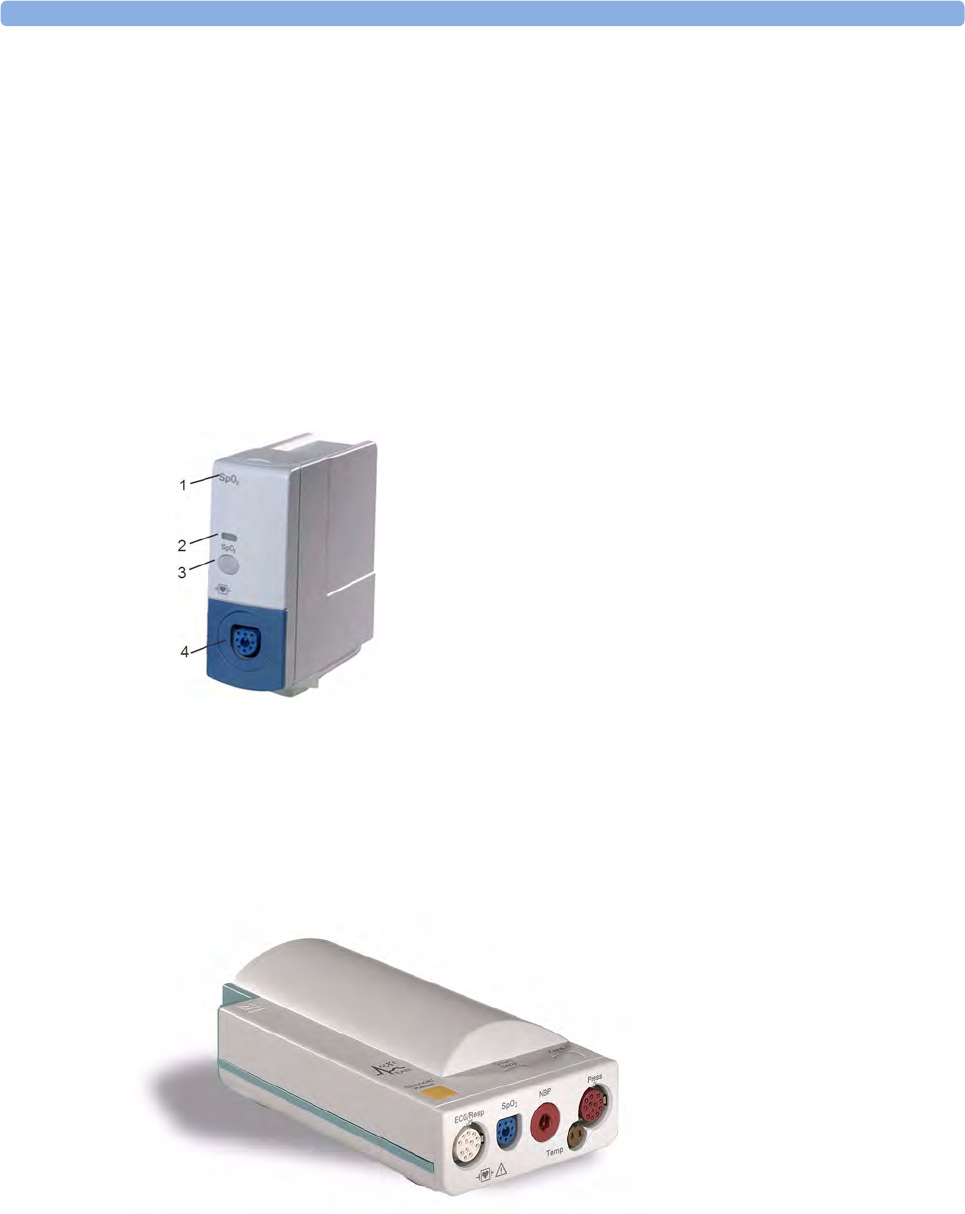
1 Introduction
21
unplug it. Reconnecting a module to the same monitor restores its label and measurement settings,
such as alarms limits. If you connect it to a different monitor, the module remembers only its label.
The connector socket on the front of each module is the same color as the corresponding connector
plug on the transducer or patient cable.
Press the Setup key on the module's front to display the measurement's setup menu on the monitor
screen. When the setup menu is open, a light appears above the key. Some modules have a second key.
On the pressure module, for example, it initiates a zeroing procedure.
Example Module (SpO2)
MX500/550/
600/700/800
X1 Multi-Measurement Module (M3001A)
The X1 Multi-Measurement Module (MMS) can simultaneously monitor 3-, 5-, 6- or 10-lead ECG
(including arrhythmia and ST monitoring), respiration, SpO2, NBP and either invasive pressure or
temperature.
You can connect it to the monitor via a cable or mount it on the left side of the FMS.
1Module name
2Setup key LED
3Setup key to enter setup menu of measurement modules or
external device data window. Some modules have a second
module-specific key next to this one, for example Zero.
4Connector socket for patient cable/transducer
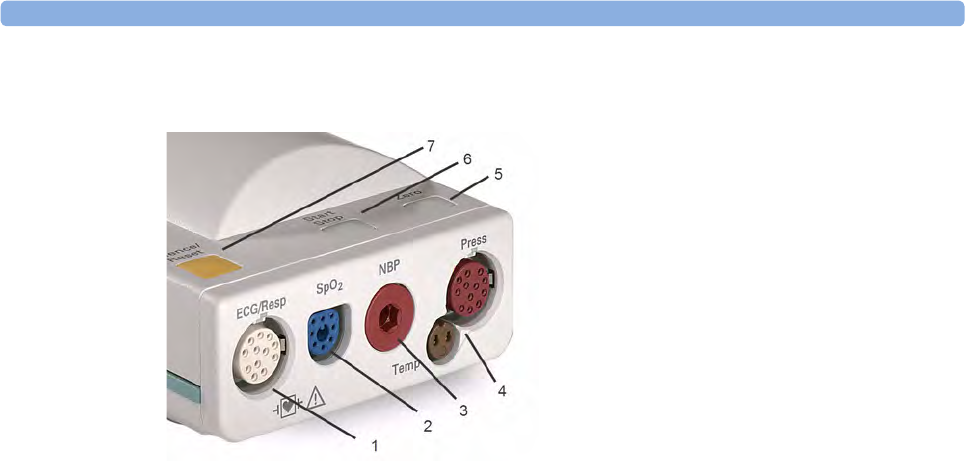
1Introduction
22
X1 Connectors and Symbols
X2 Multi-Measurement Module (M3002A)
The X2 Multi-Measurement Module (MMS) can simultaneously monitor 3-, 5-, 6- or 10-lead ECG
(including arrhythmia and ST monitoring), respiration, SpO2, NBP and either invasive pressure and
temperature, or CO2. It has a color touchscreen display.
The X2 has the added capability to operate as a stand-alone monitor, and can be powered by a
rechargeable battery. This makes it particularly suited to transport situations. When the X2 is
disconnected from the original host monitor, it continues to monitor the patient as a stand-alone
monitor running on battery power, eliminating the need for a separate transport monitor. When the
X2 is connected to a new host monitor, it resumes its role as MMS, ensuring fully continuous
monitoring. For details of using the X2 as a stand-alone monitor, refer to the IntelliVue X2
Instructions for Use.
When connected to a host monitor (Companion Mode is indicated), the X2 takes power from the
host, including that required for battery charging. The X2 can also be powered by AC mains when not
connected to a host monitor using the optionally available external power supply (M8023A). See the
IntelliVue X2 Instructions for Use for details.
1White ECG/Resp connector
2Blue SpO2 connector
3Red NBP connector
4Combined pressure (red) and temperature
(brown) connector - connect either invasive
pressure transducer or temperature probe.
You might have a version of the MMS that
does not have this connector.
5NBP STAT key - starts NBP STAT series
of measurements
or
Zero key - initiates a zero procedure for the
connected pressure transducer when
pressed and held for a second
6NBP Start/Stop key - starts or stops NBP
measurements
7Silence: acknowledges all active alarms by
switching off audible alarm indicators and
lamps
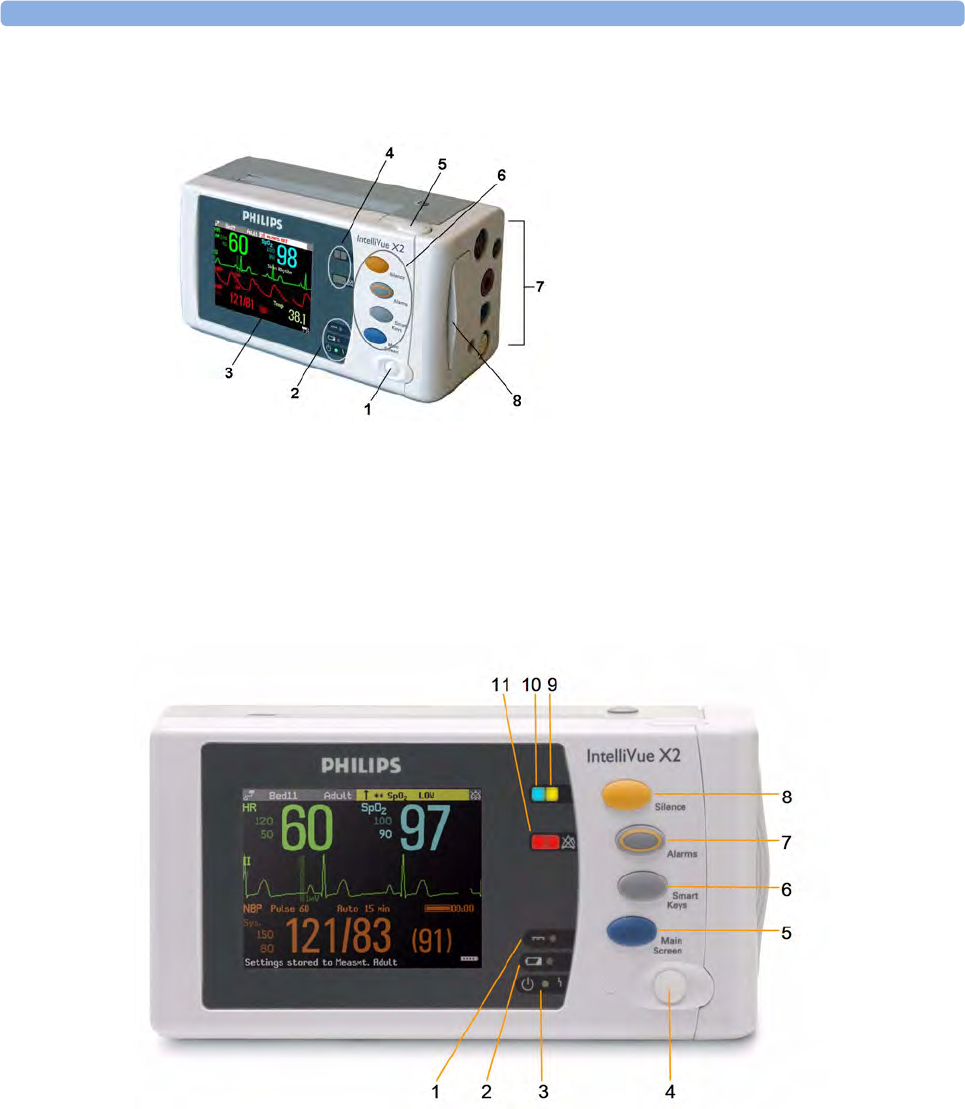
1 Introduction
23
X2 Overview
X2 Controls and Indicators
1External power LED. Green when monitor is powered from an external power source.
2Battery status LED. Yellow when charging. Flashing red when battery is empty.
3On/Standby LED. Green when monitor is on. Red indicates an error.
4On/Standby switch. Disabled when X2 is connected to a host monitor
5Main Screen key: closes all open menus/windows and returns to the main screen.
6SmartKeys key: brings up SmartKeys on the screen.
7Alarms key: turns alarms On/Off, or pauses them.
1On/Standby switch
2Power and battery indicators (see “X2
Controls and Indicators” on page 23)
33.5-inch TFT LCD touchscreen QVGA
display
4Alarm lamps (see “X2 Controls and
Indicators” on page 23)
5Battery eject button
6Hard keys (see “X2 Controls and
Indicators” on page 23)
7Measurement connectors (see “X2 Patient
Connectors, Right Side” on page 24)
8Battery compartment
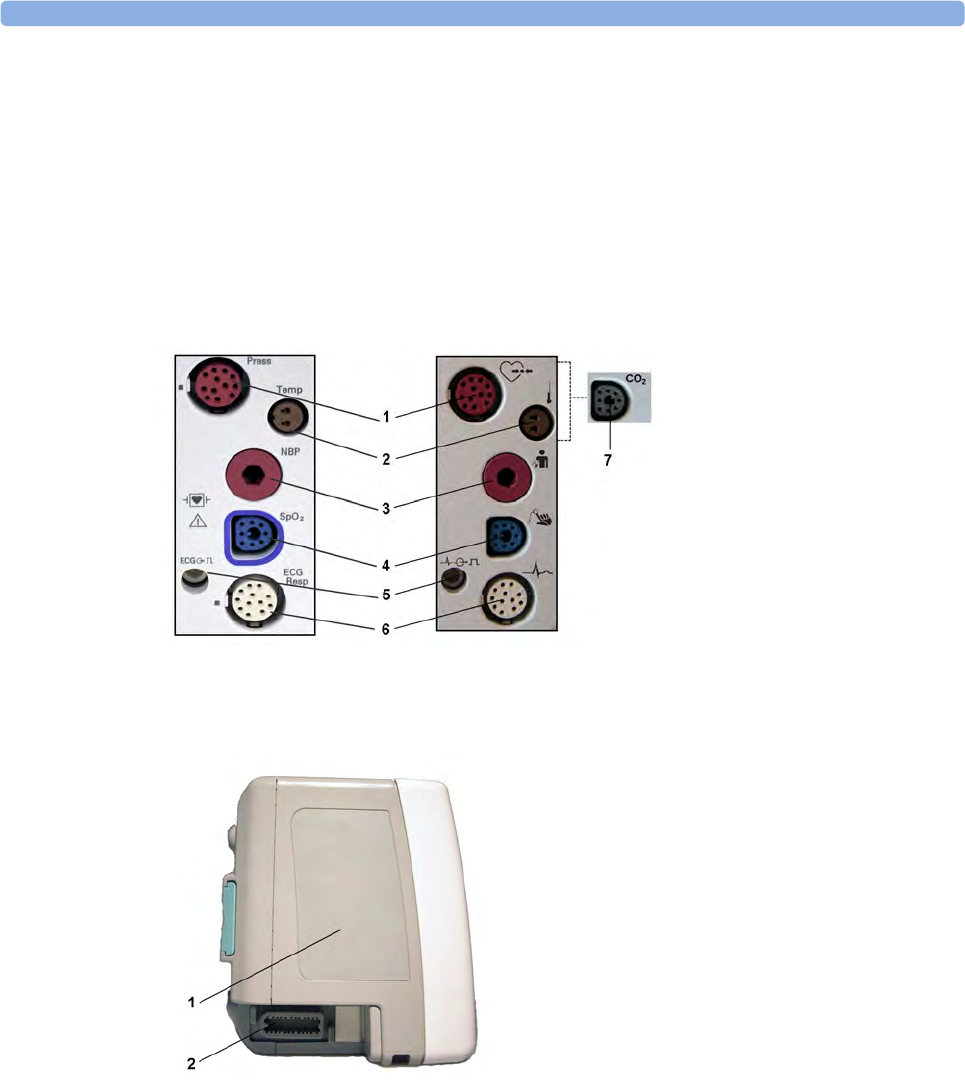
1Introduction
24
8Silence key
9Active alarm lamp. Red or yellow, depending on alarm level. Blinks until active alarm is
acknowledged.
10 Active INOP alarm lamp in light blue. Blinks until active INOP is acknowledged.
11 Alarms off indicator. When alarms are suspended, the lamp is red (or yellow when yellow alarms
are suspended), and the alarms off symbol is shown.
X2 Patient Connectors, Right Side
X2 Left Side
1Pressure (option)
2Temperature (option)
3Noninvasive blood pressure
4SpO2
5ECG sync pulse output
6ECG/Respiration
7CO2 (option in place of
Pressure and Temperature)
1Loudspeaker
2MSL Connector. Connects to the external power
supply or a host monitor via the MSL cable for AC
mains operation, battery charging, and
communication with a network.
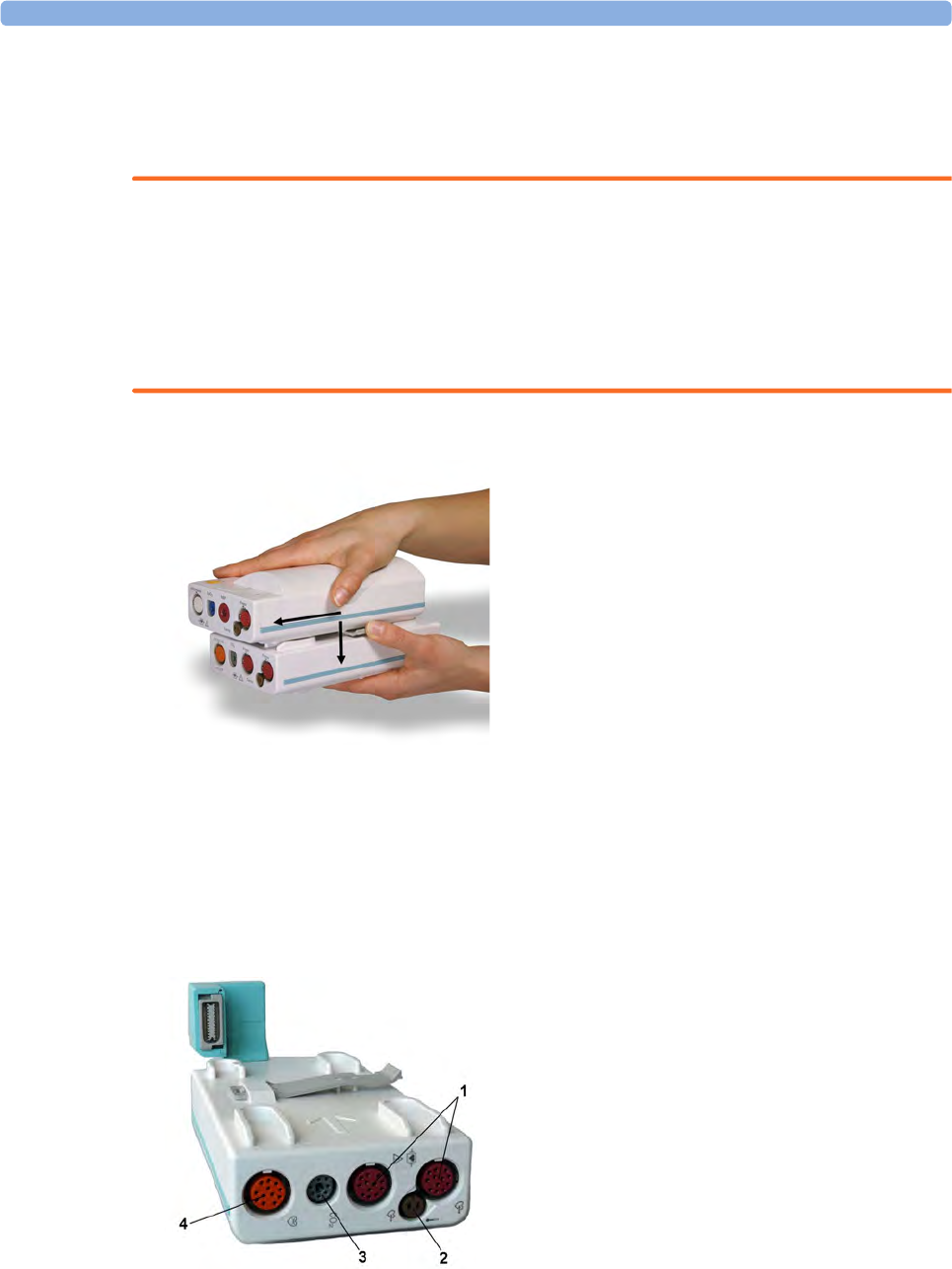
1 Introduction
25
MMS Extensions
The MMS extensions connect to the X1 and X2 MMS and use the MMS settings and power. Trend
data and measurement settings from the measurements in the extensions are stored in the MMS.
WARNING
• The MMS extensions can only function when they are connected to an MMS. If the MMS is
removed during monitoring, the measurements from both the MMS and the extension are lost.
• Measurements from an MMS extension connected to an X2 are not available when the X2 is
running on its own battery power. They are only available when the X2 is powered from AC mains,
when connected to a host monitor or the external power supply (M8023A), or from the Battery
Extension.
To separate an extension from the MMS, press the release lever down, and push the MMS forward.
M3014A, M3015A, M3015B and M3016A Capnography MMS Extensions
The optional M3014A Capnography extension adds mainstream capnography or sidestream
capnography, and optionally one pressure plus either a pressure or a temperature, Cardiac Output and
Continuous Cardiac Output to the MMS.
M3014A
1Pressure connectors (red)
2Temperature connector (brown)
3Mainstream/sidestream connector CO2
4Cardiac Output connector
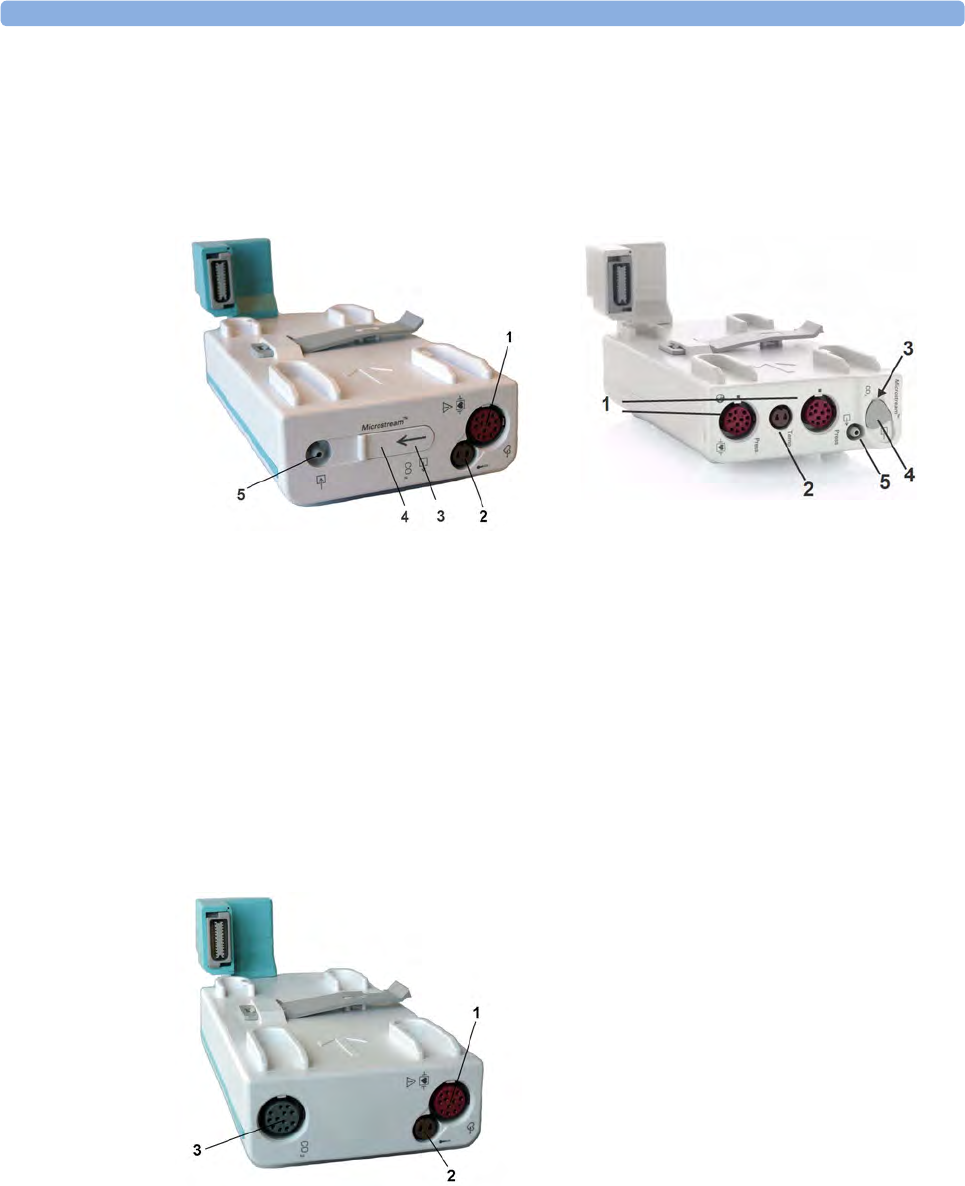
1Introduction
26
The optional M3015A Microstream CO2 extension adds microstream capnography and optionally
either pressure or temperature to the MMS. The optional M3015B Microstream CO2 extension adds
microstream capnography, two pressures and a temperature to the MMS.
MX600/700/
800 The optional M3016A Mainstream CO2 extension adds mainstream capnography and optionally either
pressure or temperature to the MMS.
When a capnography extension is connected to an X2 MMS with CO2, the CO2 from the extension
will be automatically deactivated in favor of the one in the X2. If you prefer to use the CO2
measurement on the extension, you can activate it via the measurement selection key (see “Resolving
Label Conflicts” on page 44).
M3015A M3015B
1Pressure connectors (red) - M3015A optional
2Temperature connector (brown) - M3015A optional
3Inlet
4Microstream connector CO2
5Gas sample outlet
M3016A
1Pressure connector (red)
2Temperature connector (brown)
3Mainstream/sidestream connector CO2
(optional)
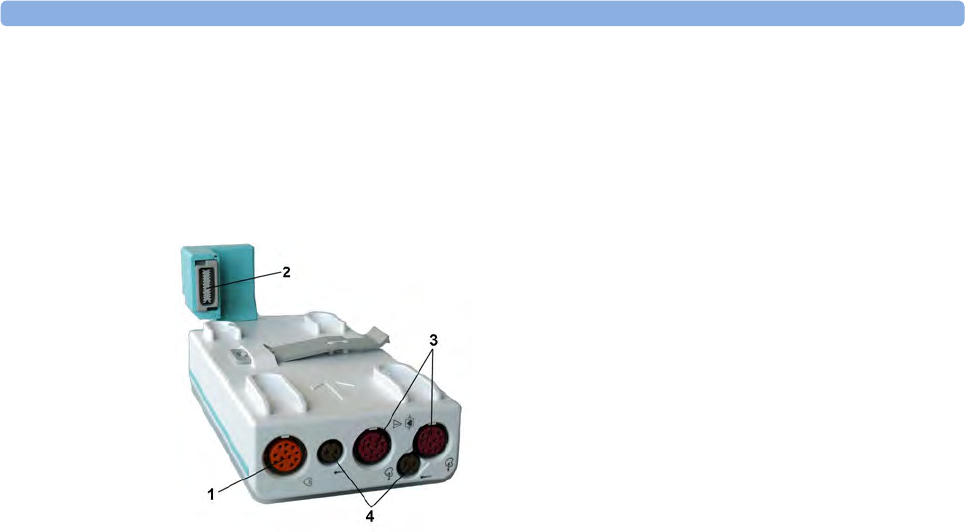
1 Introduction
27
The cardiac output measurement in the M3014A is deactivated when the extension is used with an X2
MMS, even if the X2 is connected to an external power supply. The cardiac output measurement is
only available when the X2 is connected to a host monitor.
M3012A Hemodynamic MMS Extension
The M3012A Hemodynamic extension can be connected to the M3001A Multi-Measurement Module
to provide the following additional measurements: Temperature, Pressure, an additional Pressure or
Temperature, and C.O. and CCO measurements.
The cardiac output measurement is deactivated when the extension is used with an X2 MMS unless the
X2 is connected to a host monitor.
Using MMSs in a Mixed Software Environment
When an MMS is used with monitors having different software revisions, be aware that functionality
set up in a monitor with a newer revision will disappear when the MMS is connected to a monitor with
an older revision without that functionality. For example, if an X2 is used with a revision H monitor
and has been set up to alarm on Afib, this alarm will no longer exist when the X2 is connected to a
revision G monitor. If you work in a mixed software environment, inform yourself about the
differences between revisions by referring to the What's New chapter.
Operating and Navigating
Everything you need to operate the monitor is contained on its screen. Almost every element on the
screen is interactive. Screen elements include measurement numerics, waveforms, screen keys,
information fields, alarms fields and menus. The typical operator's position is in front of the monitor.
The configurability of the monitor means that often you can access the same element in different ways.
For example, you might be able to access an item through its on-screen setup menu, via a hard key, or
via a SmartKey.
1Cardiac Output (orange; optional)
2Connection to MMS
3Pressure connectors (red)
4Temperature connectors (brown)
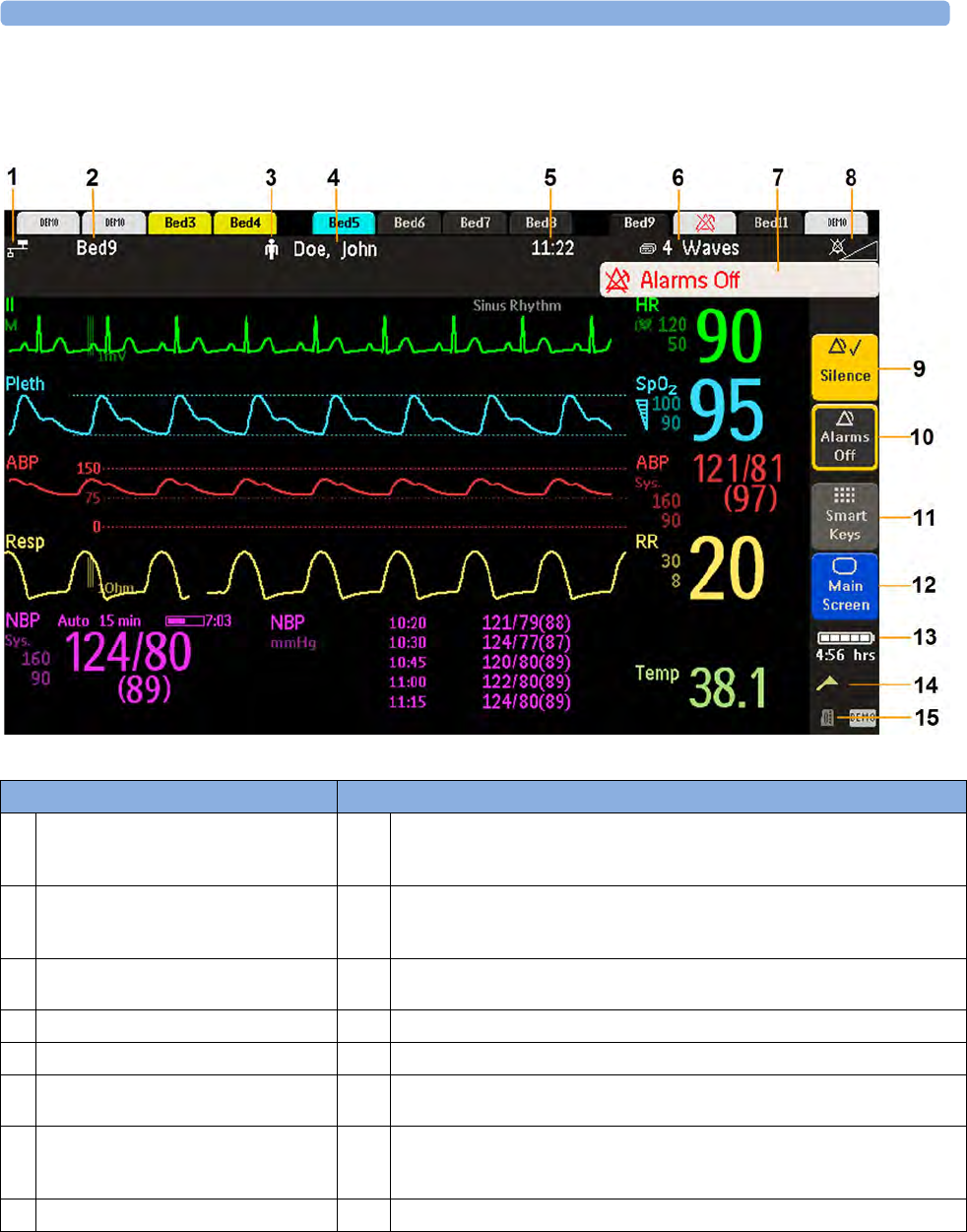
1Introduction
28
MX400
On the MX400, the permanent keys and the key to access the SmartKeys are on the right of the screen.
Monitor information line Other screen elements
1network connection indicator
(documented in Troubleshooting in the
Service Guide)
9Silence - acknowledges all active alarms by switching off audible alarm indicators
and lamps permanently or temporarily, if alarm reminder (ReAlarm) is configured
on.
2bed label - gives access to Equipment
window 10 Pause Alarms or Alarms Off - stops alarms being announced for a set time or
switches them off. Select again to immediately switch alarms on again. Can be
configured not to appear here.
3patient category symbol 11 SmartKeys -displays a block of SmartKeys. These change according to your
monitor's configuration
4patient name 12 close all open menus and windows and return to main screen
5date and time 13 battery indicator with remaining battery time
6current screen name/enter Change Screen
menu 14 status messages indicator - clicking this area displays any pending status messages
7alarm status area - shows active alarm
messages or Alarms Off symbol when
alarms are switched off
15 measurement selection symbol - opens Measurement Selection window to resolve
label conflicts
8alarms off/alarm volume indicator
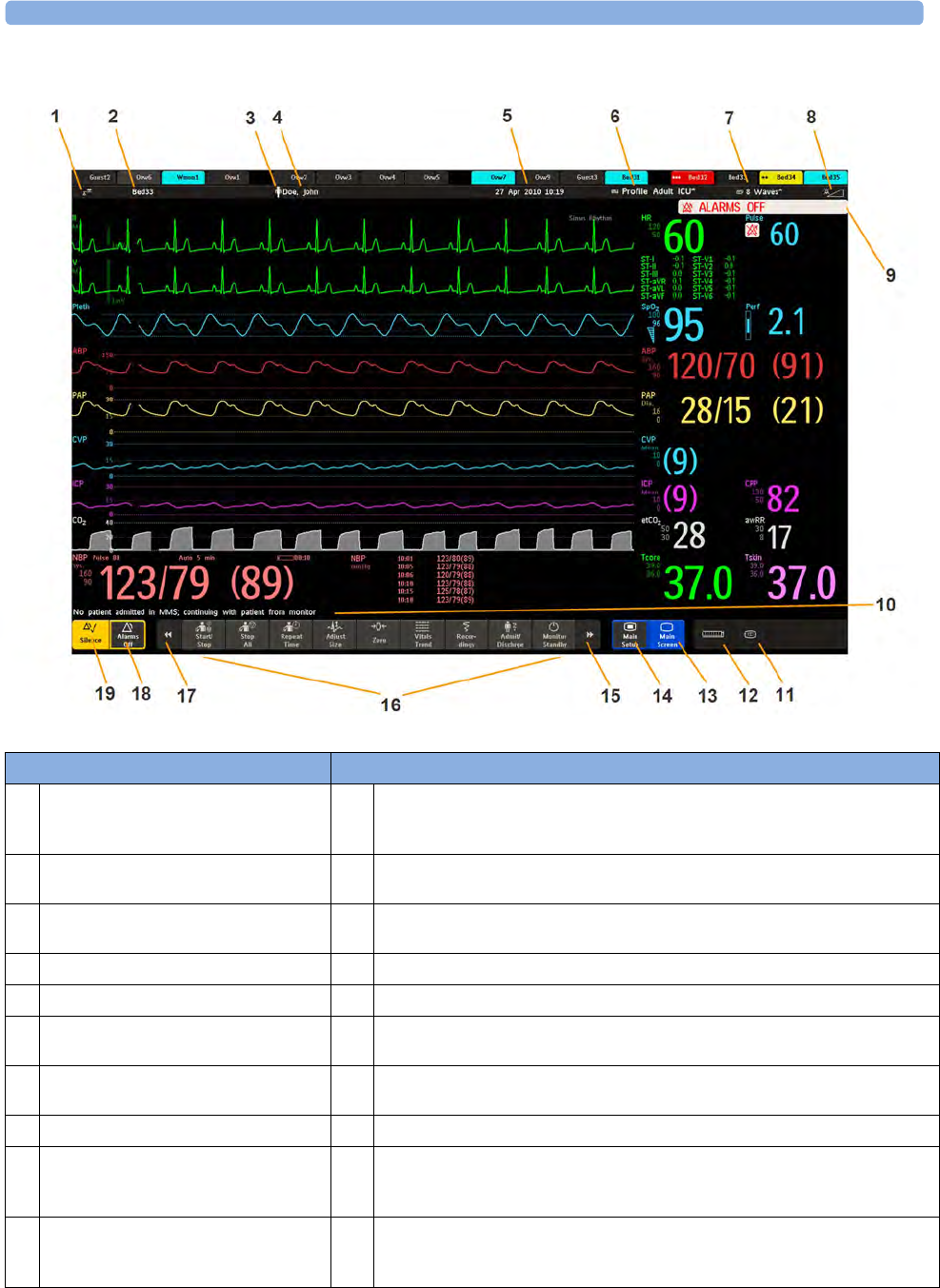
1 Introduction
29
MX450/500/550/600/700/800
Monitor information line Other screen elements
1network connection indicator
(documented in Troubleshooting in the
Service Guide)
10 The status line shows messages with information and prompts you for possible
actions (MX400/450/500/550 do not have a reserved space for this feature).
2bed label - gives access to Equipment
window 11 remote application symbol or iPC symbol (MX600/700/800 only)
3patient category symbol 12 measurement selection symbol - opens Measurement Selection window to
resolve label conflicts
4patient name 13 close all open menus and windows and return to main screen
5date and time 14 enter Main Setup menu
6access the Profiles menu or Profile
name, depending on configuration 15 scroll right to display more SmartKeys
7current screen name/enter Change
Screen menu 16 SmartKeys - these change according to your monitor's configuration
8adjust alarm volume/level indicator 17 scroll left to display more SmartKeys
9alarm status area - shows active alarm
messages or Alarms Off symbol when
alarms are switched off
18 Pause Alarms or Alarms Off - stops alarms being announced for a set time or
switches them off. Select again to immediately switch alarms on again. Can be
configured not to appear here.
19 Silence - acknowledges all active alarms by switching off audible alarm indicators
and lamps permanently or temporarily, if alarm reminder (ReAlarm) is configured
on.
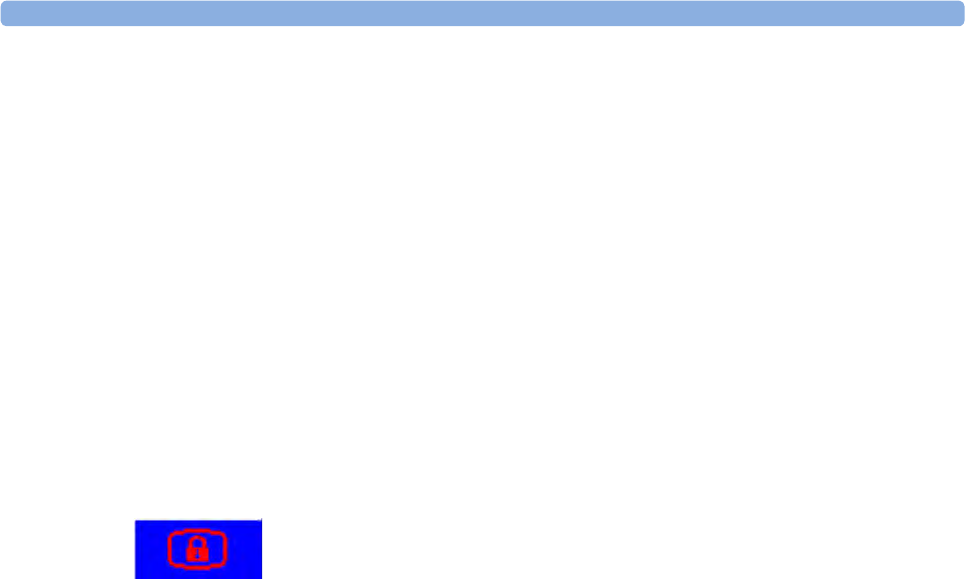
1Introduction
30
Selecting Screen Elements
Select a screen element to tell the monitor to carry out the actions linked to the element. For example,
select the Patient Identification element to call up the Patient Demographics window, or select the
HR numeric to call up the Setup ECG menu. Select the ECG wave segment to call up the ECG Lead
menu.
Note that the space between each line of a menu may be configured to wide or narrow to facilitate
your most common method of operation, either touch, remote control or a pointing device such as a
mouse.
Using the Touchscreen
Select screen elements by pressing them directly on the monitor's screen.
Disabling Touchscreen Operation
To temporarily disable touchscreen operation of the monitor, press and hold the Main Screen
permanent key. A padlock will appear on the Main Screen permanent key.
Press and hold the Main Screen permanent key again to re-enable the touchscreen operation.
Using a Mouse or Trackball
If you are using a mouse or trackball, select screen elements by clicking on them (press and release the
left mouse button). While you are moving the mouse, a cursor appears and a highlight shows your
current position.
Moving Windows
You can move windows and menus using the Touchscreen or a mouse. To move a window,
1Select the title of the window and keep your finger on the title, or the mouse button pressed.
2Move your finger on the Touchscreen, or move the mouse, to move the window.
3Take your finger off the screen, or release the mouse button, to place the window in the final
position.
The new position is only active until the window or menu is closed. Not all locations on the screen can
be a target position, a window cannot overlap the monitor info line, the alarms and INOPs or the
status line.
Using Keys
The monitor has four different types of keys:
Permanent Keys
A permanent key is a graphical key that remains on the screen all the time to give you fast access to
functions.
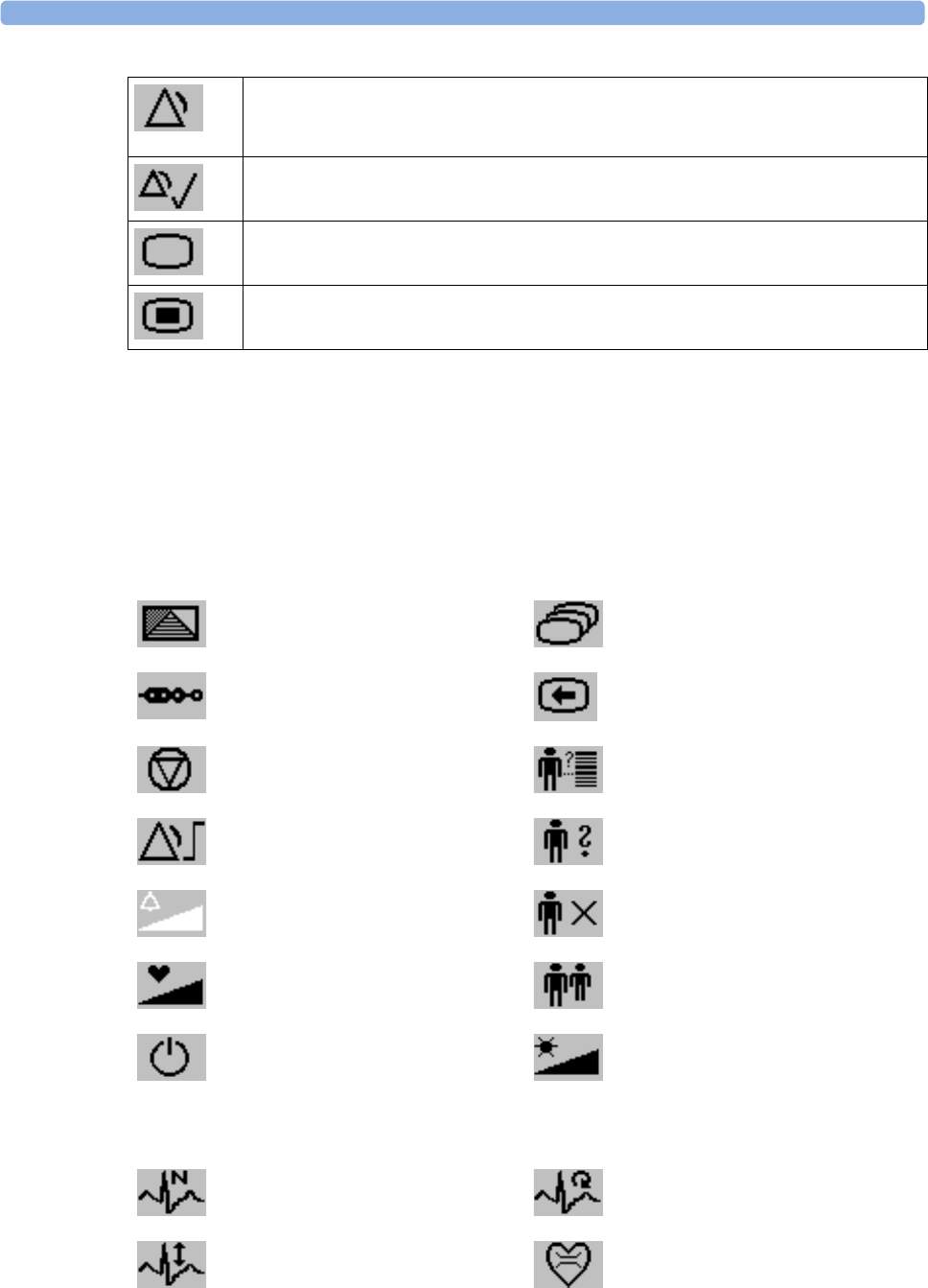
1 Introduction
31
SmartKeys
A SmartKey is a configurable graphical key, normally located at the bottom of the main screen. On
some models, a selection of SmartKeys is displayed by selecting the SmartKeys permanent key on the
right of the main screen.
SmartKeys give you fast access to functions. The selection of SmartKeys available on your monitor
depends on your monitor configuration and on the options purchased. If you have an integrated PC
(iPC) you may also see SmartKeys generated by applications on the iPC.
Pause Alarms - pauses alarm indicators. Pause duration depends on monitor
configuration. If pause duration is infinite, this key is labeled Alarms Off.
Select again to immediately re-enable alarm indicators.
Silence - acknowledges all active alarms by switching off audible alarm indicators and
lamps.
Main Screen - close all open menus and windows and return to the main screen.
Main Setup - enter main setup menu.
enter profile menu, or revert to
default profile
change Screen, or revert to default
screen
show BIS Sensor previous Screen
freeze waves quick admit a patient
set alarm limits enter patient demographics menu to
admit/discharge/transfer
change alarm volume end case to discharge a patient
change QRS volume view information for patients in
other beds
enter standby mode - suspends
patient monitoring. All waves and
numerics disappear from the display.
All settings and patient data
information are retained.
change screen brightness (not for
independent displays)
review beat labels (annotate
arrhythmia wave)
re-learn arrhythmia
change amplitude (size) of ECG
wave
enter cardiac output procedure
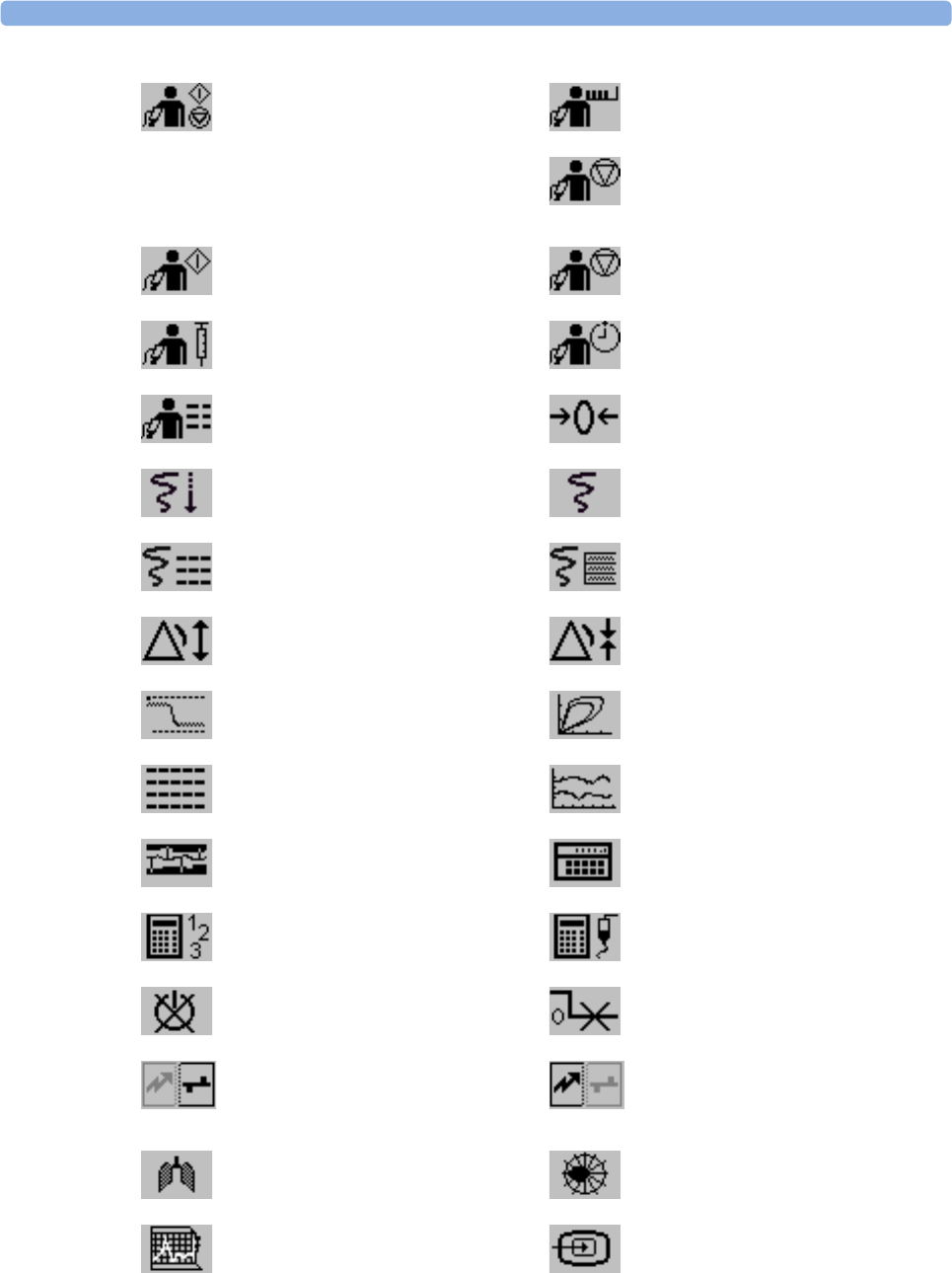
1Introduction
32
- start/stop manual NBP
measurement
- start auto series
- stop current automatic
measurement within series
start NBP STAT measurement
stop automatic or STAT NBP
measurement and measurement
series
start NBP measurement and
measurement series
stop current NBP measurement
start veni puncture (inflate cuff to
subdiastolic pressure)
set the NBP repeat time
access NBP mode selection and
setup, with direct start/stop function
zero invasive pressure transducer
start a delayed recording access pop-up recording keys
access Vital Signs recording function access Select Waves recording
function
set wide automatic alarm limits set narrow automatic alarm limits
access wedge procedure window access the Loops window
review vital signs trend review graph trend
access event surveillance access calculations
access the calculator access the Drug Calculator
gas analyzer - exit standby mode suppress zero for all gas
measurements
unpair equipment and continue
central monitoring with the monitor
unpair equipment and continue
central monitoring with the telemetry
device
access the spirometry data window access ST Map application
start 12-Lead Capture (only available
if Information Center is connected)
access remote applications (if
Application Server is connected)
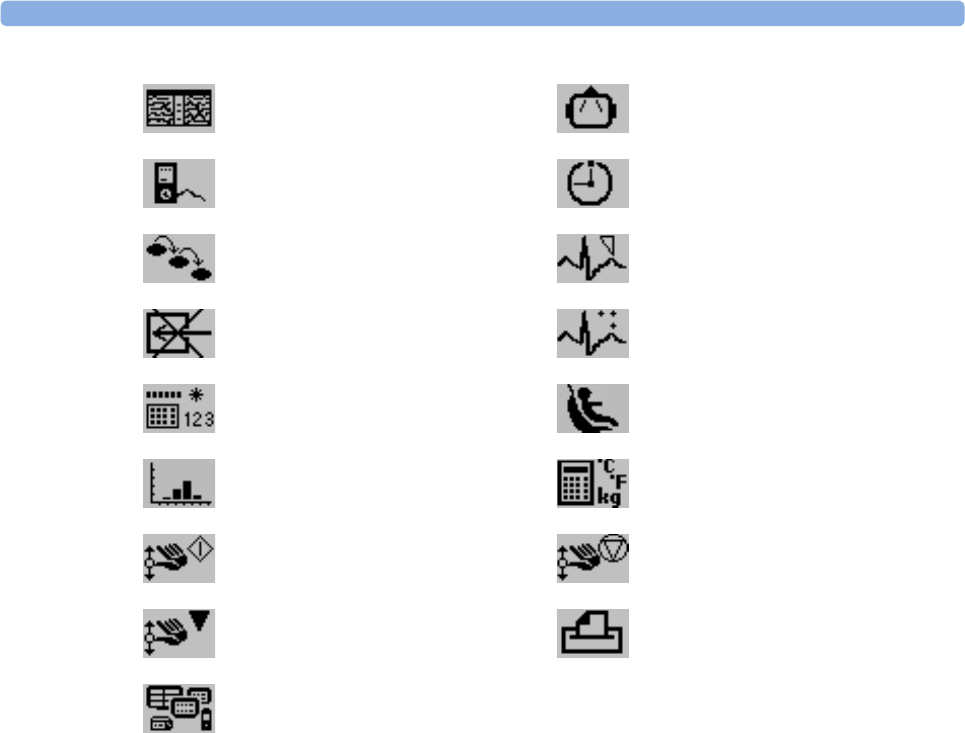
1 Introduction
33
Hardkeys
A hardkey is a physical key on a monitoring device, such as the zero pressure key on the MMS or a
setup key on a module.
Pop-Up Keys
Pop-up keys are task-related graphical keys that appear automatically on the monitor screen when
required. For example, the Confirm pop-up key appears only when you need to confirm a change.
access EEG CSA access the EEG montage
display external device information access timers
access ProtocolWatch set standard or EASI lead placement
switch CO2 pump off new lead setup
enter data manually start/stop car seat assessment record
open the Histogram window open Unit Conversion window
start an NMT measurement cycle stop an NMT measurement cycle
start NMT calibration access patient reports
open the Equipment window
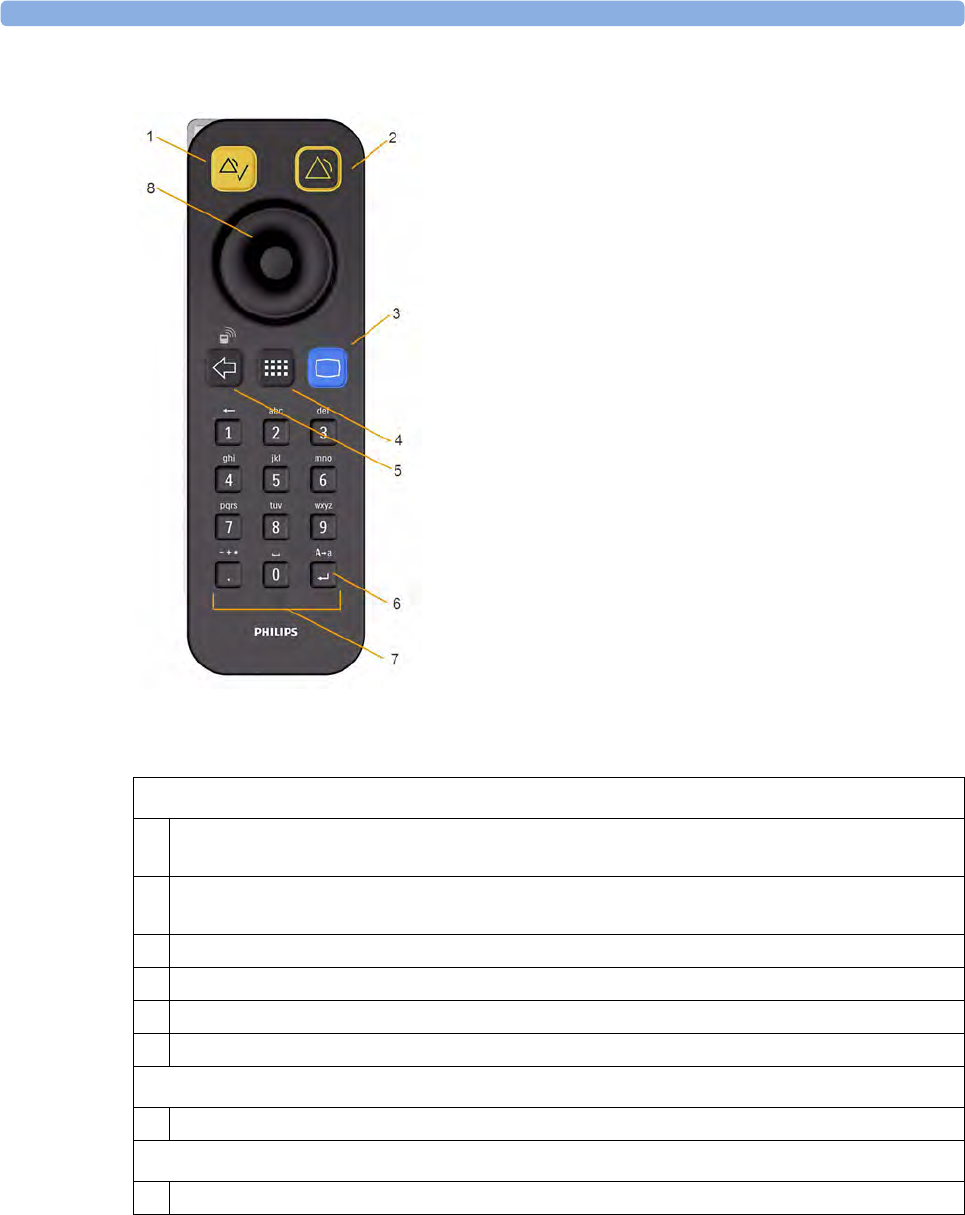
1Introduction
34
Using the Remote Control
The remote control provides you with direct access to five hard keys, a navigation knob and a numeric
keypad:
The remote control can be used with a USB cable connection to the monitor or without a cable using
short range radio. When used without a cable, the remote control must be assigned to the monitor.
The assignment is made in Configuration or Service mode.
Hardkeys
1Silence - acknowledges all active alarms by switching off audible alarm indicators and lamps.
Behavior follows the Silence permanent key configuration.
2Alarms Off/Pause Alarms - pauses alarm indicators. Behavior follows the Pause Alarms
permanent key configuration.
3Main Screen - close all open menus and windows and return to the main screen.
4SmartKeys - display a block of SmartKeys specially configured for remote tasks (see below)
5Back - go back one step to the previous menu.
6Enter - mark the end of data entry
Keypad
7 Type numeric data on the keypad and press the Enter key to enter the data on the monitor.
Navigation knob
8 Rotate the knob to highlight screen elements, then press to select the highlighted element.
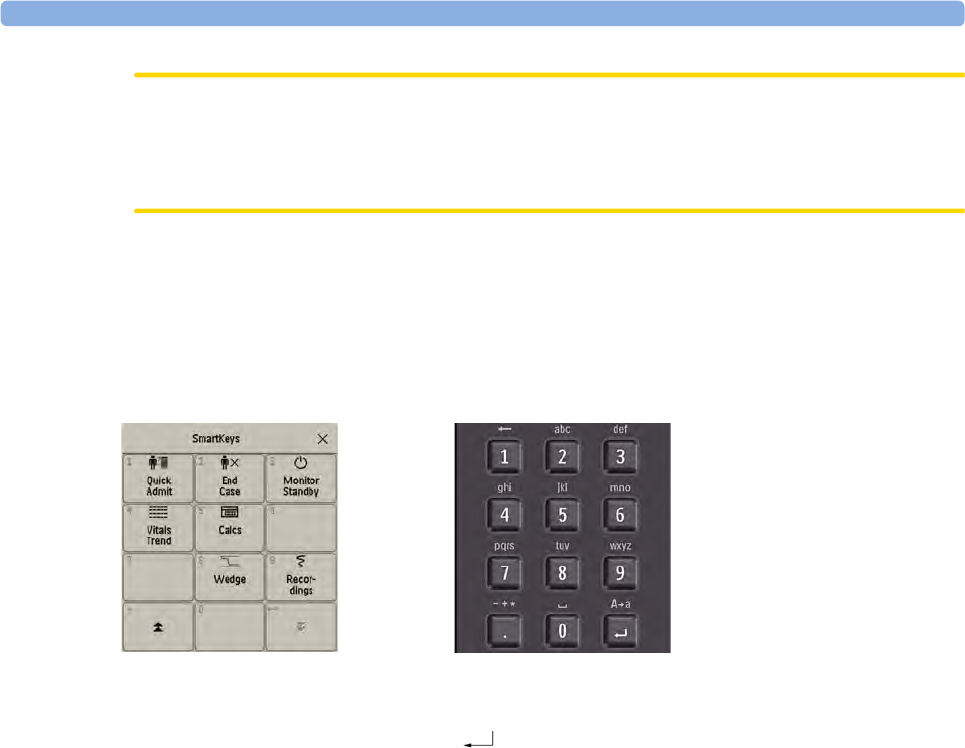
1 Introduction
35
CAUTION
When using a remote control without a cable, it is important that the user knows which remote control
is assigned to which monitor. Use the tethering cable delivered with the remote control to attach it to a
bed rail or IV pole, or label the remote control with the bed or monitor ID.
Using the SmartKeys Key
The SmartKeys hard key on the remote control displays a block of SmartKeys on the monitor screen.
Nine SmartKeys appear in a 3 by 3 matrix which corresponds to the layout of the numeric pad on the
remote control.
Pressing the 1 key on the remote control selects the top left SmartKey, pressing the 8 key selects the
bottom center SmartKey. The .and the key can be used to select the arrow keys to page up and
down in the available SmartKeys.
The SmartKeys which appear can be configured so that you have the functions available which you
most often need when using the remote control. If no list of SmartKeys has been configured, the
standard SmartKeys will be displayed and you can page through to the key you want.
Using the On-Screen Keyboard
Use this as you would a conventional keyboard. Enter the information by selecting one character after
another. Use the Shift and capital Lock keys to access uppercase letters. Use the Back key to delete
single characters, or use the Clr key to delete entire entries. Select Enter to confirm what you have
entered and close the on-screen keyboard.
If a conventional keyboard is connected to the monitor, you can use this instead of or in combination
with the on-screen keyboard.
Using the On-Screen Calculator
You can use the on-screen calculator to perform any of the standard operations for which you would
normally use a handheld calculator.
• To access the on-screen calculator, select the Calculator SmartKey, or select Main Setup then
Calculations followed by Calculator.

1Introduction
36
Operating Modes
When you switch the monitor on, it starts up in monitoring mode. To change to a different mode:
1Select the Main Setup menu.
2Select Operating Modes and choose the mode you require.
Your monitor has four operating modes. Some are passcode protected.
•Monitoring Mode: This is the normal, every day working mode that you use for monitoring
patients. You can change elements such as alarm limits, patient category and so forth. When you
discharge the patient, these elements return to their default values. Changes can be stored
permanently only in Configuration Mode. You may see items, such as some menu options or the
altitude setting, that are visible but ‘grayed out’ so that you can neither select nor change them.
These are for your information and can be changed only in Configuration Mode.
•Demonstration Mode: Passcode protected, this is for demonstration purposes only. You must
not change into Demonstration Mode during monitoring. In Demonstration Mode, all stored
trend information is deleted from the monitor’s memory.
•Configuration Mode: Passcode protected, this mode is for personnel trained in configuration
tasks. These tasks are described in the Configuration Guide. During installation the monitor is
configured for use in your environment. This configuration defines the default settings you work
with when you switch on, the number of waves you see and so forth.
• Service Mode: Passcode protected, this is for trained service personnel.
When the monitor is in Demonstration Mode, Configuration Mode, or Service Mode, this is indicated
by a box with the mode name in the center of the Screen and a symbol in the bottom right-hand
corner. Select the mode box in the center of the screen to change to a different mode.
When an X2 is connected to a host monitor (Companion Mode is indicated):
• The monitor in companion mode will adopt the operating mode of the host monitor.
• You cannot change the operating mode at the monitor in companion mode.
Standby Mode
Standby mode can be used when you want to temporarily interrupt monitoring.
To enter Standby mode,
• select the Monitor Standby SmartKey or
•select
Main Setup, followed by Monitor Standby.
The monitor enters Standby mode automatically after the End Case function is used to discharge a
patient.
Standby suspends patient monitoring. All waves and numerics disappear from the display but all
settings and patient data information are retained. A special Standby screen is displayed. This can be
configured to a moving image or a blank screen, or to your own custom image. If a temporary patient
location has been entered at the monitor or at the Information Center, this location will also be
displayed on the Standby screen.
To resume monitoring,
• Select anything on the screen or press any key.
When monitoring is resumed, alarms are paused for 1 minute to allow time to finish plugging in the
measurement cables.
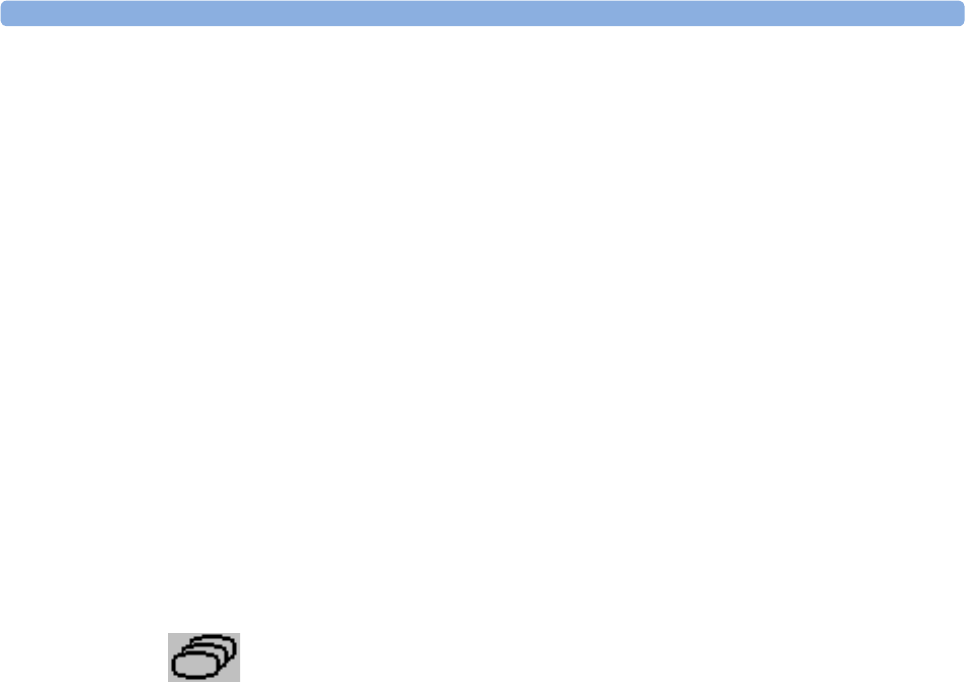
1 Introduction
37
If you connect an X2 that is powered on (and not in Standby) to a host monitor in Standby mode, the
host will leave Standby mode. When connected to a host monitor, with both the host and the monitor
in companion mode in Standby mode, leaving Standby on the monitor in companion mode will also
make the host leave Standby.
Understanding Screens
Your monitor comes with a set of pre-configured Screens, optimized for common monitoring
scenarios such as "OR adult", or "ICU neonatal". A Screen defines the overall selection, size and
position of waves, numerics and other elements on the monitor screen when you switch on. You can
easily switch between different Screens during monitoring. Screens do NOT affect alarm settings,
patient category and so forth.
When you switch from a complex to a less complex Screen layout, some measurements may not be
visible but are still monitored in the background. If you switch to a more complex Screen with, for
example, four invasive pressure waves but you have only two pressures connected to the monitor, the
"missing" two pressures are either left blank or the available space is filled by another measurement.
Switching to a Different Screen
1To switch to a different Screen, select the current Screen name in the monitor info line, or select
the Change Screen SmartKey.
2Choose the new Screen from the pop-up list.
Changing a Screen's Content
If you do not want to change the entire Screen content, but only some parts of it, you can substitute
individual waves, numerics, high-res waves, or trends. Be aware that these changes cannot be stored
permanently in Monitoring Mode.
To change the selection of elements on a Screen,
1Select the element you want to change.
2From the menu that appears, select Change Wave, Change Numeric, or ChangeHiResTrend, and
then select the wave or numeric you want, or select the high-resolution trend wave you want from
the list of available waves.
If you do not see Change Numeric in the menu, this Screen may be configured to always display
the numeric beside its wave. Changing the wave will automatically change the numeric.
The changed Screen is shown with an asterisk in the monitor info line.
In the Change Screen menu, the changed Screen is shown linked to the original Screen and marked
with an asterisk.
Up to three modified Screens can be accessed via the Change Screen menu.
To recall Screens, either
• select the name of the Screen in the Change Screen menu
or
• use the previous arrow at the top of the Change Screen menu to move back in the Screen history.
The ten most recently-used Screens including up to three modified Screens can be accessed.

1Introduction
38
After a patient discharge, the monitor's default Screen is shown. Modified Screens are still available in
the Change Screen menu.
If the monitor is switched off and then on again, modified Screens are erased from the monitor's
memory and cannot be recalled. If a modified Screen was the last active Screen when the monitor was
switched off, it is retained (unless Automat. Default is configured to Yes).
Connecting Additional Displays to the Monitor
You can connect a second display, showing the same Screen as the main display, to your monitor, for
viewing only.
Independent Displays
MX600/700/
800 If you have the optional independent display interface, you can connect a second display which can be
configured and operated individually using standard input devices.
For monitors with multiple displays and multiple input devices, the usage and behavior can be
configured according to specific requirements at installation (for example, use for two independent
operators or tracking of mouse input across two displays). For details refer to the Service Guide.
When two operators are using two displays, the scope of an action depends on the type of operation:
• Patient monitoring operations such as Silence or Pause alarms take effect for the monitor as a
whole, the results will be seen on both displays.
• Display operations such as the Main Screen key and Back hardkey will take effect only on the
display being operated.
If you are operating two displays with one remote control, to navigate from one display to another:
1Move the highlight to the Main Screen key and then turn one click further.
The highlighting moves to a special "jump" field at the edge of the Screen.
2Press the navigation knob on the remote control to confirm; the highlighting will automatically
move to the other display.
The content of each Screen can be changed individually as described in the previous section. If you are
operating two displays, you can choose Screens for both displays from one location:
1Select Profiles in the monitor info line of the first display,
2Select Display 1, or Display 2, then select the Screen you want to appear on that display from the
list of available Screens.
When two displays are mounted next to each other or one above the other, a special Screen can be
assigned which spans across both displays. The Screen content for these Tall and Wide Screens can
then use the increased area available with two displays. These Screens appear in the Screen list with a
special Tall Screen or Wide Screen symbol.
Certain windows (for example: cardiac output procedure) can only be shown on one display at a time.
If you try to open one of these windows when it is already shown on another display, you will see a
blank gray window with a cross through it.

1 Introduction
39
Using the XDS Remote Display
MX600/700/
800 Using the IntelliVue XDS solution it is possible to view an independent monitor screen on an external
display. The XDS solution consists of a medical grade PC-based hardware platform, XDS application
software and the XDS connectivity option on the monitor. Depending on the configuration you can
also operate the monitor from the external display. The XDS must be connected to the same Local
Area Network (LAN) as the monitor.
It is also possible to use an existing PC, connected to the same LAN, to host the XDS Application
software.
For more details, including limitations and restrictions, refer to the IntelliVue XDS Application
Instructions for Use.
Using the Visitor Screen
If a visitor Screen is configured for your monitor, you can use it to clear the screen of all waves and
numerics but continue to monitor the patient with active alarms and trend storage at the bedside and
Information Center. You can change the name of the visitor Screen in Configuration Mode.
• To activate this Screen, select the Screen name in the monitor info line to open the Change Screen
menu, then select the name of the visitor Screen configured for your monitor from the list of
available Screens.
To select a Screen with waves and numerics again,
• Select the visitor Screen's name below the clock to open the Change Screen menu and select a
different Screen to show waves and numerics again.
Understanding Profiles
Profiles are predefined monitor configurations. They let you change the configuration of the whole
monitor so you can adapt it to different monitoring situations. The changes that occur when you
change a complete profile are more far reaching than those made when you change a Screen. Screens
affect only what is shown on the display. Profiles affect all monitor and measurement settings.
The settings that are defined by Profiles are grouped into three categories. Each category offers a
choice of 'settings blocks' customized for specific monitoring situations. These categories are:
•Display (screens)
Each profile can have a choice of many different predefined screens.
If you are using a second display, each display can have its own individual screen selection. When
you change the profile, the screen selection configured for the new profile becomes active.
•Measurement Settings
Each profile can have a choice of different predefined measurement settings. These relate directly
to individual measurements, for example, measurement on/off, measurement color, alarms limits,
NBP alarm source, NBP repeat time, temperature unit (°F or °C), pressure unit (mmHg or kPa).
•Monitor Settings
Each profile can have a choice of different predefined monitor settings. These relate to the
monitor as a whole; for example, display brightness, alarms off/paused, alarm volume, QRS tone
volume, tone modulation, prompt tone volume, wave speed, resp wave speed, pulse source.
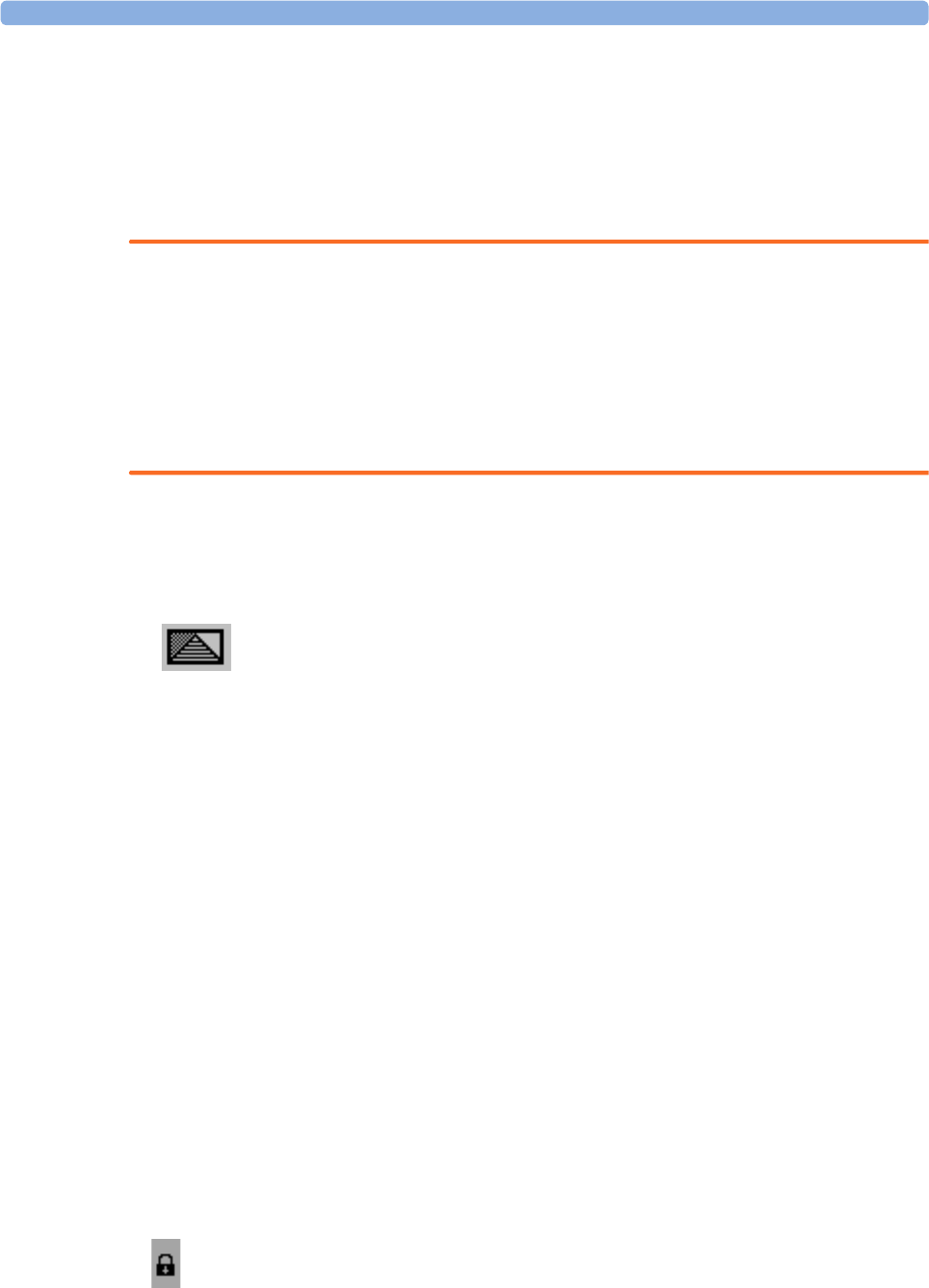
1Introduction
40
You can change from one complete profile to another or swap individual settings blocks (display/
monitor settings/measurement settings) to change a subset of a profile. Changes you make to any
element within the settings blocks are not saved when you discharge the patient, unless you save them
in Configuration Mode.
Depending on your monitor configuration, when you switch on or discharge a patient the monitor
either continues with the previous profile, or resets to the default profile configured for that monitor.
WARNING
• If you switch to a different profile, the patient category and paced status normally change to the
setting specified in the new profile. However some profiles may be set up to leave the patient
category and paced status unchanged. Always check the patient category, paced status, and all
alarms and settings, when you change profiles.
• If your monitor is configured to show the profile name in the info line at the top of the screen, be
aware that individual settings may have been changed by other users or by settings synchronization
since the profile was loaded. Hence settings may be different than implied by the profile name.
When you leave Demonstration Mode, the monitor uses the default profile.
Swapping a Complete Profile
1Select Profiles in the monitor info line, or select the Profiles SmartKey.
2Select the Profile Details pop-up key.
3In the Profiles menu, select Profile.
4Choose a profile from the pop-up list.
5Confirm your selection.
Swapping a Settings Block
1Select the Profile in the monitor info line.
2Select the Profile Details pop-up key.
3In the Profile Details menu, select Display or Measmnt.Settings or Monitor Settings to call up a
list of the settings blocks in each category.
4Choose a settings block from the pop-up list.
5Confirm your selection.
Default Profile
Your monitor has a default profile that it uses when you leave Demonstration mode, or when you
discharge a patient. This profile is indicated by a diamond shaped symbol.
Locked Profiles
Some profiles are locked, so that you cannot change them, even in Configuration Mode.
These are indicated by this lock symbol.

1 Introduction
41
Understanding Settings
Each aspect of how the monitor works and looks is defined by a setting. There are a number of
different categories of settings, including,
Screen Settings, to define the selection and appearance of elements on each individual Screen
Measurement settings, to define settings unique to each measurement, for example, high and low
alarm limits
Monitor settings, including settings that affect more than one measurement or Screen and define
general aspects of how the monitor works, for example, alarm volume, reports and recordings, and
display brightness.
You must be aware that, although many settings can be changed in Monitoring Mode, permanent
changes to settings can only be done in the monitor's Configuration Mode. All settings are reset to the
stored defaults:
• when you discharge a patient
• when you load a Profile
• when the monitor is switched off for more than one minute (if Automat. Default is set to Yes).
Changing Measurement Settings
Each measurement has a setup menu in which you can adjust all of its settings. You can enter a setup
menu:
• via the measurement numeric - select the measurement numeric to enter its setup menu. For
example, to enter the Setup ECG menu, select the HR (heart rate) numeric.
• via the Setup hardkey (on plug-in modules) - press the Setup hardkey on the module front.
•via the Main Setup permanent key - if you want to setup a measurement when the measurement is
switched off, use the Main Setup permanent key and select Measurements. Then select the
measurement name from the pop-up list. With this permanent key you can access any setup menu
in the monitor.
• via the Measurement Selection key.
This guide always describes the entry method using the setup menu. But you can use any method you
prefer.
Switching a Measurement On and Off
When a measurement is off, its waves and numerics are removed from the monitor's screen. The
monitor stops data acquisition and alarming for this measurement. A measurement automatically
switches off if you disconnect its module or MMS. If you disconnect a transducer, the monitor
replaces the measurement numeric with question marks. If you silence the resulting INOP, the
measurement is switched off. Also if you pause or switch off alarms, the measurement may be
switched off completely, depending on your configuration.
1Enter the measurement's setup menu and select the measurement.
2Select the measurement name to switch between on and off. The screen display indicates the active
setting.

1Introduction
42
Switching Numerics On and Off
For some measurements, such as EEG, you can choose which numerics to view on the screen.
In the measurement's setup menu, select the numeric name to toggle between on and off.
For example in the Setup EEG menu, select the EEG numeric name to toggle between on and off.
Adjusting a Measurement Wave
To quickly adjust wave-related measurement settings (such as speed or size), select the measurement
wave itself. This displays the measurement wave menu, which has only wave-related measurement
settings.
Changing Wave Speeds
Lowering the wave speed compresses the wave and lets you view a longer time period. Increasing the
speed expands the waveform, giving you a more detailed view.
The monitor distinguishes three groups of wave speed settings:
•RespiratorySpeed, for all respiratory waves: CO2, anesthetic agents and O2
•EEG Speed, for all EEG and BIS waves
•Global Speed, for all waves not included in the other two groups.
Changing the Wave Group Speed
The wave speed group setting defines the speed of all the waves in the group.
To change the wave speed of a wave speed group,
1Select Main Setup, then select User Interface
2Select Global Speed, RespiratorySpeed, or EEG Speed as required
3Select a value from the list of available speeds.
Changing Wave Speed for a Channel
To change the wave speed of an individual wave channel,
1Enter the Wave menu for a measurement by selecting its wave.
2Select Change Speed.
3To set the speed to the wave group speed, select RespiratorySpeed, EEG Speed, or Global Speed.
To set an individual channel speed, select a numeric value from the list of available speeds. This
overrides the wave group speed setting and set the speed for the individual wave channel on the
monitor Screen. The wave channel speed is independent of the wave (label) depicted in the
channel, if you change the wave, the new wave will retain the set channel speed.
Freezing Waves
You can freeze waves on the screen and measure parts of the wave using cursors. The waves are frozen
with a history of 20 seconds so that you can go back and measure what you have seen.

1 Introduction
43
Freezing An Individual Wave
To freeze a wave,
1Enter the Wave menu for the measurement by selecting the wave on the screen.
2Select Freeze Wave.
The realtime wave is replaced with the frozen wave.
Freezing All Waves
To freeze all waves on the screen,
1Select the Freeze Waves SmartKey.
All realtime waves are replaced with frozen waves.
Measuring Frozen Waves
To measure a frozen wave,
1Select the frozen wave.
If you are using touch, this automatically positions the vertical cursor. The cursor can be
repositioned by touching the required point on the wave, or
2Using the SpeedPoint or another pointing device or touch: use the right/left arrow keys to move
the vertical cursor.
The vertical cursor moves through the time axis and the current value is displayed next to the
cursor.
3Use the up/down arrow keys to activate and move the horizontal cursor.
The horizontal cursor measures the wave value, which is displayed above the cursor line. If the
wave is a pressure wave, the cursor value can be stored as a systolic, diastolic or mean pressure
value; if the pressure wave is a PAP wave it can also be stored as a PAWP value; for pressure waves
P, P1 to P8 it can also be stored as an IAP value. The stored value appears in the trend database as
a manually entered value.
Changing The Wave Speed
Lowering the wave speed compresses the wave and lets you view a longer time period. Increasing the
speed expands the waveform, giving you a more detailed view.
To change the wave speed:
1Select the frozen wave.
2Select Change Speed.
3Select a speed from the list.
Updating The Frozen Wave
To update the wave, that is freeze the current wave:
1Select the frozen wave.
2Select Freeze Again.

1Introduction
44
Releasing Frozen Waves
To release frozen waves,
1Select a frozen wave.
2Select Unfreeze Waves.
All frozen waves are released.
Using Labels
Every measurement associated with a monitor is identified by a unique label. You may have more than
one instance of some measurements, for example pressure, being used simultaneously. The monitor
uses the labels to distinguish between them. The default settings defined in the profile (such as
measurement color, wave scale, and alarm settings) are stored within each label. When you assign a
label to a measurement, the monitor automatically applies these default settings to the measurement.
The labels assigned are used throughout the monitor, in reports, recordings, and in trends.
Changing Measurement Labels (e.g. Pressure)
To change a measurement label of a measurement with multiple labels (e.g. invasive pressure or
temperature),
1Enter the wave menu of the measurement.
2Select Label.
3Choose a label from the list.
The monitor automatically applies the scale, color, etc. settings stored in the Profile for the label you
select. You can change scale settings in Monitoring Mode, but color can only be changed in the
monitor's Configuration Mode.
Any labels already being used in the monitor are shown "grayed-out" in the list and cannot be selected.
About Label Sets
Your monitor may be configured to use a Restricted or Full label set. The Full label set provides extra
labels for Pressure and Temp. See the sections on Pressure and Temperature in these Instructions for
Use for more information.
If you connect an MMS from a monitor using a Full label set to an IntelliVue monitor using a
Restricted label set or an M3/M4 monitor, any additional labels switch to labels available in the target
monitor. This may cause a label conflict with other monitored measurements.
Be aware that connecting a monitor using the Full label set to an Information Center with certain
software revisions may affect the availability of measurement information from the additional labels on
the Information Center. See the Information Center documentation and your monitor's Configuration
Guide for information on label set compatibility.
Resolving Label Conflicts
Each label must be unique, that is, it can only be assigned once. You cannot monitor two pressures
labeled "ICP" at the same time. If you need to use two identical pressures, you must assign different
labels to them, for example, P and ICP.
Measurement labels are stored in the measurement device (module or MMS). If you try to use two
measurement devices that have identical labels, this causes a label conflict in the monitor.
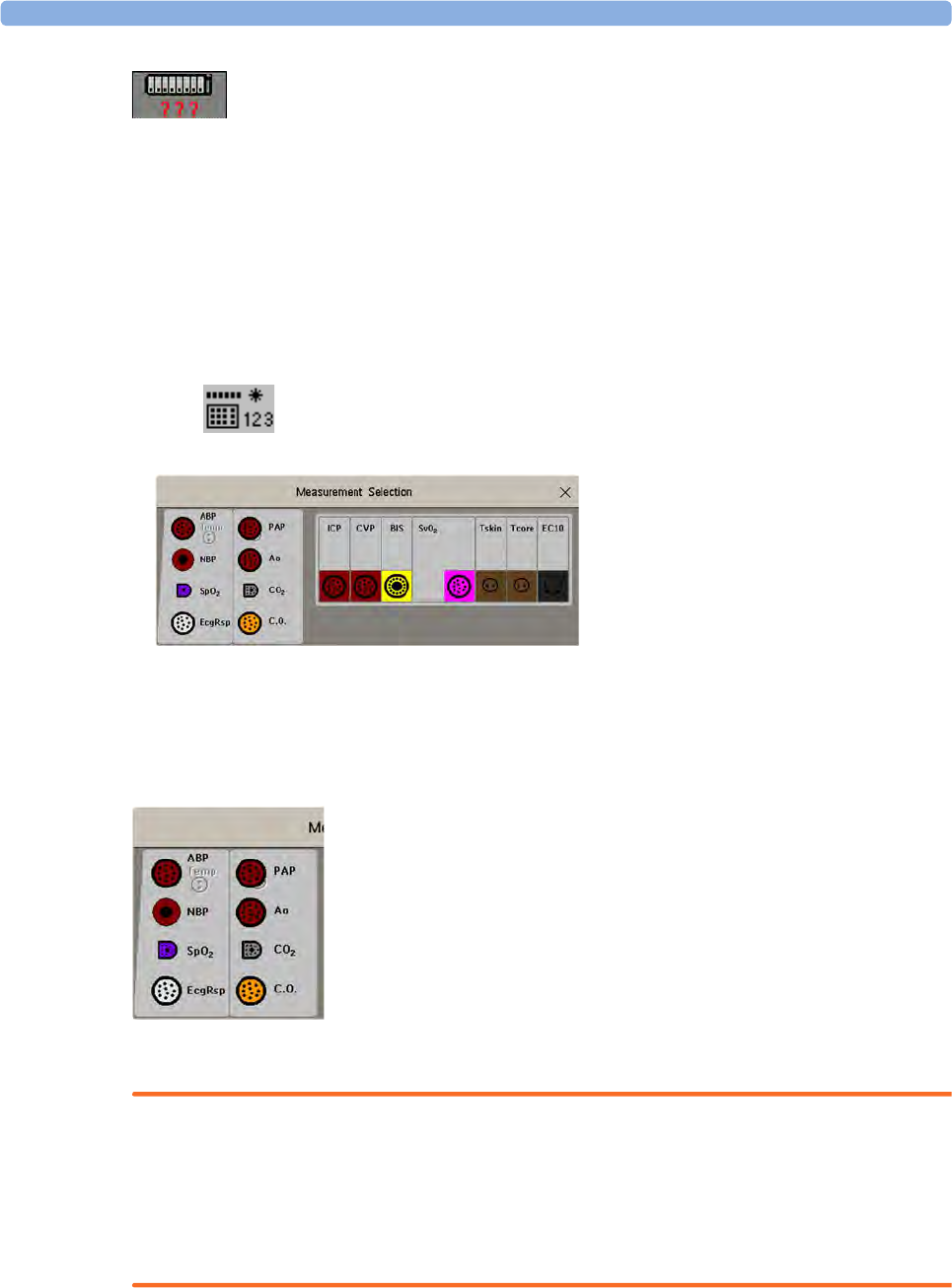
1 Introduction
45
Measurement selection key with question marks indicating a label conflict.
Depending on your configuration, the monitor will either
• resolve the conflict automatically, by assigning a new, generic label to the most recently connected
conflicting label (e.g. a second FAP label could be changed to ABP)
•display the Measurement Selection window automatically for you to resolve the conflict
• take no action, you must enter the Measurement Selection window and resolve the conflict.
All the currently available measurement devices, for example MMSs, MMS extensions, measurement
modules, Gas analyzers, devices connected to a host monitor and manually entered measurements
(marked ), are depicted in the Measurement Selection window.
Any measurement labels causing a label conflict are shown in red. If a measurement device is
connected but currently unavailable, for example, because it was deactivated due to a label conflict, the
device is shown "grayed-out".
When an X2 is connected to a host monitor, the measurement selection window looks like this:
X2 connected to a host monitor
WARNING
When an X2 with an active measurement, say SpO2, is connected to a host monitor with the same
measurement already active, the SpO2 measurement on the X2 is deactivated and the Meas.
Deactivated INOP is displayed. The measurement can only be reactivated if the X2 is disconnected
from the host monitor. The label conflict can be resolved on the host monitor like any other label
conflict.
De-activated devices are grayed-out (here
the Temp measurement on the left)

1Introduction
46
To resolve a label conflict:
1Select the measurement selection key or select Main Setup, then Meas. Selection to display the
Measurement Selection window.
2Select the device whose label you want to correct.
3Use the measurement selection pop-up keys to resolve the conflict. Select either:
–Change Label: to assign a different label to the conflicting label.
–Activate: to activate the highlighted measurement and deactivate the blinking measurement.
This requires confirmation.
–De- Activate: to disable the conflicting device. It retains its label for future use but becomes
invisible to the monitor, as though it had been unplugged. When the device has been
deactivated the question marks under the measurement selection key will be replaced by XXX.
–Setup <Measurement Label>: to enter the Setup menu for the measurement and change the
conflicting device's label to a different label.
–Modify Driver (VueLink/IntelliBridge only): - to modify the device driver setup to disable the
conflicting device's label.
Label Compatibility
When a new measurement is introduced, or new labels for an existing measurement, these labels will
not be shown on older Information Centers, and consequently not on the Overview screen sourced
from the Information Center.
When a patient is transferred from a monitor with these new labels to one with an older software
revision, the labels will be replaced with a generic label for that measurement. The settings for that
generic label will then be used.
If it is critical that the measurement labels are available at the Information Center and after transfers,
the older monitors and the Information Center must be upgraded to the appropriate software revision.
Entering Measurements Manually
You can enter values into the monitor that have been measured with other equipment or manually (for
example, manual temperatures, lab values). These values are then stored in the database, included in
trends and reports, and passed on to the Information Center and central charting systems. There is no
alarm functionality for manually entered measurements.
To enter values,
1Select the Enter Values SmartKey or select Main Setup then select Enter MeasValues.
2Select the measurement you want to enter values for. The Edit window will open.
3If the measurement is switched off, switch it on by selecting the label.
4Select Value and enter the value.
5Select Date/Time to enter the date and time for the value. The default is always the current date
and time.
6For compound labels, for example ABPs, ABPd and ABPm, select the Format field to select
whether all values are required or a single value.
7Select Save.
When a manually entered value has been configured to display as a numeric on the screen, you can also
enter a new value for this measurement by selecting the numeric, then selecting Enter MeasValues.

1 Introduction
47
Manually entered measurement values are marked with a * on the display, in trends, and so forth. Each
measurement has a defined measurement interval after which a value becomes invalid (no value is then
displayed). Values can be entered up to two hours after they have been measured or up to the
measurement interval, if this is shorter.
The list of measurement labels which appears in the Enter Measurement Values window is set in
Configuration Mode.
Switching Manually Entered Measurements On and Off
To switch a manually entered measurement on or off,
1Select the Enter Values SmartKey or select Main Setup then select Enter MeasValues.
2Select the measurement you want to switch on or off.
3Select the measurement label field to switch between On and Off.
Changing Monitor Settings
To change monitor settings such as brightness, or QRS tone volume, select the Main Setup permanent
key and then select User Interface to enter a submenu where you can change these settings.
Adjusting the Screen Brightness
To adjust the brightness:
1Select the Brightness SmartKey.
2Select the appropriate setting for the screen brightness. 10 is the brightest, 1 is the least bright.
Optimum is suitable for most monitoring locations and optimizes power usage for battery
powered monitors.
The MX400/450/500/550 monitors can be configured to automatically adapt the screen brightness to
the ambient light conditions. The range within which this adaptation is made is determined by the
setting made with the Brightness SmartKey.
Your monitor may be configured with a lower brightness for Standby mode and also (for battery
powered monitors) for transport to conserve battery power. These settings can only be changed in the
monitor's Configuration Mode.
If you are using a monitor with an external display, the Brightness SmartKey does not adjust the
brightness of this display. Refer to the documentation supplied with the external display for
instructions.
Setting the Date and Time
1Select the Date, Time screen element from the monitor's info line to enter the Date, Time menu.
2Select, in turn, the Year, Month, Day, Hour (in 24 hour format, only) and Minute as necessary.
Select the correct values from the pop-up list.
3Select Store Date, Time to change the date and time.
If your monitor is connected to an Information Center, the date and time are automatically taken from
this. Once it is set, the internal clock retains the setting even when you switch off the monitor.
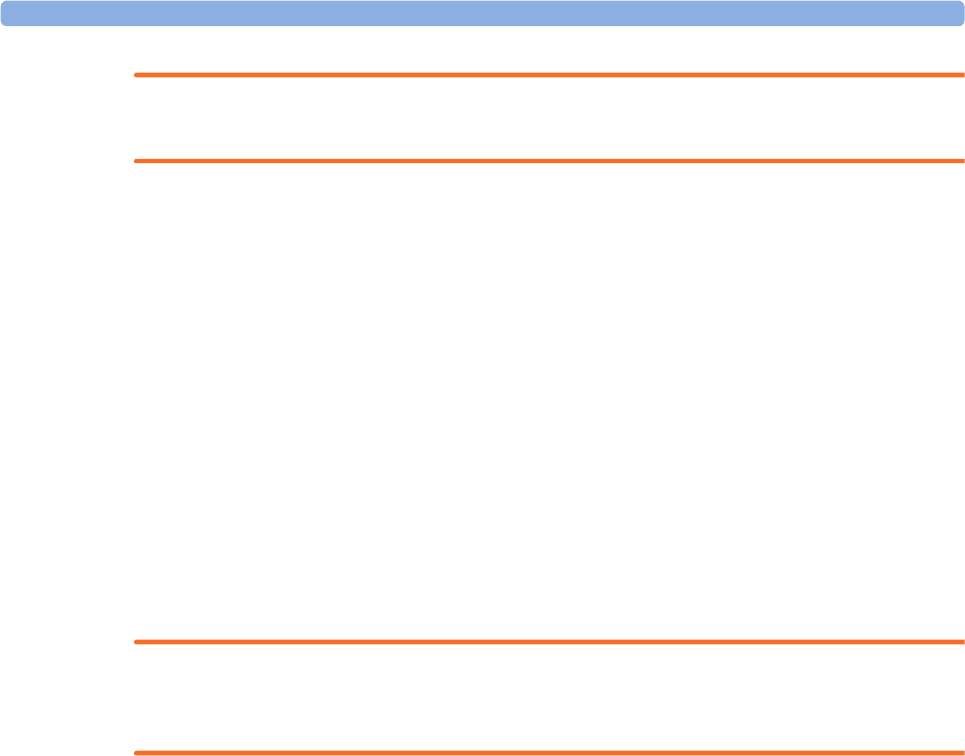
1Introduction
48
WARNING
Changing the date or time will affect the storage of trends and events.
Checking Your Monitor Revision
1Select Main Setup then select Revisions to open the Monitor Revision menu.
2Select the correct device from the device pop-up keys.
3From the Monitor Revision menu, select the monitor component for which you need revision
information.
Getting Started
Once you understand the basic operation principles, you can get ready for monitoring. We also
recommend working through the E-Learning Education Programs for self-training before using the
monitor (available at the Philips Learning Center, english only).
Inspecting the Monitor
WARNING
If the monitor or mounting hardware is mechanically damaged, or if it is not working properly, do not
use it for any monitoring procedure on a patient. Contact your service personnel.
1Before you start to make measurements, carry out the following checks on the monitor including
all connected MMSs, modules, or MMS extensions.
– Check for any mechanical damage.
– Check all the external cables, plug-ins and accessories.
2Plug the power cord into the AC power source.
3Check all the functions of the instrument that you need to monitor the patient, and ensure that the
instrument is in good working order.
Setting up the Modules
1Decide which measurements you want to make.
2Connect the required modules, MMSs, or MMS extensions.
3Check that you have the correct patient cables and transducers plugged in. The connectors are
color-coded to the patient cables and transducers for easy identification.
Switching On
Press the power on/standby switch on the monitor for one second. The monitor performs a self test
during which all lamps will light up and a tone will be sounded, and is then ready to use. If you see a
message such as CO₂ Sens Warmup wait until it disappears before starting to monitor that
measurement.

1 Introduction
49
Connected devices usually take their power from the monitor. External devices such as gas monitors
and those connected via VueLink/IntelliBridge have their own power switches.
Power On/Power Off Behavior
The general rules determining the behavior of the monitor when connected to, or disconnected from
power are as follows:
• A monitor that was switched on prior to a temporary power loss switches on again when power is
restored.
• A monitor that was switched off prior to a temporary power loss remains off when power is
restored.
• When AC mains power is lost, a battery powered monitor continues to run without interruption
on battery power.
• An MMS switches on automatically when connected to a running host monitor.
• When an X2 is disconnected from a running host monitor, the X2 continues to run without
interruption on battery power.
Starting Monitoring
After you switch on the monitor,
1Admit your patient to the monitor.
2Check that the profile, alarm limits, alarm and QRS volumes, patient category and paced status and
so forth are appropriate for your patient. Change them if necessary.
3Refer to the appropriate measurement chapter for further details of how to perform the
measurements you require.
WARNING
During MR imaging, remove all transducers, sensors and cables from the patient. Induced currents
could cause burns.
Disconnecting from Power
The On/Standby switch does not disconnect the monitor from the ac power source. To disconnect,
unplug the power cable.
Monitoring After a Power Failure
• A monitor that was switched on prior to a temporary power loss switches on again when power is
restored.
• A monitor that was switched off prior to a temporary power loss remains off when power is
restored.
If the monitor is without power for less than one minute, monitoring will resume with all active
settings unchanged.
If the monitor is without power for more than one minute, the behavior depends on your
configuration.

1Introduction
50
If Automat. Default is set to Yes, the default profile will be loaded when power is restored. If
Automat. Default is set to No, all active settings are retained, if power is restored within 48 hours. The
Automat. Default setting is made in Configuration Mode.
Networked Monitoring
You can connect your monitor to an Information Center on a network, using one of the optional
interfaces:
• Standard wired LAN
• Wireless LAN
• IntelliVue Instrument Telemetry System (IIT).
WARNING
Only connect patient monitors to networks that conform to the network installation instructions
provided by Philips for your system.
It is possible to assign additional monitoring equipment and a telemetry device to the same patient,
resulting in the information from multiple devices being combined in one sector at the Information
Center. (See “When Multiple Equipment is Used for One Patient” on page 122 and “Using a
Telemetry Device and a Monitor (PIIC only)” on page 307.)
If your monitor is connected to a network, a network symbol is displayed in the upper left corner next
to the bed label. To see details about the Care Group, the monitoring equipment, and technical
information about the network, select the bed label in the monitor info line.
Be aware that some network-based functions may be limited for monitors on wireless networks in
comparison to those on wired networks.
Printout functionality and data export are not guaranteed when using a standard hospital network.
Using the Integrated PC
MX600/
MX700/
MX800
If your monitor has the optional integrated PC (iPC), you can run applications on the iPC. The
applications display data on the monitor's display (or on a second independent display) that is
generated on and retrieved from the iPC or externally.
For details about applications, refer to the IntelliVue XDS Application Instructions for Use.
The monitor runs independently of the iPC, and vice versa.
WARNING
• Some clinical applications may show data from another patient. Be aware that some of the data on
your patient monitor display may not always be from your patient.
• Applications running on the iPC cannot act as a primary alarming device and cannot be relied
upon for alarm notification. There may be no audible or visible indications apart from what is
shown on the screen and any data shown may be delayed.
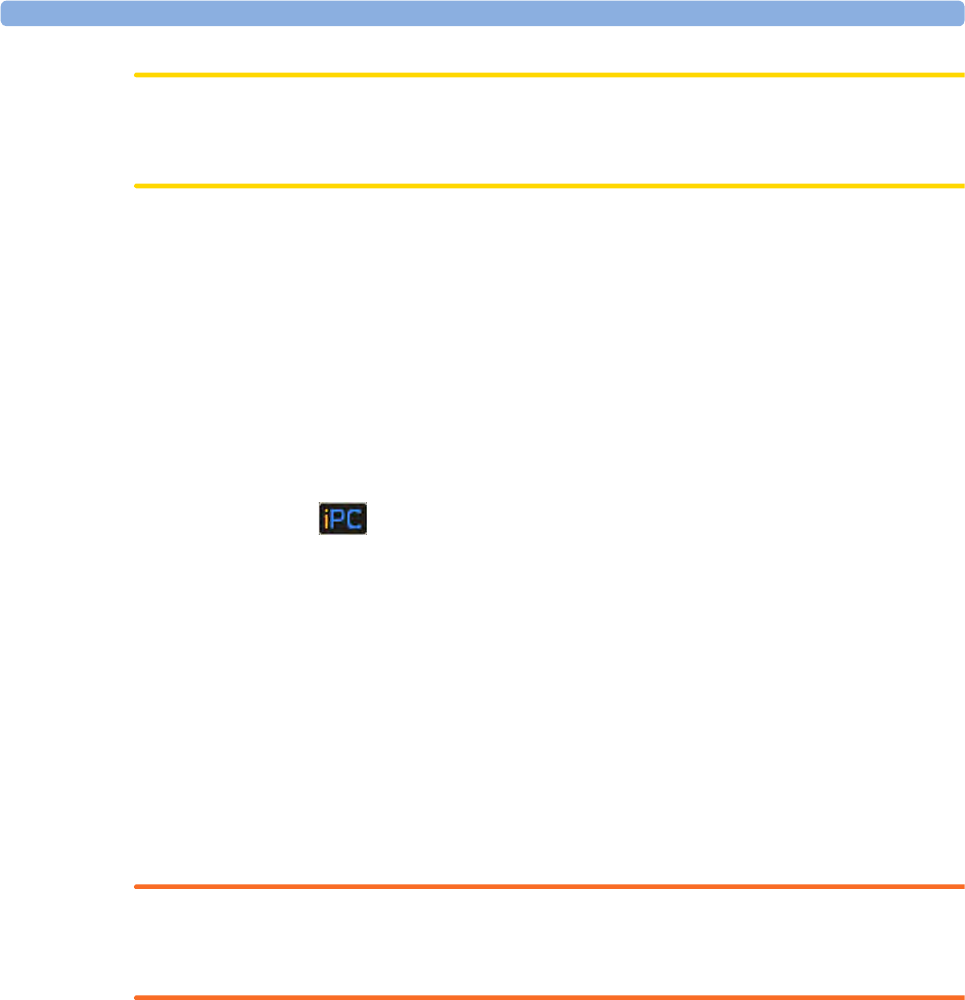
1 Introduction
51
CAUTION
When you install any software on the iPC you are responsible for ensuring that the resulting system
complies with all relevant local regulations.
Starting the iPC
Your monitor may be configured to have the iPC start up automatically when the monitor is switched
on. If not:
1Select Main Setup then Internal PC.
2In the Internal PC menu, select Switch PC on to start the iPC.
Viewing the iPC Desktop on the Monitor Display
If the Desktop is not displayed on the monitor display:
1Select the iPC key , or
2Select Main Setup, Internal PC, then Show PC Window.
To hide the Desktop again, select Main Screen.
There are special iPC screens available that use the full height of the screen for the iPC Desktop. The
monitoring screen content is then arranged on the right side of the screen. Such iPC screens may be
loaded automatically when the iPC key is selected. In this case the Main Screen key is replaced by a
Previous Screen key, to give you a fast and easy method to switch back and forth between the iPC
screen and the regular screen.
Adjusting the iPC Audio Volume
The Audio from the iPC is normally configured to be off. However, your monitor may have the iPC
audio configured on for use with specific PC applications.
WARNING
Always minimize the iPC audio volume or mute it completely when it is not needed for an iPC
application. This will avoid iPC tones distracting from or masking tones from the monitor.
Using Input Devices with the iPC and Monitor
You can connect input devices such as a mouse, trackball and keyboard to the rear of the patient
monitor (using the left hand row of USB connectors) and use them for input to the monitor.
Correspondingly you can connect input devices to the rear of the patient monitor (using the right
hand row of USB connectors) or to the front USB connector and use them for the iPC. Input devices
connected to the iPC can also be shared with the patient monitor. Sharing input devices and
touchscreen input requires a specific software application; refer to the IntelliVue XDS Application
Instructions for Use for details.
If the iPC is switched off when input devices are shared, any input devices connected to it will not be
available for use with the monitor.

1Introduction
52
Shutting the iPC Down
The iPC will be shut down automatically when the monitor is switched off.
If you want to shut down the iPC when the monitor is on,
1Select Main Setup then Internal PC.
2In the Internal PC menu, select Switch PC off.
If there is a problem with the shutdown, and you need to switch off the iPC manually,
1Select Main Setup then Internal PC.
2In the Internal PC menu, select Force PC off to force the iPC to power down.
Special Situations at Shutdown
• If you switch the monitor off and then on again immediately, the iPC will continue running and
will not be shut down.
• In some situations, shutting down the iPC can take a little time. The monitor will go into Standby
mode until the shutdown is complete. By touching the touchscreen, you can bring the monitor
back into operating mode. If you do this, the iPC will restart when the shutdown is complete.
• If the shutdown cannot be completed within a certain time, a window will open giving the reason:
for example, that a file has not been saved, or that updates are being installed. You can then decide
whether to wait (for example, in the case of the updates) or to take action (for example by saving
the unsaved file). You will also have the option to force shutdown, if necessary.
Using Your Monitor with a Monitor in Companion
Mode
When you connect an X2 in companion mode to a host monitor, an integrated system is formed for
monitoring a single patient. The following general observations and considerations apply to such a
system:
• The host monitor is the "master" of the system, and you have full control over all the system's
operation only via the host monitor.
• Functions you can operate on a monitor in companion mode are restricted to measurements
originating in that device. If you try to operate controls that are disabled, you are prompted by the
message Not available in Companion Mode.
• Depending on how it is configured, your host monitor can determine whether the user interface of
a connected monitor in companion mode is completely disabled or not, and what is displayed on
the screen (a standard main screen, or a blank screen indicating Companion Mode).
This is controlled by two monitor settings that are applied to the monitor in companion mode on
connection. You can change the settings in Configuration Mode.
• Global settings such as line frequency, QRS sound and ECG lead colors from the host monitor,
are applied to the monitor in companion mode on connection. When disconnected from the host,
the monitor in companion mode re-applies its own global settings.
• No audible alarms are available on a monitor in companion mode when connected to a host
monitor. The only visual alarm indication is provided by the alarm lamps which are controlled by
the host monitor. Alarms become active again as soon as the monitor in companion mode is
disconnected from the host monitor.

1 Introduction
53
• The host monitor is the master of all ADT information. ADT operations on the monitor in
companion mode are disabled, and any pending actions on the monitor in companion mode (for
example, admit or end case) are canceled.
• The date and time of the monitor in companion mode is synchronized with that of the host
monitor.
• An X2 switches on automatically when connected to a running host monitor.
• When an X2 is disconnected from a running host monitor, the X2 continues to run without
interruption on battery power.
• When an X2 is used with host monitors having different software revisions, be aware that
functionality set up in a monitor with a newer revision will disappear when the X2 is connected to
a monitor with an older revision without that functionality. For example, if an X2 is used with a
revision H monitor and has been set up to alarm on Afib, this alarm will no longer exist when the
X2 is connected to a revision G monitor. If you work in a mixed software environment, inform
yourself about the differences between revisions by referring to the What's New chapter.
• Event surveillance in the monitor in companion mode is disabled. Main Setup menu operations
and SmartKeys are disabled. While connected to a host monitor, no new events are detected in the
monitor in companion mode, and no events are deleted. There is no transfer of stored events from
the monitor in companion mode to the host monitor. After disconnection from the host monitor,
event surveillance is enabled again in the monitor in companion mode, and new events are
detected.

1Introduction
54

2
55
2What's New?
This section lists the most important new features and improvements to the monitor and its user
interface introduced with each release. Further information is provided in other sections of this book.
You may not have all of these features, depending on the monitor configuration purchased by your
hospital.
What's New in Release K.1 (for MX400/450/500/550
only)
MX500/MX550
In this release the MX500/MX550 patient monitors join the IntelliVue monitor family. The monitors
are optimized for transport within the hospital environment.
The MX500 has a 12-inch display and the MX550 has a 15-inch display. Both models have three
integrated plug-in module slots for up to three measurement modules, or the IntelliBridge interface
module (865115), or recorder module (M1116B/C). The MX500/550 have the option to be operated
with a single, user-replaceable battery.
EC10 IntelliBridge Interface Board
MX400/450/
500/550 The functionality of the IntelliBridge EC10 plug-in module - interfacing data from a connected
external device into the monitor - is now available in an embedded board. The connector for the
optional interface board is accessed at the rear of the monitor.
Wireless Remote Control
MX400/450/
500/550 The remote control, previously only available with a USB cable connection, can now also be used
wirelessly, with a short-range radio connection, as with the models MX600-800.
What's New in Release K.0
MX400/MX450
In this release the MX400/MX450 patient monitors join the IntelliVue monitor family. The monitors
are optimized for transport within the hospital environment. The MX400 has a 9-inch display and the
MX450 has a 12-inch display. Both monitors can optionally be equipped with an integrated recorder
and have the option to be operated with a single user-replaceable battery.

2What's New?
56
What's New in Release J.0
Flexible, Patient-oriented Workflow (with PIIC iX only)
With the IntelliVue Information Center iX, more flexible, patient-oriented workflows are supported
for admitting, tracking and transferring patients. This allows you to adapt monitor use to the patient
data flow models in your specific facility and department.
Managing Patients
When the patient monitor is connected to an IntelliVue Information Center iX, an extended
comparison of patient data allows more intelligent admission and transfer procedures. A Find Patient
key can be used to search through the patient lists at the Information Center and other connected
systems and take over the corresponding data found.
Flexible Transfer
A transfer can be initiated in the unit at the monitor, on patient arrival or patient departure, or centrally
at the Information Center.
Managing Equipment
When used together with an Information Center iX, extended equipment management functionality is
now available. Depending on how equipment is used in your facility, there are various ways to
associate devices with patients, beds or monitors.
Additionally there are mechanisms to automatically free up equipment that is no longer used. Using the
new Equipment window you have an overview of all equipment being used for a patient, together with
patient and caregiver data.
New NMT Module
A new NMT module enables the evaluation of muscle relaxation of patients under Neuromuscular
Block by measuring the strength of muscle reaction after electrically stimulating the dedicated motor
nerve.
Alarm Functionality Enhancements
• Pause Yellow Alarms (with PIIC iX only) - up until now, the Pause Alarms / Alarms Off key
switched off or paused all red and yellow alarms. Now an alarm priority configuration setting is
available to have only yellow alarms affected.
•Pause Alarms / Alarms Off not allowed - when the alarm priority is set to Not Allowed, alarms
can no longer be switched off or paused. The Pause Alarms / Alarms Off key is disabled.
•Pause Alarms / Alarms Off key can be removed from the screen - a configuration setting removes
the permanent key from the screen to avoid unintentional switching off of alarms. Alarms can still
be switched off or paused, in the Alarms menu, under Main Setup.
• Alarms paused after Standby mode - alarms are automatically paused for 1 minute after Standby
mode to allow time for patient connection.
Capture 12-Lead ECG Enhancements (with PIIC iX only)
The existing 12-Lead ECG capture functionality has been extended to offer:
• Download of analysis results from the IntelliVue Information Center.
• Download of 12-Lead captures from the IntelliVue Information Center for review at the patient
monitor.

2What's New?
57
• Analysis results included in reports and additional report selections with ST Map.
• Remote operation of the 12-Lead Export function at the IntelliVue Information Center.
• Remote operation of the 12-Lead Lock/Unlock function at the IntelliVue Information Center.
• New filter settings that are used as a default for future 12-Lead captures.
New "End Afib" and "End Irregular HR" Alarms
The end of an atrial fibrillation or irregular HR phase is announced with an ** End AFIB or **End
Irregular HR alarm. The delay time before the alarm is announced can be configured.
Information Line Changes
Patient Category is now displayed as a symbol in front of the patient name and cannot be changed
from the Information line. Paced Mode is no longer displayed in the Information line; it appears next
to the HR numeric.
Depending on your configuration, you will see the current Profile name, and/or the Screen name in
the Information line. The Profiles menu has been simplified in Monitoring and Configuration Mode.
Sepsis Protocol Configurability
The SSC Sepsis protocol can now be configured, to customize it for the specific treatment measures
used in your facility. This can include changes to limits for measured or manually entered values,
changes to the Severe Sepsis Screening criteria, and changes to the recommendations in the Sepsis
Resuscitation Bundle and the Sepsis Management Bundle.
Integrated Pulmonary Index for Microstream CO2
An Integrated Pulmonary Index (IPI) numeric is provided, that is an indication of the patient's overall
ventilatory status based on four measurement parameters: etCO2, awRR, pulse rate and SpO2.
Cardiac Output (transpulmonary method) - Changes to Calculation
Basis for Extravascular Lung Water Index and Preload Indexes
EVLWI is now calculated using Ideal Body Weight (IBW). ITBVI and GEDVI are calculated using
Ideal Body Surface Area (IBSA). IBW and IBSA are based on the patient category, gender and height
that are entered for the patient.
Improved Visibility of Gridlines in Overlapping Waves
Visibility of the gridlines for overlapping waves has been improved, and you can now configure
gridlines to be shown in white, if you prefer, in a thin or thick style.
Timeout for "Aged" Numerics
NBP and SpO2 numerics from intermittent measurements can be configured to be grayed out or to
disappear from the screen after a set time. This avoids older numerics being misinterpreted as current
data. The time can be set individually for SpO2 and NBP in Configuration mode.

2What's New?
58

3
59
3Alarms
The alarm information here applies to all measurements. Measurement-specific alarm information is
discussed in the sections on individual measurements.
The monitor has two different types of alarm: patient alarms and INOPs.
Patient Alarms
Patient Alarms are red and yellow alarms. A red alarm indicates a high priority patient alarm such as a
potentially life threatening situation (for example, asystole). A yellow alarm indicates a lower priority
patient alarm (for example, a respiration alarm limit violation). Additionally there are short yellow
alarms, most of which are specific to arrhythmia-related patient conditions (for example, ventricular
bigeminy).
INOPs
INOPs are technical alarms, they indicate that the monitor cannot measure or detect alarm conditions
reliably. If an INOP interrupts monitoring and alarm detection (for example, Leads Off), the monitor
places a question mark in place of the measurement numeric and an audible indicator tone will be
sounded. INOPs without this audible indicator indicate that there may be a problem with the reliability
of the data, but that monitoring is not interrupted.
Most INOPs are light blue, however there are a small number of INOPs which are always yellow or
red to indicate a severity corresponding to red and yellow alarms. The following INOPs can also be
configured as red or yellow INOPs to provide a severity indication:
•ECG Leads Off
•NBP Cuff Overpress
•Cuff Not Deflated
•Occlusion
•<SpO₂ Label> No Pulse
•<Press Label> No Pulse
•Tele Disconnected
•Battery Empty / Replace Battery
All monitors in a unit should have the same severity configured for these INOPs.

3 Alarms
60
Alarm Delays
There is a delay between a physiological event at the measurement site and the corresponding alarm
indication at the monitor. This delay has two components:
•The general measurement delay time is the time between the occurrence of the
physiological event and when this event is represented by the displayed numerical values.
This delay depends on the algorithmic processing and, for certain measurements (SpO2, EEG and
BIS), on the configured averaging time. The longer the averaging time configured, the longer the
time needed until the numerical values reflect the physiological event.
•The time between the displayed numerical values crossing an alarm limit and the alarm
indication on the monitor. This delay is the sum of the alarm delay configured for the specific
measurement plus the system alarm delay. The system alarm delay is the processing time the
system needs for any alarm on the monitor to be indicated after the measurement has triggered the
alarm. See the performance specifications in the Specifications chapter for the system alarm delay
specification.
The alarm delay configured for a specific measurement is normally a fixed time. For SpO2 it is also
possible to configure a Smart Alarm Delay that is calculated using an intelligent algorithm. See “Smart
Alarm Delays” on page 195 in the SpO2 chapter for more details.
Multiple Alarms
If more than one alarm is active, the alarm messages are shown in the alarm status area in succession.
An arrow symbol next to the alarm message informs you that more than one message is active.
The monitor sounds an audible indicator for the highest priority alarm. If more than one alarm
condition is active in the same measurement, the monitor announces the most severe. Your monitor
may be configured to increase alarm indicator volume automatically during the time when the alarm is
not acknowledged.
Visual Alarm Indicators
WARNING
• No alarms are available on an X2 when connected to a host monitor (Companion Mode is
indicated). Alarms become active again as soon as the X2 is disconnected from the host monitor.
• Alarm fields and other visual alarm indicators are disabled on an X2 when connected to a host
monitor. The only visual alarm indication is provided by the alarm lamps, which are controlled by
the host monitor.
Alarm Message
An alarm message text appears in the alarm status area at the top of the screen indicating the source of
the alarm. If more than one measurement is in an alarm condition, the message changes every two
seconds, and has an arrow ( ) at the side. The background color of the alarm message matches the
alarm priority: red for red alarms, yellow for yellow alarms, light blue for standard INOPs, red for red
INOPs and yellow for yellow INOPs. The asterisk symbols (*) beside the alarm message match the
alarm priority: *** for red alarms, ** for yellow alarms, * for short yellow alarms. Standard INOPs do
not have a symbol, red and yellow INOPs have exclamation marks beside the alarm message: !!! for
red INOPs and !! for yellow INOPs.
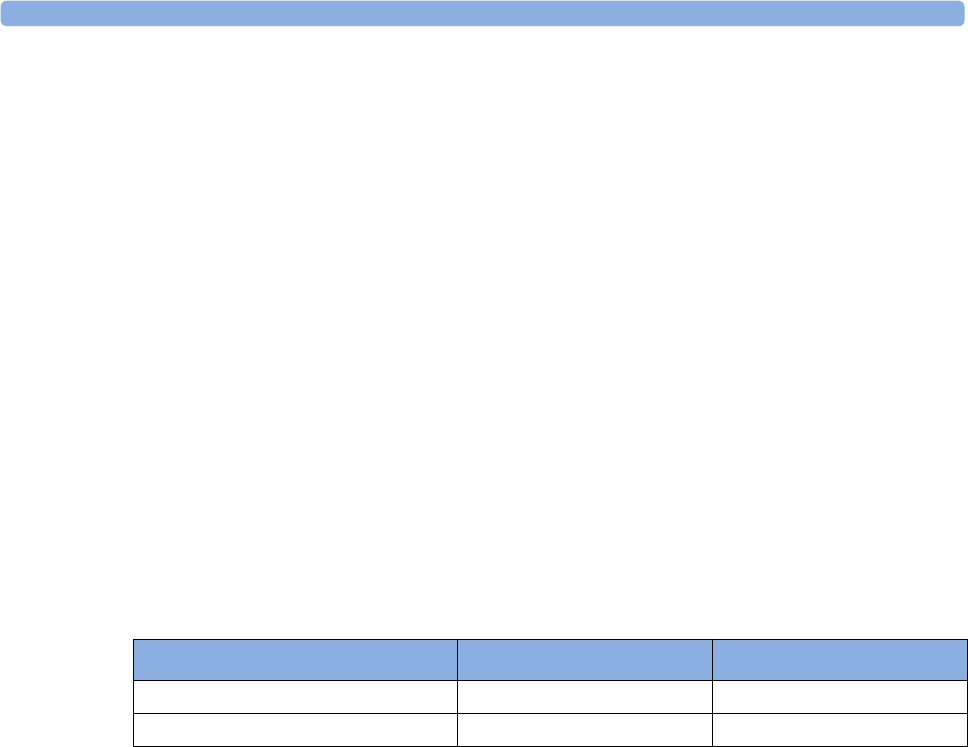
3 Alarms
61
Depending on how your monitor is configured, it may display alarm limit violation messages:
• in text form, for example ** SpO₂ Low or
• in numeric form, for example **Pulse xxx>yyy where the first number shows the maximum
deviation from the alarm limit, and the second number shows the currently set limit.
Flashing Numeric
The numeric of the measurement in alarm flashes.
Bright Alarm Limits
If the alarm was triggered by an alarm limit violation, the corresponding alarm limit on the monitor
screen is shown more brightly if Show ALarmLimits is enabled and there is sufficient room on the
screen.
Alarm Lamp
A lamp on the monitor's front panel flashes. The alarm lamp is divided into two sections. The right
one flashes for a patient alarm, except for short yellow alarms where the lamp will light for
approximately six seconds. The color is yellow or red corresponding to the highest priority patient
alarm currently present. The left one lights continuously for a light blue INOP and flashes for yellow
or red INOPs as follows:
If only patient alarms are present, and no INOPs, the patient alarms will use both left and right
sections to flash (for red and yellow alarms) or light for approximately six seconds (for short yellow
alarms). If only INOPs are present, and no patient alarms, red and yellow INOPs will use both left and
right sections to flash but light blue INOPs will always light continuously in the left section only.
MX400/450/
500/550 If the screen brightness is configured to automatically adapt to ambient light conditions, the alarm
lamps will also adapt their brightness accordingly.
Nurse Call Systems
If configured to do so, red, yellow and light blue alarms are indicated on any device connected to the
nurse call relay.
Audible Alarm Indicators
The audible alarm indicators configured for your monitor depend on which alarm standard applies in
your hospital. Audible alarm indicator patterns are repeated until you acknowledge the alarm by
switching it off or pausing it, or until the alarm condition ceases (if audible alarm indication is set to
non-latching).
INOP Lamp Color On Off
Yellow 1.0 seconds 1.0 seconds
Red 0.25 seconds 0.25 seconds

3 Alarms
62
WARNING
• Do not rely exclusively on the audible alarm system for patient monitoring. Adjustment of alarm
volume to a low level or off during patient monitoring may result in patient danger. Remember
that the most reliable method of patient monitoring combines close personal surveillance with
correct operation of monitoring equipment.
• No audible alarm indicators are available on an X2 when connected to a host monitor
(Companion Mode is indicated). Alarms become active again as soon as the X2 is disconnected
from the host monitor.
Alarm Tone Configuration
The audible alarm indicators of your monitor are configurable. In the monitor's Configuration Mode,
you can:
• increase the alarm volume of unacknowledged alarms at regular intervals
• change the interval between alarm sounds (ISO/IEC Standard alarms only)
• change the base volume of the red and yellow alarm tones and the INOP tones
• change the alarm sound to suit the different alarm standards valid in different countries.
Traditional Audible Alarms (HP/Agilent/Philips/Carenet)
• Red alarms and red INOPs: A high pitched sound is repeated once a second.
• Two-star yellow alarms and yellow INOPs: A lower pitched sound is repeated every two seconds.
• One-star yellow alarms (short yellow alarms): The audible indicator is the same as for yellow
alarms, but of shorter duration.
• Standard INOPs: an INOP tone is repeated every two seconds.
ISO/IEC Standard Audible Alarms
• Red alarms and red INOPs: A high pitched tone is repeated five times, followed by a configurable
pause.
• Two-star yellow alarms and yellow INOPs: A lower pitched tone is repeated three times, followed
by a configurable pause.
• One-star yellow alarms (short yellow alarms): The audible indicator is the same as for yellow
alarms, but of shorter duration.
• Standard INOPs: a lower pitched tone is repeated twice, followed by a pause.
Changing the Alarm Tone Volume
• The alarm volume symbol at the top right of the monitor screen gives you an indication of the
current volume.
To change the volume, select the volume symbol and then select the required volume from the
pop-up selection.

3 Alarms
63
• If you want to see a numerical indication of the current alarm volume on a scale from zero to 10,
or change the setting, select the Alarm Volume SmartKey.
The volume scale pops up. The current setting is indented. To change the setting, select the
required number on the scale. Any settings that are inactive ("grayed out") have been disabled in
the monitor's Configuration Mode.
• When the alarm volume is set to zero (off), the alarm volume symbol reflects this.
If you switch the alarm volume off, you will not get any audible indication of alarm conditions.
There is no alarm volume indication on the screen of an X2 when connected to a host monitor
(Companion Mode is indicated).
Minimum Volume for No Central Monitoring INOP
If your monitor is connected to an Information Center, and the connection is interrupted, the INOP
message No Central Monit. will appear within 30 seconds, accompanied by an INOP tone. To help
ensure that this INOP, and any other active alarm, is not overlooked, the INOP and alarm tones may
be configured to have a minimum volume. In this case, INOP and alarm tones will sound even if the
monitor alarm volume is set to zero.
Minimum Volume for Severe Yellow or Red INOPs
Severe yellow or red INOPs require action to ensure the well-being of the patient. Therefore the
minimum volume for the INOP tone is set to at least alarm volume 8, irrespective of the current alarm
volume setting. The INOP tone will sound even if the monitor alarm volume is set to zero.
The severe INOPs for which this applies are:
Cuff Not Deflated (configurable to yellow or red)
NBP Cuff Overpress (configurable to yellow or red)
!! Insert Battery - X2 (yellow)
Battery Empty / Replace Battery - (configurable to light blue, yellow or red)
Power Loss Tone
When power is lost - no power is available via the power cable or battery (where available) - a buzzer
will sound, if so configured. The tone can be silenced by pressing the On/Off power switch.
Acknowledging Alarms
To acknowledge all active alarms and INOPs, select the Silence permanent key. This switches off the
audible alarm indicators and alarm lamps.

3 Alarms
64
Alternatively, you can acknowledge alarms by pressing the Silence hardkey on the MMS or on the
SpeedPoint. The hardkeys follow the behavior configured for the permanent key.
A check mark beside the alarm message indicates that the alarm has been acknowledged . If the
monitor is configured to re-alarm, a dashed check mark will be shown .
If the condition that triggered the alarm is still present after the alarm has been acknowledged, the
alarm message stays on the screen with a check mark symbol beside it, except for NBP alarms and
alarms from other intermittent measurements. When such an alarm is acknowledged the alarm
message disappears.
If the alarm condition is no longer present, all alarm indicators stop and the alarm is reset.
Switching off the alarms for the measurement in alarm, or switching off the measurement itself, also
stops alarm indication.
Acknowledging Disconnect INOPs
Acknowledging an INOP that results from a disconnected transducer switches off the associated
measurement, unless the monitor is configured to not allow this. The only exception is ECG/Resp:
acknowledging a disconnect INOP for ECG leads does not switch off the ECG and Resp
measurements. Acknowledging a disconnect INOP at the Information Center switches off the audible
INOP indicator but does not switch off the measurement.
Unplugging an MMS or a plug-in module automatically switches off its measurements.
Alarm Reminder
If Alarm Reminder is configured on for your monitor, you will get an audible reminder of alarm
conditions that remain active after you have acknowledged the alarm. This reminder may take the form
of a repetition of the alarm tone for a limited time, or an unlimited repetition of the alarm tone (this is
the same as a new alarm). Alarm Reminder is not available for standard, light blue INOPs but for
yellow and red INOPs.
In Configuration Mode, you can set the interval between silencing the alarm and sounding the
reminder tone to one, two, or three minutes.
The alarm reminder behavior at the Information Center is different to that at the monitor. Refer to the
Information Center Instructions for Use for further information.
Pausing or Switching Off Alarms
If you want to temporarily prevent alarms from sounding, for example while you are moving a patient,
you can pause alarms. Depending on your monitor configuration, alarms are paused for one, two, or
three minutes, or infinitely. Infinite alarm pause is equivalent to switching the alarms off.
To view the alarm pause setting chosen for your unit,
1Select Main Setup, Alarms, then Alarm Settings
2Check the Alarms Off setting.
This setting can only be changed in Configuration Mode.
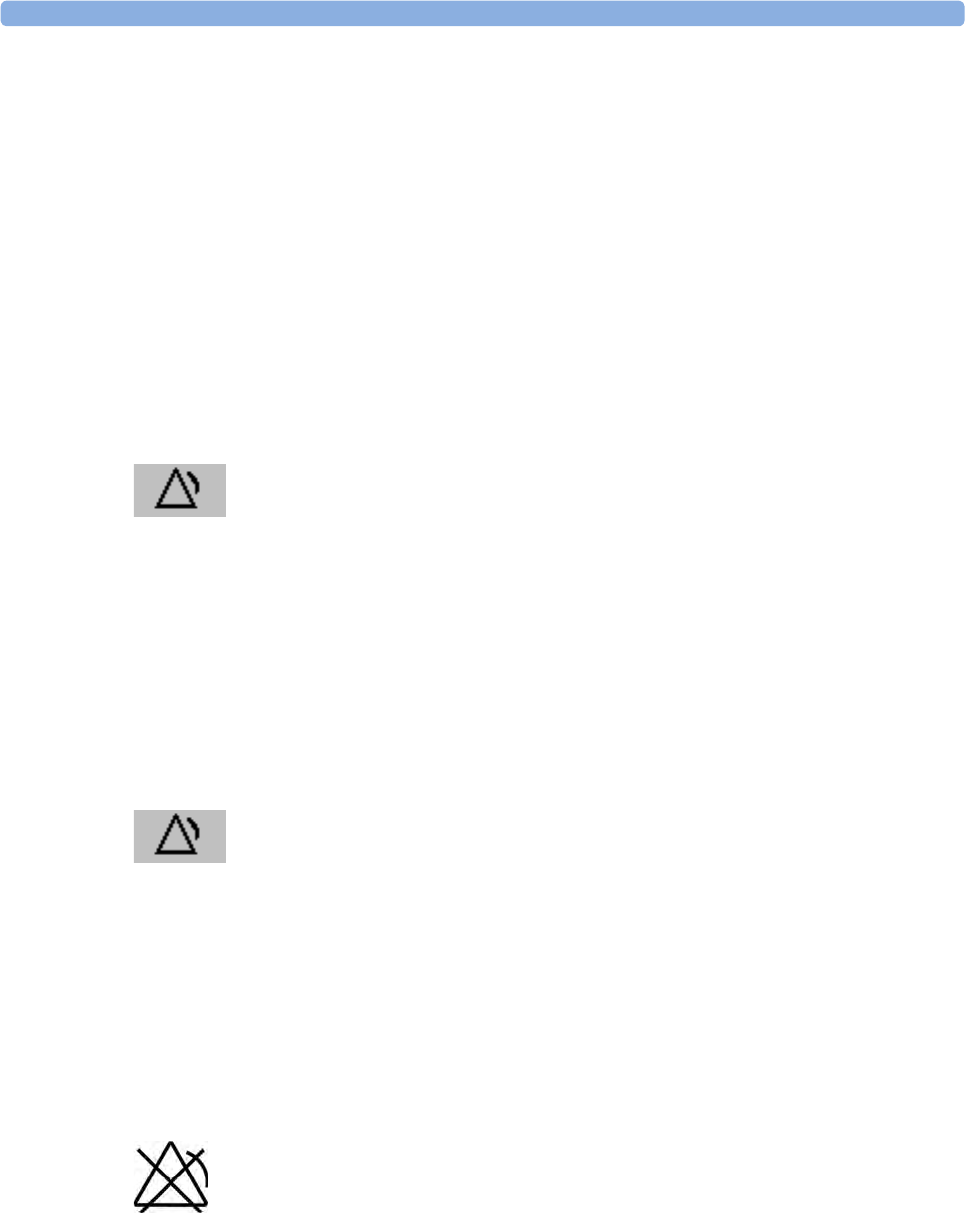
3 Alarms
65
There are some settings made in Configuration Mode that can affect the availability of the pause
alarms functionality.
•The
Pause Alarms / Alarms Off permanent key can be removed from the screen to avoid
unintentional switching off of alarms. The corresponding hardkey on the SpeedPoint or
Navigation Point is then also disabled. In this case you can only pause alarms or switch alarms off
permanently in the Alarms menu, under Main Setup.
•The
Pause Alarms / Alarms Off permanent key and the corresponding hardkey can be
configured to pause or switch off red and yellow alarms, yellow alarms only, or not to function at
all. If they are configured not to function, you cannot pause alarms or switch alarms off
permanently at all.
When the alarms off priority is set to Yellow Only, the Pause Alarms / Alarms Off key becomes
the Pause Yellow / Yellow Al. Off key.
To Pause All Alarms
• Select the Pause Alarms permanent key. If your monitor is configured to infinite pause time, the
permanent key is labeled Alarms Off, and selecting it switches alarms off.
• Or press the Alarms hardkey on the SpeedPoint or Navigation Point. The hardkey follows the
behavior configured for the permanent key.
Depending on the configuration, you may need to select Confirm to complete the change.
To Switch All Alarms Off
You can only switch alarms off permanently if your monitor is configured to allow infinite alarms
pause and the permanent key is labeled Alarms Off (or Yellow Al. Off).
• Select the Alarms Off (or Yellow Al. Off) permanent key.
• Or press the Alarms hardkey on the SpeedPoint or Navigation Point. The hardkey follows the
behavior configured for the permanent key.
Depending on the configuration, you may need to select Confirm to complete the change.
To Switch Individual Measurement Alarms On or Off
1Select the measurement numeric to enter its setup menu.
2Select Alarms to switch between on and off.
The alarms off symbol is shown beside the measurement numeric.
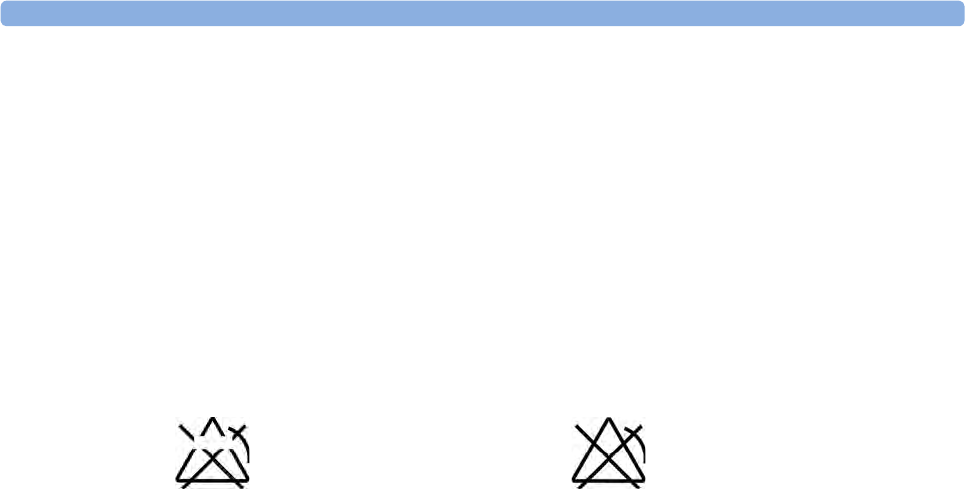
3 Alarms
66
While Alarms are Paused or Off
When red alarms are paused or off:
• The red Alarms Paused lamp on the monitor front panel is lit.
In the alarm field, the monitor displays the message Al. Paused x:yy or Alarms Off, together with
the alarms paused symbol or the alarms off symbol.
When yellow alarms are paused or off:
• The yellow Alarms Paused lamp on the monitor front panel is lit.
In the alarm field, the monitor displays the message YellowPaused x:yy or Yellow Alarms Off,
together with the alarms paused symbol or the alarms off symbol.
For red and yellow alarms:
• No alarms are sounded and no alarm messages are shown.
• INOP messages are shown but no INOP tones are sounded.
The only exceptions are the INOPs Cuff Not Deflated, NBP Cuff Overpress and INOPs relating
to empty, missing and malfunctioning batteries.
These INOPs switch the alarms on, and the INOP tones are sounded, even if alarms are paused or
off. You need to remove the INOP condition first before you can switch the alarm tones off again.
• The nurse call relay is not active.
If a disconnect INOP is present and alarms are paused or switched off, the measurement in question
may be switched off, depending on monitor configuration.
Restarting Paused Alarms
To manually switch on alarm indication again after a pause, select the permanent key Pause Alarms (or
Alarms Off) again.
Alarm indication starts again automatically after the pause period expires. If the monitor is configured
to stay paused infinitely, you must select Alarms Off again to restart alarm indication.
Resetting Arrhythmia Alarm Timeouts
To reset the timeout period, either
• select the Alarms Off or Pause Alarms permanent key and then reselect it, or
•select
Reset Alarming in the Review Alarms window or the Alarm Messages window.
Extending the Alarm Pause Time
If your monitor has extended alarm pause enabled, you can extend the alarm pause time. Use this to
prevent alarms being indicated, for example, while you are washing a patient or carrying out a
procedure. Only extend the alarm pause time when you are sure that clinical personnel are available to
monitor the patient's condition closely.
Alarms Paused Alarms Off

3 Alarms
67
To extend the alarm pause time to five or 10 minutes,
1Select one of the alarm fields. This calls up the Alarm Messages window.
2Select either the pop-up key PauseAl. 5 min or the pop-up key PauseAl. 10 min. Each time you
select one of these pop-up keys, the Alarm Pause Time is reset to five (or 10) minutes.
Alarm Settings for Unattended Monitoring
When monitoring patients that are not continuously attended, use appropriate alarm settings to
optimize monitoring:
• Always leave alarms switched on when the patient is unattended.
• Recommended configuration: Use one of the temporary settings for the Alarms Off setting, not
Infinite, and make sure that the AlarmOffReminder and the Alarm Reminder are switched on
(these settings are made in Configuration mode).
• Set alarm limits so that alarms will be triggered for those changes in the patient condition that you
want to be advised of. Setting limits to very high or low values can render the alarm system useless.
• Use available notification routes, such as a nurse call system or the connection to an Information
Center, or at least select an appropriate alarm volume to ensure that alarms are recognized.
Alarm Limits
The alarm limits you set determine the conditions that trigger yellow and red limit alarms. For some
measurements (for example, BIS and SpO2), where the value ranges from 100 to 0, setting the high
alarm limit to 100 switches the high alarm off, or setting the low alarm limit to 0 switches it off. In
these cases, the alarms off symbol is not displayed.
WARNING
Be aware that the monitors in your care area may each have different alarm settings, to suit different
patients. Always check that the alarm settings are appropriate for your patient before you start
monitoring.
Viewing Individual Alarm Limits
You can usually see the alarm limits set for each measurement next to the measurement numeric on
the main screen.
If your monitor is not configured to show the alarm limits next to the numeric, or if the numeric is so
small that the limits cannot be displayed, you can see them in the appropriate measurement setup
menu. Select the measurement numeric to enter the menu and check the limits.
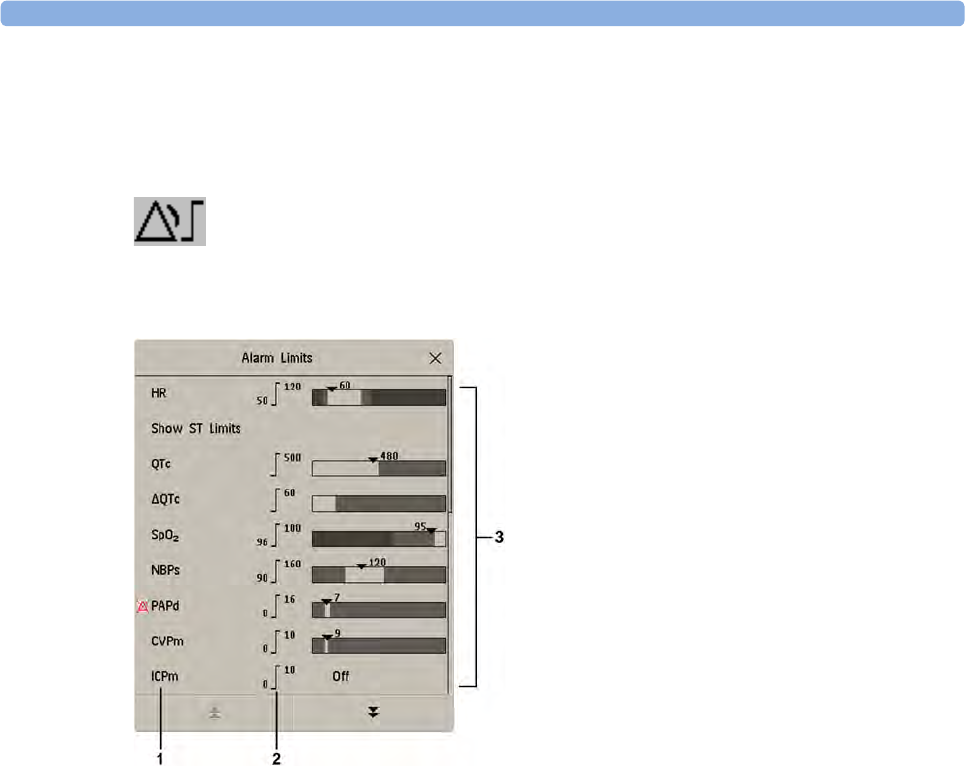
3 Alarms
68
Viewing All Alarm Limits
The Alarm Limits overview window lists the currently set alarm limits for all measurements. If an
Apnea alarm delay time is set, this is also shown. The alarms off symbol is shown beside the
measurement label of any measurement whose alarm switched off.
To open the Alarm Limits window, either select any alarm field to open the Alarm Messages window,
then select the Alarm Limits pop-up key, or select the Alarm Limits SmartKey, if configured.
1Measurement labels, with alarms off symbol where appropriate
2Current alarm limits
3Graphic view of current yellow and red alarm limits and currently monitored measurement value.
Off indicates the measurement is switched off
•Select
Show ST Limits to expand the list of ST leads and view the currently set alarm limits.
Selecting Hide ST Limits hides the list again.
You can use the pop-up keys that open with the Alarm Limits window to perform common tasks:
–All Al. On/All Al. Off
–All Lim. Narrow/All Lim. Wide to set narrow or wide alarm AutoLimits for all measurements.
–Print Limits/Record Limits to print a list of all current alarm limit settings on a connected
printer or recorder.
These pop-up keys are not available in the window for changing individual alarm limits which you
access by selecting the measurement label in the Alarm Limits window.
Changing Alarm Limits
Set limits so that alarms will be triggered for those changes in the patient condition that you want to be
advised of. Setting limits to very high or low values can render the alarm system useless.
To change individual measurement alarm limits using the measurement's Setup Menu,
1In the measurement's setup menu, select the alarm limit you want to change. This calls up a list of
available values for the alarm limit.
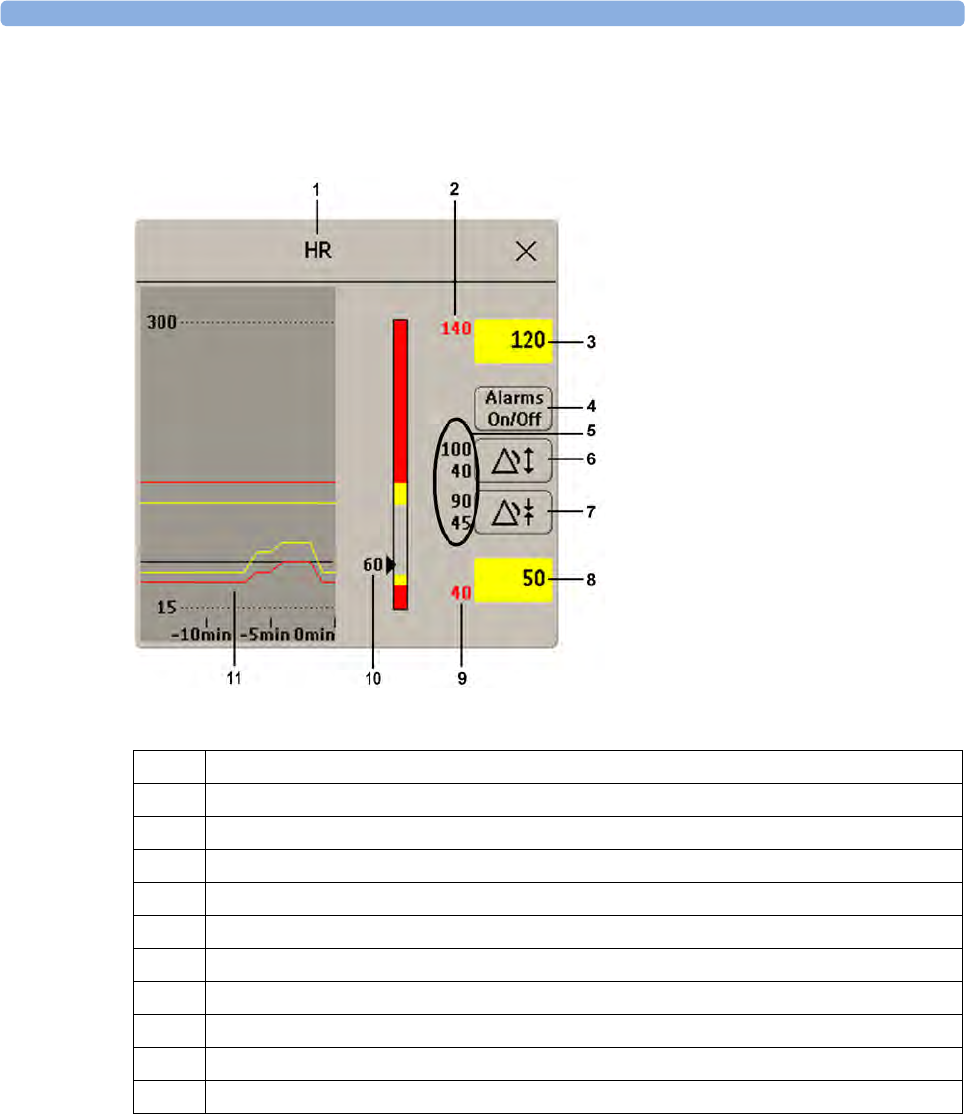
3 Alarms
69
2Select a value from the list to adjust the alarm limit.
Alternatively, you can use the keys in the measurement alarm limits window, which you access by
selecting the measurement label in the Alarm Limits window.
To change alarm limits,
1Enter the Alarm Limits window.
2Using touch: to set the high alarm limit, select the high yellow alarm field to open a pop-up list of
high alarm limits. Select a limit from the list. Repeat to set the low yellow alarm field.
Using a SpeedPoint or Navigation Point: position the cursor in the high yellow alarm field,
then press the knob inwards. Rotate the knob to the left or right to adjust the limit. Press the knob
again to set the displayed limit. Repeat to set the low yellow alarm limit.
1Parameter label
2High red alarm limit (view only)
3High yellow alarm limit field. Select to open a pop-up list of high alarm limits
4Alarms On/Off key - select to switch between alarms on or off
5Preview Alarm AutoLimits for a measurement before applying
6Select to apply wide AutoLimits
7Select to apply narrow AutoLimits
8Low yellow alarm field. Select to open a pop-up list of low alarm limits
9Low red alarm (view only)
10 Graphic view of alarm limits with currently measured value
11 15-min trend, showing alarm limits and monitored measurement values
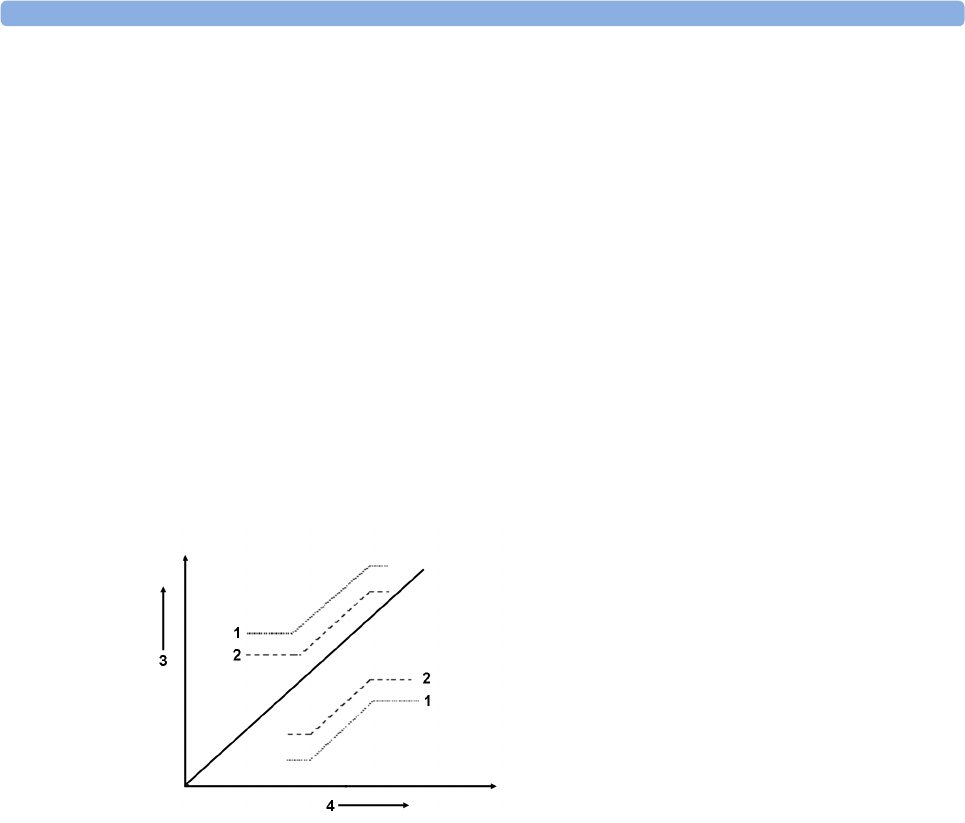
3 Alarms
70
If you set the yellow alarm limit outside the red alarm limit, the monitor will automatically adapt the
red alarm limit.
When an ST measurement is in the alarm limits window there are also two pop-up keys available
labeled All ST Narrow/All ST Wide. With these keys you can set Auto Limits for all ST Leads.
Alarm Limits can also be changed at the IntelliVue Information Center iX.
About Automatic Alarm Limits
The monitor can automatically set alarm limits suited to your individual patient, using the Automatic
Alarm Limits function (AutoLimits). This tells the monitor to adapt the alarm limits of selected
measurements to the measured vital signs within a defined safe limit. The monitor calculates safe
AutoLimits for each patient based on the measured values from the last 12 seconds.
The wide and narrow limits have a fixed relationship to the measured value within the non-
pathological range. Outside of this range, no auto limits are calculated. To set values outside of the
non-pathological range, limits must be changed manually, based on the clinician's judgment about the
specific patient.
Limits Narrow sets limits close to the currently measured values for situations where it is critical for
you to be informed about small changes in your patient's vital signs.
Limits Wide sets limits further away from the currently measured values for situations where small
changes are not so critical.
Use the keys in the measurement alarm limits window to apply AutoLimits for individual
measurements. These keys are not available if AutoLimits have been disabled for the measurement in
the monitor's Configuration Mode.
AutoLimits are not available for all measurements. The list of measurements for which AutoLimits can
be used is defined in the monitor's Configuration mode.
Use the measurement alarm limits window to check AutoLimits before you apply them to ensure that
they are appropriate for your individual patient and their clinical condition. Once applied, AutoLimits
are shown on the monitor screen just like manually-set alarm limits. If the AutoLimits are not
appropriate for your patient, you must set alarm limits manually. The limits remain unchanged until
you set them again or change them manually.
Documenting Alarm Limits
The alarm limits pop-up keys appear with the Alarm Limits and measurement alarm limits windows.
1Wide alarm limits
2Narrow alarm limits
3Alarm Limits
4Measurement value

3 Alarms
71
• Select the Print Limits pop-up key to print an overview of all alarm limits on a connected printer.
• Select the Record Limits pop-up key to send a recording of the alarm limits to a recorder.
Reviewing Alarms
You can see which alarms and INOPs are currently active in the respective alarms and INOPs fields at
the top of the screen.
To see the currently active alarms and INOPs listed in one place, select any of the alarm status areas on
the monitor screen. The Alarm Messages window pops up.
All alarms are erased from the Alarm Messages window when you discharge a patient, or if you
change to Demonstration Mode.
Alarm Messages Window
The Alarm Messages window shows all the currently active alarms and INOPs sorted by priority,
beginning at the top with the most recent. INOPs are shown on the left hand side and patient alarms
are shown on the right hand side. Any active red alarms are shown first, followed by yellow alarms.
Acknowledged alarms or INOPs are shown with the check mark symbol.
The Alarm Messages window pop-up keys appear when the window is opened. If alarm pause
extension is disabled, the pause pop-up keys are inactive ("grayed-out"). Selecting the Review Alarms
pop-up key opens the Review Alarms window.
If you do not immediately understand an INOP or alarm message, refer to its help text.
•In the Alarm Messages window, select the message. This calls up a help window with an
explanation of the message and, where appropriate, a suggested solution for the problem.
• If the alarm or INOP was generated in a device other than the monitor (for instance, in an MMS
or FMS), this source is specified at the end of the help text.
Review Alarms Window
The Review Alarms window contains a list of the most recent alarms and INOPs with date and time
information.
If configured to do so, each alarm is shown with the alarm limit active when the alarm was triggered
and the maximum value measured beyond this limit. The Review Alarms window also shows when the
monitor was switched on (after being switched off for longer than 1 minute) and any actions related to
switching device alarms on and off, entering or leaving Standby mode, silencing alarms or changing the
ECG source.
When you select an item from the list, you can get additional information about that item. If you select
a high or low limit alarm in the list, the Graphical Trends window will open to provide further data. If
you select an alarm resulting from an event alarm notification, the Event Episode window for that
event will open. If you select an alert other than a high or low alarm, a help text window opens with
more information. This is the same as the help text window that opens in the Alarm Messages
window. Some items in the list are simply log items not related to a patient alert as such (for example,
Alarms On or Alarms Off). You cannot see any further information if you select one of these items.
When you close these windows you will return to the Review Alarms window.
The information in the Review Alarms window is deleted when a patient is discharged, and when you
leave Demonstration Mode.
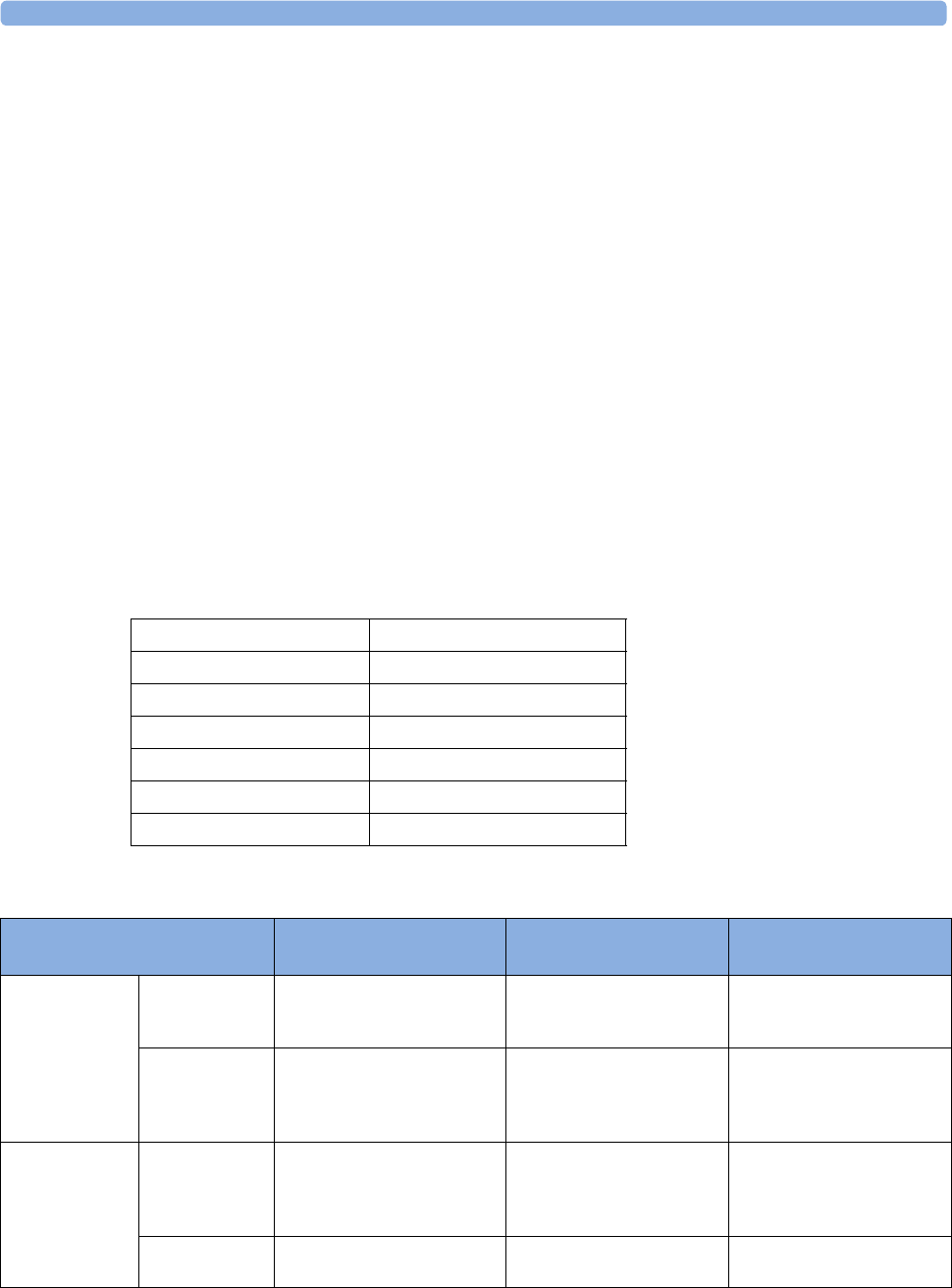
3 Alarms
72
The Review Alarms window pop-up keys appear when the window is opened. If alarm pause
extension is disabled, the pause pop-up keys are inactive. Selecting the Active Alarms pop-up key
opens the Alarm Messages window.
Latching Alarms
The alarm latching setting for your monitor defines how the alarm indicators behave when you do not
acknowledge them. When alarms are set to non-latching, their indicators end when the alarm condition
ends. Switching alarm latching on means that visual and/or audible alarm indications are still displayed
or announced by the monitor after the alarm condition ends. The indication lasts until you
acknowledge the alarm.
Viewing the Alarm Latching Settings
To see the alarm latching setting for your monitor
1In the monitor's Main Setup menu, select Alarms.
2Select Alarm Settings, and see the Visual Latching and Audible Latching settings.
This setting can only be changed in Configuration Mode. You should be aware of the settings chosen
for your unit. There are three possible choices each for visual and audible latching, red only, red and
yellow, and off. These choices can be combined to give the following settings:
Alarm Latching Behavior
Visual Latching Audible Latching
Red&Yellow Red&Yellow
Red&Yellow Red Only
Red&Yellow Off
Red Only Red Only
Red Only Off
Off Off
Red & Yellow Measurement
Alarms
Non-latching alarms Visual and audible latching Visual latching, audible
non-latching
Alarm has not
been
acknowledged.
Alarm condition
still present.
Alarm tone on. Alarm lamp on.
Alarm message. Flashing
numerics.
Alarm tone on. Alarm lamp
on. Alarm message. Flashing
numerics.
Alarm tone on. Alarm lamp
on. Alarm message. Flashing
numerics.
Alarm condition
no longer present.
All audible and visual alarm
indicators automatically stop.
Alarm tone on.
Alarm lamp on.
Alarm message.
Flashing numerics.
Alarm message. Flashing
numerics.
Audible alarm indicators
automatically stop.
Alarm has been
acknowledged.
Alarm condition
still present.
Alarm tone off. Alarm lamp off.
Alarm message. Flashing
numerics. Audible alarm
reminder (if configured).
Alarm tone off. Alarm lamp
off. Alarm message. Flashing
numerics. Audible alarm
reminder (if configured).
Alarm tone off. Alarm lamp
off. Alarm message. Flashing
numerics. Audible alarm
reminder (if configured).
Alarm condition
no longer present.
Audible and visual alarm
indicators automatically stop.
Audible and visual alarm
indicators automatically stop.
Audible and visual alarm
indicators automatically stop.

3 Alarms
73
All INOPs are non-latching. See “Yellow Arrhythmia Alarms” on page 160 for information on one-
star yellow alarms latching behavior.
Testing Alarms
When you switch the monitor on, a selftest is started. You must check that the alarms lamps light, one
after the other, and that you hear a single tone. This indicates that the visible and audible alarm
indicators are functioning correctly. For further testing of individual measurement alarms, perform the
measurement on yourself (for example SpO2 or CO2) or use a simulator. Adjust alarm limits and check
that appropriate alarm behavior is observed.
Alarm Behavior at Power On
If the monitor is switched off for longer than one minute and then switched on again (or after a loss of
power lasting longer than one minute, or when a patient is discharged), the monitor can be configured
to:
• restore the alarm settings from the monitor's configured default Profile,
• restore the most recently used alarm settings, or
• switch the alarms off.
After any of these situations, you should check that the alarm settings are appropriate for your patient
and monitoring situation, and if necessary, select the correct Profile and patient category.
If power is lost for less than one minute, the alarm on/off condition prior to the power loss is
restored.
Alarm Recordings
You can set up your monitor so that it automatically triggers alarm recordings locally or at the
Information Center, or if configured, to a printer as a realtime report.
1Press the Main Setup SmartKey.
2Select Alarms from the Main Setup menu.
3Select Alarm Recording from the Alarms menu to open the Alarm Recordings menu.
4Select a measurement from those listed for which you want to change the alarm condition that
triggers an alarm recording. This opens a pop-up list.
5For the desired measurement(s), choose the alarm condition to trigger an alarm recording:
Red Only: an alarm recording will automatically be triggered when the measurement enters a red
alarm condition.
Red&Yellow: both yellow and red alarms will trigger an alarm recording.
Off: disables automatic alarm recording.
Refer to the "Recording" chapter for details of how to set up a recording.

3 Alarms
74

4
75
4Patient Alarms and INOPs
This chapter lists patient alarms alphabetically, and technical alarms (INOPs) arranged by the source of
the INOP and then alphabetically, irrespective of their priority. All alarms and INOPs are listed here;
the ones which can appear on your monitor will depend on the model and the individual options.
Patient Alarm Messages
The measurement labels and abbreviations for pressure, temperature, SpO2, and anesthetic agent
alarms are explained in the individual chapters.
Some alarms may be shown at the Information Center in shortened form, when transferred through
IntelliVue Instrument Telemetry. These shortened alarm texts are included in the list and identified
with the note "at Information Center".
Refer to your IntelliBridge Device Driver Instructions for Use for patient alarms from connected
external devices.
Refer to your Gas Module Instructions for Use for patient alarms and INOPs from the gas modules.
Refer to your IntelliVue TcG10 Instructions for Use for patient alarms and INOPs from the TcG10.
Alarm Message From Condition Indication
* AFIB ECG/Arrhythmia Atrial fibrillation waveform detected yellow alarm lamp, short yellow
alarm tone
*** Apnea
*** Apnea x:yy
*** Apnea >10 min
CO2, Resp,
Spirometry
Respiration has stopped for longer than the
preset apnea time. "x:yy" denotes the Apnea
duration in minutes and seconds
numeric flashes, red alarm lamp,
alarm tone
*** Asystole ECG No QRS detected for a period > the asystole
alarm threshold
numeric flashes, red alarm lamp,
alarm tone
** awRR High CO2, Resp, AGM The airway respiration rate has exceeded the
high alarm limit.
numeric flashes and high limit is
highlighted, yellow alarm lamp,
alarm tone
** awRR Low CO2, Resp, AGM The airway respiration rate has dropped below
the low alarm limit.
numeric flashes and low limit is
highlighted, yellow alarm lamp,
alarm tone
** BIS High BIS The Bispectral Index value has exceeded the
high alarm limit.
numeric flashes and high limit is
highlighted, yellow alarm lamp,
alarm tone
** BIS Low BIS The Bispectral Index value has dropped below
the low alarm limit.
numeric flashes and low limit is
highlighted, yellow alarm lamp,
alarm tone
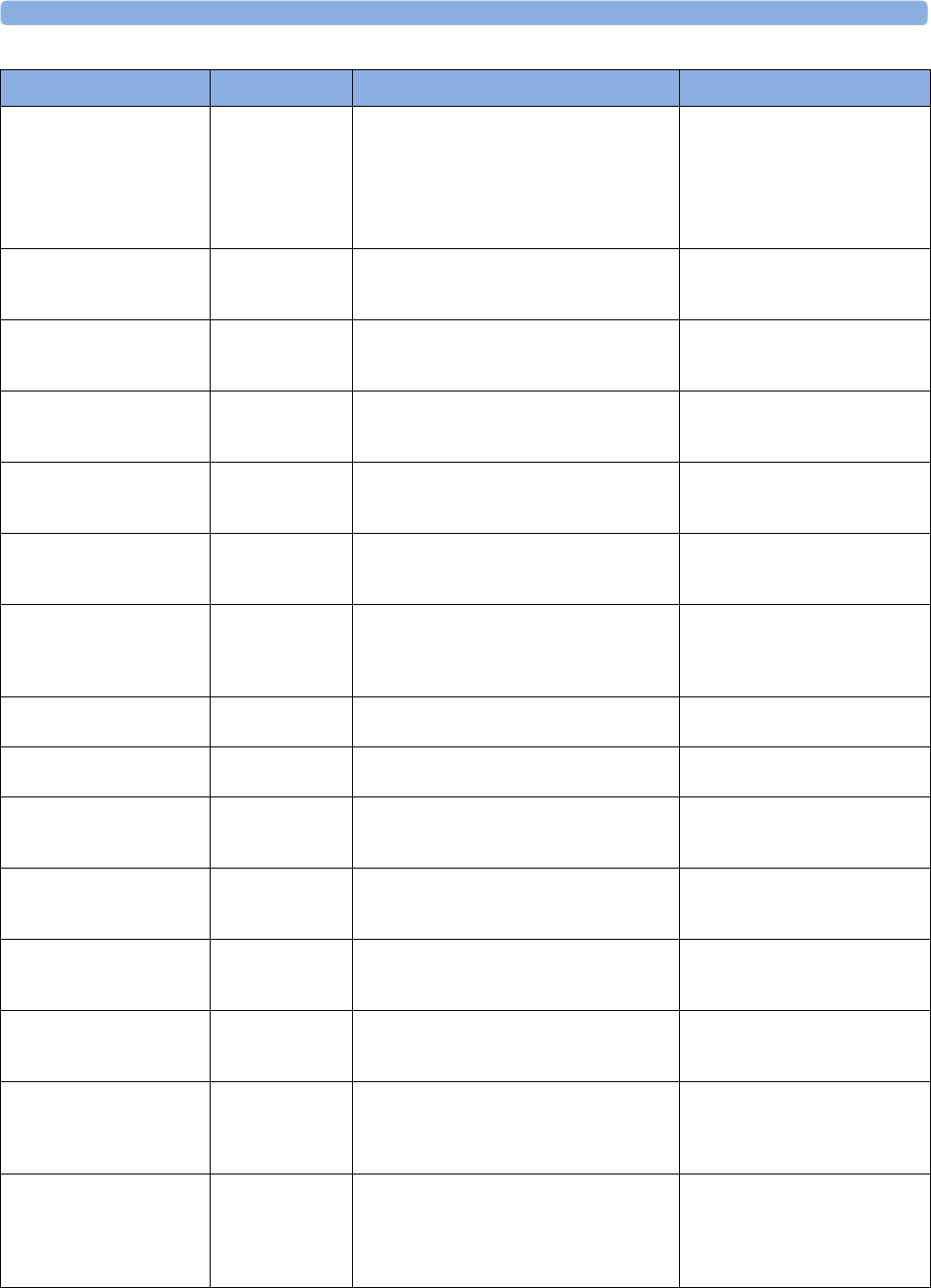
4 Patient Alarms and INOPs
76
***Brady/P xxx<yyy
***Brady xxx < yyy
Press, SpO2
ECG
This is the alternative alarm message for ***
Extreme Brady, when the alarm text setting
is Enhanced.
Heart rate < the extreme bradycardia alarm
limit. xxx denotes the lowest measured value;
yyy is the extreme bradycardia limit.
numeric flashes and alarm limit is
highlighted, red alarm lamp, alarm
tone
** CCO High
** CCI High
CCO Continuous Cardiac Output or CC Index is
above the high alarm limit.
numeric flashes and high alarm
limit is highlighted, yellow alarm
lamp, alarm tone
** CCO Low
** CCI Low
CCO Continuous Cardiac Output or CC Index is
below the low alarm limit.
numeric flashes and low alarm limit
is highlighted, yellow alarm lamp,
alarm tone
** CPP High CPP The CPP value has exceeded the high alarm
limit.
numeric flashes and high limit is
highlighted, yellow alarm lamp,
alarm tone
** CPP Low CPP The CPP value has fallen below the low alarm
limit.
numeric flashes and low limit is
highlighted, yellow alarm lamp,
alarm tone
*** Desat
*** Desat xx < yy
SpO2The SpO2 value has fallen below the
desaturation alarm limit. xx denotes the lowest
measured value, and yy is the desaturation limit.
numeric flashes, red alarm lamp,
alarm tone
** EC10 Alarm
*** EC10 Alarm
at Information Center
EC10 IntelliBridge A yellow (**) or red (***) patient alarm is
present on the IntelliBridge module. Check the
monitor display for more detailed alarm
information.
(on monitor) yellow or red alarm
lamp; the alarm text is defined by
the IntelliBridge device driver
* End AFIB ECG/Arrhythmia Atrial fibrillation no longer detected for the
configured Afib end delay time
yellow alarm lamp, short yellow
alarm tone
* End Irregular HR ECG/Arrhythmia Irregular HR no longer detected for the
configured irregular HR end delay time.
yellow alarm lamp, short yellow
alarm tone
** etCO₂ High CO2, AGM The end tidal CO2 high alarm limit has been
exceeded.
numeric flashes and high limit is
highlighted, yellow alarm lamp,
alarm tone
** etCO₂ Low CO2, AGM The end tidal CO2 value has fallen below the
low alarm limit.
numeric flashes and low limit is
highlighted, yellow alarm lamp,
alarm tone
** etO₂ High O2, AGM The end tidal O2 high alarm limit has been
exceeded.
numeric flashes and high limit is
highlighted, yellow alarm lamp,
alarm tone
** etO₂ Low O2, AGM The end tidal O2 value has fallen below the low
alarm limit.
numeric flashes, and low limit is
highlighted, yellow alarm lamp,
alarm tone
* Event
** Event
*** Event
at Information center
Event surveillance An event has occurred and the event
notification is configured to alarm. Check on
the monitor for more details on event group.
(on monitor) event group name
flashes, yellow or red alarm lamp
and alarm tone
* Event:<Event Group>
** Event:<Event
Group>
*** Event:<Event
Group>
Event surveillance An event has occurred and the event
notification is configured to alarm.
event group name flashes, yellow or
red alarm lamp and alarm tone
Alarm Message From Condition Indication
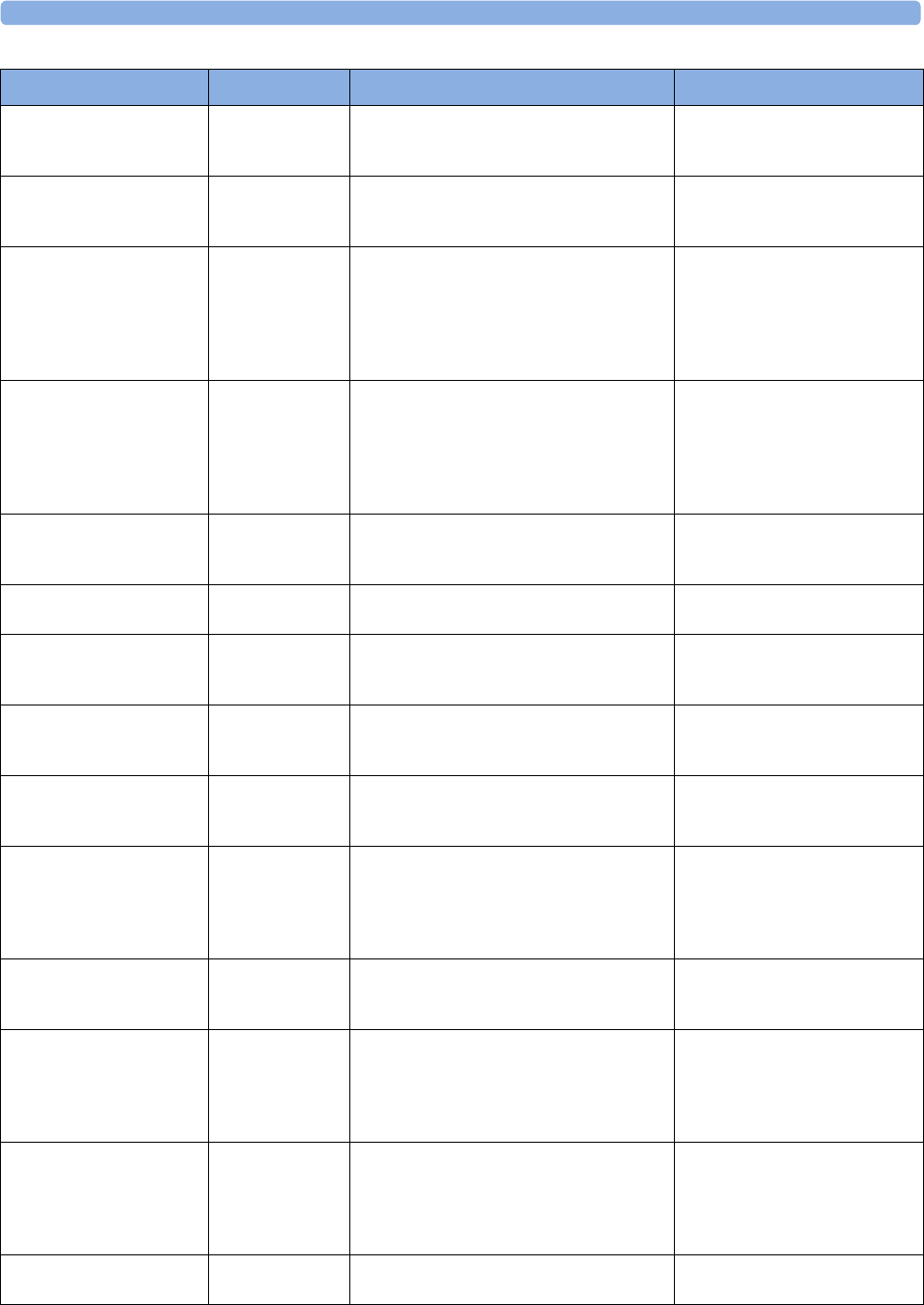
4 Patient Alarms and INOPs
77
*** Extreme Brady ECG Heart rate < the extreme brady alarm limit. numeric flashes and alarm limit is
highlighted, red alarm lamp, alarm
tone
*** Extreme Tachy ECG Heart rate > the extreme tachy alarm limit. numeric flashes and alarm limit is
highlighted, red alarm lamp, alarm
tone
* HR High
** HR High
ECG Heart rate > the high HR alarm limit numeric flashes and high limit is
highlighted, yellow alarm lamp,
alarm tone. If configured to short
yellow, the sound switches off after
5 seconds if Arrhythmia is switched
on.
* HR Low
** HR Low
ECG Heart rate < the low HR alarm limit numeric flashes and low limit is
highlighted, yellow alarm lamp,
alarm tone. If configured to short
yellow, the sound switches off after
5 seconds if Arrhythmia is switched
on.
** IPI Low CO2The IPI value has fallen below the low alarm
limit.
numeric flashes, and low limit is
highlighted, yellow alarm lamp,
alarm tone
* Irregular HR ECG/Arrhythmia Consistently irregular rhythm (irregular R-R
intervals).
numeric flashes, yellow alarm lamp,
short yellow audible alarm
** <iTemp Label> High iTemp The temperature value has exceeded the high
alarm limit.
numeric flashes and high limit is
high-lighted, yellow alarm lamp,
alarm tone
** <iTemp Label> Low iTemp The temperature value has dropped below the
low alarm limit.
numeric flashes and low limit is
high-lighted, yellow alarm lamp,
alarm tone
* Missed Beat ECG/Arrhythmia No beat detected for > 1.75*(the averaged R-R
interval), or no beat detected for > one second
if HR > 120 (For non-paced patients only).
numeric flashes, yellow alarm lamp,
short yellow audible alarm
* More Alarms
** More Alarms
*** More Alarms
other assigned
devices
There is more than one physiological alarm of
the corresponding severity active on the devices
that monitor this patient. For details, check the
information displayed at the Information
Center.
yellow or red alarm lamp and alarm
tone
* Multiform PVCs ECG/Arrhythmia Two different shaped Vs detected, each
occurring at least twice within the last 300 beats
and at least once within the last 60 beats.
numeric flashes, yellow alarm lamp,
short yellow audible alarm
** NBP High NBP The measured NBP value is above the high
alarm limit.
s, d, or m after the label indicates whether the
systolic, diastolic or mean pressure has crossed
the limit.
numeric flashes and high limit is
highlighted, yellow alarm lamp,
alarm tone
** NBP Low NBP The measured NBP value is below the low
alarm limit.
s, d, or m after the label indicates whether the
systolic, diastolic or mean pressure has crossed
the limit.
numeric flashes and low limit is
highlighted, yellow alarm lamp,
alarm tone
* Non-Sustain VT ECG/Arrhythmia A run of PVCs < the V-Tach run limit and
ventricular heart rate > the V-Tach HR limit
numeric flashes, yellow alarm lamp,
short yellow audible alarm
Alarm Message From Condition Indication
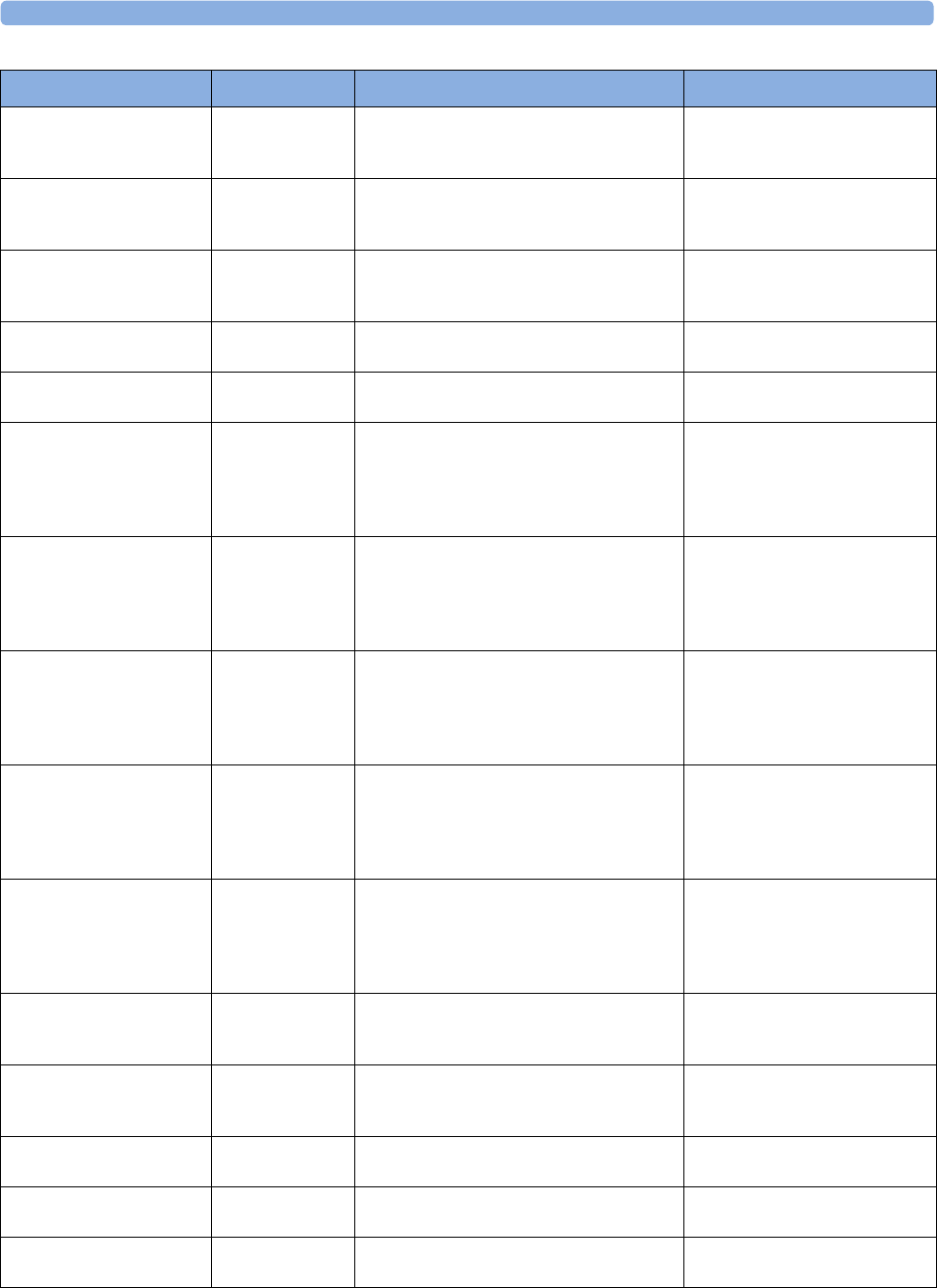
4 Patient Alarms and INOPs
78
* OtherMon Alarm
** OtherMon Alarm
*** OtherMon Alarm
another assigned
monitor
Another monitor used for the patient is in an
alarm condition. Check the detailed alarm
information at the Information Center.
yellow or red alarm lamp and alarm
tone
* Pacer Not Capt ECG/Arrhythmia
(paced patients
only)
No beat detected for > 1.75*(the averaged R-R
interval) with detected pace pulse(s). (For paced
patients only).
numeric flashes, yellow alarm lamp,
short yellow audible alarm
* Pacer Not Pacing ECG/Arrhythmia
(paced patients
only)
No beat and pace pulse detected for >
1.75*(the averaged R-R interval). (For paced
patients only).
numeric flashes, yellow alarm lamp,
short yellow audible alarm
* Pair PVCs ECG/Arrhythmia Two ventricular beats between two non-
ventricular beats.
numeric flashes, yellow alarm lamp,
short yellow audible alarm
* Pause ECG/Arrhythmia No beat detected for a period > the pause
threshold.
numeric flashes, yellow alarm lamp,
short yellow audible alarm
*** <Press Label>
Disconnect
PRESS The pressure is non-pulsatile and the mean
pressure is continuously less than 10 mmHg
(1.3 kPa). This alarm occurs only with arterial
pres su re s (P, AB P, ART, A o, BA P, FA P, PA P,
UAP, P1, P2, P3, P4).
numeric flashes, red alarm lamp,
alarm tone
*** <Press Label> High PRESS The measured pressure value is above the
extreme high alarm limit.
s, d, or m after the label indicates whether the
systolic, diastolic or mean pressure has crossed
the limit.
numeric flashes, high limit is
highlighted, red alarm lamp, alarm
tone
** <Press Label> High PRESS The measured pressure value is above the high
alarm limit.
s, d, or m after the label indicates whether the
systolic, diastolic or mean pressure has crossed
the limit.
numeric flashes, high limit is
highlighted, yellow alarm lamp,
alarm tone
*** <Press Label> Low PRESS The measured pressure value is below the
extreme low alarm limit.
s, d, or m after the label indicates whether the
systolic, diastolic or mean pressure has crossed
the limit.
numeric flashes and low limit is
highlighted, red alarm lamp, alarm
tone
** <Press Label> Low PRESS The measured pressure value is below the low
alarm limit.
s, d, or m after the label indicates whether the
systolic, diastolic or mean pressure has crossed
the limit.
numeric flashes and low limit is
highlighted, yellow alarm lamp,
alarm tone
** Pulse High PRESS, SpO2The pulse rate has exceeded the high alarm
limit.
numeric flashes and high limit is
highlighted, yellow alarm lamp,
alarm tone
** Pulse Low PRESS, SpO2The pulse rate has dropped below the low
alarm limit.
numeric flashes and low limit is
highlighted, yellow alarm lamp,
alarm tone
* PVCs/min High ECG/Arrhythmia PVCs detected within a minute > the alarm
limit
numeric flashes, yellow alarm lamp,
short yellow audible alarm
** QTc High ECG/QT QTc value has exceeded the QTc high limit for
more than 5 minutes
numeric flashes, yellow alarm lamp,
alarm tone
** ΔQTc High ECG/QT ΔQTc value has exceeded the ΔQTc high limit
for more than 5 minutes
numeric flashes, yellow alarm lamp,
alarm tone
Alarm Message From Condition Indication
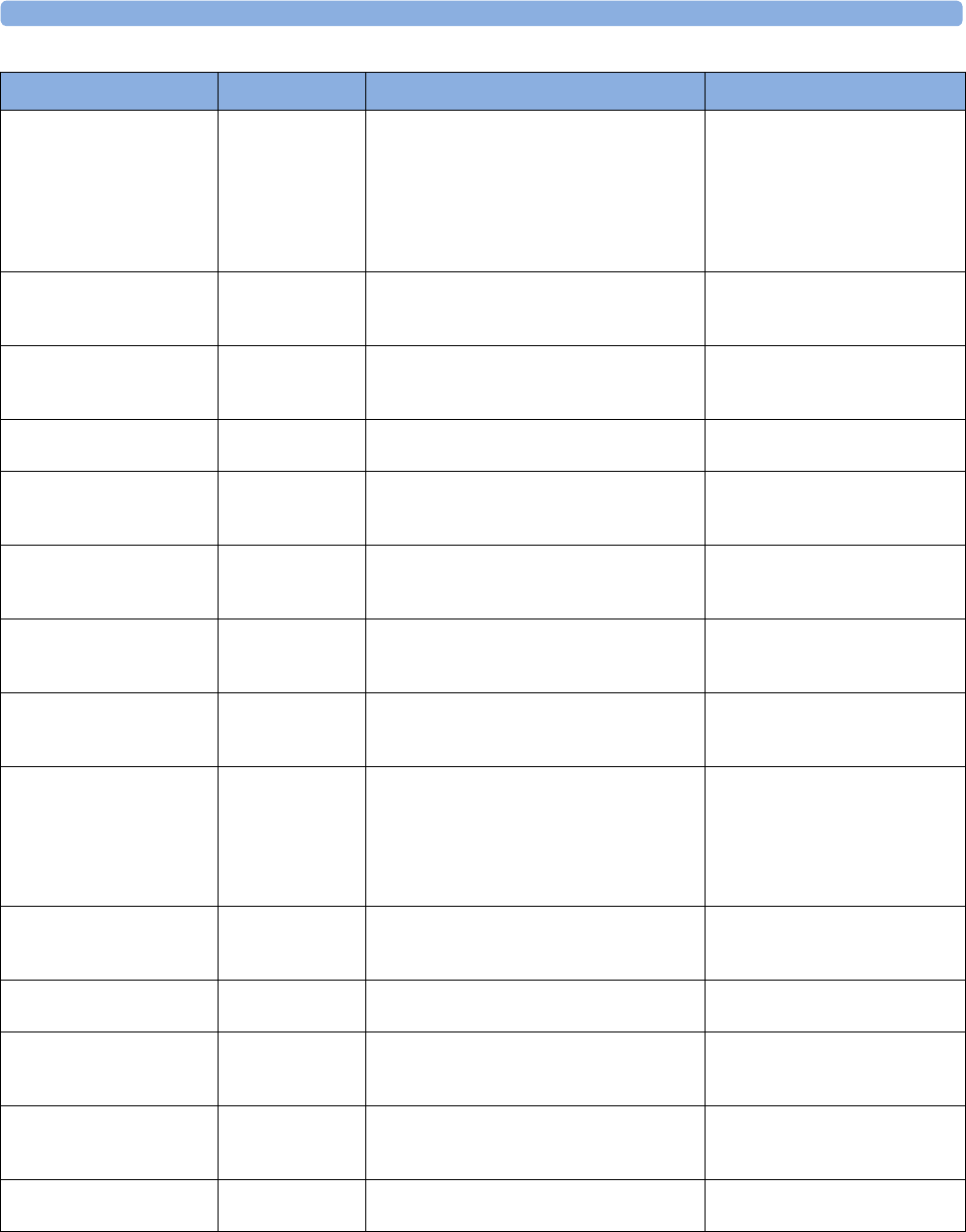
4 Patient Alarms and INOPs
79
* R-on-T PVCs ECG/Arrhythmia For HR < 100, a PVC with R-R interval < 1/3
the average interval followed by a
compensatory pause of 1.25*(the average R-R
interval), or two such Vs without compensatory
pause occurring within 5 minutes of each other.
(When HR > 100, 1/3 R-R interval is too short
for beat detection)
numeric flashes, yellow alarm lamp,
short yellow audible alarm
** RR High RESP The respiration rate has exceeded the high
alarm limit.
numeric flashes and high limit is
highlighted, yellow alarm lamp,
alarm tone
** RR Low RESP The respiration rate has dropped below the low
alarm limit.
numeric flashes and low limit is
highlighted, yellow alarm lamp,
alarm tone
* Run PVCs High ECG/Arrhythmia A run of > 2 PVCs. numeric flashes, yellow alarm lamp,
short yellow audible alarm
** <SO₂ Label> High SvO2/SO2The the measured intravascular oxygen
saturation has exceeded the high limit.
numeric flashes and high alarm
limit is highlighted, yellow alarm
lamp, alarm tone
** <SO₂ Label> Low SvO2/SO2The measured intravascular oxygen saturation
has fallen below the low limit.
numeric flashes and low alarm limit
is highlighted, yellow alarm lamp,
alarm tone
** <SpO₂ Label> High SpO2The arterial oxygen saturation has exceeded the
high alarm limit.
numeric flashes and high limit is
highlighted, yellow alarm lamp,
alarm tone
** <SpO₂ Label> Low SpO2The arterial oxygen saturation has fallen below
the low alarm limit.
numeric flashes and low limit is
highlighted, yellow alarm lamp,
alarm tone
**ST Multi <n>,<n> ECG/ST Two contiguous ST leads <n> and <n> have
exceeded elevation or depression limits for
more than 60 seconds. The limit violations for
both leads must be with respect to same limit;
either both above the high limit or both below
the low limit.
numeric flashes, yellow alarm lamp,
alarm tone
**ST Multi
at Information Center
ECG/ST The ST depression or elevation is outside of
the limit in two or more leads. Check on the
monitor
(on monitor) numeric flashes,
yellow alarm lamp, alarm tone
**STE <n>,<n> ECG/ST Two contiguous leads <n> and <n> are above
their respective STE limits
numeric flashes, yellow alarm lamp,
alarm tone
** ST-<n> High ECG/ST The ST elevation in lead <n> is higher than the
limit. Lead is not contiguous with any other
lead.
numeric flashes and high alarm
limit is highlighted, yellow alarm
lamp, alarm tone
** ST-<n> Low ECG/ST The ST depression in lead <n> is lower than
the limit. Lead is not contiguous with any other
lead.
numeric flashes and low alarm limit
is highlighted, yellow alarm lamp,
alarm tone
* SVT ECG/Arrhythmia A run of supraventricular beats > the SVT run
limit and heart rate > the SVT HR limit.
numeric flashes, yellow alarm lamp,
alarm tone
Alarm Message From Condition Indication
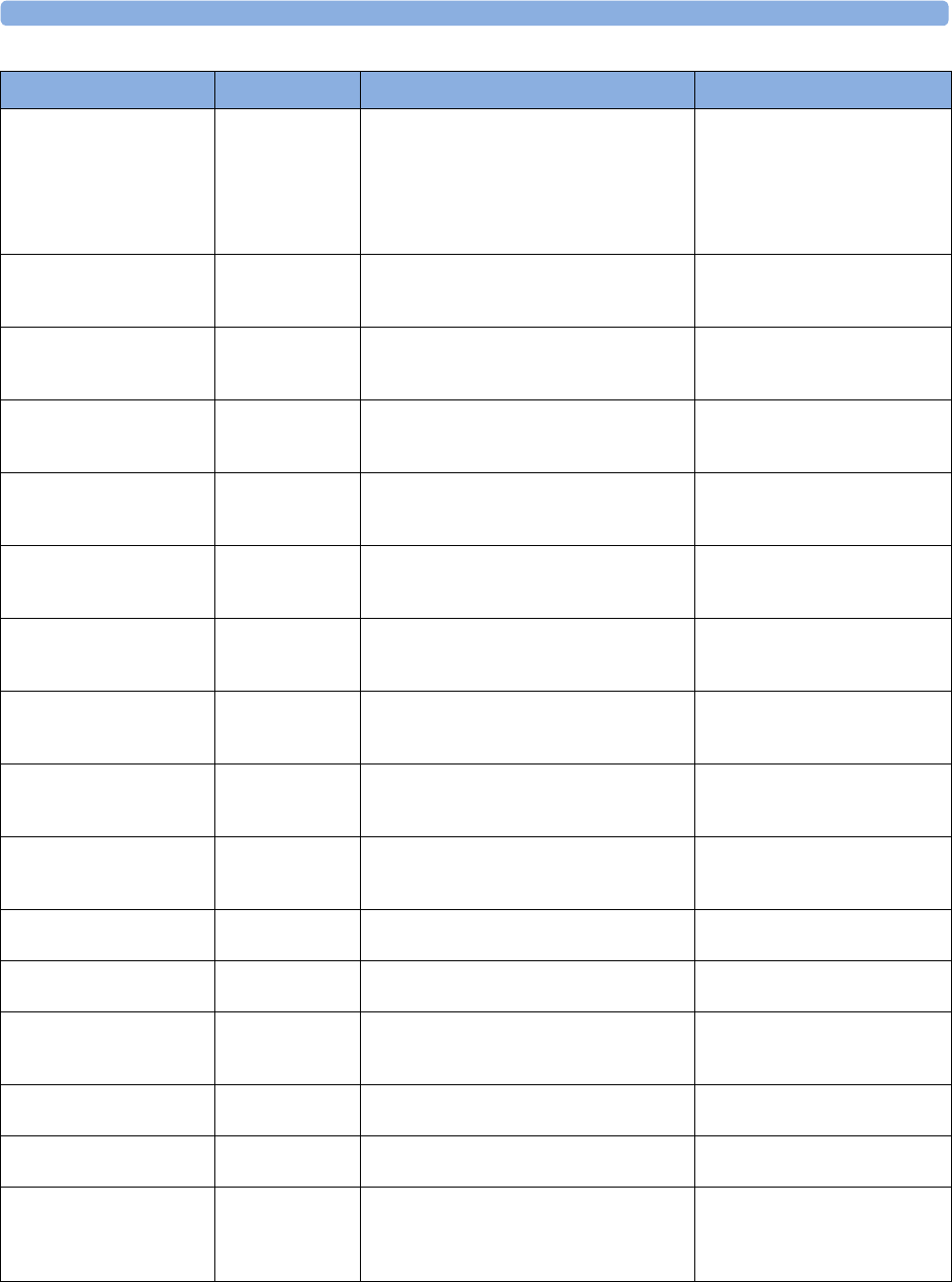
4 Patient Alarms and INOPs
80
***Tachy/P xxx>yyy
or
***Tachy xxx > yyy
Press, SpO2,
ECG
This is the alternative alarm message for ***
Extreme Tachy when the alarm text setting
is Enhanced.
Heart rate >the extreme tachycardia alarm
limit. xxx denotes the highest measured value;
yyy is the tachycardia limit.
numeric flashes, alarm limit is
highlighted, red alarm lamp, alarm
tone
** Tblood High C.O. The blood temperature value has exceeded the
high alarm limit.
numeric flashes, high alarm limit is
highlighted, yellow alarm lamp,
alarm tone
** Tblood Low C.O. The blood temperature value has fallen below
the low alarm limit.
numeric flashes, low alarm limit is
highlighted, yellow alarm lamp,
alarm tone
** tcpO₂ High
** tcpCO₂ High
tcGas The tcpO2 or tcpCO2 value has exceeded the
high alarm limit.
numeric flashes, high alarm limit is
highlighted, yellow alarm lamp,
alarm tone
** tcpO₂ Low
** tcpCO₂ Low
tcGas The tcpO2 or tcpCO2 value has fallen below
the low alarm limit.
numeric flashes, low alarm limit is
highlighted, yellow alarm lamp,
alarm tone
* Tele Alarm
** Tele Alarm
*** Tele Alarm
an assigned
telemetry device
A telemetry device used for the patient is in an
alarm condition. Check the detailed alarm
information at the Information Center.
yellow or red alarm lamp and alarm
tone
** <Temp Label> High TEMP The temperature has exceeded the high alarm
limit.
numeric flashes and high limit is
highlighted, yellow alarm lamp,
alarm tone
** <Temp Label> Low TEMP The temperature has fallen below the low alarm
limit.
numeric flashes and low limit is
highlighted, yellow alarm lamp,
alarm tone
* T-Mon Alarm
** T-Mon Alarm
*** T-Mon Alarm
an assigned
transport monitor
A transport monitor used for the patient is in
an alarm condition. Check the detailed alarm
information at the Information Center.
yellow or red alarm lamp and alarm
tone
** TOFcnt High NMT TOFcnt value has exceeded the high alarm
limit
numeric flashes and high limit is
highlighted, yellow alarm lamp,
alarm tone
* Vent Bigeminy ECG/Arrhythmia A dominant rhythm of N, V, N, V (N =
supraventricular beat, V=ventricular beat)
numeric flashes, yellow alarm lamp,
short yellow audible alarm
*** Vent Fib/Tach ECG Fibrillatory waveform (sinusoidal wave between
2 – 10 Hz) for 4 consecutive seconds.
numeric flashes, red alarm lamp,
alarm tone
* Vent Rhythm
** Vent Rhythm
ECG/Arrhythmia A dominant rhythm of adjacent Vs > the vent
rhythm limit and ventricular heart rate < the V-
Tach HR limit.
numeric flashes, yellow alarm lamp,
short yellow audible alarm
* Vent Trigeminy ECG/Arrhythmia A dominant rhythm of N, N, V, N, N, V (N =
supraventricular beat, V = ventricular beat).
numeric flashes, yellow alarm lamp,
short yellow audible alarm
*** VTach ECG, Arrhythmia A run of PVCs ≥ the V-Tach run limit and
heart rate > the V-Tach HR limit.
numeric flashes, red alarm lamp,
alarm tone
** VueLink Alarm
*** VueLink Alarm
at Information Center
VueLink A yellow (**) or red (***) patient alarm is
present on the VueLink module. Check the
monitor display for more detailed alarm
information.
(on monitor) yellow or red alarm
lamp; the alarm text is defined by
the VueLink device driver
Alarm Message From Condition Indication
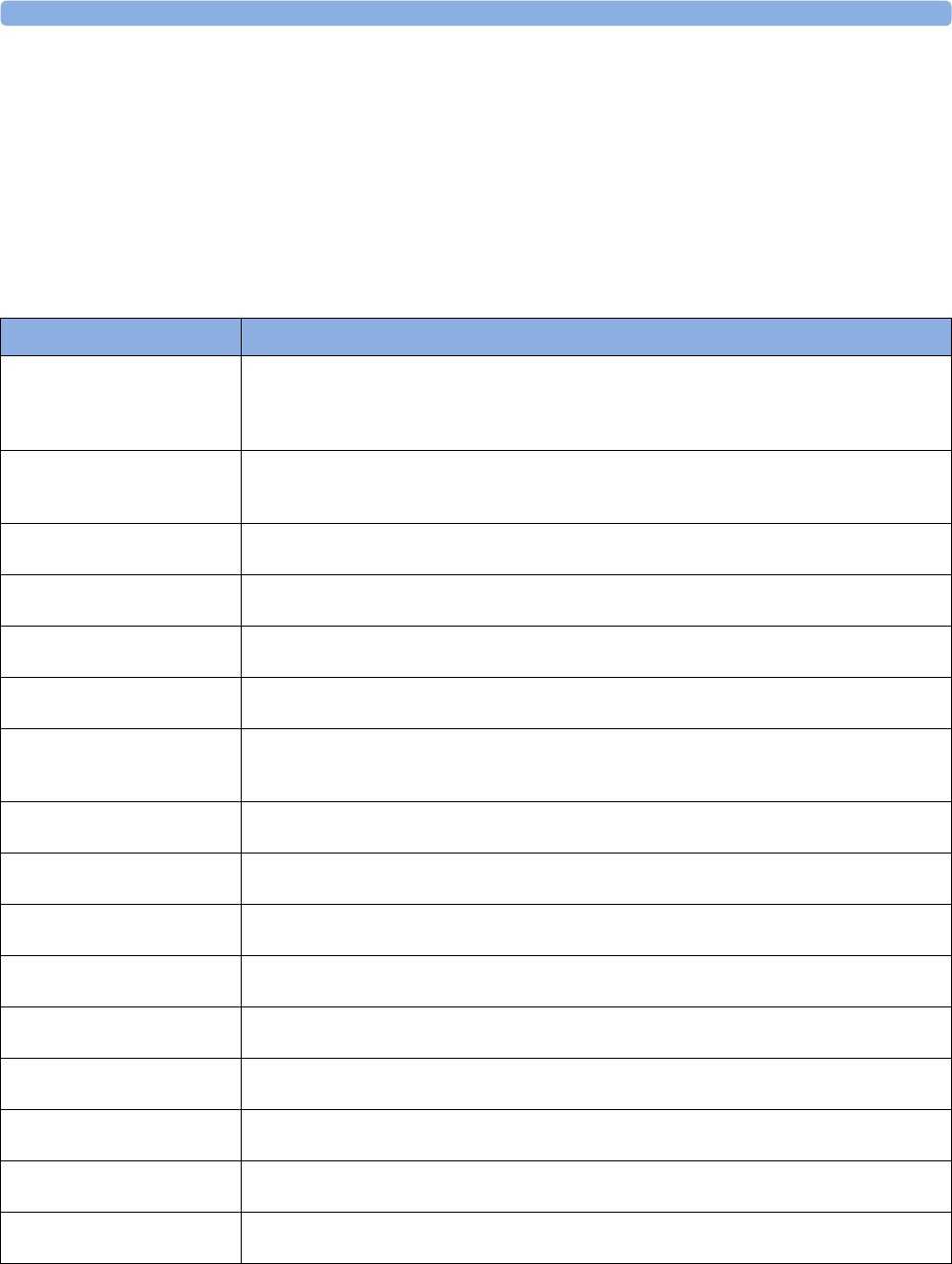
4 Patient Alarms and INOPs
81
Technical Alarm Messages (INOPs)
If an INOP interrupts monitoring and alarm detection, the measurement numeric will be replaced
by -?-. If an INOP may lead to unreliable measurement values, a ?appears next to the numeric.
The measurement labels and abbreviations for pressure, temperature, SpO2, and VueLink INOP
messages are explained in the individual measurement chapters.
Monitor INOPs
INOP Message, Indication What to do
Bad MSL
INOP tone
1) An MMS with an incompatible software revision is connected to the monitor. This combination
does not allow monitoring, OR
2) You cannot use this combination of monitor, MMS and cable. Switch off the monitor and contact
your service personnel.
Central: Tele Only
INOP tone
System connectivity via telemetry device is limited (No alarms, only local numerics) when in
companion mode and host monitor does not have system connectivity. Only telemetry device
parameters can be displayed at central station.
Check Alarm Lamps
INOP tone
Perform a visual check of the alarm lamp to establish whether there is a problem. Contact your service
personnel to check the internal connections to the alarm lamps.
Check DrugSettings
INOP tone
There was a problem loading the drug settings. Check that the settings are complete and correct.
!!Check ECG Source
Yellow tone
The telemetry device and the monitor both have valid ECG signals. Unpair the telemetry device and
the monitor if they are no longer used for the same patient.
!! Check Equipment
INOP tone/Yellow tone
There is an equipment status dispute relating to one or more of the devices assigned to this patient. See
the Equipment window for details.
Check Flex Texts
INOP tone
Check the names of the monitor menus, for example the labels for screens, profiles, event or trend
group names, before you resume monitoring. If they are unexpected, there may be a problem with the
monitor software. Contact your service personnel.
Check Keyboard
INOP tone
Perform a visual and functional check of the keyboard. Contact your service personnel.
Check Main Board 2
INOP tone
There is a problem with the second main board in the monitor. Contact your service personnel.
Check Monitor Func
INOP tone
Potential problem with alarm lamps, display or interfaces detected. Contact your service personnel.
Check Monitor Temp
INOP tone
The temperature inside the monitor is too high. Check that the monitor ventilation is not obstructed.
If the situation continues, contact your service personnel.
Check Mouse
INOP tone
Perform a visual and functional check of the mouse input device. Contact your service personnel.
Check MSL Voltage
INOP tone
There is a problem with the voltage of the Measurement Link (MSL). Contact your service personnel.
Check Network Conf
INOP tone
The monitor is receiving network topology information from more than one source, e.g. the Database
Server and an Application Server. Contact your service personnel.
!! Check Pairing
Yellow tone
There is a problem with device pairing. Check that the monitor and telemetry device are correctly
paired.
!!Check Patient ID
Yellow tone
There is a mismatch between patient data in two connected devices. Resolve the mismatch to allow
settings and data synchronization.
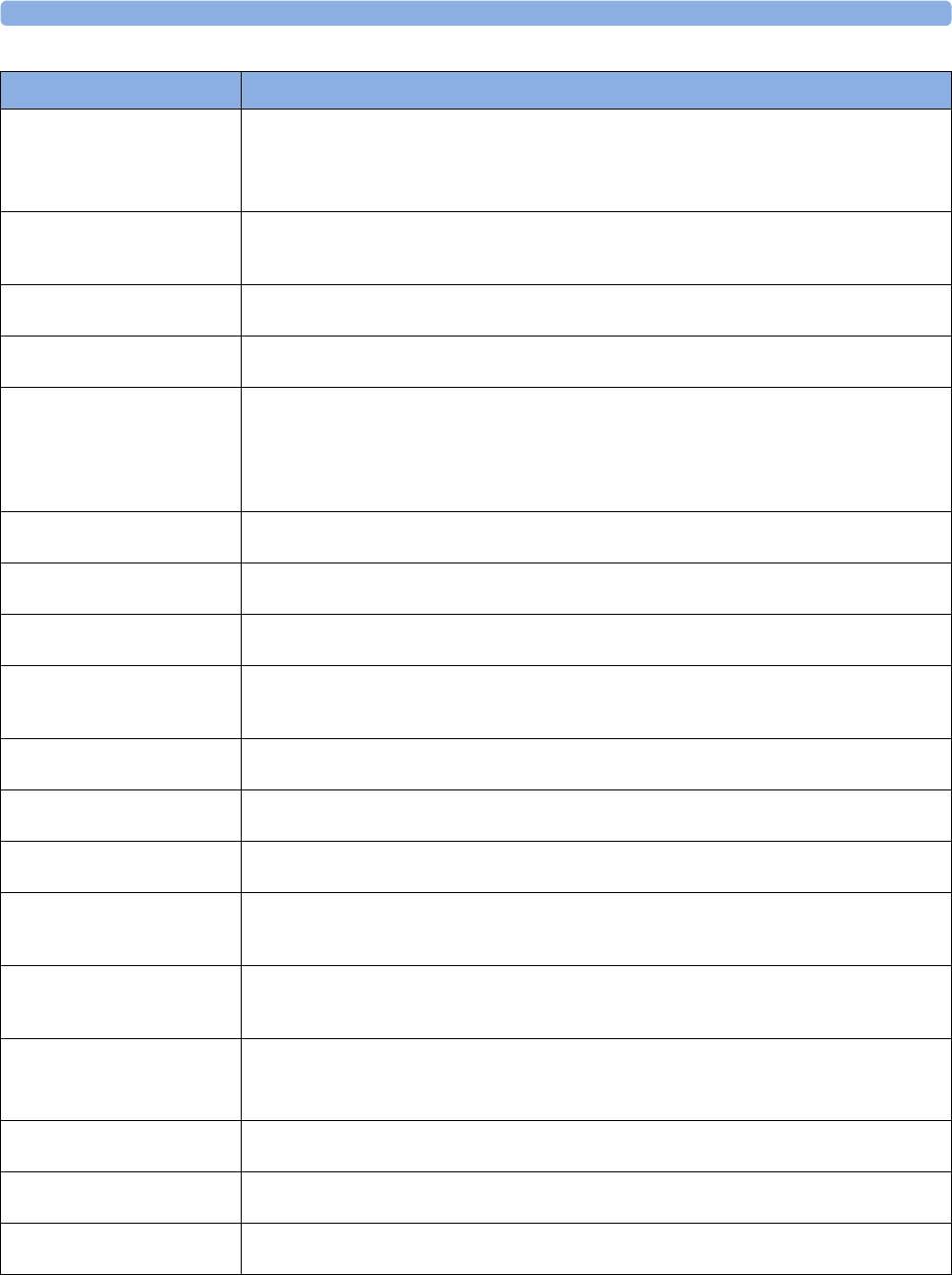
4 Patient Alarms and INOPs
82
Check Screen Res.
INOP tone
The Screen you have selected uses a resolution which is not supported by the display. The monitor will
show a generic Screen instead until you select a different Screen.
Contact your service personnel if you want the Screen deleted from the Profile(s) to avoid this in
future.
Check Settings
INOP tone
If this INOP appears, check the monitor and patient settings before you resume monitoring. If the
settings are unexpected, there may be a problem with the monitor software. Contact your service
personnel.
Check SpeedPoint
INOP tone
Perform a visual and functional check of the SpeedPoint input device. Contact your service personnel.
Check Touch Input
INOP tone
Perform a visual and functional check of the touch input device. Contact your service personnel.
Check Waves
INOP tone
The options purchased with this monitor may not support the number of waves required to show the
selected Screen, so some waves or high resolution trends are missing from the Screen. Select a
different Screen with fewer waves.
Contact your service personnel if you want the Screen deleted from the Profile(s) to avoid this in
future.
Chk ECG Sync Cable
INOP tone
The ECG Sync is detecting an invalid signal, or the ECG Sync cable is disconnected.
Chk IndepDsp Cable The monitor cannot communicate with the D80 Intelligent Display. Check the MSL coupling cable.
The end with the gray connector must be connected to the Intelligent Display.
Chk <Measurement
Label>Settings
Synchronization of the settings for the measurement cited, has failed. Check that settings are
appropriate for your patient.
Chk MSL Connection
INOP tone
Check that the MSL cable is properly connected. If this is the case, try using another MSL cable, to
check if your cable is defective. If this does not help, the device connected via the MSL cable may be
defective, contact your service personnel.
Internal.Comm.Malf
INOP tone
There is a problem with I2C Bus communication in the monitor. Contact your service personnel.
MCC Reversed
INOP tone
The MSL coupling cable is reversed. Connect the end with the gray connector to the Intelligent
Display.
MCC Unsupported
INOP tone
An MSL coupling cable has been connected to a device which does not support MSL coupling.
Meas. Deactivated An X2 or MP5 has been connected to a host monitor (companion mode) and all derived
measurements have been deactivated and/or measurements with a label conflict. The measurements
can only be reactivated by disconnecting the measurement device from the host monitor.
!!More Bed Alarms
!!!More Bed Alarms
at Information Center
The monitor is associated with a telemetry device and is sending data to the Information Center via
the telemetry device. There are currently more alarms at the bedside than can be transmitted to the
Information Center.
More INOPs
!! More INOPs
!!! More INOPs
There is more than one technical alarm of the corresponding severity active on the devices that
monitor this patient. For details check the information displayed at the Information Center.
MSL Power High The power consumption of the devices connected to the Measurement Link (MSL) cable is too high.
If this situation continues, the MSL will be switched off. Contact your service personnel.
MSL Power Off
INOP tone
The power consumption of the devices connected to the Measurement Link (MSL) cable was too high
for too long and the MSL has been switched off. Contact your service personnel.
MSL Power Overload
INOP tone
The power consumption of the devices connected to the Measurement Link (MSL) cable is much too
high or there has been a short circuit. The MSL has been switched off. Contact your service personnel.
INOP Message, Indication What to do
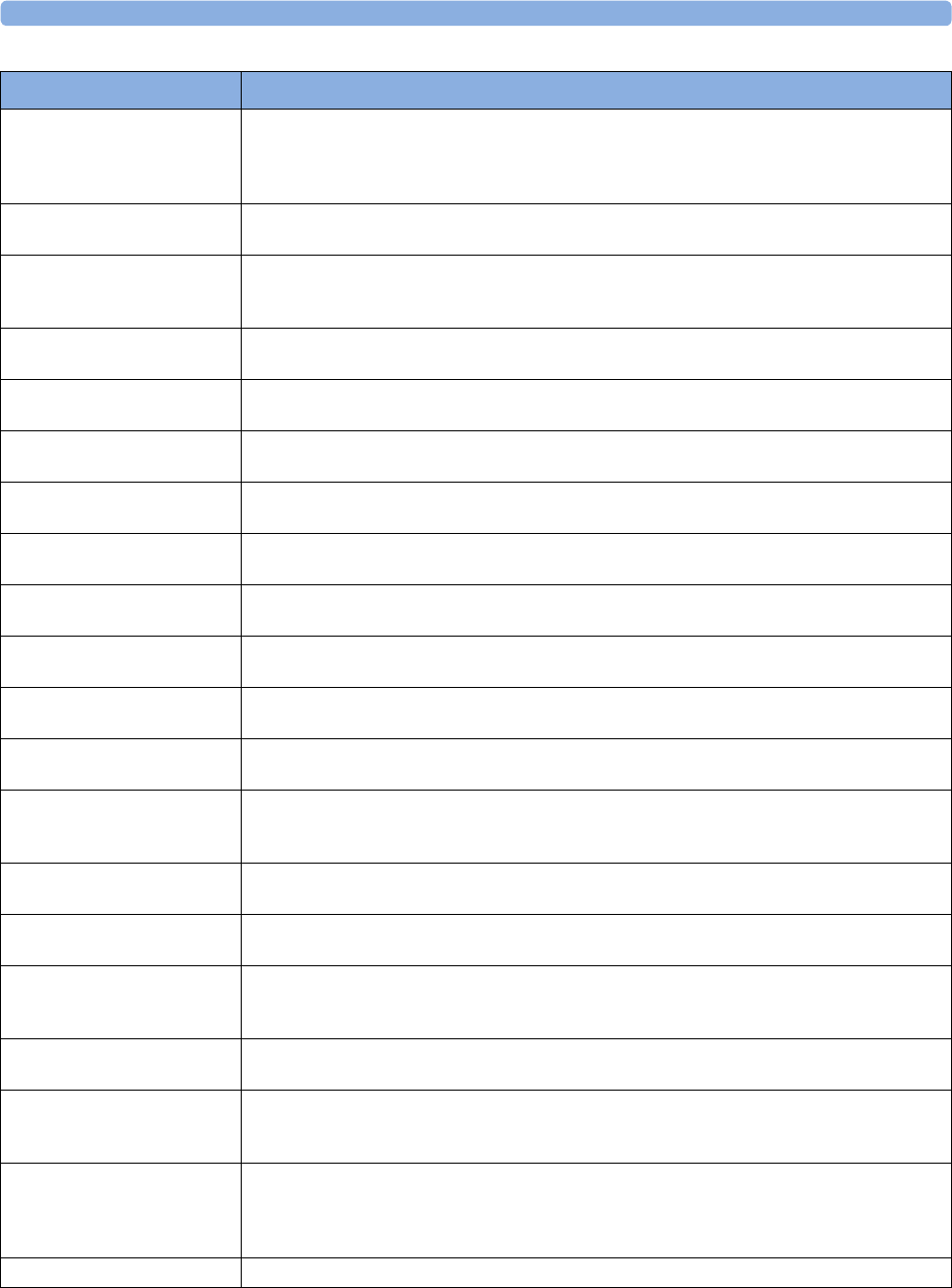
4 Patient Alarms and INOPs
83
No Central Monit.
INOP tone
There is a problem with the communication to the network. Central monitoring is currently not
possible (no patient alarms or information). Check the connection. In case the connection is via a
telemetry device, the current telemetry use model does not support central monitoring. Contact your
service personnel.
No ECG at Central The ECG measured with the monitor ECG is not being sent to the Information Center via the
telemetry device.
OtherMon INOP
!! OtherMon INOP
!!! OtherMon INOP
Another monitor assigned to the patient (e.g. a transport monitor) is in an INOP condition. Check the
detailed INOP information at the Information Center and resolve the INOP condition(s) at the other
monitor.
Rem.AlarmDev.Malf.
INOP tone
There is a problem with the connection to the remote alert device. Contact your service personnel to
check the remote alert device and its connections.
Settings Malfunct
INOP tone
The monitor cannot use the predefined settings for monitoring. Contact your service personnel.
Speaker Malfunct
INOP tone
Contact your service personnel to check the speaker and the connection to the speaker.
SRR Incompatible
INOP tone
The short range radio component has compatibility problems. Contact your service personnel.
SRR Interference
INOP tone
The short range radio connection has interference from another device. Try using another channel.
SRR Invalid Chan
INOP tone
The channel configuration of the Short Range Radio is invalid. Check channel and channel mask
configuration.
SRR Malfunction
INOP tone
Malfunction in the short range radio device. If the INOP persists contact your service personnel.
TAAP Disabled
INOP tone
The currently selected telemetry configuration on the monitor does not allow connection of telemetry
devices to the monitor.
Tele Config Unsupp
INOP tone
Telemetry Workflow configuration not supported. Check revision and configuration of monitor and
central.
Tele ECG Malfunct.
Numeric is displayed with a -?-
INOP tone
Contact your service personnel.
The ECG in the Telemetry device is faulty.
Tele Equip Malf
INOP tone
The telemetry device has a malfunction. Disconnect and reconnect the telemetry device. If the INOP
reappears, replace the telemetry device.
Tele Incompatible SRR-enabled telemetry device is not supported by this central software revision. Please check
configuration.
Tele INOP
!! Tele INOP
!!! Tele INOP
A telemetry device assigned to the patient is in an INOP condition. Check the detailed INOP
information at the Information Center and resolve the INOP condition(s) at the telemetry device.
Tele Unsupported
INOP tone
This telemetry device is not supported for direct connection to the monitor.
TimeExpired:<Timer
Label>
INOP tone
The time has expired for the timer indicated in the INOP text. Clearing the timer clears the INOP.
T-Mon INOP
!! T-Mon INOP
!!! T-Mon INOP
INOP tone
A transport monitor assigned to the patient is in an INOP condition. Check the detailed INOP
information at the Information Center and resolve the INOP condition(s) at the transport monitor.
TransportEquipment The equipment is ready for transport. See the Equipment window for details.
INOP Message, Indication What to do

4 Patient Alarms and INOPs
84
Battery INOPs
Unsupported LAN
INOP tone
There is a problem with the communication to the network and central monitoring is currently not
possible. Check the connection. If the INOP persists, switch off the monitor and contact your service
personnel.
User I/F Malfunct
INOP tone
Perform a visual and functional check of all the monitor input devices. Contact your service personnel.
INOP Message, Indication What to do
INOP Message, Indication What to do
Batt 1 Missing
Batt 2 Missing
INOP tone
During this INOP, alarms cannot
be paused or switched off.
The monitor requires two batteries but can detect only one battery. Insert the missing battery
immediately.
Batt Empty
!!Batt Empty
!!!Batt Empty
INOP tone, battery LED flashes
During this INOP, alarms cannot
be paused or switched off.
The estimated remaining battery-powered operating time is less than 10 minutes. Replace the battery
immediately.
If the condition persists and the monitor is not connected to mains power, this INOP is re-issued two
minutes after you acknowledge it.
Batt Extensn Malf
INOP tone
There is a hardware error in the Battery Extension. Contact your service personnel.
Batt Incompat
INOP tone
The battery cannot be used with this monitor. Replace with the correct battery as specified in this
book.
Batt Low
INOP tone
The estimated battery-powered operating time remaining is less than 20 minutes.
Batt Malfunction
INOP tone, battery LED flashes
During this INOP, alarms cannot
be paused or switched off unless
the monitor is connected to
mains power.
The monitor cannot determine the battery status. If this INOP persists, replace the faulty battery. If
the condition persists and the monitor is not connected to mains power, this INOP is re-issued two
minutes after you acknowledge it.
Place the battery in a different monitor or in a battery charger. If the same INOP is shown, contact
your service personnel.
Batteries Empty
!!Batteries Empty
!!!Batteries Empty
Batt 1 Empty
!!Batt 1 Empty
!!!Batt 1 Empty
Batt 2 Empty
!!Batt 2 Empty
!!!Batt 2 Empty
INOP tone, battery LED flashes
During this INOP, alarms cannot
be paused or switched off.
The estimated remaining battery-powered operating time of the indicated battery or batteries is less
than 10 minutes. Replace the batteries immediately.
If the condition persists and the monitor is not connected to mains power, this INOP is re-issued two
minutes after you acknowledge it.
Batteries Incompat
Batt 1 Incompat
Batt 2 Incompat
INOP tone
The indicated battery or batteries cannot be used with this monitor. Replace with the correct battery or
batteries as specified in this book.
Batteries Low
Batt 1 Low
Batt 2 Low
INOP tone
The estimated battery-powered operating time remaining is less than 20 minutes.
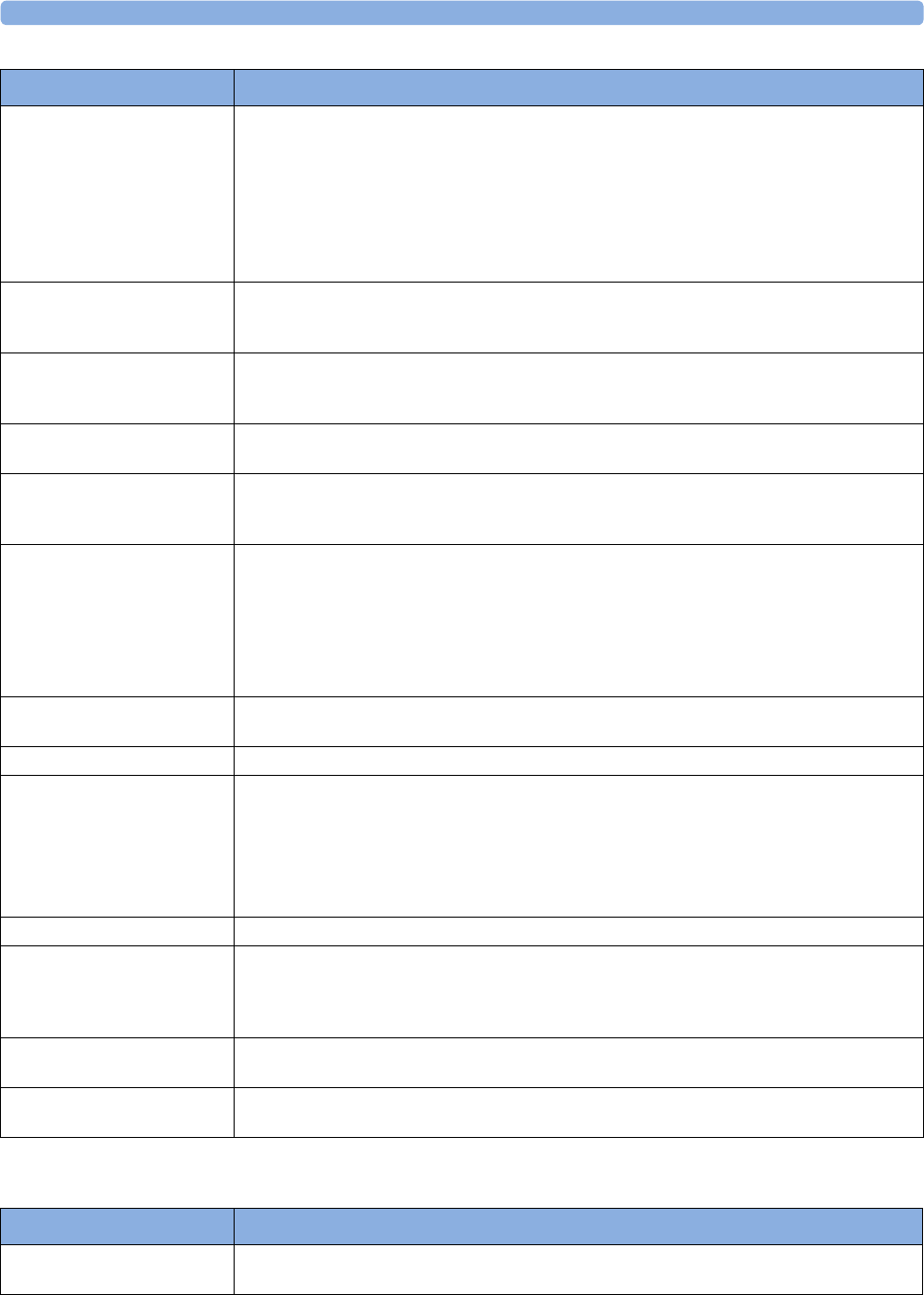
4 Patient Alarms and INOPs
85
MMS, MMS Extensions and FMS INOPs
Batteries Malfunct
Batt 1 Malfunction
Batt 2 Malfunction
INOP tone, battery LED flashes
During this INOP, alarms cannot
be paused or switched off unless
the monitor is connected to
mains power.
The monitor cannot determine the battery status. If this INOP persists, replace the faulty battery or
batteries. If the condition persists and the monitor is not connected to mains power, this INOP is re-
issued two minutes after you acknowledge it.
Place the batteries in a different monitor or in a battery charger. If the same INOP is shown, contact
your service personnel.
Charge Batt 1 now
Charge Batt 2 now
INOP tone
Battery must be charged. Connect the monitor to mains power or exchange the battery.
Charger Malfunct
INOP tone, battery LED may
flash
There is a problem with the battery charger in the monitor. Connect the monitor to mains power and
contact your service personnel.
Check Batt Temp
INOP tone
The temperature of one or both batteries is too high. Check that ventilation openings (if applicable)
are not blocked and monitor is not exposed to heat.
Chk MSL Connection Check the MSL connection between X2/MP2 and the battery extension for damage or loose
connections. Check also if a second X1 or X2 has been connected accidentally (e.g. in companion
mode).
ExtBat Empty
!!ExtBat Empty
!!!ExtBat Empty
INOP tone, battery LED flashes
During this INOP, alarms cannot
be paused or switched off.
The estimated battery-powered operating remaining time is less than 10 minutes. Replace the battery in
the battery extension immediately.
If the condition persists and the monitor is not connected to mains power, this INOP is re-issued two
minutes after you acknowledge it.
ExtBat Incompat The battery in the battery extension cannot be used. Replace with the correct battery as specified in
this book.
ExtBat Low The estimated battery-powered operating time remaining is less than 20 minutes.
ExtBat Malfunction
INOP tone, battery LED flashes
During this INOP, alarms cannot
be paused or switched off unless
the monitor is connected to
mains power.
The monitor cannot determine the status of the battery in the battery extension. If this INOP persists,
replace the faulty battery in the battery extension. If the condition persists and the monitor is not
connected to mains power or a host monitor, this INOP is re-issued two minutes after you
acknowledge it.
ExtBat Missing There is no battery in the Battery Extension
!! Insert Battery
Severe yellow INOP tone
During this INOP, alarms cannot
be paused or switched off.
X2/MP2 only: There is no battery in the battery compartment. You cannot operate the monitor on
AC mains or battery extension while the battery compartment is open (not sealed with a battery). Load
a battery immediately.
MSL Power High The power consumption of the devices connected to the Battery Extension is too high. If this
situation continues, the Battery Extension will be switched off. Contact your service personnel.
MSL Power Off The power consumption of the devices connected to the Battery Extension was too high for too long.
The Battery Extension has been switched off. Contact your service personnel.
INOP Message, Indication What to do
INOP Message, Indication What to do
FMS Unplugged
INOP tone
Make sure that the Flexible Module Rack is connected to the monitor. All FMS measurements are off
while the FMS is unplugged.
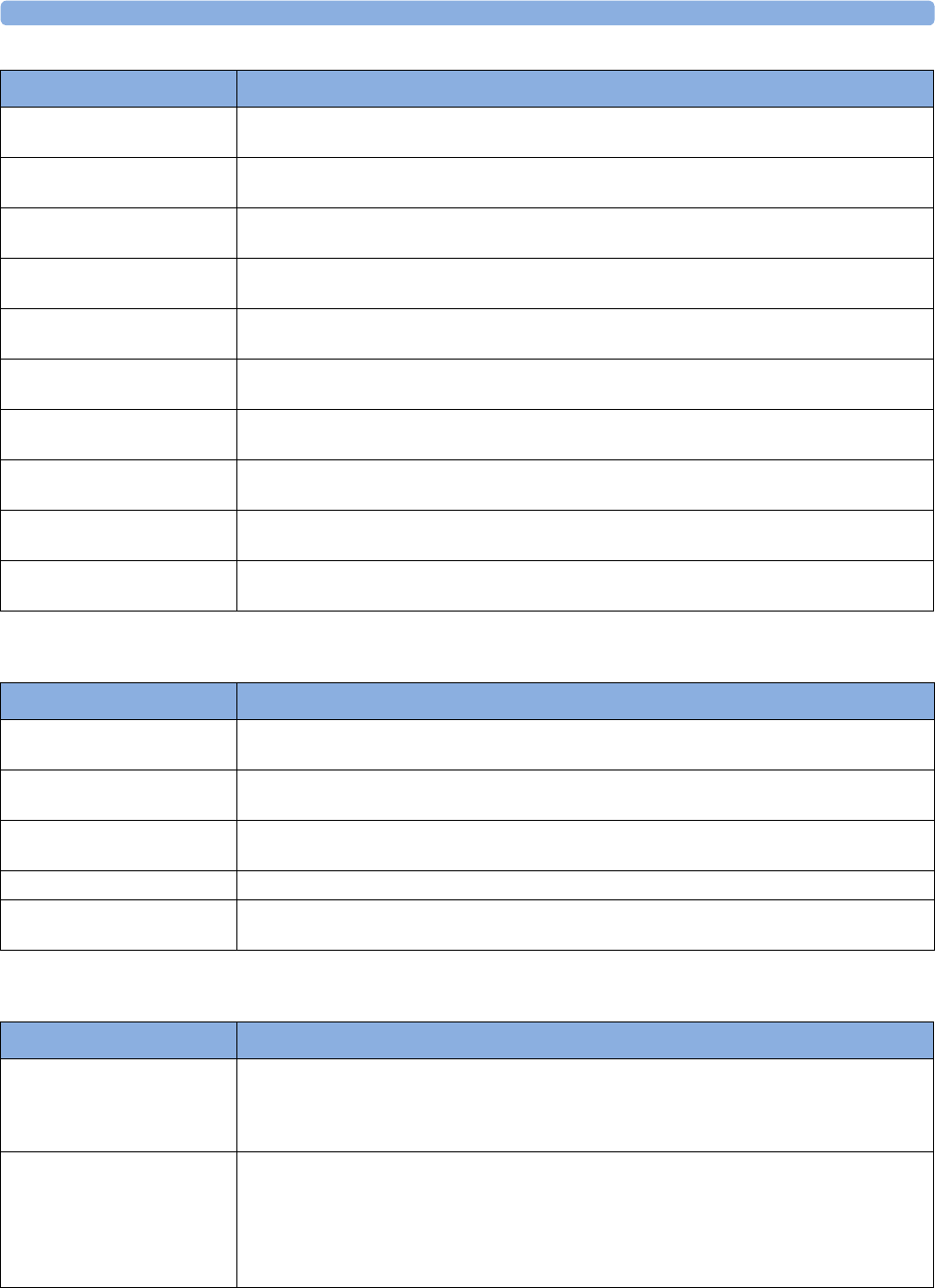
4 Patient Alarms and INOPs
86
Display INOPs
ECG, Arrhythmia, QT and ST INOPs
FMS Unsupported
INOP tone
The Flexible Module Rack is not supported by your monitor. Contact your service personnel.
MMS Ext. Unplugged
INOP tone
The MMS extension has been disconnected from the Multi-Measurement Module.
MMS Ext. Unpowered
INOP tone
The MMS extension cannot operate while the Multi-Measurement Module is running on battery
power.
MMS Ext. Unsupp
INOP tone
The MMS extensions not supported by your monitor. Contact your service personnel.
MMS Ext.Equip Malf
INOP tone
Loss of communication between the Multi-Measurement Module and the MMS extension. Contact
your service personnel.
MMS Unplugged
INOP tone
Make sure that the Multi-Measurement Module is connected to the monitor. All MMS measurements
are off while the MMS is unplugged.
MMS Unsupported
INOP tone
The Multi-measurement Module is not supported by your monitor. Contact your service personnel.
MMS/FMS Unsupportd
INOP tone
The Multi-Measurement module is not supported by the monitor. Contact your service personnel.
No PPV from FMS The measurement device does not supply a beat-to-beat arterial pressure value. Contact your service
personnel.
No PPV from MMS The measurement device does not supply a beat-to-beat arterial pressure value. Contact your service
personnel.
INOP Message, Indication What to do
INOP Message, Indication What to do
Indep.Dsp Malfunc. There is a problem with the Independent Display. Check the MSL coupling cable then contact your
service personnel.
Indep.Dsp NotSupp. The monitor does not support a second main display. The monitor software is incompatible. Contact
your service personnel.
Intell.Dsp Malf. There is a problem with the Intelligent Display. Check the MSL coupling cable then contact your
service personnel.
Intell.Dsp Missing The monitor has lost contact with the connected Intelligent Display. Contact your service personnel.
Intell.Dsp Unsupp. The monitor does not support the connected Intelligent Display. The monitor software is
incompatible.
INOP Message, Indication What to do
C Lead Off
HR Numeric is replaced
by -?- for 10 seconds.
INOP tone
The C electrode (AAMI: V electrode) has become detached from the patient or the lead set has been
changed. Reattach the electrode or select New Lead Setup in the Setup ECG menu to confirm the
new lead set.
Cannot Analyze ECG The arrhythmia algorithm cannot reliably analyze the ECG data. Check the ECG signal quality of the
selected primary and secondary leads. If necessary, improve lead position or reduce patient motion.
If you have arrhythmia analysis on, and you are not getting a reliable HR because the signal is below a
minimum amplitude, unstable, or contains artifact, and you have tried to improve the system
performance by choosing another lead and changing electrodes, you should consider turning
arrhythmia analysis off.
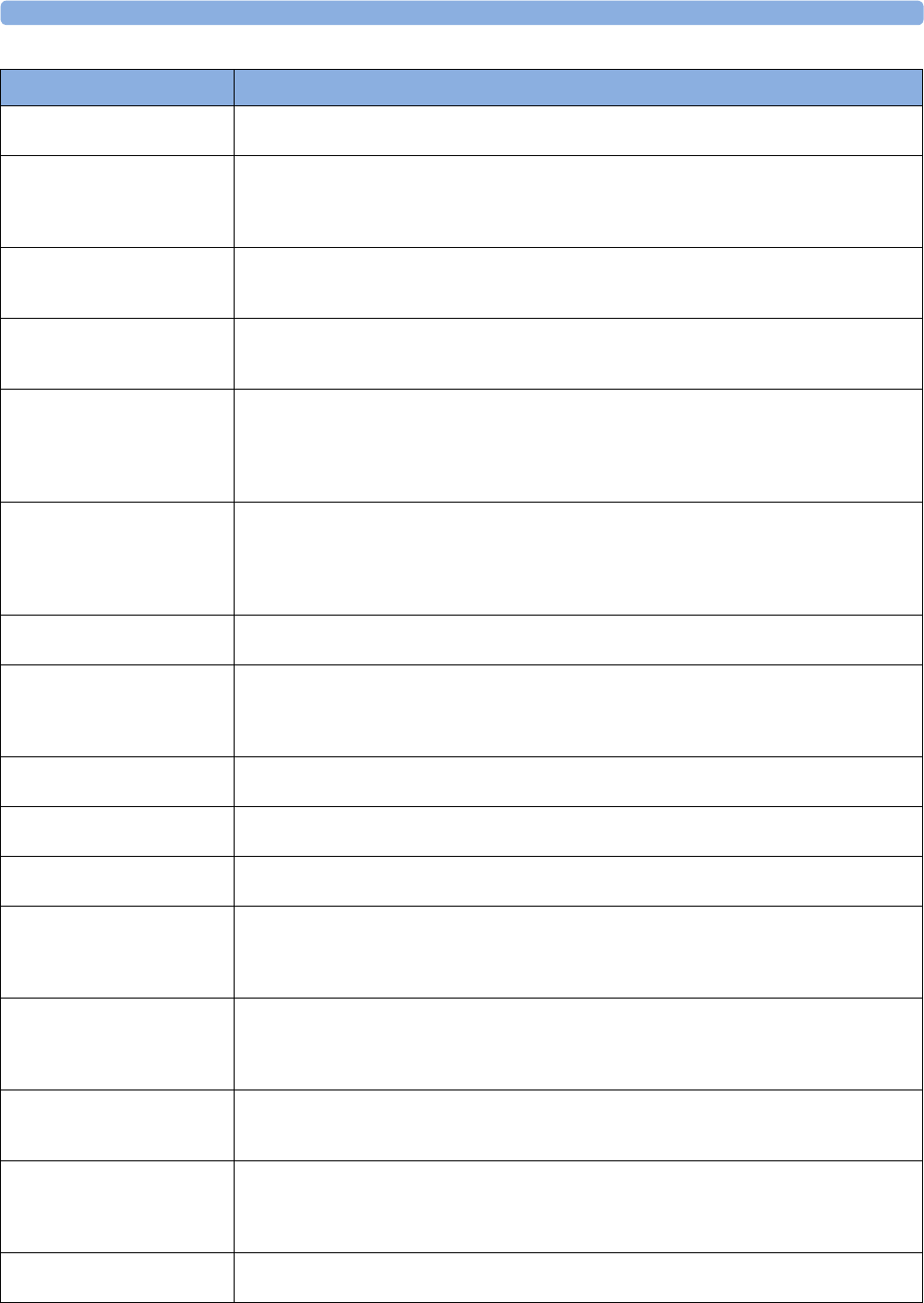
4 Patient Alarms and INOPs
87
Cannot Analyze QT The QT algorithm cannot generate a valid QT value for more than 10 minutes, or 1 minute in the
initial phase.
Cannot Analyze ST The ST algorithm cannot generate a valid ST value. Possible causes are large variations in the measured
ST values for consecutive beats, or ventricular paced beats. Review the ECG signal quality and the ST
measurement points.
If the patient has a ventricular pacemaker, ST analysis is not possible.
Cannot Analyze STE The STE algorithm cannot generate valid ST elevation values. Possible causes are large variations in
the measured ST values for consecutive beats, or ventricular paced beats. Review the ECG signal
quality and the ST measurement points.
ECG Equip Malf
Numeric is replaced by -?-
INOP tone
Contact your service personnel.
The ECG hardware is faulty.
<ECG Lead> Lead Off
!! <ECG Lead> Lead Off
!!! <ECG Lead> Lead Off
Numeric is replaced by -?-
INOP tone
Not all the required leads for ECG monitoring are connected. Check the ECG connections and make
sure that the electrode indicated by <ECG lead> [RA, LA, LL, RL, V or C] electrodes is attached. In
EASI mode, all 5 electrodes must be connected.
ECG Leads Off
!! ECG Leads Off
!!!ECG Leads Off
Numeric is replaced by -?-
INOP tone
Check that all of the required ECG leads are attached, and that none of the electrodes have been
displaced. The INOP may also be caused by a saturated or overloaded ECG amplifier.
ECG Noisy Elec <ECG
Lead>
The ECG signal from the named ECG electrodes [RA, LA, LL, RL, V (or C)] is noisy. Check the ECG
connections and make sure that the electrode indicated is attached.
ECG Noisy Signal
INOP tone
The ECG signal is too noisy. Check that the electrodes are properly placed and have not dried out.
Remove any possible sources of signal noise (such as power cords) from the area around the cable and
the patient.
The ECG signal may be saturated or overloaded.
ECG Out Equip Malf
INOP tone
There is a problem with the device connected to the ECG Out connector. Contact your service
personnel.
!!ECG/Ar AlarmsOff All ECG alarms have been switched off, or the HR alarm source is not ECG. To resume ECG alarm
generation, switch ECG alarms on or select ECG as the alarm source.
ECG/Arrh AlarmsOff
!!ECG/Ar AlarmsOff
All ECG alarms have been switched off, or the HR alarm source is not ECG. To resume ECG alarm
generation, switch ECG alarms on or select ECG as the alarm source.
LA Lead Off
Numeric is replaced by -?- for
10 seconds.
INOP tone
The LA electrode has become detached from the patient or the lead set has been changed. Reattach
the electrode or select New Lead Setup in the Setup ECG menu to confirm the new lead set.
LL Lead Off
Numeric is replaced by -?- for
10 seconds.
INOP tone
The LL electrode has become detached from the patient or the lead set has been changed. Reattach the
electrode or select New Lead Setup in the Setup ECG menu to confirm the new lead set.
RA Lead Off
Numeric is replaced by -?-
INOP tone
The RA electrode has become detached from the patient or the lead set has been changed. Reattach
the electrode or select New Lead Setup in the Setup ECG menu to confirm the new lead set.
RL Lead Off
Numeric is replaced by -?- for
10 seconds.
INOP tone
The RL electrode has become detached from the patient or the lead set has been changed. Reattach
the electrode or select New Lead Setup in the Setup ECG menu to confirm the new lead set.
Some ECG AlarmsOff This message appears (if configured to do so) when the on/off settings of the yellow arrhythmia
alarms differ from the current Profile.
INOP Message, Indication What to do
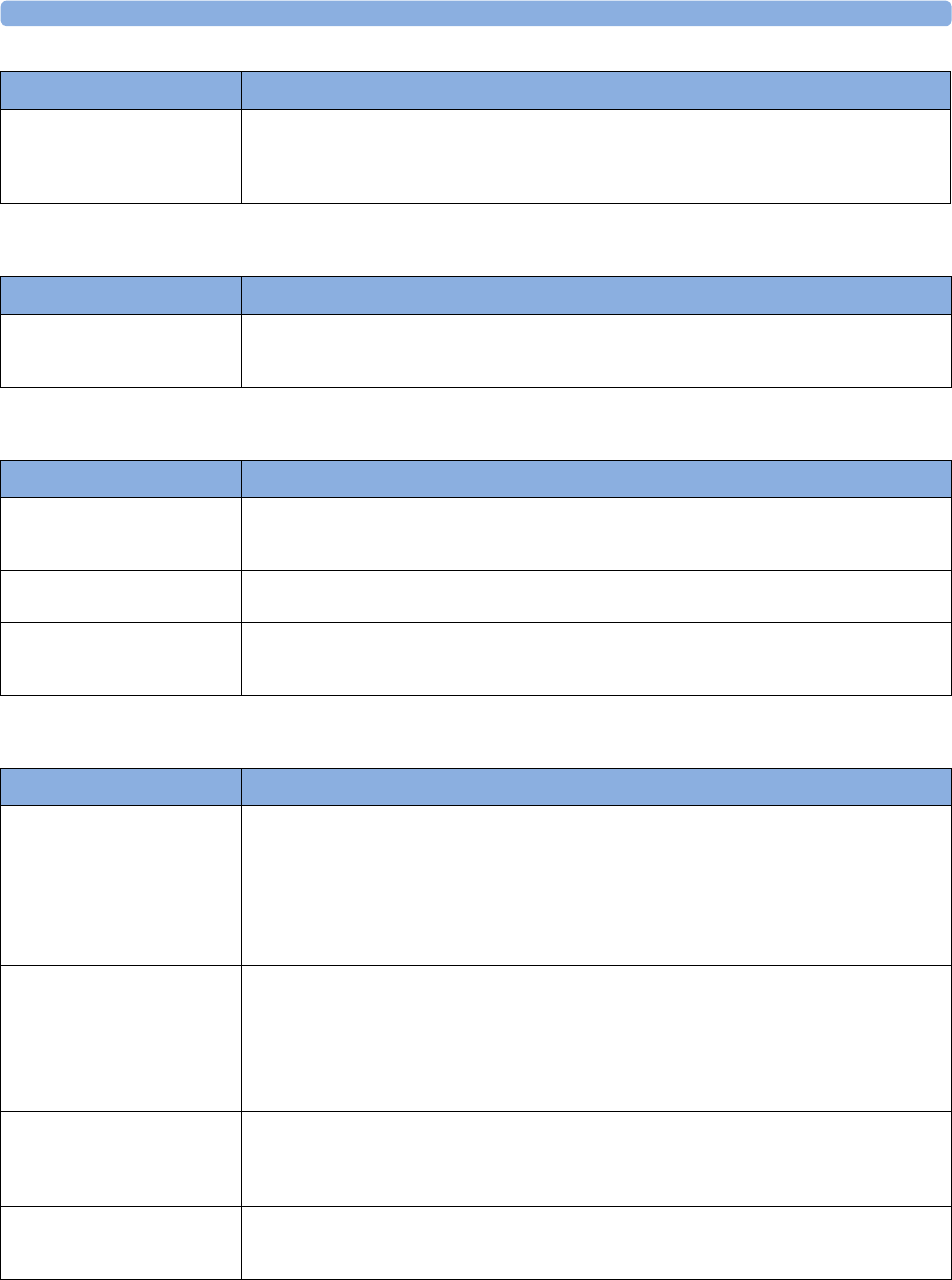
4 Patient Alarms and INOPs
88
Pulse INOPs
Resp INOPs
NBP INOPs
V Lead Off
Numeric is replaced by -?- for
10 seconds.
INOP tone
The V electrode (IEC: C electrode) has become detached from the patient or the lead set has been
changed. Reattach the electrode or select New Lead Setup in the Setup ECG menu to confirm the
new lead set.
INOP Message, Indication What to do
INOP Message, Indication What to do
Pulse Not Alarming
Numeric is replaced by -?-
INOP tone
Pulse has no alarming because the system pulse is measured by an external device. Select another pulse
source to enable pulse alarming.
INOP Message, Indication What to do
Resp Equip Malf
Numeric is replaced by -?-
INOP tone
Contact your service personnel. The RESP hardware is faulty.
Resp Erratic
Numeric is replaced by -?-
The monitor has detected too many artifacts in the measured Resp signal. Check that the RA and LL
electrodes are correctly attached and have not dried out.
Resp Leads Off
Numeric is replaced by -?-
INOP tone
Not all the required leads for Resp monitoring are attached. Make sure that the RA and LL leads are
attached.
INOP Message, Indication What to do
!! Cuff Not Deflat
!!!Cuff Not Deflat
Numeric is displayed with a -?-
Severe yellow/red INOP tone
During this INOP, alarms cannot
be paused or switched off.
Remove the cuff from the patient. Make sure that the tubing is not kinked or twisted and that the
correct patient category is selected. Try repeating the measurement.
You can silence the INOP, but the INOP message remains visible until the next NBP measurement is
started or the Stop All SmartKey is selected.
[Adult or pediatric patients: The NBP cuff pressure has exceeded 15 mmHg (2 kPa) for more than
3minutes.
Neonatal patients: The NBP cuff pressure has exceeded 5 mmHg (0.7 kPa) for more than 90 seconds.]
!! Cuff Overpress
!!!Cuff Overpress
Numeric displayed with a -?-
Severe yellow/red INOP tone
During this INOP, alarms cannot
be paused or switched off.
The NBP cuff pressure exceeds the overpressure safety limits. Remove the cuff from the patient. Make
sure that the tubing is not kinked or twisted and that the correct patient category is selected. Try
restarting the measurement.
You can silence this INOP, but the INOP message remains visible until the next measurement is
started or the Stop All SmartKey is selected.
NBP Deactivated
INOP tone
The NBP measurement label in the measurement device has been deactivated by deactivating the label
in the Measurement Selection window. The measurement automatically disappears from the
display. To switch the measurement on again, reactivate the measurement label in the Measurement
Selection window.
NBP Equip Malf
Numeric is replaced by -?-
INOP tone
Remove the cuff from the patient. The NBP hardware is faulty. Contact your service personnel.
You can silence this INOP, but the INOP message remains visible until the next measurement is
started or the Stop All SmartKey is selected.
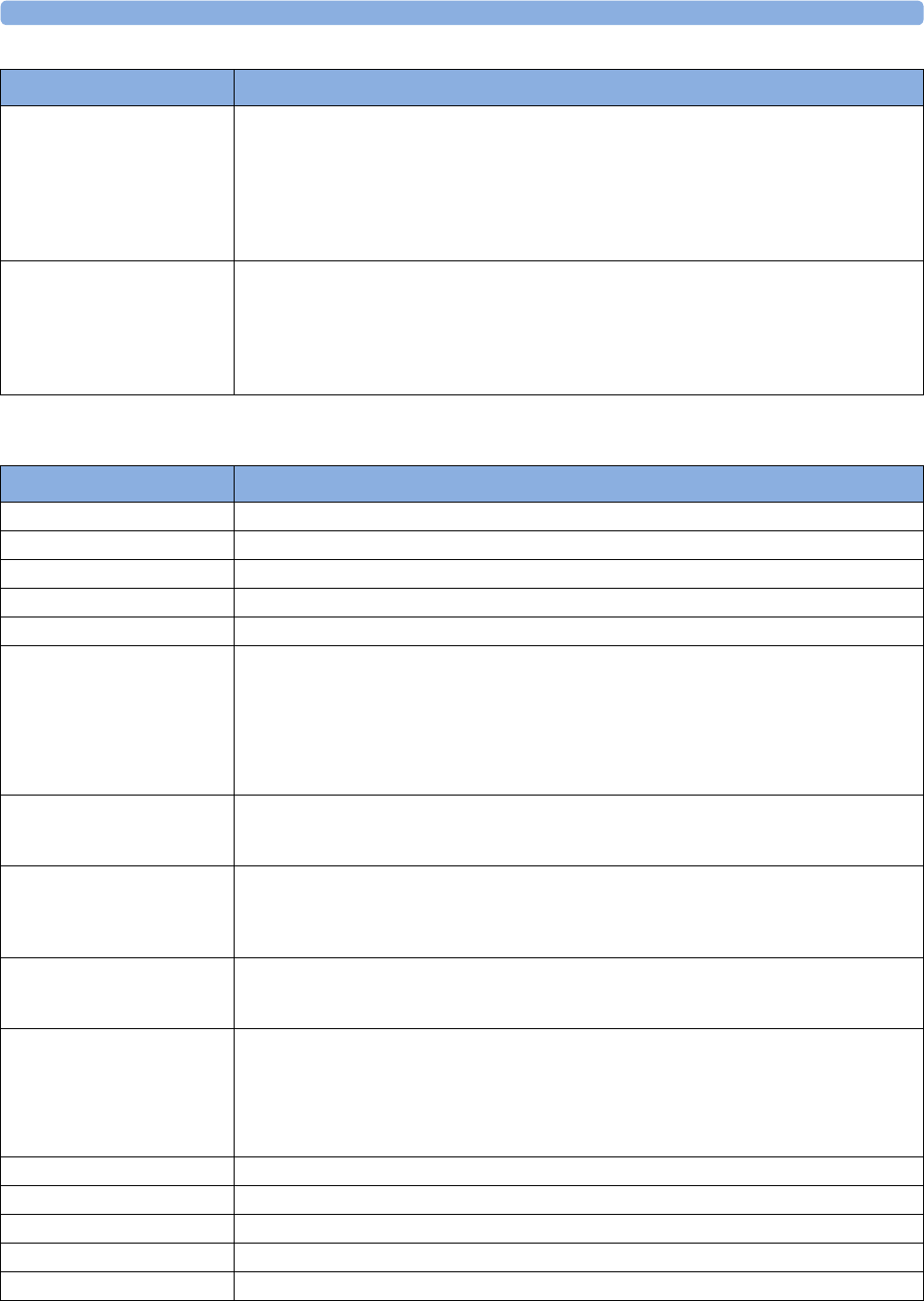
4 Patient Alarms and INOPs
89
Temperature INOPs
NBP Interrupted
Numeric is replaced by -?-
INOP tone
Check the tubing and cuff for leakages or kinks. Check that you are using the correct cuff size and
placement, and that the correct patient category is selected. Try restarting the measurement.
If the INOP occurs repeatedly, contact your service personnel.
You can silence this INOP, but the INOP message remains visible until the next measurement is
started or the Stop All SmartKey is selected.
This INOP arises when the measurement needed longer than the maximum time for inflation,
deflation or the total measurement.
NBP Measure Failed
Numeric may be displayed with
a-?-
INOP tone
Check that you are using the correct cuff size and placement, and that the correct patient category is
selected. Try restarting the measurement.
You can silence this INOP, but the INOP message remains visible until the next measurement is
started or the Stop All SmartKey is selected.
Check the condition and suitability of the patient for NBP monitoring. Use another cuff to continue
measuring.
INOP Message, Indication What to do
INOP Message, Indication What to do
T1, T2, T3, T4 INOPs See <Temp Label> INOPs
Tamb INOPs See <Temp Label> INOPs
Tart INOPs See <Temp Label> INOPs
Tcereb INOPs See <Temp Label> INOPs
Tcore INOPs See <Temp Label> INOPs
<Temp Label>
Deactivated
INOP tone
A Temp measurement label in the measurement device has been deactivated, either by connecting a
Pressure transducer in the shared Press/Temp socket, or by deactivating the label in the
Measurement Selection window.
The measurement automatically disappears from the display.
To switch the measurement on again, either reconnect a Temp transducer or reactivate the
measurement label in the Measurement Selection window.
<Temp Label> Equip Malf
Numeric is replaced by -?-
INOP tone
Contact your service personnel.
The temperature hardware is faulty.
<Temp
Label>NoTransducer
Numeric is replaced by -?-
INOP tone
Make sure the TEMP probe is connected to the MMS or module.
If you silence this INOP, the measurement will be switched off.
<Temp Label> Overrange
Numeric is replaced by -?-
INOP tone
Try changing the application site of the transducer.
[The temperature is less than -1°C, or greater than 45°C.]
<Temp Label> Unplugged
INOP tone
A Temp measurement label has been deactivated, either by unplugging a module, or by deactivating
the label in the Measurement Selection window.
The measurement automatically disappears from the display.
To switch the measurement on again, either replug the module or reactivate the measurement label in
the Measurement Selection window.
Tesoph INOPs See <Temp Label> INOPs
Tnaso INOPs See <Temp Label> INOPs
Trect INOPs See <Temp Label> INOPs
Tskin INOPs See <Temp Label> INOPs
Ttymp INOPs See <Temp Label> INOPs
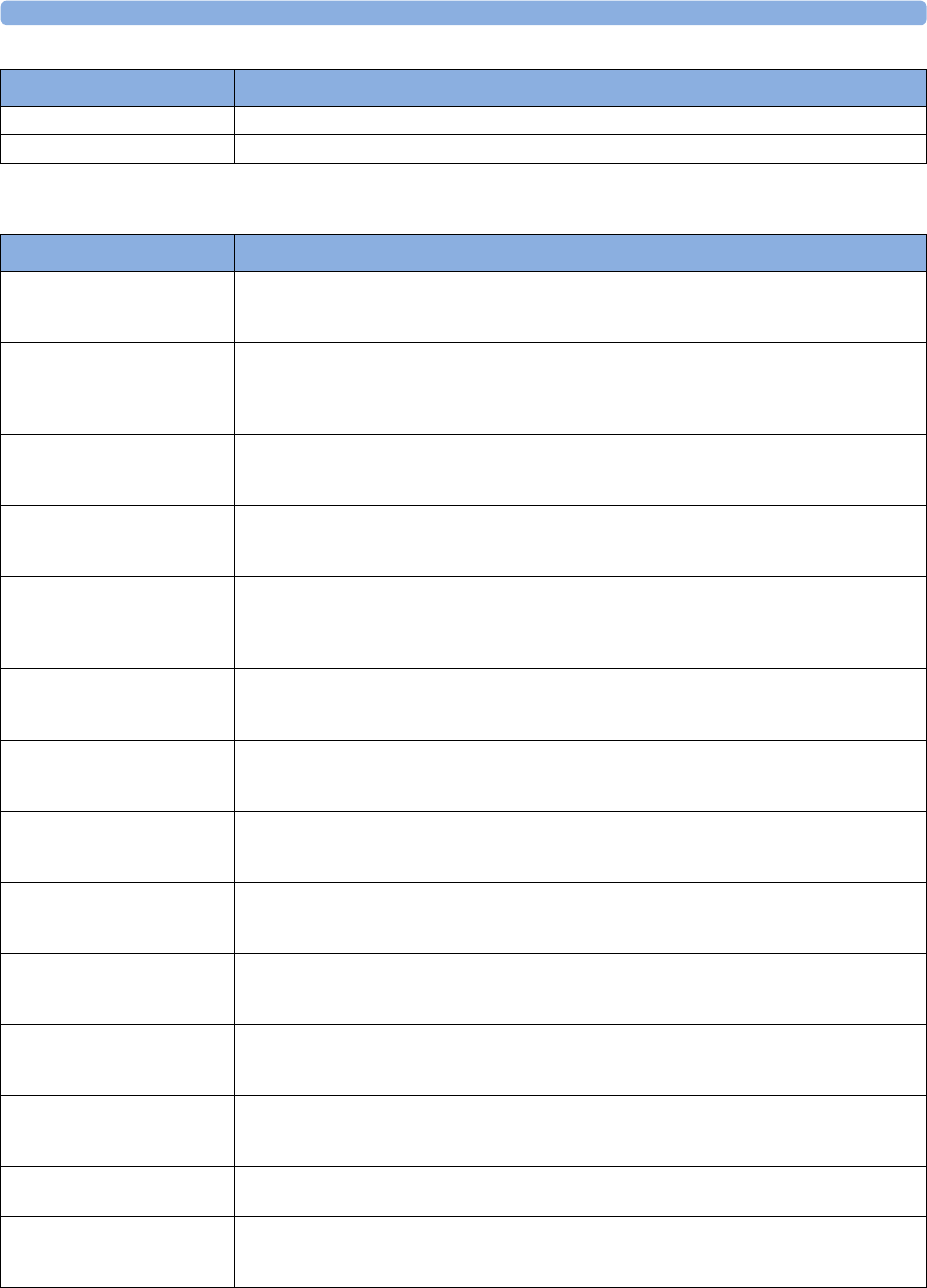
4 Patient Alarms and INOPs
90
SpO2 INOPs
Tven INOPs See <Temp Label> INOPs
Tvesic INOPs See <Temp Label> INOPs
INOP Message, Indication What to do
INOP Message, Indication What to do
<SpO₂ Label> Chk Sensor The condition of the signal at the SpO2 sensor is not as expected. Accuracy may be compromised.
Check proper application of the sensor in accordance with the Instructions for Use. If the INOP
persists, consider exchanging the sensor.
<SpO₂ Label> Deactivated
INOP tone
The SpO2 measurement label in the measurement device has been deactivated by deactivating the label
in the Measurement Selection window. The measurement automatically disappears from the
display. To switch the measurement on again, reactivate the measurement label in the Measurement
Selection window.
<SpO₂ Label> Equip Malf
Numeric is replaced by -?-
INOP tone
The MMS or module is faulty. Unplug and replug the MMS or module. If the INOP persists, contact
your service personnel.
<SpO₂ Label> Erratic
Numeric is replaced by -?-
INOP tone
Check the sensor placement. Try another adapter cable and sensor. If the INOP persists, contact your
service personnel.
<SpO₂ Label>
Extd.Update
Numeric is replaced by -?-
(questionable numeric)
The update period of displayed values is extended due to an NBP measurement on the same limb or
an excessively noisy signal.
<SpO₂ Label>Interference
Numeric is replaced by -?-
INOP tone
There is too much interference, caused by a high level of ambient light and/or electrical interference.
Cover the sensor to minimize ambient light. If the INOP persists, make sure that the sensor cable is
not damaged or positioned too close to power cables.
<SpO₂ Label> Low Perf
Numeric is replaced by -?-
(questionable numeric)
Accuracy may be compromised due to very low perfusion. Stimulate circulation at sensor site. If INOP
persists, change the measurement site.
<SpO₂ Label> No Pulse
Numeric is replaced by -?-
INOP tone
Check the perfusion at measurement site. If necessary, stimulate circulation or change measurement
site. If the INOP is due to NBP measurement on the same limb, wait until the NBP measurement is
finished.
<SpO₂ Label> No Sensor
Numeric is replaced by -?-
INOP tone
Make sure the SpO2 sensor is connected. If the INOP persists, try another adapter cable and sensor. If
you silence this INOP, the measurement will be switched off.
<SpO₂ Label> NoisySignal
Numeric is replaced by -?-
INOP tone
Excessive patient movement or electrical interference is causing irregular pulse patterns. Try to reduce
patient movement or to relieve the cable strain on the sensor.
<SpO₂ Label> Poor Signal
Numeric is replaced by -?-
(questionable numeric)
The signal condition of the SpO2 measurement is poor and measurement accuracy may be
compromised. If the INOP persists, consider changing the application site or using another sensor.
<SpO₂ Label> Pulse?
Numeric is replaced by -?-
INOP tone
The detectable pulsations of the SpO2 signal are outside the specified pulse rate range.
<SpO₂ Label> Searching
Numeric unavailable
SpO2 is analyzing the patient signal to derive Pulse, SpO2 and Perf values. Please wait until the search
analysis is complete.
<SpO₂ Label> Sensor Malf
Numeric is replaced by -?-
INOP tone
The SpO2 sensor or adapter cable is faulty. Try another adapter cable and sensor. If the INOP persists,
contact your service personnel.
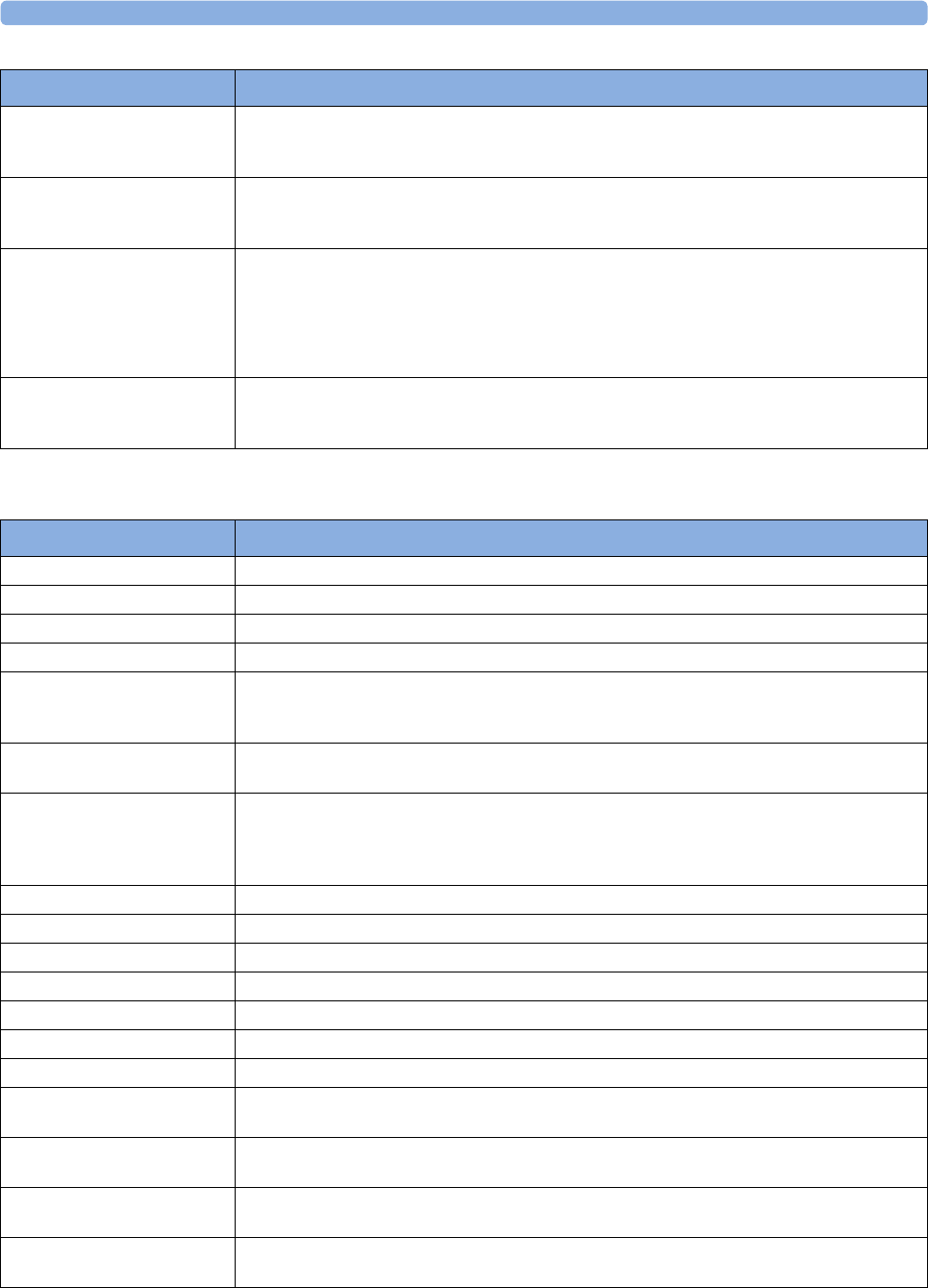
4 Patient Alarms and INOPs
91
Pressure INOPs
<SpO₂ Label> Sensor Off
Numeric is replaced by -?-
INOP tone
The SpO2 sensor is not properly applied to the patient. Apply the sensor following the instructions
supplied by the manufacturer.
<SpO₂ Label>
Unkn.Sensor
Numeric is replaced by -?-
The connected sensor or adapter cable is not supported by the SpO2 measurement. Use only specified
sensors and cables.
<SpO₂ Label> Unplugged
Numeric is replaced by -?-
INOP tone
An SpO2 measurement label has been deactivated, either by unplugging a module, or by deactivating
the label in the Measurement Selection window.
The measurement automatically disappears from the display.
To switch the measurement on again, either replug the module or reactivate the measurement label in
the Measurement Selection window.
<SpO₂ Label> Upgrade
Numeric is replaced by -?-
Numeric is unavailable
The SpO2 measurement is currently in upgrade mode. Monitoring is not possible in this mode.
INOP Message, Indication What to do
INOP Message, Indication What to do
ABP INOPs See <Press Label> INOPs
Ao INOPs See <Press Label> INOPs
ART INOPs See <Press Label> INOPs
BAP INOPs See <Press Label> INOPs
CPP Chk Sources
Numeric is replaced by -?-
INOP tone
Not all measurements or values required to perform the calculation are available. Check the
measurement sources.
CPP Chk Units
Numeric is replaced by -?-
The monitor has detected a conflict in the units used for this calculation. Check the unit settings.
CPP Disabled CPP has been disabled, either in the setup in Configuration mode, or by loading settings with CPP
disabled. This can happen when changing from a pediatric or neonatal profile to an adult profile, as the
default profile settings have the CPP measurement disabled in the adult profile and enabled in the
pediatric and neonatal profiles. Enable CPP in the current profile to clear the INOP.
CVP INOPs See <Press Label> INOPs
FAP INOPs See <Press Label> INOPs
IC1 / IC2 INOPs See <Press Label> INOPs
ICP INOPs See <Press Label> INOPs
LAP INOPs See <Press Label> INOPs
P / P1 / P2 / P3 / P4 INOPs See <Press Label> INOPs
PAP INOPs See <Press Label> INOPs
PPV bad <Press Label>
Signal
The arterial pressure source selected for PPV is not providing a pulsatile signal.
PPV bad Signal
at Information Center
The arterial pressure source selected for PPV is not providing a pulsatile signal.
PPV Chk Sources The arterial pressure source selected for PPV is unplugged or switched off. When this INOP has
displayed for 1 minute PPV will be switched off.
<Press Label> Artifact
Numeric questionable
A non-physiological event (flush or blood sample) is detected. A resulting limit alarm or non-pulsatile
INOP will be suppressed.
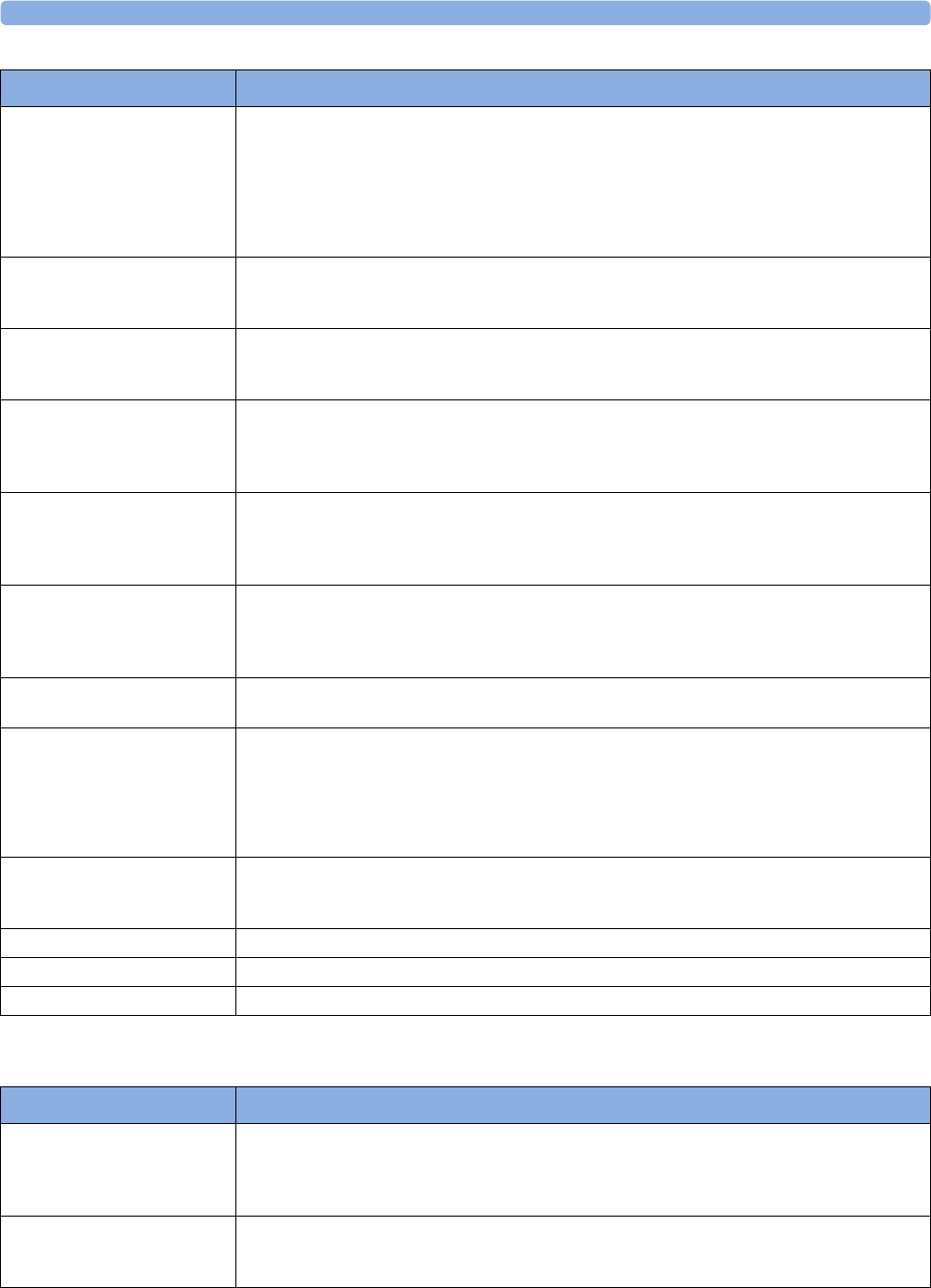
4 Patient Alarms and INOPs
92
CO2 INOPs
<Press Label> Deactivated
INOP tone
A Pressure measurement label in the measurement device or extension has been deactivated, either by
connecting a Temp transducer in the shared Press/Temp socket, or by deactivating the label in the
Measurement Selection window.
The measurement automatically disappears from the display.
To switch the measurement on again, either reconnect a Pressure transducer or reactivate the
measurement label in the Measurement Selection window.
<Press Label> Equip Malf
Numeric is replaced by -?-
INOP tone
Contact your service personnel.
The pressure hardware is faulty.
<Press Label> No Pulse
Pulse numeric is replaced by -?-
INOP tone
This INOP can only arise when a pressure is selected as the pulse source. It occurs when the pulse rate
being measured is less than 25 beats per minute or the amplitude is less than three mmHg.
Check the catheter and connections to the patient.
<Press Label> No
Transducer
Numeric is replaced by -?-
INOP tone
Make sure that the pressure transducer is connected to the measurement device or module.
If you silence this INOP, the measurement will be switched off.
<Press Label> Noisy
Signal
Pulse numeric is replaced by -?-
INOP tone
This INOP can only arise when a pressure is selected as the pulse source. It occurs when the pulse
detector finds a pulse rate above 350 bpm. This is usually caused by movement artifact or electrical
interference.
<Press Label> Overrange
Numeric is replaced by -?-
INOP tone
Make sure that the measurement has been properly prepared and zeroed, and that the transducer is
level with the heart. If this INOP persists, try another transducer.
Possible causes are a measured pressure outside the allowed pressure range, or a broken wire to the
transducer.
<Press Label> Reduce
Size
Increase the scale for the pressure wave.
<Press Label> Unplugged
INOP tone
A Pressure measurement label has been deactivated, either by unplugging a module, or by deactivating
the label in the Measurement Selection window.
The measurement automatically disappears from the display.
To switch the measurement on again, either replug the module or reactivate the measurement label in
the Measurement Selection window.
<Press Label>
Zero+Check Cal
Numeric is replaced by -?-
Perform a zero and check the calibration of the transducer.
RAP INOPs See <Press Label> INOPs
UAP INOPs See <Press Label> INOPs
UVP INOPs See <Press Label> INOPs
INOP Message, Indication What to do
INOP Message, Indication What to do
CO₂ Auto Zero
Numeric is replaced by -?-
if the Autozero lasts >15 sec,
INOP tone sounds.
The automatic zero calibration is in progress. This typically takes 10 seconds. During this time the CO2
values may not be updated, or they may be replaced by -?-. Wait until the zero calibration is complete
to resume monitoring.
CO₂ Cal Failed
Numeric is replaced by -?-
INOP tone
Make sure that the Cal cell was changed between CAL1 and CAL2. Repeat the calibration. If the
INOP reappears, try another transducer. If the INOP persists, contact your service personnel.

4 Patient Alarms and INOPs
93
CO₂ Cal Mode
CO2 numeric displays current
CO2 value for accuracy check
Currently no calibration is running. Accuracy can be checked by placing the transducer on the two cells
of the calstick and starting calibration. To start monitoring, leave Cal. Mode.
CO₂ Cal Running
Numeric is replaced by -?-
Wait until calibration is finished.
CO₂ Check Cal
Numeric is replaced by -?-
INOP tone
The CO2 value is outside the measurement range. Perform an accuracy check for both calstick cells
and, if necessary, recalibrate the transducer.
CO₂ Chk Adapter
Numeric is replaced by -?-
INOP tone
Check that the sensor is connected to the airway adapter, clean the airway adapter, if necessary.
Perform a zero calibration. If the INOP persists, contact your service personnel.
CO₂ Deactivated
INOP tone
The CO2 measurement label in the measurement device has been deactivated by deactivating the label
in the Measurement Selection window. The measurement automatically disappears from the
display. To switch the measurement on again, reactivate the measurement label in the Measurement
Selection window.
CO₂ Equip Malf
Numeric is replaced by -?-
INOP tone
The Measurement Extension is faulty. Unplug and replug the Multi-Measurement Module with
Extension. If you are using the mainstream method, unplug and replug the transducer or try another
transducer. If the INOP persists, contact your service personnel.
CO₂ No Sensor
from M3014A
Numeric is replaced by -?-
INOP tone
There is no CO2 sensor connected. If you silence this INOP the CO2 measurement will be switched
off.
CO₂ No Tubing
Numeric is replaced by -?-
INOP tone
Either the sample line is disconnected, or an incorrect line is attached. Check the connection. If
necessary, connect another sample line (Use only the approved accessories).
If you silence this INOP, the measurement will be switched off.
!! CO₂ Occlusion
!!! CO₂ Occlusion
Numeric is replaced by -?-
INOP tone
The sample line or exhaust tube is blocked. Check the tubing, then disconnect and reconnect the
sample line. If the INOP persists, connect a new sample line.
CO₂ Overrange
Numeric is replaced by -?-
INOP tone
The CO2 value is higher than the measurement range. If you suspect a false high value, contact your
service personnel.
CO₂ Pump Off
Numeric is replaced by -?-.
The pump has been switched off for fifteen minutes. To switch it on again, select Pump On in the
Setup CO₂ menu.
CO₂ Purging
Numeric is replaced by -?-
INOP tone
The Filterline is being purged to remove an occlusion in the line or airway adapter. If the occlusion is
removed, the INOP will disappear. If not, the INOP CO₂ Occlusion is displayed.
CO₂ Sens Warmup
Numeric is replaced by -?-
Microstream CO2: INOP tone
Mainstream CO2: no INOP tone
Wait until the sensor reaches operating temperature and the INOP disappears.
CO₂ Upgrade FW-
Numeric is replaced by -?-
INOP tone
The software in the Measurement Extension does not match the software in the MMS. Contact your
service personnel.
CO₂ Wait Cal2
Numeric is replaced by -?-
Calibration on the first calstick cell is complete. Place the transducer on the other calstick cell and start
the CAL2 calibration cycle.
CO₂ Zero Failed
Numeric is replaced by -?-
INOP tone
An error occurred during the last zero calibration. Check the airway adapter and clean, if necessary.
Perform another zero calibration. If the INOP persists, contact your service personnel.
CO₂Change Scale The CO2 wave is clipped. Select a more appropriate wave scale to display the whole wave.
INOP Message, Indication What to do
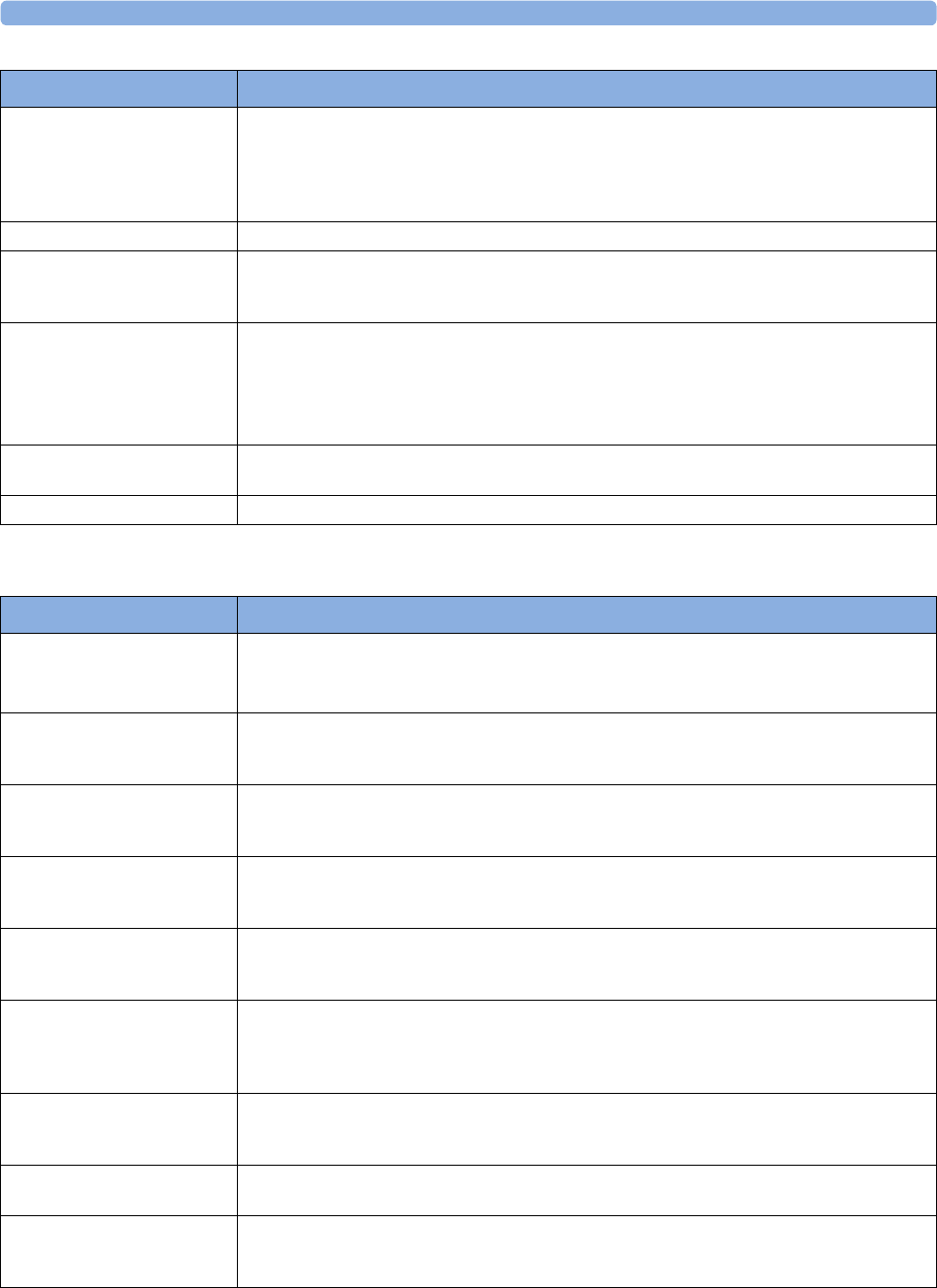
4 Patient Alarms and INOPs
94
SO2 INOPs
CO₂NoTransducer
from mainstream CO2 (except
M3014A)
Numeric is replaced by -?-
INOP tone
There is no CO2 transducer connected. If you replace the transducer, the new transducer must be
calibrated. If you silence this INOP the CO2 measurement will be switched off.
CO₂Zero Running Wait until zero calibration is finished.
CO₂ZeroRequired
Numeric is replaced by -?-
INOP tone
Perform zero calibration for the CO2 sensor. If the INOP persists, contact your service personnel.
IPI Check Pat. Age For Adult patients: a date of birth has been entered that results in a calculated patient age of less than
12 years. Enter correct date of birth or, if patient is pediatric, correct patient category.
For pediatric patients: either no date of birth has been entered (it is required for calculation of IPI for
pediatric patients) or the calculated age is below 1 year or above 12 years. Check that correct date of
birth is entered.
IPI Check Sources The IPI numeric cannot be provided as one or more of the measurement sources required for IPI is
not available. Check availability of etCO2, awRR, SpO2, and pulse rate.
IPI Neo Patient ? Check patient category. The IPI numeric is not available for neonatal patients.
INOP Message, Indication What to do
INOP Message, Indication What to do
<SO₂ Label> Cal Failed
Numeric is replaced by -?-
INOP tone
The calibration failed. Check the catheter-to-Optical-Module connection. Manually restart the
calibration. Try another catheter and Optical Module. If the catheter is already inserted, perform an in-
vivo calibration.
<SO₂ Label>Cal Required
Numeric is replaced by -?-
INOP tone
There is no valid calibration data in the Optical Module. Perform either a pre-insertion or an in-vivo
calibration.
<SO₂ Label> Cal. Mode
Numeric is replaced by -?-
INOP tone
Pre-insertion calibration is complete, but the catheter tip is still inside the optical reference. The
catheter is now ready for insertion.
<SO₂ Label> Cannot Meas
Numeric is replaced by -?-
INOP tone
The signal is out of the normal range, and no oxygen saturation can be derived. Perform an in-vivo
calibration. If the INOP persists, try another Optical Module and catheter.
<SO₂ Label>Config Error
Numeric is replaced by -?-
INOP tone
The Optical Module has been configured to SaO2 Mode. Use Change to Venous in the setup
menu to reconfigure to venous saturation mode.
<SO₂ Label> Conn
OptMod
Numeric is replaced by -?-
INOP tone
The Optical Module was disconnected during data storage. Reconnect the Optical Module for at least
20 seconds.
<SO₂ Label> Equip Malf
Numeric is replaced by -?-
INOP tone
The SO2/SvO2 Module or Optical Module is faulty. Unplug and replug the Optical Module and SO2/
SvO2 module. Exchange the modules. If the INOP persists, contact your service personnel.
<SO₂ Label> Incompat.
INOP tone
The SO2 Module or Optical Module is not supported. Contact your service personnel.
<SO₂ Label> In-Vivo Cal The in-vivo calibration is not yet complete. Lab values must be stored to the Optical Module to
complete the calibration. Either continue with the next steps of the current calibration or recall the
previous calibration.
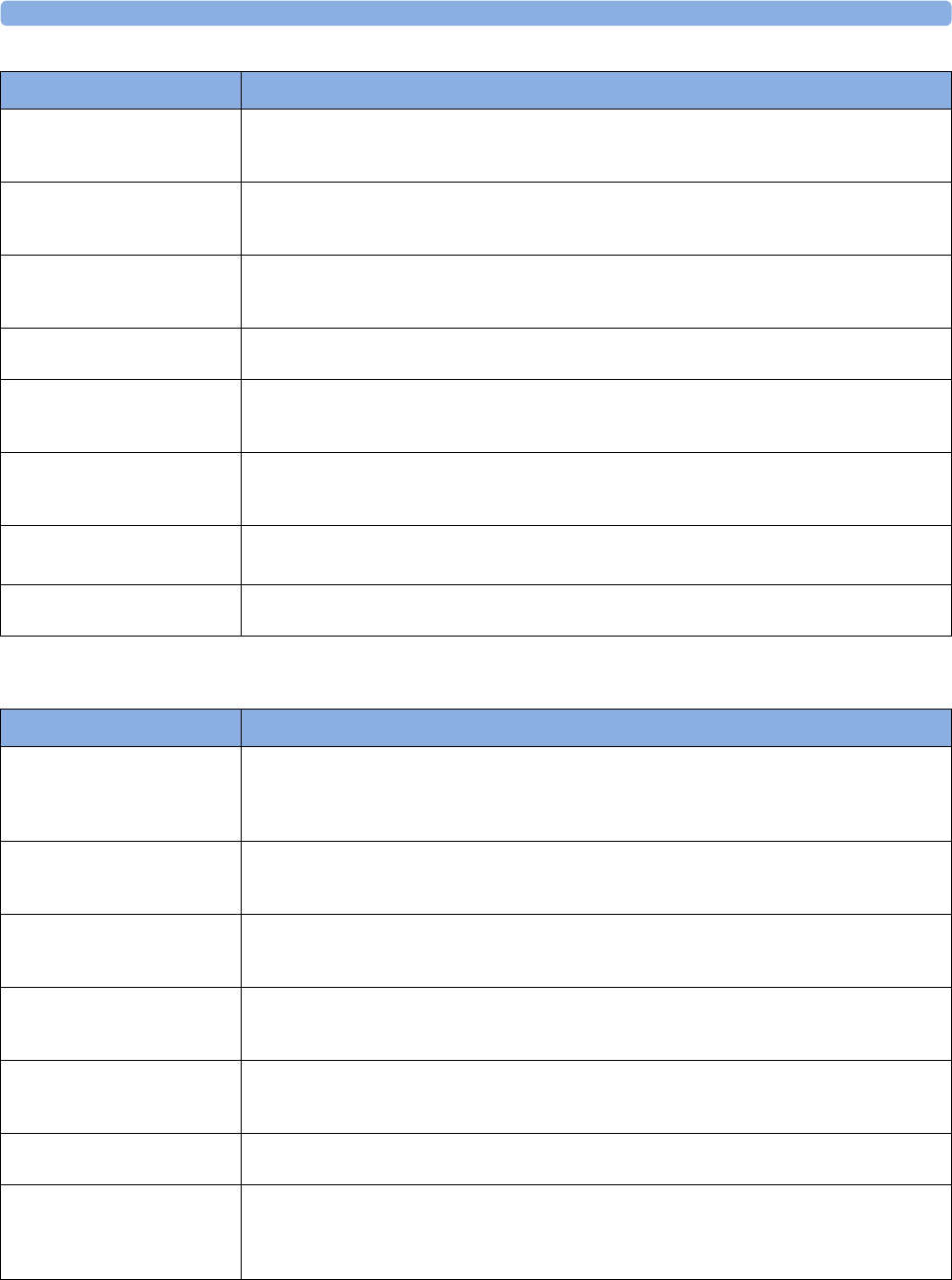
4 Patient Alarms and INOPs
95
C.O. INOPs
<SO₂ Label>Light Intens
Numeric is replaced by -?-
INOP tone
The intensity changed considerably since the last light intensity calibration. This may indicate that the
catheter tip is positioned against a blood vessel wall or that there is low blood flow. Reposition the
catheter (and perform a Light Intensity Calibration).
<SO₂ Label> Low Light
Numeric is replaced by -?-
INOP tone
The optical signal levels are too low. Check that the catheter is either in the optical reference or
inserted into the patient. Check the catheter-to-Optical Module connection. If INOP persists, try
another catheter and Optical Module.
<SO₂ Label> No OptMod
Numeric is replaced by -?-
INOP tone
Connect the Optical Module. If the INOP persists, try another Optical Module. Silencing this INOP
switches the measurement off.
<SO₂ Label> OptMod Malf The Optical Module memory is faulty, and calibration data cannot be stored for transport or during
power failure. If this capability is needed, use another Optical Module.
<SO₂ Label> Pre-Ins Cal
Numeric is replaced by -?-
INOP tone
The pre-insertion calibration is running. This typically takes one minute. During this time alarms are
switched off. Wait until the calibration is complete.
<SO₂ Label> Unplugged
Numeric is replaced by -?-
INOP tone
Measurement switched on and SO2/SvO2 module unplugged from the rack.
<SO₂ Label> Upgrade
INOP tone
The SO2 module is currently in upgrade mode.
Monitoring is not possible in this mode.
<SO₂ Label> Warmup
Numeric is replaced by -?-
The Optical Module has not yet reached the operating temperature. Wait a few minutes until warm-up
is finished.
INOP Message, Indication What to do
INOP Message, Indication What to do
C.O. Deactivated
INOP tone
The Cardiac Output measurement label in the measurement device has been deactivated by
deactivating the label in the Measurement Selection window. The measurement automatically
disappears from the display. To switch the measurement on again, reactivate the measurement label in
the Measurement Selection window.
C.O. Equip Malf
Numeric is replaced by -?-
INOP tone
There is a problem with the C.O. hardware. Contact your service personnel.
C.O. Unplugged
Numeric is replaced by -?-
INOP tone
Plug in the C.O. module. Silencing this INOP switches off the measurement.
CCI No BSA
CCI numeric unavailable
INOP tone
CCI cannot be calculated because the patient's body surface area is unknown. Enter the patient weight
and height to provide the BSA for CCI calculation.
CCO BadPressSignal
Numeric is replaced by -?-
INOP tone
The arterial pressure wave can currently not be used for pulse contour calculation for CCO or CCI
measurement. Possible causes are air bubbles in the tubing or a physiological condition, for example
severe arrhythmia.
CCO No Calibration
Numeric is replaced by -?-
The CCO measurement is currently not calibrated.
CCO No <Press Label>
Numeric is replaced by -?-
INOP tone may sound
CCO/CCI cannot be calculated. Make sure that the pressure chosen in the Setup CCO menu under
CCO from matches the pressure measured with the arterial catheter for CCO measurement. A
pressure from an external device cannot be used. Select another pressure label, either ABP, Ao, ART,
BA P, FA P, or UAP.
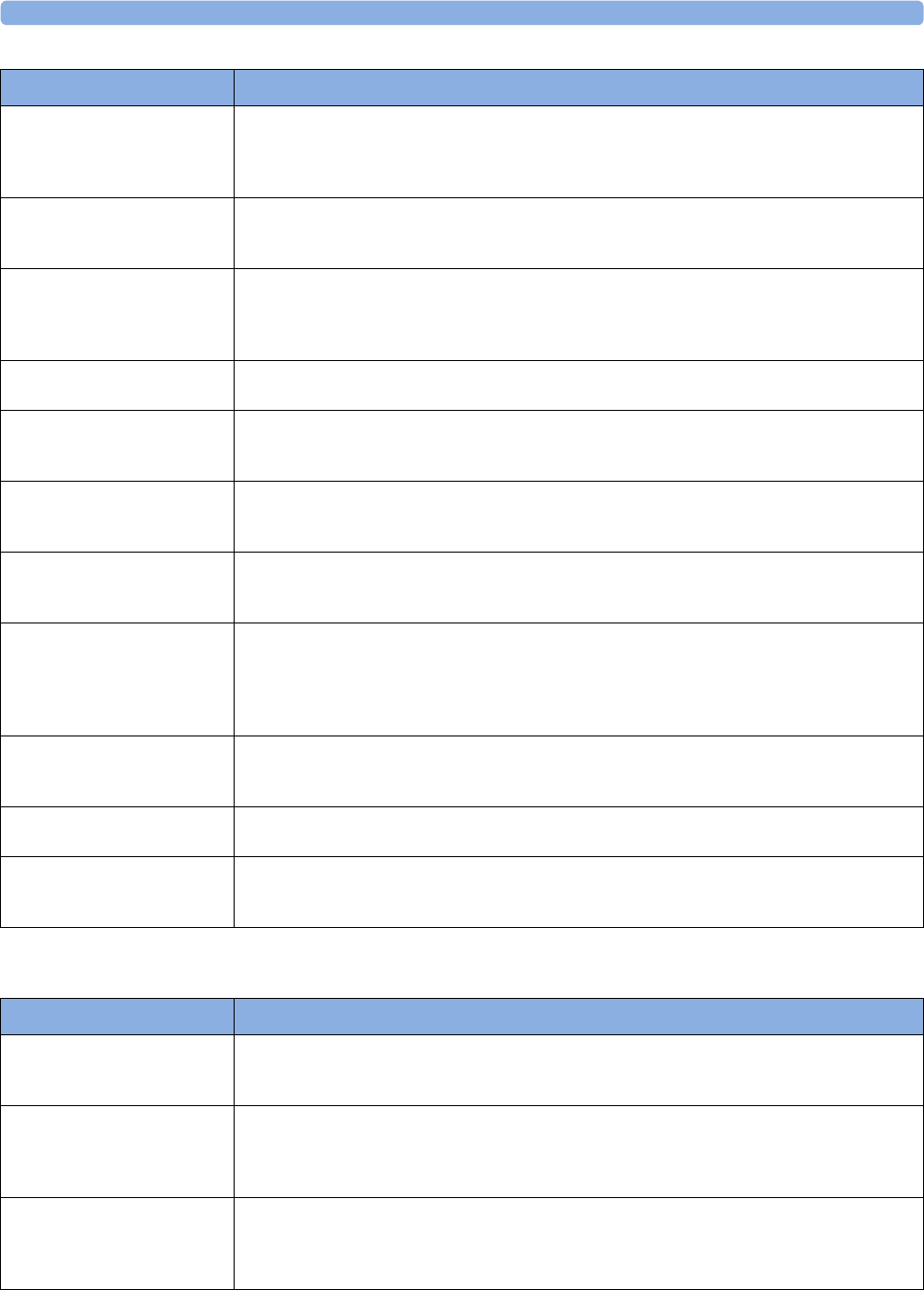
4 Patient Alarms and INOPs
96
tcGas INOPs
CCO No Press
at Information Center
CCO/CCI cannot be calculated. Make sure that the pressure chosen in the Setup CCO menu under
CCO from matches the pressure measured with the arterial catheter for CCO measurement. A
pressure from an external device cannot be used. Select another pressure label, either ABP, Ao, ART,
BA P, FA P, or UAP.
CCO Not Supported
Numeric is replaced by -?-
INOP tone
A catheter for transpulmonary C.O. measurements has been unplugged and replaced with a Right
Heart C.O. catheter, or the measurement mode has been changed manually. Silencing this INOP
switches the measurement off.
CCO Overrange
CCI Overrange
Numeric is replaced by -?-
INOP tone
The measured CCO or CCI value is not within the specified range for CCO/CCI measurement.
CCO Press Invalid
at Information Center
The arterial pressure selected for pulse contour calculation for CCO is available but currently invalid.
Make sure the pressure transducer is connected and the zero calibration is valid.
CCO <Press Label> Invalid
Numeric is replaced by -?-
INOP tone may sound
The arterial pressure selected for pulse contour calculation for CCO is available but currently invalid.
Make sure the pressure transducer is connected and the zero calibration is valid.
CCO PressOverrange
Numeric is replaced by -?-
INOP tone
The mean value of the arterial pressure values used for pulse contour calculation for CCO is below
0mmHg or above 300mmHg.
CCO PulseOverrange
Numeric is replaced by -?-
INOP tone
The pulse rate of the pressure used for pulse contour calculation for CCO is below 30 bpm or above
240 bpm.
CCO Recalibrate
Numeric is replaced by -?-
The most recent CCO or CCI calibration was made over 8 hours ago or the arterial pressure
measurement used for CCO calculation has been zeroed after the CCO calibration was performed.
You should recalibrate CCO or CCI with transpulmonary C.O. measurements at least every 8 hours or
when the hemodynamic condition of the patient has changed. The pressure measurement must be
zeroed before a CCO calibration.
CCO/Tbl NoTransduc
Numeric is replaced by -?-
INOP tone
No transducer attached to the module or catheter disconnected.
Tblood Overrange
Numeric is replaced by -?-
Tblood out of range 17°C - 43°C.
TbloodNoTransducer
Numeric is replaced by -?-
INOP tone
No transducer attached to the module or catheter disconnected.
INOP Message, Indication What to do
INOP Message, Indication What to do
<tcGas Label> Cal Failed
Numeric is replaced by -?-
INOP tone
A calibration failed. Check the calibration unit, gas pressure, and tubing connections, then restart the
calibration. If the calibration has failed more than once, remembrane the transducer and restart the
calibration. If this INOP persists, contact your service personnel.
<tcGas Label> Cal
Running
Numeric displays first -?-, then
numeric is displayed with a ?
Wait until the tcpO2/tcpCO2 calibration is finished.
<tcGas Label>
CalRequired
Numeric is replaced by -?-
INOP tone
Calibration is required before applying the transducer to the patient.
Insert a membraned transducer into the calibration chamber on the module, connect the calibration
unit to the calibration chamber, open the gas valve and start the calibration. If this INOP occurs
during a calibration, there may be a module or transducer malfunction: contact your service personnel.
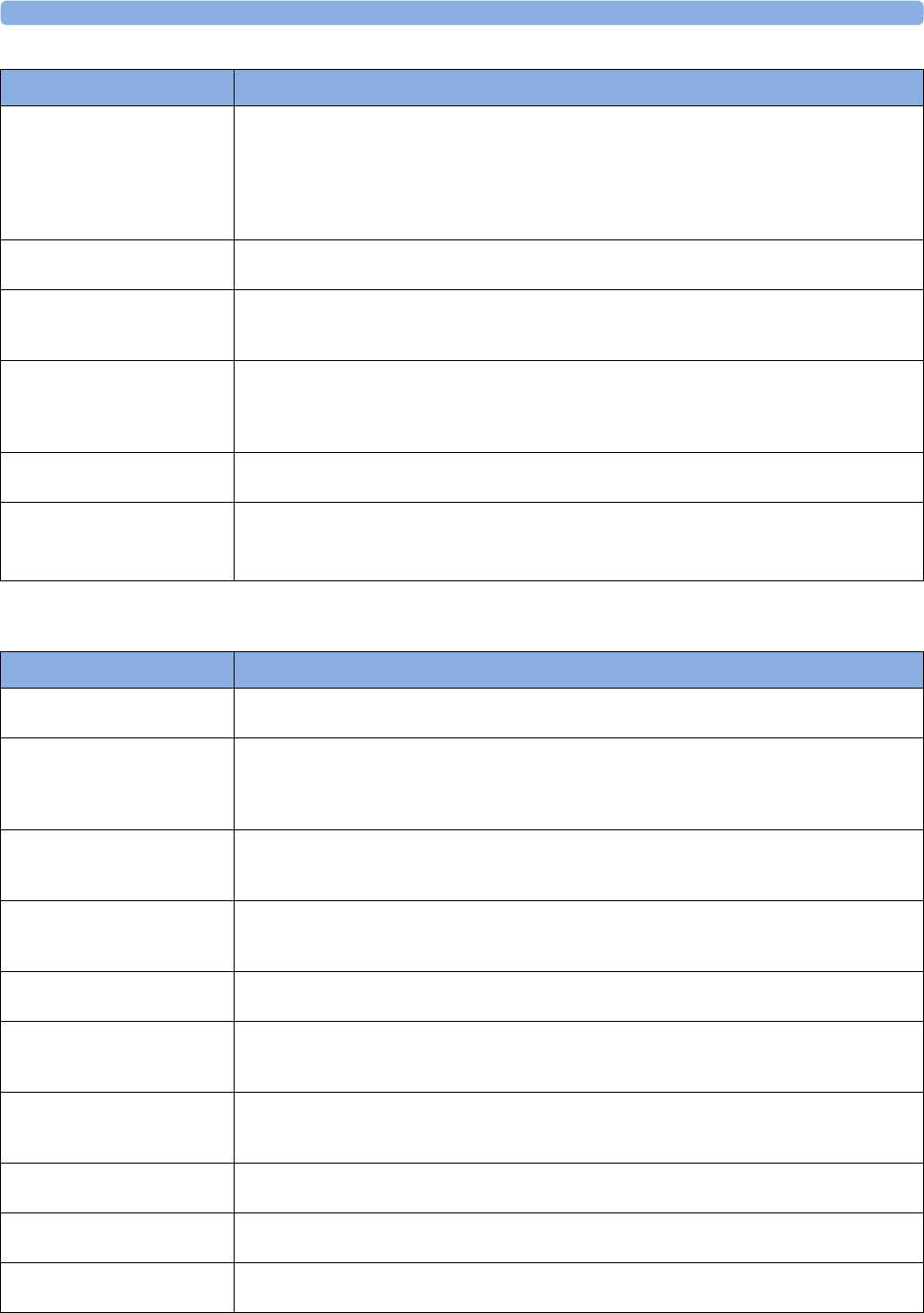
4 Patient Alarms and INOPs
97
EEG INOPs
<tcGas Label> Change
Site
If Heat Switch Off is
configured to Yes, numeric is
replaced by -?-
INOP tone
Site Timer has timed out. Change the application site to avoid skin burns. To reset the Site Timer,
either calibrate and change the measurement site, or change the measurement site and reset the Site
Timer manually by selecting the appropriate site time from the Setup tcGas menu.
<tcGas Label> Check
Time
Site Timer due to time out in 15 minutes or less.
<tcGas Label> Equip Malf
Numeric is replaced by -?-
INOP tone
There is a malfunction in the transducer or module. Connect another transducer. If this INOP persists,
contact your service personnel.
<tcGas
Label>NoTransducer
Numeric is replaced by -?-
INOP tone
No transducer is connected to the tcpO2/tcpCO2 module. Silencing the alarm switches off the
measurement.
<tcGas Label> Stabilizing
A ? appears next to the label
The transducer has not yet reached the selected temperature and/or skin hyperemization is not yet
finished. This INOP will disappear within three minutes.
<tcGas Label> Unplugged
Numeric is replaced by -?-
INOP tone
The measurement is switched on but the module is unplugged.
The measurement automatically disappears from the display. Silencing this INOP switches off the
measurement.
INOP Message, Indication What to do
INOP Message, Indication What to do
EEG Equip Malf
INOP tone
The EEG hardware is faulty. Contact your service personnel.
EEG Impedance High
EEG1 ImpedanceHigh
EEG2 ImpedanceHigh
The signal electrode in one or both channels exceeds the user-selected impedance limit, or the
impedance of a single electrode exceeds the limit. Check the impedance. If the impedance is too high,
reconnect the electrodes according to the EEG monitoring setup guidelines. If the INOP persists,
contact your service personnel.
EEG Line Noise
EEG1 Line Noise
EEG2 Line Noise
Excessive line noise has been detected in either channel EEG1 or EEG2, or in both EEG channels.
Keep all cables together and away from metallic bodies, other cables & radiated fields.
EEG Muscle Noise
EEG1Muscle Noise
EEG2Muscle Noise
Too much power above 30 Hz has been detected in channel EEG1 or EEG2, or both.
Check the Electrode-to-Skin Impedance and reposition the electrode away from possible muscle
activity, if necessary.
EEG Unplugged
INOP tone
Plug in module. Silencing this INOP switches off the measurement.
EEG1 Lead Off <n>
EEG2 Lead Off <n>
[n = electrode]
Reconnect specified electrode.
EEG1 Lead Off
EEG2 Lead Off
at Information Center
One or more electrodes are not connected. Check in the EEG Impedance / Montage window on
the monitor which electrode(s) are affected and reconnect the electrodes.
EEG1 Leads Off
EEG2 Leads Off
Two or more electrodes are not connected. Check in the EEG Impedance / Montage window
which electrodes are affected and reconnect the electrodes.
EEG1 Overrange
EEG2 Overrange
Input signal is too high in one or both channels. This is usually caused by interfering signals such as
line noise or electrosurgery.
EEGNoTransducer
INOP tone
The trunk cable is disconnected from the EEG plug-in module. Reconnect the trunk cable. Silencing
this INOP switches the measurement off.
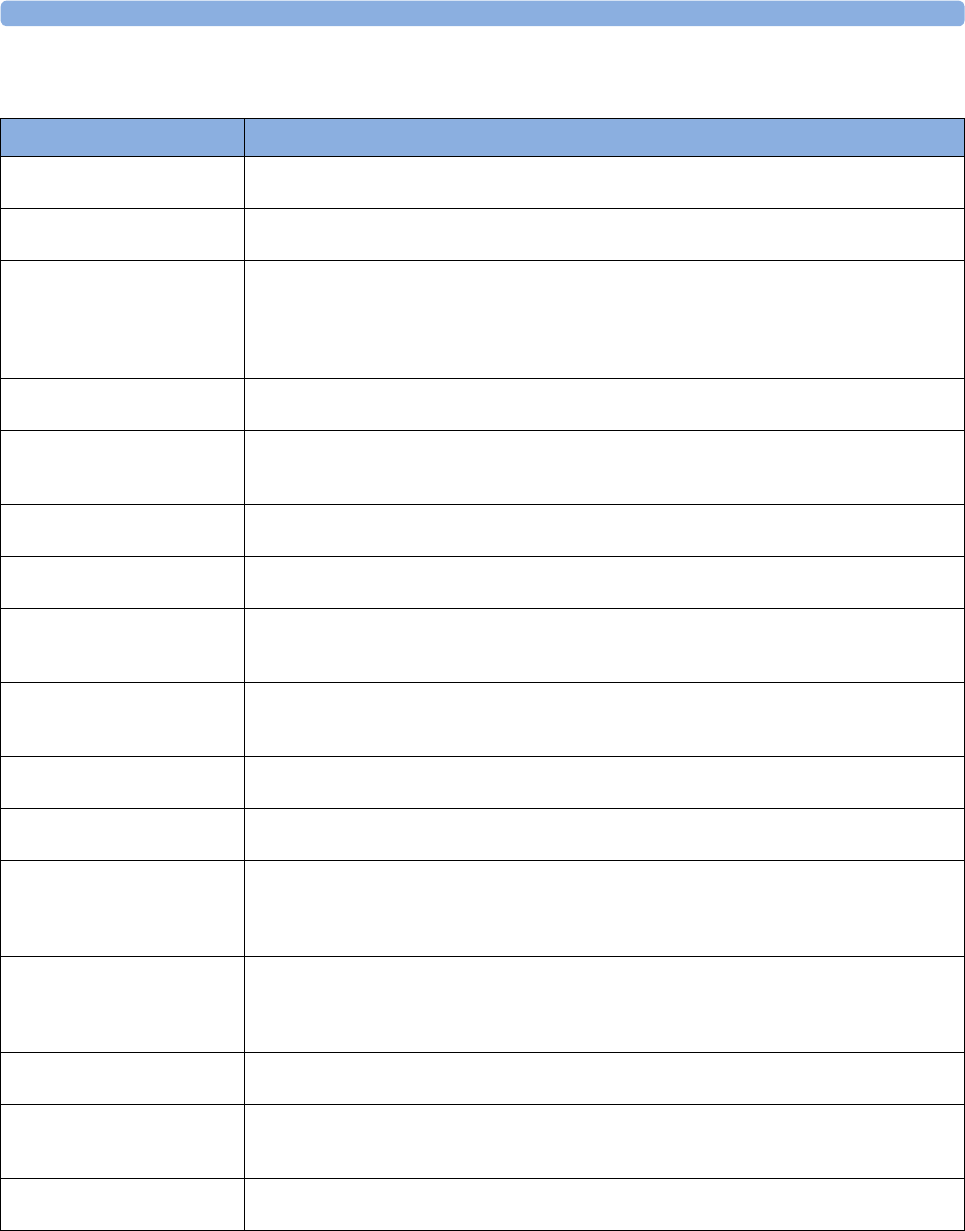
4 Patient Alarms and INOPs
98
BIS INOPs
INOP Message, Indication What to do
BIS Cable Incompat
INOP tone
The semi-reusable sensor cable connected is unknown or not supported by your software revision.
Replace it with a Philips-supported sensor cable.
BIS Cable Usage
INOP tone
The semi-reusable sensor cable has exceeded the maximum number of uses. Replace the cable.
BIS DSC Disconnect
INOP tone
DSC is not properly connected OR either DSC or BIS engine may be faulty.
Make sure that the DSC is properly connected to the BIS Engine. If INOP persists, replace DSC with
a known good one of the same type.
If INOP persists replace BIS engine.
Silencing this INOP switches the measurement off.
BIS DSC Incompat.
INOP tone
DSC is not supported by the BIS engine or new DSC connected to an old BIS engine. A software
upgrade may be required. Contact your service personnel.
BIS DSC Malfunct Electrocautery used during self-test OR malfunction in the DSC hardware.
Make sure not to use electrocautery during the self-test procedure. Disconnect and reconnect the DSC
to the BIS engine. If the INOP persists, replace the DSC or contact your service personnel.
BIS DSC Upgrade
INOP tone
DSC update currently being carried out. This INOP will disappear when the DSC update is finished.
Do not disconnect the DSC during the update. No action is needed.
BIS Electr. Disc.
INOP tone
One or more electrodes are not connected to the semi-reusable sensor cable. Check all electrode
connections.
BIS Engine Disconn
INOP tone
BIS engine not connected OR Module Cable defective.
Make sure that the Module Cable is properly connected. If INOP persists, replace the Module Cable.
Silencing this INOP switches the measurement off.
BIS Engine Incomp.
INOP tone
BIS engine software is not supported. A software upgrade may be required. Contact your service
personnel.
MP20/30 - BIS engine not supported.
BIS Engine Malfunc
INOP tone
Malfunction in the BIS engine hardware. Disconnect and reconnect the BIS engine. If the INOP
persists, replace BIS engine.
BIS Equip Malf
INOP tone
There is a malfunction in the BIS hardware. Unplug and replug the BIS module. If the INOP persists,
contact your service personnel.
BIS High Impedance
INOP tone may sound
Impedance of one or more electrode(s) is above the valid range, most often caused by bad skin
preparation. Check the sensor montage and press the electrode pads firmly. If this INOP persists,
replace the sensor(s) in question using correct skin preparation.
If INOP persists, contact your service personnel.
BIS ImpedanceCheck
INOP tone may sound
The Cyclic Impedance check is running. It will stop automatically if all impedances are within the valid
range. If any electrodes do not pass the impedance test, check the sensor montage and press the
electrode pads firmly.
To manually stop the Cyclic Impedance Check, select Sensor Check off in the Setup BIS menu.
BIS IsoelectricEEG No discernible EEG activity is detected for longer than one minute.
Check the patient. Check that the electrodes are properly connected.
BIS Lead Off
INOP tone may sound
One or more electrodes have no skin contact and therefore impedances cannot be measured. Check
the sensor montage and press the electrode pads firmly.
If this INOP persists, replace the sensor(s) in question, using correct skin preparation.
BIS Overcurrent
INOP tone
Unplug and replug the BIS module or, f or the MP20/MP30, disconnect and reconnect the BISx from
the Interface board. If the INOP persists, contact your service personnel.
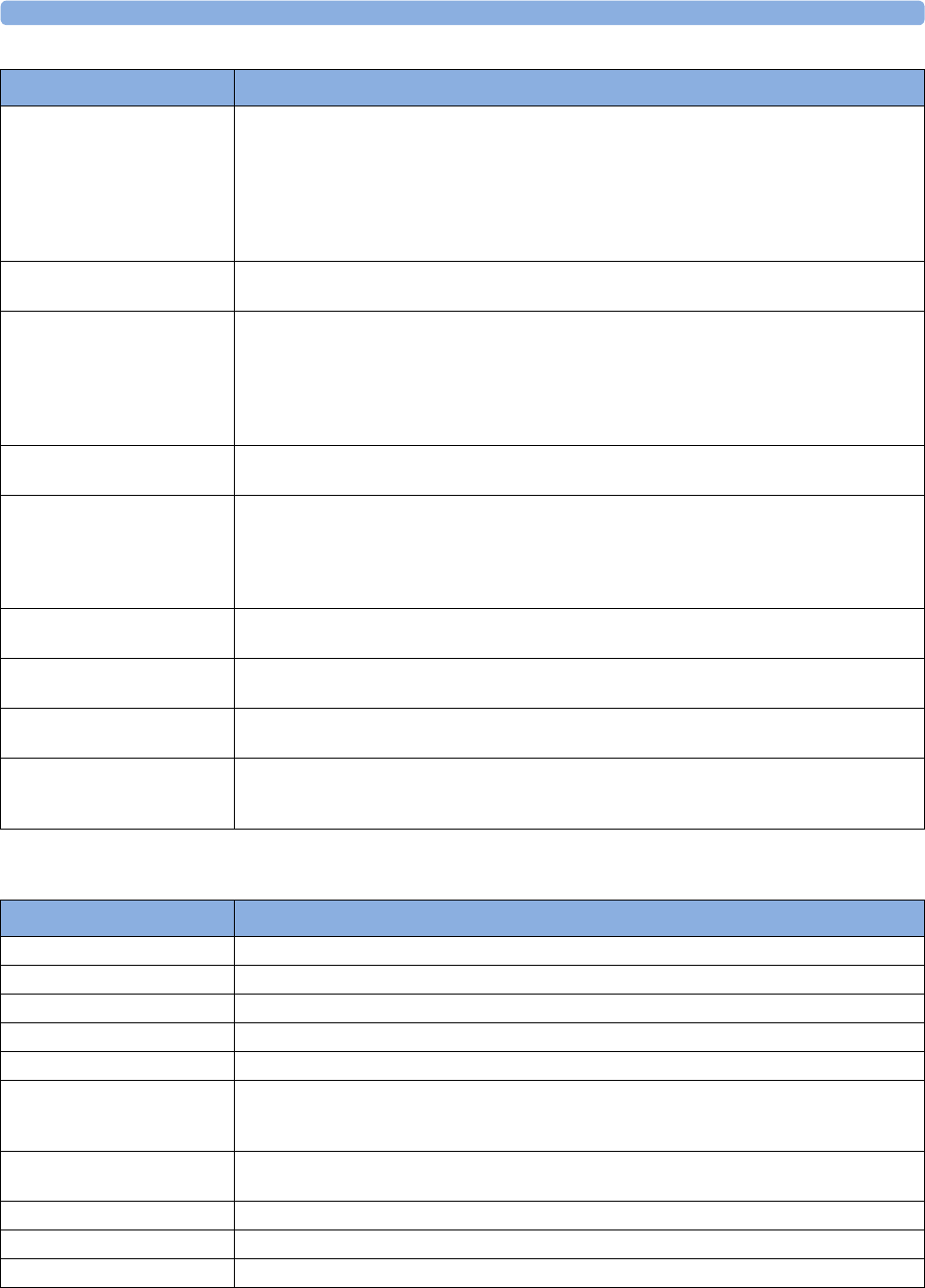
4 Patient Alarms and INOPs
99
Spirometry INOPs
BIS Sensor Disconn
INOP tone
The sensor is not properly connected to the patient interface cable (PIC) and/or the PIC is not
properly connected to the DSC or BISx, or the sensor or PIC or DSC or BISx may be faulty.
Check all the connections.
Disconnect and reconnect the sensor, PIC, DSC, BISx.
If the INOP persists, replace the sensor.
If the INOP persists, replace PIC. If INOP persists, contact your service personnel.
Silencing this INOP switches the measurement off.
BIS Sensor Incomp.
INOP tone
Unsupported sensor connected or sensor type unknown or not supported by your software revision.
Replace the sensor, using only Philips supported sensors.
BIS Sensor Malfunc
INOP tone
Malfunction in the sensor hardware, most often caused by liquids permeating into the connectors OR
patient interface cable (PIC) or DSC or BISx may be faulty.
Replace the sensor. Manually initiate a Cyclic Impedance Check. Make sure all electrodes pass the test.
Make sure that the both sides of the PIC connector (between PIC and sensor) are dry. If you are not
sure that the connector is dry, replace the PIC until it has dried. If this INOP persists, contact your
service personnel.
BIS Sensor Usage
INOP tone
Excessive sensor usage. Replace sensor.
A Cyclic Impedance Check will start automatically.
BIS SQI < 15%
INOP tone
If the signal quality is below 15%, no BIS numerics can be derived.
This may occur as a result of artifacts such as those generated from motion or the presence of
electrocautery devices. Make sure the sensor is properly attached to the patient. Manually initiate a
Cyclic Impedance Check. Make sure all electrodes pass the test. Make sure the patient is completely
relaxed (even small motions of the facial muscles affect the signal quality).
BIS Unplugged
INOP tone
Plug in the BIS module. Silencing this INOP switches off the measurement.
BISx Disconnected
INOP tone
The BISx is not connected to the BIS module or the BIS interface board. Silencing this INOP switches
the measurement off.
BISx Incompatible
INOP tone
The BISx software is not compatible with the BIS module or with the MP20/MP30 monitor software.
A software upgrade may be required. Contact your service personnel.
BISx Malfunction
INOP tone
The BISx is faulty. Disconnect and reconnect it to the module or BIS interface board. If the INOP
persists, replace the BISx.
MP20/MP30 - Malfunction on interface board. If the INOP persists, contact your service personnel.
INOP Message, Indication What to do
INOP Message, Indication What to do
AWFChange Scale Airway flow signal exceeds range of selected scale. Adjust scale to display complete wave.
AWPChange Scale Airway pressure signal exceeds range of selected scale. Adjust scale to display complete wave.
AWVChange Scale Airway volume signal exceeds range of selected scale. Adjust scale to display complete wave.
Spiro Alarms Suppr Alarming is suppressed for the spirometry module.
SPIRO Cannot Meas Measurement is at its limit, e.g. ambient pressure out of range.
Spiro Gas Compens? Gas compensation is set to Gas Analyzer but not all gases necessary for compensation are
measured by a gas monitor. Some of the fall-back values provided by the user are used. Measurement
accuracy might be reduced.
Spiro Incompatible Module revision not compatible with the host monitor software revision. Contact your service
personnel.
Spiro Malfunction Module failure detected. Contact your service personnel.
Spiro No Breath No breath was detected for more than 25 seconds. Breath derived numerics are not available.
Spiro No Sensor No sensor detected. Make sure the correct sensor is attached to the breathing circuit.
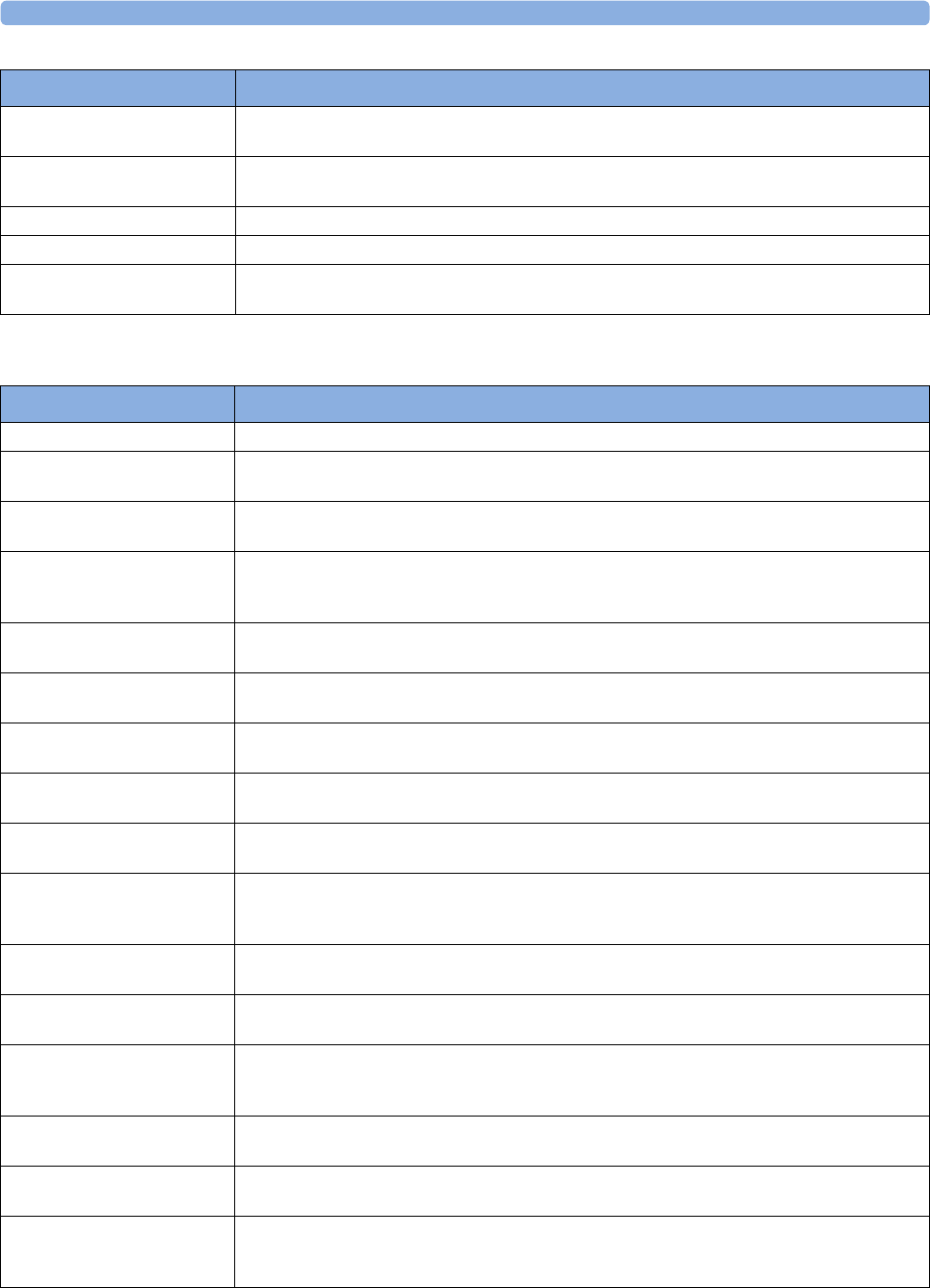
4 Patient Alarms and INOPs
100
NMT INOPs
Spiro Patient Cat. Mismatch of patient size configured in the host monitor and sensor type plugged into the module.
Check the instructions on selecting the correct sensor in the chapter on “Spirometry”.
Spiro Purge Failed The purge operation could not be completed successfully. Check for kinked sensor tubings, hard
occlusions and make sure that the pump is running and all valves are switching.
Spiro Purging A purge operation is in progress - no data update on the screen. Wait until purge is complete.
Spiro Unkn. Sensor An unknown sensor ID code was detected. Use only the sensors listed in the “Accessories” chapter.
Spiro Upgrade The module is running a firmware upgrade. Wait until upgrade is completed before resuming
monitoring.
INOP Message, Indication What to do
INOP Message, Indication Explanation
NMT Alarm Suppress NMT alarms are suppressed until the TOF count reaches zero for the first time.
NMT Cable Disconn
INOP tone
No patient cable is connected to the NMT measurement module. Silencing this INOP switches the
NMT measurement off.
NMT Cable Unknown
INOP tone
The patient cable connected to the NMT module is not supported or cannot be identified. Replace it
with a supported cable.
NMT Cal Failed The NMT calibration cycle failed. Check that the sensor and the electrodes are placed properly, then
start another calibration. Ensure that patient's arm is kept still before and during the calibration cycle.
If calibration fails again, replace the patient cable. If INOP persists, contact your service personnel.
NMT Cal Running An NMT calibration is running. Wait until the calibration is complete.
NMT Cannot Measure
INOP tone
NMT is unable to reliably derive measurement values. Check that the sensor and the electrodes are
placed properly and start another measurement. If this INOP persists, try another patient cable.
NMT Equip Malfunct
INOP tone
There is a problem with the NMT hardware. Unplug the NMT measurement module then plug it in
again. If the INOP persists contact your service personnel.
NMT Impedance High The impedance of the NMT stimulation electrodes has exceeded the allowed limit. Check that the
electrodes are placed properly, have firm skin contact and have not dried out.
NMT Incompatible
INOP tone
This version of the NMT measurement module is not supported, or the module firmware is
incomplete and needs to be upgraded. Contact your service personnel.
NMT Lead Off
INOP tone
One or both NMT stimulation electrodes have become detached from the patient. Check that both
electrodes have firm skin contact, that the electrodes are placed properly and that the lead wires are
connected.
NMT Neo Patient?
INOP tone
The NMT measurement does not support neonatal patients. Check the patient category.
NMT Noisy Signal
INOP tone
The NMT signal is too noisy to derive measurement values reliably. If electrosurgery is currently being
used, repeat the NMT measurement after it has stopped.
NMT Overcurrent
INOP tone
The current through the NMT stimulation electrodes is too high. Check that that the patient cable is
not visibly damaged. Disconnect and reconnect the patient cable. If this INOP persists, replace the
cable and/or module.
NMT Overrange The signal from the acceleration sensor is out of the measurement range. Check that the acceleration
sensor is positioned properly. If this INOP persists, try another patient cable.
NMT Sensor Malfunc
INOP tone
There is a problem with the acceleration sensor of the NMT patient cable. Disconnect and reconnect
the patient cable. If this INOP persists, replace the cable.
NMT Upgrade
INOP tone
An NMT module firmware upgrade is in progress. NMT monitoring is currently not possible. Wait
until the upgrade has completed and this INOP is no longer displayed. Do not unplug the module or
switch off power.
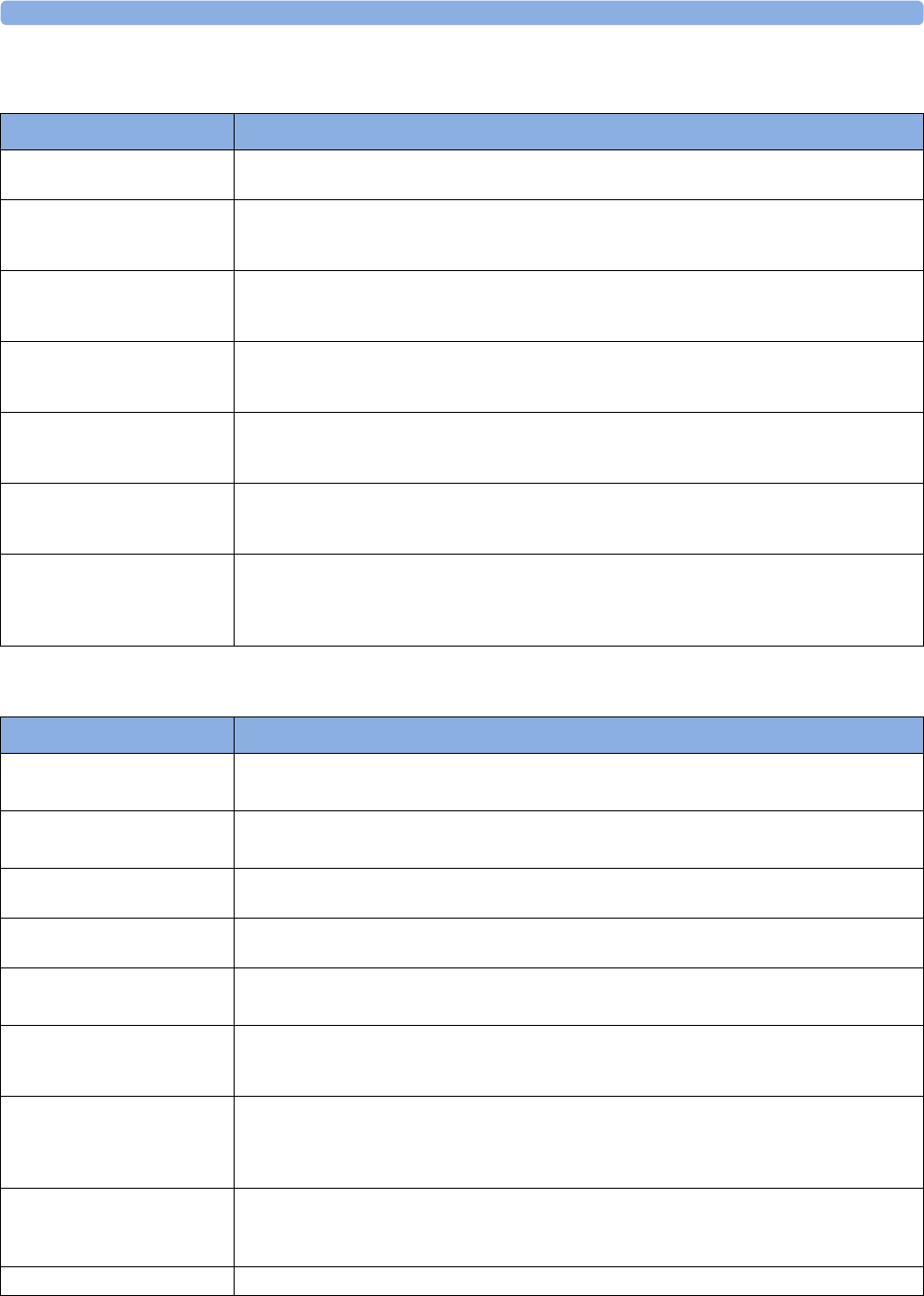
4 Patient Alarms and INOPs
101
VueLink INOPs
IntelliBridge INOPs
INOP Message, Indication What to do
VueLink Alarm
at Information Center
A technical alarm is present on the VueLink module. The INOP text on the monitor is defined by the
VueLink device driver.
<VueLink Option> Check
Cable
INOP tone
No cable or the wrong cable connected to the VueLink module, or incorrect device selected. Silencing
this INOP switches the measurement off.
VueLink INOP abbreviations may differ slightly depending on the device category.
<VueLink Option> Check
Setup
INOP tone
No information was received from the external device. The device may be switched off or
disconnected.
VueLink INOP abbreviations may differ slightly depending on the device category.
<VueLink Option> Chk
Config
INOP tone
The wrong external device has been selected on the VueLink module, or the external device has not
been correctly setup, or the wrong cable has been used to connect the device to the VueLink module.
VueLink INOP abbreviations may differ slightly depending on the device category.
<VueLink Option> Equip
Malf
INOP tone
Malfunction in the VueLink module. If this message appears repeatedly, the module must be replaced.
Contact your service personnel.
VueLink INOP abbreviations may differ slightly depending on the device category.
<VueLink Option> No
Config
INOP tone
The VueLink module has not been configured during installation. The installation process should be
completed by either your biomedical engineering department or the Philips service engineer.
VueLink INOP abbreviations may differ slightly depending on the device category.
<VueLink Option>
Unplugged
INOP tone
The VueLink module has been unplugged from the rack, or the whole rack has been disconnected.
The measurement automatically disappears from the display. Silencing this INOP switches off the
measurement.
VueLink INOP abbreviations may differ slightly depending on the device category.
INOP Message, Indication What to do
Device Check Setup
INOP tone
Device identification completed, but communication could not be established due to timeout.
IntelliBridge INOP abbreviations may differ slightly depending on the device category.
Device Chk Config
INOP tone
Device identification completed, but communication could not be established due to error.
IntelliBridge INOP abbreviations may differ slightly depending on the device category.
Device Demo Data
INOP tone
The device connected to the IntelliBridge module reports demo data but the monitor is not in DEMO
mode.
Device Real Data
INOP tone
The monitor is in DEMO mode but the device connected to the IntelliBridge module reports data that
are not flagged as demo data.
Device Unsupported
INOP tone
Device identification completed, but no appropriate device driver installed.
IntelliBridge INOP abbreviations may differ slightly depending on the device category.
<EC10 / EC40> Equip
Malf
INOP tone
Malfunction in the IntelliBridge module. If this message appears repeatedly, the module must be
replaced. Contact your service personnel.
EC10 INOP
!! EC10 INOP
!!! EC10 INOP
at Information Center
A technical alarm is present on the IntelliBridge EC10 module.
On the monitor the indication is a red (!!!), yellow (!!) or cyan alarm lamp (as appropriate), an INOP
tone and an INOP text that is defined by the IntelliBridge EC10 device driver.
<External Device>
Unplugged
INOP tone
The IntelliBridge module has been unplugged from the rack, or the whole rack has been disconnected.
Silencing this INOP switches off the measurement.
IntelliBridge INOP abbreviations may differ slightly depending on the device category.
No Device Data Communication with connected device has been lost.
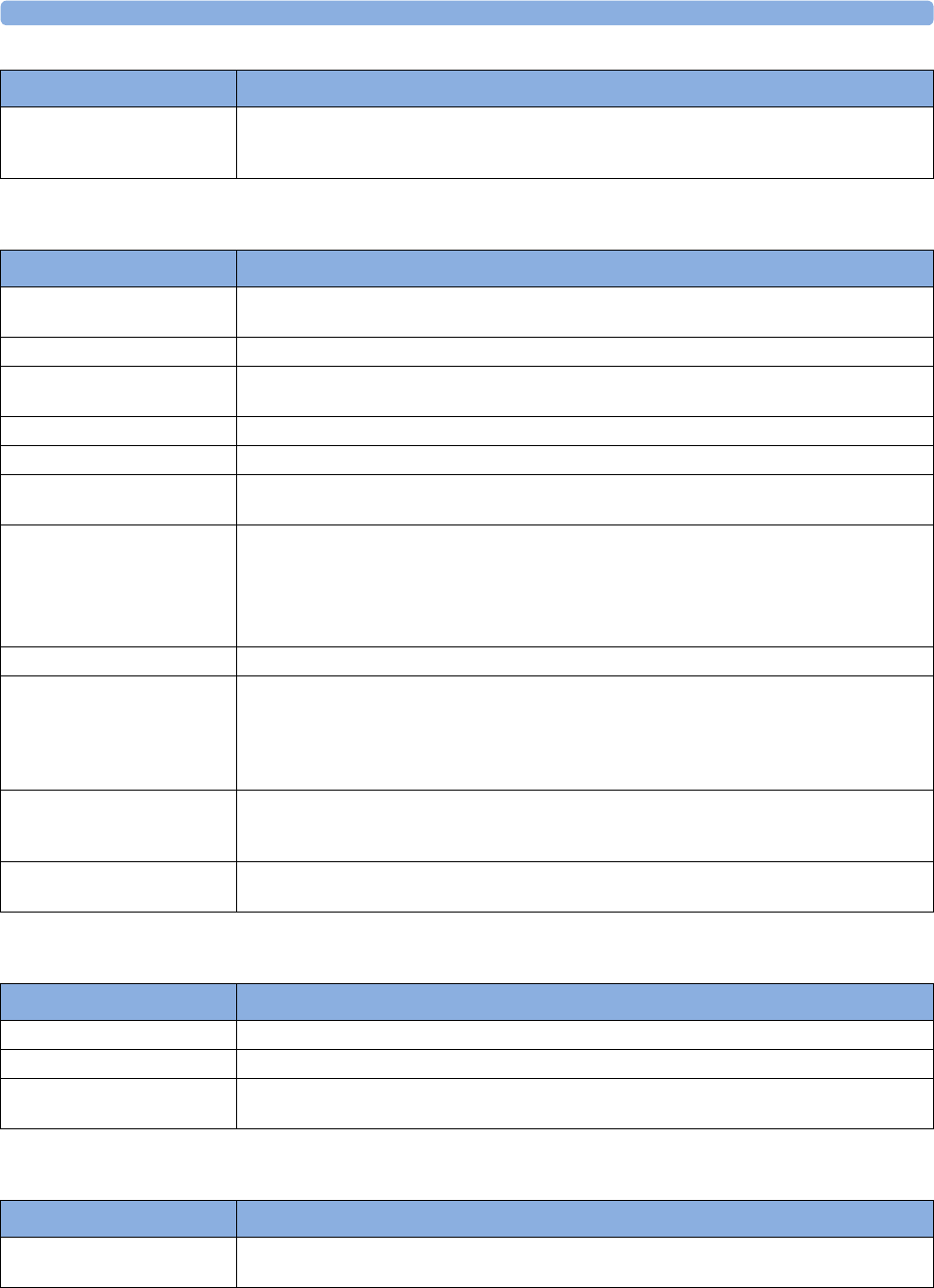
4 Patient Alarms and INOPs
102
Telemetry INOPs
ProtocolWatch INOPs
Calculated Values INOPs
Text Upload Failed
INOP tone
Incoming text from the IntelliBridge modules exceeds the maximum limit. Try unplugging one of the
IntelliBridge modules. If the INOP occurs repeatedly contact your service personnel; a software
upgrade may be necessary.
INOP Message, Indication What to do
INOP Message, Indication What to do
Check ECG Settings
INOP tone
Synchronization of ECG settings between the monitor and Information Center has failed. Check that
the ECG settings in use are appropriate.
!!Check ECG Source Both the telemetry device and the monitor have valid ECG signals
Chk SpO₂T Settings
INOP tone
Synchronization of SpO2T settings between the monitor and Information Center has failed. Check
that the SpO2T settings in use are appropriate.
Invalid Leadset The leadset plugged in cannot be used with the telemetry device.
Leadset Unplugged The leadset has been unplugged from the telemetry device.
No ECG Source A telemetry device is paired with the monitor but the Information Center is not detecting a valid ECG
signal from either of them.
!! Repl. Tele Batt
!!!Repl. Tele Batt
Severe yellow/red INOP tone
During this INOP, alarms cannot
be paused or switched off.
The battery in the telemetry device is almost empty and must be replaced.
Tele Battery Low The battery in the Telemetry device is low and must be replaced soon.
!!Tele Disconnect
!!!Tele Disconnect
Severe yellow/red INOP tone
Telemetry transceiver was disconnected or short range radio link was lost.
For cable connections; check Telemetry interface, cable connection and setup.
For short range radio connections: if the telemetry transceiver has not moved out-of-range, check for
interference sources close to the monitor (bluetooth devices, DECT phones, cellular phones,
microwaves, etc.). If this INOP persists, ask your service personnel to survey the interference sources.
!! Tele INOP
!!! Tele INOP
Severe yellow/red INOP tone
Check for further details at the Information Center or in the Telemetry Data window on the monitor.
Tele Sync Unsupp.
INOP tone
The MMS in use does not support synchronization of ECG and SpO2 settings between the monitor
and central station after a telemetry device has been paired. Use an MMS with revision E.0 or above.
INOP Message, Indication What to do
PW: Check Settings Contact your service personnel. Settings could not be loaded or interpreted correctly.
PW: In Conflict There is a patient information mismatch which has not yet been resolved (>15 minutes).
PW:Action Required The protocol currently running requires a user response. Check which pop-up window is displayed and
provide the appropriate response.
INOP Message, Indication What to do
ΔSpO₂ Chk Sources
Numeric is replaced by -?-
Not all measurements or values required to perform the calculation are available. Check measurement
sources.
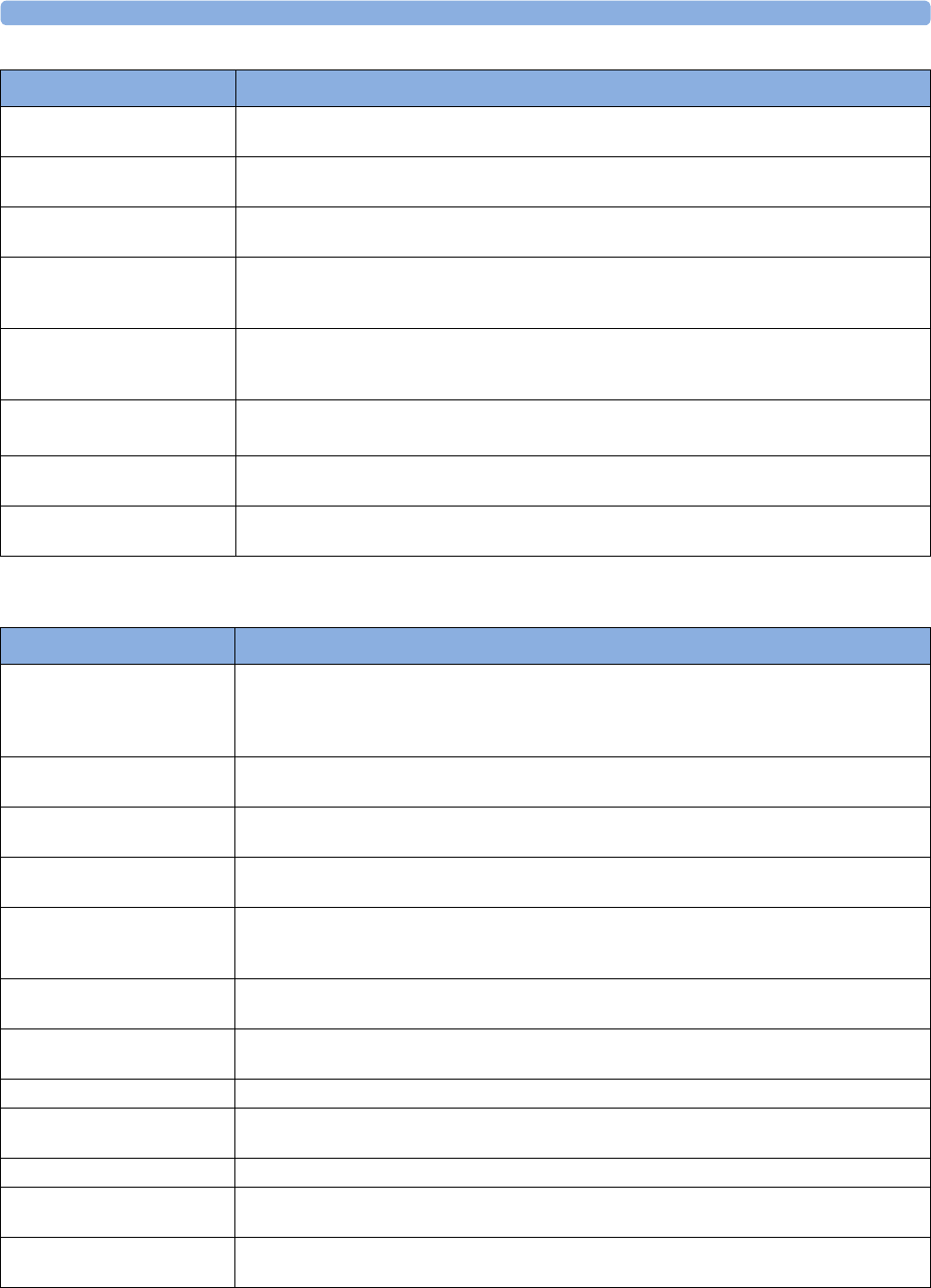
4 Patient Alarms and INOPs
103
Cableless Measurement Device INOPs
ΔSpO₂ Chk Units
Numeric is replaced by -?-
The monitor has detected a conflict in the units used for this calculation. Check the unit settings.
Sp-vO₂ Chk Sources
Numeric is replaced by -?-
Not all measurements or values required to perform the calculation are available. Check measurement
sources.
Sp-vO₂ Chk Units
Numeric is replaced by -?-
The monitor has detected a conflict in the units used for this calculation. Check the unit settings.
SVR Chk Sources
SVRI Chk Sources
Numeric is replaced by -?-
Not all measurements or values required to perform the calculation are available. Check measurement
sources.
SVR Chk Units
SVRI Chk Units
Numeric is replaced by -?-
The monitor has detected a conflict in the units used for this calculation. Check the unit settings.
SVRSet CVP Used
SVRISet CVP Used
A CVP value is required for this calculation, but is not currently being measured. The monitor is using
the CVP value preset in the Setup SVR menu.
ΔTemp Chk Sources
Numeric is replaced by -?-
Not all measurements or values required to perform the calculation are available. Check measurement
sources.
ΔTemp Chk Units
Numeric is replaced by -?-
The monitor has detected a conflict in the units used for this calculation. Check the unit settings.
INOP Message, Indication What to do
INOP Message, Indication What to do
cl NBP Batt Empty
!!cl NBP BattEmpty
!!!cl NBP BatEmpty
Corresponding INOP tone
The remaining battery time of the NBP Pod is below 30 minutes. Charge the battery.
cl NBP Batt Incomp
INOP tone
The battery in use with the NBP Pod is incompatible. Replace it with one approved for use with the
NBP Pod.
cl NBP Batt Low
INOP tone
The remaining battery time of the NBP Pod is below 2 hours.
cl NBP Batt Malf
INOP tone
There is a malfunction in the NBP Pod's battery system. Contact your service personnel.
cl NBP Batt Temp
INOP tone
The temperature of the battery in the NBP Pod is critically high. Check that the Pod is not covered or
exposed to a heat source. If the INOP persists, remove the Pod from the patient and contact your
service personnel.
cl NBP Check Batt
INOP tone
The battery in the NBP Pod is nearing the end of its useful life. Only 50 charge/discharge cycles
remain. Contact your service personnel to replace the battery.
cl NBP Chk Chrg IF The interface between the NBP Pod and the Charging Station is not working properly. Try cleaning the
contacts and reposition the Pod on the charging station.
cl NBP ChkSettings The NBP Pod's settings may have changed or become corrupt. Check the settings.
cl NBP Disconnect
INOP tone
The NBP Pod has lost the connection to the monitor.
cl NBP License Req The NBP Pod requires a valid software license for operating.
cl NBP No Cradle
INOP tone
The NBP Pod is not in its cradle.
cl NBP Remove
INOP tone
The temperature of the battery in the NBP Pod is too high. Remove the Cableless Measurement
Device from the patient and contact service personnel.
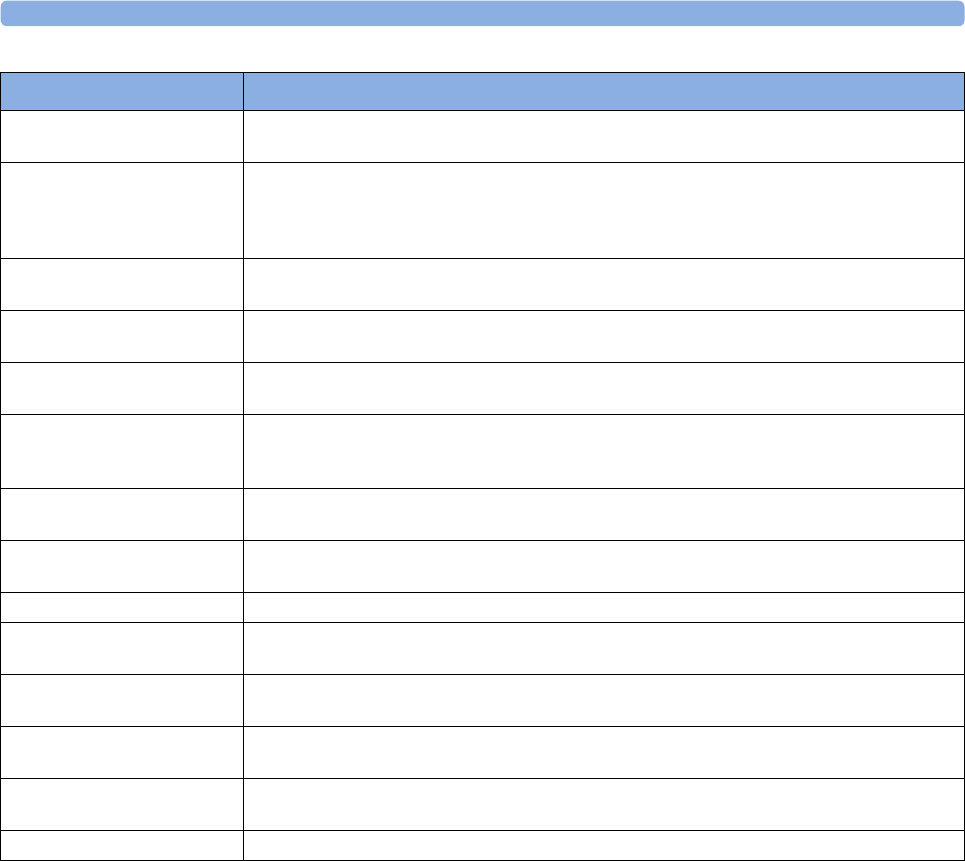
4 Patient Alarms and INOPs
104
cl NBP Serv Batt
INOP tone
The battery in the NBP Pod has reached the end of its useful life. It can no longer be charged. Contact
your service personnel to replace the battery.
cl SpO₂ Batt Empty
!!cl SpO₂ BatEmpty
!!!cl SpO₂ BtEmpty
Corresponding INOP tone
The remaining battery time of the SpO2 Pod is below 30 minutes. Charge the battery.
cl SpO₂ Batt Incmp
INOP tone
The battery in use with the SpO2 Pod is incompatible. Replace it with one approved for use with the
SpO2 Pod.
cl SpO₂ Batt Low
INOP tone
The remaining battery time of the SpO2 Pod is below 2 hours.
cl SpO₂ Batt Malf
INOP tone
There is a malfunction in the SpO2 Pod's battery system. Contact your service personnel.
cl SpO₂ Batt Temp
INOP tone
The temperature of the battery in the SpO2 Pod is critically high. Check that the Pod is not covered or
exposed to a heat source. If the INOP persists, remove the Pod from the patient and contact your
service personnel.
cl SpO₂ Check Batt
INOP tone
The battery in the SpO2 Pod is nearing the end of its useful life. Only 50 charge/discharge cycles
remain. Contact your service personnel to replace the battery.
cl SpO₂ Chk ChrgIF The interface between the SpO2 Pod and the Charging Station is not working properly. Try cleaning
the contacts and reposition the Pod on the charging station.
cl SpO₂ Chk Sett The SpO2 Pod's settings may have changed or become corrupt. Check the settings.
cl SpO₂ Disconnect
INOP tone
The SpO2 Pod has lost the connection to the monitor.
cl SpO₂ No Cradle
INOP tone
The SpO2 Pod is not in its cradle.
cl SpO₂ Remove
INOP tone
The temperature of the battery in the SpO2 Pod is too high. Remove the SpO2 Pod from the patient
and contact service personnel.
cl SpO₂ Serv Batt
INOP tone
The battery in the SpO2 Pod has reached the end of its useful life. It can no longer be charged. Contact
your service personnel to replace the battery.
clSpO₂ License Req The SpO2 Pod requires a valid software license for operating.
INOP Message, Indication What to do

5
105
5Managing Patients and
Equipment
When the monitor is used together with an IntelliVue Information Center, a variety of services are
provided to manage the interconnections between patients, equipment, hospital beds, caregivers, and
so on.
Many services can be used both at the monitor and at the Information Center, resulting in a more
efficient workflow.
Which services are available will depend on which Information Center you have. The Philips
IntelliVue Information Center iX (PIIC iX) provides more services and functionality than the
Philips IntelliVue Information Center (PIIC). In these Instructions for Use, information that is
only valid for one of the Information Centers will be marked with a corresponding side heading, for
example
PIIC iX For a list of the differences between the two Information Centers, see “Information Center
Compatibility” on page 132.
Patient Concepts
For a patient to be part of the system their identification data must be entered into the system. A
patient can then be assigned to a bed, have equipment assigned directly to him, and have a location set
when he is not currently in the bed.
Equipment Concepts
Depending on how equipment is used in your facility, there are various ways to associate devices with
patients, beds or monitors. Equipment usage must be configured appropriately at the Information
Center and the monitoring equipment.
PIIC iX By configuration, equipment can be assigned:
• permanently to a bed,
• on demand to a bed or host monitor, or
• directly to a patient.
The foundation for a particular equipment use model is laid in the configuration settings in the
monitor and the Information Center. Refer to the corresponding configuration guides for further
details.
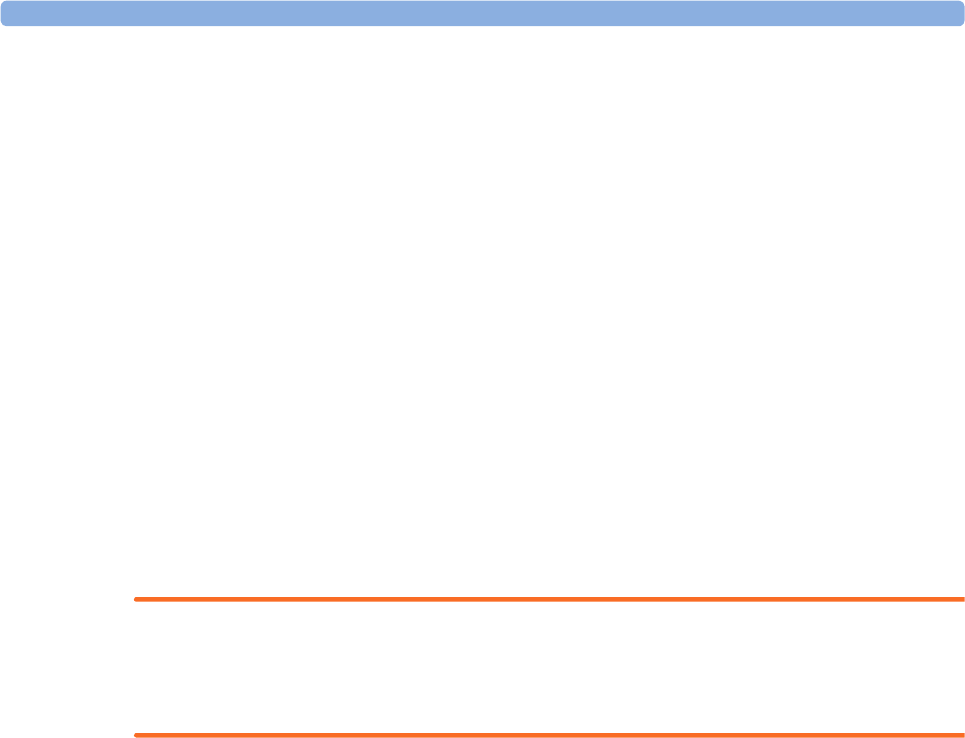
5 Managing Patients and Equipment
106
Additionally there are mechanisms to automatically free up equipment that is no longer used. This
prevents unnecessary patient mismatches when the equipment is used for the next patient and avoids
data of different patients getting mixed.
PIIC iX When connected to PIIC iX, equipment states are tracked by the system. When the equipment is not
assigned to a patient or no patient is admitted at a monitor, the equipment is considered as free
equipment in the system. Equipment that is assigned or has a patient admitted is tracked as used (i.e.
not free) equipment.
The Information Center uses the equipment state (free/not free) to maintain and support workflow
and equipment lists.
Managing Patients
In order to attribute collected measurement data to a specific patient, or assign equipment or a bed to
a specific patient, each patient in the system must be identified. By admitting a patient, you identify
them for the system.
When equipment is freed up (for example by discharging the patient, removing a monitor from a
patient or using End Case) the collection of data is officially ended for this patient and important
settings on the monitor are reset to the defaults.
WARNING
Always perform a discharge or free up the monitor before starting monitoring for a new patient, even
if your previous patient was not admitted. Failure to do so can lead to data being attributed to the
wrong patient.
Admitting a Patient
The monitor displays physiological data and stores it in the trends as soon as a patient is connected.
This lets you monitor a patient who is not yet admitted. It is however important to admit patients
properly so that you can identify your patient on recordings, reports, and networked devices.
During admission you enter data that the monitor needs for safe and accurate operation. For example,
the patient category setting determines the algorithm the monitor uses to process and calculate some
measurements, the safety limits that apply for some measurements, and the alarm limit ranges.
NOTE
It is strongly recommended that the same patient data fields be configured to be mandatory at the
monitor and the Information Center.
When No Patient is Admitted
To admit a patient:
1Select the patient name field or select the Patient Demogr. SmartKey to open the Patient
Demographics window.
2Select Admit Patient.

5 Managing Patients and Equipment
107
The Enter Patient Demographics window appears. You can enter data as normal, using the
keyboard or a barcode scanner, or, with PIIC iX, use the Find Patient key to search for patient
data in connected systems as described in “Using "Find Patient" to Search for Patient Data” on
page 107.
3Enter the patient information: select each field and use the keyboard or barcode scanner or choose
from the pop-up list of alternatives to input information.
PIIC iX When you enter data, the Information Center will automatically check for corresponding data and
will suggest an appropriate action based on what it finds. You can select Confirm to accept the
suggestion or Cancel to reject it.
–Last Name: Enter the patient's last name (family name).
–First Name: Enter the patient's first name.
–Middle Name (if configured to appear): Enter the patient's middle name.
–Lifetime ID, Encounter ID: Whether these fields appear and how they are labeled can be
configured for your hospital. One or both fields may be displayed and the labels may read:
MRN, Case ID, Visit Number, or other alternatives. Enter the appropriate data for the fields
displayed.
–Patient Cat.: Choose the patient category, either Adult, Pedi, or Neo.
–Paced Mode: Choose On or Off (You must use On if your patient has a pacemaker). With
PIIC iX there is a third choice: Unconfirmed. When the paced mode is Unconfirmed, the
algorithm for paced patients will be used.
–Height: Enter the patient's height.
–Weight: Enter the patient's weight.
–BSA: The monitor calculates the body surface area automatically.
–Date of Birth: Enter the patient's date of birth, in the form dd/mmm/yyyy.
–Age: The monitor calculates the patient age automatically.
–Gender: Choose Male or Female.
–Notes (1) / Notes (2): Enter any extra information about the patient or treatment.
When admission is complete, the patient's name appears on the monitor info line at the top of the
screen.
When a Patient is Already Admitted
If the patient monitor already has a patient admitted, the Admit Patient key is replaced by the New
Patient key.
When you select New Patient, the monitor is freed. All settings are reset to the defaults, all patient data
and trend data are deleted, and monitoring at the Information Center may stop for monitors
designated as transport monitors. Depending on your equipment configuration, selecting New Patient
may transfer the currently admitted patient out of the bed. A message will appear requiring your
confirmation of these actions.
After selecting New Patient, you can admit your patient as described in “When No Patient is
Admitted” above.
Using "Find Patient" to Search for Patient Data
PIIC iX You can use the Find Patient key to search for patient data in the Information Center and any
connected hospital information systems. The search will look for currently admitted or previously
admitted patients matching the search data you enter.

5 Managing Patients and Equipment
108
To search for patient data:
1Select the Find Patient key.
A window opens with an on-screen keyboard.
2Type in the last name or an ID, or a part of it, and select Enter on the keyboard.
The search results will be displayed in a Select Patient window. The system provides a list of all
matching patients.
3Highlight the patient you want to admit to this bed.
4Depending on their current status, you will be asked whether you want to readmit them, or
transfer them to this bed.
5Select Confirm to complete the admission or transfer.
Patient Category and Paced Mode
The patient category setting determines the algorithm the monitor uses to process and calculate some
measurements, the safety limits that apply for some measurements, and the alarm limit ranges.
The paced mode setting determines whether the monitor shows pacemaker pulses or not. When Paced
Mode is set to Off, pace pulses are filtered and therefore do not show in the ECG wave.
WARNING
Patient Cat. and Paced Mode will always contain a value, regardless of whether the patient is fully
admitted or not. If you do not specify settings for these fields, the monitor uses the default settings
from the current profile, which might not be correct for your patient.
Patient category
Changing the patient category may change the arrhythmia and NBP alarm limits. If possible, always
load a suitable profile after changing patient category, and always check alarm limits to make sure that
they are appropriate for your patient.
Paced mode
For paced patients, you must set Paced Mode to On. If it is incorrectly set to Off, the monitor could
mistake a pace pulse for a QRS and fail to alarm during asystole. With PIIC iX, the paced mode may be
Unconfirmed which will assume a pacemaker is present. You should still set the Paced Mode to On
for paced patients to make the status clear.
Admitting a Centrally-Monitored Patient
You can admit a patient at either the bedside or the Information Center. When you admit a patient, the
patient's name appears on the bedside monitor and the Information Center.
If you do not fill in all patient information required by the Information Center, the Information Center
may reject the admission. Complete all the required fields and try again to admit the patient.
Quick Admitting a Patient
Use Quick Admit to quickly admit a patient using only a limited set of demographic data.
1Select the Quick Admit SmartKey.
2Enter the required data (ID fields or last name depending on configuration) with the keyboard or a
barcode scanner.

5 Managing Patients and Equipment
109
3Select Enter.
4In the confirmation window, select Confirm to stop monitoring for the previous patient or free up
the monitor (if confirmation is configured).
5Check that patient category and paced status are correct for the new patient.
6Check the current profile and, if necessary, load an appropriate profile.
If the monitor is connected to an Information Center and only the ID field is entered, the patient name
may be set to - - - at the Information Center, depending on the configuration. Complete the rest of the
demographic details as soon as possible to fully identify the patient on the network, on the monitor
and on printed reports. To complete the details, open the Patient Demographics window and
complete all required fields.
Editing Patient Information
To edit the patient information after a patient has been admitted, select the patient name field on the
Main Screen to open the Patient Demographics window, and make the required changes.
PIIC iX If data has been provided by a hospital information system, you will not be able to edit it on the
monitor.
Ending Monitoring for a Patient
There are several ways to end monitoring for a patient, depending on whether there is an Information
Center connection, and on the configuration of the Information Center and the monitor. Discharging
a patient and removing the monitor from a patient are described here. You can also end monitoring by
admitting a new patient, as described in “When a Patient is Already Admitted” on page 107.
Depending on your configuration, monitoring for a patient may end automatically when the monitor
has been powered off or in standby mode for a set time, or when no basic measurements have been
made for a set time.
WARNING
Always end monitoring for the previous patient (with Dischrge Patient, Remove Monitor, End Case
or New Patient) before starting monitoring for a new patient, even if your previous patient was not
admitted. Failure to do so can lead to data being attributed to the wrong patient.
Discharging a Patient
The discharge function is only available when the patient is monitored centrally at an Information
Center. A discharge transfers the patient out of the bed and frees all devices used for the patient. The
discharge function may be disabled at a monitor designated as a transport monitor, to ensure that a
patient cannot be accidentally discharged from the system when the transport monitor is used for
another patient.
A discharge:
– clears the patient demographics
– erases all patient measurement data (such as trend, event, and calculation data) from the
monitor, measurement modules and Information Center. This ensures that data from a
previous patient are not mixed with data from a new patient.
– resets patient category and paced settings to the settings defined in the default Profile

5 Managing Patients and Equipment
110
– resets all monitor and measurement settings as well as the active Screen to the settings defined
in the default Profile
– discharges the patient from the Information Center.
Make sure that you have printed out any required reports before discharging. Check that a functioning
local or central printer is available before you use End Case.
To Discharge a Patient
1Select the patient name field or select the Patient Demogr. SmartKey to open the Patient
Demographics window and associated pop-up keys.
2Select the pop-up key for either:
–End Case - to print any configured end case reports or vital signs recording, discharge the
patient and clear the patient database, then enter standby mode. If an End Case SmartKey is
configured for your monitor, you can also select this instead and then confirm.
To see which end case reports are set up for your monitor, select Main Setup, Reports, then
Auto Reports. For each auto report, if End Case Report is set to On, this report will be
printed when you select End Case. See “Setting Up Auto Reports” on page 372 for
information on setting up end case reports.
–Dischrge Patient - to discharge the patient without printing any reports.
Removing the Monitor
Removing a monitor stops using the monitor for the current patient and frees up the monitor and all
devices assigned to that monitor.
Removing the monitor:
– clears the patient demographics in the monitor.
– erases all patient measurement data (such as trend, event, and calculation data) from the
monitor and devices assigned to the monitor. This ensures that data from a previous patient
are not mixed with data from a new patient.
– resets patient category and paced settings to the settings defined in the default Profile.
– resets all monitor and measurement settings as well as the active Screen to the settings defined
in the default Profile.
If the monitor is locked to the bed and is connected to an Information Center, the remove function is
not available and you will have to discharge the patient.
To Remove a Monitor
1Open the Equipment window - either directly in Main Setup or by selecting the bed label in the
information line.
2Select the monitor.
3Select the Remove Monitor pop-up key.
New Patient Check
The monitor can be configured to ask you whether a new patient is now being monitored in certain
situations:
• after a specified power-off period
• after a specified standby period
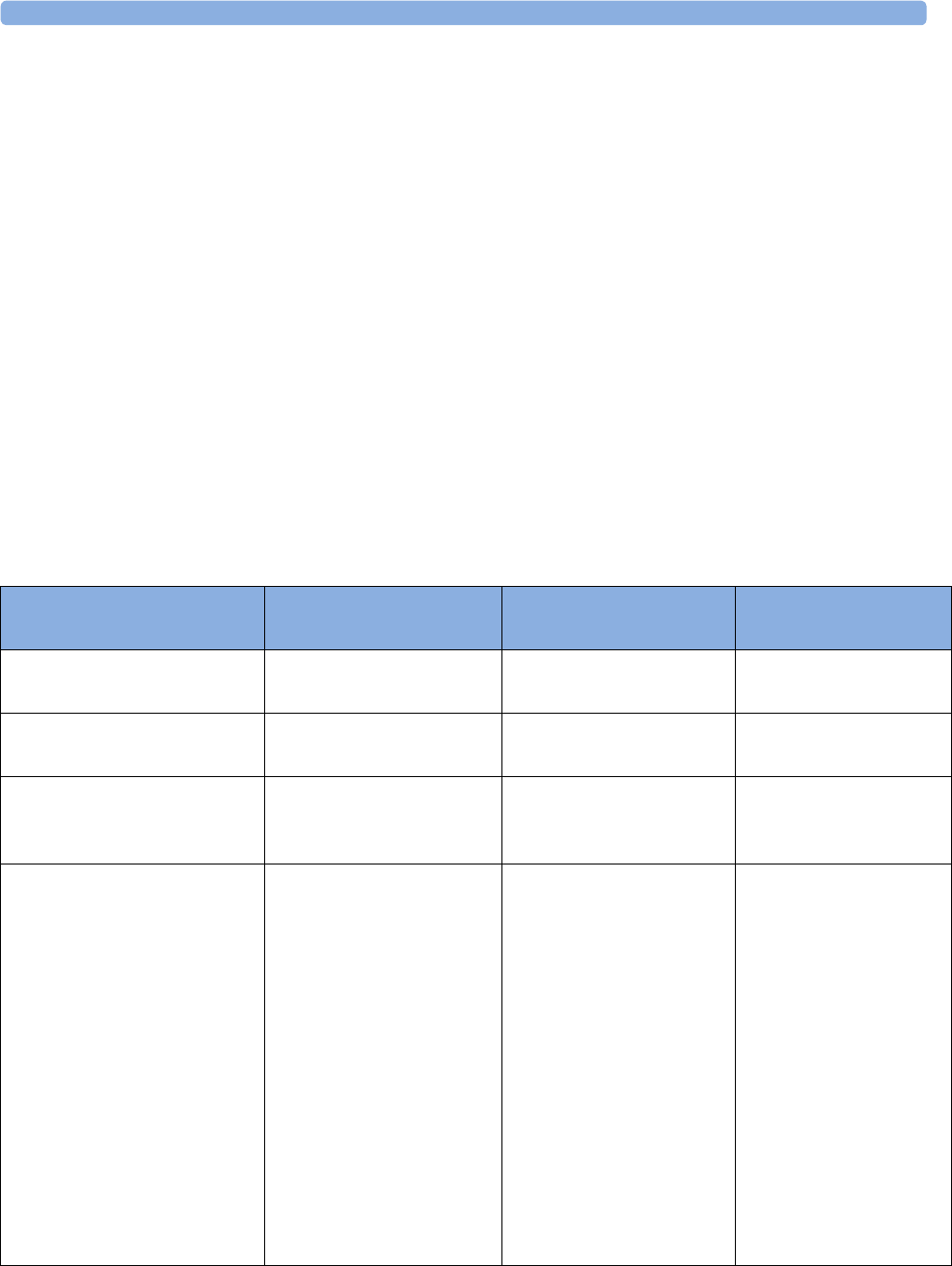
5 Managing Patients and Equipment
111
• when no basic vitals (HR, RR, Pulse, SpO2, NBP) have been measured for a specified period
The pop-up window is entitled Is this a New Patient?. The monitor offers a Yes key to stop
monitoring for the previous patient and begin monitoring a new patient and a No key to continue
monitoring with the current patient data and settings.
The time periods for the three conditions can be configured independently.
Transferring Patients
To save you from having to enter the same patient data multiple times and enable patient transfer
without loss of data, information can be shared between Multi-Measurement Modules (MMS), patient
monitors, and Information Centers.
– patient demographic information is shared between connected MMSs, patient monitors, and
Information Centers
– measurement settings and calibration data can be uploaded from an MMS to a patient
monitor, if configured
– trend information can be uploaded from an MMS to a patient monitor, if configured.
Different sets of patient and measurement-related data are stored in the monitor and the Multi-
Measurement Module. Understanding this will help you to understand what happens to patient data
when you transfer patients.
Patient Information Stored in Monitor Stored in X1 MMS and
extensions
Stored in X2 MMS and
extensions
Patient demographics (name,
DOB, patient IDs)
yes yes yes
Monitor settings (alarm
pause time, alarm volume)
yes no no
Measurement settings for all
measurements (alarm limits,
measurement on/off, etc.)
yes yes, for all MMS and MMS
extension measurements
yes, for all MMS and
MMS extension
measurements
Trend data yes, for all MMS, MMS
extension and measurement
module measurements (up to
a maximum of 24 or 32 or 50
or 100, depending on your
database configuration)
yes, most recent 8 hours of
information, for all MMS
and extensions
measurements
yes, most recent 8 hours
of information. A
standalone X2 stores all
MMS and MMS extension
measurements (up to a
maximum of 50
measurements).
During Companion Mode
the X2 stores all MMS and
MMS extension
measurements and
measurements collected
by the host monitor from
measurement modules (up
to a maximum of 50
measurements)
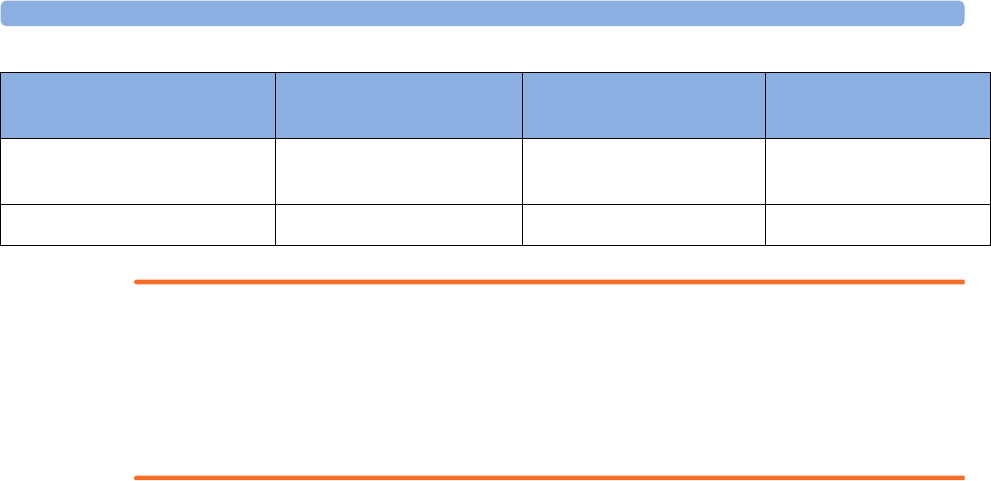
5 Managing Patients and Equipment
112
WARNING
If the monitor is not battery-powered, you cannot monitor during transport.
Measurements from an MMS extension connected to an X2 are not available when the X2 is running
on its own battery power. They are only available when the X2 is powered by external power: when
connected to a host monitor, to the external power supply (M8023A) or to the Battery Extension
(865297).
The following sections describe the transfer procedures with a PIIC iX, a PIIC or with a standalone
monitor.
Data Exchange Between Information Centers
You can transfer demographic data and trend data from one IIC to another by selecting Transfer on
the patient monitor. Trend data is not shared between Information Centers and monitors.
Transferring Patients with IntelliVue Information Center iX
PIIC iX There are several ways to transfer a patient from or to another bed. When a patient is transferred to the
destination bed, Information Center monitoring continues in the destination bed and equipment that is
not transferred with the patient is freed up.
Using the Transfer Function
PIIC iX To transfer a patient using the transfer function provided on the patient monitor by the Information
Center:
1Select the patient name or the Not Admitted text at the top of the monitor screen to open the
Patient Demographics window.
2Select the Transfer pop-up key.
The Transfer window opens. If a patient is currently admitted, the window offers the possibility to
transfer that patient to another bed (To Other Bed). If no patient is currently admitted, the
window offers the possibility to transfer a patient from another bed using the patient search as
described in “Using "Find Patient" to Search for Patient Data” on page 107.
3With To Other Bed, if more than one unit is configured, a list of units will appear. When you have
selected a unit, or if only one unit is configured, a list of free beds will appear.
4Select a bed from the list.
You will be asked to confirm the transfer of the patient to this bed.
5Select Confirm to complete the transfer.
Calculation data (HemoCalc
data)
yes no no
Events data yes no no
Patient Information Stored in Monitor Stored in X1 MMS and
extensions
Stored in X2 MMS and
extensions
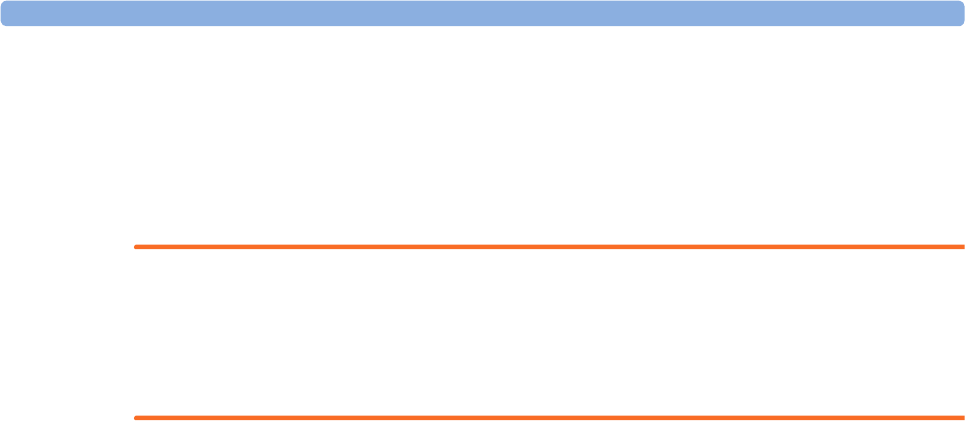
5 Managing Patients and Equipment
113
If the system is configured to support transfer with equipment, the next step is that you move the
patient together with the equipment, e.g. multi-measurement module, to the destination bed you
have selected. If the equipment is still connected to the source bed, the Transfer with Equipment
window opens requesting you to move the patient and equipment, but also offering the possibility
to keep the multi-measurement module at the current bed for use with the next patient (with the
pop-up key No Unplug).
WARNING
Before doing a transfer ensure that no other patient is using the destination bed and/or equipment
from the destination bed.
When a patient is transferred you need to check that the patient has all the required monitoring
equipment at the destination bed.
Moving the Patient with an MMS
PIIC iX 1Connect the Multi-measurement Module to the patient monitor at the destination bed.
A Question window will open, asking whether you want to transfer the patient to this bed.
2Select the Yes pop-up key to complete the transfer.
Using the New Patient Key
PIIC iX If the monitor at the destination bed is not free:
1Select the patient name field at the top of the monitor to open the Patient Demographics
window.
2Select New Patient to free up the monitor.
3Select Find Patient and enter your patient's name to get the patient data from the system.
When you select your patient from the list, you will be asked to confirm that the patient should be
transferred into this bed. After confirmation the transfer is complete.
Transferring Patients with IntelliVue Information Center
Transferring a Centrally-Monitored Patient
PIIC Scenario: A centrally-monitored patient is moved to another monitoring location on the same
Information Center database server without interrupting the collection of patient trend information.
1Before you disconnect the MMS from the monitor, select the patient name field or select the
Patient Demogr. SmartKey to open the Patient Demographics window, then select the Transfer
pop-up key. If the patient is not admitted or not monitored by an Information Center, the
Transfer key is inactive ("grayed-out").
This step preserves the patient's demographic data during the transfer.
2Remove the MMS and any connected extensions from the monitor.
3Silence the resulting MMS Unplugged INOP.
4Connect the MMS to the transport monitor and monitor your patient during the move.

5 Managing Patients and Equipment
114
5At the new location, connect the MMS to the monitor. If the monitor detects a patient mismatch,
a window will open showing your patient's data and asking whether to Complete transfer of this
patient?.
6Select Yes to complete the transfer. This re-admits the patient from the transfer list to the new
monitor. This will upload the patient demographics, and, if configured, the measurement settings
and trend data stored in the MMS to the receiving monitor.
7Verify that the settings for patient category and paced mode are correct.
WARNING
Measurements from an MMS extension connected to an X2 are not available when the X2 is running
on its own battery power. They are only available when the X2 is powered by external power: when
connected to a host monitor, to the external power supply (M8023A) or to the Battery Extension
(865297).
Transferring a Centrally-Monitored Patient with X2
PIIC Scenario: A centrally-monitored patient is moved to another monitoring location on the same
Information Center database server without interrupting the collection of patient trend information.
1Before you disconnect the X2 from the host monitor, select the patient name field or select the
Patient Demogr. SmartKey to open the Patient Demographics window, then select the Transfer
pop-up key. If the patient is not admitted or not monitored by an Information Center, the
Transfer key is inactive ("grayed-out").
This step preserves the patient's demographic data during the transfer.
2Remove the X2 and any connected extensions from the monitor.
3Silence the resulting MMS Unplugged INOP.
4Move the patient using the X2 as the transport monitor.
5At the new location, connect the X2 to the new host monitor. If the monitor detects a patient
mismatch, a window will open showing your patient's data and asking Complete transfer of this
patient?.
6Select Yes to complete the transfer. This re-admits the patient from the transfer list to the new
monitor. This will upload the patient demographics, and, if configured, the measurement settings
and trend data stored in the X2 to the receiving monitor.
7Verify that the settings for patient category and paced mode are correct.
Transferring a Centrally-Monitored Patient with X2 using IIT
PIIC Scenario: A centrally-monitored patient is moved with an X2 to another monitoring location on the
same Information Center database server without interrupting the collection of patient trend
information. The X2 has an IntelliVue Instrument Telemetry interface (IIT), is connected to a host
monitor, and is declared as a telemetry device at the Information Center.
NOTE
The Transfer key is not available while the X2 is connected to a host monitor (Companion Mode is
indicated).
1Remove the X2 and any connected extensions from the host monitor.

5 Managing Patients and Equipment
115
2Move the patient using the X2 as the transport monitor.
3At the new location, just before connecting the X2 to the new host monitor:
–open the Patient Demographics window.
– select the Transfer pop-up key.
–wait until the transfer has completed.
4Connect the X2 to the new host monitor. The monitor detects a patient mismatch and a window
will open showing your patient's data and asking Complete transfer of this patient?.
5Select Yes to complete the transfer. This re-admits the patient from the transfer list to the new
monitor. This will upload the patient demographics, and, if configured, the measurement settings
and trend data stored in the X2 to the receiving monitor.
6Verify that the settings for patient category and paced mode are correct.
If you accidentally transfer a patient, use Re-Admit to restore this patient's data to the Information
Center. If you are not connected to the network, select Clear Transfer to leave transfer mode. The
patient data remains in the monitor.
Transferring Patients with Standalone Monitors (No Information
Center)
Transferring a Patient with an X1
Scenario: A patient is moved to another monitoring location using a transport monitor and re-admitted
at the new monitor.
1Disconnect the X1 from the original monitor and silence the resulting Unplugged INOP.
If you are sure that the patient will not be returning to this monitor, you should perform a
discharge or end-case. This prevents data from the next patient accidentally being mixed up with
your current patient's data.
2Connect the X1 to the transport monitor and move the patient.
3At the new monitoring location, remove the X1 from the transport monitor and connect it to the
new monitor.
4If prompted, re-admit the patient to the new monitor: in the Select Patient window, select the
patient in the X1 to retain the data in the X1. This will upload the patient demographics, and, if
configured, the measurement settings and trend data stored in the X1 to the monitor. Verify that
the settings for patient category and paced mode are correct.
Transferring a Patient with an X2
Scenario: A patient is moved to another monitoring location using the X2 and re-admitted at the new
monitor.
1Disconnect the X2 from the original host monitor and silence the resulting Unplugged INOP.
If you are sure that the patient will not be returning to this monitor, you should perform a
discharge or end-case. This prevents data from the next patient accidentally being mixed up with
your current patient's data.
2Move the patient using the X2 as the transport monitor.
3At the new monitoring location, connect the X2 to the new host monitor.

5 Managing Patients and Equipment
116
4If prompted, re-admit the patient to the new monitor: in the Select Patient window of the new
monitor, select the patient in the X2 to retain the data in the X2. This will upload the patient
demographics, and, if configured, the measurement settings and trend data stored in the X2 to the
monitor. Verify that the settings for patient category and paced mode are correct.
Data Upload from an MMS
The Multi-Measurement Module stores eight hours of patient trend data at one-minute resolution. It
also stores patient demographic information and the measurement settings and calibration data for the
measurements carried out by the MMS and any connected extensions. This data can be uploaded to an
IntelliVue patient monitor, if your monitor is configured to do so and if at least five minutes of trend
information is stored in the MMS.
Your monitor's data upload settings are defined in Configuration Mode to suit your patient transfer use
model.
How data is uploaded to the host monitor depends on the configuration mode settings Trend Upload
and Settings Upload.
If there is a patient mismatch and you select Continue Monitor, no data will be uploaded from the
MMS.
Resolving Patient Information Mismatch
When you connect together devices which store patient demographic data, for example:
• an MMS and a monitor,
• an X2 and a host monitor,
• a monitor and an Information Center,
the system compares patient category, paced status, and unique patient identification in order to
synchronize this information. If configured to do so, the monitor indicates a mismatch if the
information is not identical.
Depending on your monitor's configuration, this mismatch may be automatically resolved or you may
have to resolve it manually. If your monitor is configured to resolve mismatches automatically,
depending on the configuration, either the monitor or the Multi-Measurement Module data is
automatically retained.
WARNING
• It is important to resolve the mismatches as soon as they are identified. Failure to do so could
result in using incorrect/confusing data to make clinical decisions. Certain settings, for example
Paced Mode and Patient Cat., may not match between the Information Center and the monitor.
If the Paced Mode is set incorrectly, the system could mistake a pace pulse for a QRS and fail to
alarm in the case of asystole. It is important that the patient category is set correctly so the ECG
can be analyzed correctly and initial arrhythmia alarm limits set. A Check Patient ID INOP will
appear when a mismatch has not been resolved.
• As long as patient mismatch has not been resolved, data integration in the Information Center and
the own patient overview functionality might not work as equipment is not assigned correctly to
the patient.

5 Managing Patients and Equipment
117
PIIC • When a monitor is connected to an Information Center by the wireless IntelliVue Instrument
Telemetry interface, the patient data will automatically be merged in the case of a transfer. This
means there is no patient discharge at the monitor and settings and trend data will be retained. You
will see a message on the monitor and the Patient Demographics window will automatically
appear so that you can check the data and change it if necessary.
In the case where an X2 with an IntelliVue Instrument Telemetry interface is declared as a "telemetry
device" at the Information Center and is connected to a host monitor, it is important to resolve an
existing mismatch between the monitor and the Information Center before disconnecting the X2.
Failure to do so discharges the X2 and synchronizes the demographics and settings to the
Information Center.
Manually Resolving Patient Mismatch
The patient mismatch is indicated by question marks (???) beside the questionable fields in the Monitor
Info Line and in the Select Patient window. The monitor displays a message such as Different
patients in Central and Monitor.
The Select Patient window automatically opens so you can decide which patient data to use. You do
not have to resolve the mismatch immediately, but the indicators remain until you do. After 5 minutes
a Check Patient ID INOP will appear to remind you to resolve the mismatch.
For some common mismatch situations, the monitor will simplify the resolution by suggesting a
solution for the mismatch. For example, when a patient arrives after transport and the Transfer key
has been selected, the monitor will show this patient's data and ask Complete transfer of this
patient?. You can then select Yes to complete the transfer. If you select No you will go to the Select
Patient window.
There can be up to three sets of demographic data in the Select Patient window if the patient is
different in the Information Center, monitor, and MMS.
After you resolve the mismatch, the monitor displays a confirmation window that shows the patient
that has been selected and where data will be erased, if applicable. Confirm your choice. The monitor
automatically displays the Patient Demographics window after confirmation. Verify that the settings
shown are correct for the patient.
Gender, date of birth, height, weight, and nursing notes do not generate a mismatch. If these fields are
different on different devices, the monitor resolves them itself. For example, it may take date of birth
from the Information Center, whilst taking gender from the MMS. Always check the Patient
Demographics after combining patients, to ensure that you are satisfied with the results. Change them
if necessary.
WARNING
After resolving a patient mismatch, check that the monitor settings (especially patient category, paced
status and alarm limits) are correct for the patient.
Patient Mismatch - If One Set of Patient Data is Correct
If there is a mismatch between an Information Center and a monitor, or a monitor and an MMS,
choose the data set you want to continue using for this patient by selecting one of the sectors in the
Select Patient window.
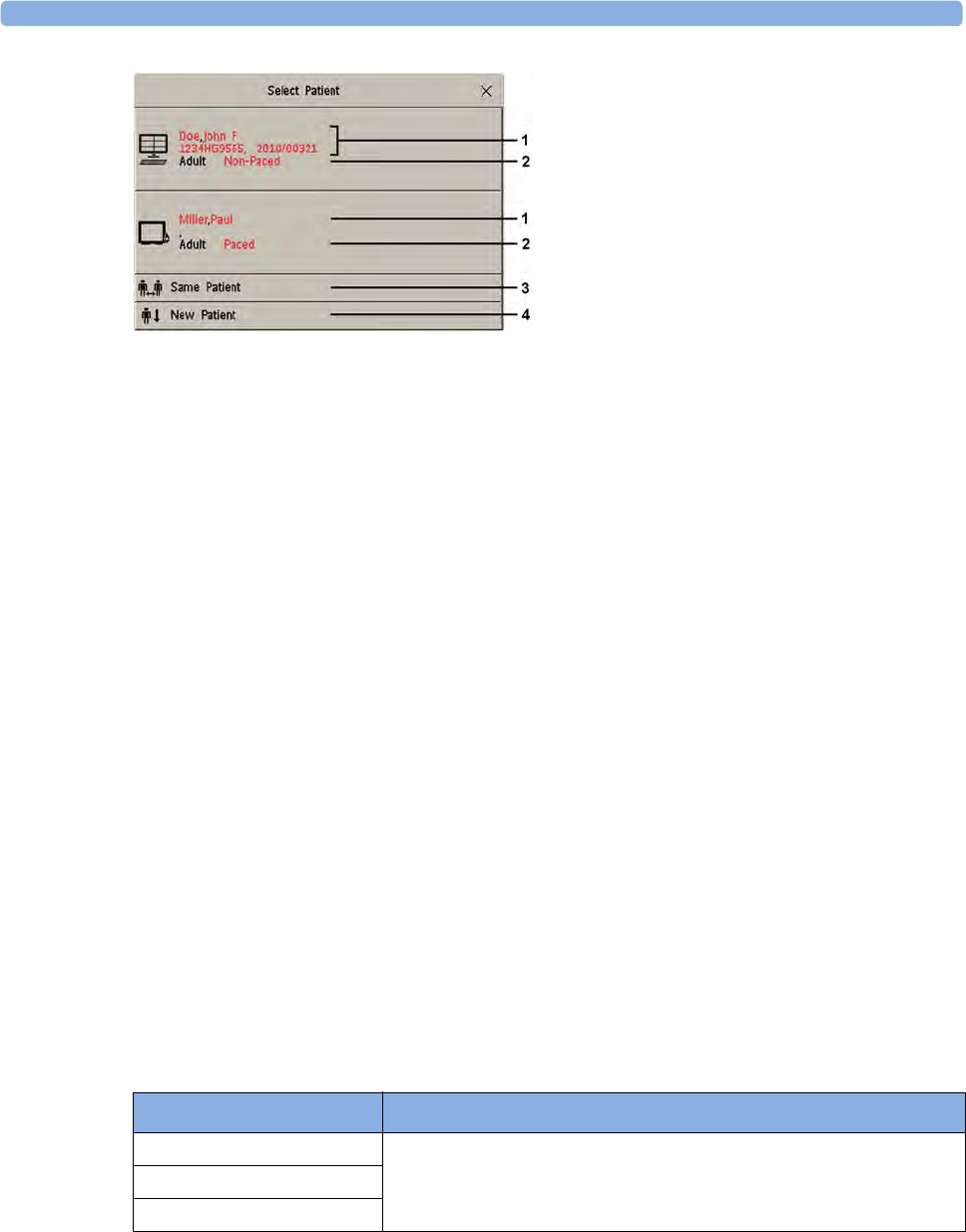
5 Managing Patients and Equipment
118
1Patient demographics
2Patient category and paced status
3Same Patient - see “Patient Mismatch - If Both Patient Data Sets Refer to the Same Patient” on
page 118.
4New Patient - see “Patient Mismatch - If Neither Patient Data Set is Correct” on page 118.
After you resolve the mismatch, the monitor displays a confirmation window that shows the patient
that has been selected and where data will be erased, if applicable. Confirm your choice. The monitor
automatically displays the Patient Demographics window after confirmation. Verify that the settings
shown are correct for the patient.
Patient Mismatch - If Neither Patient Data Set is Correct
A patient mismatch where neither set of patient data is correct might occur if you connect a new MMS
to a monitor in order to prepare for a new patient, before you actually start measuring.
Select New Patient if you are sure that none of the information is correct. This uses the bed, monitor
and MMS for a new patient, erases all data in both the monitor and MMS, resets all settings to the
default Profile, and lets you admit a new patient.
Patient Mismatch - If Both Patient Data Sets Refer to the Same Patient
A patient mismatch where both sets of patient data are correct might occur if you admit a new patient
at the monitor (or Information Center) before the patient arrives at your unit and then connect the
MMS that was used during the patient transport to the monitor.
Select Same Patient if the patient information is different, but you are sure it is the same patient. This
merges the demographics and updates them in the Information Center, monitor, and MMS, according
to this table. Be aware that your monitor may be configured to merge trend data from the MMS and
the monitor, and to upload measurement settings from the MMS to the monitor.
Patient Information This information is taken from...
Patient name the monitor, if the patient was admitted there. For centrally-admitted
patients, this information is taken from the Information Center.
Patient IDs
Screen Notes
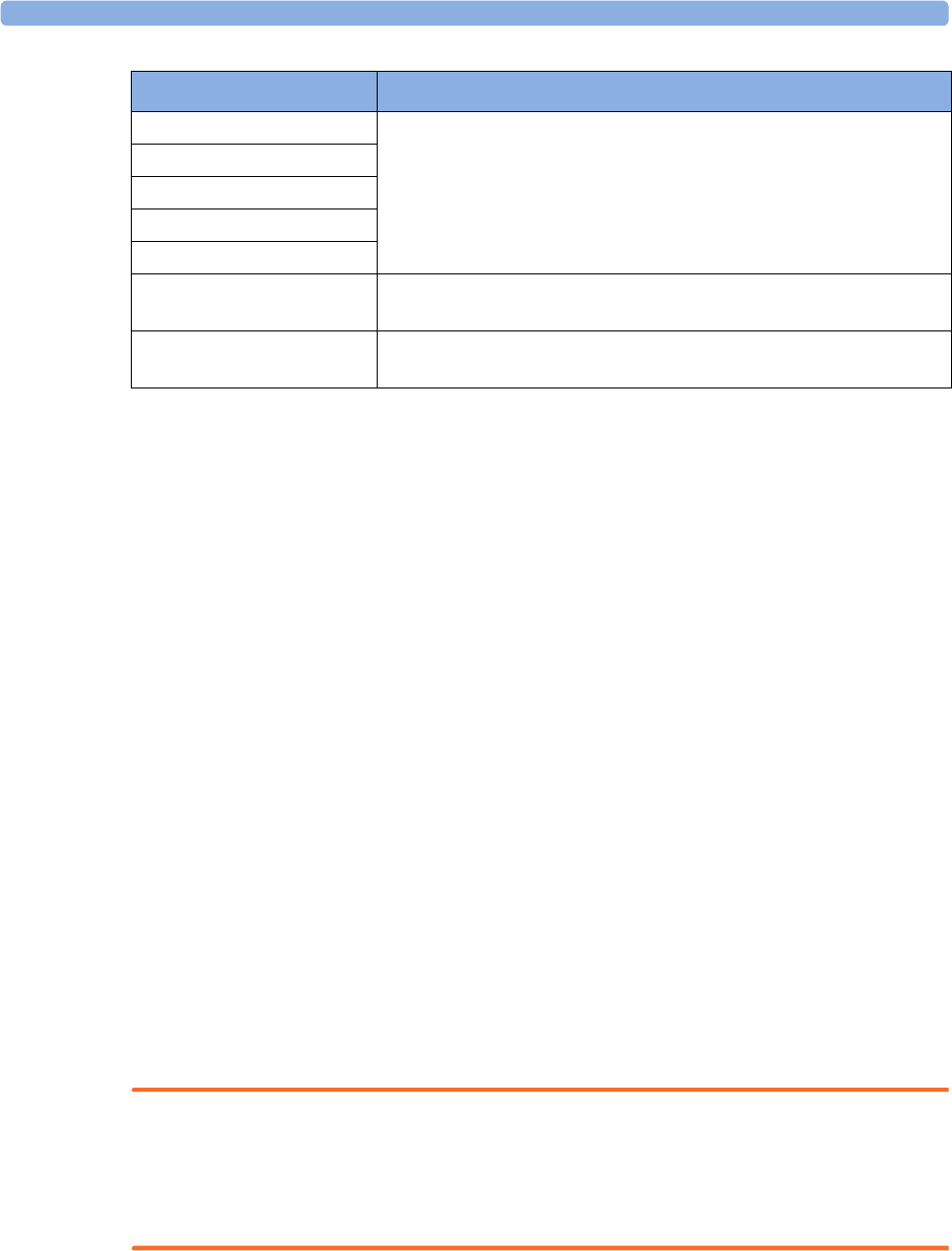
5 Managing Patients and Equipment
119
Automatically Resolving Patient Mismatch
Your monitor can be configured to automatically resolve mismatches in one of two ways.
• continue using the patient in the MMS, and delete the old data in the monitor. This is suitable for
transport monitors.
• continue with the patient in the monitor, and delete the data in the MMS.
When automatic mismatch resolution is configured, you may still be asked to confirm the resulting
action at the monitor, depending on the current patient admission status.
Managing Equipment
Multiple pieces of monitoring equipment can be used for a patient. The association between a patient
and a device can be made by:
• identifying the patient at the device (by entering patient data or using Find Patient to get patient
data)
• "adding" equipment for an existing patient
The association between a patient and a device can be ended by:
• discharging the patient, or selecting End Case.
• "removing" the device from the patient.
• transferring the patient without the device.
• admitting a new patient to the device.
• automatic freeing of the device.
WARNING
In all cases listed above, when equipment is freed, all patient identification and measurement data are
deleted, all settings are reset to the defaults, and monitoring at the Information Center (if active) is
stopped. Any associated devices, e.g. multi measurement modules connected to a monitor, or cableless
measurement devices assigned to a monitor, may also be freed, depending on the configuration.
Patient Category the Multi-Measurement Module, if connected, otherwise the data is
taken from the monitor.
Date of Birth
Height
Weight
Gender
Paced Mode Paced mode is always set to On where there is a mismatch in patient
information.
Trend data if there is newer trend data stored in the MMS, it is uploaded to the
monitor.
Patient Information This information is taken from...
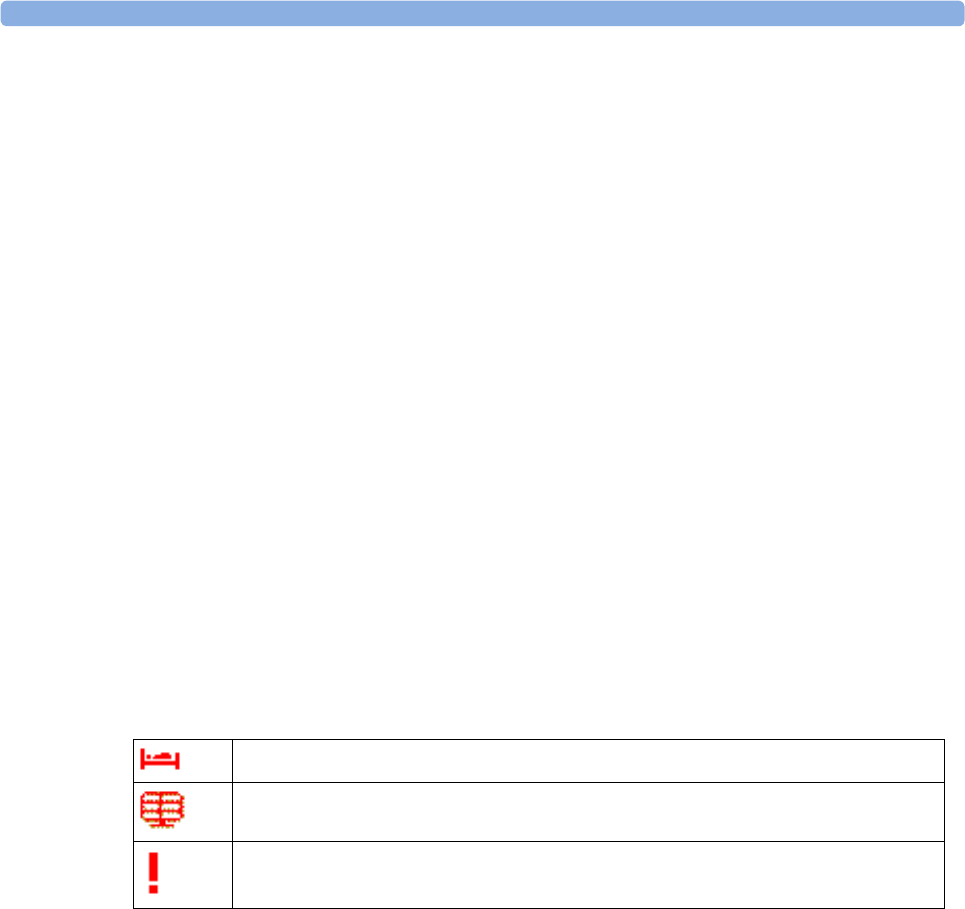
5 Managing Patients and Equipment
120
Adding Equipment (PIIC iX)
By selecting the Add Equipm. key you can display a list of all free equipment (not currently assigned to
a patient) and select a device for use with this patient. If you add another monitor, you need to confirm
this at the selected monitor.
Removing Equipment
The association between a monitor and the patient can be ended by selecting Remove Monitor. With
PIIC iX, the Remove Monitor key is not available when the monitor is locked to a bed.
Other equipment such as telemetry devices or IntelliVue Cableless Measurements can be removed by
selecting the device then selecting Remove in the menu displayed.
Equipment Status Disputes
Equipment can come into situations where its status does not match its location. There are three
typical situations where this may occur:
• PIIC iX only - equipment is locked to a bed, but has been removed and used at another bed.
• PIIC iX only - equipment has been configured for use in a specific unit, but is now being used in a
different unit.
• Equipment has an equipment label but has not been configured at the Information Center and
therefore cannot be managed.
If a monitor or a companion device is in one of these situations, a Check Equipment INOP will
appear and the equipment status will be shown in the Equipment window.
The following symbols (in red) are used to show the status in the Equipment window:
Using the Equipment Window
In the Equipment window you have access to patient management, workflow functions (set location,
transfer), equipment management functions (add/remove equipment) and caregiver-related functions.
You can open the Equipment window directly in Main Setup or by selecting the bed label in the
information line.
equipment is locked to another bed
equipment is not configured for use in this unit
equipment label is not in system configuration, or duplicate equipment labels
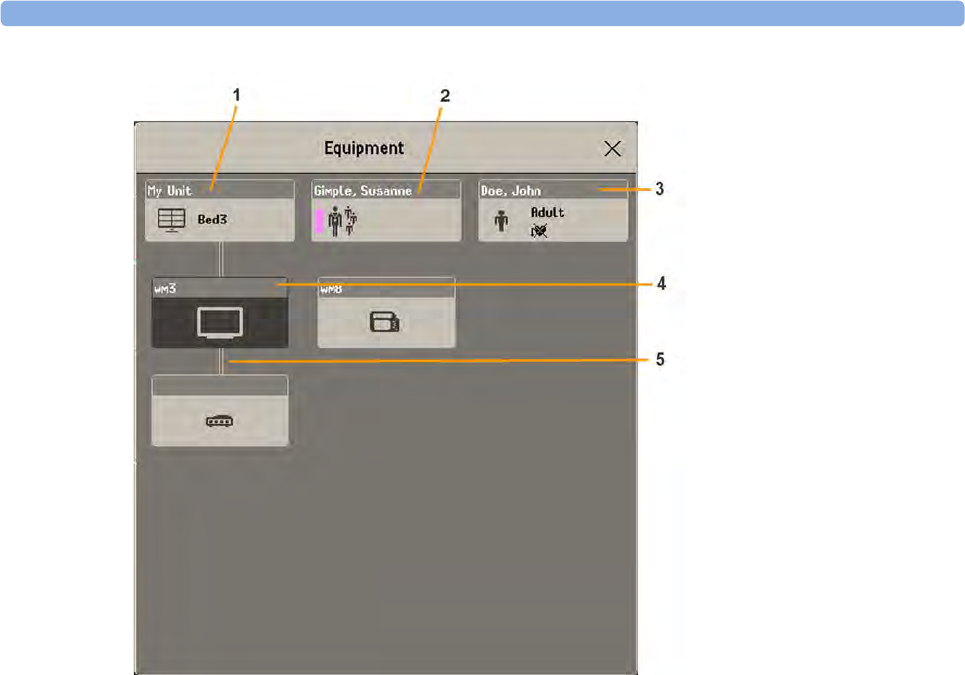
5 Managing Patients and Equipment
121
1This bed is Bed 3, the connection to the Information Center is active.
2Name of assigned caregiver
3Patient name, category and paced mode
4This monitor is assigned to the patient and is the one on which you are viewing the window.
5Wired connection
The top part of the window contains the patient data, with the assigned caregiver and the status of the
connection to the Information Center, and the bed label. In the lower part of the window, all
equipment for this patient is shown, with the corresponding assignments and connections.
The device you are currently viewing the window on is shown with a dark background (in the above
example, the monitor with the label wm3).
Changing Caregiver Assignment
When a caregiver is assigned, the caregiver name appears next to the caregiver symbol in the
Equipment window. When you select this area of the window, a menu opens offering the following
functions:
PIIC iX •Select Caregiver - you can select a different caregiver from a list. When a new caregiver is
assigned, the patient will be automatically added to that caregiver's Care Group. The availability of
the function and the caregiver list depends on the Information Center configuration.
•My Patients - opens the My Patients window showing all patients in your Care Group.
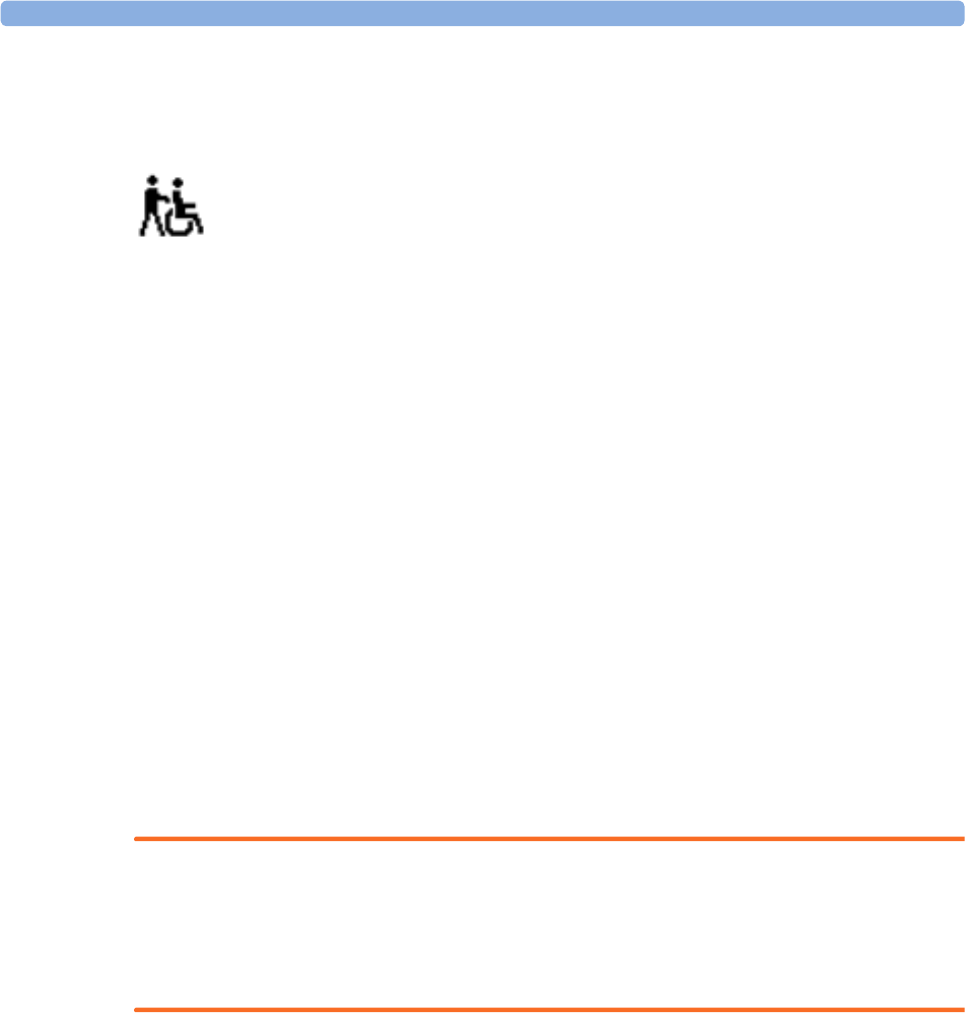
5 Managing Patients and Equipment
122
Using the Patient Area
The patient name, patient category and paced status are normally shown in the Equipment window.
When a patient has been prepared for transfer, the transfer symbol will be shown:
When you select this area in the Equipment window, a menu opens giving access to the Enter Patient
Demographics window, the Transfer function (see “Transferring Patients” on page 111) and the End
Case function.
Changing the Location
If the monitor is currently assigned to a bed, but the patient is in another department for treatment or
a diagnostic procedure, you can show a temporary location for the patient.
1Select the Information Center area on the Equipment window.
2Select the current location from the list.
Or alternatively use the Select Location pop-up key.
The temporary location is then shown in the Equipment window, on the Standby screen on the
monitor, and in the sector at the Information Center. When the patient returns, you can set the
location back to the bed number in the same way as described above.
When Multiple Equipment is Used for One Patient
It is possible to assign additional monitoring equipment and a telemetry device to the same patient,
resulting in the information from multiple devices being combined in one sector at the Information
Center. The measurement data from the other devices will be displayed on the monitor screen in the
own patient overview window.
WARNING
When new equipment has been added for a patient, you will be asked to confirm that the device be
used for the patient. Always do this as soon as possible to avoid patient data mismatch.
If multiple equipment is assigned to the patient, resolving a patient mismatch at the monitor may
resolve other pending patient mismatches or remove other associated equipment.
Own Patient Overview Window
The measurements from other monitoring devices and telemetry devices are shown combined in the
own patient overview window on the monitor, together with related information derived by the
Information Center, such as alarms.
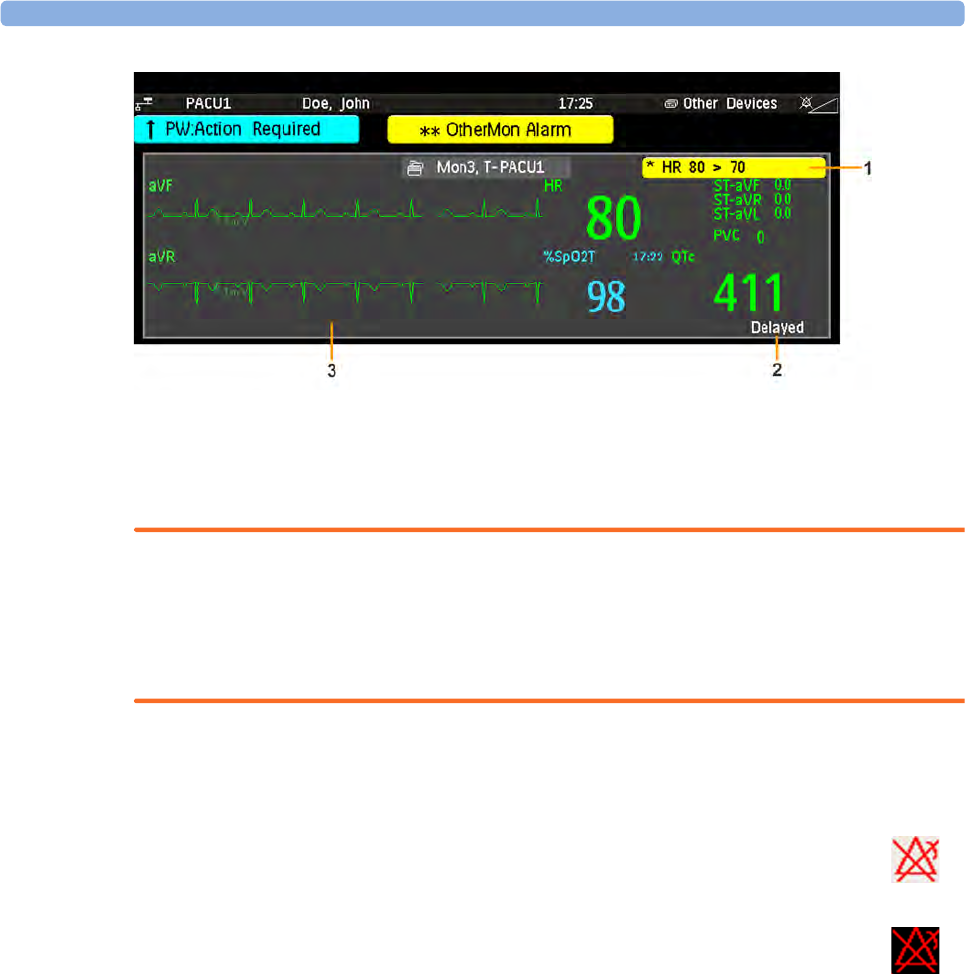
5 Managing Patients and Equipment
123
1A current alarm generated by another device.
2Delayed - indication that data in the window is delayed.
3Own patient overview window
WARNING
All data presented in the own patient overview window are delayed for several seconds.
If you need realtime data, for example for defibrillation, always use the host monitor ECG instead of
telemetry or ECG from another monitoring device. As long as the ECG is being measured with
another device there will be no ECG signal available at the ECG analog output.
Visual Alarm Status Information in the Own Patient Overview Window
Controlling Other Devices from the Bedside
You can change ECG settings for the current ECG source from the patient monitor.
1Select the own patient overview window.
2Select the Setup Equipm. pop-up key.
A setup menu will appear with the settings available for the current ECG source. If it is a telemetry
transmitter or patient monitor connected to the Information Center via LAN or WLAN, the following
settings are available: adjust HR alarms, relearn arrhythmia, select primary/secondary ECG lead, select
arrhythmia analysis mode, change primary/secondary ECG lead size. PIIC iX only: if the current ECG
• If individual measurement alarms are switched off at any of the devices in use for the
patient, a crossed alarm symbol on a white background is shown beside the
measurement numeric
• If all alarms are switched off or paused for one of the devices in use for the patient, a
crossed alarm symbol on a dark gray background is shown beside all affected
measurement numerics (if so configured). If all red and yellow alarms are switched
off/paused, the crossed alarm symbol is red. If only yellow alarms are switched off/
paused, the crossed alarm symbol is yellow.
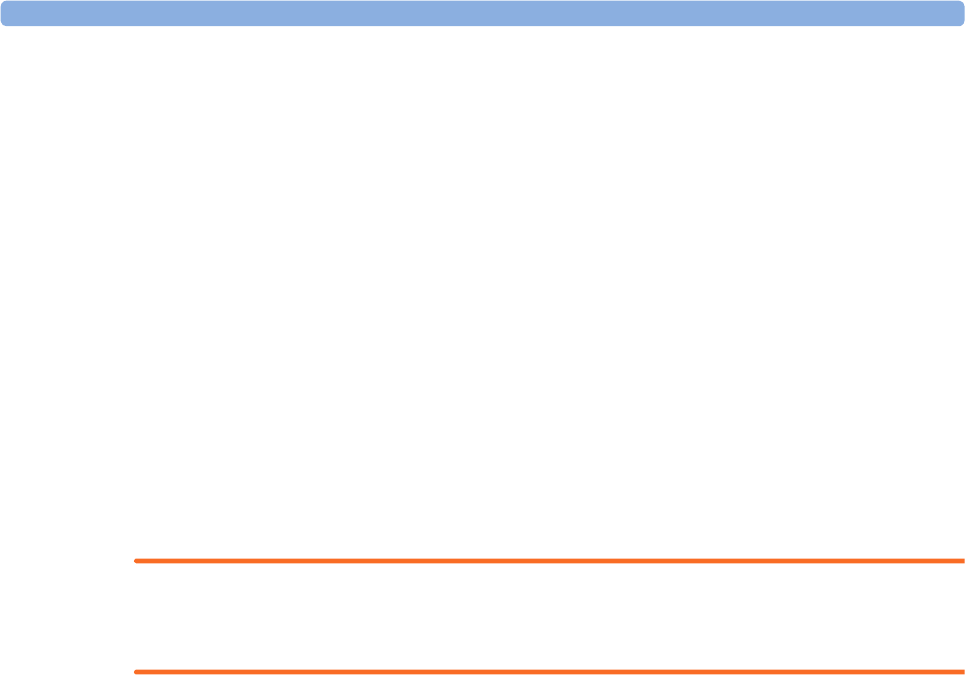
5 Managing Patients and Equipment
124
source is a patient monitor connected to the Information Center via IntelliVue Instrument Telemetry
(IIT), only the adjust HR alarms setting is available.
Viewing and Silencing Other Device Alarms at the Bedside
When other devices are assigned to the patient, alarms from those devices will also be indicated on the
monitor, in addition to the main indication at the Information Center.
If configured, a generic alarm message will appear in the alarm status area with standard alarm tones.
The alarm message will have the color and * or ! coding corresponding to the severity of the alarm.
The specific alarm message (for example ** HR Low) will appear in the own patient overview window.
If configured, alarms generated from another device can be silenced at the bedside. Either the monitor
Silence key is configured to silence both monitor and other device alarms (must be configured at the
Information Center) or the Silence Bed pop-up key will be available:
1Select the own patient overview window.
2Select the Silence Bed pop-up key.
Depending on your Information Center configuration, the Silence Bed key may silence both other
device alarms and bedside alarms.
WARNING
Even when the other device data is not visible on the screen, you may be silencing monitor alarms and
other device alarms, if the Information Center and monitor are so configured.
Switching Off or Pausing Alarms From Other Devices
When you select Pause Alarms or Alarms Off at the monitor, the alarms are off or paused for the
bedside measurements. When you switch alarms off or pause alarms at the Information Center, both
monitor alarms and alarms from other assigned devices are affected.
Refer to the Information Center Instructions for Use for more details on the Suspend/Pause alarms
behavior of the Information Center.
Using Standby
When you select Standby mode at the monitor, the bedside goes into Standby mode but other assigned
devices may continue monitoring.
Refer to the Information Center Instructions for Use for details on how selecting Standby at the
Information Center affects the monitor and other devices.
ECG Source Tracking at the Information Center
The Information Center continuously checks whether a valid ECG signal is coming from the monitor
or from another assigned device. If you unplug the ECG patient cable from the monitor and plug it
into another device, the Information Center will automatically switch to monitoring the ECG from the
other device. At the monitor, its own ECG measurement will be deactivated and the Setup ECG menu
will no longer be accessible.
When you unplug the patient cable from the other device and plug it back into the monitor again, the
Information Center will switch back to monitoring the ECG from the monitor.

5 Managing Patients and Equipment
125
The ECG measurement will be activated again at the monitor. [Note that in this case, as the screen
switches back to the monitor's own measurements, the SpO2T measurement (if present) will no longer
be displayed].
In the same way the source is tracked when a telemetry device is directly connected to a monitor, then
disconnected and vice versa.
In case of ambiguity, a yellow INOP message !!Check ECG Source indicates that more than one valid
ECG source is active.
Synchronized Settings
For some measurements, settings can be synchronized between the monitor and another measurement
device. For example, if ECG is measured at the monitor, and then the patient is connected to a
telemetry device for monitoring, the Information Center will use the monitor settings for the telemetry
device. In general, the following settings will be synchronized:
PIIC iX With the IntelliVue Information Center iX, the following additional measurement settings can be
synchronized:
Heart Rate HR/Pulse Alarm On/Off, Heart Rate High/Low Limit,
ECG ECG On/Off1, Primary Lead, Secondary Lead, Va Lead2, Vb Lead2, Lead
Placement
Arrhythmia Analysis Mode, Arrhythmia On/Off, Asystole Threshold, Pause Threshold,
VTach HR, VTach Run, PVCs/min, Vent. Rhythm, SVT HR, SVT Run,
PVCs/min On/Off, Pacer not capture On/Off, Pacer not pace On/Off,
Non-Sustain On/Off, Vent. Rhythm On/Off, Run PVCs On/Off, Pair
PVCs On/Off, Missed Beat On/Off, Pause On/Off, R-on-T PVCs On/
Off, Vent. Bigeminy On/Off, Vent. Trigeminy On/Off, Multiform PVCs
On/Off, Irregular HR On/Off, SVT On/Off, Afib On/Off, Afib/IrrHR
End Threshold, All ECG Alarm INOP mode.
ST ST Analysis On/Off, ST Alarm On/Off, ISO Point, J point, ST point, ST
Alarm Limits, ST-Index On/Off, ISO/J-Point Detection, ST Lead On/
Off, ST Baseline
QT QT analysis On/Off, QT Lead, QTc High Alarm On/Off, ΔQTc Alarm
On/Off, QTc High Limit, ΔQTc High Limit, QT Baseline3
SpO2TSpO
2 Alarms on/off, SpO2 Alarm limits, SpO2 Low Alarm Delay, SpO2
High Alarm Limit, Desat Alarm Limit
NBP Alarm Suppression On/Off, Pulse(SpO2) On/Off
1ECG On/Off setting is forced to ON by the monitor, if the local setting is ON.
2Va and Vb leads are reset to default (V2, V5) if the configured Va or Vb lead for the telemetry device is not one of V1
through V6.
3With PIIC, QT baseline is synchronized, but not QT snippets.
ECG/Arrhythmia Some ECG Alarms INOP On/Off
ST STE On/Off, STE Alarm On/Off
NBP Sys/Dia/Mean Alarm Limits, Alarms On/ Off, Alarm Source
Resp Apnea Time, Alarm Limits, Alarm On/Off, Resp On/Off
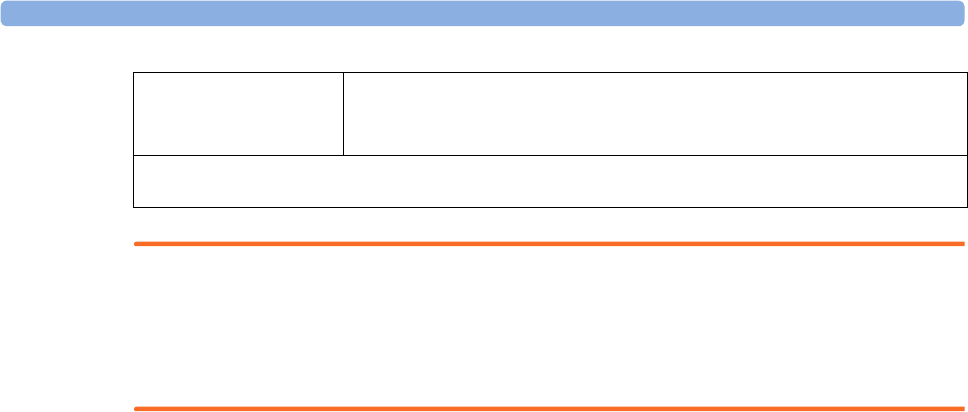
5 Managing Patients and Equipment
126
WARNING
• Not all settings are synchronized; after changing the measurement source, always check that the
settings are appropriate.
•ECG: Va and Vb leads are reset to default (V2, V5) if the configured Va or Vb lead for the
telemetry device is not one of V1 through V6.
If later the patient is disconnected from the other device, and reconnected to the monitor again, any
changes in the settings made in the meantime will be passed on to the monitor. In this way, settings
continuity is preserved when the measurement source changes.
NOTE
Settings synchronization can be switched off at the monitor in Configuration mode.
In certain situations, you will be asked to confirm that synchronization of settings is appropriate.
Settings synchronization can only take place when there is no patient information mismatch between
the monitor and the Information Center.
PIIC If a Check ECG Settings or !! Check Pairing INOP appears always check that the ECG settings,
especially the paced setting, are appropriate for your patient.
PIIC iX If a Check ECG Settings, Chk SpO₂T Settings, or another check settings INOP appears, always check
that the settings, especially the paced setting for ECG, are appropriate for your patient.
Care Groups
If your monitor is connected to an Information Center, you can group bedside monitors into Care
Groups to facilitate caregiver assignment. This lets you:
• view information on the monitor screen from another bed in the same or in a different Care
Group.
• be notified of yellow or red alarm conditions at the other beds in the Care Group.
• see the alarm status of all the beds in the Care Group on each monitor screen.
The functions available with Care Groups depend on the Information Center revision your monitors
are connected to. See your Information Center Instructions for Use for further details.
Care Groups in PIIC iX
Units and Care Groups can be configured at the Information Center. The available sizes for units and
Care Groups are defined by the Information Center. Monitors can be added to or removed from an
existing care group at the monitor by assigning a new caregiver.
SpO2SpO2 Alarms on/off, SpO2 Alarm limits, Desat Alarm Limit, NBP Alarm
Suppression On/Off, Pulse(SpO2) On/Off, Measurement Mode1,
Repetition Time1
1Measurement Mode and Repetition Time can only be synchronized if SpO2 comes from a Cableless SpO2 Pod or a
telemetry device.
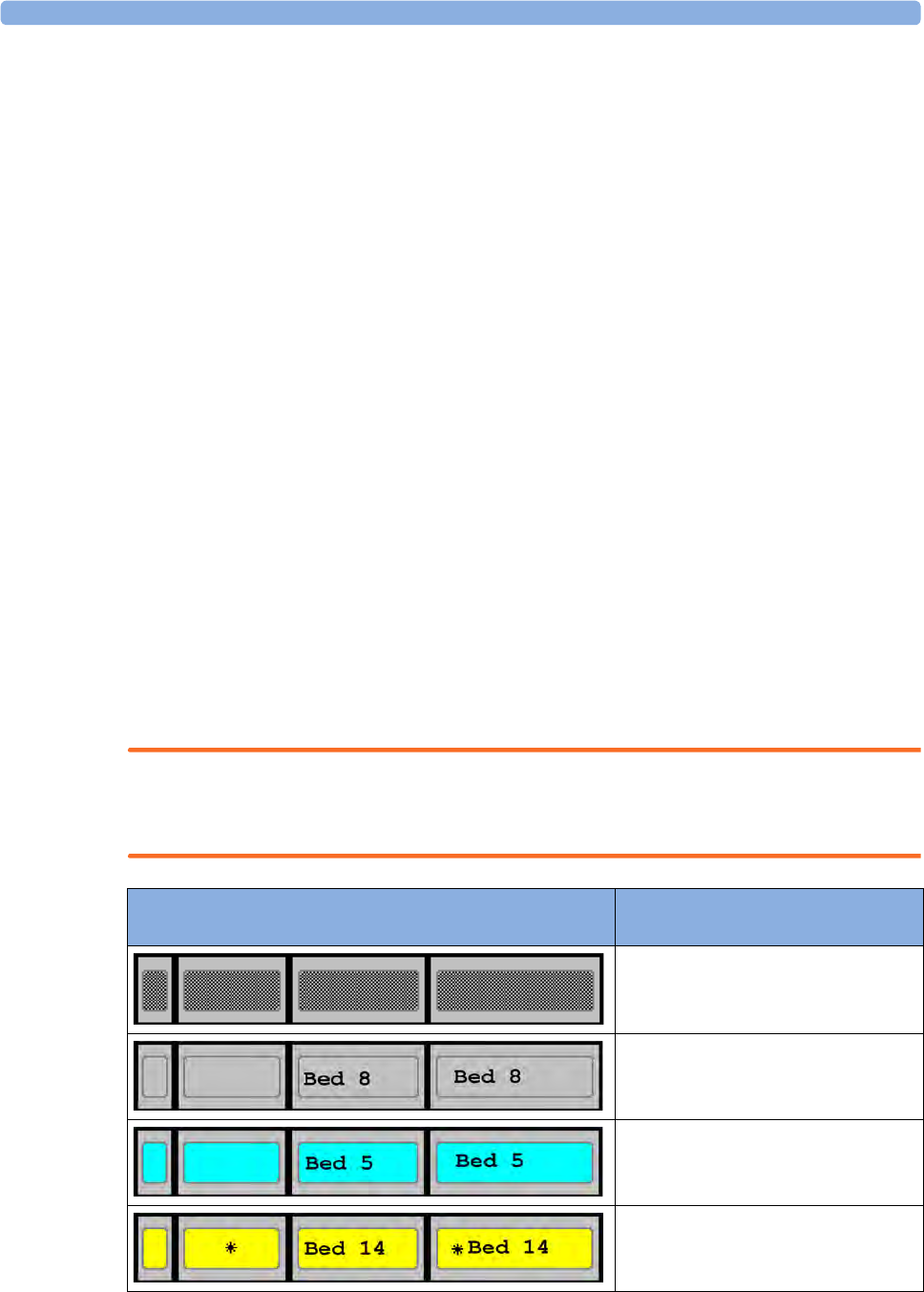
5 Managing Patients and Equipment
127
Care Groups in PIIC
There are two main types of Care Groups:
• standard care group (Bed-based Care Group) - up to 12 patients monitored by up to
4 Information Centers
• unit group (Unit-based Care Group) - for a complete unit with up to 64 patients monitored by
up to 4 Information Centers
Care Groups are configured at the Information Center. Monitors can be added to or removed from an
existing care group at the monitor. There is a third care group which can be assigned locally at the
bedside. This is the My Central care group which includes all beds (up to 16) from the Information
Center your bed is connected to. This care group setting is typically used in facilities with only one
Information center. The selection of beds is automatic and cannot be changed.
Understanding the Alarm Status Overview Bar
The Care Group monitors' and equipment status is shown in symbol form in the Alarm Status
overview bar. Flashing symbols indicate active alarms, symbols that are not flashing indicate alarms
that have been acknowledged. Selecting a bed symbol calls up the window for that bed or a setup
window to select it. Because multiple equipment can be used for one patient, it can occur that the
alarm status is different at different devices. The alarm status will then be consolidated and the highest
priority alarm information will be displayed.
The Alarm Status overview bar must be configured to display on the monitor Screen. If it is not visible
on your monitor, select a Screen which has been configured to show the bar. Some screens may show
the Care Group monitors grouped together in a tabular format on the right hand side of the screen.
PIIC iX Depending on the Information Center configuration, the Alarm Status overview bar may contain My
Patients (your own care group), My Unit (all beds from the unit) or it may not display at all.
WARNING
With PIIC iX, the alarm status overview bar is independent from the configured alarm pop-up
behavior.
Alarm Status Symbols (four alternative display possibilities
depending on space available)
No data from this bed
The alarms are on but there are no currently
active alarms from this bed
The highest priority alarm from this bed is a
standard INOP
The highest priority alarm from this bed is a
short yellow alarm
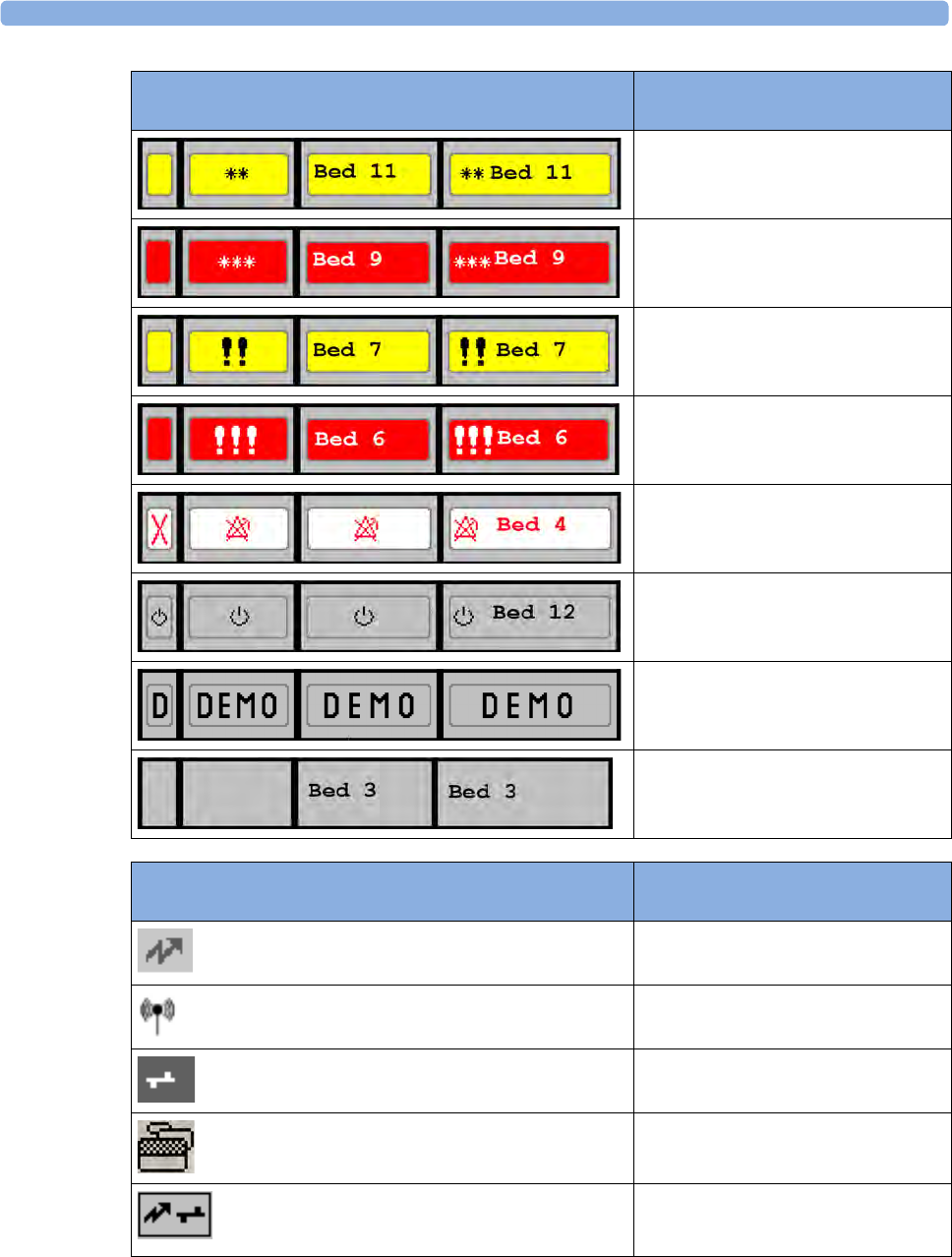
5 Managing Patients and Equipment
128
The highest priority alarm from this bed is a
yellow alarm
The highest priority alarm from this bed is a
red alarm
The highest priority alarm from this bed is a
yellow INOP
The highest priority alarm from this bed is a
red INOP
The alarms at this bed are suspended. The
same symbols in yellow indicate that yellow
alarms are suspended (PIIC iX only).
Equipment at this bed is in standby mode
Equipment at this bed is in Demonstration
mode
The current bed
Connection Symbols (used in the Alarm Status overview bar and
the My Patients window)
This is a telemetry bed.
This bed is on a wireless network.
This bed is on a wired network.
PIIC iX only: Patient has multiple devices
assigned.
PIIC only: This is a "paired" bed, with a
bedside monitor and a telemetry transmitter
assigned.
Alarm Status Symbols (four alternative display possibilities
depending on space available)

5 Managing Patients and Equipment
129
Viewing the My Patients Window
This window shows the alarm status, bed name, and patient name for every bed in the Care Group.
The window for the Unit group shows first the beds of the Information Center this bed is connected
to. By selecting the Information Center name at the top of the list, you can display a list of all
Information Centers associated with the Unit group, and select another Information Center to view.
To enter the My Patients window,
• select the Other Patients SmartKey, if configured, or
•in the Main Setup menu, select My Patients.
Use the My Patients pop-up keys to navigate through the Care Groups:
My Unit lets you view a list of all the Information Centers in your Care Unit. Select an Information
Center to see a list of the monitors connected to it. Select any monitor to see the Other Patient
window for that bed.
Alarming Beds lets you view a list of all beds in your care group with an unacknowledged alarm.
The beds are listed in order of alarm severity.
PIIC Other Units lets you view a list of all the Care Units in your Care Domain. Select any Care Unit to
view a list of the Information Centers connected to it. Select an Information Center to see a list of
the monitors connected to it. Select any monitor to see the Other Bed window for that bed.
PIIC iX Other Patients lets you search for a patient or step through lists by unit and bed label to select
another patient.
Viewing the Other Bed Window
The Other Bed window lets you view a subset of the waveform and numeric information from another
bed on the same network. Waves and numeric information from another bed are delayed. If
configured, Other Bed information is displayed in color, using the colors defined by the Information
Center.
The Other Bed window can be configured to pop-up automatically when an alarm occurs at another
bed. To avoid too many windows appearing (for example, in large care groups) and covering the
monitor's own bed data on the screen, you can temporarily disable this automatic pop-up:
1Select Main Setup then Network followed by Auto Window
2Select Disabled
When automatic pop-up is disabled in this way, an icon will appear as a reminder in the Care Group
Overview Bar next to the monitor's own bed label . Depending on the configuration, the
automatic pop-up is disabled for five minutes or until you set it to Enabled again.
• To open the Other Bed window, select the required bed label or patient name in the Alarm Status
Overview Bar. If you are in a Unit Group with many beds, the My Patients window may open for
you to select the bed.
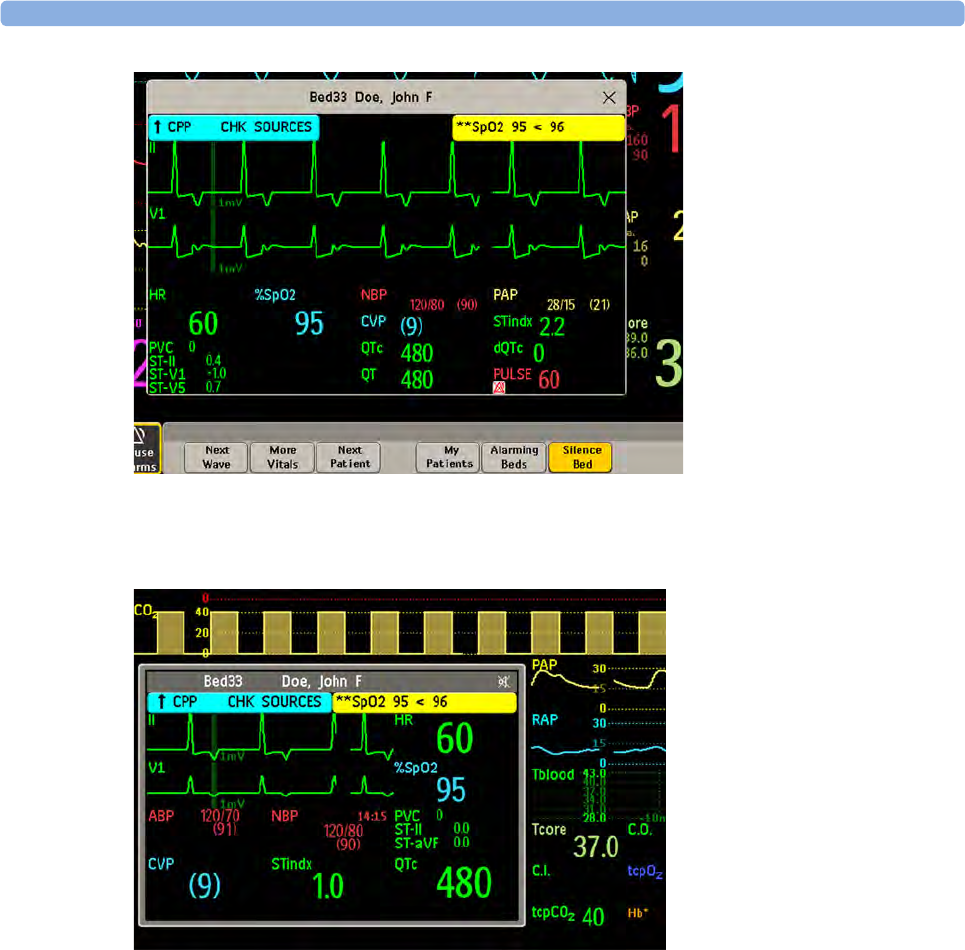
5 Managing Patients and Equipment
130
The Other Bed window may be configured to display embedded in a specially designed Screen.
• To display the embedded Other Bed screen element, in the Change Screen menu, select a Screen
designed to show the Other Bed information permanently.
Changing the Screen may automatically change the bed shown in the other bed window. If you switch
to a different Screen, you should check that the correct other bed is displayed.

5 Managing Patients and Equipment
131
Other Bed Pop-Up Keys
Select the Other Patients SmartKey or the Other Bed window or embedded screen element to access
the associated pop-up keys:
Next Wave lets you view waveforms not currently shown in the other bed window.
More Vitals lets you view more numerics not currently shown in the other bed window.
Next Patient lets you view waveforms and numerics from the next available patient in the Care
Group.
My Patients lets you call up the Care Group window to select another patient.
Alarming Beds lets you view a list of all beds in your care group with an unacknowledged alarm.
The beds are listed in order of alarm severity. With PIIC iX, the Alarming Beds window may also
contain beds that are not in your Care Group that have been escalated for higher attention.
Silence Bed lets you silence active alarms at the other bed. (Whether you see this key depends on
the revision and configuration of the Information Center your monitors are connected to.)
WARNING
The Silence Bed pop-up key in the Other Bed window silences alarms at a remote bed. Be aware that
accidental use of this key could silence alarms for the wrong patient.
To silence own bed alarms use the Silence permanent key on screen.
Visual Alarm Status Information in the Other Bed Window
Other Patient Alarms
Changes in the alarm status of beds in a Care Group are announced visually and audibly at all other
beds in the same Care Group. The visual and audible indicators used depend on the monitor and
Information Center configuration.
When an alarm is detected at another bed in the Care Group,
• the alarm status is shown in the Alarm Status overview bar as an icon.
• a message informing you about the other patient alarm is shown in the monitor status line.
• If individual measurement alarms are switched off at any of the devices in use at the
other bed, a crossed alarm symbol in red on a white background is shown beside the
measurement numeric.
• If all alarms are switched off or paused for one of the devices in use at the other bed,
a crossed alarm symbol on a black background is shown beside all affected
measurement numerics (if so configured). If all red and yellow alarms are switched
off/paused, the crossed alarm symbol is red. If only yellow alarms are switched off/
paused, the crossed alarm symbol is yellow.
• In the embedded Other Bed window, the crossed speaker symbol in the upper right
hand corner indicates that the volume of the audible alarm status change notification
for the other beds in the care group is set to zero at the overview monitor.
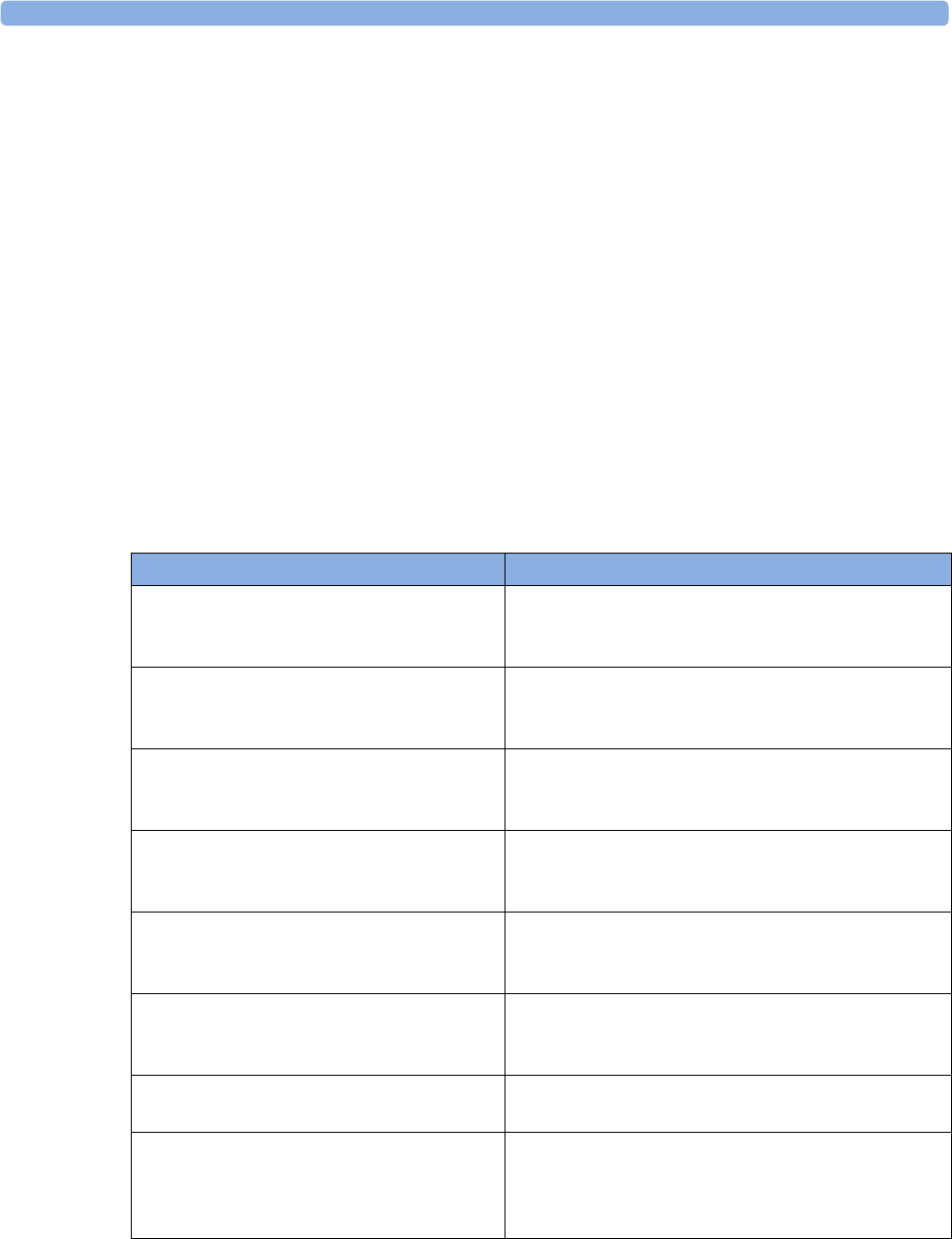
5 Managing Patients and Equipment
132
• if configured, the Other Bed window, the Alarming Beds window or the My Patients window may
pop up on the Screen (if automatic alarm notification is enabled at the bedside monitor and at the
Information Center). The automatic alarm notification is suppressed when a window, menu or
pop-up keys are active.
• if configured, an audible status change notification is issued. The tone type and volume can be
configured.
PIIC iX Automatic alarm notification can also cause a window to pop-up when a patient from outside the Care
Group has been escalated to a higher attention status. Check that the detailed configuration at the
PIIC iX meets your unit's requirements.
Automatic alarm notification can be switched off permanently in the monitor's Configuration Mode or
at the Information Center.
Information Center Compatibility
The functionality available for managing patients and equipment depends on the IntelliVue
Information Center being used. In the following table the main differences between the PIIC and PIIC
iX are shown.
PIIC PIIC iX
Not available Find Patient - searching for a patient in the
Information Center or other connected hospital
systems. (With LAN and WLAN connection only)
Transfer Patient - patient is moved to
transfer list.
Transfer Patient - can transfer patient directly to
another bed/unit and from another bed/unit. (With
LAN and WLAN connection only)
Not available A unique patient list provides information about the
current status of a patient allowing intelligent prompts
and preventing the same patient being admitted twice.
Add Equipment - allows only assignment of
telemetry devices via manual pairing.
Add Equipment - allows assignment of other
monitors, telemetry devices and X2 MMS. (With LAN
and WLAN connection only)
Remove equipment - allows only removal of
telemetry devices via Unpair To Mon. and
Unpair To Tele.
Remove equipment - allows removal of other
monitors, telemetry devices and X2 MMS.
Not available Select Location - allows a temporary location to be
shown when a patient is not in the unit. (With LAN
and WLAN connection only)
Not available Select Caregiver - allows a Caregiver to be assigned to
a patient
Not available Paced status Unconfirmed is the initial setting before a
paced status has been entered. Unconfirmed will
switch pace pulse rejection on but makes the user
aware that no paced status has been selected.

6
133
6ECG, Arrhythmia, ST and QT
Monitoring
The electrocardiogram (ECG) measures the electrical activity of the heart and displays it on the
monitor as a waveform and a numeric. This section also tells you about arrhythmia monitoring (see
“About Arrhythmia Monitoring” on page 154), ST monitoring (see “About ST Monitoring” on
page 164) and QT monitoring (see “About QT/QTc Interval Monitoring” on page 175).
Skin Preparation for Electrode Placement
Good electrode-to-skin contact is important for a good, noise-free ECG signal, as the skin is a poor
conductor of electricity.
1Select sites with intact skin, without impairment of any kind.
2Clip or shave hair from sites as necessary.
3Wash sites thoroughly with soap and water, leaving no soap residue.
We do not recommend using ether or pure alcohol, because this dries the skin and increases the
resistance.
4Dry skin thoroughly.
Connecting ECG Cables
1Attach the clips or snaps to the electrodes before placing them. If you are not using pre-gelled
electrodes, apply electrode gel to the electrodes before placement.
2Place the electrodes on the patient according to the lead placement you have chosen.
3Attach the electrode cable to the patient cable.
4Plug the patient cable into the white ECG connector. An ECG waveform and numeric appears on
the monitor display.
CAUTION
To protect the monitor from damage during defibrillation, for accurate ECG information and to
protect against noise and other interference, use only ECG electrodes and cables specified by Philips.
Some non-authorized electrodes may be subject to large offset potentials due to polarization.
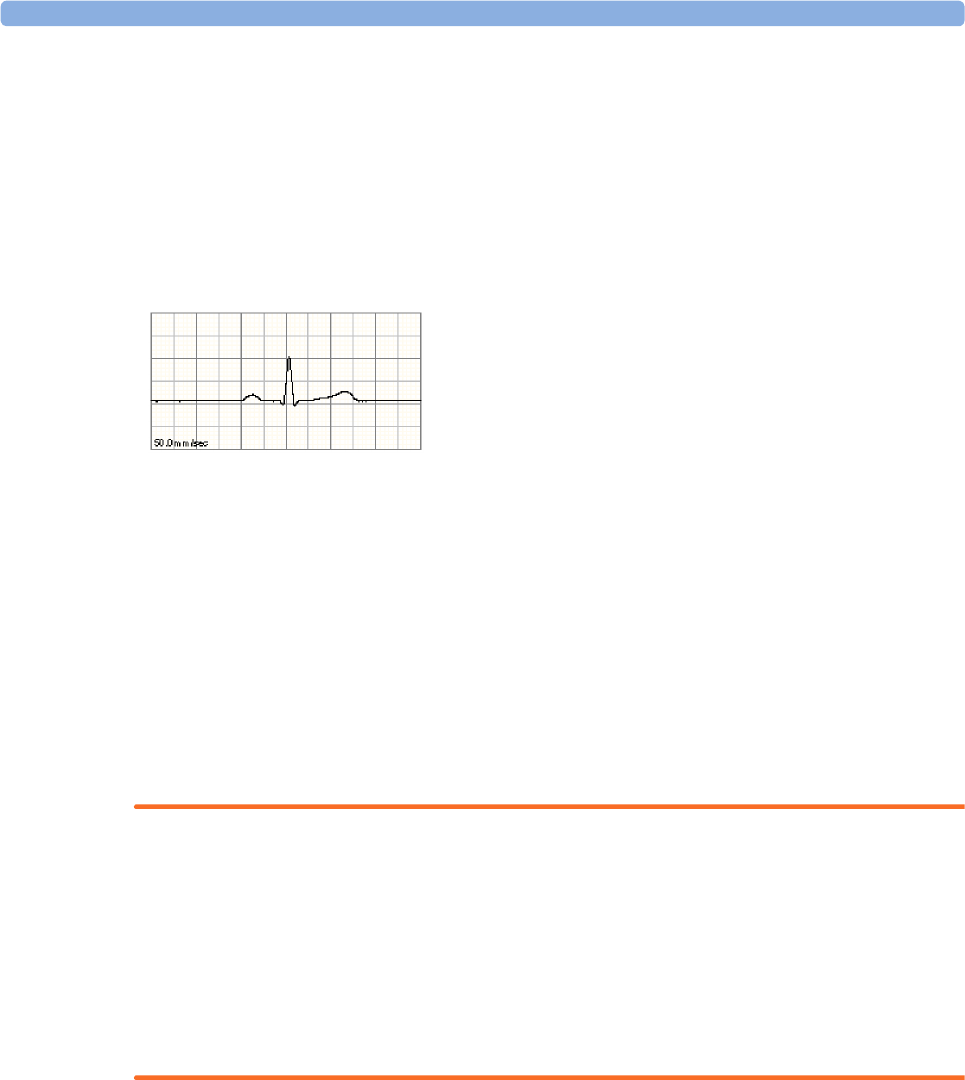
6 ECG, Arrhythmia, ST and QT Monitoring
134
Selecting the Primary and Secondary ECG Leads
The monitor uses the primary and secondary lead to compute HR and to analyze and detect cardiac
arrhythmias. They are also available for recordings and for display on the Information Center.
The secondary lead is only used if your monitor is configured for multi-lead (instead of single-lead)
arrhythmia analysis.
You should choose a lead as primary or secondary lead that has the following characteristics:
To select a lead as primary or secondary lead:
•In the Setup ECG menu, select Primary or Secondary, then select the appropriate lead. You can
assign any available lead whether it is currently displayed or not.
Checking Paced Mode
It is important to set the paced mode correctly when you start monitoring ECG.
• To change the paced mode in the Setup ECG menu, select Paced Mode to switch between On, Off
or Unconfirmed.
WARNING
Pace pulse rejection must be switched on for paced patients by setting Paced Mode to On. Switching
pace pulse rejection off for paced patients may result in pace pulses being counted as regular QRS
complexes, which could prevent an asystole event from being detected. When changing profiles, and at
admission/discharge, always check that paced mode is correct for the patient.
Some pace pulses can be difficult to reject. When this happens, the pulses are counted as a QRS
complex, and could result in an incorrect HR and failure to detect cardiac arrest or some arrhythmias.
Make sure that pace pulses are detected correctly by checking the pace pulse markers on the display.
Keep pacemaker patients under close observation.
Understanding the ECG Display
Your display may be configured to look slightly different.
• the QRS complex should be either completely above or
below the baseline and it should not be biphasic
• the QRS complex should be tall and narrow
• the P-waves and T-waves should be less than 0.2 mV
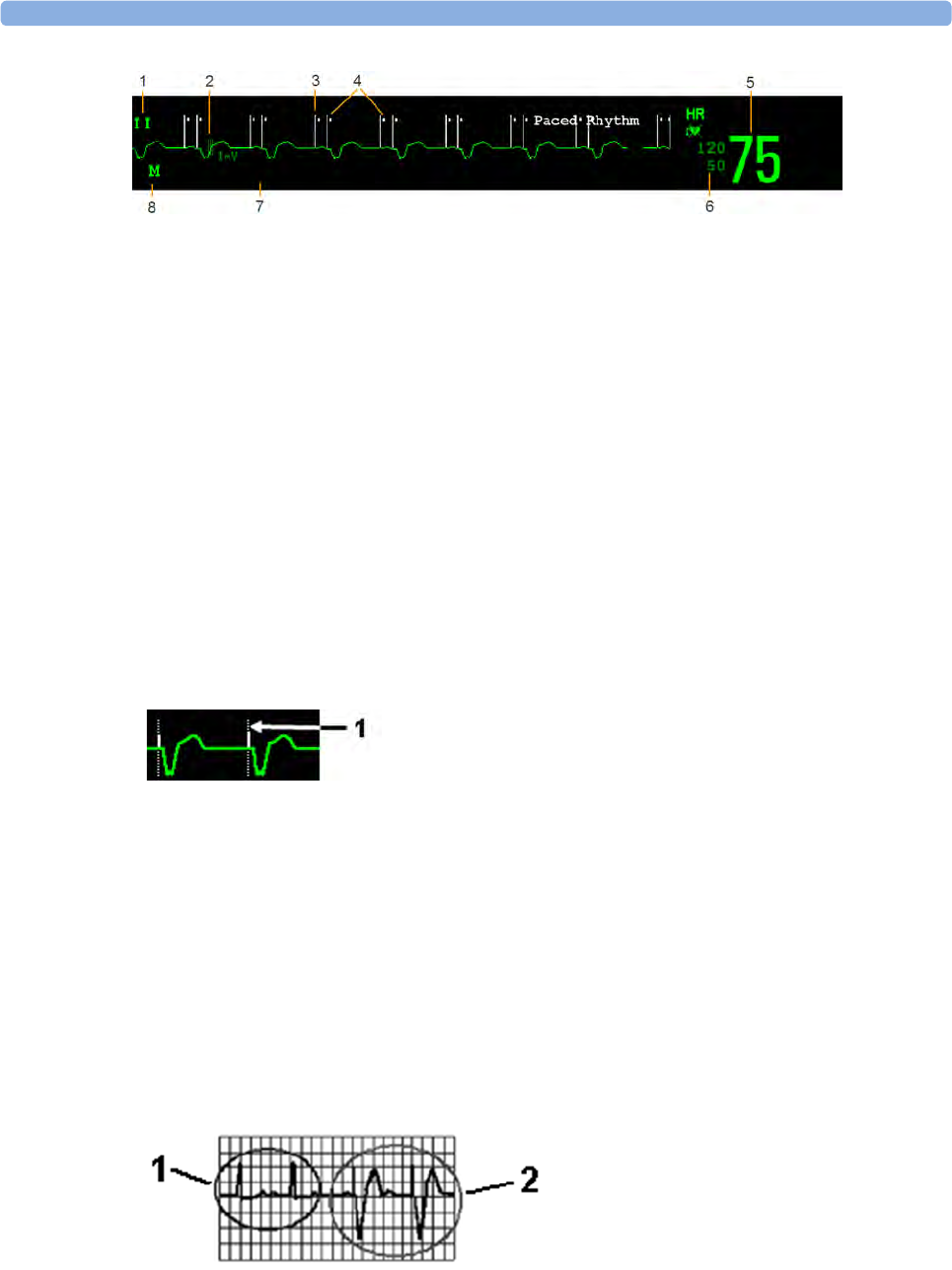
6 ECG, Arrhythmia, ST and QT Monitoring
135
1Lead label of the displayed wave
21 mV calibration bar
3Pacer spikes
4Pace pulse markers
5Current heart rate
6Current heart rate alarm limits and paced mode symbol
7EASI lead placement label (located here when present)
8ECG Filter label
ECG HR numeric: This is the heart rate derived from the monitored ECG.
Pace pulse markers: These are shown if the Paced Mode status has been set to On, the pacer spikes
are not configured to have a fixed size, and the patient has a paced signal.
Pacer Spikes: The pacer spikes are shown in white, unless the ECG wave is white, then they will be
green. If the pacer spikes have been configured to have a fixed size, they will be displayed in the
background as a dotted line.
Defibrillator synchronization marks: If an HP/Agilent/Philips defibrillator is connected, or the 2nd
Sync Out channel is configured to ECG SyncPuls and a sync cable is plugged in, the synchronization
marks (vertical lines on the ECG wave) are shown on the ECG wave. The synchronization marks will
be shown in yellow, unless the ECG wave is yellow, then they will be green.
ST numerics in ECG wave: ST numerics can be configured to show underneath the ECG wave on
the left side.
Monitoring Paced Patients
An ECG optimized for monitoring a paced patient should look like this:
You should choose a lead as primary or secondary lead that has these characteristics:
1Pacer spikes configured to have a fixed size
1Normal Beats
2Pace Pulses/Pace Beats
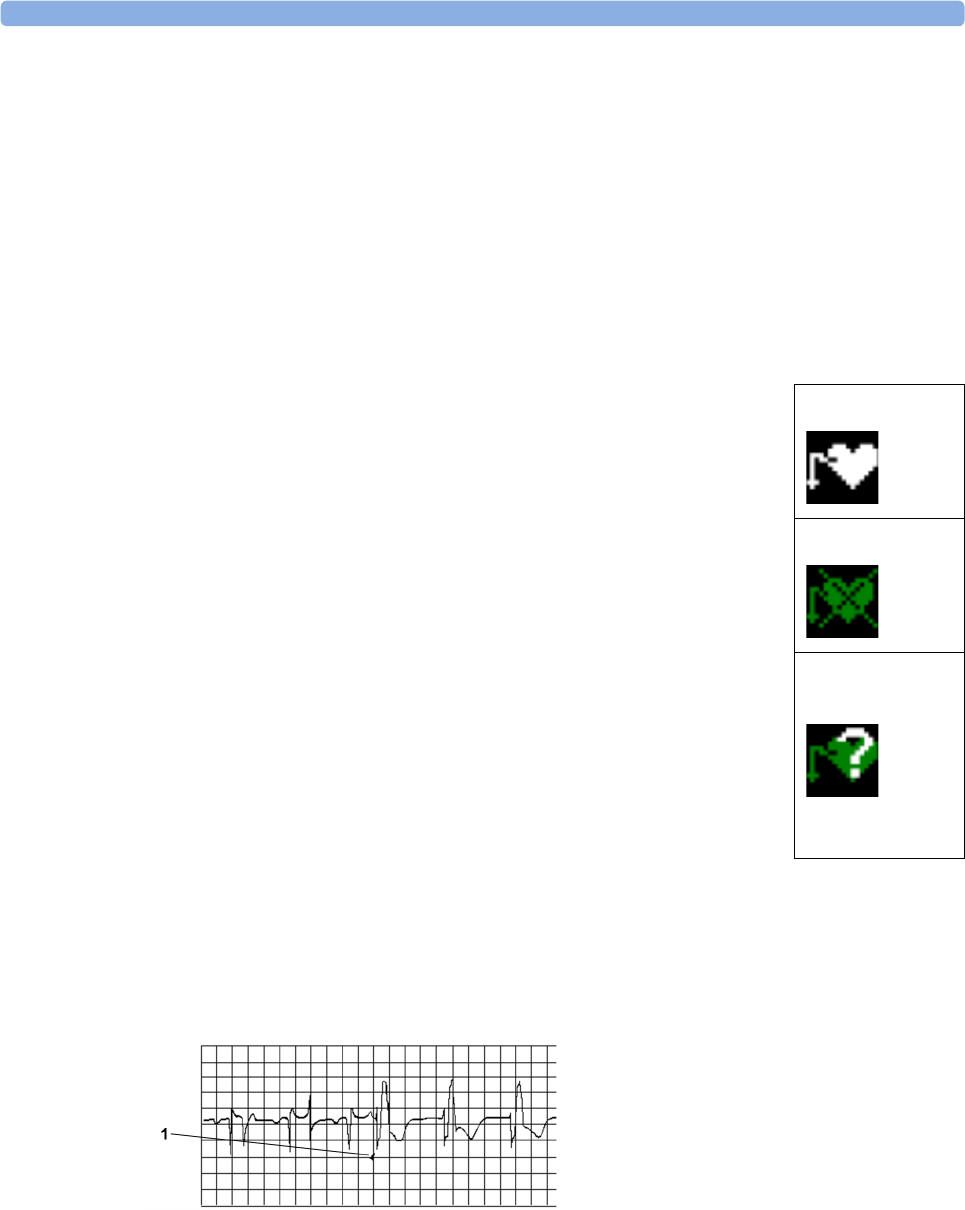
6 ECG, Arrhythmia, ST and QT Monitoring
136
• the normal QRS complex should be either completely above or below the baseline and it should
not be biphasic. For paced patients, the QRS complexes should be at least twice the height of pace
pulses.
• the QRS complex should be tall and narrow
• the P-waves and the T-waves should be less than 0.2 mV.
For ease of identification on the screen, the pacer spikes can be configured to have a fixed size. They
are then shown in the background as a dotted lines. The length of the dotted line is fixed to the wave
channel height and is independent of the actual pacer amplitude.
Setting the Paced Mode (Pace Pulse Rejection)
Avoiding Pace Pulse Repolarization Tails
Some unipolar pacemakers display pace pulses with repolarization tails. These tails may be counted as
QRSs in the event of cardiac arrest or other arrhythmias.
If you note a visible repolarization tail, choose a lead that decreases the size of the repolarization tail.
Changing the Size of the ECG Wave
If any of the displayed ECG waves is too small or clipped, you can change the size of one or all of the
ECG waves on the screen.
In the Setup ECG menu, select Paced Mode to switch between On, Off or
Unconfirmed.
You can also change the paced mode in the Patient Demographics window.
When Paced Mode is set to On:
– Pace Pulse Rejection is switched on. This means that pacemaker pulses
are not counted as extra QRS complexes.
– pace pulse marks are shown on the ECG wave as a small dash (only
when the pacer spikes are not configured to have a fixed size).
– The paced symbol is displayed next to the HR numeric.
When Paced Mode is set to Off, pacer spikes are not shown in the ECG wave.
Be aware that switching pace pulse rejection off for paced patients may result
in pace pulses being counted as regular QRS complexes, which could prevent
an asystole event from being detected.
When the paced mode has not yet been set for a patient, the paced symbol will
have a question mark indicating the Unconfirmed mode. When the paced
mode is Unconfirmed, pace pulse rejection is switched on.
Paced Mode On
Paced Mode Off
Paced Mode
Unconfirmed
1Repolarization tail (note width)

6 ECG, Arrhythmia, ST and QT Monitoring
137
Changing the adjustment factor only changes the visual appearance of the ECG wave on the screen. It
does not affect the ECG signal analyzed by the monitor.
Comparing the wave size to the 1 mV calibration bar on the ECG wave segment can help you to get an
idea of the true ECG signal strength. If you choose a fixed adjustment factor, the 1 mV calibration bar
will be the same size for all the displayed ECG waves. If you choose Auto Size, or an individual size
using the Size Up/Size Down keys, the calibration bar may be a different size for each wave.
To Change the Size of an Individual ECG Wave
1Select the wave segment you want to change. This calls up the lead menu for this segment.
2In the lead menu, select Size Up to increase wave size or Size Down to decrease the size.
Selecting Auto Size lets the monitor choose the optimal adjustment factor for all available ECG
waves.
To Change the Size of all the ECG Waves
To change the size of all the ECG waves on the screen by a fixed adjustment factor,
1In the Setup ECG menu, select Adjust Size.
2Select the required adjustment factor from the line of pop-up keys.
–Size x0.5 to halve the wave size
–Size x1 to display the wave without zoom
–Size x2 to double the wave size
–Size x4 to multiply the wave size by four
–Previous Size: to return one step to the previous size
–Auto Size: to let the monitor choose the optimal adjustment factor for all the ECG waves.
Changing the Volume of the QRS Tone
The QRS tone is derived from either the HR or Pulse, depending on which is currently selected as the
alarm source. The QRS volume can be set from 0 to 10 (0 means off).
To change the QRS volume, in the Setup ECG menu select QRS Volume and then select the
appropriate volume from the pop-up list.
Changing the ECG Filter Settings
The ECG filter setting defines how ECG waves are smoothed. An abbreviation indicating the filter
type is shown underneath the lead label on the monitor display. Filter settings do not affect ST
measurement.
To change the filter setting, in the Setup ECG menu, select Filter and then select the appropriate
setting.
–Monitor: Use under normal measurement conditions.
–Ext. Monitor: Use when diagnostic quality is required but low frequency interference or a
wandering baseline may be expected. The upper edge frequency is the same as the Diag setting
and the lower edge frequency is the same as the Monitor setting.

6 ECG, Arrhythmia, ST and QT Monitoring
138
–Filter: The filter reduces interference to the signal. It should be used if the signal is distorted
by high frequency or low frequency interference. High frequency interference usually results in
large amplitude spikes making the ECG signal look irregular. Low frequency interference
usually leads to a wandering or rough baseline. In the operating room, the Filter reduces
artifacts and interference from electrosurgical units. Under normal measurement conditions,
selecting Filter may suppress the QRS complexes too much and thus interfere with the clinical
evaluation of the ECG displayed on the monitor. This does not affect the ECG analysis
performed by the monitor.
If AutoFilter is set to On in Configuration Mode, the filter setting will automatically be set to
Filter if electromagnetic interference is detected.
–Diag: Use when diagnostic quality is required. The unfiltered ECG wave is displayed so that
changes such as R-wave notching or discrete elevation or depression of the ST segments are
visible.
The setting Diag selects the highest available ECG bandwidth which is 0.05 to 150 Hz for the
Adult, Pedi and Neo patient category. The term "diagnostic" relates only to the ECG
bandwidth requirements for diagnostic electrocardiographic devices as outlined in the ANSI/
AAMI standard EC11-1991.
Selecting Positions of Va and Vb Chest Leads (for
6-lead placement)
The two chest leads for the 6-lead placement can be positioned at any two of the V1 to V6 positions.
Select the positions you have used in the Setup ECG menu, so that the chest leads will be correctly
labeled.
1In the Setup ECG menu, select Va Lead.
2Select the position used from the list.
3Select Vb Lead and select the position used from the list.
Choosing EASI or Standard Lead Placement
You must enable either standard lead placement or EASI lead placement.
•In the Setup ECG menu, select Lead Placement and then Standard or EASI.
EASI is shown beside the 1 mV calibration bar on the ECG wave on the display, and EASI is marked on
any recorder strips and printouts.
See the section on “EASI ECG Lead Placement” on page 145 for electrode placement diagrams.
About ECG Leads
To make it possible to compare measured ECG signals, the electrodes (or lead sets) are placed in
standardized positions, forming so-called "leads". To obtain ECG signals optimized for use in
diagnosis and patient management in different care environments, different lead sets in varying lead
placements can be used. You can use either standard lead placements or EASI lead placements with
this monitor.
When placing electrodes, choose a flat, non-muscular site where the signal will not be interfered with
by either movement or bones. Correct lead placement is always important for accurate diagnosis.
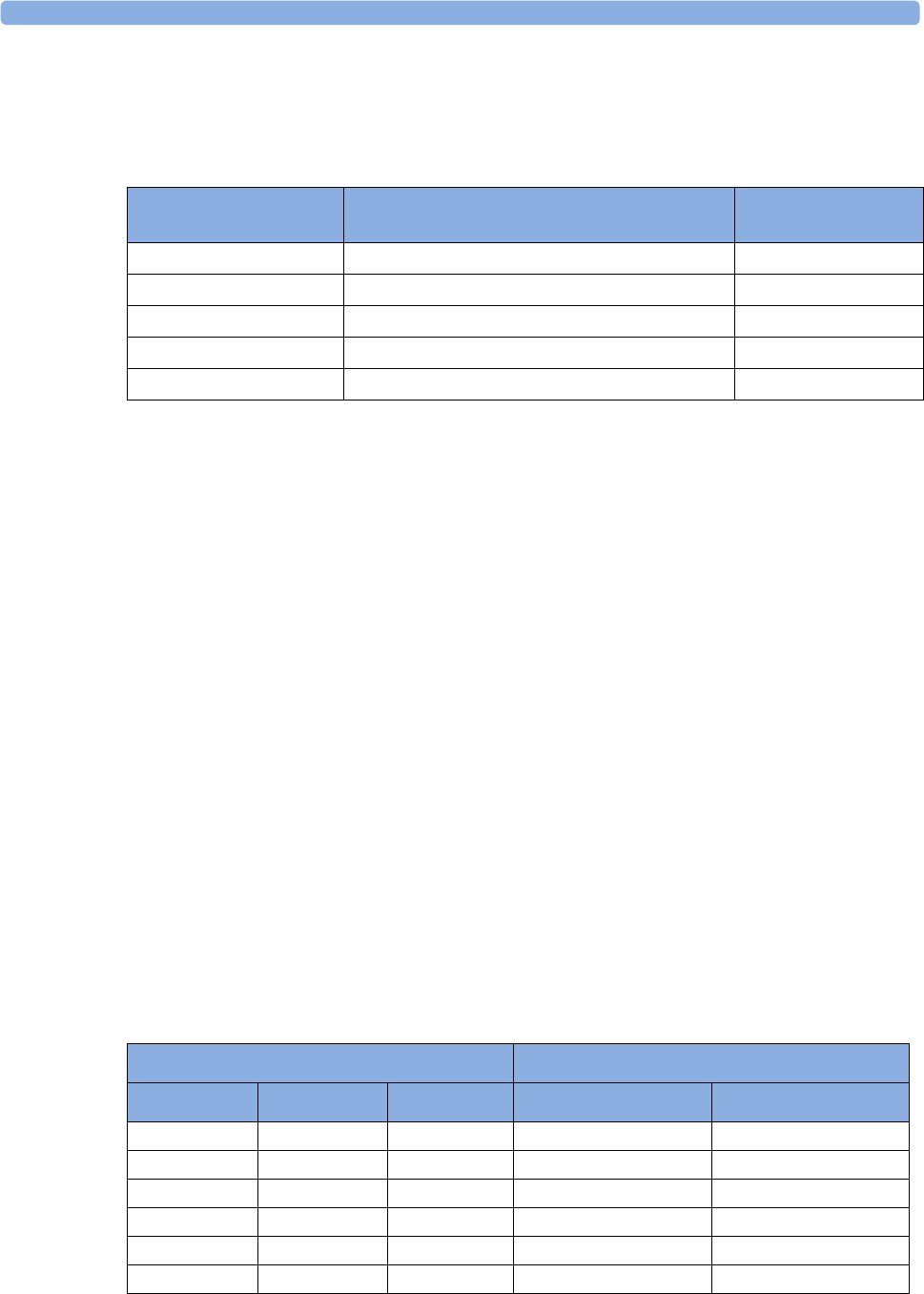
6 ECG, Arrhythmia, ST and QT Monitoring
139
Especially in the precordial leads, which are close to the heart, QRS morphology can be greatly altered
if an electrode is moved away from its correct location.
ECG Leads Monitored
Changing Lead Sets
To change the ECG lead set,
•When adding leads: place the additional electrodes as required - the monitor automatically
recognizes the new lead placement.
•When removing leads: there are two possibilities - removing the complete chest leads block or
removing individual leads. If you unplug the chest lead block from the trunk cable connector, the
monitor will automatically recognize the new lead placement. Remove individual leads by
removing the electrodes. The monitor will issue a Lead Off INOP message; select New Lead
Setup in the Setup ECG menu and the INOP message will disappear.
ECG Lead Fallback
If fallback is configured on and there is a leads off INOP in the primary lead (and in the secondary
lead, if you are using multi-lead monitoring) for longer than 10 seconds, and if another lead is available,
this available lead automatically becomes the primary lead. This is known as lead fallback. When the
Leads Off condition is corrected, the leads are automatically switched back.
This setting can only be changed in Configuration Mode.
ECG Lead Placements
The labels and colors of the ECG electrodes differ according to the standards that apply for your
hospital. The electrode placement illustrations in this chapter use the AAMI labels and colors.
If you are using these leads are available: Resp is measured
between electrodes:
a 3-electrode set I, II, III RA and LL
a 5-electrode set I, II, III, aVR, aVL, aVF, V and MCL RA and LL
a 6-electrode set I, II, III, aVR, aVL, aVF, Va, Vb RA and LL
a 10-electrode set I, II, III, aVR, aVL, aVF, V1, V2, V3, V4, V5, V6 RA and LL
an EASI 5-electrode set I, II, III, aVR, aVL, aVF, V1, V2, V3, V4, V5, V6 I and A
Electrode labels Electrode colors
AAMI EASI IEC AAMI IEC
RA I R White Red
LA S L Black Yellow
LL A F Red Green
RL N N Green Black
VECBrown White
V1 C1 Brown/Red White/Red
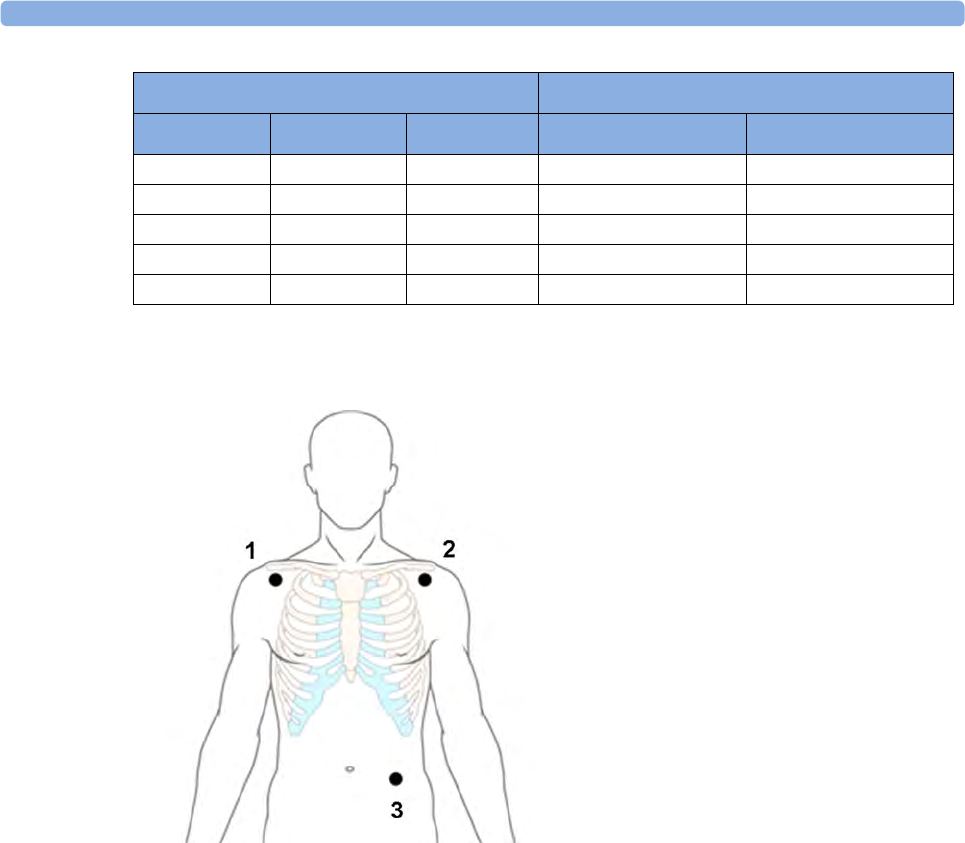
6 ECG, Arrhythmia, ST and QT Monitoring
140
Standard 3-Lead Placement
V2 C2 Brown/Yellow White/Yellow
V3 C3 Brown/Green White/Green
V4 C4 Brown/Blue White/Brown
V5 C5 Brown/Orange White/Black
V6 C6 Brown/Violet White/Violet
Electrode labels Electrode colors
AAMI EASI IEC AAMI IEC
1RA placement: directly below the clavicle and
near the right shoulder
2LA placement: directly below the clavicle and
near the left shoulder
3LL placement: on the left lower abdomen
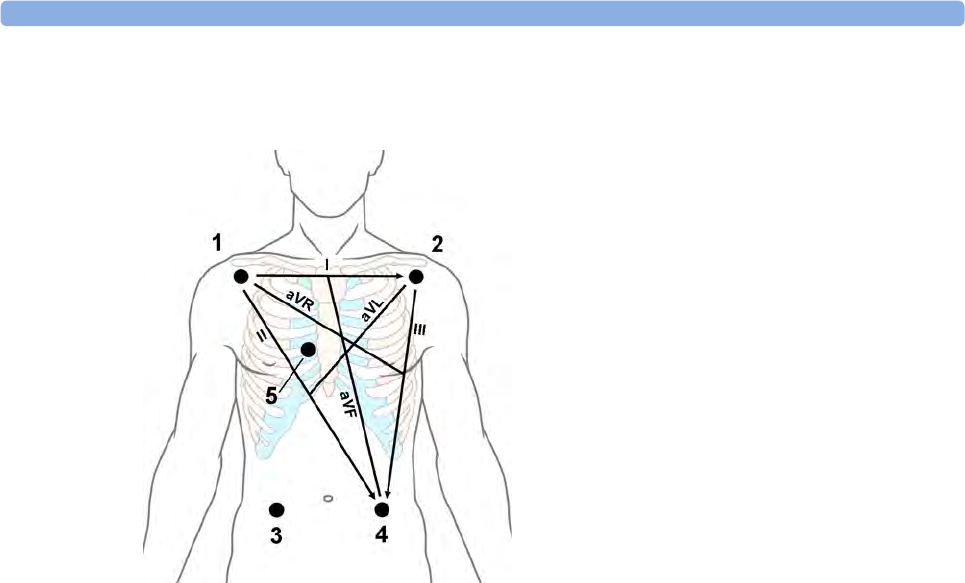
6 ECG, Arrhythmia, ST and QT Monitoring
141
Standard 5-Lead Placement
6-Lead Placement
For a 6-lead placement use the positions from the 5-lead diagram above but with two chest leads. The
two chest leads, Va and Vb, can be positioned at any two of the V1 to V6 positions shown in the chest
electrode diagram below. The Va and Vb lead positions chosen must be selected in the Setup ECG
Menu to ensure correct labeling.
1RA placement: directly below the clavicle and
near the right shoulder
2LA placement: directly below the clavicle and
near the left shoulder
3RL placement: on the right lower abdomen
4LL placement: on the left lower abdomen
5V placement: on the chest, the position
depends on your required lead selection
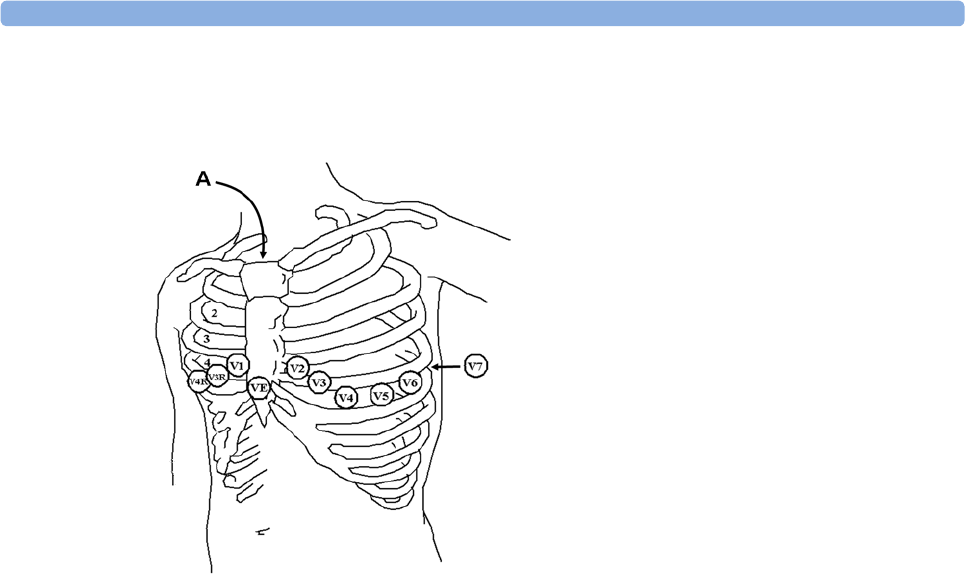
6 ECG, Arrhythmia, ST and QT Monitoring
142
Chest Electrode Placement
For accurate chest electrode placement and measurement, it is important to locate the fourth
intercostal space.
1Locate the second intercostal space by first palpating the Angle of Lewis (the little bony
protuberance where the body of the sternum joins the manubrium). This rise in the sternum is
where the second rib is attached, and the space just below this is the second intercostal space.
2Palpate and count down the chest until you locate the fourth intercostal space.
10-Lead Placement
When monitoring 12-leads of ECG, using a 10-Electrode Lead Placement, it is important to correctly
place electrodes and to label all 12-lead ECG reports with the correct lead placement.
V1 on the fourth intercostal space at the right
sternal border
V2 on the fourth intercostal space at the left
sternal border
V3 midway between the V2 and V4 electrode
positions
V4 on the fifth intercostal space at the left
midclavicular line
V5 on the left anterior axillary line, horizontal
with the V4 electrode position
V6 on the left midaxillary line, horizontal with the
V4 electrode position
V3R -V6R on the right side of the chest in
positions corresponding to those on the left
VE over the xiphoid process
V7 on posterior chest at the left posterior axillary
line in the fifth intercostal space
V7R on posterior chest at the right posterior
axillary line in the fifth intercostal space
A - Angle of Lewis
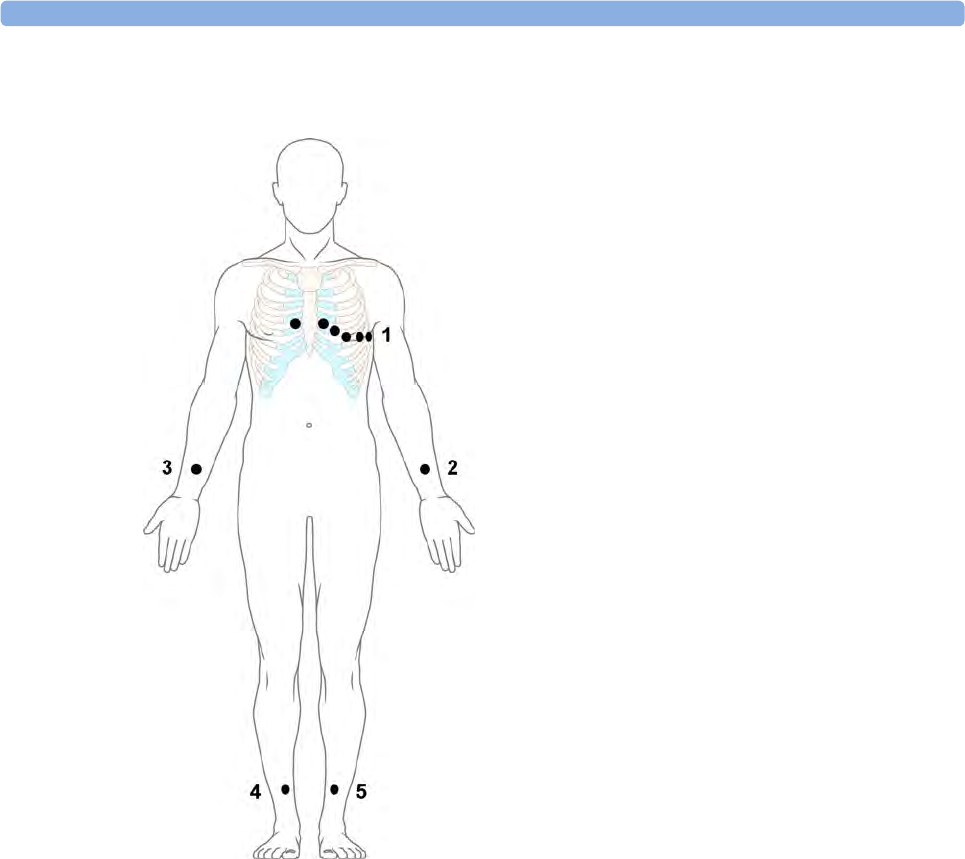
6 ECG, Arrhythmia, ST and QT Monitoring
143
Conventional 12-Lead ECG
In conventional 12-Lead ECG using 10 electrodes, an electrode is placed on the right arm, left arm,
right leg, and left leg. Six V- electrodes are placed on the chest. The right leg electrode is the reference
electrode.
Limb electrodes:
– Place arm electrodes on the inside of each arm, between the wrist and the elbow.
– Place leg electrodes inside of each calf, between the knee and the ankle.
Chest electrodes:
V1 - on the 4th intercostal space at the right sternal border
V2 - on the 4th intercostal space at the left sternal border
V3 - midway between the V2 and V4 electrode positions
V4 - on the 5th intercostal space at the left midclavicular line
V5 - on the left anterior axillary line, horizontal with the V4 electrode position
V6 - on the left midaxillary line, horizontal with the V4 electrode position
1V1 - V6
2LA
3RA
4RL
5LL
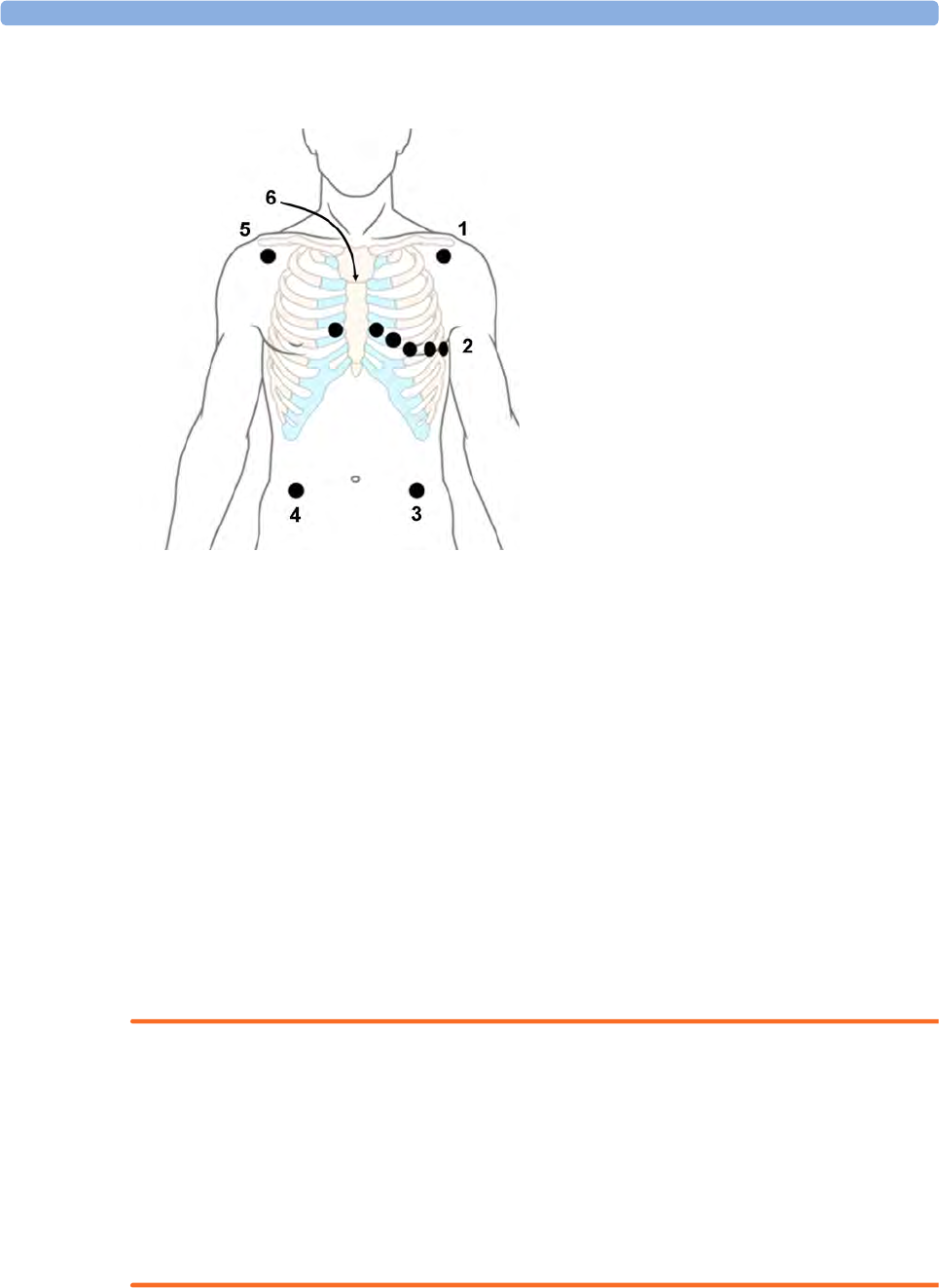
6 ECG, Arrhythmia, ST and QT Monitoring
144
Modified 12-Lead ECG
If your institution uses modified 10-lead ECG electrode placement (the Mason-Likar Lead System),
place the four limb electrodes close to the shoulders and lower abdomen.
The six V electrodes are placed on the chest in the same position as the conventional 12-lead
placement.
Choosing Standard or Modified Electrode Placement
If your institution uses modified 10 Lead ECG electrode placement (the Mason-Likar Lead System),
you must switch Mod.LeadPlacment to On in the monitor. To do this,
•in the Setup ECG menu, select Mod.LeadPlacment to toggle between On and Off.
– When Mod.LeadPlacment is set to On, 12 Lead ECG Reports will be labeled 12 Lead ECG
Report (Mason-Likar), and captured 12-lead ECGs will be labeled Mason-Likar to the right
of the bandwidth annotation at the Information Center.
– When Mod.LeadPlacment is set to Off, 12 Lead ECG Reports will be labeled 12 Lead ECG
Report (Standard), and captured 12-lead ECGs will not be annotated at the Information
Center.
WARNING
Do not use ECG analysis interpretation statements and measurements for 12-lead ECGs obtained
using the modified (Mason-Likar) limb electrode placement. This may lead to misdiagnosis since the
modified (Mason-Likar) limb electrode placement does not look the same as the conventional 12-lead
ECG and may mask inferior infarction due to calculated axis, R, P and T wave magnitudes shifts and
ST slope.
Do not export 12-lead ECGs obtained using the modified (Mason-Likar) limb electrode placement.
Captured 12-Lead ECGs using the modified (Mason-Likar) limb electrode placement exported from
the Information Center are not annotated with the Mason-Likar label.
1LA
2V1-V6
3LL
4RL
5RA
6Angle of Lewis
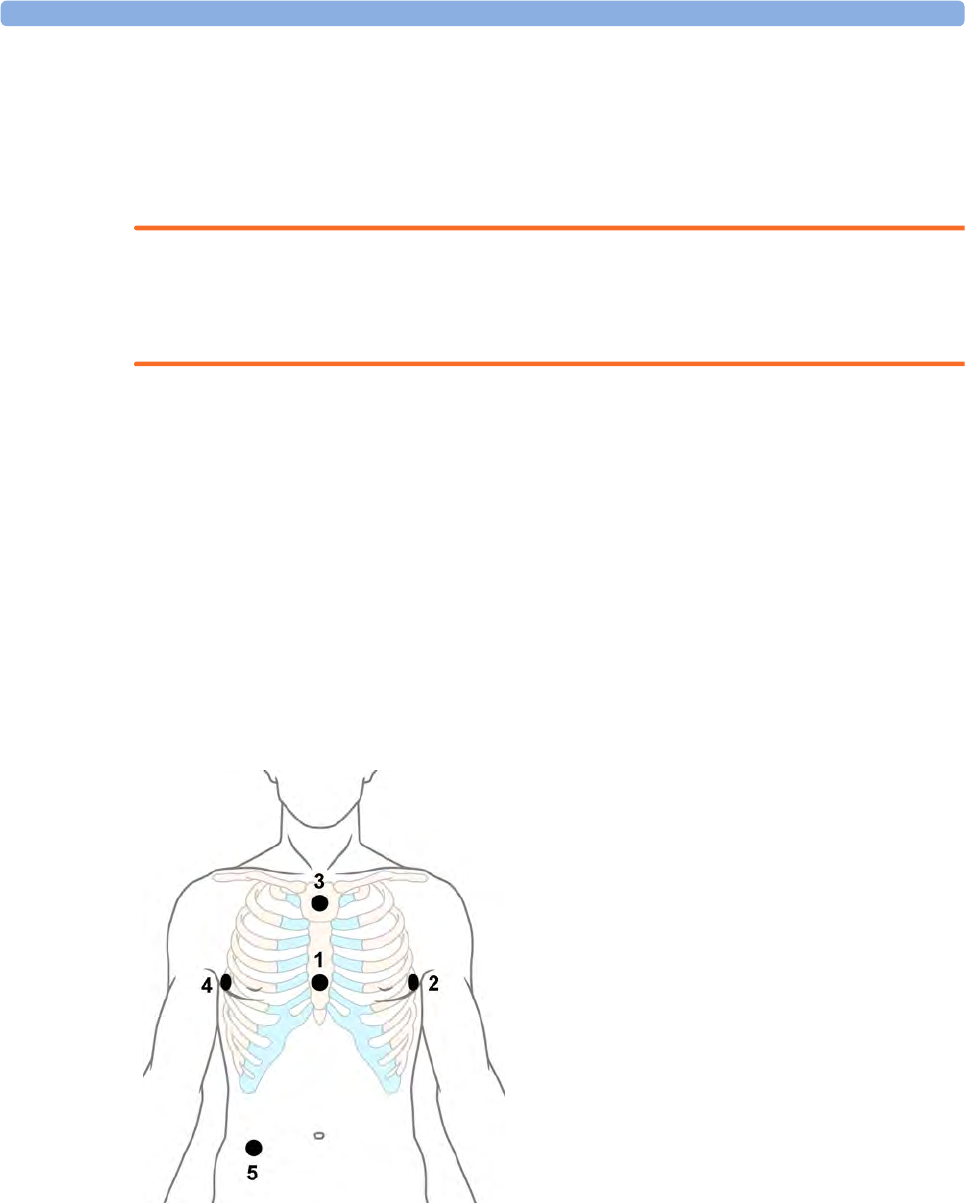
6 ECG, Arrhythmia, ST and QT Monitoring
145
EASI ECG Lead Placement
Using a standard 5-electrode set in EASI lead placement you can monitor up to 12 standard ECG leads
simultaneously and continuously at the bedside. EASI provides a monitoring method for trending ST
segment changes that can provide an early indication of ischemia.
WARNING
EASI-derived 12-lead ECGs and their measurements are approximations to conventional 12-lead
ECGs. As the 12-lead ECG derived with EASI is not exactly identical to the 12-lead conventional
ECG obtained from an electrocardiograph, it should not be used for diagnostic interpretations.
Respiratory monitoring is also possible with the EASI placement; respiration is measured between the
I and A electrodes.
Place the electrodes as accurately as possible to obtain the best quality EASI measurements.
When EASI lead placement is selected, EASI is shown beside the 1 mV calibration bar on the ECG
wave on the display, and EASI is marked on any recorder strips and printouts.
EASI Monitoring During INOP Conditions
If one of the derived EASI leads has an INOP condition (for example, Lead Off), a flat line is
displayed. After 10 seconds, the directly acquired EASI AI, AS, or ES lead (depending on which is
available) is displayed with the corresponding lead label. This causes an arrhythmia relearn.
EASI Electrode Placement
1E (V) - on the lower sternum at the level of
the fifth intercostal space
2A (LL) - on the left midaxillary line at the
same level as the E electrode
3S (LA) - on the upper sternum
4I (RA) - on the right midaxillary line at the
same level as the E electrode
5N - reference electrode - can be anywhere,
usually below the sixth rib on the right hip

6 ECG, Arrhythmia, ST and QT Monitoring
146
Capture 12-Lead
You can view a 12-Lead ECG on the screen, capture a 12-Lead ECG episode, preview the captured
ECG data and then store it and send it to a connected Information Center for analysis. You can
download the resulting analysis from the Information Center and also other 12-Lead captures for
review at the monitor. A 12-Lead report can be printed that also includes the downloaded analysis
results and an ST Map. You can operate the 12-Lead Export function and the 12-Lead Lock/Unlock
function at the Information Center remotely from the monitor.
The monitor can store one 12-Lead ECG episode at any time.
Viewing the Realtime 12-Lead ECG
To open the 12-Lead ECG window and view the realtime ECG waves,
• Select the Capture 12 Lead SmartKey, or
•Select
Main Setup, then Capture 12 Lead.
If a previously viewed 12-Lead ECG was not stored, a window will pop up asking whether you want to
keep it or not. The title bar of the window shows the date and time when this 12-Lead ECG was
captured. If you do not need the ECG, select No to discard it, otherwise, select Yes and then select
Store & Send to store that 12-Lead ECG and send it to an Information Center (if one is connected).
If your patient is not admitted, you will be prompted to enter at least the age and gender of the patient.
This information is needed for analysis of the 12-Lead ECG at the Information Center but is not
essential if you only want to capture the 12-Lead ECG without sending it for analysis. To enter this
information:
1Select the Admit Patient pop-up key, then
2Enter the information in the Patient Demographics window.
3Open the 12-Lead ECG window again as described above.
The age and gender will now be displayed in the title bar of the pop-up keys.
To change the way the realtime waves are displayed, select the Change View pop-up key or select the
wave area. You can switch between a one or two column display. The two column display lets you see
a larger representation of the waves.
While the realtime 12-Lead waves are being viewed in the window, the ECG filter mode (see
“Changing the ECG Filter Settings” on page 137) is changed to the 12-Lead filter setting (see
“Changing Settings for a Captured 12-Lead ECG” on page 147).
Capturing the 12-Lead ECG
To capture the last 10 seconds of ECG data, select the Capture Waves pop-up key. The pop-up key is
active as soon as enough wave data is available; until then a progress bar is displayed in the title bar of
the pop-up keys. A preview of the captured data appears on the screen (unless your monitor is
connected to an Information Center with software release earlier than Revision M — then the
captured data is automatically stored and sent to the Information Center).
The title bar of the pop-up keys will now show the current filter setting and, if you are using EASI lead
placement, an EASI indicator (see “EASI ECG Lead Placement” on page 145).
You can at any time return to the realtime 12-Lead ECG view by selecting the Show Waves pop-up
key. From there, you return to the preview window by selecting the Review 12 Lead pop-up key and
then selecting the 12-Lead marked with * from the list.
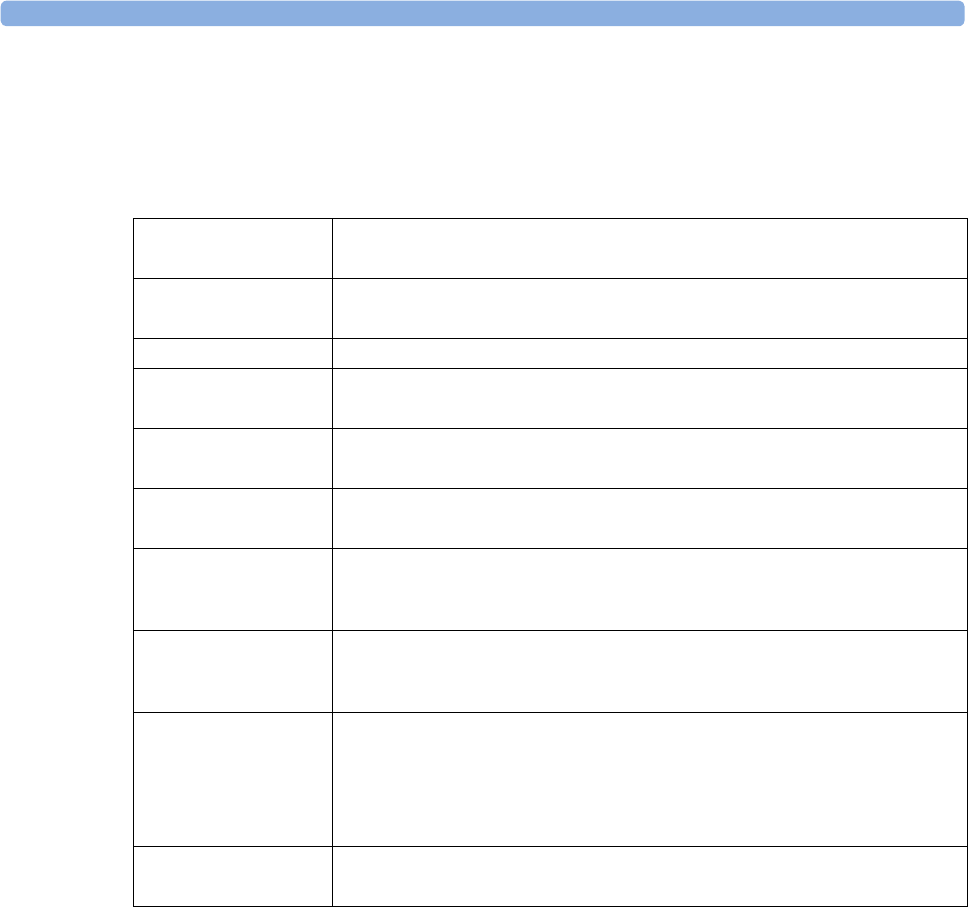
6 ECG, Arrhythmia, ST and QT Monitoring
147
Changing Settings for a Captured 12-Lead ECG
Select the Setup 12 Lead pop-up key to choose settings for filter, gain, etc., if changes are needed. All
changes apply to both the display and the printed 12-Lead report. The changes are only applied
temporarily and will not be stored. If you want to change the default settings, see “Setting Up the 12-
Lead ECG” on page 149.
Storing and Sending the 12-Lead ECG
You can enter an order number that will then be associated with the 12-Lead ECG. To enter an order
number, select the Enter OrderNo. pop-up key. The order number will be displayed in the title bar of
the pop-up keys.
To store the previewed data on the monitor and send it to a connected Information Center for storage
and analysis, select the Store & Send pop-up key. If the monitor is connected to an Information
Center, use the Store & Send function before patient transport to store the 12-Lead ECG centrally, as
the 12-Lead ECG data will not be uploaded from the MMS to another monitor after transport.
If the connection to the Information Center is not active while storing, the 12-Lead ECG will be
automatically sent as soon as the connection is established or restored. If a previously stored 12-Lead
ECG is waiting to be sent to the Information Center, it will be overwritten when a new 12-Lead ECG
is stored and can then not be sent to the Information Center.
High Pass Filter Sets the high pass filter for the waveforms.
Choices are 0.05 Hz, 0.15 Hz and 0.5 Hz.
Low Pass Filter Sets the low pass filter for the waveforms.
Choices are 40 Hz, 100 Hz and 150 Hz.
AC Filter Switches the AC (line frequency) filter On or Off.
Gain Defines the gain used for the waveforms.
Choices are 2.5 mm/mV, 5 mm/mV, 10 mm/mV and 20 mm/mV.
Chest Gain Defines the gain for the chest leads relative to the standard gain setting.
Choices are Full and Half.
Paper Speed Defines the waveform speed.
Choices are 25 mm/sec and 50 mm/sec.
Format Defines the page layout.
Choices are 12x1, 6x2, 3x4, 3x4 1R, 3x4 3R,3x4 ST and 3x4 1R ST. 1R and 3R
refer to 1 or 3 rhythm leads, ST formats contain an ST map.
Time Defines whether all leads show simultaneous or sequential intervals of time, when
displaying or printing 2 or more columns.
Choices are Sequential and Simultaneous.
Rhythm Lead 1
Rhythm Lead 2
Rhythm Lead 3
Defines which lead will be used as rhythm lead 1, 2 or 3.
Choices are Primary, Secondary, I, II, III, aVR, aVL, aVF, V1, V2, V3, V4, V5, V6,
MCL
This setting is only relevant when 3x4 1R, 3x4 1R ST or 3x4 3R is selected as
Format.
Lead Sequence Defines the sequence in which the leads are presented.
Choices are Cabrera and Internat.

6 ECG, Arrhythmia, ST and QT Monitoring
148
Printing the 12-Lead ECG
Print a dedicated 12-Lead ECG report by selecting the Print Report pop-up key.
When you are working with an Information Center iX that provides 12-Lead analysis, the report
contains the 12-Lead analysis results as well as measurement values (e.g. ST values, QT values, HR)
which are also downloaded from the Information Center iX. If you work with an Information Center
which does not provide any 12-Lead analysis results, the report only contains the measurement values.
In this case, however, the values are based on the real-time measurements made at the bedside.
Consequently, the measurement values in the report might differ in the two cases, due to the slightly
different algorithm approaches of patient monitor (real-time measurement) and Information Center iX
(diagnostic interpretation of 12-Lead capture).
Downloading Analysis Results (PIIC iX only)
Download analysis results from the IntelliVue Information Center by selecting Show Analysis. Return
to the previous screen by selecting Hide Analysis.
Reviewing Previewed or Stored 12-Lead Captures
To view 12-Lead captures previewed or stored on the monitor or 12-Lead captures stored at the
IntelliVue Information Center (PIIC iX only), select Review 12 Lead. You can then select from a list
of 12-Lead captures available for the current patient.
The 12-Lead captures in the list may be marked with a symbol, for example an open or closed padlock
to indicate unlocked or locked status or a * to indicate preview status.
Information Center Remote Export (PIIC iX only)
Use the Export key to remotely start the 12-Lead export functionality of the IntelliVue Information
Center.
Information Center Remote Lock/Unlock (PIIC iX only)
Use the Lock key to remotely lock the 12-Lead capture at the IntelliVue Information Center. If it is
already locked, the Unlock key will be displayed.
Capture 12-Lead Pop-up Keys
Here is a summary of all the pop-up keys available during the 12-Lead ECG procedure:
Pop-up Keys Selecting this pop-up key lets you
Admit Patient enter the age and gender for the patient, to allow analysis of the 12-Lead
ECG.
Change View switch between the single column and two-column display of the realtime
wave data.
Capture Waves capture the current ECG waves and open the preview window.
Show Waves return to the realtime 12-Lead ECG view.
Setup 12 Lead choose settings for filter, gain, display layout, etc.
Enter OrderNo. enter an order number that is stored with the capture and displayed in the
title bar of the pop-up keys.
Print Report print a 12-Lead report.
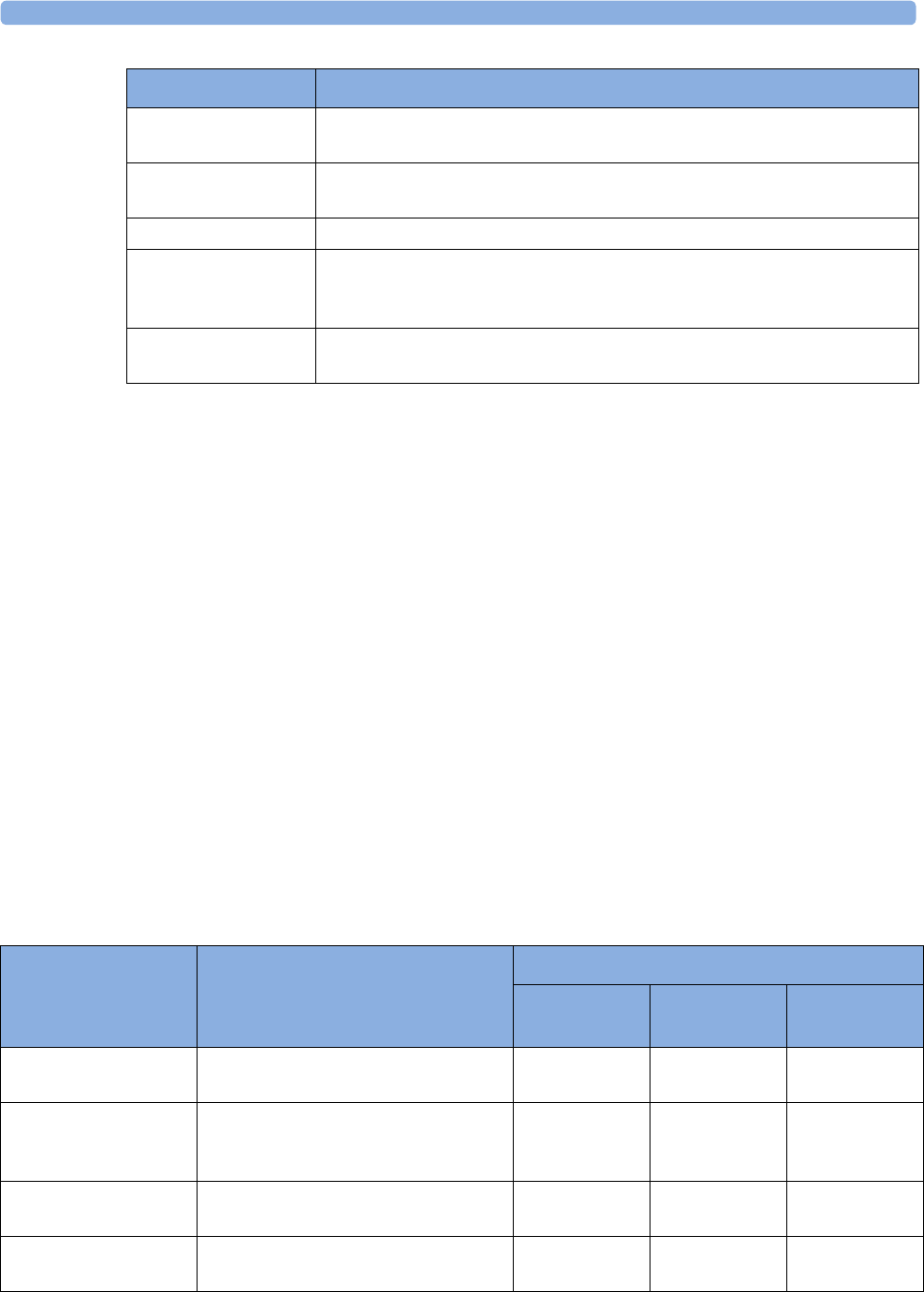
6 ECG, Arrhythmia, ST and QT Monitoring
149
Setting Up the 12-Lead ECG
You can make settings that will be stored and used in future as default settings for each 12-Lead ECG
capture made.
1Select the HR numerics on the screen to enter Setup ECG.
2Select 12Lead.
3The Setup 12 Lead window opens for you to make the default settings.
For a description of the available settings, see “Changing Settings for a Captured 12-Lead ECG” on
page 147.
ECG and Arrhythmia Alarm Overview
The ECG and arrhythmia alarms available depend on which measurements are switched on, and the
arrhythmia option enabled for your monitor.
• Cardiotach alarms are available when HR is on and the active alarm source is ECG, but
Arrhythmia is switched off
• Basic arrhythmia alarms are available when Arrhythmia is switched on
• Enhanced arrhythmia alarms are available when Arrhythmia is switched on and the Enhanced
Arrhythmia option has been enabled for your monitor
Store & Send store the captured 12-Lead ECG in the monitor and send it to the
Information Center.
Review 12 Lead view a list of 12-Lead captures available at the monitor or at the IntelliVue
Information Center, and select one for review.
Show Analysis download analysis results from the IntelliVue Information Center
Export remotely export 12-Lead ECG data from the IntelliVue Information Center
to an ECG management system (see the Information Center Instructions for
Use for details).
Lock / Unlock remotely lock/unlock the 12-Lead capture at the IntelliVue Information
Center.
Pop-up Keys Selecting this pop-up key lets you
Alarm Description Arrhythmia Configuration
Arrhythmia
Off
Basic
Arrhythmia
Enhanced
Arrhythmia
*** Asystole No QRS detected for a period > the
asystole alarm threshold
xxx
*** Vent Fib/Tach Fibrillatory waveform (sinusoidal wave
between 2 – 10 Hz) for 4 consecutive
seconds
xxx
*** VTach A run of PVCs ≥ the V-Tach run limit
and heart rate > the V-Tach HR limit
xx
*** Extreme Tachy Heart rate > the extreme tachy alarm
limit
xxx
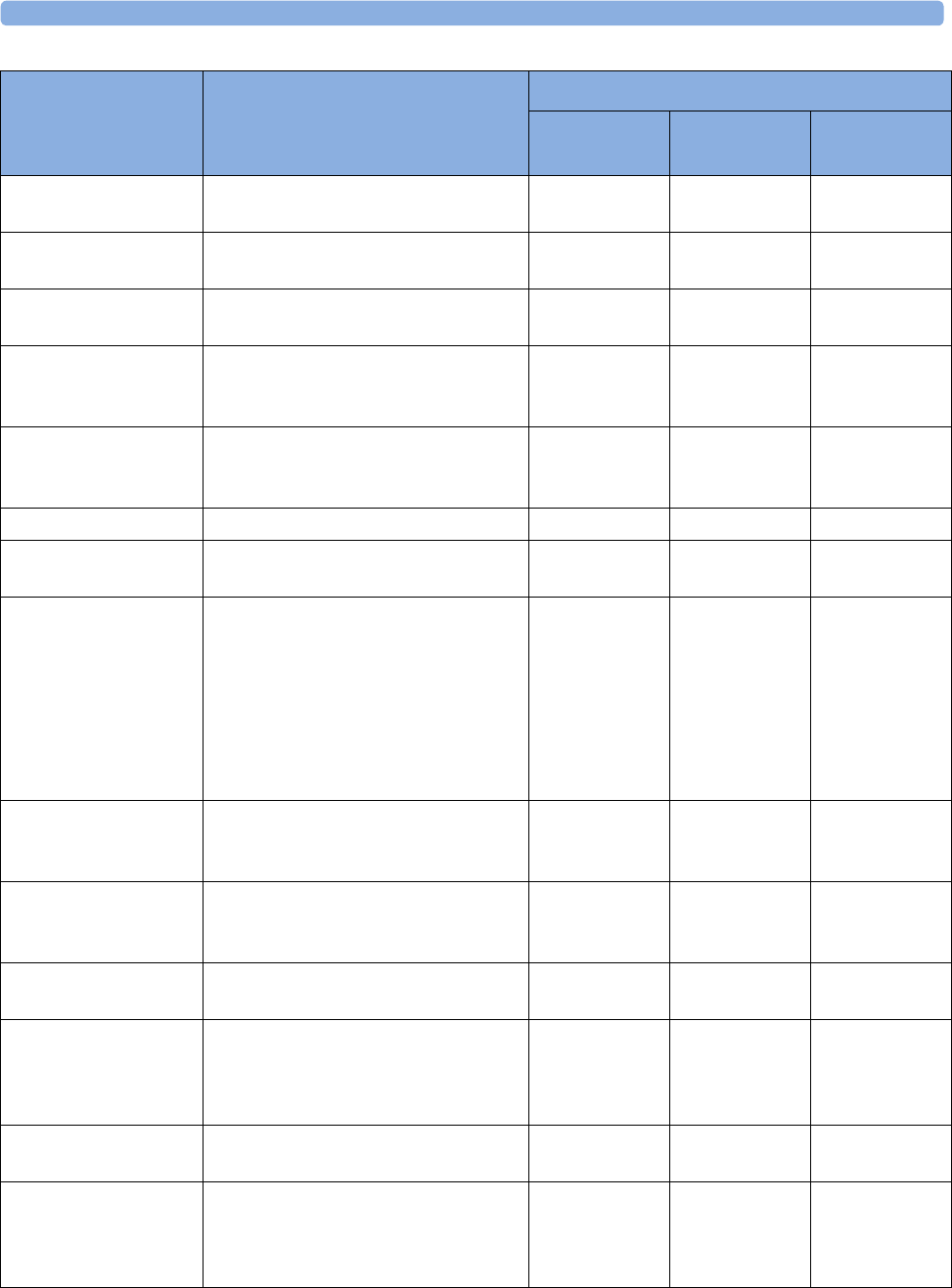
6 ECG, Arrhythmia, ST and QT Monitoring
150
*** Extreme Brady Heart rate < the extreme brady alarm
limit
xxx
** HR High Heart rate > the high HR alarm limit x x
(see note)
x
(see note)
** HR Low Heart rate < the low HR alarm limit x x
(see note)
x
(see note)
** Non-Sustain VT A run of PVCs < the V-Tach run limit
and ventricular heart rate > the V-Tach
HR limit
x
** Vent Rhythm A dominant rhythm of adjacent Vs >
the vent rhythm limit and ventricular
heart rate < the V-Tach HR limit
x
** Run PVCs High A run of > 2 PVCs x
** Pair PVCs Two ventricular beats between two
non-ventricular beats
x
** R-on-T PVCs For HR < 100, a PVC with R-R interval
< 1/3 the average interval followed by
a compensatory pause of 1.25*(the
average R-R interval), or two such Vs
without compensatory pause occurring
within 5 minutes of each other. (When
HR > 100, 1/3 R-R interval is too short
for beat detection)
x
** Vent Bigeminy A dominant rhythm of N, V, N, V (N =
supraventricular beat, V=ventricular
beat)
x
** Vent Trigeminy A dominant rhythm of N, N, V, N, N,
V (N = supraventricular beat, V =
ventricular beat)
x
** PVCs/min High PVCs detected within a minute > the
alarm limit
xx
** Multiform PVCs Two different shaped Vs detected, each
occurring at least twice within the last
300 beats and at least once within the
last 60 beats
x
** Pause No beat detected for a period > the
pause threshold
x
** Missed Beat No beat detected for > 1.75*(the
averaged R-R interval), or no beat
detected for > one second if HR > 120
(For non-paced patients only)
x
Alarm Description Arrhythmia Configuration
Arrhythmia
Off
Basic
Arrhythmia
Enhanced
Arrhythmia
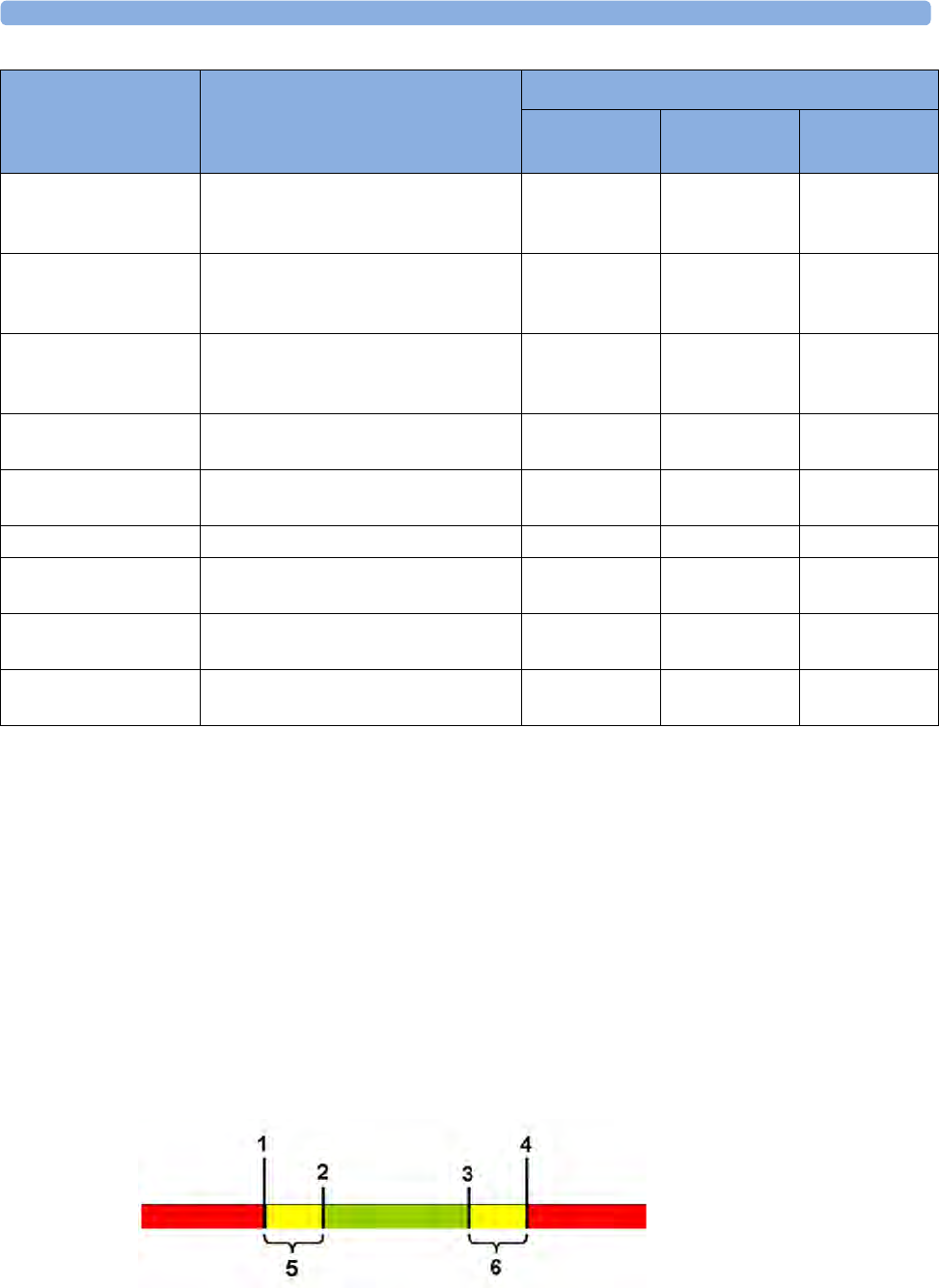
6 ECG, Arrhythmia, ST and QT Monitoring
151
Note: **HR High/Low are available only if HR alarms are configured to "yellow", and *HR High/
Low are available only if HR alarms are configured to "short yellow".
Using ECG Alarms
ECG alarms can be switched on and off and the high and low alarm limits changed just like other
measurement alarms, as described in the “Alarms” chapter. Special alarm features which apply only to
ECG are described here.
Extreme Alarm Limits for Heart Rate
The extreme rate alarms, Extreme Tachy and Extreme Brady, generated by the active alarm source,
either HR or Pulse, are set in Configuration Mode by adding a set value (the Δ value) to the high and
low alarm limits.
** Pacer Not Capt No beat detected for > 1.75*(the
averaged R-R interval) with detected
pace pulse(s). (For paced patients only)
xx
**Pacer Not Pacing No beat and pace pulse detected for >
1.75*(the averaged R-R interval). (For
paced patients only)
xx
** SVT A run of supraventricular beats > the
SVT run limit and heart rate > the SVT
HR limit
x
* HR High Heart rate > the high HR alarm limit x
(see note)
x
(see note)
* HR Low Heart rate < the low HR alarm limit x
(see note)
x
(see note)
* AFIB Atrial fibrillation waveform detected x
* End AFIB Atrial fibrillation no longer detected for
the configured Afib end delay time
x
** Irregular HR Consistently irregular rhythm (irregular
R-R intervals)
x
* End Irregular HR Irregular HR no longer detected for the
configured irregular HR end delay time
x
Alarm Description Arrhythmia Configuration
Arrhythmia
Off
Basic
Arrhythmia
Enhanced
Arrhythmia
1Extreme Brady Limit
2Low Limit
3High Limit
4Extreme Tachy Limit
5Δ Extreme Brady
6Δ Extreme Tachy

6 ECG, Arrhythmia, ST and QT Monitoring
152
You need to know which value has been configured for your monitor. Changing the high and low
alarm limits automatically changes the extreme alarm limits within the allowed range.
To see the extreme rate alarms set for your monitor, in the Setup ECG menu, see the menu items Δ
ExtrTachy and Δ ExtrBrady.
ECG Alarms Off Disabled
Be aware that your hospital department may have decided to disable the Alarms Off setting for ECG
in the monitor's Configuration Mode. In this case, HR alarms cannot be switched off in Monitoring
Mode. If you try to switch off the HR alarms, you will see the message To activate enter Config and
enable Alarms Off.
HR Alarms When Arrhythmia Analysis is Switched Off
When arrhythmia analysis is switched off, only these HR-related alarms will be detected:
• the asystole alarm
• the ventricular fibrillation/tachycardia alarm
• the extreme tachycardia and extreme bradycardia alarms
• the high heart rate and low heart rate alarms.
Enhanced Asystole Detection
In order to improve alarming on asystole under certain conditions, you can set Asystole Detect. in
Configuration Mode to Enhanced. In enhanced mode an asystole alarm will be suppressed for up to
five seconds if a valid beat-to-beat Pulse is detected from a Pressure.
ECG Safety Information
CAUTION
Interference from instruments near the patient and ESU interference can cause problems with the
ECG wave. See the monitor specifications for more information.
WARNING
Defibrillation and Electrosurgery:
Do not touch the patient, or table, or instruments, during defibrillation.
After defibrillation, the screen display recovers within 10 seconds if the correct electrodes are used and
applied in accordance with the manufacturers instructions.
ECG cables can be damaged when connected to a patient during defibrillation. Check cables for
functionality before using them again.
According to AAMI specifications the peak of the synchronized defibrillator discharge should be
delivered within 60 ms of the peak of the R wave. The signal at the ECG output on the IntelliVue
patient monitors is delayed by a maximum of 30 ms. Your biomedical engineer should verify that your
ECG/Defibrillator combination does not exceed the recommended maximum delay of 60 ms.

6 ECG, Arrhythmia, ST and QT Monitoring
153
When using electrosurgical (ES) equipment, never place ECG electrodes near to the grounding plate of
the ES device, as this can cause a lot of interference on the ECG signal.
General:
When you are connecting the electrodes or the patient cable, make sure that the connectors never
come into contact with other conductive parts, or with earth. In particular, make sure that all of the
ECG electrodes are attached to the patient, to prevent them from contacting conductive parts or earth.
During surgery:
Use the appropriate orange electrode ECG safety cable, or lead cable with an orange connector, for
measuring ECG in the operating room. These cables have extra circuitry to protect the patient from
burns during cautery, and they decrease electrical interference. This also reduces the hazard of burns in
case of a defective neutral electrode at the HF device. These cables cannot be used for measuring
respiration.
Pacemaker failure:
During complete heart block or pacemaker failure to pace/capture, tall P-waves (greater than 1/5 of
the average R-wave height) may be erroneously counted by the monitor, resulting in missed detection
of cardiac arrest.
Patients exhibiting intrinsic rhythm:
When monitoring paced patients who exhibit only intrinsic rhythm, the monitor may erroneously
count pace pulses as QRS complexes when the algorithm first encounters them, resulting in missed
detection of cardiac arrest.
The risk of missing cardiac arrest may be reduced by monitoring these patients with low heart rate limit
at or slightly above the basic/demand pacemaker rate. A low heart rate alarm alerts you when the
patient's heart rate drops to a level where pacing is needed. Proper detection and classification of the
paced rhythm can then be determined.
Filtered ECG signal from external instruments:
Instruments such as defibrillators or telemetry units produce a filtered ECG signal. When this signal is
used as an input to the bedside monitor, it is filtered again. If this twice-filtered signal is passed to the
arrhythmia algorithm, it may cause the algorithm to fail to detect pace pulses, pacemaker non-capture,
or asystole, thus compromising paced patient monitoring performance.
External pacing electrodes:
When a pacemaker with external pacing electrodes is being used on a patient, arrhythmia monitoring is
severely compromised due to the high energy level in the pacer pulse. This may result in the arrhythmia
algorithm's failure to detect pacemaker noncapture or asystole.
Fusion beat pacemakers:
Pacemakers that create fusion beats (pace pulse on top of the QRS complex) cannot be detected by the
monitor's QRS detector.
Rate adaptive pacemakers:
Implanted pacemakers which can adapt to the Minute Ventilation rate may occasionally react on the
Impedance measurement used by patient monitors for the determination of the Resp value and
execute pacing with the maximum programmed rate. Switching off the Resp measurement can prevent
this.

6 ECG, Arrhythmia, ST and QT Monitoring
154
Line isolation monitor transients:
When electrodes or lead wires are loose or detached, the monitor becomes susceptible to switching
transients from some types of line isolation monitors. Line isolation monitor transients may resemble
actual cardiac waveforms and thus inhibit heart rate alarms. To minimize the chance of this occurring,
always adhere to the instructions for skin preparation and electrode placement given in this chapter.
About Arrhythmia Monitoring
Arrhythmia analysis provides information on your patient's condition, including heart rate, PVC rate,
rhythm, and ectopics. The monitor uses the user-selected primary and secondary ECG leads for single-
lead or multi-lead arrhythmia analysis. During arrhythmia analysis, the monitor continuously
• optimizes ECG signal quality. This is important for arrhythmia analysis. The monitor continuously
filters the ECG signal to remove baseline wander, muscle artifact, and signal irregularities. Also, if
the Patient Paced status is set to Yes, pace pulses are filtered out to avoid processing them as QRS
beats.
• detects beats, for example, QRS complexes, identifying them for further analysis.
• measures signal features such as R-wave height, width, and timing.
• creates beat templates, and classifies and labels beats to aid in rhythm analysis and alarm detection.
• examines the ECG signal for ventricular fibrillation, asystole, and noise.
Arrhythmia Options
Your monitor has either the basic or the enhanced arrhythmia option. Both options provide rhythm
and ectopic status messages and beat labeling. The number of rhythms being classified, events being
detected, and alarms generated differs according to the option. The alarms available with the different
options are listed in the section “ECG and Arrhythmia Alarm Overview” on page 149, the rhythm and
ectopic messages detected are listed in “Arrhythmia Status Messages” on page 157.
Where Can I Find More Information?
See the Application Notes on ST and Arrhythmia supplied on your documentation DVD for detailed
information on the arrhythmia algorithm and its clinical application.
Switching Arrhythmia Analysis On and Off
1In the Setup Arrhy menu, select Arrhythmia to toggle between On and Off.
2Select the Confirm pop-up key which appears at the bottom of the screen.
Be aware that when arrhythmia analysis is switched off,
– the message Arrhythmia Off appears beside the ECG wave, if configured to do so
– only the HR-related alarms are detected (the asystole alarm, the ventricular fibrillation/
tachycardia alarm, the extreme tachycardia and extreme bradycardia alarms, the high heart rate
and low heart rate alarms)
– HR High and HR Low alarms behave like normal yellow alarms, no timeout periods are active.

6 ECG, Arrhythmia, ST and QT Monitoring
155
Choosing an ECG Lead for Arrhythmia Monitoring
It is important to select a suitable lead for arrhythmia monitoring.
Guidelines for non-paced patients are:
– QRS complex should be tall and narrow (recommended amplitude > 0.5 mV)
– R-Wave should be above or below the baseline (but not bi-phasic)
– T-wave should be smaller than 1/3 R-wave height
– the P-wave should be smaller than 1/5 R-wave height.
For paced patients, in addition to the above, the pace pulse should be:
– not wider than the normal QRS
– the QRS complexes should be at least twice the height of pace pulses
– large enough to be detected, with no re-polarization.
To prevent detection of P-waves or baseline noises as QRS complexes, the minimum detection level
for QRS complexes is set at 0.15 mV, according to AAMI-EC 13 specifications. Adjusting the ECG
wave size on the monitor display (gain adjustment) does not affect the ECG signal which is used for
arrhythmia analysis. If the ECG signal is too small, you may get false alarms for pause or asystole.
Atrial Fibrillation Alarm
The monitor performs atrial fibrillation analysis using information about the RR irregularity, PR
interval variability and P wave variability.
In order to generate an Afib alarm the following criteria must be detected for 1 minute:
• normal beat RR intervals must be irregular
• PR interval deviation must be large
• P-wave region must not match well
Atrial fibrillation analysis is only available for adult patients and atrial fibrillation detection cannot be
performed on PVCs or Paced beats.
An ** End AFIB alarm will occur when no atrial fibrillation waveform was detected for a configured
delay time.
Since most atrial flutters have regular RR intervals, they cannot be detected by the atrial fibrillation
algorithm.
An ** AFIB can be falsely detected in the presence of:
• sinus arrhythmia,
• muscle noise, or
• electrode motion artifact.
If you also have monitors with earlier software revisions, the ** AFIB and ** End AFIB alarms will not
be generated after a transfer to one of these monitors. Always leave the Irregular HR alarm switched
on, so that this alarm can be generated in such situations.
See the Application Note on Arrhythmia/ST supplied on your documentation DVD for detailed
information on the arrhythmia algorithm and ECG analysis.
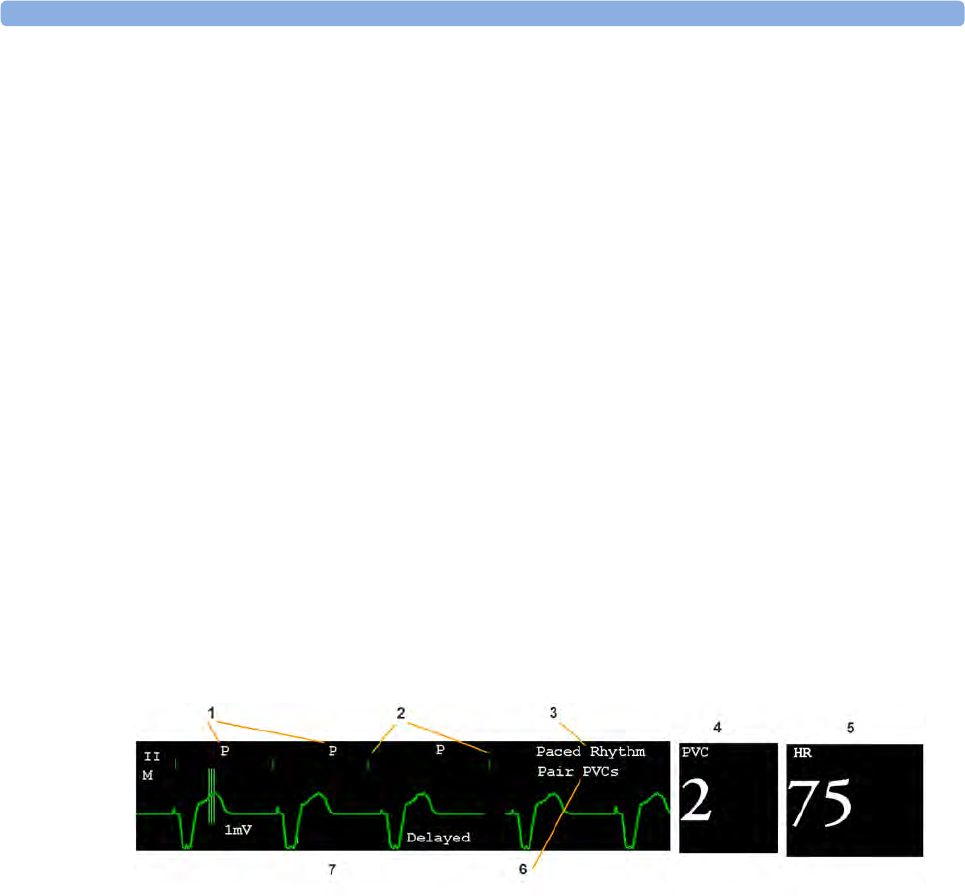
6 ECG, Arrhythmia, ST and QT Monitoring
156
Aberrantly-Conducted Beats
As P-waves are not analyzed, it is difficult and sometimes impossible for the monitor to distinguish
between an aberrantly-conducted supraventricular beat and a ventricular beat. If the aberrant beat
resembles a ventricular beat, it is classified as ventricular. You should always select a lead where the
aberrantly-conducted beats have an R-wave that is as narrow as possible to minimize incorrect calls.
Ventricular beats should look different from these 'normal beats'. Instead of trying to select two leads
with a narrow R-wave, it may be easier to just select one lead and use single lead arrhythmia
monitoring. Extra vigilance is required by the clinician for this type of patient.
Intermittent Bundle Branch Block
Bundle branch and the other fascicular blocks create a challenge for the arrhythmia algorithm. If the
QRS during the block changes considerably from the learned normal, the blocked beat may be
incorrectly classified as ventricular, causing false PVC alarms. You should always select a lead where
the bundle branch block beats have an R-wave that is as narrow as possible to minimize incorrect calls.
Ventricular beats should look different from these 'normal beats'. Instead of trying to select two leads
with a narrow R-wave, it may be easier to just select one lead and use single lead arrhythmia
monitoring. Extra vigilance is required by the clinician for this type of patient.
Understanding the Arrhythmia Display
Your monitor screen may look slightly different from the illustration.
1Beat label
2Pace pulse marks
3Rhythm status message
4PVC Numeric
5HR Numeric
6Ectopic status message
7Delayed arrhythmia wave
Viewing Arrhythmia Waves
To review arrhythmia beat labels, in the Setup Arrhy menu, select Annotate Arrhy.
The wave showing the primary ECG lead will be delayed by six seconds and shown on a gray
background. Beat labels will be annotated above the ECG wave and Delayed will be written beside it.
To return to the normal ECG primary lead display, select Annotate Arrhy again.

6 ECG, Arrhythmia, ST and QT Monitoring
157
Arrhythmia Beat Labels
Arrhythmia beat labels tell you how the monitor is classifying beats.
N = Normal
V = Ventricular Ectopic
S = Supra-ventricular Premature
P = Paced
' = Pacer spike
" = Biventricular Pacer Spike
L = Learning patient's ECG
A = Artifact (noisy episode)
? = Insufficient information to classify beats
I = Inoperative condition (e.g., LEADS OFF)
M = Pause or missed beat
Arrhythmia Status Messages
The monitor displays two types of status messages:
• Rhythm Status Messages -- to indicate the patient's rhythm.
• Ectopic Status Messages -- to indicate the presence of ectopic beats.
These status messages are shown on the right hand side of the primary ECG wave. They are updated
every second, with the exception of the Sinus and Supraventricular (SV) rhythm messages.
The Sinus and SV rhythm messages are updated based on the current heart rate, taking into account
the patient category (adult, pediatric, or neonatal). For the message to change from one rhythm status
to another, the HR must be in the new range for five beats.
If you have basic arrhythmia capability, you will get only messages for the alarms provided with this
level.
Rhythm Status Messages
The label B or E indicates basic (B) or enhanced (E) arrhythmia capability.
Rhythm Status Message Description B or E
Asystole No QRS for 4 consecutive seconds in absence of vent fib or
chaotic signal
B, E
Vent Fib/Tach A fibrillatory wave for 4 consecutive seconds B, E
VTach A dominant rhythm of adjacent Vs and a HR > the V-Tach
Heart Rate Limit
B, E
Sustained VT Ventricular tachycardia rhythm for more than 15 seconds E
Vent Rhythm A dominant rhythm of adjacent PVCs and a HR ≤ the V-Tach
HR Limit
E
Vent Bigeminy A dominant rhythm of N, V, N, V E
Vent Trigeminy A dominant rhythm of N, N, V, N, N, V E
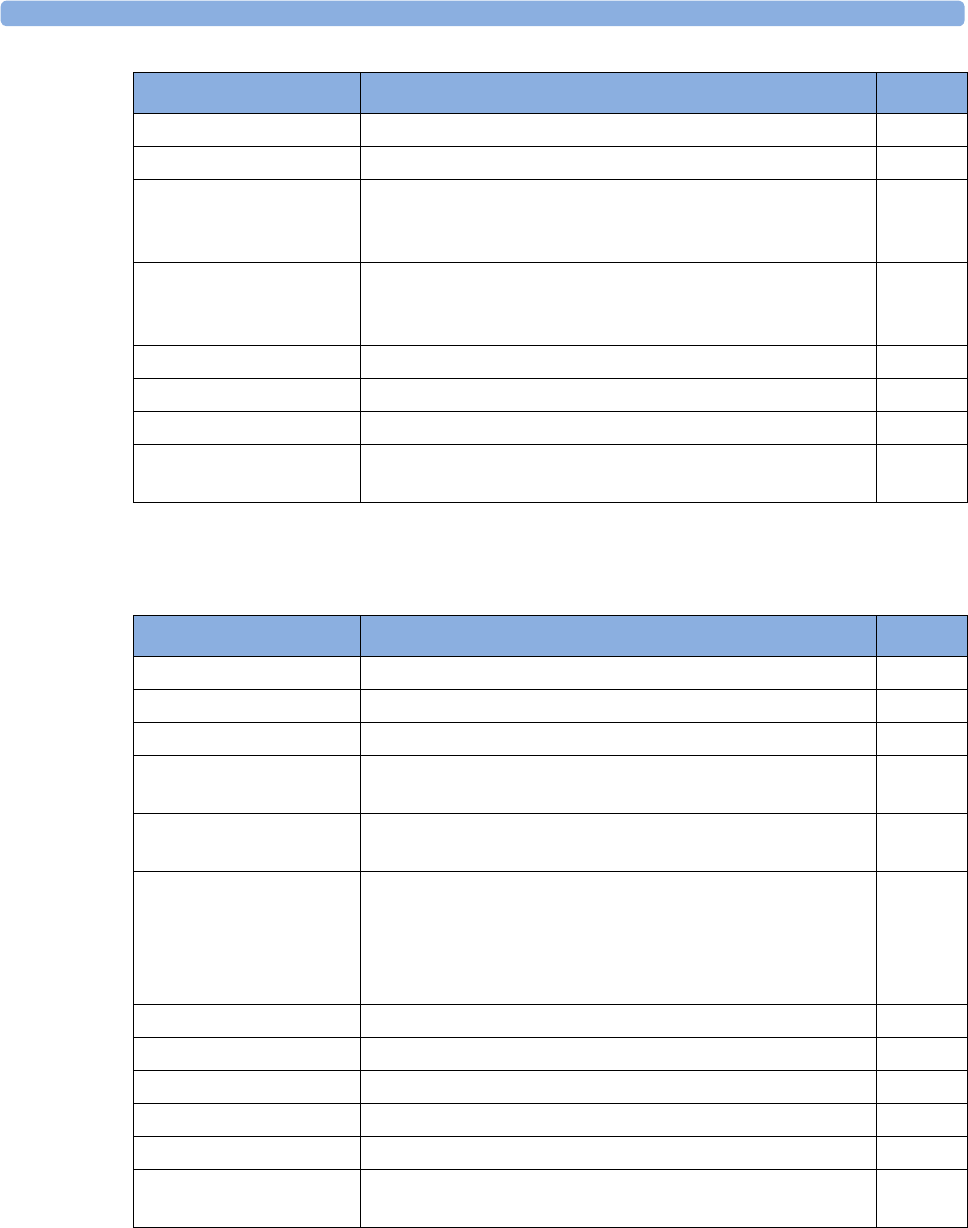
6 ECG, Arrhythmia, ST and QT Monitoring
158
Ectopic Status Messages
The label B or E indicates basic (B) or enhanced (E) arrhythmia capability.
Paced Rhythm A dominant rhythm of paced beats B, E
Irregular HR Consistently irregular rhythm E
Sinus Brady
Sinus Rhythm
Sinus Tach
A dominant rhythm of SV beats preceded by P-waves B, E
SV Brady
SV Rhythm
SV Tach
A dominant rhythm of SV beats not preceded by P-waves B, E
Unknown ECG Rhythm Rhythm cannot be determined B, E
Learning ECG Algorithm is learning the ECG beat morphology B, E
Learning Rhythm Algorithm is learning the rhythm of the classified beats B, E
Cannot Analyze ECG ECG signal is predominantly invalid and therefore cannot be
analyzed
B, E
Rhythm Status Message Description B or E
Ectopic Status Message Explanation B or E
(No message displayed) No ectopic activity within the last minute
Run PVCs More than 2 consecutive PVCs within the last minute E
Pair PVCs Pair PVCs within the last minute E
Pacer Not Capt Pause with pace pulse (paced patient only) within the last
minute
B, E
PacerNotPacing Pause without pace pulse (paced patient only) within the last
minute
B, E
Pause No beat detected for 1.75 x average R-R interval for HR <120,
or
No beat for 1 second with HR >120 (non-paced patient only),
or
No beat detected for more than the set pause threshold.
E
R-on-T PVCs R-ON-T detected within the last minute E
Multiform PVCs Multiform PVCs detected within the last minute E
Frequent SVPBs SVPB count within last minute is greater than 5 E
SVPBs 1-5 SVPBs in the last minute with a sinus rhythm and no Vs E
SV Beats SV count within last minute and rhythm status is paced B, E
Paced Beats Paced beat count within last minute and rhythm status is not
paced
B, E

6 ECG, Arrhythmia, ST and QT Monitoring
159
Arrhythmia Relearning
During a learning phase:
• Alarm timeout periods are cleared
• Stored arrhythmia templates are cleared
• Asystole, Vfib, and HR alarms (when there are enough beats to compute the HR) are active. No
other alarms are active.
Initiating Arrhythmia Relearning Manually
To initiate relearning manually, in the Setup Arrhy menu, select Relearn Arrhy.
– While the monitor is learning, the delayed arrhythmia wave displays the beat label L and the
rhythm status message Learning ECG.
– Next, the monitor determines the dominant rhythm. The beats are labeled N, and the rhythm
status message changes to Learning Rhythm.
After relearning is complete, you should check the delayed arrhythmia wave to ensure that the
algorithm is labeling the beats correctly.
If beats are still not classified correctly, check that the ECG is optimized for arrhythmia monitoring.
You may need to select a different lead or change the electrodes or electrode positions if there is
excessive noise, unstable voltage, low amplitude, or large P- or T-waves.
Automatic Arrhythmia Relearn
Arrhythmia relearning is initiated automatically whenever:
• ECG monitoring is switched on
• The ECG Lead or Lead Label of the primary/secondary lead is changed manually, or when
fallback occurs
• A Leads Off INOP condition (that has been active for > 60 seconds) ends.
If you are monitoring multi-lead arrhythmia and there is a change in one lead only, relearning happens
only in the affected lead. During this learning phase, the system will continue monitoring using the
other lead. Therefore, the delayed arrhythmia wave is not labeled L and there is no Learning ECG
rhythm status message. In addition, alarm timeout periods are maintained, stored arrhythmia templates
are maintained for the operative lead, and all alarms switched on are active.

6 ECG, Arrhythmia, ST and QT Monitoring
160
Arrhythmia Relearn and Lead Fallback
Lead fallback triggers an automatic arrhythmia relearn.
WARNING
If arrhythmia learning takes place during ventricular rhythm, the ectopics may be incorrectly learned as
the normal QRS complex. This may result in missed detection of subsequent events of V-Tach and V-
Fib.
For this reason you should:
• take care to initiate arrhythmia relearning only during periods of predominantly normal rhythm
and when the ECG signal is relatively noise-free
• be aware that arrhythmia relearning can happen automatically
• respond to any INOP messages (for example, if you are prompted to reconnect electrodes)
• be aware that a disconnected EASI electrode triggers an arrhythmia relearn on all leads
• always ensure that the arrhythmia algorithm is labeling beats correctly.
Arrhythmia Alarms
Arrhythmia alarms can be switched on and off and the alarm settings changed just like other
measurement alarms, as described in the Alarms section. Special alarm features which apply only to
arrhythmia are described here.
The different alarms detected and generated by the monitor depend on the level of arrhythmia analysis
that is enabled. For a complete list of arrhythmia alarms and INOPs, see the “Alarms” chapter.
The monitor detects arrhythmia alarm conditions by comparing ECG data to a set of pre-defined
criteria. An alarm can be triggered by a rate exceeding a threshold (for example, HR >xx), an abnormal
rhythm (for example, Ventricular Bigeminy), or an ectopic event (for example, Pair PVCs).
Yellow Arrhythmia Alarms
Yellow arrhythmia alarms are short yellow alarms specific to arrhythmia-related patient conditions.
The heart rate alarms (High HR and Low HR) can be configured as short yellow or standard yellow
alarms. When they are standard yellow alarms they exist independently of the other arrhythmia alarms
and no timeout periods apply.
WARNING
When arrhythmia analysis is on, all yellow ECG and arrhythmia alarms are short yellow alarms (one-
star). This means that the yellow alarm lamp and the tones are active for six seconds only, after which
the blinking numeric and the alarm message remain for up to three minutes. The only exception to this
are the HR High and Low alarms which can be configured as standard yellow alarms. Red alarms
behave as usual.

6 ECG, Arrhythmia, ST and QT Monitoring
161
Arrhythmia Alarms and Latching
When using arrhythmia analysis, Visual Latching and Audible Latching should be on for red alarms,
or at least Visual Latching should be on. Because of the transient nature of arrhythmia alarms, many
arrhythmia conditions may go unnoticed if alarm latching is off. This setting can only be changed in
Configuration Mode.
Switching Individual Arrhythmia Alarms On and Off
Some arrhythmia alarms can be individually switched on or off:
Non-Sustain, Vent Rhythm, Run PVCs, Pair PVCs, R-on-T PVCs, V.Bigeminy, V.Trigeminy,
Multif.PVCs, Pacer n.Cap, Pacer n.Pac, Pause, SVT, IrregularHR, Missed Beat, PVCs/min and Afib.
To switch individual alarms on or off, in the Setup Arrhy menu, select the alarm from the list to switch
between On and Off. Depending on your configuration, some alarms may not be available in the list
and cannot be switched on or off here.
The monitor displays the INOP message Some ECG AlarmsOff, if configured, when more alarms are
switched off than configured in your active profile.
Switching All Yellow Arrhythmia Alarms On or Off
All yellow arrhythmia alarms can be switched on and off together. To do this,
•In the Setup Arrhy menu, select All Yellow Off or All Yellow On.
Adjusting the Arrhythmia Alarm Limits
Some arrhythmia alarms have limits which can be individually adjusted:
VTach HR, VTach Run, PVCs/min, Vent Rhythm, SVT HR, SVT Run, Asystole Thresh., Pause
Threshold, Afib/IHR End Dly.
1To adjust alarm limits, in the Setup Arrhy menu, select the alarm to be adjusted.
2Select the appropriate setting from the pop-up list.
Arrhythmia Alarm Timeout Periods
Normally, an arrhythmia alarm is announced when an alarm condition is detected. However, there are
certain situations that can inhibit the audible and visible indications of the alarm even though the alarm
condition was detected. These include:
• if a more serious alarm condition is active in the same chain
• if a timeout period is in effect for a particular alarm
• if a timeout period is in effect for a higher alarm in that chain.
See “Arrhythmia Alarm Chaining” on page 162 for more details on alarm chains.
What is a Timeout Period?
Timeout periods are automatically started when a yellow arrhythmia alarm is detected. During this
period, the same alarm condition will not generate another alarm. Alarm conditions further down the
same arrhythmia alarm chain will also not generate an alarm, but alarms further up the chain will: see
“Arrhythmia Alarm Chaining” on page 162.
To view the timeout period configured for your monitor, in the Setup Arrhy menu, see the menu
items TimeOut 1st and TimeOut 2nd.
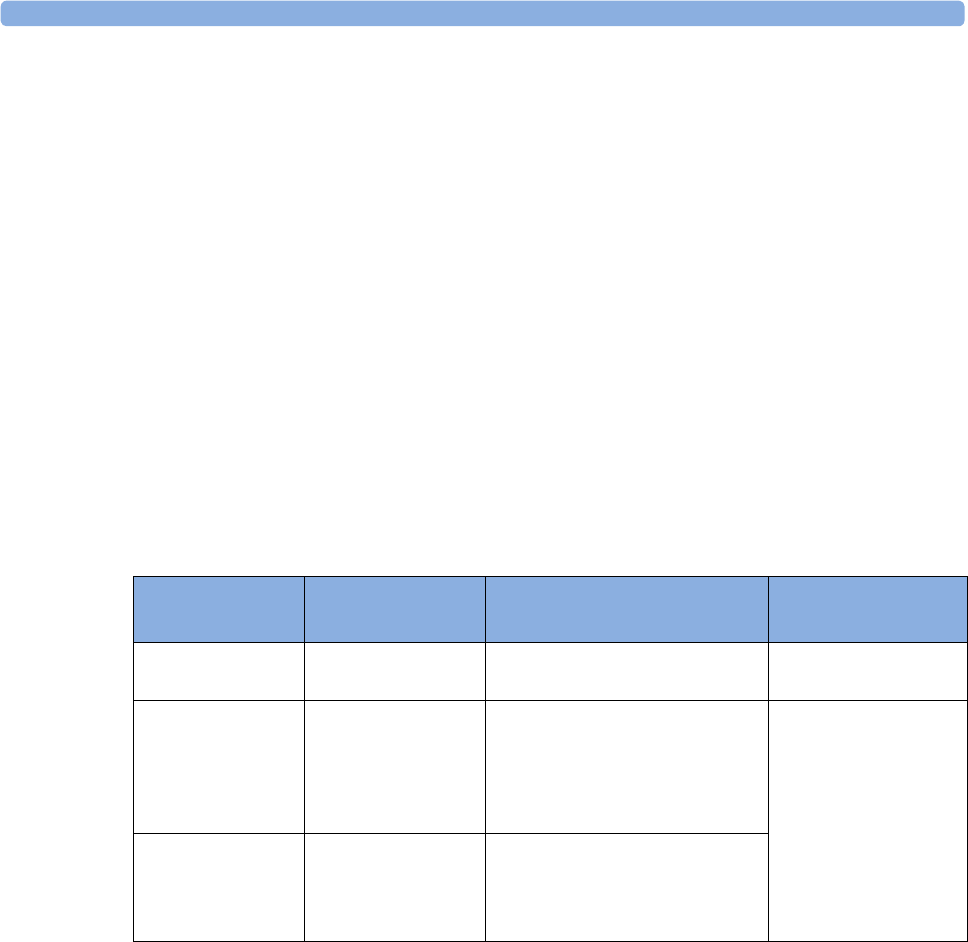
6 ECG, Arrhythmia, ST and QT Monitoring
162
This setting can only be changed in Configuration Mode.
** AFIB and ** Irregular HR alarms do not have a timeout period. These alarms can be generated
immediately after the corresponding end alarm was generated.
When ** HR High and ** HR Low alarms are configured as standard yellow alarms, they do not have a
timeout period.
Resetting the Timeout Period
To reset the timeout period, either
• select the Alarms Off or Pause Alarms permanent key and then reselect it, or
•select
Reset Alarming in the Review Alarms window or the Alarm Messages window.
How are Yellow Arrhythmia Alarms Indicated?
When a yellow arrhythmia alarm is generated, it triggers visual and audible indicators. Yellow
arrhythmia alarms are always set to latch visually for three minutes except HR High/Low alarms, if
configured to standard yellow. Depending on the alarm condition, audible and visual alarm indicators
will appear as follows:
If you silence a yellow arrhythmia alarm and the alarm condition still exists, the visual indicators
continue until the condition stops. You will get an alarm reminder every time the configured timeout
period has expired.
If you silence a yellow arrhythmia alarm and the alarm condition has stopped, the visual
indicators are immediately cleared. Silencing an alarm does not reset its timeout period, so you will not
get a realarm for the same condition or lower on the chain until the timeout expires.
Arrhythmia Alarm Chaining
When arrhythmia analysis is switched on, multiple alarm conditions may be present. Announcing all of
the detected alarm conditions would be confusing, and might hide a more serious condition. For this
reason, arrhythmia alarms are prioritized in three alarm "chains": PVC Alarms; Beat Detection Alarms,
and Rate Alarms.
Only the highest priority alarm condition in each chain is announced. Lower priority alarms in the
same chain will not be announced while an alarm is active or during the configured timeout period.
Alarm Condition Example Short yellow alarm tone
sounds
Alarm message
displayed
Single alarm
instance
Non-sustained V-
tach
when alarm condition is initially
detected
for 3 minutes (latching
time)
Continuous alarm
condition
PVCs/min HIGH when alarm condition is initially
detected and - as an alarm
reminder - every time the
configured timeout period has
expired
until the alarm
condition stops, plus a
maximum of three
minutes latching time
Same intermittent
alarm condition
Pair of PVCs each time the alarm condition is
detected, provided that the
configured timeout period has
expired
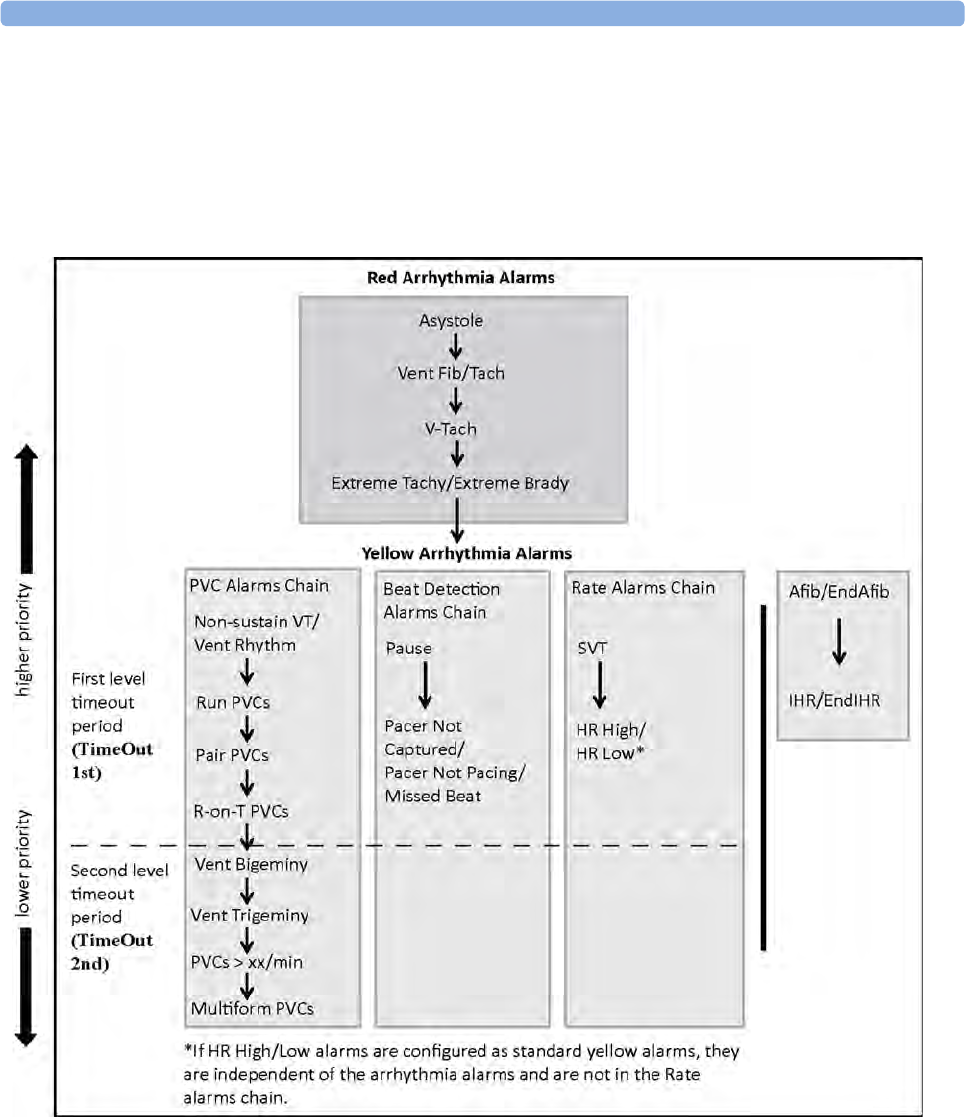
6 ECG, Arrhythmia, ST and QT Monitoring
163
If alarm conditions of equal severity from different chains are detected, the alarm condition that
occurred most recently is announced.
See “ECG and Arrhythmia Alarm Overview” on page 149 for information on which alarms are
included in the different arrhythmia options. See “Arrhythmia Alarm Timeout Periods” on page 161
for an explanation of how alarm timeouts work.
Examples of Alarm Chaining Logic
– If there is an active Vent Bigeminy alarm, a PVCs > xx/min will not be triggered because it is
lower on the same chain. However, a high HR alarm will become active because it is on a
different chain.
– Higher priority alarms supersede previous alarms. For example, if a Vent Trigeminy alarm is
active and a Pair PVCs occurs, the Pair alarm will be activated.
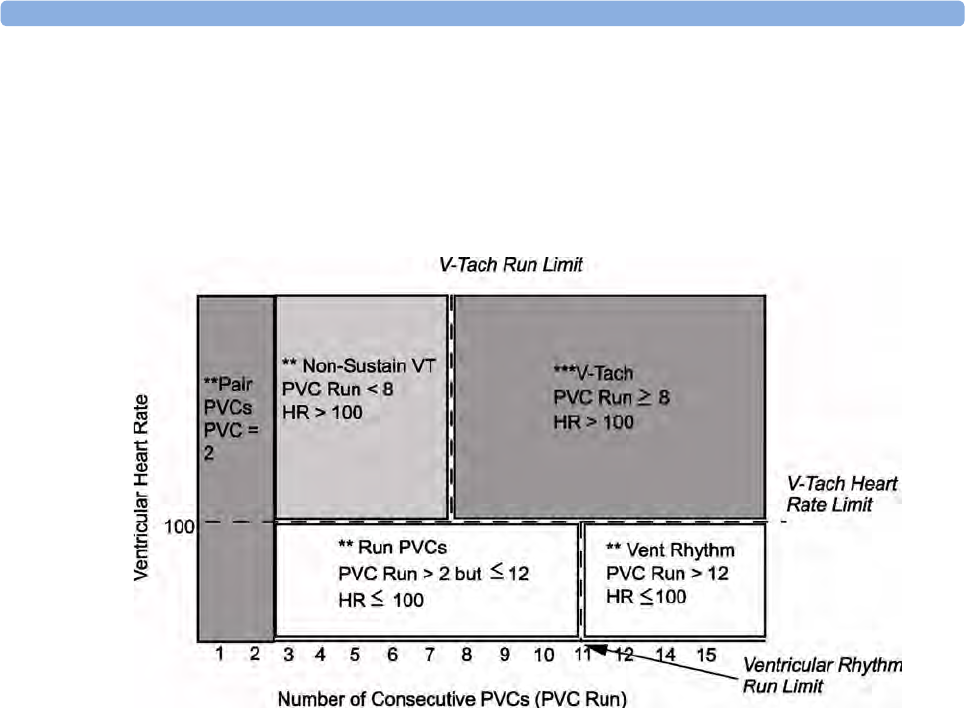
6 ECG, Arrhythmia, ST and QT Monitoring
164
Understanding PVC-Related Alarms
PVC-related alarms are detected on the basis of the current ventricular heart rate and the number of
consecutive PVCs counted (referred to as PVC Runs).
As an example, this diagram illustrates the conditions under which PVC alarms would be generated if
the Vent Rhythm Run limit is set to 12, the V-Tach Run Limit is set to 8, and the V-Tach HR Limit is
set to 100.
You will see that
• if both the V-Tach Heart Rate Limit and the V-Tach Run Limit are exceeded, a red V-Tach alarm is
generated
• if the ventricular heart rate exceeds the V-Tach Heart Rate Limit but not the V-Tach Run Limit, a
yellow Non-Sustain VT alarm is generated.
About ST Monitoring
The monitor performs ST segment analysis on normal and atrially paced beats and calculates ST
segment elevations and depressions. This information can be displayed in the form of ST numerics and
snippets on the monitor.
The monitor also performs ST Elevation (STE) analysis using automated ISO and J point
determination and measuring the ST segment directly at the J point (J +0). This is based on the
recommendations for measuring ST Elevation published by the American Heart Association, the
American College of Cardiology and the European Society of Cardiology.
All available leads can be monitored continuously. The ECG waveform does not need to be displayed
on the monitor for ST Segment analysis.
ST analysis is always performed using a dedicated filter which ensures diagnostic quality. If you are
monitoring ECG using an ECG filter mode other than Diagnostic, the ST segment of the ECG wave
may look different from the ST segment of the ST snippet for the same wave. For diagnostic
evaluation of the ST segment, always switch to Diagnostic filter mode or use the ST snippet.
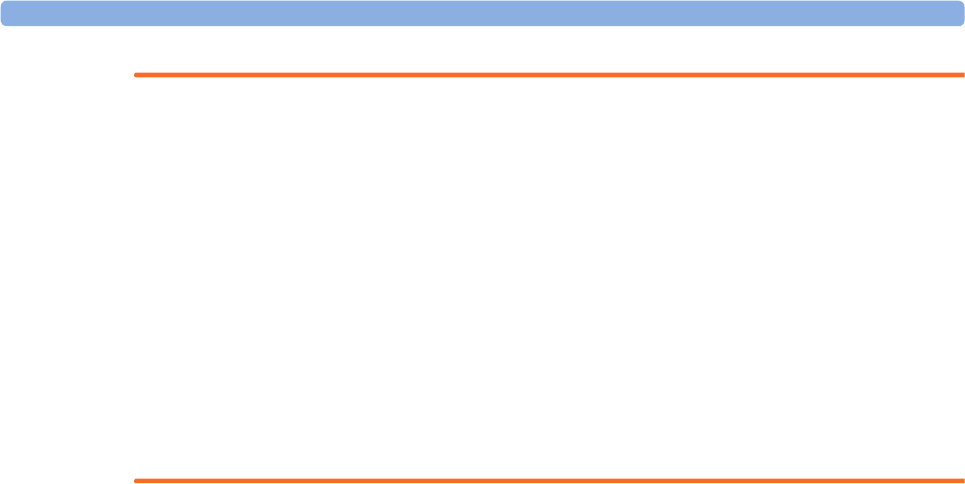
6 ECG, Arrhythmia, ST and QT Monitoring
165
WARNING
Some clinical conditions may make it difficult to achieve reliable ST monitoring, for example:
• if you are unable to get a lead that is not noisy
• if arrhythmias such as atrial fib/flutter are present, which may cause an irregular baseline
• if the patient is continuously ventricularly paced
• if the patient has left bundle branch block.
You should consider switching ST monitoring off if these conditions are present.
This monitor provides ST level change information; the clinical significance of the ST level change
information should be determined by a physician.
ST segment monitoring is intended for use with adult patients only and is not clinically validated for
use with neonatal and pediatric patients. For this reason, the recommended - and default - setting for
ST monitoring in neonatal and pediatric modes is ST Analysis: Off.
Switching ST or STE On and Off
ST and STE analysis can be switched on and off independently.
To switch all ST monitoring on or off, in the Setup ST Analysis menu, select ST Analysis to switch
between On and Off.
To switch all STE monitoring on or off, in the Setup ST Elevation menu, select STE to switch between
On and Off.
Selecting Leads for ST Analysis
You select which leads to use for ST analysis in the Setup ST Analysis menu.
To see the current list of leads selected for ST analysis:
1Enter the Setup ST Analysis menu.
2Select Setup ST Leads. This opens the Setup ST Leads pop-up window. Leads chosen for ST
monitoring are listed here. There are two pop-up keys at the bottom of the screen, Add and
Delete. If all leads are already selected, the Add pop-up key is disabled.
To choose a lead for ST monitoring:
1Select the Add key at the bottom of the Setup ST Leads window. This opens the Choices pop-up
window.
2Choose a lead from the list for ST monitoring. This closes the Choices window and adds the
selected lead to the list of chosen leads.
To disable ST monitoring for a lead:
1Choose a lead from the list in the Setup ST Leads window.
2Select the Delete key. This removes this lead from the list.
NOTE
The order in which ST leads are listed in the Setup ST Leads menu determines the order in which ST
leads are displayed on the monitor screen.
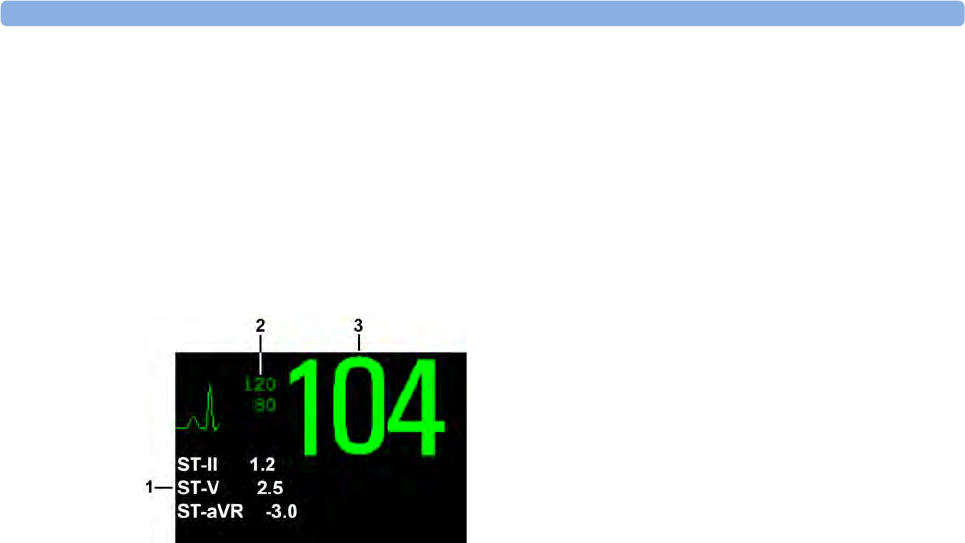
6 ECG, Arrhythmia, ST and QT Monitoring
166
To change the order in which ST leads are displayed,
1In the Setup ST Leads menu, choose a lead from the list.
2Select the Sort Up or Sort Down key to move the lead up or down in the list.
Understanding the ST Display
Your monitor screen may be configured to look slightly different from the illustrations.
ST Numerics
Up to 12 ST numerics plus the ST index can be displayed on the monitor screen. They can be
configured to show beside the measurement numerics, beside the ECG wave, or beside the ST snippet.
A positive ST value indicates ST segment elevation; a negative value indicates depression.
ST numerics are displayed in the order in which you select ST leads for analysis. If there is additional
space in the field assigned to ST numerics, the monitor will display extra numerics in the order in
which they appear in the list in Setup ST Leads, in the Setup ST Analysis menu. Any ST leads
switched on for analysis that do not fit in the assigned numerics field are shown in succession in place
of the last ST numeric.
ST Index
The ST index numeric (STindx) is the sum of the absolute values for the ST leads V2, V5, aVF.
Because it is based on absolute values, it is always a positive number. If you haven't selected one of the
leads V2, V5, and aVF for ST analysis, the ST index numeric will display a question mark "?".
To switch the ST index numeric on or off for display, in the Setup ST Analysis menu, select ST-Index
to toggle between On and Off.
ST Snippets
ST snippets show a one second wave segment for each measured ST lead. The most recent snippet is
drawn in the same color as the ECG wave, usually green, superimposed over the stored baseline
snippet, drawn in a different color. The comparison shows any deviation in the measurement since the
baseline snippet was stored, for example as a result of a procedure carried out on the patient. The
information is updated once per minute.
If you do not see ST snippets on the Screen, select the Screen name in the Monitor Info Line and
select a Screen configured to show snippets from the pop-up list of available Screens.
1ST numerics
2Current HR alarm limits
3Current heart rate
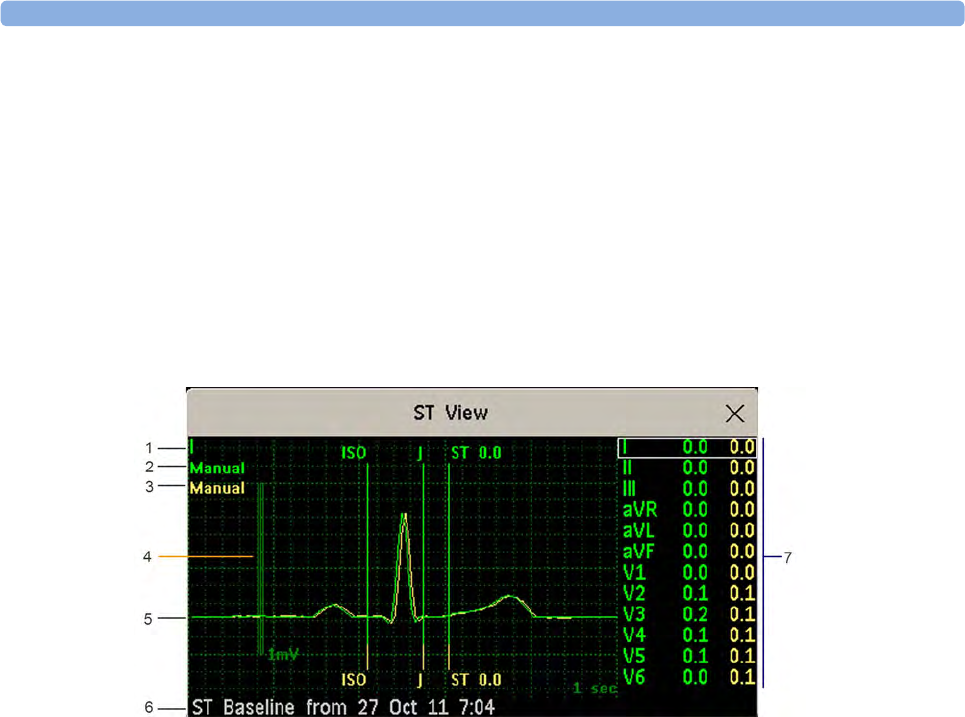
6 ECG, Arrhythmia, ST and QT Monitoring
167
ST View Window
The ST View Window shows a current ST snippet and numeric with a baseline snippet and numeric.
The two snippets are in different colors, so that you can differentiate between them easily and see at a
glance which numerics belong to which snippet. In the upper left corner the current lead and the ISO/
J-Point mode for the current snippet and the baseline snippet is shown. On the right side all available
ST numerics are shown. The date and time of the baseline snippet is shown at the bottom of the
window.
The ST View Window opens with the ST pop-up keys Current / Baseline / Overlap (to select viewing
mode), Show Points /Hide Points, Update Baseline, Record ST, STE View, Adjust ST Points, ST
Map, Setup ST and arrow keys for scrolling through the available leads.
To view the ST View window, select any snippet on the Screen.
1Current Lead
2ISO/J-point mode for current snippet
3ISO/J-point mode for baseline snippet
41 mV calibration bar
5Current ST snippet and ST baseline snippet overlapped
6Timestamp of most recently stored baseline snippet
7All available ST numerics for current snippet and baseline snippet
The ST point, J-point and ISO point can be hidden using the Hide Points pop-up key.
STE View Window
The STE View window shows a current ST snippet and STE numeric with an ST baseline snippet. The
two snippets are in different colors, so that you can differentiate between them easily. In the upper left
corner the current lead is shown. On the right side all available STE numerics are shown. The date and
time of the ST baseline snippet is shown at the bottom of the window.
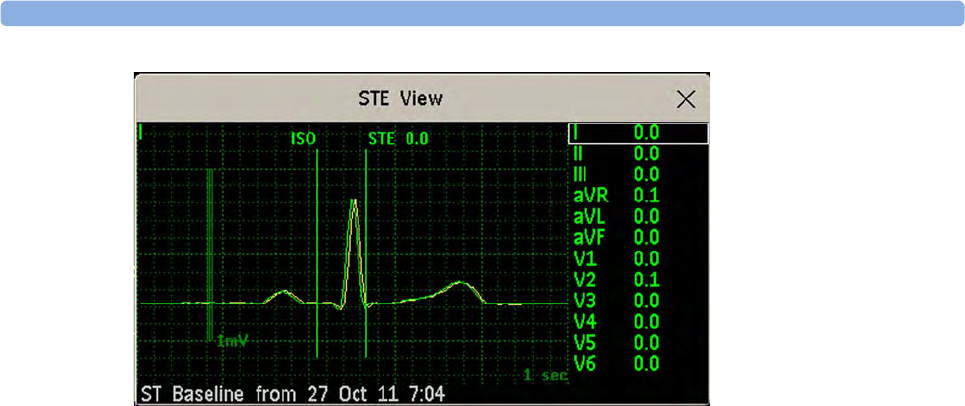
6 ECG, Arrhythmia, ST and QT Monitoring
168
The STE View window opens with the pop-up keys Current / Baseline / Overlap (to select viewing
mode), Show Points/Hide Points, Record STE, ST View, ST Map, Setup ST and arrow keys for
scrolling through the available leads.
The ST point, J-point and ISO point can be hidden using the Hide Points pop-up key.
Updating ST Baseline Snippets
ST analysis requires valid samples to measure and store a snippet. ST Snippets and ST values are
updated every minute. If there is artifact in the signal, it may take longer for an ST snippet and an ST
value to appear.
The first baseline is stored automatically after ST monitoring is started, or when a new patient is
admitted.
To update ST baselines,
1Select an ST snippet to open the ST View window.
2In the ST View window, select Update Baseline to store all current snippets as baselines. This
deletes all previously-stored baselines.
An ST baseline copy is also stored in the MMS, for transport purposes.
Recording ST Segments
To record all currently available ST snippets and baselines, in the ST View window, select the pop-up
key Record ST.
About the ST Measurement Points
The ST value for each beat complex is the vertical difference between the ISO point and the ST point,
as shown in the diagram below.
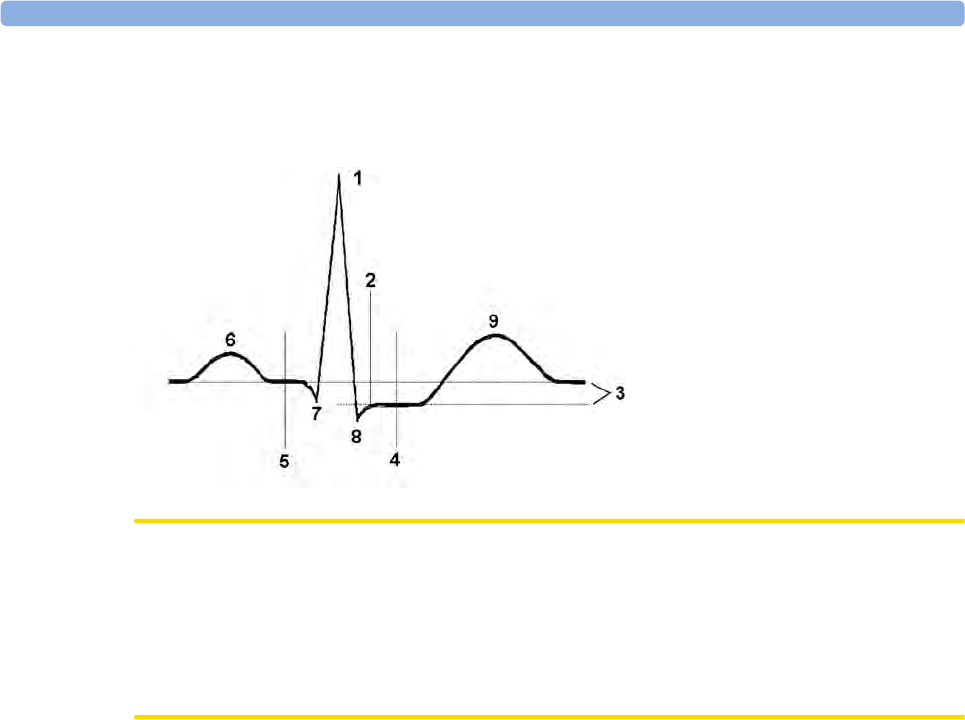
6 ECG, Arrhythmia, ST and QT Monitoring
169
The isoelectric (ISO) point provides the baseline, the ST point is at the midpoint of the ST segment.
The J point is where the QRS complex changes its slope; as it is a fixed distance away from the ST
point, it can be useful to help you position the ST point correctly.
CAUTION
If using ST analysis, the ST measurement points need to be adjusted when you start monitoring, and if
the patient's heart rate or ECG morphology changes significantly, as this may affect the size of the QT
interval and thus the placement of the ST point. Artifactual ST segment depression or elevation may
occur if the isoelectric point or the ST point is incorrectly set.
Always ensure that ST measurement points are appropriate for your patient.
Setting ISO and J-Point Detection Mode
There are two modes for ISO and J-point detection: Auto and Manual. In Manual mode you can set
the measurement points yourself. In Auto mode the measurement points will be determined
automatically.
To set the detection mode, in the Setup ST Analysis window,
1Select ISO/J Point.
2Select Auto or Manual mode.
Adjusting ST Measurement Points
If the ISO and J-point detection mode is set to Manual, all three measurement points can be set. In
Auto mode, only the ST point can be changed.
To adjust the ST measurement points, in the Setup ST Analysis menu,
1Select Adjust ST Points to open the Adjust ST Points window.
Alternatively, you can use the Adjust ST points pop-up key in the ST View window.
2Select a suitable ECG lead for ST measurement, with a visible J-point and a visible P wave. Use the
up and down arrow keys to scroll through the ST snippets for the other ECG leads.
1R-wave peak at 0 msec
2J point, for example, 48 msec
3Difference = ST value
4ST measurement point, for
example, J + 60 msec
5Isoelectric point set to -80 msec
6P
7Q
8S
9T
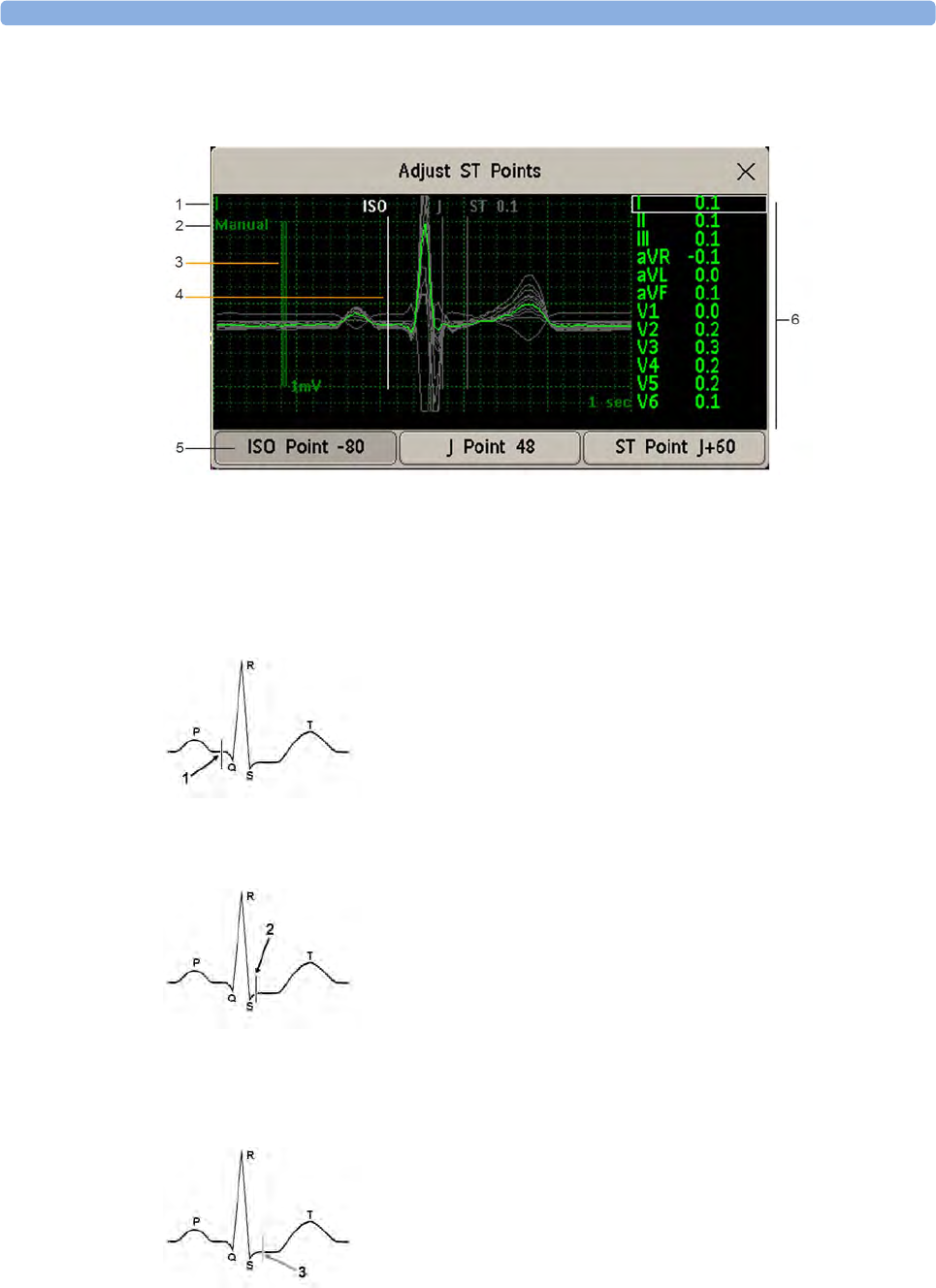
6 ECG, Arrhythmia, ST and QT Monitoring
170
3Use the Select Point pop-up key to scroll through the points and activate the point you need to
adjust, then use the left and right arrow keys to move the measurement point. Each point is
highlighted while active.
1 ST label
2 Current ISO/J-point detection mode
3 1 mV calibration bar
4 Cursor for adjusting ISO points
5 Highlighted ISO point
6 All available ST numerics for current snippet
The ISO-point cursor (1) positions the isoelectric point relative to the R-wave peak. The relation is
shown beside the ISO-point in milliseconds. Position the ISO-point in the middle of the flattest
part of the baseline (between the P and Q waves or in front of the P wave).
The J-point cursor (2) positions the J-point relative to the R-wave peak. It helps you to correctly
position the ST-point. Position the J-point at the end of the QRS complex and the beginning of
the ST segment.
The J-point cursor is not available if your monitor is configured to let you set the ST point directly.

6 ECG, Arrhythmia, ST and QT Monitoring
171
To position the ST-point (3) relative to the J-point:
select either J+60 or J+80. Select J Point and use the arrow keys to move the J-Point and position
the ST-point at the midpoint of the ST segment.
To position the ST-point directly:
select ST Point and use the left and right arrow keys to position the ST point at the midpoint of the
ST segment.
4Select the Apply Changes pop-up key to activate the new ST measurement points and recalculate
all ST values.
The most recent ST Points adjustment time is displayed in the Adjust ST Points window. This
information is cleared when a patient is discharged or when a new Profile is loaded into the
monitor.
5To update the ST snippet shown in the Adjust ST Points window, select the Update pop-up key.
ST Alarms
ST alarms are yellow alarms. Each ST lead has its own alarm limit. ST alarms are triggered when an ST
value exceeds its alarm limit for more than one minute. Switching ST alarms off switches off alarms for
all ST leads.
If more than one ST measurement is in alarm, the monitor only displays the alarm message of the ST
lead which is currently furthest from its set alarm limits.
Changing ST Alarm Limits
The monitor can detect alarms on each ST lead separately, so you can set high and low ST alarm limits
individually for each ST lead. When two contiguous leads are available, ST alarms will be generated
when ST values of the two contiguous leads are outside the limit. When no contiguous lead is available
an ST alarm is generated when the ST value of the single lead is outside the limit.
Set the high and low alarm limits based on your assessment of the patient's clinical condition, unit
protocols, physician orders or medication-specified limits. A good guideline is + 1.0 mm or - 1.0 mm
from the patients's ST, or follow your hospital protocol.
1In the Setup ST Analysis menu, select the alarm to be adjusted.
2Select the appropriate setting.
STE Alarms
The STE alarm is a yellow alarm. It can be switched on and off in the Setup ST Elevation menu but
the limits can only be changed in Configuration mode. The STE alarm limits are gender specific and
can be set individually for limb leads, V2/V3 leads, and V1/V4/V5/V6 leads. The default values, for
example on V2 and V3 1.5 mm for females and 2.0 mm for males, are based on the recommendations
from the American Heart Association and American College of Cardiology.
The ST Elevation measurements with automated J-point determination generate ST Elevation alarms,
in addition to the ST measurements at the user-defined ST point (J+offset), which may be useful for
ST depression alarms. When ST and STE analysis are both in use, this may result in redundant alarms
for ST elevations. Because of the different measurement points, there may be different values
obtained. Thus there could be an ST alarm and an STE alarm but the STE alarm may announce sooner
based upon the values obtained.
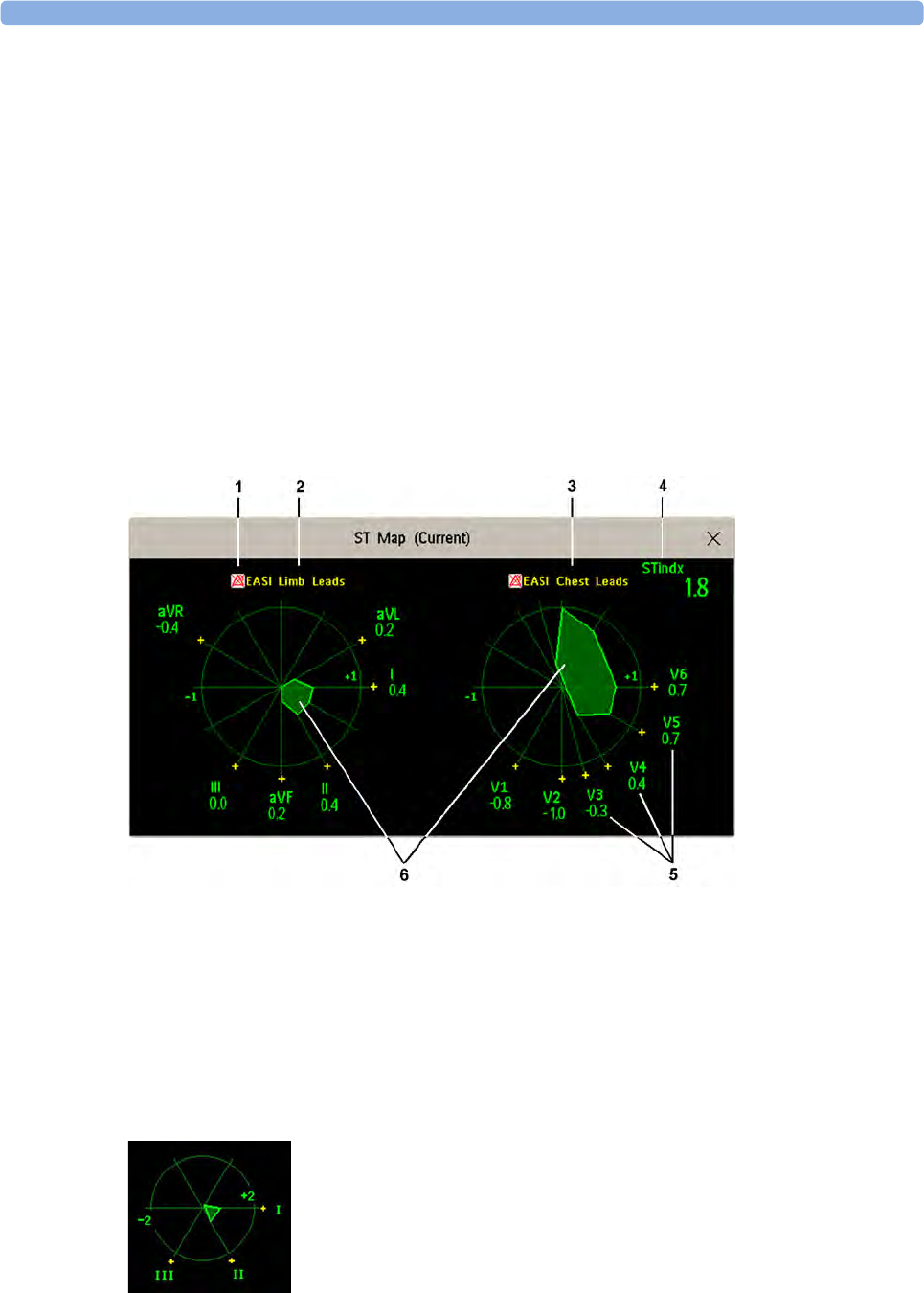
6 ECG, Arrhythmia, ST and QT Monitoring
172
Viewing ST Maps
The monitor can derive a multi-axis portrait (map) from the ST analysis to help you detect changes in
ST values. It displays two planes obtained from a multilead ECG in a multi-axis diagram, where each
axis represents a lead. The ST value at the J point is given. The position of the axes within the diagram
correspond to the placement of the ECG leads. Each ST value is assigned to either a limb lead, or to a
chest lead. Every axis shows the polarity of the lead it represents. By joining adjacent ST values, the
monitor obtains the ST map. The contour line, and the map shading, is shown in the same color as the
ECG parameter.
Current View
In current view, the monitor displays an ST map that corresponds to the current ST values. Three or
more leads per plane are necessary to display a map.
The left of the following diagram shows leads I, II, III, aVR, aVL, and aVF on the limb leads. On the
right, the V-leads (V1, V2, V3, V4, V5, and V6) are on the chest leads.
1Alarm status indicator
2EASI Limb Leads
3EASI Chest Leads
4ST index (for EASI)
5ST label, value and polarity of corresponding lead
6ST map
If an ST lead is switched off, its axis is not shown in the map.
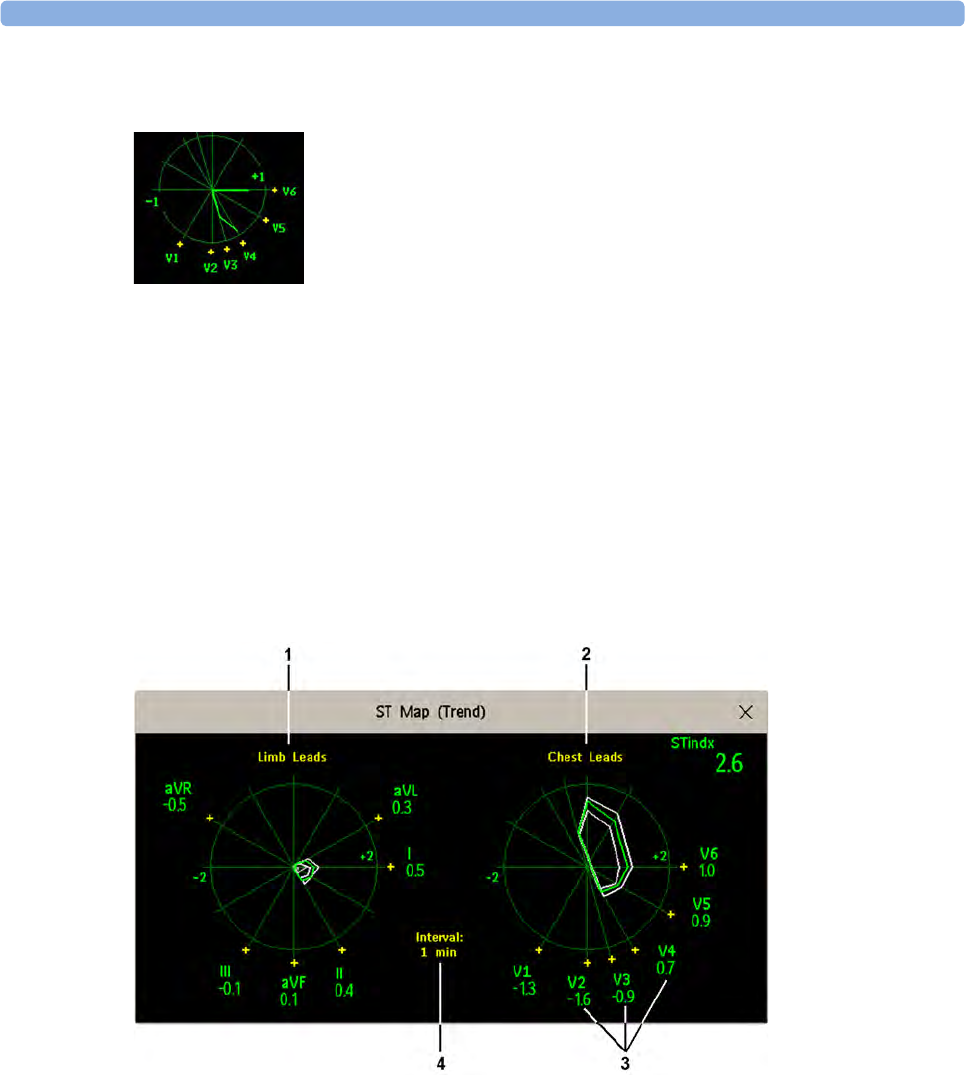
6 ECG, Arrhythmia, ST and QT Monitoring
173
If a lead is in INOP (the value is being measured but is invalid or unavailable because, for example, the
corresponding ECG electrode is off), the area formed by the remaining ST leads is left open.
If there is insufficient information (for example, there are less than three chest leads) for a second ST
map to be displayed, the currently available ST values are displayed in place of the second ST map.
Trend View
In trend view, you can see up to four trended ST maps, and the current ST map, simultaneously. You
can configure the time interval between trended samples. The most recent map is shown in the same
color as the parameter itself. Past values change from white through dark gray. In the diagram below,
the time interval between trends is one minute. The first trended sample is white and is one minute old.
The second trended sample corresponds to the ST values two minutes ago and so forth. The ST values
on the diagrams show the current ST values.
If a lead is turned off, its axis is no longer shown. This has no impact on the presentation of trended
values that were recorded while the lead was still on.
1Limb Leads
2Chest Leads
3current ST values
4trending interval

6 ECG, Arrhythmia, ST and QT Monitoring
174
Viewing an ST Map
To display an ST map,
•In the Main Setup menu, select ST Map.
Working in the ST Map Task Window
You may need to activate the ST map task window to see all the data, and to access the pop-up keys.
Select the map view on screen to activate its task window. Once you activate it, you can perform the
tasks detailed here.
Switching Between ST Map Views
To switch between views,
•Select
Current View or Trend View to toggle between views.
If your trend view is empty, you need to adjust the priority of this measurement in the trending priority
list. See “Trend Priority” on page 316.
Displaying an ST Reference Baseline
You can display an ST reference baseline for the current view, or for the trended view. The baseline is
shown in yellow. However, if the ECG color is yellow, the baseline is shown in green. Use this baseline
to detect ST changes. The baseline is derived automatically whenever the monitor relearns arrhythmia
and also on user request.
Select Show Baseline/Hide Baseline to toggle between baseline display on and off.
Updating an ST Map Reference Baseline
To update the baseline,
•In the Setup ST Analysis menu, select ST View then select Update Baseline.
Changing the Scale of the ST Map
To change scale,
•Select
Size Up or Size Down to alter the size at which monitor displays the map.
In this diagram, V4 was either temporarily switched off, or in INOP,
for around 30 seconds. No data was recorded. Consequently, the
affected maps are not closed.
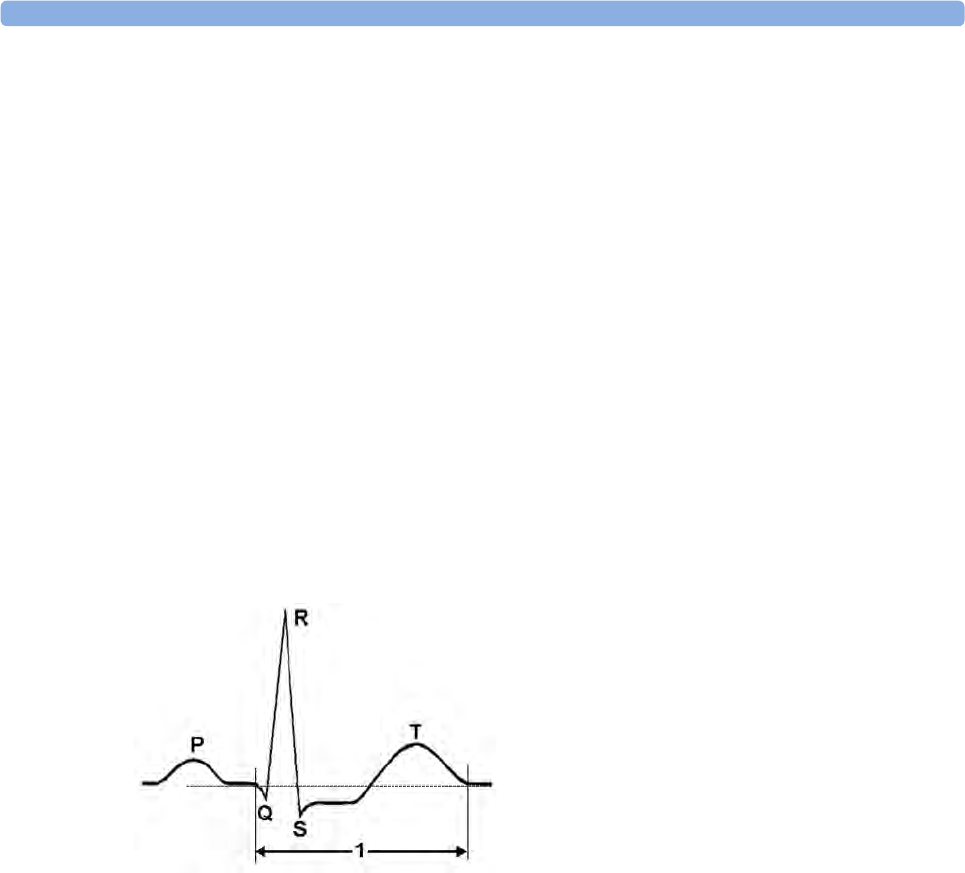
6 ECG, Arrhythmia, ST and QT Monitoring
175
Changing the Trending Interval
To determine how frequently the monitor displays a trended sample,
1In Trend view, select Select Interval.
2Select the required interval from the menu. The interval ranges between 12 seconds to 30 minutes.
Printing an ST Map Report
To print the most recently viewed (current or trend) window,
1Select Main Setup then select Reports.
2Select ST Map.
3Press Print.
About QT/QTc Interval Monitoring
The QT interval is defined as the time between the beginning of the Q-wave and the end of the T-
wave. It measures the total duration of the depolarization (QRS duration) and repolarization (ST-T)
phases of the ventricular action potential. QT interval monitoring can assist in the detection of
prolonged QT interval syndrome.
The QT interval (1) has an inverse relationship to heart rate. Faster heart rates shorten the QT interval
and slower heart rates prolong the QT interval. Therefore there are several formulas used to correct
the QT interval for heart rate. The heart rate corrected QT interval is abbreviated as QTc. The monitor
uses as a default the Bazett correction formula and the alternative Fridericia formula can be selected in
Configuration Mode.
For QT interval monitoring to be effective, basic or enhanced arrhythmia monitoring should be turned
on.
QT Measurement Algorithm
The QT values are updated every five minutes except in the initial phase (first five minutes) where they
are updated once per minute. Normal or atrial paced beats and beats with a similar morphology are
averaged to form a representative waveform for further processing. Normal beats followed by a
premature QRS will be excluded from the measurements to prevent the premature beat from
obscuring the end of the T-wave. If the algorithm cannot form a representative waveform, for example
because the morphology of the beats is too varied, a Cannot Analyze QT INOP will be generated after
10 minutes. This is also the case if normal beats have been falsely labeled so that the algorithm does
not have enough valid beats to make QT measurements. No QT value is calculated if the QT-HR is
>150 bpm (Adult) or >180 bpm (Pedi/Neo).

6 ECG, Arrhythmia, ST and QT Monitoring
176
Because of the different algorithm approaches, a QT/QTc measurement from a diagnostic 12-lead
program may differ from the realtime measurement on the monitor.
Where Can I Find More Information?
See the Application Note on QT/QTc Interval Monitoring and the QT Interval Monitoring Quick
Guide supplied on your documentation DVD for detailed information on the QT algorithm and
performance.
Indications For Use Of QT Interval Monitoring
Of special concern for QT monitoring is the administration of QT prolonging drugs to patients
identified with risk factors for Torsade de Pointe. Females, older patients and patients with
bradycardia, impaired left ventricular function (ischemia, left ventricular hypertrophy), hypokalemia
and hypomagnesemia are in this increased risk category.
Limitations For Use Of QT Interval Monitoring
Some conditions may make it difficult to achieve reliable QT monitoring, for example:
• the T-wave is very flat
• T-waves are not well defined due to atrial flutter or atrial fibrillation
• the end of the T-wave is difficult to define because of the presence of U-waves
• a high heart rate causes the P-wave to encroach on the end of the previous T-wave
• noise or high QRS morphology variation
For these cases you should select a lead with a good T-wave amplitude and no visible flutter activity,
and without a predominant U-wave or P-wave.
Some conditions such as left or right bundle branch block or hypertrophy can lead to a widened QRS
complex. If a long QTc is observed you should verify it to ensure that it is not caused by QRS
widening.
Because normal beats followed by ventricular beats are not included in the analysis, no QT
measurement will be generated in the presence of a bigeminy rhythm.
If the heart rate is extremely high (over 150 bpm for adults and over 180 bpm for pediatrics and
neonates) QT will not be measured.
When the heart rate changes, it can take several minutes for the QT interval to stabilize. For reliable
QTc calculation it is important to avoid a region where the heart rate is changing.
WARNING
QT/QTc measurements should always be verified by a qualified clinician.
Selecting The QT Leads
For QT Monitoring you can select one of the following three modes:
• All Leads mode - all available leads (I, II, III, V, MCL, V1 - V6) are used to produce a global QT
measurement. For EASI lead placement, directly acquired AI, AS and ES leads are used.
• Primary-Lead mode - the primary lead will be used for QT measurement. If the original primary
lead becomes unavailable or is changed, QT measurement will continue with the new primary lead.
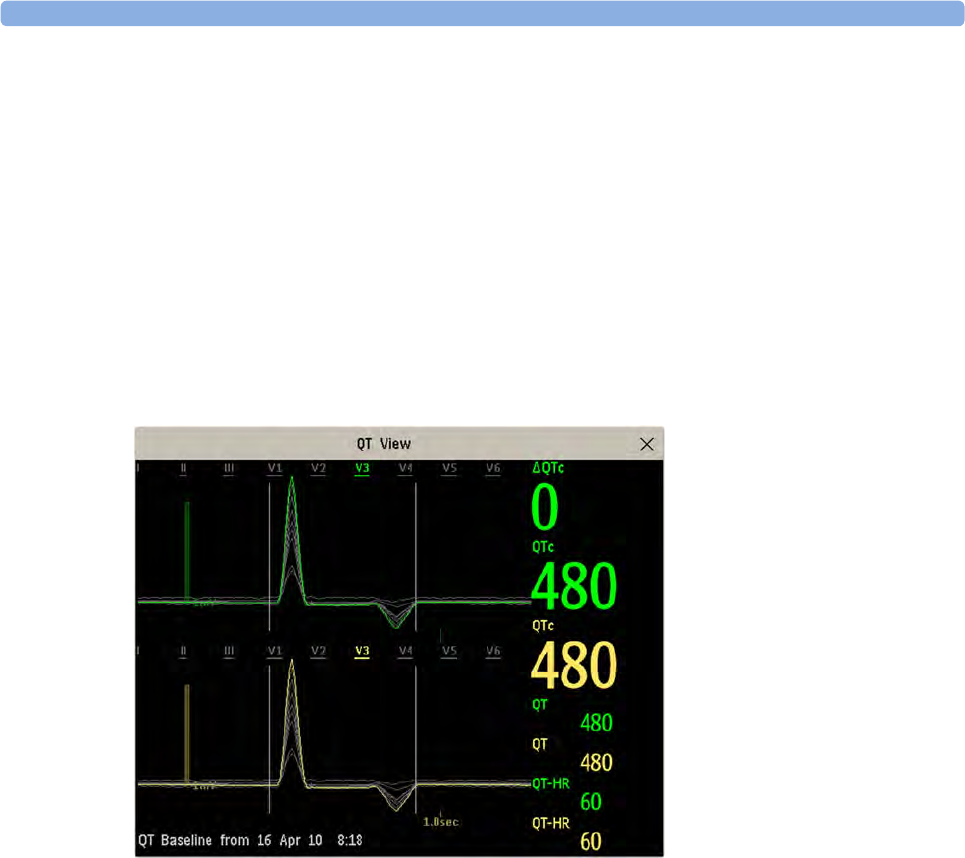
6 ECG, Arrhythmia, ST and QT Monitoring
177
• Single-Lead mode - a single lead selected from all available leads (except the augmented leads) will
be used for QT measurement. QT measurement will stop if the selected lead becomes unavailable.
To select the mode,
1Select the QT numeric to enter the Setup QT Analysis window.
2Select QT Lead and select All, Primary Lead or one of the available single leads.
When using the All Leads mode, make sure when you compare QT values that they are based on the
same set of leads.
Changing the lead(s) used for QT measurements will not cause the baseline to be reset.
QT View
In the QT View window you can verify that the QT algorithm detects correct Q and T points.
The current waves are shown in the upper half of the window and the baseline waves in a different
color below. The Q and T points are marked with a vertical line. By selecting one of the lead labels at
the top of the window you can highlight the corresponding wave; the other waves are shown in gray.
The underlined lead labels are the leads used for the QT calculation. By selecting the numeric area you
can highlight all underlined leads.
Changing The View To A Single Wave Set
To view one set of waves in a larger scale, you can cycle through the different views,
1Select Current view to see the set of current waves.
2Select Baseline view to see the set of baseline waves.
3Select Split view to return to the combined view with current and baseline waves.
Setting The QT Baseline
In order to quantify changes in the QTc value, you can set a QTc baseline. For example to assess the
effect of medication on the QT interval you can set the current value as the baseline before you begin
medication. This baseline will then be used to calculate the ΔQTc value.

6 ECG, Arrhythmia, ST and QT Monitoring
178
To set the baseline,
•Select
Set Baseline and set the value.
If no baseline has been set for this patient, the first five minute value after the start of monitoring is
automatically set as baseline. If you set a new baseline the previous baseline is discarded. As the ΔQTc
alarm is based on the difference between the baseline and the current value, setting an inappropriate
new baseline may prevent a ΔQTc alarm from being generated. Discharging a patient clears the
baseline.
Printing The QT Waves
To start a printout,
•Select
Print QT.
Recording The QT Waves
To start a recording,
•Select
Record QT.
QT Alarms
There are two QT alarms, QTc high limit alarm and ΔQTc high alarm. The QTc high limit alarm is
generated when the QTc value exceeds the set limit for more than 5 minutes. The ΔQTc alarm is
generated when the difference between the current value and the baseline value exceeds the set limit
for more than 5 minutes.
The Cannot Analyze QT INOP and the -?- will be displayed when no QT measurement could be
calculated for 10 minutes. Up to this time the previous valid value will be displayed. The following
additional messages on the cause of the invalid measurements may also be displayed.
Additional Message Cause of Invalid QT Measurement
QT Startup QT monitoring was just turned on or has been reset
Asystole or Leads Off 1Not all specified leads needed to perform QT analysis are
available, or
2Asystole condition is detected
Too few N labeled beats Not enough valid QRS complexes to generate a QT measurement
Invalid Rhythm for QTc Not enough valid RR intervals to generate QT-HR, the averaged HR
used for QTc calculation
High QT-HR QT-HR exceeds the specified upper limit of 150 bpm (for adults) or
180 bpm (for neonates and pediatrics)
Small R Wave R-wave of the signal is too small
Small T Wave T-wave of the signal is too small
End of T not Detected End of the T-Wave cannot be accurately detected
QT out of Range QT measurement is outside the specified range of valid QT values
(200-800 msec)
QTc out of Range QTc measurement is outside the specified range of valid QTc values
(200-800 msec)
QTc Erratic QTc measurements are not stable

6 ECG, Arrhythmia, ST and QT Monitoring
179
Switching Individual QTc Alarms On and Off
Each QTc alarm can be switched off individually.
To switch an alarm on or off, in the Setup QT Analysis menu, select QTc High Alarm or ΔQTc High
Alarm to toggle between On and Off.
Changing QTc Alarm Limits
Set the high alarm limits based on your assessment of the patient's clinical condition, unit protocols,
physician orders or medication specified limits.
1In the Setup QT Analysis menu, select QTc High Limit.
2Select the appropriate setting.
3Select ΔQTc High Limit.
4Select the appropriate setting.
Switching QT Monitoring On and Off
To switch all QT monitoring on or off, in the Setup QT Analysis menu, select QT Analysis to switch
between On and Off.

6 ECG, Arrhythmia, ST and QT Monitoring
180

7
181
7Monitoring Pulse Rate
The pulse numeric counts the arterial pulsations that result from the mechanical activity of the heart in
beats per minute (bpm). You can display a pulse from any measured SpO2 signal (pleth wave), or any
arterial pressure (P, ABP, ART, Ao, PAP, UAP, FAP, BAP: see the “Monitoring Invasive Pressure”
chapter for an explanation of the pressure labels). The displayed pulse numeric is labeled and color-
coded to match its source wave. If the pulse numeric is not displayed, see the Setup Pulse menu to
check whether it is switched on.
Entering the Setup Pulse Menu
If a pulse numeric is displayed on the screen, select it to enter the setup menu for that pulse source. If
no pulse numeric is visible, in the setup menu from the measurement, select pulse with the correct
source, e.g. Pulse (HR).
System Pulse Source
The currently selected system pulse source is shown in the setup menus of the pulse source
measurements. The pulse rate chosen as system pulse:
• is monitored as system pulse and generates alarms when you select pulse as the active alarm source
• is sent via the network to the Information Center, if available
• is trended in the HighRes Trends and stored in the monitor's databases.
To define which pulse rate is used as system pulse,
1In the Setup Pulse menu, select System Pulse.
2Select one of the SpO2, cmResp or arterial pressure labels from the pop-up list, or select Auto.
If you select Auto, the monitor automatically chooses a pulse rate to be used as system pulse. It
looks through the list from top to bottom and activates the first pulse rate that is switched on and
available.
If your selected pulse source measurement becomes unavailable or is switched off, the monitor will use
the next measurement from the list as system pulse until the selected pulse source measurement
becomes available again.

7 Monitoring Pulse Rate
182
Switching Pulse On and Off
To switch a particular pulse numeric on or off, enter the Setup Pulse menu via the measurement setup
menu or wave menu of the pulse source. For example, to switch an SpO2 pulse numeric on or off,
1Enter the Setup Pulse menu by selecting the Pulse numeric or by selecting Pulse in the Setup
SpO₂ menu.
2In the Setup Pulse menu, select the correct pulse label, e.g. Pulse (SpO₂), to toggle between On
and Off.
Using Pulse Alarms
You can change pulse rate alarm limits in the ECG/Pulse Alarms menu which can be accessed from
the Setup Pulse menu or the Setup ECG menu by selecting Alarm Source. Changing the alarm limits
for a specific Pulse numeric changes the alarm limits for all pulse rate alarms and heart rate alarms.
Pulse alarms are only generated when the active alarm source is set to Pulse, a pulse source is set as
system pulse and pulse alarms are switched on.
Selecting the Active Alarm Source: ECG or Pulse?
In most cases the HR and Pulse numerics are identical. In order to avoid simultaneous alarms on HR
and Pulse, the monitor uses either ECG or Pulse as its active alarm source. To change the alarm
source, select Alarm Source in the ECG/Pulse Alarms menu, then select
•ECG/Arrhythm: if you want the HR to be the alarm source for HR/Pulse.
•Pulse: If you select Pulse as the active alarm source, the monitor will prompt you to confirm your
choice. Be aware that if you select Pulse as the alarm source, all arrhythmia and ECG HR alarms
are switched off.
•Auto: If the alarm source is set to Auto, the monitor will use the heart rate from the ECG
measurement as the alarm source whenever the ECG measurement is switched on and at least one
ECG lead can be measured without an INOP condition.
The monitor will automatically switch to Pulse as the alarm source if:
– a valid ECG lead can no longer be measured
and
– a Pulse source is switched on and available,
The monitor then uses the pulse rate from the measurement currently active as system pulse.
While Pulse is the alarm source, all arrhythmia and ECG HR alarms are switched off. If an ECG
lead becomes available again, the monitor automatically uses HR as alarm source.
Note:
If ECG is switched off, the monitor will always change to Pulse as alarm source, if a Pulse is available.
One exception to this rule can arise when you have a telemetry device paired with your monitor. The
monitor ECG is then deactivated but the monitor may be configured to allow only ECG as the active
alarm source. In this case the monitor will not switch to Pulse as alarm source and Pulse will not be
available as a selection in the ECG/Pulse Alarms menu.

7 Monitoring Pulse Rate
183
WARNING
Selecting Pulse as the active alarm source for HR/Pulse switches off the arrhythmia alarms listed in the
section “ECG and Arrhythmia Alarm Overview” on page 149, including Asystole, Vfib and Vtach
alarms, and the heart rate alarms. This is indicated by the message ECG/Arrh AlarmsOff (unless this
has been configured off for your monitor), and the crossed-out alarm symbol beside the ECG heart
rate numeric. The message ECG/Arrh AlarmsOff can be configured off, or to switch to a yellow
(medium severity) INOP after a fixed number of hours.
High and low pulse rate and extreme bradycardia and extreme tachycardia alarms from pulse are active.
Alarm Source Selection Disabled
If you cannot change the alarm source, selection of the alarm source may be disabled. If you try to
change the source, the monitor displays the message To activate enter Config and enable Alarm
Source Selection. This setting can only be changed in Configuration Mode.
Changing HR/Pulse Alarm Limits
As Pulse and HR share the same high and low alarm limits, if you change the alarm limit in the Setup
Pulse menu, the high or low alarm limits for HR in the Setup ECG menu change automatically, and
vice versa. The only exceptions are caused by a low limit clamp for each measurement: the lowest value
for Pulse when derived from SpO2 is 30 bpm; from HR 15 bpm, and from Pressure 25 bpm.
Extreme Alarm Limits for Heart Rate
The extreme rate alarms, *** Extreme Tachy and *** Extreme Brady, generated by the active alarm
source, either HR or Pulse, are set in Configuration Mode by adding a set value to the high and low
alarm limits. You need to know what value has been configured for your monitor. Changing the high
and low alarm limits automatically changes the extreme alarm limits within the allowed range.
• To see the values added to the high and low limit alarms to create the extreme rate alarms for your
monitor, in the Setup ECG menu, see the menu items Δ ExtrTachy and Δ ExtrBrady.
QRS Tone
The active alarm source is also used as a source for the QRS tone. You can change the tone volume in
the Setup SpO₂ and Setup ECG menus and the QRS tone modulation in the Setup SpO₂ menu.
WARNING
The audible QRS tone might be influenced by external interference and is not intended to be used as a
substitute for ECG based arrhythmia analysis.
If arrhythmia detection is needed, do not rely on the audible QRS tone.

7 Monitoring Pulse Rate
184

8
185
8Monitoring Respiration Rate
(Resp)
For the respiratory measurement (Resp), the monitor measures the thoracic impedance between two
ECG electrodes on the patient's chest. Changes in the impedance due to thoracic movement produce
the Resp waveform on the monitor screen. The monitor counts the waveform cycles to calculate the
respiration rate (RR).
Lead Placement for Monitoring Resp
Correct patient skin preparation techniques for electrode placement are important for Resp
measurement: you will find this information in the chapter on ECG.
The Resp measurement uses the standard ECG cable sets and lead placements. You can use any of the
different types of ECG cable sets - 3-lead, 5-lead, 6-lead or 10-lead, using either standard or EASI™
placement - to measure Resp, as long as you use ICU ECG cables.
The Resp signal is always measured between two of the ECG electrodes. If you are using standard
ECG electrode placement, Resp is measured between the RA and LL electrodes. If you are using
EASI™ ECG electrode placement, Resp is measured between the I and A electrodes.
Optimizing Lead Placement for Resp
If you want to measure Resp and you are already measuring ECG, you may need to optimize
placement of the two electrodes between which Resp will be measured for some patients.
Repositioning ECG electrodes from standard positions, especially when you are using EASI™ ECG
electrode placement, results in changes in the ECG waveform and may influence ST and arrhythmia
interpretation.
Cardiac Overlay
Cardiac activity that affects the Resp waveform is called cardiac overlay. It happens when the Resp
electrodes pick up impedance changes caused by the rhythmic blood flow. Correct electrode
placement can help to reduce cardiac overlay: avoid the liver area and the ventricles of the heart in the
line between the respiratory electrodes. This is particularly important for neonates.
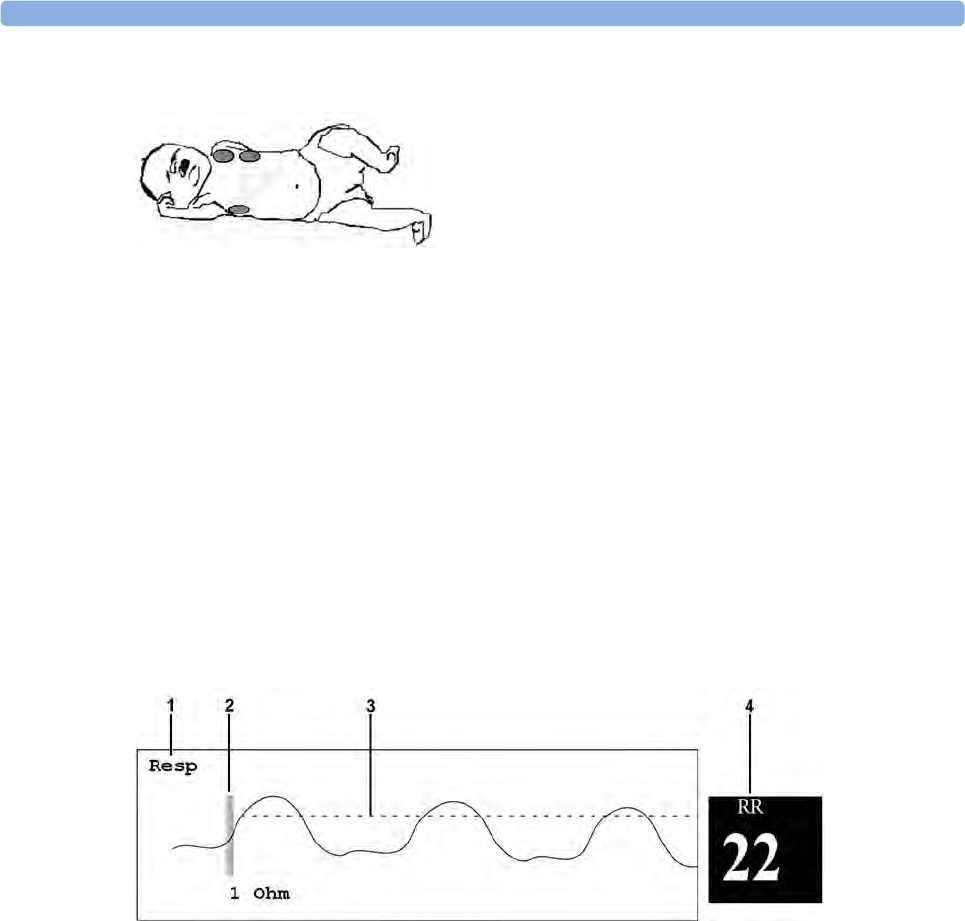
8 Monitoring Respiration Rate (Resp)
186
Lateral Chest Expansion
Some patients, especially neonates, expand their chests laterally. In these cases it is best to place the
two respiratory electrodes in the right midaxillary and left lateral chest areas at the patient's maximum
point of breathing movement to optimize the respiratory wave.
Abdominal Breathing
Some patients with restricted chest movement breathe mainly abdominally. In these cases, you may
need to place the left leg electrode on the left abdomen at the point of maximum abdominal expansion
to optimize the respiratory wave.
Understanding the Resp Display
The Resp measurement is displayed on the monitor as a continuous wave and a numeric respiration
rate. If the detected respiration rate is close to the heart rate, this is indicated by the text HR = RR next
to the respiration wave if you are in manual monitoring mode. Your monitor screen may look slightly
different from the illustration.
1Resp wave label
2One Ohm calibration bar
3Manually-set Resp detection level
4Resp numeric and label
Changing Resp Detection Modes
The Resp detection level can be set either automatically or manually.
• To change the resp detection mode, in the Setup Resp menu, select Detection to toggle between
the settings.
Auto Detection Mode
In Auto Detection Mode, the monitor adjusts the detection level automatically, depending on the wave
height and the presence of cardiac artifact. Note that in Auto Detection Mode,

8 Monitoring Respiration Rate (Resp)
187
• the detection level (a dotted line) is not displayed on the waveform,
• the algorithm expects a heart rate and therefore needs at least 3 electrodes attached to the patient.
If you are monitoring respiration with only two electrodes, the detection algorithm becomes less
sensitive which may result in reduced breath detection performance.
Use Auto Detection Mode for situations where:
• the respiration rate is not close to the heart rate
• breathing is spontaneous, with or without continuous positive airway pressure (CPAP)
• patients are ventilated, except patients with Intermittent Mandatory Ventilation (IMV).
Manual Detection Mode
In Manual Detection Mode you must set the Resp detection level.
•In the Setup Resp menu, select Manual Up or Manual Down. Use the dotted detection level line
in the Resp waveform to determine when the desired level is reached.
Once set, the detection level will not adapt automatically to different respiration depths. It is important
to remember that if the depth of breathing changes, you may need to change the detection level.
Use Manual Detection Mode for situations where:
• the respiration rate and the heart rate are close.
• patients have Intermittent Mandatory Ventilation.
• respiration is weak. Try repositioning the electrodes to improve the signal.
Resp Detection Modes and Cardiac Overlay
In Auto Detection Mode:
If you are monitoring Resp and the ECG is switched off, the monitor cannot compare the ECG and
Resp rates to detect cardiac overlay. The respiration detection level is automatically set higher to
prevent the detection of cardiac overlay as respiration.
In Manual Detection Mode:
Cardiac overlay can in certain situations trigger the respiration counter. This may lead to a false
indication of a high respiration rate or an undetected apnea condition. If you suspect that cardiac
overlay is being registered as breathing activity, raise the detection level above the zone of cardiac
overlay. If the Resp wave is so small that raising the detection level is not possible, you may need to
optimize the electrode placement as described in the section “Lateral Chest Expansion” on page 186.
Changing the Size of the Respiration Wave
WARNING
When monitoring in Manual Detection Mode, make sure to check the respiration detection level after
you have increased or decreased the size of the respiration wave.
•In the Setup Resp menu, select Size Up to increase the size of the wave or Size Down to decrease
it.

8 Monitoring Respiration Rate (Resp)
188
Changing the Speed of the Respiration Wave
Resp waveforms are usually viewed at a slower speed than other waveforms. For this reason, the Resp
measurement has its own speed control and is not affected by the wave speed settings of the other
measurements.
• Select the Resp wave to enter the Resp Wave menu, then select Change Speed. Choose the
required speed from the pop-up list. This defines the speed at which the wave is drawn across the
screen in millimeters per second (mm/s).
Using Resp Alarms
Resp alarms can be switched on and off and the high and low alarm limits can be changed just like
other measurement alarms, as described in the Alarms chapter.
Changing the Apnea Alarm Delay
The apnea alarm is a high priority red alarm used to detect apneas. The apnea alarm delay time defines
the time period between the point where the monitor cannot detect any respiration activity and the
indication of the apnea alarm.
1In the Setup Resp menu, select Apnea Time.
2Select the appropriate setting.
Resp Safety Information
WARNING
Respiration detection level
If you do not set the detection level for the respiration correctly in manual detection mode, it may not
be possible for the monitor to detect apnea. If you set the detection level too low, the monitor is more
likely to detect cardiac activity, and to falsely interpret cardiac activity as respiratory activity in the case
of apnea.
Apnea
The respiration measurement does not recognize obstructive and mixed apneas - it only indicates an
alarm when a pre-adjusted time has elapsed since the last detected breath.
The safety and effectiveness of the respiration measurement method in the detection of apnea,
particularly the apnea of prematurity and apnea of infancy, has not been established.
Interference
If operating under conditions according to the EMC Standard EN 60601-1-2 (Radiated Immunity 3V/
m), field strengths above 1V/m may cause erroneous measurements at various frequencies. Therefore
it is recommended to avoid the use of electrically radiating equipment in close proximity to the
respiration measurement unit.
Resp Accessories
To monitor respiration, use only the non-OR ECG accessories listed in the Resp section of the
accessories chapter. You cannot measure respiration if you are using an orange OR ECG cable set.

8 Monitoring Respiration Rate (Resp)
189
This is because of the higher internal impedance of the OR cable set, required for use if electrosurgery
is being performed.
Rate adaptive pacemakers
Implanted pacemakers which can adapt to the Minute Ventilation rate may occasionally react on the
Impedance measurement used by patient monitors for the determination of the Resp value and
execute pacing with the maximum programmed rate. Switching off the Resp measurement can prevent
this.

8 Monitoring Respiration Rate (Resp)
190

9
191
9Monitoring SpO2
Philips pulse oximetry uses a motion-tolerant signal processing algorithm, based on Fourier artifact
suppression technology (FAST). It provides four measurements:
• Oxygen saturation of arterial blood (SpO2) - percentage of oxygenated hemoglobin in relation to
the sum of oxyhemoglobin and deoxyhemoglobin (functional arterial oxygen saturation).
• Pleth waveform - visual indication of patient's pulse.
• Pulse rate (derived from pleth wave) - detected pulsations per minute.
• Perfusion indicator - numerical value for the pulsatile portion of the measured signal caused by
arterial pulsation.
The monitors are also compatible with SpO2 technologies from other manufacturers. Refer to the
instructions for use provided with these devices for further information.
SpO2 Sensors
Depending on the purchased SpO2 option, different sensors and adapter cables can be used. The
sensors for the different options are color-coded to match the connectors. See the “Accessories”
chapter for a compatibility table.
Familiarize yourself with the instructions for use supplied with your sensor before using it. In
particular, check that the sensor being used is appropriate for your patient category and application
site.
CAUTION
Do not use OxiCliq disposable sensors in a high humidity environment, such as in neonatal
incubators or in the presence of fluids, which may contaminate sensor and electrical connections
causing unreliable or intermittent measurements. Do not use disposable sensors when there is a
known allergic reaction to the adhesive.
Always use the MAX-FAST forehead sensor with the foam headband provided by Nellcor.
Applying the Sensor
1Follow the SpO2 sensor's instructions for use, adhering to all warnings and cautions.
2Remove colored nail polish from the application site.

9 Monitoring SpO2
192
3Apply the sensor to the patient. The application site should match the sensor size so that the
sensor can neither fall off, nor apply excessive pressure.
When using the M1195A Infant Finger Sensor, select a finger or toe with a diameter of between 7
and 8 mm (0.27" and 0.31"). When applying a M1193A neonatal sensor do not overtighten the
strap.
4Check that the light emitter and the photodetector are directly opposite each other. All light from
the emitter must pass through the patient's tissue.
WARNING
Proper Sensor Fit: If a sensor is too loose, it might compromise the optical alignment or fall off. If it
is too tight, for example because the application site is too large or becomes too large due to edema,
excessive pressure may be applied. This can result in venous congestion distal from the application site,
leading to interstitial edema, hypoxemia and tissue malnutrition. Skin irritations or lacerations may
occur as a result of the sensor being attached to one location for too long. To avoid skin irritations and
lacerations, periodically inspect the sensor application site and change the application site regularly.
Venous Pulsation: Do not apply sensor too tightly as this results in venous pulsation which may
severely obstruct circulation and lead to inaccurate measurements.
Ambient Temperature: At elevated ambient temperatures be careful with measurement sites that are
not well perfused, because this can cause severe burns after prolonged application. All listed sensors
operate without risk of exceeding 41°C on the skin if the initial skin temperature does not exceed
35°C.
Extremities to Avoid: Avoid placing the sensor on extremities with an arterial catheter, an NBP cuff
or an intravascular venous infusion line.
Connecting SpO2 Cables
Connect the sensor cable to the color-coded socket on the measurement device (MMS or module).
You can connect some Philips sensors directly to the measurement device. For other sensors, use the
corresponding adapter cable.
CAUTION
Extension cables: Do not use more than one extension cable (M1941A). Do not use an extension
cable with Philips reusable sensors or adapter cables with part numbers ending in -L (indicates "long"
cable version).
Electrical Interference: Position the sensor cable and connector away from power cables, to avoid
electrical interference.
Humidity: For neonatal patients, make sure that all sensor connectors and adapter cable connectors
are outside the incubator. The humid atmosphere inside can cause inaccurate measurements.
Measuring SpO2
1Select the correct patient category setting (adult/pediatric and neonatal), as this is used to optimize
the calculation of the SpO2 and pulse numerics.
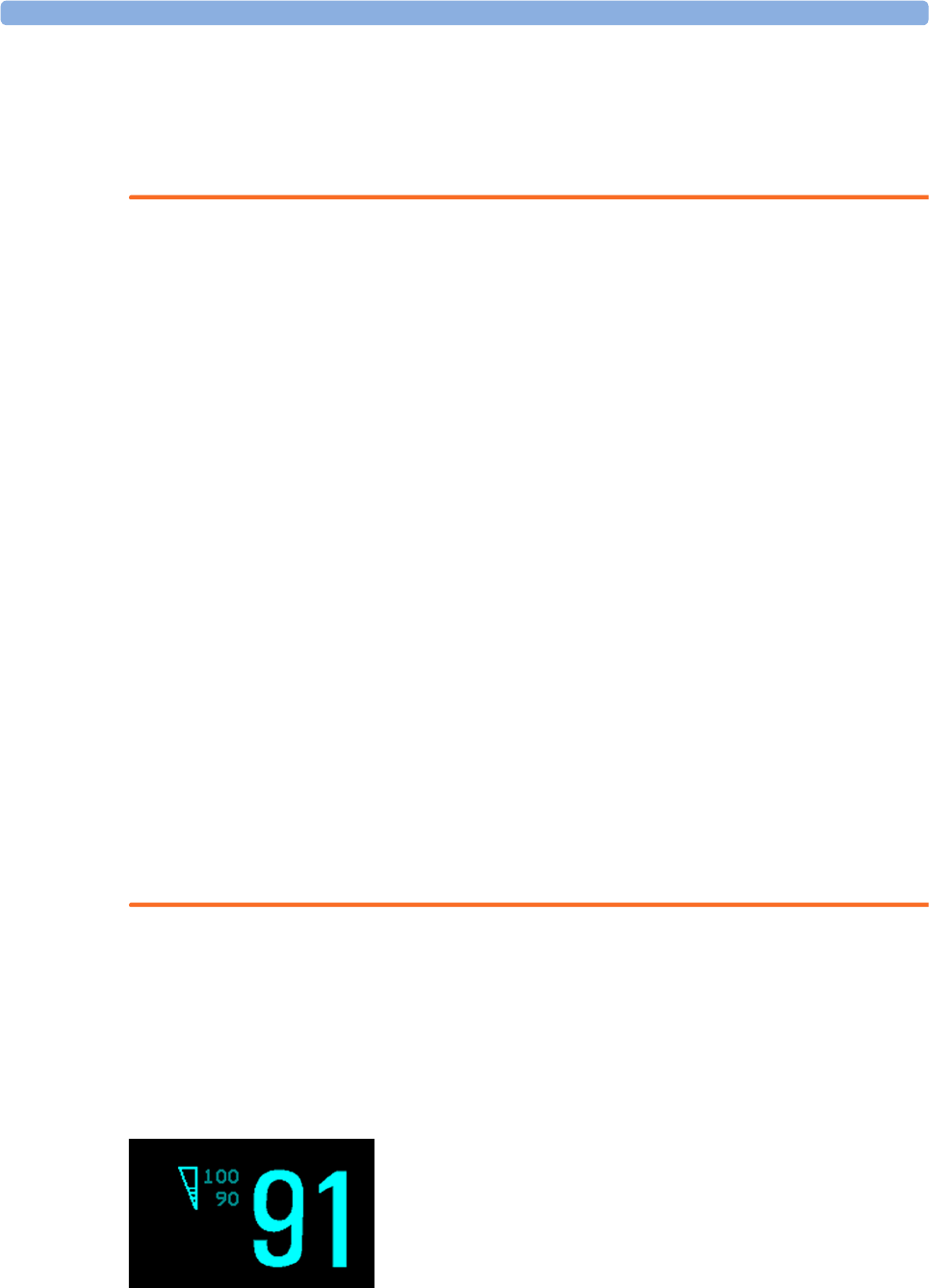
9 Monitoring SpO2
193
2During measurement, ensure that the application site:
– has a pulsatile flow, ideally with a perfusion indicator value above 1.0.
– has not changed in its thickness (for example, due to edema), causing an improper fit of the
sensor.
WARNING
• For fully conscious pediatric or adult patients, who have a normal function of perfusion and
sensory perception at the measurement site:
To ensure skin quality and correct optical alignment of the sensor, inspect the application site
when the measurement results are suspicious or when the patient complains about pressure at
the application site, but at least every 24 hours. Correct the sensor alignment if necessary.
Move the sensor to another site, if the skin quality changes.
• For all other patients:
Inspect the application site every two to three hours to ensure skin quality and correct optical
alignment. Correct the sensor alignment if necessary. If the skin quality changes, move the
sensor to another site.
Change the application site at least every four hours.
• Injected dyes such as methylene blue, or intravascular dyshemoglobins such as methemoglobin
and carboxyhemoglobin may lead to inaccurate measurements.
• Inaccurate measurements may result when the application site for the sensor is deeply pigmented
or deeply colored, for example, with nail polish, artificial nails, dye or pigmented cream.
• Interference can be caused by:
– High levels of ambient light (including IR warmers) or strobe lights or flashing lights (such as
fire alarm lamps). (Hint: cover application site with opaque material.)
– Another SpO2 sensor in close proximity (e.g. when more than one SpO2 measurement is
performed on the same patient). Always cover both sensors with opaque material to reduce
cross-interference.
– Electromagnetic interference, especially at perfusion indicator values below 1.0 or signal
quality indicator below medium.
– Excessive patient movement and vibration.
SpO2 Signal Quality Indicator (FAST SpO2 only)
The SpO2 numeric is displayed together with a signal quality indicator (if configured and enough space
is available) which gives an indication of the reliability of the displayed values.
The level to which the triangle is filled shows the quality of the signal; the indicator below shows a
medium signal quality, the signal quality is at a maximum when the triangle is completely filled.

9 Monitoring SpO2
194
Assessing a Suspicious SpO2 Reading
Traditionally, pulse rate from SpO2 was compared with heart rate from ECG to confirm the validity of
the SpO2 reading. With newer algorithms, such as FAST-SpO2, this is no longer a valid criteria because
the correct calculation of SpO2 is not directly linked to the correct detection of each pulse.
When pulse rate is very low, or strong arrhythmia is present, the SpO2 pulse rate may differ from the
heart rate calculated from ECG but this does not indicate an inaccurate SpO2 value.
If you doubt the measured SpO2, use the signal quality indicator (if available) or the pleth wave and
perfusion indicator instead to assess the signal quality.
WARNING
With pulse oximetry, sensor movement, ambient light (especially strobe lights or flashing lights) or
electromagnetic interference can give unexpected intermittent readings when the sensor is not
attached. Especially bandage-type sensor designs are sensitive to minimal sensor movement that might
occur when the sensor is dangling.
Changing the Averaging Time
Depending on the monitor configuration, you may be able to change the averaging time for the SpO2
values.
The averaging time represents the approximate time period used for the calculation. The exact
averaging algorithm depends on the SpO2 technology (option) used and on the signal conditions. The
longer the averaging time, the longer the time needed until the SpO2 value reflects the physiological
event. Fast averaging is useful for situations where an extremely fast measurement is required or few
artifacts are expected. Use slow averaging where you expect the number of artifacts to be relatively
high.
1In the Setup SpO₂ menu, select Average.
2Select the required averaging time from the list.
Understanding SpO2 Alarms
This refers to SpO2 specific alarms. See the “Alarms” chapter for general alarm information. SpO2
offers high and low limit alarms, and a high priority desat alarm. You cannot set the low alarm limit
below the desat alarm limit.
CAUTION
If you measure SpO2 on a limb that has an inflated noninvasive blood pressure cuff, a non-pulsatile
SpO2 INOP can occur. If the monitor is configured to suppress this alarm there may be a delay of up
to 60 seconds in indicating a critical status, such as sudden pulse loss or hypoxia.

9 Monitoring SpO2
195
Alarm Delays
There is a delay between a change in the oxygen saturation at the measurement site and the
corresponding alarm indication at the monitor. This delay has two components:
•The general measurement delay time is the time between the occurrence of the saturation
change and when the new value is represented by the displayed numerical values. This
delay depends on the algorithmic processing and the averaging time configured for SpO2. The
longer the averaging time configured, the longer the time needed until the numerical values reflect
the change in saturation.
•The time between the displayed numerical values crossing an alarm limit and the alarm
indication on the monitor. This delay is the sum of the alarm delay time configured for SpO2,
plus the system alarm delay. The system alarm delay is the processing time the system needs for
any alarm to be indicated on the monitor, after the measurement has triggered the alarm. See
“Monitor Performance Specifications” on page 464 for the system alarm delay specification.
For SpO2 high and low limit alarms, there are two different types of alarm delay time. The standard
alarm delay is set to a fixed value. The Smart Alarm Delay varies, based on an intelligent algorithm,
and can be used instead of the standard alarm delay.
The Desat alarm always uses the standard alarm delay.
Standard Alarm Delay
The standard alarm delay time can be configured to a fixed value between 0 and 30 seconds, in
1 second steps.
Smart Alarm Delays
The Smart Alarm Delay functionality is currently not available in China or in clinical environments under SFDA control.
When Smart Alarm Delays are used, the delay before the indication of an SpO2 high or low limit alarm
depends on the amount by which the limit is exceeded and for how long. This capability can be used to
avoid alarms when the SpO2 values show a pattern of recovering after a limit violation.
There are three modes available, Short, Medium and Long. All modes have a minimum delay of
10 seconds. The maximum delay is 25 seconds for Short mode, 50 seconds for Medium mode and
100 seconds for Long mode.
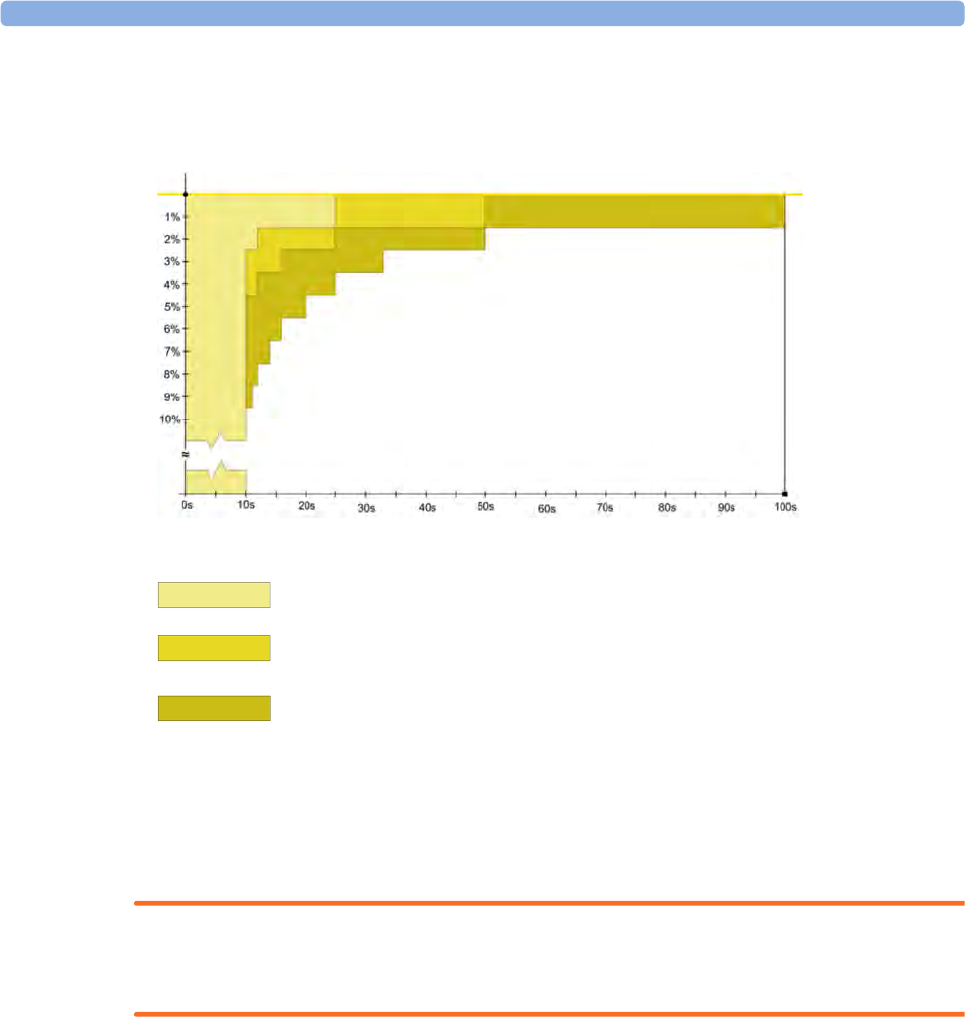
9 Monitoring SpO2
196
This diagram shows the relationship between the alarm delay and the deviation from the alarm limit.
The shaded areas on the diagram show the area in which SpO2 values can violate the alarm limit
without causing an alarm to be indicated. The area is smallest for the Short mode, and is extended for
the Medium and Long modes by the corresponding areas shown above.
WARNING
Before using Smart Alarm Delays, make sure that you fully understand how the delay is applied and
what the consequences are.
Alarm Limit
Violation
Deviation
from violated
Alarm Limit
Alarm Limit
Resulting Alarm Delay
Short Mode
Medium
Mode
Long Mode
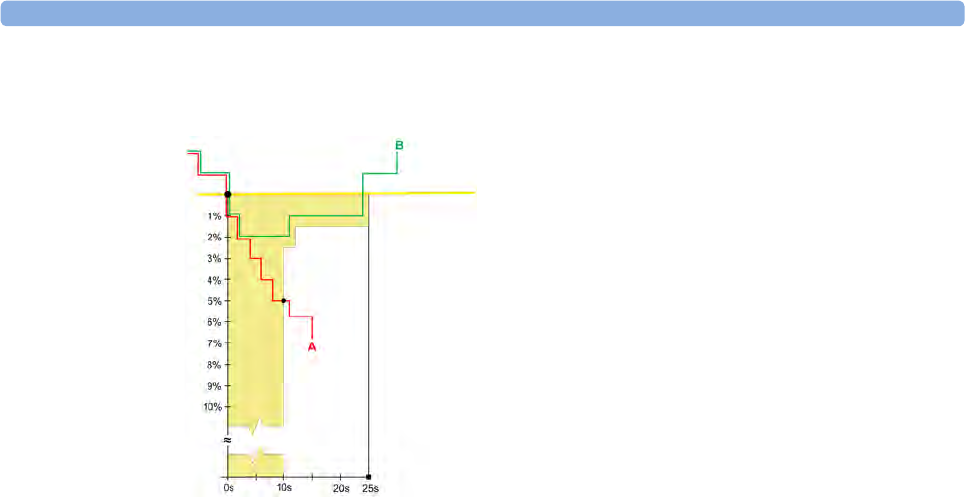
9 Monitoring SpO2
197
Example With Short Mode
This diagram shows the area for Short mode, with two examples of hypoxia.
Progressive hypoxia scenario: SpO2 value (A) - the values drop steadily and after 10 seconds a value
leaves the shaded area. An alarm is indicated immediately.
Recovery scenario: SpO2 value (B) - the values stay within the shaded area for 24 seconds, deviating
from the alarm limit by 1% or 2%, before rising again above the alarm limit. No alarm is indicated
because the SpO2 values never leave the shaded area below the alarm limit.
On the basis of the two examples, you can see that the delay depends on how much the value exceeds
the limit, and for how long. Changes in the SpO2 value can be major, but very short, or minor and for
a longer time - as long as they stay within the shaded area there will be no alarm indicated.
Deviation from
violated Alarm
Limit
Alarm Limit
Resulting Alarm Delay
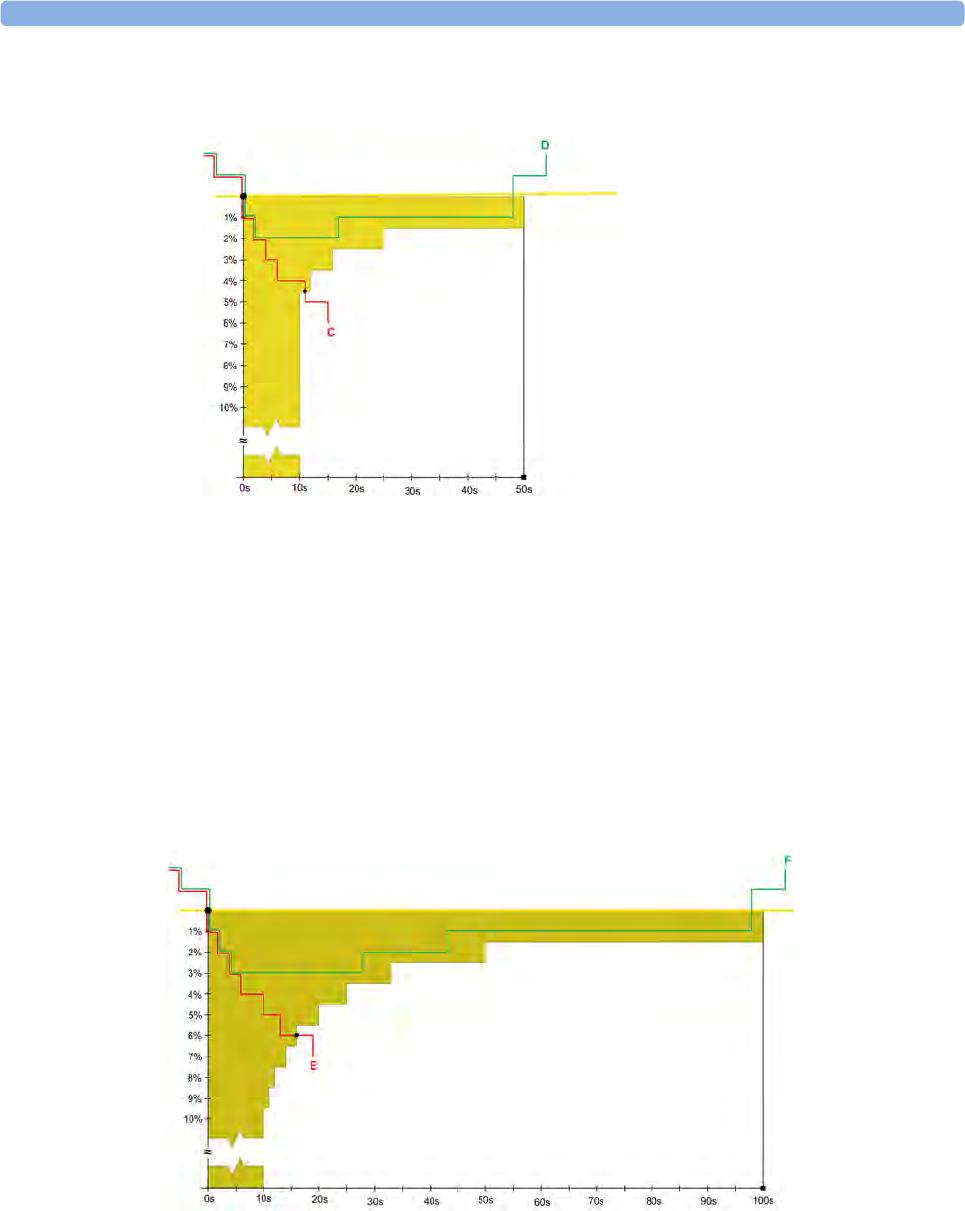
9 Monitoring SpO2
198
Example With Medium Mode
This diagram shows the area for Medium mode, with two examples of hypoxia.
Progressive hypoxia scenario: SpO2 value (C) - the values drop steadily and after 11 seconds a value
leaves the shaded area. An alarm is indicated immediately.
Recovery scenario: SpO2 value (D) - the values stay within the shaded area for 48 seconds, deviating
from the alarm limit by 1% or 2%, before rising again above the alarm limit. No alarm is indicated
because the SpO2 values never leave the shaded area below the alarm limit.
Example With Long Mode
This diagram shows the area for Long mode, with two examples of hypoxia.
Deviation from
violated Alarm
Limit
Alarm Limit
Resulting Alarm Delay
Deviation from
violated Alarm
Limit
Alarm Limit
Resulting Alarm Delay
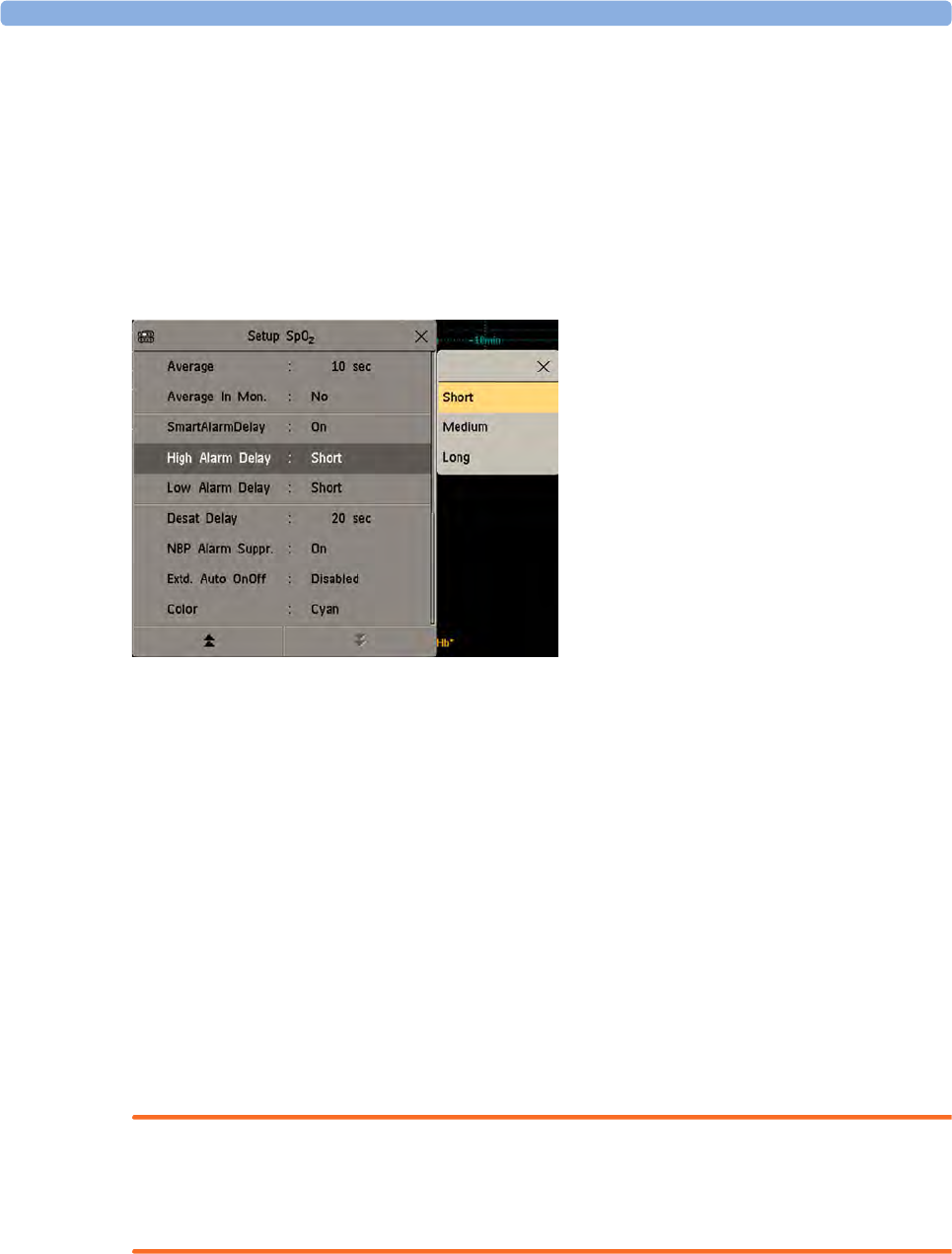
9 Monitoring SpO2
199
Progressive hypoxia scenario: SpO2 value (E) - the values drop steadily and after 16 seconds a value
leaves the shaded area. An alarm is indicated immediately.
Recovery scenario: SpO2 value (F) - the values stay within the shaded area for 98 seconds, deviating
from the alarm limit by 1% to 3%, before rising again above the alarm limit. No alarm is indicated
because the SpO2 values never leave the shaded area below the alarm limit.
Setting Smart Alarm Delay Mode
To set the mode for Smart Alarm Delays, in the Setup SpO₂ menu,
1Check that SmartAlarmDelay is set to On.
This setting is made in Configuration mode and will be shown in the menu in gray. If it is set to
Off, a standard alarm delay is in use.
2Select High Alarm Delay and choose Short, Medium, or Long mode.
3Select Low Alarm Delay and choose Short, Medium, or Long mode.
If you also use monitors with earlier software revisions, be aware that smart alarm delays will not be
used after a transfer to one of these monitors. Monitors with earlier software revisions will always use
the standard alarm delay. If you are not sure whether a monitor has the Smart Alarm Delay function,
check whether there is a SmartAlarmDelay entry in the Setup SpO₂ menu.
Adjusting the Alarm Limits
In the Setup SpO₂ menu:
•Select
High Limit then choose the high alarm limit.
•Select
Low Limit then choose the low alarm limit.
WARNING
High oxygen levels may predispose a premature infant to retrolental fibroplasia. If this is a
consideration do NOT set the high alarm limit to 100%, which is equivalent to switching the high
alarm off.
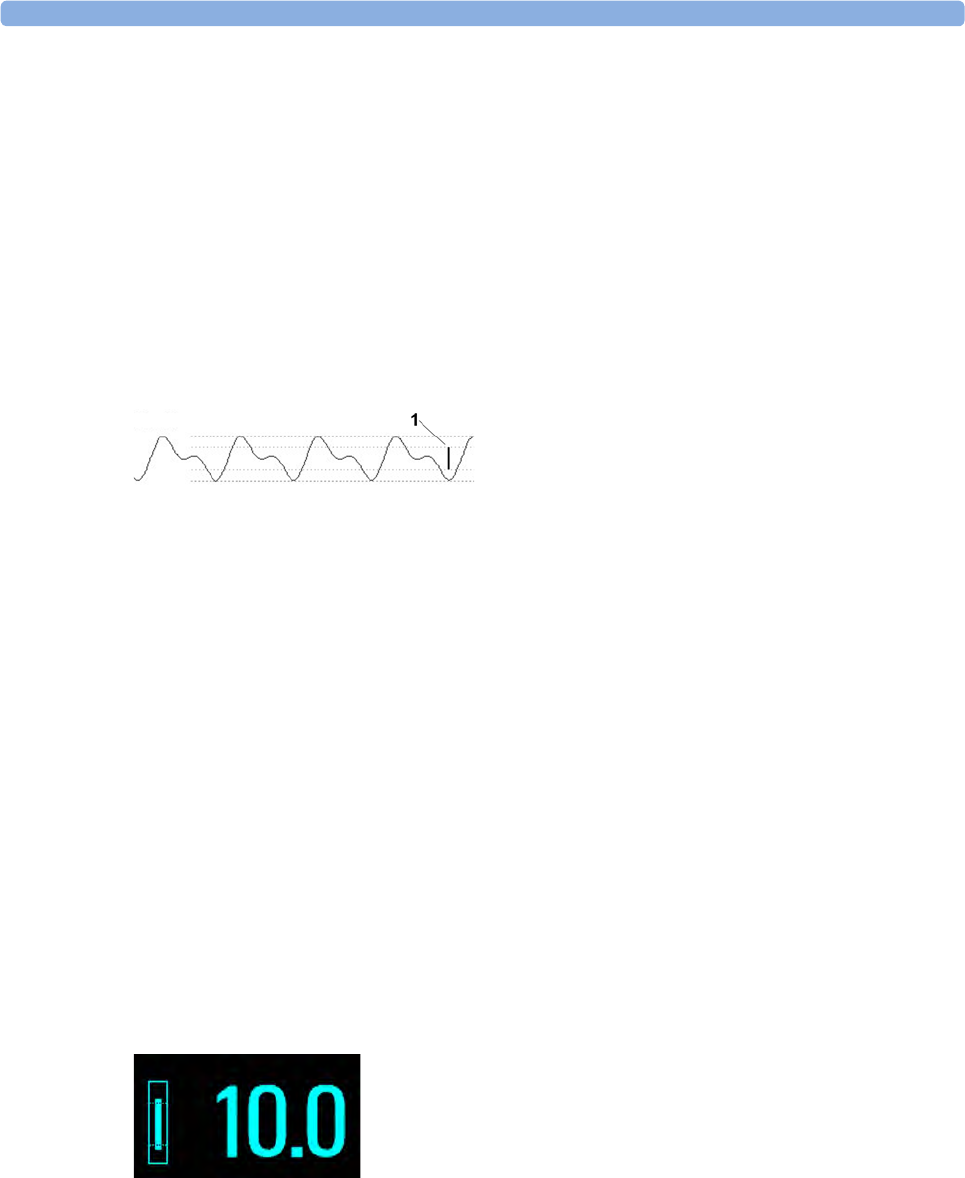
9 Monitoring SpO2
200
Adjusting the Desat Limit Alarm
The Desat alarm is a high priority (red) alarm notifying you of potentially life threatening drops in
oxygen saturation.
1In the Setup SpO₂ menu, select Desat Limit.
2Adjust the limit.
Pleth Wave
The Pleth wave is autoscaled to maximum display size. It decreases only when the signal quality
becomes marginal. It is NOT directly proportional to the pulse volume. If you need an indication of
change in pulse volume, use the perfusion indicator.
1Minimum size for reliable SpO2 value
Perfusion Numeric
The perfusion numeric (Perf) gives a value for the pulsatile portion of the measured signal caused by
the pulsating arterial blood flow.
As pulse oximetry is based on the pulsatile nature of the signal, you can also use the perfusion numeric
as a quality indicator for the SpO2 measurement. Above 1 is optimal, between 0.3-1 is acceptable.
Below 0.3 is marginal; reposition the sensor or find a better site.
Perfusion Change Indicator
The perfusion change indicator is a graphic symbol which shows the change in the perfusion value,
relative to a reference value which you can set.
To set the current perfusion value as the reference value:
•In the Setup SpO₂ menu, select Set Perf Ref..
When a reference value has been set, the perfusion change indicator is displayed next to the perfusion
numeric.
Setting SpO2/Pleth as Pulse Source
1In the Setup SpO₂ menu, select Pulse (SpO₂) to enter the Setup Pulse menu.
2In the Setup Pulse menu, select System Pulse and select the correct SpO2 label from the pop-up
list.

9 Monitoring SpO2
201
Setting Up Tone Modulation
If tone modulation is on, the QRS tone pitch lowers when the SpO2 level drops. Remember, the QRS
tone is derived from either heart rate or pulse depending on which is currently selected as the active
alarm source.
In the Setup SpO₂ menu, select Tone Modulation to switch between Yes (for on) and No (for off).
Tone modulation is licensed under US patent US 4.653.498 from Nellcor Puritan Bennett
Incorporated.
Setting the QRS Volume
In the Setup SpO₂ menu, select QRS Volume and set the appropriate QRS tone volume.
Calculating SpO2 Difference
When a second SpO2 measurement is present (either through the SpO2 module or through an external
device), the monitor displays both SpO2 values, and calculates the difference between them. The
second value is subtracted from the first.
1From the Main Setup menu, select Measurements.
2From the Setup ΔSpO₂ menu, select First SpO₂.
3Choose the first measurement source.
4Select Second SpO₂.
5Choose the second measurement source.

9 Monitoring SpO2
202

10
203
10Monitoring NBP
This monitor uses the oscillometric method for measuring NBP.
The NBP measurement is suitable for use in the presence of electrosurgery and during the discharge of
a cardiac defibrillator according to IEC 601-2-30:1999/EN 60601-2-30:2000.
A physician must determine the clinical significance of the NBP information.
Introducing the Oscillometric NBP Measurement
Oscillometric devices measure the amplitude of pressure changes (oscillations) in the occluding cuff as
the cuff deflates from above systolic pressure. The amplitude suddenly increases as the pulse breaks
through the occlusion in the artery. As the cuff pressure decreases further, the pulsations increase in
amplitude, reach a maximum (which approximates to the mean pressure), and then diminish.
Studies show that, especially in critical cases (arrhythmia, vasoconstriction, hypertension, shock),
oscillometric devices are more accurate and consistent than devices using other noninvasive measuring
techniques.
WARNING
Patient Category: Select the correct patient category setting for your patient. Do not apply the higher
adult inflation, overpressure limits and measurement duration to neonatal patients.
Intravenous infusion: Do not use the NBP cuff on a limb with an intravenous infusion or arterial
catheter in place. This could cause tissue damage around the catheter when the infusion is slowed or
blocked during cuff inflation.
Skin Damage: Do not measure NBP in cases of sickle-cell disease or any condition where skin
damage has occurred or is expected.
Existing Wounds: Do not apply the cuff over a wound as this can cause further injury.
Mastectomy: Avoid applying the cuff on the side of the mastectomy, as the pressure increases the risk
of lymphedema. For patients with a bilateral mastectomy, use clinical judgement to decide whether the
the benefit of the measurement outweighs the risk.
Unattended Measurement: Use clinical judgement to decide whether to perform frequent
unattended blood pressure measurements. Too frequent measurements can cause blood flow
interference potentially resulting in injury to the patient. In cases of severe blood clotting disorders
frequent measurements increase the risk of hematoma in the limb fitted with the cuff.

10 Monitoring NBP
204
Temporary Loss of Function: The pressurization of the cuff can temporarily cause loss of function
of monitoring equipment used simultaneously on the same limb.
CAUTION
If you spill liquid onto the equipment or accessories, particularly if there is a chance that it can get
inside the tubing or the measurement device, contact your service personnel.
Measurement Limitations
NBP readings can be affected by the position of the patient, their physiological condition, the
measurement site, and physical exercise. Thus a physician must determine the clinical significance of
the NBP information.
Measurements are impossible with heart rate extremes of less than 40 bpm or greater than 300 bpm, or
if the patient is on a heart-lung machine.
The measurement may be inaccurate or impossible:
• with excessive and continuous patient movement such as shivering or convulsions
• if a regular arterial pressure pulse is hard to detect with cardiac arrhythmias
• with rapid blood pressure changes
• with severe shock or hypothermia that reduces blood flow to the peripheries
• with obesity, where a thick layer of fat surrounding a limb dampens the oscillations coming from
the artery
• on an edematous extremity.
The effectiveness of this sphygmomanometer has not been established in pregnant, including
pre-eclamptic patients.
When the accelerated measurement is used the minimum number of oscillations per deflation step
is 1, instead of the 2 in the standard measurement. This allows a faster measurement result but requires
that the patient keeps the limb in question still. The accelerated measurement is recommended for use
when very few or no artifacts are expected, for example with sedated patients.
You can see whether the accelerated measurement is in use by looking in the Setup NBP menu. The
Accelerated Msmt setting shows whether the accelerated measurement is Off, on for Manual
measurements or on for All measurements. This setting is view-only in Monitoring Mode and can be
changed in Configuration Mode. When the accelerated measurement is in use, no pulse rate is derived
from NBP.
Measurement Modes
There are four modes for measuring NBP:
•Manual - measurement on demand.
•Auto - continually repeated measurements (between one minute and 24 hours adjustable interval).
•Sequence - up to four measurement cycles which will run consecutively, with number of
measurements and interval between them configurable for each cycle.
•STAT - rapid series of measurements over a five minute period, then the monitor returns to the
previous mode. Use only on supervised patients.
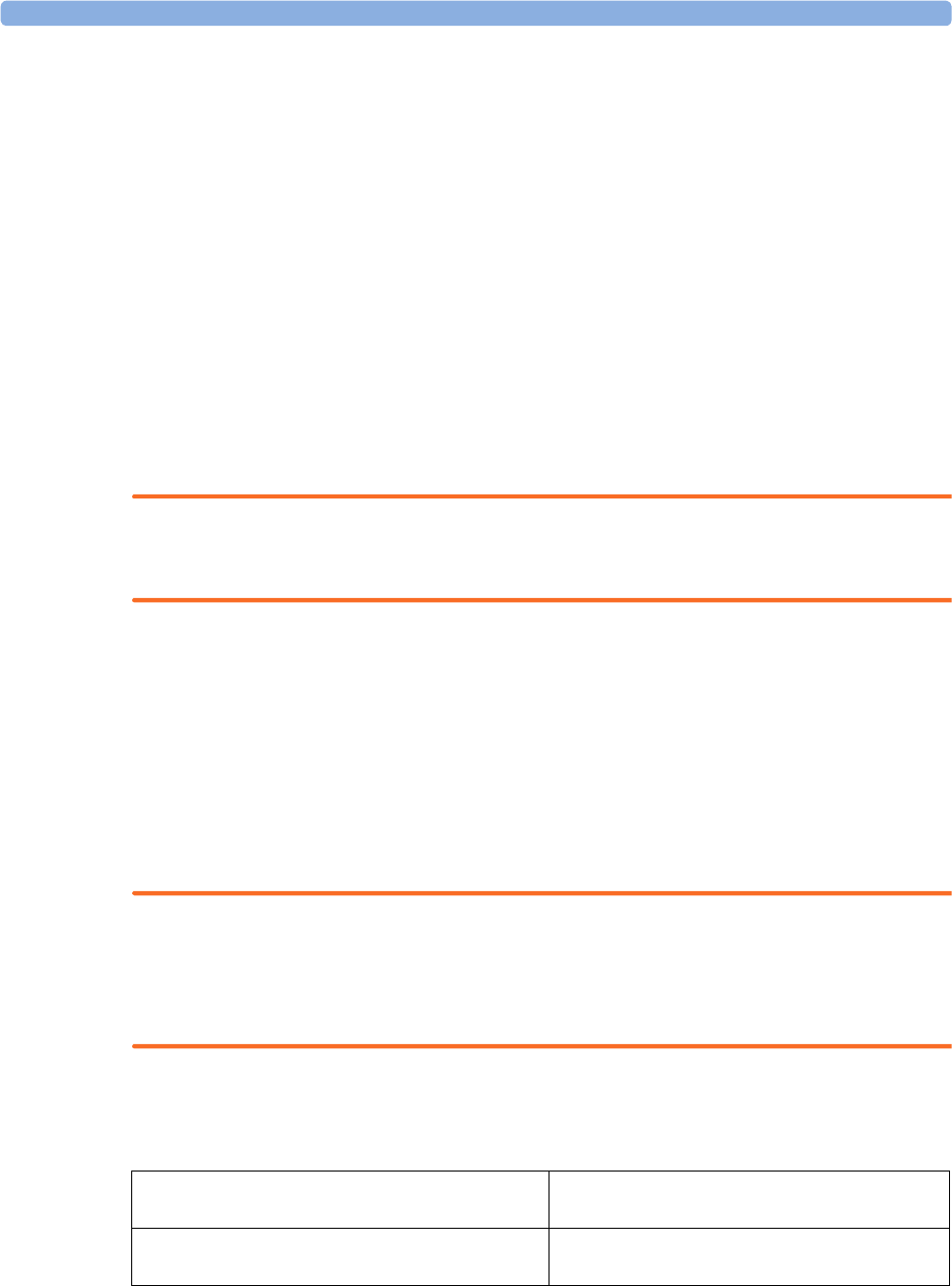
10 Monitoring NBP
205
Reference Method
The measurement reference method can be Auscultatory (manual cuff) or Invasive (intra-arterial). For
further information, see the Application Note supplied on the monitor documentation DVD.
In Neonatal mode, to comply with safety standards, invasive is always used as the reference method.
This setting cannot be changed and is not visible in any operating mode.
In Adult and Pediatric mode, to check the current setting, select Main Setup then Measurements
followed by NBP, and check whether the Reference setting is set to Auscultatory or Invasive. This
setting can only be changed in Configuration Mode.
Preparing to Measure NBP
1Connect the cuff to the air tubing.
2Plug the air tubing into the red NBP connector. Avoid compression or restriction of pressure
tubes. Air must pass unrestricted through the tubing.
WARNING
Kinked or otherwise restricted tubing can lead to a continuous cuff pressure, causing blood flow
interference and potentially resulting in injury to the patient.
3Make sure that you are using a Philips-approved correct sized cuff and that the bladder inside the
cover is not folded or twisted.
A wrong cuff size, and a folded or twisted bladder, can cause inaccurate measurements. The width
of the cuff should be in the range from 37% to 47% of the limb circumference. The inflatable part
of the cuff should be long enough to encircle at least 80% of the limb.
4Apply the cuff to a limb at the same level as the heart. If it is not, you must use the measurement
correction formula to correct the measurement.
The marking on the cuff must match the artery location. Do not wrap the cuff too tightly around
the limb. It may cause discoloration, and ischemia of the extremities.
WARNING
Inspect the application site regularly to ensure skin quality and inspect the extremity of the cuffed
limb for normal color, warmth and sensitivity. If the skin quality changes, or if the extremity
circulation is being affected, move the cuff to another site or stop the blood pressure
measurements immediately. Check more frequently when making automatic or stat measurements.
Correcting the Measurement if Limb is not at Heart Level
To correct the measurement if the limb is not at heart level, to the displayed value
Add 0.75 mmHg (0.10 kPa) for each centimeter
higher or
Deduct 0.75 mmHg (0.10 kPa) for each
centimeter lower or
Add 1.9 mmHg (0.25 kPa) for each inch higher. Deduct 1.9 mmHg (0.25 kPa) for each inch
lower.
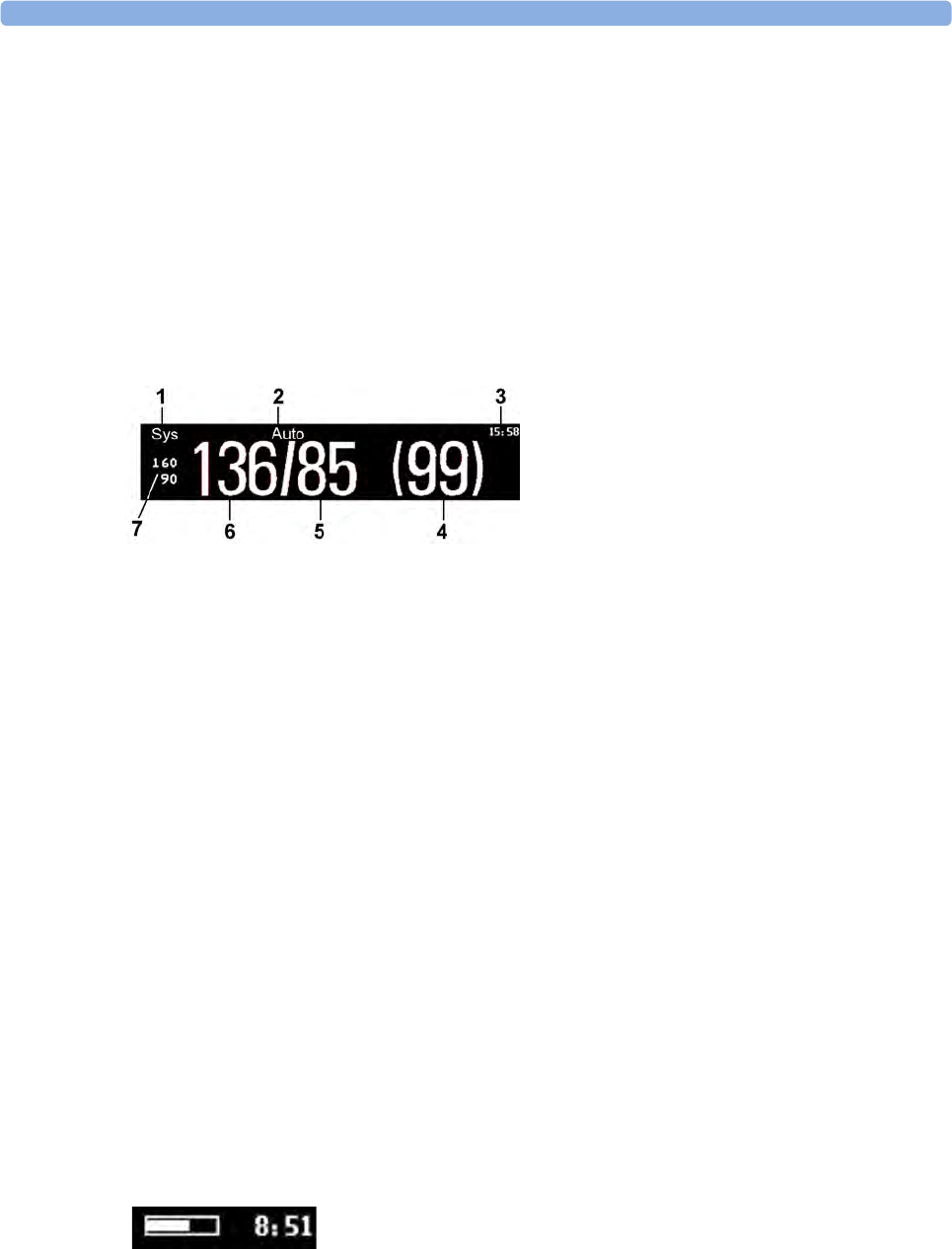
10 Monitoring NBP
206
Recommendations For Measurements Used in Diagnosis of
Hypertension
To make a measurement for use in the diagnosis of hypertension, follow the steps below:
1Ensure the patient is comfortably seated, with their legs uncrossed, feet flat on the floor and back
and arm supported.
2Ask the patient to relax and not talk before and during the measurement.
3If possible, wait 5 minutes before making the first measurement.
Understanding the NBP Numerics
Depending on the NBP numeric size, not all elements may be visible. Your monitor may be configured
to display only the systolic and diastolic values. If configured to do so, the pulse from NBP will display
with the NBP numeric.
The measured NBP value, together with the corresponding pulse rate if this is switched on, will be
displayed for one hour. After that the values are regarded as invalid and are no longer displayed.
During this hour, measurement values may be grayed out or disappear from the screen after a set time,
if configured to do so. This avoids older numerics being misinterpreted as current data. The time can
be set in Configuration mode.
In Auto mode the measurement values may disappear more quickly (to be replaced by new
measurement values), if the repeat time is set to less than one hour.
Alarm Sources
If you have parallel alarm sources, the sources are displayed instead of the alarm limits.
NBP Measurement Timestamp
Depending on your configuration, the time shown beside the NBP numeric can be:
– the time of the most recent NBP measurement, also known as the "timestamp", or
– the time until the next measurement in an automatic series, displayed with a graphic
representation of the remaining time, as shown here.
• The NBP timestamp will normally show the completion time of the NBP measurement.
1Alarm source
2Measurement Mode
3Timestamp/Timer
4Mean pressure
5Diastolic
6Systolic
7Alarm limits
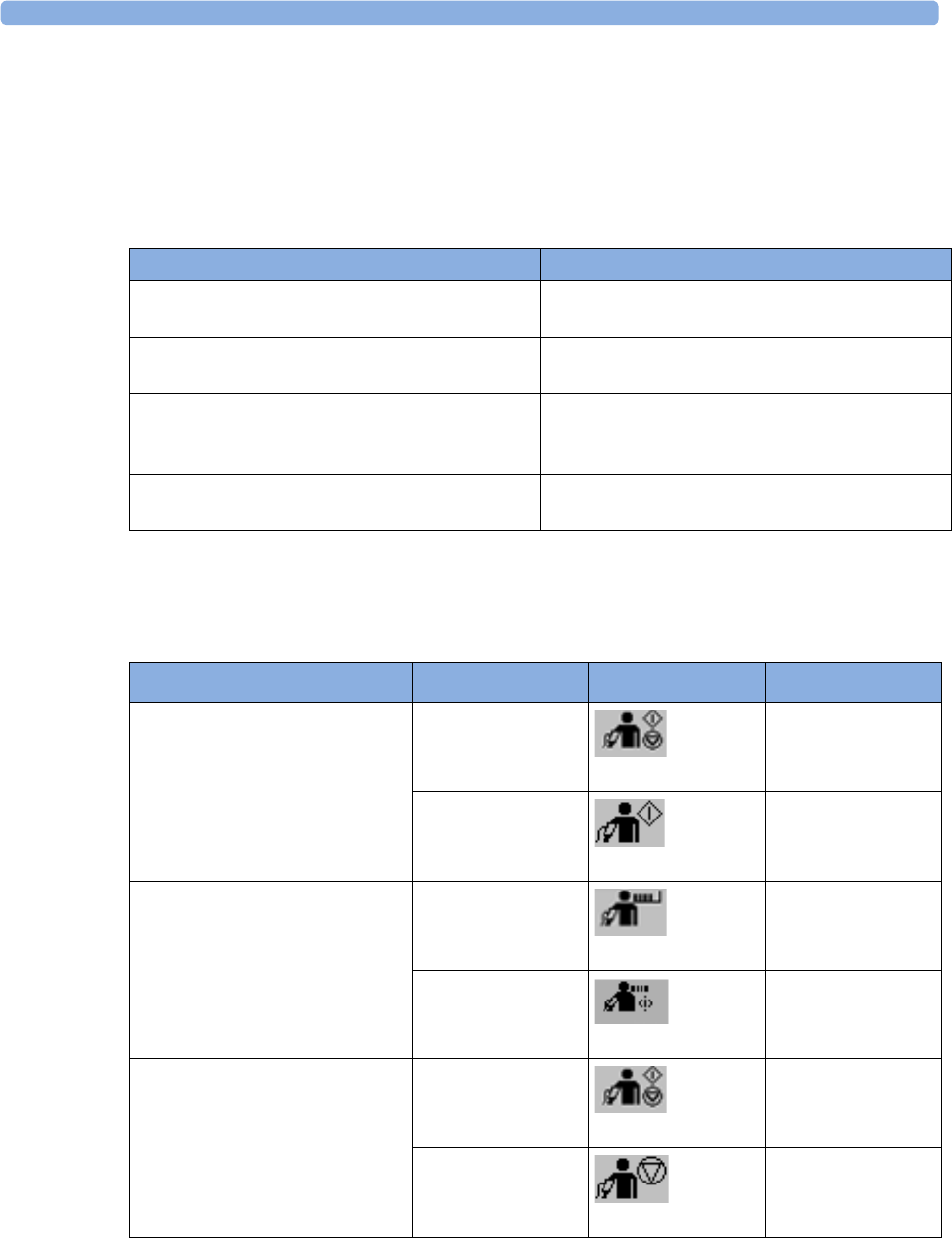
10 Monitoring NBP
207
During Measurements
The cuff pressure is displayed instead of the units and the repeat time. An early systolic value gives you
a preliminary indication of the systolic blood pressure during measurement.
When Unexpected Values are Measured
When values measured are higher or lower than expected, check the following potential causes:
Starting and Stopping Measurements
Use the Setup menu, SmartKeys or the MMS hardkey to start and stop measurements.
Possible Cause Solution
The patient was talking or moving before or
during the measurement.
Allow the patient to rest quietly, then try again
after three to five minutes.
The incorrect cuff size was used or the cuff was
not at heart level
Check the cuff size, level, and position then repeat
the measurement.
The noninvasive blood pressure reference method
is set incorrectly.
Check the reference method (auscultation or intra-
arterial) in the Setup NBP menu. If it is incorrect,
have it changed in Configuration Mode.
Measurement limitations have not been taken into
account.
Check the list in “Measurement Limitations” on
page 204.
Action to be performed NBP Setup menu SmartKeys MMS hardkey
Start manual measurement
Start Auto series
Start/Stop
Start/ Stop
Start/Stop
Start NBP
---
Start STAT measurement NBP STAT
NBP STAT
STAT (for MMS
without Pressure/
Temp measurement)
Start STAT
Stop Manual measurements Start/Stop
Start/ Stop
Start/Stop
Stop NBP
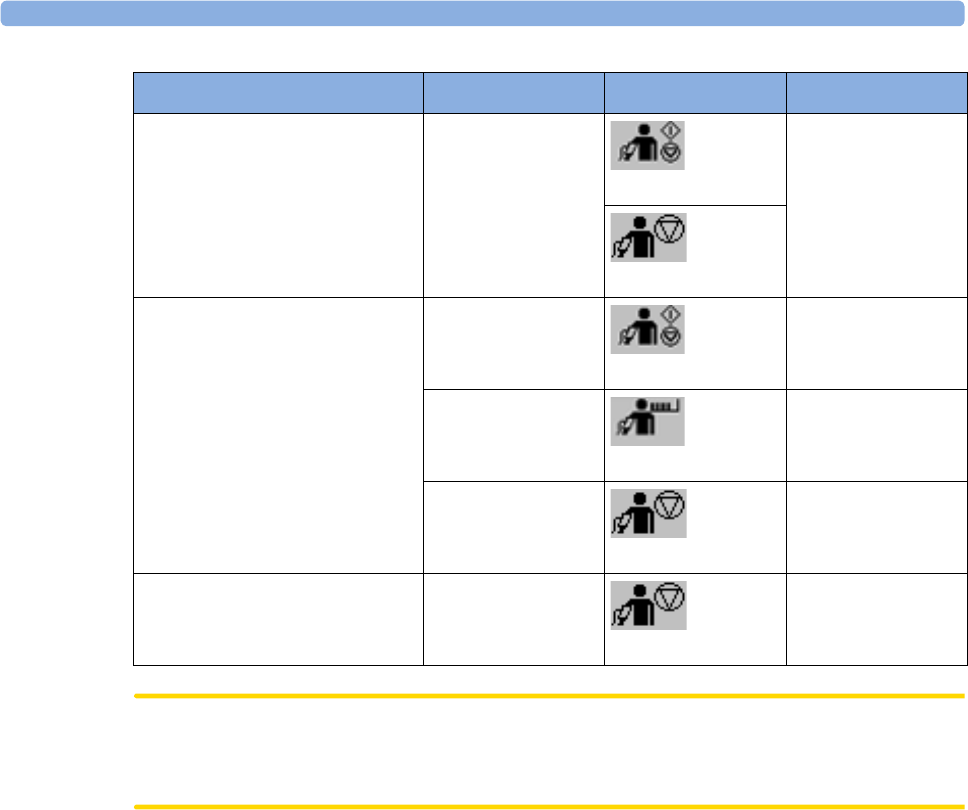
10 Monitoring NBP
208
CAUTION
Use clinical judgment to decide whether to perform repeated series of STAT measurements because of
the risk of purpura, ischemia and neuropathy in the limb with the cuff.
Enabling Automatic Mode and Setting Repetition
Time
1In the Setup NBP menu, select Mode and select Auto from the pop-up menu.
2For an automatic measurement, select Repeat Time and set the time interval between two
measurements.
Enabling Sequence Mode and Setting Up The
Sequence
1In the Setup NBP menu, select Mode and select Sequence from the pop-up menu.
2Select Setup Sequence to open the Setup Sequence window.
Up to four measurement cycles can be setup which will run consecutively. For each cycle you can
set the number of measurements and the interval between them. If you want to run less than four
cycles in a sequence, you can set the number of measurements for one or more cycles to Off.
Stop current Auto
measurement
Start/Stop
Start/ Stop
Start/Stop
Stop NBP
Stop current STAT
measurement and end series
Start/Stop
Start/ Stop
Start/Stop
NBP STAT
NBP STAT
STAT (for MMS
without Pressure/
Temp measurement)
Stop NBP
Stop Auto, Manual or STAT
measurement AND series
Stop All
Stop All
Action to be performed NBP Setup menu SmartKeys MMS hardkey
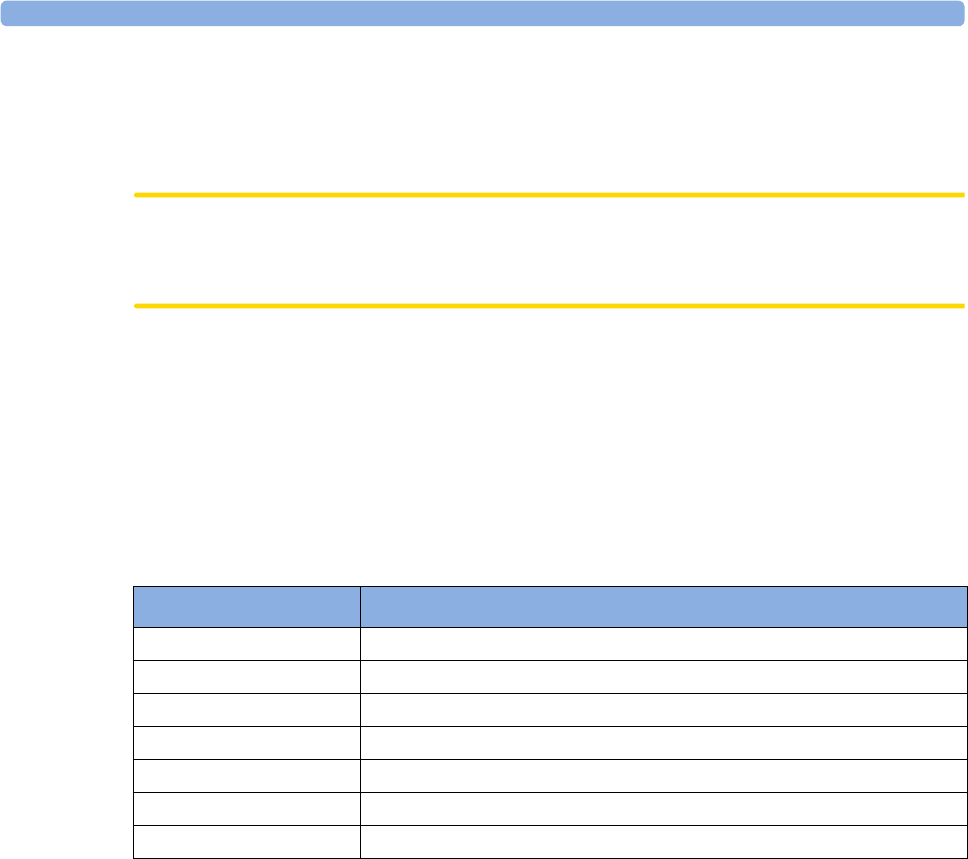
10 Monitoring NBP
209
3Select each sequence in turn and select the number of measurements and the time interval between
the measurements.
4To have measurements continue after the sequence, set the number of measurements for your last
cycle to Continuous and this cycle will run indefinitely.
CAUTION
Be aware that, if none of the cycles are set to Continuous, NBP monitoring will end after the last
measurement of the cycle.
When the NBP measurement mode is set to Sequence, the repetition time for Auto mode cannot be
changed.
Choosing the NBP Alarm Source
You can monitor for alarm conditions in systolic, diastolic and mean pressure, either singly or in
parallel. Only one alarm is given, with the priority of mean, systolic, diastolic.
In the Setup NBP menu, select Alarms from and choose from:
If Mean is not selected as alarm source (Sys., Dia., or Sys & Dia selected), but the monitor can only
derive a mean value, mean alarms will nevertheless be announced using the most recent mean alarm
limits. Check that the mean alarm limits are appropriate for the patient, even when not using mean as
the alarm source. When no value can be derived an NBP Measure Failed INOP will be displayed.
Switching Pulse from NBP On/Off
In the process of making the NBP measurement, a pulse value can be derived and displayed. The pulse
value is displayed together with the time the measurement was made. After one hour the value
becomes invalid. There are no alarms associated with pulse from NBP.
When the accelerated measurement is in use, no pulse value can be derived.
To switch the display of the pulse value on or off:
•In the Setup NBP menu select Pulse (NBP).
Menu option Pressure value monitored
Sys. systolic
Dia. diastolic
Mean mean
Sys & Dia systolic and diastolic in parallel
Dia & Mean diastolic and mean in parallel
Sys & Mean systolic and mean in parallel
Sys&Dia&Mean all three pressures in parallel

10 Monitoring NBP
210
Assisting Venous Puncture
You can use the NBP cuff to cause sub-diastolic pressure. The cuff deflates automatically after a set
time (adult/pediatric 170 seconds, neonatal 85 seconds) if you do not deflate it.
1In the Setup NBP menu select VeniPuncture.
2Puncture vein and draw blood sample.
3Reselect VeniPuncture to deflate the cuff.
During measurement, the NBP display shows the inflation pressure of the cuff and the remaining time
in venous puncture mode.
NOTE
Performing a venous puncture while automatic or sequence NBP measurements are being made
suspends the measurement series for the duration of the venous puncture inflation and for three
minutes afterwards.
Calibrating NBP
NBP is not user-calibrated. NBP pressure transducers must be verified at least once every two years by
a qualified service professional, and calibrated, if necessary. See the Service Guide for details.

11
211
11Monitoring Temperature
WARNING
Measurements from an MMS extension connected to an X2 are not available when the X2 is running
on its own battery power. They are only available when the X2 is powered by external power: when
connected to a host monitor, to the external power supply (M8023A) or to the Battery Extension
(865297).
You can measure temperature using an X1 or X2 Multi-Measurement Module (MMS), one of the
MMS extensions, or the temperature plug-in module - labeled as TEMP.
Temp measurement automatically switches on when you connect a probe. You can switch the
measurement off manually.
Making a Temp Measurement
1Select the correct type and size of probe for your patient.
2If you are using a disposable probe, connect the probe to the temperature cable.
3Plug the probe or temperature cable into the temperature connector socket.
4Apply the probe to the patient. You are advised to use a protective rubber cover on rectal probes.
5Select an appropriate temperature label.
6Check that the alarm settings (on or off, high and low limits) are appropriate for this patient and
this type of temperature measurement.
WARNING
Make sure you set alarm limits for the correct label. The alarm limits you set are stored for that
particular label only. Changing the label may change the alarm limits.
Selecting a Temperature for Monitoring
Tell the monitor which temperature you want to monitor by selecting its temperature label. The label is
a unique identifier for each type of temperature. When you choose a label, the monitor uses that label's
stored color and alarm settings.
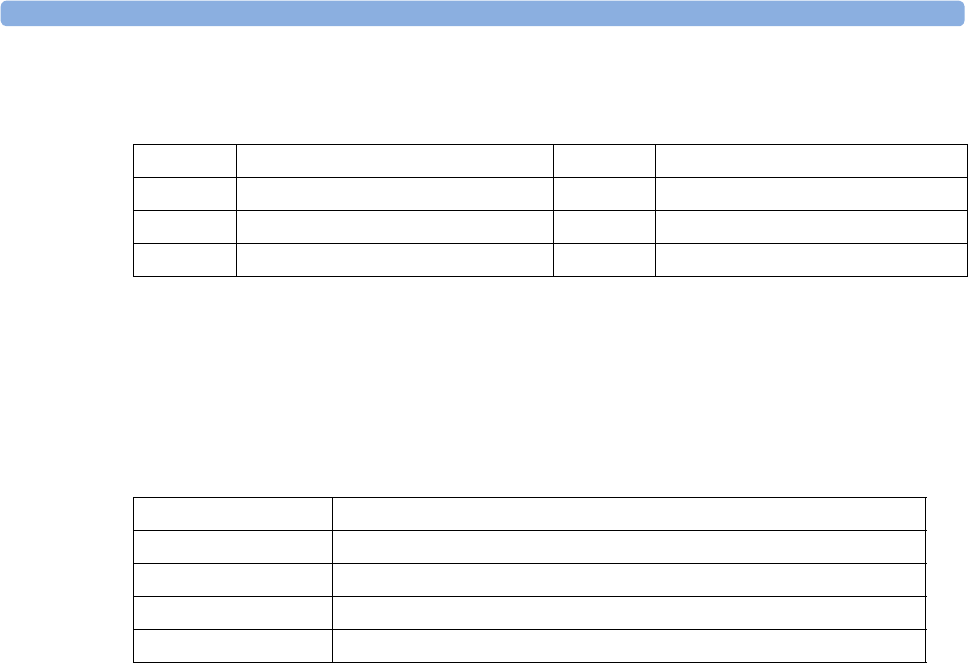
11 Monitoring Temperature
212
1In the Setup <Temp Label> menu, select Label.
2Select the appropriate label from the list.
Extended Temperature Label Set
The following additional labels are available if Label Set is set to Full. This setting can only be changed
in Configuration Mode.
Note that if your monitor is connected to an Information Center, the additional labels in the extended
label set may not be correctly displayed. See the Configuration Guide for your monitor for more
information.
Calculating Temp Difference
The monitor can calculate and display the difference between two temperature values by subtracting
the second value from the first. The difference is labeled ΔTemp.
1In the Main Setup menu, select Measurements.
2Select ΔTemp.
3In the Setup ΔTemp menu, select First Temp.
4Select the appropriate label for the measurement source.
5Select Second Temp.
6Select the appropriate label for the second measurement source.
Temp non-specific temperature label Trect rectal temperature
Tart arterial temperature Tskin skin temperature
Tcore core temperature Tven venous temperature
Tesoph esophageal temperature Tnaso nasopharyngeal temperature
T1, T2, T3, T4 Non-specific temperature labels
Tamb ambient temperature
Tcereb cerebral temperature
Ttymp tympanic temperature
Tvesic vesical temperature

12
213
12Monitoring Invasive Pressure
WARNING
Measurements from an MMS extension connected to an X2 are not available when the X2 is running
on its own battery power. They are only available when the X2 is powered by external power: when
connected to a host monitor, to the external power supply (M8023A) or to the Battery Extension
(865297).
CAUTION
Do not use a monitor with an M1006A pressure module as an additional monitor for your patient. This
may cause interference on the respiration or invasive pressure measurements.
You can measure pressure using an X1 or X2 Multi-Measurement Module (MMS), one of the MMS
extensions or the pressure plug-in module - labeled as PRESS. With the plug-in module you may see a
wave channel before the pressure cable is plugged in - with the MMS this will not be the case.
Setting up the Pressure Measurement
1Plug in the pressure cable.
2Prepare the flush solution.
3Flush the system to exhaust all air from the tubing. Ensure that the transducer and stopcocks are
free of air bubbles.
WARNING
If air bubbles appear in the tubing system, flush the system with the infusion solution again. Air
bubbles may lead to a wrong pressure reading.
4Connect the pressure line to the patient catheter.
5If you are using an infusion pressure cuff with the pressure line, attach the pressure cuff to the
fluid to be infused. Inflate it according to your standard hospital procedure, then start the infusion.
6Position the transducer so that it is level with the heart, approximately at the level of the
midaxillary line.
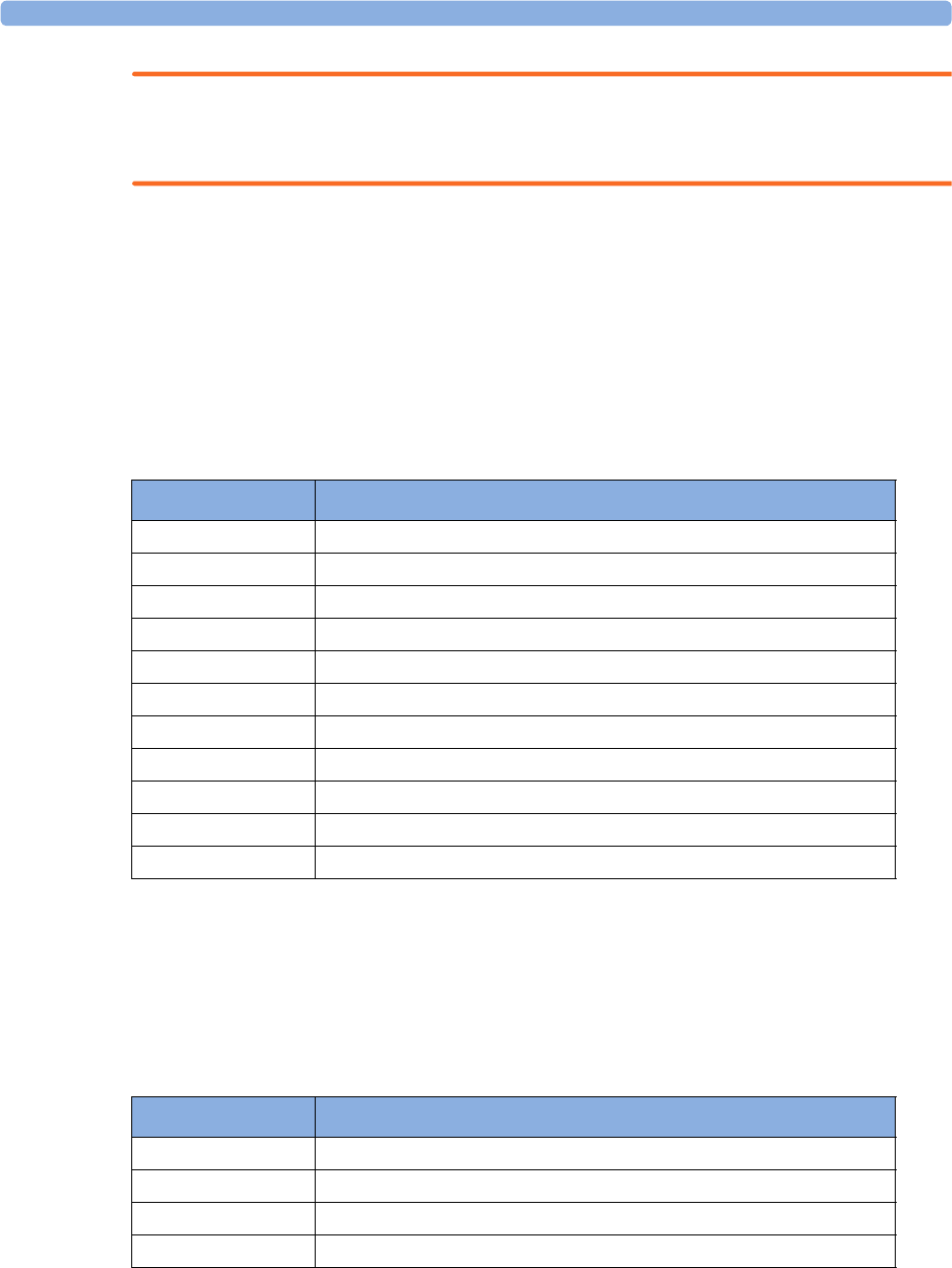
12 Monitoring Invasive Pressure
214
WARNING
If measuring intracranial pressure (ICP, IC1 or IC2) with a sitting patient, level the transducer with the
top of the patient's ear. Incorrect leveling may give incorrect values.
Selecting a Pressure for Monitoring
Tell the monitor the source of the pressure you want to monitor by selecting an appropriate pressure
label. The label is a unique identifier for each type of pressure. When you choose a label, the monitor
uses that label's stored settings, for example color, wave scale and alarm settings. The label also
determines which algorithm is used to process the pressure signal, so an incorrect label can lead to
incorrect pressure values.
1In the Setup <Press Label> menu, select Label.
2Select the appropriate label from the list.
Extended Pressure Label Set
The following additional labels are available if Label Set is set to Full. This setting can only be changed
in Configuration Mode.
Note that if your monitor is connected to an Information Center, the additional labels in the extended
label set may not be correctly displayed. See the Configuration Guide for your monitor for more
information.
Label Description
ABP Arterial blood pressure
ART Arterial blood pressure (alternative)
Ao Aortic pressure
CVP Central venous pressure
ICP Intracranial pressure
LAP Left atrial pressure
PNon-specific pressure label
PAP Pulmonary artery pressure
RAP Right atrial pressure
UAP Umbilical arterial pressure
UVP Umbilical venous pressure
Label Description
BAP Brachial arterial pressure
FAP Femoral arterial pressure
IC1, IC2 Alternative intracranial pressures
P1, P2, P3, P4 Alternative non-specific pressure labels

12 Monitoring Invasive Pressure
215
Zeroing the Pressure Transducer
To avoid inaccurate pressure readings, the monitor requires a valid zero. Zero the transducer in
accordance with your hospital policy. You must perform a zero:
• when you use a new transducer or tubing
• every time you reconnect the transducer cable to the monitor
if you think the monitor's pressure readings are not correct.
When using a pressure module, the zero information is stored in the module. When a pressure module,
with the transducer connected, is plugged into the monitor, the monitor will use the Zero stored in the
module.
Zeroing ICP (or IC1/IC2)
Your hospital guidelines may require you to zero the ICP transducer less frequently than other
transducers, due to the need for aseptic conditions. When you zero an ICP transducer, the zero values
are automatically stored and you will not be prompted to repeat the zero procedure.
If you want to simultaneously zero all pressures except ICP, disconnect the ICP transducer from the
Multi-Measurement module or pressure module while zeroing. Reconnecting the transducer recalls the
stored values.
WARNING
If you select the label ICP (or IC1/IC2), the measurement device uses the most recently stored zero.
Therefore, make sure you zeroed the transducer correctly in accordance with the transducer
manufacturer's instructions and your hospital policy. When you use a transducer that you cannot
rezero after placement, ensure that you keep the measuring device with the patient so that you are
certain you have the correct zero data for this patient.
Determining a Pressure's Most Recent Zero
The monitor displays the most recent zero on the status line. If this has "timed-out" after you have
performed a zero, redisplay the information in the status line by entering the pressure's setup menu.
Zeroing a Pressure Measurement
WARNING
Invasive pressure alarms (and pulse alarms, if derived from invasive pressure) are temporarily
suppressed until 30 seconds after the transducer finishes zeroing.
1Turn off the stopcock to the patient.
2Vent the transducer to atmospheric pressure, to compensate for the static and atmospheric
pressure exerted on the transducer.
3In the setup menu for the pressure, select Zero <Press Label>.
4When you see the message <Press Label> zero done at <Date and Time> on the status line,
close the stopcock to atmospheric pressure, and open the stopcock to the patient.
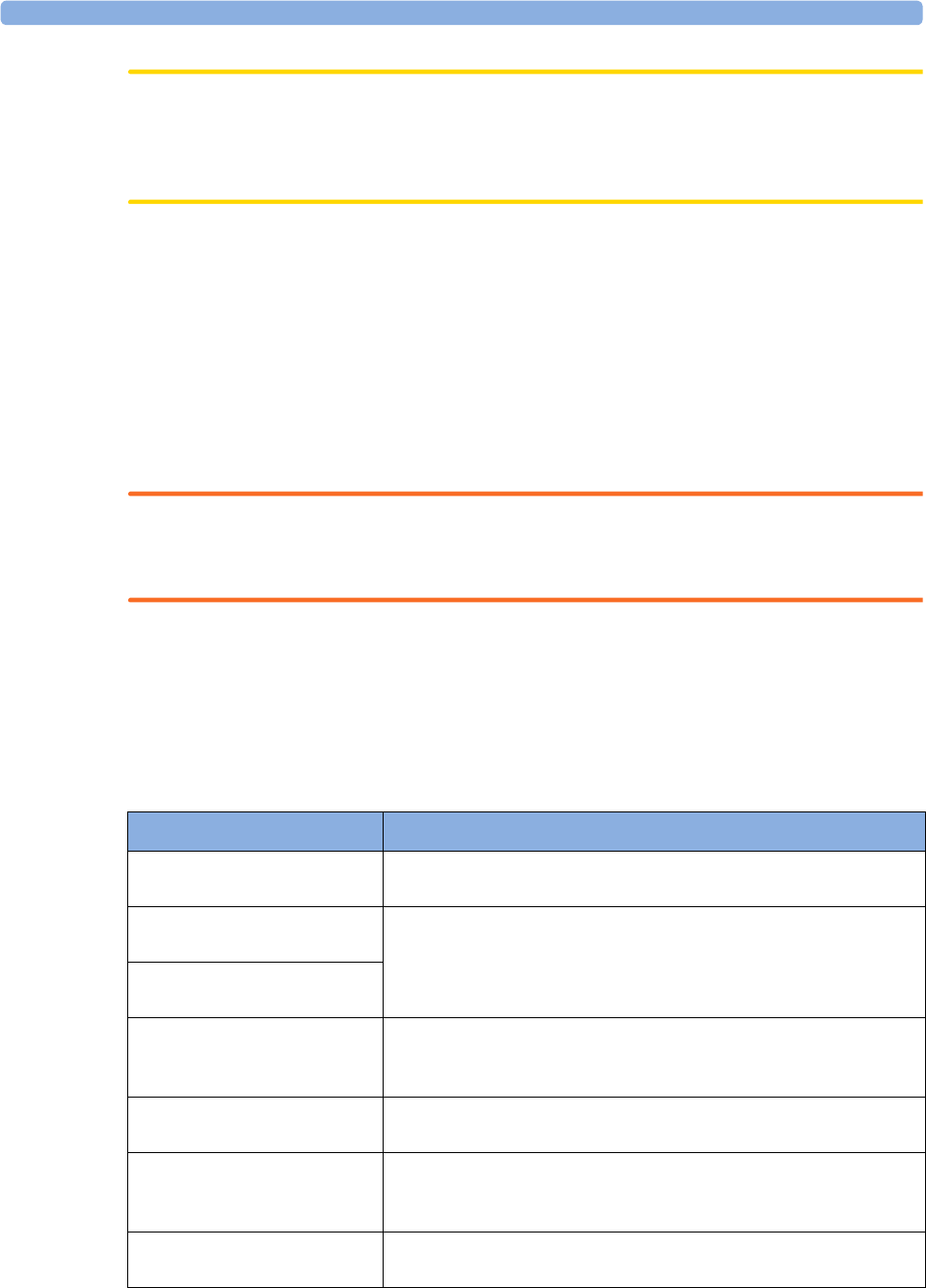
12 Monitoring Invasive Pressure
216
CAUTION
When using high frequency ventilation, ensure that the tubing from the ventilator does not touch the
arterial line, or connect with it indirectly, while zeroing the pressure. This could cause small pressure
variations which can interfere with the zero procedure.
Using the Zero Hardkey
Pressing the Zero hardkey for two seconds on the M1006B Pressure module starts a zero for the
pressure currently measured with the module.
Pressing the Zero hardkey for two seconds on the M3001A Multi-Measurement module zeros the
pressure being measured by the Multi-Measurement module and the pressures from any connected
MMS extensions.
Zeroing All Pressures Simultaneously
WARNING
Before zeroing all pressures, make sure that all pressure transducers are vented to atmospheric
pressure.
If you are measuring pressures with more than one measuring device, using the Zero Press SmartKey
to initiate the zeroing calls up a list of all active pressures. Select the pressure you want to zero or select
All Press to zero all pressures simultaneously.
Troubleshooting the Zero
The status line lists the probable cause of an unsuccessful zero:
Message Corrective Action
unable to zero - equipment
malfunction
The hardware is faulty. Contact your service personnel.
unable to zero - excessive
offset
Make sure the transducer is vented to air and try again. If this fails,
the hardware may be faulty. Replace the adapter cable and try again.
If it fails, replace the transducer and try again. If it still fails, contact
your service personnel.
unable to zero - unstable
signal
unable to zero - no
transducer
Make sure that the transducer is connected and try again. If this fails,
exchange the adapter cable and try again. If this fails, exchange the
transducer.
unable to zero - pulsatile
pressure
Make sure that the transducer is vented to air, not to the patient, and
try again.
unable to zero - timed out Try pressing the Zero hardkey or Zero <Press Label> key again. If
this fails, replace the transducer and adapter cable and contact your
service personnel.
Switch on first Pressure measurement is switched off. To switch it on, in the Setup
<Press Label> menu, select the pressure's label.

12 Monitoring Invasive Pressure
217
Adjusting the Calibration Factor
Each time you use a reusable transducer, compare the calibration factor written on your transducer
with the calibration factor shown on the monitor. To ensure accurate measurement, they must be the
same.
1In the Setup <Press Label> menu, select Cal. Factor.
If the value here does not match that on the transducer, select the corresponding value from the
list now in accordance with your hospital's procedure.
2To confirm you want to use the new calibration factor, select the Confirm pop-up key.
Displaying a Mean Pressure Value Only
Use this when you want to see only the mean pressure.
In the pressure's setup menu, select Mean only. Toggle between On to display mean pressure value
only, and Off to display all pressure values (systolic, diastolic and mean).
Changing the Pressure Wave Scale
1Select the label of the pressure wave whose scale you want to set to enter the Setup <Press
Label> menu.
2In the Setup <Press Label> menu, (for example ABP) select Scale.
3Select a value from the pop-up list:
– a positive value sets the top gridline. The bottom gridline is set at zero.
– a negative value sets the bottom gridline. The middle gridline is set at zero.
Optimizing the Waveform
In the Setup <Press Label> menu, select Optimum Scale to let the monitor select the best minimum
and maximum scales for the current wave.
Using the Wave Cursor
When the pressure wave is selected, you can display a cursor in the wave. It appears as a white
horizontal line in the wave. Using the pop-up keys you can move the cursor up or down to the
required position and store the corresponding value. The cursor value can be stored
• as a systolic, diastolic or mean pressure value,
• as an IAP (intra-abdominal pressure) value - for the waves P, P1 to P8, if IAP is configured as a
measurement which can be manually entered
• as a PAWP value - if the pressure wave is a PAP wave
The stored value appears in the trend database as a manually entered value.
To display and position the cursor
1Select the pressure wave.
2Select Activate Cursor.
3Use the pop-up arrow keys to position the cursor.
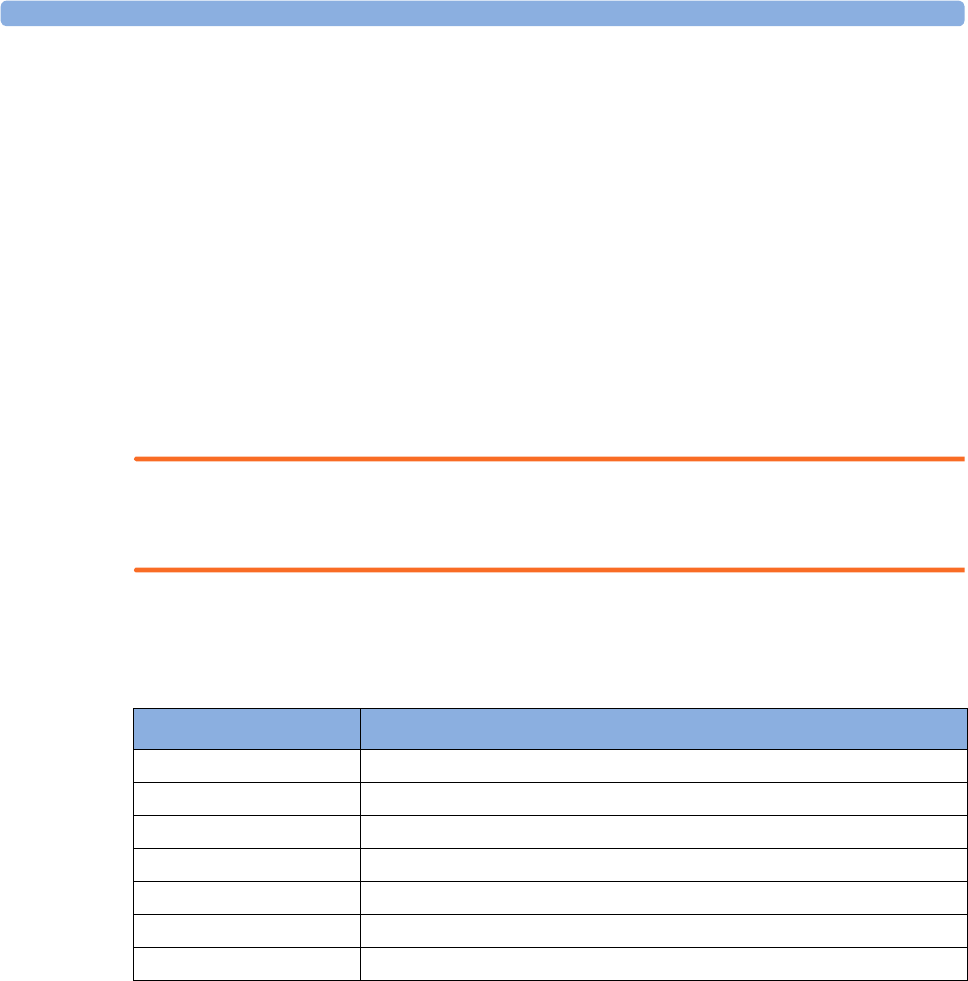
12 Monitoring Invasive Pressure
218
Using the pop-up keys you can also change the scale or the speed for the wave, freeze the wave or start
a printout or recording.
Non-Physiological Artifact Suppression
Some clinical procedures may affect blood pressure, for example, a flush procedure or a blood sample.
Your monitor may be configured to suppress these non-physiological artifacts for a specified duration
(Artifact Suppr. is configured to 30 sec, 60 sec, or 90 sec). During artifact suppression, the monitor
shows the INOP message <Press Label> Artifact, and a question mark is shown beside the pressure
numerics. Pressure alarms and the <Press Label> No Pulse INOP are suppressed during the
configured period. The CPP alarms are not suppressed.
Choosing the Pressure Alarm Source
WARNING
Make sure you set alarm limits for the correct label. The alarm limits you set are stored for that
particular label only. Changing the label may change the alarm limits.
You can monitor for alarm conditions in systolic, diastolic and mean pressure, either singly or in
parallel. Only one alarm is given at a time, in this order of priority: mean, systolic, diastolic.
In the Setup <Press Label> menu, select Alarms from and choose the source.
Select and set the High Limit and Low Limit for the pressure(s) you have selected.
Extreme Alarm Limits for Pressure
The extreme pressure alarms, Extreme High and Extreme Low, can be made available for your
monitor in Configuration Mode and are additional to the standard High and Low limit alarms. They
are generated by the active pressure alarm source, and are setup in Configuration Mode by adding a set
value (the Δ value) to the high and low alarm limits. This value can be set for each pressure label
individually.
Menu option Pressure value monitored
Sys. systolic
Dia. diastolic
Mean mean
Sys & Dia systolic and diastolic in parallel
Dia & Mean diastolic and mean in parallel
Sys & Mean systolic and mean in parallel
Sys&Dia&Mean all three pressures in parallel
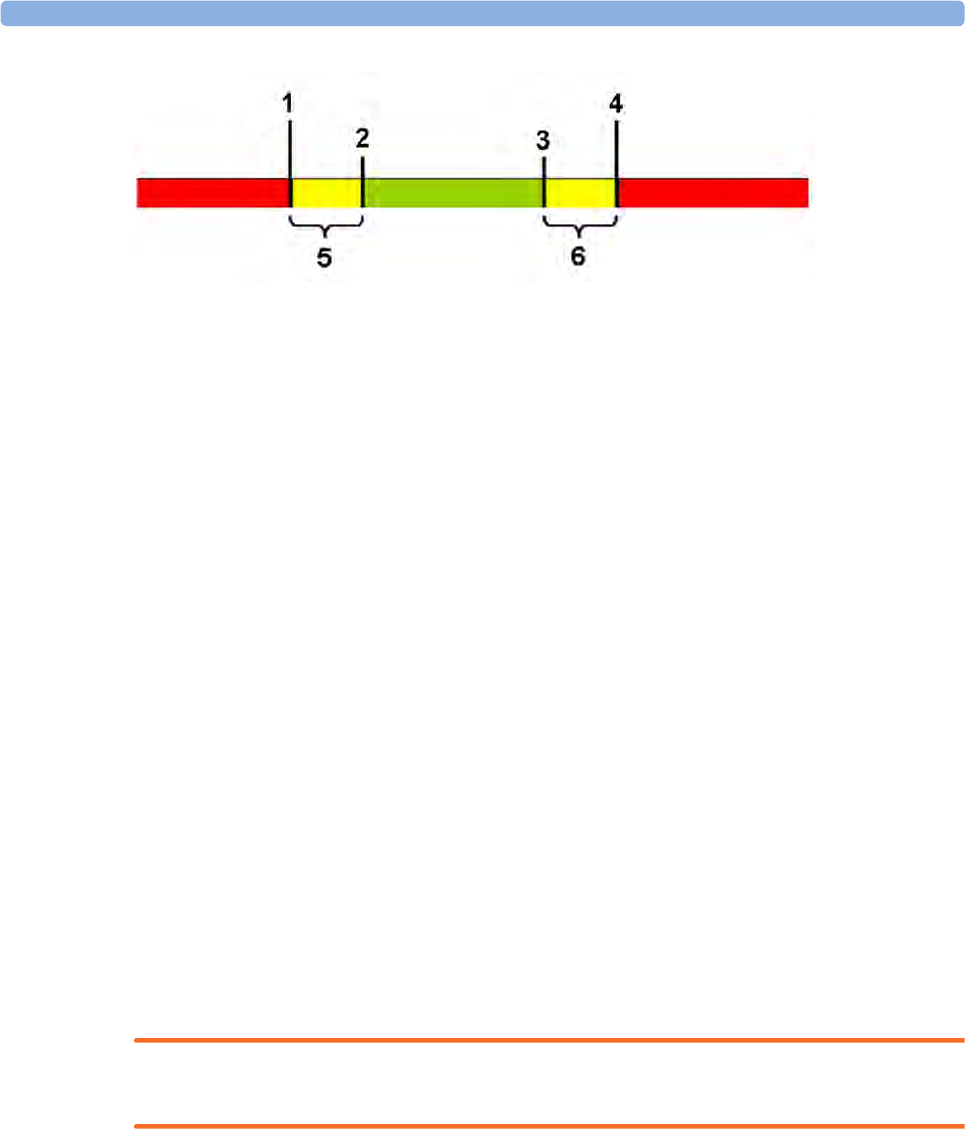
12 Monitoring Invasive Pressure
219
1Extreme Low Limit
2Low Limit
3High Limit
4Extreme High Limit
5Δ Extreme Low
6Δ Extreme High
You need to know which values have been configured for your monitor. Changing the high and low
alarm limits automatically changes the extreme alarm limits within the allowed range.
• To see the extreme pressure alarms set for your monitor, in the Setup <Press Label> menu, see
the menu items Δ Extreme High and Δ Extreme Low.
The extreme pressure alarms are high priority, red alarms, marked *** in the alarm message.
Calibrating Reusable Transducer CPJ840J6
Depending on your monitor's configuration, you may be able to perform a calibration in monitoring
mode. Perform a mercury calibration when you use a new transducer, and at regular intervals
according to your hospital policy. You require:
• standard sphygmomanometer.
• sterile 10cc syringe with heparinised solution.
•3-way stopcock.
• approximately 25 cm of tubing.
Making the Pressure Calibration
WARNING
Never perform the invasive pressure calibration while a patient is being monitored.
1Zero the transducer.
2Connect the syringe and manometer.
a. Attach the tubing to the manometer.
b. Connect the 3-way stopcock to the stopcock that is not connected to the patient catheter
when you measure a patient.
c. Attach the syringe to one port and the manometer tubing to the other port.
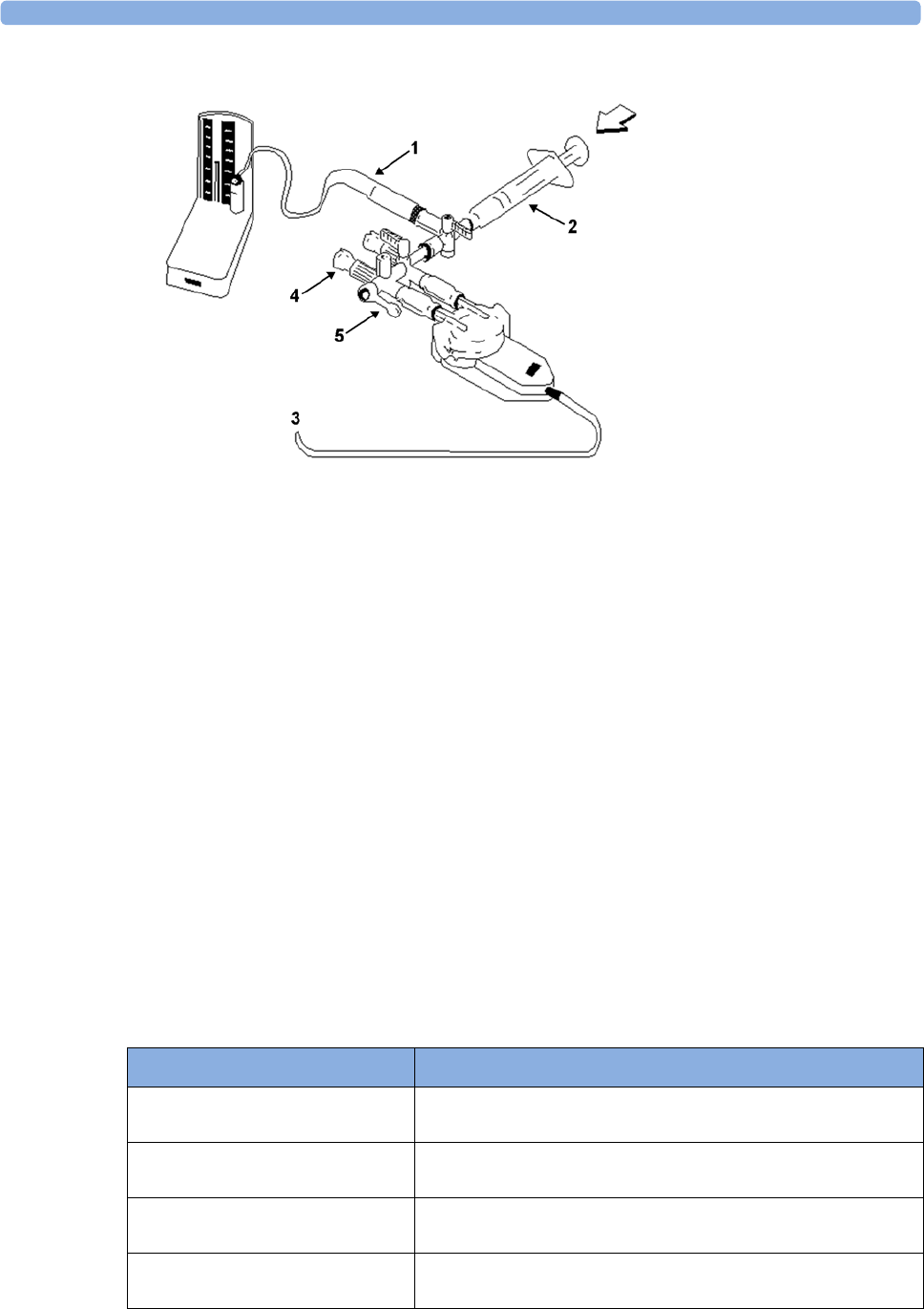
12 Monitoring Invasive Pressure
220
d. Open the port to the manometer.
1 Tubing to manometer
2 Syringe with heparinised solution
3 To pressure connector on monitor
4 Patient connection stoppered
5 Off
3Move the syringe barrel in and raise the mercury to 200 mmHg (30 kPa). 200 mmHg is the
recommended calibration pressure.
4In the Setup <Press Label> menu, select Cal. Press.
5Select the calibration pressure from the list, for example 200 mmHg.
6Select Confirm to recalculate the calibration factor using the applied pressure.
7When the monitor displays <Press Label> mercury calibr. done at <Date and Time>, remove
the manometer tubing, syringe and extra stopcock. We recommend you replace the transducer
dome and tubing with sterile ones.
8Label the transducer with the calibration factor shown in the Cal. Factor field in the pressure's
setup menu.
9Reconnect the patient and start measuring again.
Troubleshooting the Pressure Calibration
The status line lists the probable cause of an unsuccessful calibration.
Message Corrective Action
unable to calibrate - equipment
malfunction
Contact your service department. The pressure hardware is
faulty.
unable to calibrate - out of range Make sure that you have selected the value for Cal. Press that
you are applying to the transducer, and repeat the calibration.
unable to calibrate - no
transducer
Make sure that the transducer is connected and try again.
unable to calibrate - unstable
signal
Make sure there are no disturbances to the transducer, and
repeat the calibration.
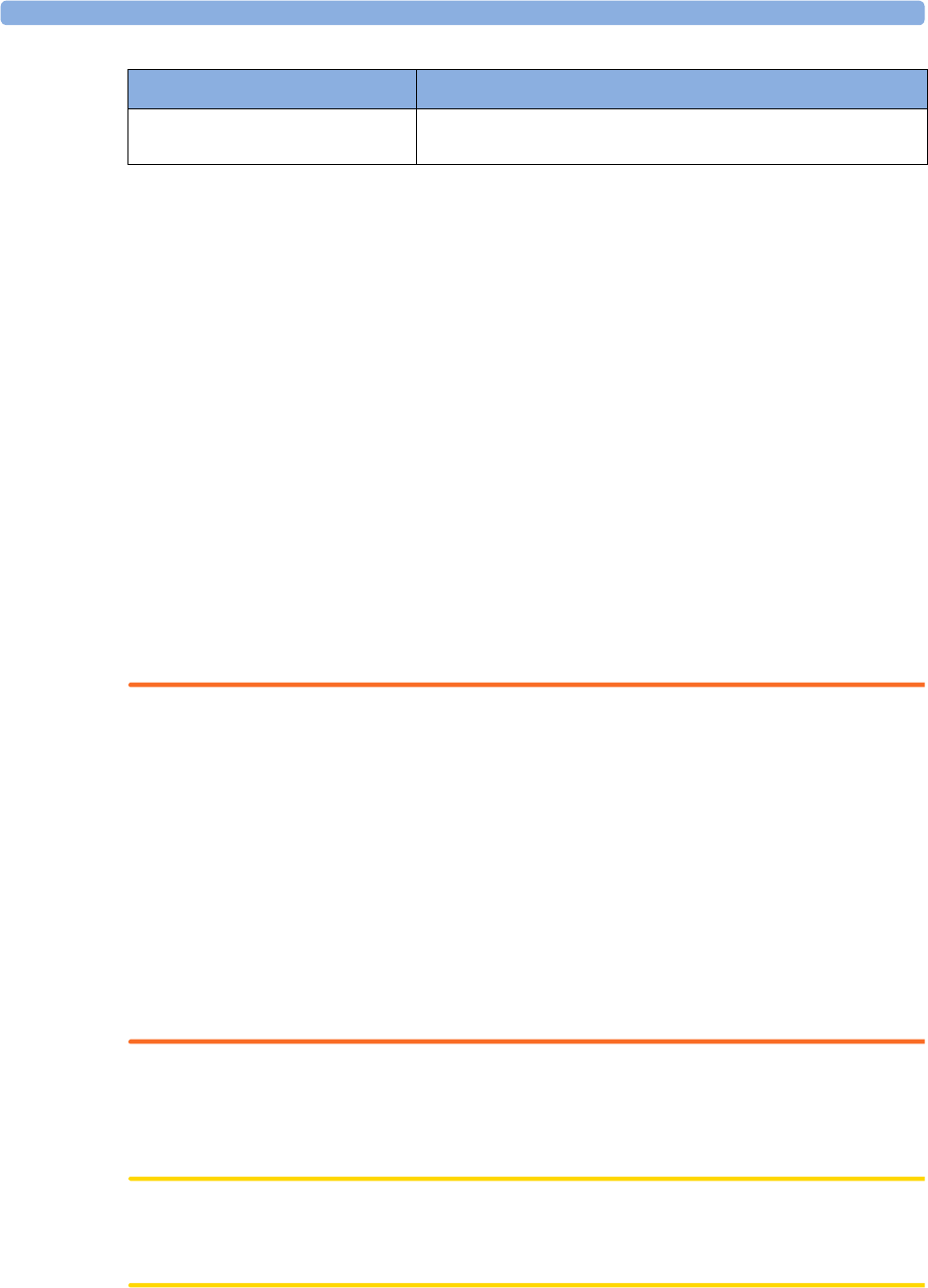
12 Monitoring Invasive Pressure
221
Calculating Cerebral Perfusion Pressure
The monitor can calculate the difference between mean arterial pressure and the intracranial pressure.
The difference is labeled CPP.
1In the Main Setup menu, select Measurements.
2Select CPP.
3In the Setup CPP menu, select which arterial pressure source should be used in the calculation.
Calculating Pulse Pressure Variation
Note: Pulse Pressure Variation can be calculated in two different ways on this monitor - directly from
the pressure measurement or in conjunction with the CCO measurement. Refer to the Cardiac Output
chapter for information on PPV from CCO. Only one PPV can be active at a time.
Pulse Pressure Variation (PPV) is calculated from beat-to-beat arterial pressure values. Pulse pressure
is the difference between the systolic and the diastolic pressure values for a single beat. Pulse pressure
variation is defined as the maximal pulse pressure less the minimum pulse pressure divided by the
average of the two. The average variation in pulse pressure is calculated over periods of 32 seconds.
WARNING
• This monitor can calculate PPV from beat-to-beat values of any arterial pulsatile pressure. The
circumstances under which the calculation of a PPV value is clinically meaningful, appropriate and
reliable must be determined by a physician.
• The clinical value of the derived PPV information must be determined by a physician. According
to recent scientific literature, the clinical relevance of PPV information is restricted to sedated
patients receiving controlled mechanical ventilation and mainly free from cardiac arrhythmia.
• PPV calculation may lead to inaccurate values in the following situations:
– at respiration rates below 8 rpm
– during ventilation with tidal volumes lower than 8 ml/kg
– for patients with acute right ventricular dysfunction ("cor pulmonale").
• The PPV measurement has been validated only for adult patients
To select an arterial pressure as PPV source:
1In the Main Setup menu, select Measurements.
2In the Setup PPV menu, select ABP, ART, Ao, BAP, P or FAP as the arterial pressure source.
CAUTION
Older Multi-Measurement modules cannot supply a beat-to-beat arterial pressure value. In this case the
monitor shows a No PPV from MMS or No PPV from FMS INOP.
unable to calibrate - perform
zero first
No valid zero. Zero the transducer.
Message Corrective Action

12 Monitoring Invasive Pressure
222
Measuring IAP
There are two methods to store IAP measurement readings in the monitor: with manual entry or using
a pressure waveform.
NOTE
For both methods, to be able to use the label IAP, it must be made available for manual entry in
Configuration Mode. For more details on manually entered measurements, see “Entering
Measurements Manually” on page 46.
Manual Entry
This method uses a reading from an independent IAP measurement device, for example a bladder
manometer; the user manually transcribes the IAP reading to the monitor.
To manually enter the measured IAP value:
1Select the IAP numeric on the screen.
2Enter the IAP value and select Enter using the numeric keypad.
3If you need to change date and time, select Date/Time. The default is always the current date and
time. Select Enter to confirm.
4Select Save.
Using a Pressure Waveform
This method uses an electronic reading from a pressure transducer connected to the monitor. The
pressure transducer usually acquires the IAP from a dedicated IAP measurement device.
To enter the IAP using a connected IAP measurement device:
1Assign the pressure label P (or P1…P8) to the pressure channel connected to the IAP transducer.
2Zero the transducer as described in “Zeroing a Pressure Measurement” on page 215.
3Perform the IAP measurement according to the instructions given by the manufacturer of the IAP
measurement device.
4On the monitor screen, when the IAP pressure has stabilized, select the pressure waveform and
select Activate Cursor.
5Use the arrow up/down keys to move the wave cursor to an area of the waveform that reflects the
correct pressure. See “Using the Wave Cursor” on page 217 for details.
6Select Save as IAP. This will store the IAP pressure value under the cursor in the monitor’s
database and display it on the monitor screen.
Measuring Pulmonary Artery Wedge Pressure
Pulmonary Artery Wedge Pressure (PAWP) values, used to assess cardiac function, are affected by:
• Fluid status
• Myocardial contractility
• Valve and pulmonary circulation integrity
Obtain the measurement by introducing a balloon-tipped pulmonary artery flotation catheter into the
pulmonary artery. When the catheter is in one of the smaller pulmonary arteries, the inflated balloon
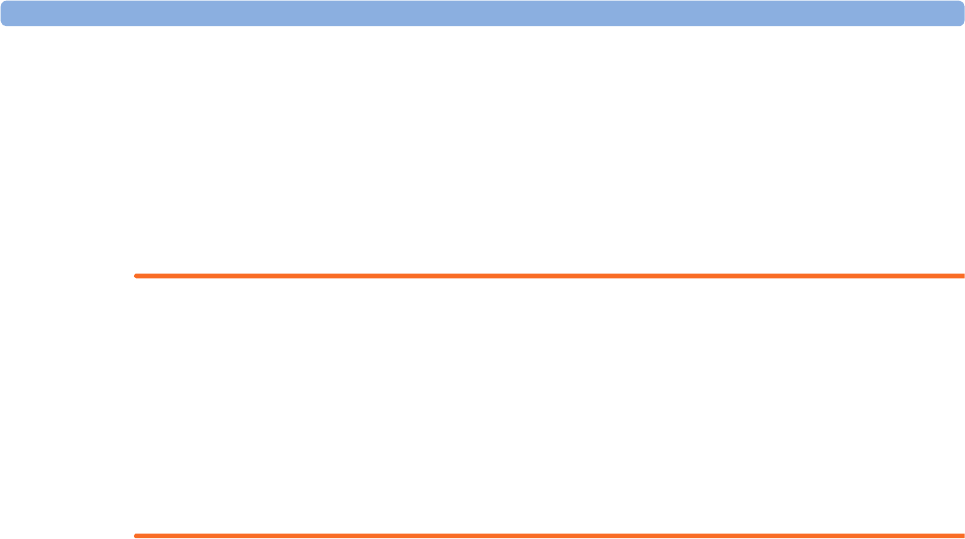
12 Monitoring Invasive Pressure
223
occludes the artery allowing the monitor to record changes in the intrathoracic pressures that occur
throughout the respiration cycle. The pulmonary wedge pressure is the left ventricular end diastolic
pressure (preload).
The most accurate PAWP values are obtained at the end of the respiration cycle when the intrathoracic
pressure is fairly constant. You can use the respiration waveform as a reference when assessing the
PAWP waveform, to ensure constant measurement timing relative to the respiratory cycle. The
monitor displays the PAWP value for up to 24 hours or until you admit a new patient.
WARNING
The pressure receptor in the catheter records pressure changes that occur only in front of the
occlusion. Even though the catheter tip is in the pulmonary artery, the receptor records pressure
changes transmitted back through the pulmonary circulation from the left side of the heart.
While performing the wedge procedure, the monitor switches off the pressure alarms for pulmonary
artery pressure (PAP).
Due to a slight measurement delay, you should not use sidestream CO2 as a direct reference for
determining the end expiratory point in the pressure curve.
To start the Wedge procedure,
1In the Main Setup menu, select Wedge to display the wedge procedure window.
2Prepare and check the pressure line according to your hospital policy.
3Use the Refernce Wave 1 and Refernce Wave 2 pop-up keys to select any ECG or respiratory
wave as reference waves.
4Select Change Speed if you want to change the speed of the displayed wave. The speed can also
be changed in the screen for editing the wedge.
5Select Change Scale to change the wave scale of the PAP. The same scale will be used in the
screen for editing the wedge. If the setting Optimum Scale is used, the wave scale will be
optimized when a wedging waveform is recognized and will revert to the previous scale when the
wedge procedure window is closed.
6Inflate the balloon when the monitor prompts you: Ready for balloon inflation. The waveform
changes from the PAP to the PAWP wave. The measurement takes approximately 12 seconds. On
completion, the monitor stores the PAWP waveform display and prompts you to deflate the
balloon. If the monitor cannot detect a wedging waveform you must use Store Trace to store the
wedge and two reference waves manually.
7Deflate the balloon when the monitor prompts you: Ready for balloon deflation and verify that
the waveform returns to pulmonary artery shape.
8If you need to start a new measurement, select Restart Wedge.
Editing the Wedge
1Select the Edit Wedge pop-up key to see the stored waveforms.
2The monitor displays a cursor in the waveform at the PAWP mean value. It also displays any
previously stored value and the time it was stored.
3Select Change Speed if you want to change the speed (resolution) of the displayed wave.
4Move the cursors up, down, right and left to set them on the correct wedge position.
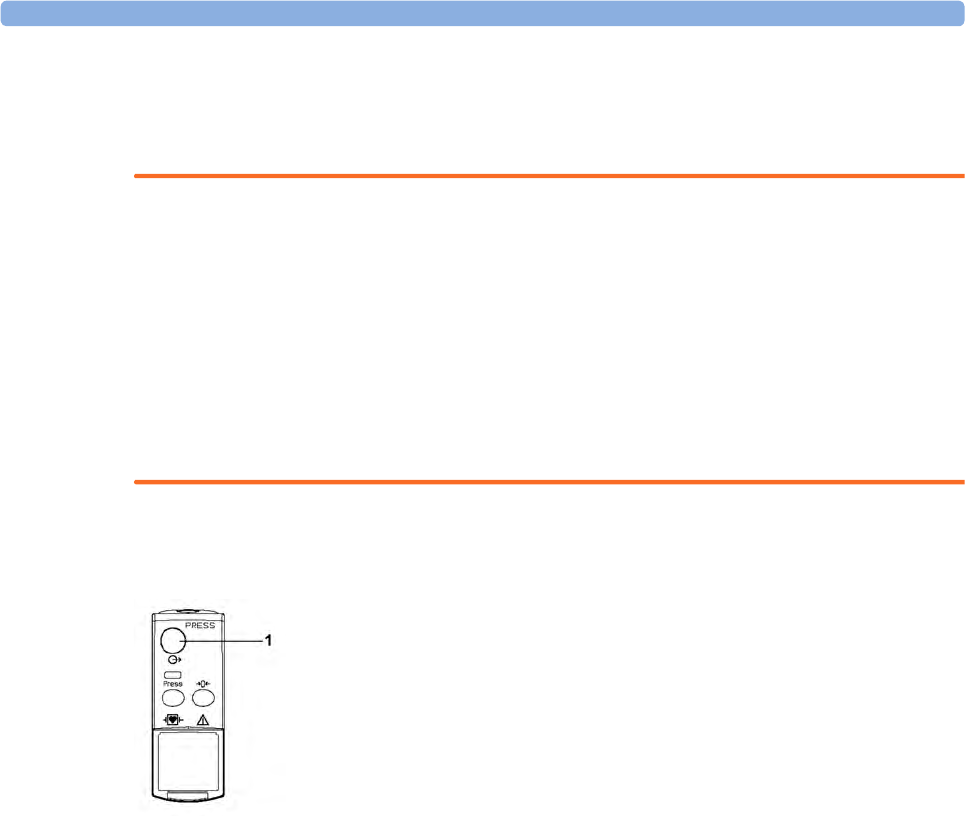
12 Monitoring Invasive Pressure
224
5Select Store Wedge to store the PAWP value.
6Select Print Wedge to print the PAWP waveform and any reference waves or Record Wedge to
record them. While recording or printing, you cannot perform any more Wedge tasks.
WARNING
Prolonged inflation can cause pulmonary hemorrhage, infarction or both. Inflate the balloon for the
minimum time necessary to get an accurate measurement.
If the pulmonary artery flotation catheter drifts into the wedge position without inflation of the
balloon, the pulmonary artery pressure waveform assumes a wedged appearance. Take appropriate
action, in accordance with standard procedures, to correct the situation.
If the PAWP (mean) is greater than the PAP (systolic), deflate the balloon and report the incident in
accordance with hospital policy, because the pulmonary artery could be accidentally ruptured, and the
wedge value derived will not reflect the patient's hemodynamic state, but will merely reflect the
pressure in the catheter or balloon.
Identifying the Pressure Analog Output Connector
1Analog output (module M1006B, option C01 only)

13
225
13Monitoring Cardiac Output
The Cardiac Output (C.O.) measurement invasively measures cardiac output and other hemodynamic
parameters using a technique called thermodilution. This can be used to determine the flow rate of a
system by introducing a cold solution into the system and measuring the resulting drop in temperature
at a downstream site. The temperature change is displayed as a curve in the C.O. procedure window,
and the monitor calculates the C.O. value from this curve. The C.O. value is inversely proportional to
the area under the curve. As cardiac output varies continuously, a series of measurements must be
carried out to achieve a reliable C.O. average value. Always use the average of multiple thermodilution
measurements for therapy decisions.
The measurements can be carried out using the right heart thermodilution method or the PiCCO
method (transpulmonary thermodilution).
• The right heart method is available with
– C.O. module M1012A - labeled as C.O., standard and option #C10 - labeled as CCO/C.O.
– M3012A Hemodynamic Measurement Extension Module, options #C05 and #C10
– M3014A Capnography Measurement Extension Module, option #C05 and #C10
• The PiCCO method is available with
– C.O. module M1012A - labeled as C.O., option #C10 - labeled as CCO/C.O.
– M3012A Hemodynamic Measurement Extension Module, option #C10
– M3014A Capnography Measurement Extension Module, option #C10
The PiCCO method additionally lets you measure Continuous Cardiac Output (CCO) by performing
pulse contour analysis on the blood pressure waveform.
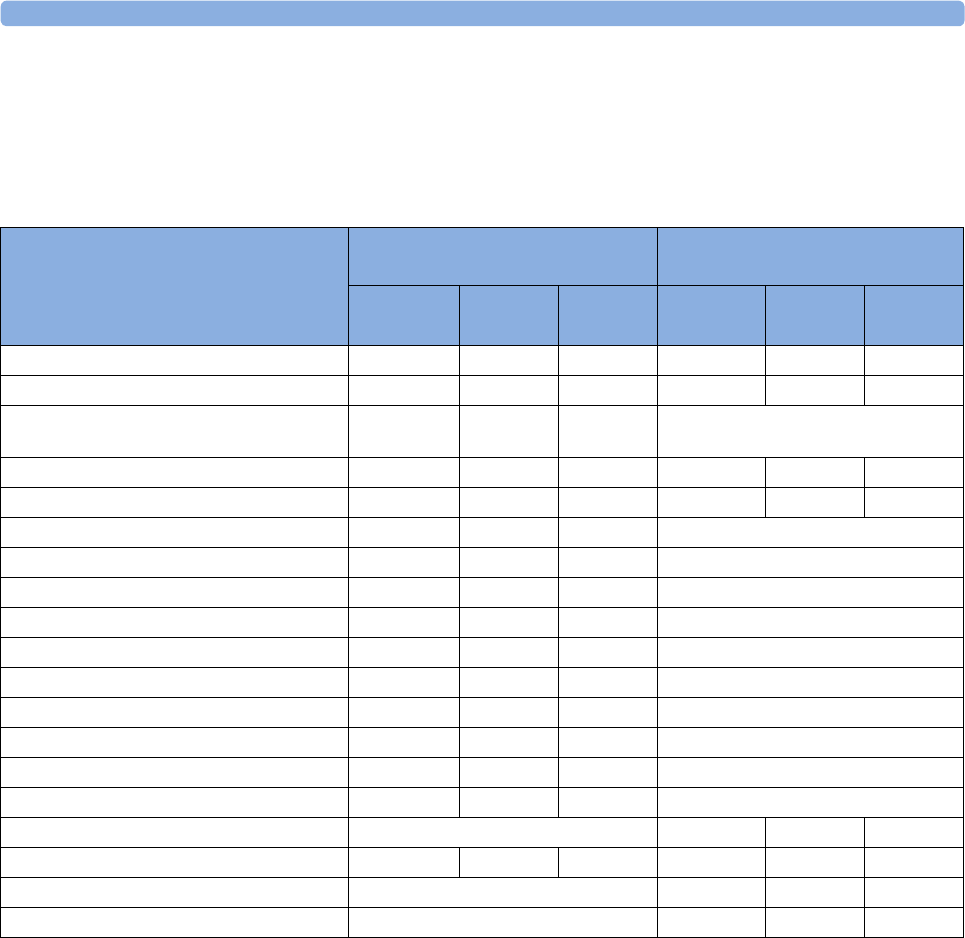
13 Monitoring Cardiac Output
226
Hemodynamic Parameters
This table illustrates the hemodynamic parameters available with each method, whether they are
measured continuously, and whether they can be shown on the monitor's main screen or in the
Hemodynamic Calculations window.
* currently not available in the U.S.A. and territories relying on FDA market clearance.
NOTE
EVLWI is calculated using Ideal Body Weight (IBW). ITBVI and GEDVI are calculated using Ideal
Body Surface Area (IBSA). IBW and IBSA are based on the patient category, gender and height that
you have entered for the patient.
Using the C.O. Procedure Window
The procedure window displays up to six trials (measurement curves) with the trial number and the
C.O. value under the thermodilution curve. When you open the window, a line of pop-up keys
automatically appears to let you carry out C.O.-related tasks. This example shows the procedure
window for the transpulmonary (PiCCO) Method. The window may be configured to look slightly
different on your monitor.
Measured and Calculated Hemodynamic
Parameters and Indexes
PiCCO Method (Transpulmonary
Thermodilution)
Right Heart Thermodilution
Continuous? Main
Screen
HemoCalc
Window Continuous? Main
Screen
HemoCalc
Window
Blood Temperature (Tblood) Yes Yes No Yes Yes No
C.O./C.I.: Cardiac Output No Yes Yes No Yes Yes
CCO/CCI: Continuous Cardiac Output Yes Yes Yes (in the
C.O. field)
Not available
SVR/SVRI: Systemic Vascular Resistance Both Yes Yes No No Yes
SV/SI: Stroke Volume/SV Index Both Yes Yes No No Yes
SVV: Stroke Volume Variation Yes Yes Yes Not available
*dPmax: Left Ventricular Contractility Index Yes Yes Yes Not available
CFI: Cardiac Function Index No Yes Yes Not available
PPV: Pulse Pressure Variation Yes Yes Yes Not available
ITBV/ITBVI: Intrathoracic Blood Volume No Yes Yes Not available
EVLW/EVLWI: Extravascular Lung Water No Yes Yes Not available
GEDV/GEDVI: Global End-Diastolic Volume No Yes Yes Not available
*PVPI: Pulmonary Vascular Permeability Index No Yes Yes Not available
*GEF: Global Ejection Fraction No Yes Yes Not available
*RLShnt: Right-Left-Shunt Fraction No No No Not available
PVR/PVRI: Pulmonary Vascular Resistance Not available No No Yes
LCW/LCWI: Left Cardiac Work No No Yes No No Yes
RCW/RCWI: Right Cardiac Work Not available No No Yes
RVSW/RVSWI: Right Ventricular Stroke Work Not available No No Yes
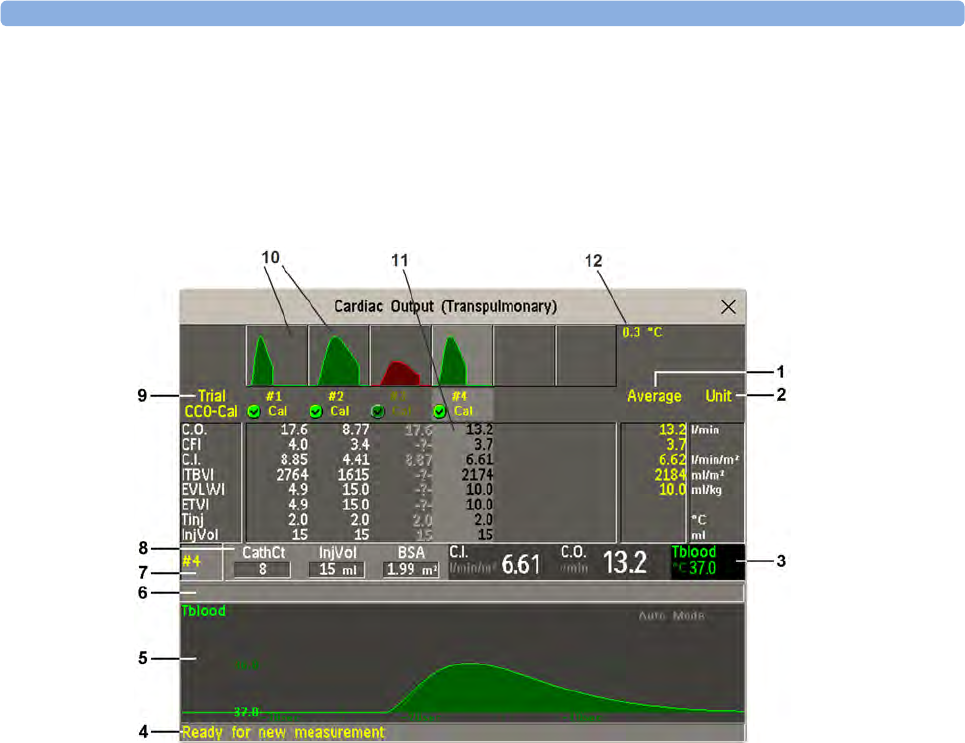
13 Monitoring Cardiac Output
227
To open the procedure window,
•Select
Cardiac Output in the Setup C.O. or Setup CCO menu, or
• Select the Cardiac Output SmartKey on the Screen, if configured, or
• Press the START hardkey on the front of the C.O. plug-in module, if available, or
• Press a remote start switch, if you are using one.
1Average - column of averaged values
2Unit column
3Continuously measured numeric
4Prompt message field
5Thermodilution curve of current trial
6Curve alert message field
7Current trial number
8Setup information
9Trial numbers for the trial curves
10 Trial curves
11 Results table of current trial
12 Trial curve scale
• To change the measurement parameters shown in the results table of the procedure window, select
the Table Contents pop-up key and choose from the list of available parameters.
• To view the currently-used temperature unit, see the "grayed-out" setting Temperature Unit in the
Setup C.O. menu. This setting can only be changed in Configuration Mode.
• The Cardiac Output screen element may be configured to display permanently on a specially
designed Screen. Selecting the screen element opens the cardiac output pop-up keys.

13 Monitoring Cardiac Output
228
Accessing the Setup C.O. and Setup CCO Menus
C.O. settings can be changed in the Setup C.O. menu. To access this menu,
• press the C.O. hard key on the C.O. module, or
• select any of the discontinuous C.O. numerics (for example, C.O., C.I.) on the screen.
CCO/CCI settings can be changed in the Setup CCO menu. To access this menu,
• select any of the continuously measured hemodynamic numerics (CCO, CCI.) on the screen.
Entering the HemoCalc Window
From the procedure window, select the pop-up key Hemo Calc to open the Hemo Calculations
window.
Measuring C. O. Using the PiCCO Method
The PiCCO method combines transpulmonary thermodilution and pulse contour analysis on the
blood pressure waveform. A fluid with a known volume and temperature is injected into the right
atrium through a CVP catheter. The injectate bolus mixes with the blood in the heart and the change in
blood temperature is measured with a thermistor at the distal end of an arterial catheter placed in one
of the bigger systemic arteries, for example, the femoral or the axillary artery.
The PiCCO Method requires a pressure measurement made using either the M1006B Pressure
module, or a M3001A/M3002A MMS, or a measurement extension module M3015A, M3014A, or
M3012A. (A pressure from an external device may not be used.) You will also need a conventional
central venous (CVP) line and an arterial catheter from PULSION Medical Systems. You must use the
approved catheters and puncture locations.
Measuring Continuous Cardiac Output
Every time C.O. is measured with the PiCCO method, the monitor uses this C.O. value and the result
of the pulse contour analysis to calculate a patient-specific calibration factor. The monitor uses this
value to compute CCO and the other continuous hemodynamic parameters. CCO values are calculated
on a beat-to-beat basis and then averaged over a 12-second time frame. The calculated values are
displayed as numerics on the monitor screen.
Measuring Systemic Vascular Resistance
The monitor uses CCO, an arterial pressure, and CVP to calculate a continuous SVR value. If a
continuously measured CVP value is not available, the monitor uses a preset, static CVP value to
calculate the SVR (you will see the INOP message SVR Set CVP Used). If the BSA is available, the
monitor uses the CCI to calculate the SVRI. A CCO or CCI from an external device can also be used
for the SVR/SVRI calculation.
SVR/SVRI settings can be changed in the corresponding setup menu. To enter the menu, select Main
Setup then Measurements followed by SVR or SVRI.
To display a SVR/SVRI numeric on the Screen, select any numeric, then select Change Numeric and
select SVR or SVRI from the list of available numerics.
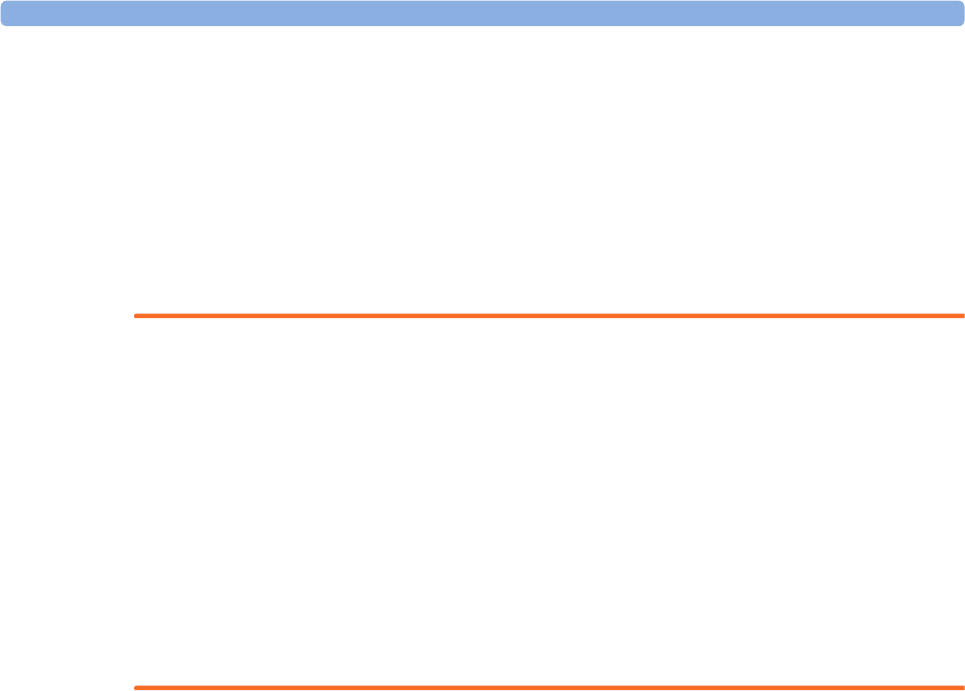
13 Monitoring Cardiac Output
229
Measuring Pulse Pressure Variation
Note: Pulse Pressure Variation can be calculated in two different ways on this monitor - in conjunction
with CCO or directly from the pressure measurement. Refer to the Invasive Pressure chapter for
information on PPV from pressure. Only one PPV can be active at a time.
Pulse Pressure Variation (PPV) is calculated from beat-to-beat arterial pressure values. Pulse pressure
is the difference between the systolic and the diastolic pressure values for a single beat. Pulse pressure
variation is defined as the maximal pressure less the minimum pressure divided by the average of these
two pressures.
WARNING
• The monitor calculates PPV from beat-to-beat values of the arterial pressure selected for CCO.
The circumstances under which the calculation of a PPV value is clinically meaningful, appropriate
and reliable must be determined by a physician.
• The clinical value of the derived PPV information must be determined by a physician. According
to recent scientific literature, the clinical relevance of PPV information is restricted to sedated
patients receiving controlled mechanical ventilation and mainly free from cardiac arrhythmia.
• PPV calculation may lead to inaccurate values in the following situations:
– at respiration rates below 8 rpm
– during ventilation with tidal volumes lower than 8 ml/kg
– for patients with acute right ventricular dysfunction ("cor pulmonale").
• The PPV measurement has been validated only for adult patients
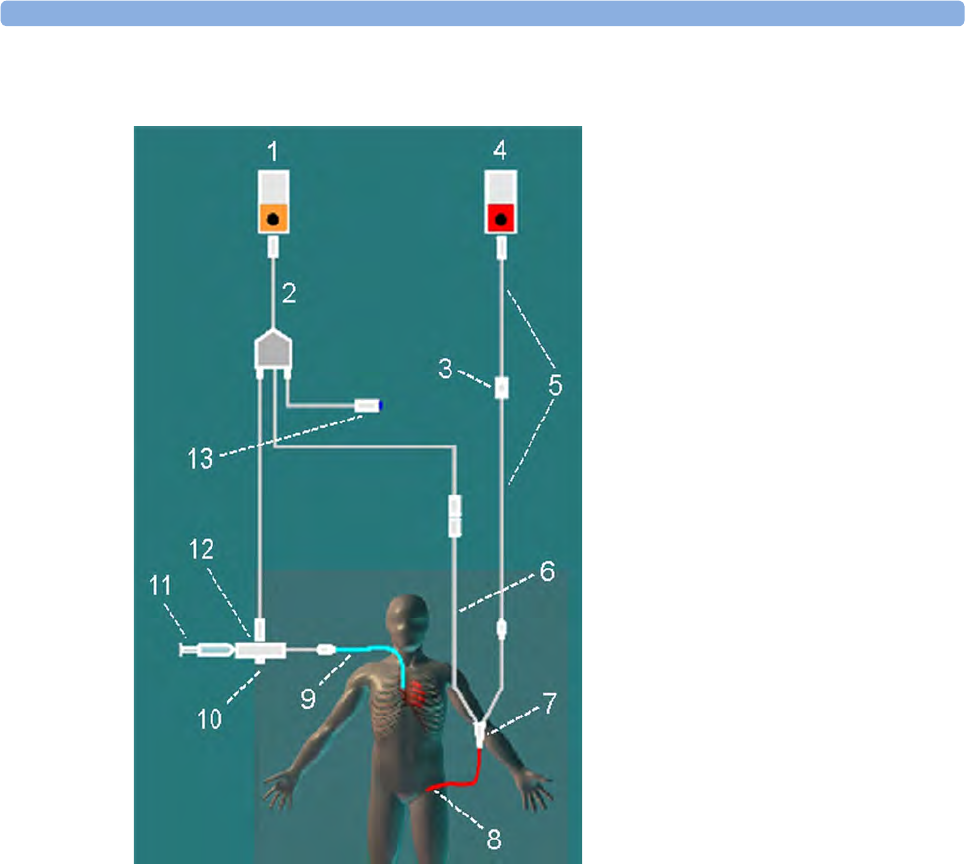
13 Monitoring Cardiac Output
230
Setting Up the PiCCO C.O. Measurement
1Set up the arterial line using the arterial catheter (transpulmonary catheter) and the transducer kit
from PULSION Medical Systems. It must be placed in one of the bigger systemic arteries, for
example, the femoral or the axillary artery. You must use the approved catheters and puncture
locations.
2Set up the central venous line.
3Connect the injectate temperature probe housing to the venous line.
4Plug the C.O. interface cable into the C.O. module or measurement extension module and connect
the following devices to the C.O. interface cable:
– Injectate temperature probe
– Thermistor connector
– Remote start switch (if used).
Follow your hospital standards to avoid unintentional extraction of the C.O. catheter. Secure the
cable using the mounting clip shipped with each C.O. interface cable. You may also find it helpful
to loop the C.O. interface cable, tape the loop, and attach it to the undersheet of the patient's bed
using a safety pin.
1C.O.Module
2 C.O. Interface Cable
3 PULSION Pressure Transducer
4 Press Module
5 Pressure Adapter Cable
6 Thermistor Connection Cable
7 Thermistor Connection
8 PULSION Arterial Catheter
9CVP Line
10 Injectate Temperature Probe
Housing
11 Injectate Syringe
12 Injectate Temperature Probe
13 Remote Switch

13 Monitoring Cardiac Output
231
5If you are measuring CCO, set up the pressure measurement now. The CCO measurement requires
a minimally dampened invasive pressure setup. You must ensure that there are no air bubbles in
the pressure line or dome and use only specified accessories.
6Check that the correct measurement method is selected.
If a catheter is already connected to the Cardiac Output Interface Cable, the monitor automatically
recognizes the method used. If not, in the Setup C.O. menu, select Method and then select
Transpulmnry.
7Check that you are using the correct probe - the M1646. This is the only probe supported for use;
it can be used with room temperature injectate or with cold injectate.
8Check that the correct arterial catheter constant is selected.
If the catheter is recognized by the monitor, the catheter constant is automatically displayed and
cannot be changed manually. If it is not recognized, in the procedure window, select CathCt and
use the pop-up keypad to enter the correct value. The catheter constant is usually written either on
the catheter or on the catheter packaging.
9Make sure that the injectate volume setting matches the injectate volume you will use. To change
the volume, in the procedure window, select InjVol and select the correct injectate volume from
the pop-up list.
If there is a problem with the volume or temperature you have chosen, the monitor will issue a
curve alert message to inform you of this.
10 If you are measuring CCO or CCI, check that the correct pressure source is selected in the Setup
CCO menu. The pressure label under CCO from must match the pressure measured with the
arterial catheter. To change the pressure source, select CCO from to call up a list of available
pressure labels and select the correct label.
11 If you are measuring CCO or CCI, verify that the correct alarm source is selected in the menu item
Alarms from. To change the alarm source, select Alarms from and choose either CCO or CCI.
Performing PiCCO C.O. Measurements
Always wait for the monitor to indicate readiness for the next step before proceeding.
If you are measuring CCO, all measurements should be conducted within 15 minutes. Older
measurements "expire" for CCO calibration.
1Enter the procedure window.
2When you see the message Ready for new measurement, start the measurement by selecting the
pop-up key Start C.O. or pressing the Start hardkey on the C.O. module, or pressing the remote
start switch. If the measuring mode is set to Auto the Start C.O. key will also enable the automatic
start of consecutive measurements.
3When you hear the ready tone and see the message Stable baseline, inject now!, inject the
solution into the CVP catheter.
At the end of the measurement the thermodilution curve, cardiac output, index values, ITBV and
EVLW values and any curve alerts are displayed and a message will appear Wait before starting
new measurement or in Auto mode Prepare for next injection or press Stop.
4When you see the Stable baseline, inject now! message, repeat the procedure until you have
completed the measurements you want to perform. You can perform a maximum of 6
measurements before editing. If you perform more than 6 measurements without rejecting any, the
oldest will automatically be deleted when a 7th curve is stored.

13 Monitoring Cardiac Output
232
Editing PiCCO C.O. Measurements
It is important to identify and reject erroneous trials, as the monitor uses all the measurement trial
values you do not reject to calculate the averaged cardiac output.
1Review the trials. Irregular trials or trials marked with a "?" should be reviewed carefully. Consider
the similarity of the values and the shape of the C.O. curve. A normal C.O. curve has one smooth
peak and returns to the temperature baseline level after the peak.
2Reject unsatisfactory trials: use the Select Trial pop-up key to move between trials, then select the
Accept Reject pop-up key to accept or reject trials. If you are using a touch screen you can accept
or reject trials directly by tipping on the trial curve. Discard conspicuously different values. The
background of rejected trials is red and the background of accepted trials is green. The monitor
recalculates the average values after you reject or accept trials.
If all values are different from each other, there may be true hemodynamic instability caused, for
example, by severe cardiac arrhythmia.
Saving and Calibrating PiCCO C.O. Measurements
When you have finished editing the trials, you must save the results. This closes the measurement
series, sends the average C.O. numeric to be displayed on the main screen, and stores the averaged
values in the trends and calculations databases.
Before the monitor can calculate CCO, you must calibrate the measurement. You should also calibrate
CCO every eight hours, or if the hemodynamic condition of the patient changes consistently in the
same direction over 15 minutes, or if there are large or sudden changes in the patient's condition.
The monitor only uses C.O. measurements from within the last 15 minutes for calibrating CCO.
To save and calibrate,
• In the procedure window, select the pop-up key SaveC.O. &Cal CCO to use the averaged
C.O. value to calibrate Continuous Cardiac Output (CCO).
Your monitor may be configured to have two separate pop-up keys, Save C.O. and Cal CCO, instead
of the combined SaveC.O. &Cal CCO.
WARNING
CCO calibration is patient-specific. When the C.O. module or measurement extension module is
plugged in after the patient has changed, make sure that the correct CCO calibration is used. When in
doubt perform a new CCO calibration first.
CCO Calibration Status Indicators
Each measurement trial is tagged with a calibration status indicator next to its trial number. Reflecting
the quality of the pressure signal during the thermodilution measurement, this tag indicates each trial's
validity to be used in a CCO calibration.
For a trial to be eligible for calibration, the pressure signal must be continuously available and
undisturbed starting 30 seconds before the first C.O. measurement of the series. Do not zero the
pressure measurement, change the pressure label, or disturb the pressure signal in any other way during
this time.
Cal A pressure signal for CCO was available during the measurement (valid for calibration)
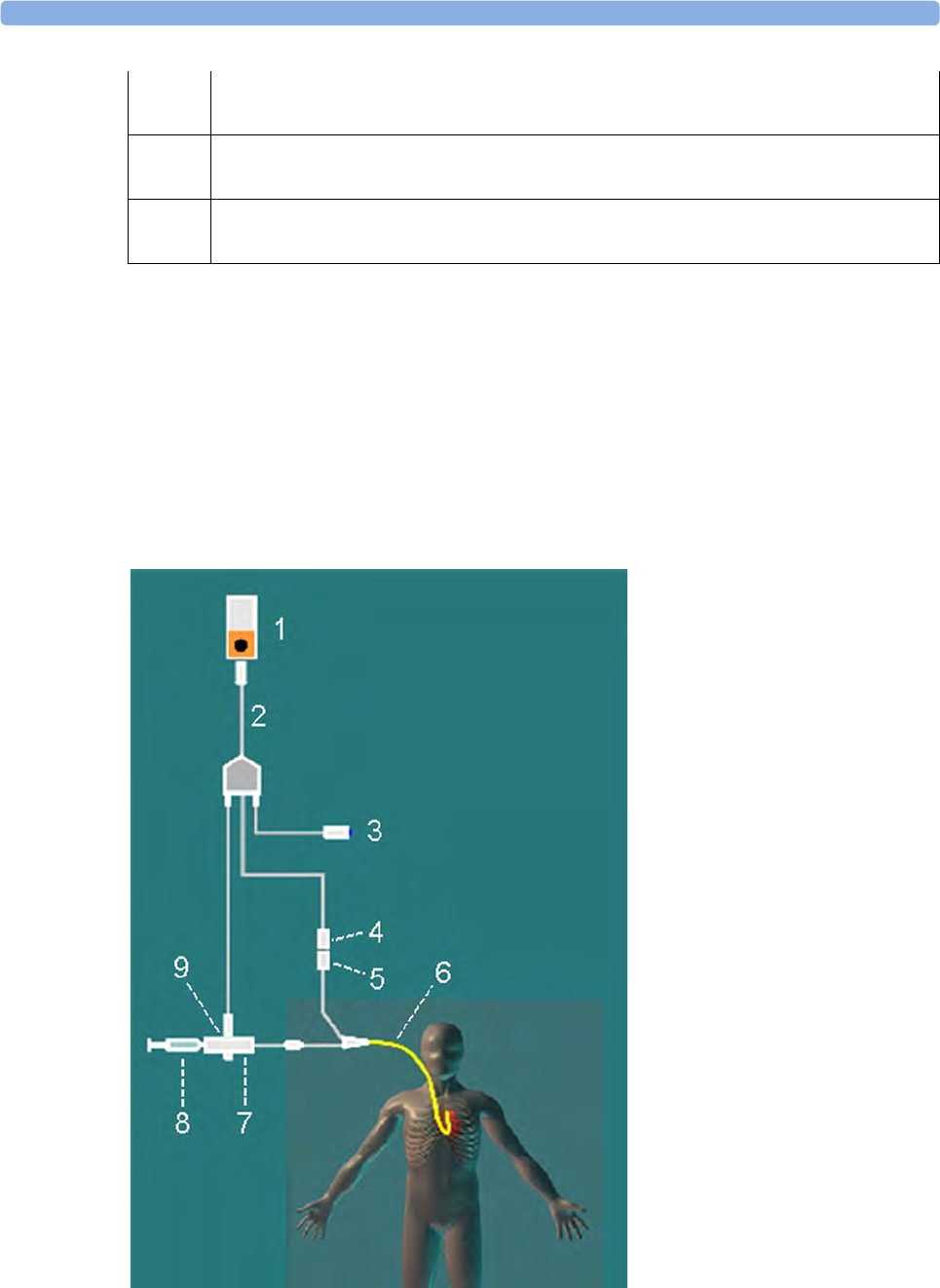
13 Monitoring Cardiac Output
233
Measuring C.O. Using the Right Heart
Thermodilution Method
In the right heart thermodilution method, a fluid of known volume and temperature is injected into the
right atrium through the proximal port of a pulmonary artery (PA) (Swan-Ganz) catheter. The injectate
bolus mixes with the blood in the right ventricle and the change in blood temperature is measured with
a thermistor at the distal end of the catheter in the pulmonary artery.
Setting up RH C.O. Measurements
1Set up the PA line using a PA catheter.
?Cal A disturbed pressure signal for CCO was available during the measurement (valid for
calibration)
N/A No adequate pressure signal for CCO was available during the measurement (no valid
calibration data)
Exp This trial is more than 15 minutes older than the most recent trial and has expired for
CCO calibration (no valid calibration data)
1C.O.Module
2 C.O. Interface Cable
3 Remote Start Switch
4 Thermistor Connector
5 Thermistor Connection Cable
6 PA Catheter
7 Injectate Temperature Probe
Housing
8 Injectate Syringe
9 Injectate Temperature Probe

13 Monitoring Cardiac Output
234
2Attach the injectate temperature probe housing to the PA line.
3Plug the C.O. interface cable into the C.O. module or measurement extension module and connect
the following devices into the C.O. interface cable:
– injectate temperature probe
– remote start switch (if used).
Follow your hospital standards to avoid unintentional extraction of the C.O. catheter. Secure the
cable using the mounting clip shipped with each C.O. interface cable. You may also find it helpful
to loop the C.O. interface cable, tape the loop, and attach it to the undersheet of the patient's bed
using a safety pin.
4Plug the thermistor connection cable of the PA catheter into the thermistor connector.
5Connect the injectate temperature probe to the injectate temperature probe housing.
6Check that the correct measurement method is selected.
If a catheter is already connected to the Cardiac Output Interface Cable, the monitor automatically
recognizes the method used. If not, in the Setup C.O. menu, select Method and then select Right
Heart.
Ice-Bath Setup for RH Thermodilution C.O. Measurements
If you are using the flow-through method illustrated above, the injectate temperature is measured at
the time of injection by the temperature probe in the injectate temperature probe housing.
If you are using the ice-bath setup, the injectate temperature probe and the injectate are both placed in
an ice-bath and the probe measures the temperature of the contents of the ice bucket.
Setting the Computation Constant
Check that the correct Computation Constant is entered in the procedure window. This can be found
in the documentation supplied with the catheter and is based on the injectate volume, injectate
temperature and catheter type. To change the value, in the procedure window, select Computation
Constant and use the pop-up keypad to enter the correct value.
Performing RH C.O. Measurements
1Enter the procedure window.
2When you see the message Ready for new measurement, select the pop-up key Start C.O.. If the
measuring mode is set to Auto the Start C.O. key will also enable the automatic start of
consecutive measurements.
3When you hear a ready tone and see the message Inject now!, inject the solution into the right
atrial port of the Swan-Ganz catheter. The optimal injection rate is 2.5 ml/second.
At the end of the measurement the thermodilution curve, cardiac output, index values and curve
alerts (if necessary) are displayed and a message will appear Wait before starting new
measurement or in Auto mode Prepare for next injection or press Stop.
4When you see the Inject now! message, repeat the procedure until you have completed the
measurements you want to perform. You can perform a maximum of six measurements before
editing. If you perform more than six measurements without rejecting any, the oldest will
automatically be deleted when a seventh curve is stored.

13 Monitoring Cardiac Output
235
Editing and Saving RH C.O. Measurements
It is important to identify and reject erroneous measurements (called "trials"), as the monitor uses all
the measurement trial values you do not reject to calculate the averaged cardiac output.
1Review the trials. Irregular trials or trials marked with a "?" should be reviewed carefully. Consider
the similarity of the values and the shape of the C.O. curve. A normal C.O. curve has one smooth
peak and returns to the temperature baseline level after the peak.
2Reject unsatisfactory trials: use the Select Trial pop-up key to move between trials, then select the
Accept Reject pop-up key to accept or reject trials. If you are using a touch screen you can accept
or reject trials directly by tipping on the trial curve. Discard conspicuously different values. The
background of rejected trials is red and the background of accepted trials is green. The monitor
recalculates the average values after you reject or accept trials.
If all values are different from each other, there may be true hemodynamic instability caused, for
example, by severe cardiac arrhythmia.
3Save average C.O. values. To close a measurement series, you must save the average values by
selecting the pop-up key Save C.O.. This sends the average C.O. numeric to be displayed on the
main screen, and stores the averaged values in the trends and calculations databases.
Documenting C.O. Measurements
You can document C.O. measurements on the default printer or recorder.
1In the procedure window, select the pop-up key Print/ Record.
2From the pop-up list, choose:
–Print Results to print the contents of the procedure window
–Record Results to record the contents of the procedure window
–Record Trial to send an individual trial curve to the recorder.
C.O. Injectate Guidelines
The greater the injectate volume and the colder the temperature, the more accurate the measurement.
Reduced injectate volume or higher injectate temperature may reduce the specified accuracy.
For adult patients, to ensure the greatest measurement accuracy, use a cold injectate (< 8°C) of 10 ml
volume, if not contra-indicated by the patient's condition. Your choice of injectate volume should be
based on the injectate temperature and the patient's cardiac output.
Guidelines for Right Heart Thermodilution C.O. Injectate
If you are using the right heart thermodilution method, the use of injectate with a temperature less than
8°C lower than the blood temperature may cause incorrect values for the thermodilution.
Guidelines for PiCCO C.O Injectate
If you are using the PiCCO method, the use of injectate with a temperature that is not at least 12°C
lower than the blood temperature may cause incorrect values for the thermodilution and CCO
calibration.
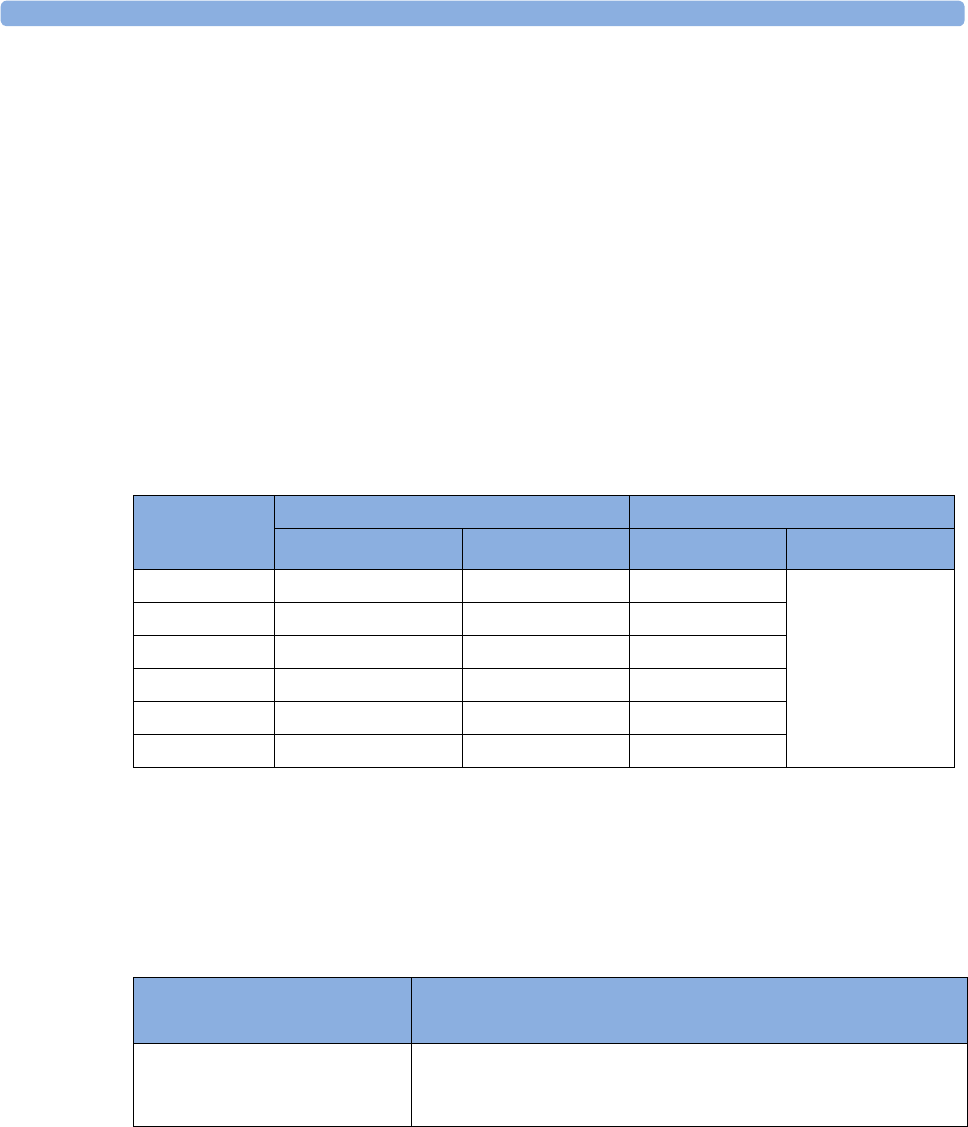
13 Monitoring Cardiac Output
236
Injectate Volume, Patient Weight and ETVI Values (PiCCO Only)
When deciding on an injectate volume and temperature, you must consider your patient's Ideal Body
Weight (IBW) and extra-vascular thermal volume index (ETVI). IBW is based on the patient category,
gender and height that you have entered for the patient. The calculated IBW is displayed in the window
that opens when you select the InjVol field.
High ETVI
The dilution of injectate is influenced by extravascular tissue and fluid. The accuracy of the PiCCO
method may be reduced in patients with high extra-vascular thermal volume index (ETVI) values. Use
the table below as a guide in selecting the correct injectate temperature. As shown in the table, if your
patient has an ETVI > 10, you must use cold injectate.
Weight
Use the table below as a guide in choosing an injectate volume appropriate for the patient weight.
C.O./CCO Curve Alert Messages
After each measurement trial, the monitor analyzes the thermodilution curve. If the curve appears
abnormal, a curve alert message appears in the procedure window. A question mark symbol ("?") may
appear next to the cardiac output numeric if any of these messages appear. The curve alert messages
are not error messages and do not necessarily mean that the measured values are invalid.
IBW Cold Injectate Room Temperature Injectate
ETVI < 10 ETVI ≥ 10 ETVI < 10 ETVI ≥ 10
< 3 kg 2 ml 2 ml 3 ml Use cold injectate
< 10 kg 2 ml 3 ml 3 ml
< 25 kg 3 ml 5 ml 5 ml
< 50 kg 5 ml 10 ml 10 ml
< 100 kg 10 ml 15 ml 15 ml
≥ 100 kg 15 ml 20 ml 20 ml
C.O./CCO Curve Alert
Messages
Possible Causes
Tinj off scale The Tinjectate is out of the range -1°C and 30°C. Cool down or
heat up the injectate or change the injectate solution and repeat the
measurement.
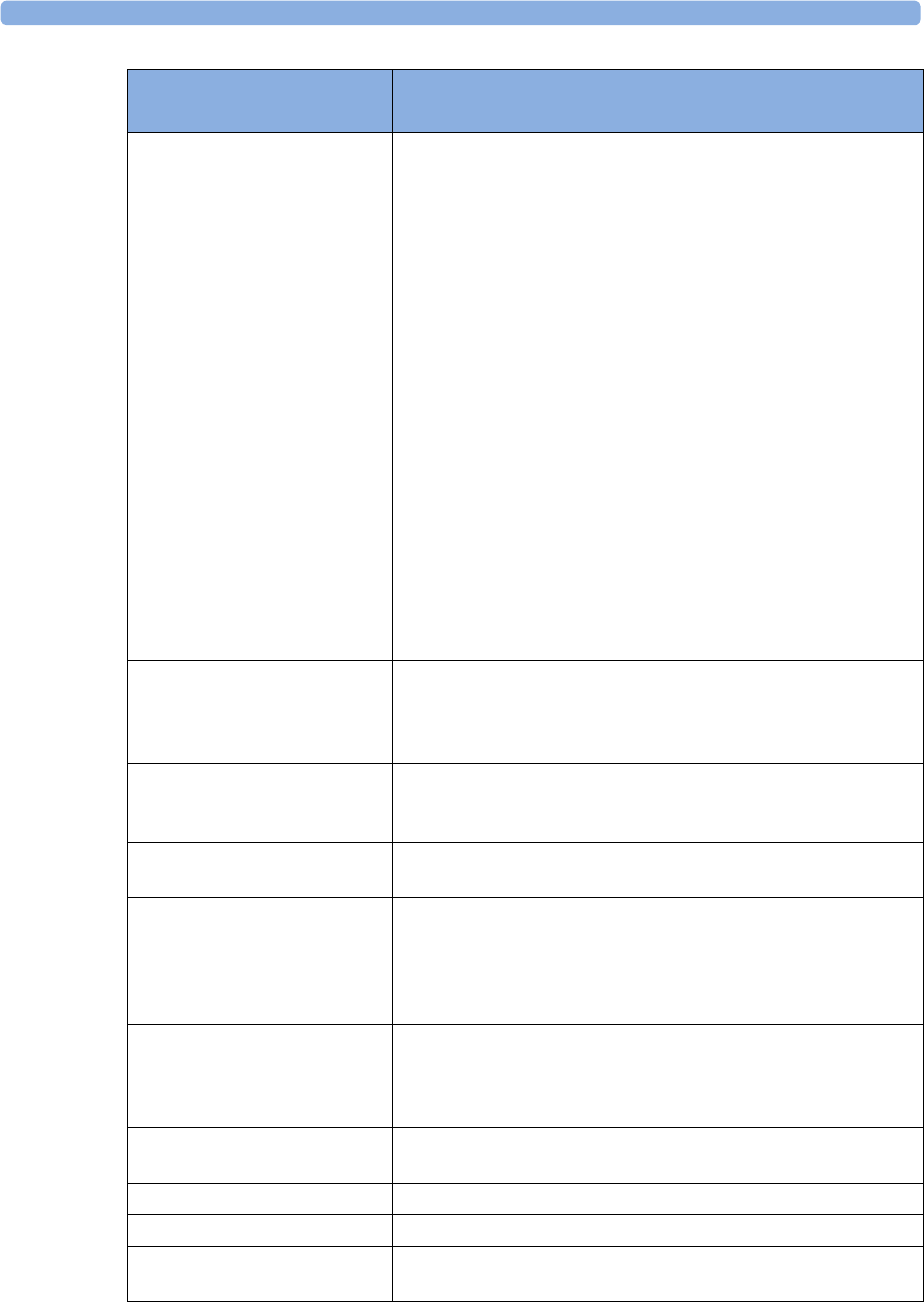
13 Monitoring Cardiac Output
237
Noisy baseline A blood temperature baseline drift that could not be compensated
was detected during the C.O. measurement. Possible causes are:
- Interference may be caused by a ventilator.
- Interference may be caused by an infusion pump: infusions of
significant volume through the central line should be paused at
least 30 seconds before the first thermodilution measurement in a
series and should not recommence until the measurement series is
completed.
- Do not administer injections through the central line during a
measurement series.
- Electrical devices in the vicinity can cause interference: check for
infusion pumps connected to the central catheter, cables parallel to
the thermodilution cable, electrocautery. Make sure all devices are
properly grounded.
- Wait until measurement results are displayed before moving the
patient or catheter.
- Close the stopcock to the injectate syringe after the injection.
- Do not rinse the catheter during measurement, to avoid
temperature fluctuations.
Temperature baseline drift May occur if patient is recovering from open heart surgery, or if
patient was cooled down for surgery and is in the process of
regaining normal body temperature when the measurement is
made.
Small signal, more indicator
required
The peak of the transpulmonary thermodilution curve was below
0.1ºC. Increase injectate volume and/or lower injectate
temperature.
Injectate temperature too high The difference between the blood and injectate temperatures is too
small. The calculated value for C.O. may not be accurate.
High ETVI, use cold injectate
or greater inj. volume
The ETVI value is too high. The accuracy of the transpulmonary
thermodilution measurement may be reduced. Increase injectate
volume and/or lower injectate temperature following the guidelines
given in the section “Guidelines for PiCCO C.O Injectate” on
page 235.
Disturbed injection The injection should be performed quickly and with a steady
pressure. Shaking, unsteady pressure, or injections that take longer
than six seconds may cause this message to appear; you should bear
this in mind if you are using a large injectate volume (> 10 ml).
Check Injectate Temperature
Probe Type
The recorded Tinj signal is uncharacteristic for the M1646 injectate
temperature probe. An incorrect probe type may have been used.
Unsteady baseline There is a noisy baseline, and thermal baseline drift.
Multiple peaks Caused by faulty injection technique.
Abnormal decay time May be caused by low cardiac output. Calculated value for
C.O. may not be accurate.
C.O./CCO Curve Alert
Messages
Possible Causes
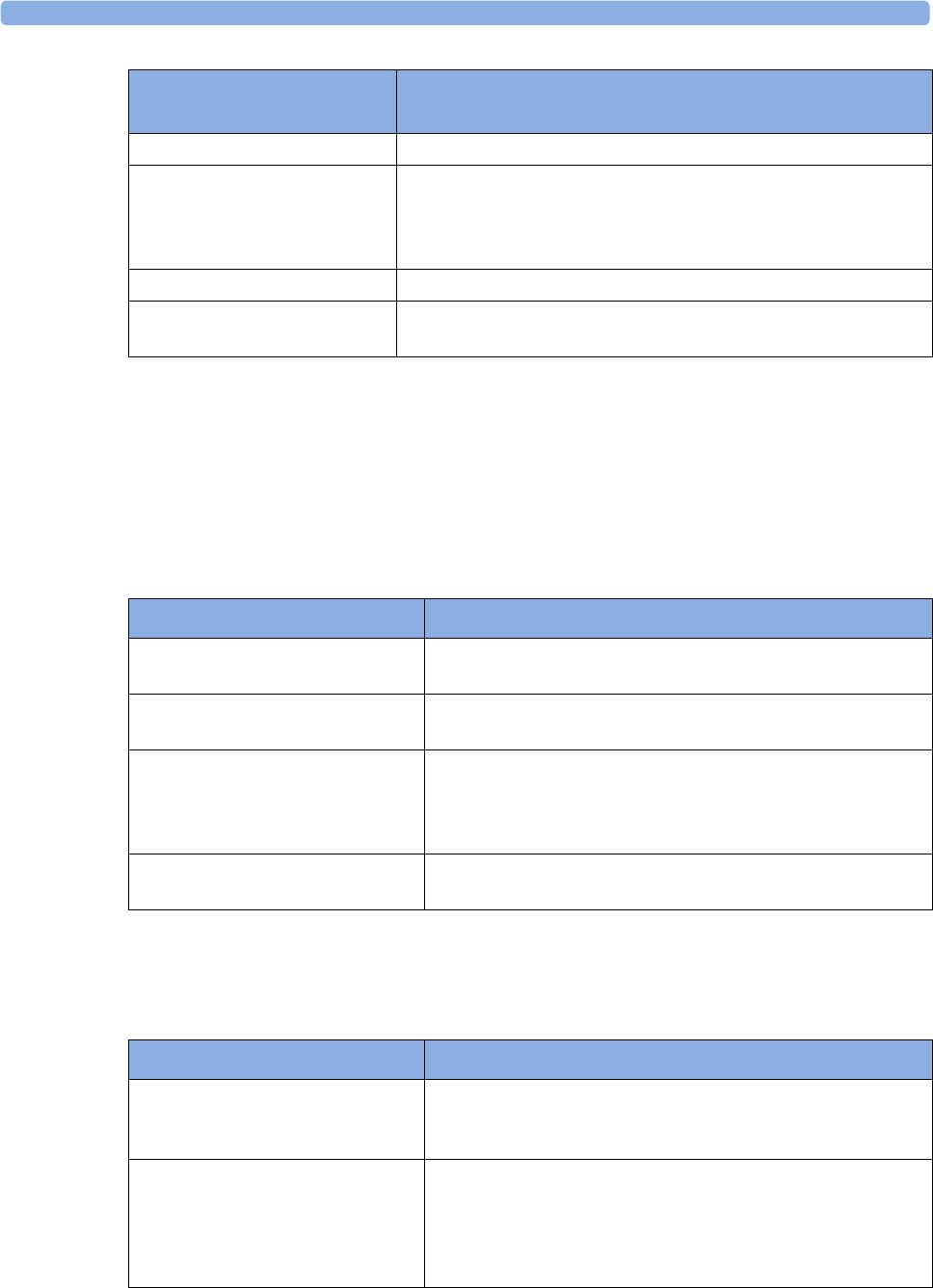
13 Monitoring Cardiac Output
238
If you have followed all of these guidelines, your measurement values should be valid, even if you still
see a curve alert message. Ensure that at least three subsequent measurements within the current series
do not differ by more than 15%. If the difference exceeds 15%, use your clinical judgment to
determine the appropriate intervention.
C.O./CCO Prompt Messages
Prompt messages appear in the procedure window if a C.O. measurement trial must be terminated.
C.O./CCO Warning Messages
Warning messages contain important information about the C.O. measurement.
Very long curve The decay time of the curve is longer than 15 seconds.
Very short curve Decay time of the curve is less than 0.5 seconds. If there is a noisy
baseline, part of the baseline may have been mistaken for a
thermodilution curve. Calculated value for C.O. may not be
accurate.
Irregular curve Any combination of curve alert messages.
Delayed injection Injection is given more than 15 seconds after Start C.O. is selected.
Calculated value for C.O. may not be accurate.
C.O./CCO Curve Alert
Messages
Possible Causes
C.O./CCO Prompt Messages Possible Causes
Curve below baseline,
measurement terminated
May be caused by thermal baseline drift. No C.O. value
calculated.
Excessive curve height,
measurement terminated
The curve exceeds the upper limit. This may be caused by an
injectate that was too cold. No C.O. value calculated.
Unstable baseline, injection not
recommended!
The baseline is unstable. Wait until the baseline is stable before
injecting. If this does not occur within a reasonable time,
injection is possible but the accuracy of the measured values
may be reduced.
Excessive baseline drift, don't
inject now!
No measurement is possible. Measured values are incorrect.
C.O./CCO Warning Messages Possible Causes
Next measurement erases older
curve
Six curves are stored, this is the maximum possible. If another
measurement is stored, the oldest thermodilution curve will be
erased.
Previous C.O. setup data replaced A C.O. module or measurement extension module has been
plugged in with different C.O. setup data from the previous
data. The new C.O. setup data is read from the new C.O. device,
and replaces the current data. The message disappears when the
Start C.O. pop-up key is pressed.
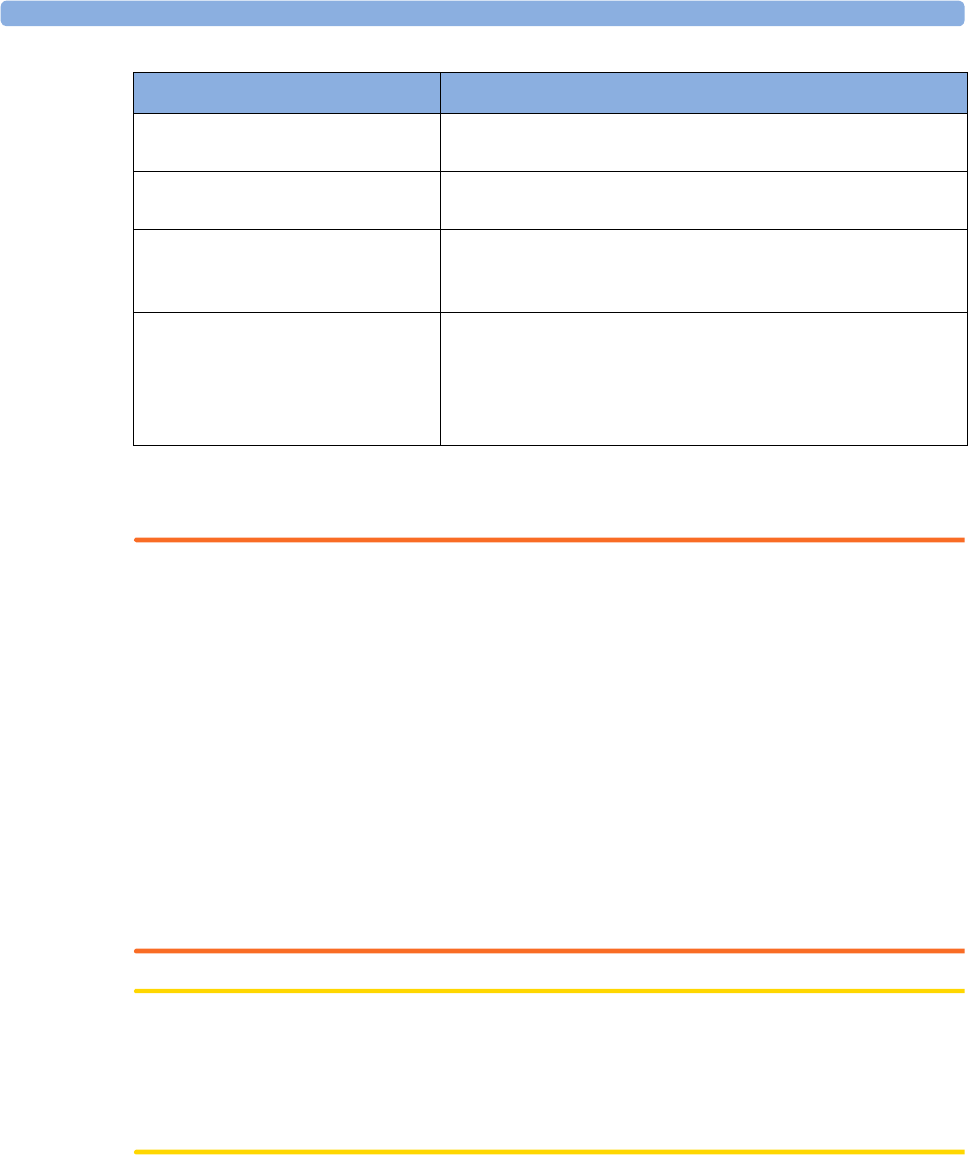
13 Monitoring Cardiac Output
239
C.O./CCO Safety Information
WARNING
Catheter constant - Make sure that the arterial catheter constant for the measurement is appropriate
to the catheter used.
Computation Constant - Make sure that the computation constant for the measurement is
appropriate to the injectate volume, injectate temperature and catheter type used.
IABP - Do not perform transpulmonary thermodilution measurements on patients undergoing IABP
treatment.
CCO accuracy - Accuracy of the CCO measurement and all the derived values may be influenced by
patients with valve diseases or artificial valves.
C.O. and MRI - Do not use the Cardiac Output Interface Cable in Magnetic Resonance Imaging
(MRI) Applications.
Aortic graft patients - Do not use an arterial catheter in the arteria femoralis when it is contra
indicated, for example, with patients who have an aortic graft.
CAUTION
During the cardiac output measurement procedure the blood temperature alarms are inactive. This is
indicated by a crossed-out alarm symbol next to the temperature numeric. Making alarms inactive
during this procedure prevents false alarms. The alarms are automatically reactivated when you have
completed the measurement procedure.
Verify C.O. setup data A new transpulmonary thermodilution catheter has been
connected to the C.O. Interface Cable.
Check arterial pressure, CCO cal
currently not possible
Poor or invalid pressure signal, for example if pressure was not
zeroed.
Verify the Computation Constant A new catheter has been plugged in, or the computation
constant has been changed and Start C.O. has not been
selected.
Previous Comp. Constant
replaced
A new C.O. module or measurement extension module with a
different computation constant from the current one has been
connected. The new computation constant is read from the new
C.O. device, and replaces the current one. The message
disappears when Start C.O. is selected.
C.O./CCO Warning Messages Possible Causes

13 Monitoring Cardiac Output
240

14
241
14Monitoring Carbon Dioxide
WARNING
Measurements from an MMS extension connected to an X2 are not available when the X2 is running
on its own battery power. They are only available when the X2 is powered by external power: when
connected to a host monitor, to the external power supply (M8023A) or to the Battery Extension
(865297).
Only one CO2 measurement at a time is supported.
Use the CO2 measurement to monitor the patient's respiratory status and to control patient ventilation.
There are two methods for measuring carbon dioxide in the patient's airway:
• Mainstream measurement uses a CO2 sensor attached to an airway adapter directly inserted into
the patient's breathing system. This method is available using the M3014A Capnography
Extension and the M3016A Mainstream CO2 Extension, or the X2 with the optional CO2
measurement.
• Sidestream measurement takes a sample of the respiratory gas with a constant sample flow from
the patient's airway and analyzes it with a remote CO2 sensor built into the measurement system.
Philips offers the sidestream CO2 measurement in the M3014A Capnography Extension or the X2
with the optional CO2 measurement, and the Microstream method of sidestream CO2
measurement in the M3015A/B Microstream CO2 Extension.
Refer to your Gas Module Instructions for Use, if you are using a Gas Module to monitor CO2.
WARNING
Correlation: The etCO2 readings do not always correlate closely with paCO2, especially in neonatal
patients and patients with pulmonary disease, pulmonary embolism or inappropriate ventilation.
Pharmaceuticals in aerosols: Do not measure CO2 in the presence of pharmaceuticals in aerosols.
Explosion Hazard: Do not use in the presence of flammable anesthetics or gases, such as a
flammable anesthetic mixture with air, oxygen or nitrous oxide. Use of the devices in such an
environment may present an explosion hazard.
Failure of operation: if the measurement or a sensor fails to respond as described, do not use it until
the situation has been corrected by qualified personnel.

14 Monitoring Carbon Dioxide
242
Low etCO2 values: Leakages in the breathing system or sampling system may cause the displayed
etCO2 values to be significantly too low. Always connect all components securely and check for leaks
according to standard clinical procedures. Displacement of the nasal or combined nasal oral cannulas
can cause lower than actual etCO2 readings. Even with combined nasal oral cannulas, the etCO2
readings may be slightly lower than actual in patients breathing through the mouth only.
Measurement Principles
For both mainstream and sidestream measurements, the measurement principle is infrared
transmission, where the intensity of infrared light passing the respiratory gas is measured with a photo
detector. As some of the infrared light is absorbed by the CO2 molecules, the amount of light passing
the gas probe depends on the concentration of the measured CO2.
When using a wet ventilator circuit, monitor mainstream CO2 if available, in preference to sidestream
CO2.
The partial pressure is calculated from the gas concentration by multiplying the concentration value
with the ambient pressure.
The measurement provides:
•a CO
2 waveform.
•an end tidal CO
2 (etCO2) value: the CO2 value measured at the end of the expiration phase.
• an inspired minimum CO2 (imCO2): the smallest value measured during inspiration.
• an airway respiration rate (awRR): the number of breaths per minute, calculated from the CO2
waveform.
Depending on the Max Hold setting configured for your monitor, the etCO2 numeric shows either the
highest CO2 value measured within the configured time period (Max Hold set to 10 sec or 20 sec) or
the etCO2 numeric shows breath-to-breath value (Max Hold set to Off).
The Microstream method also provides an Integrated Pulmonary Index (IPI) numeric, which is an
indication of the patient's overall ventilatory status based on four measurement parameters: etCO2,
awRR, pulse rate and SpO2. IPI can thus provide an early indication of a change in ventilatory status
which may not be shown by the current value of any of these four parameters individually. The IPI is
designed to provide additional information regarding patient status, possibly before etCO2, awRR,
SpO2, or pulse rate values reach levels of clinical concern.
The IPI is available for all three groups of pediatric patients (1-3 years, 3-6 years, and 6-12 years), and
for adult patients. It is displayed as a single value between 1 and 10.
Measuring CO2 using M3014A or X2
The M3014A Capnography Extension or the X2 with the CO2 option measures partial pressure of
carbon dioxide in a patient's expired gas using the mainstream method or the sidestream method.
The mainstream CO2 measurement can be used, with appropriate accessories, with intubated adult,
pediatric and neonatal patients. The sidestream CO2 measurement can be used, with appropriate
accessories, with intubated and non-intubated adult, pediatric, infant and neonatal patients.
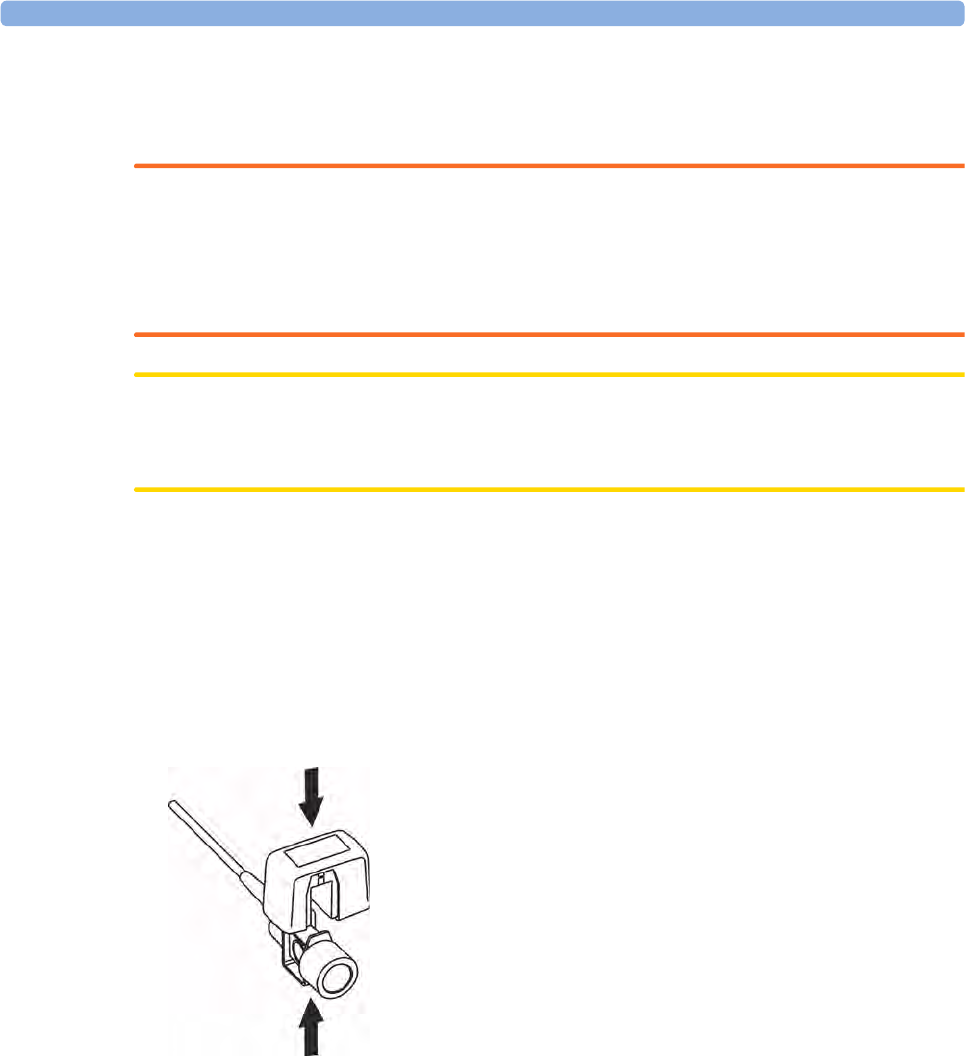
14 Monitoring Carbon Dioxide
243
With intubated patients, a sample of the respiratory gas is drawn from the patient's breathing circuit
through an airway adapter and a gas sampling tube. With non-intubated patients, the gas sample is
drawn through a nasal or oral-nasal cannula.
WARNING
Altitude Setting: The monitor is not equipped with automatic barometric pressure compensation.
Before the CO2 measurement is used for the first time, the altitude must be set to the correct value. An
incorrect altitude setting will result in incorrect CO2 readings. The CO2 readings will typically deviate
5% for every 1000 m difference.
CAUTION
Use the CO2 measurement with Philips approved accessories only. Refer to the instructions for use
provided with the accessory.
Preparing to Measure Mainstream CO2
You must perform a zero as described in this procedure each time you use a new airway
adapter.
1Attach the sensor connector to the CO2 connector on the MMS extension, or on the X2 (when
the optional CO2 measurement is integrated).
2Wait 2 minutes, allowing the sensor to reach its operating temperature and a stable thermal
condition.
3Choose the appropriate airway adapter and connect it to the sensor head. The airway adapter clicks
into place when seated correctly. To zero the sensor:
– expose the sensor to room air and keep it away from all sources of CO2 including the
ventilator, the patient's breath and your own.
– in the setup menu for the CO2, select Start Zero Cal.
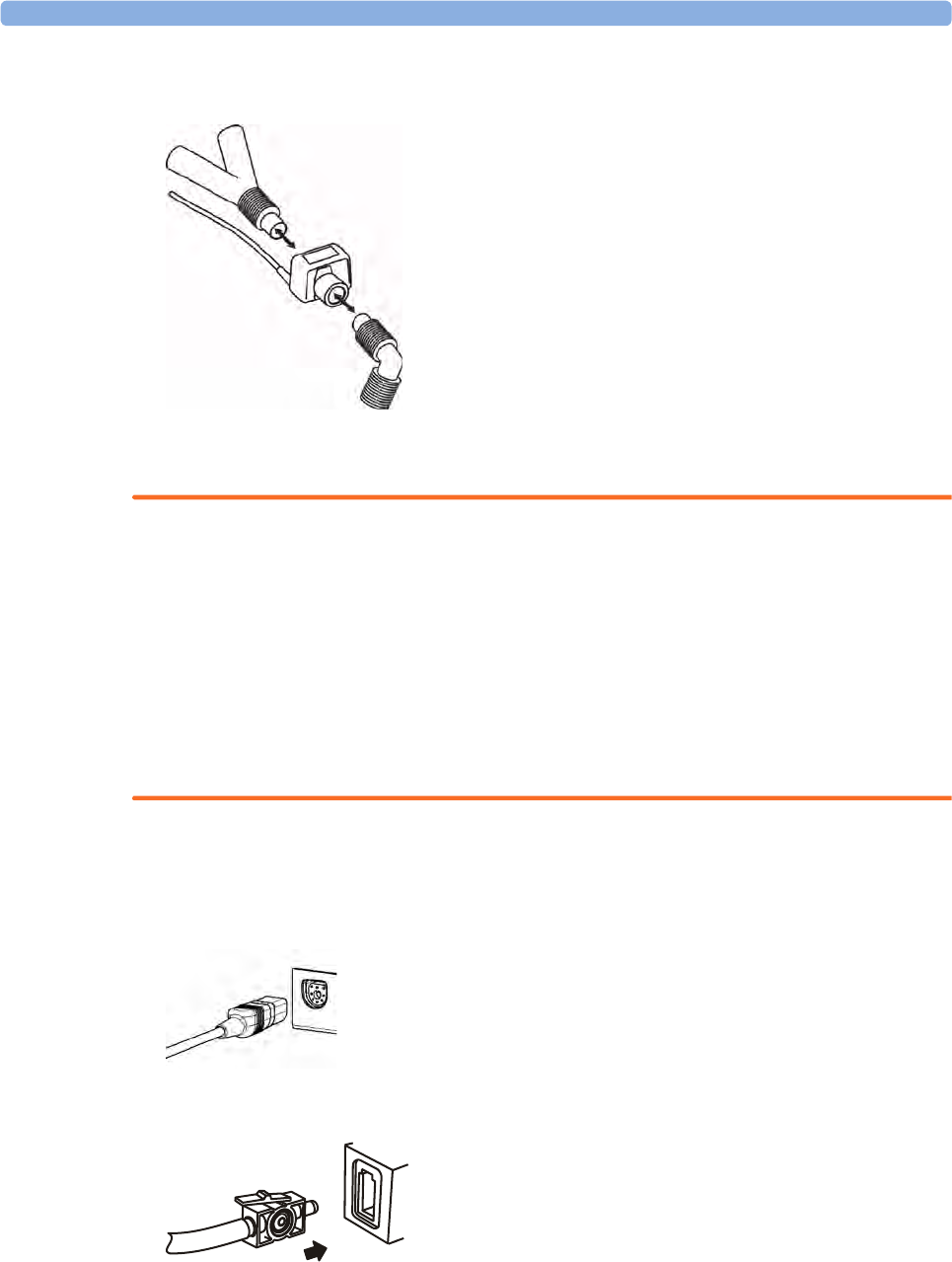
14 Monitoring Carbon Dioxide
244
– When you see the message CO₂ calibration done at <Date and Time> on the status line, the
zero calibration is finished and you can begin monitoring.
4Install the airway adapter at the proximal end of the circuit between the elbow and the ventilator Y-
section.
WARNING
To prevent stress on the endotracheal tube, support the sensor and airway adapter.
Position sensor cables and tubing carefully to avoid entanglement or potential strangulation. Do not
apply excessive tension to any cable.
Replace the airway adapter, if excessive moisture or secretions are observed in the tubing or if the
CO2 waveform changes unexpectedly without a change in patient status.
To avoid infection, use only sterilized, disinfected or disposable airway adapters.
Inspect the airway adapters prior to use. Do not use if airway adapter appears to have been damaged
or broken. Observe airway adapter color coding for patient population.
Preparing to Measure Sidestream CO2
1Plug the sensor cable into the monitor's CO2 input connector. Allow the sensor two minutes warm
up time
2Connect the cannula, airway adapter, or sample line as appropriate, to the sensor. It will click into
place when seated correctly.
3To zero the sensor:
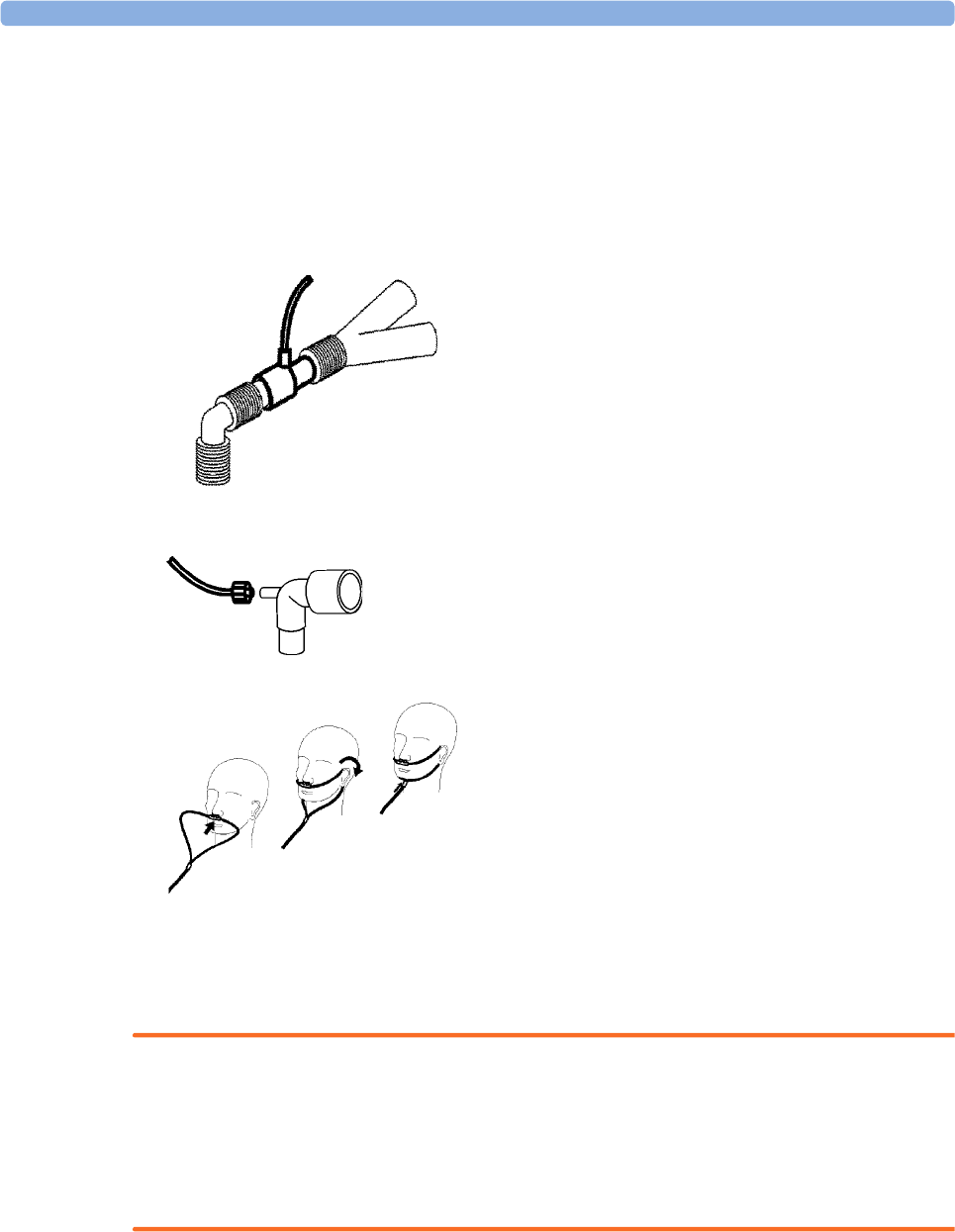
14 Monitoring Carbon Dioxide
245
– expose the sensor to room air and keep it away from all sources of CO2 including the
ventilator, the patient's breath and your own.
– in the setup menu for the CO2, select Start Zero Cal.
– when you see the message CO₂ calibration done at <Date and Time> on the status line, the
zero calibration is finished and you can begin monitoring.
4For intubated patients requiring an airway adapter: Install the airway adapter at the proximal end of the
circuit between the elbow and the ventilator Y-section.
For intubated patients with an integrated airway adapter in the breathing circuit.: Connect the male luer
connector on the straight sample line to the female port on the airway adapter.
For non-intubated patients: Place the nasal cannula onto the patient.
For patients prone to mouth breathing use an oral-nasal cannula.
For nasal or oral-nasal cannulas with oxygen delivery, place the cannula on the patient as shown then
attach the oxygen supply tubing to the oxygen delivery system and set the prescribed oxygen flow.
WARNING
Always connect the airway adapter to the sensor before inserting the airway adapter into the breathing
circuit. In reverse, always remove the airway adapter from the breathing circuit before removing the
sensor.
Make sure that you do not accidentally connect the luer connector of the gas sample line to an infusion
link or any other links in the patient vicinity.
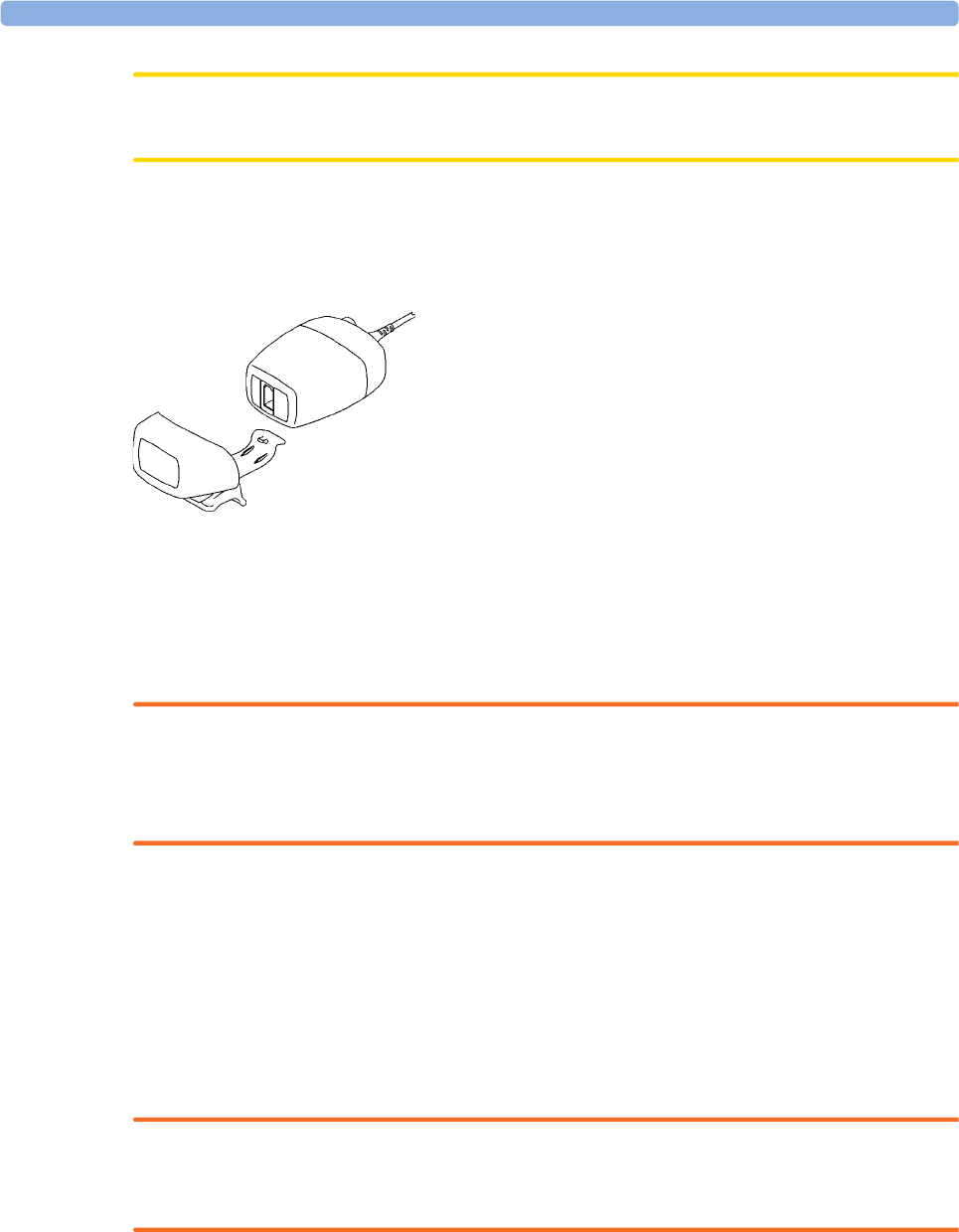
14 Monitoring Carbon Dioxide
246
CAUTION
Always disconnect the cannula, airway adapter or sample line from the sensor when not in use.
Using the Sidestream Sensor Holder
The holder delivered with the sensor can be used to clamp the sensor onto an IV pole or a shelf.
1Push the sensor into the holder until it clicks into position.
2Clamp the holder onto an IV pole, a shelf or another appropriate location.
To remove the sensor from the holder, release the clip and pull the sensor out of the holder.
Removing Exhaust Gases from the System
WARNING
Anesthetics: When using the sidestream CO2 measurement on patients who are receiving or have
recently received anesthetics, connect the outlet to a scavenging system, to avoid exposing medical
staff to anesthetics.
Use an exhaust tube to remove the sample gas to a scavenging system. Attach it to the sidestream
sensor at the outlet connector.
Measuring Mainstream CO2 using M3016A
MX600/700/
800 The M3016A Mainstream CO2 Extension measures partial pressure of carbon dioxide in a patient's
expired gas using the mainstream method. When using the appropriate accessories you can use the
mainstream CO2 measurement with ventilated adults, pediatric and neonatal patients.
WARNING
Infra-red radiation: Do not expose the airway adapter or M1460A transducer to infra-red radiation
during use. This may cause incorrect readings.

14 Monitoring Carbon Dioxide
247
Preparing to Measure Mainstream CO2
1Attach the transducer connector to the CO2 connector on the M3016A extension.
2Wait 20 minutes, allowing the transducer to reach its operating temperature and a stable thermal
condition.
3Perform an accuracy check and then, if necessary, calibrate the transducer.
Checking Transducer Accuracy
WARNING
Check transducer accuracy at least once a week or if you doubt the CO2 readings.
1In Setup CO₂ menu, select Cal. Mode to switch on calibration mode.
2Look at the calibration value displayed in the Setup CO₂ menu next to Start CAL1. Is it the same
as the value on the calstick? If not, calibrate the transducer now.
3Place the transducer on the low cell of the calstick (labeled 0.0 mmHg or "ZERO"). The reading
on the screen should be zero within ±1 mmHg within one minute.
4Place the transducer on the high cell of the calstick. The reading on the screen should be within
±1 mmHg of the value on the calstick within one minute.
5If both readings are in range, you can leave calibration mode and begin monitoring. If either of the
readings is out of range, calibrate the transducer.
Calibrating the Transducer
1Check that the windows on the calstick are clean and clear.
2Place the transducer on one of the calstick cells and select Start CAL1.
3Enter the calibration value printed on the calstick then press Confirm to start calibration.
4When the message CO₂ CAL1 calibration done -- Start CAL2 calibration appears, put the
transducer on the other cell and select Start CAL2 then press Confirm.
5When you see the message CO₂ calibration completed - leave Cal. Mode, calibration is
complete.
6Select Cal. Mode to switch calibration mode off. You cannot monitor in calibration mode.
Attaching and Removing the CO2 Transducer
1Open the latch and place the transducer (B) onto the airway adapter (A). Place the airway adapter
in the patient's breathing circuit between the endotracheal tube and the Y-piece. You may see the
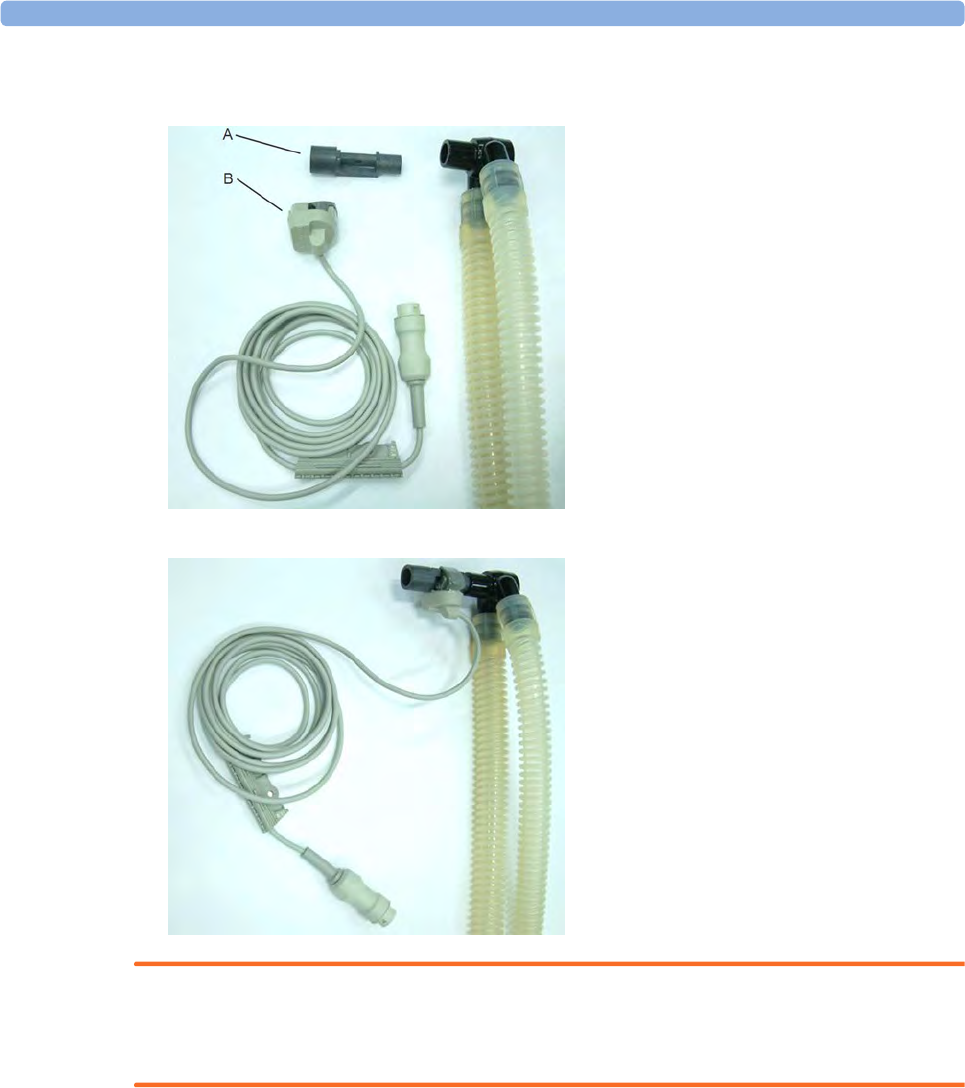
14 Monitoring Carbon Dioxide
248
CO₂ Sens Warmup message until the transducer reaches operating temperature. Wait until this
disappears before starting the measurement.
2To remove the transducer from the airway adapter, open the latch and pull out the airway adapter.
WARNING
To prevent stress on the endotracheal tube, support the transducer and airway adapter.
To avoid infection, use only sterilized airway adapters.
Measuring Microstream CO2 using M3015A/B
The M3015A/B Microstream CO2 Extension measures the partial pressure of carbon dioxide in a
patient's expired gas using Microstream technology.
The measurement is equipped with an automatic barometric pressure compensation.

14 Monitoring Carbon Dioxide
249
WARNING
When using the IPI numeric (available for adult and pediatric patients), always ensure that the patient's
date of birth is entered correctly and that the monitor is displaying the current date. These two pieces
of information are used to calculate the age of the patient, which affects the algorithm used to provide
the IPI numeric.
Preparing to Measure Microstream CO2
Use appropriate accessories for:
• the patient type (adult, pediatric or neonatal),
• the ventilation situation (including humidification)
• the duration - short term use, up to 24 hours (typically OR), or long term use (typically ICU).
All accessories are for single patient use only.
Using Microstream Accessories
The Microstream measurement can be operated with the special Microstream accessories only. Refer
to the instructions for use provided with the accessory.
For intubated patient with non-humidified ventilation, you can use a Microstream FilterLine set. For
humidified ventilation, use a FilterLine H Set.
For non-intubated patients, the gas sample is taken through a Nasal FilterLine, or a Smart CapnoLine
(which is a combined oral-nasal FilterLine). In parallel to the measurement of the CO2, oxygen (O2)
may be delivered to the patient to support gas exchange. This is done by using an O2/CO2 FilterLine,
or a Smart CapnoLine O2 (a combined oral-nasal O2/CO2 FilterLine).
Using the FilterLine and Airway Adapter
WARNING
Make sure that you do not accidentally connect the luer connector of the gas sample line to an infusion
link or any other links in the patient vicinity.
1Attach the female Luer connector to the CO2 inlet connector by pushing the socket cover aside
and screwing the connector clockwise into the CO2 inlet until it can no longer be turned.
This will assure that there is no leak of gases at the connection point during measurement and that
measurement accuracy is not compromised. Following connection of the CO2 sampling line, check
that CO2 values appear on the monitor display.
2Check that the FilterLine is not kinked.
3Change the FilterLine if a CO₂ Occlusion INOP appears on the monitor or if the readings become
extremely erratic.
Disconnect the FilterLine during suctioning and nebulizing therapies or suppress sampling by turning
off the pump as described in “Suppressing Sampling (not Mainstream CO2)” on page 251.
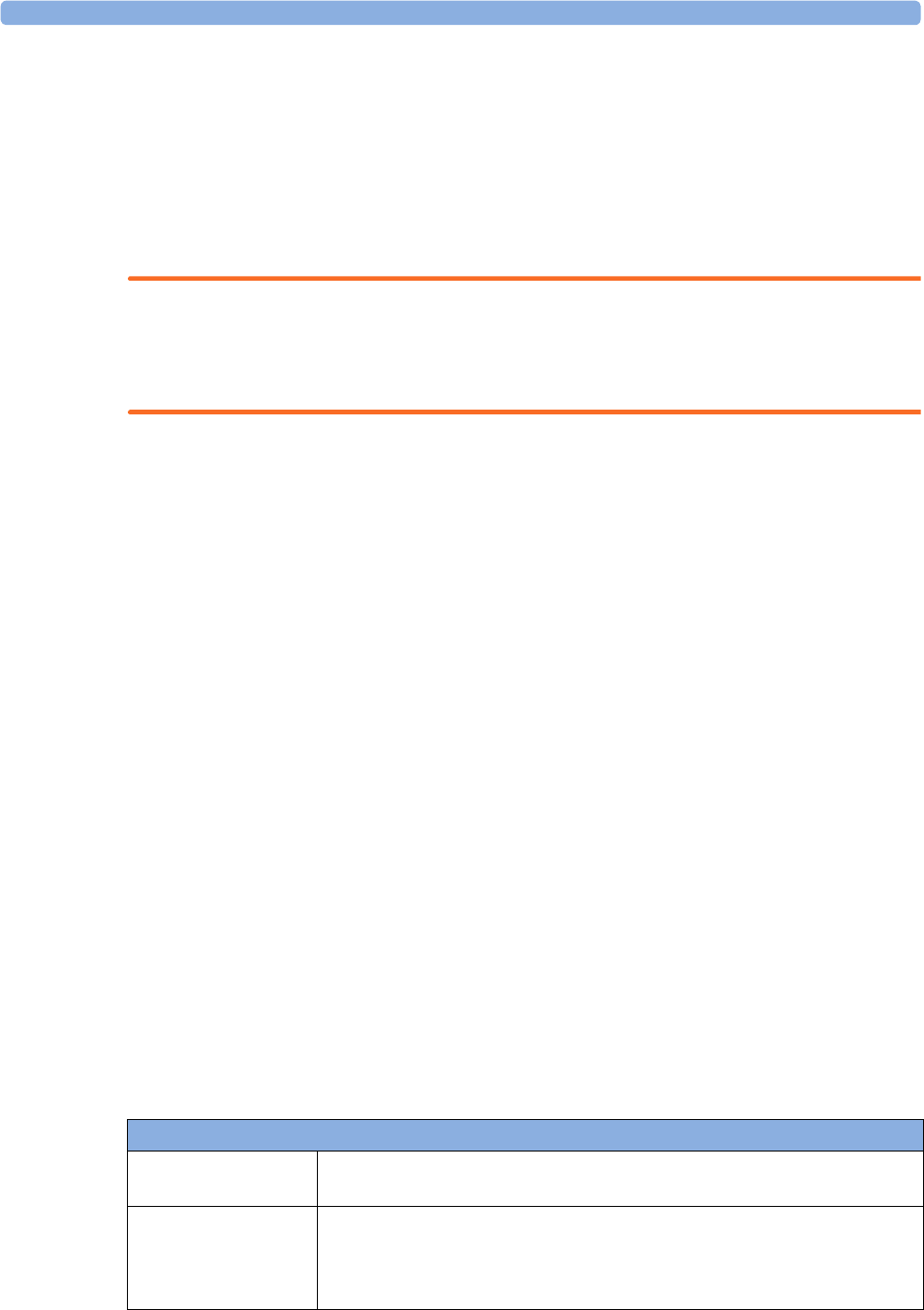
14 Monitoring Carbon Dioxide
250
Check the table in the Microstream CO2 Accessories section of the Accessories chapter for typical
usage times for the different Microstream accessories.
CO2 values for non-intubated patients using Microstream accessories will always tend to be lower than
for intubated patients. If values appear extremely low, check whether the patient is breathing through
the mouth or whether one nostril is blocked.
Removing Exhaust Gases from the System
WARNING
Anesthetics: When using the Microstream CO2 measurement on patients who are receiving or have
recently received anesthetics, connect the outlet to a scavenging system, or to the anesthesia machine/
ventilator, to avoid exposing medical staff to anesthetics.
Use an exhaust tube to remove the sample gas to a scavenging system. Attach it to the MMS Extension
at the outlet connector.
Suppressing Zero Calibration
To prevent an automatic zero calibration from being started in the next five minutes,
•in the Setup CO₂ menu, select No Zero for 5min, or select the Suppress CO₂ Zero SmartKey, if
configured.
Selecting No Zero for 5min or selecting the Suppress CO₂ Zero SmartKey again before the timer has
timed out resets the timer to five minutes, unless an AutoZero became due during the previous
suppression.
Setting up all CO2 Measurements
These tasks are common to all CO2 measurements except where otherwise noted.
Adjusting the CO2 Wave Scale
1In the CO₂ Wave menu or the Setup CO₂ menu, select Scale.
2Choose a suitable scale range from the pop-up list.
Setting up CO2 Corrections
Temperature, water vapor in the patient's breath, barometric pressure, and the proportions of O2, N2O
and Helium in the mixture all influence CO2 absorption. If values seem inaccurately high or low, check
that the monitor is using the appropriate corrections.
Correction
Altitude
(M3014A only)
Altitude is set during installation. The monitor automatically applies an
appropriate correction.
O2
(M3014A only)
In the Setup CO₂ menu, select Oxy. Corr and select a value between 20%
and 100%, the default value is 20%. If you are not measuring the expired O2,
estimate it by subtracting 5% from the inspired O2 then select the nearest
value from the list.
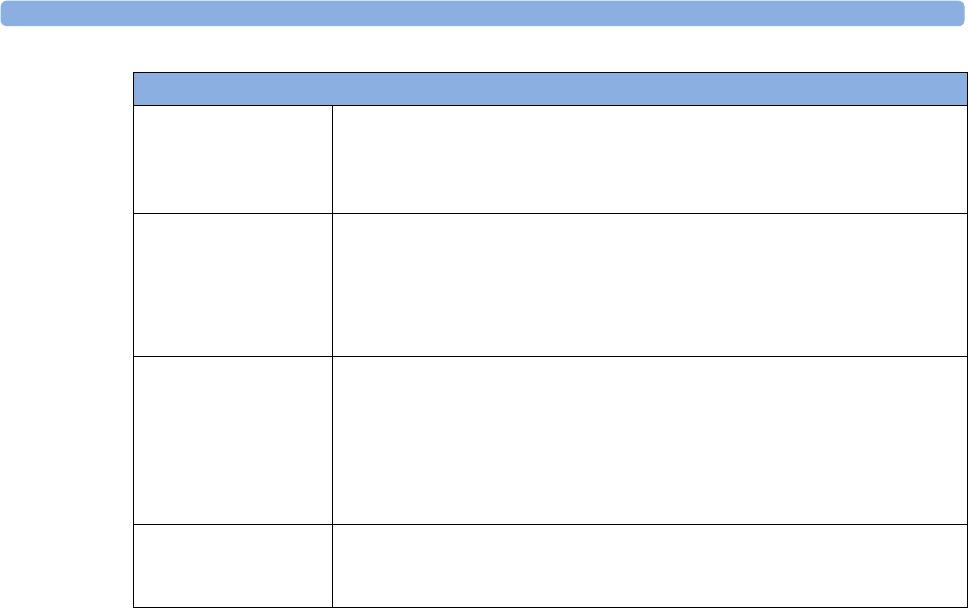
14 Monitoring Carbon Dioxide
251
Suppressing Sampling (not Mainstream CO2)
To temporarily stop sampling, in the Setup CO₂ menu, select Pump 15min Off or use the CO₂ Pump
Off SmartKey if available.
Selecting Pump 15min Off again before fifteen minutes have passed resets the timer to fifteen
minutes.
To re-start the pump, in the Setup CO₂ menu, select Pump On.
Changing CO2 Alarms
This refers to CO2 specific alarms. See the “Alarms” section for general alarm information.
1In the Setup CO₂ menu, select etCO₂ High or imCO₂ High and choose the high alarm limit.
2Select etCO₂ Low and choose the low alarm limit.
Changing the Apnea Alarm Delay
This determines the time limit after which the monitor alarms if the patient stops breathing.
1In the Setup CO₂ menu, select awRR.
2In Setup awRR menu, select Apnea Time.
3Choose the apnea alarm delay time.
Humidity At installation, the monitor is configured to automatically apply either Body
Temperature Pressure Saturated (BTPS) or Ambient Temperature Pressure
Dry (ATPD). To see which, go to the Setup CO₂ menu, and scroll down to
look at Hum. Corr or Humidity Corr..
N2O
(M3016A mainstream
and M3015A/B
microstream only)
In the Setup CO₂ menu, select N₂O Corr. and turn on or off. If N2O is
present in the ventilation gas mixture, you must turn this on.
If the N2O correction is not available in the Setup CO₂ menu, the CO2
measurement in your MMS Extension does not require N2O correction or it
is setup with Gas Corr. (see below).
Gas
(M3014A only)
In the Setup CO₂ menu, select Gas Corr. and select Helium, N₂O or turn off.
If Helium or N2O is present in the ventilation gas mixture, you must make
the appropriate selection.
If the Gas correction is not available in the Setup CO₂ menu, the CO2
measurement in your MMS Extension does not require N2O or Helium
correction or the N2O correction is setup with N₂O Corr. (see above).
Agent
(M3014A only)
In the Setup CO₂ menu, select Agt. Corr and select the concentration of the
anesthetic agent (between 0.0% and 20.0%). If an anesthetic agent is present
in the ventilation gas mixture, you must select the appropriate concentration.
Correction
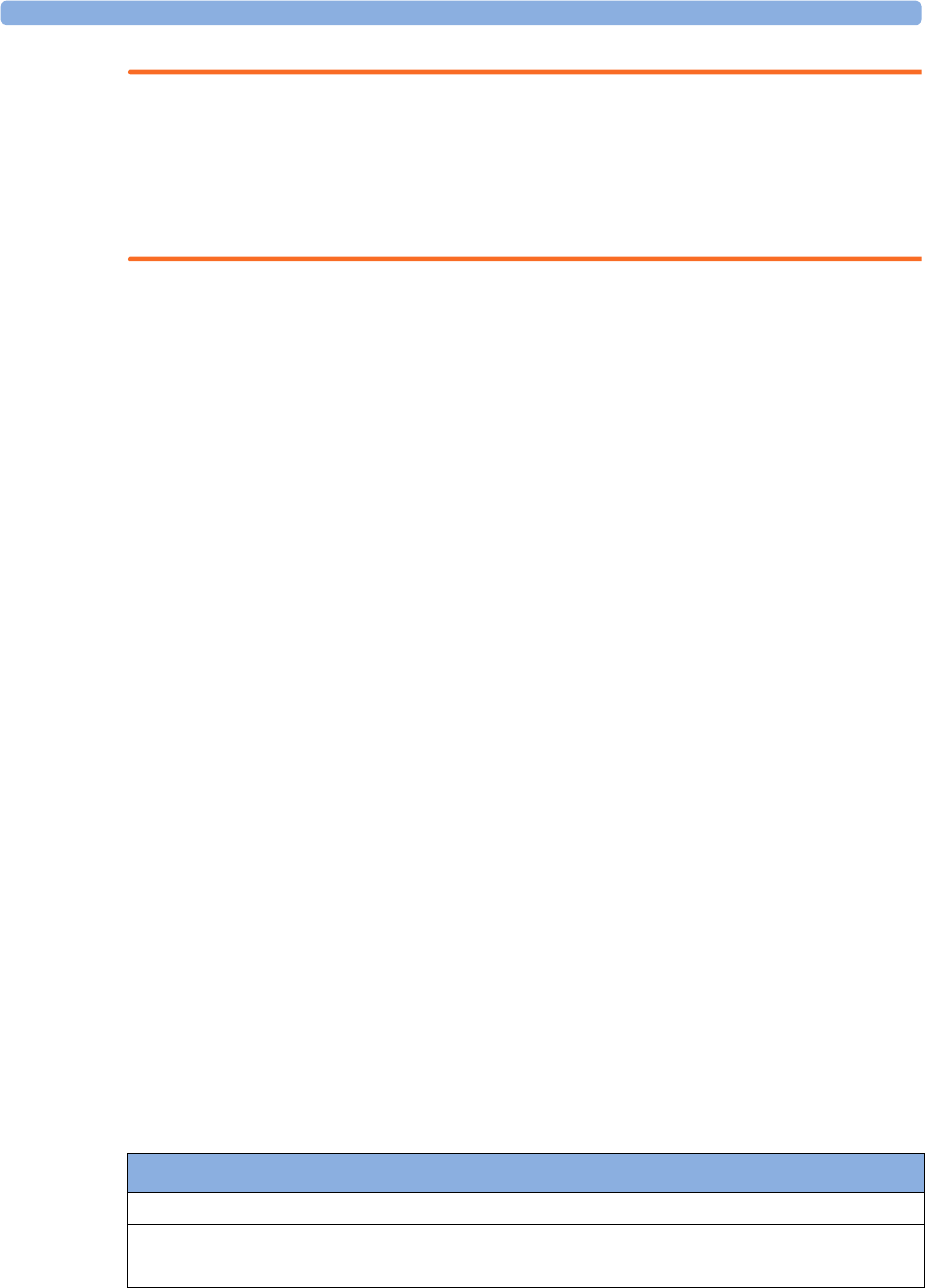
14 Monitoring Carbon Dioxide
252
WARNING
Safety and effectiveness of the respiration measurement method in the detection of apnea,
particularly the apnea of prematurity and apnea of infancy, has not been established.
Prolonged delay: The selected apnea alarm delay may be prolonged by up to 17 seconds, if an apnea
occurs during the automatic zero process. This applies to the Microstream (M3015A/B) measurement
only.
Deriving Alarms From awRR
1In the Setup CO₂ menu, select awRR.
2In the Setup awRR menu, select Alarms.
3Choose On to derive alarms from the airway respiration signal or Off to disable them.
Changing awRR Alarm Limits
1In the Setup CO₂ menu, select awRR.
2Select High Limit to set the upper alarm limit.
Select Low Limit to set the lower alarm limit.
3Select the appropriate setting.
Changing IPI Alarm Limits
1In the Setup CO₂ menu, select IPI.
2Select Low Limit to set the low alarm limit.
3Select a value between 2 and 9.
If you also have monitors with earlier software revisions than J.0, the IPI low alarm will not be
generated after a transfer to one of these monitors, or when a monitor/MMS with the IPI functionality
is connected to one of these monitors in companion mode. In this case, do not rely only on the IPI
low alarm but leave the individual alarms switched on (etCO2, awRR, pulse rate and SpO2) so that
these alarms can be generated in such situations.
Understanding the IPI Numeric
The index is modeled on normal healthy patients (ASA Physical Status value of 1 according to the ASA
Physical Status Classification System). Patients with ASA Physical Status values of 3 or higher are
expected to have low IPI values by definition. Therefore, for patients with an ASA Physical Status
value of 3 or higher, the index may have no added value.
The value of the Integrated Pulmonary Index given in the IPI numeric is associated with the patient
status as follows:
IPI Patient Status
10 Normal
8-9 Within normal range
7 Close to normal range; requires attention
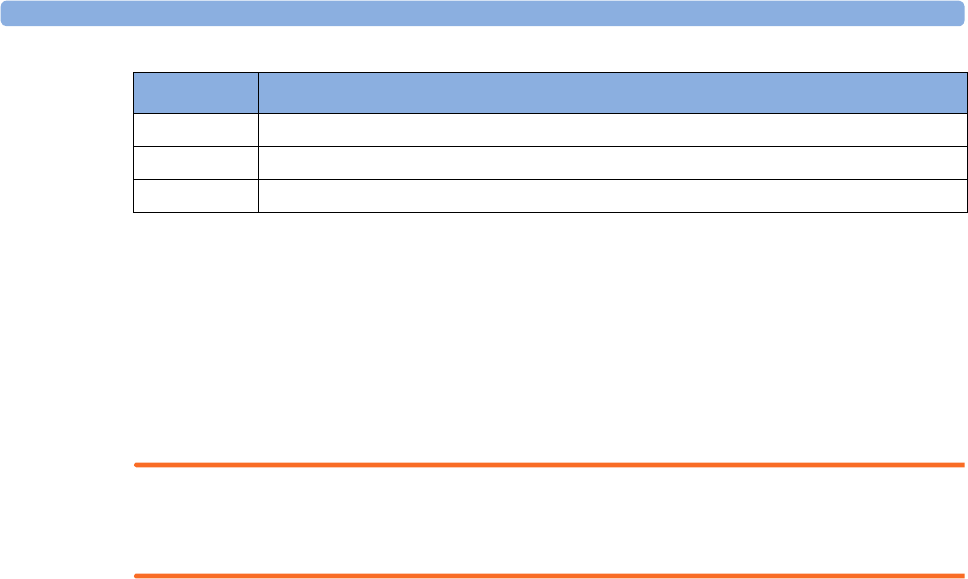
14 Monitoring Carbon Dioxide
253
NOTE
The interpretation of the patient's IPI score may change in different clinical environments. For
example, patients with specific respiratory difficulties (in contrast to normally healthy patients who are
being monitored during sedation or pain management) may require a lower IPI Low Alarm threshold
to reflect their impaired respiratory capacity.
The IPI is available for all three groups of pediatric patients (1-3 years, 3-6 years, and 6-12 years), and
for adult patients.
WARNING
Ensure that the patient category and date of birth are set correctly before monitoring a patient's IPI.
An incorrect patient category or date of birth could produce incorrect IPI data.
5-6 Requires attention and may require intervention
3-4 Requires intervention
1-2 Requires immediate intervention.
IPI Patient Status

14 Monitoring Carbon Dioxide
254

15
255
15Monitoring Airway Flow,
Volume and Pressure
The M1014A Spirometry Module - labeled as SPIRO - is designed to be used in combination with
Philips-branded airway flow sensors and combined CO2/airway flow sensors. It produces a real time
wave for flow, volume and pressure of respiratory gases together with numerics for analysis of
ventilatory mechanics.
The measurement provides:
• Airway flow, airway volume and airway pressure waveform.
•Numerics for:
– respiratory rate
– tidal volume
– minute volume
– PEEP (positive end-expiratory pressure)
– PIP (peak inspiration pressure)
– dynamic compliance
– airway resistance
• Numerics for: (only visible in SpirometryValues Window, no alarming, no trending)
– peak inspiratory flow
– peak expiratory flow
– negative inspiratory pressure
– mean airway pressure
– plateau pressure numeric
–I:E ratio
The measurement also provides pressure-volume loops, flow-volume loops and pressure-flow loops.
See “Respiratory Loops” on page 399 for details on loops.
When using combined CO2/Flow sensors you can also perform mainstream capnography with
intubated adult, pediatric and neonatal patients. See the “Monitoring Carbon Dioxide” chapter for
details on the CO2 measurement and the “Accessories” chapter for a list of compatible accessories.
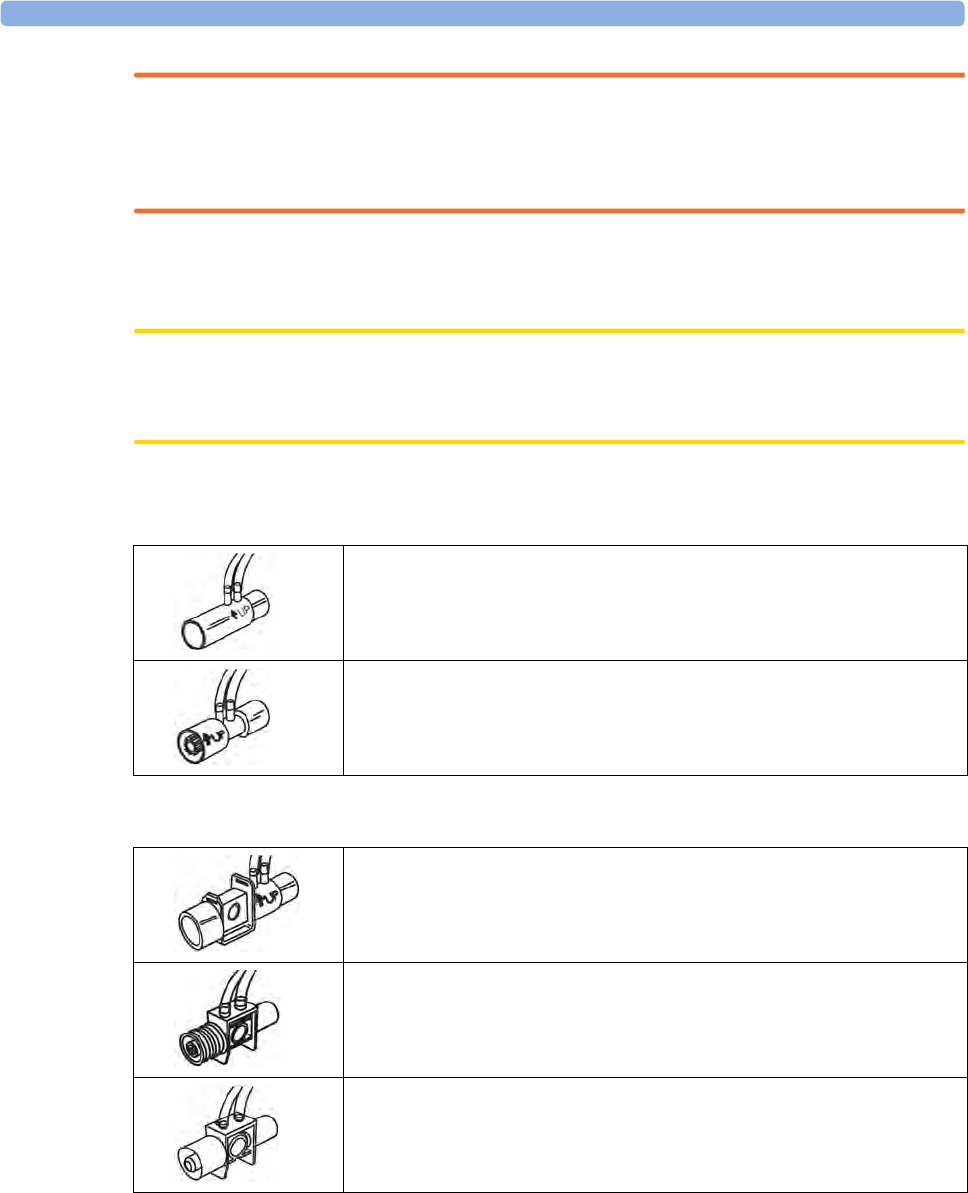
15 Monitoring Airway Flow, Volume and Pressure
256
WARNING
Electrical Shock Hazard: Do not open the module. Contact with exposed electrical components
may cause electrical shock. Always turn off and remove power before cleaning the module. Refer
servicing to qualified service personnel.
Attaching the Flow Sensor
CAUTION
Use the M1014A Spirometry Module with Philips approved accessories only. Refer to the instructions
for use provided with the accessory.
Select the appropriate flow sensor. Make sure that you are using the correct sensor for the respective
patient category. Otherwise accuracy may be reduced.
You can also use combined CO2/flow sensors. Note that the M3014A Capnography Extension is
required to measure CO2.
1If you are using a combined CO2/Flow sensor, connect it to the CO2 sensor head first. The airway
adapter clicks into place when seated correctly.
2Click the connector into place in the flow sensor receptacle on the monitor before connecting to
the breathing circuit.
Pediatric/Adult Flow Sensor (M2785A). Color: clear
For intubated patients with endotracheal tube diameters > 4 mm. Adds
approximately 6.5 cm3 of dead-space.
Infant/Neonatal Flow Sensor (M2786A) Color: violet
For intubated patients with endotracheal tube diameters ≤4 mm. Adds less
than 1 cm3 of dead-space.
Pediatric/Adult Combined CO2/Flow Sensor (M2781A). Color: clear
For intubated patients with endotracheal tube diameters > 5.5 mm. Adds
8cm
3 of dead-space.
Pediatric Combined CO2/Flow Sensor (M2783A): Color: green
For intubated patients with endotracheal tube diameters of 3.5 - 6 mm.
Adds less than 4 cm3 of dead-space.
Infant/Neonatal Combined CO2/Flow Sensor (M2782A). Color: violet
For intubated patients with endotracheal tube diameters of 2.5 - 4 mm.
Adds less than 1 cm3 of dead-space.
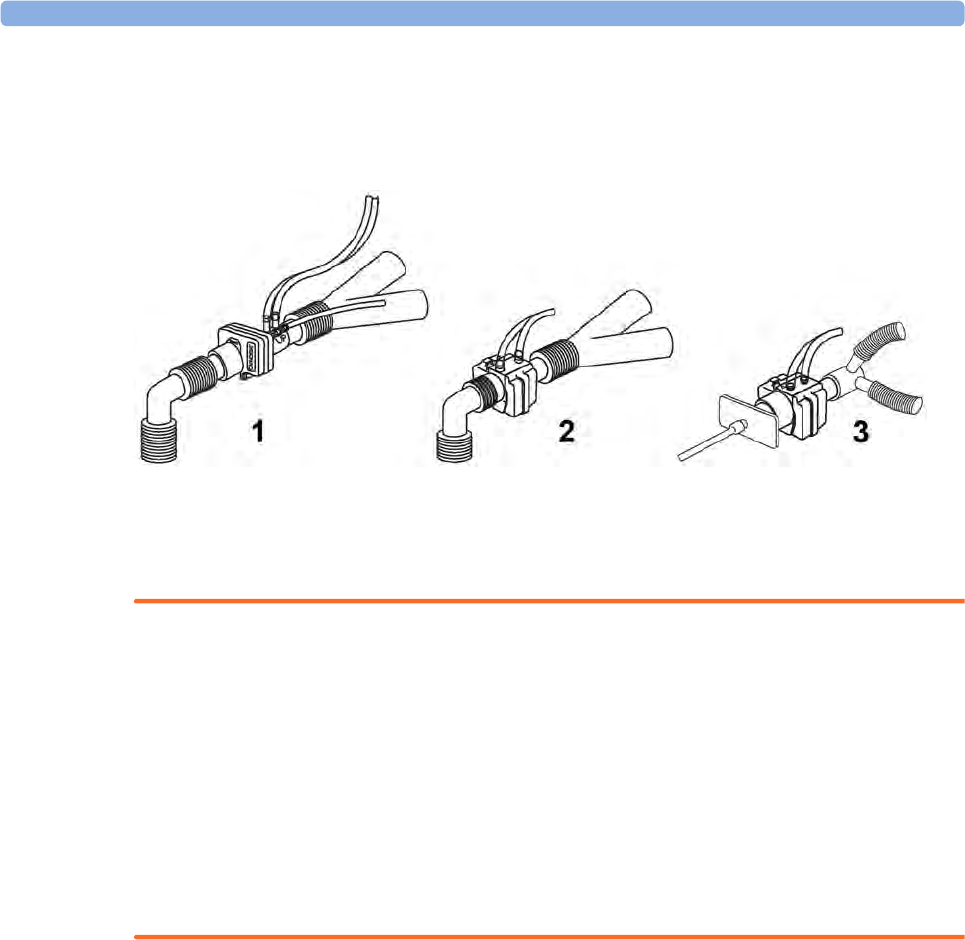
15 Monitoring Airway Flow, Volume and Pressure
257
3Install the flow sensor or the combined CO2/Flow sensor at the proximal end of the breathing
circuit between the elbow and the ventilator Y-piece. Make sure that the spirometry sensor is in a
horizontal position with its tubing pointing upwards. The correct position is also indicated by an
arrow on some of the sensors. (Graphic shows combined CO2/Flow Sensors).
1. Pediatric/adult sensor
2. Pediatric sensor
3. Infant/Neonatal sensor
WARNING
To prevent stress on the endotracheal tube, support the sensor and airway adapter.
Position sensor cables and tubing carefully to avoid entanglement or potential strangulation. Do not
apply excessive tension to any cable or tubing.
Replace the sensor, if excessive moisture or secretions are observed in the tubing and cannot be
removed by a purge cycle.
Reuse poses a patient hazard. Do not disassemble, clean, disinfect or sterilize the sensor.
A system leak may significantly affect readings of flow, volume, pressure and other respiratory
mechanics parameters.
Do not leave the sensor in the patient circuit when not connected to the monitor.
NOTE
• Do NOT place the airway adapter between the endotracheal tube and the elbow (pediatric/adult
circuit), as this may allow patient secretions to block adapter windows.
• The striped tubing of the flow sensor should always be proximal to the patient.
• Position the airway adapter with the spirometry tubing pointing upwards.
• To prevent "rain-out" and moisture from draining into the airway adapter, do NOT place the
airway adapter in a gravity dependent position.
• Periodically check the flow sensor and tubing for excessive moisture or secretion build up.
Perform a purge cycle if droplets are visible within the sensor or tubing. Repeat if necessary. If
purging does not remove the droplets, replace the sensor.
• For routine performance of airway care, separate the system between the endotracheal tube and
the airway adapter (neonatal circuit), or between the endotracheal tube and elbow (pediatric/adult
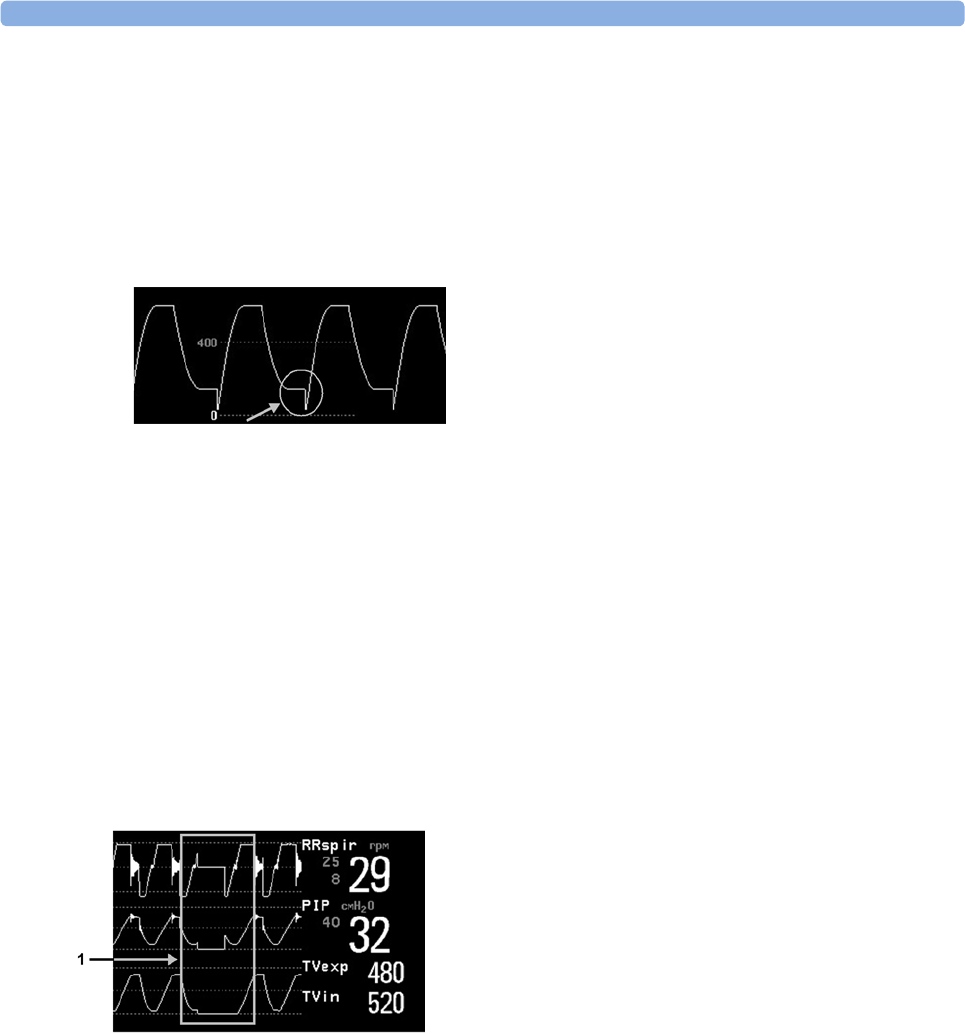
15 Monitoring Airway Flow, Volume and Pressure
258
circuit). Lavage and suctioning of the airway can then be performed without fluids and mucous
accumulating on the airway adapter windows.
• Measurement values provided by a ventilator may differ significantly from the values provided by
the spirometry module, due to different locations of the flow sensor.
• Incorrect entry of gas compensation parameters (i.e. temperature, gas composition) may reduce
the accuracy of the measured values.
• An abnormal volume waveform as displayed below may be an indicator of an air leak:
In general, if MVexp or TVexp are significantly smaller than MVin or TVin, the tubing should be
checked for leaks.
Zero Calibration
The zero calibration maintains the accuracy of the spirometry waves and numerics by regularly
compensating for drifts within the measurement section. It is performed automatically without user
interaction and takes about 2 seconds to complete. The automatic zero calibration is normally carried
out every ten minutes. During warm-up or when the ambient pressure changes, this interval may be
reduced to two minutes.
During the zero calibration the waveform is flat but the numerics remain on the screen. Typically, a
zero calibration is started at the beginning of a respiration cycle, therefore a waveform may begin
normally and then immediately become flat for the time of the zero calibration.
Automatic Purging
A double lumen connecting line (tubing) connects the flow sensors to the patient monitor. The
M1014A Spirometry Module includes an automatic and manual purge feature which provides a flush
of room air to keep the sensor tubing free from water condensation and patient secretions. This
feature is available for the adult, pediatric, and neonatal modes. The purge will begin with the
exhalation portion of the ventilator cycle.
NOTE
• During the purge cycle the pump will be heard
1 Zero Calibration

15 Monitoring Airway Flow, Volume and Pressure
259
• If the purge does not sufficiently clear the flow tubing lines, the flow sensor should be replaced
• With each purge cycle, a zero calibration is automatically performed
Adult Mode
The system automatically purges the sensor tubing every ten minutes or less, depending on system
conditions. In adult mode, the system will purge both sides of the line, one at a time, during each purge
cycle. The higher the pressure, the more frequent the purging. This action anticipates increased
moisture migration into the sensor tubing due to the increase in circuit pressure.
Neonatal and Pediatric Modes
The automatic purge cycles used in the neonatal or pediatric mode is fixed at every three minutes
regardless of circuit pressure. Only one side of the sensor tubing will be purged during each purge
cycle.
Unlike the adult purge mode, the neonatal or pediatric purge mode does not use the full force of the
internal pump, but rather pressurizes an internal reservoir which is used for the purge. This minimizes
the pressure delivered to the ventilator circuit, but does deliver a sufficient pressure to purge the sensor
tubing.
Manual Purging
Occasionally, purging may be required in between the automatic purge cycles. The manual purge may
be used as often as needed. Check the orientation of the flow sensor if repeated manual purge cycles
become necessary.
To manually purge, press the Purge button on the module (marked by on international versions of
the module) or select Purge in the Setup Spirometry window to initiate a combined purge and zero
cycle.
Gas Compensation
Temperature and the proportions of individual gases influence the flow measurement. If values seem
inaccurately high or low, check that the monitor is using the appropriate gas compensation. Gas
compensation can be done using either manually entered gas concentrations or gas concentrations
from the gas analyzer.
NOTE
If you unintentionally switch the gas compensation to the incorrect setting, the accuracy of the
measured flow and volume values may be significantly reduced. The tables below show examples of
incorrect gas compensation settings and the resulting inaccuracies:
Incorrect Balance Gas Setting (N2O instead of N2)
N2O2N2OAgent Difference between
measured and actual
values
Actual Gas Composition 60 40
Gas Compensation Setting 40 60 15%
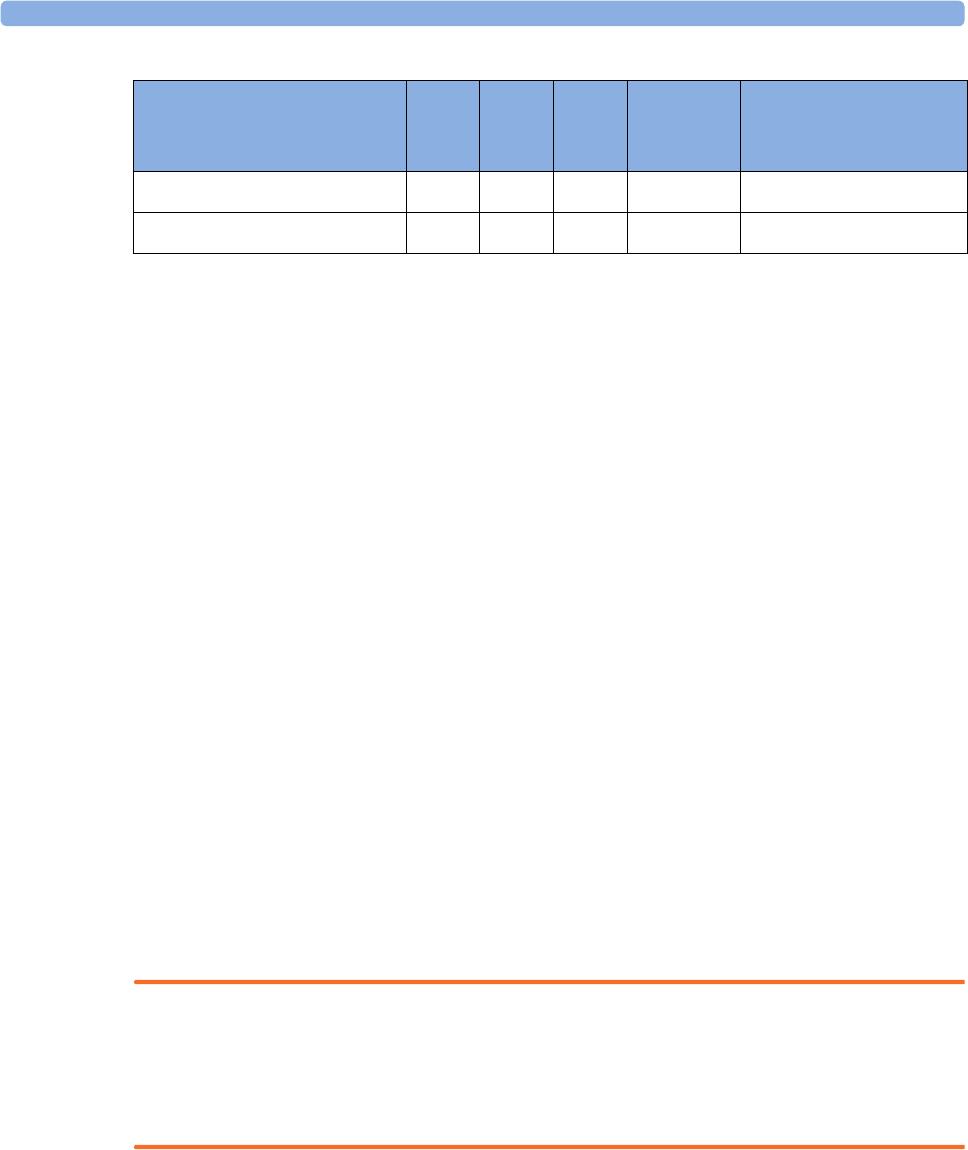
15 Monitoring Airway Flow, Volume and Pressure
260
Incorrect Agent Percentage Setting
Setting up Spirometry
The following settings can be accessed through the Setup Spirometry menu.
Optimizing Scale Settings
In the Setup Spirometry menu, select Optimize Scales. The scale settings for all three spirometry
waves (AWF, AWP, AWV) will be optimized.
Spirometry Values Window
You can view all spirometry measurement data in the spirometry data window. In the Setup
Spirometry menu, select Show All Values.
Alarms and Alarm Limits
Alarms can be derived from PEEP, PIP, MV and RRspir. In the Setup Spirometry menu you can set
the alarm limits. Refer to the Alarms chapter of this manual for details on alarm settings.
Changing the Apnea Alarm Delay
This determines the time limit after which the monitor alarms if the patient stops breathing.
1In the Setup Spirometry menu, select RRspir.
2In Setup RRspir menu, select Apnea Time.
3Choose the apnea alarm delay time.
WARNING
•Safety and effectiveness of the respiration measurement method in the detection of apnea,
particularly the apnea of prematurity and apnea of infancy, has not been established.
• If an apnea occurs during a zero calibration or purge, the time delay between the start of apnea and
the activation of the apnea alarm could be up to 10 seconds plus the configured apnea delay time.
Automatic Alarm Suppression
If the automatic alarm suppression is switched on, all spirometry alarms are suppressed until breathing
activity has been detected. This setting must be made in configuration mode.
N2O2N2OAgent Difference between
measured and actual
values
Actual Gas Composition 55 40 5
Gas Compensation Setting 60 40 0 15%

15 Monitoring Airway Flow, Volume and Pressure
261
Choosing Measured AWV Components
1In the Setup Spirometry menu, select AWV.
2Select MV to choose the measured components for Minute Volume (inspiratory and/or expiratory
or off).
Select TV to choose the measured components for Tidal Volume (inspiratory and/or expiratory or
off).
NOTE
If MV and TV are set to off, there will be no alarming for these parameters.
Setting the Gas Compensation Mode
1In the Setup Spirometry menu, select Gas Compensation.
2Select Mode to choose the Gas Compensation mode:
– select Manual for manually entered gas concentrations or
– select Gas Analyzer for gas concentrations from the gas analyzer.
NOTE
• Gas concentrations from the gas analyzer are only available for Philips gas analyzers, not for
devices connected via a Vuelink/IntelliBridge module.
• If gas concentrations from the gas analyzer are selected but not all data is available, the missing
data is taken from manually entered values. In case of invalid data or no data at all, the INOP
message Spiro Gas Compens? is displayed.
Changing the Type of Balance Gas
1In the Setup Spirometry menu, select Gas Compensation.
2Select Balance Gas to change the type of balance gas.
3Select the appropriate setting (N2 or N2O).
Changing the Concentration of Inspired O2 and the Inspired Agents
1In the Setup Spirometry menu, select Gas Compensation.
2Select Inspired O₂ to change the concentration of inspired O2.
Select Inspired Agent to change the concentration of the inspired agent(s).
3Select the appropriate setting.
Changing the Temperature of the Inspired Gas
Depending on the type of ventilator environment (e.g. if you are using a Heat Moisture Exchanger)
you may want to change the temperature setting of the inspired gas:
1In the Setup Spirometry menu, select Gas Compensation.
2Select Inspired Temp to change the temperature of the inspired gas.
3Select the appropriate temperature setting.
NOTE
Changing the temperature setting unintentionally will result in approximately 3% reduced accuracy per
10°C (18°F) temperature setting change.

15 Monitoring Airway Flow, Volume and Pressure
262
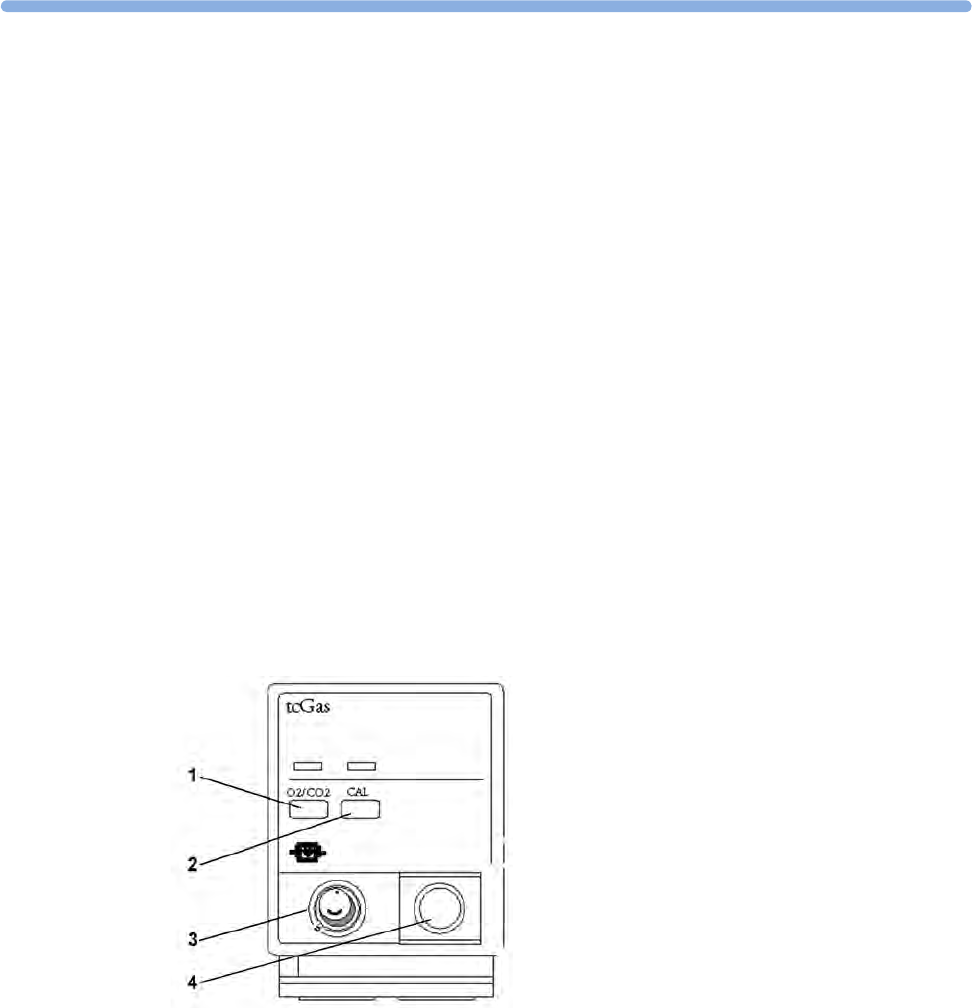
16
263
16Monitoring tcGas
The tcGas module measures the partial pressure of the oxygen and carbon dioxide that diffuses
through the skin, thereby providing a measure of these gases in the capillary blood.
The monitor's settings for altitude and barometric pressure influence the measurement. The tcpO2/
tcpCO2 measurement is valid for an infant patient not under gas anesthesia. Anesthetic agents, such as
halothane, can cause incorrect or drifting readings.
Transcutaneous measurements cannot replace arterial blood gas monitoring. However, you can use
transcutaneous monitoring to reduce the frequency of arterial sampling. The values at tissue level will
not be the same as those measured arterially because the measurement is transcutaneous. They
correlate with (track closely) the arterial values. For example, a drop in transcutaneous values usually
indicates a corresponding drop in arterial values.
Transcutaneous values will not always correlate with blood samples taken from the capillary blood of
the heel (heelsticks or astrups).
Identifying tcGas Module Components
1Press to enter Setup tcGas menu
2Press to start calibration
3Calibration chamber
4Transducer connector

16 Monitoring tcGas
264
Setting the tcGas Sensor Temperature
1In the Setup tcGas menu, select Transducer Temp..
2Choose a temperature value appropriate for your patient's age, weight and physical condition in
accordance with your hospital policy.
Usually, a higher transducer temperature gives a better correlation and a quicker response time.
However, higher temperatures also increase the risk of skin burns. Most physicians prefer a
temperature between 42°C (107°F) and 44°C (111°F), and a site time of four hours or less. Usually,
the higher the transducer temperature, the less the site time should be. Whenever you change the
temperature setting, the monitor forces you to make a new calibration.
Using the tcGas Site Timer
Availability and behavior of the site timer depend on your monitor's configuration.
WARNING
Prolonged continuous monitoring may increase the risk of undesirable changes in skin characteristics,
such as irritation, reddening, blistering or burns. If the site timer is disabled, the transducer will heat
indefinitely while on a patient. Change the site regularly, in accordance with medical procedures in your
hospital.
Setting the tcGas Site Timer
The site timer helps reduce the risk of skin burn by ensuring that the transducer is used at one site for
no longer than a predefined period. It reminds you when this period expires.
1In the Setup tcGas menu, select Site Time.
2Choose the time you want the transducer to remain on the measurement site. The optimum time
depends on the transducer temperature and your patient's skin sensitivity.
The site timer starts automatically when you remove the calibrated transducer from the calibration
chamber. If you return the transducer to the chamber and then remove it again, the site time continues
to count down the remaining time; it does not start a new time period. The time remaining before the
site timer expires appears in the status line which is visible as long as the Setup tcGas menu is open.
When the time expires, the monitor sounds a tone and a displays a change site INOP. The monitor
either switches off the transducer heating or continues monitoring, depending on its configuration.
Although you can reuse the transducer for up to two hours after the heating is switched off, without
making a new calibration, you are recommended to recalibrate before applying it to a patient. After two
hours without heat, you must recalibrate.
During the initial few minutes of use, the monitor eliminates false alarms by temporarily suppressing
tcGas alarms. It displays the <tcGas Label> Stabilizing INOP. After you apply the transducer to the
skin, the instrument reading slowly assumes a steady value. The reading stabilizes when the
measurement site is warm and local hyperemization is complete. This takes 10 to 20 minutes for the
tcpO2 reading and three to seven minutes for tcpCO2.

16 Monitoring tcGas
265
Restarting the tcGas SiteTimer
To restart the site timer without recalibration (for example, after the site time has elapsed):
1In the Setup tcGas menu, select Site Time.
2Enter and confirm your desired time.
Disabling the tcGas Site Timer
Depending on your monitor's configuration, you might be able to disable the site timer. Remember,
this means that the transducer heats indefinitely while on a patient.
1In Setup tcGas menu, select Site Timer and switch this to Disabled.
2Select the Confirm pop-up key.
Setting the tcGas Barometric Pressure
Altitude and barometric pressure affect tcGas values. The monitor derives barometric pressure from
its altitude setting. If you want to set the true barometric pressure you must do this before starting a
calibration - changes after calibration do not influence tcGas values. The monitor remembers this
pressure setting until you enter a new one.
1In the Setup tcGas menu, select Ambient Pressure.
2Enter the current barometric pressure reading indicated by your barometer.
3Select the Confirm pop-up key.
Remembraning the tcGas Transducer
Follow the instructions supplied with the transducer.
New/Dried Out Transducers
Remembrane all new or dried out transducers twice before using. After the first remembraning, unplug
the transducer from the module and leave it for 24 hours with the cap on. Remembrane again before
calibrating.
Storing tcGas Transducers
If you need to store a sensor for more than 24 hours, protect it for up to 28 days by putting two drops
of electrolyte solution into the cap. Screw the cap on the sensor. Remembrane if it dries out or after 28
days.
Calibrating the tcGas Transducer
You can use either a Philips (15210B) or a Radiometer TCC3 calibration unit and a gas cylinder whose
pressure indicator is above the 'out-of-gas' zone (black on 15210B, red on TCC3). To maintain
accuracy, it is recommended to calibrate the transducer every four hours, even if the monitor does not
prompt you to do so. You MUST calibrate when:
• you remembrane the transducer
• you change the transducer heat setting
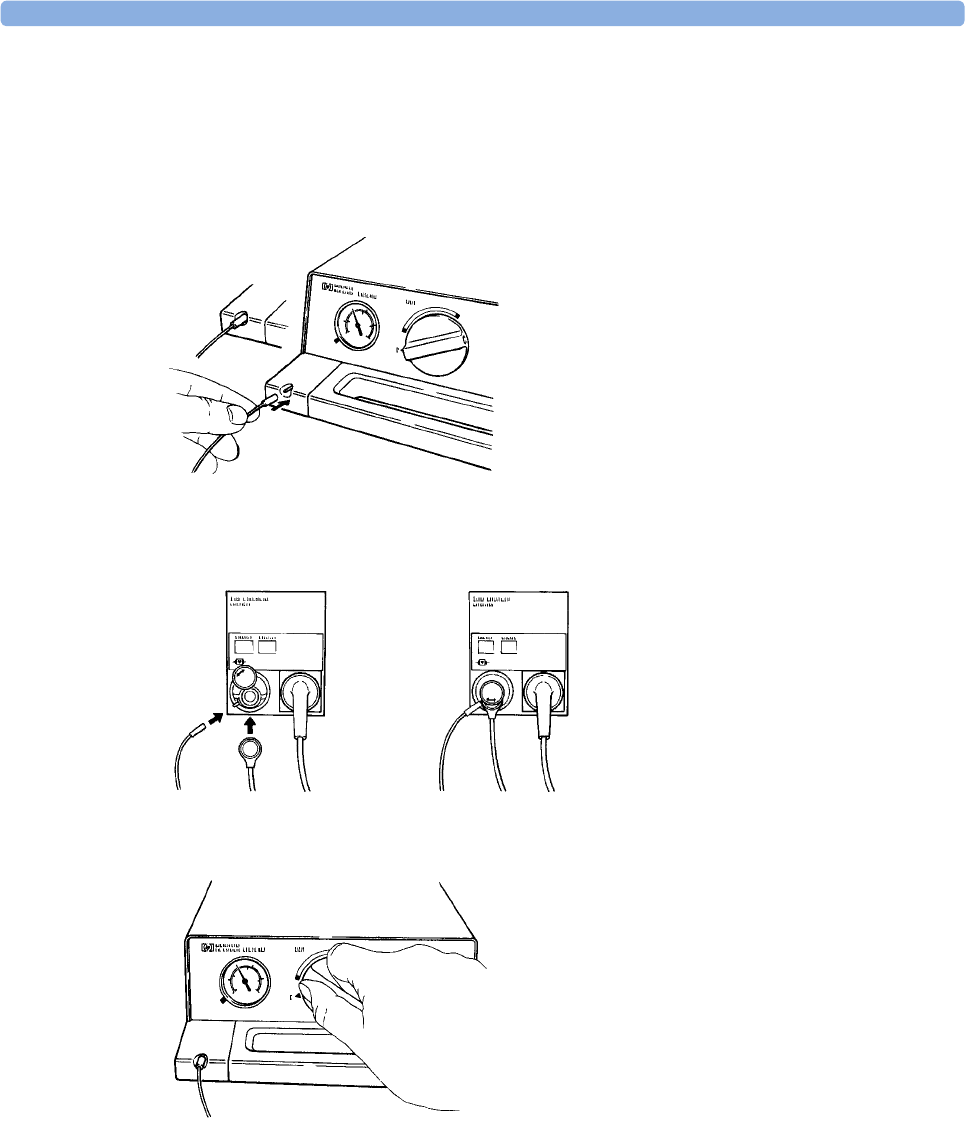
16 Monitoring tcGas
266
• you doubt the measurement accuracy
• you start a new monitoring period or use a new site
• the monitor displays the Calibration required INOP message.
1Connect the calibration unit to the inlet on the side of the module's calibration chamber using the
recommended gas tubing. Different tubing will cause inaccurate measurements.
2Plug the transducer cable into the module. Swing the calibration chamber cover open and insert
the transducer into the chamber. Close the cover to secure the transducer. Set the transducer
temperature at the monitor now.
3On the 15210B calibration unit, turn the timer control clockwise as far as you can. On the
Radiometer calibration unit, press the button with the green arrow once.
4Press CAL on the module until the light above the key comes on and wait (three - 20 minutes) for
the completion message to appear on the monitor. Alternatively, in the Setup tcGas menu, select
StartCalibration. To save gas on 15210B, if the timer control dial is not in the start position when
the monitor displays the completion message, turn the dial counter-clockwise to the start position.
For TCC3, if the green light is still flashing when INOP <tcGas Label> Cal Running disappears,
press the green arrow button again.
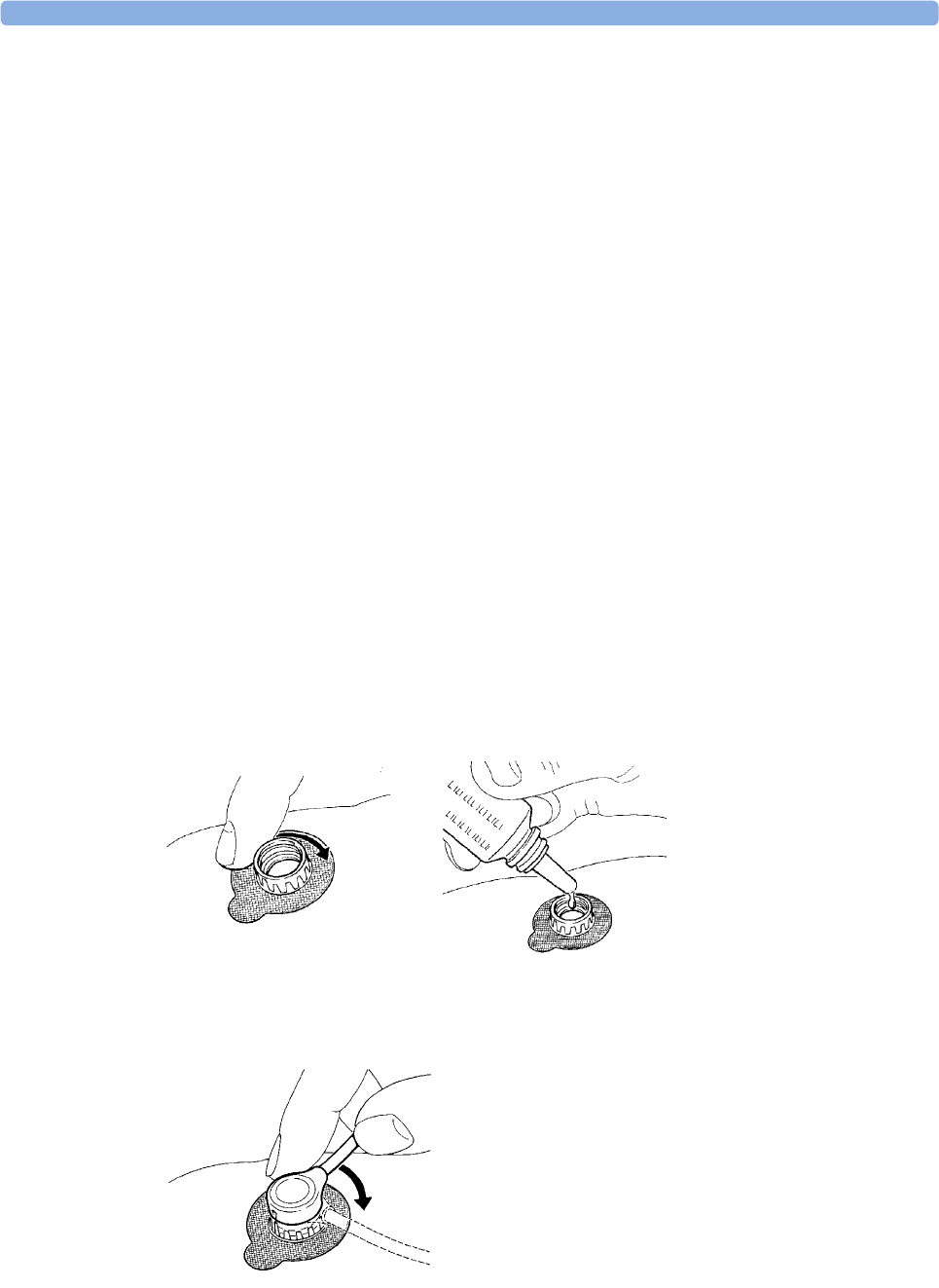
16 Monitoring tcGas
267
Calibration Failure
If calibration fails, the monitor displays <tcGas Label> transducer or cal. unit malfunction and the
<tcGas Label> Cal Failed INOP for the measurement.
Troubleshooting tcGas Calibration
Perform each of the following steps, in order, until calibration is successful.
1Check the calibration unit, then recalibrate, remembering to turn on the gas supply on the
calibration unit. If the pressure indicator reading is in the out of gas zone, there is insufficient gas
in the cylinder. Connect the gas tubing firmly to the calibration unit and to the module's
calibration chamber.
2If Step 1 fails, check whether you need to activate the transducer (necessary if the electrolyte has
dried out or if you have a new transducer). Remembrane the transducer, removing the old
membranes, and cleaning the transducer head thoroughly.
3Calibrate a second time.
4If Step 2 is unsuccessful, calibrate again. This calibration may be required to stabilize the
electrochemical system in the transducer.
5Only if the above steps are unsuccessful (you have activated and remembraned the transducer and
calibration has still failed twice), replace the transducer.
Applying the tcGas Transducer
1Peel protection film from fixation ring. Using a finger, press the sticky side of the ring on to clean,
dry skin. Press around the outside to ensure a good seal. Apply three to five drops of contact fluid
in the ring's center. Remove transducer from chamber.
2Align the arrow on the transducer with the tab on the ring and fasten by turning a quarter-turn
clockwise. Wait 10-20 minutes for readings to stabilize.
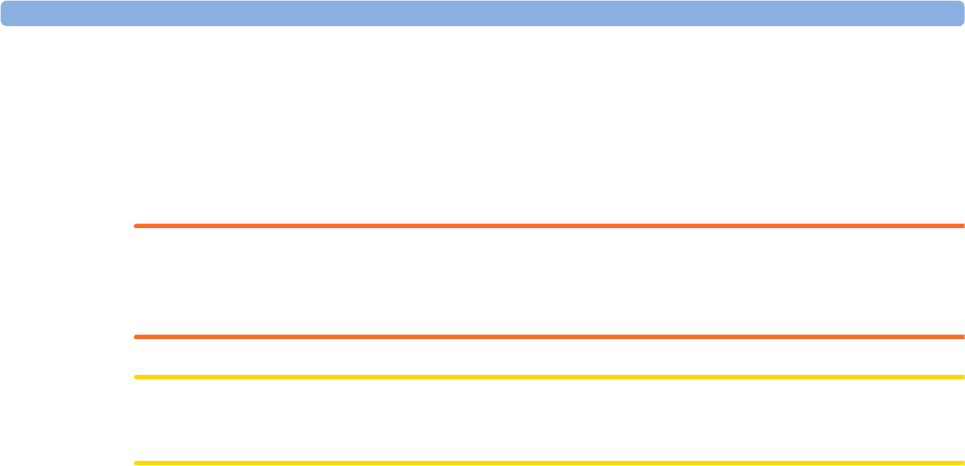
16 Monitoring tcGas
268
3Apply the transducer as soon as possible after you see the message indicating that calibration is
complete. If you wait longer than 30 minutes, the heat supply to the transducer switches off to
prevent the electrolyte from drying out and a new calibration is necessary.
Optimize the measurement by selecting a site with high capillary density and blood flow, thin
epidermis and no cardiovascular disorders. Most physicians use the abdomen, chest and back.
WARNING
You must either remove the transducer before defibrillating, or remembrane and calibrate the
transducer after defibrillating.
CAUTION
To avoid transducer damage, remove it from the patient during high frequency surgical procedures.
Selecting the tcGas HeatPowerDisplay Mode
The heat power display gives an indication of the skin's perfusion below the transducer and of the
transducer's contact with the skin. If the transducer loses contact, the heat power value drops
significantly. When perfusion is poor you need less heat power to maintain the transducer temperature.
•In the Setup tcGas menu, select HeatPowerDisplay and then Relative or Absolute. Choose
Relative when the skin temperature is stable (the <tcGas Label> Stabilizing INOP disappears).
This indicates subsequent changes in the relative heat power (and therefore changes in perfusion
or transducer contact) since the last zeroing.
Finishing tcGas Monitoring
Replace the transducer in the calibration chamber.
When changing the application site after a measuring period, some users leave the fixation rings in
position to allow them to quickly move the transducer from site to site. Always unscrew the transducer
from the fixation ring before removing the fixation ring from the skin.
Zeroing the tcGas Relative Heat Power
When you start a calibration, the HeatPowerDisplay is set to Absolute. When you switch to Relative,
it automatically zeros. Zero again if you change application site.
TcGas Corrections
Transcutaneous pCO2 values tend to be higher than arterial values due to the metabolic processes of
the skin and the effect of heating on the blood under the transducer. Depending on your monitor's
configuration, one or both of these corrections may automatically apply.
Temperature Correction for tcpCO2
The transducer temperature causes an increase in partial CO2 pressure. Your monitor may be
configured to correct this.

16 Monitoring tcGas
269
•In the Setup tcGas menu, look at the menu item CO₂ Correction. If correction is enabled, it is set
to On.
Metabolism Correction for tcpCO2
CO2 production in the epidermis increases the CO2 value. Your monitor may be configured to
automatically deduct a metabolism factor (only applies when CO₂ Correction is on).
In the Setup tcGas menu, look at the value shown for the menu item MetabolismFactor. This is
deducted from the CO2 value.

16 Monitoring tcGas
270
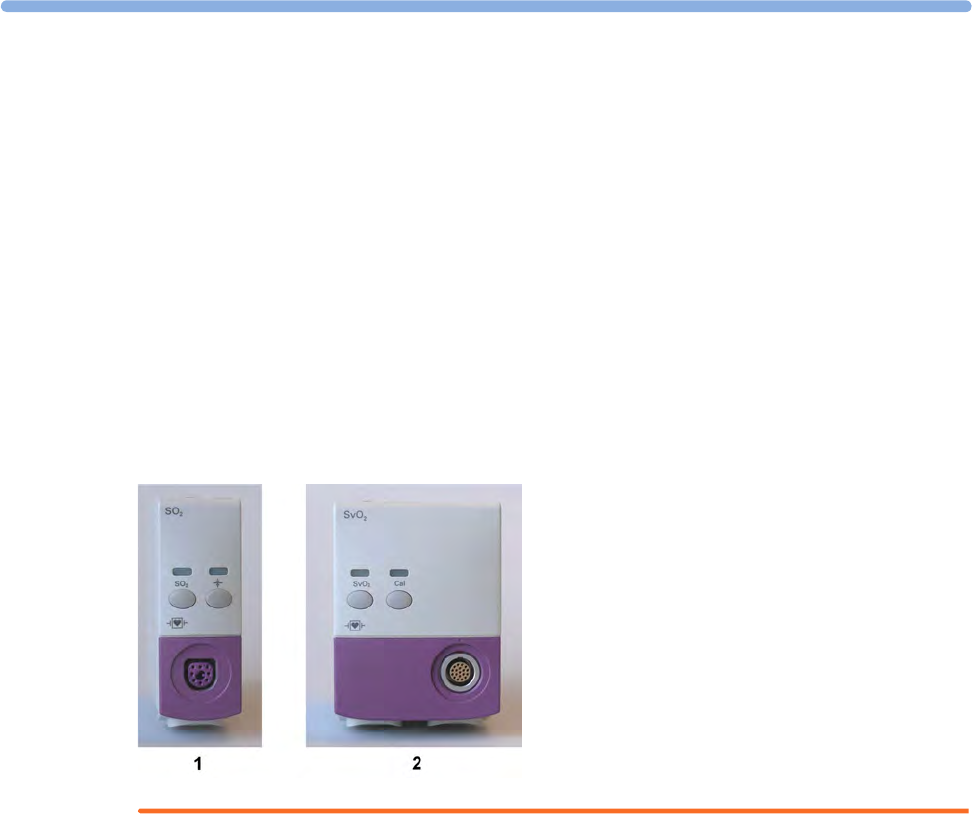
17
271
17Monitoring Intravascular
Oxygen Saturation
Depending on the probe or catheter used and the measurement location, the two modules, M1011A
and M1021A, measure the central venous oxygen saturation or mixed venous oxygen saturation
continuously and invasively.
The two modules can be differentiated by their size and their labeling. The M1011A is a single-width
module (narrow) and is labeled SO2. The M1021A is a double-width module (wide) and is labeled
SvO2.
WARNING
Injected dyes, such as methylene blue, or intravascular dyshemoglobin may lead to inaccurate
measurements.
Do not monitor oxygen saturation during infusion of I.V. fat emulsion or other turbid substances
through the distal lumen of the OptiCath catheter. These liquids might temporarily modify the blood
scattering and absorption characteristics at the catheter tip. This interferes with the optical
measurement of oxygen saturation. After infusion is complete, you can again monitor oxygen
saturation accurately.
During injection of the bolus for thermodilution cardiac output measurements, the SvO2
measurement might be disturbed.
Explosion Hazard: Do not use in the presence of flammable anesthetics or gases, such as a
flammable anesthetic mixture with air, oxygen or nitrous oxide. Use of the devices in such an
environment may present an explosion hazard.
1 M1011A
2 M1021A

17 Monitoring Intravascular Oxygen Saturation
272
Do not use probes/catheters when they, or the packaging, are damaged.
Always select the correct label for the measurement location and the catheter/probe in use. This is
especially important when Protocol Watch is in use, to ensure that the correct limits are used for the
criteria applied.
CAUTION
Use the modules with Philips approved accessories only. Refer to the instructions for use provided
with the accessory.
Selecting a Measurement Label
Always select a measurement label before inserting a catheter/probe.
Use the SvO2 label when the catheter/probe will be located in the pulmonary artery (measuring mixed
venous oxygen saturation). This is the only label which allows the measurement value to be used to
calculate oxygen extraction (see “Calculating Oxygen Extraction” on page 277) and in the standard
oxygen calculations.
Use the ScvO2 label when the catheter/probe will be located in a central vein (measuring central
venous oxygen saturation.
Use the SO2 label in all other cases.
To select a measurement label:
1Select Main Setup then Measurements followed by <SO₂ Label>
2Select Label.
3Select the appropriate label for the catheter/probe location.
Preparing to Monitor with the M1021A Wide
Module
In addition to the measurement module, you need a Hospira OptiCath catheter, and 50131 Optical
Module. Use only the Hospira accessories listed in the Accessories section.
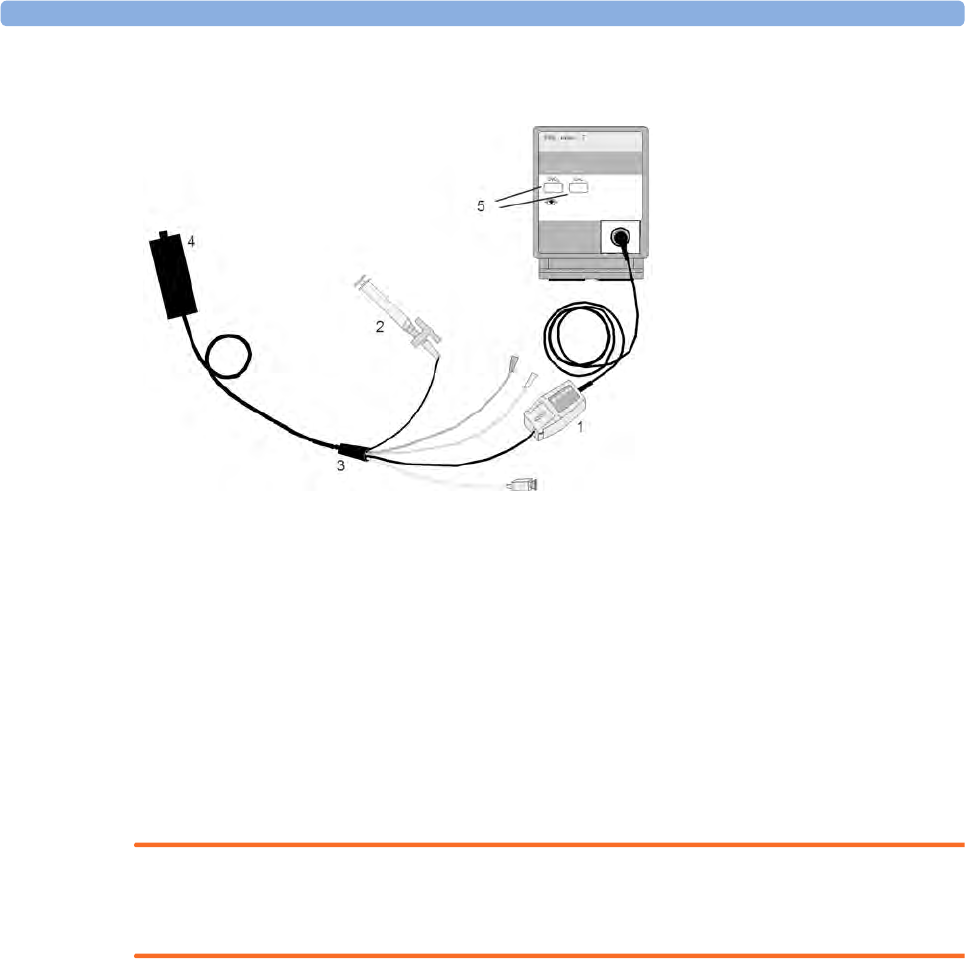
17 Monitoring Intravascular Oxygen Saturation
273
Connect the optical module (Hospira 50131) to the measurement module. Allow the optical module to
warm up before you perform a calibration. Although the warm up message disappears from the screen
after one minute, Hospira recommends letting the optical module warm up for 15 minutes for best
accuracy. Please refer to the instructions for the optical module.
To avoid false alarms during the pre-insertion calibration and insertion of the catheter into the patient,
the monitor automatically suspends alarms during the pre-insertion calibration, for up to three minutes
after you remove the catheter tip from the optical reference. After light intensity calibration, or after
three minutes (whichever comes first), the monitor returns to the alarm state it was in prior to pre-
insertion calibration.
Carrying out a Pre-insertion Calibration
WARNING
It is strongly recommended to carry out a pre-insertion calibration prior to all insertions. If this is not
possible, you must perform an in-vivo calibration after insertion.
Refer to the instructions for use that accompany the catheter. Do not use the catheter if the packaging
is damaged. If you have to disconnect the monitor from the patient (for example, when transferring
the patient from one location to another), you must disconnect at the SvO2 module. The catheter
should remain in the optical module, otherwise you need to recalibrate.
1Remove outer wrapping from catheter tray to uncover optical connector.
2Place the optical module on the catheter tray in the space provided and open the lid.
3Place the optical connector into the optical module (with the label "TOP" facing upwards) and
close the lid.
4In the Setup <SO₂ Label> menu, select Start Pre-InsCal. Ensure that the tip of the catheter is
still in the optical reference.
5Insert the catheter when you see the message <SO₂ Label> calibration completed - catheter
ready for insertion. If the calibration fails, repeat the calibration before inserting the catheter. If it
fails a second time, replace the optical module.
1Optical module
2Balloon inflation stopcock
3Hospira fiber optic catheter
4Optical reference
5Enter setup/calibration
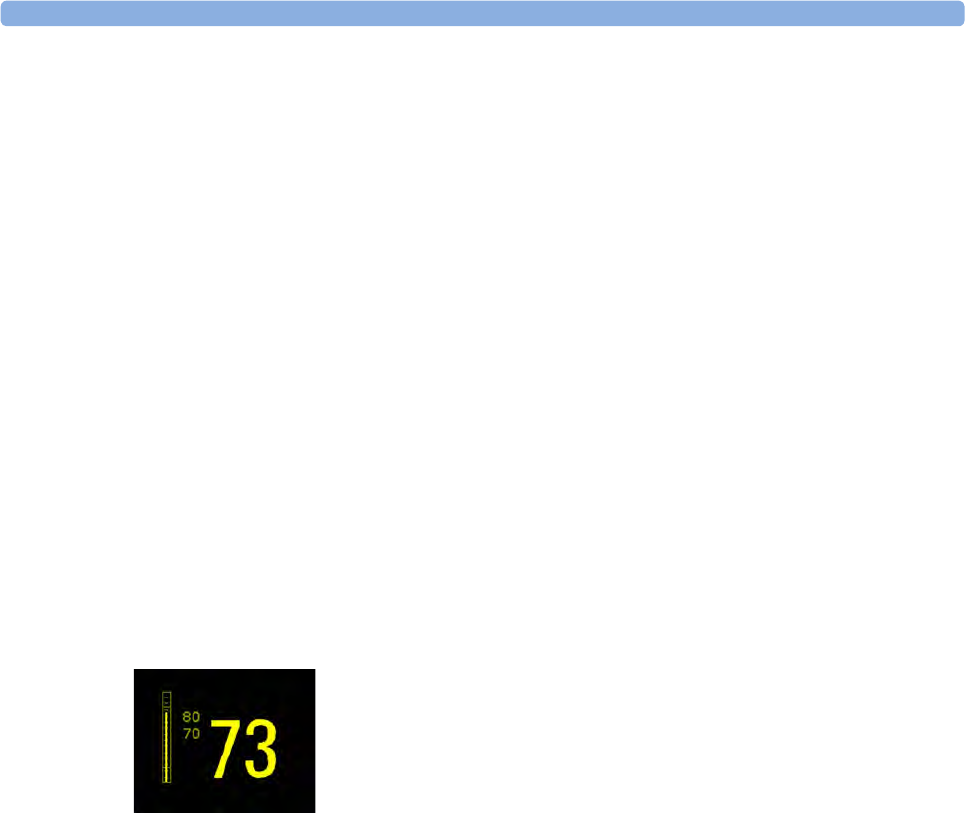
17 Monitoring Intravascular Oxygen Saturation
274
Inserting the Catheter
1Remove the inner cover of the catheter tray.
2Remove the catheter tip from the optical reference. Check the catheter's proper operation (for
example: the balloon tip).
3Prepare and insert the catheter in accordance with standard hospital practice.
The SvO2 catheter is thin and flexible, treat it carefully. Avoid kinking, bending or grasping the
catheter with forceps or a hemostat. Damage to the fiber results in low intensity light and sudden
decrease in intensity readings. Refer to the documentation provided with the fiber-optic catheter,
paying special attention to any precautions, warnings or contraindications.
Secure the optical module directly or in close proximity to the patient, to avoid placing excessive
tension on the catheter, which would result in movement of the catheter tip from the optimal position
in the patient. Position the optical module to avoid contact with liquids, because fluid entering the
catheter-optical module connection may impair light transmission.
If you place the catheter in the patient without performing the pre-insertion calibration, you must
perform an in-vivo calibration once the catheter is in place.
Performing a Light Intensity Calibration
Perform a light intensity calibration after the catheter is in its proper position. When the catheter is
positioned properly, the light intensity indicator must cover at least two small divisions above the
midpoint.
•In the Setup <SO₂ Label> menu, select Start Light Cal.
Calibration is complete after a few seconds. If you doubt existing light intensity readings, recalibrate.
Performing In-Vivo Calibration
Perform an in-vivo calibration:
• if you place the catheter in a patient without performing a pre-insertion calibration.
• if the catheter was disconnected from the optical module.
• when the catheter has been in the patient for 24 hours.
• if any significant change in light intensity occurs that the monitor cannot correct automatically.
Setting Up the In-Vivo Calibration
Check for:
• proper positioning of the probe/catheter in the patient.
• relatively stable oxygen saturation in patient.
• that the light intensity indicator is indicating a stable medium to high level.
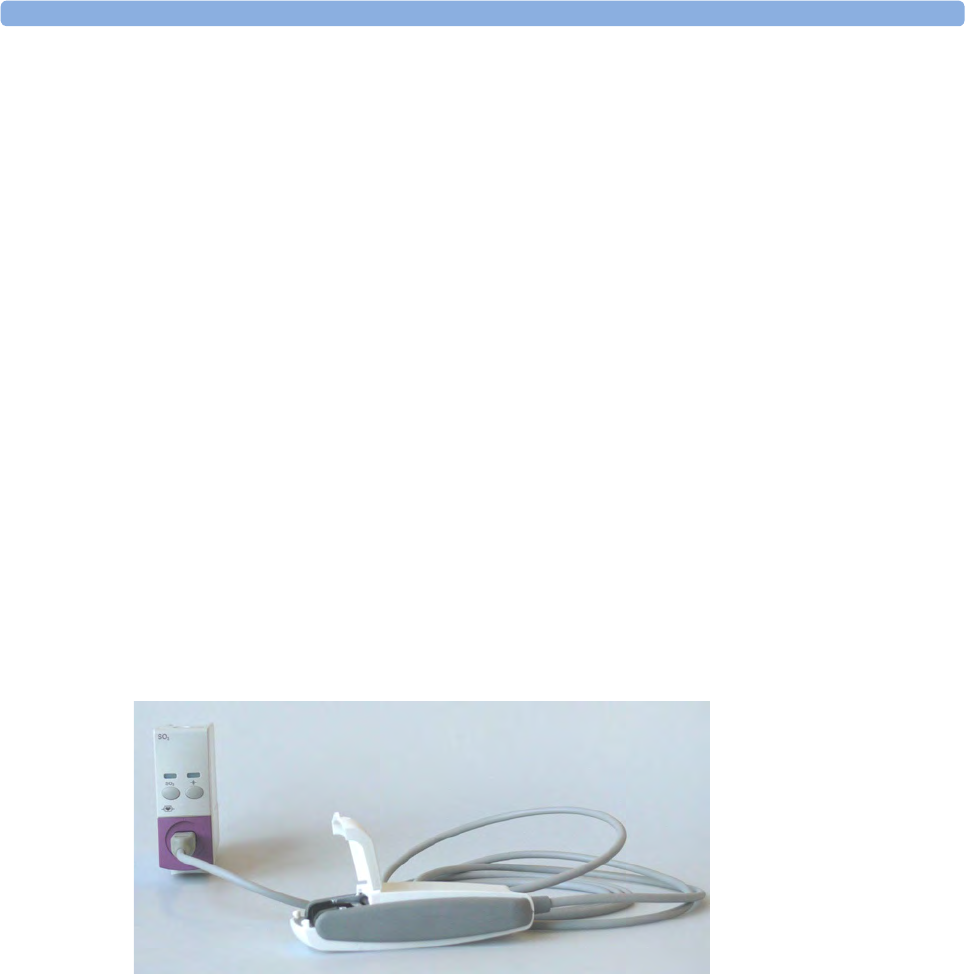
17 Monitoring Intravascular Oxygen Saturation
275
Making the In-Vivo Calibration
1Be prepared to draw a blood sample from the patient.
2In the Setup <SO₂ Label> menu, select Start In-VivoCal.
3To clear the distal lumen, draw off and discard at least 2 ml of blood before taking the sample.
4Draw a blood sample from the distal port of the catheter and flush the line according to standard
hospital practice.
5Obtain laboratory analysis of the sample using direct measurements.
6Select CalibrationValue and select from the list the value received from the lab.
7Complete the calibration by selecting Store In-VivoCal (even if the stored calibration value did not
change) and select Confirm. This updates the data stored in the optical module.
Selecting Recall Last Cal recalls the previously stored calibration value.
If the calibration fails, check that the light intensity indicator is indicating a stable medium to high level.
Repeat the calibration.
Preparing to Monitor with the M1011A Narrow
Module
In addition to the module, you need a Philips SO2 Optical Module and a compatible fiber optic probe
or catheter. Use only the accessories listed as applicable for the intended measurement location in the
Accessories section.
Connecting the Optical Module
1Connect the optical module to the SO2 module. Allow the optical module to warm up before you
insert the probe/catheter and perform a calibration.
Although the warmup message disappears from the screen after one minute, it is preferable to let
the optical module warm up for 10 minutes for best accuracy.
2Place the optical module on the catheter tray in the space provided and open the lid.
3Insert the SO2 probe/catheter connector into the socket in the optical module until it snaps into
place.
4Close the lid.
5For instructions on the placement of fiber optic catheters/probes, refer to the documentation
provided with the accessory.
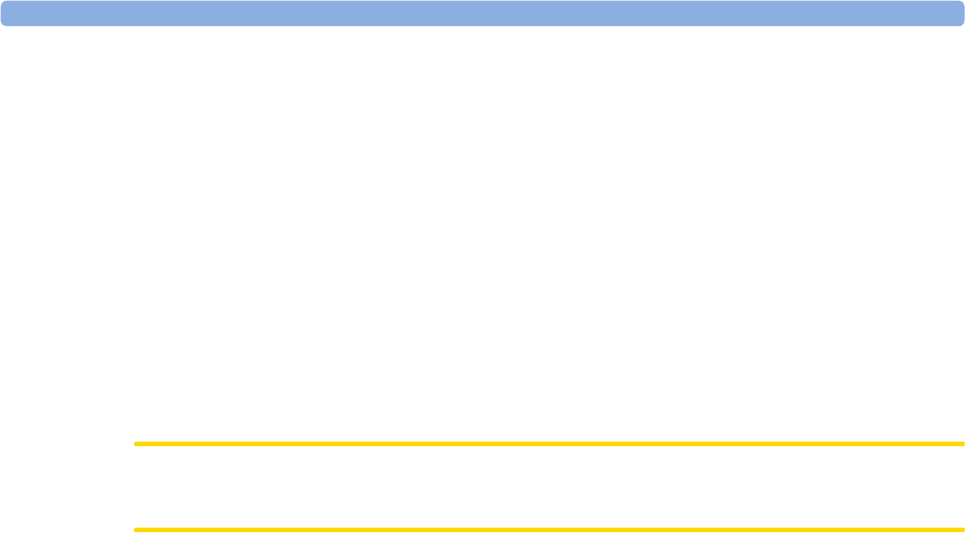
17 Monitoring Intravascular Oxygen Saturation
276
After Insertion
The SO2 probe/catheter is thin and flexible, treat it carefully. Avoid kinking, bending or grasping the
probe/catheter with forceps or a hemostat. Damage to the fiber results in low intensity light and a
sudden decrease in intensity readings. Refer to the documentation provided with the fibre-optic
probe/catheter, paying special attention to any precautions, warnings or contraindications.
Secure the optical module directly attached or in close proximity to the patient, to avoid placing
excessive tension on the catheter, which would result in movement of the catheter tip from the optimal
position in the patient.
Position the optical module to avoid contact with liquids. Fluid entering the catheter-optical module
connection will impair measurement performance.
You must perform an in-vivo calibration once the probe/catheter is in place.
The probe/catheter should be replaced after it has been in place for 72 hours.
CAUTION
Do not apply excessive tension to any cable or part of the catheter.
Performing In-Vivo Calibration
Perform an in-vivo calibration:
• when you place the catheter in a patient.
• if the catheter was disconnected from the optical module.
• when the catheter has been in the patient for 24 hours.
• if any significant change in light intensity occurs that the monitor cannot correct automatically.
Setting Up the In-Vivo Calibration
Check for:
• proper positioning of the probe/catheter in the patient.
• relatively stable oxygen saturation in patient.
• that the light intensity indicator is indicating a stable medium to high level.
Depending on the probe/catheter in use you may need to enter a catheter correction factor. This can
be found printed on the connector of the probe/catheter. The correction factor must only be entered
if it is different from the one currently stored. To see the current correction factor:
1In the Setup <SO₂ Label> menu, select Catheter Factor.
2If the correction factor displayed is different from the one on the connector, note the correction
factor from the probe/catheter for entry during calibration.
Making the In-Vivo Calibration
1Be prepared to draw a blood sample from the patient.
2In the Setup <SO₂ Label> menu, select Start In-VivoCal.
3To clear the distal lumen, draw off and discard at least 2 ml of blood before taking the sample.

17 Monitoring Intravascular Oxygen Saturation
277
4Draw a blood sample from the distal port of the catheter and flush the line according to standard
hospital practice.
5Obtain laboratory analysis of the sample using direct measurements.
6Select CalibrationValue and select from the list the value received from the lab.
7Select Hct [%] (or Hb [mmol/l] or Hb [g/dl] depending on the set up) and enter the corresponding
value from the laboratory analysis.
To change the setup for entering the Hb/Hct, see “Changing the Lab Value Required for Entry”
on page 277 below.
8If you need to enter a new correction factor, select Catheter Factor.
9Enter the correction factor.
10 Complete the calibration by selecting Store In-VivoCal (even if the stored calibration value did not
change) and select Confirm. This updates the data stored in the optical module.
Selecting Recall Last Cal recalls the previously stored calibration value.
If the calibration fails, check that the light intensity indicator is indicating a stable medium to high level.
Repeat the calibration.
Changing the Lab Value Required for Entry
You can change the lab value required to be entered: Hb [g/dl], Hb [mmol/l] or Hct [%].
1In the Setup <SO₂ Label> menu, select Hb/Hct Entry.
2Select your preferred lab value and unit.
Further Information for Both Modules
Checking Suspicious Values
If you have any doubts about the correctness of the measurement value, take a blood sample and have
it analyzed using standard laboratory procedures.
Calculating Oxygen Extraction
Oxygen extraction is the difference between the measured SpO2 and SvO2 values. If you are
monitoring SpO2 and SvO2, the monitor can calculate this value and display it as a numeric.
• To switch oxygen extraction calculation on or off, in the Setup Sp-vO₂ menu, select Sp-vO₂ and
toggle between On and Off.
•If more than one SpO
2 value is available, you must choose which value is used in the calculation.
In the Setup Sp-vO₂ menu, select SpO₂ Source and select the required source.
If one of the calculation sources becomes unavailable, the monitor displays the INOP Sp-vO₂ Chk
Sources for one minute. After this time, the calculation automatically switches off. If the missing
source becomes available again, the calculation automatically switches on again.

17 Monitoring Intravascular Oxygen Saturation
278

18
279
18Monitoring EEG
The Electroencephalograph (EEG) module monitors the patient's cerebral function by measuring the
electrical activity of the brain. It provides the monitor with two channels of realtime EEG waves, EEG
trend information in the form of Compressed Spectral Arrays (CSA), and up to eight of the following
numerics:
Spectral Edge Frequency - The SEF is the frequency below which a defined percentage of the Total
Power lies. The percentage is set in Configuration Mode.
Mean Dominant Frequency (MDF) - The MDF is the mean value of the frequency which
dominates the measured EEG.
Peak Power Frequency (PPF) - The PPF is the frequency with the highest measured amplitude.
Total Power (TP) - The TP numeric indicates the power in the measured frequency band.
Percentage of total power in each frequency band:
–Alpha waves (8 to 13 Hz)
–Beta waves (13 to 30 Hz)
–Theta waves (4 to 8 Hz)
–Delta waves (0.5 to 4 Hz).
EEG Monitoring Setup
1Plug the trunk cable into the EEG module.
2Prepare the patient's skin prior to placing the electrodes. Good electrode-to-skin contact is
important for a good EEG signal, as the skin is a poor conductor of electricity.
– Shave hair from sites, if necessary.
– Wash sites thoroughly with soap and water. We do not recommend using ether or pure
alcohol, because this dries the skin and increases the resistance.
– Use a skin preparation paste to remove skin cells and oil before placing the electrodes.
3Select the desired electrode montage in the Setup EEG menu or in the EEG Impedance / Montage
window.
4Attach the reference electrode first.
5Place the electrodes on the patient's head according to the selected montage. Use electrode gel if
you are not using pre-gelled electrodes. Remember to select a site where the signal will not be
interfered with by muscle artifacts.
6Connect the electrode connector end to the trunk cable.
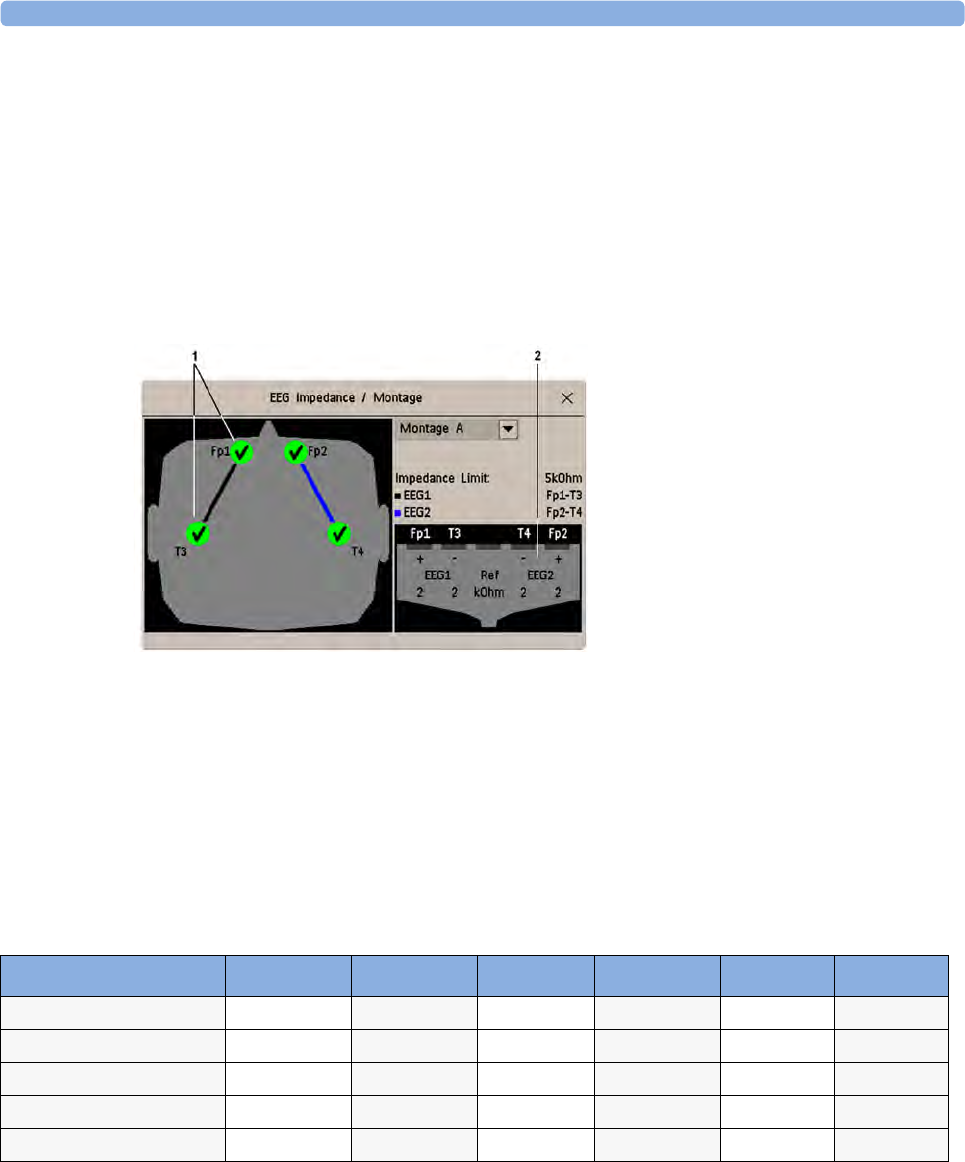
18 Monitoring EEG
280
7Check the electrode-to-skin impedance in the EEG Impedance / Montage window.
8For good signal quality, keep all lead wires together and away from other electric devices and
metallic bodies.
Using the EEG Impedance/Montage Window
To open the window, in the Setup EEG menu, select Show Montage, or select the EEG Montage
SmartKey.
The window may be configured to look slightly different on your monitor.
1Electrode locations on the patient's head. The symbols represent the electrode-to-skin impedance.
2Wiring and impedance values for the selected montage.
Choosing an EEG Electrode Montage
1To activate one of the five pre-configured electrode montages, select the arrow beside the label in
the EEG Impedance / Montage window and choose a montage from the list.
2Attach the electrodes as illustrated in the EEG Impedance / Montage window.
The five default electrode montage configurations can be modified and renamed in Configuration
Mode.
The electrode locations are labeled according to the international 10-20 electrode placement system.
Montage Name EEG1+ EEG1- Label1 EEG2+ EEG2- Label2
Montage A Fp1 T3 Fp1-T3 Fp2 T4 Fp2-T4
Montage B O1 T3 O1-T3 O2 T4 O2-T4
Montage C F3 C3 F3-C3 F4 C4 F4-C4
Montage D C3 P3 C3-P3 C4 P4 C4-P4
Montage E Fp1 T5 Fp1-T5 Fp2 T6 Fp2-T6
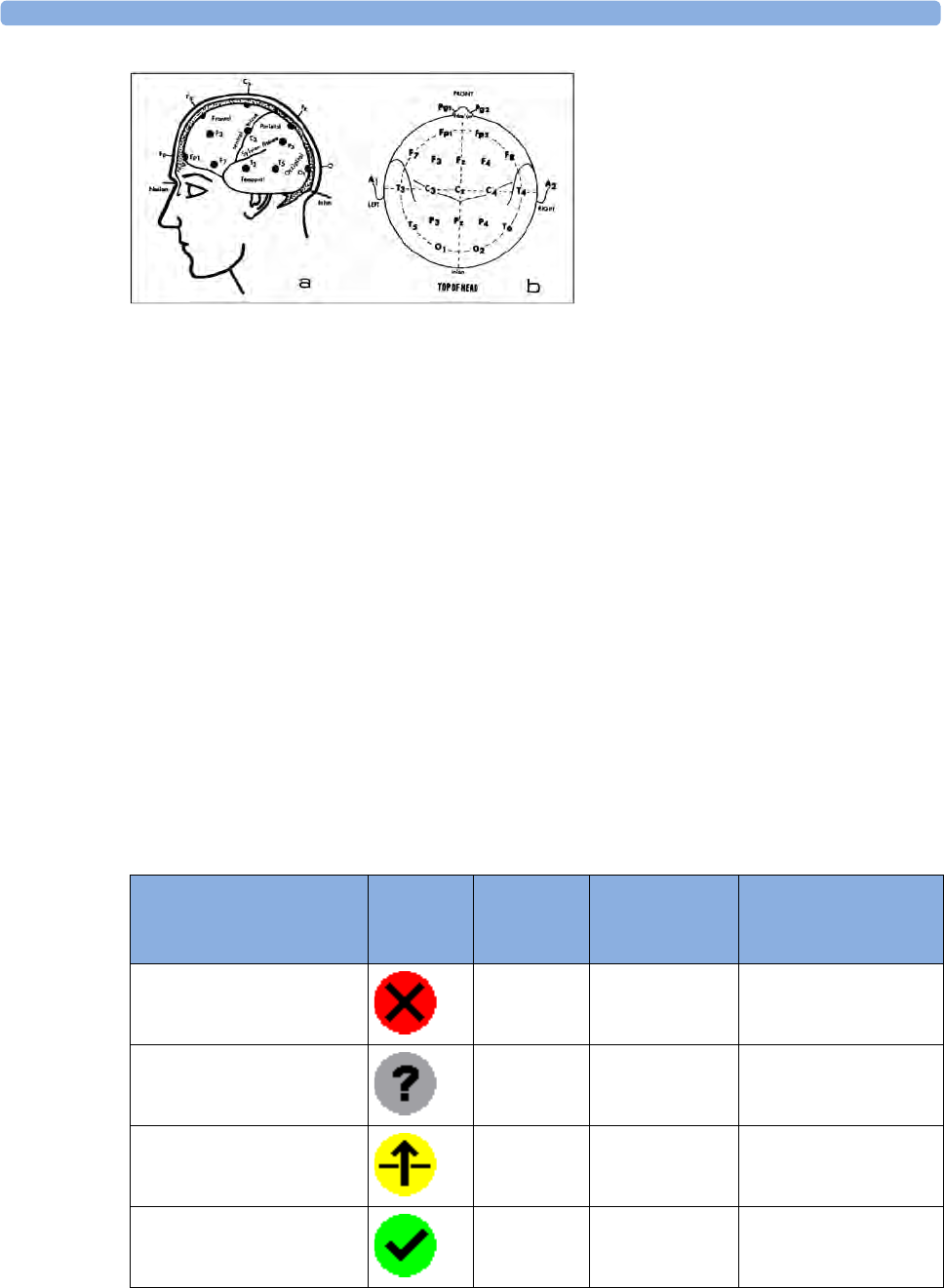
18 Monitoring EEG
281
Changing the Impedance Limit
The impedance limit can be set for all electrodes simultaneously in the Setup EEG menu, or in the EEG
Impedance / Montage window using the pop-up keys. If the limit is exceeded during monitoring, an
INOP will appear and the graphic impedance indicator will change.
To change the impedance limit, either
• use the pop-up keys that appear with the EEG Impedance / Montage window, or
•in the Setup EEG menu, select Impedance Limit to call up a list of selections between 0 and
30 kOhm, then select the required limit from this list.
About Electrode-to-Skin Impedance
Electrode-to-skin impedance is the main quality indicator for the measured EEG signal. During
normal EEG monitoring, electrode-to-skin impedance is measured continuously and disconnected
electrodes are detected. The impedance value for each single, independent signal electrode is displayed
in the EEG Impedance / Montage window. If the measured electrode-to skin impedance of one or
more electrodes is above the limit, an INOP will be issued.
For impedance measurement at least two electrodes, plus the reference electrode, must be connected.
Impedance Indicators
Electrode/Skin
Impedance
Symbol Color Displayed
Impedance
Value
Action
Electrode not connected red no value connect electrode
Noisy signal gray 60 kΩ (fixed) check electrode-to-skin
connections
Electrode connected,
impedance above limit
yellow measured value
(e.g. 15 kΩ)
check limit, check
electrode-to-skin
contact
Electrode connected,
impedance at or below limit
green measured value
(e.g. 3 kΩ)
no action necessary
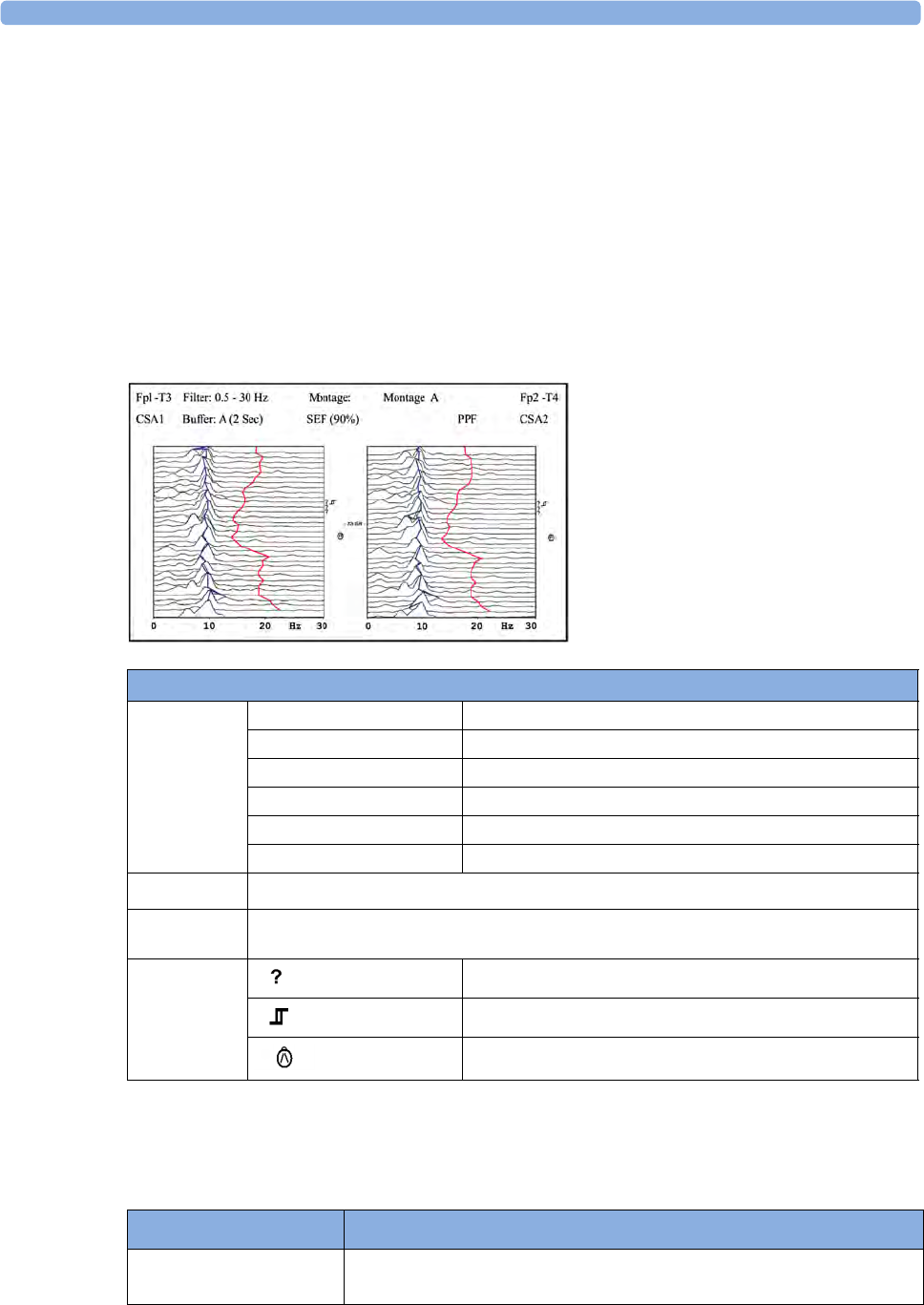
18 Monitoring EEG
282
About Compressed Spectral Arrays (CSA)
The continuous EEG signal is sampled periodically and this value is stored in a frame. Each frame is
processed using Fast Fourier Transformation (FFT) to provide a frequency spectrum displayed as a
compressed spectral array (CSA).
The CSA window provides an overview of the patient's EEG values over time. It may be configured to
look slightly different on your monitor.
• To view the CSA window permanently embedded on a Screen, select a Screen configured to
display the CSA window.
• To view the CSA window over the current screen, select the EEG CSA SmartKey, if configured, or
select Setup EEG or Main Setup then Show CSA.
Changing CSA Settings
When CSAs are shown embedded on the Main Screen, select the CSA to show the pop-up keys. When
the CSA is shown in a window over the current screen, the pop-up keys are always displayed.
The CSA contains the following information
Status line
Lead label for example, Fp1-T3, Fp2-T4
CSA label CSA1 or CSA2 according to EEG channel
Montage label for example, Montage A
Filter settings for example, 0.5-30 Hz
Buffer label and time the buffer and interval between spectral lines on the CSA
Current SEF Threshold can only be changed in Configuration Mode
Spectral lines The energy at each frequency is computed and displayed as a spectral line
Trendlines EEG values are sampled at configured time intervals and displayed as color-coded trendlines.
Trendlines are available for the three frequency numerics (SEF, PPF, MDF)
Annotations
INOP marker
Filter change marker
Montage change marker
Setup CSA Window This menu entry lets you
Buffer Choose one of the three pre-configured buffers. A buffer defines the
interval between the spectral lines displayed in the CSA.

18 Monitoring EEG
283
Changing EEG Settings
Be aware that any changes made to EEG settings apply to both EEG channels.
Switching EEG Numerics On and Off
Each EEG numeric can be individually switched on or off in the Setup EEG menu.
1In the Setup EEG menu, select the numeric label.
2Select On or Off to switch between the settings.
Changing the Scale of the EEG Waves for Display
This only changes the visual appearance of the wave. It does not affect the signal analyzed by the
monitor or printed in reports or recordings.
1In the Setup EEG menu, select Wave Scale to call up a list of wave scales.
2Select the required scale from this list.
Scaling information is displayed with each EEG wave.
•If
Show Gridlines is set to On in Configuration Mode, gridlines and the current wave scale values
are shown with the EEG wave.
•If
Show Gridlines is set to Off in Configuration Mode, the current wave scale is indicated by a size
bar beside the EEG wave.
Changing Filter Frequencies
The low and high pass filters screen out undesirable interference from the raw EEG wave display. The
current EEG filter frequency settings are shown in the header of the CSA. Changing filter settings
affects the EEG wave and all the EEG numerics. Whenever the filter setting is changed, a filter change
marker appears next to the spectral lines.
To change the filter settings:
1In the Setup EEG menu, select Low Filter or High Filter to call up a list of available frequencies.
2Select the required frequency from this list.
Changing the Speed of the EEG Wave
The EEG measurement has its own speed control and is not affected by the wave speed settings of the
other measurements.
In the Setup EEG menu, select EEG Speed. Choose the required speed from the pop-up list. This
defines the speed at which the wave is drawn across the screen in millimeters per second (mm/s).
On/Off SEF
On/Off MDF
On/Off PPF
Switch the trendline of the specific numeric on or off.
Setup CSA Window This menu entry lets you
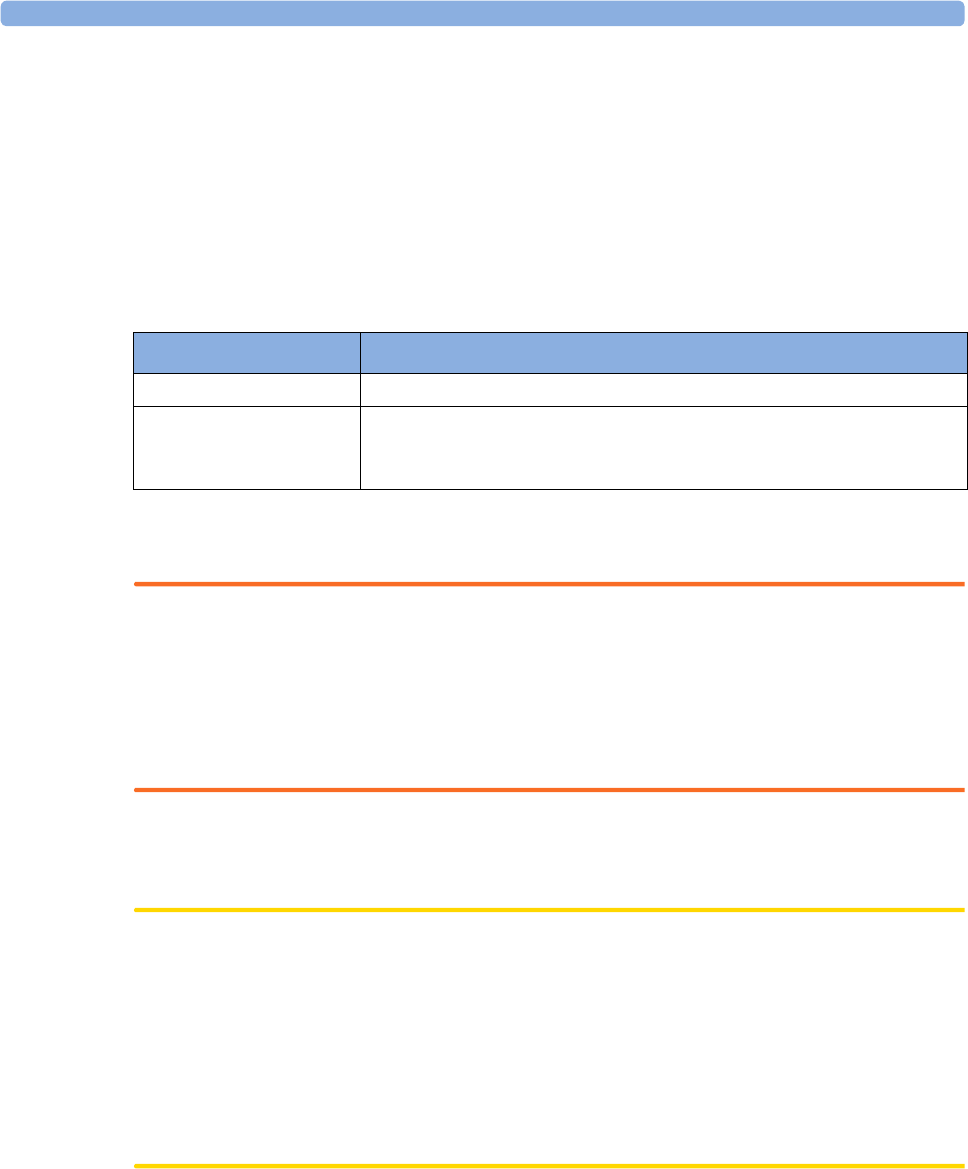
18 Monitoring EEG
284
EEG Reports
The content of EEG Reports is always the same and does not need to be configured.
To print an EEG Report, in the Setup EEG menu, select Print Report.
Alternatively, you can select the CSA and use the Print Report pop-up key to start the report.
To modify the buffer and trendline settings on the CSA Report, in the Reports menu, select CSA on
EEG Rep.. If you do not change these settings, the monitor will use the default settings with the
trendlines for the SEF numeric on and the buffer time from Buffer C.
EEG Safety Information
WARNING
Do not touch the patient, or table, or instruments during defibrillation.
When connecting electrodes and/or patient cables, ensure that the EEG leads and connectors do not
come into contact with other conductive parts or earth.
High-frequency Surgery - To reduce the hazard of burns, the EEG electrodes should not be located
between the surgical site and the electrosurgical unit return electrode.
EEG and Electrical Interference
CAUTION
Implanted devices (e.g. cardiac pace makers), other patient connected equipment, and other equipment
near the patient (e.g. high-frequency surgical units) can cause interference on the waveform, numerics,
and the CSA presentation.
Radiated field strengths above 1 V/m and patient signals ≤ 50 µV may cause noise on the EEG waves
at various frequencies. Therefore, it is recommended to avoid the use of electrical radiating equipment
in close proximity to the patient monitor. The noise does not influence the measurement accuracy.
Interference from ECG can be eliminated by adjusting the low filter settings.
CSA on EEG Rep. This menu entry lets you
Buffer Choose one of the three pre-configured buffer times.
Trend SEF
Trend MDF
Trend PPF
Switch the trendline of the specific numeric on or off.

19
285
19Monitoring BIS
Bispectral Index monitoring helps to monitor the level of consciousness of a patient under general
anesthesia or sedation in the OR and ICU. The BIS sensor is placed on the patient's forehead to
capture electroencephalographic (EEG) signals from which several numerics are derived, including a
single BIS value representing the level of consciousness. See the chapter on Specifications for the BIS
intended use statement.
The BIS Module provides the monitor with an EEG wave and the following numerics:
Bispectral Index (BIS). The BIS numeric reflects the patient’s level of consciousness. It ranges from
100 (fully awake) to 0 (suppression; no electrical brain activity).
Signal Quality Index (SQI). The SQI numeric reflects signal quality and provides information about
the reliability of the BIS, SEF, TP, SR, and Bursts numerics during the last minute.
It ranges from 0 to 100%:
SQI < 15%: the numerics cannot be derived
SQI 15% to 50%: the numerics cannot be reliably derived
SQI 50% to 100%: the numerics are reliable.
Electromyographic Activity (EMG). The EMG numeric reflects the electrical power of muscle
activity and high frequency artifacts.
EMG < 55 dB: this is an acceptable EMG
EMG ≤ 30 dB: this is an optimal EMG
(note that the minimum possible EMG is approximately 25 dB).
Suppression Ratio (SR). The SR is the percentage of time over the last 63-second period during
which the EEG is considered to be in a suppressed state.
Spectral Edge Frequency (SEF). The SEF is the frequency below which 95% of the Total Power is
measured.
Total Power (TP). The TP numeric indicates the power in the frequency band 0.5 to 30 Hz. The
useful range is 30 - 100 dB.
Bursts (BISx used with the Extend sensor only). The Bursts numeric helps you quantify suppression
by measuring the number of EEG bursts per minute, where an EEG burst is defined as a period of
activity followed and preceded by inactivity (at least 0.5 second).
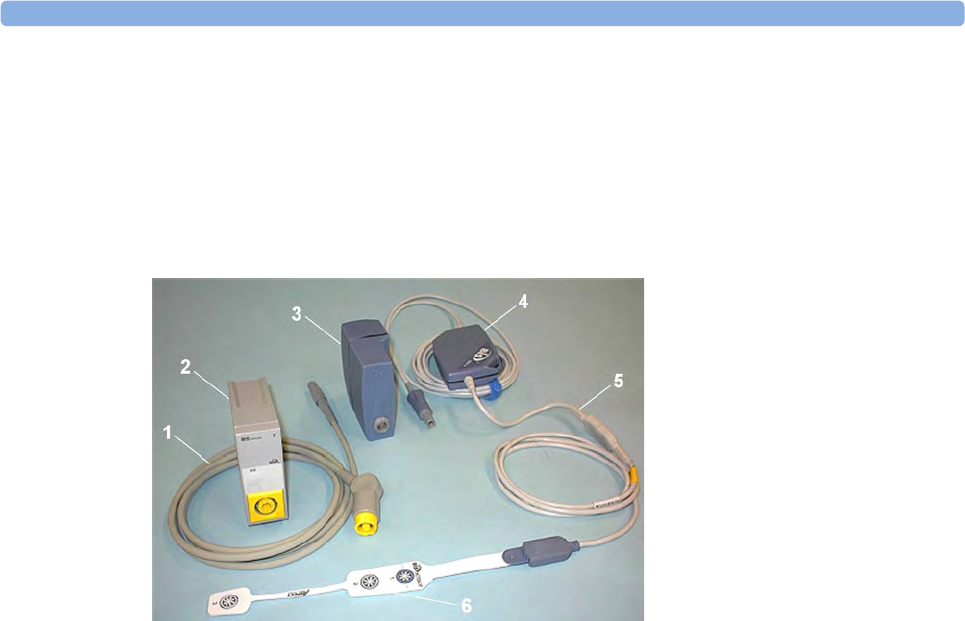
19 Monitoring BIS
286
BIS Monitoring Setup
There are two BIS solutions available for use with the M1034A BIS module: using the Digital Signal
Converter (DSC) and BIS Engine or using the BISx.
Monitoring BIS Using the DSC and BIS Engine
1If you are monitoring BIS with the DSC and BIS Engine,
a. Connect the BIS Engine to the BIS module using the BIS Engine Cable.
b. Connect the digital signal converter (DSC) to the digital signal converter port on the front of
the BIS Engine. Use the attachment clip to secure the digital signal converter near, but not
above the patient's head.
c. Attach the patient interface cable (PIC) to the digital signal converter (DSC).
2Attach the BIS sensor to the patient following the instructions supplied with the sensor.
Make sure that the patient's skin is dry. Be aware that a wet sensor or a salt bridge may cause
erroneous BIS and impedance values.
A variety of sensors are available for use in the OR and ICU environments.
3Connect the BIS sensor to the patient interface cable.
As soon as a valid sensor is detected, the impedances of all electrodes are measured automatically
and the results are shown in the BIS window.
1BIS Engine Cable
2BIS Module
3BIS Engine
4Digital Signal Converter (DSC)
5Patient Interface Cable
6BIS Sensor
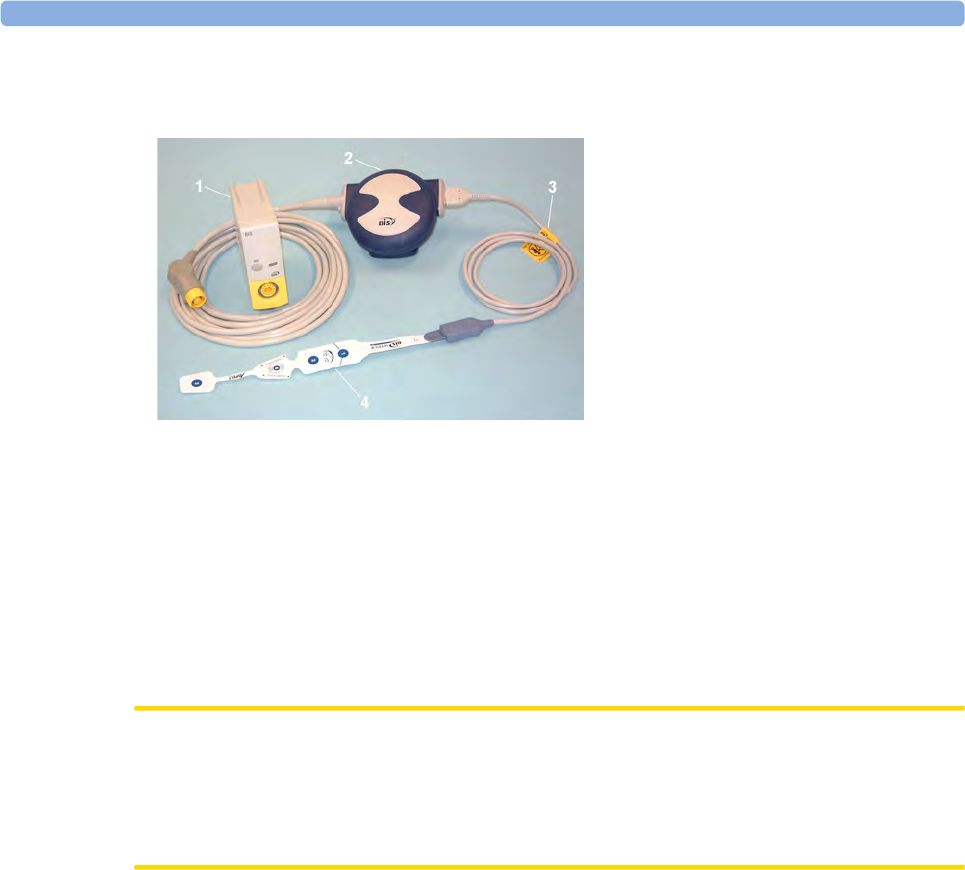
19 Monitoring BIS
287
Monitoring BIS using the BISx
1If you are monitoring BIS using the BISx,
a. Connect the BISx to the BIS module
b. Use the clip on the rear of the BISx to affix it in a position convenient for your patient, not
above the patient's head.
2Attach the BIS sensor to the patient following the instructions supplied with the sensor.
Make sure that the patient's skin is dry. Be aware that a wet sensor or a salt bridge may cause
erroneous BIS and impedance values.
A variety of sensors are available for use in the OR and ICU environments.
CAUTION
Ensure that the BISx does not come into prolonged contact with your patient's skin, as it may
generate heat and cause discomfort.
The BISx may remain connected to a patient during defibrillation as long as the sensor is not
located between the defibrillator pads.
3Attach the patient interface cable (PIC) to the BISx.
4Connect the BIS sensor to the PIC.
As soon as a valid sensor is detected, the impedances of all electrodes are measured automatically and
the results are shown in the BIS window.
Manufacturer's Information
BIS Engine, DSC, BISx, the Patient Interface Cable and the BIS Sensors are manufactured by
Covidien llc.
1BIS Module
2BISx
3Patient Interface Cable
4BIS Sensor

19 Monitoring BIS
288
BIS Continuous Impedance Check
This checks:
• the combined impedance of the signal electrodes plus the reference electrode.
This is done continuously and does not affect the EEG wave. As long as the impedances are
within the valid range, there is no notification of this check or its results.
• the impedance of the ground electrode.
This is done every ten minutes and takes approximately 4 seconds. It causes an artifact in the EEG
wave, and the message Ground Check is shown on the monitor screen during the check. If the
ground electrode does not pass this check, another check is started. This continues until the
ground electrode passes the check.
If the Continuous Impedance Check interferes with other measurements, it can be switched off. To do
this:
1In the Setup BIS menu, select Cont. Imp. Check.
2Select On or Off as required.
CAUTION
Switching the continuous impedance check off will disable automatic notification to the user of
impedance value changes, which may lead to incorrect BIS values. Therefore, this should only be done
if the check interferes with or disturbs other measurements.
BIS Cyclic Impedance Check
This measures the exact impedance of each individual electrode. It causes a disturbed EEG wave, and
the INOP BIS ImpedanceCheck is shown on the monitor screen during the check.
Starting a Cyclic Impedance Check
The Cyclic Impedance Check is automatically started when a sensor is connected. To manually start a
Cyclic Impedance Check:
•select
Sensor Check in the Setup BIS menu to toggle between On and Off, or
•select
Start Sensor Chk in the BIS window.
Stopping a Cyclic Impedance Check
The Cyclic Impedance Check stops automatically if the impedances of all electrodes are within the
valid range. To manually stop a Cyclic Impedance Check:
•select
Sensor Check in the Setup BIS menu to toggle between On and Off, or
•select
Stop Sensor Chk in the window.
If you stop a Cyclic Impedance Check before the ground electrode has passed, a ground electrode
impedance check will be started automatically. This cannot be switched off.
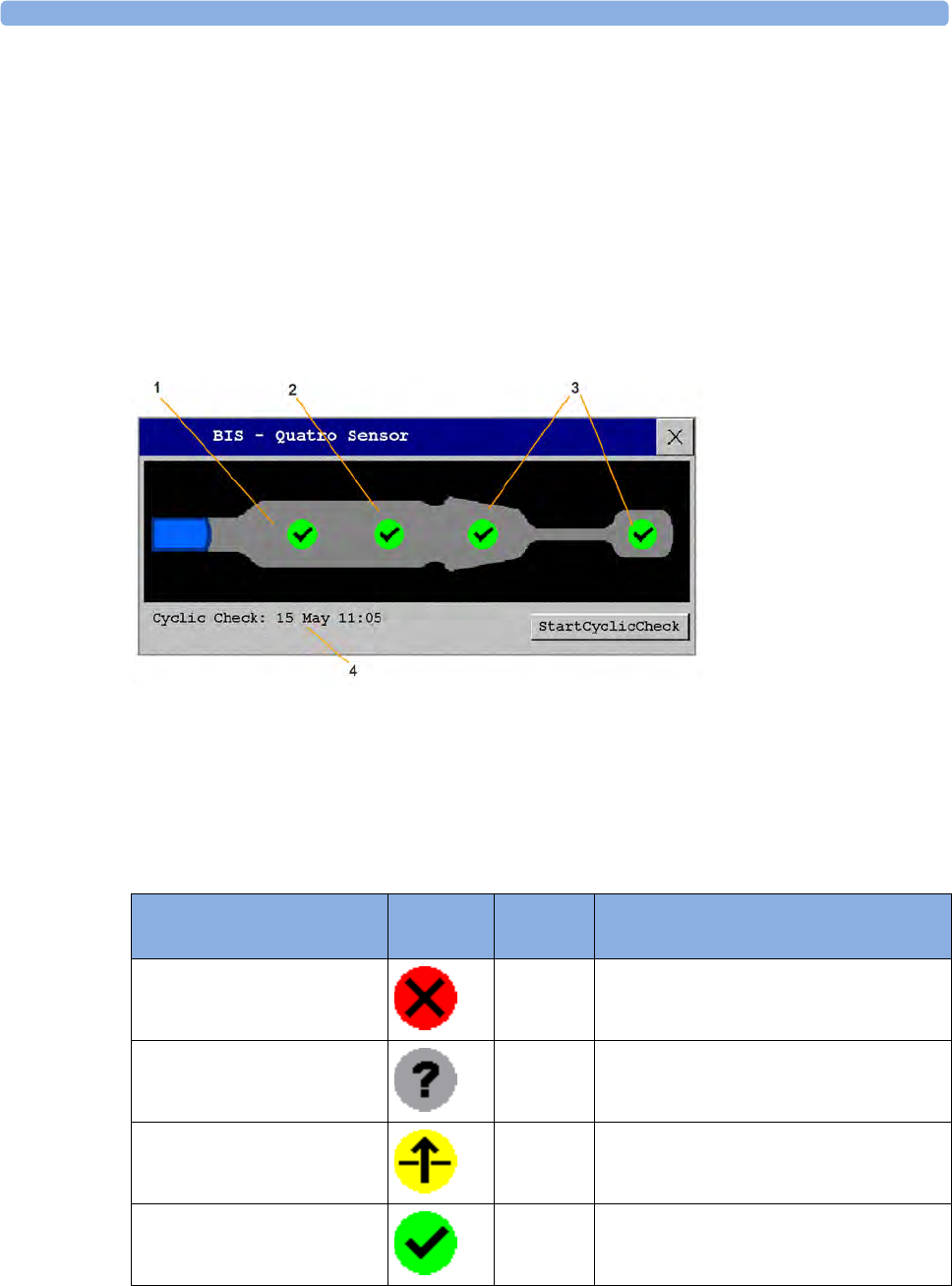
19 Monitoring BIS
289
BIS Window
To open the BIS window, in the Setup BIS menu, select Show Sensor.
The window may look slightly different on your monitor. The graphic in the BIS Window
automatically adapts to show the type of sensor you are using, showing three or four electrodes as
required. Each symbol in the graphic represents an electrode and illustrates the most recently-
measured impedance status of the electrodes. Although BIS may still be measured when the electrode
status is red or yellow, for best performance, all electrodes should be green.
In addition, if the measured electrode-to skin impedance of any electrode or electrode combination is
above the limit, or if disconnected electrodes are detected, an INOP will be issued, either BIS High
Impedance or BIS Lead Off.
1Reference Electrode
2Ground Electrode
3Signal Electrode(s)
4Time of the most recent cyclic check
BIS Impedance Indicators
Depending on your configuration, in addition to the symbols, the impedance value in kOhm may be
displayed.
Electrode-to-Skin
Impedance
Symbol Color Action
Electrode has no skin contact red Reconnect electrode, or check the sensor-
to-skin contact. If necessary, clean and dry
skin.
Too much signal noise,
impedance cannot be
measured
gray Check sensor-to-skin contact. Press sensor
more firmly to skin. If necessary, clean and
dry skin.
Impedance above limit yellow Check sensor-to-skin contact. Press sensor
more firmly to skin. If necessary, clean and
dry skin.
Impedance within valid range green No action necessary

19 Monitoring BIS
290
Changing the BIS Smoothing Rate
The smoothing rate defines how the monitor averages the BIS value.
To change the smoothing rate, in the Setup BIS menu, select Smoothing Rate then choose either:
–15 sec: this provides increased responsiveness to changes in the patient's state.
–30 sec: this provides a smoother BIS trend with decreased variability and sensitivity to
artifacts.
Switching BIS and Individual Numerics On and Off
To switch the BIS measurement on or off:
•In the Setup BIS menu, select BIS and then On or Off as required.
To switch individual numerics provided by the BIS Module on or off:
•In the Setup BIS menu, select SQI, TP, SEF, SR, EMG, or Bursts and then On or Off as required.
Changing the Scale of the EEG Wave
Changing the scale only changes the visual appearance of the wave. It does not affect the signal
analyzed by the monitor or printed in reports or recordings.
The scale information shown depends on whether gridlines are switched on or off for display. This
setting can only be changed in Configuration Mode.
1In the Setup BIS menu, select Scale to call up a list of wave scales.
2Select the required scale from this list.
– When gridlines are switched off, you can choose from the available scale values: 50 µV,
100 µV, 200 µV, and 500 µV. Scaling information is displayed as a vertical bar on the EEG
wave together with its height equivalent in µV.
– When gridlines are switched on, scales are defined as a range, either ± 25 µV, ± 50 µV, ±
100 µV, or ± 250 µV. Scaling information is shown in the form of gridlines.
Switching BIS Filters On or Off
The low and high pass filters screen out undesirable interference from the raw EEG wave display. The
notch filter removes line frequency interference. Filter settings affect the EEG wave and the SEF and
TP values, but they do not affect the BIS, EMG, SR, and SQI values.
The filter settings are set in Configuration Mode. You can switch all the filters on or off together in
Monitoring Mode.
1In the Setup BIS menu, select Filters.
2Select On or Off as required.

19 Monitoring BIS
291
BIS Safety Information
For information on the use of BIS in specific monitoring situations and on pharmacological responses
to the anesthetic agents Nitrous Oxide (when used as the sole anesthetic agent), Ketamine, and
Etomidate, contact Covidien to request a copy of their publication "A Clinician's Guide to the
Bispectral Index".
Considerations for Use
Due to limited clinical experience in the following applications, BIS values should be interpreted
cautiously in patients with known neurological disorders, those taking psychoactive medications, and
in children below the age of 1.
WARNING
Conductive Parts: The conductive parts of sensors and connectors should not contact other
conductive parts, including earth.
High-frequency Surgery: To reduce the hazard of burns in the high-frequency surgical neutral
electrode connection, the BIS sensor should not be located between the surgical site and the
electrosurgical unit return electrode.
Defibrillation: The BIS sensor must not be located between defibrillator pads when a defibrillator is
used on a patient connected to the patient monitor.
Securing Cables: To minimize the risk of patient strangulation, the patient interface cable (PIC) must
be carefully placed and secured.
CAUTION
Revisions: The system will only function if all component revisions are compatible. Otherwise, an
incompatibility INOP is displayed.
If the DSC has an older software revision than the BIS Engine, the DSC will automatically be
upgraded by the BIS Engine. Do not disconnect the DSC from the BIS Engine, or disconnect the BIS
module from the monitor, or switch the monitor power off within the first ten seconds after
connection, as this will disrupt a possible software upgrade and cause damage to the DSC.
Impedance Checks: Impedance checks may influence data acquisition of other
electroencephalographic devices.

19 Monitoring BIS
292

20
293
20Monitoring NMT
Neuro Muscular Transmission (NMT) and its measurement enables the evaluation of muscle
relaxation of patients under Neuromuscular Block by measuring the strength of muscle reaction after
electrically stimulating the dedicated motor nerve. The NMT Monitor electrodes are placed on the
patients skin over the ulnar nerve, a controllable current source delivers stimulation pulses to two skin
surface electrodes for the nerve stimulation, the muscle response is measured with an acceleration
sensor.
WARNING
The NMT measurement may not be used for neonatal patients and is therefore not supported in
the neonatal mode.
NMT stimulation current pulses may interfere with other sensitive equipment, for example,
implanted cardiac pacemakers. Do not use the NMT measurement on patients with implanted medical
devices unless so directed by a medical specialist.
Simultaneous use of the NMT with high frequency electrosurgical equipment may in unusual
circumstances result in burns at the stimulation site and can also adversely affect measurement
accuracy.
Do not use the NMT in close proximity to shortwave or microtherapy devices, there is a risk of
adversely affecting the NMT measurement.
Explosion Hazard: Do not use in the presence of flammable anesthetics or gases, such as a
flammable anesthetic mixture with air, oxygen or nitrous oxide. Use of the device in such an
environment may present an explosion hazard.
Never apply the electrodes trans-thoracically (across the chest) or transcerebrally (across the head),
there is a risk of seriously injuring the patient. Apply the stimulation electrodes close together as
described in the Instructions for Use.
Never apply electrodes to patients in areas where inflammation or injury is evident.
When you are connecting the electrodes or the patient cable, make sure that the connectors do not,
and cannot, come into contact with other conductive parts, or with earth.
Never touch the electrodes unless the stimulation has been stopped.
Patients with nerve damage or other neuromuscular problems may not respond properly to
stimulation. The NMT measurement may show unusual patterns when monitoring muscle paralysis in
these patients.
After repositioning the patient, check that the sensor is still applied and can move freely.

20 Monitoring NMT
294
CAUTION
NMT monitoring is intended as an adjunct in patient assessment and must be used in conjunction with
observation of clinical signs and symptoms.
NMT stimulation can be painful to a non-sedated patient. It is recommended not to stimulate before
the patient is adequately sedated.
Use only electrodes suitable for nerve stimulation deemed appropriate by the attending physician. Pay
special attention to current densities exceeding 2 mA r.m.s/cm2 for any electrodes.
Stimulation Modes
The NMT module provides four stimulation modes:
•Train-Of-Four (
TOF)
•Single Twitch (
Twitch)
• Post-Tetanic Count (PTC)
• Double-Burst Stimulation (DBS)
Train-Of-Four (TOF)
In this mode four stimuli are applied every 500 milliseconds (2 Hz). Each stimulation of the train
causes the muscle to contract. The fade in the individual response to each single stimulation provides a
basis for evaluation. The NMT Module then calculates a TOF ratio (TOFrat) value in % using the ratio
between the fourth and the first twitch. When fewer than four twitches are detected, the monitor
displays a TOF count (TOFcnt) value instead, this represents the number of responses to the four
TOF stimulation pulses.
Post-Tetanic Count (PTC)
The Post-Tetanic Count stimulation pattern starts with a sequence of four current pulses, delivered
every 500 milliseconds (2 Hz). If a muscle response is detected, the PTC sequence is stopped and the
responses are reported as TOF measurement. If there is no muscle response, the sequence continues
with a five seconds long tetanic stimulation of current pulses delivered at 50 Hz, followed by a pause
of 3 seconds, followed by 20 single current pulses delivered every second (1 Hz). Muscle response
detection is active only during the first 4 single pulses and the last 20 single pulses. During the last 20
pulses, the PTC value is incremented with each detected muscle response.
Single Twitch (Twitch)
If this mode is configured the NMT Module measures the response to single electrical stimuli applied
to peripheral motor nerves. The module sends a single pulse and measures the strength of the resulting
twitch, the module then calculates a Twitch Ratio (Twitch) value in %. If the displayed numeric is 80,
the strength of the measured twitch was 80% of that of the reference twitch, see “Calibrating the NMT
Measurement” on page 296.
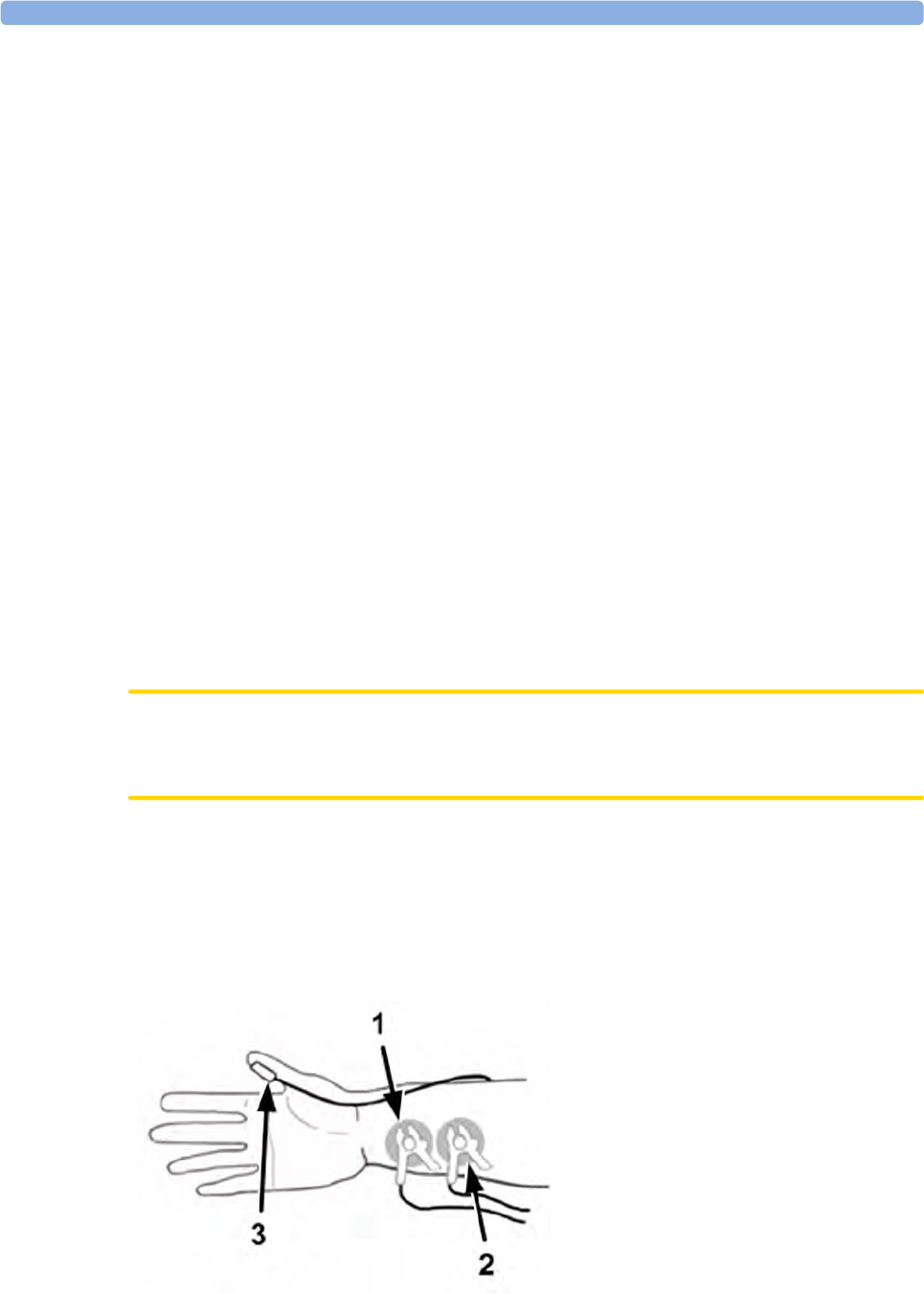
20 Monitoring NMT
295
Double-Burst Stimulation (DBS)
The Double-Burst stimulation pattern consists of a sequence of 3 current pulses delivered every 20
milliseconds (50 Hz), followed by a pause of 750 milliseconds, followed by another sequence of 3
current pulses delivered every 20 milliseconds (50 Hz). With each detected muscle response the DBS
Count (DBScnt) value is incremented.
Preparing to Measure NMT
The IntelliVue NMT Module is intended to be used only with adult and pediatric patients.
Skin Preparation for Electrode Placement
Good electrode-to-skin contact is important for a good stimulation pulse. Insufficient cleaning of the
skin can cause high skin resistance which could cause the stimulation to stop.
1Select sites with intact skin, without impairment of any kind.
2Clip or shave hair from sites as necessary.
3Wash sites thoroughly with soap and water, leaving no soap residue.
Do not use ether or pure alcohol as this dries the skin and increases the resistance.
4Dry the skin thoroughly.
Placing the NMT Electrodes and Transducer
Stimulation of the ulnar nerve in the wrist is preferred for routine monitoring.
CAUTION
To avoid unintentional electrical shocks always make sure that the NMT stimulation has been stopped
before touching the electrodes.
NOTE
Ensure that the thumb can move freely before applying the NMT sensor.
Place the electrodes on the prepared site over the ulnar nerve on the palmar side of the wrist; refer to
the figure below.
1Black cable clamp
2Red cable clamp
3Transducer

20 Monitoring NMT
296
1Place the distal electrode near the wrist.
2Place the proximal electrode 2 to 3 cm proximal to the distal electrode.
3Attach the Black cable clamp cable to the distal electrode, (see figure above).
4Attach the Red cable clamp cable to the proximal electrode, (see figure above).
5Place and affix the transducer with a large flat side against the palmar side of the thumb. The cable
should be attached in such a way that it does not 'pull' at the transducer and that movement of the
thumb is not obstructed. The more distal the transducer is placed on the thumb, the stronger the
acceleration signal.
CAUTION
Make sure that the lead wires cannot come into contact with external pacemaker or catheter wires.
Arm Position
The arm used for the NMT measurement, should be kept immobile during the whole procedure.
Taking NMT Measurements
NOTE
Both the NMT calibration and NMT measurement cannot be started:
– When the parameter (NMT) is switched off
– During the recovery phase after a measurement.
– During an ongoing automatic measurement cycle.
– During an ongoing calibration
– When error conditions have been detected.
– When no patient cable is connected.
Calibrating the NMT Measurement
With the NMT calibration the supramaximal stimulation current is determined and the reference
twitch is set to 100%. The reference twitch is the twitch at the supramaximal stimulation current when
the patient is not paralyzed. This must be done prior to administration of Neuromuscular Blocking
Agents (NMBA).
If the NMT Module is unable to establish a reference twitch, it uses an internal reference value for
single-twitch measurements.
NOTE
It is recommended that the patient be anesthetized before setting up the calibration twitch as nerve
stimulation can be painful.
Starting Calibration
1Either press the NMT key on the module, or select the numeric on the screen to enter the Setup
NMT window.
2Select Start Cal.

20 Monitoring NMT
297
3Select Confirm.
This automatically determines the supramaximal stimulation current and takes the reference twitch
(100%) at this current. If the NMT Module is unable to establish a reference twitch, it uses an internal
reference value for single-mode measurements.
Clearing a Reference Twitch
Clearing the Reference Twitch resets the supramaximal stimulation current and reference twitch to
default values. To clear the stored references:
In the Setup NMT window:
1Select Clear Reference.
2Select the Confirm key to reset the stored supramaximal stimulation current and reference twitch
to the default values.
NOTE
This function is not available if a calibration is in progress or no calibration data is stored.
CAUTION
Changing the stimulation current or pulse width also clears stored references.
Starting/Stopping NMT Measurements
To Start NMT measurements, in the Setup NMT window select the start key for the mode used, (for
example, Start TOF).
If you need to change the NMT settings after startup, stop the measurements, change the settings, then
restart the measurements.
To Stop NMT measurements, in the Setup NMT window select Stop, the measurement is immediately
interrupted.
NOTE
To stop NMT stimulation in an emergency, disconnect the NMT patient cable from the NMT Module.
During an automatic measurement cycle the yellow Start/Stop LED on the NMT Module is lit. If the
automatic cycle is stopped, or the measurement mode is set to manual the LED is off.
The LED flashes (in both modes) when a stimulation pulse is given.
CAUTION
To avoid unwanted electrical shocks DO NOT touch the electrodes when the yellow Start/Stop LED
is flashing on the NMT module.
NOTE
Take care when removing the transducer from the patient. Do not pull on the cable.

20 Monitoring NMT
298
Changing the NMT Measurement Settings
Selecting the NMT Stimulation Mode
In the Setup NMT window:
1Select Stimulation to enter the Stimulation window.
2Choose the Stimulation mode required:
–TOF
–PTC
–Twitch (if configured)
–DBS (if configured)
Measurement Mode
Allows the choice between manual and automatic NMT measurements.
In the Setup NMT window:
1Select Mode to open the Mode window.
2Select Auto or Manual mode.
NOTE
Auto mode is not available if the PTC or DBS stimulation mode is selected.
Selecting the Repeat Time (only available in Auto mode)
Repeat Time allows you to select the time intervals between automatic NMT measurements.
NOTE
This function is not available in the PTC and DBS mode.
In the Setup NMT window:
1Select Repeat Time to open the Repeat Time window.
2Select the required setting.
Selecting the Stimulation Current
To set the stimulation current.
In the Setup NMT window:
1Select Current to open the Current window.
2Select the required setting.
3If you are modifying a previously calibrated current, select Confirm.
CAUTION
Changing the stimulation current after calibration invalidates the stored reference data.
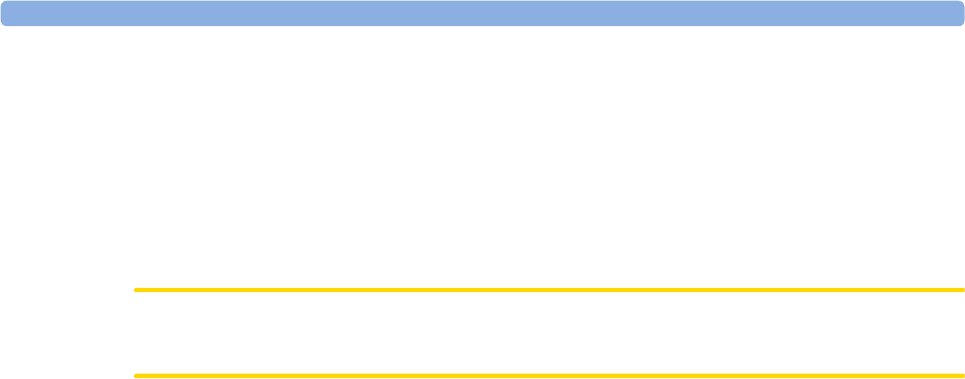
20 Monitoring NMT
299
Selecting the Pulse Width
Setting a Pulse Width sets the duration of the stimulation pulse.
In the Setup NMT window:
1Click on Pulse Width to open the Pulse Width window.
2Select the required setting.
3Select Confirm if you wish to modify a previously calibrated pulse width.
CAUTION
Changing the stimulation pulse after calibration invalidates the stored reference data.
Value Lifetime
Displays the time after which an NMT numeric value disappears from the resting display.
The Value Lifetime setting is visible (grayed out) in the Setup NMT window. The setting can only be
changed in the Configuration Mode.
NMT Tone Volume
Enters a list of selections to adjust the audio volume of the NMT stimulation tone. If not zero, each
NMT stimulation pulse is indicated by a short beep.
You can change the NMT Tone Volume in the Setup NMT window.
Alarms
TOFcnt High Limit Alarm
In the Setup NMT window:
1Select the TOFcnt High Lim.
2Select limit: 0, 1, 2, 3.
NMT Alarm Suppress
Depending upon your configuration, the TOFcnt high alarm maybe suppressed until the TOFcnt value
has reached 0 for the first time. This setting can only be changed in the Configuration Mode.
Understanding NMT Numerics
Numerics
TOF ratio (TOFrat), TOF count (TOFcnt), Twitch ratio (Twitch) and DBS Count (DBScnt) numerics
show the result of an NMT measurement. Together with these numerics either the time the
measurement was taken or the time until the next measurement is shown. The extended numeric
representation shown will only be available when using a screen designed to show it. The relative
strength of individual muscle responses, as measured by the acceleration sensor are displayed as a bar
graph.
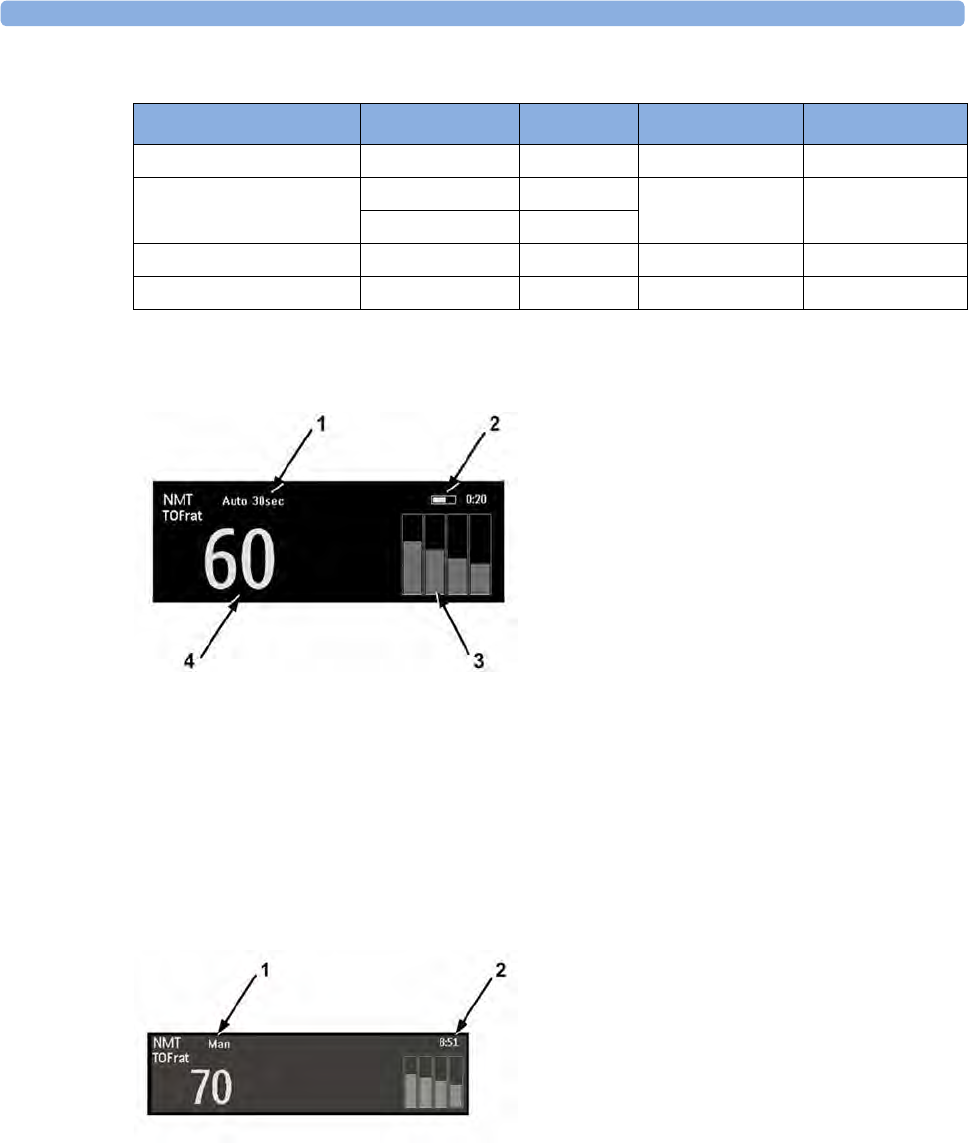
20 Monitoring NMT
300
Dependent upon the selected stimulation mode, the following information is provided:
Auto mode
The figure below shows the NMT measurement in Auto mode.
1NMT: Auto mode, Repeat Time 30 sec.
2Time until next measurement or the time the measurement was taken.
3Bar graph showing relative strength of each twitch. If a calibration has been made, the strength of
the calibration reference twitch is shown as a white line.
4TOFrat expressed as %.
Manual mode
The figure below the NMT measurement in Manual mode.
1NMT: Manual mode, (there is no Repeat Time).
2Time the measurement was taken (Timestamp).
Recovery Time
Most NMT stimulation modes require a minimum neurophysiological recovery time and during this
recovery phase no new stimulation can be started. Also, you cannot start a measurement or calibration.
Stimulation Mode Numeric Label Unit Trend Number of Bars
Single-Twitch Twitch %None 1
Train-Of-Four TOFrat %Yes 4
TOFcnt
Post-Tetanic-Count PTC Yes 1...20
Double-Burst DBScnt None 2

21
301
21Guardian Early Warning
Scoring
MX400/450/
500/550 Using an MX400/450/500/550 monitor with the appropriate option, you can use Guardian Early
Warning Scoring to get an early warning score based on vital signs and clinical observations collected at
intervals.
The goal of an early warning score is to help you recognize the early signs of deterioration in patients.
Depending on the score calculated, an Action List with appropriate recommendations is displayed.
There are no dedicated alarms associated with an Early Warning Score.
This functionality is highly configurable, to allow customization for the vital signs and observations
collected and the type of scoring used. Due to this configurability, your screens will probably not
exactly match the screens shown here. The workflow described here uses the special configuration
delivered with the monitor; if this configuration has been changed, you will not have all the
possibilities described.
WARNING
When using Guardian Early Warning Scoring, request a printout of the EWS scoring table and the
Action Lists from your configuration expert. Use them to verify that the configuration of the scoring
functionality matches your hospital’s requirements.
The IntelliVue Information Center will not display or trend any of the entered observations, the early
warning score, or the action list, but can pass these on to other connected systems.
Performing the Scoring Procedure
1To run Guardian Early Warning Scoring (EWS) you need to switch to the EWS/SpotCheck Screen
(or another Screen configured to show EWS).
a. Select the current Screen name in the monitor info line.
b. Select your EWS Screen from the list.
Or select the EWS/SpotChk SmartKey, if configured.
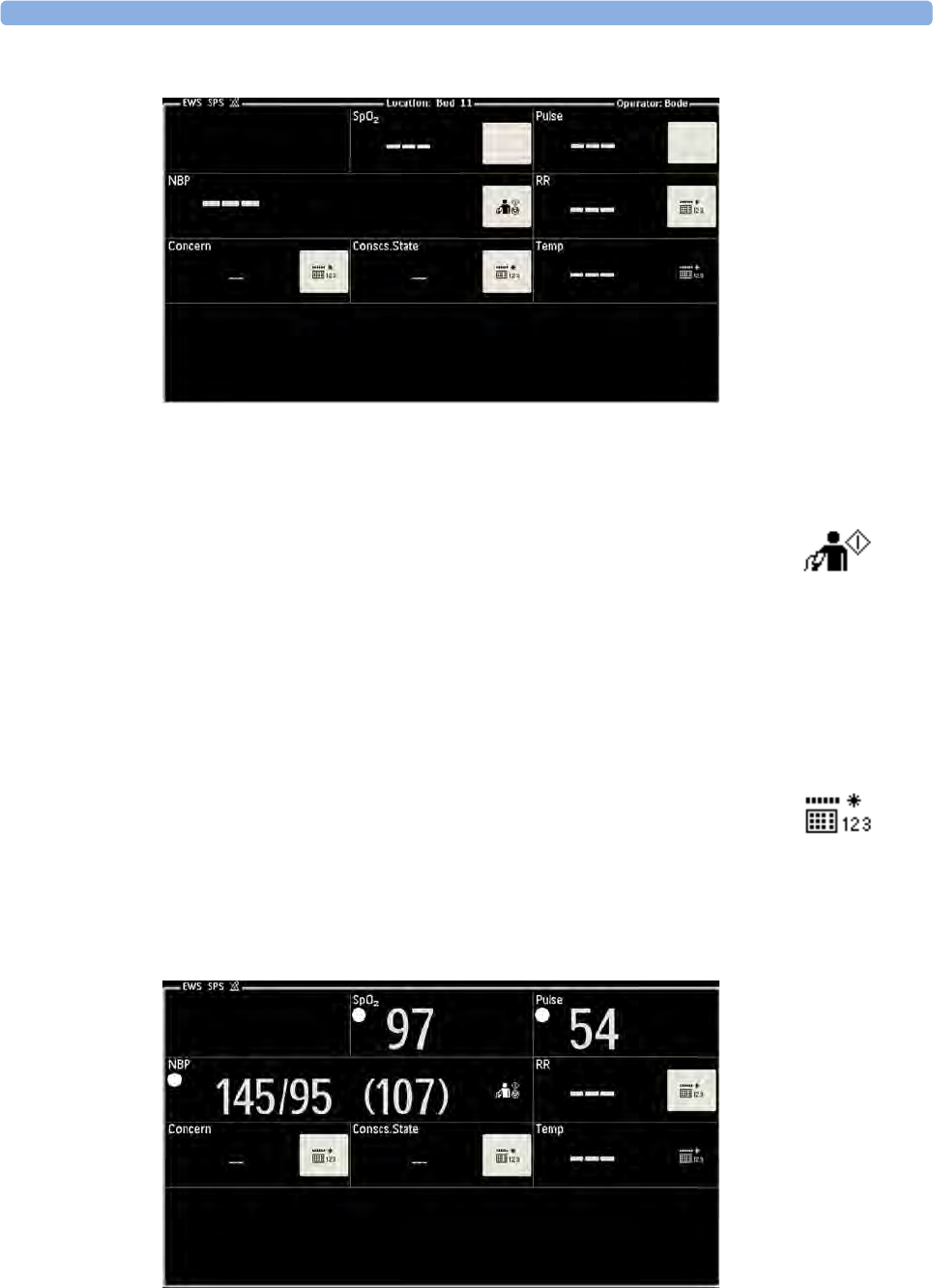
21 Guardian Early Warning Scoring
302
2If required, enter your operator data with a barcode scanner.
3Start collecting vital signs and entering observations. If the patient is continuously monitored, any
relevant currently measured vitals will appear automatically in the EWS Screen. Other vitals may
be measured by the monitor, or may need to be entered manually:
All vital signs and clinical observations with a white box are required, i.e. they must all be entered
for a complete SpotCheck record. If a keyboard symbol or start key is not in a white box, the
corresponding vital sign or clinical observation is optional.
When values have already been entered or measured, an existing white box will disappear.
• If NBP is not yet displayed on the screen, start a blood pressure
measurement with the start key.
•If SpO
2 is not already being measured, apply the SpO2 sensor and a short
time later the value will appear in the SpO2 box on the screen. Moving
dashes are displayed until the measured value is available.
• If the pulse rate is not already displayed from a continuously measured HR,
SpO2, or NBP, it will appear as soon as a blood pressure or SpO2
measurement has been made.
• Any vital sign or clinical observation you need to enter manually is indicated
by a keyboard symbol. Select the symbol to enter the missing data.
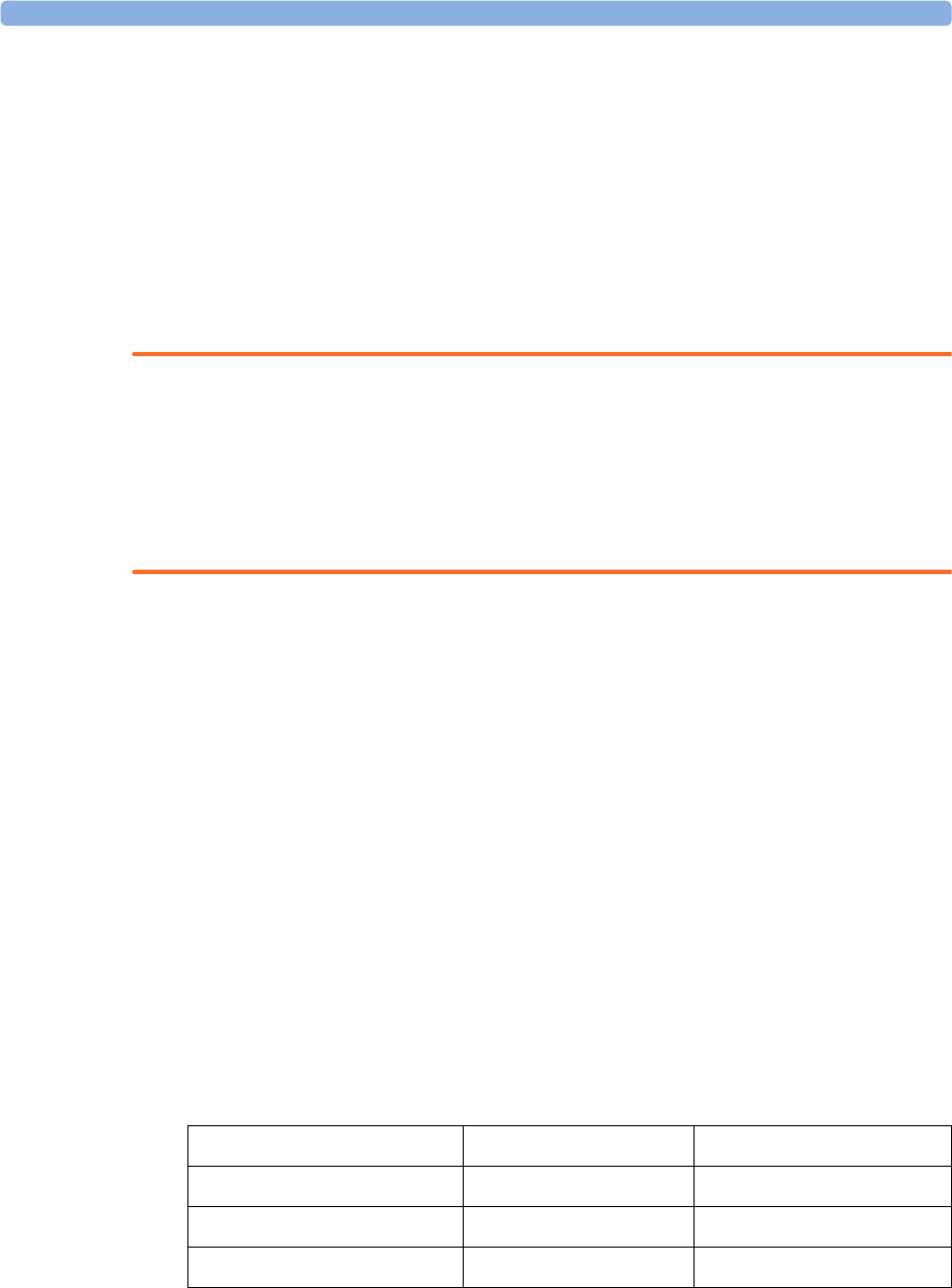
21 Guardian Early Warning Scoring
303
One complete set of vitals and observations, together with the calculated score(s), is referred to as
a SpotCheck record. Once all the required vitals have been entered or measured, the SpotCheck
record will be automatically stored after the configured freeze time.
If you want to store values before the end of the freeze time, you can select Store Vitals, to store
the values and close data collection. The Store Vitals key can also be used to store an incomplete
set of vitals at any time.
If you want to break off the Early Warning Scoring process without storing the SpotCheck record,
use the Clear VS key.
4To leave the EWS procedure and return to your standard monitoring screen, select the appropriate
screen from the screen list, or select the Previous Screen SmartKey (if configured).
WARNING
Alarms: There will be no alarm indications for measurements in the entry screen.
Values: The values shown in the entry screen do not have the same annotation as the measurement
values on other monitor screens. There is no special indication when a value has been manually
entered and no timestamp showing when the value was measured/entered. Be aware that values will
remain visible until the freeze time is at an end, even when the measurement itself is no longer
providing current values.
Understanding Guardian Early Warning Scoring
An early warning score is an assessment aid used to help recognize the early signs of deterioration in
medical patients. There are two basic types of scoring:
•Single Parameter Scoring (SPS) - A score is given for each of the vitals based on the measured/
entered value. Each vital sign has upper and lower thresholds assigned and the score registers the
status as either "inside the thresholds" (normal) or "outside the thresholds" (requires action).
When one of the vitals measured or entered is outside of the thresholds, an action is
recommended.
How does SPS work in Guardian Early Warning Scoring? SPS results in a color-coded circle
displayed next to the measured or entered values. The circle is white for the normal range and red
for outside of the thresholds. As soon as one of the values crosses a threshold, a corresponding
action will be recommended in the action list in the lower part of the screen. If several vitals have
values outside of the thresholds, this will result in a list of actions.
•Modified Early Warning Scoring (MEWS) - A subscore is given for each of the vitals based on
the measured or entered value. When all the required vital signs have been entered or measured,
the subscores are added together to give the MEWS score. Each subscore has a color coding, to
indicate the level of risk associated with it, for example:
Normal White Subscore 0
Observe - at risk Yellow Subscore 1
Warning Orange Subscore 2
Urgent Red Subscore 3
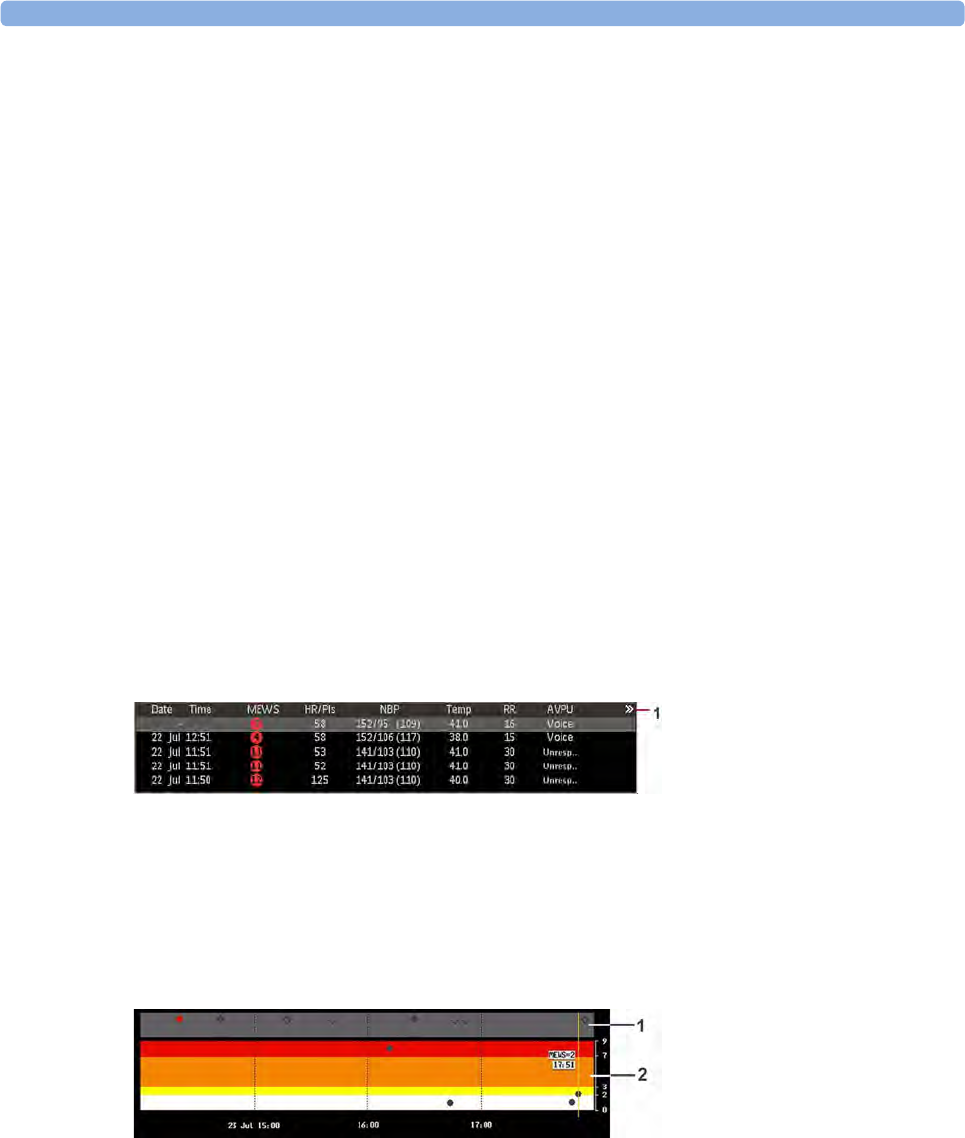
21 Guardian Early Warning Scoring
304
The MEWS score also uses the same color coding and risk levels, which determine the action that
is recommended.
How does MEWS work in Guardian Early Warning Scoring? MEWS results in a subscore
displayed in a circle with the corresponding color, next to each measured or entered value. Actions
are only then recommended when all required vitals have been measured or entered, and
the MEWS score has been calculated. The content of the action list depends upon the risk band
severity the MEWS score falls into. For each risk band severity (Normal, Observe - at risk,
Warning and Urgent) a separate action list can be configured.
Which Type of Scoring is Being Used?
The type of scoring used in your department, whether it is SPS or MEWS, or a combination of both,
was configured during your system setup. Normally, the configuration is based on an assessment
method already in use before the system was set up. Which vitals are needed for scoring, and which
actions are recommended for specific scores or risk bands, was also configured individually.
Independent of the type of scoring used, there may be additional vital signs or clinical observations
which are configured to be included in the entry screen. They do not contribute to scoring but are
included in the SpotCheck record.
Viewing EWS Trend Data
To view trend data, select the SpotChk Trend SmartKey. A tabular trend will be shown, with all
measured and entered data and any calculated scores. You can use the up arrow and down arrow keys
to scroll through the list of Spot Check records.
1This symbol indicates that more information is available than can be shown on the Screen. Select
the tabular trend to page through the remaining data columns.
Select the Graph/ Tabular pop-up key to view the data in graphical form. If any MEWS records are
present, they will be displayed in the color-coded risk bands (2) in the lower half of the graphical trend.
The MEWS score ranges corresponding to the colored bands are shown in the scale on the right.
Other record types, such as SPS, are displayed in the notification area (1). The symbols used are
explained in “Symbols Used in the Trend Views” on page 305.
Select the Detailed View pop-up key to see a combined graphical/tabular view for the currently
highlighted record. Use the cursor keys (right arrow and left arrow) to move from one record to the
next. The detailed data are shown above the graphical trend, with units and the corresponding SPS or
MEWS symbols. In the example below:
1Colored circle for SPS data
2MEWS score symbol (color coded according to the risk level)
3MEWS subscore symbol (color coded according to the risk level)
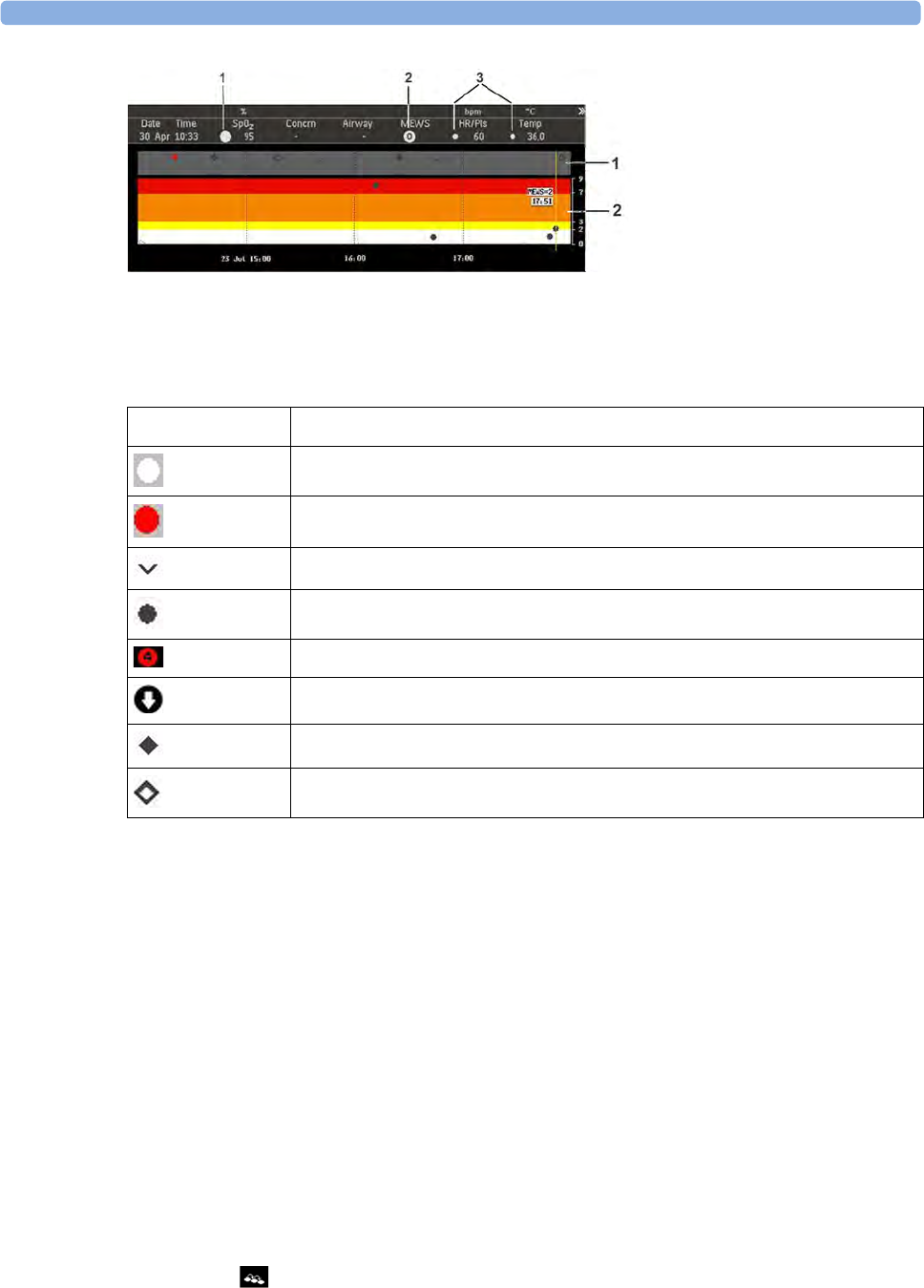
21 Guardian Early Warning Scoring
305
Symbols Used in the Trend Views
The following symbols can appear in the trend views:
Making Recordings
The trend data can be sent to a recorder using the recording pop-up keys.
•Record Selected makes a recording for the selected SpotCheck record.
•Record 8 h makes a recording for the last 8 hours of data.
•Record All makes a recording of all available SpotCheck records.
At the beginning of the recording, the title, the type of recording and the time will be printed. If
available, the patient's name, date of birth, ID and the type of scoring (protocol name) currently active
will also be printed.
Using Different Types of Scoring
If your department has more than one type of scoring configured, for example one type for patients
receiving oxygen and one for patients not, you can switch from one type to another.
To switch to a different scoring protocol, depending on which screen is currently displayed, either:
1Select the symbol.
Symbol Indicates
SPS SpotCheck record - normal range
SPS SpotCheck record - outside of normal range
Manual SpotCheck record
MEWS SpotCheck record
MEWS score (color depends on the risk level)
SpotCheck record triggered by a deterioration
SpotCheck record triggered by an alarm
SpotCheck record from an automatic vital signs measurement

21 Guardian Early Warning Scoring
306
2Select Protocol.
3Select the required protocol from the list.
or
1Select Main Setup.
2Select ProtocolWatch.
3Select Protocol.
4Select the required protocol from the list.

22
307
22Using a Telemetry Device and a
Monitor (PIIC only)
It is possible to assign a monitor and a telemetry device to the same patient, resulting in the
information from both devices being combined in one sector at the Information Center. This is called
"pairing" and when a telemetry device and a monitor are paired, the measurement data from the
telemetry device will be displayed on the monitor screen.
A telemetry device can be:
• any Philips telemetry device (only for indirect connections, see below).
• a TRx/TRx+ Intellivue Telemetry system transceiver.
• an X2 Multi measurement module with a telemetry interface, declared as a telemetry device and
with a telemetry equipment label.
For complete user information, including accessory listings and specifications, for the M4841A/
M4851A TRx/TRx+ IntelliVue Telemetry Transceiver, refer to the Instructions for Use provided with
the device.
How Can You Combine Devices?
•With an indirect connection, using standard telemetry transmission - the data are sent to the
monitor via the Information Center and arrive with a delay of several seconds at the monitor.
•With a direct connection to the monitor
– an X2 is connected via MSL cable to the monitor, or
– a telemetry transceiver with a short range radio adapter is assigned to an X2 which is
connected (Companion Mode) to an MX400/450, MX500/550, or MX600/700/800 host
monitor
the data arrive with a minimal delay on the monitor screen.
Indirect Connection - Manual Pairing
The telemetry device can be paired with the monitor at the Information Center or at the monitor. For
detailed information regarding pairing and configuration at the Information Center, see the
Information Center Instructions for Use.
To pair the monitor with a telemetry device at the monitor:
1Select Main Setup then Measurements
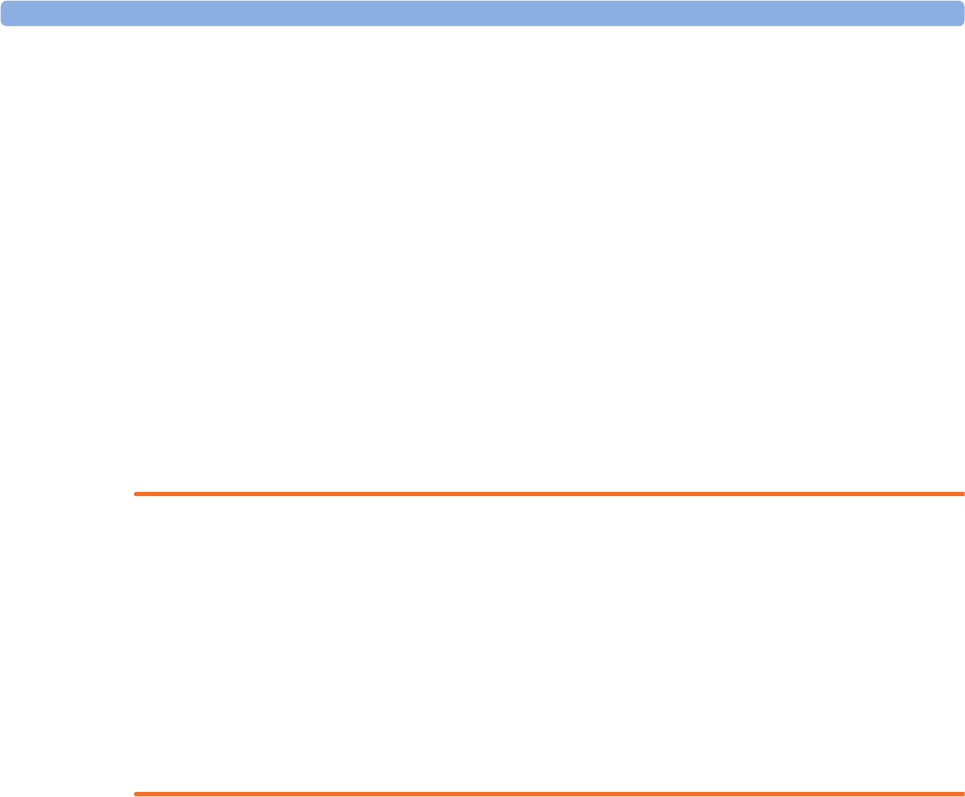
22 Using a Telemetry Device and a Monitor (PIIC only)
308
2Select Telemetry
The Setup Telemetry menu will appear with only one entry Paired Equipment.
3Enter here the equipment label of the telemetry device to be paired.
Pairing at the monitor is only possible when the monitor already has a connection to the Information
Center and the Information Center software version allows pairing at the monitor.
Own Patient Overview Window
The measurements from the telemetry device are shown in the own patient overview window on the
monitor. See “Own Patient Overview Window” on page 122
Direct Connection - Automatic Pairing
The following direct connections are possible:
• an X2, declared as a telemetry device, and connected with an MSL cable to a monitor.
WARNING
• When ECG is being measured with a telemetry device directly connected to the monitor, there will
be no ECG signal available at the ECG analog output or ECG Sync Pulse output and no
synchronization marks on the ECG wave. A No ECG Out message will appear in the ECG wave
channel.
• When a telemetry device is connected to the monitor, arrhythmia relearning is initiated, and again
when the telemetry device is disconnected.
• Controls on the Telemetry Device (e.g. nurse call) will be inactive when the device is directly
connected to the monitor except in the case when the monitor has no network connection and
data are transferred via the telemetry device.
Pairing an X2 With a Telemetry Interface to a Host Monitor
An X2 Multi-measurement module using an IntelliVue Instrument Telemetry interface will be
automatically paired when it is connected to a host monitor and it has been declared as a "telemetry
device" at the Information Center.
When the X2 is disconnected from the host monitor it will remain paired and the measurement data
will appear at the host monitor in the Telemetry Data window. After the X2 is disconnected from the
monitor it may take over 15 seconds until their data is displayed at the Information Center.
Pairing of a host monitor and a telemetry device, with all the related functionality, is only possible
when the host monitor is using a wired LAN connection or a wireless LAN interface (but not using
the IntelliVue Instrument Telemetry interface).
The X2 can also be manually paired to a host monitor without a direct connection, as described in
“Indirect Connection - Manual Pairing” on page 307.
Refer also to “Use Models With Telemetry” on page 309 for further related use modes.
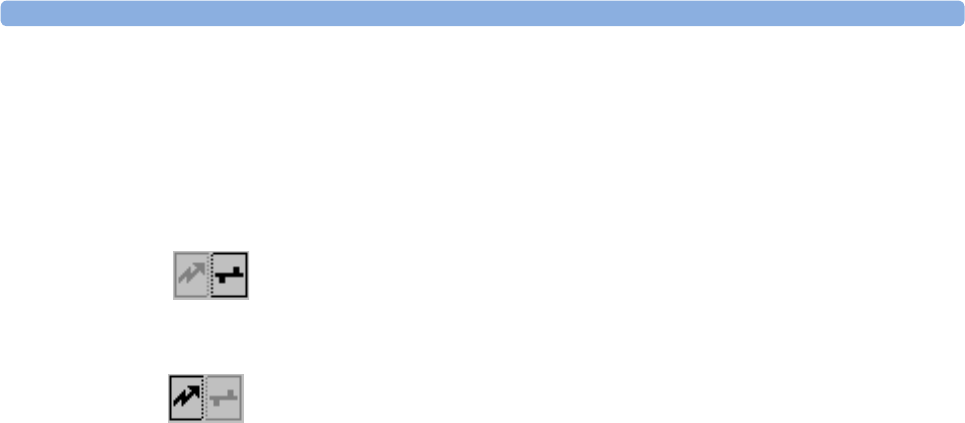
22 Using a Telemetry Device and a Monitor (PIIC only)
309
Unpairing the Monitor and Telemetry Device
If the patient will no longer be monitored with the telemetry device, or only with the telemetry device
and no longer with the monitor, you need to end the device pairing. After unpairing, the Information
Center will receive data exclusively from the monitor or from the telemetry device:
• select the Unpair To Mon. SmartKey to end pairing and have the Information Center receive the
measurement data from the monitor
• select the Unpair To Tele SmartKey to end pairing and have the Information Center receive the
measurement data from the telemetry device
or
use the Unpair function at the Information Center.
NOTE
The SmartKeys and pop-up keys for unpairing appear only on the monitor which is directly involved
in pairing.
Use Models With Telemetry
The standard use model combining a monitor and a telemetry device involves pairing the two devices
so that the data measured by the telemetry device appears on the monitor screen - and at the
Information Center in the same patient sector as the monitor data. The following variations are
possible:
1The monitor is paired with a telemetry transceiver - indirect connection
– telemetry data appear on the monitor
2An X2 is declared as a telemetry device and paired with an MX400/MX450, MX500/MX550, or
MX600/700/800 monitor - direct or indirect connection
– X2 measurement data appear on the monitor it is paired with
– a telemetry transceiver cannot be used with the X2
3A telemetry transceiver directly connected via SRR to an X2, that is connected (via Companion
Mode) to an MX400/450, MX500/550, or MX600/700/800 monitor - direct connection
– telemetry data appear on the host monitor
– telemetry transceiver is paired with the host monitor but is assigned to the X2
–the X2 must have no equipment label
The different variations require different configuration settings; refer to the Configuration Guide for
details.

22 Using a Telemetry Device and a Monitor (PIIC only)
310
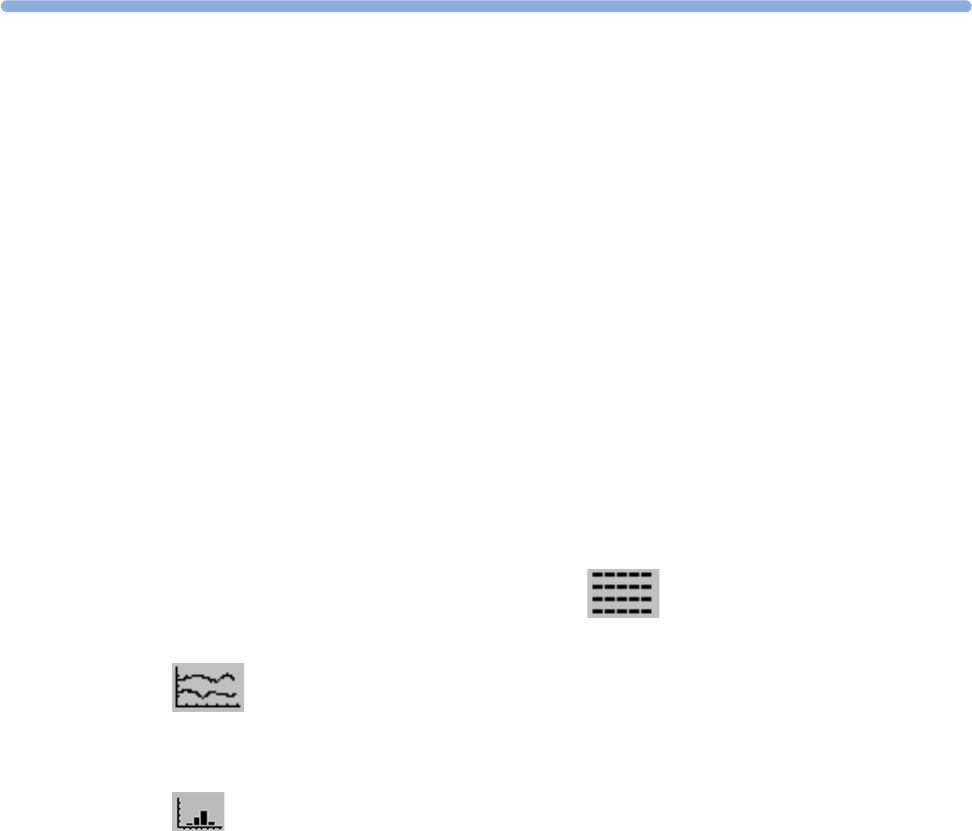
23
311
23Trends
Trends are patient data collected over time and displayed in graphic, tabular or histogram form to give
you a picture of how your patient's condition is developing. Trend information is stored in the trends
database for continuously-monitored measurements, such as ECG, as well as for aperiodically-
measured parameters, such as noninvasive blood pressure.
Viewing Trends
Trend information can be viewed embedded as a screen element on specially-designed Screens, or you
can open a trend window over the current Screen.
• To view trends embedded as a screen element, enter the Change Screen window, then select a
Screen designed to show an embedded trend window.
• To open the tabular trends window over the current Screen, select Main Setup, Trends, then
Vitals Trend, or select the Vitals Trend SmartKey .
• To open the graphic trends window over the current Screen, select the Graph Trend SmartKey
.
• To open the histogram trend window over the current screen, select Main Setup, Trends, then
Histogram, or select the Histo- gram SmartKey.
The trend windows open displaying the most recent data and are updated as new data is stored. A
timescale along the bottom or the top of the screen shows you where you are in the trends database.
The preview column on the right-hand side shows the latest available measurement value. The preview
column is updated every five minutes or whenever an NBP or other aperiodic measurement is
completed.
A question mark (?) beside a value means that the data may not be reliable, due perhaps to an INOP
condition in the measurement.
Your monitor screen may look slightly different to the examples shown in this chapter.
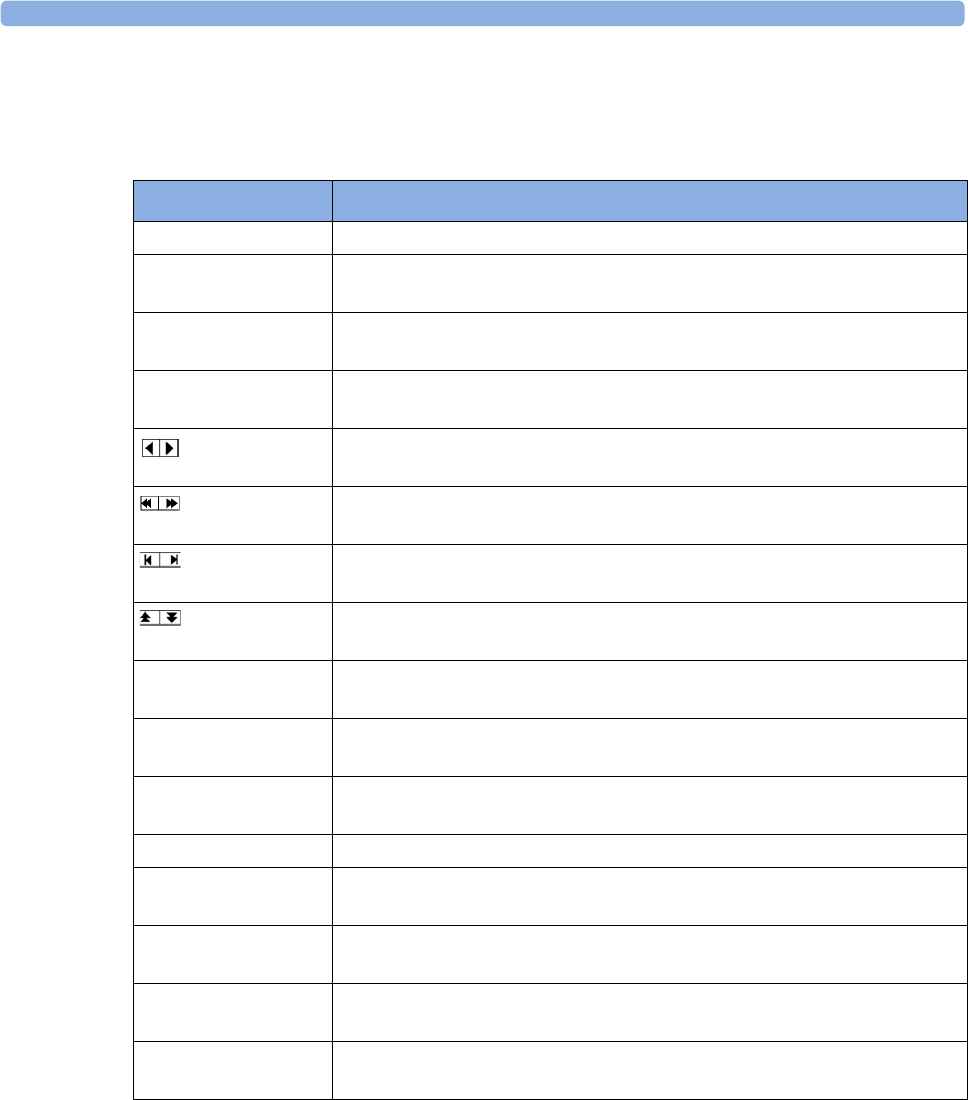
23 Trends
312
Trends Pop-Up Keys
When you open the graphic, tabular or histogram trends window, a selection of pop-up keys appears to
let you navigate through the stored trend data and carry out trends-related tasks.
Pop-Up Keys Selecting this pop-up key lets you....
Select Group see a pop-up list of trend groups and select a group for viewing.
Select Interval see a pop-up list of available data resolution settings and select the level of
detail shown in the trend view.
Print/ Record print a tabular trends report or make a tabular trend recording of the data in
the current window. The report will use the current trend interval settings.
Print print a graphic trends report or histogram report of the data in the current
window. The report will use the current trend interval settings.
move the cursor one step to the left or right to navigate through the trends
database timeline.
move the cursor one page to the left or right to navigate through the trends
database timeline.
jump to the beginning or the end of the trends database to see the most
recent or oldest trend information stored.
scroll up and down the screen to see measurement trends that do not fit in
the current view.
Vital Signs open the current trend view in tabular form. The displayed time period and
resolution stay the same.
Graph Trend open the current trend view in graphic form. The displayed time period and
resolution stay the same.
Data Source select a realtime SpO2 or realtime system pulse or trended data for display in
the histogram.
Period select a time period for the histogram.
Select Range define the range of values to be displayed in the histogram by selecting an
upper and a lower limit.
Column select a column width for the histogram. For each width selection the
resulting number of columns is shown.
Curve On/Off switch the display of the cumulative value columns in the histogram on or
off.
Adjust Cursor open a new set of pop-up keys for switching on cursors and setting their
positions.
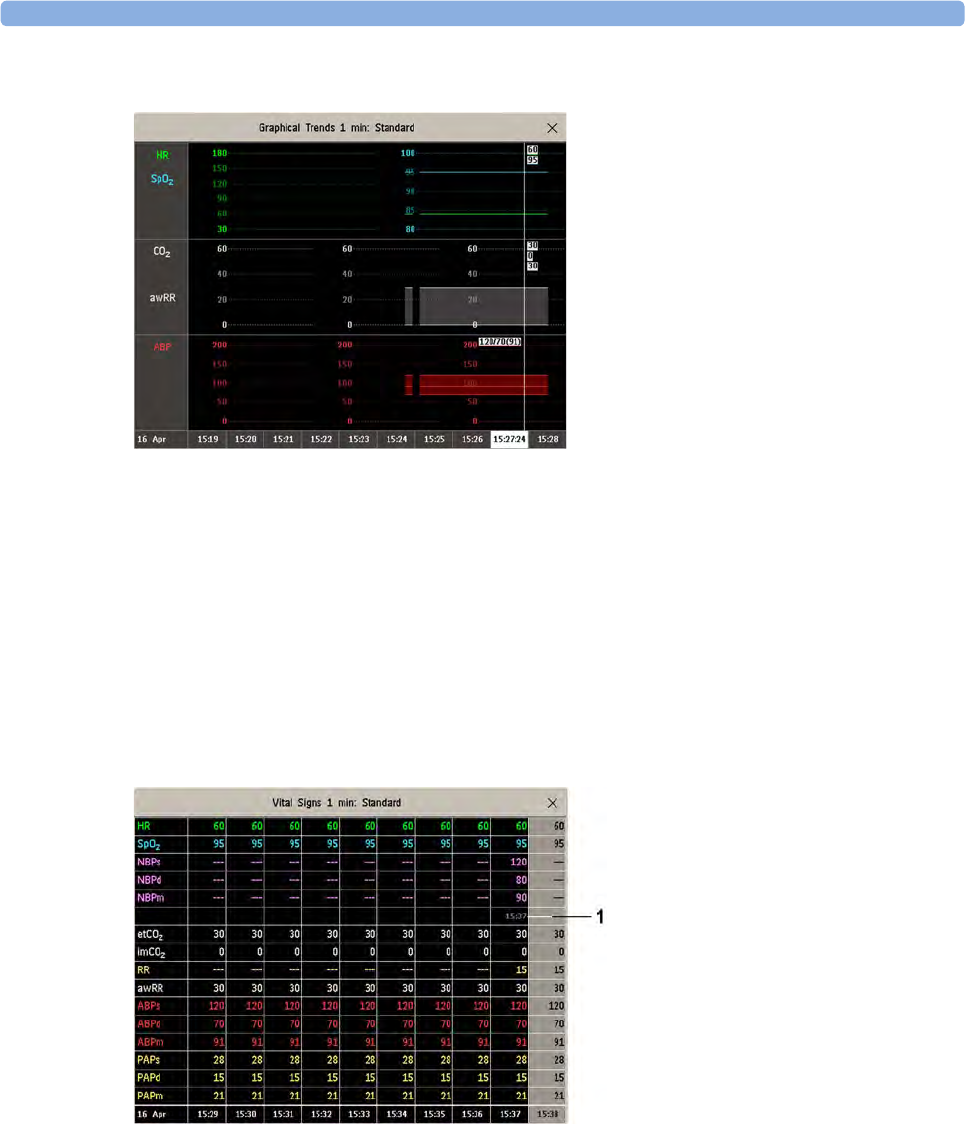
23 Trends
313
Viewing Graphic Trends
A cursor spanning all measurements in the trend group helps you to navigate through the trends
database and shows you your current position in the database. When the cursor is moved across the
time line, the values measured at the cursor time are shown in the right hand column.
In graphical trends, aperiodic measurement trends are shown as an asterisk, NBP has a special symbol.
To use the trend cursor to navigate in time through the trends database,
1Select the graphical trend or the arrow pop-up keys to activate the cursor.
2Use the arrow pop-up keys to move the trend cursor backwards and forwards in time, or
3Place the cursor at a specific time by touching the graph.
Viewing Vital Signs Trends
1Aperiodic values are shown with a timestamp
The currently-selected column is highlighted. The values can be configured to display in the same
colors as the waves and numerics on the realtime display.
Any values available for display before the next scheduled update are shown in the right hand column,
with a timestamp in brackets.
If more than one value is available for an aperiodic trend for a certain trend period, all measured values
are stored in the database and the value closest to the timestamp is shown in the Vital Signs display
marked with an arrow.
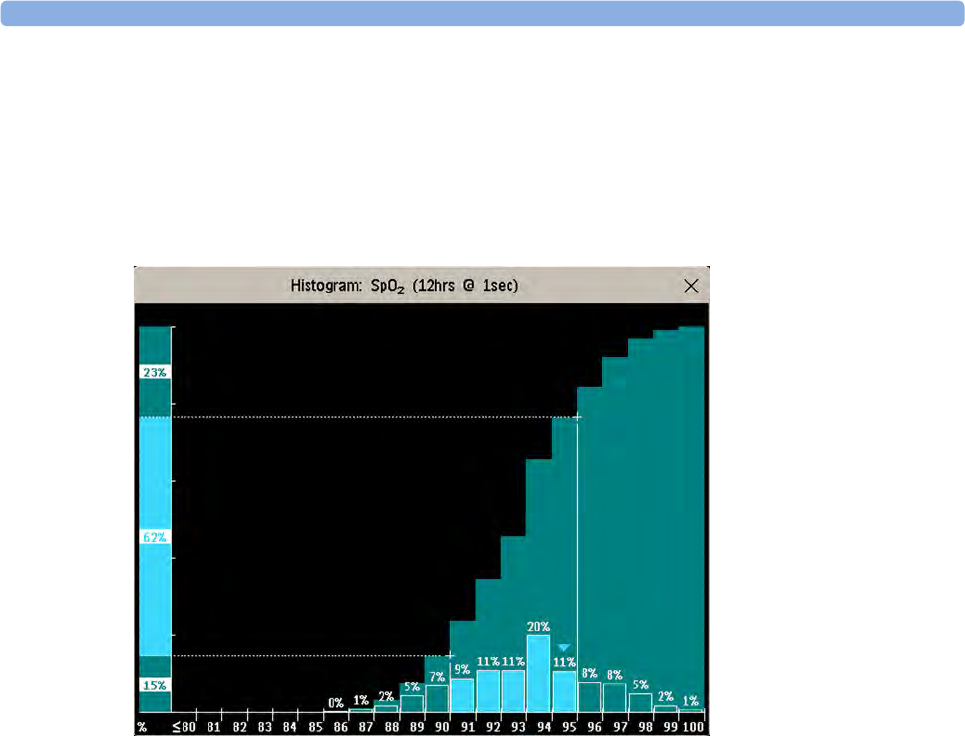
23 Trends
314
To view the Vital Signs trend with one column for each NBP measurement (see “Defining the Column
Interval Using the NBP Measurement” on page 317):
1With the Vital Signs trend open, select Interval.
2Select NBP from the pop-up list.
Viewing Histogram Trends
The title line of the window shows the label of the trended measurement and the resolution of the
data; in the SpO2 histogram above, 1 second realtime samples.
The horizontal axis shows the range and unit of the displayed measurement. The vertical axis shows
the percentage of time.
The columns in the foreground show how much of the time the measured values fell into this range on
the scale. For example, in the histogram above, the SpO2 value was between 93 and 94% during 20%
of the last 12 hours. The display of the percentage value above each column, can be switched on or off
by selecting the histogram. The arrow mark over a column shows that the currently measured value is
also in this range. The columns are displayed in the same color as the measurement data.
The columns in the background show the cumulative percentage value: each of the foreground
columns is added to the sum of those columns to the left of it. The cumulative columns can be
switched off using the Curve On/Off pop-up key.
A question mark is displayed if less than two-thirds of the data are valid samples.
The pop-up keys in the window can be used to change the measurement, the time period and the
range. You can also print out a histogram report.
The SpO2 and System Pulse histograms can use trended data or realtime data with 1 second samples.
Using Cursors
You can set two cursors that span a "corridor", for example to divide a histogram into in-range and
out-of-range areas. Or you can set both cursors to the same value and use them as one cursor to divide
the histogram into an upper and a lower segment.

23 Trends
315
The cursors are represented by a vertical line from the x-axis and a dotted horizontal line from the y-
axis. When two cursors are used, they can be locked using Lock/ Unlock, so that the distance between
them is fixed. Moving a cursor will then move both together. Select Lock/ Unlock again to separate
the cursors and move them independently again.
A summary column on the y-axis shows the lower, middle and upper ranges as determined by the
cursor positions. When only one cursor is used there will be a lower and an upper range. Color shading
is used to differentiate the ranges in the cumulative column and to highlight the columns between the
cursors.
Setting Up Trends
Trends are set up in Configuration Mode. You can make temporary changes to trends settings such as
trend groups, priorities, or scales in Monitoring Mode. The general settings for all Trends are under
Main Setup, Trends.
Settings for a single segment in graphical trends or for the corresponding trend group can be made
more easily in that segment menu.
Making Segment Settings
The Graphical Trends window is divided into measurement segments, each of which has its own
settings.
To enter the segment menu,
• select the left hand column of the segment, where the measurement label is displayed.
Expanded View
To expand the segment to fill the Graphical Trends window,
•in the Segment menu, select Expand to have that segment enlarged to fill the window.
In the expanded view, you can also highlight a measurement to make it more easily visible (for example
when multiple ST trends are in one segment). To highlight a measurement,
•in the Segment menu, select Highlight repeatedly until the highlight is on the required
measurement.
To return the segment to its original size,
•in the Segment menu, select Expand again.
Trend Scales for Segment Measurements
To change the trend scales for a measurement in the current segment:
1In the Segment menu, select the measurement label.
2Select Upper to change the upper limit of the scale or Lower to change the lower limit of the scale.
Optimum Scale
To have the monitor automatically select an optimum scale for viewing, based on current values,
•in the Segment menu, select Optimum Scale.
This scale change is temporary. When the graphical trend window is closed the scale reverts back to
the setting in Parameter Scales.

23 Trends
316
To switch off automatic optimum scaling,
•in the Segment menu, select Optimum Scale again.
Trend Group
To add or remove measurements for this trend group or change the order of the existing
measurements:
1In the Segment menu, select Change Group.
2Use the Add, Change, Sort Up and Sort Down pop-up keys to change or re-order the group as
required.
No. of Segments
In an embedded graphical trend window, you can select the number of segments to be displayed in the
Segment menu:
•In the Segment menu, select No. of Segments.
Trend Groups
The measurements grouped in trend groups define the trends displayed together in the Vital Signs or
Graphical Trends windows and printed in trends reports and recordings. The sequence of the
measurements in the group defines the order in which they are displayed. Measurements listed
between dotted line separators are displayed overlapping. The trend group All contains all available
measurements, you cannot change the order or selection of this group.
To change the selection of measurements in a trend group, either use the Change Group setting in the
Segment menu or:
1Select Main Setup, Trends, then Trend Groups.
2Select the Trend Group you want to change and use the pop-up keys to Add, Change, or Delete
the selection of measurements trended.
To temporarily change the order in which the measurements are displayed in a group,
1Select Main Setup, Trends, then Trend Groups.
2Select the Trend Group and then the measurement you want to move and use the Sort Up/Sort
Down pop-up keys.
Trend Interval
The trend interval defines the resolution of trend data shown on the Screen. High-resolution data is
especially suited for neonatal applications, where the clinical situation may change very quickly. In
adult monitoring, where the patient's status typically changes more gradually, a longer trend may be
more informative.
To set the trend resolution, in the Vital Signs or Graphical Trends window,
• Select the Select Interval pop-up key and then select the required interval from the list.
Trend Priority
The monitor stores trend information for all monitored measurements, if configured to do so. (Data
from VueLink or IntelliBridge modules cannot be included in trends when the label is a free-text label.)
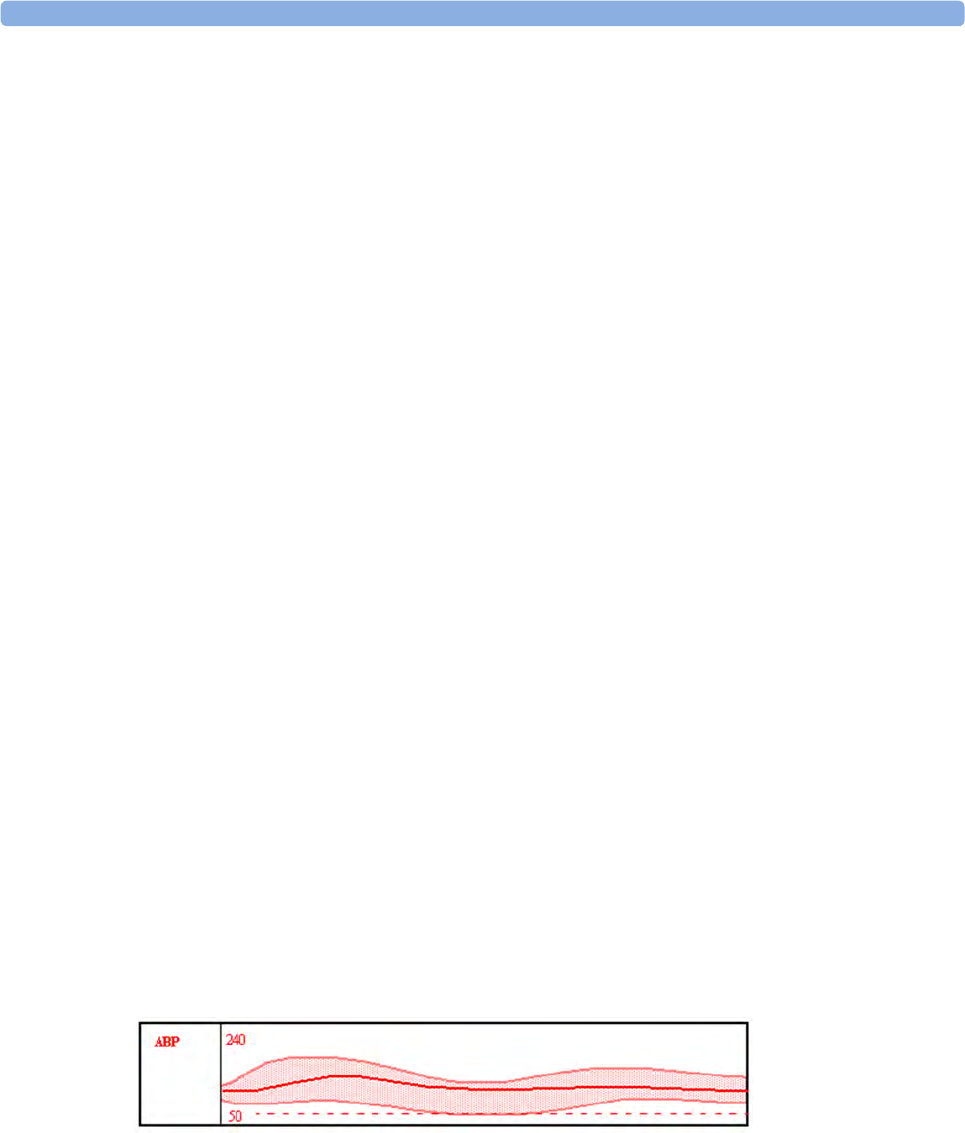
23 Trends
317
If your configuration restricts the number of measurements trended, you must choose which
measurements will be included. A priority list is used to select the trended measurements.
To see the measurement priority list for trending,
1In the Main Setup menu, select Trends.
2Select Trend Priority.
To add measurements to the priority list,
1Select the pop-up key Add and choose from the pop-up list of available measurements.
2Use the Sort Up and Sort Down pop-up keys to change the priority order.
Trend Parameter Scales
Parameter scales define how the trend waveform will appear on the screen and in trend reports.
Separate scales can be set for adult, pediatric, and neonatal patient trends.
To change the trend parameter scales settings, either use the Scale setting in the Segment menu or:
1In the Main Setup menu, select Trends.
2Select Parameter Scales.
3Select the measurement or parameter you want to change from the list.
4Select the pop-up key Change to call up the Scale menu.
5In the Scale menu, select the parameter label you want to define settings for. Select Adult, Pedi,
and Neo and use the pop-up keypad to enter new upper and lower scale definitions.
Graphical Trend Presentation
Graphical trends and screen trends for measurements with compound values (for example ABP or
CO2) can be viewed in line or band form.
To change the presentation style,
1Select Main Setup then select Trends.
2Select Global Style and choose
•Line to display the trends as a continuous line
•Band to fill the area between the trend lines, for example, between the systolic and diastolic
pressures, with color.
This sample ABP trend shows the continuously-measured values for the systolic, diastolic and mean
pressures displayed in band form.
Defining the Column Interval Using the NBP Measurement
You can have the NBP measurement determine the interval between the columns on the Vital Signs
trend. Each NBP measurement will generate a column in the trend table. The values for the other
measurements are added to the column to provide a complete vital signs set for the NBP measurement
time.

23 Trends
318
To use the NBP measurement to determine the column interval:
1Select Main Setup then Trends.
2In the Trends menu, select Setup VitalSigns.
3In the Vital Signs menu, select Column and then NBP from the pop-up menu.
Making Settings for Histograms
To make settings for histograms, first display the Trends window by selecting Main Setup then
Trends.
Setting the Default Measurement
To set the default for the measurement data to be used in the histogram, in the Trends window,
1Select Setup Histogram.
2Select Data Source.
3Select either
•Realtime Data, and then a realtime SpO2 or Pulse, or
•Trended Data and then select the required measurement from the trended data list.
Setting the Default Period
To set the default period for the histogram, in the Trends window,
1Select Setup Histogram.
2Select Select Period and select the required time period from the list.
Setting the Unit for the Data Source
To set the unit for the selected measurement data source, in the Trends window,
1Select Setup Histogram.
2Select Unit and select a unit from the list.
Switching Cumulative Value Columns On and Off
To switch the display of the cumulative value columns on or off, in the Trends window,
1Select Setup Histogram.
2Select Curve On/Off.
Setting the Range for the Measurement
To set the range to be displayed on the x-axis, in the Trends window,
1Select Setup Histogram.
2Select Range, then enter a value for the lower end of the range and the upper end of the range.
Displaying Percentages on Columns
To switch the display of the percentage values above the columns on or off, in the Trends window,

23 Trends
319
1Select Setup Histogram.
2Select Column Value.
Switching the Cursor On and Off
To switch the cursor and the summary column on or off, in the Trends window,
1Select Setup Histogram.
2Select Cursor.
Setting Initial Cursor Positions
To set the positions of the cursors, in the Trends window,
1Select Setup Histogram
2Select Cursor Range then enter a value for the upper and lower cursors. If both have the same
value only one cursor will be shown.
When viewing a histogram, the data source, the period, the range, the column width, the display of the
cumulative value columns and the cursor positions can be changed using the pop-up keys.
Documenting Trends
To print a Vital Signs or Graphical Trends report,
•in the Vital Signs or Graph Trends window, select the pop-up key Print to print a report for the
trend group currently on the monitor screen.
Reports include the most recent information in the trends database and extend backwards in time
according to the selected trend interval and your monitor's configuration. Trends reports can be
printed on central or local printers.
To make a Vital Signs recording,
•in the Vital Signs window, select the Print/ Record pop-up key, then select the Record Vitals pop-
up key.
Vital Signs recordings print the trend data for the current group and trend period shown in the Vital
Signs window.
Trends Databases
Depending on the purchased options and the monitor's configuration, the trends databases store
information for up to 100 measurements for up to 96 hours.
The values in the trends database are stored as measured by the monitor, they are not averaged values.
The trend resolution defines how often a value is stored. In general, if more than one value is available
for storage in the trends database, the most recent value is used. Some values in the trends are marked
with arrows. This indicates that for this time period, more values were available and the most recent
one is shown.
Example database configuration
In this example, we see that the monitor stores the most recent data at the highest resolution, older
data are stored at a lower resolution.
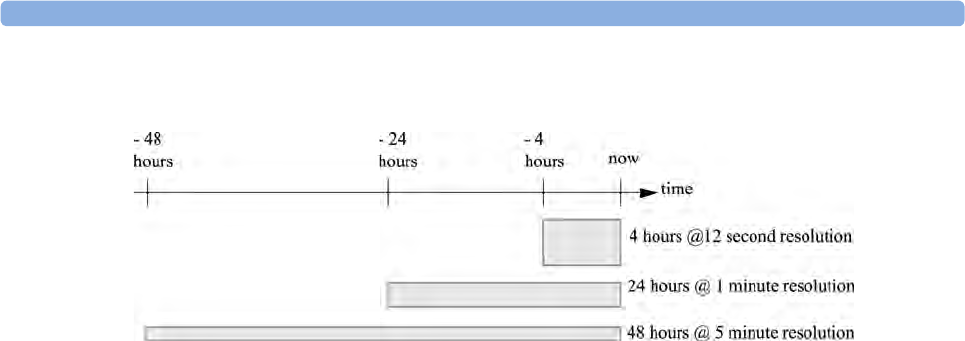
23 Trends
320
"4 hours @ 12 second resolution" means that the monitor stores trend data every 12 seconds, for the
most recent four hours.
Aperiodic Trends Database
Aperiodic trends do not count toward the maximum number of trends allowed by the trend
configuration. Trend data for aperiodic measurements is stored in a separate database and
timestamped with the measurement time.
Trending Multiple-Value Measurements
Some measurements generate multiple values, for example invasive pressure measurements can
provide systolic, diastolic, and mean values. These values are trended as separate measurements.
Screen Trends
Trends configured to display permanently on special monitor Screens are called screen trends. The
selection and number of measurement waves in the Screen Trend segment depends on your monitor
configuration. Screen trends are color-coded to match the measurement wave and numerics, and they
can be viewed in graphical, tabular, histogram or horizon format.
If you do not see screen trends on the monitor Screen, select a different Screen, one that is configured
to show screen trends. Screen trends are only available on specially designed Screens.
Screen Trend information is taken from the Trends database. If you do not see a Screen Trend for a
particular measurement on the Screen, check the trend priority list to ensure that this measurement is
being trended.
Setting the Screen Trend Time
To set the ScreenTrend Time for all graphical, histogram and horizon screen trends ("global" trend
time),
1Select a screen trend then select Setup Trend, or select Main Setup then select Trends.
2Select ScreenTrend Time and select the required time: 30 minutes, one, two, four, eight, or twelve
hours.
This is now the Global screen trend time and defines the period of trend information shown for
all screen trends.
To set a different ScreenTrend Time for a screen trend or a group of aligned screen trends,
1Select a screen trend.
2Select Change TrendTime.
3Select the required trend time.
Selecting Global leaves the trend time set to the global screen trend time.
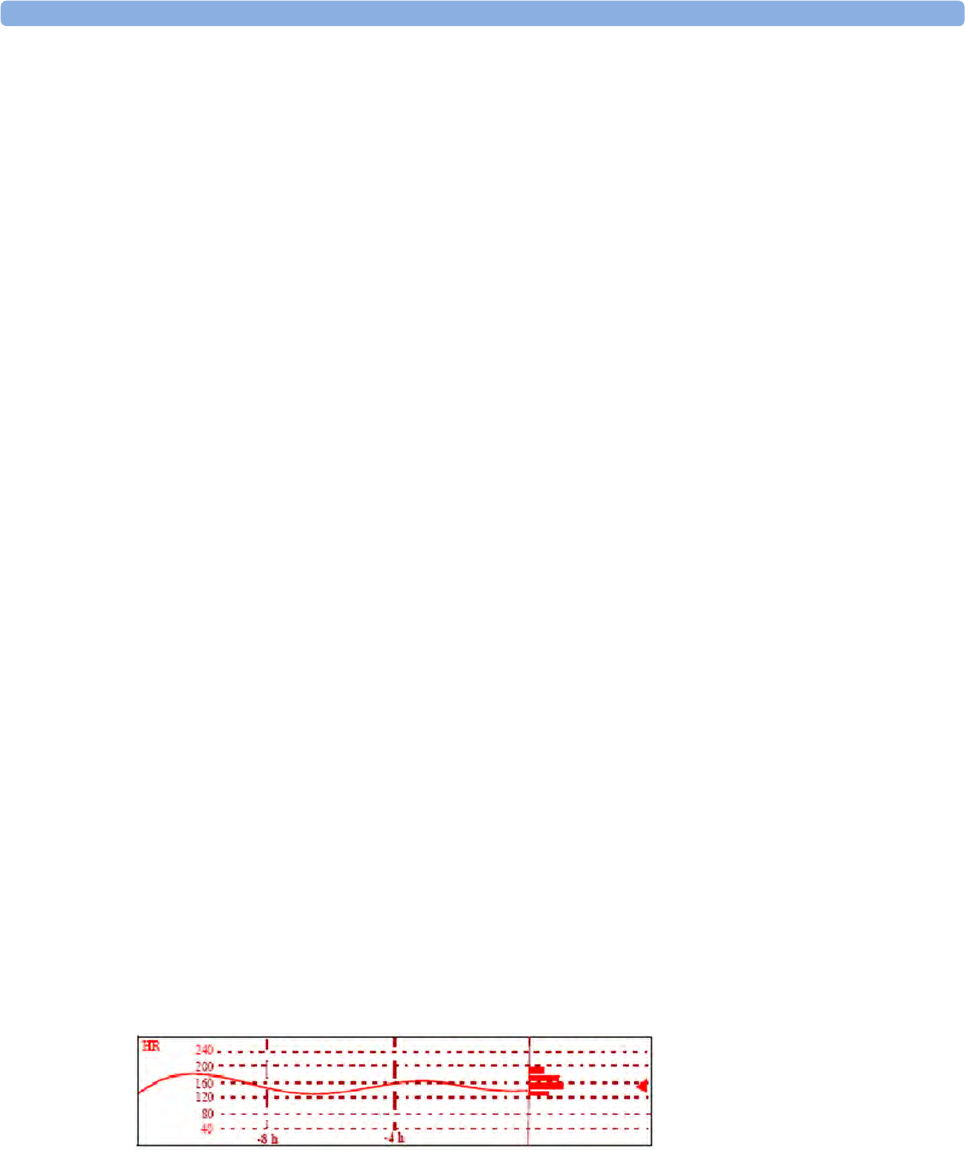
23 Trends
321
Changing the Selection of Screen Trends Displayed
1Select the screen trend.
2Select Change Trend and select the required trend from the list of available trends.
Select Blank to remove the selected trend from the Screen.
If you do not see Change Trend in the screen trend menu, the trend is aligned to display with the
measurement wave. Changing the wave automatically changes the trend.
To display two or more screen trends overlapping,
1Select the screen trend to open the screen trend menu,
2Select Change Trend followed by Add Trend and select a screen trend from the pop-up list.
Activating the Cursor for Screen Trends
To activate the cursor for Screen Trends:
1Select the screen trend.
2Select Activate Cursor.
You can now use the arrow keys to move the cursor across the time line. The values measured at the
cursor time are shown next to the cursor.
To de-activate the cursor,
•Select Main Screen.
Changing the Screen Trend View
To switch between tabular, graphic, histogram and horizon views, select the screen trend then select
Change View and select the required view.
Tabular View
Aperiodic measurements such as NBP, C.O., C.I., and Wedge can be viewed as a screen trend in
tabular form. The measured values and their timestamps are shown, with the measurement label.
The trend time for tabular screen trends depends on the space available on the Screen. Up to 30
measurements or 12 hours information can be shown.
Histogram View
The histogram view presents a combination of graphical trend and histogram. The histogram is on the
right hand side in a horizontal presentation with vertical gridlines representing 25%, 50%, 75% and
100%. Each column shows the percentage of time that the measurement values were in a specific
range. This range is represented by the column's position in the graphical trend gridlines. The arrow
mark next to a column shows that the currently measured value is in the range covered by that column.
If less than two-thirds of the samples are valid, a question mark will be displayed with the histogram,
except when the histogram consists of intermittently measured data.

23 Trends
322
Horizon View
The horizon view presents trend information superimposed over a defined baseline or base range. This
helps you visualize changes in your patient's condition since the baseline was set.
The horizon view is made up of:
• a horizon, drawn in white, as a reference point or baseline to help you visualize changes in your
patient's condition. The horizon can be set to represent your patient's current condition, or a
target condition and can be a single value or a range.
• a graphical trend, displaying patient data for the set TrendTime (1).
• a trend indicator arrow, indicating how the patient trend has developed in the set time period
(10minutes, 5minutes or 2minutes) (2).
• a deviation bar, showing how the currently measured value deviates from the set horizon (3). The
height of the deviation bar is an indication of the extent of the change in your patient's condition
relative to the (horizon) baseline.
Your monitor may not be configured to show all elements of the screen trend horizon view.
Setting the Horizon
The horizon is the reference value to which deviations in the measurements are compared.
1To set the horizon, select the horizon trend.
2Select
–Set High Horizon to select the upper horizon value. If the high and low horizon values are the
same, the horizon is a baseline - if the values are different the horizon is a range.
–Set Low Horizon to select the lower horizon value.
–Auto Horizon to set the horizon for the selected horizon trend to the currently-measured
value.
–Auto All to reset the horizon for all horizon screen trends to the currently-measured values.
–Set Horizon to set the horizon to a specific value from a pop-up list.
Setting the Horizon Trend Scale
The horizon trend scale is defined with respect to the horizon. If your horizon is set to 100 and you
select 20 as the horizon scale delta, the upper limit of the horizon scale will be 120 and lower limit 80.
To set the horizon trend scale delta,
1Select the horizon trend.
2Select Set Scale Delta and select a value to define the distance between the horizon and the upper
and lower scale limits.

23 Trends
323
Be aware that changing the horizon trend scale can change the angle of the trend indicator, without the
patient's condition having changed.
If a measurement exceeds the outer limits of the scale, the wave will be clipped and you must either
reset the horizon or the horizon trend scale to display the values outside the scale limits.
Setting the Time Period for the Trend Indicator Arrow
The time period for which the trend indicator arrow is displayed can be set in the Trends window.
1Select Main Setup then select Trends.
2Select HorizonArrowTime.
3Select 10, 5 or 2 minutes.

23 Trends
324

24
325
24Calculations
Calculations are patient data that is not directly measured but calculated by the monitor when you
provide it with the appropriate information.
Your monitor can perform the following hemodynamic, oxygenation, and ventilation calculations.
The hemodynamic calculations available depend on the Cardiac Output measurement method being
used and the regulatory standards that apply for your hospital: see the “Monitoring Cardiac Output”
chapter for availability details.
Hemodynamic Oxygenation Ventilation
Cardiac Index (C.I.)
Stroke Volume (SV)
Stroke Index (SI)
Systemic Vascular Resistance (SVR)
Systemic Vascular Resistance Index (SVRI)
Pulmonary Vascular Resistance (PVR)
Pulmonary Vascular Resistance Index
(PVRI)
Left Cardiac Work (LCW)
Left Cardiac Work Index (LCWI)
Left Ventricular Stroke Work (LVSW)
Left Ventricular Stroke Work Index
(LVSWI)
Right Cardiac Work (RCW)
Right Cardiac Work Index (RCWI)
Right Ventricular Stroke Work (RVSW)
Right Ventricular Stroke Work Index
(RVSWI)
Extra Vascular Lung Water Index (EVLWI)
Intrathoracic Blood Volume Index (ITBVI)
Global End Diastolic Volume Index
(GEDVI)
Arterial Oxygen Content (CaO2)
Venous Oxygen Content (CvO2)
Arteriovenous Oxygen Content
(CavO2)
Oxygen Availability Index (DO2I)
Oxygen Consumption (VO2)
Oxygen Consumption Index (VO2I)
Oxygen Extraction Ratio (O2ER)
Alveolar-Arterial Oxygen Difference
(AaDO2)
Percent Arteriovenous Shunt
(Qs/Qt)
Minute Volume (MINVOL)
Compliance (COMP)
Dead Space (Vd)
Dead Space/Tidal Volume Ratio
(Vd/Vt)
Alveolar Ventilation (ALVENT)
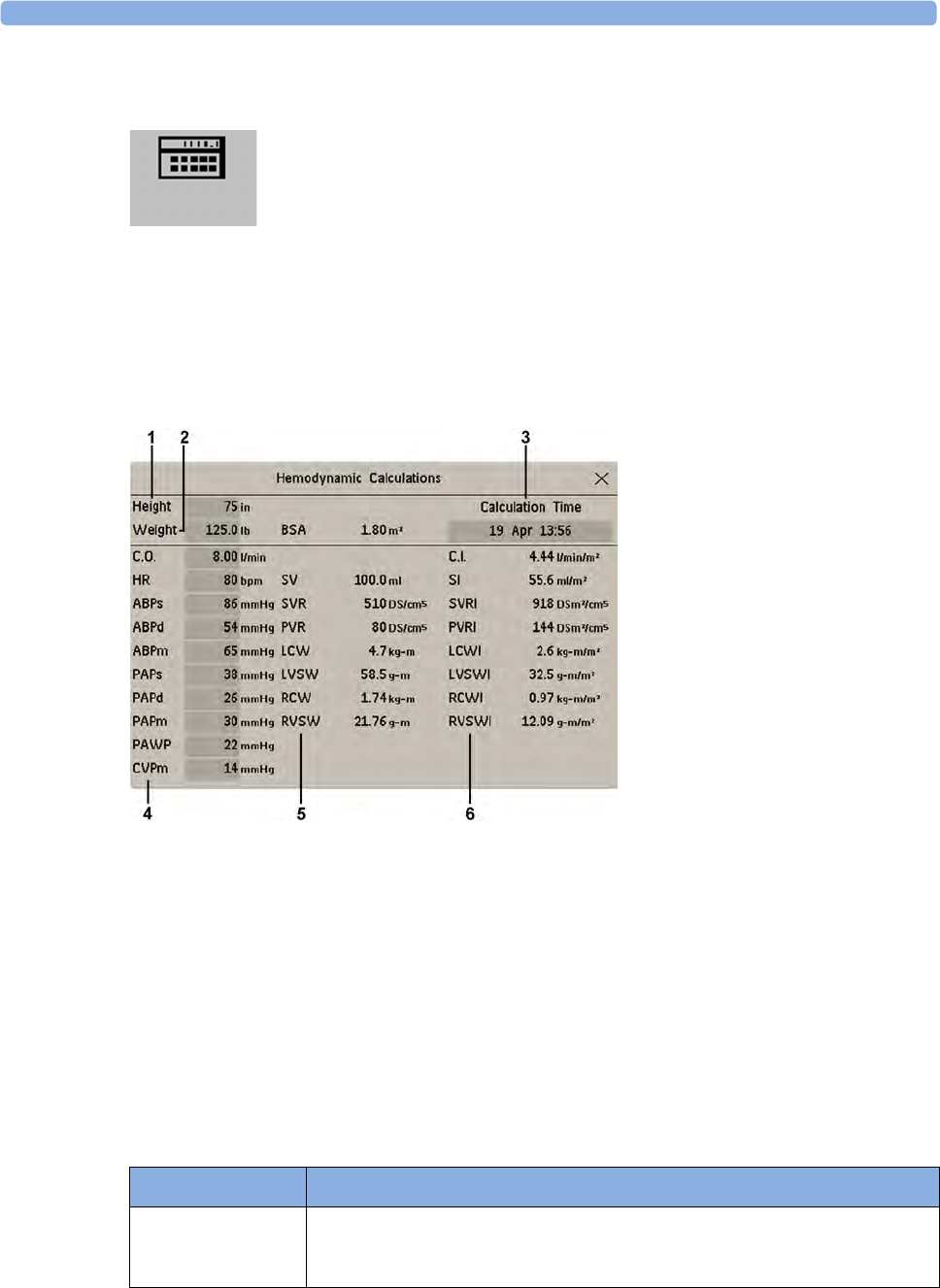
24 Calculations
326
Viewing Calculations
• Select the Calcs SmartKey to open the Calculations window.
• Select the Calc Type field and select the required calculation type for display.
Calculations Windows
This example calculations window shows the Hemodynamic Calculations window. The ventilation
and oxygenation windows are similar.
1Height used for the calculations
2Weight used for the calculations
3Calculation Time
4Calculations input values
5Output values
6Indexed calculation values
Calculations Pop-Up Keys
Depending on the calculations group you choose, a selection of pop-up keys will appear to let you
navigate through the stored events and carry out calculations-related tasks.
Pop-Up Keys Selecting this pop-up key lets you....
Resample Vitals use the most recent monitored values. Resampling sets the calculation time to
the current time, and displays the corresponding values for the previous
second.
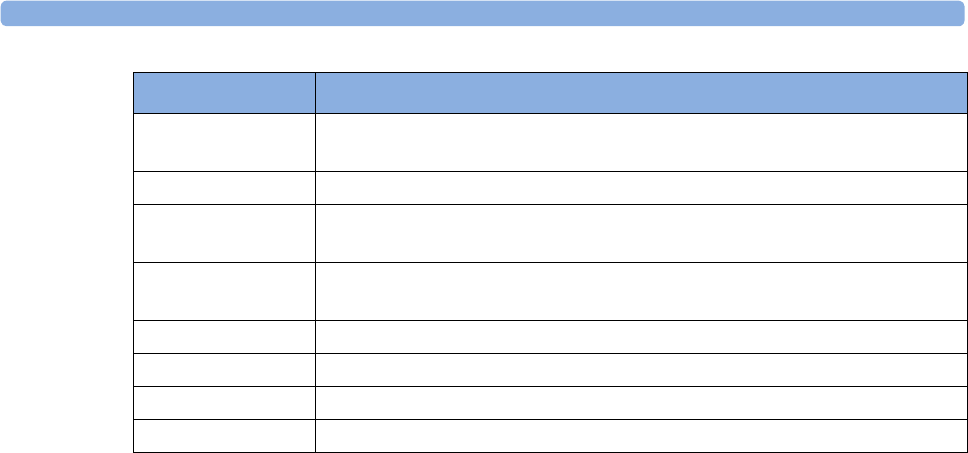
24 Calculations
327
Reviewing Calculations
To enter the calculations review window, select the Oxygen Review, Vent Review, or Hemo Review
pop-up key as required.
The review window lists all the input and output values for each measurement in the calculations
group. The timeline in the review window lists the times the calculations were performed.
To review individual calculations, select the calculation in the review window and then select the
Original Calc pop-up key.
The storage time for calculations is the same as the trend database storage time configured for the
monitor. So if trends are stored for 48 hours, the calculations will also be stored for 48 hours.
Performing Calculations
You must check that all input values are appropriate for your patient before performing calculations.
1Select the Calcs SmartKey to open the Calculations window.
2Check the calculation time in the Calc Time field.
When you enter the calculation window, this field will show either the current time or the time of
the most recent available C.O. measurement, depending on your monitor configuration.
– To choose a different calculation time, select the Calc Time field. This calls up a list showing
the timestamps of calculations performed earlier. Select a time from this list, or select Select
Time to enter a time of your choice. The values from the Vital Signs database from the 30
minute period before the selected time will be used.
– To enter the current time, select the Resample Vitals pop-up key. If you choose the current
time, the monitor will resample all the required values that are monitored.
3Enter any values that must be entered or edited manually. Select the value field and then use the
pop-up keypad to enter the required values. Select Enter to confirm each entered value. Manually-
entered values are marked with an asterisk (*).
Perform Calc perform the displayed calculation using the currently-input values and store the
calculation in the calculations database
Print/Record print or record the displayed calculation.
On/Off DateTime toggle between showing the date and time or the units for the calculation input
values.
On/Off Ranges toggle between showing the normal ranges or the units for the calculation
output values.
Cardiac Output access the C.O. procedure window.
Hemo Review open the hemodynamic calculations review window.
Vent Review open the ventilation calculations review window.
Oxygen Review open the oxygenation calculations review window.
Pop-Up Keys Selecting this pop-up key lets you....

24 Calculations
328
Entering Values for Calculations
The monitor automatically enters any available values for calculations. For aperiodically-measured
values such as C.O., the monitor will re-use the most recent value in the calculation database until a
new value becomes available. If the calculation time is the last C.O. time, values will be used from up
to and including 30 minutes before the C.O. time, except for height and weight where the last available
value will be used.
• To enter calculations values manually or edit automatically-entered values, select the value field to
open the on-screen keyboard and use this to enter the correct value. Values edited manually are
marked with an asterisk (*).
If you enter a value that has more decimal places than allowed for a particular input, the value you
enter will be rounded off after you select Enter. If you enter a value which cannot be stored, the
message Value out of range will appear. Enter a new value.
In hemodynamic calculations, if the systolic and diastolic pressures are manually entered, the mean
pressure is calculated and marked with an asterisk (*). The formula used to estimate the mean pressure
is:
[systolic + (diastolic x 2)] / 3.
Automatic Value Substitution
If the monitor cannot find a value required for calculation, it automatically tries to find an equivalent
source for this value. For example, if C.O. is required but unavailable, the monitor automatically looks
for CCO as a alternative source of C.O. values, or an alternative Pressure label may be used instead of
ABP. The label of the value in the Calculations window does not change. Substituted values are
marked with an asterisk (*).
If a PAWP value is not available, PAWP will be set to zero in the formulas where it is used.
Automatic Unit Conversion
The monitor needs consistent units for performing calculations. It automatically converts units where
necessary before it performs the calculation, for example, pressures sourced in kPa, cmH2O, or mbar
are automatically converted to mmHg, or to cmH2O for ventilation calculations.
Manual Unit Conversion
If you need to convert units for other purposes you can use the Unit Conversion window:
1Select Main Setup then select Calculations.
2Select Unit Conversion.
3Select the field under the unit you know and use the on-screen keypad to enter the known value.
The converted value automatically appears in the adjacent field.
BSA Formula
Your monitor provides both the Boyd and Dubois formulas for the calculation of body surface area
(BSA). For calculations, the monitor uses the setting defined in the Patient Demographics menu. All
calculation results that use BSA are indexed to the selected formula.
• To check the current setting, select the patient name to enter the Patient Demographics menu.
BSA(B) indicates that the Boyd formula is used; BSA(D) indicates that the Dubois formula is used.
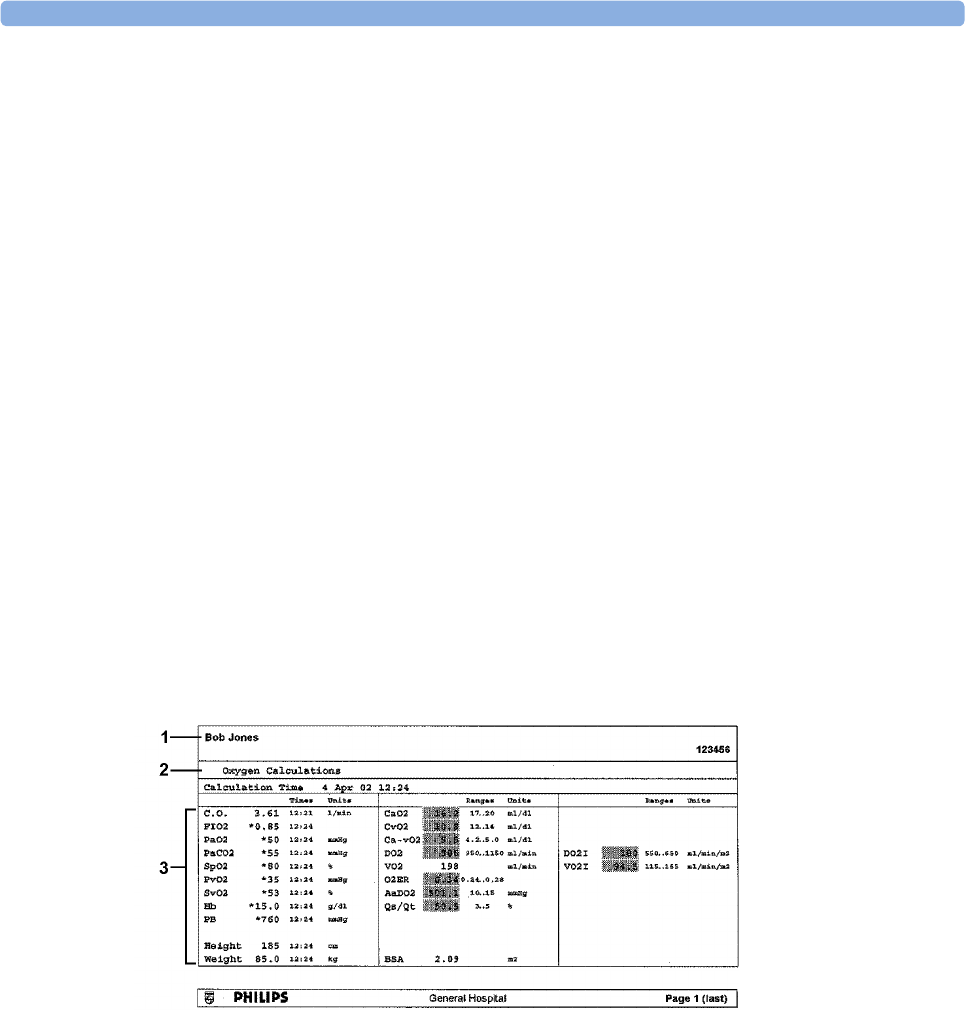
24 Calculations
329
Comparing Dynamic Compliance Values
If you compare the dynamic compliance value (COMP) from the ventilation calculations with the
value from the Spirometry measurement you may see a difference. This comes from the different
sampling methods:
• The algorithm in the ventilation calculations takes into account only two sets of paired AWP/
AWV data: those from complete expiration and complete inspiration, when AWF is zero.
• The algorithm in the Spirometry application takes into account all sets of paired AWP/AWV data
(125 Hz sampling rate), over one complete breath cycle, and calculates an "averaged" compliance
using a least square method.
Documenting Calculations
To send a Calculations recording to a connected recorder, in the Calculations window, select the
Print/ Record pop-up key, then select the Record Calc pop-up key.
Calculations recordings print the patient demographic information and the content of the current
Calculations window on the recorder strip.
To print a report for the calculation group currently on the monitor screen, select the pop-up key Print
Calc. To print the review window, select the pop-up key Print in the review window. All the
calculations in the current group will be printed in the report.
Calculation reports can be printed on central or local printers.
This example report shows the oxygen calculation group. Ventilation and hemodynamic calculation
reports are similar.
1Patient information
2Calculation group
3Three columns of calculations input and output values, with times, units and ranges, where
appropriate

24 Calculations
330

25
331
25High Resolution Trend Waves
High resolution (hi-res) trend waves provide information for fast-changing parameters at a glance.
They can help you to recognize trend patterns and to find interrelationships between measurements,
by comparing changes in your patient's condition across different hi-res trend waves.
The amount of data you can show on a screen depends on the display size and resolution: for example,
on an eight inch (20 cm) wave trace on your monitor screen, you can view approximately six minutes
of hi-res trend wave trace. The hi-res waves are drawn at a speed of 3 cm/minute.
The availability of hi-res trend waves depends on your monitor configuration and on the options
purchased for your monitor.
Changing the Hi-Res Trend Waves Displayed
To change the selection of hi-res trend waves on the Screen:
1Select a displayed hi-res trend wave.
2Select the required hi-res trend wave from the pop-up list.
If there are no hi-res trend waves on the Screen, you must change to a Screen with hi-res trend waves.
Hi-Res Trend Wave Scales
Hi-res trend waves are either compressed realtime waves or fast numeric trends.
• Hi-res trend waves from compressed realtime waves include: Resp, CO2, ABP, PAP, CV P, I C P,
AWP, anesthetic agents.
• Hi-res trend waves from fast numeric trends include: btbHR, SpO2, tcpO2, tcpCO2, Pulse, Perf,
CPP, BIS, CCO, inO2, Delta SpO2.
Hi-res trend waves from realtime waves use the wave scale as their display scale. Changing the wave
scale changes the hi-res trend wave scale.
Hi-res trend waves from numerics use a pre-defined display scale dependent on the patient category.
Hi-Res Trend Waves and OxyCRG
OxyCRG is a combination of three hi-res trend waves, btbHR, SpO2, and Resp, mainly used in
neonatal monitoring.
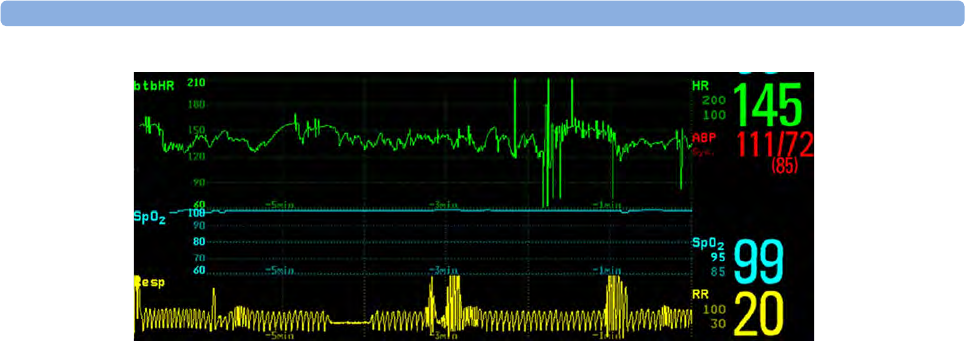
25 High Resolution Trend Waves
332
Printing Hi-Res Trend Wave Reports
To print hi-res trend waves on reports, you can choose to print either
• all VisibleWaves - prints all waves and hi-res trend waves currently displayed
•All Waves - prints realtime waves and hi-res trend waves for all currently-monitored measurements
•HiRes Waves - prints hi-res trend waves for the currently-monitored measurements
•OxyCRG Waves - prints hi-res trend waves for btbHR, SpO2, and Resp.
For each hi-res trend wave, a maximum of six minutes of measurement data will be printed.
See the “Printing Patient Reports” chapter for more information on setting up reports.
Hi-Res Trend Wave Recordings
The selection of waves in hi-res trend wave recordings and the recording speed are defined by the pre-
configured HiResTrd recording template. See “Recording” on page 357 for more information.
To start a hi-res trend waves recording,
1select the Recor- dings SmartKey, if configured, or select Main Setup then select Recordings.
2select the HiRes Recordng pop-up key.

26
333
26Event Surveillance
Events are electronic records of episodes in your patient's condition. You can trigger them manually,
or set them to trigger automatically during pre-defined clinical situations.
Depending on the level of event surveillance available on your monitor, the information stored for
each event episode can include:
• waveforms for up to four measurements of your choice (depending on episode type, see “Events
Pop-Up Keys” on page 335 for more details)
• numeric vital signs for all the measurements monitored
• any alarm conditions active when the event episode was triggered
• any annotations connected with the event.
You can navigate through the event database to view events retrospectively, and you can document
events on a recording or report marked with the patient name, bed label, and the data and time.
Levels of Event Surveillance
The appearance of the Events windows and menus and the settings you can select for events depends
on the event surveillance option purchased for your monitor: basic event surveillance, advanced event
surveillance, or neonatal event review (NER). This table lists the differences between the options.
To determine which level of event surveillance your monitor has, select Main Setup then Event
Surveill. followed by Setup Events and select the trigger group to see the available event groups.
• if the only event group listed is NER, your monitor has the Neonatal Event Review option
• if there is one event group and it is not NER, your monitor has the Basic Event Surveillance option
• if you see six event groups, your monitor has the Advanced Event Surveillance option.
Event Functionality
Basic Event
Surveillance
Option C06
Advanced Event Surveillance
Option C07
Neonatal Event Review
(NER)
Option C04
Event groups 1 6 (one group can be configured
to NER)
NER
Measurements per group 3 4 3 (plus 1 for episode
recording)
Triggers per measurement 12 1
Trigger types Simple ("at least one") Combined ("at least two") Simple ("at least one")
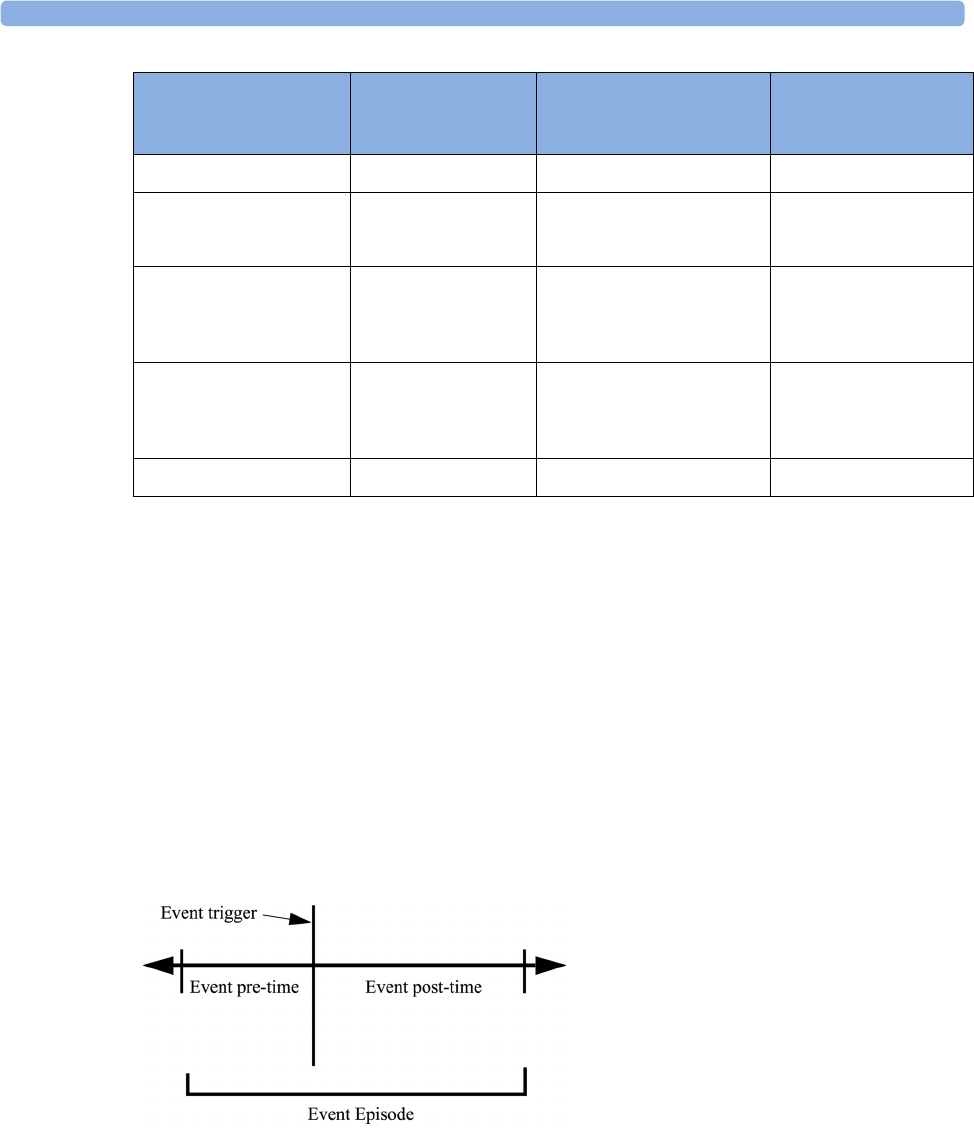
26 Event Surveillance
334
Event Groups
The event group
• monitors the patient's signals to detect event triggers
• defines which waveforms are recorded in the event data.
In basic event surveillance only one event group can be active at a time, with Advanced Event
Surveillance all six groups can be active simultaneously. Active event groups monitor for event triggers.
Event groups are defined in Configuration Mode. In monitoring mode the groups can be adapted to
current conditions, for example episode types and threshold levels can be changed.
Event Episodes
When an event occurs, information for a predefined duration is stored. This is the event episode. It
includes information from a defined period before the trigger, called the event pre-time. The episode
time after the event is called the event post-time. If a further event occurs during the event post-time it
changes a single event to a combined event (combi-event).
Manually-triggered event episodes document patient information from the time leading up to the event
trigger; they do not have a post-time.
The episode type defines the level of detail captured in an event episode. The higher the data
resolution, the shorter the period that the monitor can store in its memory. High-resolution data is
Annotation no yes yes
Types of event episode
Average trend
Snapshot events
Average trend
High resolution trend
Snapshot events
High Resolution Trend
Event views
Graphic Event Review
window, Graphic Event
Episode window
Summary view, graphic and
tabular Event Review window,
graphic and tabular Event
Episode window
Graphic and tabular Event
Review window, graphic
and tabular Event Episode
window
Database capability
25 events for 24 hours 25 events for 24 hours
25 events for 8 hours
50 events for 8 hours
50 events for 24 hours
25 events for 24 hours
25 events for 8 hours
50 events for 8 hours
50 events for 24 hours
Event Notification no yes no
Event Functionality
Basic Event
Surveillance
Option C06
Advanced Event Surveillance
Option C07
Neonatal Event Review
(NER)
Option C04
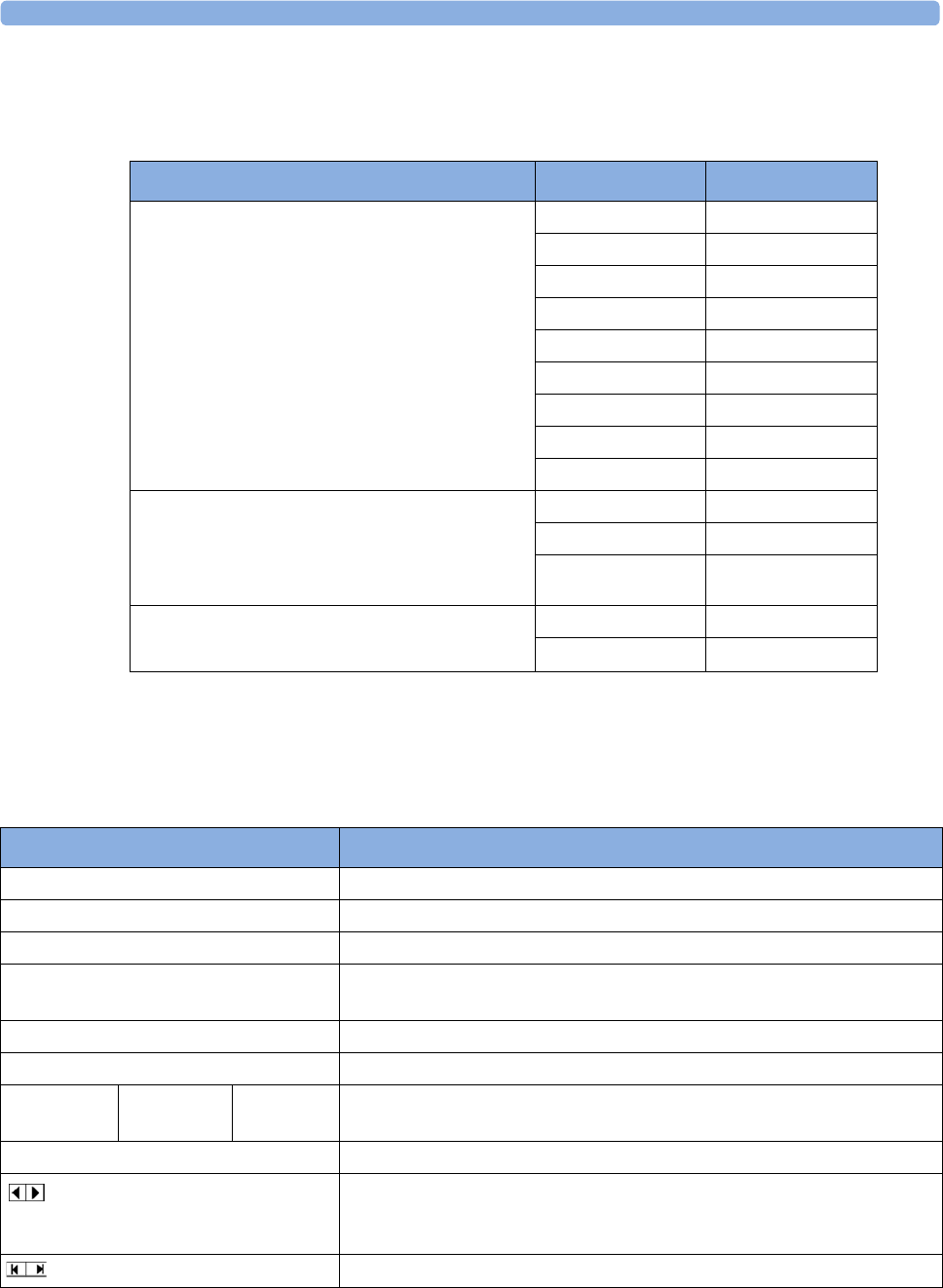
26 Event Surveillance
335
suited for neonatal applications, where the clinical situation may change very quickly. In adult
monitoring, where the patient's status typically changes more gradually, a longer trend may be more
informative.
Events Pop-Up Keys
Depending on the events view you choose, a selection of the events pop-up keys let you navigate
through the stored events and carry out events-related tasks.
Event Episode Types Pre-time Post-time
Average trend
20 minutes, five samples per minute
2 minutes 18 minutes
4 minutes 16 minutes
6 minutes 14 minutes
8 minutes 12 minutes
10 minutes 10 minutes
12 minutes 8 minutes
14 minutes 6 minutes
16 minutes 4 minutes
18 minutes 2 minutes
HiResTrend
Four minutes, four samples per second.
Neonatal Event Review (NER) is a type of
HiResTrend
1 minute 3 minutes
2 minutes 2 minutes
3 minutes 1 minute
Realtime Wave Snapshot
15 seconds
5 seconds 10 seconds
10 seconds 5 seconds
Pop-Up Keys Selecting this pop-up key lets you....
Event Setup open the Event Setup menu.
Show Episode open the Event Episode window to review the selected event in detail.
Show Review open the Event Review window.
Review Group choose a different event group for reviewing in the Event Review window
(Advanced Event Surveillance only).
Show Summary open the Event Summary window.
Manual Event start a manually-triggered event capture.
Start CAR Stop CAR open the Start CAR window to start a Car seat Assessment Record (CAR)
period or stop a currently running CAR.
CAR Histogrm open the window showing the CAR SpO2 histogram
move the cursor left or right to the next event to navigate through the
events database. Placing the cursor over an event highlights it and shows
the event values for the selected event.
jump to the first or last event in the event database.
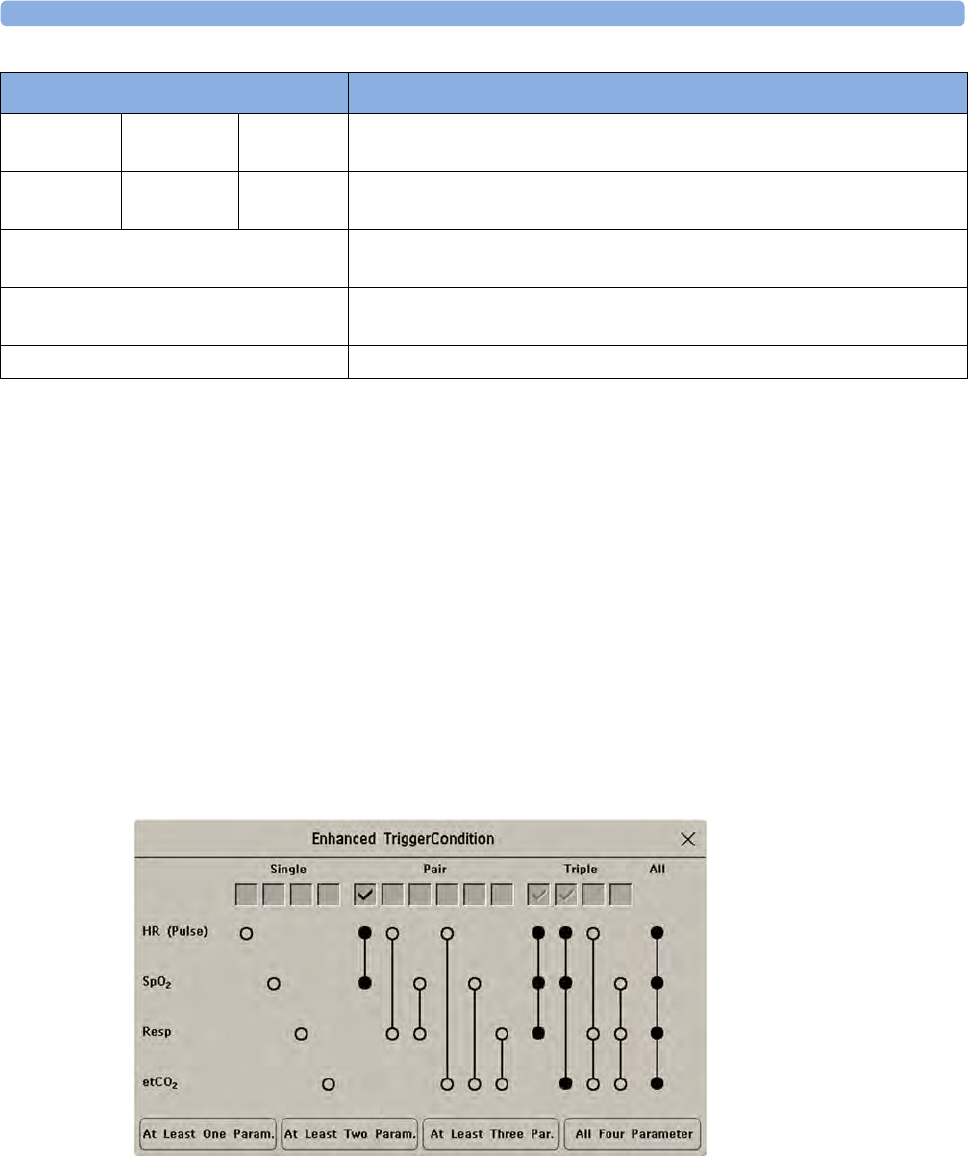
26 Event Surveillance
336
Event Triggers
You can trigger event capture manually, for example, if you want to record a patient's condition before
a procedure. You can also set events to trigger automatically, when the patient's values cross a
predefined threshold value, or when a particular measurement or procedure is carried out.
If more than one trigger is available for the measurements in the active event group, the trigger
condition may be At least one Param., At least two Param., At least three Par., or All four
Parameter. If the trigger is At least one Param. (this is short for "at least one measurement
parameter"), the monitor starts an event capture if a trigger occurs in any of this event group's
measurements. If the trigger is At least three Par., the monitor captures events when three or more
trigger thresholds from this event group's measurements are violated. With Enhanced Condition you
can not only select a minimum number of triggers to trigger an event but define which specific
measurement triggers these must be. For example, At least two Param. will cause an event to be
captured if a trigger occurs in any two of this event group's measurements - with Enhanced Condition
you can select that only when triggers are in HR and SpO2 an event will be captured.
The trigger condition for event groups is set in the monitor's Configuration Mode.
If You Use Alarm Limits As Event Triggers
The event capture is triggered automatically when your patient's values violate set alarm limits, or when
a specified alarm condition, such as apnea, occurs. No events of this kind are triggered if alarms are
switched off. Changing alarm limits changes the event trigger definitions.
The asterisk symbols beside the trigger tell you about the alarm triggers:
Vitals View Graphic
View
toggle between a tabular and graphic version of the Event Episode window
currently viewed.
Table
Review
Graphic
Review
CAR
Review
toggle between a tabular and graphic version of the Event Review window
currently viewed.
Delete Event delete the currently-selected event from the database. The monitor asks
you to confirm this deletion. You cannot retrieve deleted events.
Select Annotatn access the list of available annotations to add a nursing note for the current
event episode (Advanced Event Surveillance only).
Print/ Record access the printing and recording pop-up keys to document events.
Pop-Up Keys Selecting this pop-up key lets you....

26 Event Surveillance
337
*** indicates a high priority (red) alarm
** indicates a lower priority (yellow) alarm. This category includes short yellow arrhythmia alarms,
which may be configured to be shown as one star alarms (*) on your monitor.
Triggers without asterisk symbols are user-defined triggers.
If You Set User-defined Threshold Triggers
You can define event triggers that are independent of alarm limits. You must set a threshold value and
a threshold time for the trigger. If you set the trigger threshold time to 12 seconds, the monitor triggers
an event if the threshold is violated for more than 12 seconds.
If You Set "On Measurement" Triggers
You can set aperiodic measurements (such as NBP) or procedures (such as Cardiac Output) to trigger
an event whenever they start.
If You Set User-defined Deviation Triggers
You can define event triggers that are independent of specific limits and based instead on deviations
from the current values. You must set a deviation and a period of time in which the deviation occurs.
There are three types of deviation available: ANY Deviation, UP Deviation where only changes in a
positive direction are detected and DOWN Deviation where only changes in a negative direction are
detected. The deviation can be defined either in relative terms as a percentage, for example 10%, or as
an absolute value, such as 10 bpm.
Event Retriggering
If a condition that triggered an event persists and the values remain beyond the trigger threshold, a
new event will not be triggered.
For a new event to be triggered by the same condition, the measured values for at least one of the
triggers must cross back into the normal range and then recross the trigger threshold.
Event Notification
Advanced
Event
Surveillance
Only
You can be notified when an event is detected. For each event group you can define a type of
notification depending on the severity of the event conditions. The notification can be a status
message with a prompt tone or a standard *, **, or *** alarm notification. These event alarms are
handled exactly like measurement alarms; they can be silenced and are also suspended when all alarms
are suspended. You should only use alarm notification for events which are comparable in severity to
standard measurement alarms to avoid potential confusion due to too many alarms. Notification in the
form of an alarm is not available when the trigger condition is At least one Param.. Selecting None
switches event notification off.
Setting the type of notification, or switching notification off, is done in Configuration Mode.
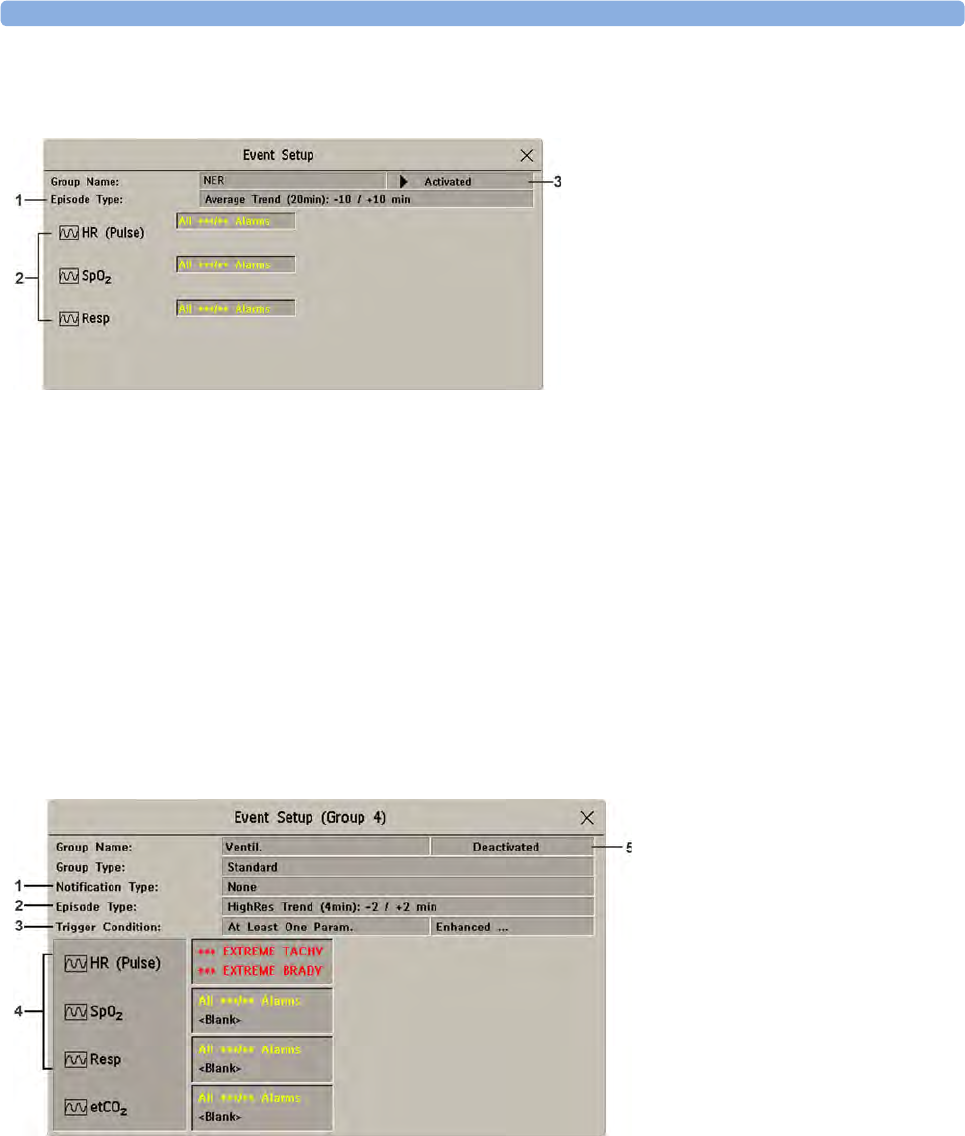
26 Event Surveillance
338
Setting Triggers for NER and Basic Event Surveillance
1Select Main Setup then Event Surveill. followed by Setup Events to enter the Event Setup
window.
2Select the name of the current episode type to set the episode pre/post time.
3Set the event trigger for each measurement. Select each trigger name and select, if available, either
an alarm trigger, or a user-defined trigger from the pop-up trigger list. If you select a user-defined
trigger, set the required threshold level and delay time.
4Set the trigger status to Activated to start event triggering. If the status is Deactivated event
surveillance is effectively switched off.
5Select Confirm to confirm your changes.
Setting Triggers and Notification for Advanced Event Surveillance
1Select the group name to enter the setup window for that group.
2Set the trigger status to Activated, to have this event group trigger events, or Deactivated.
3Set the episode type.
Select the name of the current episode type and select an episode type from the pop-up list. The
pre/post episode time for the selected episode type is displayed.
1The Episode Type determines
the pre and post time.
2Measurements used as event
triggers.
3Current status: Activated or
Deactivated
1Notification Type shows the
currently configured notification
2Episode Type determines the pre
and post time
3Trigger Condition shows the
currently configured trigger
requirements
4Measurements used as event
triggers
5Current status: Activated or
Deactivated

26 Event Surveillance
339
4Set the trigger for each measurement. Select each trigger name and select either an alarm trigger or
a user-defined trigger from the pop-up trigger list. If you select a user-defined trigger, set the
required threshold level and delay time. If a deviation trigger is configured, set the deviation and
duration.
5Select Confirm to confirm your changes.
Triggering Events Manually
To manually trigger an event, select the SmartKey Manual Event and (for Advanced Event
Surveillance) select the group in which the event will be triggered.
For manually-triggered events, patient information for the time leading up to the trigger moment is
stored using the settings of the assigned event group.
Running a Car Seat Assessment Record
In the NER group you can run a Car Seat Assessment Record (CAR). This is a special period of event
surveillance using the current setup of the NER group.
To start a CAR period:
1Select the Start CAR pop-up key or SmartKey.
2Select the required time period for the assessment.
3Select Confirm to start the CAR.
If the NER group was not active it will be activated automatically.
During the CAR period an SpO2 histogram is also generated with 1 second samples. For general
information about the presentation of data in a histogram, see “Viewing Histogram Trends” on
page 314. The CAR SpO2 histogram is unique: it can only be accessed from the events function. It is
generated from the beginning of the CAR period (contrary to the non-SpO2 histograms which are
generated from trended data retrospectively at the end of a time period). Settings are fixed for this
histogram and cannot be changed when viewing it.
The Events Database
The maximum number of events that can be stored in the event database depends on the database
configuration and the level of event surveillance used. The event database is set up in the monitor's
Configuration Mode. Events are stored in the monitor's event database for the configured lifetime,
either 8 hours or 24 hours. Deleted events cannot be retrieved. Events are automatically deleted when:
• their configured lifetime is over
• the storage capacity of the database is exceeded (storing a further event deletes the oldest event in
the memory)
• a patient is discharged.
As the event database is cleared when you discharge a patient, you should ensure that you have
documented any events you require for the patient records before you confirm the discharge.
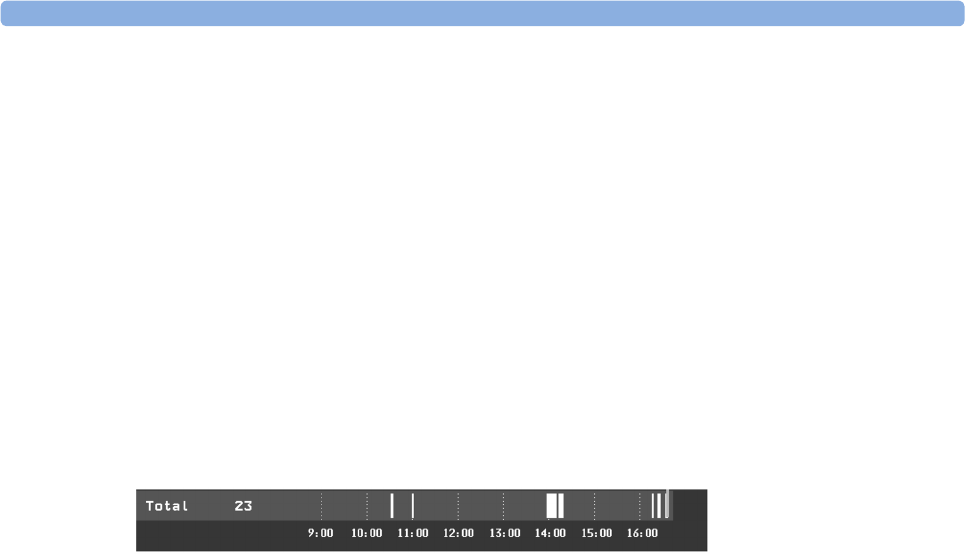
26 Event Surveillance
340
Viewing Events
• To see a summary of all the events in every group in the event database, use the Event Summary
window.
• To review all the events in a particular event group, use the Event Review window.
• To review individual event episodes in detail, use the Event Episode window.
To start viewing events, either:
•in the Main Setup menu, select Event Surveill. and then select the event view you require from the
list, or
• select the Event Surveill SmartKey
and then select the event view you require from the list.
Event Summary and Event Counter
Vertical bars mark events in the Event Summary window. The timeline shows the position of the
stored events in the event database. Selecting this view activates a cursor that lets you navigate across
the timeline. Use the Show Episode pop-up key to select individual events for review in the Event
Episode window. It also calls up the events pop-up keys.
The event counter counts the total number of events in the database. If more than one event group
was set to trigger events within the event history, the event counter also counts the event group totals.
Counting Combi-Events
If one or more events occur during the same Episode Time, the monitor combines them and displays
them as distinct events in one event episode, called a combi-event. The first event is the trigger event,
and the others are follow-up events. For example, if an apnea event is followed 40 seconds later by a
brady event, the brady event is not counted as a single event but as part of the apnea event.
Counting Neonatal Event Review (NER) Events
For neonatal events (NER, formerly "OxyCRG"), apnea events (A), bradycardia events (B), and
combinations of these events are counted and classified by the event counter in the Event Summary. If
they are associated with a Desaturation (D), this is also marked. Manual events (M) are counted
separately. For example, A(D):2(1) indicates that two apnea events occurred and one of them was
associated with a desaturation.
Event Summary Window
(Advanced Event Surveillance only). The Event Summary window shows the number of stored events
in each event group and the total number of events in the database. Vertical bars mark events on a
timeline showing the position of the stored events in the event database. The symbol next to the group
name indicates the activation and notification status:
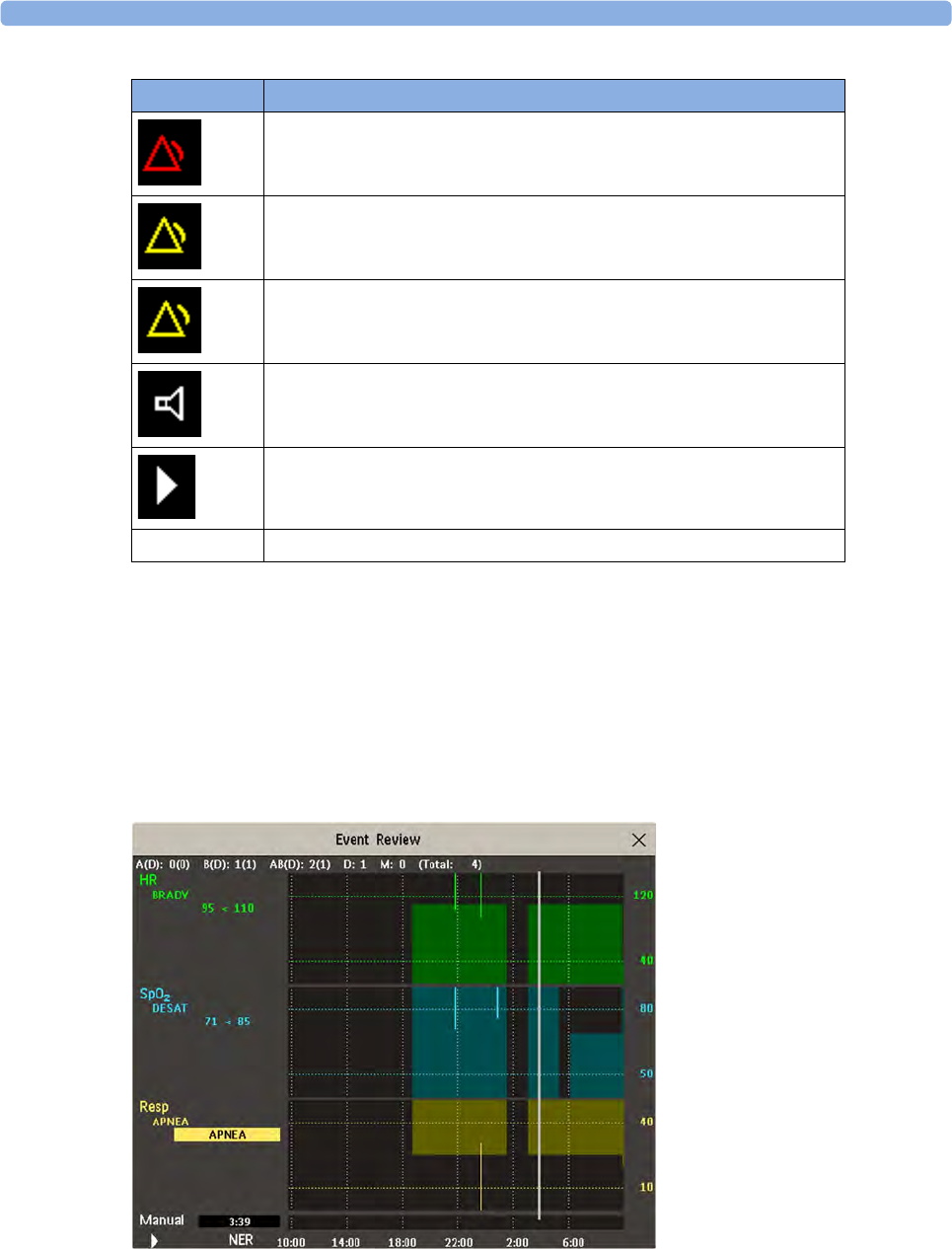
26 Event Surveillance
341
Selecting the Event Summary window calls up the events pop-up keys.
Parts of the Event Summary window can also be embedded in Screens so that they are always visible,
for example the Total row showing the total number of events with the bars on the timeline or the
column showing all the groups with the activation and notification status.
Event Review Window
To enter the Event Review window, select the graphic event summary, if available, or select the events
pop-up key Show Review.
When you open the Event Review window, it automatically shows the event group with the most
recent event.
symbol meaning
group activated, notification set to ***alarm
group activated, notification set to **alarm
group activated, notification set to *alarm
group activated, notification set to screen prompt
group is activated, notification is switched off
no symbol group not activated
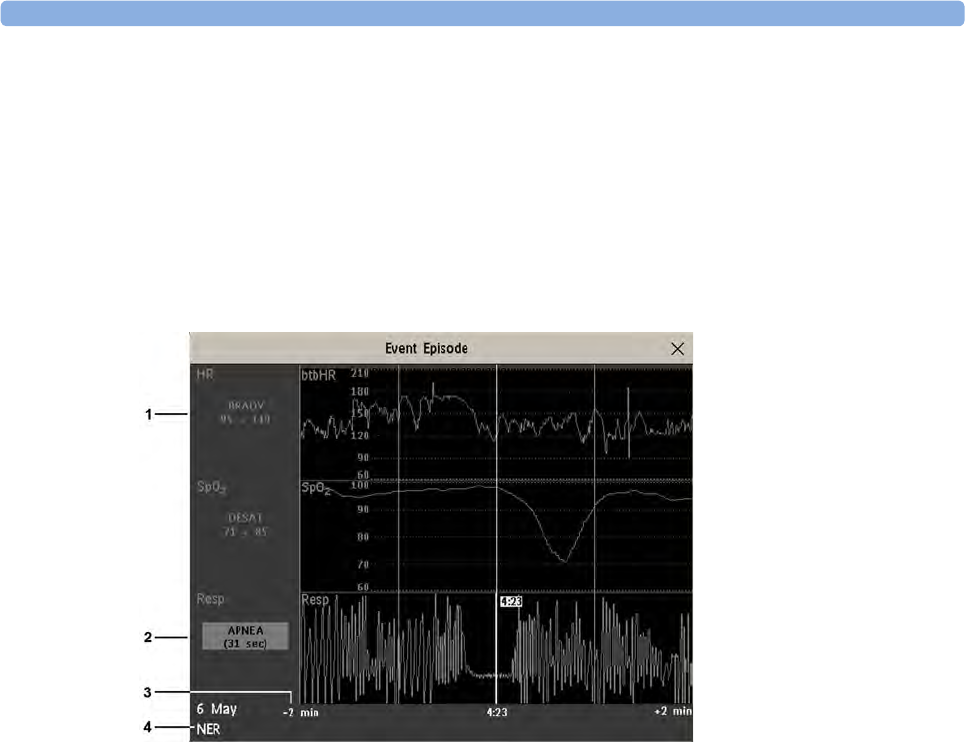
26 Event Surveillance
342
• To view other event groups, select the pop-up key Review Group and select the group from the
list.
Event Episode Window
To enter the Event Episode window, select the pop-up key Show Episode.
Depending on the event group settings, the Event Episode window shows either 20 minutes of
average trend event information, four minutes of high-resolution event information, or 15 seconds of
realtime wave information.
The event values to the left of the measurement channels show the trigger threshold set and the
maximum amount by which this limit was exceeded. In this example, Desat 71<85 tells you that 71
was the lowest SpO2 value measured during the event time and that the Desat trigger threshold was set
to 85 when the event was triggered. If the event was manually triggered, the event value boxes display
"manual".
Annotating Events
1To annotate an event, in the Event Episode window, select the pop-up key Select Annotatn.
2Select the required annotation from the pop-up list of available annotations for the currently active
event group.
Up to 20 annotations can be configured to let you add commonly-used clinical notes to event episodes
for documentation purposes. To see the complete list of available annotations, in the Event Setup
menu, select Event Annotation.
Documenting Events
You can print a report or make a recording of the events history stored in the database or of individual
event episodes or a Car Seat Assessment Record.
1Follow-on event values
2Trigger event values,
highlighted
3Timeline, showing
episode Pre/Post-time
4Active event group
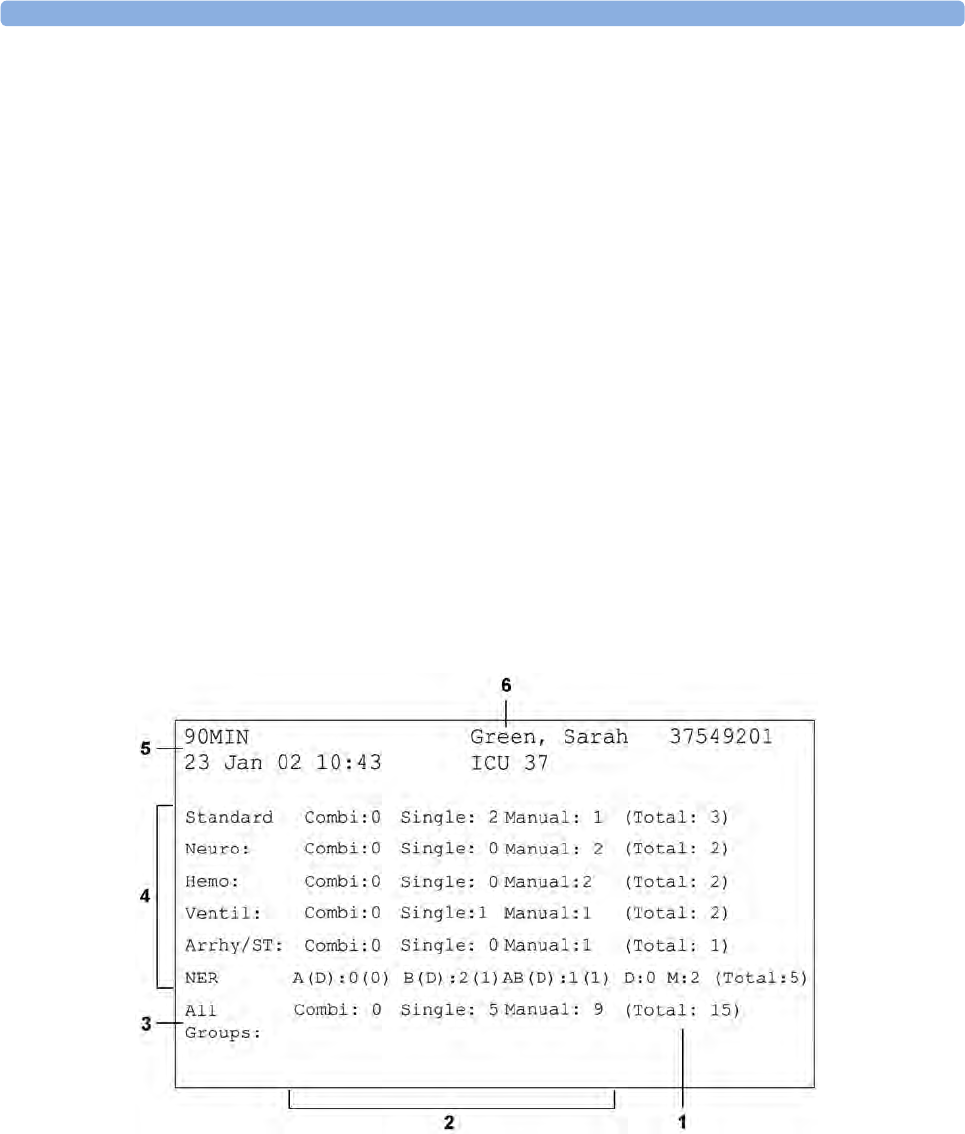
26 Event Surveillance
343
Documenting Event Review
1In the Event Review window, select the pop-up key Print/ Record. This calls up the event
documentation pop-up keys.
2For a graphic Event Review recording, select the Record Graphic pop-up key.
For a tabular Event Review recording, select the Record Tabular pop-up key.
For a CAR review report, select the Print CAR pop-up key
To print an Event Report, select the Print Review pop-up key.
Documenting an Event Episode
1In the Event Episode window, select the pop-up key Print/ Record. This calls up the event
documentation pop-up keys.
2To make an Event Episode recording, select the Record pop-up key.
To print an Event Episode, select the Print Episode pop-up key.
Event Recordings
Event recordings can be sent to a locally-connected M1116B/C recorder module.
Event Review Recordings
Each event review recording strip begins with a summary of the events stored in the event database.
Recording strip annotation is explained in the Recording chapter.
1Event total per event group
2Event types
3Total events in database
4Event groups
5Recording strip code
6Patient information and medical record no.
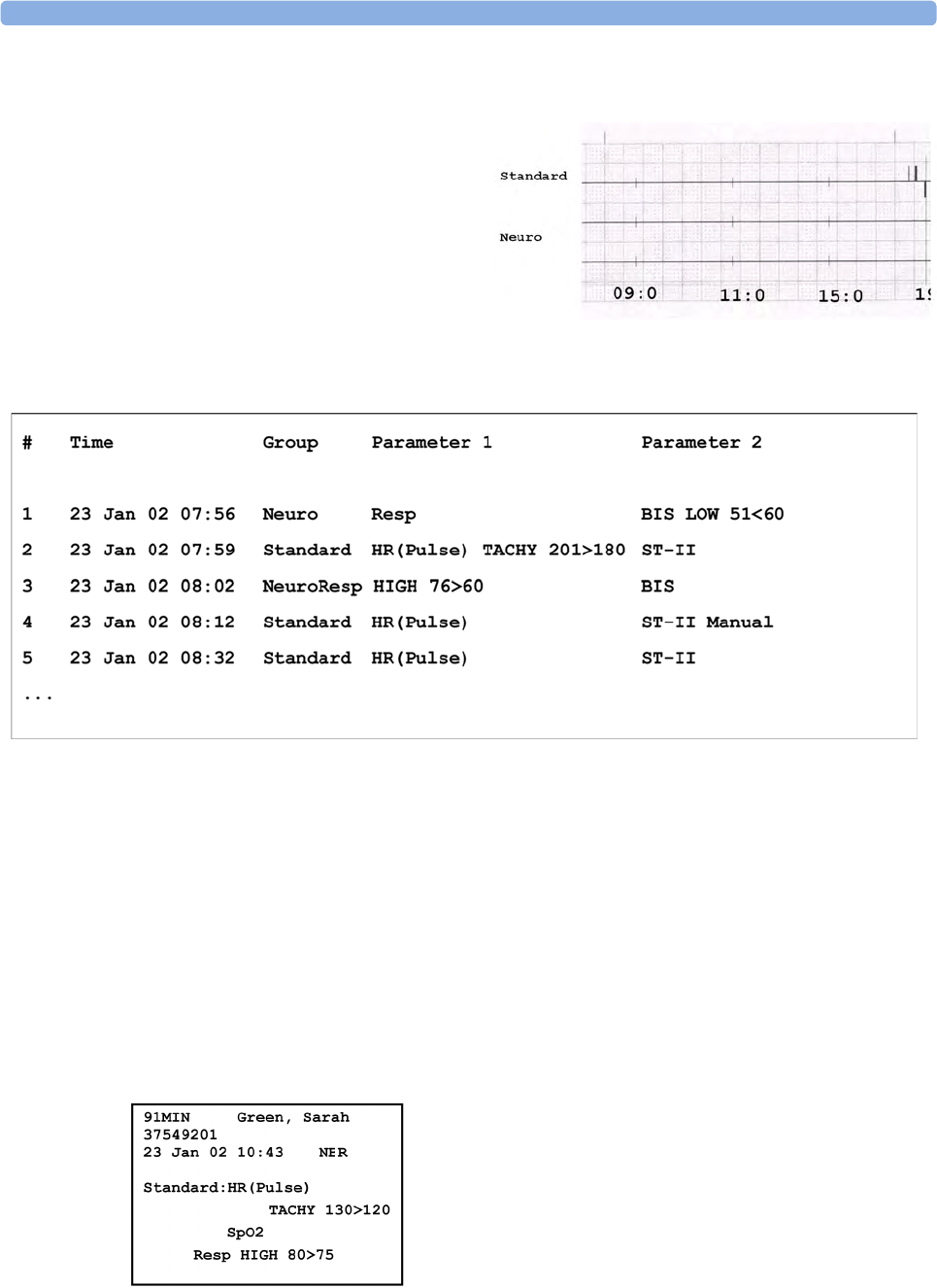
26 Event Surveillance
344
In tabular event review recordings, the events stored in the event database are shown in chronological
order, with a number and time-stamp.
The measurements in the event group are shown in the next columns, marked "Parameter 1, Parameter
2...", along with the event values measured at the time of the event. For each event, the trigger values
are shown.
This section of the recording is A4 or letter size, so that it fits in a patient file.
Event Episode Recordings
Event episode recordings are divided into four sections.
The first section shows the patient information and the event group of the episode with the event
values for the group measurements. The trigger symbol marks the event trigger.
In graphic event review recordings,
events are represented by bars, and each
event group is printed on a separate
channel.
The timeline reflects the period stored
in the database, either 24 hours (divided
into 4 hour sections) or 8 hours (divided
into one-hour sections).
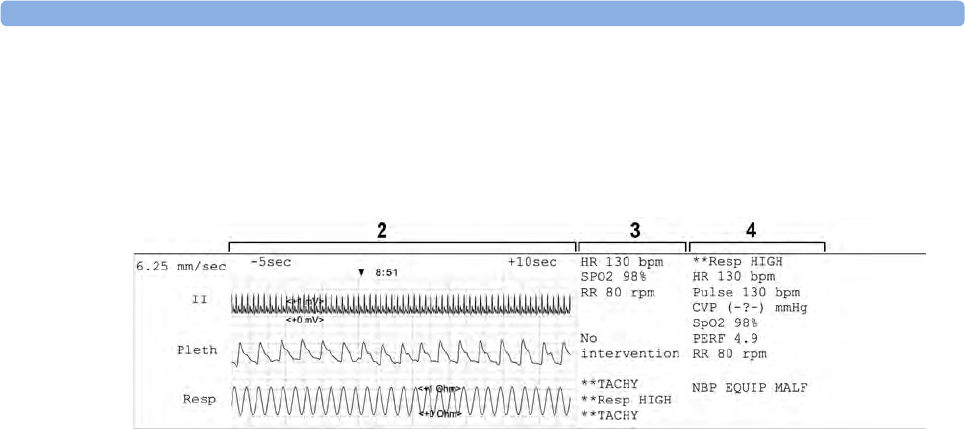
26 Event Surveillance
345
The second section (2 below) shows the waveforms recorded during the episode. The trigger moment
is marked with a triangle and divides the episode into the pre/post time. Any calibration marks and
grid marks on the screen are automatically printed on the recording.
If there are four measurements in the event group being recorded, two waveforms will be recorded in
two separate waveforms segments.
The third section (3 above) shows the most important vital signs information, including numerics,
active alarms, and any annotations made on the event episode.
The fourth section (4 above) shows the numerics for all the currently monitored vital signs and any
alarm conditions or INOPs active at the time the event was triggered.
Event Reports
Event reports can be printed on A4 and letter size paper on a printer connected locally or centrally to
your monitor.
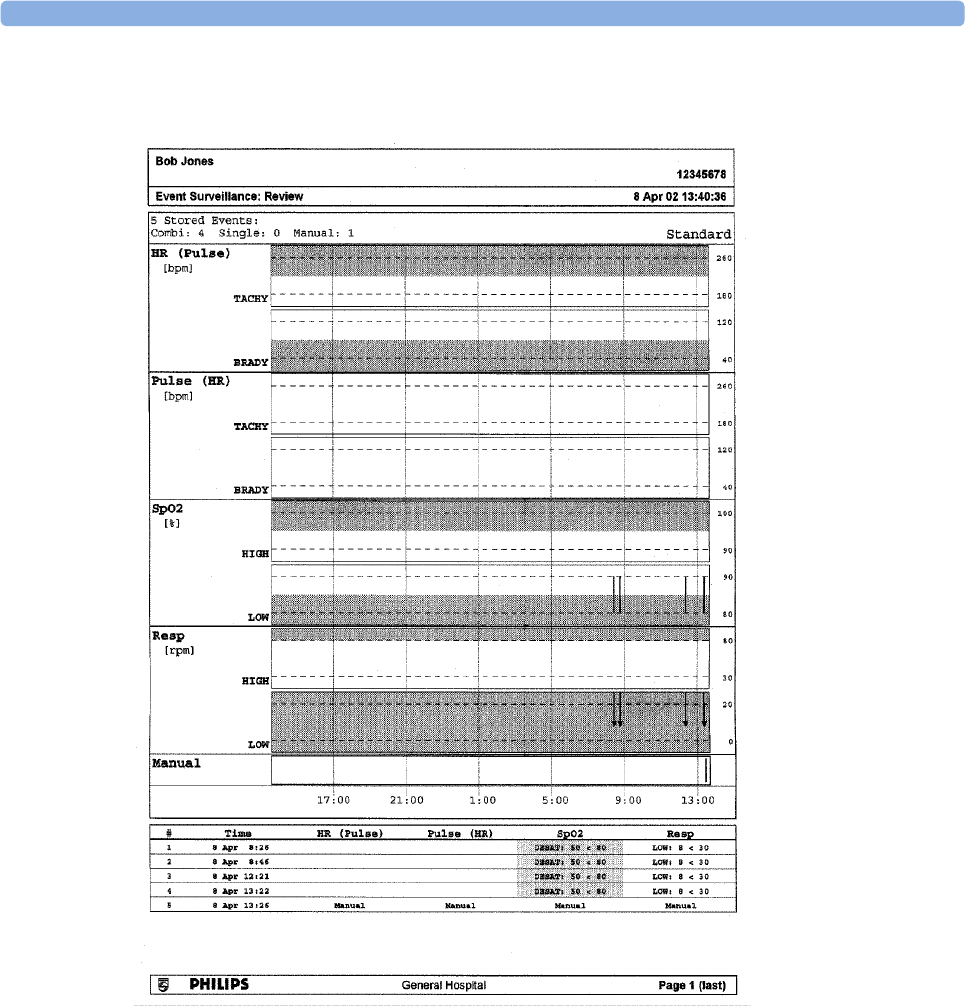
26 Event Surveillance
346
Event Review Reports
The event review report documents all the events stored in the event database for a selected group.
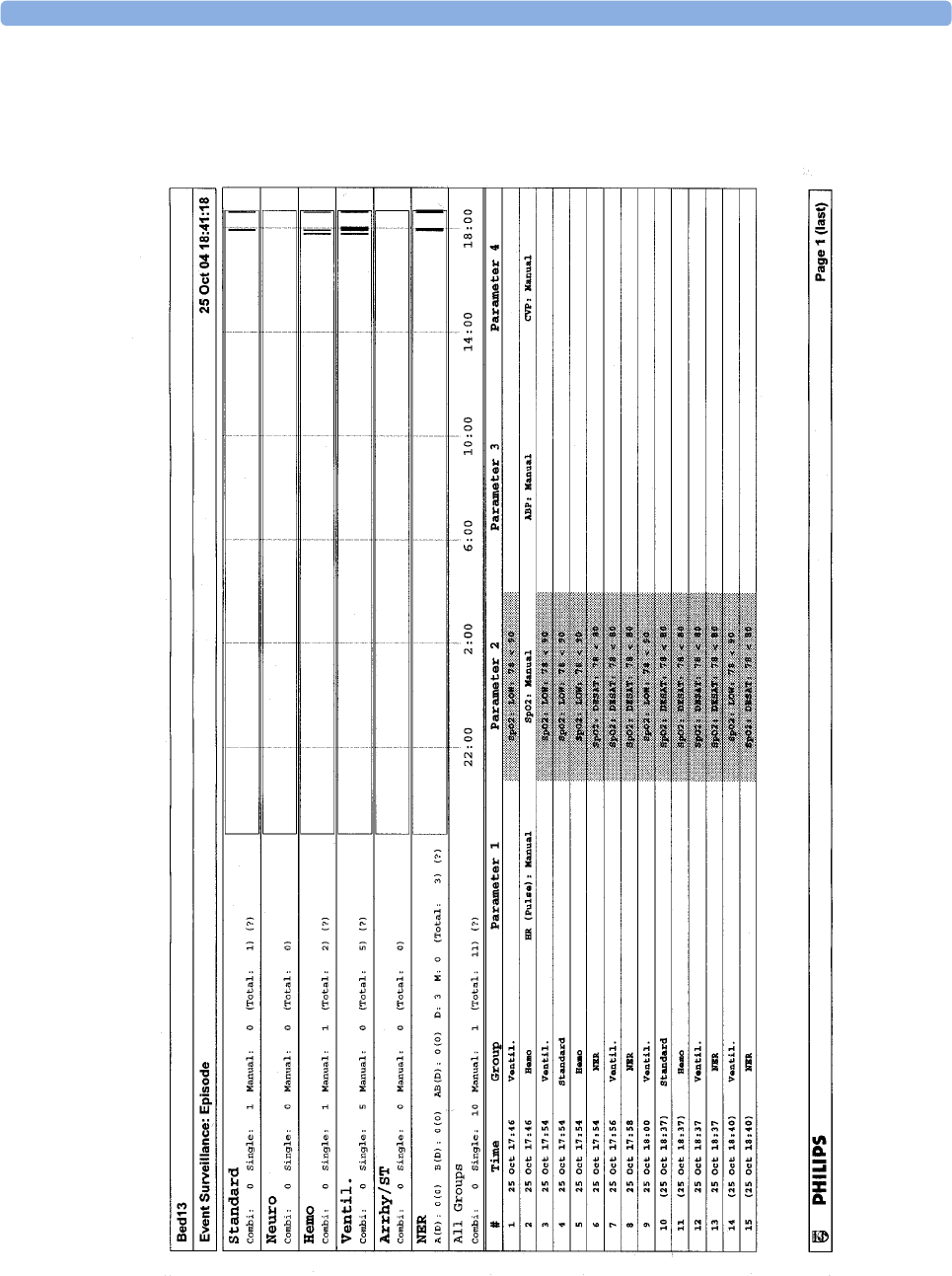
26 Event Surveillance
348
Event Summary Reports
(Advanced Event Surveillance only). The event summary report shows a graphical view and a tabular
view of all events in the database for all groups.

27
349
27ProtocolWatch
ProtocolWatch (PW) is a clinical decision support tool. It allows you to run a clinical protocol which
can monitor developments in the patient's condition, taking into account:
• measured values from the monitor
• values manually entered by you (for example manual temperature measurements, lab values)
• your assessment of patient status
ProtocolWatch notifies you when certain conditions or combinations of conditions occur and it
documents developments in a log which can be printed.
SSC Sepsis Protocol
The SSC (Surviving Sepsis Campaign) Sepsis Protocol is a protocol implemented for the
ProtocolWatch application. The SSC Sepsis Protocol is for use in screening for severe sepsis and
monitoring of its treatment. It is a computerized implementation of the January 2008 Surviving Sepsis
Campaign Guidelines for Management of Severe Sepsis and Septic Shock [Dellinger RP, Levy MM,
Carlet JM et al: Surviving Sepsis Campaign: International guidelines for management of severe sepsis
and septic shock: 2008 (published correction appears in Crit Care Med; 36:1394-1396). Crit Care Med
2008 36:296-327.], including the Amendment from October 2011. Philips does not make any claims
about their effectiveness to reduce the morbidity or mortality associated with severe sepsis.
The SSC Sepsis Protocol assists you in recognizing the early signs and symptoms of sepsis by
comparing the state of your patient to the defined criteria and then guides you through the
recommended treatment protocol. Use of the SSC Sepsis Protocol requires thorough knowledge of the
complete SSC Guidelines for Management of Severe Sepsis and Septic Shock. Due to space limitations
on the screen, the recommendations cannot always be reproduced in the full detail available in the
printed and on-line guidelines. The SSC Sepsis Protocol is not a diagnostic or therapeutic tool and is
not intended to replace the competent judgment of a clinician.
The SSC Sepsis Protocol consists of three separate consecutive phases:
Severe Sepsis Screening - measurement values and patient status are compared to the Severe Sepsis
Screening criteria. When these criteria have been met, the clinician confirms the presence of infection
and sepsis-related organ dysfunction and can authorize entering the Sepsis Resuscitation Bundle.
Sepsis Resuscitation Bundle - the recommendations for sepsis resuscitation are listed and can be
checked off as they are implemented. After achievement of all the sepsis resuscitation goals, or at the
latest after 6 hours, the Sepsis Resuscitation Bundle is completed and the Sepsis Management Bundle
begins.
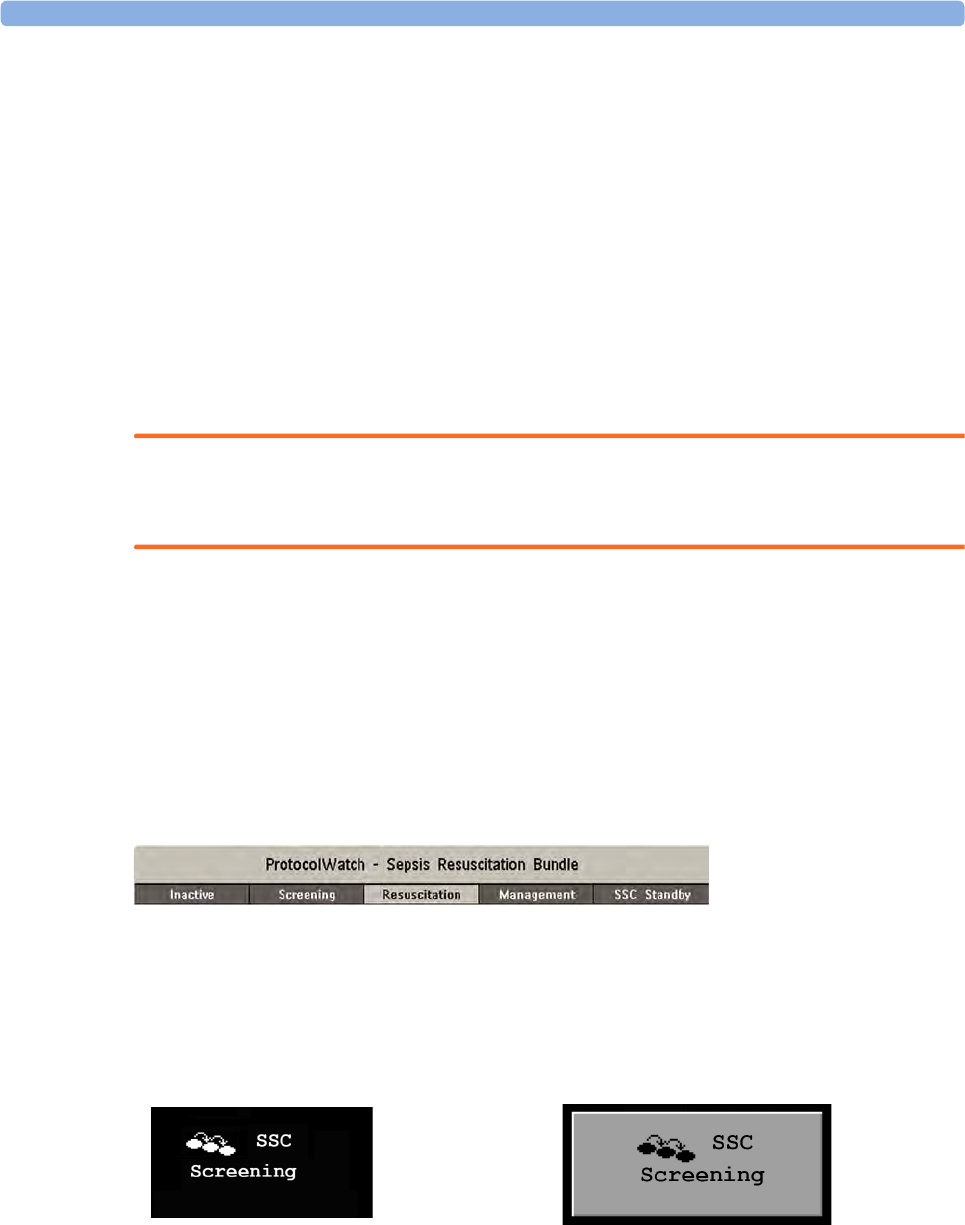
27 ProtocolWatch
350
Sepsis Management Bundle - the recommendations to maintain patient status are listed and can be
checked off as they are implemented. The Sepsis Management Bundle ends when 24 hours have
passed since the Sepsis Resuscitation Bundle began.
The SSC Sepsis protocol may have been configured, to customize it for the specific treatment
measures used in your facility. This can include changes to limits for measured or manually entered
values, changes to the Severe Sepsis Screening criteria, and changes to the recommendations in the
Sepsis Resuscitation Bundle and the Sepsis Management Bundle. If configuration changes have been
made, your screens may not exactly match the screens shown here.
Depending on the option your monitor has, it may be that only the Severe Sepsis Screening phase is
implemented. If, at the end of this phase sepsis has been confirmed, and the patient is transferred for
treatment in the resuscitation and management phases, you can transfer the current state, the settings
and the log from the SSC Sepsis Protocol in the MMS to another monitor with the full version of the
SSC Sepsis Protocol. The transfer of data and settings must be enabled in Configuration mode.
WARNING
Always consider the specific clinical context for your patient, before following SSC Sepsis Protocol
treatment recommendations.
The SSC Sepsis Protocol and this description are based on the SSC Guidelines for Management of
Severe Sepsis and Septic Shock from January 2008 (including the Amendment from October 2011)
and the SSC Bundle definitions from January 2005. To check the version of the Guidelines and Bundle
definitions on the monitor,
•Select
Main Setup then Revision then ProtocolWatch followed by SSC Sepsis
Orientation On The Screen
At the top of each window there is an orientation line showing the phases available on your monitor,
with the currently active phase highlighted.
You can also place the ProtocolWatch symbol, together with the currently active phase, on the main
screen, in one of the numeric positions. This allows you to see at a glance which phase is currently
active, even when no SSC Sepsis Protocol window is currently displayed.
If you need to enter data or perform an action in an SSC Sepsis Protocol window, the symbol will turn
into a SmartKey.
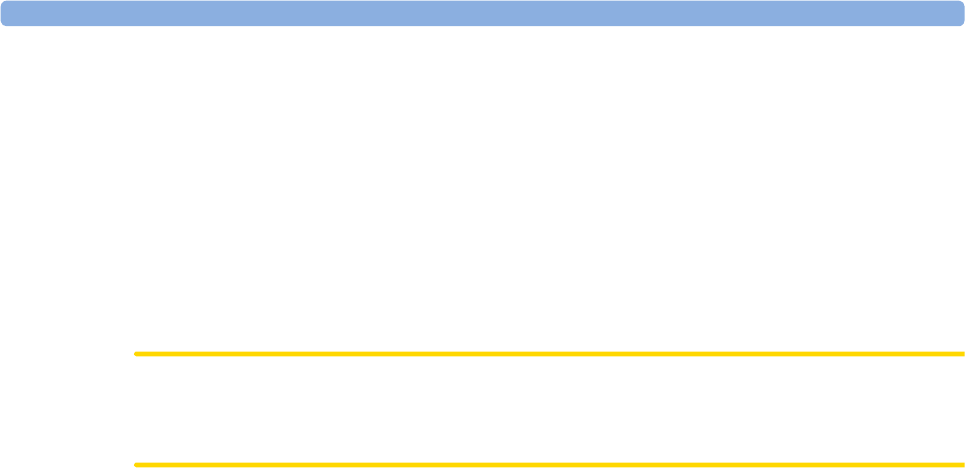
27 ProtocolWatch
351
Transferring Patients and Moving Manually Between Phases
If a patient has already been diagnosed as having severe sepsis before connecting them to the monitor,
you can select Main Setup then ProtocolWatch followed by Manual Transition to go directly to the
Sepsis Resuscitation Bundle to monitor treatment. Direct entry to the Sepsis Management Bundle is
also possible using the Manual Transition function and the time into the selected bundle can be set.
If a patient has been screened on arrival, for example in the emergency department, then transferred to
Intensive Care when Sepsis is confirmed, the current state, the settings and the log from the SSC Sepsis
Protocol will be transferred with the MMS to the new monitor. Should it be necessary, you can select
the phase at the new monitor manually with Main Setup then ProtocolWatch followed by Manual
Transition. The transfer of data and settings must be enabled in Configuration mode.
CAUTION
It is not possible to transfer SSC Sepsis Protocol data from a monitor with release F.0 software to
another monitor with release G.0 software or above, and vice versa.
Suspending the Protocol for 24 Hours
To suspend the protocol for 24 hours:
1Select Main Setup then ProtocolWatch followed by Suspend for 24 hours.
2Select Confirm.
The protocol will resume activity after 24 hours with Severe Sepsis Screening.
Severe Sepsis Screening
As soon as an adult patient is connected to the monitor, and heart rate or pulse is being measured, the
protocol begins to observe heart rate, temperature and respiration rate values in the background. If
temperature or respiration rate is not being measured continuously, a pop-up window appears at 4-
hour intervals to ask for manually measured values. These values are all compared to the screening
criteria: HR above 90, Temp above 38.3°C (100.9°F) or below 36.0°C (96.8°F), RR above 20.
If any one of the values fulfills the screening criteria, the first Severe Sepsis Screening window
appears.
The measured value which has fulfilled the criteria is shown highlighted. There are check boxes for the
infection signs and symptoms listed,
• if the monitor has measured values which meet the screening criteria, and
• for all signs and symptoms which cannot be measured by the monitor.
Check the box if you can confirm that this sign or symptom is present and new. If the patient is
mechanically ventilated, the Mechanically ventilated box must be checked. If you have manually
measured temperature or respiration rate, you can enter the values using the Enter RR and Enter Temp
keys.
Select Confirm when the check boxes reflect the current patient status.
Select Remind 15 min if you want to delay filling out this screen. (When you enter the screen manually
this key will be a Cancel key, as no action is required in this case.)

27 ProtocolWatch
352
Changing Conditions
The window reappears if:
• a previously fulfilled criteria is again fulfilled
• a new HR or RR criteria is fulfilled,
• the HR or RR value which previously fulfilled the criteria now triggers a ** RR High, ** HR High
alarm or a ***Tachy xxx > yyy alarm,
• after 8 hours (configurable to 12 hours) if at least one infection sign is still present.
Two Or More Infection Signs Or Symptoms Confirmed
If you have confirmed two or more infection signs in the first Severe Sepsis Screening window, a new
pop-up window appears asking Is the patient history suggestive of a new infection?.
If you select Yes, the next screen appears requesting a lactate measurement.
If you select No, the screening phase continues and the first Severe Sepsis Screening window reappears
in the situations described in “Changing Conditions” above.
Lactate Measurement
To enter the Lactate value, select the Enter Lact key. If the value entered is > 4 mmol/l the check box
is automatically checked.
Select Confirm when a value has been entered. What follows depends on the Lactate value:
•If Lactate is > 4 mmol/l: the value meets the criteria for severe sepsis and a window appears
recommending authorized clinician review before entering the Sepsis Resuscitation Bundle.
•If Lactate is ≤ 4 mmol/l: a further window appears requiring your input to determine on the
basis of blood pressure values whether the patient meets the criteria for severe sepsis.
Hypotension Evaluation
If the Lactate value was not above 4 mmol/l, the next window asks whether the patient has persistent
hypotension.
The protocol defines Hypotension as:
• SBP < 90mmHg (12.0kPa), or
• MAP < 70mmHg (9.3kPa), or
• SBP decrease > 40mmHg (5.0kPa) below baseline.
You can see this definition in the window by selecting Show Details.
If the patient has persistent hypotension as defined, select Yes. This acknowledges that the patient
meets the criteria for severe sepsis and a final window appears recommending authorized clinician
review before entering the Sepsis Resuscitation Bundle.
If the patient does not have persistent hypotension, select No. After an hour a screen appears asking Is
the previously acknowledged infection still present?.
If you select Yes, the window for the Lactate measurement will reappear. If you select No, screening
continues - comparing heart rate, temperature and respiration rate values against the screening criteria.

27 ProtocolWatch
353
Authorized Clinician Review
To review the protocol, select Protocol Log. You can also print out the log to document the screening
phase.
Select Confirm to complete the screening phase and, if you have the appropriate monitor option,
continue to the Sepsis Resuscitation Bundle phase.
Sepsis Resuscitation Bundle
The treatment recommendations from the Sepsis Resuscitation Bundle are presented and the
implementation of the recommendations is monitored.
When the Sepsis Resuscitation Bundle phase begins, the ProtocolWatch Screen automatically appears
on the monitor (if configured and available on the monitor).
The lower area of the screen contains:
• a reminder list of the treatment recommendations - recommendations which have been fulfilled
are shown in gray, overdue recommendations are shown in orange
• a timer showing the time already passed in this phase
• three horizon trends for MAP, CVP and ScvO2 or SvO2, if these measured values are available
• a list of the latest manually entered values - if you select this list you will open the Manual Entry
Log window where the last 24 manually entered values are shown for reference
If ScvO2 or SvO2 and CVP are not being continuously measured, a pop-up window appears at hourly
intervals to ask for a manually measured value.
Monitoring the Sepsis Resuscitation Bundle Recommendations
When you select the lower area of the ProtocolWatch Screen, the Sepsis Resuscitation Bundle
window appears. If you do not have the ProtocolWatch Screen displayed, the Sepsis Resuscitation
Bundle window appears automatically once an hour.
Select the Enter Lact key to enter a lactate value. When you have entered a value, or if a lactate value
had previously been entered, the box is checked.
Check the Take Blood Cultures box when you have taken blood cultures.
Check the Administer Intravenous Antibiotics box when you have started broad-spectrum antibiotic
therapy.
The remaining three recommendations are automatically compared to the Sepsis Resuscitation Bundle
criteria, if the measurements are available on the monitor. A box is checked when the corresponding
recommendation has been fulfilled.
Depending on your configuration, continuously measured CVP values may be disregarded if they
exceed a set limit. Whether this is so, and which limit is applied, is set in the monitor's Configuration
mode.
If you have manually measured ScvO2 or CVP, you can enter the values using the Enter ScvO₂ and
Enter CVP keys. The box is checked automatically if the value fulfills the recommendation.
The boxes for MAP, ScvO2/SvO2 and CVP can also be checked manually (for cases where the
monitor does not measure them) but only when the timer has reached 4 hours to ensure that these
values are achieved and maintained mid-term. Check these boxes if the recommendation has been
fulfilled.
To see more details about the recommendations, select the Show Details key.
Select Confirm when the check boxes reflect the current treatment status.

27 ProtocolWatch
354
Checking The Sepsis Resuscitation Bundle Window
During the Sepsis Resuscitation Bundle you can open the Sepsis Resuscitation Bundle window at any
time to check the status or to make entries. The recommendations are shown as follows:
• Recommendations which are not yet fulfilled are shown in black. They also appear in the list on
the lower area of the ProtocolWatch Screen.
• Recommendations which are overdue are shown in orange.
• Recommendations which have been fulfilled and confirmed are shown in gray. They no longer
appear in the list on the lower area of the ProtocolWatch Screen.
Previewing the Sepsis Management Bundle
At any time during the Sepsis Resuscitation Bundle you can preview the Management Bundle in order
to see which recommendations will follow there.
• Select the Preview Managmnt key.
Ending The Sepsis Resuscitation Bundle
When all recommendations have been fulfilled and confirmed, or when 6 hours have passed since the
bundle started, the Sepsis Resuscitation Bundle is ended.
You are asked to confirm with the Yes key that the Sepsis Management Bundle should now be started.
If you select No, the Sepsis Resuscitation Bundle is extended for 1 hour.
Sepsis Management Bundle
The stabilization recommendations from the Sepsis Management Bundle are presented and the
implementation of the recommendations is monitored.
When the Sepsis Management Bundle phase begins, the ProtocolWatch Screen is automatically
updated (if configured and available on the monitor). In the lower area of the Screen, the list of
recommendations for the Sepsis Management Bundle replaces the list for the Sepsis Resuscitation
Bundle. The timer shows the combined time for both phases.
Monitoring the Sepsis Management Bundle Recommendations
When you select the lower area of the ProtocolWatch Screen, the Sepsis Management Bundle
window appears. If you do not have the ProtocolWatch Screen displayed, the Sepsis Management
Bundle window appears automatically once every six hours.
The Low Dose Steroids for septic shock per policy recommendation may not appear if it has been
configured not to do so for your hospital.
Check the Low Dose Steroids administered box when you have started steroid therapy or the Low
Dose Steroids contra-indicated box if this treatment is contra-indicated for your patient.
The boxes for Maintain Glucose <8.3mmol/l (150 mg/dl) and Maintain Insp. Plateau Pressure
<=30cmH₂O can only be checked when the timer has reached 20 hours to ensure that the stabilization
of these values is achieved long-term. Check these boxes if the recommendation has been fulfilled.
Recommendations which have been fulfilled are shown in gray with the time fulfillment was entered.
To see more details about the recommendations, select the Show Details key.
Select Confirm when the check boxes reflect the current treatment status.

27 ProtocolWatch
355
Ending The Sepsis Management Bundle
The Sepsis Management Bundle normally ends 24 hours after the Sepsis Resuscitation Bundle started,
as documented by the bundle timer on the ProtocolWatch screen. You are asked to confirm with the
Yes key that routine monitoring should now resume. By selecting No you can extend the Sepsis
Management Bundle phase by an additional 6 hours.
After completion of the Sepsis Management Bundle a sepsis standby phase begins which allows time
for further patient stabilization and recovery. During this phase Severe Sepsis Screening is suspended.
The standby phase is by default 7 days but the length can be adjusted in Configuration Mode.
Viewing and Printing the Protocol Log
The Protocol Log stores all user interactions, alarms and phase transitions while the SSC Sepsis
Protocol is running.
To view the Log select Main Setup then ProtocolWatch followed by Protocol Log
You can choose between three different views of the Protocol Log:
•Summary View - a short form which does not include when the windows were triggered
•Full View - a complete log of all user interactions, alarms and phase transitions
•Phase View - you can view log entries for one phase by selecting that phase on the orientation line
When the Log consists of several pages, you can move through the pages with the Previous Page and
Next Page keys.
To start a Protocol Log printout, select Print.
The log is cleared whenever a patient is discharged.
Always Discharge Patients
It is essential that patients are discharged when monitoring ends. As a reminder, the monitor can be
configured to display a pop-up window when the monitor has been switched off, in Standby mode, or
not monitoring basic vitals for a certain time. The window asks whether a new patient is being
monitored and offers a pop-up key to discharge the previous patient if this is the case. The window
must be configured in Configuration Mode.
When the previous patient is discharged, this clears the protocol log, resets the timers and deletes
manually entered measurement values.

27 ProtocolWatch
356
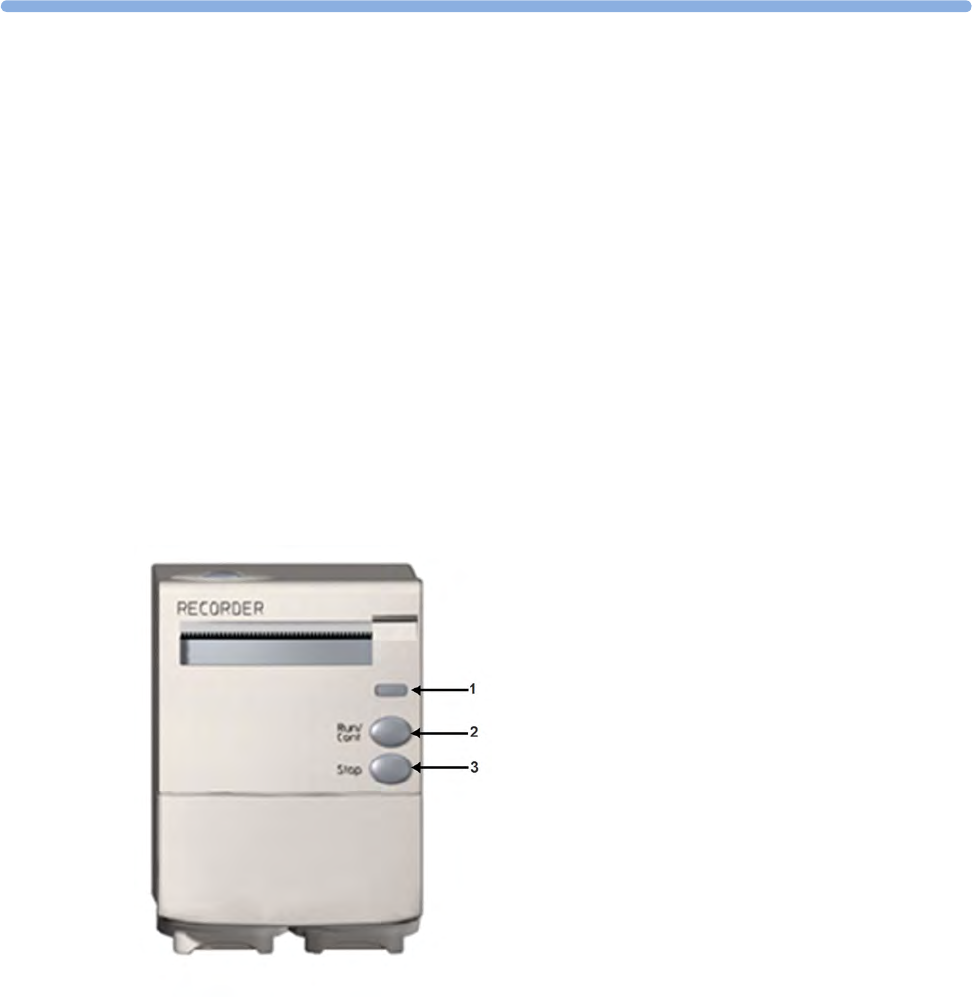
28
357
28Recording
There are two ways to record data using your monitor. If a paper-strip recorder is available, you can
make paper recordings, selecting from a variety of recording types. If no paper-strip recorder is
available, or if you want to record data in an electronic form, you can use electronic recording. See
“Paper-Strip Recording” on page 357 and “Electronic Recording” on page 365 for further details
Paper-Strip Recording
MX500/550/
600/700/800 The M1116B/C plug-in recorders record numerics for all active measurements and up to three
waveforms. You can use them for local recording mounted in the monitor's FMS.
M1116B 1Continue LED - lights if a continuous recording is
ongoing
2RUN/CONT key - starts a delayed recording,
extends the current recording or makes the current
recording continuous
3STOP key - stops the current recording
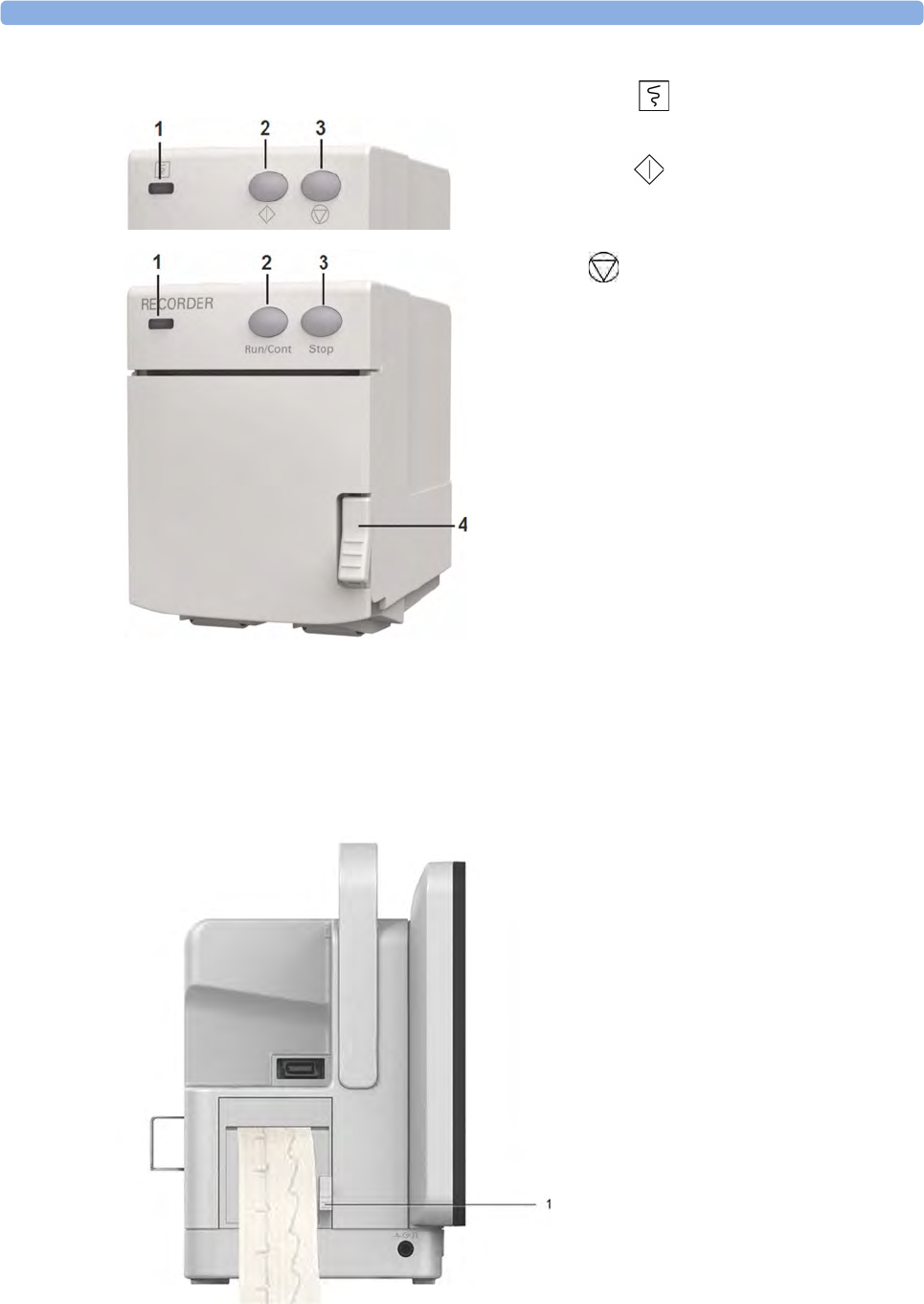
28 Recording
358
Integrated Recorder
MX400/450 The optional integrated recorder records numerics for all active measurements and up to three
waveforms.
M1116C 1Continue LED ( ) - lights if a continuous
recording is ongoing.
2Run/Cont key ( ) - starts a delayed recording,
extends the current recording or makes the
recording continuous.
3Stop key ( ) - stops the current recording.
4Door latch.
1Open recorder latch
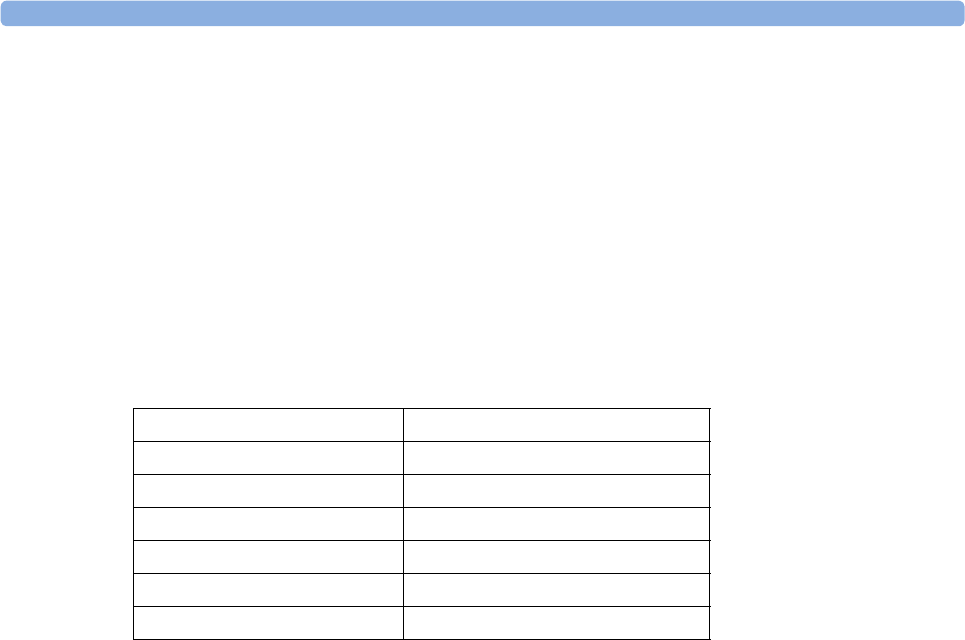
28 Recording
359
Central Recording
For central recording from the bedside, your monitor must be connected via a network to an
Information Center. You can use either the M1116B 2-Channel Recorder or the standalone M3160A
4-Channel Recorder. Recordings made on the M3160A may look slightly different to those described
here. See the documentation supplied with the Information Center for information on the 4-Channel
Recorder.
Starting and Stopping Recordings
The recordings pop-up keys let you start and stop recordings. Select the Recor- dings SmartKey to
call up the line of pop-up keys. Scroll right or left to see any pop-up keys not displayed.
The selection of pop-up keys available depends on the monitor you are using.
Quickstarting Recordings
To quickstart any type of recording using a pre-configured recordings template,
• Select the Recor- dings SmartKey and then select the pop-up key of the recording type you want
to start.
Alternatively, you can
• Select the Main Setup SmartKey, select Recordings, then select the recording type.
To quickstart a delayed recording,
• Select the SmartKey Delayed Record to immediately start a delayed recording.
M1116B/C
only You can also start a delayed recording by pressing the Run/Cont key on the recorder module.
Extending Recordings
Timed (non-continuous) recordings stop when their runtime is over. Continuous recordings continue
until stopped manually or by an INOP condition.
• To extend an ongoing recording by its runtime, reselect its Start pop-up key once.
• To make an ongoing recording continuous, reselect its Start pop-up key twice within 5 seconds.
M1116B/C
only You can also make an ongoing recording continuous by pressing the Run/Cont key on the recorder
module.
Delayed Recordng Vital Signs
RT A Recordng Alarm Limits
RT B Recordng ST Segments
RT C Recordng STE Segments
Select Waves ECG QT
HiRes Recordng Setup Recordng
All ECG Waves Stop All Recordng
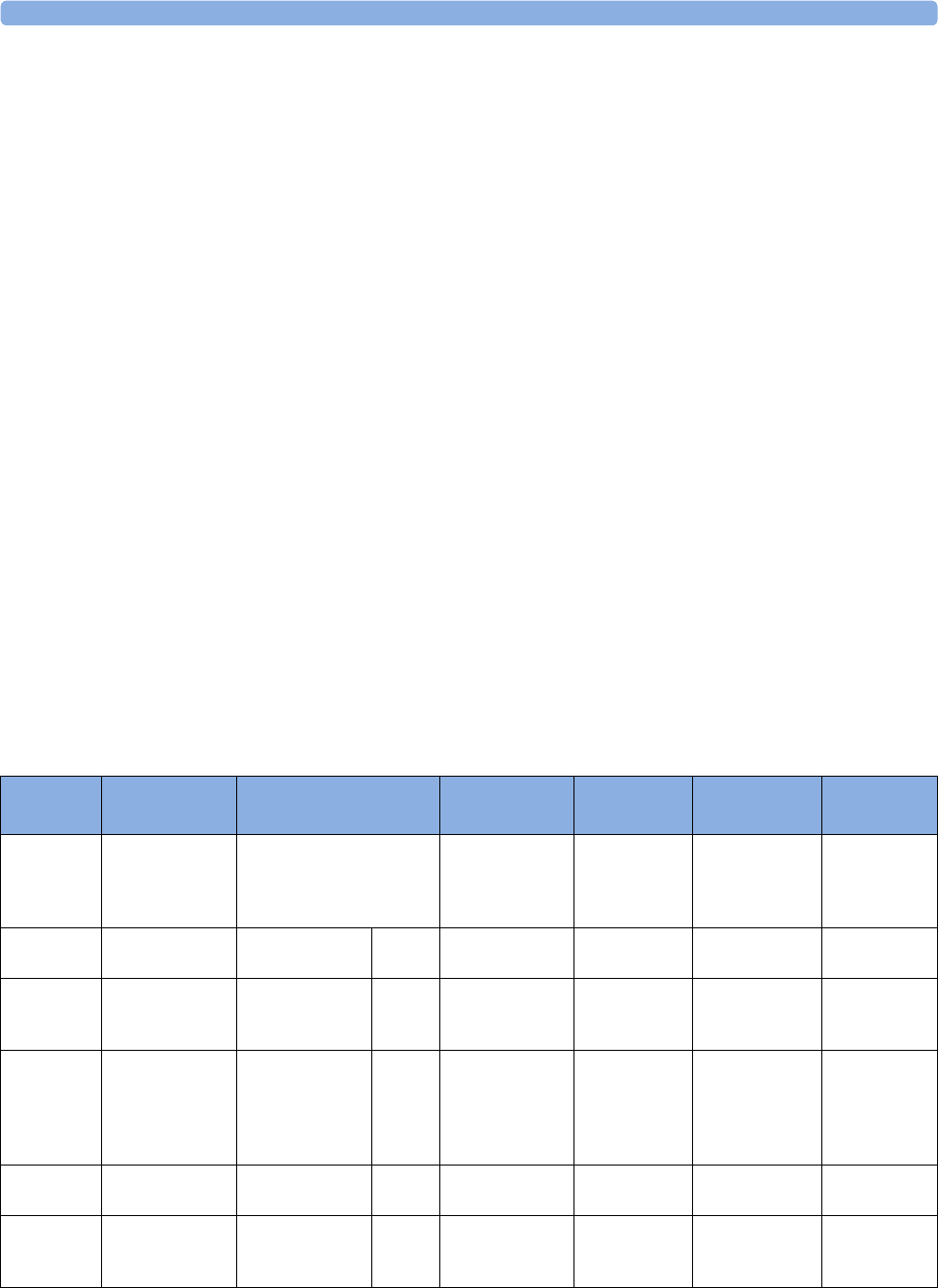
28 Recording
360
Stopping Recordings
Recordings stop automatically when the preset runtime is over, when the recorder runs out of paper,
when you open the recorder door or when the recorder has an INOP condition.
• To manually stop a recording, select the Recor- dings SmartKey and then select the pop-up key
Stop All Recordng.
M1116B/C
only You can also stop a recording by pressing the Stop key on the recorder module.
Recording Without a Template
To record without a pre-configured template, selecting the waves you require,
1Either: Select the Recor- dings SmartKey then select the pop-up key Select Waves.
Or: Select the SmartKey Record Waves.
2Use the pop-up keys to choose up to three measurement waves to be printed on the recording. If
you want fewer than three waves on the recording, select the waves you want then select the
Continue pop-up key.
3Select one of the recording speed pop-up keys to set the required recording speed.
4Select the Start pop-up key to start the recording.
Select Waves recordings use default values for any recorder settings not defined: runtime is
continuous, overlapping is set to non-overlapping.
Overview of Recording Types
This table details settings for local recordings. For details on recordings made on the central recorder,
see your Information Center Instructions for Use.
Delayed Alarm Realtime (RT) All ECG
Waves HiRes Trend Procedure or
Context
Type of
recording
manual automatic, triggered by
defined alarm conditions
manual manual manual manual, use the
context
window's pop-
up keys to start
Recording
Destination
local recorder and
central
local recorder and
central
printer local recorder and
central
local recorder
only
local recorder
only
local recorder
only
Information
recorded
from the start
trigger minus the
delay time
from the start
trigger minus the
delay time
n/a from the start
trigger
from the start
trigger, in
realtime
from the start
trigger minus
delay time
defined by the
context
Number of
waves
up to 3 up to 3 n/a up to 3 all ECG waves
currently
monitored and
available
up to 3 high-
resolution trends
(beat-to-beat)
waves
up to 3 waves,
or specific to
the context, e.g.
a wedge
procedure
Speed 50, 25, 12.5, 6.25,
2.5 mm/sec
50, 25, 12.5, 6.25,
2.5 mm/sec
n/a 50, 25, 12.5, 6.25,
2.5 mm/sec
25 mm/sec 1, 2, 2.5, 3, 6 cm/
min
defined by the
context
Runtime 15, 20, 25, or 30
seconds
15, 20, 25, or 30
seconds
n/a 6, 8, 10, 15
seconds or
continuously
4 seconds per
wave
10 minutes, or
continuously
defined by the
context
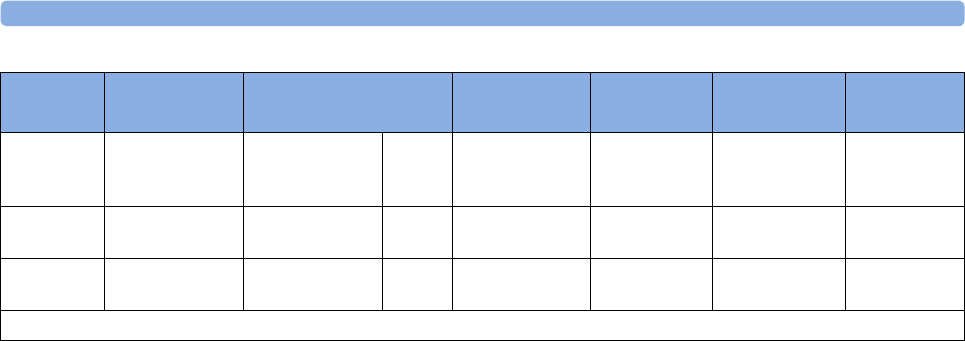
28 Recording
361
All ECG Waves Recordings
An All ECG Waves recording shows a 4 second recording of each lead with a calibration bar preceding
each ECG lead. All available leads are recorded sequentially in the standardized lead order. The
recording is realtime, that is, the information recorded is not simultaneous.
Creating and Changing Recordings Templates
To save you defining recording settings each time you start a recording, you can create templates for
commonly-used types of recordings in the Setup Recording menu. You can create templates for one
delayed recording, one alarm recording, three realtime recordings (two for MP20/30), and one high
resolution recording. All ECG Waves recordings do not need to be configured, they always use the
same format.
Changing recordings templates changes the settings that will be used each time a recording of this
name is triggered.
1Select the Main Setup permanent key to call up the Main Setup menu.
2Select Recordings to enter the Setup Recording menu.
3Select the name of the template you want to create or change. Each recording name is linked to a
recording type, delayed, alarm, realtime, and hi-res trends. Recording names can be changed in the
monitor's Configuration Mode.
4Design the template by selecting each menu item and entering the information for the template.
•Recorder: choose which recorder the recording will print to (Local, Central 2-Ch, or Central 4-
Ch recorder, or Printer (for realtime reports in alarm recording only)).
•Channel 1, Channel 2, etc.: choose which waveform to record in each channel. If the wave
assigned to a recording channel in a particular template is not available when a recording is
triggered, the channel is left blank on the recording strip. The pop-up list of available (currently
monitored) waves differs according to the recording type:
– Realtime, delayed and alarm recordings: the list shows all the currently available waves.
– High-resolution recordings: the list shows all the available high-resolution waves.
In addition to the currently available waves, you can choose from several other settings which
make an automatic allocation when the recording starts:
–Alarm Par will always record the measurement in alarm in the chosen recorder channel
–Primary Lead will always record the current primary lead in the chosen recorder channel
–SecondryLead will always record the current secondary lead in the chosen recorder channel
–Any Agent will always record the currently selected anesthetic agent.
For high-resolution recordings only the Any Agent setting is available.
Stops automatically automatically n/a automatically if
limited, manually
if continuous
automatically automatically if
limited, manually
if continuous
defined by the
context
Delay Time 10, 15 seconds 10, 15 seconds n/a none none 6, 5, 4, 3, 2, 1
minutes
defined by the
context
Overlap up to 3 waves up to 3 waves n/a up to 3 waves none up to 3 waves defined by the
context
n/a = not applicable
Delayed Alarm Realtime (RT) All ECG
Waves HiRes Trend Procedure or
Context

28 Recording
362
•Overlap: define whether the recorded waveforms will be printed overlapping or beside each other.
•Speed: choose the recording print speed.
•Delay Time: Delayed recordings start documenting on the recorder strip from a pre-set time
before the recording is started. This interval is called the "Delay Time" and can be set as specified
in “Overview of Recording Types” on page 360. This setting can only be changed in Configuration
Mode.
•Run Time: see how long this type of recording is configured to run. This setting can only be
changed in Configuration Mode. Continuous recordings run indefinitely.
Central Config: if available in the General menu, select this setting to use the recording settings made
for the centrally-connected recorder.
Changing ECG Wave Gain
The ECG Gain setting in the General Recording Setup window defines how every recorded ECG
wave, irrespective of template or recording type, will appear on the recorder strip. This does not affect
the displayed ECG wave, or printed ECG reports. To change the ECG gain setting for recordings,
1In the Setup Recording menu select General.
2Select ECG Gain.
3Select the required setting:
–Auto: the wave recording will use the same scale as the ECG wave on the monitor screen
–5 mm/mV, 10 mm/mV, 20 mm/mV: the wave recording will use a scale of 5, 10, or 20
millimeters per millivolt.
Recording Priorities
Manually-started recordings have priority over automatically-started recordings. If an
automatically-triggered alarm recording is running, and a realtime or delayed recording is manually
started, the alarm recording is stopped and the manually-requested recording is started.
More recent manually-started recordings have priority over older manually-started recordings.
If a manually-started recording is running, and another manually-started recording is triggered, then
the older recording is stopped and the more recent manually-started recording is started.
Alarm recordings are prioritized according to alarm priority. If an alarm recording triggered by a
yellow alarm is running and a new alarm recording is triggered by a red alarm, the yellow alarm
recording is stopped and the red alarm recording is started.
Recording Strip
The information printed on the recording strip includes the patient name and MRN, bed number, date
and time of recording, recording speed, and (except when the information is printed above the waves)
recording code. Active alarm and INOP messages as well as numerics for all currently monitored
measurements are also printed.
Recording strip annotations are printed at the beginning of the recording strip, either before or above
the waves depending on the configuration. The annotations are updated at regular intervals, every 15
minutes for recordings made at speeds lower than 6.25 mm/s, and every 60 seconds for recordings
made at speeds greater or equal to 6.25 mm/s. When annotations are configured to appear above the
wave, it may not be possible to print them all when the runtime of the recording is too short.
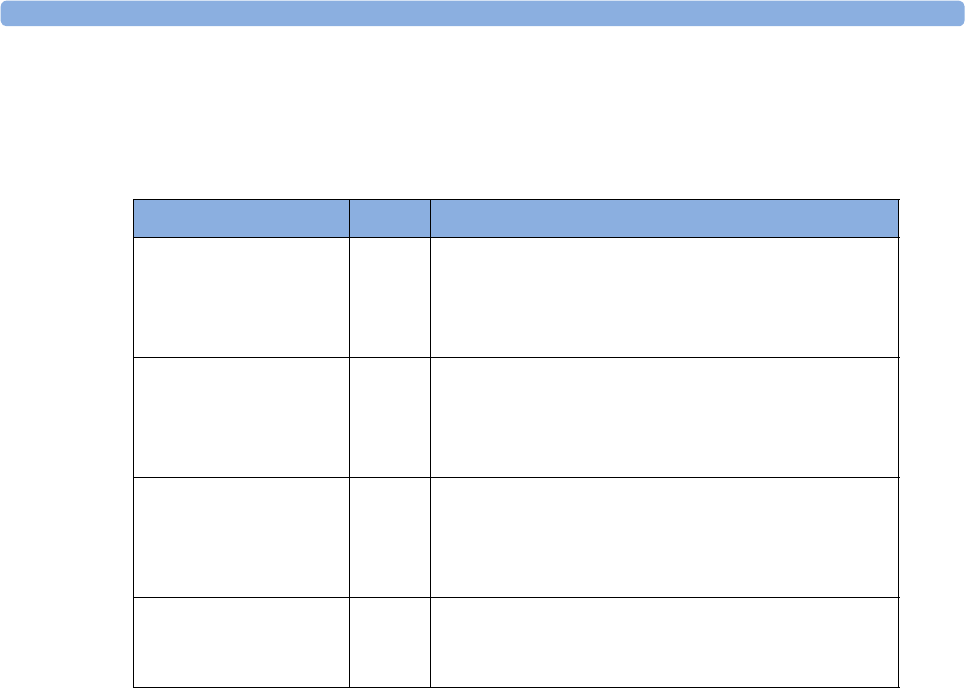
28 Recording
363
Recording Strip Code
The recording strip code printed in the first line of the initial annotation has up to seven characters,
specifying recording type, operating mode, application area, patient category, and delay time, if
applicable. It is only included when annotations are configured to appear before the waves.
Recorded Waveforms
A selection of up to three waveforms is recorded, marked with wave labels and wave scale information.
Wave scale information can be in the form of a calibration bar, like the 1 mV calibration bar for ECG,
or calibration steps before the waveform starts.
Maintaining Recording Strips
Recording ink sometimes fades when covered with transparent tape. Avoid covering any part of a
recording that is clinically relevant (annotation or waveforms) when taping a recording strip to a
patient record or other patient documentation.
Code Meaning
Recording type 90
8A
0B
91
Realtime
Delayed
Alarm
Context (Procedures)
Operating mode M
D
C
S
Monitoring
Demo
Configuration
Service
Application area I
O
C
N
ICU
OR
CCU
NICU
Patient category A
P
N
Adult
Pediatric
Neonatal
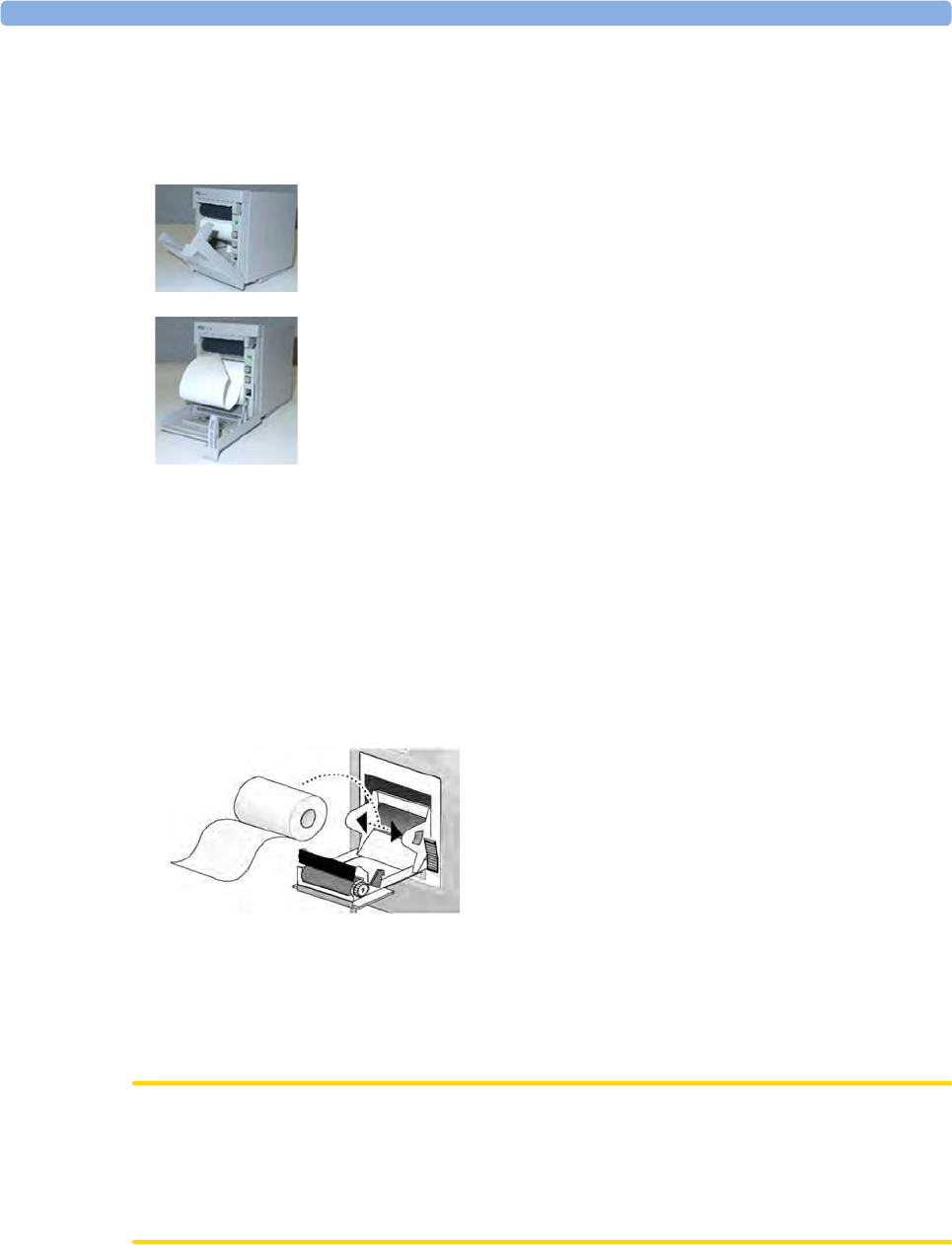
28 Recording
364
Reloading Paper
M1116B (MX500/550/600/700/800)
M1116C (MX500/550/600/700/800) and Integrated Recorder (MX400/450)
1Press the latch on the right side of the recorder door to open the door.
2Remove the empty core.
3Insert a new roll and secure it in place on the paper holder. The paper feeds from the bottom of
the roll and over the top of the recorder door.
Recommended paper: M4816A and M4817A.
4With at least one inch of paper extending beyond the edge of the door, swing the recorder door up
and push it firmly closed.
5To test if paper is loaded correctly, start a recording. If no printing appears, paper may be loaded
backwards. Try reloading the paper.
CAUTION
When the recorder is disabled (for example, door open, or out of paper), any alarm recordings will be
sent to the central station recorder, if there is one. If no recorder is available, alarm recordings may be
lost during the time the recorder is disabled. The message No alarm recording available will be
displayed. This message is not shown if Printer is configured as the alarm recording destination.
1Use the latch on the right side of the recorder door to pull the door
open.
2Remove the empty core.
3Insert a new roll so that it fits snugly into its housing and the paper
end is feeding from the top. Recommended paper: 40477A and
40477B.
4Pull out some paper and fold along the front edge at a 45° angle. This
makes it easier to feed the paper under the roller as shown.
5Feed the paper through and pull some paper out from the top of the
roller.
6Close the recorder door.
7To test if paper is loaded correctly, start a recording. If no printing
appears, paper may be loaded backwards. Try reloading the paper.
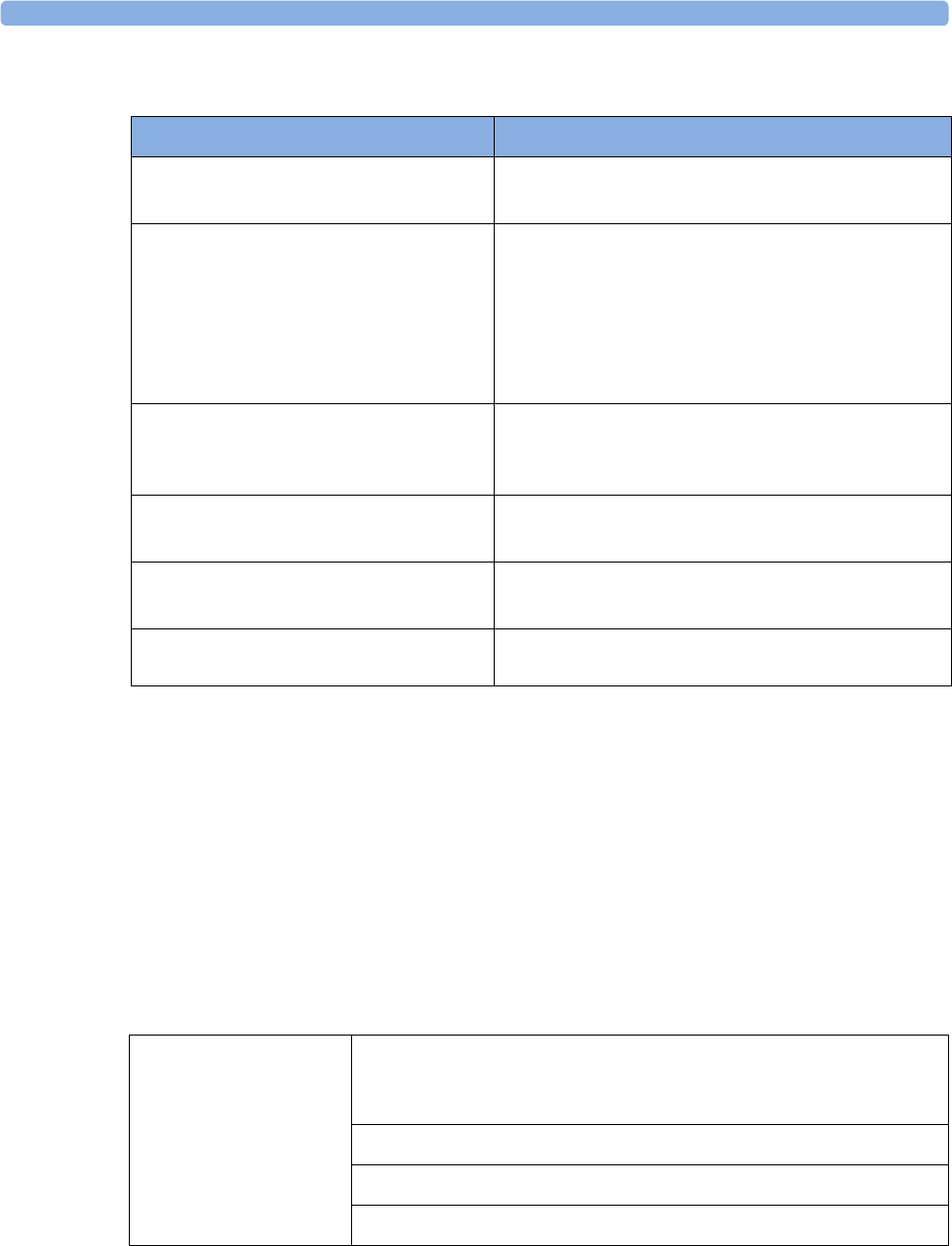
28 Recording
365
Recorder Status Messages
Electronic Recording
Electronic recording allows alarm-triggered reports to be captured electronically in the monitor
database. They can then be printed when a printer is available. The printer can be locally connected at
the USB interface, a central printer connected to the Information Center or the XDS Printing Service
that is part of the IntelliVue XDS Application. With an XDS print server, the reports can be printed to
a standard off-the-shelf printer and can also be stored as files (e.g. .jpg, .bmp or .pdf) on the associated
PC.
Capturing Alarm Events
The monitor can be set up to automatically capture alarm events, triggered by selected alarms.
When one of the selected alarms occurs, the monitor automatically captures the alarm and creates a
realtime report which is stored in the database.
Recorder Status Messages Explanation
For example:
Local alarm recording running
The named recording is currently running.
No Central alarm recording available
No local alarm recording available
No alarm recording can be made on the selected
recorder. Try selecting another recorder. If a local
recorder was selected, the monitor will try to reroute the
recording to a central recorder. Recordings configured
to a central recorder cannot be rerouted to a local
recorder. Alarm recordings may be lost. Try configuring
Printer as the alarm recording destination.
No alarm recording available No recorder available. Alarm recordings will be lost.
Try configuring Printer as the alarm recording
destination.
Central Recorder out of paper
Local Recorder out of paper
The named recorder is out of paper.
Central Recorder door open
Local Recorder door open
The door of the specified recorder is open.
<Recorder Type> not supported The M1116A recorder is not supported. Connect a
M1116B/C plug-in recorder.
All settings must be
made in Configuration
mode.
The output device for alarm recordings is set to "printer".
This automatically makes the alarm event documentation a realtime
report.
The target device for realtime reports is set to "database"
The alarms to trigger the report are set up.
The database is set to print automatically when a printer is available.
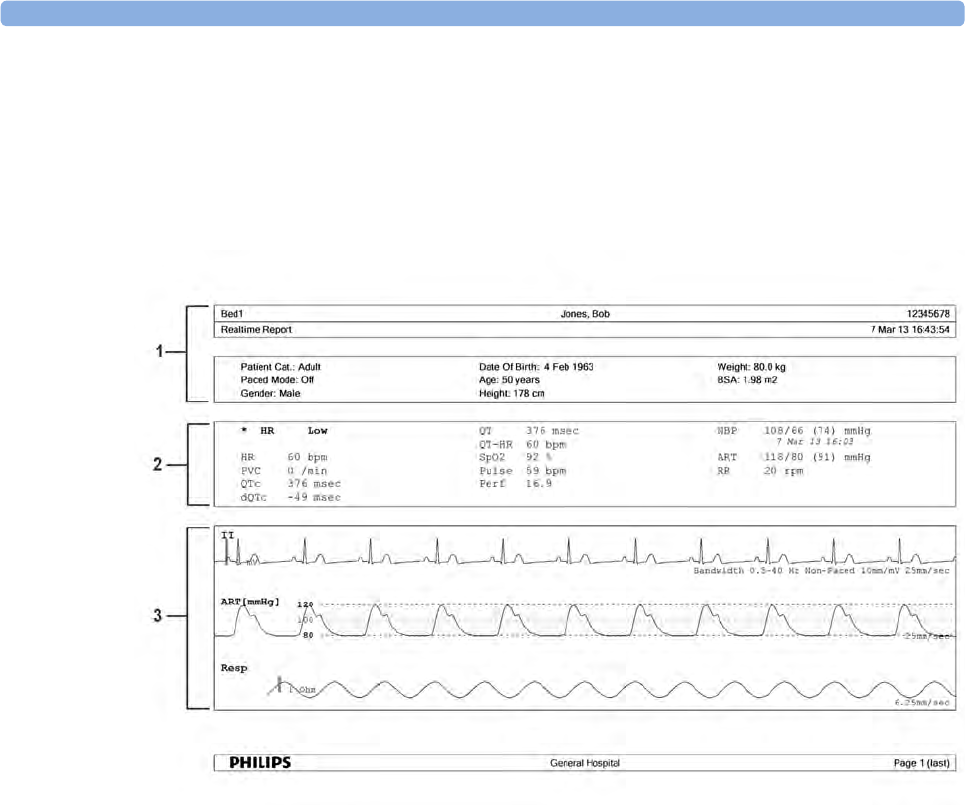
28 Recording
366
As soon as the monitor is connected to a printer, or to a PC or network with the IntelliVue XDS
Application software, it will automatically print the report, or send it to a patient-specific folder as an
electronic file.
Alarm-Triggered Realtime Reports
Here is a sample of a realtime report triggered by an alarm event.
1Patient demographic information, time stamp
2Active Alarms and INOPs, followed by vital signs
3Measurement waves section
The data in the report are from the period before the alarm triggered the report. The span of time
covered by the wave data depends on the wave speed of the individual waves.
The time stamp on the report is the time the report was created and may not exactly correspond with
the time the alarm was indicated on the monitor.
More Information About the Print Database
The reports captured in the database will remain there until they are printed, even after patient
discharge. When they have been sent to the printer they will be automatically deleted from the
database.
NOTE
The monitor cannot check for printer errors. If a report is sent to a printer but cannot be printed due
to an error, it may be lost. Use an XDS print server set up to save the reports as electronic files, to
ensure that no reports are lost.

28 Recording
367
The maximum number of reports that can be stored in the database varies depending on the database
configuration and the size of the reports. When the database is full, no new reports can be stored. In
this case, print or delete reports to make space available in the database.

28 Recording
368

29
369
29Printing Patient Reports
Starting Report Printouts
Most patient reports can be printed by selecting Main Setup then Reports (or the Print Reports
SmartKey) and then selecting the report name in the top half of the Reports menu. Report names are
shown only for reports that have been correctly set up.
Data from the time of the print request is printed, even if the print job is delayed in the printer queue.
Your monitor can also be set up to automatically print all reports when a matching printer is available.
To set this up
1Select Main Setup then select Reports
2Select Auto Print Dbs.
–Always will print all reports when a matching printer is available.
–Host Only will print the reports stored on the host monitor when a matching printer is
available. Reports stored in the companion database (shown in gray on the Reports Job List)
must be manually sent to the printer. See “Checking Report Status and Printing Manually” on
page 375.
–Never will print no reports automatically; all reports stored in the host or companion database
must be manually sent to the printer. See “Checking Report Status and Printing Manually” on
page 375.
Printout Location
Depending on availability, reports can be printed:
• on locally connected printers,
• on printers connected to the Information Center or the Application server,
• to an IntelliVue XDS Application print service,
• to an external PC-based print server with Philips server software,
• into the print database.
Print jobs stored in the database are automatically printed when a print device with a matching paper
size becomes available.
Print jobs in the print database are not deleted after a patient discharge. A new patient can be
admitted and their reports are saved in addition to the previous reports. Always admit your patient so
that reports can be clearly assigned to a patient.
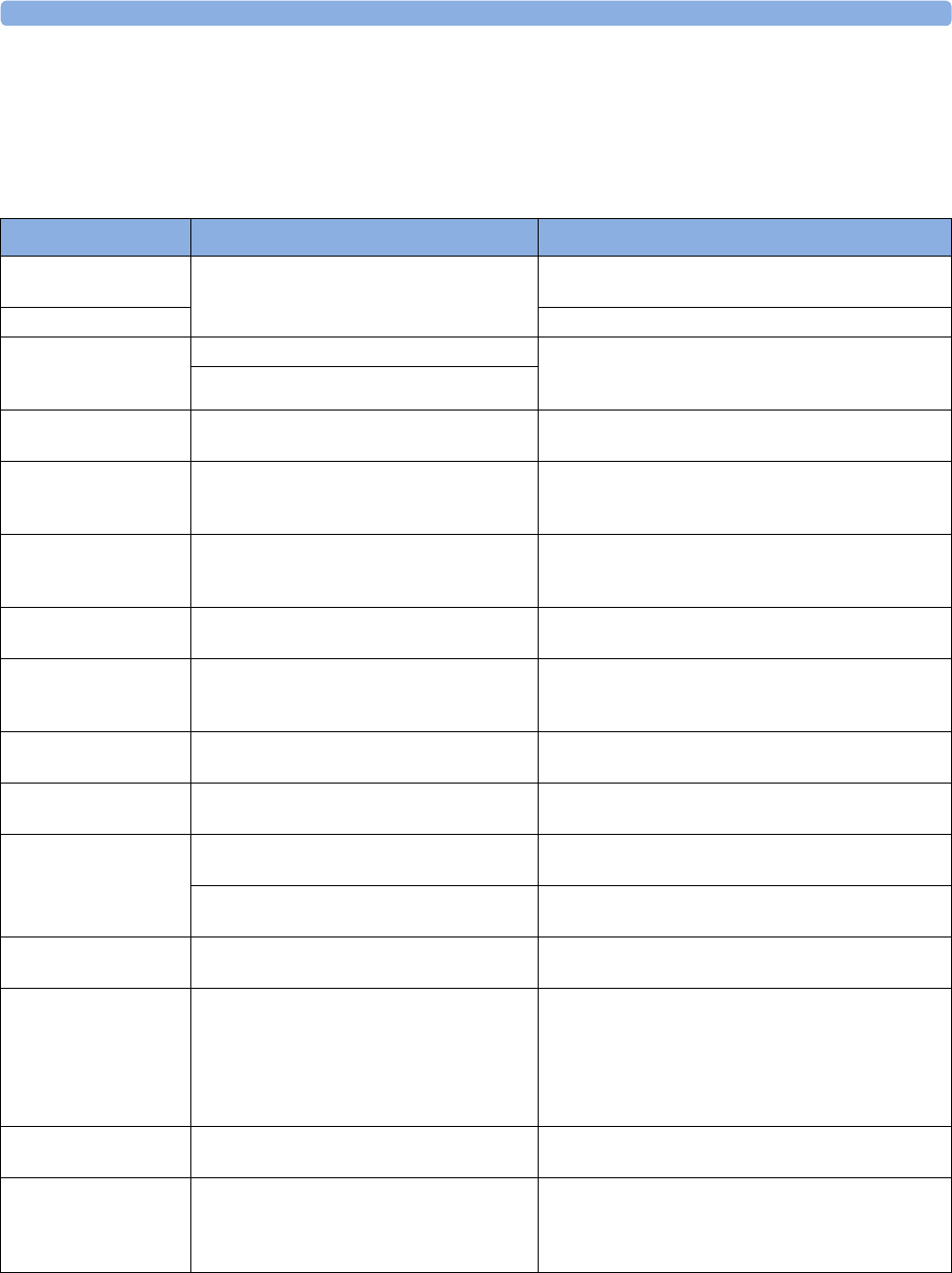
29 Printing Patient Reports
370
When an X2 is connected to a host monitor, reports requested or stored on the X2 can be printed via
the host monitor. Reports requested on the X2 when connected to a host monitor will not show any
patient alarms or INOPs. In order to see alarms, reports should be requested on the host monitor.
Starting the Different Types of Report
Report types Report contents How to start printing reports
Vital Signs Report Depends on selected trend group, data
resolution, and period.
In the Vital Signs window, select Print/ Record, then
select Print.
Graphic Trends Report In the Graphical Trends window, select Print.
Events Reports Event Episode In the Event Episode or Event Review window, select
the pop-up key Print/ Record, then select Print
Review or Print Episode.
Graphic or tabular Event Review
EEG Report EEG Waves, numerics, CSAs, montage
information and impedance values
In the Setup EEG menu, select Print Report.
ECG Reports Depends on format selected. Select the ECG Report A or ECG Report B SmartKeys,
if configured, or the Print Reports SmartKey followed
by ECG Report A or ECG Report B.
12-Lead Report Captured ECG waves, measurement values, ST
Map (optional) and analysis results from the
Information Center (PIIC iX only)
In an active 12-Lead application window, select the Print
Report pop-up key
ST Map Report ST data in a transversal and/or horizontal multi-
axis diagram,
In the ST Map (Current) or ST Map (Trend) window,
select Print.
Cardiac Output Report Trial curves and numerics In the Cardiac Output (Right Heart) or Cardiac
Output (Transpulmonary) window, select the pop-up
key Print/ Record.
Wedge Report Wedge numerics and reference wave In the Wedge window, select the Print Wedge pop-up
key.
Calculations Report Hemodynamic, Oxygenation, or Ventilation
Review
In the Calculations windows, select the Print/ Record
pop-up key.
Drug Calculator Report Titration Table In the Titration Table window, select the Print
Titr.Tbl pop-up key.
Drip Table In the Drip Table window, select the Print Drip Tbl
pop-up key.
Alarm Limits Report Graphic and numeric report of all current alarm
limits
In the Alarm Limits window, select Print Limits.
Realtime Reports,
including oxyCRG
Reports
Patient data and numerics, and either:
all displayed waves OR all measured waves OR
all measured RT waves OR all measured HiRes
waves, OR oxyCRG waves (RT waves: ECG
Primary lead, Pleth, Resp; HiRes waves: btbHR,
HiRes SpO2, HiRes Resp)
Select the Realtime Report SmartKey, if configured.
Loops Report Individual Loops diagram with timestamp,
currently measured numerics
In the Loops window, select Print Loop.
Central Report A/B/C These are reports configured at the Information
Center. Monitors connected via the IntelliVue
Instrument Telemetry wireless network can have
these reports available.
In the Main Setup select Reports then Central
Report A, Central Report B or Central Report C.

29 Printing Patient Reports
371
Stopping Reports Printouts
• To stop Reports printing, in the Reports menu, select
–Delete Report to stop the current print job
–Delete All Repts to cancel all queued report printouts
–Scheduled Rep. to select Off and switch off scheduled reports.
Setting Up Reports
As the content of context-linked reports, such as Cardiac Output, Calculations, and Wedge, is defined
by the content of the procedure window these reports do not need to be set up, however a target
printer can be configured in the Setup Reports menu.
The content you define in the individual Setup Reports menus will be used in all reports of this type:
for example, if you set a print speed of 50 mm/sec in the ECG Reports menu, every ECG report will
be printed at this speed, irrespective of format.
ECG report layout and Auto Reports settings must be defined in Configuration Mode.
Setting Up ECG Reports
The settings you choose in the ECG Reports menu apply for all ECG-A and ECG-B reports printed.
To set up ECG Reports,
1Select Main Setup, Reports, then ECG Reports. Note the report layout configured for your
monitor, either Internat or Cabrera. This setting is inactive ("grayed-out") in Monitoring Mode
and can only be changed in Configuration Mode.
2Select ECG Gain and set the required ECG gain to define how ECG waves will appear on the ECG
report printouts.
3Select Speed and select the report print speed.
4Select Annotation and switch to On if the printed ECG wave should be annotated with beat labels.
See the “ECG, Arrhythmia, ST and QT Monitoring” chapter for a list of beat labels. Pace pulse
marks are automatically printed beside the wave for paced patients.
Setting Up Vital Signs and Graphic Trend Reports
The settings you choose in the Vital Signs Report and Graphical Trend Report menus apply for all
Vital Signs and Graphic Trend reports printed.
To set up Vital Signs and Graphic Trend reports,
Select Main Setup, Reports, then Vital Signs Rep. or Graph Trend Rep..
1Select Trend Group and select the group you want to print on the report. The groups available
depend on your monitor's trend configuration.
2Select Period and select the period of time for which trend data should be printed on the report. If
Automatic Period is configured to On, all trend data for the current patient will be printed,
irrespective which trend period is selected.
3Select Interval (Vital Signs Reports only) and select the resolution of the trend data printed on the
report.

29 Printing Patient Reports
372
Setting Up Auto Reports
Auto Reports print automatically when a specified trigger occurs. There are two types of Auto Reports:
Scheduled Reports, which print at predefined intervals, and End Case Reports, which print when a
patient is discharged using the End Case function. An Auto Report can be both a Scheduled Report
and an End Case report.
To set up Auto Reports,
1Select Main Setup, Reports, then Auto Reports and select the Auto Report you want to set up (A,
B, C, or D).
2Select Report and assign a report type to the Auto Report.
3Select End Case Report and switch to On if you want the selected report to print automatically
when you select End Case to discharge a patient.
Switch End Case Report to Off if the report is a Scheduled Report only.
4Select Scheduled Rep. and toggle to On if you want the selected report to print at predefined
intervals, starting at a predefined time of day. The start time you set applies for every following day.
For example, if you set a start time of 07:00 and a repeat time of six hours, the first report will print
at 07:00 every day, the next at 13:00 and so on.
– To set the time of day at which you want the report to print every day: select Start Hour and
Start Minute and select the required time from the pop-up list
– To set the time interval in minutes between two scheduled reports: select Rep. Freq. (hrs) and
Rep. Freq. (min) and select the time interval from the pop-up list.
If you are setting up an end case report, these settings will be inactive ("grayed-out").
Switch Scheduled Rep. to Off if the report is an End Case Report only.
5Repeat the procedure for all Auto Reports you want to set up.
All Auto Reports or Scheduled Reports set to On print automatically at the predefined trigger.
Be aware that the monitor's memory for reports is limited. The number of reports that can be stored
depends on the size of the reports and the size of the printing database; the maximum is 30 reports. If
the memory is full, reports cannot be saved on the printing database and therefore cannot be printed.
If you set up regular scheduled reports, and you have long case durations, make sure that the print
database is configured to Large and plan to print reports at appropriate intervals in order to avoid
losing information due to a full memory.
Setting Up Individual Print Jobs
To adjust the appearance of individual print jobs, in the Reports menu,
Select Main Setup, Reports, then Setup Reports to enter the Setup Reports menu.
1Select Report and then select the report you want to set up.

29 Printing Patient Reports
373
2Select Report Type and then select the reports template you want the report selected in Step 2 to
use. The selection of templates listed depends on the report type selected.
Each template includes patient demographic data, and each Realtime Report also includes alarm
and INOP information. In addition, the templates include:
VisibleWaves: all waves currently visible, in the order they appear on the screen.
All Waves: all measured waves.
RT Waves: all currently measured realtime waves, according to the monitor's priority list.
HiRes Waves: all measured HiRes waves.
OxyCRG Waves: the OxyCRG/Neonatal Event Review waves.
Vital Signs: trend information in tabular form.
Graph Trend: trend information in graphic form.
ECG reports: ECG3x4, ECG6x2, ECG12x1, ECG4x2, ECG8x1,ECG12x1 (2P)
EEG reports: EEG Report.
Episode: a single patient event episode.
Review: an overview of patient events
Alarm Limits: a list of all currently set alarm limits.
3Select Report Size to set the paper size to be used for the report: Unspecified to use the default
size for the template chosen, Universal, A4, Letter, LrgUniversal, A3, or Ledger. The list of
available sizes depends on the report type selected.
4Select Orientation to set the orientation of the report printout: Unspecified to use the default size
for the template chosen, Landscape or Portrait.
5Select Target Device and choose which printer the print job will be sent to: Unspecified to use
the default printer, or choose from the list of printer names defined at the Information Center or
in the monitor's Configuration Mode (for example, Remote 1 or Database).
Some settings may be inactive ("grayed-out") in this menu for reports that can only be started in a
special window.
Checking Printer Settings
The printer settings for your monitor are defined in Configuration Mode. The printer settings Paper
Size, Resolution, Color Support, and Duplex Option for the active printer are visible but inactive
("grayed-out") in the Setup Printers menu. When Print Database is selected as active printer only the
Paper Size setting will be shown.
• To enter the Setup Printers menu, in the Reports menu, select Setup Printers.
Printer names for locally-connected printers can be defined in Configuration Mode. You can see
whether a specified printer is centrally or locally connected in the Setup Printers menu under Port. If
"Local" is included in the port name, e.g. Local 2, that indicates locally-connected printers, and
"Remote", e.g. Remote 1, indicates centrally-connected printers.
If you are using an IntelliVue XDS Application print service, you may see XDS printers in the Setup
Printers menu that also have "Local" or "Remote" in their name. Their names and settings can only be
configured in the XDS Application. Refer to the IntelliVue XDS Application Installation and
Configuration Guide for full details about the configuration possibilities.
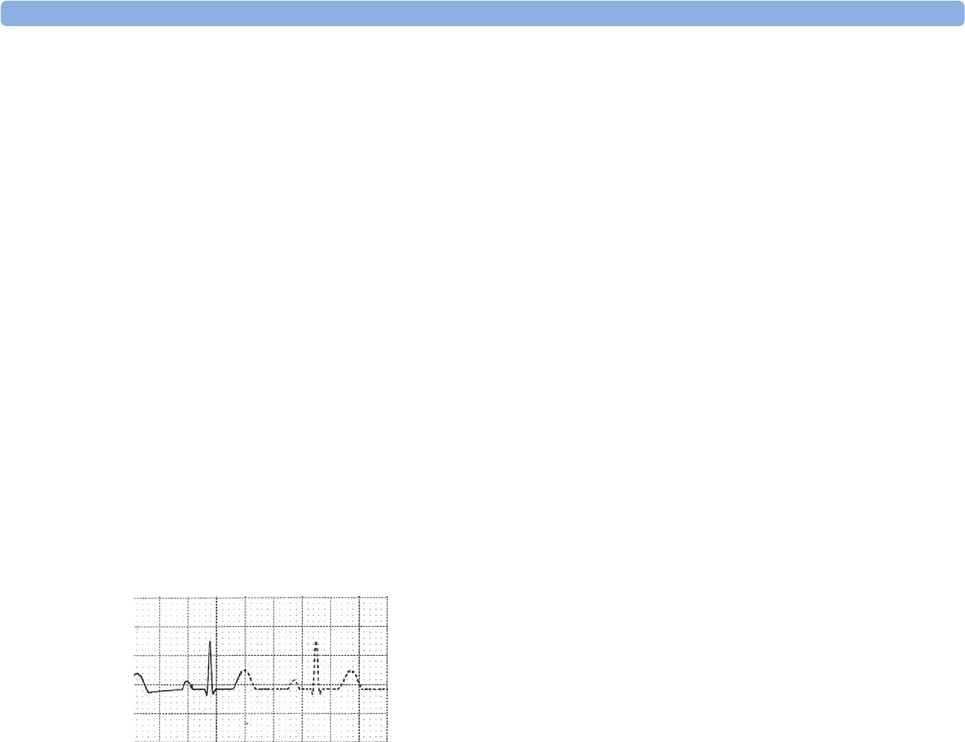
29 Printing Patient Reports
374
Printing a Test Report
A test report can be printed in Configuration mode, refer to the Service Guide for details.
Switching Printers On or Off for Reports
You can enable or disable printer status to switch individual printers on or off for report printouts.
1In the Setup Printers menu, select Printer and then select the name of the device you want to
switch on or off for Reports printing from the pop-up list.
2Select Printer Status to switch between the settings Enabled and Disabled. If you set this to
Disabled, no reports will be printed to the named printer.
If the monitor detects that no printer of a particular type is available, the Printer Status setting will
automatically be set to Disabled and "grayed out".
Local printers from the XDS Application print service are always enabled and cannot be disabled
here.
Dashed Lines on Reports
If a section of a wave on a report is drawn with dashed lines, this tells you that a setting that affects the
appearance of the wave on the screen was changed while the report was printing.
For example, if you change the wave scale while a report is printing, the wave scale and wave size are
changed immediately on the monitor screen and on the report. To indicate that the scale information
printed at the beginning of the report no longer matches the currently used scale, the wave will be
printed using dashed lines, starting from the moment the change took place.
Some examples of settings that cause dashed lines in reports if changed during printing are: Filter
mode, ECG lead placement, wave scale, measurement unit, paced/non-paced setting, and
measurement mode. Note that as ECG waves are drawn with a fixed gain on reports (either 10 mm/
mV or 20 mm/mV), changing the ECG wave scale will not cause dashed-line reports.
To avoid dashed lines on reports, wait 15 seconds after changing a setting before you trigger a report.
Unavailable Printer: Re-routing Reports
If you send a report to be printed on a printer that is not available, for example, because it has run out
of paper, this print job is suspended and stored in the monitor's memory.
If the target device of this print job was set to Unspecified, the monitor will periodically try to resend
the print job to the first printer listed in the Setup Printers menu under Printer that is set to Enabled
and that has paper of the correct size.
To allow the report to print, you must either solve the problem with the target printer, or re-route the
print job to another printer with paper of the correct size. To re-route a print job,

29 Printing Patient Reports
375
• Enable the new target printer by selecting it in the Setup Printers menu and toggling to Enabled.
As the monitor tries to send the report to the printers in the order they are listed, you must make
sure that all the printers above the new target printer are disabled.
If the target device of the print job was set to a specific printer, re-routing is not possible.
Checking Report Status and Printing Manually
A list of all print requests which are waiting, printing or stored can be viewed in the Reports Job List.
To view the list, in the Reports menu, select Reports Job List.
The following information is displayed for each print request:
• Report title
• Patient name (except for system reports)
• Request date and time
• Report paper format
•Job status: Preparing, Printing, Waiting, In Database, In Companion, Retry, Cancelling, Error.
Individual reports can be deleted from the list with the Delete Report key, and all reports with the
Delete All Repts key.
CAUTION
The Reports Job List includes privacy information, in the form of the patient name with the related
report title and date. It is advisable to provide controlled access to this data to ensure confidentiality.
If an X2 is connected to a host monitor, all print requests which are stored in the print database are
shown "grayed out" on the Reports Job List and will not be deleted with the Delete All Repts key.
Printing Manually
Those jobs shown in black will be printed automatically when a matching printer is available. If the
Auto Print Dbs setting is Host Only or Never, some or all reports will not be printed automatically and
will be shown in gray. Any jobs shown in gray must be printed manually; to do this,
1In the Reports Job List, select the required report
2Select Print Report.
Selecting Print All Reps will send all reports to the printer.
Printer Status Messages
Printer Status Message Possible causes and suggested action
Print job queued for <Printer
Name>
The report has been placed in the queue for the named printer.
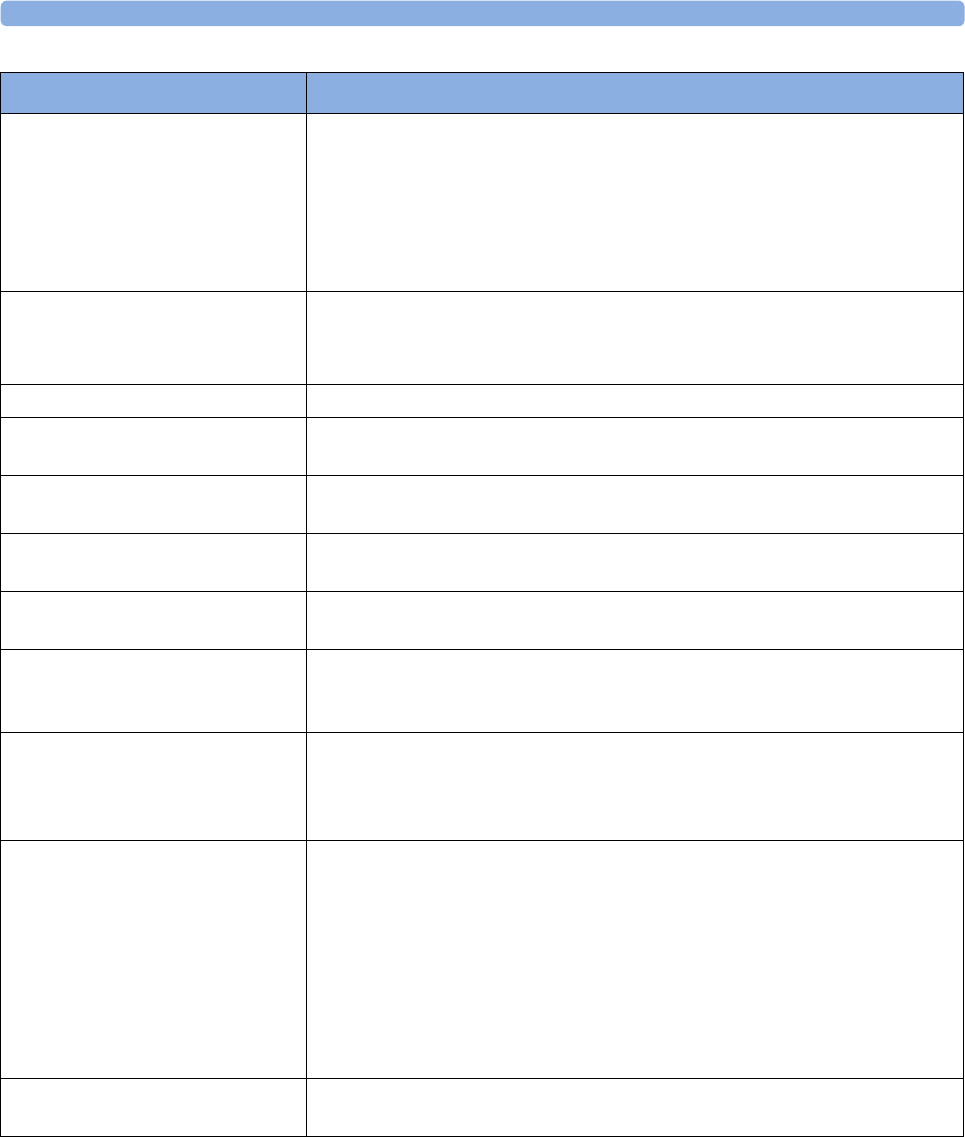
29 Printing Patient Reports
376
Sample Report Printouts
Each report header contains the patient's bed label, last name and first name, middle name (if there is
enough space) the patient ID, the date and time, and the name of the report. The report footer
contains the hospital label and page number, and the last page contains a note to mark the report end.
Print job could not be queued
(insufficient resources)
Print job could not be queued
(queue is full)
Print job could not be queued (no
matching printer found)
The printer queue is full and the monitor cannot accept another report request.
Wait until some more reports have been printed, then try again, OR
A report has been triggered that uses a paper size unavailable with the target
printer. Try another printer, if available, or change the paper size of the print
request.
Cancelling all print jobs Delete All Reps has been selected in the Reports menu, OR
The Operating Mode has been changed from Monitoring Mode to
Demonstration or Service Mode.
Cancelling the active print job The current report is being canceled as the result of a user request.
Cancelling print jobs due to
patient discharge
When a patient is discharged, all queued reports are canceled except those
stored in the print database.
Cancelling # print jobs due to
hotstart
The monitor has restarted and all report requests have been canceled except
those stored in the print database. "#" is the number of reports canceled.
Printing failed: No report
configured!
A report has been triggered which has not been correctly set up. Enter the setup
menu for the report type to set up the report.
Printing on <Printer Name>... A report is in progress, or the monitor is waiting for the central printer to accept
the print job.
Printer <Printer Name>
unavailable -> job suspended
The chosen device is unavailable. Check that the printer is properly connected
and that paper is available. The requested report will start printing when the
printer becomes available.
Print database full -> job
suspended
The requested report does not fit into the print database. You can select another
printer to print the report (see “Unavailable Printer: Re-routing Reports” on
page 374). Alternatively you can delete another report from the Reports Job
List (using the Delete Report key) to create space for your report.
Job on <Printer Name> failed
(data unavailable)
Job on <Printer Name> failed
(printer unavailable)
Job on <Printer Name> failed
(data requisition error)
A report cannot be started on the requested printer.
One of three reasons is shown in the status message:
• data unavailable - the connected X2 has been removed before the data for
the report was transferred.
• printer unavailable - make sure the printer is plugged in, switched on, and
has paper loaded.
• data requisition error - an internal error has caused data required for the
report to be unavailable, try starting the report again.
Print job on <Printer Name>
done
The report has been printed.
Printer Status Message Possible causes and suggested action
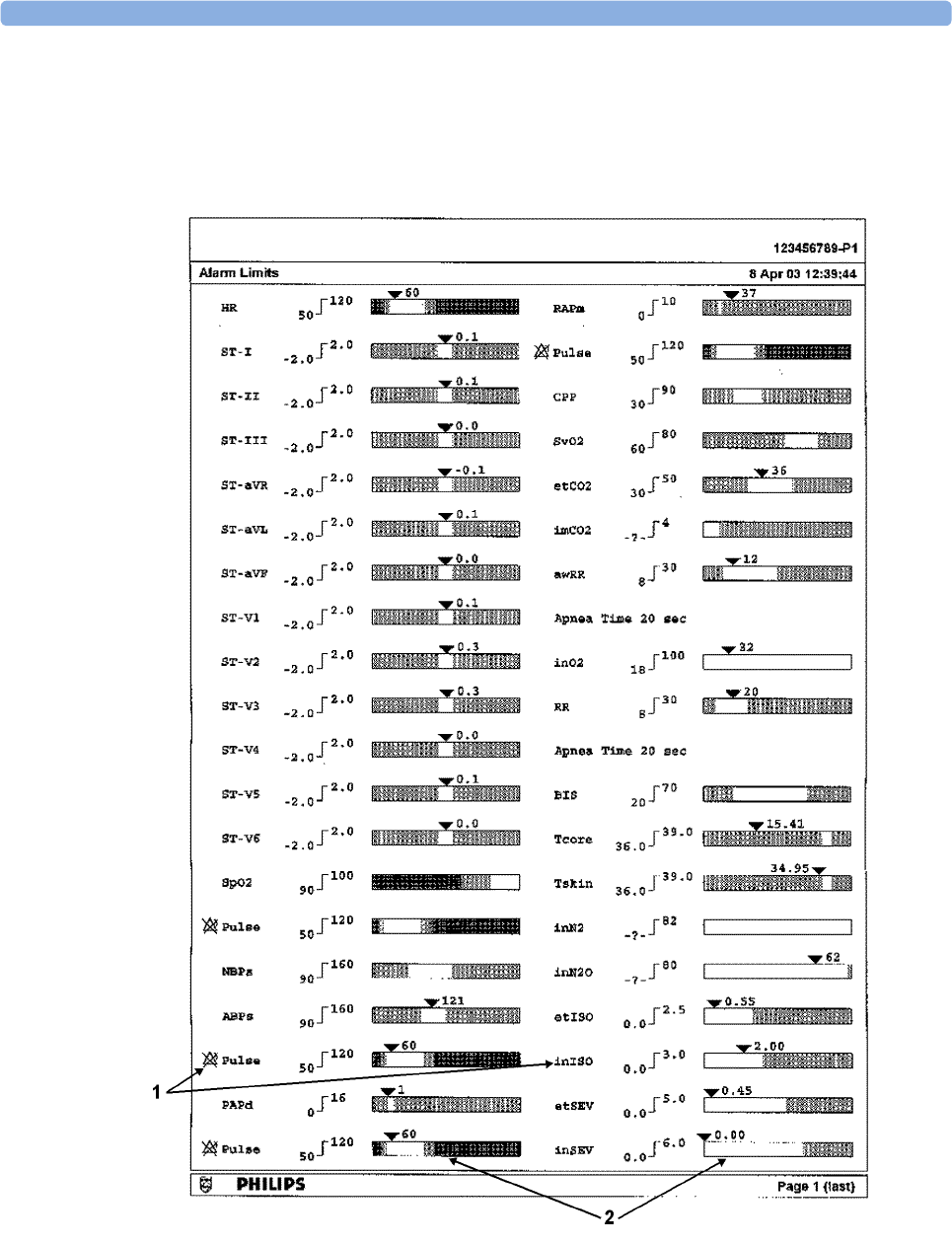
29 Printing Patient Reports
377
The monitor may be configured to leave a space on the top left or right of the report printout to enable
you to stick a patient address label on it. This setting is called the Addressograph and it can only be
changed in the monitor's Configuration Mode.
Alarm Limits Report
1Measurement labels, with alarms off symbol where alarms are switched off
2Graphic view of current alarm limits in relation to currently monitored measurement value
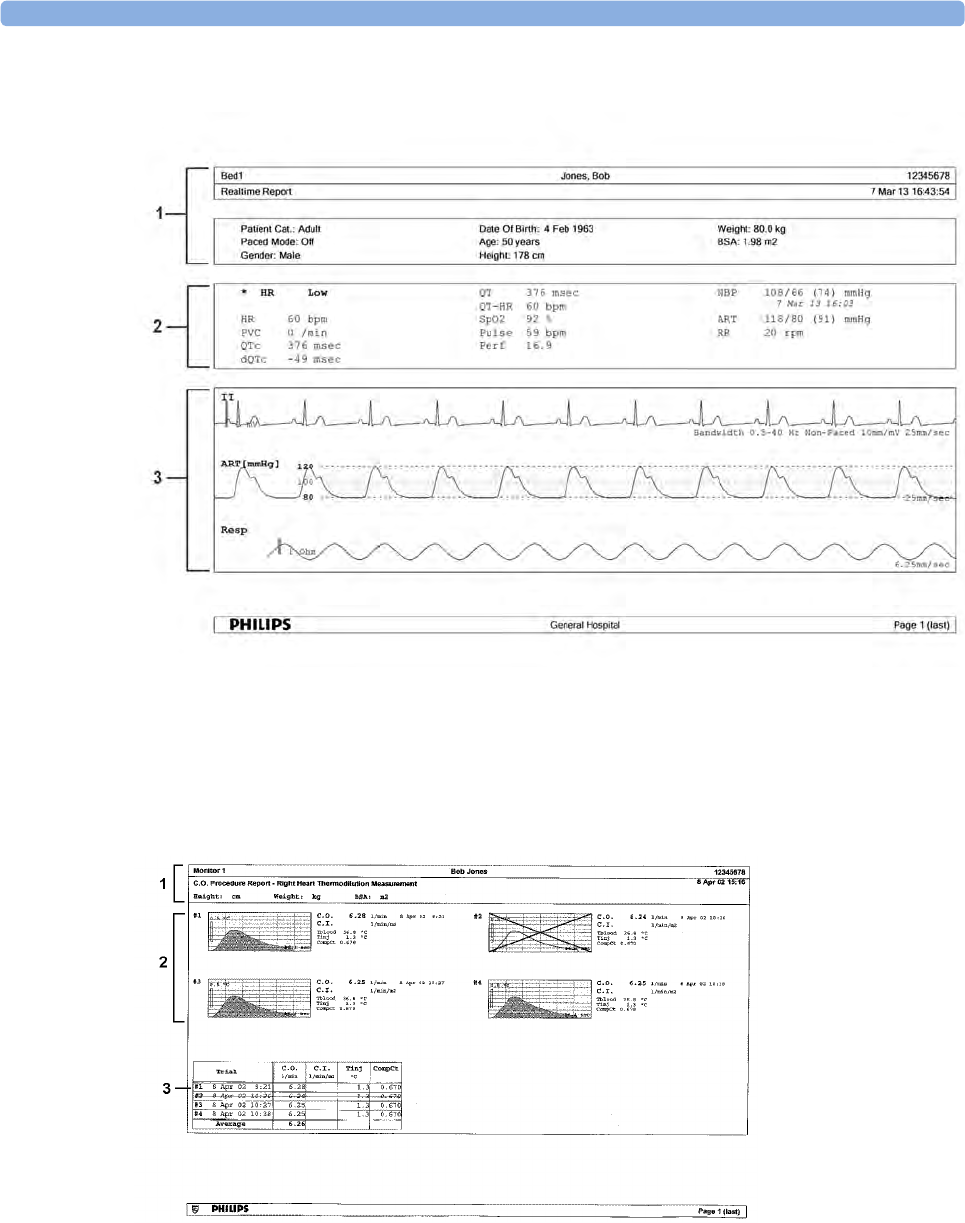
29 Printing Patient Reports
378
Realtime Report
1Patient demographic information, time stamp
2Active Alarms and INOPs, followed by vital signs
3Measurement waves section
Cardiac Output Report
1Patient information
2Numbered trial curves
3Trial information in tabular form
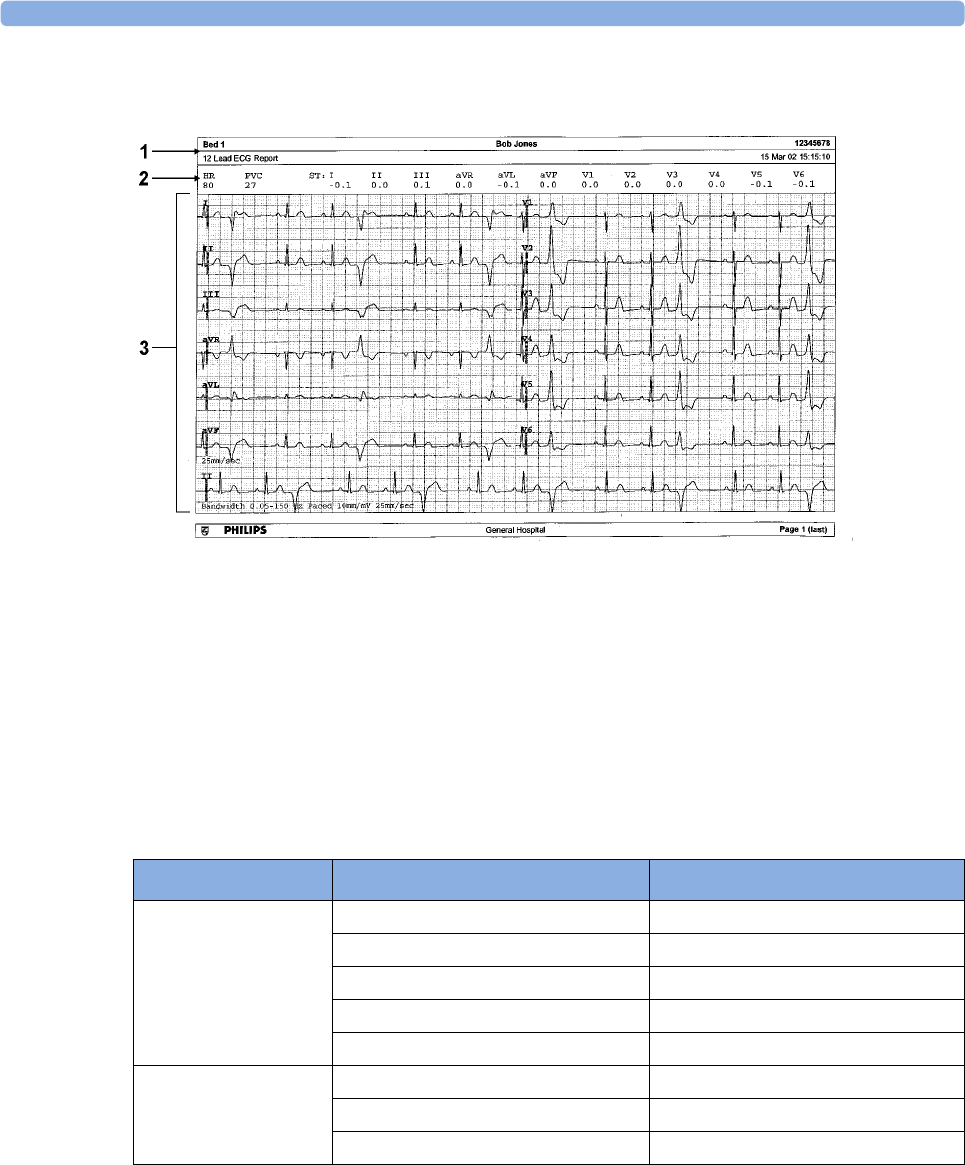
29 Printing Patient Reports
379
ECG Reports
1Patient information
2Numeric block
3Wave area
Below the header on ECG Reports, the numeric block shows the current HR, PVC, and ST values.
The wave area shows the printed waves for all available ECG leads. A 1 mV calibration bar is printed
at the beginning of each wave. With the 3X4, 6X2, and 2X4 formats, a rhythm stripe prints a longer
section of the ECG wave from the primary ECG lead for ECG rhythm evaluation. The ECG signal
bandwidth, the patient's paced status, the ECG gain, and the print speed are printed at the bottom of
the wave area. Pace pulse marks are automatically printed beside the wave for paced patients. Beat
labels can be set to print on the rhythm stripe. The 12X1 (2P) format prints the report over two pages.
ECG Report type Available Formats Available Paper Sizes
12-Lead ECG 3X4 landscape A4, letter, A3, ledger
6X2 landscape A4, letter, A3, ledger
12X1 portrait A4 and letter only
12X1 landscape A4, letter, A3, ledger
12X1 (2P) landscape A4, letter (2 pages)
Multi-lead ECG 2X4 landscape A4, letter, A3, ledger
8X1 portrait A4 and letter only
8X1 landscape A4, letter, A3, ledger
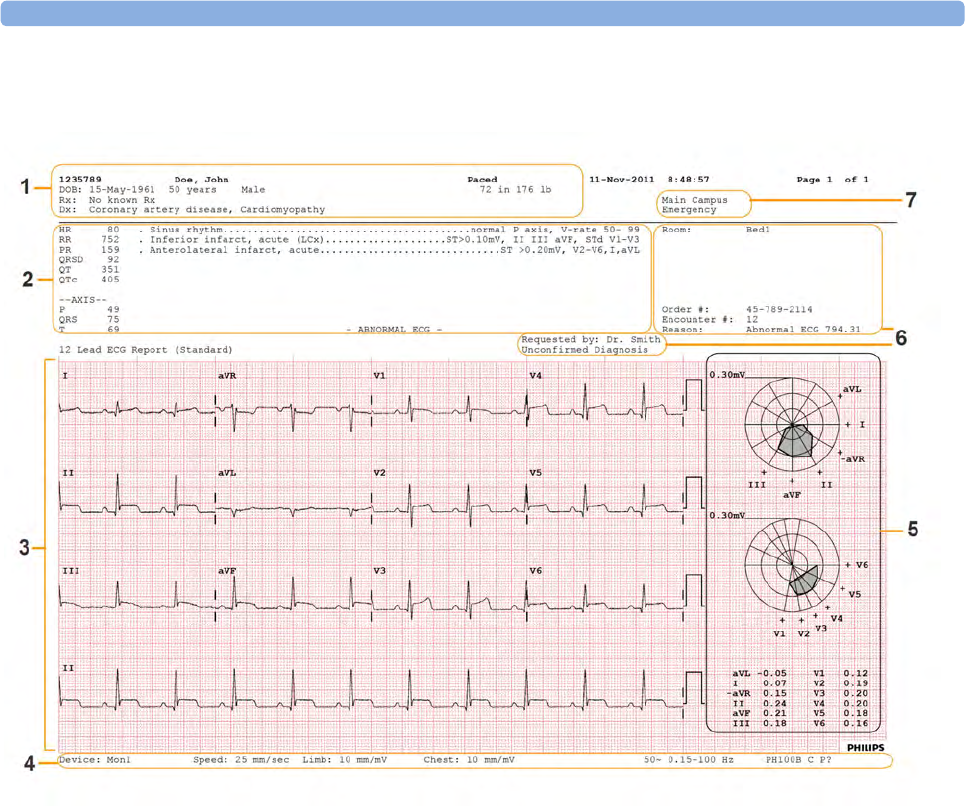
29 Printing Patient Reports
380
12-Lead ECG Report
1Patient data
2Analysis data from the Information Center (PIIC iX only)
312-Lead wave area
4Data related to the wave presentation
5ST Map with related ST numerics (optional)
6Administrative data - including optional custom text fields
7Hospital ID data - Institution, facility and department, if configured
Other Reports
See the sections on Trends and Calculations and the chapter on Event Surveillance for other example
reports.
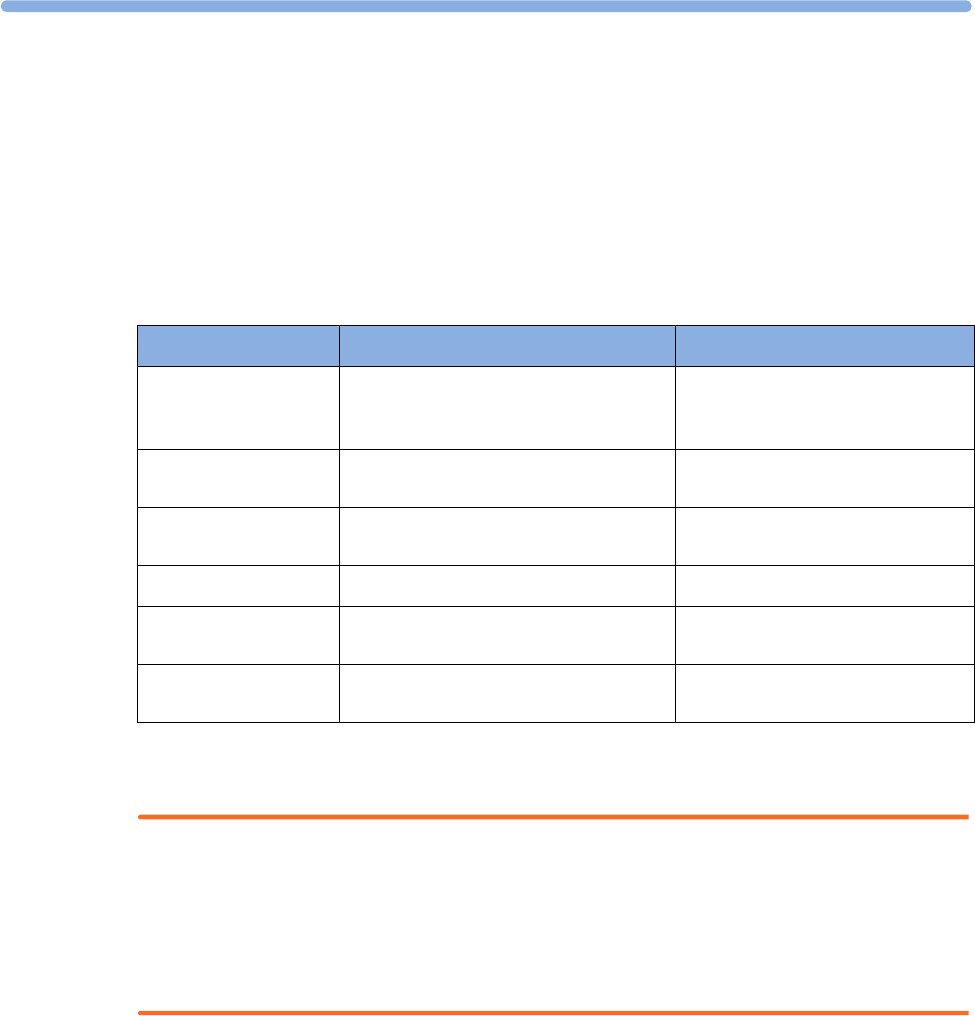
30
381
30Using the Drug Calculator
Drug mixtures for intravenous (IV) drug infusions combine information on drug dose, rate, amount,
volume, concentration, and standardized rate. The Drug Calculator helps you to manage infusions by
calculating one of these values at a time.
*Be aware that your hospital may use either 'µg' or 'mcg' as an abbreviation for microgram. These
abbreviations are equivalent.
WARNING
Before you administer any drug, always check that the correct calculation units and patient category are
selected. Consult your pharmacy if you have questions.
Decisions on the choice and dosage of drugs administered to patients must always be made by the
physician in charge. The Drug Calculator performs calculations based on the values input during use, it
does not check the plausibility of the calculations performed.
Ter m Definition Units
Dose total quantity of drug to be delivered to
the patient over time
amount units per time or per kg/
time, if the drug is weight-
dependent
Rate volume of the mixture to be delivered to
the patient over time
ml/hour
Amount amount of drug to be added to diluent
to make up a mixture
ng, mcg*, mg, g, mUnit, Unit,
where g stands for gram
Volume quantity of mixture of diluent and drug ml
Concentration ratio of the amount of drug to the
solution volume
amount units per ml
Standardized Rate 1 ml volume of the mixture to be
delivered to the patient per hour
ml/hr
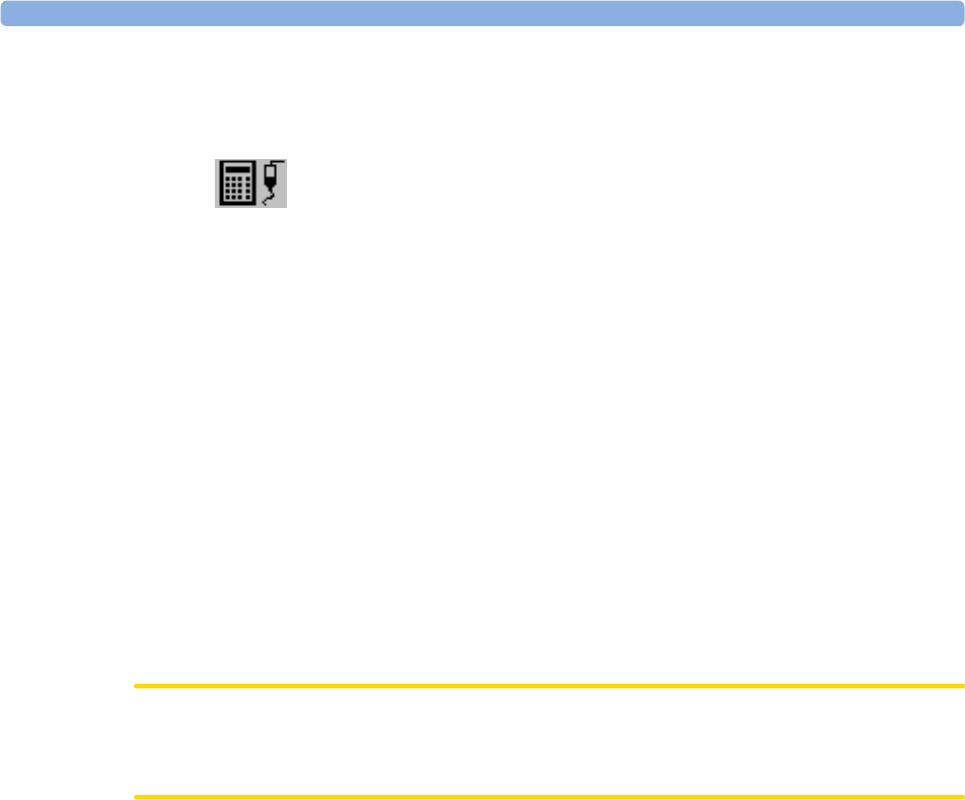
30 Using the Drug Calculator
382
Accessing the Drug Calculator
To access the Drug Calculator, select Main Setup then Calculations followed by Drug Calculator, or
select the Drug Calc SmartKey, if configured.
Performing Drug Calculations
Using the service Support Tool, a list of drugs can be configured for the monitor containing pre-
defined dosage recommendations and unit settings. Selecting the arrow beside the drug name in the
Drug Calculator window opens a list of configured drugs. Contact your pharmacist if you have any
questions about the drugs in the list.
If ANY DRUG is the only entry in the list of drugs, no drugs have been pre-configured for your
monitor. Drug calculations can be performed for non-specific drugs.
You must have a Support Tool to add additional drugs to the Drug Calculator.
About the Rule of Six
If the Rule of Six has been enabled for use with individual drugs in your Drug Calculator, you can use
the formula in crisis situations to quickly calculate the amount of a drug needed to yield a target dose
for continuous infusion for neonatal or pediatric patients (the drug amount is given in "mg", the
patient weight in "kg"). The Rule of Six can only be used with the dose unit mcg/kg/min.
CAUTION
JCAHO (Joint Commission of Accredited Healthcare Organizations) recommends disabling the Rule
of Six. The configuration is not JCAHO-compliant if Rule of Six is enabled.
The Drug Calculator uses the following formula for Rule of Six calculations, based on the patient's
weight:
• For a target dose of 0.1 mcg/kg/min, the Drug Calculator multiplies 0.6 x patient weight to
calculate the amount you need to add to the IV solution to equal a total of 100 ml.
• For a target dose of 1.0 mcg/kg/min, the Drug Calculator multiplies 6.0 x patient weight to
calculate the amount you need to add to the IV solution to equal a total of 100 ml.
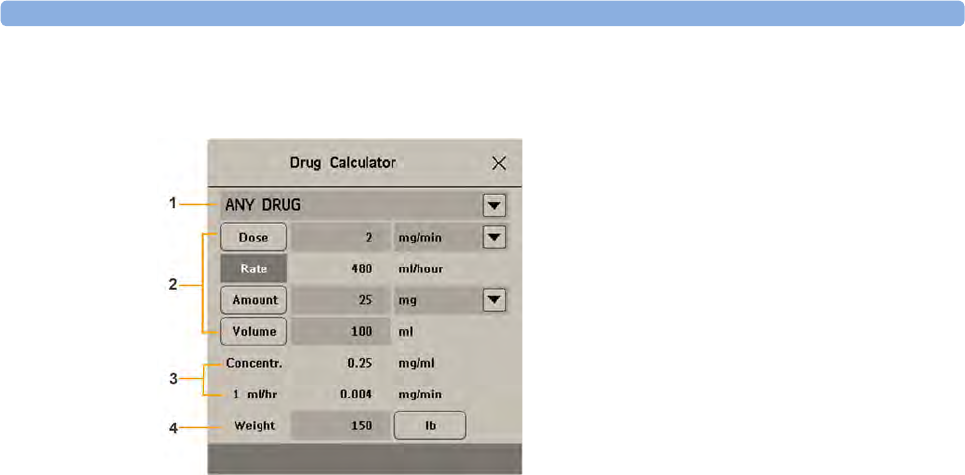
30 Using the Drug Calculator
383
Performing Calculations for a Non-Specific Drug
If a list of drugs has not been configured for your monitor, you can use the Drug Calculator to
calculate drug doses for a single, generic drug called ANY DRUG. Selecting the arrow beside the drug
name in the Drug Calculator window shows that are no other drugs configured.
1Enter three of these four values: dose, amount, volume, rate of the infusion solution.
To enter values, select the correct unit, then select each value field and use the pop-up keypad to
enter the correct value.
2If you have chosen a weight-dependent dose unit, you must enter the patient weight now or
choose a different unit.
If available, the patient weight from the Patient Demographics window is entered automatically in
the Drug Calculator window when the Drug Calculator is accessed. To change the patient weight,
select the Weight key then use the on-screen keypad to enter the correct value. This will not
change the patient weight stored in the patient demographic information.
3When you have entered three values, the Drug Calculator automatically calculates the unknown
fourth value and shows it in the highlighted field. Standardized rate and concentration are also
calculated.
1ANY DRUG selection
2Entry fields for Dose, Rate, Amount, and
Volume
3Calculated standardized rate (1 ml/hr) and
concentration (Concentr.)
4Weight used for weight-dependent dose
units
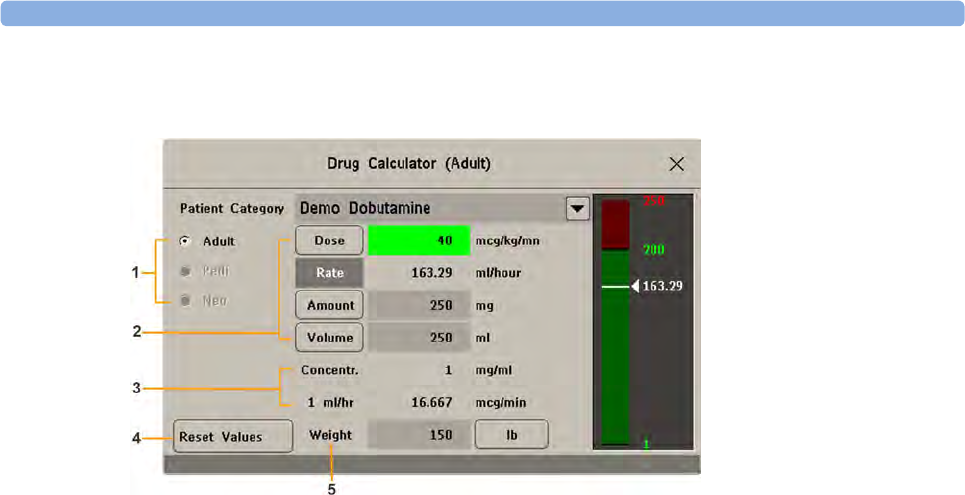
30 Using the Drug Calculator
384
Performing Calculations for a Specific Drug
1Select the arrow beside ANY DRUG, then select the required drug from the list of drugs.
This opens the window for the selected drug.
2Select the correct patient category for your patient.
If you have a neonatal or pediatric patient, the Rule of 6 choice may be available. Select if required.
3Enter the patient weight, if necessary.
If available, the patient weight from the Patient Demographics window is entered automatically in
the Drug Calculator window. To change the patient weight, select the Weight key then use the on-
screen keypad to enter the correct value. This will not change the patient weight stored in the
patient demographic information. Select the weight unit shown to change between lb and kg.
4When a specific drug is selected, the initial values for Dose, Amount and Volume are the
configured Start values for this drug. The Rate is then calculated. If other values are required you
can calculate any value by entering the remaining three values as described in “Performing
Calculations for a Non-Specific Drug” on page 383.
The column on the right of the window shows either drug dose or dosage rate, whichever is the
calculated value. The current calculated value is shown on a scale with the recommended range in
green. If the current calculated value lies outside the recommended range it is shown in red.
If you have changed values in the Drug Calculator and you want to revert to the configured values,
select Reset Values key at any time.
1Patient category (Adult, Pedi, Neo)
2Entry fields for Dose, Rate, Amount, and Volume
3Calculated standardized rate (1 ml/hr) and concentration (Concentr.)
4Reset Values key reverts to the configured values for this drug
5Weight used for weight-dependent dose units
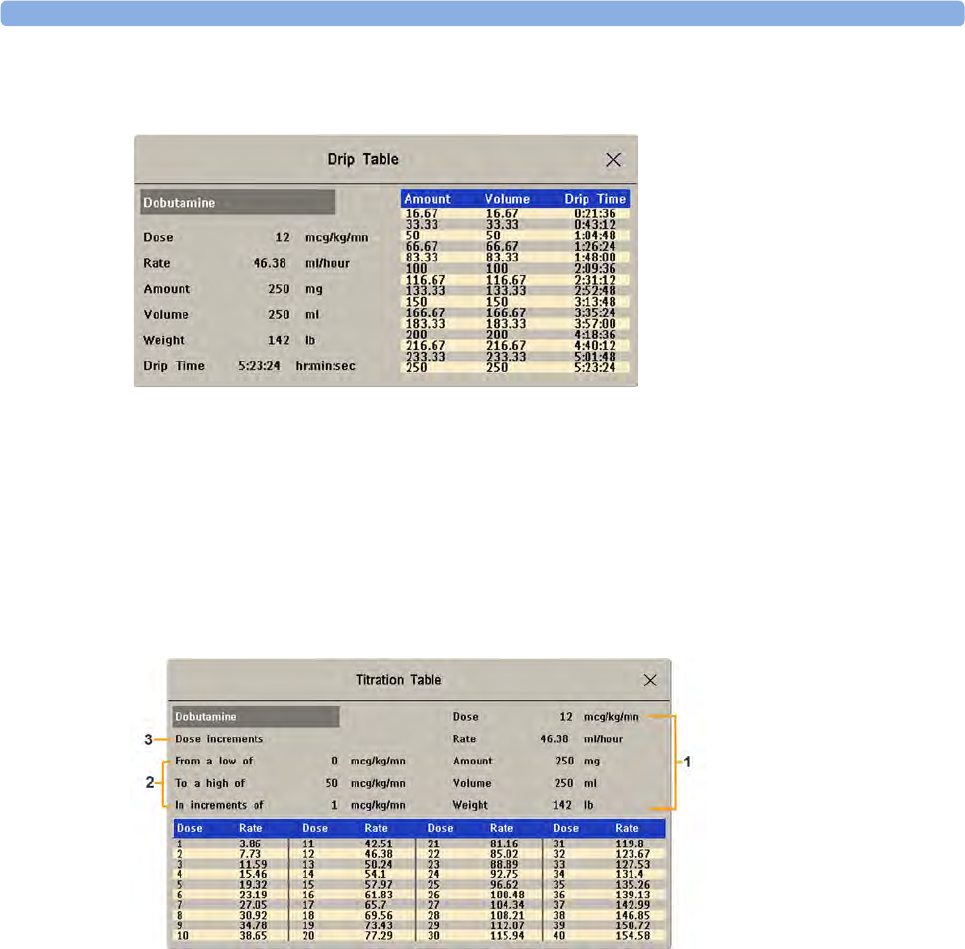
30 Using the Drug Calculator
385
Charting Infusion Progress
The Drip Table shows you at a glance how much of the infusion has been administered to your patient
and how much time is left.
• To see the Drip Table, in the Drug Calculator window, select the Drip Table pop-up key.
If the Drip Time exceeds 24 hours, the Drip Time timestamp shows:
- - :- - : - - .
Using the Titration Table
Use the Titration Table to see at a glance what dose your patient would receive of a drug at different
infusion rates. By clicking on the blue title row of the table you can switch between the Dose
increments and Rate increments view.
Values outside of the recommended range are shown in red.
To see the Titration Table,
•in the Drug Calculator window, select the pop-up key Titr. Table.
The Titration Table is configured with the service Support Tool.
1Currently set values for Dose, Rate, Amount, Volume, and Weight.
2Minimum dose, maximum dose and increments used for the table.
3Shows whether Dose increments or Rate increments are the basis of the table.

30 Using the Drug Calculator
386
Documenting Drug Calculations
•In the Drug Calculator window, select the pop-up key Record DrugCalc to immediately start a
recording of the current drug calculation.
•In the Titration Table window, select the pop-up key Print Titr.Tbl to print a report of the current
Titration Table.
•In the Drip Table window, select the pop-up key Print Drip Tbl to print a report of the current
Drip Table.
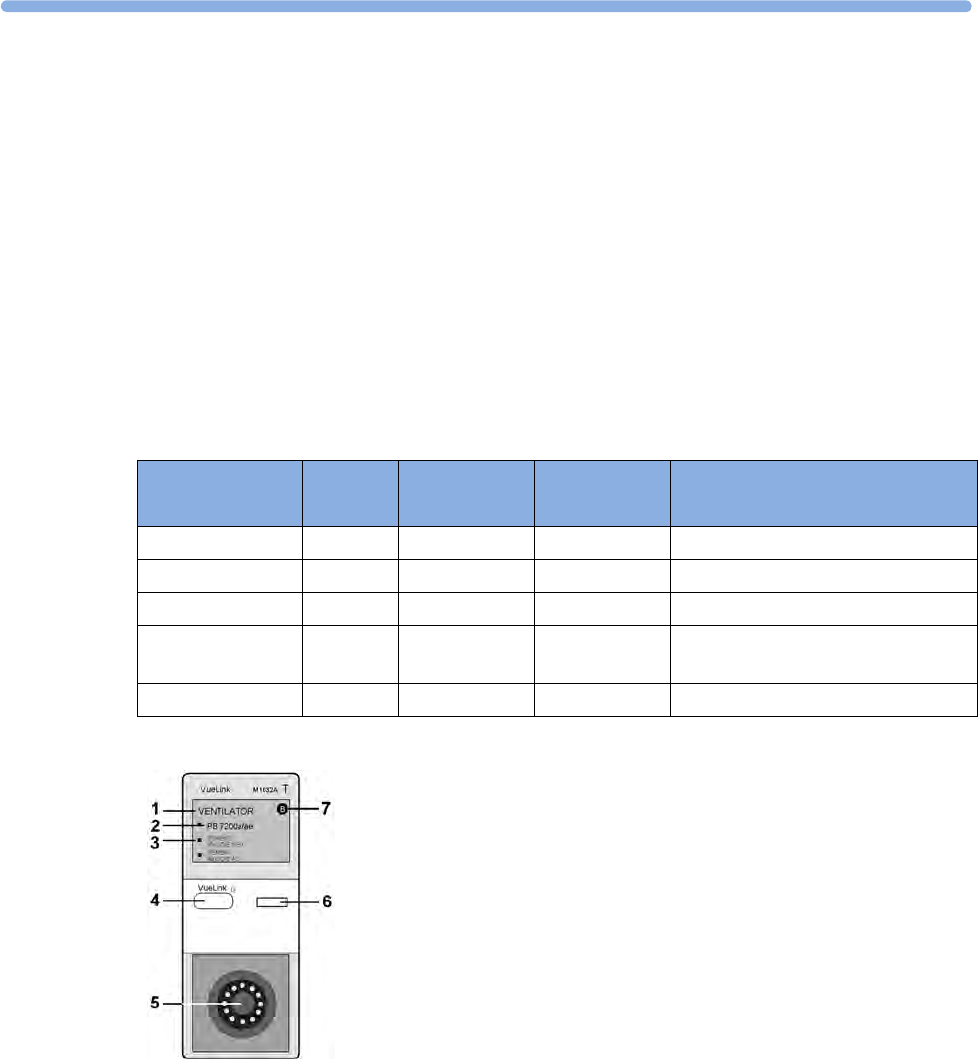
31
387
31VueLink Modules
A VueLink module transmits information from a connected external device to your monitor. Each
module can be connected to one of up to three preselected external devices, and supports alarms from
the external device. Data from VueLink modules cannot be included in monitor trends when the label
is a free-text label.
The external device may show more information than is available on the monitor. The number of
waves and numerics you can view simultaneously on your monitor's main screen depends on the
module type. Type A modules support one wave and two numerics, type B modules support two
waves and six numerics.
The device labels (2) on the module indicate for which external devices the module is configured. The
selection LED (3) shows which device is currently active. The device label text may differ slightly from
the labels on the external devices.
Module Type Max. Wave Max.
Numeric
External Devices
Auxiliary A 1 2 standalone measurement module
Ventilator B 2 6 ventilators
Gas Analyzer B 2 6 gas analyzers
Anesthesia
Machine
B 2 6 anesthesia machines
Auxiliary Plus B 2 6 external multi-measurement devices
1module name
2device label
3selection LED
4setup key
5external device cable connector
6setup indicator LED
7module type (A or B)

31 VueLink Modules
388
See the documentation supplied with the VueLink module for a list of supported devices and
accessories, and for configuration information.
Connecting an External Device
1Insert the module into the FMS or integrated module slot.
2Check that the device selection LED (3) lights to show that it has correctly identified the external
device. If not, select Main Setup, Measurements and then the name of the external device to
enter the setup menu for the connected device.
3In the device setup menu, select Device, select the correct device from the list, and confirm the
selection.
4Connect the external device to the module and switch it on.
Once the VueLink device has been correctly connected, you can select the External Devices
SmartKey and then select the Setup Device pop-up key to access the setup menu for the connected
device.
CAUTION
Selecting the wrong device can cause unpredictable system behavior. Rectify this by switching off the
external device when it is safe to do so, and selecting the correct device.
Changing VueLink Waves and Numerics Displayed
To change the waves and numerics from the VueLink module displayed on the Screen,
1Select Main Setup, Measurements and then the name of the connected device to enter its setup
menu.
2Select the item you want to change, then select the new item from the pop-up list,
or
Select Show Device Data to view the device data window.
3Close the setup menu. The monitor takes a few seconds to activate the change.
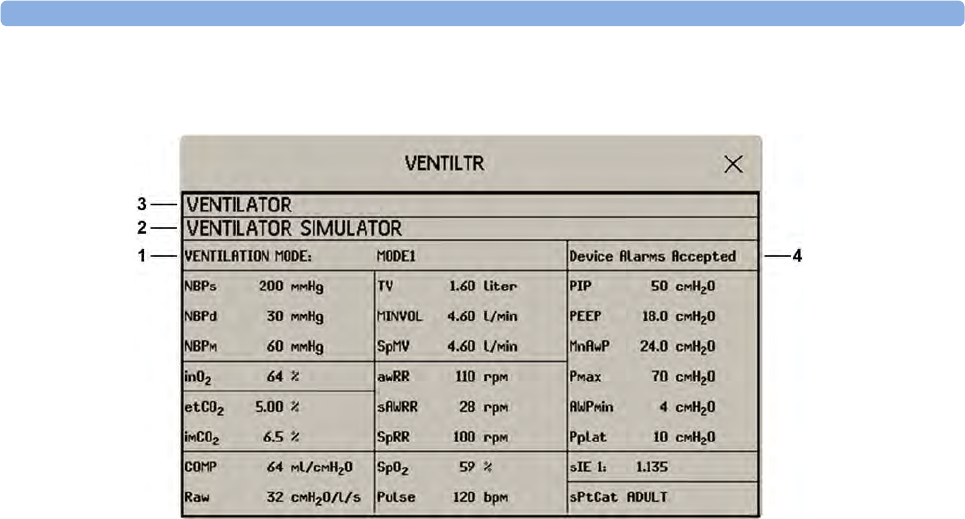
31 VueLink Modules
389
Viewing the VueLink Device Data Window
1Mode information from external device
2Name of external device
3Type of external device
4Device Alarms Accepted
To view the VueLink device data window, either
• select the setup hardkey on the VueLink module or the External Devices SmartKey, and then
select the pop-up key for the device, or
•in the Setup <External Device> menu, select Show Device Data.
Select the device data window then the Setup Device key to open the setup menu for the connected
device.
Using VueLink Screens
Your monitor may be configured to show VueLink device data permanently on the Screens.
Select the device data window to display the external device pop-up keys that let you access the setup
menu and carry out external device tasks.
Switching VueLink On and Off
• To switch VueLink measurements on and off, in the setup menu for the external device, select
Device Interface to toggle between the settings On and Off.
Alarms/INOPs From External Devices
The VueLink module itself generates INOPs, but does not generate alarms. If the external device's
alarms are on, the module transmits these to the monitor. A message in the VueLink info window tells
you, depending on the configuration setting, either Device Alarms Ignored or Device Alarms
Accepted or, when the external device is not supplying alarm data, No Alarms Available.

31 VueLink Modules
390
When Device Alarms Ignored is set, alarms from the external device will not be displayed on the
monitor and will not be transmitted to the Information Center. External device alarms status symbols
precede some, but not all, measurement labels.
Alarms from external devices are:
• transmitted to the monitor. For all numerics configured in the setup menu, an alarm condition is
announced at the monitor. For one or more measurements not configured in the setup menu, an
alarm is announced as a text message for the highest priority alarm. Priority is determined at the
external device.
• always non-latching on the monitor.
• announced as a flashing numeric while the alarm condition persists.
• announced audibly and visibly at the Information Center.
Language Conflict with External Device Drivers
You should avoid language conflicts between the VueLink module device driver and the monitor. Be
aware that if you connect a VueLink module with a different operating language to the monitor, the
monitor will show:
• measurement labels in the monitor language
• alarm and INOP texts in the VueLink module device driver language.
the monitor is configured to accept external device alarms, but the alarms
are switched off at the external device.
!alarms status of this external measurement is unknown
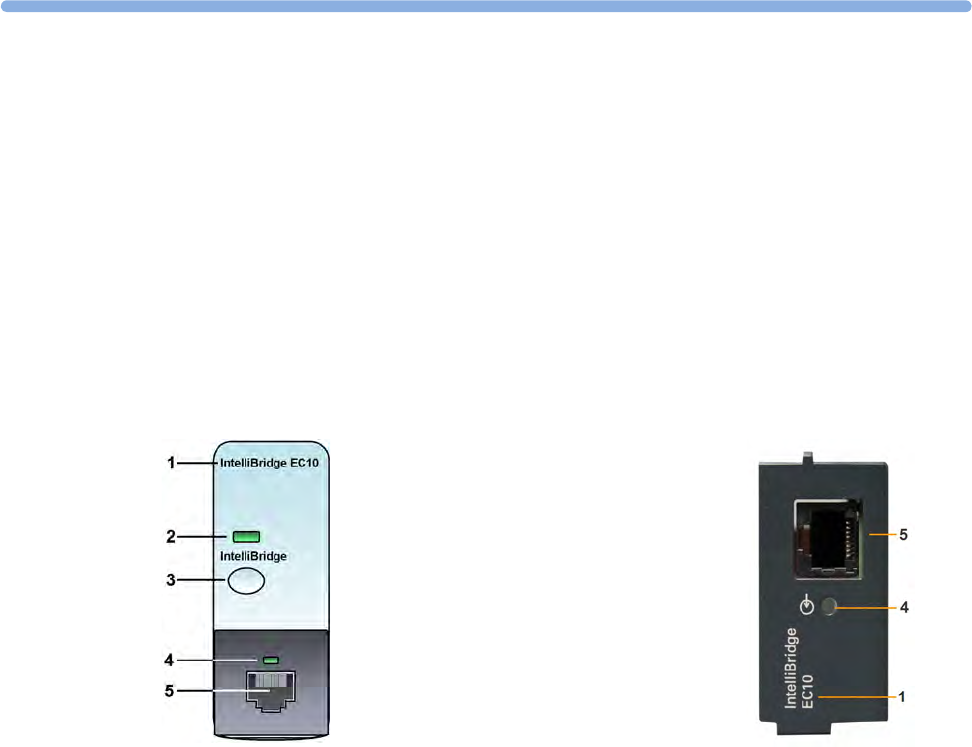
32
391
32IntelliBridge EC10
An IntelliBridge EC10 module or Interface board (for MX400/450/500/550) transmits information
from a connected external device to your monitor. The IntelliBridge EC5 ID module is used to
provide identification information from the external device. Data imported from the external device,
for example waveforms, measurement numerics, settings and alarms, can be displayed on the monitor,
passed on to an Information Center and included in trends as appropriate. The external device may
show more information than is available on the monitor. Data from IntelliBridge EC10 cannot be
included in monitor trends when the label is a free-text label.
See the documentation supplied with the IntelliBridge EC5 ID module for a list of supported devices
and accessories, and for configuration information.
Connecting an External Device
1When using the module: Insert the module into the FMS or integrated module slot.
2Check that you have the correct EC5 ID module for the external device - indicated on the EC5
label.
3Connect the EC5 ID module to the external device.
4Connect the EC5 to the EC10 module or Interface board using the supplied cable.
5Switch the external device on.
Module
1module/interface board name
2setup indicator LED
3setup/data viewing key
4connection status LED
5external device cable connector
Interface Board
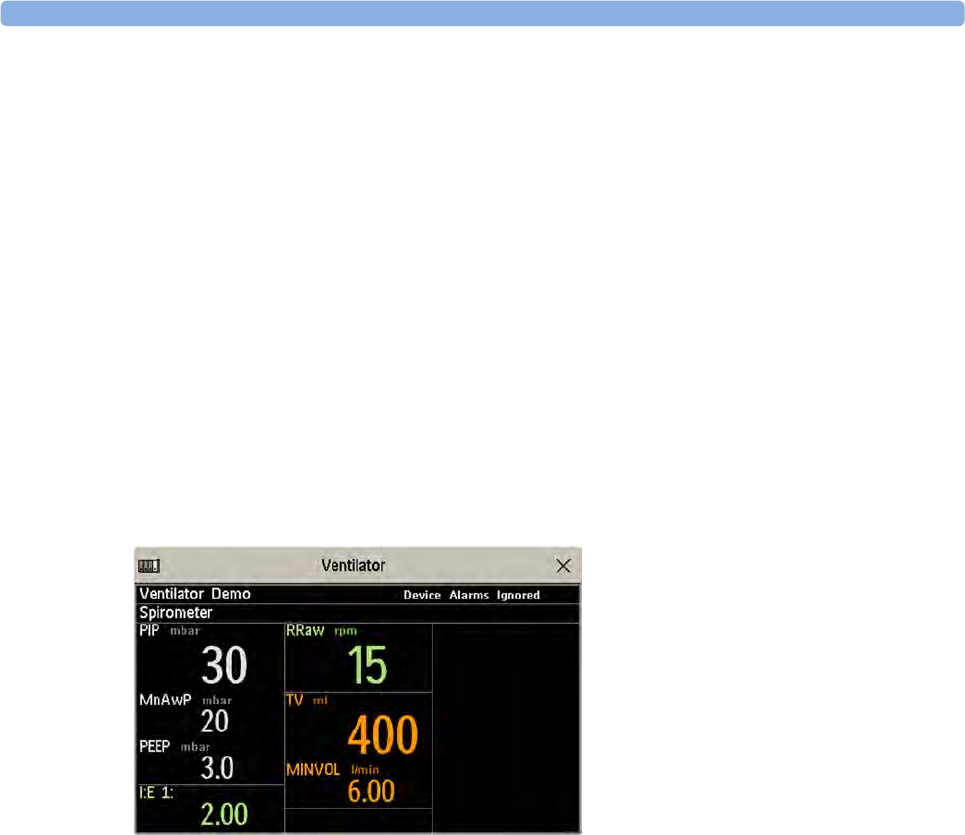
32 IntelliBridge EC10
392
6The connection status LED (4) will flash green until it has correctly identified the external device
and started communication. Check that the connection status LED then lights green continuously
indicating that communication has been established.
Changing Waves and Numerics Displayed
To change the waves and numerics from the IntelliBridge module or Interface board displayed on the
Screen,
1Select Main Setup, Measurements, then <External Device> to enter the setup menu for the
connected device.
2Select Setup Driver.
3Select Setup Waves or Setup Numerics and make the changes required.
4Close the setup menu. The monitor takes a few seconds to activate the change.
Viewing the IntelliBridge Device Data Window
To view the IntelliBridge device data window, either
• select the setup key on the IntelliBridge module, if available, or
• select the External Devices SmartKey and then select the pop-up key with the device name on it,
or
•in the Setup <External Device> menu, select Show Device Data.
Check that the correct external device ID is shown in the window title.
Select the device data window then Setup Device to open the setup menu for the connected device.
With the More Data key you can page through additional data which does not fit on the first screen.
When an infusion system is connected the data is presented differently. The data from each pump is
displayed in a horizontal frame in the window. Data from several infusion pumps can be displayed.
To see a detailed information window for one of the pumps, you can select data for that pump on the
Screen or select the More Data pop-up key.
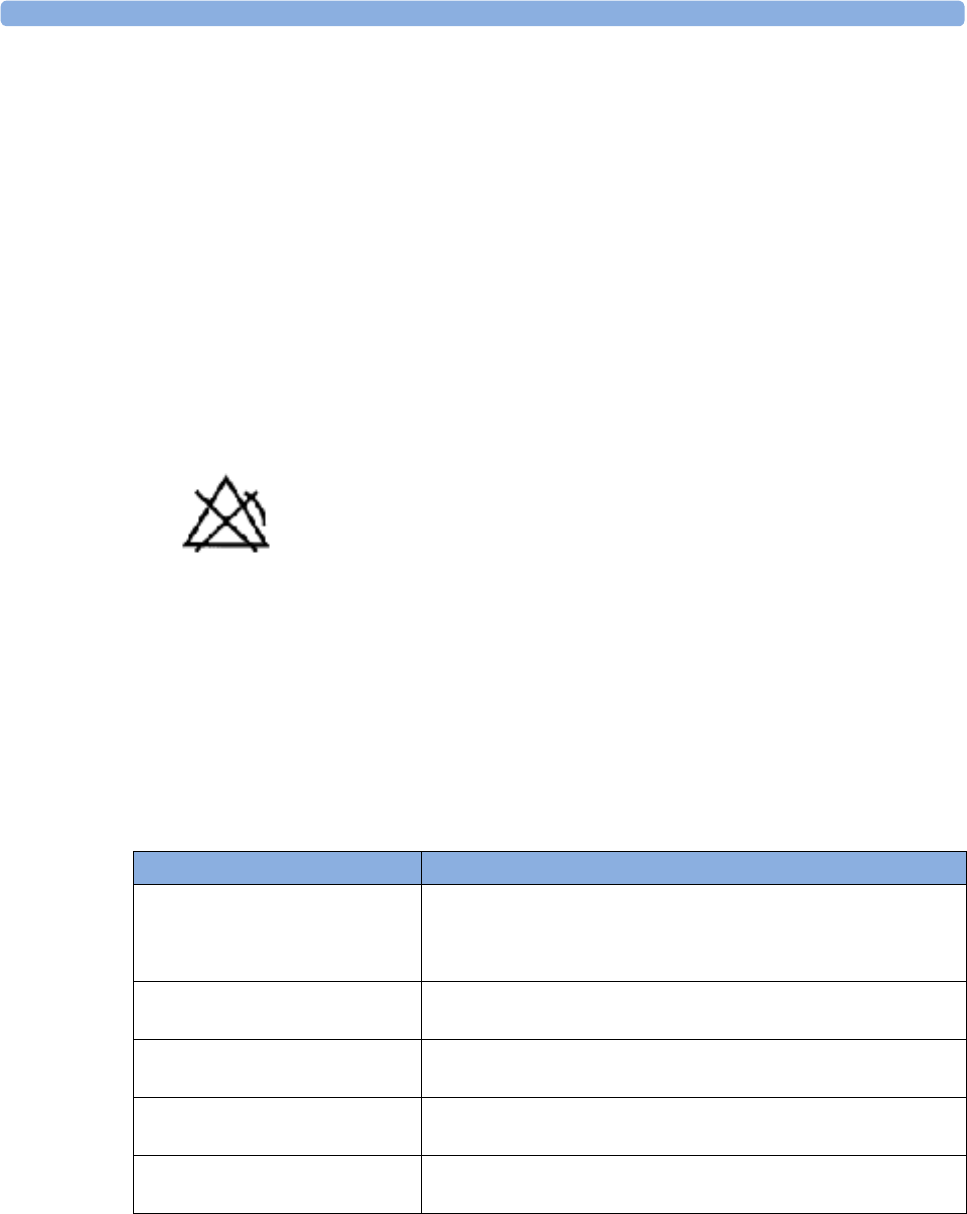
32 IntelliBridge EC10
393
Using Screens with External Device Data
Your monitor may be configured to show external device data permanently on the Screens.
Select the device data window to display the pop-up keys that let you access the setup menu and make
changes.
Alarms/INOPs from External Devices
The IntelliBridge module/Interface board itself generates INOPs, but does not generate alarms. If the
external device's alarms are on, the module/Interface board transmits these to the monitor. A message
in the External Device Data window tells you either Device Alarms Ignored or Device Alarms
Accepted or No Alarms Available. External device alarms status symbols precede some, but not all,
measurement labels.
Alarms from external devices are transmitted to the monitor. For all numerics configured in the setup
menu, an alarm condition is announced at the monitor. For one or more measurements not configured
in the setup menu, an alarm is announced as a text message for the highest priority alarm. Priority is
determined at the external device.
Refer to the documentation supplied with the IntelliBridge EC5 ID module for details of how alarms
are announced on the monitor and the Information Center.
INOPs from the IntelliBridge Module/Interface Board
the monitor is configured to accept external device alarms, but the alarms are
switched off at the external device.
INOP Text INOP Condition
!!No Device Data
!!!No Device Data
Communication has been lost to a connected device when
– !! a medium priority INOP or patient alarm was present
– !!! a high priority INOP or patient alarm was present
No Device Data Communication has been lost to a connected device with no (or
only low priority) INOPs/physical alarms.
Device Unsupported Device identification completed but no appropriate device driver
installed
Device Chk Config Device identification completed but communication could not be
established due to errors
Device Check Setup Device identification completed but communication could not be
established due to timeout

32 IntelliBridge EC10
394
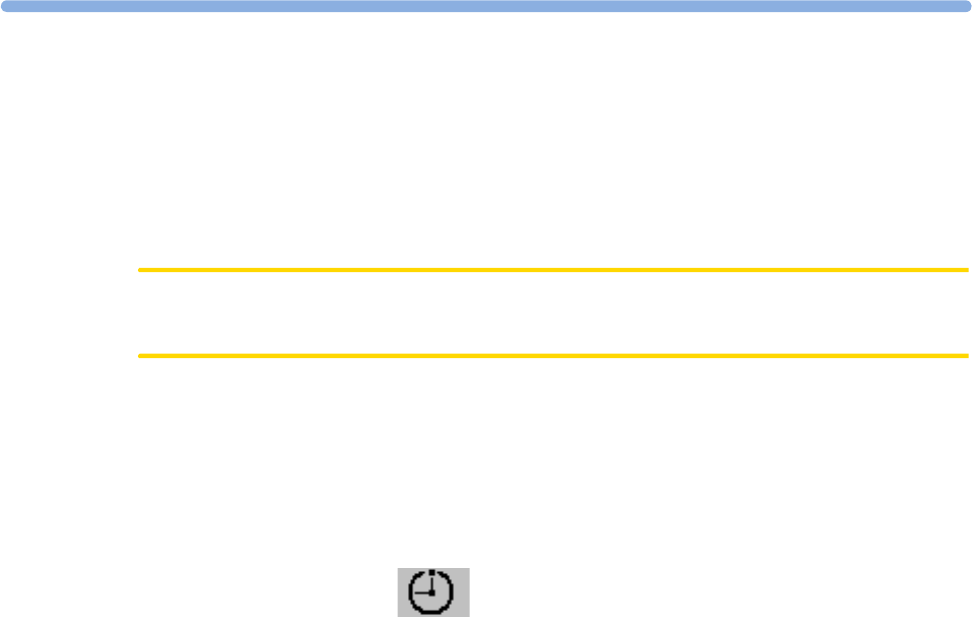
33
395
33Using Timers
With the Timers function you can set timers to notify you when a specific time period has expired.
CAUTION
Do not use the timers to schedule critical patient-related tasks.
Viewing Timers
You can view currently active timers in the Timers window or directly on the Main Screen (if a timer
has been substituted for a numeric).
To open the Timers window:
• Select the Timer SmartKey
or
•Select
Main Setup then select Timer
The maximum number of timers which can be active depends on your monitor model.
For a timer with a defined run time a progress bar is shown with the run time for that timer. Next to
the progress bar the elapsed time or the remaining time is shown, depending on whether the timer is
counting up or down. On the left, the label of the timer and a symbol indicating the type of expiry
notification is shown.
Timer Types
There are four types of timer: Basic, Enhanced, Cyclic and No Limit. A Basic timer has a single,
defined run time and progress is shown in the progress bar. An Enhanced timer is like a Basic timer
but the progress bar shows progress beyond the end of the run time. A Cyclic timer is like a Basic
timer but restarts automatically when the run time is expired. A No Limit timer has no run time or
progress bar and shows the time elapsed since the timer was started.
The type of timer is set in the monitor's Configuration Mode and is associated with the timer label.
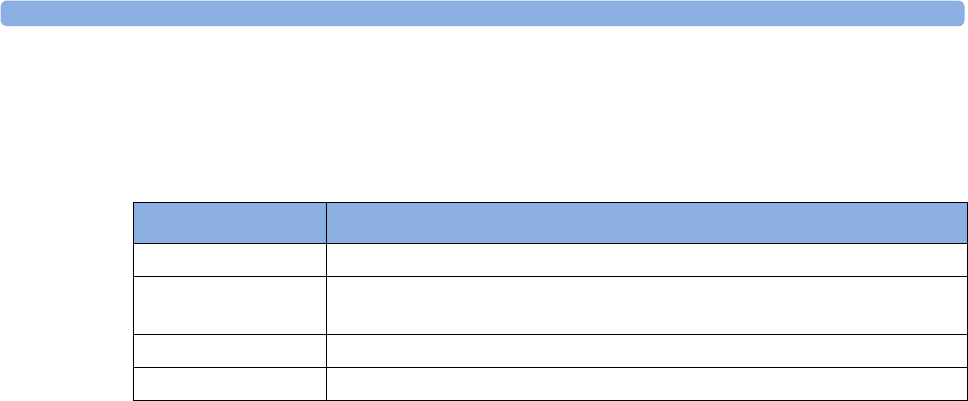
33 Using Timers
396
Timer Setup Pop-up Keys
When you open the Timers window and select a timer, then select the setup key, the setup window
opens and a selection of pop-up keys appear to let you activate and control the timers.
Setting Up Timers
The timer type, display color of the timer and whether a window automatically pops up on expiry are
settings made in Configuration Mode for each timer label.
The remaining timer settings can be made in Monitoring Mode. If you change settings when a timer is
running it will not be stopped. The timer will continue to count but the new settings will be applied.
To display the setup window for a timer,
•in the Timers window, select the required timer, then select the setup key or
• select a timer on the Screen then select Setup Timers.
Timer Label
You can select from a variety of specific labels, for example Tourniquet, Infus, Docu or from four
non-specific labels TimerA, TimerB, TimerC, and TimerD. When you assign a label to a timer, the
monitor automatically applies the associated configuration settings to this timer, but the timer
continues counting and is not reset.
To select a label, in the Timers window:
1Select the required timer and display the Setup window.
2Select Label.
3Select a specific or non-specific label from the list.
Run Time
The run time can be set between 1 minute and 96 hours. No Limit timers have no run time.
To set the run time, in the Timers window:
1Select the required timer and display the Setup window.
2Select Run Time.
3Select a run time from the list.
Timer Counting Direction
Timers can count up or down, showing elapsed time or remaining time. No Limit timers automatically
count up.
Pop-Up Keys Selecting this pop-up key lets you....
Start start the timer.
Stop stop the timer, allowing either restarting after a pause (Start key) or clearing
(Clear key).
Clear clear the timer, ending this timer episode.
Timers return to the timer window showing all active timers
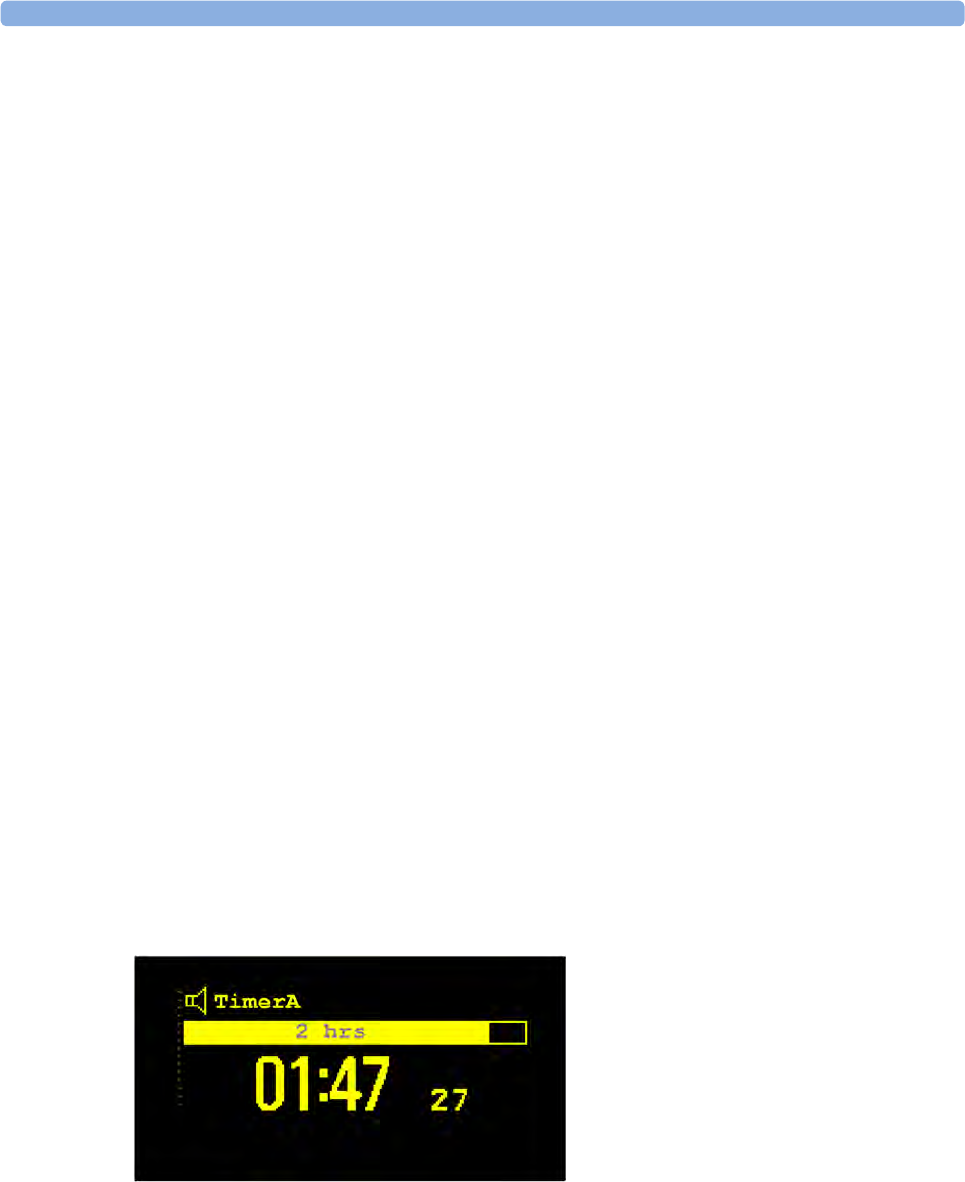
33 Using Timers
397
To change the direction, in the Timers window:
1Select the required timer and display the Setup window.
2Select Direction to switch between Up and Down.
Notification
When a timer expires (except a No Limit timer), the color changes to red and a message appears in the
status line on the Main Screen. Be aware that if a timer has been configured to display in light red, the
color will not visibly change when the timer expires.
Additional notification is also available and can be set to:
Alarm: An INOP alarm indicates the expiry of the timer
Sound: A single tone indicates the expiry of the timer
No Sound: No additional notification
To set the additional notification, in the Timers window:
1Select the required timer and display the Setup window.
2Select Notification and select the notification level required from the list.
Timer Volume
For all Timers with the notification setting Sound, you can set the volume of the tone.
To set the volume, in the Timers window:
1Select the required timer and display the Setup window.
2Select Timer Volume and select a volume setting from the list.
Displaying a Timer On The Main Screen
If you want to have a timer displayed on the Main Screen, you can substitute it for a numeric which is
not directly associated with a wave. If limited space is available, some of the timer display elements
may not be displayed. The minimum information displayed is the label and the elapsed or remaining
time.
To display a timer on the Main Screen:
1Select the numeric you want to substitute.
2Select Change Numeric.
3Select Any Timer.

33 Using Timers
398
Main Screen Timer Pop-up Keys
When you select a timer displayed on the Main Screen, additional pop-up keys become available:
Displaying A Clock On The Main Screen
In the same way that you can substitute a timer for a numeric, you can also substitute a larger analog or
digital clock display for a numeric.
To display a clock on the Main Screen:
1Select the numeric you want to substitute.
2Select Change Numeric.
3Select Clock.
When you select the clock on the Main Screen you can select Date, Time in the menu to set the date
and time.
Pop-Up Keys Selecting this pop-up key lets you....
Setup <Timer Label> enter the setup screen for the currently selected timer.
Change Timer select a different timer for display.
Timers enter the Timers window.
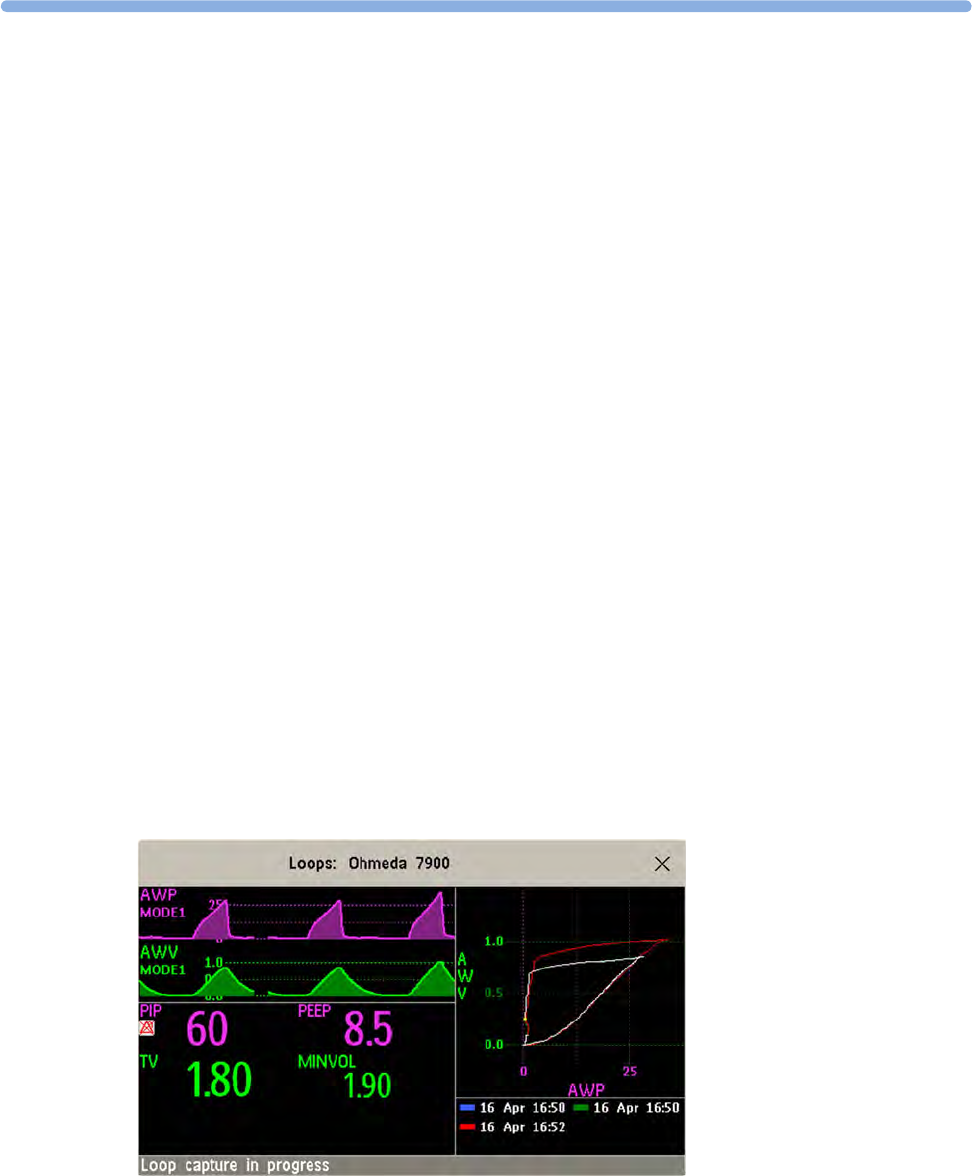
34
399
34Respiratory Loops
Using a Spirometry module or a VueLink/IntelliBridge module connected to a ventilator, you can
measure and store graphic representations of realtime respiratory loops. Respiratory loops can help
you recognize changes in your patient's lung function, and they can also indicate a fault in the airway
tubing (for example, if the respiratory loop does not close).
You can measure:
• Pressure-volume loops
• Pressure-flow loops
•Volume-flow loops.
Note that you cannot store loops from different patients and different source devices in the same list
as they are patient and device specific. This prevents you from inadvertently comparing information
from different patients.
Viewing Loops
In the loops display, the current loop is drawn in white, and up to six stored loops are color-coded to
match their timestamps. The currently-used source device is shown in the window title.
To view respiratory loops permanently on your Screen,
• select the current Screen name to open the Change Screen menu, then select a Screen configured
to display the loops screen element.
Select the loops screen element to access the loops pop-up keys.

34 Respiratory Loops
400
To open the Loops window, and its associated pop-up keys,
•select
Main Setup then Loops, or select the Loops SmartKey, if configured.
In the Loops window, in addition to the stored loops, two realtime airway waves and up to nine
available numerics from the source device can be shown.
Capturing and Deleting Loops
Up to six loops of each kind can be stored for reference.
To capture the current Loop and display it in the Loops window,
• select the Capture Loop pop-up key.
The monitor will prompt you to save the loop for reference, either in addition to or in place of
previously stored loops.
Status messages at the bottom of the window provide information on the loop capture process.
To delete Loops from the reference list,
• Select the Select Loop pop-up key to view the list of stored loops and delete the loops from the
list.
Showing/Hiding Loops
Colored rectangles beside the loops timestamps and color-coded with the loops tell you whether each
loop is currently displayed or not:
– A filled-in rectangle marks loops currently shown in the Loops window
– A rectangle outline marks loops not currently shown.
Selecting the timestamp of the currently-displayed loop hides it and shows the next in the list; selecting
the timestamp of a currently hidden loop displays it.
Changing Loops Display Size
To change the loops display size, in the Loops window, select the pop-up key Select Size then select
•Size x0.5 to display loops at half the usual size
•Size x1 to display loops at the usual size
•Size x2 to display loops at twice the usual size
This does not affect the size of loops printed in reports.
Using the Loops Cursor
To view the coordinates for any point on a stored loop,
1Select the pop-up key Select Loop.
2Select the required loop from the list of available loops.
3Use the arrow pop-up keys to move the cursor around the loop. The values for both loop axes are
shown for every point on the loop.
Select the X at the top of the loop list to exit the cursor.

34 Respiratory Loops
401
Changing Loops Type
To change the loop type, in the Loops window, select the Loop Type pop-up key (only available if the
source device delivers three waves), then select
•Press/Volume to display Pressure/Volume loops
•Flow/Volume to display Volume/Flow loops
•Press/Flow to display Pressure/Flow loops.
or, if the source device only delivers two waves,
1In the Loops window, select the Setup Device pop-up key to enter the setup window for the
external device.
2Select Wave 1 and select pressure, flow, or volume waves as required. Repeat for Wave 2.
Setting Up Source Device
The source device for the loops is indicated in the Loops window title.
• Select the Setup Device pop-up key to view the settings of the current source device.
If the source device is changed, all reference loops from a previous device are cleared from the
reference list when the first loop from the new source device is captured. Reconnecting the previous
device recalls its reference list.
Documenting Loops
1In the Loops window, select the pop-up key Print Loop
2From the list of available loops, select an individual loop, or select Print All to print a report of all
For each loop, the report prints
• the currently-displayed loop, with the loop capture timestamp
• up to six realtime numerics provided by the loop source device
•SpO
2, etCO2, PO2, and PCO2 numerics from the patient monitor, if available.

34 Respiratory Loops
402

35
403
35Laboratory Data
Laboratory data can be entered manually at the Information Center or at the monitor. For details on
manual entry at the monitor, see “Entering Measurements Manually” on page 46. Selected laboratory
data can be integrated on the monitor - values are then stored in the database and included in trends
and reports and can be displayed as a numeric on the main screen. Which data can be stored and used
on the monitor in this way is selected in Configuration Mode.
Viewing Received Data
When new data has been received from the Information Center a New Lab Data received. Check Lab
Results Window. message will appear with the arrival time. To view the data, select Main Setup then
select Lab Results or the Lab Results SmartKey.
The Lab Results window shows the most recent set of data received. The data is grouped into
categories:
•Blood Gases
•Electrolytes
•Hematology
•Metabolites
•Chemistry
•Enzymes/Markers
•Coagulation
•Urine Diagnostics
If no results are available for a particular category, that category will not be shown. Values which were
entered manually at the Information Center will be marked with an asterisk (*).

35 Laboratory Data
404
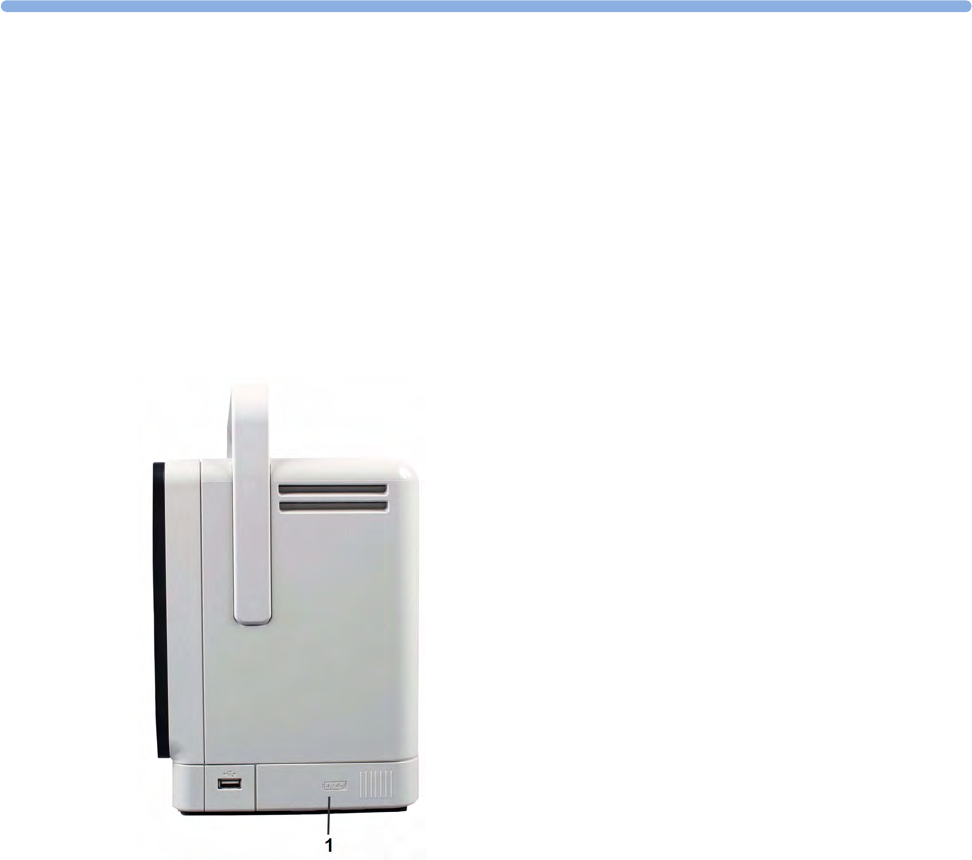
36
405
36Using Batteries
MX400/
MX450/
MX500/
MX550
The Lithium Ion batteries used in your monitor store a large amount of energy in a small package. This
allows reliable battery-operated monitoring but also requires care in use and handling of the batteries.
Follow the instructions in this chapter and refer for further details to the Service Guide.
One Philips M4605A rechargeable Lithium Ion battery must be inserted into the battery compartment
on the right side of the monitor to use the monitor with battery power.
1 Battery compartment
You can switch between battery-powered and mains-powered (AC) operation without interrupting
monitoring.
The battery recharges automatically when the monitor is connected to mains power.
Battery Power Indicators
The battery LED and battery status information on the Main Screen, in combination with INOP
messages and prompts, help you keep track of the battery power status. The indicators always show
the remaining capacity in relation to the battery's actual maximum capacity, which may lessen as the
battery ages. You can see the actual capacity in the Battery Status window.
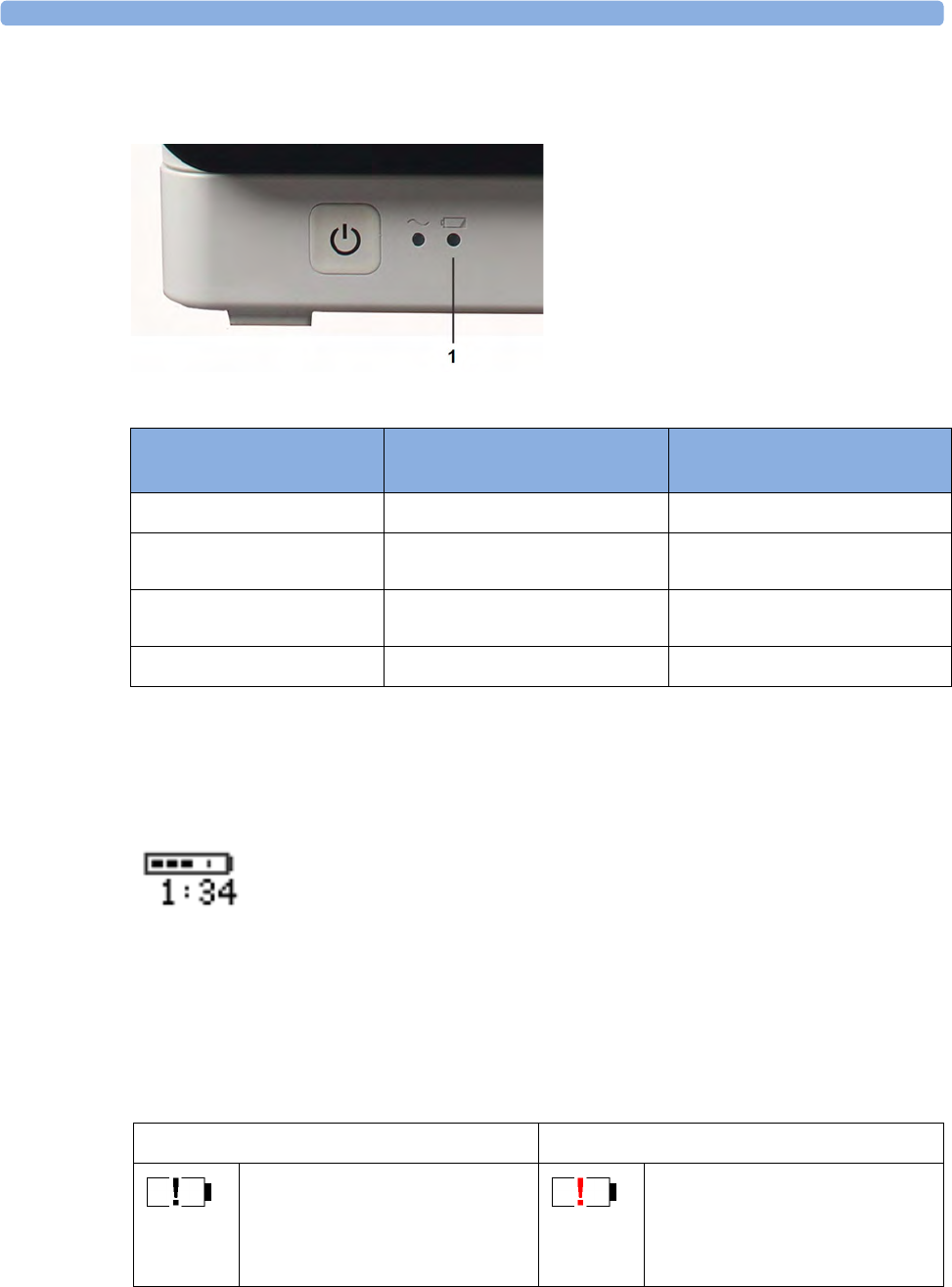
36 Using Batteries
406
Battery LED
The battery LED on the front panel of the monitor is indicated by a battery symbol.
1Battery LED
Battery Status on the Main Screen
The status of the battery is shown, with the battery power remaining and, when the battery is not
charging, an estimate of the monitoring time this represents.
Battery power gauge:
This shows the remaining battery power. It is divided into sections, each representing 20% of the total
power. If three sections are filled, as in this example, this indicates that 60% battery power remains. If
no battery is detected, a blank battery gauge marked with a flashing red X is displayed. If no data is
available from the battery, a question mark is shown in the gauge.
If there are problems or changes in the status of the battery this is indicated by a blank battery gauge
containing a symbol. If the symbol is red, this indicates a critical situation.
Battery LED Colors If the monitor is connected to
mains power, this means
If the monitor is running on
battery power, this means
Green battery power is > 90%
Yellow battery charging (battery power
< 90%)
Red, flashing less than 10 minutes power
remaining
Red, flashes intermittently battery or charger malfunction battery malfunction
Battery status indicator Battery malfunction indicator
Alternates with the battery gauge on the
Main Screen.
Check in the Battery Status window
to identify the cause.
The red ! flashes. Critical battery
situation or malfunction. Check in the
Battery Status window to see which
malfunction indicator is displayed, or
refer to the INOP, to identify the cause.
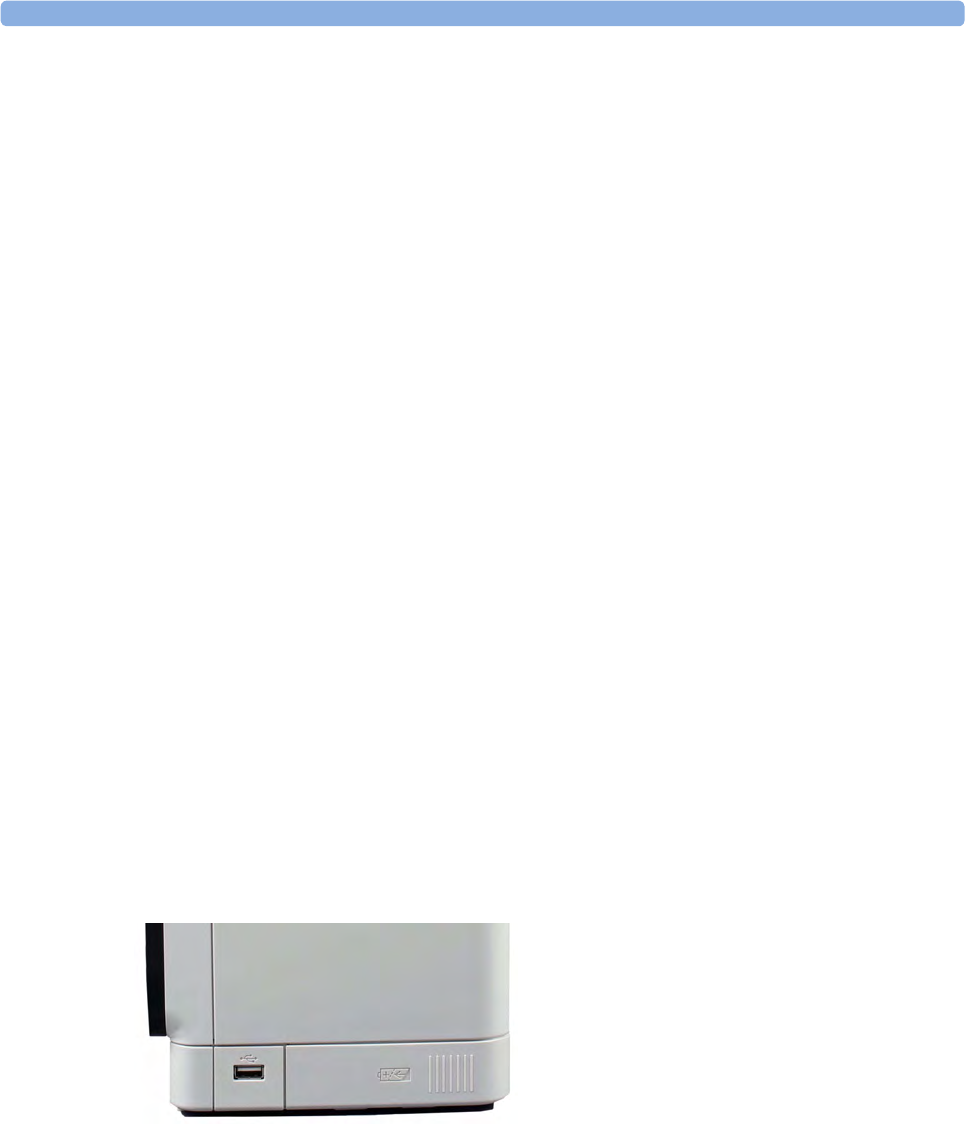
36 Using Batteries
407
Monitoring Time Available: While the monitor is running on battery power, a time is displayed
below the battery power gauge. No time is displayed when the monitor is running on external power.
This is the estimated monitoring time available with the current battery power. Note that this time
fluctuates depending on the system load (the display brightness and how many measurements you
carry out).
Battery Status Window
To access the Battery Status window and its associated pop-up keys, select the battery status
information on the Screen, or select Main Setup then Battery.
•Capacity, remaining tells you how much power is left in the battery.
•TimeToEmpty tells you approximately how long you can continue to use the monitor with this
battery. Note that this time fluctuates depending on the system load (the display brightness and
how many measurements and recordings you carry out).
•TimeToFull is shown in place of TimeToEmpty if the monitor is connected to mains power, and
tells you how much time is left until the battery is charged to 90%. If >10 hrs is shown here, the
battery may not charge completely when the monitor is in use. You can use the 865432 Smart
Battery Conditioner (previously M8043A) to charge the batteries externally.
Checking Battery Charge
To check the charge status of a battery, refer to the battery power gauge on the screen, or open the
Battery Status window.
When Battery Lifetime is Expired
When the battery is aged, either after 3 years from manufacturing date or after 500 charge/discharge
cycles, it is recommended to replace the battery. To remind you of this, a message will appear in the
Battery Status window. This message will only be displayed at the appropriate time when the date and
time on the monitor is correct.
Replacing a Battery
To replace the battery,
1Press on the battery compartment door and slide it to the right to open it.
2Pull gently on the canvas strap to move the battery towards you, then grasp the battery and pull it
out fully.
3Slide the new battery into position, making sure that the battery contacts are facing in the correct
direction, as outlined on the inside of the battery compartment door.
4Close the battery compartment door.

36 Using Batteries
408
Optimizing Battery Performance
The performance of rechargeable batteries may deteriorate over time. Battery maintenance as
recommended here can help to slow down this process.
Display Brightness Setting
1In the Main Setup menu, select User Interface, Brightness, then Optimum. This selects a level of
brightness suitable for most monitoring locations that uses less battery power than brighter
settings.
2Ensure that the current level of brightness is suitable for your monitoring location.
Charging a Battery
A battery can be charged in monitors used to monitor patients. Charging is quicker in monitors which
are switched off. You can also use the 865432 Smart Battery Conditioner (previously M8043A) to
charge batteries.
1Insert the battery into a monitor connected to mains power. The battery LED will light yellow to
indicate that charging is in process (it can take up to three minutes before charging begins).
2Charge the battery until it is full, the battery LED is green, and the battery power gauge is filled.
In certain situations, where many measurements are in use plus the recorder, the load on the monitor
may be so high that the batteries will not charge. In this case you must use the 865432 Smart Battery
Conditioner (previously M8043A Smart Battery Conditioner) to charge the battery.
Conditioning a Battery
You must condition a battery when its "battery requires maintenance" symbol shows on the Screen.
Do not interrupt the charge or discharge cycle during conditioning. You can condition a battery in a
monitor.
CAUTION
Do not use a monitor that is being used to condition batteries to monitor patients. The monitor
switches off automatically when there is no battery power left.
It is, however, preferable to use the 865432 Smart Battery Conditioner (previously M8043A) for
external battery conditioning. The Smart Battery Conditioner automatically performs the correct
charge or conditioning process and evaluates the capacity when fully charged. For details please see the
Instructions for Use for the Smart Battery Conditioner. Do not use any other battery chargers or
conditioners.
To condition a battery using a monitor,
1Insert the battery into a monitor connected to mains power.
2Switch the monitor power off.
3Charge the battery until it is completely full. Open the Battery Status window and check that the
Batt fully charged message is displayed.
4Disconnect the monitor from mains power, and let the monitor run until there is no battery power
left and the monitor switches itself off.
5Reconnect the monitor to mains power and charge the battery until it is full for use or charge to
50% for storage.

36 Using Batteries
409
Storing a Battery
WARNING
Remove the battery from the monitor when it is not used for a longer period of time, to avoid
potential damage caused by battery leakage.
Batteries should be charged to a maximum of 50% for storage.
The battery will discharge over time if it is stored inside the monitor without AC power connection.
The reported values for "remaining capacity" and "runtime" will become less accurate when the battery
is stored in this way for a longer period of time (that is, several weeks).
Disposing of Used Batteries
Dispose of used batteries promptly and in an environmentally-responsible manner. Discharge the
batteries and insulate the terminals with tape before disposal. Do not dispose of the battery in normal
waste containers. Consult your hospital administrator to find out about local arrangements.
Battery Safety Information
WARNING
• Use only Philips batteries specified in the chapter on “Accessories”. Use of a different battery may
present a risk of fire or explosion.
• Do not open batteries, heat above 60°C (140°F), incinerate batteries, or cause them to short
circuit. They may ignite, explode, leak or heat up, causing personal injury.
• If battery leakage should occur, use caution in removing the battery. Avoid contact with skin. Refer
to qualified service personnel.
• Do not expose batteries to liquids.
• Do not crush, drop or puncture batteries - mechanical abuse can lead to internal damage and
internal short circuits which may not be visible externally.
• If a battery has been dropped or banged against a hard surface, whether damage is visible
externally or not:
– discontinue use
– dispose of the battery in accordance with the disposal instructions above.
• Keep batteries out of the reach of children
• Keep batteries in their original package until you are ready to use them.

36 Using Batteries
410

37
411
37Care and Cleaning
Use only the Philips-approved substances and methods listed in this chapter to clean or disinfect your
equipment. Warranty does not cover damage caused by using unapproved substances or methods.
Philips makes no claims regarding the efficacy of the listed chemicals or methods as a means for
controlling infection. Consult your hospital's Infection Control Officer or Epidemiologist. For
comprehensive details on cleaning agents and their efficacy refer to "Guidelines for Prevention of
Transmission of Human Immunodeficiency Virus and Hepatitis B Virus to Health Care and Public-
Safety Workers" issued by the U.S. Department of Health and Human Services, Public Health Service,
Centers for Disease Control, Atlanta, Georgia, February 1989. See also any local policies that apply
within your hospital, and country.
General Points
Keep your monitor, modules, Multi-Measurement Module, MMS extensions, Flexible Module Rack,
cables and accessories free of dust and dirt.
After cleaning and disinfection, check the equipment carefully. Do not use if you see signs of
deterioration or damage. If you need to return any equipment to Philips, decontaminate it first.
Observe the following general precautions:
• Always dilute cleaning agents according to the manufacturer's instructions or use lowest possible
concentration.
• Do not allow liquid to enter the case.
• Do not immerse any part of the equipment or any accessories in liquid.
• Do not pour liquid onto the system.
• Never use abrasive material (such as steel wool or silver polish).
• Never use bleach except in an approved product listed in this chapter.
WARNING
If you spill liquid on the equipment, battery, or accessories, or they are accidentally immersed in liquid,
contact your service personnel or Philips service engineer. Do not operate the equipment before it has
been tested and approved for further use.
The general care and cleaning information given here meets the requirements of Covidien llc for their
BIS measurement devices.
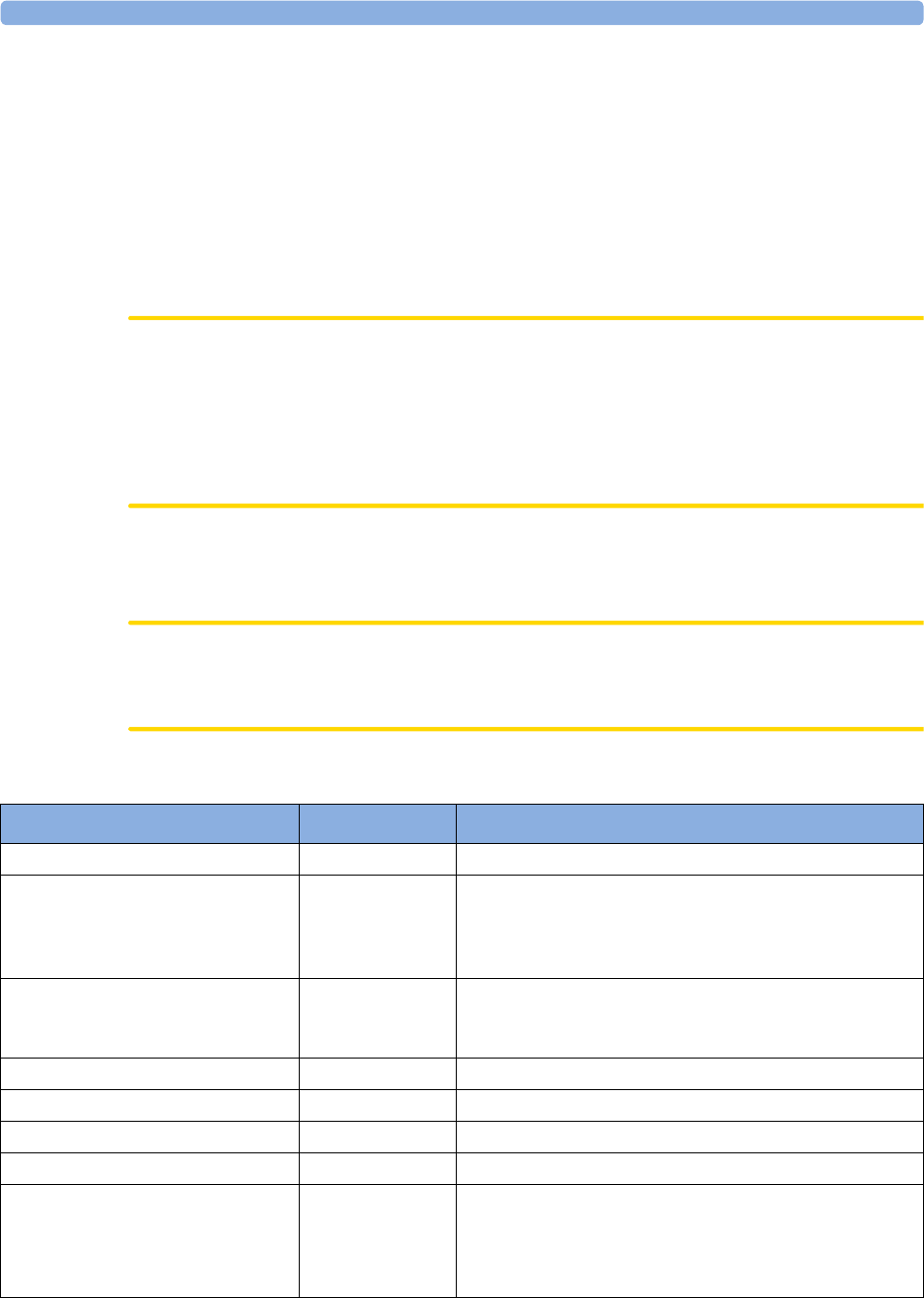
37 Care and Cleaning
412
Cleaning the Equipment
Clean with a lint-free cloth, moistened with warm water (40°C/104°F maximum) and soap, a diluted
non-caustic detergent, tenside, ammonia- or alcohol-based cleaning agent. Do not use strong solvents
such as acetone or trichloroethylene.
Take extra care when cleaning the screen of the monitor because it is more sensitive to rough cleaning
methods than the housing. Do not permit any liquid to enter the monitor case and avoid pouring it on
the monitor while cleaning. Do not allow water or cleaning solution to enter the measurement
connectors. Wipe around, not over, connector sockets.
CAUTION
To clean the touch-enabled display, disable the touch operation by switching off the monitor during
the cleaning procedure, or by selecting and holding the Main Screen key until the padlock symbol
appears on it, indicating that touch operation is disabled. Select and hold again to re-enable touch
operation.
Unplug a mouse, keyboard or other connected device before cleaning it.
Disinfecting the Equipment
CAUTION
Solutions: Do not mix disinfecting solutions (such as bleach and ammonia) as hazardous gases may
result.
Clean equipment before disinfecting. Recommended types of disinfecting agents are:
Product Name Product Type Ingredients
Isopropanol liquid Isopropanol 80%
Bacillol® AF liquid, spray 100 g concentrate contains:
Propan-1-ol 45.0 g;
Propan-2-ol 25.0 g;
Ethanol 4.7 g
Bacillol® 25 liquid Ethanol 100 mg/g
Propan-2-ol (= 2-Propanol) 90 mg/g;
Propan-1-ol (= 1-Propanol) 60 mg/g
Meliseptol®spray 50% 1-Propanol
Accel TB RTU liquid 0.5% accelerated hydrogen peroxide
Oxivir® Tb Cleaner Disinfectant spray 0.5% accelerated hydrogen peroxide
Oxivir® Tb Wipes wipes 0.5% accelerated hydrogen peroxide
Carpe DiemTM/MC Tb
Ready-to-Use General Virucide,
Bactericide, Tuberculocide,
Fungicide, Sanitizer
spray 0.5% accelerated hydrogen peroxide
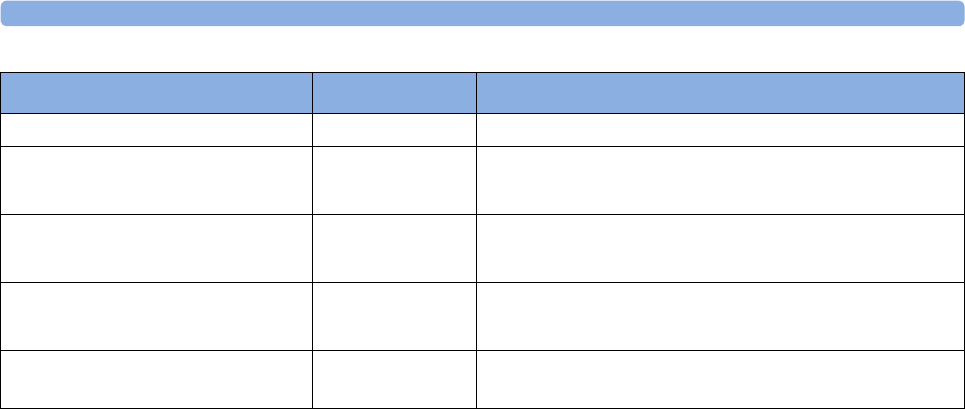
37 Care and Cleaning
413
1 Do not use Clorox ® Hydrogen Peroxide Disinfecting Wipes for snap fits (for example the battery
cover) or hinges. Remove all residues with water after the residence time. For repeated or prolonged
use, wear rubber or nitrile gloves to protect your hands.
Sterilizing the Equipment
Sterilization is not allowed for this monitor, related products, accessories or supplies unless otherwise
indicated in the Instructions for Use that accompany the accessories and supplies.
Cleaning, Sterilizing and Disinfecting Monitoring
Accessories
To clean, disinfect and sterilize reusable transducers, sensors, cables, leads, and so forth, refer to the
instructions delivered with the accessory. If no instructions are delivered with the accessory, the
instructions given in this chapter for cleaning, disinfecting and sterilizing the monitor are applicable.
Cleaning the SO2 Optical Module
The outside of the optical module can be cleaned as described under “Cleaning the Equipment” on
page 412. The compartment with the fiber-optic connection can only be cleaned with a dry cloth. Do
not introduce any moisture into this compartment.
Cleaning the Recorder Printhead (M1116B only)
If you run recordings at low speed (1 or 2cm/min) for extended periods, deposits of paper debris may
collect on the print head making recordings unevenly fainter in horizontal stripes.
1Remove the recorder.
2Open the recorder door and un-thread the paper from behind the rubber roller.
3Tear off or roll up the excess paper into the roll chamber to get it out of your way.
Carpe DiemTM/MC Tb Wipes wipes 0.5% accelerated hydrogen peroxide
Super Sani-Cloth
Germicidal Disposable Wipes
wipes isopropanol 55%
quaternary ammonium chlorides 0.5%
SANI-CLOTH® PLUS
Germicidal Disposable Wipes
wipes isopropanol 15%
quaternary ammonium chlorides 0.25%
SANI-CLOTH® HB Germicidal
Germicidal Disposable Wipes
wipes isopropanol < 0.15%
quaternary ammonium chlorides 0.14%
Clorox ® Hydrogen Peroxide
Disinfecting Wipes 1wipes 1 - 5% hydrogen peroxide
1 - 5% benzyl alcohol
Product Name Product Type Ingredients
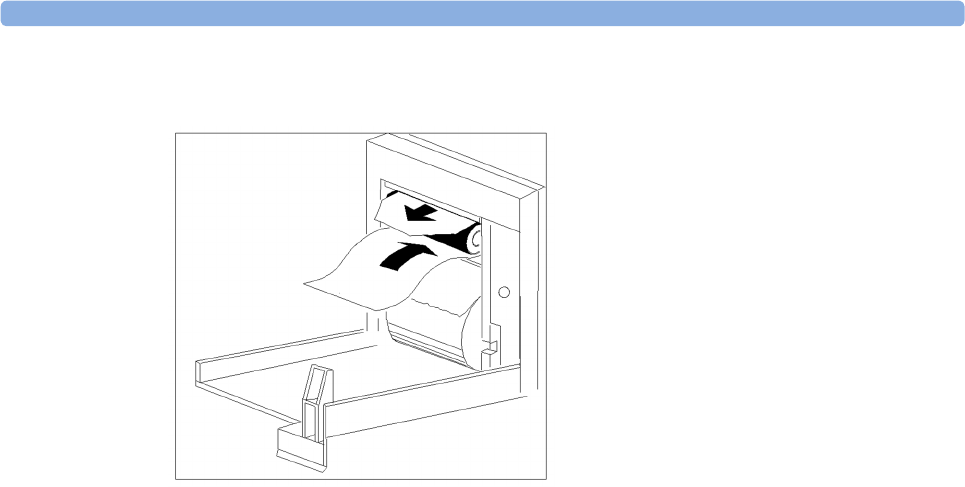
37 Care and Cleaning
414
4Thread the cloth cleaning strip instead of paper around the rubber roller until approximately two
inches of the strip come out from the top of the roller.
5Close the recorder door, aligning both ends of the strip over the top of the door.
6Holding the top end of the cleaning strip between your thumb and forefinger, pull the strip
through and out of the recorder.
7Open the door and ensure that the paper cavity is dust-free. Re-thread the paper and replace the
recorder.
Cleaning Batteries and the Battery Compartment
MX400/450/
500/550 Wipe with a lint-free cloth, moistened with warm water (40°C/104°F maximum) and soap. Do not use
strong solvents. Do not soak the battery.

38
415
38Maintenance and
Troubleshooting
WARNING
Schedule: Failure on the part of the responsible individual hospital or institution employing the use of
this equipment to implement a satisfactory maintenance schedule may cause undue equipment failure
and possible health hazards.
Contact: If you discover a problem with any of the equipment, contact your service personnel, Philips,
or your authorized supplier.
Inspecting the Equipment and Accessories
You should perform a visual inspection before every use, and in accordance with your hospital's policy.
With the monitor switched off:
1Examine unit exteriors for cleanliness and general physical condition. Make sure that the housings
are not cracked or broken, that everything is present, that there are no spilled liquids and that there
are no signs of abuse.
2Inspect all accessories (cables, transducers, sensors and so forth). If any show signs of damage, do
not use.
3Switch the monitor on and make sure the backlight is bright enough. Check that screen is at its full
brightness. If the brightness is not adequate, contact your service personnel or your supplier.
4If the MMS and MMS Extensions are mounted on the monitor, make sure that they are locked
into place and do not slide out without releasing the locking mechanism.
WARNING
Electrical Shock Hazard: Do not open the monitor or measurement device. Contact with exposed
electrical components may cause electrical shock. Always turn off and remove power before cleaning
the sensor, monitor or measurement device. Do not use a damaged sensor or one with exposed
electrical contacts. Refer servicing to qualified service personnel.
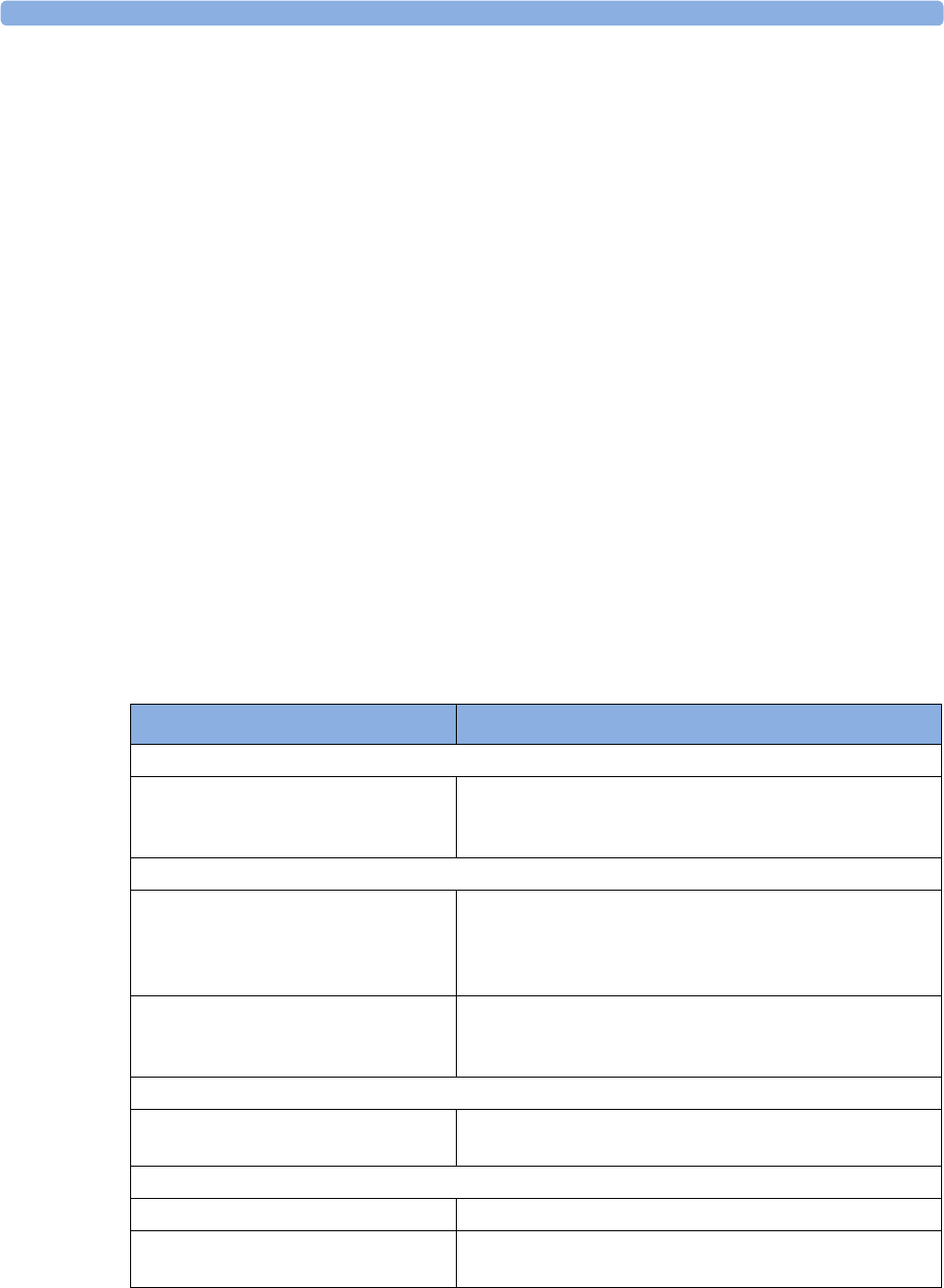
38 Maintenance and Troubleshooting
416
Inspecting the Cables and Cords
1Examine all system cables, the power plug and cord for damage. Make sure that the prongs of the
plug do not move in the casing. If damaged, replace it with an appropriate Philips power cord.
2Inspect the Measurement Link cable and ensure that it makes good connection with the MMS and
the FMS. Make sure that there are no breaks in the insulation.
3Inspect the cable connecting the MMS to the monitor. Make sure the connectors are properly
engaged.
4Inspect the patient cables, leads and their strain reliefs for general condition. Make sure there are
no breaks in the insulation. Make sure that the connectors are properly engaged at each end to
prevent rotation or other strain.
5Apply the transducer or electrodes to the patient, and with the monitor switched on, flex the
patient cables near each end to make sure that there are no intermittent faults.
Maintenance Task and Test Schedule
The following tasks are for Philips-qualified service professionals only. All maintenance tasks and
performance tests are documented in detail in the service documentation supplied on the monitor
documentation DVD.
Ensure that these tasks are carried out as indicated by the monitor's maintenance schedule, or as
specified by local laws. Contact a Philips-qualified service provider if your monitor needs a safety or
performance test. Clean and disinfect equipment to decontaminate it before testing or maintaining it.
Maintenance and Test Schedule Frequency
Monitor Tests
Safety checks. Selected tests on the
basis of IEC 60601-1
At least once every two years, or as needed, after any repairs
where the power supply is removed or replaced, or if the
monitor has been dropped.
Monitor Maintenance
Check ECG synchronization of the
monitor and defibrillator (only if
hospital protocol requires use of
monitor during defibrillation)
At least once every two years, or as needed.
MX600/700/800 only
Replace backlight
(integrated displays only)
25,000 - 30,000 hours (about three years) of continuous
usage, or as needed.
Multi-measurement Module and Module Tests
Performance assurance for all
measurements not listed below.
At least once every two years, or if you suspect the
measurement values are incorrect.
Multi-measurement Module and Module Maintenance
NBP calibration At least once every two years, or as specified by local laws.
Microstream CO2 calibration and
performance test
At least once a year or after 4000 operating hours.
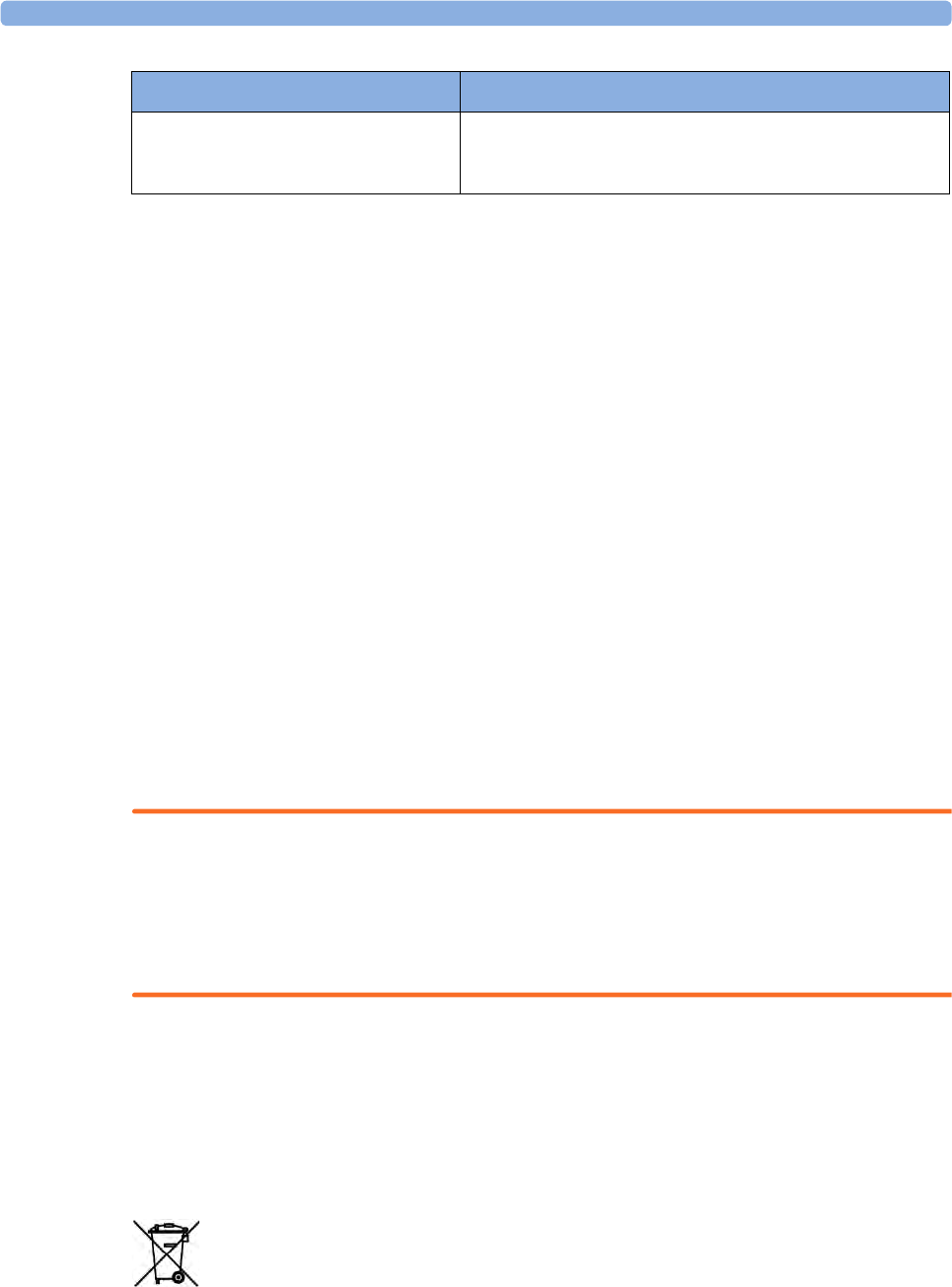
38 Maintenance and Troubleshooting
417
Troubleshooting
If you suspect a problem with an individual measurement, read the Instructions for Use and double-
check that you have set up the measurement correctly.
If you suspect an intermittent, system-wide problem call your service personnel. You may be asked for
information from the status log. To view the status log,
1In the Main Setup menu, select Revisions.
2Select the pop-up key corresponding to the status log you want to consult, for example, for the
MMS or the monitor.
3View the status log by selecting Status Log from the Monitor Revision window.
Returning Equipment for Repair
Before returning equipment for repair:
• disinfect and decontaminate the equipment appropriately.
• ensure that all patient data has been removed (i.e. that no patient is admitted).
Disposing of the Monitor
WARNING
To avoid contaminating or infecting personnel, the environment or other equipment, make sure you
disinfect and decontaminate the monitor appropriately before disposing of it in accordance with your
country's laws for equipment containing electrical and electronic parts. For disposal of parts and
accessories such as thermometers, where not otherwise specified, follow local regulations regarding
disposal of hospital waste.
You can disassemble the monitor, MMS, FMS and modules as described in the Service Guide.
You will find detailed disposal information on the following web page:
http://www.healthcare.philips.com/main/about/Sustainability/Recycling/pm.wpd
The Recycling Passports located there contain information on the material content of the equipment,
including potentially dangerous materials which must be removed before recycling (for example,
batteries and parts containing mercury or magnesium).
Do not dispose of electrical and electronic equipment as unsorted municipal waste. Collect it
separately, so that it can be safely and properly reused, treated, recycled, or recovered.
Mainstream and sidestream CO2
calibration and sidestream flow check
(M3014A)
At least once a year, or if you suspect the measurement
values are incorrect.
Maintenance and Test Schedule Frequency
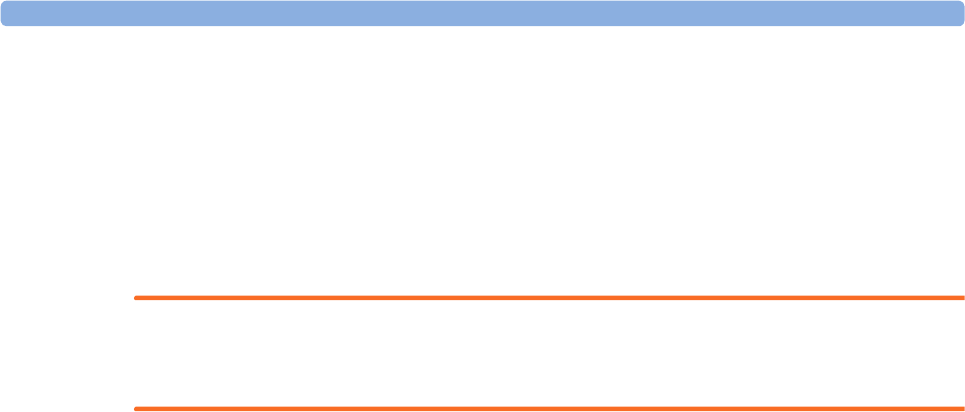
38 Maintenance and Troubleshooting
418
Disposing of Empty Calibration Gas Cylinders
1Empty the cylinder completely by pushing in the pin of the regulator valve or by pulling out the
pin of the fill valve using a tire valve stem wrench or a pair of needle nose pliers.
2When the cylinder is empty, either remove the valve stem from the fill (or regulator) hole, or drill a
hole in the cylinder.
3Write "Empty" on the cylinder and dispose of it appropriately for scrap metal.
WARNING
Ensure that the cylinder is completely empty before trying to remove the valve stem or drill a hole in
the cylinder.
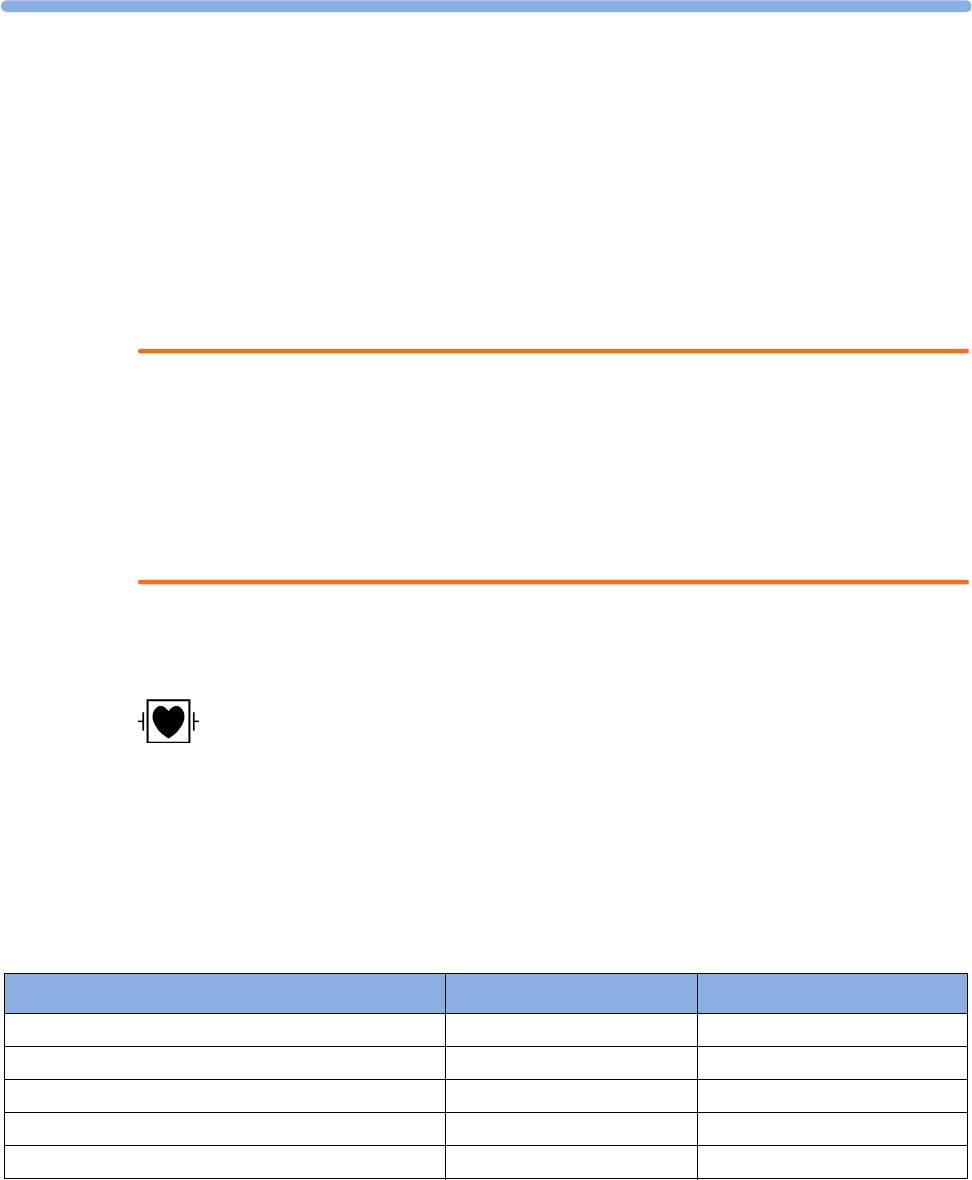
39
419
39Accessories
This chapter lists Philips-approved accessories for use with patient monitors as described in this
document. You can order parts and accessories from Philips supplies at www.medical.philips.com or
consult your local Philips representative for details. Some accessories may not be available in all
countries.
WARNING
Reuse: Never reuse disposable transducers, sensors, accessories and so forth that are intended for
single use, or single patient use only. Reuse may compromise device functionality and system
performance and cause a potential hazard.
Philips' approval: Use only Philips-approved accessories. Using non-Philips-approved accessories
may compromise device functionality and system performance and cause a potential hazard.
Packaging: Do not use a sterilized accessory if its packaging is damaged.
ECG/Resp Accessories
This symbol indicates that the cables and accessories are designed to have special protection
against electric shocks (particularly regarding allowable leakage currents), and are defibrillator proof.
The following cables may not all be available in all countries. Please check availability with your local
Philips supplier.
Recommended Cables
Trunk Cables
For use with: Part No. Length
3-Electrode Cable Set M1669A 2.7 m
3-Electrode Cable Set, OR 989803170171 2.7 m
5-Electrode Cable Set M1668A 2.7 m
5-Electrode Cable Set, OR 989803170181 2.7 m
6-Electrode Cable Set M1667A 2.7 m
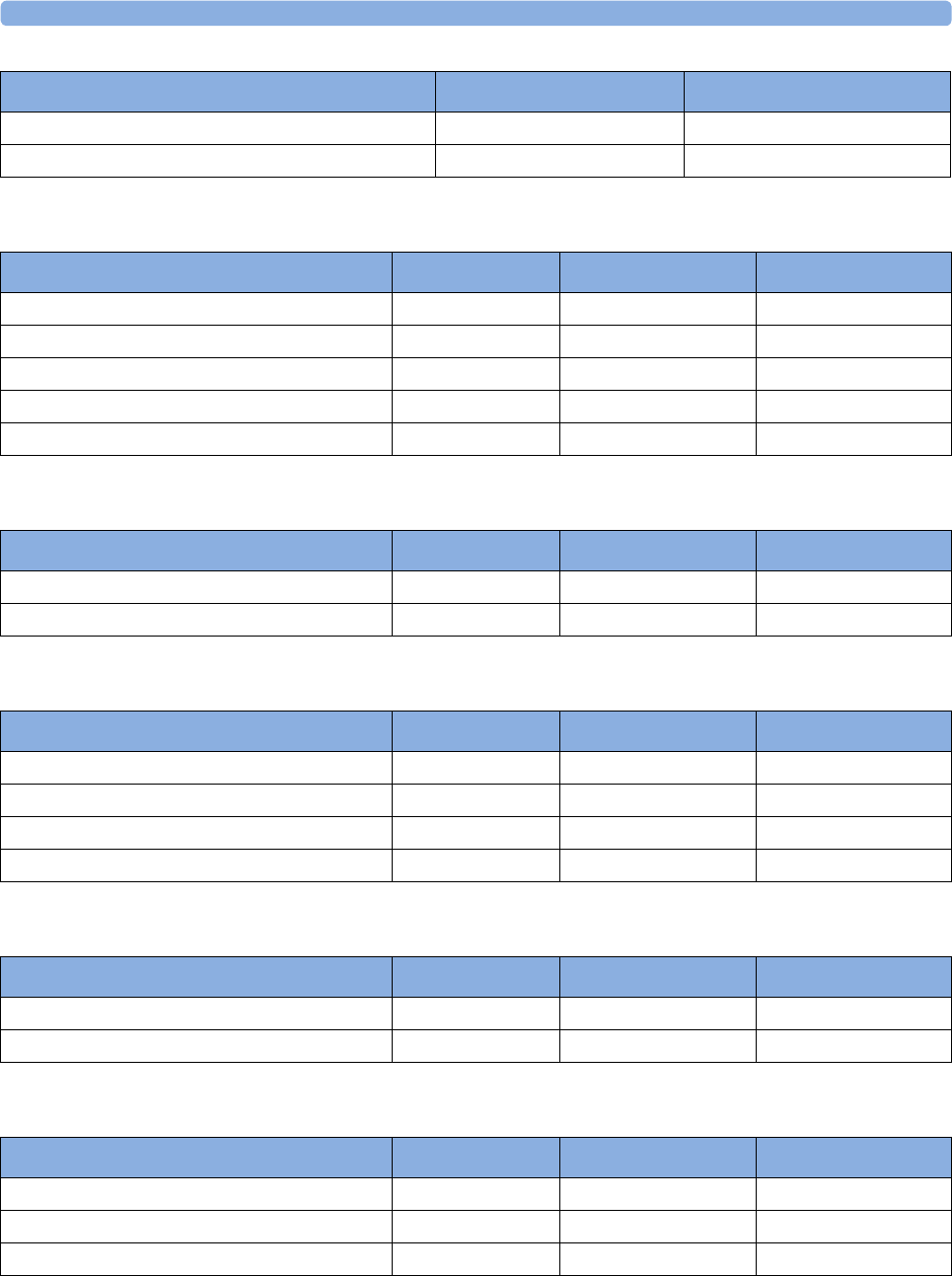
39 Accessories
420
3-Electrode Cable Sets
Single Patient 3-Electrode Cable Sets
5-Electrode Cable Sets
Single Patient 5-Electrode Cable Sets
6-Electrode Cable Sets
10-Electrode Cable set (5+5) M1663A 2.7 m
10-Electrode Cable set (6+4) M1665A 2.7 m
For use with: Part No. Length
Description Length AAMI Part No. IEC Part No.
OR Grabber shielded 1.0 m M1675A M1678A
ICU Grabber shielded 1.0 m M1671A M1672A
ICU snap shielded 1.0 m M1673A M1674A
ICU Clip non-shielded 0.45 m M1622A --
ICU Clip non-shielded 0.7 m M1624A M1626A
Description Length AAMI Part No. IEC Part No.
ICU Grabber shielded 1.0 m 989803173121 989803174201
ICU Grabber shielded 0.84 m 989803173141 -
Description Length AAMI Part No. IEC Part No.
OR Grabber shielded 1.0 m/1.6 m M1973A M1974A
ICU Grabber shielded 1.0 m/1.6 m M1968A M1971A
ICU Snap shielded 1.0 m/1.6 m M1644A M1645A
ICU Miniclip non-shielded 0.7 m/1.3 m M1647A M1648A
Description Length AAMI Part No. IEC Part No.
ICU Grabber shielded 1.0 m 989803173131 989803174211
ICU Grabber shielded 0.85 m 989803173151 -
Description Length AAMI Part No. IEC Part No.
OR Grabber 1.0 m/1.6 m M1684A M1685A
ICU Grabber 1.0 m/1.6 m M1680A M1681A
ICU Snap 1.0 m/1.6 m M1682A M1683A
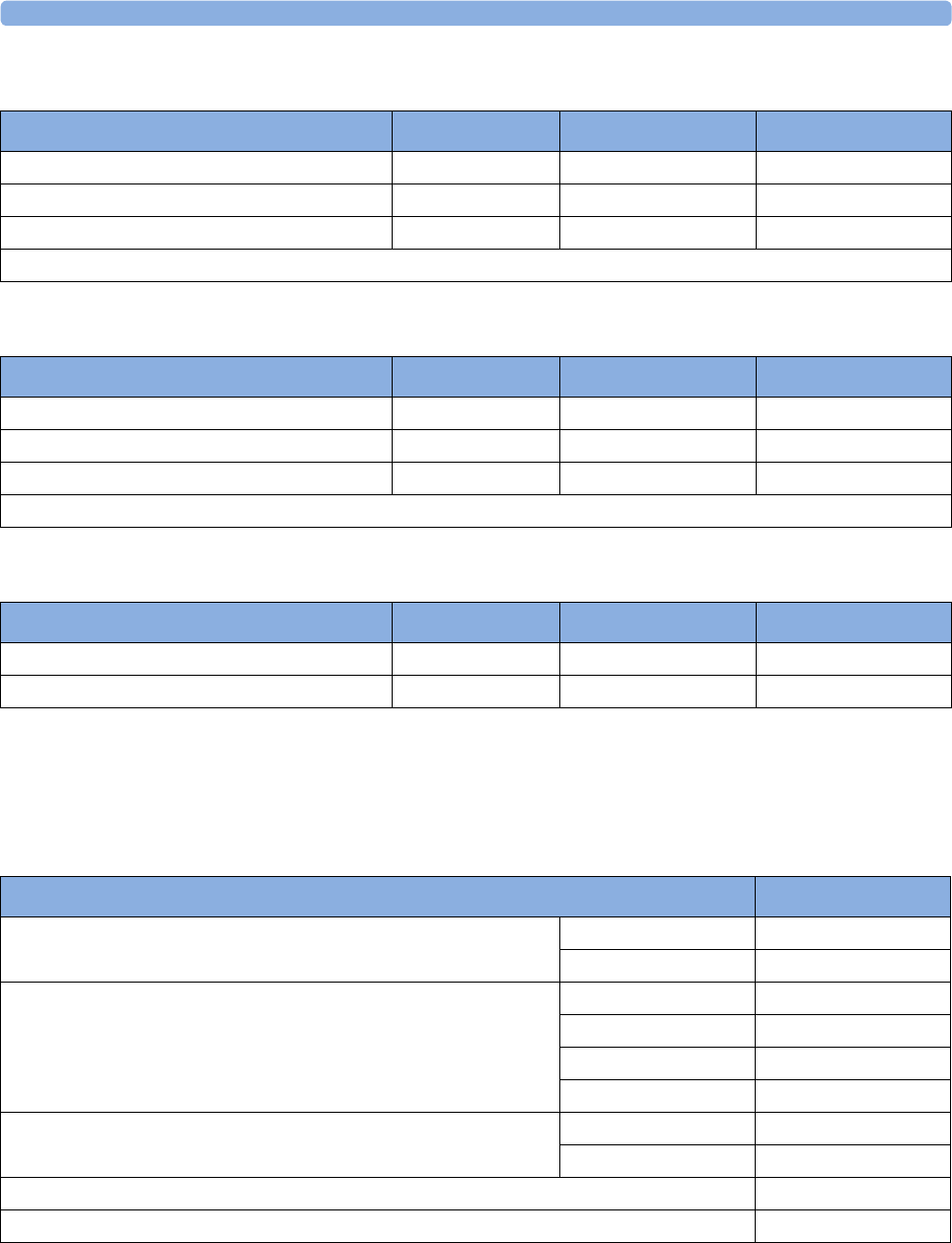
39 Accessories
421
10-Electrode (5+5) Cable Sets
10-Electrode (6+4) Cable Sets
One-piece Cables
Radio-translucent Cables
Pack of five single wires, radio-translucent, 0.9 m, M1649A
Set Combiners and Organizers
Description Length AAMI Part No. IEC Part No.
ICU Grabber, chest, shielded 1.0 m M1976A M1978A
ICU Snap, chest, shielded 1.0 m M1602A M1604A
OR Grabber, chest, shielded 1.0 m M1979A M1984A
For Limb Leads see 5-electrode cable sets
Description Length AAMI Part No. IEC Part No.
ICU Grabber, chest, shielded 1.0 m M1532A M1533A
ICU Snap, chest, shielded 1.0 m M1537A M1538A
OR Grabber, chest, shielded 1.0 m M1557A M1558A
For Limb Leads see 6-electrode cable sets
Description Length AAMI Part No. IEC Part No.
3-lead Grabber, ICU 1.0 m 989803143181 989803143171
5-lead Grabber, ICU 1.0 m 989803143201 989803143191
Description Part No.
Set combiner 3-electrode M1501A
5-electrode M1502A
Set organizer for shielded leadsets - grabber and snap 3-electrode M1503A
4-electrode M1664A
5-electrode M1504A
6-electrode M1679A
Set organizer for non-shielded lead sets - miniclip 3-electrode M1636A
5-electrode M1638A
Bedsheet clip M1509A
Replacement red cover for trunk cable (for 5-electrode cable sets) 989808148861
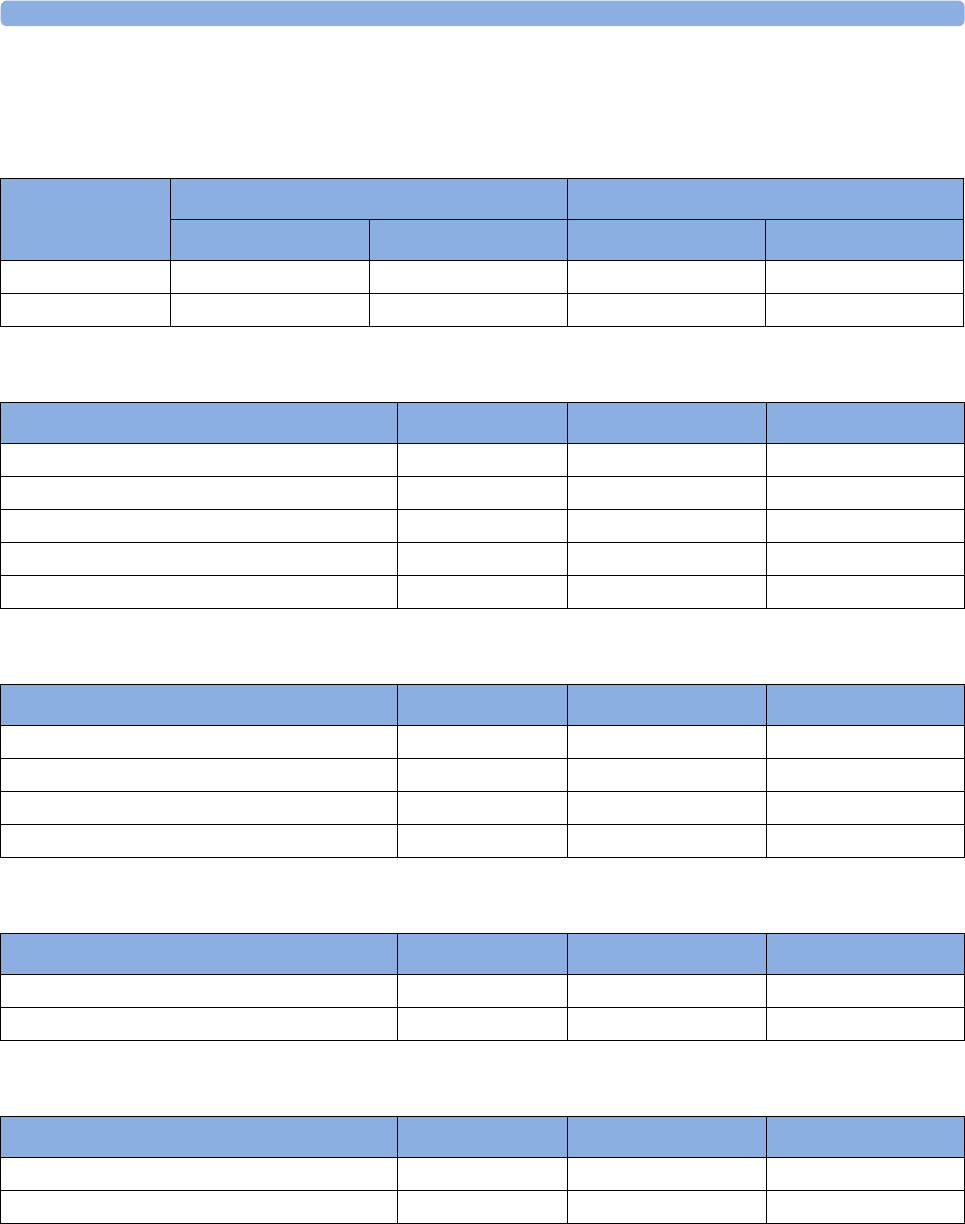
39 Accessories
422
Supported Cables
Trunk Cables
3-Electrode Cable Sets
5-Electrode Cable Sets
3-Electrode One Piece Cables
5-Electrode One Piece Cables
Length 3-Electrode Cable Set 5-Electrode Cable Set
AAMI Part No. IEC Part No. AAMI Part No. IEC Part No.
0.9 m M1540C M1550C M1560C M1570C
2.7 m M1500A M1510A M1520A M1530A
Description Length AAMI Part No. IEC Part No.
OR 1.0 m M1601A M1611A
ICU Grabber shielded 1.0 m M1603A M1613A
ICU snap shielded 1.0 m M1605A M1615A
ICU Clip non-shielded 0.45 m M1608A M1618A
ICU Clip non-shielded 0.7 m M1609A M1619A
Description Length AAMI Part No. IEC Part No.
OR Grabber shielded 1.0 m/1.6 m M1621A M1631A
ICU Grabber shielded 1.0 m/1.6 m M1623A M1633A
ICU Snap shielded 1.0 m/1.6 m M1625A M1635A
ICU Clip non-shielded 0.7 m/1.3 m M1629A M1639A
Description Length AAMI Part No. IEC Part No.
OR Grabber 1.9 m M1970A M1980A
ICU Snap 1.9 m M1972A M1981A
Description Length AAMI Part No. IEC Part No.
OR Grabber 2.5 m M1975A M1985A
ICU Snap 2.5 m M1977A M1986A
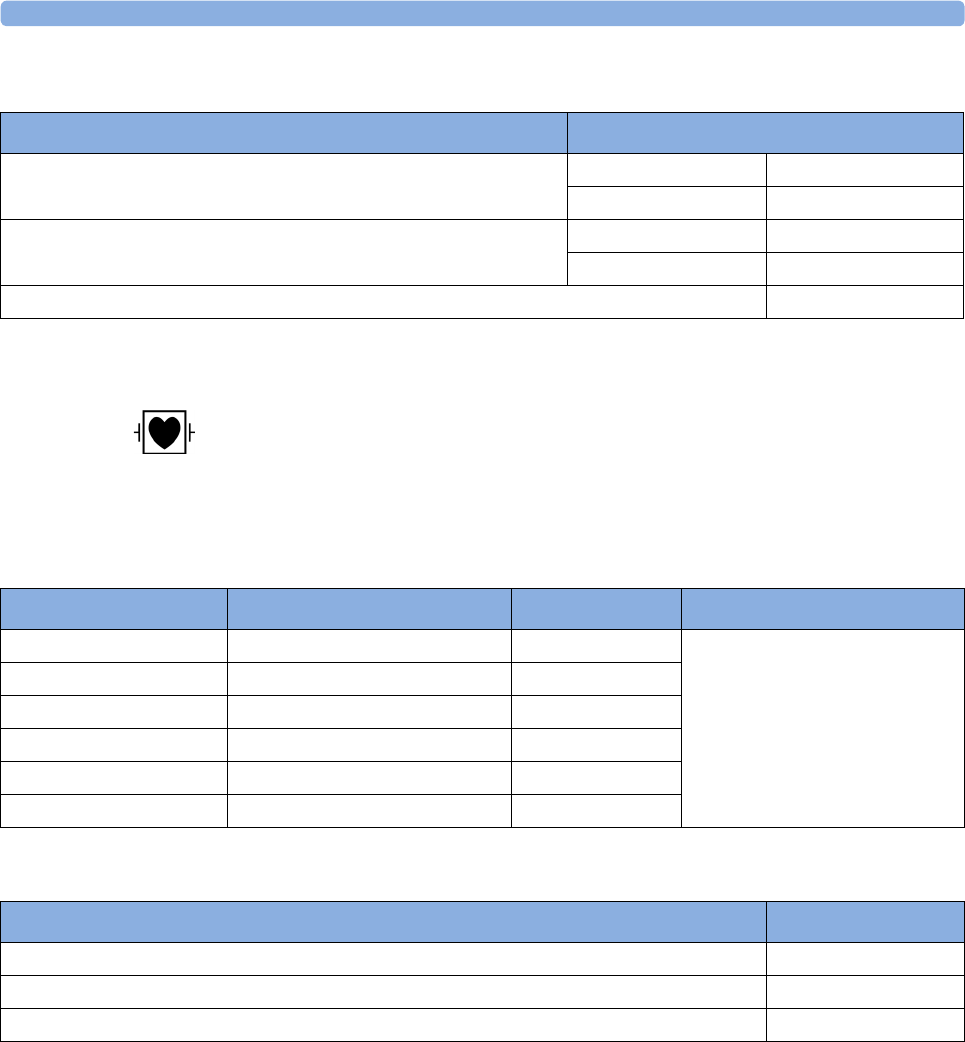
39 Accessories
423
Set Combiners and Organizers
NBP Accessories
These cuffs and tubings are designed to have special protection against electric shocks
(particularly regarding allowable leakage currents), and are defibrillator proof. You can use them during
electrosurgery.
Adult/Pediatric Reusable Comfort Care Cuffs
Adult/Pediatric Reusable Comfort Care Cuff Kits
Description Part No.
Set combiner 3-electrode M1501A
5-electrode M1502A
Set organizer Shielded 3-electrode M1503A
Shielded 5-electrode M1504A
Bedsheet clip M1509A
Patient Category Limb Circumference Part No. Tubing
Adult (Thigh) 42 to 54 cm M1576A M1598B (1.5 m)
or
M1599B (3 m)
Large Adult 34 to 43 cm M1575A
Adult 27 to 35 cm M1574A
Small Adult 20.5 to 28 cm M1573A
Pediatric 14 to 21.5 cm M1572A
Infant 10 to 15 cm M1571A
Cuff Kits Part No.
Infant, pediatric, small adult, adult M1577A
Small adult, adult, large adult, thigh M1578A
Infant, pediatric, small adult, adult, large adult, thigh M1579A
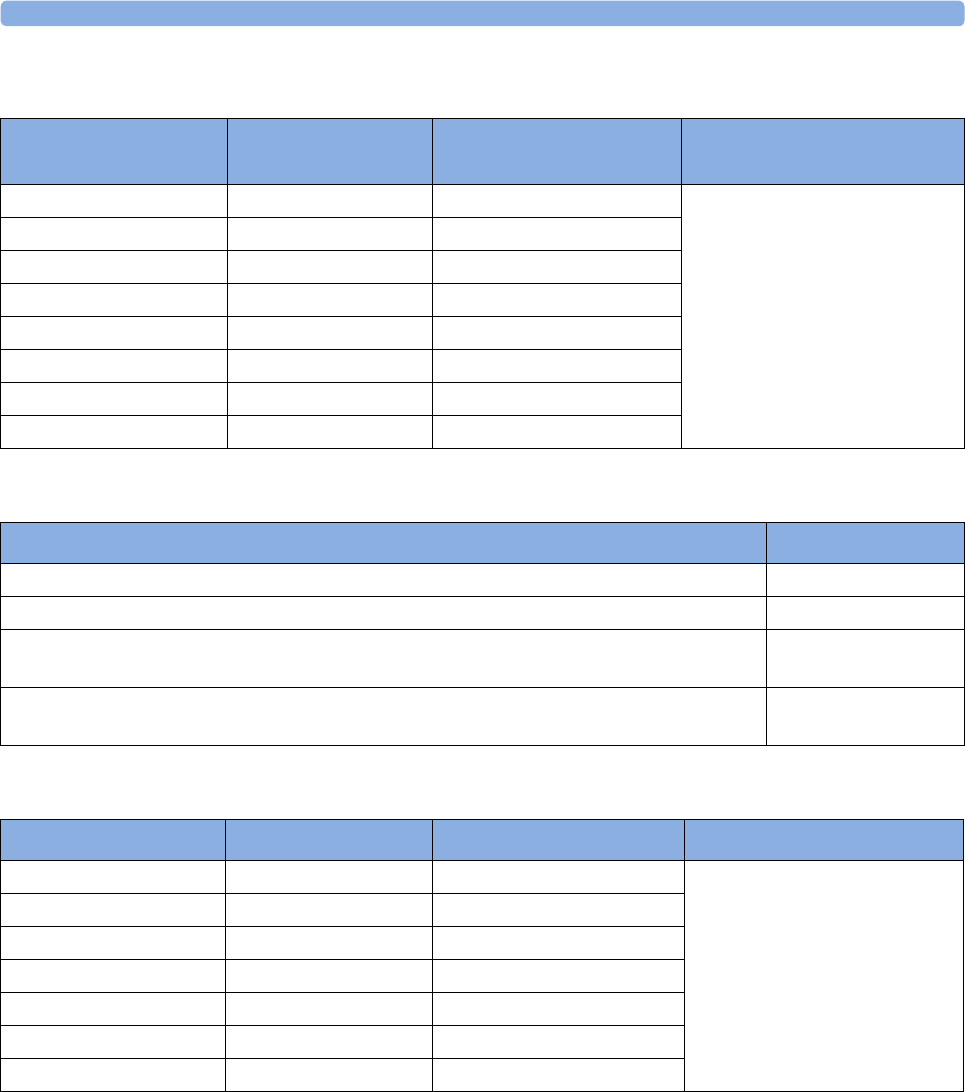
39 Accessories
424
Adult/Pediatric Reusable Easy Care Cuffs
Adult/Pediatric Reusable Easy Care Cuff Kits
Adult/Pediatric Multi Care Cuffs
Patient Category Limb Circumference Part No.
(Pack of five)
Tubing
Adult Thigh 44 - 56 cm M4559B (M4559B5) M1598B (1.5 m)
or
M1599B (3 m)
Large Adult X-Long 35 - 45 cm M4558B (M4558B5)
Large Adult 35 - 45 cm M4557B (M4557B5)
Adult X-Long 27.5 - 36 cm M4556B (M4556B5)
Adult 27.5 - 36 cm M4555B (M4555B5)
Small Adult 20.5 - 28.5 cm M4554B (M4554B5)
Pediatric 14 - 21.5 cm M4553B (M4553B5)
Infant 10 - 15 cm M4552B (M4552B5)
Cuff Kits Part No.
Assortment pack of one small adult, one adult, one large adult and one thigh cuff 864288
Assortment pack of one infant, one pediatric, one small adult and one adult cuff 864289
Assortment pack of one infant, one pediatric, one small adult, one adult, one large adult and
one thigh cuff
864290
Assortment pack of one small adult, one adult, one adult X-long, one large adult, one large
adult X-long and one thigh cuff
864291
Patient Category Limb Circumference Part No. Tubing
Adult Thigh 42.0 - 54.0 cm 989803183371 M1598B (1.5 m)
or
M1599B (3 m)
Large Adult 34.0 - 43.0 cm 989803183361
Large Adult X-Long 27.0 - 35.0 cm 989803183351
Adult 27.0 - 35.0 cm 989803183341
Small Adult 20.5 - 28.0 cm 989803183331
Pediatric 14.0 - 21.5 cm 989803183321
Infant 10.0 - 15.0 cm 989803183311
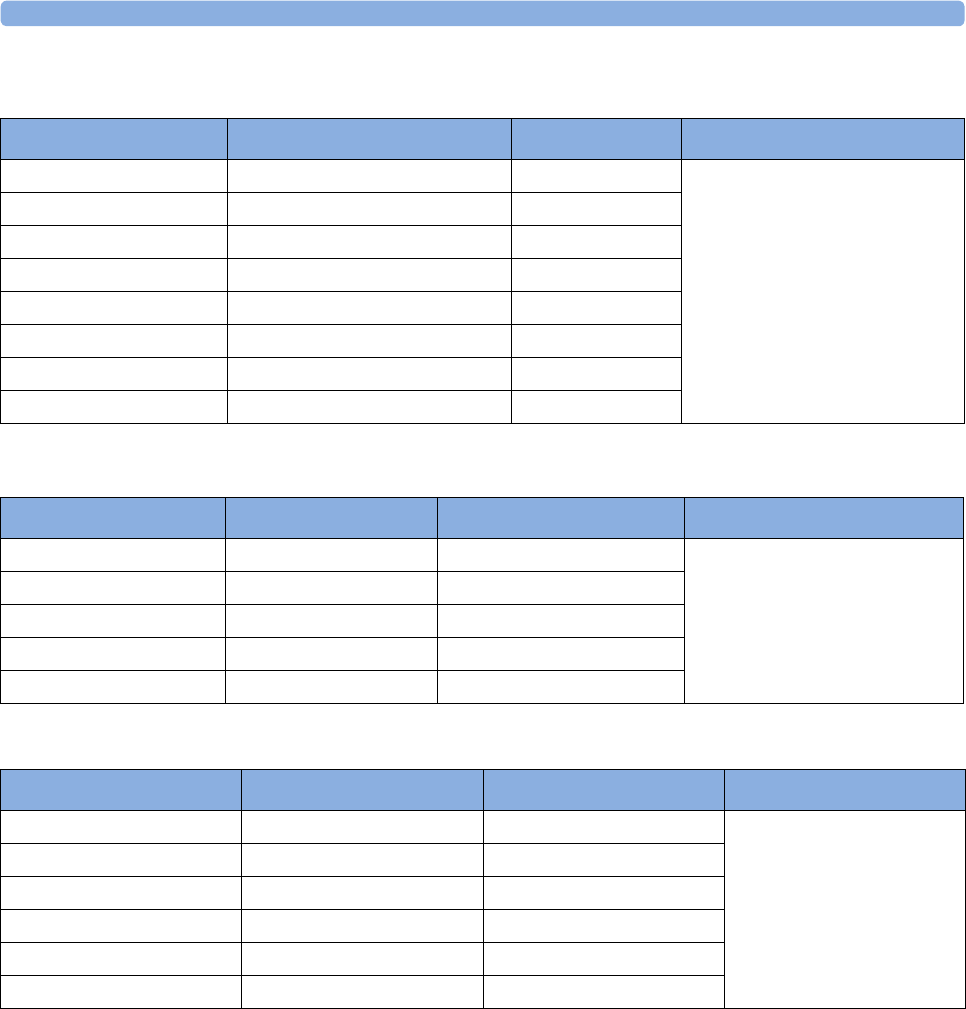
39 Accessories
425
Adult/Pediatric Single Patient, Gentle Care Cuffs
Adult/Pediatric Single Care Cuffs
Adult/Pediatric Value Care Cuffs
Patient Category Limb Circumference Part No. Tubing
Adult (Thigh) 44 - 56 cm M4579B M1598B (1.5 m)
or
M1599B (3 m)
Large Adult X-Long 35 - 45 cm M4578B
Large Adult 35 - 45 cm M4577B
Adult X-Long 27.5 - 36 cm M4576B
Adult 27.5 - 36 cm M4575B
Small Adult 20.5 - 28.5 cm M4574B
Pediatric 14.0 - 21.5 cm M4573B
Infant 10 - 15 cm M4572B
Patient Category Limb Circumference Part No. Tubing
Large Adult 35.0 - 45.0 cm 989803182321 M1598B
or
M1599B
Adult X-Long 27.5 - 36.0 cm 989803182311
Adult 27.5 - 36.0 cm 989803182301
Small Adult 20.5 - 28.5 cm 989803182291
Pediatric 14.0 - 21.5 cm 989803182281
Patient Category Limb Circumference Part No. Tubing
Large Adult 34.0 - 43.0 cm 989803160861 M1598B (1.5 m)
or
M1599B (3 m)
Large Adult X-Long 27.0 - 35.0 cm 989803160851
Adult 27.0 - 35.0 cm 989803160841
Small Adult 20.5 - 28.0 cm 989803160831
Pediatric 14.0 - 21.5 cm 989803160821
Infant 10.0 - 15.0 cm 989803160811
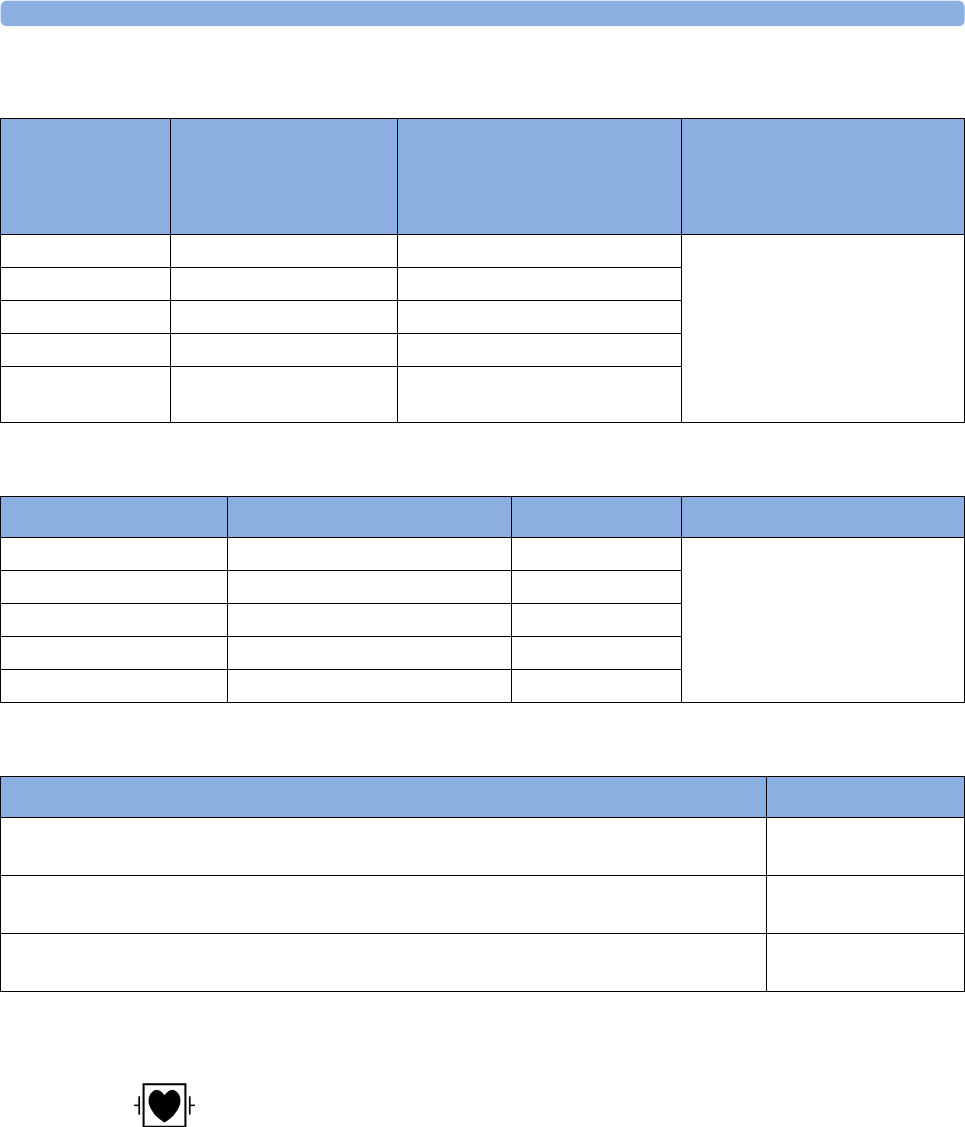
39 Accessories
426
Neonatal/Infant Single Patient Cuffs
Neonatal/Infant Single Patient, Soft Cuffs
Neonatal/Infant Cuff Kits
Invasive Pressure Accessories
These transducers and accessories are designed to have special protection against electric
shocks (particularly regarding allowable leakage currents), and are defibrillator proof.
If you are using the M3012A Hemodynamic MMS Extension, and you want to measure temperature
and invasive pressure at the same time, we recommend that you use the pressure transducer CPJ840J6,
with a round module connector piece, and not a transducer with a square connector. Pressure
transducers with square connectors may make it difficult to connect the adjacent Temperature
connector at the same time.
Cuffs Limb Circumference Part No.
A - Luer connector
B - ISO 80369-1 compliant
connector
Tubing
Size 1 3.1 to 5.7 cm M1866A/B For A-version cuffs:
M1596B (1.5 m) or M1597B
(3 m)
For B-version cuffs:
M1596C (1.5 m) or M1597C
(3 m)
Size 2 4.3 to 8.0 cm M1868A/B
Size 3 5.8 to 10.9 cm M1870A/B
Size 4 7.1 to 13.1 cm M1872A/B
Size 5 (Infant) 10 to 15 cm M1873B
Cuffs Limb Circumference Part No. Tubing
Size 1 3.1 to 5.7 cm M1866S M1596C (1.5 m)
or
M1597C (3 m)
Size 2 4.3 to 8.0 cm M1868S
Size 3 5.8 to 10.9 cm M1870S
Size 4 7.1 to 13.1 cm M1872S
Size 5 (Infant) 10 to 15 cm M1873S
Cuff Kits Part No.
Standard, Single Patient, Luer connector: 10 x M1866A, 10 x M1868A, 10 x M1872A,
and 20 x M1870A
M1820-60020
Standard, Single Patient, ISO 80369-1 compliant connector: 5 x M1866B, 10 x M1868B,
20 x M1870B, 10 x M1872B, and 5 x M1873B
989803167541
Soft, Single Patient, ISO 80369-1 compliant connector: 5 x M1866S, 10 x M1868S,
20 x M1870S, 10 x M1872S, 5 x M1873S
989803167551
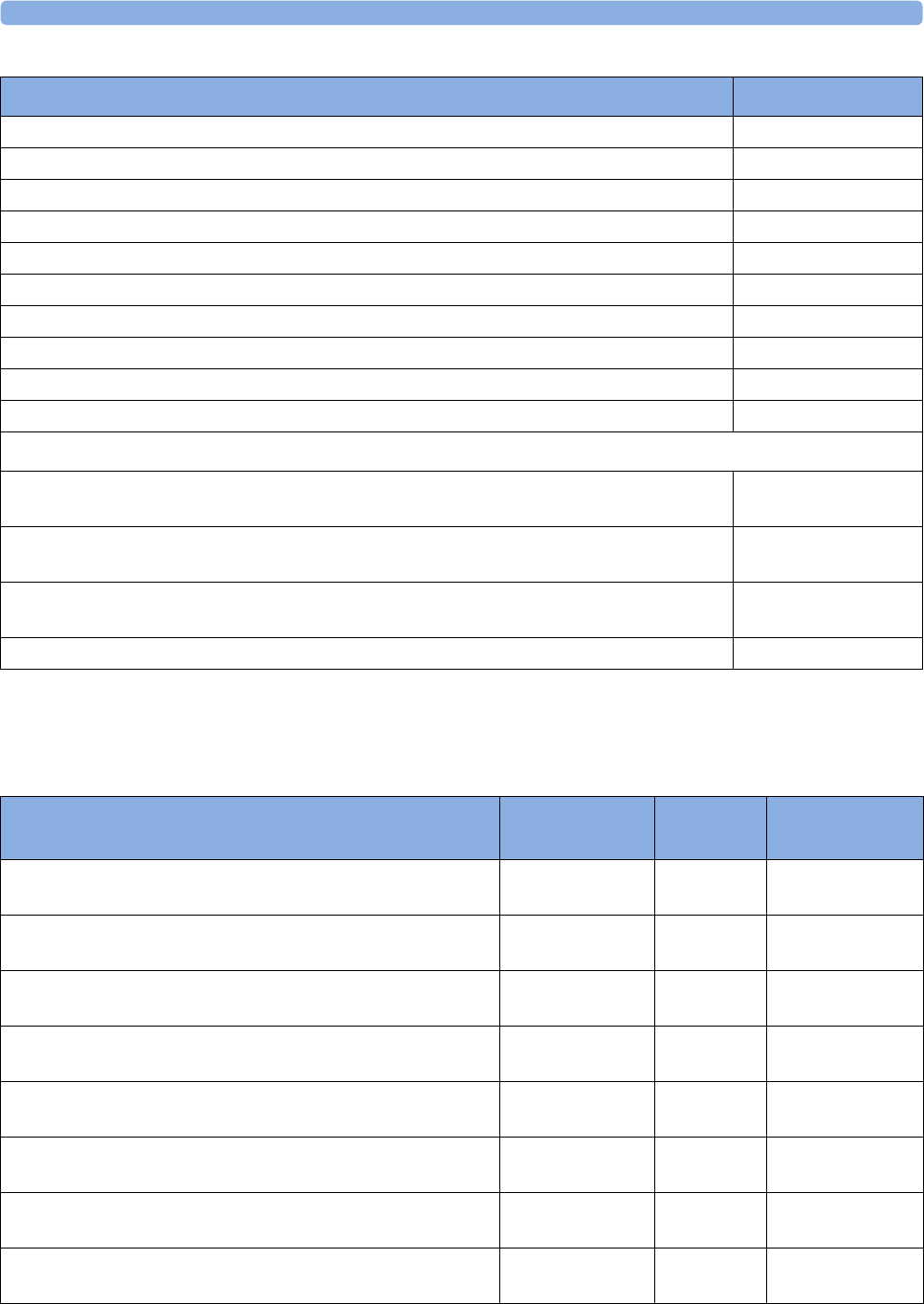
39 Accessories
427
Transpac 4 Disposable Pressure Transducer Pressure Monitoring
Kits
Transducer Pressure Monitoring Kits with SafeSet Blood Sampling/Conservation System
Transducer, accessories, sensor kits Part No.
Reusable pressure transducer 5 µV/V/mmHg sensitivity CPJ840J6
Sterile disposable pressure domes for CPJ840J6 (pack of 50) CPJ84022
Transducer holder for CPJ840J6 (pack of 4) CPJ84046
IV pole mount for CPJ840J6 CPJ84447
Monitoring Line Set for CPJ840J6 CPJ84026
Single channel disposable sensor kit (20) - (EU/EFTA only) M1567A
Dual channel disposable sensor kit (20) (EU/EFTA only) M1568A
Transducer holder for M1567/8A (EU/EFTA only) M2271A
IV pole mount for M1567/8A (EU/EFTA only) M2272C
Adapter cable for disposable sensor kit 3.0 m for M1567/8A M1634A
Pressure transducer kits
PiCCO monitoring kit, 30 cm pressure line, includes PV4046 injectate temperature sensor
housing for M1646A
PV8103
PiCCO monitoring kit, 150 cm pressure line, includes PV4046 injectate temperature sensor
housing for M1646A
PV8115
PiCCO monitoring kit, 150 cm pressure line, includes PV4046 injectate temperature sensor
housing for M1646A and central venous pressure line
PV8115CVP
PULSION Pressure Interface Cable for disposable pressure transducer PMK 206
Description Length Quantity
(per box)
Part No.
Single DPT TP4 with SafeSet, 2 Cannula Sampling Ports,
In-line Reservoir
213 cm (84 in) 20 989803179741
Single DPT TP4 with SafeSet, 2 Luer Sampling Ports, In-line
Reservoir
213 cm (84 in) 20 989803179751
Single DPT TP4 with SafeSet, 1 Cannula Sampling Port, In-line
Reservoir
152 cm (60 in) 20 989803179761
Single DPT TP4 with SafeSet, 2 Cannula Sampling Ports,
In-line Reservoir
152 cm (60 in) 20 989803179781
Single DPT TP4 with SafeSet, 2 Luer Sampling Ports, In-line
Reservoir
152 cm (60 in) 20 989803179791
Single DPT TP4 with SafeSet, Patient Mount, 1 Cannula
Sampling Port, In-line Reservoir
61 cm (24 in) 20 989803179861
Dual DPT TP4 with SafeSet, (Clear/Blue dash tubing) 2
Cannula Sampling Ports, In-line Reservoir
213 cm (84 in) 10 989803179801
Dual DPT TP4 with SafeSet, (Clear/Blue dash tubing) 2 Luer
Sampling Ports, In-line Reservoir
213 cm (84 in) 10 989803179811
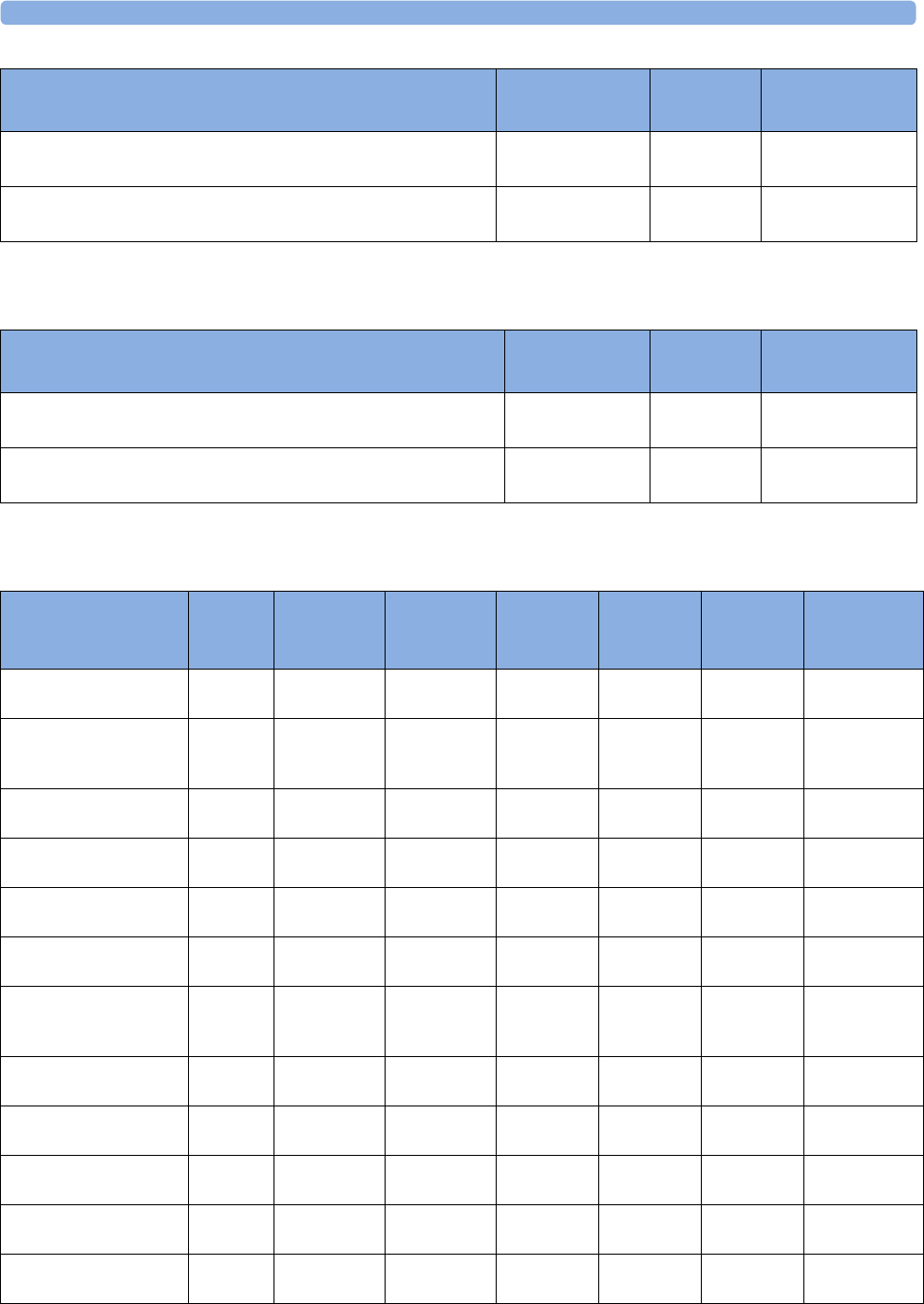
39 Accessories
428
Transpac and SafeSet are trademarks of ICU Medical, Inc.
Safeset Blood Sampling/Conservation System
(Transducer not contained in kit)
Transpac 4 Disposable Pressure Transducer Pressure Monitoring Kits
Triple DPT TP4 with SafeSet, 2 Cannula Sampling Ports,
In-line Reservoir
213 cm (84 in) 10 989803179821
Triple DPT TP4 with SafeSet, 2 Luer Sampling Ports, In-line
Reservoir
213 cm (84 in) 10 989803179831
Description Length Quantity
(per box)
Part No.
Description Length Quantity
(per box)
Part No.
SafeSet Kit with tubing, 1 In-line Cannula Sampling Port and
10 ml In-line Reservoir
152 cm (60 in) 20 989803180851
SafeSet Kit with tubing, 2 In-line Cannula Sampling Ports and
10 ml In-line Reservoir
213 cm (84 in) 20 989803179891
Description Stopcocks
Primary
Tubing
Length
Extension
Tubing
length
Flush
Device
Drip
Chamber
Quantity
(per box) Part No.
Single DPT TP4, (152 cm,
60 in) Red dash tubing
Two 3-way 122 cm (48 in) 31 cm (12 in) 3 ml/hr,
Squeeze
Macrodrip 20 989803177901
Dual DPT TP4, (183 cm,
72 in) Red/Blue dash
tubing
Four 3-way 152 cm (60 in) 31 cm (12 in) Two 3 ml/hr,
Squeeze
Macrodrip 10 989803177911
Single DPT TP4, (213 cm,
84 in) Red dash tubing
Two 3-way 183 cm (72 in) 31 cm (12 in) 3 ml/hr,
Squeeze
Macrodrip 20 989803179721
Triple DPT TP4, (152 cm,
60 in)
Six 3-way 122 cm (48 in) 31 cm (12 in) 3 ml/hr,
Squeeze
Macrodrip 10 989803179731
Single DPT TP4, (183 cm,
72 in) Red dash tubing
Two 3-way 152 cm (60 in) 31 cm (12 in) 3 ml/hr,
Squeeze
Macrodrip 20 989803179771
Single DPT TP4, (23 cm,
9 in) Patient Mount
One 3-way 23 cm (9 in) 3 ml/hr,
Squeeze
Macrodrip 20 989803179871
Single DPT TP4, (61 cm,
24 in) Compartmental
Pressure
One 4-way
One 3-way
61 cm (24 in) No flush
device
20 989803181141
Single DPT TP4, (152 cm,
60 in), Premium Stripe
Two 3-way 122 cm (48 in) 31 cm (12 in) 3 ml/hr,
Squeeze
Macrodrip 20 989803181211
Single DPT TP4, (183 cm,
72 in), Premium Stripe
Two 3-way 152 cm (60 in) 31 cm (12 in) 3 ml/hr,
Squeeze
Macrodrip 20 989803181221
Single DPT TP4, (213 cm,
84 in), Premium Stripe
Two 3-way 183 cm (72 in) 31 cm (12 in) 3 ml/hr,
Squeeze
Macrodrip 20 989803181231
Dual DPT TP4, (183 cm,
72 in), Premium Stripe
Four 3-way 152 cm (60 in) 31 cm (12 in) 3 ml/hr,
Squeeze
Macrodrip 10 989803181241
Triple DPT TP4, (152 cm,
60 in), Premium Stripe
Six 3-way 122 cm (48 in) 31 cm (12 in) 3 ml/hr,
Squeeze
Macrodrip 10 989803181251
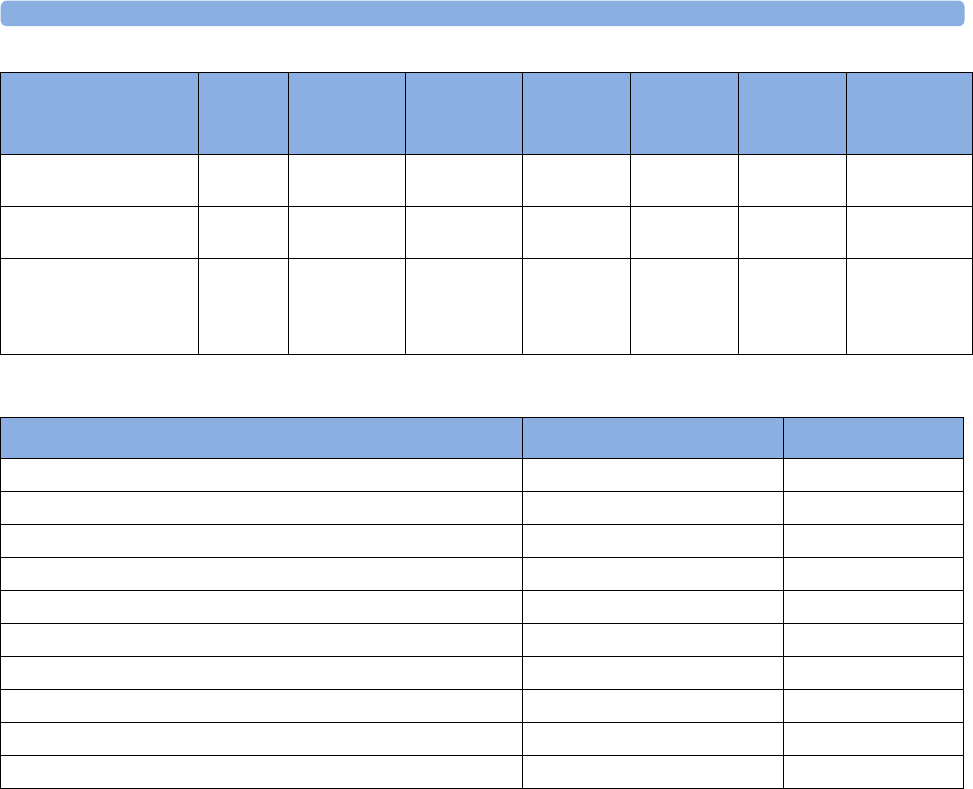
39 Accessories
429
Transpac 4 and Safeset Cables and Accessories
SpO2 Accessories
This section lists accessories for use with Philips SpO2 technology. For accessory lists for other SpO2
technologies, refer to the instructions for use provided with these devices.
Some Nellcor sensors contain natural rubber latex which may cause allergic reactions. See the
Instructions for Use supplied with the sensors for more information.
Do not use more than one extension cable with any sensors or adapter cables. Do not use an extension
cable with:
• Masimo adapter cables,
• Philips reusable sensors or adapter cables with part numbers ending in -L (indicates "Long"
version) or with a cable longer than 2 m.
All listed sensors operate without risk of exceeding 41°C on the skin, if the initial skin temperature
does not exceed 35°C.
Make sure that you use only the accessories that are specified for use with this device, otherwise patient
injury can result.
Always use the MAXFAST forehead sensor with the foam headband provided by Nellcor.
Option A01 is the Philips FAST-SpO2 version; Option A02 is the Nellcor OxiMax-compatible
version.
Single Neonatal DPT TP4
(61 cm, 24 in)
Two 3-way 61 cm (24 in) 30 ml/hr
Squeeze
20 989803179841
Single Neonatal DPT TP4
(31 cm, 12 in)
Three 3-
way
31 cm (12 in) 30 ml/hr
Squeeze
20 989803179851
Single Neonatal DPT TP4
(46 cm, 18 in) one in-line
Luer sampling port &
10 ml In-line reservoir
Three
3-way
46 cm (18 in) 30 ml/hr
Squeeze
20 989803179881
Description Stopcocks
Primary
Tubing
Length
Extension
Tubing
length
Flush
Device
Drip
Chamber
Quantity
(per box) Part No.
Description Quantity (per box) Part No.
Cable for Philips Monitors 3 m (10 ft) 1 989803177921
Cable for Philips Monitors 4.5 m (15 ft) 1 989803179941
Cable for Philips Monitors 4.5 m (15 ft) 20 989803179951
Trifurcated Cable for Philips Monitors 4.5 m (15 ft) 1 989803179961
3-Position Transducer Mount 28 989803177931
Transducer Holder for IV Pole 5 989803177941
Single Transducer Mount 30 989803179911
SafeSet Mounting Bracket 30 989803179901
Safeset Shielded Blunt Cannula 50 989803179921
SafeSet Shielded Blunt Cannula with Blood Tube Holder 25 989803179931
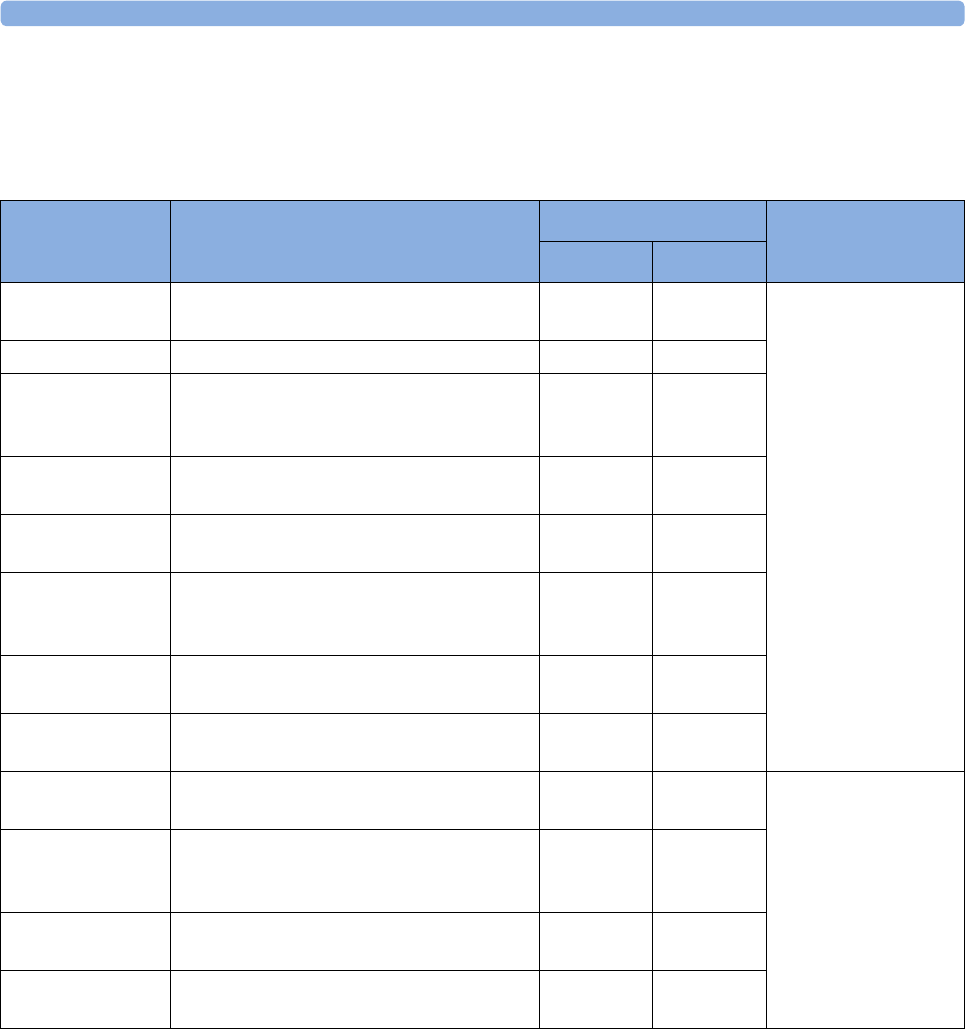
39 Accessories
430
The SpO2 Option A02 may not be available in all countries. Some sensors may not be available in all
countries.
Philips Reusable Sensors
Product Number Description Compatible with Comments
Option A01 Option A02
M1191A/B Adult sensor (2 m cable), for patients over
50 kg. Any finger, except thumb.
yes no No adapter cable
required.
M1191AL/BL M1191A/B with longer cable (3 m) yes no
M1192A Small adult, pediatric sensor (1.5 m cable)
for patients between 15 kg and 50 kg. Any
finger except thumb.
yes no
M1193A Neonatal sensor (1.5 m cable) for patients
between 1 kg and 4 kg. Hand or foot.
yes no
M1194A Ear sensor (1.5 m cable) for patients over
40 kg.
yes no
M1195A Infant sensor (1.5 m cable) for patients
between 4 kg and 15 kg. Any finger except
thumb.
yes no
M1196A Adult clip sensor (3 m cable) for patients
over 40 kg. Any finger except thumb.
yes no
M1196S Adult clip sensor (2 m cable) for patients
over 40 kg. Any finger except thumb.
yes no
M1191T Adult sensor (0.45 m cable), for patients
over 50 kg. Any finger, except thumb.
yes no Requires M1943A
(1 m) or M1943AL
(3 m) adapter cable
M1192T Small adult, pediatric sensor (0.45 m cable)
for patients between 15 kg and 50 kg. Any
finger except thumb.
yes no
M1193T Neonatal sensor (0.9 m cable) for patients
between 1 kg and 4 kg. Hand or foot.
yes no
M1196T Adult clip sensor (0.9 m cable) for patients
over 40 kg. Any finger except thumb.
yes no
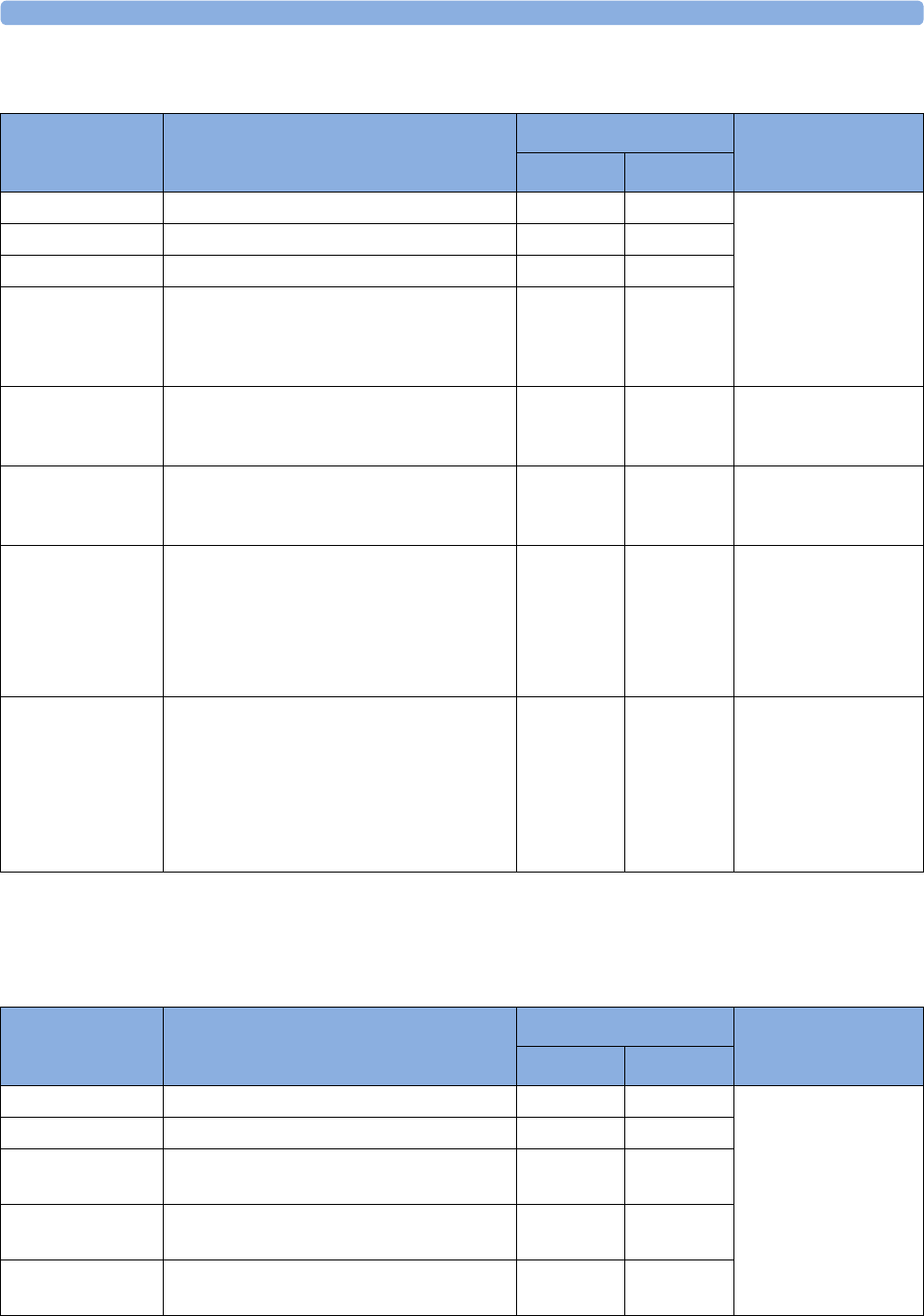
39 Accessories
431
Philips Disposable Sensors
1Not available in the USA
Nellcor Sensors
Nellcor sensors must be ordered from Nellcor/Covidien.
Product Number Description Compatible with Comments
Option A01 Option A02
M1901B1Identical to OxiMax MAXN yes yes Option A01: Use
M1943A or M1943AL
adapter cable.
Option A02: Must use
M1943NL adapter
cable.
M1902B1Identical to OxiMax MAXI yes yes
M1903B1Identical to OxiMax MAXP yes yes
M1904B1Identical to OxiMax MAXA yes yes
M1131A Adult/Pediatric finger sensor, 0.45 m cable
(patient size > 20 kg)
yes no Use M1943A or
M1943AL adapter
cable.
M1132A Infant finger or toe sensor, 0.9 m cable
(patient size 3 - 10 kg)
yes no Use M1943A or
M1943AL adapter
cable.
M1133A Adult/Infant/Neonatal, 0.9 m cable
Foot or hand for neonates < 3 kg
Big toe or thumb for patients between 10 kg
and 20 kg
Any finger except thumb for patients
>40kg
yes no Use M1943A or
M1943AL adapter
cable.
M1134A Adhesive-free, Adult/Infant/Neonatal,
0.9 m cable
Foot or hand for neonates < 3 kg
Big toe or thumb for patients between 10 kg
and 20 kg
Any finger except thumb for patients
>40kg
yes no Use M1943A or
M1943AL adapter
cable.
Product Number Description Compatible with Comments
Option A01 Option A02
OxiMax MAXA Adult finger sensor (patient size > 30 kg) yes yes Option A01: Use
M1943A or M1943AL
adapter cable.
Option A02: Must use
M1943NL adapter
cable.
OxiMax MAXAL OxiMax MAXA with long cable yes yes
OxiMax MAXP Pediatric foot/hand sensor (patient size 10 -
50 kg)
yes yes
OxiMax MAXI Infant foot/hand sensor (patient size 3 -
20 kg)
yes yes
OxiMax MAXN Adult finger or neonatal foot/hand sensor
(patient size > 40 kg or < 3 kg)
yes yes
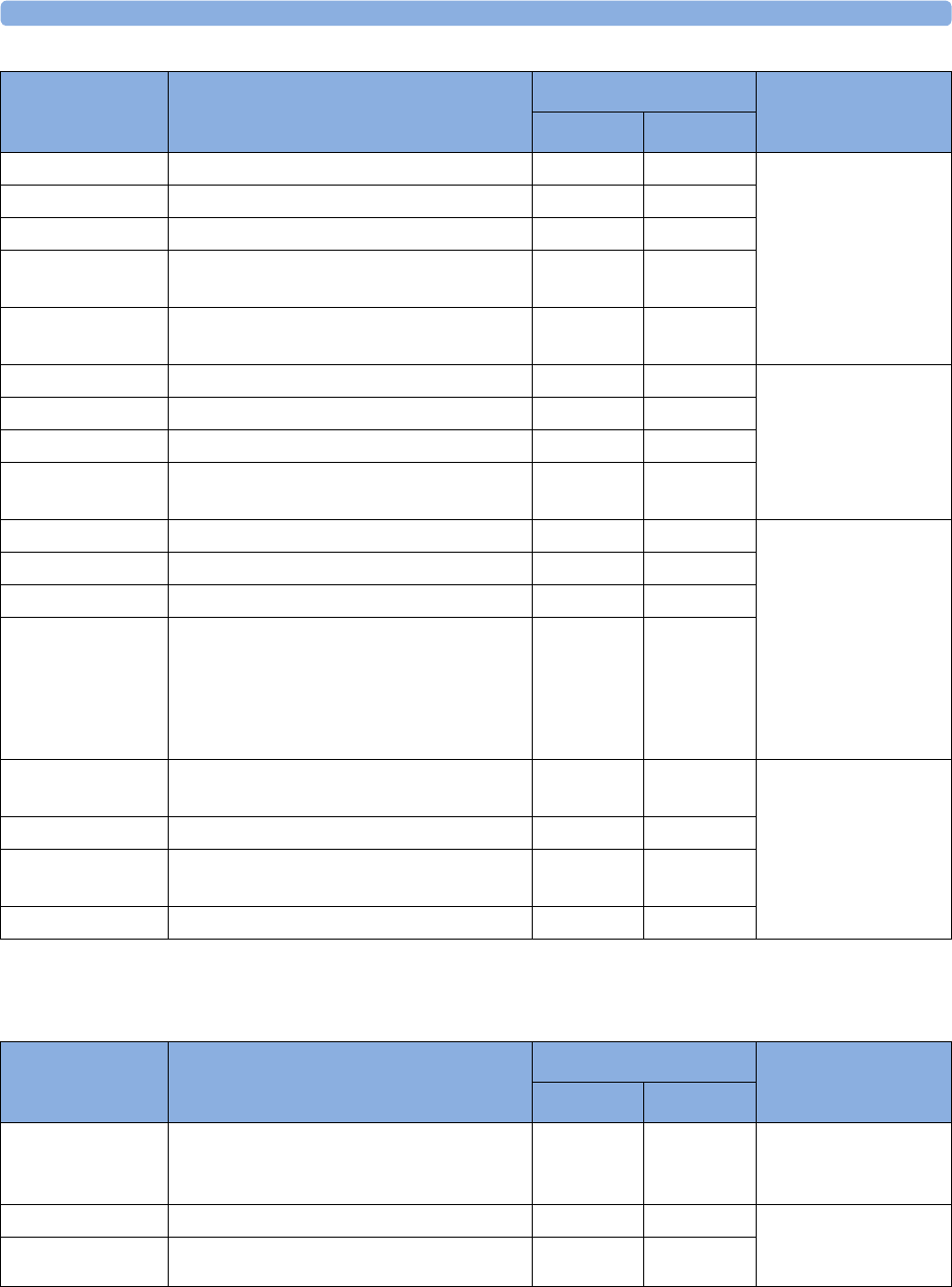
39 Accessories
432
Extension Cables and Adapter Cables for Philips and Nellcor
Sensors
MAXFAST Forehead sensor (patient size ≥10 kg) no yes Must use M1943NL
adapter cable.
OxiMax MAXR Adult nasal sensor (patient size > 50 kg) no yes
OxiMax SC-A Adult SoftCare sensor (patient size > 40 kg) no yes
OxiMax SCNEO-I Neonatal SoftCare sensor (patient size 1.5 -
5kg)
no yes
OxiMax SC-PR-I Pre-term infant SoftCare sensor (patient
size < 1.5 kg)
no yes
Oxisensor II D-25 Adult sensor (patient size > 30 kg) yes no Must use M1943A or
M1943AL adapter
cable.
Oxisensor II D-20 Pediatric sensor (patient size 10 - 50 kg) yes no
Oxisensor II I-20 Infant sensor (patient size 3 - 20 kg) yes no
Oxisensor II N-25 Neonatal sensor (patient size < 3 kg or
>40kg)
yes no
Oxicliq A See OxiMax MAXA yes yes Option A01: Use
M1943A or M1943AL
adapter cable together
with OC-3 adapter
cable.
Option A02: Must use
M1943NL adapter
cable together with
OC-3 adapter cable.
Oxicliq P See OxiMax MAXP yes yes
Oxicliq I See OxiMax MAXI yes yes
Oxicliq N See OxiMax MAXN yes yes
Oxiband OXI-A/
N
Adult/neonatal sensor no yes Must use M1943NL
adapter cable.
Oxiband OXI-P/I Pediatric/infant sensor no yes
Durasensor
DS100A-1
Adult finger clip sensor (patient size
>40kg)
no yes
Dura-Y D-YS Y-sensor no yes
Product Number Description Compatible with Comments
Option A01 Option A02
Product Number Description Compatible with Comments
Option A01 Option A02
M1941A Extension cable (2 m) yes no For use with Philips
reusable sensors and
M1943A adapter cable.
M1943A Adapter cable (1.1 m cable) yes no Adapter cable for
Philips/Nellcor
disposable sensors.
M1943AL Adapter cable (3 m cable) yes no
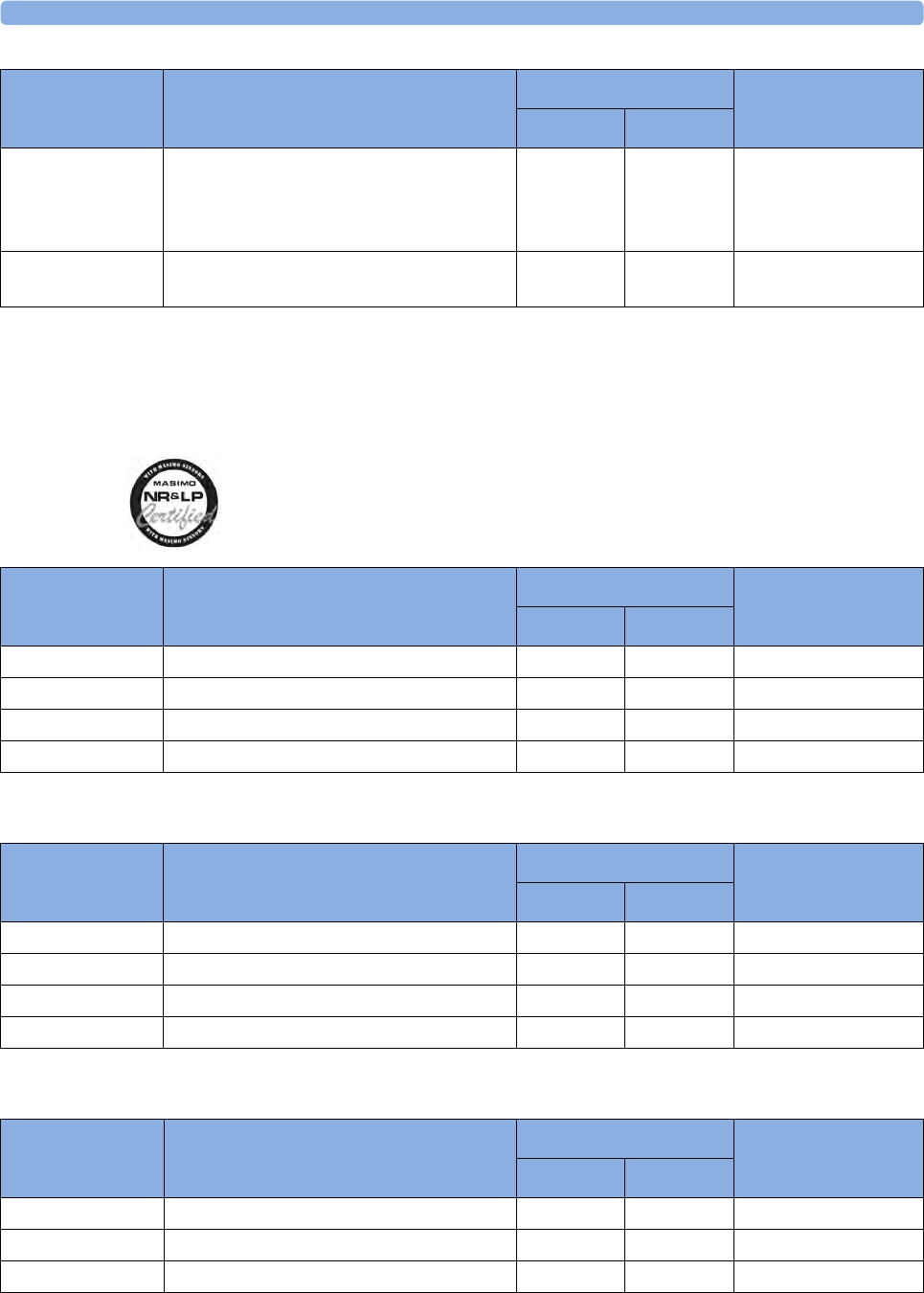
39 Accessories
433
MASIMO LNOP Reusable Sensors
The Philips M3001A/M3002A option A01 and the M1020B option A01 SpO2 Module use Masimo
certified pulse oximetry for reduced noise and low perfusion performance with Masimo Sensors under
the Masimo NR&LP protocol available from Masimo.
MASIMO LNCS Reusable Sensors
MASIMO LNOP Disposable Adhesive Sensors
M1943NL OxiMax adapter cable (3 m cable) no yes Adapter cable for
Philips disposable/
Nellcor disposable and
reusable sensors.
OC-3 Adapter Cable for Oxicliq sensors yes yes Available from
Nellcor/Covidien only.
Product Number Description Compatible with Comments
Option A01 Option A02
Product Number Description Compatible with Philips Part Number
Option A01 Option A02
LNOP DCI Adult Finger Sensor (> 30 kg) yes no n/a
LNOP DCIP Pediatric Finger Sensor (10 - 50 kg) yes no n/a
LNOP YI Multi-Site Sensor (> 1 kg) yes no n/a
LNOP TC-I Ear Sensor (> 30 kg) yes no n/a
Product Number Description Compatible with Philips Part Number
Option A01 Option A02
LNCS DCI Adult Finger Sensor (> 30 kg) yes no n/a
LNCS DCIP Pediatric Finger Sensor (10 - 50 kg) yes no n/a
LNCS YI Multi-Site Sensor (> 1kg) yes no n/a
LNCS TC-I Ear Sensor (> 30 kg) yes no n/a
Product Number Description Compatible with Philips Part Number
Option A01 Option A02
LNOP Adt Adult Sensor (> 30 kg) yes no n/a
LNOP Adtx Adult Sensor (> 30 kg) yes no n/a
LNOP Pdt Pediatric Sensor (10 - 50 kg) yes no n/a
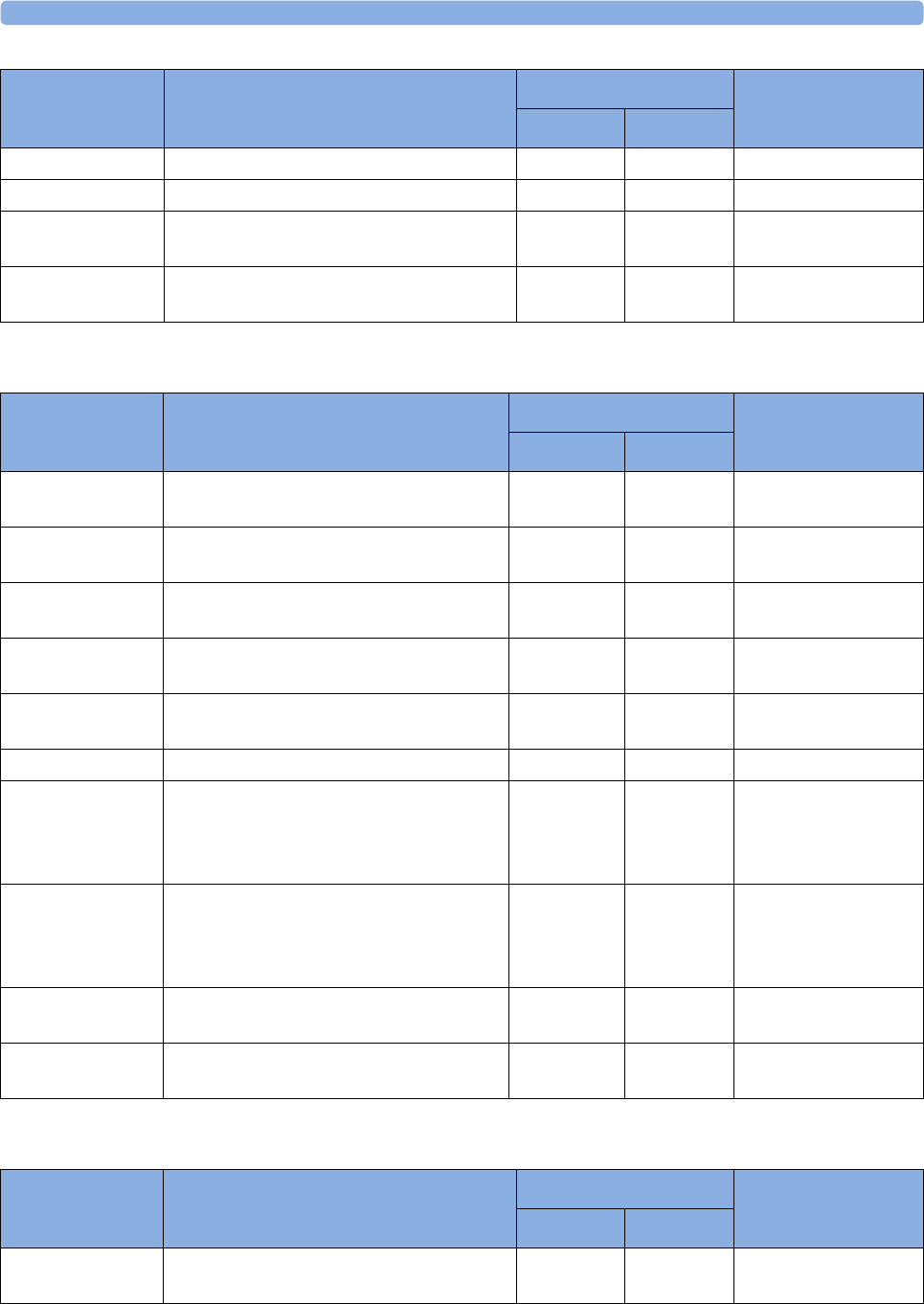
39 Accessories
434
MASIMO LNCS Disposable Adhesive Sensors
Adapter Cable for MASIMO Sensors
LNOP Pdtx Pediatric Sensor (10 - 50 kg) yes no n/a
LNOP Inf-L Infant Toe Sensor (3 - 20 kg) yes no n/a
LNOP Neo-L Neonatal Sensor (< 3 kg)
or Adult adhesive Sensor (> 40 kg)
yes no n/a
LNOP NeoPt-L Neonatal Pre-Term Sensitive Skin Sensors
(< 1 kg)
yes no n/a
Product Number Description Compatible with Philips Part Number
Option A01 Option A02
Product Number Description Compatible with Philips Part Number
Option A01 Option A02
LNCS Adtx Adult Finger Sensor, 18 inch/45 cm
(> 30 kg)
yes no n/a
LNCS Adtx-3 Adult Finger Sensor, 3 feet/90 cm
(> 30 kg)
yes no n/a
LNCS Pdtx Pediatric Finger Sensor, 18 inch/45 cm
(10 - 50 kg)
yes no n/a
LNCS Pdtx-3 Pediatric Finger Sensor, 3 feet/90 cm (10 -
50 kg)
yes no n/a
LNCS Inf Infant Toe Sensor, 18 inch/45 cm (3 -
20 kg)
yes no n/a
LNCS Inf-3 Infant Toe Sensor, 3 feet/90 cm (3 - 20 kg) yes no n/a
LNCS Neo Neonatal Foot Sensor, 18 inch/45 cm
(< 3 kg)
or Adult Finger Sensor 18 inch/45 cm
(> 40 kg)
yes no n/a
LNCS Neo-3 Neonatal Foot Sensor, 3 feet/90 cm
(< 3 kg)
or Adult Finger Sensor, 3 feet/90 cm
(> 40 kg)
yes no n/a
LNCS NeoPt Neonatal pre-term sensitive skin Sensor
18 inch/45 cm (< 1 kg)
yes no n/a
LNCS NeoPt-3 Neonatal pre-term sensitive skin Sensor
3feet/90cm (<1 kg)
yes no n/a
Product Number Description Compatible with Philips Part Number
Option A01 Option A02
LNOP MP12 LNOP MP Series Patient Cable (3.6 m)
Adapter Cable for Masimo LNOP Sensors
yes no 451261000761
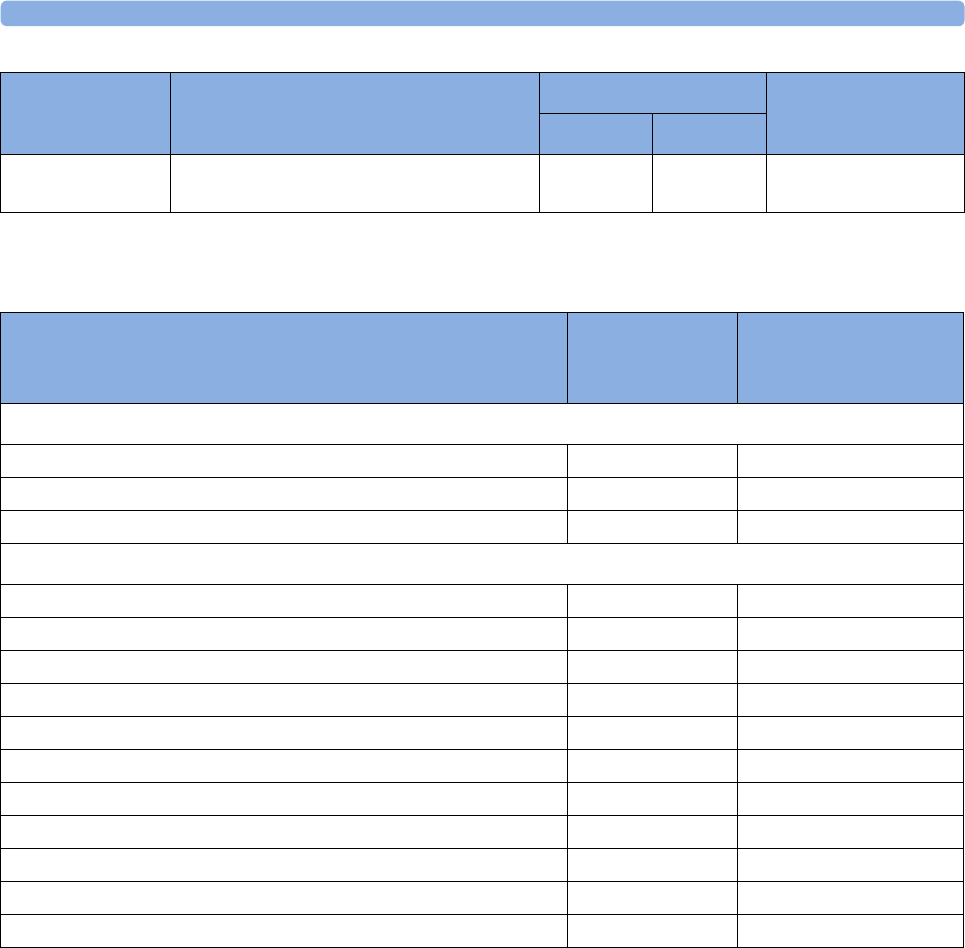
39 Accessories
435
Temperature Accessories
LNOP MP10 LNCS MP Series Patient Cable (3.0 m)
Adapter Cable for Masimo LNCS Sensors
yes no 989803148221
Product Number Description Compatible with Philips Part Number
Option A01 Option A02
Temperature Probes Part No. Minimum measurement
time for accurate
readings
Reusable
General purpose probe 21075A 90 sec
Small flexible vinyl probe (Infant/Pediatric) 21076A 60 sec
Attachable surface probe 21078A 60 sec
Disposable
General purpose probe M1837A 90 sec
Skin probe 21091A 60 sec
Esophageal/Stethoscope Probe (French 12) 21093A 180 sec
Esophageal/Stethoscope Probe (French 18) 21094A 210 sec
Esophageal/Stethoscope Probe (French 24) 21095A 310 sec
Esophageal/Rectal Probe (French 12) 21090A 90 sec
Foley Catheter Probe (12 French) M2255A 180 sec
Foley Catheter Probe (16 French) 21096A 180 sec
Foley Catheter Probe (18 French) 21097A 180 sec
Adapter cable 1.5 m 21082B --
Adapter cable 3.0 m 21082A --
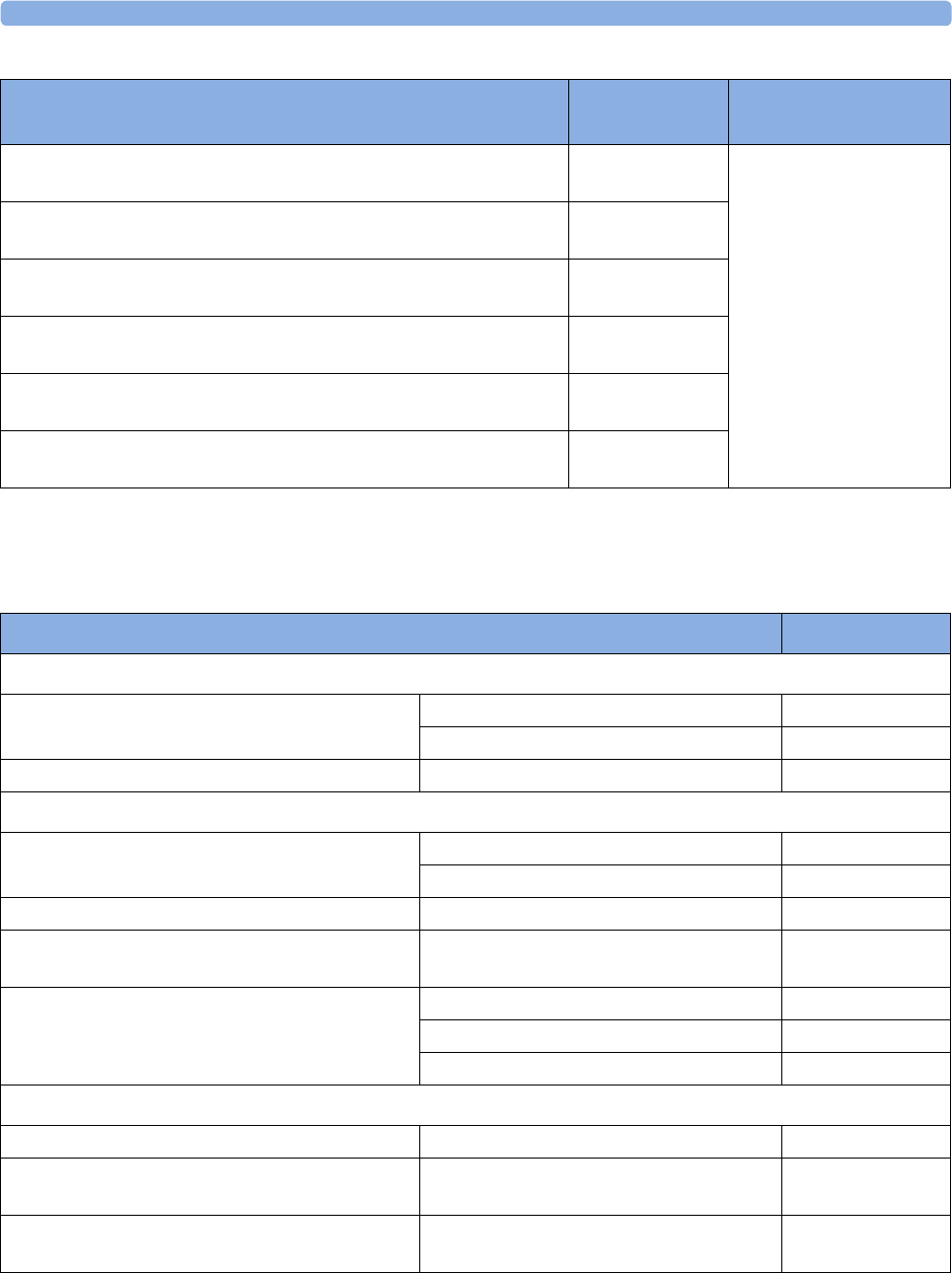
39 Accessories
436
Cardiac Output (C.O.) Accessories
See Pressure accessories for PULSION continuous cardiac output accessories.
Temperature Probes Part No. Response Time per ISO
80601-2-56
InnerSense Esophageal Temperature /Feeding Tube, purple (5
French)
989803183631 < 150 seconds
InnerSense Esophageal Temperature /Feeding Tube, purple (6.5
French)
989803183641
InnerSense Esophageal Temperature /Feeding Tube, purple (8
French)
989803183651
InnerSense Esophageal Temperature /Feeding Tube, orange (5
French)
989803183561
InnerSense Esophageal Temperature /Feeding Tube, orange (6.5
French)
989803183571
InnerSense Esophageal Temperature /Feeding Tube, orange (8
French)
989803183581
Description Part No.
Accessories common to both methods
Accessories Set of ice buckets 14455A
Remote handswitch 15244A
PiCCO inline temperature probe Latex free M1646A
Right Heart Thermodilution
C.O. Interface Cables 2.7 meter cable M1642A
2.4 m + 2.4 m cable M1643A
Right heart catheter for thermodilution (from Edwards Lifesciences) 831HF75
Edwards CO-Set+ (only with 23001A/B) contact Edwards Lifesciences for
information
Injectate Probes 2.4 m injectate temp. probe (reusable) 23001A
0.5 m injectate temp. probe (reusable) 23001B
Ice bath temp. probe 23002A
Transpulmonary Thermodilution
C.O. Interface Cables 2.4 m + 2.4 m cable M1643A
PULSION Pressure Transducer Kits (pressure line
available in various lengths)
Contact PULSION for information
Pressure Interface Cable for disposable pressure
transducer
PULSION PMK 206
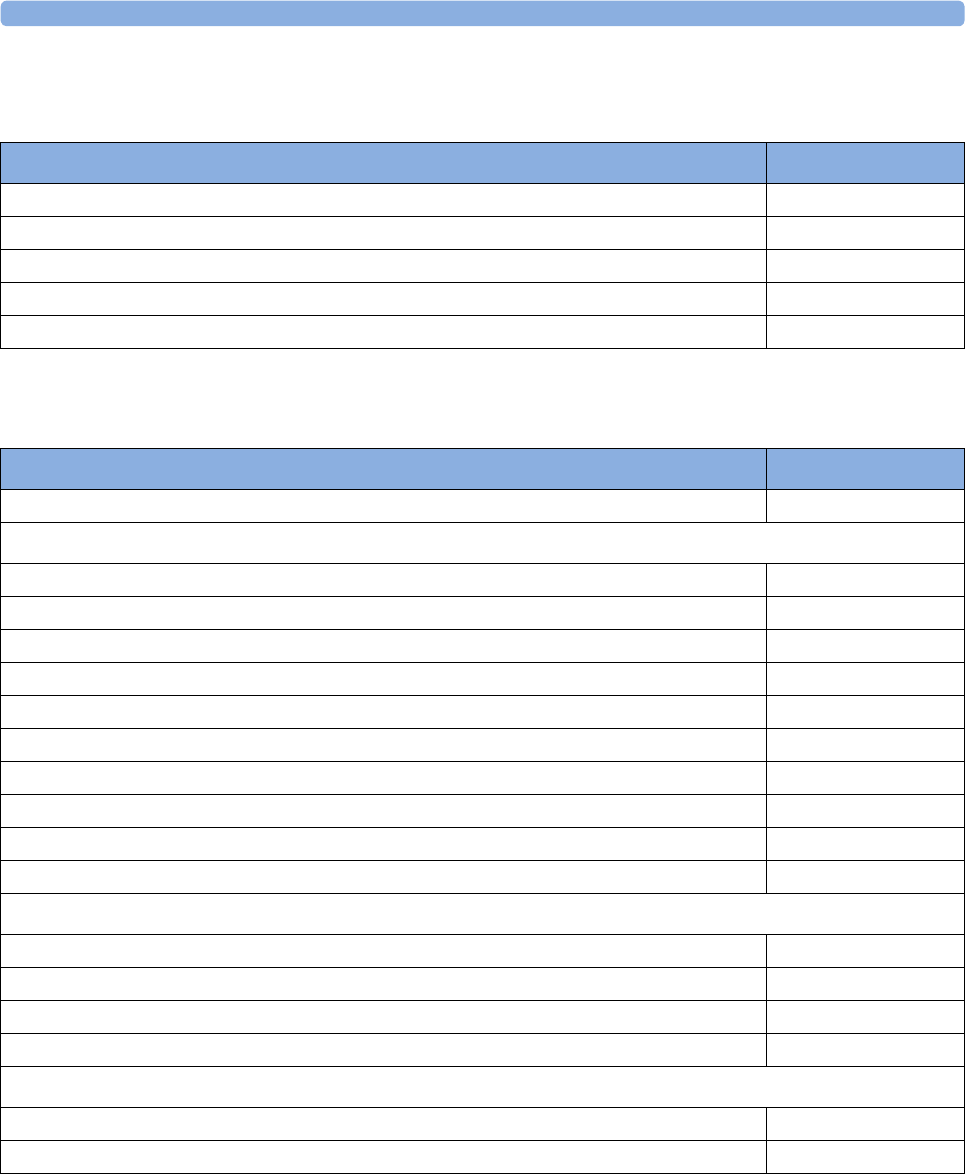
39 Accessories
437
Mainstream CO2 Accessories
Sidestream CO2 Accessories
Description Part No.
CO2 Sensor M2501A
Adult/Pediatric Airway Adapter (reusable) M2513A
Infant Airway Adapter (reusable) M2516A
Adult Airway Adapter (single-patient use) M2533A
Infant Airway Adapter (single-patient use) M2536A
Description Part No.
CO2 Sensor M2741A
Nasal and Oral-Nasal Cannulas
CO2 Nasal Cannula, Adult M2744A
CO2 Nasal Cannula, Pediatric M2745A
CO2 Nasal Cannula, Infant M2746A
CO2/O2 Nasal Cannula, Adult M2750A
CO2/O2 Nasal Cannula, Pediatric M2751A
CO2/O2 Nasal Cannula, Infant 989803144471
CO2 Oral-Nasal Cannula, Adult M2756A
CO2 Oral-Nasal Cannula, Pediatric M2757A
CO2/O2 Oral-Nasal Cannula, Adult M2760A
CO2/O2 Oral-Nasal Cannula, Pediatric M2761A
Airway Adapters
Airway Adapter Set, ET > 4.0 mm M2768A
Airway Adapter Set, ET =< 4.0 mm 989803144531
Airway Adapter Set H, ET > 4.0 mm M2772A
Airway Adapter Set H, ET =< 4.0 mm M2773A
Straight Sample Lines
Straight Sample Line M2776A
Straight Sample Line H M2777A
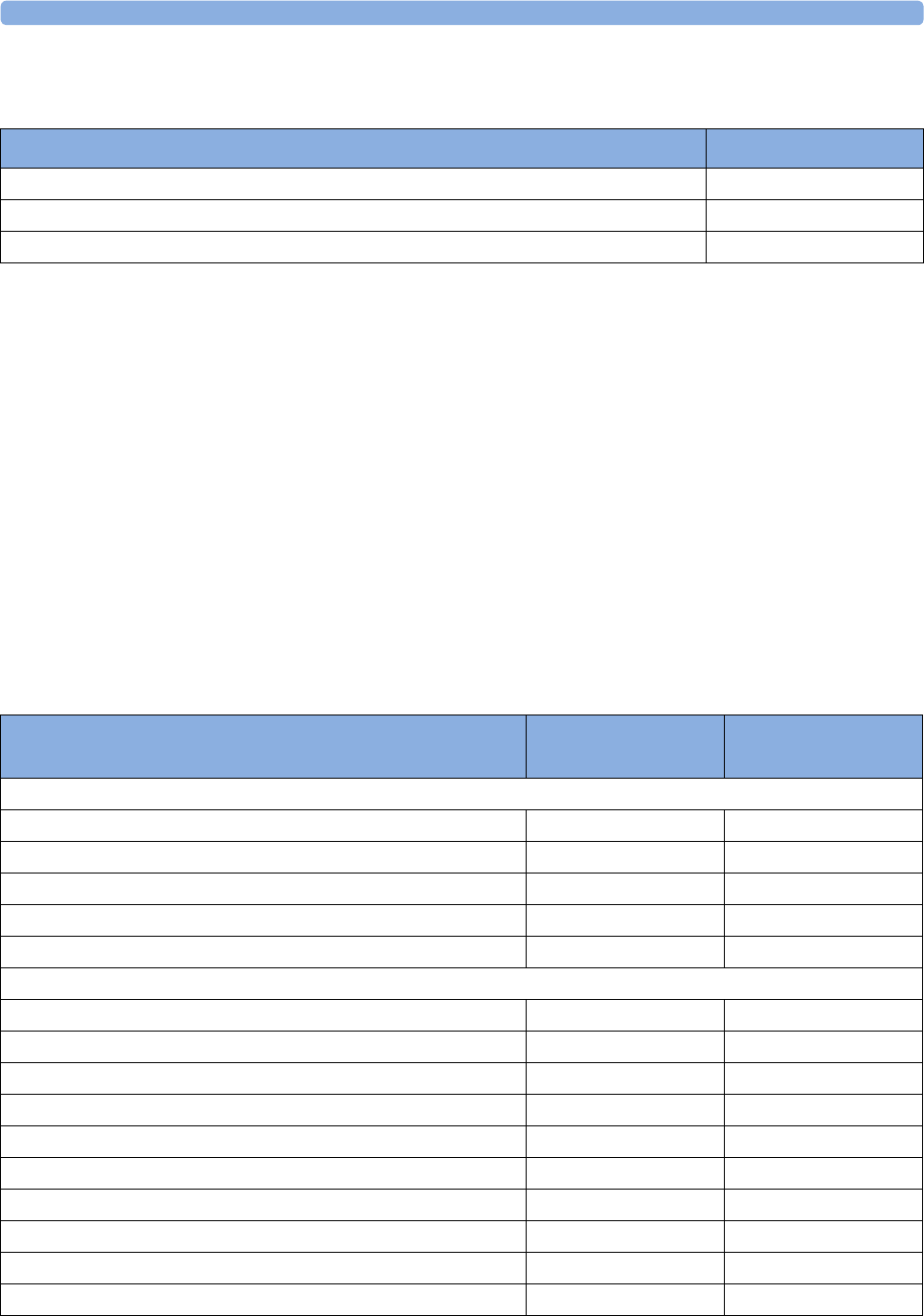
39 Accessories
438
Mainstream CO2 Accessories (for M3016A)
Microstream CO2 Accessories
• "FilterLine Set" is a combination of a FilterLine with an Airway Adapter.
• "H" in the accessory name indicates suitability for humidified ventilation and longer usage due to
the active removal of humidity from the sample line.
• "Smart CapnoLine" is a combined oral-nasal FilterLine.
• "Smart CapnoLine O2" is a combined oral-nasal-O2-CO2 FilterLine.
• "NIV Line" is a nasal FilterLine suitable for mask ventilation (for example, C-PAP).
• The accessories are supplied in packs of 25.
• Extension is not compatible with the M2786A Infant/Neonatal Flow Sensor for the spirometry
measurement (M1014A).
NOTE
Not all accessories are available in all countries.
Description Part No.
CO2 Sensor M1460A
Standard Airway Adapter (reusable) M1465A
Small Airway Adapter (reusable) 14363A
Description Part Number Part Number for
Long Version
Accessories for Intubated Patients
FilterLine® SET Adult/Pediatric M1920A 989803160241
FilterLine® H SET Adult/Pediatric M1921A 989803160251
FilterLine® H SET Infant/Neonatal M1923A 989803160261
VitaLine™ H SET Adult/Pediatric 989803159571
VitaLine™ H SET Infant/Neonate 989803159581
Accessories for Non-Intubated Patients
CapnoLine® H Adult M4689A
CapnoLine® H Pediatric M4690A
CapnoLine® H Infant/Neonatal M4691A 989803178011
CapnoLine® H O2 Adult M4680A
CapnoLine® H O2 Pediatric M4681A
CapnoLine® H O2 Infant/Neonatal 989803178001
NIV Line™ Adult M4686A
NIV Line™ Pediatric M4687A
Nasal FilterLine® Infant/Neonatal 989803178021
Nasal Filterline® O2 Adult 989803179101 989803179111
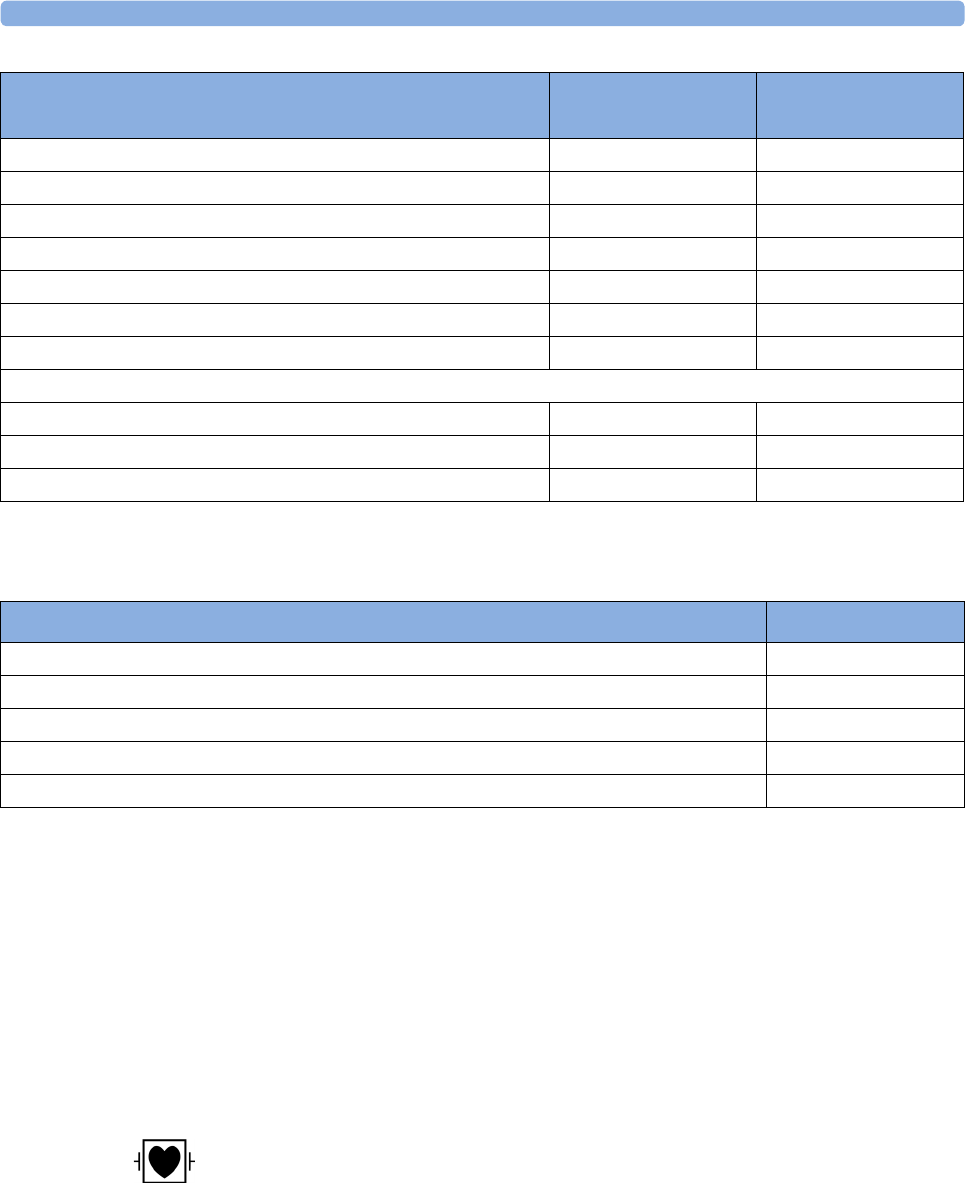
39 Accessories
439
Spirometry Accessories
Measurement of CO2 and Spirometry with Neonates
For measurement of CO2 and Spirometry with neonates, the use of the M3014A Mainstream CO2
Extension, the M1014A Spirometry Module and the M2782A Combined CO2/Flow Sensor is
recommended.
The M1923A Filterline H Set Infant/Neonatal used for Microstream CO2 measurement with the
M3015A Extension is not compatible with the M2786A Infant/Neonatal Flow Sensor for the
spirometry measurement (M1014A).
tcGas Accessories
This symbol indicates that the specified transducer (but not its membranes) is designed to have
special protection against electric shocks (particularly regarding allowable leakage currents), and is
defibrillator proof.
Nasal Filterline® O2 Pediatric 989803179121
Smart CapnoLine® O2 Adult M2522A 989803160281
Smart CapnoLine® H O2 Adult 989803177951 989803177961
Smart CapnoLine® O2 Pediatric M2520A 989803160271
Smart CapnoLine® H O2 Pediatric 989803177971 989803177981
Smart CapnoLine® Adult M2526A 989803160301
Smart CapnoLine® Pediatric M2524A
Accessories for Endoscopic Procedures
Smart CapnoLine® Guard 989803178031
Smart CapnoLine® Guard O2989803178041 989803178051
Hook and Loop Strap 989803178071
Description Part Number Part Number for
Long Version
Description Part No.
Adult/Pediatric Flow Sensor M2785A
Neonatal Flow Sensor M2786A
Adult/Pediatric CO2/Flow Sensor M2781A
Neonatal CO2/Flow Sensor M2782A
Pediatric CO2/Flow Sensor M2783A
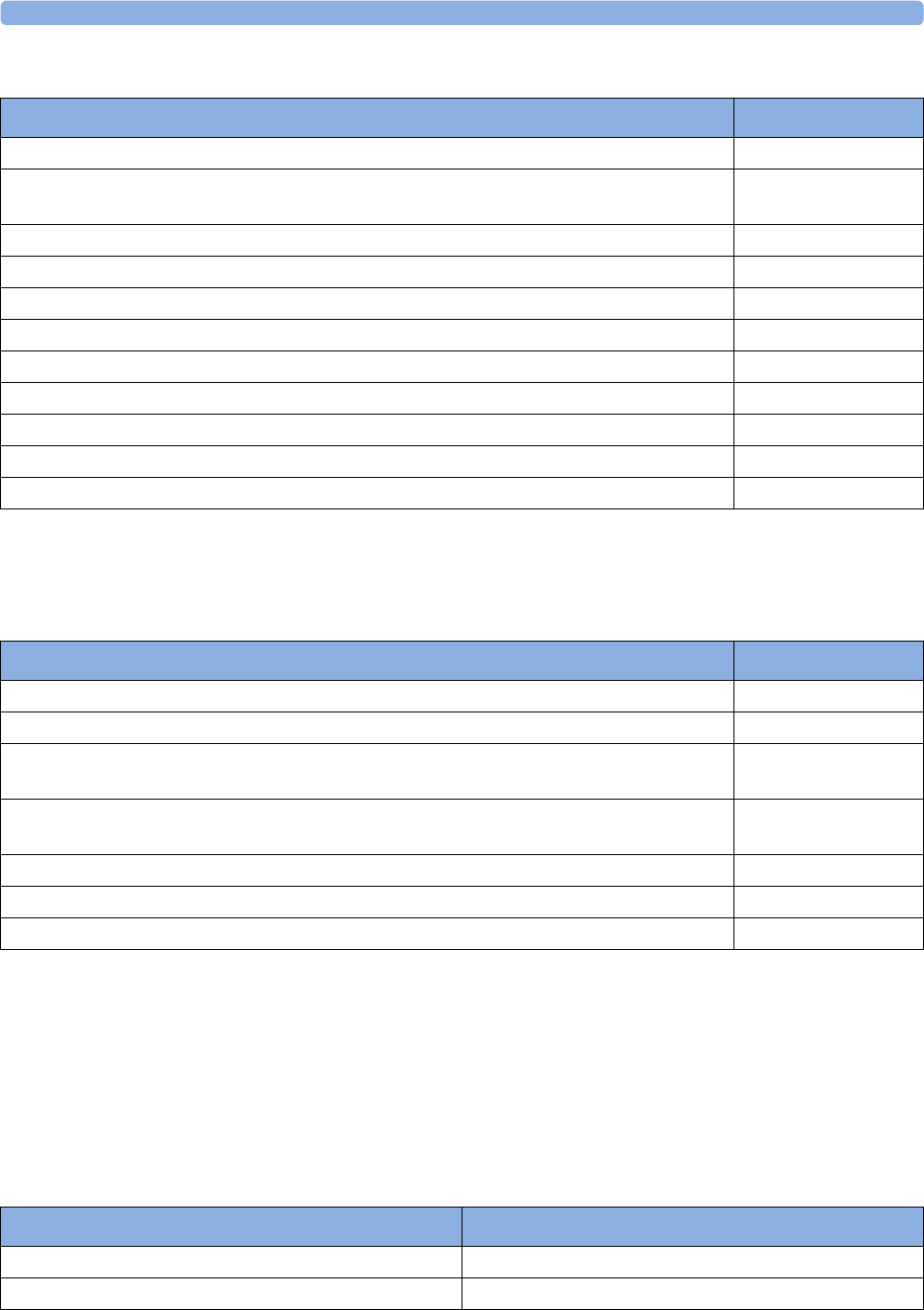
39 Accessories
440
1May not be available in all countries due to pending regulatory clearance
EEG Accessories
BIS Accessories
To re-order sensors, contact Covidien llc. BIS sensors are not available from Philips.
SO2 Accessories for M1021A
Contact your local Hospira representative for information on accessories. They are not available from
Philips.
Description Part No.
tcpO2/CO2 transducer M1918A
Accessory Kit for M1918A (O-ring remover, absorbent paper, electrolyte solution,
12 replacement membranes)
15209-60010
Application Kit for M1918A (4x25 disposable fixation rings, contact fluid) 15209-60020
tcpO2/CO2 transducer M1918B1
Accessory Kit for M1918B (10 replacement membranes, electrolyte solution) 9898031519511
Application Kit for M1918B (4x25 disposable fixation rings, contact fluid) 9898031519611
Calibration gas - 6 gas bottles 15210-60010
Calibration gas - 6 gas bottles (Europe and Japan only) 15210-64010
Replacement tubing (5 tubes) M2205A
Calibration unit 15210B
Radiometer TCC3 calibration unit (available from Radiometer) n/a
Description Part No.
Trunk Cable 2.7 m M2268A
Trunk Cable, 1.0 m M2269A
Reusable 80-cm-long 5-lead cables with 10 mm silver/silverchloride leadwired cup electrodes
(Adult)
M1931A
Reusable 80 cm 5-lead cables with 6 mm silver/silverchloride leadwired cup electrodes
(Pediatric/Neonatal)
M1932A
Reusable 80 cm 5-lead cables with clip M1934A
Disposable EEG electrodes M1935A
EC2™ Electrode Cream (conductive paste) M1937A
Description Hospira Part No.
Optical Module 50131
Hospira Opticath® Catheter family (SvO2, ScvO2) Contact Hospira for part numbers of compatible catheters
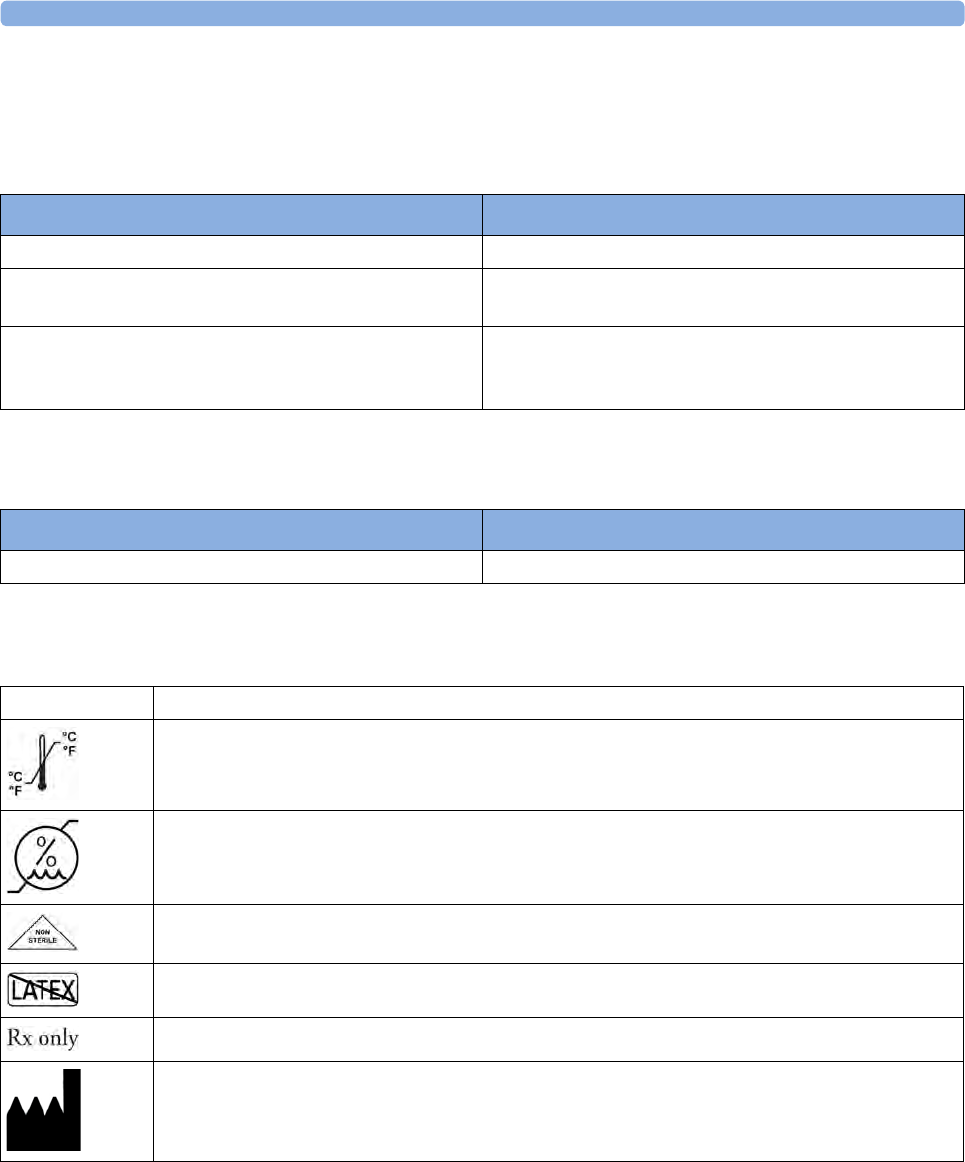
39 Accessories
441
SO2 Accessories for M1011A
Contact your local PULSION or Edwards representative for information on accessories. They are not
available from Philips.
NMT Accessories
Symbols on the Accessory Packaging
The following symbols can be printed on the accessory packaging:
Description Product Number (Order Number)
Philips SO2 Optical Module 989803151591
Pulsion: CeVOX Fiberoptic Probe family (ScvO2) Contact PULSION for part numbers of compatible
probes
Edwards: Philips-compatible versions of the PreSep
Catheter (ScvO2) or Swan-Ganz Oximetry Catheter
(SvO2) families
Contact Edwards for part numbers of compatible
catheters
Description Product Number (Order Number)
IntelliVue NMT Patient Cable (reusable) 989803174581
Symbol Meaning
Temperature limitations for storage
Humidity limitations for storage
Contents of the packaging are not sterile.
Contents of the packaging are not made with natural rubber latex.
Prescription use only
Manufacturer information
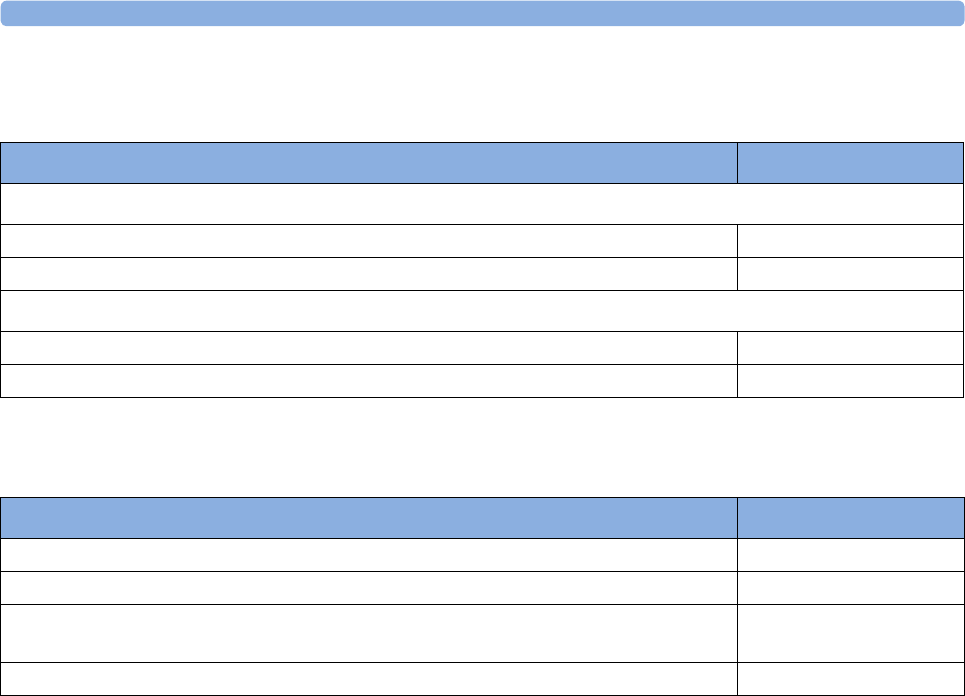
39 Accessories
442
Recorder Accessories
Battery Accessories
Description Part No.
For the M1116B recorder:
10 rolls of paper 40477A
80 rolls of paper 40477B
For the integrated recorder (MX400/MX450) and the M1116C recorder
10 rolls of paper M4816A
80 rolls of paper M4817A
Description Part No.
Lithium Ion Smart Battery 1Ah (internal battery for X2) M4607A
Lithium Ion Smart Battery 6Ah (for MX400/MX450/MX500/MX550) M4605A
Battery Charger and Conditioner (requires size adapter 451261017451 to charge M4607A
battery)
865432
Size adapter for M4607A battery 451261017451

40
443
40Specifications
The specifications in this section apply to the MX 400/MX450, MX500/MX550, MX600, MX700 and
MX800 patient monitors.
The monitors are not user installable. They must be installed by qualified service personnel.
Indications for Use
The monitors are indicated for use by health care professionals whenever there is a need for
monitoring the physiological parameters of patients.
The monitors are intended to be used for monitoring and recording of, and to generate alarms for,
multiple physiological parameters of adults, pediatrics, and neonates. The monitors are intended for
use by trained healthcare professionals in a hospital environment.
The MX400/MX450/MX500/MX550 monitors are additionally intended for use in transport
situations within hospital environments.
The monitors are only for use on one patient at a time. They are not intended for home use. Not
therapeutic devices. The monitors are for prescription use only.
The ECG measurement is intended to be used for diagnostic recording of rhythm and detailed
morphology of complex cardiac complexes (according to AAMI EC 11).
ST segment monitoring is intended for use with adult patients only and is not clinically validated for
use with neonatal and pediatric patients.
The transcutaneous gas measurement (tcGas) is restricted to neonatal patients only.
BIS is intended for use under the direct supervision of a licensed health care practitioner or by
personnel trained in its proper use. It is intended for use on adult and pediatric patients within a
hospital or medical facility providing patient care to monitor the state of the brain by data acquisition
of EEG signals. The BIS may be used as an aid in monitoring the effects of certain anesthetic agents.
Use of BIS monitoring to help guide anesthetic administration may be associated with the reduction of
the incidence of awareness with recall in adults during general anesthesia and sedation.
The SSC Sepsis Protocol, in the ProtocolWatch clinical decision support tool, is intended for use with
adult patients only.
The Integrated Pulmonary Index (IPI) is intended for use with adult and pediatric (1 to 12 years)
patients only. The IPI is an adjunct to and not intended to replace vital sign monitoring.
The derived measurement Pulse Pressure Variation (PPV) is intended for use with sedated patients
receiving controlled mechanical ventilation and mainly free from cardiac arrhythmia. The PPV
measurement has been validated only for adult patients.
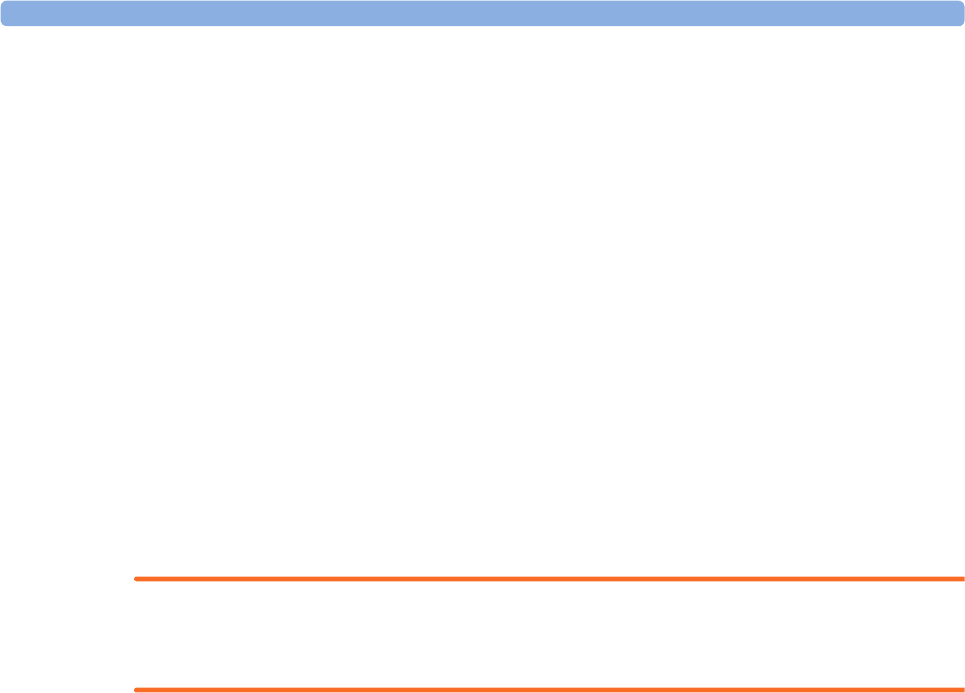
40 Specifications
444
The IntelliVue NMT Module is intended to be used as an objective neuromuscular transmission
monitor, using accelerometry for measuring the muscle contraction following an electrical stimulation
of a peripheral nerve. The NMT Module is intended to be used with adult and pediatric patients.
Restricted Availability
Following new features and functionality may not be available in all geographies:
• Smart Alarm delays
• IntelliVue Information Center iX
Use Environment
Hospital Environment
The monitors are suitable for use in all medically used rooms which fulfill the requirements regarding
electrical installation according to IEC 60364-7-710 "Requirements for special installations or locations
- Medical locations", or corresponding local regulations.
WARNING
The monitors are not intended for use in an MRI environment or in an oxygen-enriched environment
(for example, hyperbaric chambers).
Physical Security and Limited Access to the Monitor
Access to the monitor must be limited to authorized users. It is important that you consider physical
security measures to ensure that unauthorized users cannot gain access.
Manufacturer's Information
You can write to Philips at this address
Philips Medizin Systeme Boeblingen GmbH
Hewlett-Packard-Str. 2
71034 Boeblingen
Germany
Visit our website at: www.healthcare.philips.com/us/.
© Copyright 2013. Koninklijke Philips N.V. All Rights Reserved.
BIS Manufacturer's Information
BISx, the BIS Engine, the DSC, the Patient Interface Cable and the BIS Sensor are manufactured by
Covidien:
Covidien llc
15 Hampshire Street
Mansfield, MA 02048
USA
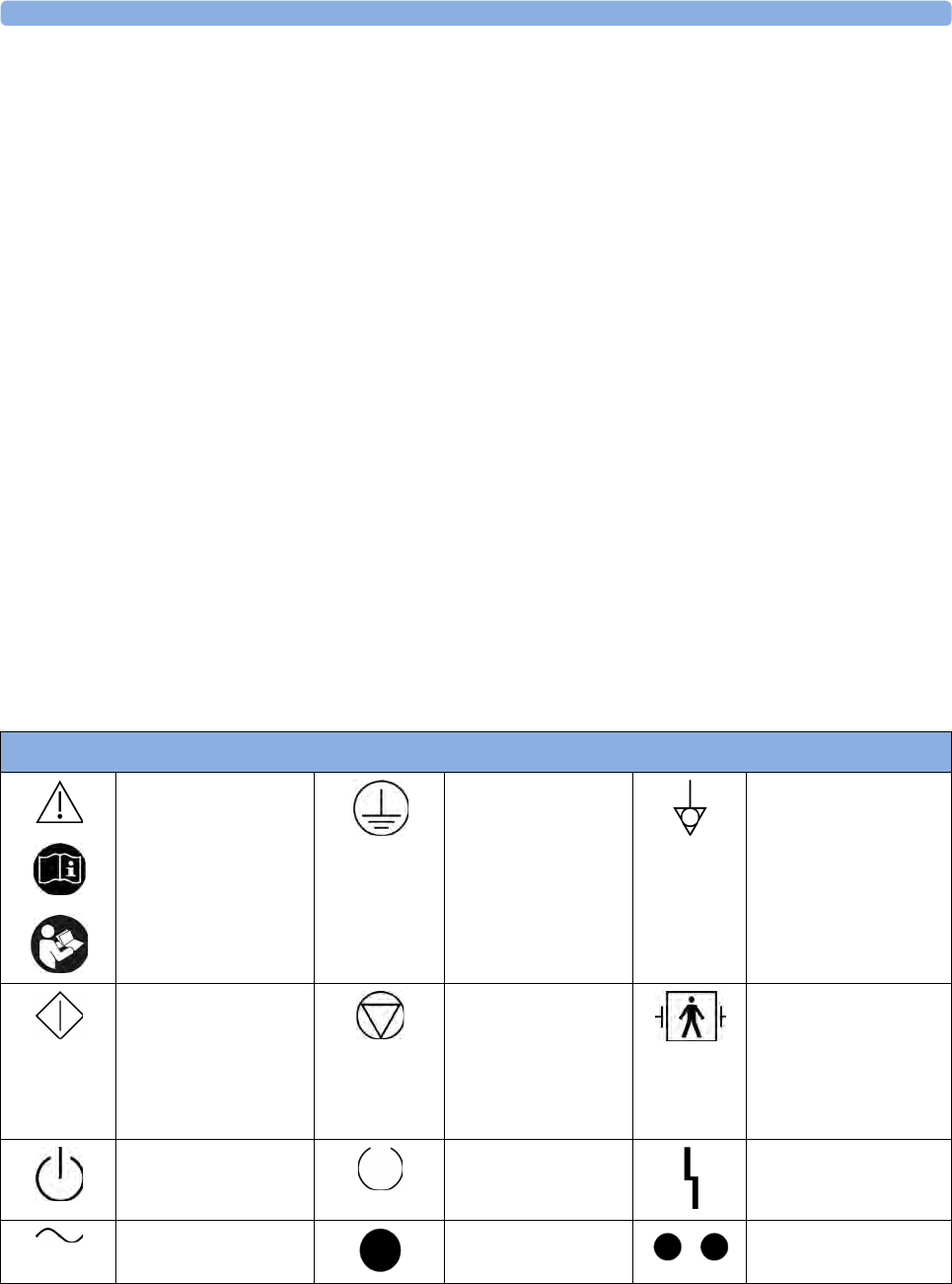
40 Specifications
445
Trademark and License Acknowledgment
PiCCOTM is a trademark of PULSION Medical Systems AG.
Bispectral Index and BIS are trademarks of Covidien llc, and are registered in the USA, EU and other
countries.
Microstream®, FilterLine®, and Smart CapnoLine® are trademarks or registered trademarks of
Oridion Systems Ltd.
Citrix® and ICA® (Independent Computing Architecture) are registered trademarks of Citrix Systems,
Inc.
The following are trademarks of Nellcor Puritan Bennett Incorporated: Nellcor®, Durasensor®, Dura-
Y®, Oxiband®, Oxicliq®, OxiMax®. MAX-FAST® is a trademark of Mallinckrodt Inc.
Masimo®, Masimo SET®, and LNOP are federally registered trademarks of the Masimo Corporation.
Transpac® and SafeSetTM are trademarks of ICU Medical, Inc.
Other product and company names mentioned in this book may be trademarks of their respective
owners.
The monitors use Open Source Software. For details check the license screen via Main Setup,
Revisions, OSS Licenses.
Symbols
These symbols can appear on the monitor and its associated equipment.
Symbols
Caution, refer to
accompanying
documents
Protective earth Equipotential
grounding
Start a measurement Stop a measurement Applied part has special
protection against
electric shocks (Type BF
according to
IEC 60601-1) and is
defibrillator proof
Standby FMS power-on
indicator
Error LED
Alternating current Connection direction
indicator
Connection direction
indicator
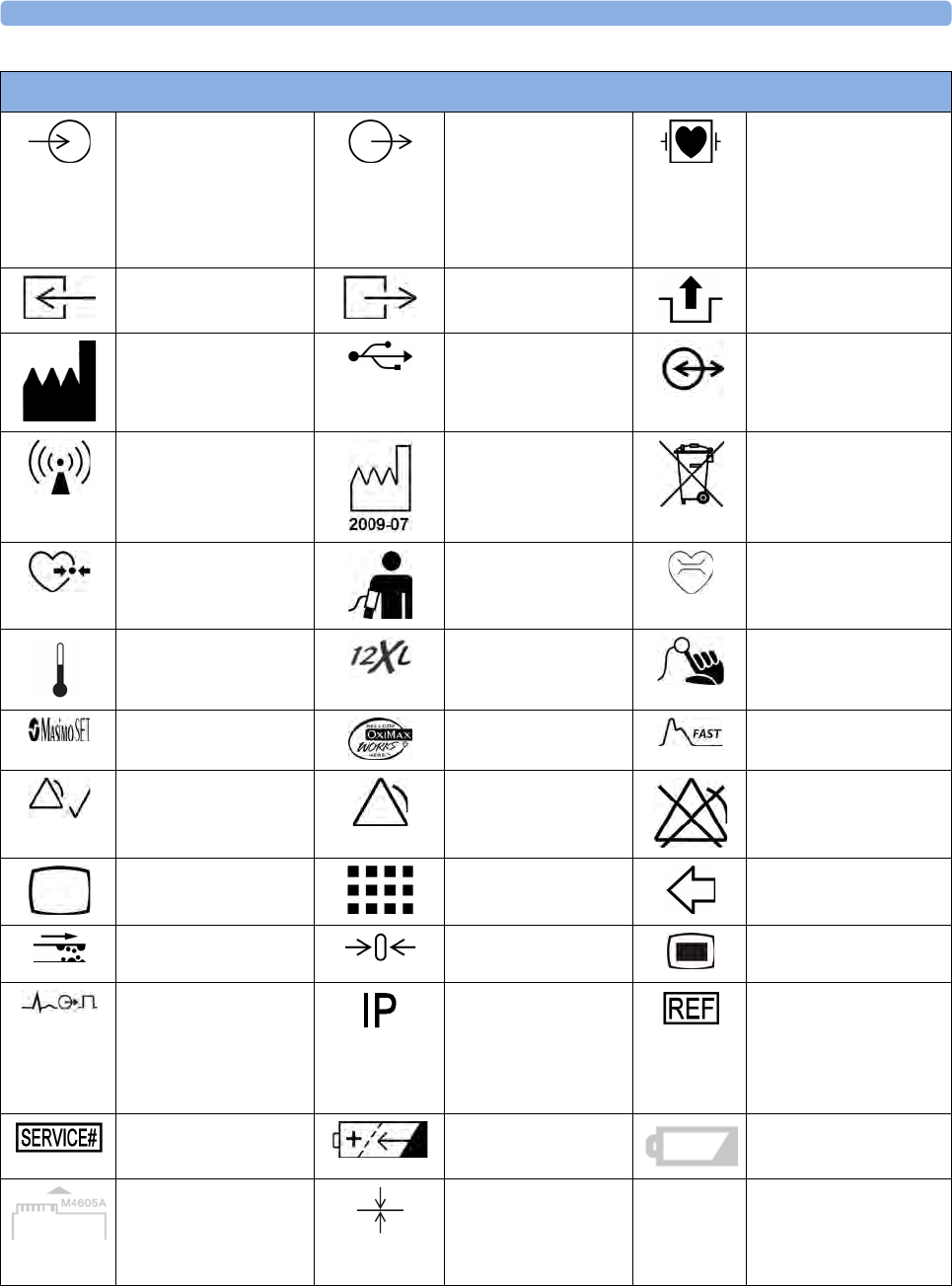
40 Specifications
446
Electrical input
indicator
(In some cases gas
input indicator)
Electrical output
indicator
(In some cases gas
output indicator)
Connector has special
protection against
electric shocks and is
defibrillator proof (Type
CF according to
IEC 60601-1)
Gas input indicator Gas output indicator Quick mount release
Manufacturer's name
and address
USB interface Data input/output
symbol
Non-ionizing radiation
symbol
Identifies year and
month of
manufacture
Always use separate
collection for waste
electrical and electronic
equipment (WEEE)
Pressure connector NBP connector Cardiac Output
connector
Temperature
connector
Monitor supports 12-
lead ECG
SpO2 connector
Masimo SET
technology
Nellcor OxiMax
compatible
Uses FAST SpO2
algorithm
Silence Alarms Alarms On/Off Alarms Switched Off
Main Screen SmartKeys Back key
Purge flow tubing with
air
Zero the invasive
pressure transducer
Enter the measurement
setup menu
ECG Sync Output/
Analog ECG Output
Followed by two
alphanumeric
characters, indicates
ingress protection
grade
Indicates location of
catalog number
Indicates location of
service number
Rechargeable battery
symbol
Battery LED
Indication for battery
placement in battery
compartment
Enter the
measurement setup
menu to start a
calibration
Symbols
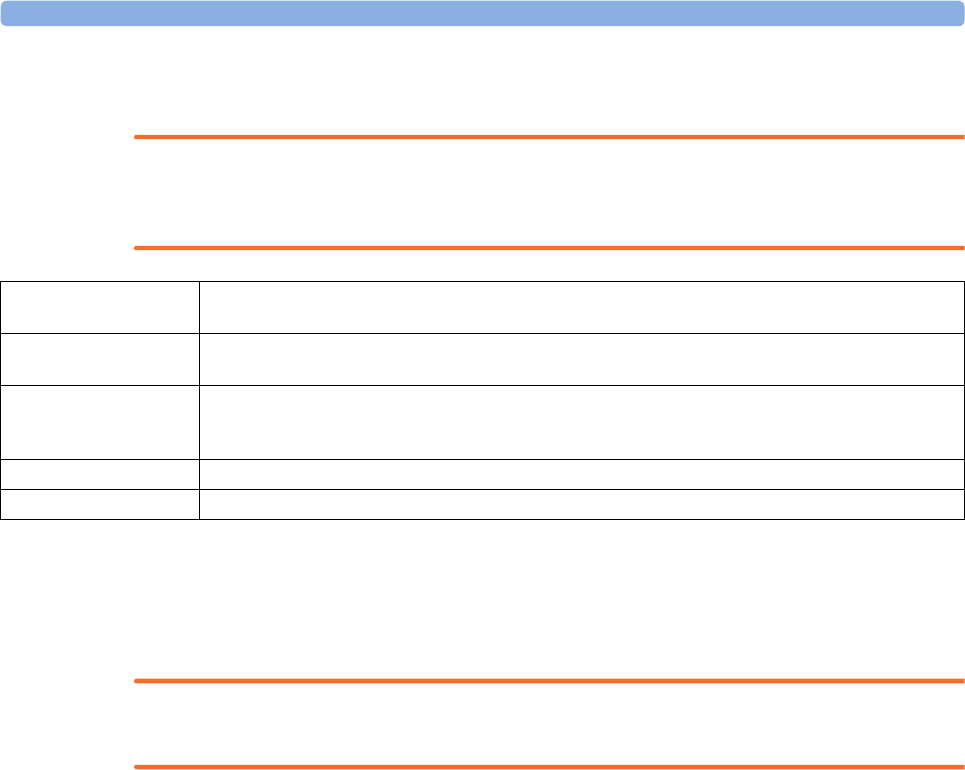
40 Specifications
447
Installation Safety Information
WARNING
If multiple instruments are connected to a patient, the sum of the leakage currents may exceed the
limits given in IEC/EN 60601-1, IEC 60601-1-1, UL 60601-1. Consult your service personnel.
Connectors
The actual placement of boards and configuration of connections for your monitor depends on how
your hardware has been configured. See the symbols table (“Symbols” on page 445) to see which
symbols are used to mark the connections.
WARNING
Connect only medical devices to the ECG output connector socket.
Grounding The monitor must be grounded during operation. If a three-wire receptacle is not available, consult the
hospital electrician. Never use a three-wire to two-wire adapter.
Equipotential Grounding If the monitor is used in internal examinations on the heart or brain, ensure that the room incorporates an
equipotential grounding system to which the monitor has a separate connection.
Combining equipment Combinations of medical equipment with non-medical equipment must comply with IEC 60601-1-1. Never
use a multiple portable socket-outlet or extension cord when combining equipment unless the socket outlet is
supplied specifically for use with that equipment.
Fusing The monitor uses double fusing (line and neutral).
Network Cables All network cables must be unshielded.
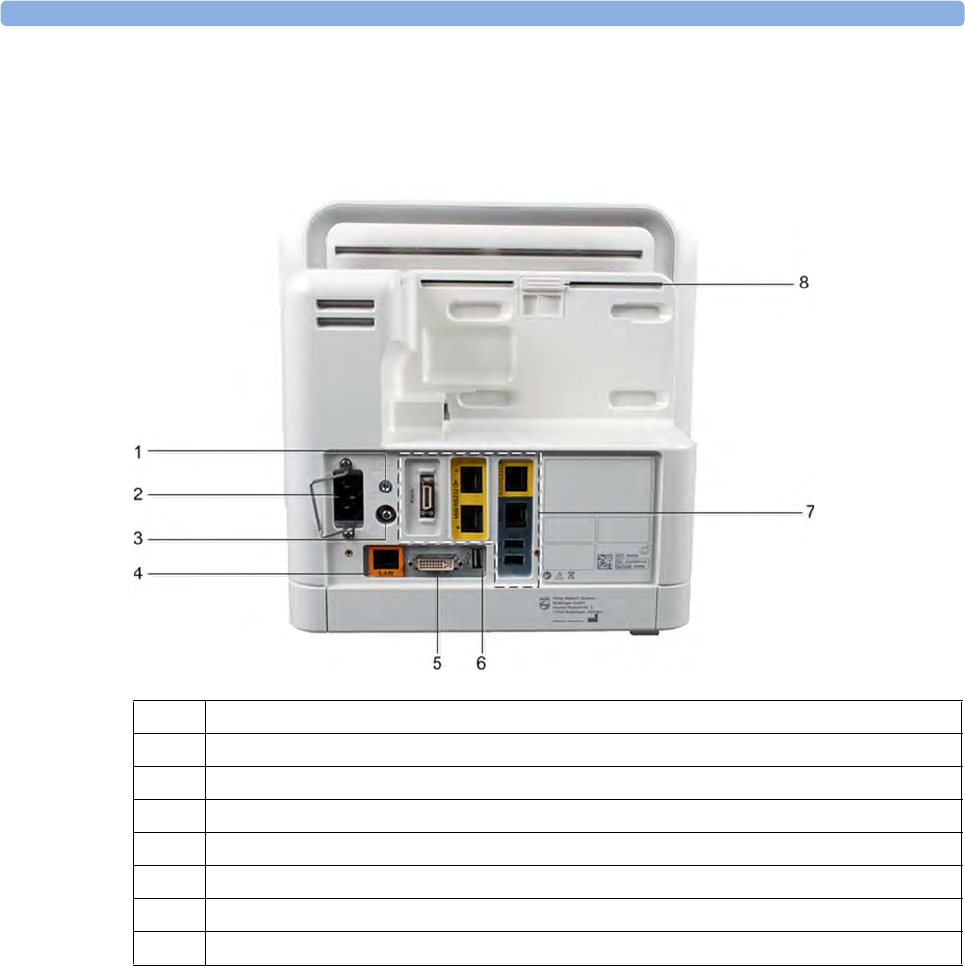
40 Specifications
448
MX400/450
Rear of the Monitor
Shown here without the standard spillage cover that protects the connectors.
1 Protective earth screw hole
2 AC power input with clamp
3 Equipotential ground connector
4 Wired network connector (color-coded in orange)
5 Video out connector (digital/analog)
6 USB rear connector (for remote control, keyboard, pointing devices, printer)
7 Optional interfaces
8 Release switch for a connected multi-measurement module
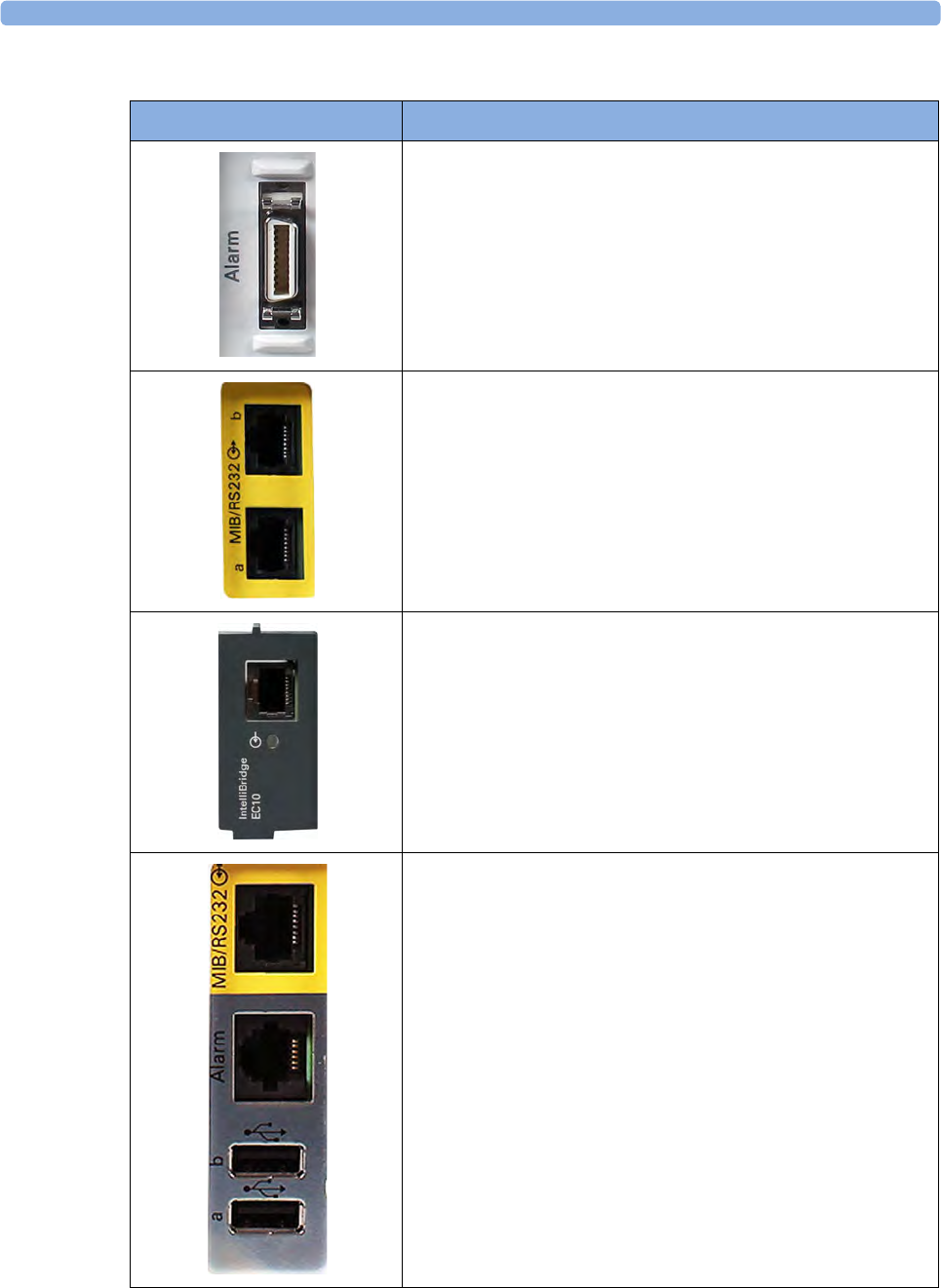
40 Specifications
449
Optional Interfaces
Optional Interface Description
Flexible nurse call interface card
Dual medical information bus (MIB) RS232 Interface card (color-
coded yellow)
IntelliBridge EC10 interface board (color-coded dark gray)
Advanced system interface:
Single medical information bus (MIB) RS232 Interface card
(color-coded yellow)
Nurse call
Additional USB slots
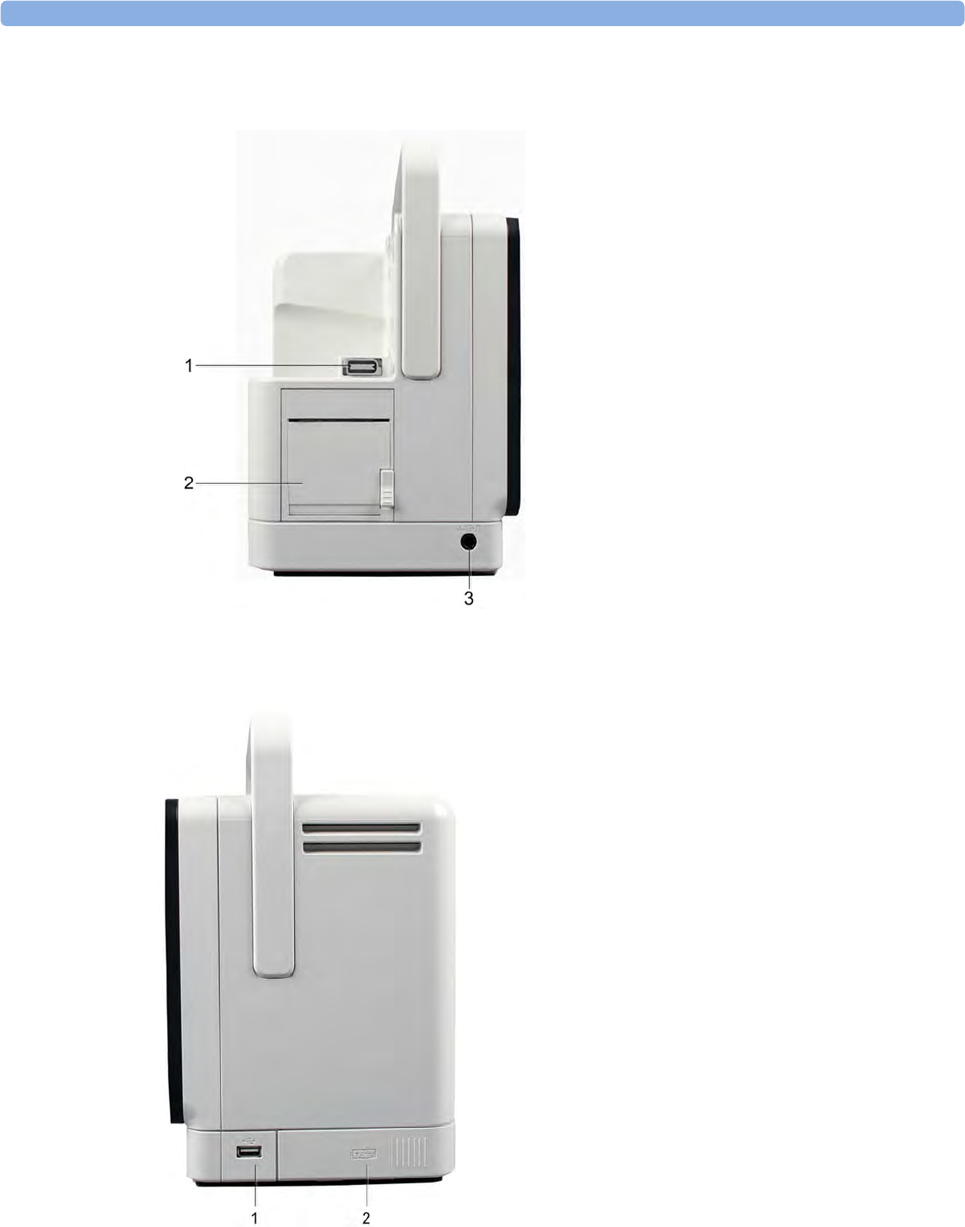
40 Specifications
450
Left Side of the Monitor
Right Side of the Monitor
1MSL interface link
2Integrated recorder
3ECG Sync Output/Analog
ECG output connector
1Optional USB slot
2Battery compartment
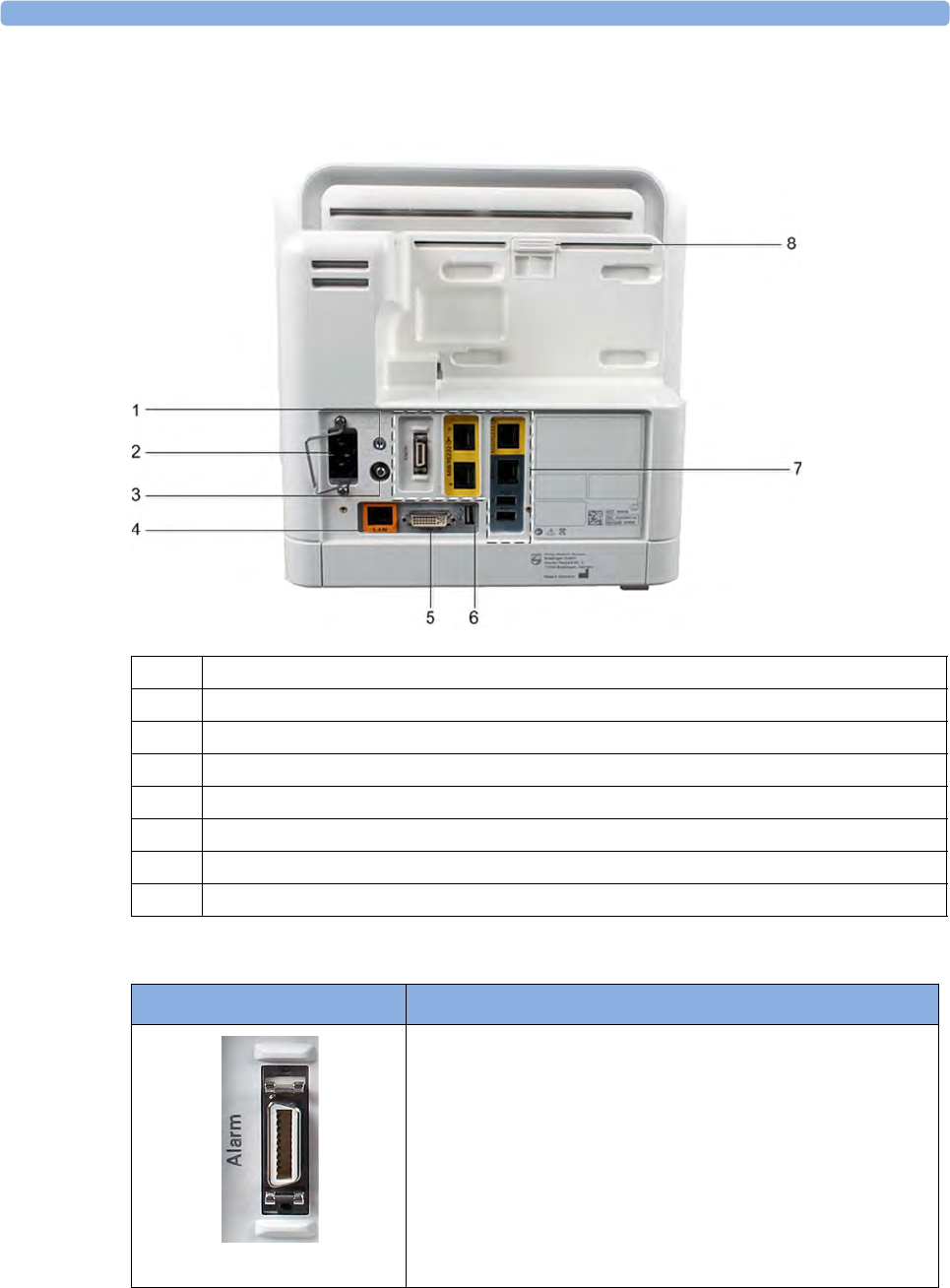
40 Specifications
451
MX500/550
Rear of the Monitor
Optional Interfaces
1 Protective earth screw hole
2 AC power input with clamp
3 Equipotential ground connector
4 Wired network connector (color-coded in orange)
5 Video out connector (digital/analog)
6 USB rear connector (for remote control, keyboard, pointing devices, printer)
7 Optional interfaces
8 Release switch for connected measurement modules
Optional Interface Description
Flexible nurse call interface card
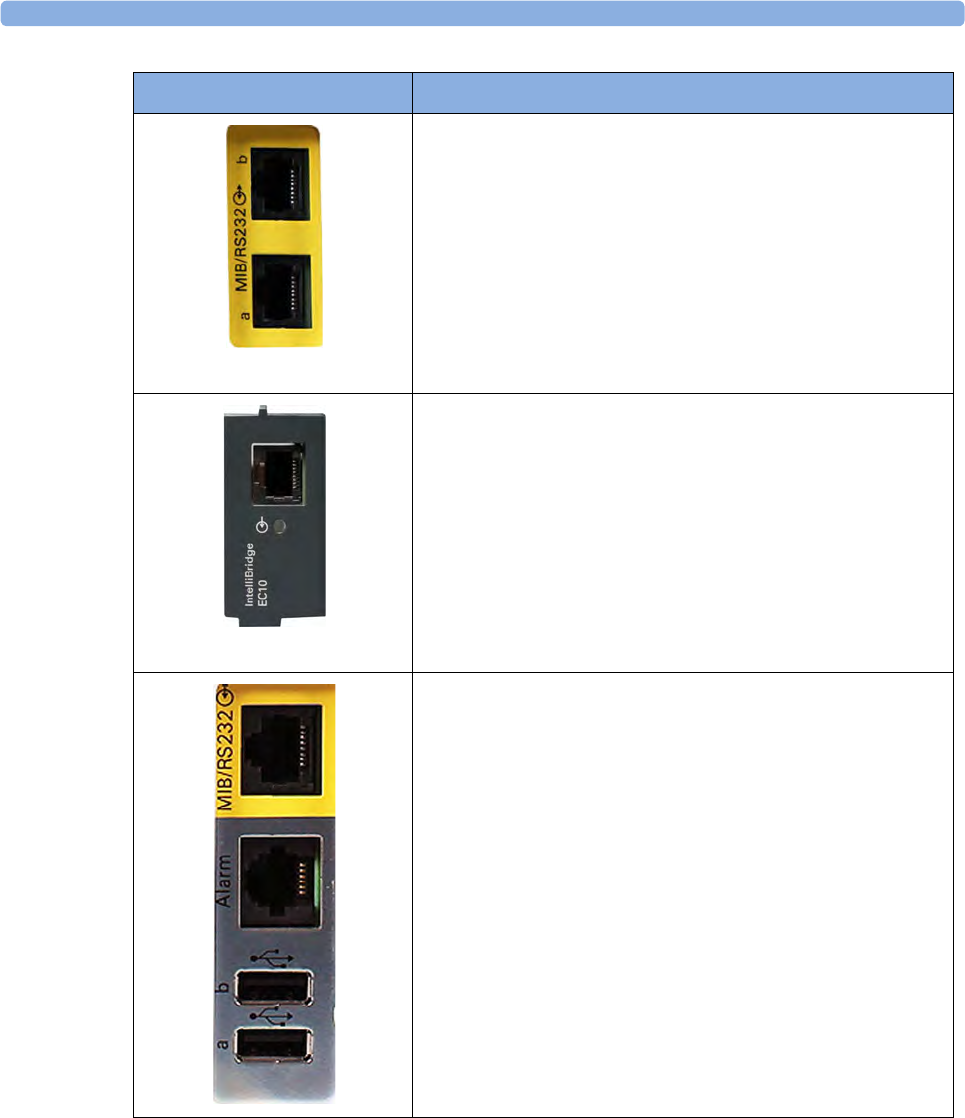
40 Specifications
452
Dual medical information bus (MIB) RS232 Interface card
(color-coded yellow)
IntelliBridge EC10 interface board (color-coded dark gray)
Advanced system interface:
Single medical information bus (MIB) RS232 Interface card
(color-coded yellow)
Nurse call
Additional USB slots
Optional Interface Description
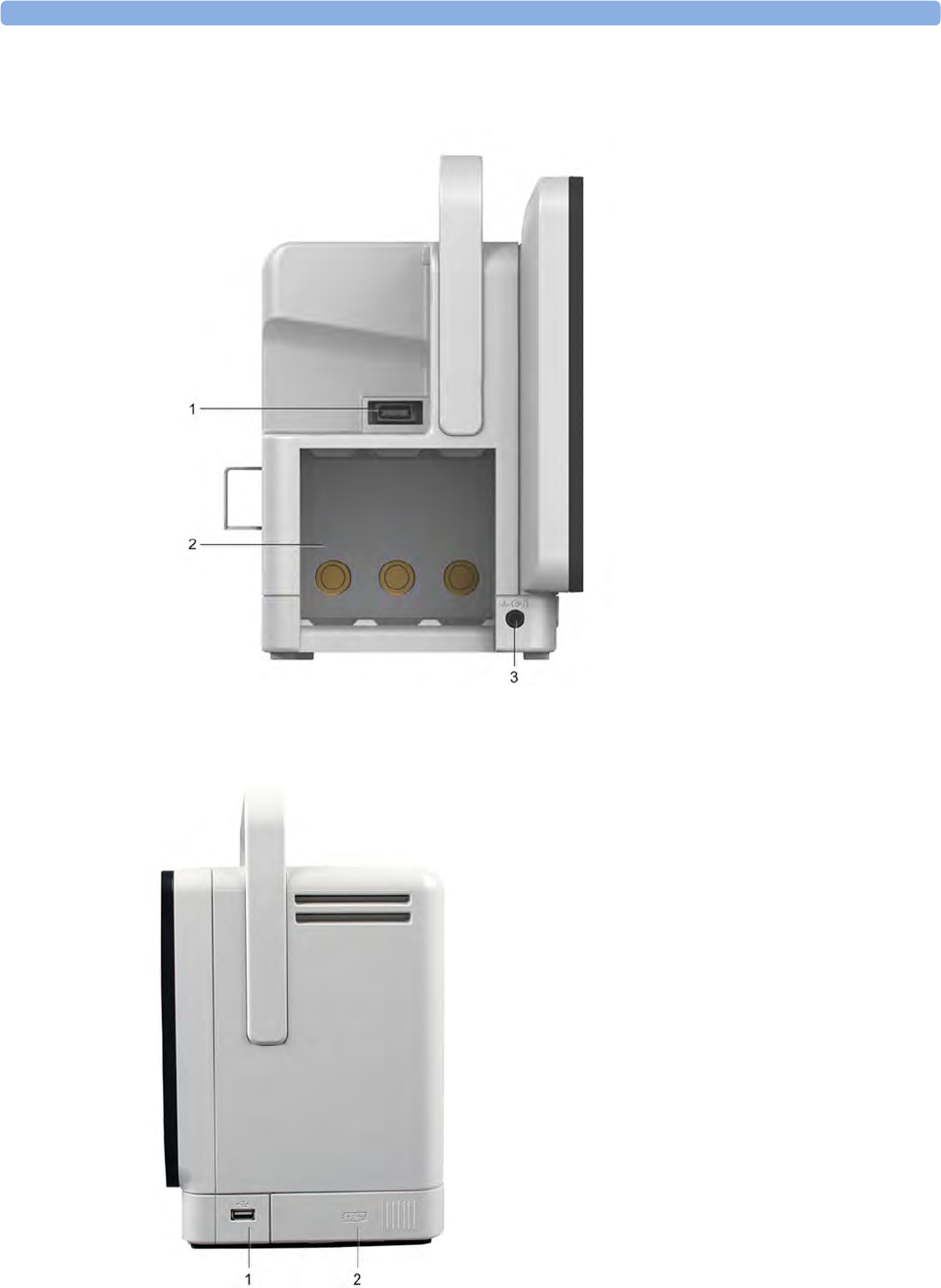
40 Specifications
453
Left Side of the Monitor
Right Side of the Monitor
1MSL interface link
23 slots for measurement modules
3ECG Sync Output/Analog ECG
output connector
1Optional USB slot
2Battery compartment
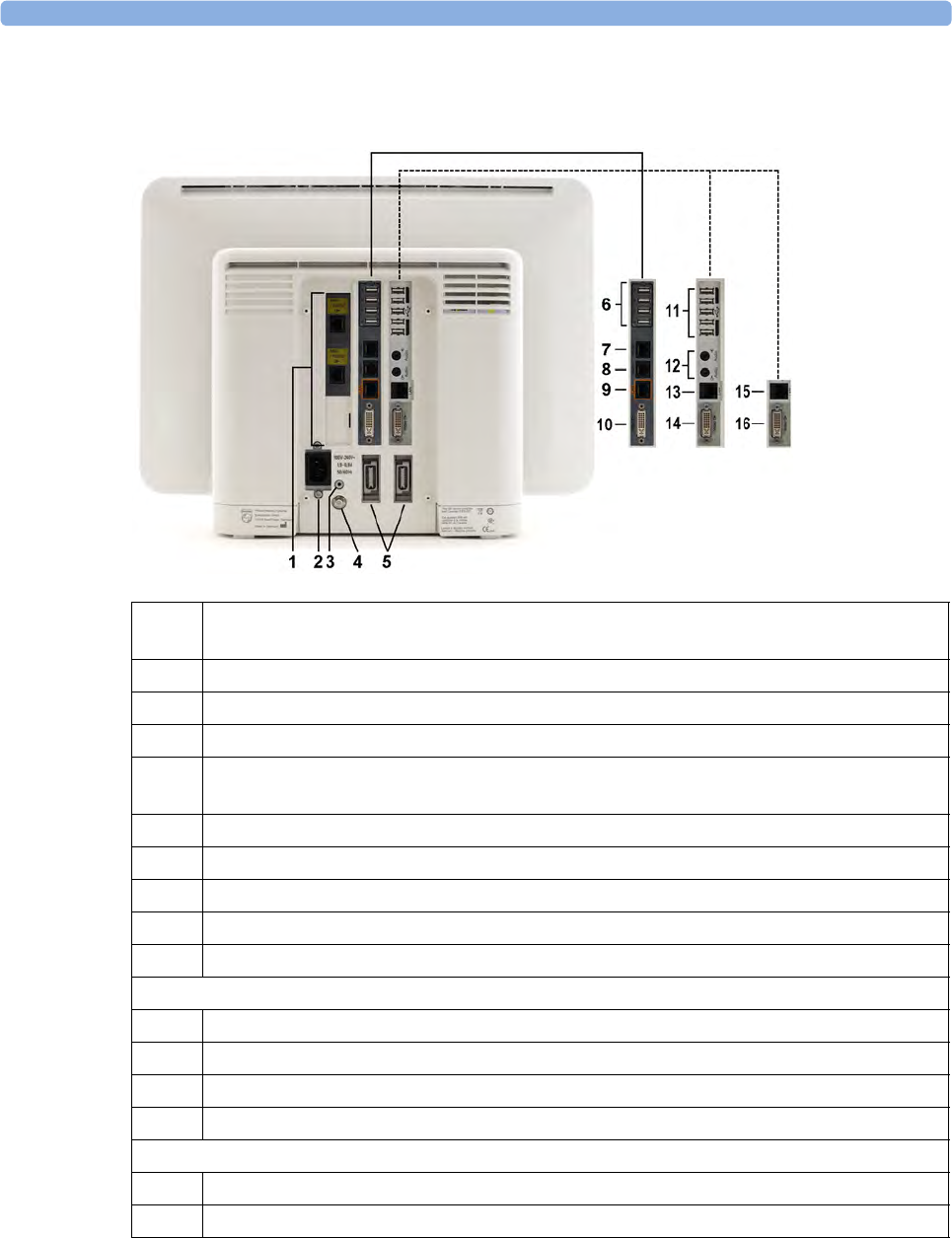
40 Specifications
454
MX600/700/800
Rear of the Monitor
1 Serial/MIB (RS232) interface cards, type RJ45 or Flexible Nurse Call interface card or
combination of both (optional)
2 AC power input
3 Protective earth screw hole
4 Equipotential ground connector
5 Measurement link connectors (MSL)
(Two standard in MX800, one standard in MX600/700)
6 USB rear connectors (for remote control, keyboard, pointing devices, printer)
7 Serial RS232 connector
8 Nurse Call
9 Wired network connector
10 Video out connector (digital/analog)
The following connectors are only present with the iPC
11 USB rear connectors (for keyboard, pointing devices, printer)
12 Audio in/out
13 Local Area Network
14 Video out connector (digital/analog)
The following connectors are only present with the Independent Display Interface
15 Serial RS232 connector for touch
16 Video out connector (digital/analog)
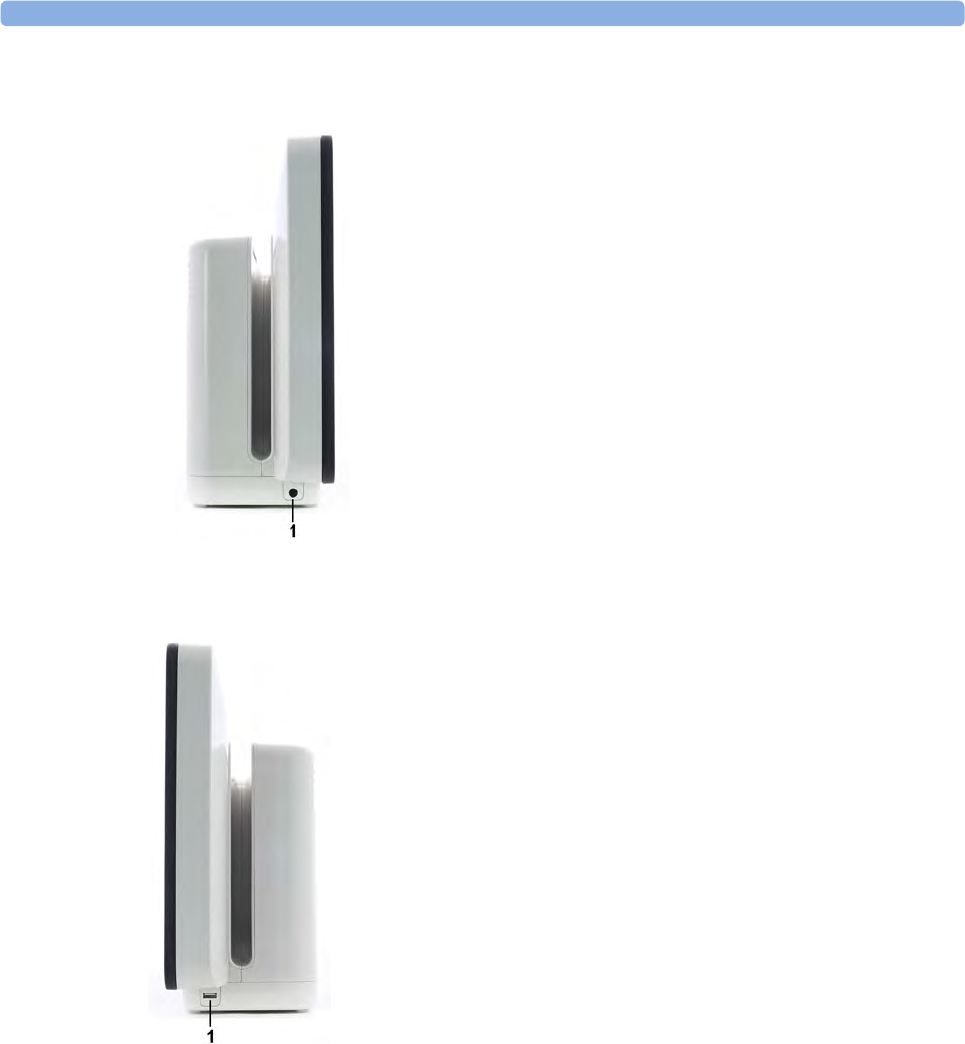
40 Specifications
455
Left Side of the Monitor
Right Side of the Monitor
Monitor Mounting Precautions
Mount the monitor using either the Philips Quick Mount or Fix Mount solution or another approved
mounting solution. Select the mounting equipment and the mounting position so that no patient,
operator or other person can be harmed by a monitor removed intentionally or released accidentally
from the mount. When using the Quick Mount, be aware of the danger of accidental activation of the
Quick Mount release button when lifting or moving items located under the monitor, such as pole
mounts, etc. If in doubt, use the Philips Fix Mount solution to avoid such situations. Refer to the
respective IntelliVue Monitor Service Manual, Installation Instructions chapter, for more details.
1ECG Sync Output/Analog ECG
output connector
1 USB side connector (only present
with the iPC)

40 Specifications
456
CAUTION
• Never carry a monitor by the handle when equipment is attached below it with the Quick Mount.
To transport such equipment combinations, always support the equipment from below.
• Only use the bed hanger for the MX400/450/500/550 on beds with a support below the rail, to
ensure that the monitor does not tilt.
Repositioning a Monitor on the Mounting Arm
Attempts to reposition the monitor should only be performed as described in the mounting hardware
manufacturer’s user documentation. If the mounting arm has a locking mechanism, ensure the locking
mechanism is unlocked before attempting to reposition the monitor. Never pull on the monitor to tilt,
swivel or otherwise reposition it - always hold on to the mounting hardware itself.
WARNING
Not adhering to these instructions when repositioning the monitor can cause damage to the monitor.
In extreme cases, when force is applied to the monitor, it can result in the monitor falling from the
mounting arm.
If, at any time, the monitor appears to be loose or insecurely mounted, contact your service personnel.
Altitude Setting
Altitude affects tcGas and CO2 measurements. The monitor must be configured at installation to the
correct altitude.
Monitor Safety Specifications
Philips
The monitors, together with the Multi-Measurement Modules (M3001A/M3002A), the Flexible
Module Racks FMS-8 (M8048A) and FMS-4 (865243), and all modules and MMS extensions, comply
with the Medical Device Directive 93/42/EEC.
Covidien
Covidien BISx, Covidien BIS Engine and Covidien DSC comply with the Medical Device Directive
93/42/EEC of 14 June 1993.
In addition, the product complies with:
IEC 60601-1:1988 + A1:1991 + A2:1995; EN 60601-1:1990 + A1:1993 + A2:1995; UL 60601-1:2003;
CAN/CSA C22.2#601.1-M90 +Suppl. No. 1-94 + Am. 2; IEC 60601-1-1:2000; EN 60601-1-1:2001;
IEC 60601-1-2:2001 + A1:2004; EN 60601-1-2:2001 + A1:2006.
The possibility of hazards arising from software errors was minimized in compliance with
ISO 14971:2007, EN 60601-1-4:1996 + A1:1999 and IEC 60601-1-4:1996 + A1:1999.
Classification (according to IEC 60601-1): Class 1, Type CF, Continuous Operation. The BIS and
NMT measurement use a Type BF applied part.
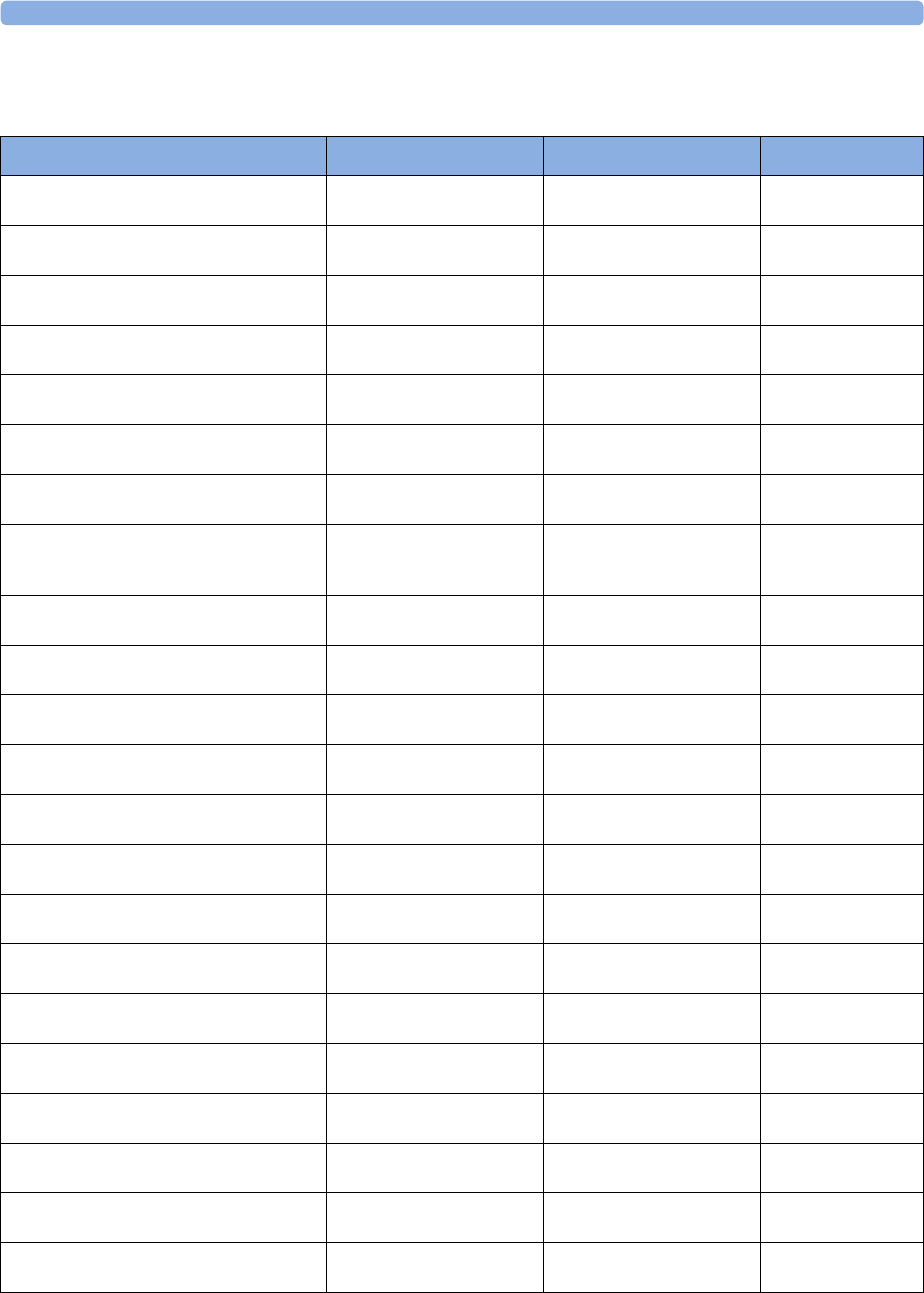
40 Specifications
457
Physical Specifications
Product Maximum Weight W x H x D Comments
MX800 Monitor <12 kg (<26.4 lb) <478 x 364 x 152 mm
<18.82 x 14.33 x 5.98 in
without cable
management
MX600/MX700 Monitor <9.5 kg (<20.9 lb) <392 x 321 x 163 mm
<15.43 x 12.64 x 6.42 in
without cable
management
MX550 Monitor <7.3 kg (<16.1 lb) <404 x 308 x 184 mm
<15.91 x 12.13 x 7.24 in
MX500 Monitor <6.0 kg (<13.1 lb) <327 x 288 x 182 mm
<12.87 x 11.34 x 7.17 in
MX450 Monitor <5.9 kg (<12.9lb) <327 x 288 x 182mm
<12.87 x 11.34 x 7.17 in
MX400 Monitor <5.2 kg (<11.5lb) <274 x 288 x 178 mm
<10.79 x 11.34 x 7.01 in
M3001A
Multi-Measurement Module (MMS)
<650 g (<1.4 lb) 188 x 96.5 x 51.5 mm
7.4 x 3.8 x 2 in
M3002A
Multi-Measurement Module (MMS)
<1.25 kg (<2.8 lb) 188 x 99 x 86 mm
7.4 x 3.9 x 3.4 in
including battery,
without handle or
options
M3012A
Hemodynamic MMS Extension
<550 g (<1.2 lb) <190 x 98 x 40 mm
<7.5 x 4 x 1.6 in
M3014A
Capnography MMS Extension
<500 g (<0.99 lb) <190 x 98 x 40 mm
<7.5 x 4 x 1.6 in
M3015A
Microstream CO2 MMS Extension
<550 g (<1.21 lb) <190 x 98 x 40 mm
<7.5 x 4 x 1.6 in
M3016A
Mainstream CO2 MMS Extension
<450 g (<0.99 lb) <190 x 98 x 40 mm
<7.5 x 4 x 1.6 in
M8048A
8-Slot Flexible Module Rack (FMS-8)
<3500 g (<7.7 lb) <320 x 135 x 120 mm
12.6 x 5.3 x 4.7 in
without plug-in
modules
865243
4-Slot Flexible Module Rack (FMS-4)
<950 g (<2.09 lb) <194 x 139 x 110 mm
<7.64 x 5.47 x 4.33 in
without MMS Mount
M8025A
Remote Alarm Device
<300 g (<0.7 lb) 62 x 125 x 63 mm
2.4 x 5 x 2.5 in
M1006B
Invasive Press Module
190 g (6.7 oz)
Option #C01: 225 g (7.9 oz)
36 x 99.6 x 97.5 mm
1.4 x 3.9 x 3.8 in
M1029A
Temperature Module
215 g (7.6 oz) 36 x 99.6 x 97.5 mm
1.4 x 3.9 x 3.8 in
M1012A
Cardiac Output Module
225 g (7.9 oz) 36 x 99.6 x 97.5 mm
1.4 x 3.9 x 3.8 in
M1014A
Spirometry Module
250 g (8.8 oz) 36 x 99.6 x 97.5 mm
1.4 x 3.9 x 3.8 in
M1018A
Transcutaneous Gas Module
350 g (11.3 oz) 72.5 x 99.6 x 97.5 mm
2.9 x 3.9 x 3.8 in
M1020B
SpO2 Module
<250 g (<0.55 lb) 36 x 99.6 x 97.5 mm
1.4 x 3.9 x 3.8 in
M1021A
Mixed Venous Oxygen Saturation Module
460 g (13.04 oz) 72.5 x 99.6 x 97.5 mm
2.9 x 3.9 x 3.8 in
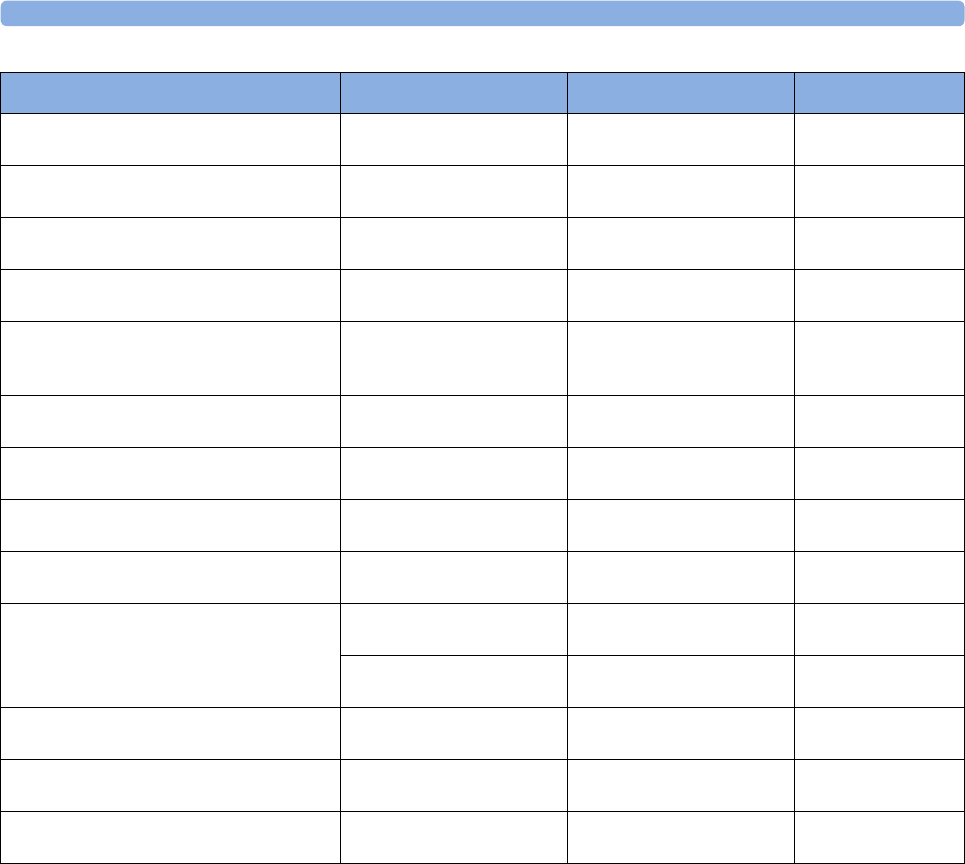
40 Specifications
458
Environmental Specifications
The monitor may not meet the performance specifications given here if stored or used outside the
specified temperature and humidity ranges.
When the monitor and related products have differing environmental specifications, the effective
range for the combined products is that range which is common to the specifications for all products.
M1011A
SO2 Module
<200 g (<7.1 oz) 36 x 99.6 x 102.5 mm
1.4 x 3.9 x 4.0 in
- Optical Module <200 g (<7.1 oz) 50 x 30 x 120 mm
2.0 x 1.2 x 4.7 in
including 2.9 m cable
M1027A
Electroencephalograph Module
210 g (7.4 oz) 36 x 99.6 x 97.5 mm
1.4 x 3.9 x 3.8 in
M1034A
BIS Interface Module
215 g (7.6 oz) 36 x 99.6 x 97.5 mm
1.4 x 3.9 x 3.8 in
without cables
BISx 499 g (1.1 lb) diameter x height:
95.3 x 63.5 mm
3.8 x 2.5 in
with PIC Plus Cable
(1.22 m, 4 ft) and
cable to BIS module
- DSC Digital Signal Converter 130 g (4.6 oz) (without cabling) 66 x 25 x 107 mm
2.6 x 1.0 x 4.25 in
with PIC Plus Cable
(1.22 m, 4 ft)
- BIS Engine 170 g (6.0 oz) 43 x 93 x 95 mm
1.7 x 3.7 x 3.7 in
M1032A
Vuelink Module
240 g (8.4 oz) 36 x 99.6 x 97.5 mm
1.4 x 3.9 x 3.8 in
865115
IntelliBridge EC10 Module
200 g (7.0 oz) 36 x 99.6 x 102.5 mm
1.4 x 3.9 x 4.0 in
865114
IntelliBridge EC5 Module
35 g (1.1 oz) 35 x 17 x 57 mm
1.4 x 0.7 x 2.1 in
with D-Sub 9-pin male
or female connector
25 g (0.8 oz) 21.5 x 17 x 65 mm
0.9 x 0.7 x 2.6 in
without cable and
strain relief
M1116B
Thermal Array Recorder Module
507.5 g (17.9 oz) 73 x 99.6 x 97 mm
2.9 x 3.6 x 3.9 in.
865244
Remote Control
<250 g (<8.8 oz) 53 x 165 x 23 mm
2.1 x 6.5 x 0.9 in
without navigator
knob
865383
IntelliVue NMT Module
300 g (10.6 oz) 36 x 103.5 x 110 mm
1.4 x 4.0 x 4.3 in
without cables
Product Maximum Weight W x H x D Comments
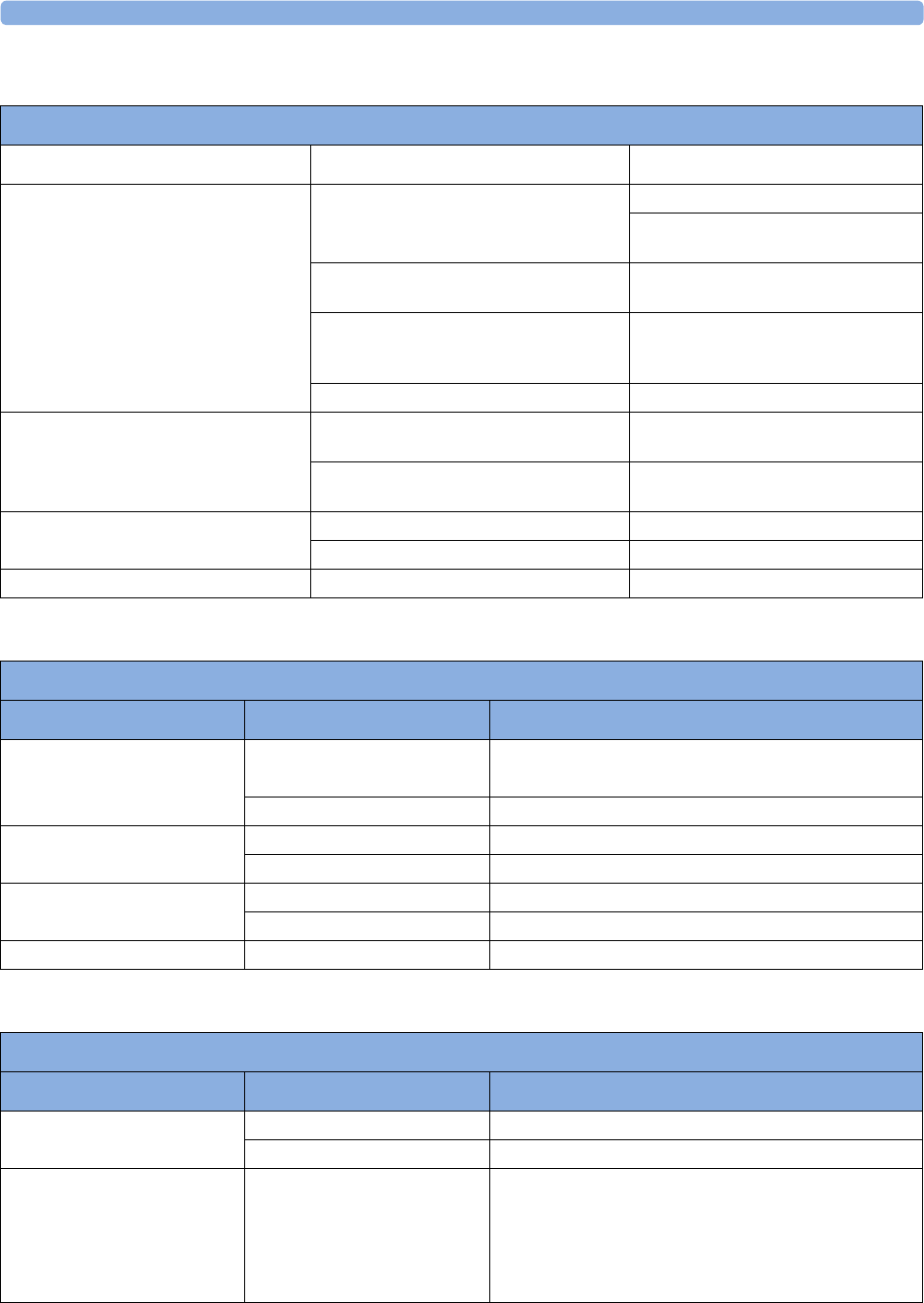
40 Specifications
459
MX400/450/500/550 Monitor
MX600/700/800 Monitor
X2 (M3002A) and External Power Supply (M8023A)
MX400/450/500/550 Monitor
Item Condition Range
Temperature Range Operating 0 to 40 ºC (32 to 104 ºF)
0 to 35°C (32 to 95°F) when charging the
battery
0 to 35°C (32 to 95°F) if an X2 is mounted
on the rear.
0 to 35°C (32 to 95°F) if IntelliVue
Instrument Telemetry Wireless Network is
connected.
Storage -20 to 60°C (-4 to 140°F
Humidity Range Operating 15% to 95% Relative Humidity (RH) (non
condensing)
Storage 5% to 95% Relative Humidity (RH) (non
condensing)
Altitude Range Operating -500 m to 3000 m (10000 ft)
Storage -500 m to 4600 m (15000 ft)
Ingress Protection IP21
MX600/700/800 Monitor
Item Condition Range
Temperature Range Operating 0 to 40°C (32 to 100°F)
0 to 35°C (32 to 95°F) when equipped with the iPC
Storage -20 to 60°C (-4 to 140°F)
Humidity Range Operating 15% to 95% Relative Humidity (RH) (non condensing)
Storage 5% to 95% Relative Humidity (RH)
Altitude Range Operating -500 m to 3000 m (-1600 to 10000 ft)
Storage -500 m to 4600 m (-1600 to 15000 ft)
Ingress Protection IPX1
X2 (M3002A) and External Power Supply (M8023A)
Item Condition Range
Temperature Range Operating 0 to 40°C (32 to 104°F)
Storage including transportation -20 to 60°C (-4 to 140°F)
Temperature Range when
charging the battery or when
equipped with IntelliVue
Instrument Telemetry or the
IntelliVue 802.11 Bedside
Adapter
Operating 0 to 35°C (32 to 95°F)
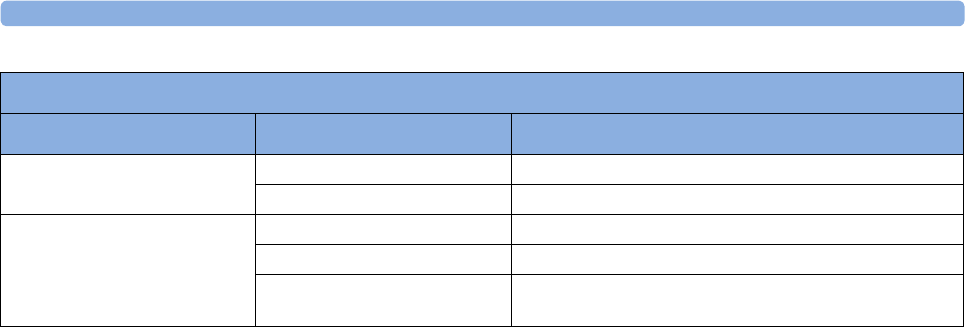
40 Specifications
460
Humidity Range Operating 15% to 95% Relative Humidity (RH)
Storage including transportation 5% to 95% Relative Humidity (RH)
Altitude Range Operating -500 m to 3000 m (-1600 to 10000 ft)
Storage including transportation -500 m to 4600 m (-1600 to 15000 ft)
X2 IP32 (protected against ingress of water when the water is
dripping vertically and the monitor is tilted up to 15°)
X2 (M3002A) and External Power Supply (M8023A)
Item Condition Range
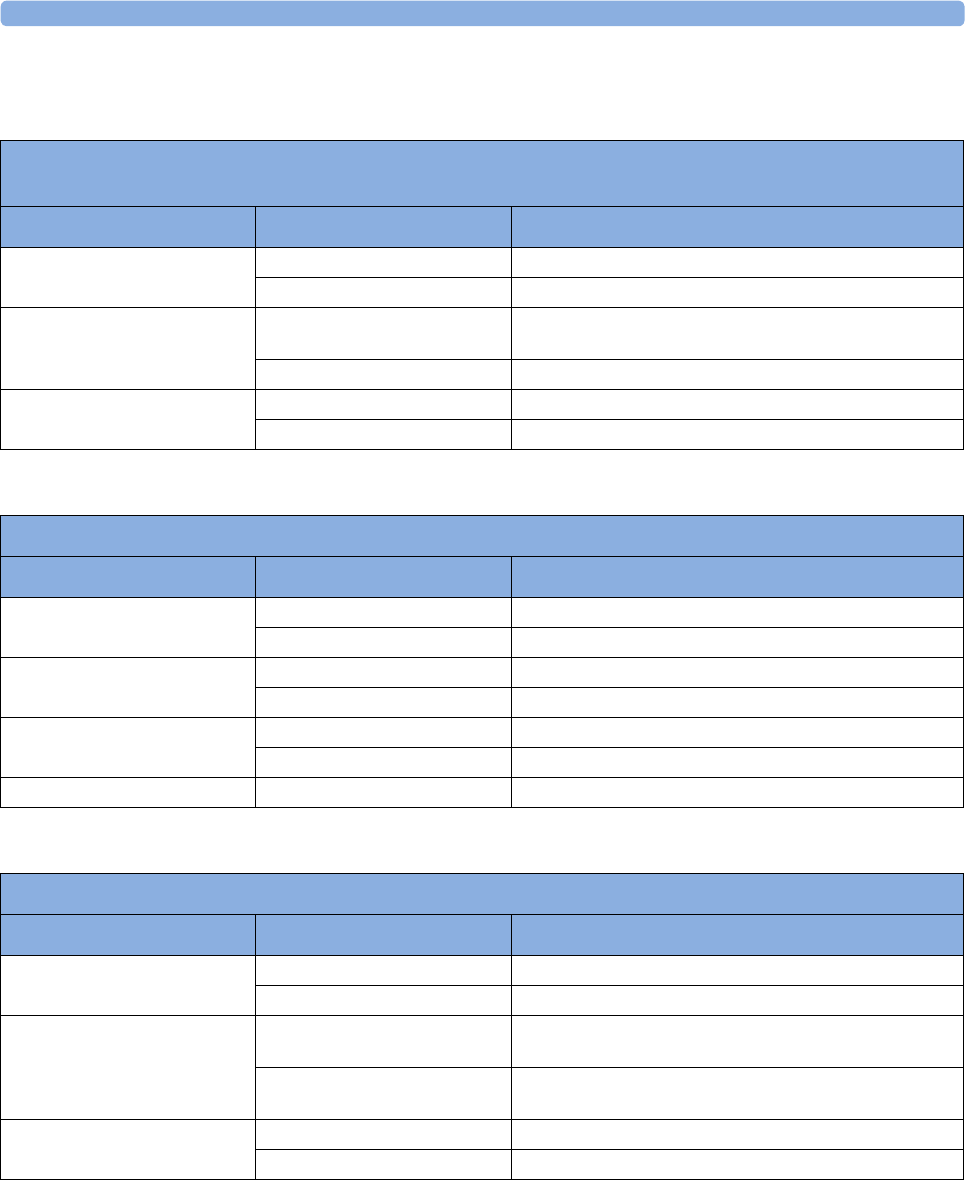
40 Specifications
461
Devices for Acquiring Measurements and 8-Slot Flexible Module
Rack
4-Slot Flexible Module Rack
Thermal Array Recorder Module M1116B/C
Multi-measurement Module M3001A, MMS Extensions M3016A M3015A, M3014A, M3012A, Measurement
Modules, and 8-Slot Flexible Module Rack M8048A
Item Condition Range
Temperature Range Operating 0 to 45°C (32 to 113°F)
Non-operating -40 to 70°C (-40 to 158°F)
Humidity Range Operating 95% Relative Humidity (RH) max. @ 40°C (104°F). M3015A
only non-condensing.
Non-operating 90% Relative Humidity (RH) max. @ 65°C (150°F)
Altitude Range Operating -500 m to 4600 m (-1600 to 15000 ft)
Non-operating -500 m to 15300 m (-1600 to 50000 ft)
4-Slot Flexible Module Rack 865243
Item Condition Range
Temperature Range Operating 0 to 40°C (32 to 100°F)
Storage -20 to 60°C (-4 to 140°F)
Humidity Range Operating 15% to 95% Relative Humidity (RH) (non condensing)
Storage 5% to 95% Relative Humidity (RH)
Altitude Range Operating -500 m to 3000 m (-1600 to 10000 ft)
Storage -500 m to 4600 m (-1600 to 15000 ft)
Ingress Protection IPX1
Thermal Array Recorder Module M1116B/C
Item Condition Range
Temperature Range Operating +5 to 45°C (41 to 113°F)
Non-operating -10 to 70°C (14 to 158°F)
Humidity Range Operating 95% Relative Humidity (RH) max. @ 40°C (104°F) (non
condensing)
Non-operating 90% Relative Humidity (RH) max. @ 65°C (150°F) (non
condensing)
Altitude Range Operating up to 3048 m (10000 ft)
Non-operating up to 3048 m (10000 ft)
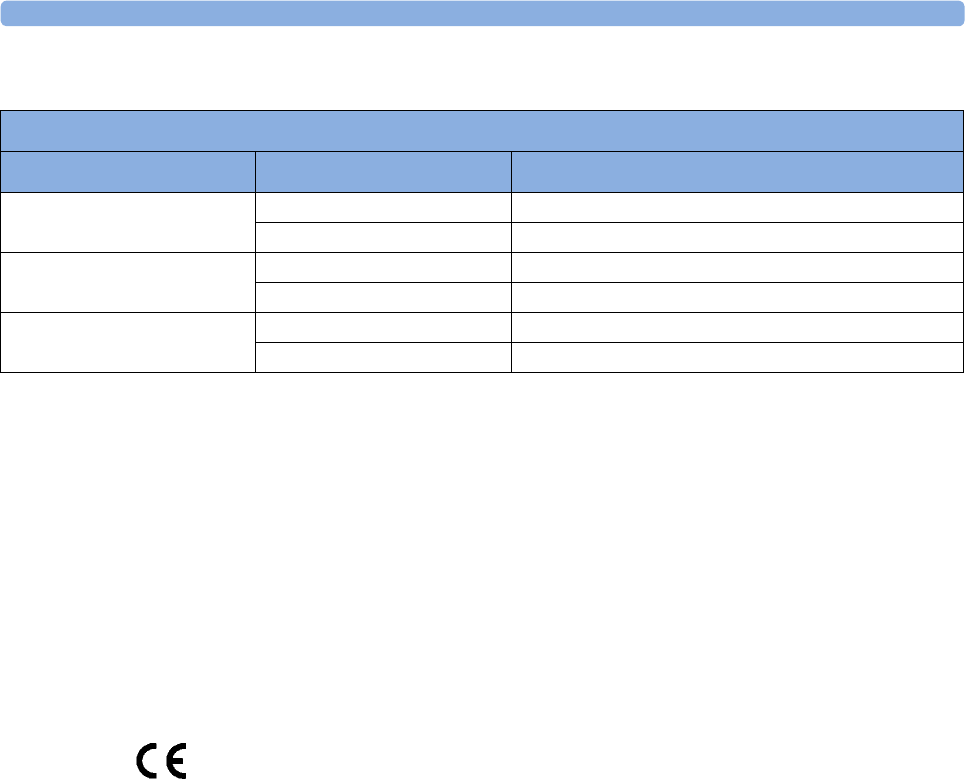
40 Specifications
462
Remote Control
EMC and Radio Regulatory Compliance
This ISM device complies with Canadian ICES-001. Cet appareil ISM est conforme à la norme
NMB-001 du Canada.
Short Range Radio Interface (Monitors and 865244 Remote Control)
FCC and Industry Canada Radio Compliance: This device complies with Part 15 of the FCC Rules and
RSS-210 of Industry Canada. Operation is subject to the following two conditions: (1) this device may
not cause harmful interference, and (2) this device must accept any interference received, including
interference that may cause undesired operation. Any changes or modifications to this equipment not
expressly approved by Philips Medical Systems may cause harmful radiofrequency interference and
void your authority to operate this equipment.
The radio component contained in this device is in compliance with the essential requirements
and other relevant provisions of Council Directive 1999/5/EC (Radio Equipment and
Telecommunications Terminal Equipment Directive)
In addition the product complies with: ETSI EN 300 328; AS/NZS 4771+A1; ARIB STD-T66.
Class 1 radio equipment.
To obtain a copy of the original Declaration of Conformity, please contact Philips at the address given
in the “Manufacturer's Information” section of these Instructions for Use.
IntelliVue 802.11 Bedside Adapter (Option J35 Wireless Network
Adapter)
FCC and Industry Canada Radio Compliance: This device complies with Part 15 of the FCC Rules and
RSS-210 of Industry Canada. Operation is subject to the following two conditions: (1) this device may
not cause harmful interference, and (2) this device must accept any interference received, including
interference that may cause undesired operation. Any changes or modifications to this equipment not
expressly approved by Philips Medical Systems may cause harmful radiofrequency interference and
void your authority to operate this equipment.
The maximum antenna gain permitted (for devices in the 5250-5350 MHz and 5470-5725 MHz bands)
complies with the e.i.r.p. limits as stated in RSS-210.
The maximum antenna gain permitted (for devices in the 5725-5825 MHz band) complies with the
e.i.r.p. limits specified for point-to-point operation, as stated in RSS-210.
Remote Control 865244
Item Condition Range
Temperature Range Operating 0 to 40°C (32 to 100°F)
Storage -20 to 60°C (-4 to 140°F)
Humidity Range Operating 15% to 95% Relative Humidity (RH) (non condensing)
Storage 5% to 95% Relative Humidity (RH)
Altitude Range Operating -500 m to 3000 m (-1600 to 10000 ft)
Storage -500 m to 4600 m (-1600 to 15000 ft)
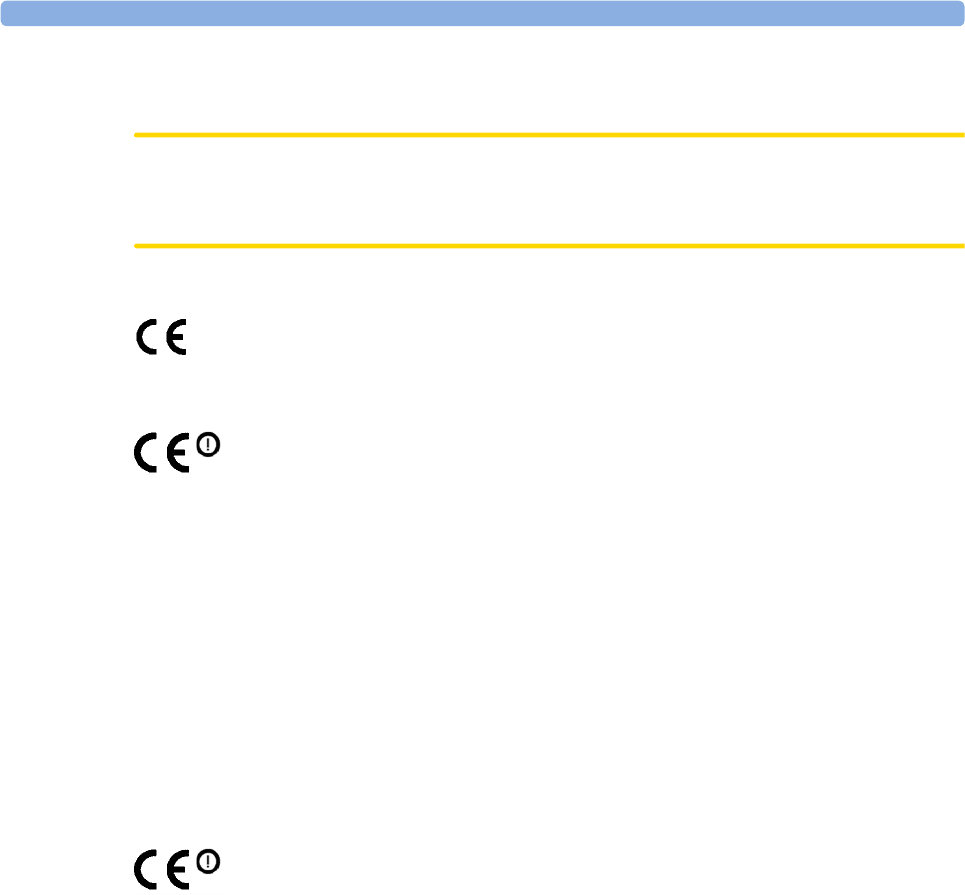
40 Specifications
463
The device for the band 5150-5250 MHz is only for indoor usage to reduce potential for harmful
interference to co-channel mobile satellite systems.
CAUTION
High power radars are allocated as primary users (meaning they have priority) of 5250-5350 MHz and
5650-5850 MHz and these radars could cause interference and /or damage to LE-LAN devices.
IntelliVue 802.11 Bedside Adapter CE compliances:
This device is compliant to Council Directive 2006/95/EC (Low voltage directive) & 2004/
108/EC (EMC directive) & 1999/5/EC (Radio Equipment and Telecommunications Terminal
Equipment Directive)
The radio device used in this product is in compliance with the essential requirements and
other relevant provisions of Directive 1999/5/EC (Radio Equipment and Telecommunications
Terminal Equipment Directive). Class 2 radio equipment. Member states may apply restrictions on
putting this device into service or placing it on the market. This product is intended to be connected to
the Publicly Available Interfaces (PAI) and used throughout the EEA.
IntelliVue Instrument Telemetry ISM (2.4GHz Option J47 WMTS
Adapter)
FCC and Industry Canada Radio Compliance: This device complies with Part 15 of the FCC Rules and
RSS-210 of Industry Canada. Operation is subject to the following two conditions: (1) this device may
not cause harmful interference, and (2) this device must accept any interference received, including
interference that may cause undesired operation. Any changes or modifications to this equipment not
expressly approved by Philips Medical Systems may cause harmful radiofrequency interference and
void your authority to operate this equipment.
The radio device used in this product is in compliance with the essential requirements and
other relevant provisions of Directive 1999/5/EC (Radio Equipment and Telecommunications
Terminal Equipment Directive). Class 2 radio equipment. Member states may apply restrictions on
putting this device into service or placing it on the market. This product is intended to be connected to
the Publicly Available Interfaces (PAI) and used throughout the EEA.
IntelliVue Instrument Telemetry WMTS (US only)
FCC Radio Compliance: This device complies with Part 15 of the FCC Rules. Operation is subject to
the following two conditions: (1) this device may not cause harmful interference, and (2) this device
must accept any interference received, including interference that may cause undesired operation.
Operation of this equipment requires the prior coordination with a frequency coordinator designated
by the FCC for the Wireless Medical Telemetry Service.

40 Specifications
464
Monitor Performance Specifications
MX400/450/500/550 Performance Specifications
MX400/450/500/550
Power Specifications Power Consumption <70 W average
Line Voltage 100 to 240 V
Current 1.2 to 0.5 A
Frequency 50/60 Hz
Battery Specifications
MX400 Operating time (with one fully
charged battery)
Basic monitoring configurations 5 hours
(Brightness is set to Optimum, MMS connected, NBP
measurement every 15 minutes).
Extended monitoring configuration: 3.5 hours
(Brightness set to Optimum, MMS and MMS extension
connected, NBP every 15 minutes, Recorder, Pressure,
Temperature modules connected)
Charge Time When monitor is off: approx. 3 hours
When monitor is in use: approx. 5 hours
MX450 Operating time (with one fully
charged battery)
Basic monitoring configurations 4 hours
(Brightness is set to Optimum, MMS connected, NBP
measurement every 15 minutes).
Extended monitoring configuration: 3 hours
(Brightness set to Optimum, MMS and MMS extension
connected, NBP every 15 minutes, Recorder, Pressure,
Temperature modules connected)
Charge Time When monitor is off: approx. 3 hours
When monitor is in use: approx. 5 hours
MX 500 Operating time (with one fully
charged battery)
Basic monitoring configurations 3 hours
(Brightness is set to Optimum, MMS connected, NBP
measurement every 15 minutes).
Extended monitoring configuration: 2.5 hours
(Brightness set to Optimum, MMS and MMS extension
connected, NBP every 15 minutes, Recorder, Pressure,
Temperature modules connected)
Charge Time When monitor is off: approx. 3 hours
When monitor is in use: approx. 5 hours
MX 550 Operating time (with one fully
charged battery)
Basic monitoring configurations 2.5 hours
(Brightness is set to Optimum, MMS connected, NBP
measurement every 15 minutes).
Extended monitoring configuration: 2 hours
(Brightness set to Optimum, MMS and MMS extension
connected, NBP every 15 minutes, Recorder, Pressure,
Temperature modules connected)
Charge Time When monitor is off: approx. 3 hours
When monitor is in use: approx. 5 hours
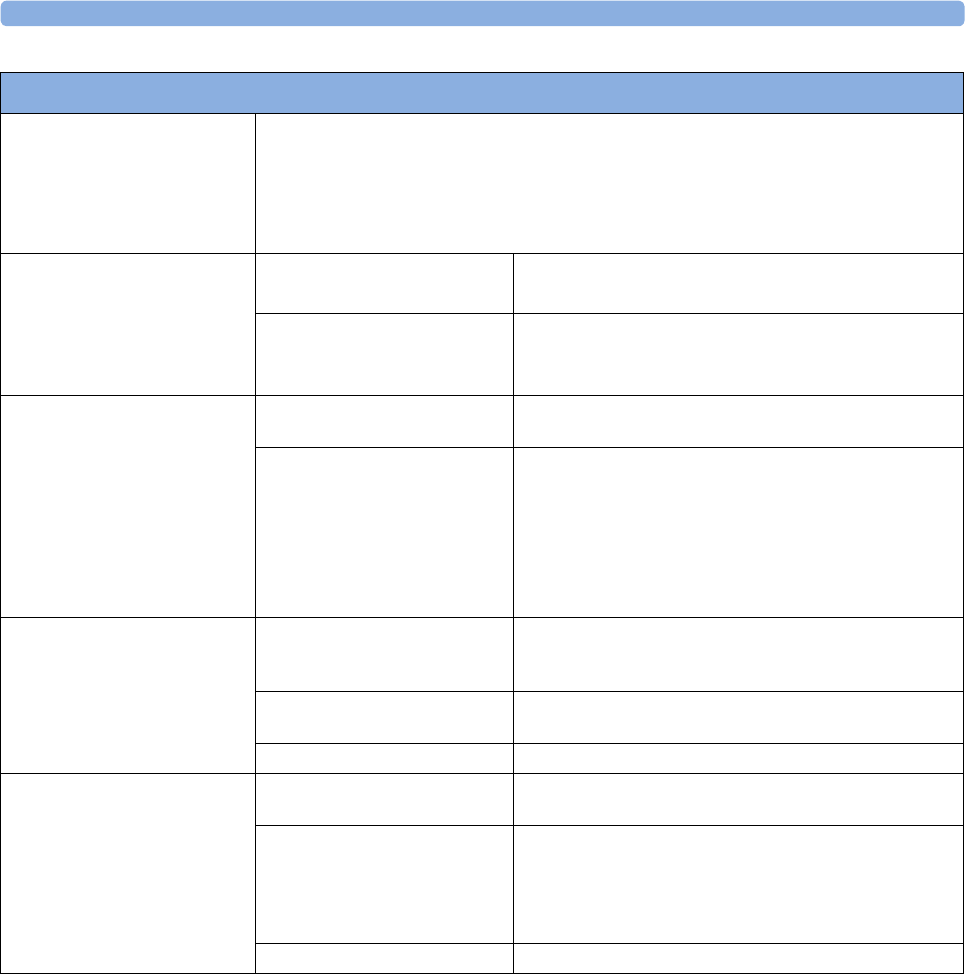
40 Specifications
465
Sounds Audible feedback for user input
Prompt tone
QRS tone, or SpO2 modulation tone
4 different alarm sounds
Remote tone for alarms on other beds in network
Tone for Timer expired
Display Wave Speeds Available for standard waves 6.25 mm/s, 12.5 mm/s, 25 mm/s, 50 mm/s
with ±5% accuracy (guaranteed only for integrated displays)
Available for EEG and BIS waves 6.25 mm/s, 12.5 mm/s, 15 mm/s, 25 mm/s, 30 mm/s, 50
mm/s
with ±5% accuracy (guaranteed only for integrated displays)
Trends Resolution 12, 16, 24 or 32 numerics @ 12 sec, 1 minute, 5 minute
resolution
Information Multiple choices of number of numerics, resolution and
duration depending on trend option and application area.
For example:
neonatal extended 12 numerics, 24 hours @ 12 secs or
32 numerics 32 hours @ 1 minute
intensive care extended: 16 numerics 120 hours @ 5 minutes
anesthesia extended 32 numerics 9 hours @ 12 seconds
High Res Trend Waves Measurements available HR, SpO2, Resp, tcpO2, Pulse, Perf, tcpCO2, CO2, A B P, PAP,
CVP, ICP, CPP, BIS, CCO, AWP, Anesthetic Agents, Delta
SpO2, inO2
Resolution Measurement samples are taken at a resolution of four samples
per second
Update speed Waves are drawn at a speed of 3 cm/minute
Events Information Trigger condition and time, event classification and associated
detailed view of episode data
Episode data Configurable, either:
4 minutes of high resolution trend or
20 minutes of numerics trend @ 12 sec. resolution or
15 seconds of 4 waves @ 125 samples/sec. (Snapshot)
including all current numerics, alarms and inops
Capacity (max.) 25 or 50 events for either 8 or 24 hours
MX400/450/500/550
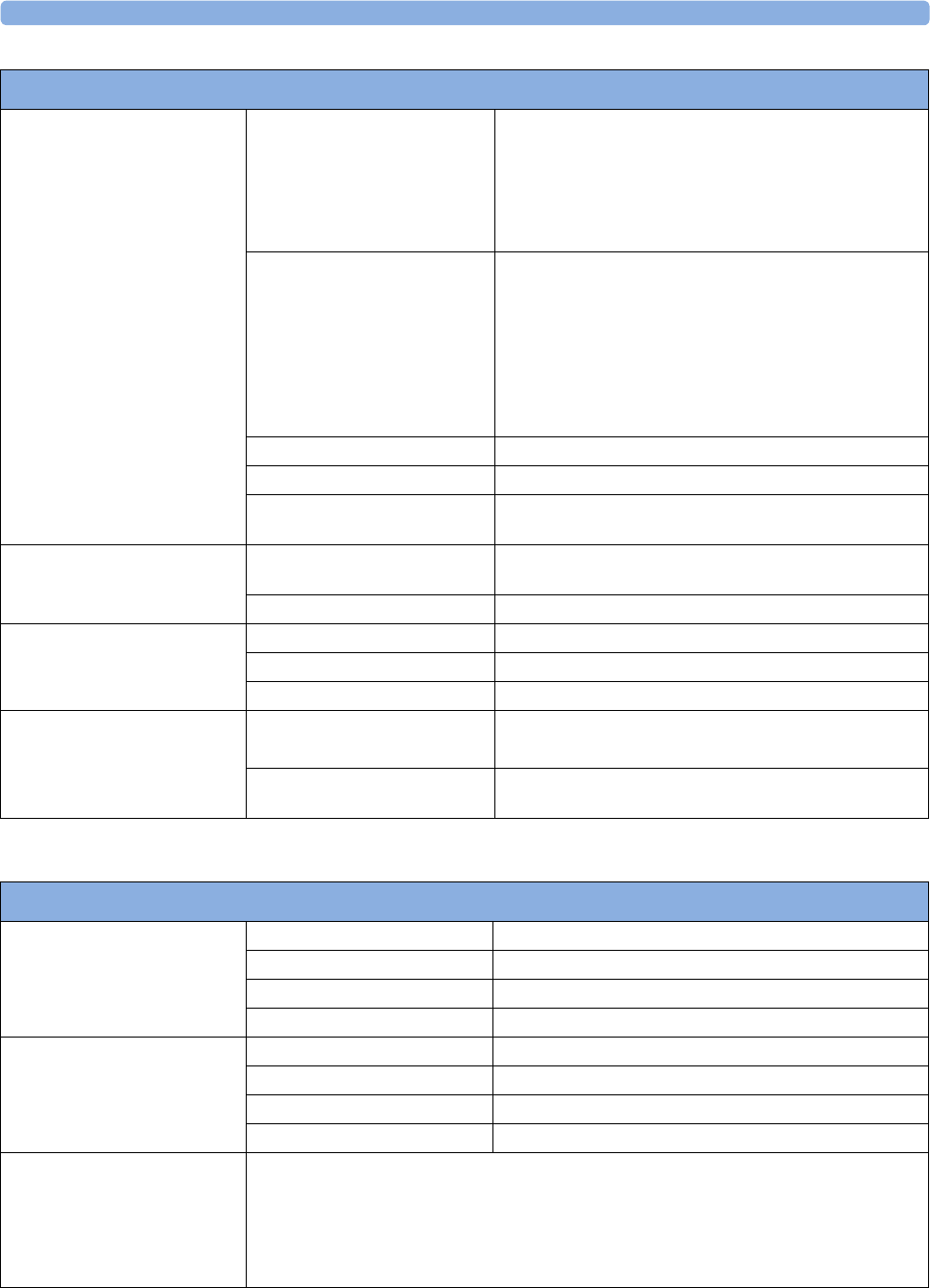
40 Specifications
466
MX600/700/800 Performance Specifications
Alarm Signal System alarm delay
The system alarm delay is the
processing time the system needs
for any alarm to be indicated on the
monitor, after the measurement has
triggered the alarm.
less than 4 seconds
Delay for alarm availability on the
network
This is the time needed after alarm
indication on the monitor until the
alarm signal is available on the
network, to the IntelliVue
Information Center or for
transmission to other systems.
less than 5 seconds
Pause duration 1,2,3 minutes or infinite, depending on configuration
Extended alarm pause 5 or 10 minutes
Sound pressure range min. 0 dB(A)
max. 45-85 dB(A)
Review Alarms Information all alarms / inops, main alarms on/off, alarm silence and time
of occurrence
Capacity 300 items
Real Time Clock Range from: January 1, 1997, 00:00 to: December 31, 2080, 23:59
Accuracy better than 4 seconds per day
Hold Time infinite if powered by AC; otherwise at least 24 hours
Buffered Memory Hold Time if powered by AC: infinite
without power: at least 8 hours
Contents Active settings, trends, patient data, realtime reports, events,
review alarms
MX600/700/800
Power Specifications Power Consumption <200 W average
Line Voltage 100 to 240 V
Current 1.9 to 0.9 A
Frequency 50/60 Hz
Indicators Alarms Off red or yellow LED with crossed out alarms symbol
Alarms red/yellow/light blue (cyan) LED
On/Standby/Error green/red LED integrated in power switch
External Power green LED
Sounds Audible feedback for user input
Prompt tone
QRS tone, or SpO2 modulation tone
4 different alarm sounds
Remote tone for alarms on other beds in network
Tone for Timer expired
MX400/450/500/550
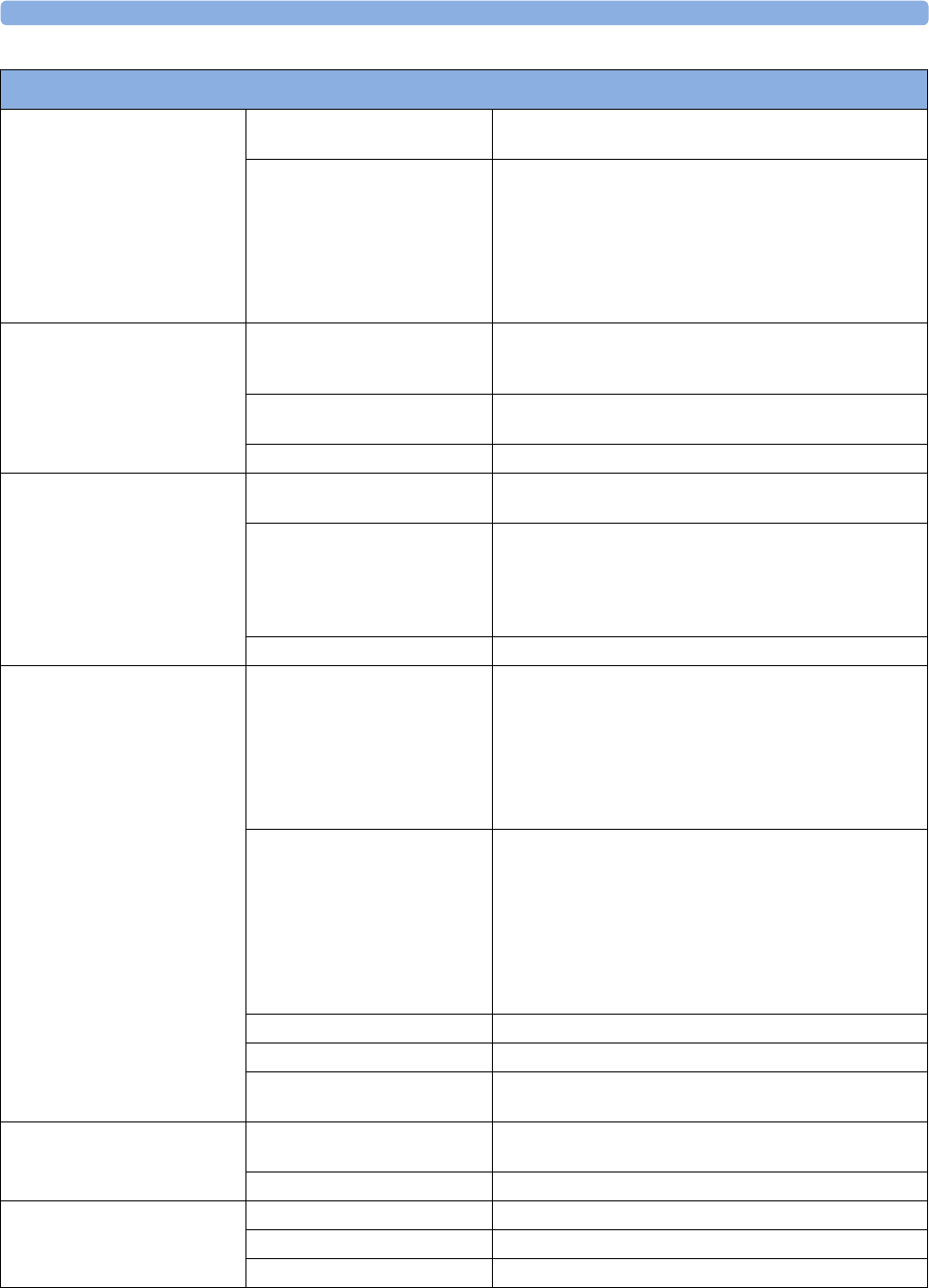
40 Specifications
467
Trends Resolution 12, 16, 24 or 32 numerics @ 12 sec, 1 minute, 5 minute
resolution
Information Multiple choices of number of numerics, resolution and
duration depending on trend option and application area.
For example:
neonatal extended 12 numerics, 24 hours @ 12 secs or
32 numerics 32 hours @ 1 minute
intensive care extended: 16 numerics 120 hours @ 5 minutes
anesthesia extended 32 numerics 9 hours @ 12 seconds
High Res Trend Waves Measurements available HR, SpO2, Resp, tcpO2, Pulse, Perf, tcpCO2, CO2, ABP, PAP,
CVP, ICP, CPP, BIS, CCO, AWP, Anesthetic Agents, Delta
SpO2, inO2
Resolution Measurement samples are taken at a resolution of four samples
per second
Update speed waves are drawn at a speed of 3 cm/minute
Events Information trigger condition and time, event classification and associated
detailed view of episode data
Episode data configurable, either:
4 minutes of high resolution trend or
20 minutes of numerics trend @ 12 sec. resolution or
15 seconds of 4 waves @ 125 samples/sec. (Snapshot)
including all current numerics, alarms and inops
Capacity (max.) 25 or 50 events for either 8 or 24 hours
Alarm Signal System alarm delay
The system alarm delay is the
processing time the system needs
for any alarm to be indicated on
the monitor, after the
measurement has triggered the
alarm.
less than 4 seconds
Delay for alarm availability on the
network
This is the time needed after alarm
indication on the monitor until the
alarm signal is available on the
network, to the IntelliVue
Information Center or for
transmission to other systems.
less than 5 seconds
Pause duration 1,2,3 minutes or infinite, depending on configuration
Extended alarm pause 5 or 10 minutes
Sound pressure range min. 0 dB(A)
max. 45-85 dB(A)
Review Alarms Information all alarms / inops, main alarms on/off, alarm silence and time
of occurrence
Capacity 300 items
Real Time Clock Range from: January 1, 1997, 00:00 to: December 31, 2080, 23:59
Accuracy better than 4 seconds per day
Hold Time infinite if powered by AC; otherwise at least 24 hours
MX600/700/800
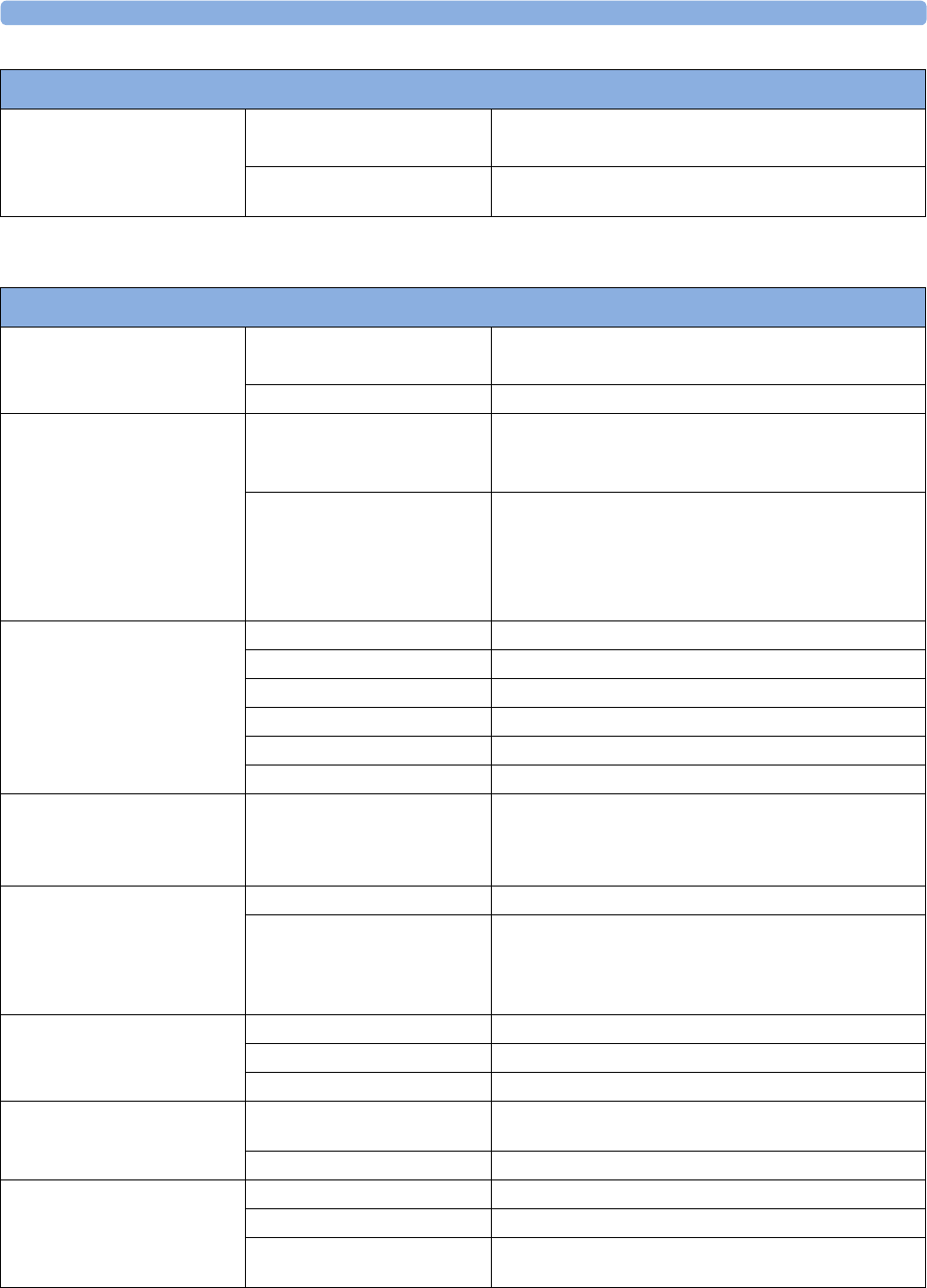
40 Specifications
468
X2 Performance Specifications
Buffered Memory Hold Time if powered by AC: infinite
without power: at least 8 hours
Contents Active settings, trends, patient data, realtime reports, events,
review alarms
MX600/700/800
X2 (M3002A) Performance Specifications
Power Specifications Power consumption <12 W average
<30 W while battery is loading
Operating Voltage 36 to 60 V DC floating
Battery Specifications Operating Time
(with new, fully charged battery at
25°C)
Basic monitoring configuration: 2.5 hours
(Brightness set to optimum, ECG/Resp, SpO2 measurements
in use, NBP measurement every 15 minutes)
Charge Time When X2 is off: 2 hours
When X2 is in use, and connected to a monitor, without
extensions: 12 hours approx.
When X2 is in use, and connected to the external power supply
(M8023A), without extensions: 12 hours approx.
Indicators Alarms Off red or yellow LED with crossed-out alarm symbol
Alarms red/yellow/light blue (cyan) LED
On/Standby / Error green / red LED
AC Power green LED
Battery yellow (charging)/red blinking (empty) LED
External Power green LED
Sounds Audible feedback for user input
Prompt tone
QRS tone, or SpO2 modulation tone
4 different alarm sounds
Trends Resolution 12 or 16 numerics @ 12 sec, 1 minute, 5 minute resolution.
Information Multiple choices of number of numerics, resolution and
duration depending on trend option and application area.
For example:
For neonatal, you can choose between 12 and 16 numerics.
Alarm signal System alarm delay less than 4 seconds
Pause duration 1,2,3 minutes or infinite, depending on configuration
Extended alarm pause 5 or 10 minutes
Review Alarms Information all alarms / inops, main alarms on/off, alarm silence and time
of occurrence
Capacity 300 items
Real Time Clock Range from: January 1, 1997, 00:00 to: December 31, 2080, 23:59
Accuracy <4 seconds per day (typically)
Hold Time infinite if powered by host monitor or external power supply;
otherwise at least 48 hours
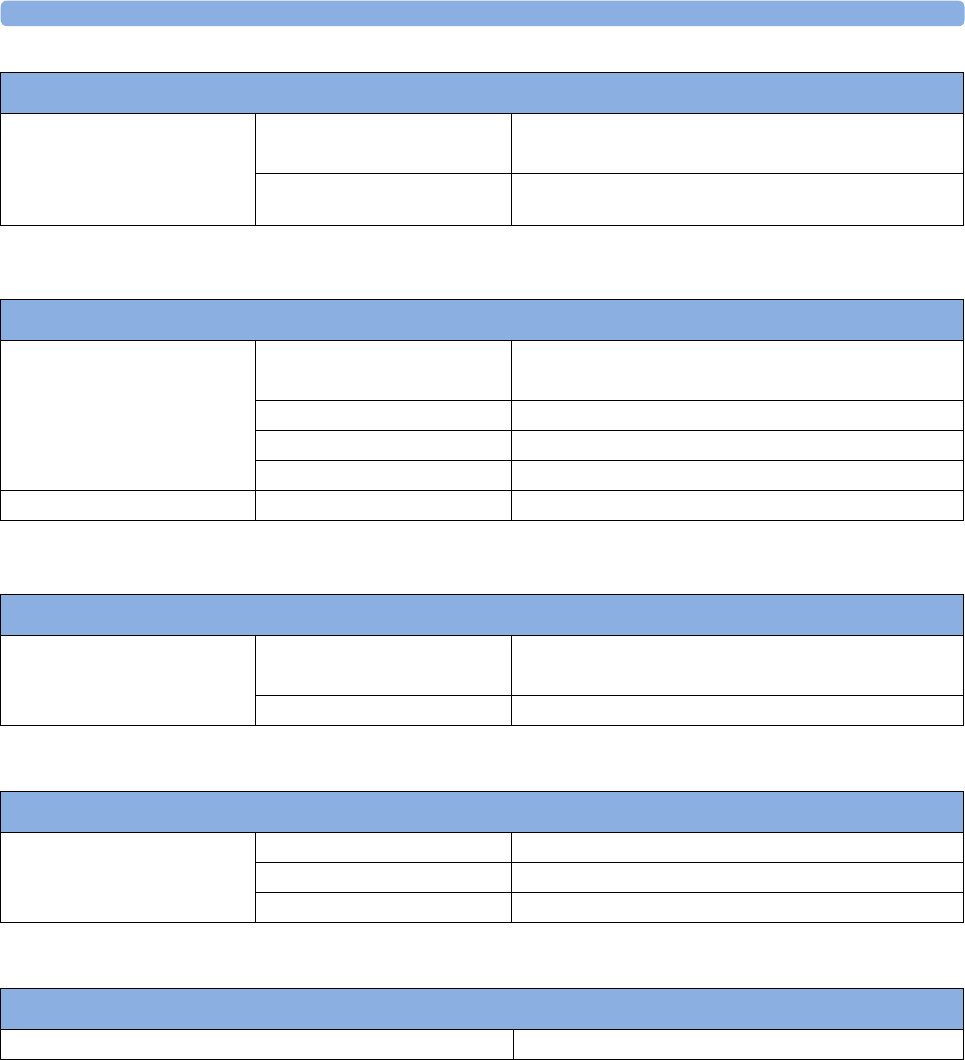
40 Specifications
469
M8023A External Power Supply Performance Specifications
MMS M3001A Performance Specifications
Integrated PC (iPC)
865244 Remote Control
Buffered Memory Hold Time if powered by host monitor or external power supply: infinite
without power: at least 48 hours (typical: >72 hours)
Contents Active settings, trends, patient data, realtime reports, review
alarms
X2 (M3002A) Performance Specifications
M8023A External Power Supply (for M3002A) Performance Specifications
Power Specifications Power consumption <12 W average
<30 W peak
Line Voltage 100 to 240 V ~
Current 1.3 to 0.7 A
Frequency 50/60 Hz
Indicators Power green LED
M3001A MMS Performance Specifications
Trends Trend Data Buffered Memory if powered by monitor mains connection via MSL: infinite
without power applied: at least 6 hours
Contents trend data, patient identification and all active settings
Integrated PC (iPC) Performance Specifications
PC Components Processor Intel Core 2 Duo SP9300/SP9400
Solid-state drive 100 GB or above
RAM 4 GB
865244 Remote Control Performance Specifications
Power (when not connected to the USB interface of the monitor) Two AA primary cells
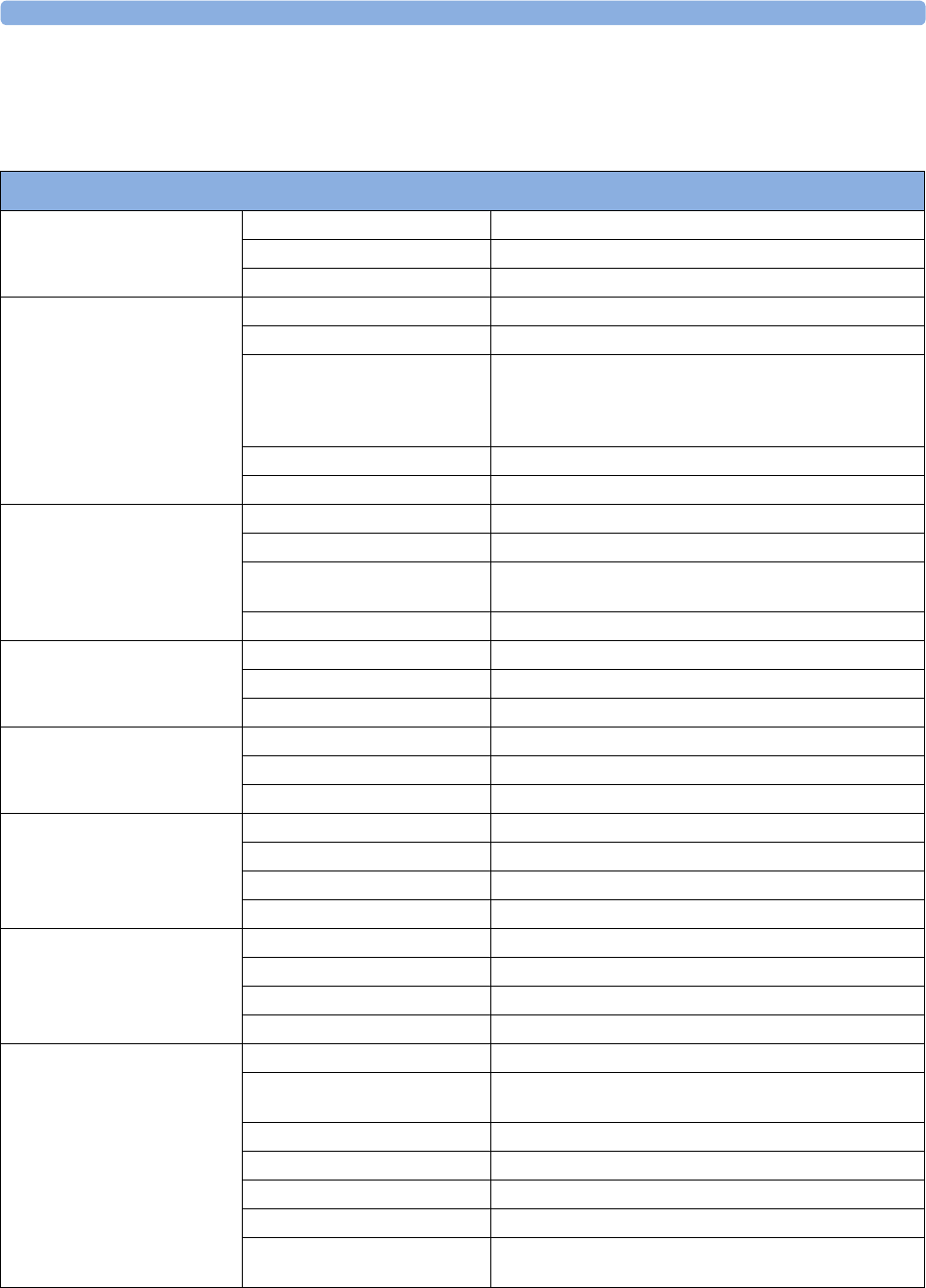
40 Specifications
470
Interface Specifications
MX400/450/500/550/600/700/800 Interface Specifications
MX400/450/500/550/600/700/800
Network Standard 100-Base-TX (IEEE 802.3 Clause 25)
Connector RJ45 (8 pin)
Isolation basic insulation (reference voltage: 250 V; test voltage: 1500 V)
MIB/RS232 Standard IEEE 1073-3.2-2000
Connectors RJ45 (8 pin)
Mode Software-controllable
BCC (RxD/TxD cross over) or
DCC (RxD/TxD straight through) not available for the
advanced system interface MX400/450/500/550
Power 5 V ±5 %, 100 mA (max.)
Isolation basic insulation (reference voltage: 250 V; test voltage: 1500 V)
USB Interface Standard USB 2.0 full-speed (embedded host)
Connector USB series "Standard A" receptacle
Power Low power port 4.4V min; max. load for all ports together
500 mA
Isolation none
RS232 (Standard) Connector RJ45 (8-pin)
Power none
Isolation basic insulation (reference voltage: 250 V; test voltage: 1500 V)
RS232 (Independent display
interface option)
Connector RJ45 (8-pin)
Power none
Isolation none
Basic Nurse Call Relay Connector modular Jack 6P6C, active open and closed contact
Contact <=100 mA, <=24 V DC
Isolation basic insulation (reference voltage: 250 V; test voltage: 1500 V)
Delay <[Configured Latency +0.5] sec
Flexible Nurse Call Relay Connector 20 pin MDR (Mini D-Ribbon), active open and closed contacts
Contact <=100 mA, <=24 V DC
Isolation basic insulation (reference voltage: 250 V; test voltage: 1500 V)
Delay <[Configured Latency +0.5] sec
IntelliBridge EC10 Interface
board
Connector RJ45 (8-pin)
Speed 1200 Bd, 2400 Bd, 4800 Bd, 9600 Bd, 19200 Bd, 38400 Bd,
57600 Bd, or 115200 Bd signaling speed
Character bits 5-8
Stop bits 1 or 2
Parity Even or odd parity generation and checking
Power 5 V±5 % @ 0-100 mA
Isolation double insulation (reference voltage: 250 V; test voltage: 4000
V)
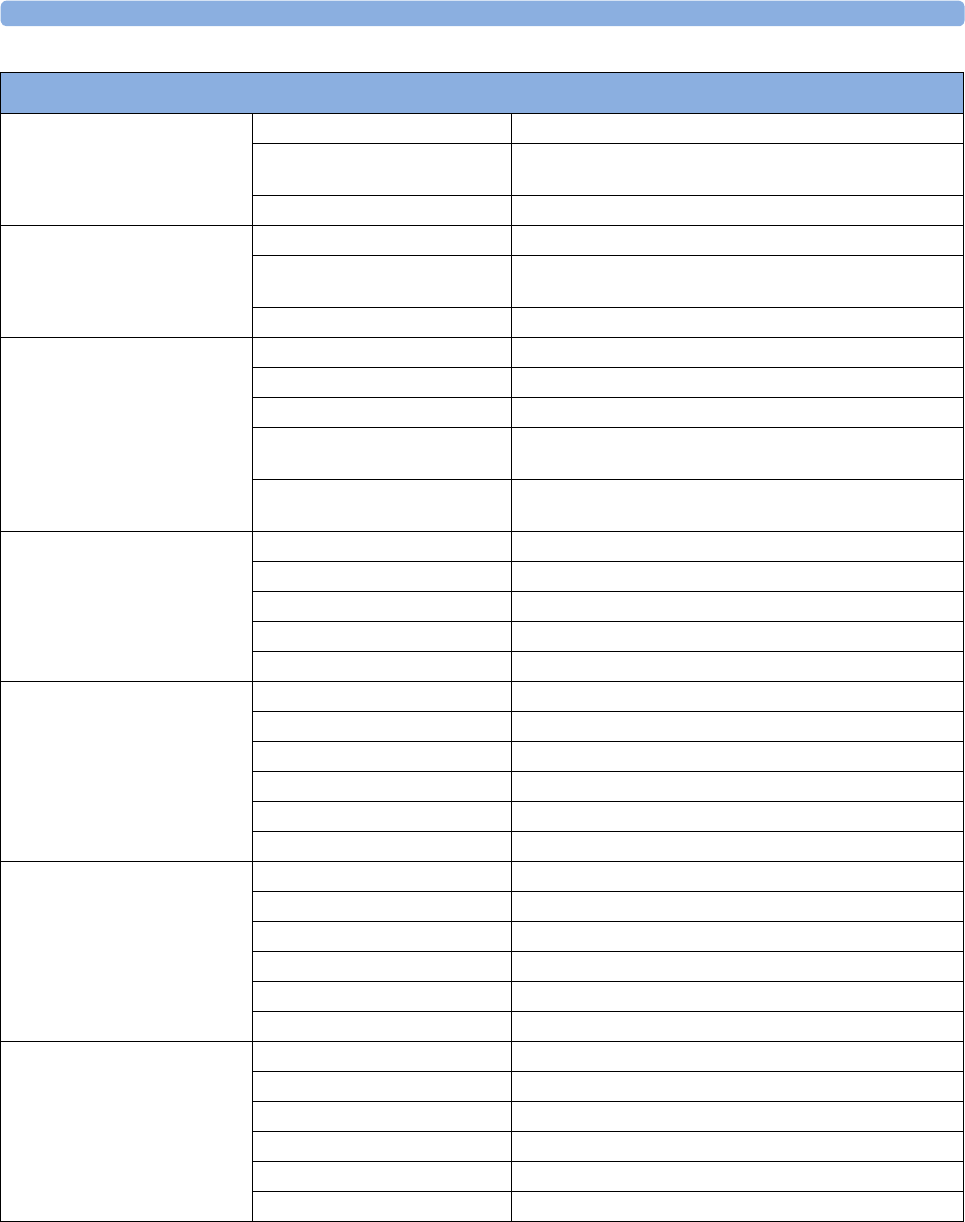
40 Specifications
471
IntelliVue Instrument
Telemetry Wireless Network
(USA only)
Type Internal WMTS Adapter
Technology compatible with Philips IntelliVue Telemetry System (ITS),
cellular infrastructure
Frequency Band WMTS, 1395-1400 MHz and 1427-1432 MHz
IntelliVue Instrument
Telemetry Wireless Network
(except USA)
Type Internal ISM Adapter
Technology compatible with Philips IntelliVue Telemetry System (ITS),
cellular infrastructure
Frequency Band 2.4 GHz ISM
IntelliVue 802.11 Bedside
Adapter (Wireless Network
Adapter)
Type Internal Wireless Adapter
Technology IEEE 802.11a/b/g
Frequency Band 2.4 GHz and 5 GHz Band
Modulation technique DSSS (CCK, DQPSK, DBPSK), OFDM (BPSK, QPSK, 16-
QAM, 64-QAM)
Effective radiated power (max.) MX400-MX550: 16 dBm (35 mW)
MX600-MX800: 17 dBm (50 mW)
Short Range Radio Interface Type Internal SRR interface
Technology IEEE 802.15.4
Frequency band 2.4 GHz ISM (2.400 - 2.483 GHz)
Modulation technique DSSS (O -QPSK)
Effective radiated power max. 0 dBm (1 mW)
Measurement Link (MSL)
MX600/700/800
Connectors ODU out (Proprietary)
Voltage 56 V ±10 %
Power 45 W
Power Sync. 5 V CMOS Level; 78.125 kHz (typ.)
LAN signals IEEE 802.3 10-Base-T compliant
Serial signals RS-422 compliant
Measurement Link (MSL)
MX400/450/500/550
Connectors ODU out (Proprietary)
Voltage 48 V ±10 %
Power 12 W
Power Sync. 5 V CMOS Level; 78.125 kHz (typ.)
LAN signals IEEE 802.3 10-Base-T compliant
Serial signals RS-422 compliant
Video Interface (standard) Connector DVI (digital and analog, single link)
Digital video signals single link TMDS
Analog video signals 0.7 Vpp@75 Ω
HSYNC/VSYNC signals TTL
DDC signals none (except for MX400/450/500/550)
DDC power 5 V +/-5% @0-55 mA
MX400/450/500/550/600/700/800
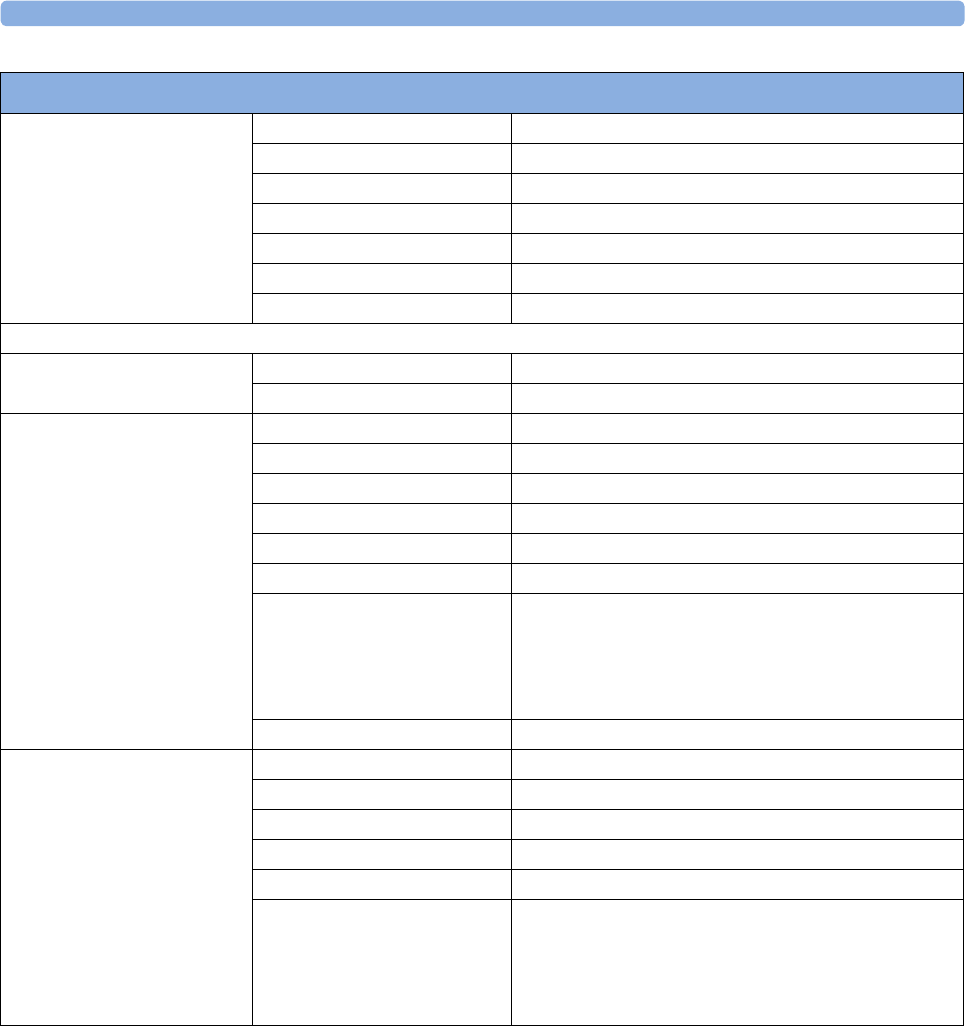
40 Specifications
472
Video Interface (Independent
display interface option)
Connector DVI (digital and analog, single link)
Pixel clock frequency 31.5 MHz - 119 MHz
Digital video signals single link TMDS
Analog video signals 0.7 Vpp@75 Ω
HSYNC/VSYNC signals TTL
DDC signals none
DDC power 5 V +/-5% @0-55 mA
ECG Sync Output/Analog ECG Output (1/4" stereo phone jack with tip, ring, sleeve)
General Connector 1/4" phone with tip, ring, sleeve
Isolation functional isolation
Analog ECG Output
(ring, tip)
Full scale on display signal gain x measured ECG voltage
Gain error <15 %
Baseline offset <100 mV
Bandwidth 1 to 100 Hz
Output voltage swing ±4 V (min)
Signal delay <22 ms
Signal delay with older versions of
the M3001A MMS
[identifiable with the serial number
prefix DE227 or DE441 and
option string #A01]
<30 ms
Pacemaker Pulse filtered and included in ECG output signal
Digital Pulse Output (ring) Output low voltage level <0.4 V @ I=-1 mA
Output high voltage level >2.4 V @ I=1 mA
Pulse Width 100 ms±10 ms (active high)
Pulse Rise Time <1 ms (from 0.4 V to 2.4 V)
Signal delay <25ms per AAMI EC13
Signal delay with older versions of
the M3001A MMS
[identifiable with the serial number
prefix DE227 or DE441 and
option string #A01]
<35ms per AAMI EC13
MX400/450/500/550/600/700/800
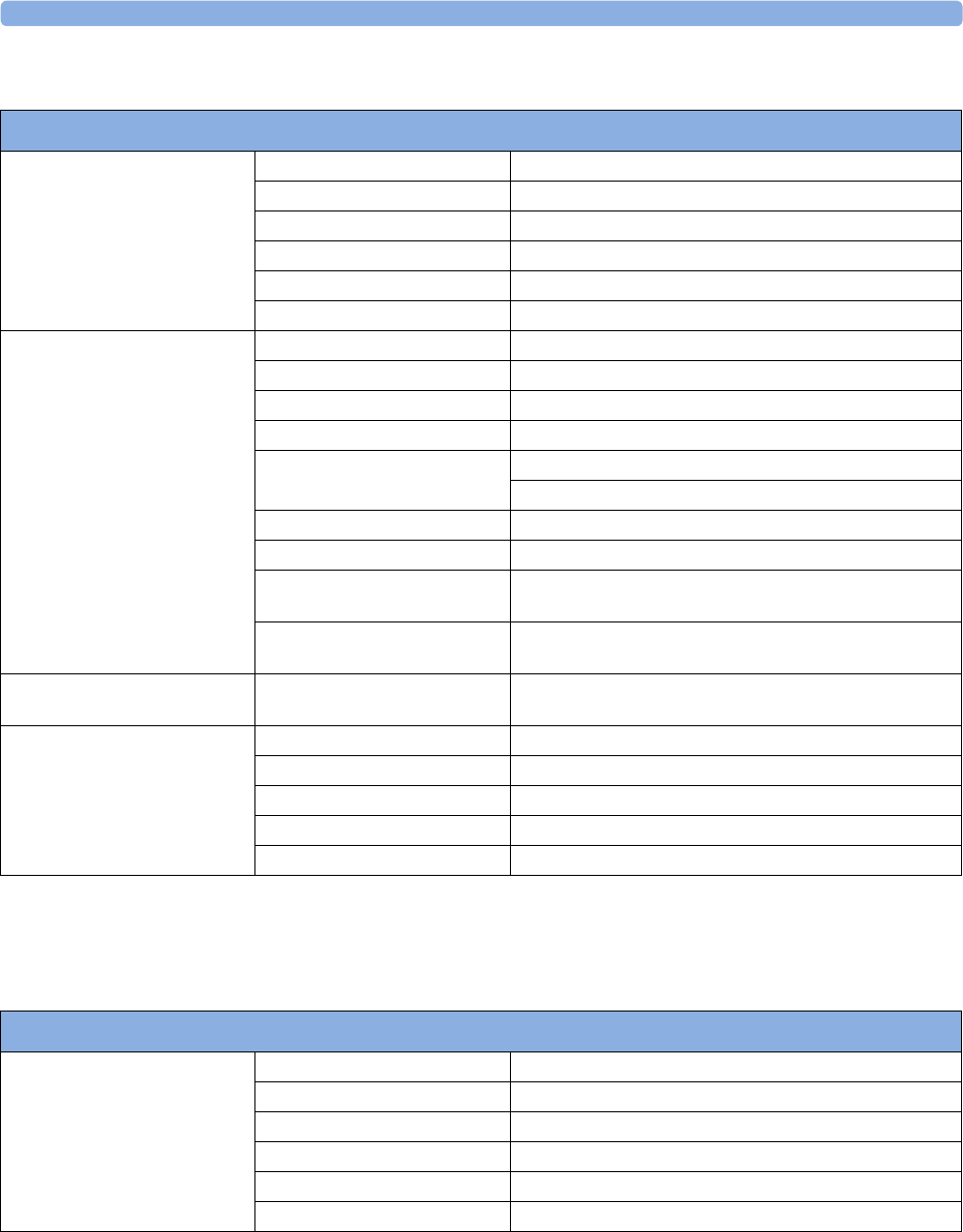
40 Specifications
473
X2 Interface Specifications
1 The short range radio interface is compatible with the following devices: TRx4841A/TRx4851A Intellivue Telemetry
System Transceiver and MX40 Wearable Patient Monitor
M8023A External Power Supply Interface Specifications
X2 (M3002A) Interface Specifications
Measurement Link (MSL) Connectors Female ODU (Proprietary)
Power 30 V to 60 V input
Power Sync. RS-422 compliant input 78.125 kHz (typical)
LAN signals IEEE 802.3 10-Base-T compliant
Serial signals RS-422 compliant
Local signals Provided for connecting MMS extensions
ECG Sync Pulse Output
(rectangular pulse)
Cable detection Yes
Marker In No
Wave Output No
Connector Binder Series 709/719
Output levels Output low <0.8 V @ I = -4 mA
Output high >2.4 V @ I = 4 mA
Isolation None
Pulse Width 100 +/- 10 ms (high)
Delay from R-wave peak to start of
pulse
20 ms maximum per AAMI EC13
Minimum required R-wave
amplitude
0.5 V
Wireless Network Device
Interface
Signals RD+/-, TD+/-: IEEE 802.3 10Base-T, PWR, GND
12.5 V ±20%, 3.5 W continuous
Short Range Radio Interface1Type Internal SRR interface
Technology IEEE 802.15.4
Frequency Band 2.4 GHz ISM (2.400 - 2.483 GHz)
Modulation Technique DSSS (O -QPSK)
Effective radiated power max. 0 dBm (1 mW)
M8023A External Power Supply (for M3002A) Interface Specifications
Measurement Link (MSL) Connectors Male ODU (Proprietary)
Power 48 V output
Power Sync. RS-422 compliant output 78.125 kHz (typical)
LAN signals IEEE 802.3 10-Base-T compliant
Serial signals RS-422 compliant output 78.125 kHz (typical)
Local signals Not connected
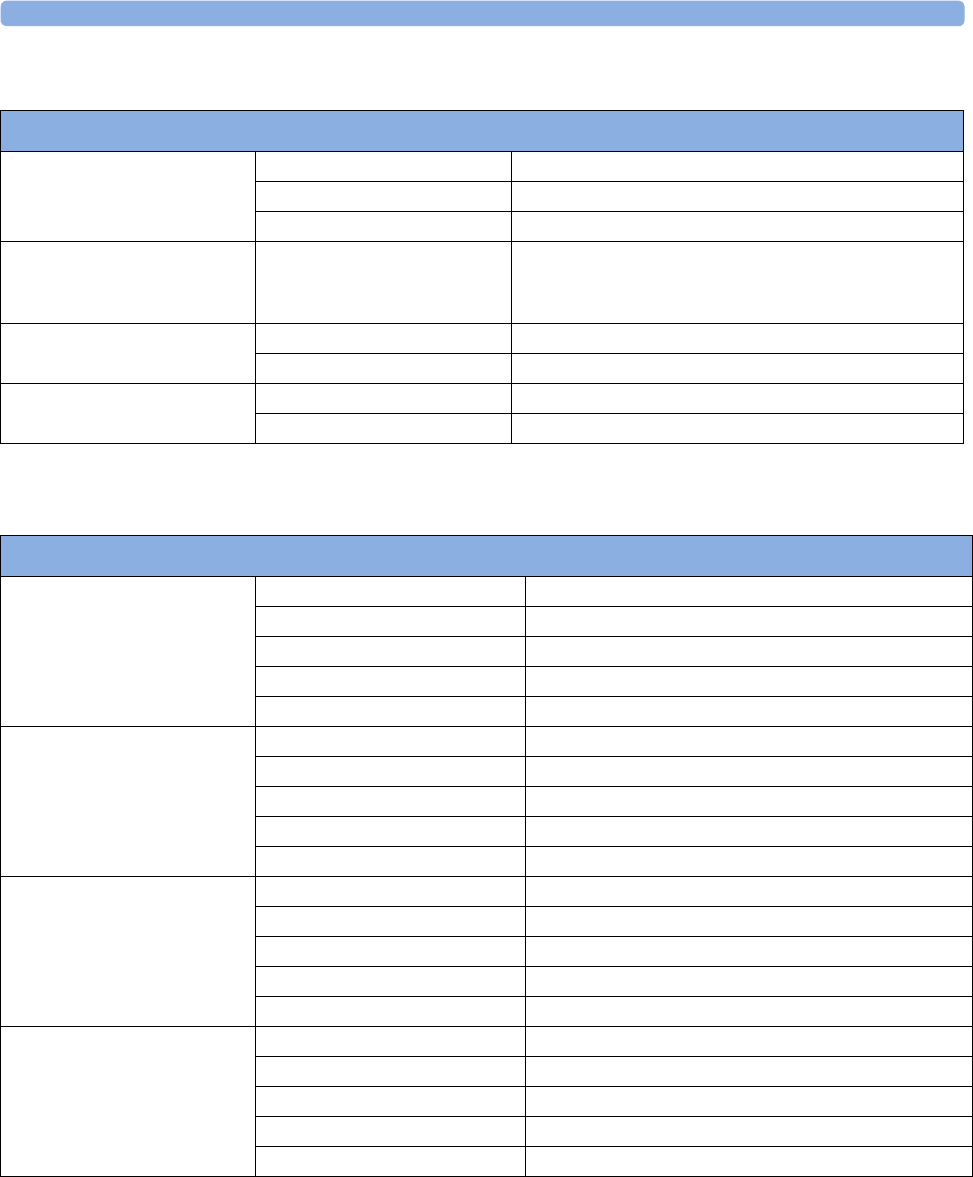
40 Specifications
474
Integrated PC (iPC) Interface Specifications
Display Specifications
Integrated PC (iPC)
Ethernet LAN (external) Connector RJ-45
LAN Signals IEE 802.3 1000-Base-T compliant
Reinforced insulation IEC 60601-1 A-k compliant
USB 6 external ports (5 rear, 1 right
side)
Type A connectors
USB 2.0 supporting high speed mode
Audio microphone input stereo 3.5 mm audio jack
headphone output stereo 3.5 mm audio jack
DVI Video with DVI-I
connector
DVI supports resolutions up to 1920x1200
VGA supports resolutions up to 2048x1536
Display Specifications
19" WSXGA+
MX600/700/800
Type 482 mm active matrix color LCD (TFT)
Resolution 1680 x 1050 (WSXGA+)
Refresh frequency 58 Hz
Useful screen 409.5 mm x 255.9 mm
Pixel size 0.244 mm x 0.244 mm
15" WXGA
MX550/600/700/800
Type 390 mm active matrix color LCD (TFT)
Resolution 1280 x 768 (WXGA)
Refresh frequency 59.9 Hz
Useful screen 334.1 mm x 200.5 mm
Pixel size 0.261 mm x 0.261 mm
12" WXGA (16:10)
MX450/500
Type 310 mm active matrix color LCD (TFT)
Resolution 1280 x 800 (WXGA 16:10)
Refresh frequency 59.9 Hz
Useful screen 261.1 mm x 163.2 mm
Pixel size 0.204 mm x 0.204 mm
9" WVGA
MX400
Type 230 mm active matrix color LCD (TFT)
Resolution 800 x 400 (WVGA)
Refresh frequency 60 Hz
Useful screen 196.8 mm x 118.1 mm
Pixel size 0.246 mm x 0.246 mm
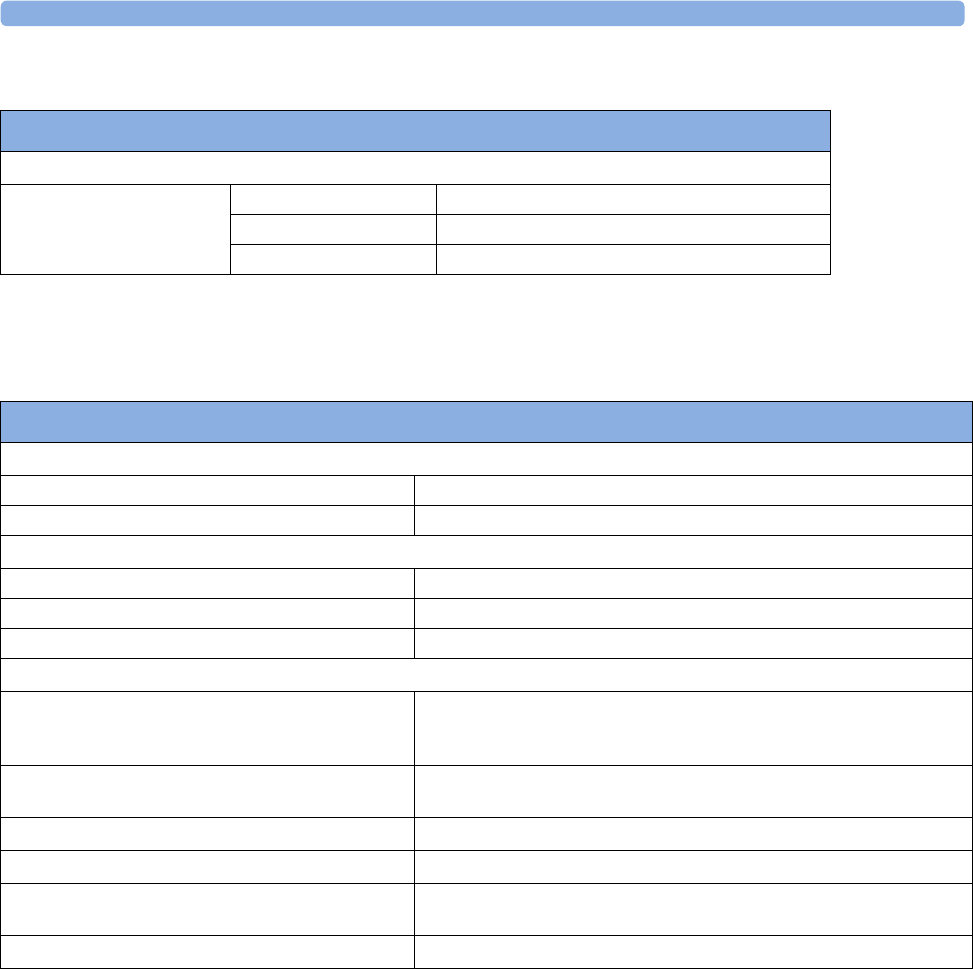
40 Specifications
475
Compatible Devices
M4605A Battery Specifications
The battery lifetime is 3 years from manufacturing date or 500 charge/discharge cycles.
Measurement Specifications
See the Appendix on Default Settings for a list of the settings the monitor is initially shipped with.
ECG/Arrhythmia/ST/QT
Complies with IEC 60601-2-25:1993 + A1:1999 /EN 60601-2-25:1995 + A1:1999,
IEC 60601-2-27:2005/EN 60601-2-27:2006, IEC 60601-2-51:2003 /EN 60601-2-51:2003 and AAMI
EC11/EC13:1991/2002.
Compatible Devices
Displays (must be approved for medical use)
M8031B XGA color 15" LCD touchscreen
M8033C SXGA color 17" LCD touchscreen
865299 SXGA color 19" LCD touchscreen
M4605A Battery Specifications
Physical Specifications
W x D x H 149 mm (5.866 in) x 89 mm (3.504 in) x 19.8 mm (0.78 in)
Weight 490 g (1.08 lb) per battery
Performance Specifications
Nominal Voltage 10.8 Volt
Rated Capacity at discharge C/5 6000 mAh
Continuous Discharge Capability 6.5 A
Environmental Specifications
Temperature Range Discharge 0 to 50°C (32 to 122°F)
Charge 0 to 50°C (32 to 122°F)
Storage and Transportation: -20 to 65°C (-4 to 140°F)
Humidity Range Operating: 15% to 95% Relative Humidity (RH)
Storage and Transportation: 5 % to 95 % Relative Humidity (RH)
Battery Type Smart Battery 10.8 V, 6000 mAh, Lithium Ion
Safety complies with UL 2054
Electromagnetic Compatibility (EMC) complies with the requirements for FCC Type B computing Device, and
EN 61000-4-2 and EN 61000-3-2
Communication Standard complies with the SMBus specification v 1.1
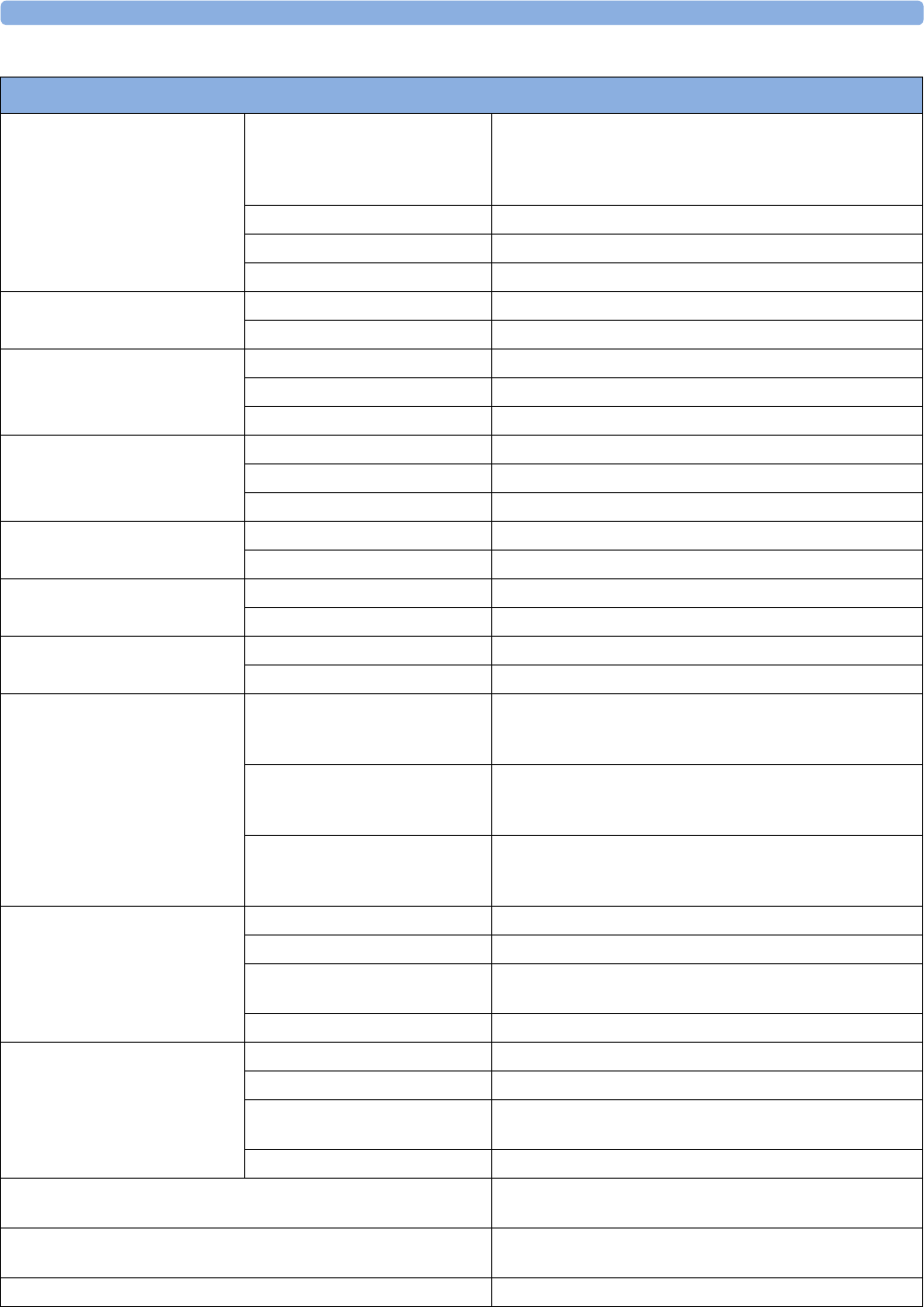
40 Specifications
476
ECG/Arrhythmia/ST Performance Specifications
Cardiotach Range Adult/pedi: 15 to 300 bpm
Neo range: 15 to 350 bpm
Note: for rates equal to or less than 15 bpm, the displayed heart
rate is 0.
Accuracy ±1% of range
Resolution 1 bpm
Sensitivity ≥200 µVpeak
PVC Rate Range 0 to 300 bpm
Resolution 1 bpm
ST Numeric Range -20 to +20 mm
Accuracy ±0.5 mm or 15%, whichever is greater
Resolution 0.1 mm
QT Numeric Range 200 to 800 ms
Accuracy ±30 ms
Resolution 8 ms
QTc Numeric Range 200 to 800 ms
Resolution 1 ms
ΔQTc Numeric Range -600 to +600 ms
Resolution 1 ms
QT-HR Numeric Range - adult 15 to 150 bpm
Range - pediatric and neonatal 15 to 180 bpm
Sinus and SV Rhythm Ranges Brady Adult: 15 to 59 bpm
Pedi: 15 to 79 bpm
Neo: 15 to 89 bpm
Normal Adult: 60 to 100 bpm
Pedi: 80 to 160 bpm
Neo: 90 to 180 bpm
Tachy Adult: >100 bpm
Pedi: >160 bpm
Neo: >180 bpm
Bandwidth Diagnostic Mode Adult/neo/pedi: 0.05 to 150 Hz
Extended Monitoring Mode Adult/neo/pedi: 0.5 to 150 Hz
Monitoring Mode Adult: 0.5 to 40 Hz
Neo/pedi: 0.5 to 55 Hz
Filter Mode Adult/neo/pedi: 0.5 to 20 Hz
Bandwidth
when the ECG is transmitted from
a telemetry device via short range
radio
Diagnostic Mode Adult/neo/pedi: 0.05 to 40 Hz
Extended Monitoring Mode Adult/neo/pedi: 0.5 to 40 Hz
Monitoring Mode Adult: 0.5 to 40 Hz
Neo/pedi: 0.5 to 40 Hz
Filter Mode Adult/neo/pedi: 0.5 to 20 Hz
Differential Input Impedance >2 MΩ RA-LL leads (Resp)
>5 MΩ at all other leads (at 10 Hz including patient cable)
Common Mode Rejection Ratio Diagnostic mode: >86 dB (with a 51 kΩ/47 nF imbalance).
Filter mode: >106 dB (with a 51 kΩ/47 nF imbalance).
Electrode Offset Potential Tolerance ±500 mV
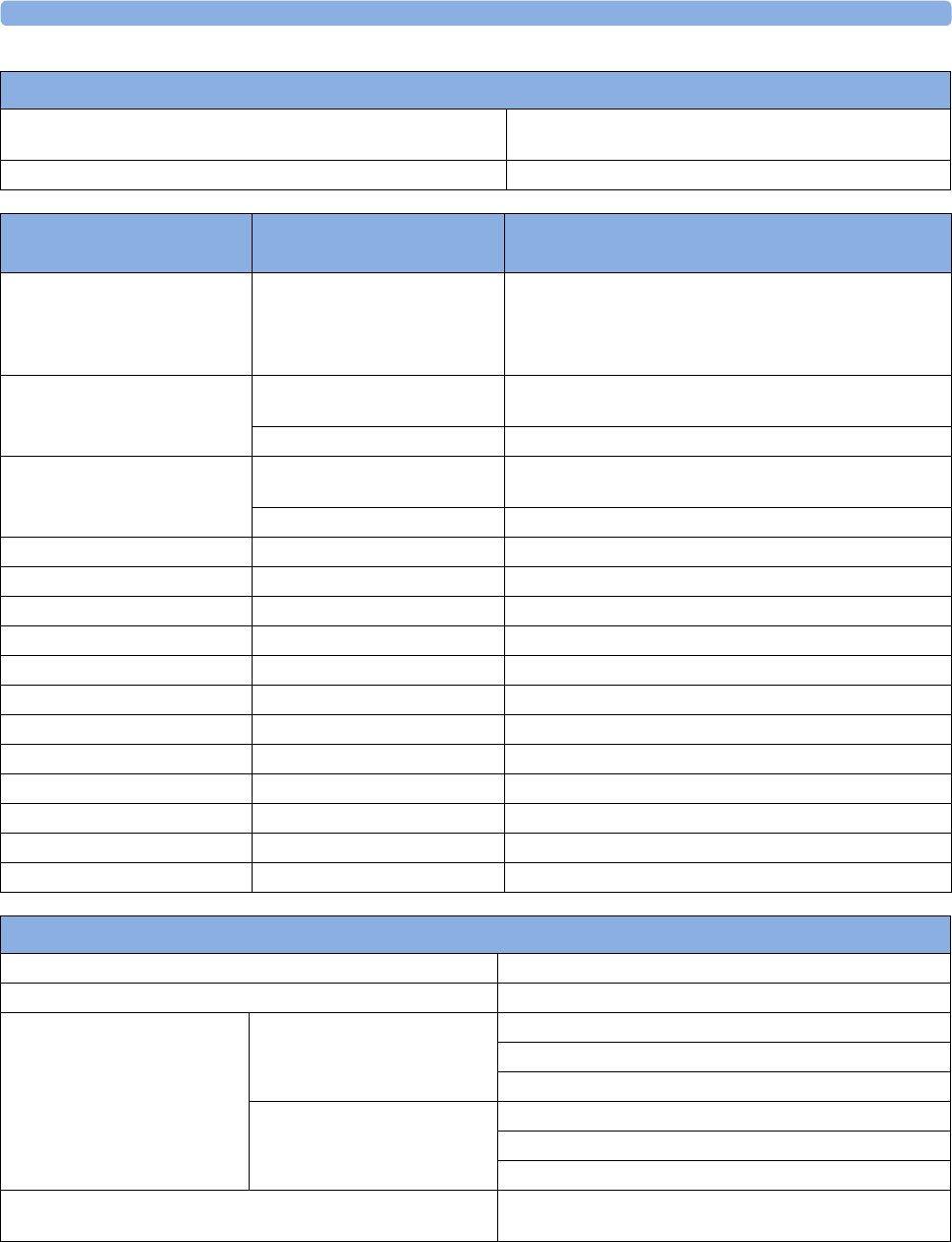
40 Specifications
477
Auxiliary Current
(Leads off Detection)
Active electrode: <100 nA
Reference electrode: <900 nA
Input Signal Range ±5 mV
ECG/Arrhythmia/ST Performance Specifications
ECG/Arrhythmia/ST/QT
Alarm Specifications Range Adjustment
HR 15 to 300 bpm
maximum delay: 10 seconds
according to AAMI EC 13-1992
standard
Adult:1 bpm steps (15 to 40 bpm)
5 bpm steps (40 to 300 bpm)
Pedi/Neo:1 bpm steps (15 to 50 bpm)
5 bpm steps (50 to 300 bpm)
Extreme Tachy Difference to high limit 0 to
50 bpm
5bpm steps
Clamping at 150 to 300 bpm 5 bpm steps
Extreme Brady Difference to low limit 0 to
50 bpm
5bpm steps
Clamping at 15 to 100 bpm 5 bpm steps
Run PVCs None, fixed setting 2 PVCs Not adjustable by user
PVCs Rate 1 to 99 PVCs/minute 1 PVC
Vent Tach HR 20 to 300 bpm 5 bpm
Vent Tach Run 3 to 99 PVCs/minute 1 PVC
Vent Rhythm Run 3 to 99 PVCs/minute 1 PVC
SVT HR 120 to 300 bpm 5 bpm
SVT Run 3 to 99 SV beats 1 SV beat
ST High -19.8 to +20 mm 0.2 mm
ST Low -20 to +19.8 mm 0.2 mm
STE Limit -20 to +20 mm 0.2 mm
QTc High 200 ms to 800 ms 10 ms steps
ΔQTc High 30 ms to 200 ms 10 ms steps
ECG/Arrhythmia/ST Supplemental Information as required by AAMI EC11/13, IEC 60601-2-27
Respiration Excitation Waveform Sinusoidal signal, 260 μA, 40.5 kHz
Noise Suppression RL drive gain 44 dB max., max. voltage 1.8 Vrms
Time to Alarm for Tachycardia Vent Tachycardia
1mV
pp,206 bpm
Gain 0.5, Range 6.5 to 8.4 seconds, Average 7.2 seconds
Gain 1.0 Range 6.1 to 6.9 seconds, Average 6.5 seconds
Gain 2.0, Range 5.9 to 6.7 seconds, Average 6.3 seconds
Vent Tachycardia
2mV
pp,195 bpm
Gain 0.5, Range 5.4 to 6.2 seconds, Average 5.8 seconds
Gain 1.0, Range 5.7 to 6.5 seconds, Average 6.1 seconds
Gain 2.0, Range 5.3 to 6.1 seconds, Average 5.7 seconds
Tall T-Wave Rejection Capability Exceeds ANSI/AAMI EC 13 Sect. 3.1.2.1(c) minimum
recommended 1.2 mV T-Wave amplitude
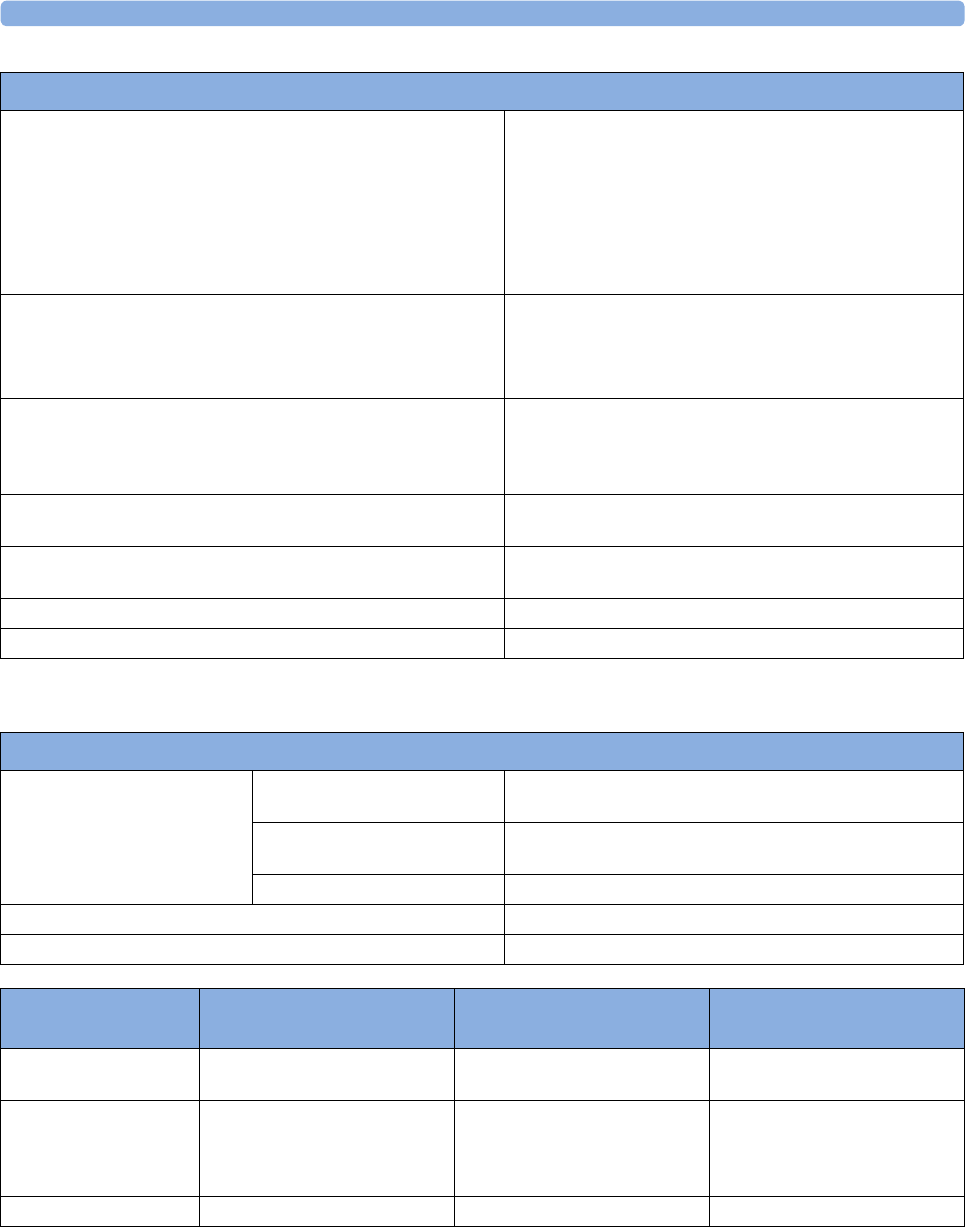
40 Specifications
478
Respiration
Heart Rate Averaging Method Three different methods are used:
Normally, heart rate is computed by averaging the 12 most
recent RR intervals.
For runs of PVCs, up to 8 RR intervals are averaged to compute
the HR.
If each of 3 consecutive RR intervals is greater than 1200 ms
(that is, rate less than 50 bpm), then the 4 most recent RR
intervals are aver\-aged to compute the HR.
Response Time of Heart Rate Meter to Change in Heart Rate HR change from 80 to 120 bpm:
Range: [6.4 to 7.2 seconds] Average: 6.8 seconds
HR change from 80 to 40 bpm:
Range: [5.6 to 6.4 sec] Average: 6.0 seconds
Heart Rate Meter Accuracy and Response to Irregular Rhythm Ventricular bigeminy: 80 bpm
Slow alternating ventricular bigeminy: 60 bpm
Rapid alternating ventricular bigeminy: 120 bpm
Bidirectional systoles: 90 bpm
Accuracy of Input Signal Reproduction Methods A and D were used to establish overall system error
and frequency response.
Pacemaker Pulse Rejection Performance Rejection of pacemaker pulses with amplitudes from ±2 mV to
±700 mV and widths from 0.1 ms to 2.0 ms (Method A)
Pacemaker Pulse Rejection of fast ECG signals 2.2 V/s RTI (Paced Mode)
Minimum input slew rate 2.2 V/s RTI
ECG/Arrhythmia/ST Supplemental Information as required by AAMI EC11/13, IEC 60601-2-27
Respiration Performance Specifications
Respiration Rate Range Adult/pedi: 0 to 120 rpm
Neo: 0 to 170 rpm
Accuracy at 0 to 120 rpm ±1 rpm
at 120 to 170 rpm ±2 rpm
Resolution 1 rpm
Bandwidth 0.3 to 2.5 Hz (-6 dB)
Noise Less than 25 mΩ (rms) referred to the input
Respiration Alarm
Specifications Range Adjustment Delay
High Adult/pedi: 10 to 100 rpm
Neo: 30 to 150 rpm
under 20 rpm: 1 rpm steps
over 20 rpm: 5 rpm steps
max. 14 seconds
Low Adult/pedi: 0 to 95 rpm
Neo: 0 to 145 rpm
under 20 rpm: 1 rpm steps
over 20 rpm: 5 rpm steps
for limits from 0 to 20 rpm:
max. 4 seconds
for limits above 20 rpm: max.
14 seconds
Apnea Alarm 10 to 40 seconds 5 second steps

40 Specifications
479
SpO2
Unless otherwise specified, this information is valid for SpO2 measured using the M3001A and
M3002A Multi-measurement modules and the M1020B measurement module. The SpO2 Performance
Specifications in this section apply to devices with Philips SpO2 technology. For SpO2 Performance
Specifications valid for other SpO2 technologies, refer to the instructions for use provided with these
devices.
Complies with ISO 9919:2005 / EN ISO 9919:2009 (except alarm system; alarm system complies with
IEC 60601-2-49:2001).
Measurement Validation: The SpO2 accuracy has been validated in human studies against arterial
blood sample reference measured with a CO-oximeter. Pulse oximeter measurements are statistically
distributed, only about two-thirds of the measurements can be expected to fall within the specified
accuracy compared to CO-oximeter measurements.
Display Update Period: Typical: 2 seconds, Maximum: 30 seconds. Maximum with NBP INOP
suppression on: 60 seconds.

40 Specifications
480
SpO2 Performance Specifications
SpO2
The specified accuracy is
the root-mean-square
(RMS) difference between
the measured values and
the reference values
Range 0 to 100%
Option #A01
Accuracy
Philips Reusable Sensors:
M1191A, M1191AL, M1191B, M1191BL, M1192A = 2 % (70 % to 100 %)
M1193A, M1194A, M1195A, M1196A, M1196S = 3 % (70 % to 100 %)
M1191T, M1192T, M1193T (Adult), M1196T = 3% (70% to 100%)
M1193T (Neonate) = 4 % (70% to 100%)
Philips Disposable Sensors with M1943A(L):
M1132A, M1133A (adult/infant), M1134A (adult/infant) = 2 %
M1901B, M1902B, M1903B, M1904B, M1131A, M1133A (neonate), M1134A
(neonate) = 3 % (70% to 100%)
NellcorPB® Sensors with M1943A(L):
MAXA, MAXAL, MAXP, MAXI, MAXN, D-25, D-20, I-20, N-25, Oxicliq A,
P, I, N = 3 % (70% to 100%)
Masimo Reusable Sensors® with LNOP MP12 or LNC MP10:
LNOP DC-I, LNOP DC-IP, LNOP YI (adult/pedi/infant), LNCS DC-1,
LNCS DC-IP, LNCS YI (adult/pedi/infant) = 2% (70% to 100%)
LNOP YI (neonate), LNCS YI (neonate) = 3% (70% to 100%)
LNOP TC-I, LNCS TC-I: 3.5 % (70% to 100%)
Masimo Disposable Sensors® with LNOP MP12 or LNC MP10:
LNOP Adt, LNOP Adtx, LNOP Pdt, LNOP Pdtx, LNOP Inf-L, LNOP Neo-L
(adult), LNCS Adtx, LNCS Adtx-3, LNCS Pdtx, LNCS Pdtx-3, LNCS Inf,
LNCS Inf-3, LNCS Neo (adult), LNCS Neo-3 (adult) = 2% (70% to 100%)
LNOP Neo-L (neonate), LNOP NeoPt-L, LNCS Neo (neonate), LNCS Neo-3
(neonate), LNCS NeoPt, LNCS NeoPt-3 = 3% (70% to 100%)
Option #A02
Accuracy
Philips Reusable Sensors
M1193AN = 3 % (70% to 100%)
Philips Disposable Sensors with M1943NL:
M1901B (Adult), M1902B, M1903B, M1904B = 2% (70% to 100%)
M1901B (Neonate) = 3%
Nellcor Sensors with M1943NL:
MAXFAST, MAXA, MAXAL, MAXP, MAXI, MAXN (Adult) = 2 % (70 % to
100 %)
SC-A, Oxicliq A, P, I, N (Adult) = 2.5% (70% to 100%)
MAXN (Neonate), Dura-Y D-YS (Infant to Adult), DS-100A-1, Oxiband OXI-
A/N (Adult), OXI-P/I = 3 % (70% to 100%)
MAXR, Oxicliq N (Neonate), SCNEO-I (Neonate), SC-PR-I (Neonate), Dura-
Y D-YS with D-YSE or D-YSPD clip = 3.5 % (70% to 100%)
Dura-Y D-YS (Neonate), Oxiband OXI-A/N (Neonate) = 4% (70% to 100%)
Resolution 1%
Averaging Time 5, 10 or 20 seconds (user adjustable)
Pulse Range 30 to 300 bpm
Accuracy ±2% or 1 bpm, whichever is greater
Resolution 1 bpm
Sensors Wavelength range: 500 to 1000 nm
Emitted Light Energy: ≤15 mW
Information about the wavelength range can be especially useful to clinicians
(for instance, when photodynamic therapy is performed)
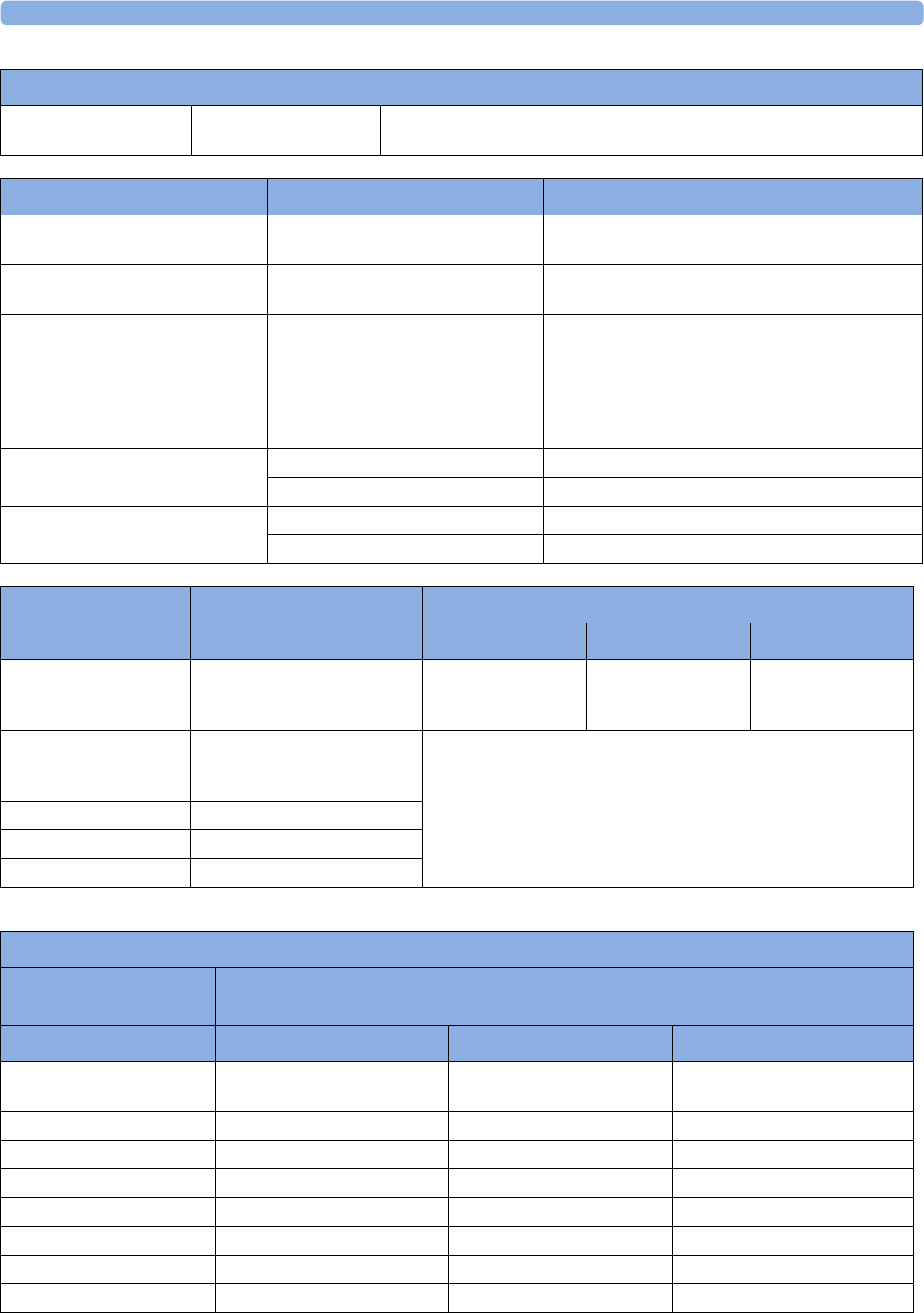
40 Specifications
481
1. Refer to “Monitor Performance Specifications” on page 464 for system alarm delay specification.
Pulse Oximeter
Calibration Range
70% to 100%
SpO2 Performance Specifications
SpO2 Alarm Specifications Range Adjustment
SpO2 high and low limit alarms Adult: 50 to 100%
Pedi/Neo: 30 to 100%
1% steps
Desat Adult: 50% to Low alarm limit
Pedi/Neo: 30% to Low alarm limit
1% steps
Pulse 30 to 300 bpm Adult:
1 bpm steps (30 to 40 bpm)
5 bpm steps (40 to 300 bpm)
Pedi/Neo:
1 bpm steps (30 to 50 bpm)
5 bpm steps (50 to 300 bpm)
Tachycardia Difference to high limit 0 to 50 bpm 5 bpm steps
Clamping at 150 to 300 bpm 5 bpm steps
Bradycardia Difference to low limit 0 to 50 bpm 5 bpm steps
Clamping at 30 to 100 bpm 5 bpm steps
SpO2 Alarm
Specifications (cont.) Standard Delay
Smart Alarm Delay (alternative to standard alarm delay)
Short Mode Medium mode Long Mode
SpO2 high and low limit
alarms
0 to 30 seconds (adjustable in
1 second steps) + system alarm
delay1
10 to 25 seconds +
system alarm delay
10 to 50 seconds
+system alarm delay
10 to 100 seconds +
system alarm delay
Desat 0 to 30 seconds (adjustable in
1 second steps) + system alarm
delay
not supported
Pulse 10 seconds + system alarm delay
Tachycardia 10 seconds + system alarm delay
Bradycardia 10 seconds + system alarm delay
SpO2 Smart Alarm Delay - Detailed Specifications
Deviation from violated
alarm limit Resulting alarm delay according to selected mode
Short Medium Long
1% 25 sec
(maximum delay)
50 sec
(maximum delay)
100 sec
(maximum delay)
2% 12 sec 25 sec 50 sec
3% 10 sec 16 sec 33 sec
4% 10 sec 12 sec 25 sec
5% 10 sec 10 sec 20 sec
6% 10 sec 10 sec 16 sec
7% 10 sec 10 sec 14 sec
8% 10 sec 10 sec 12 sec
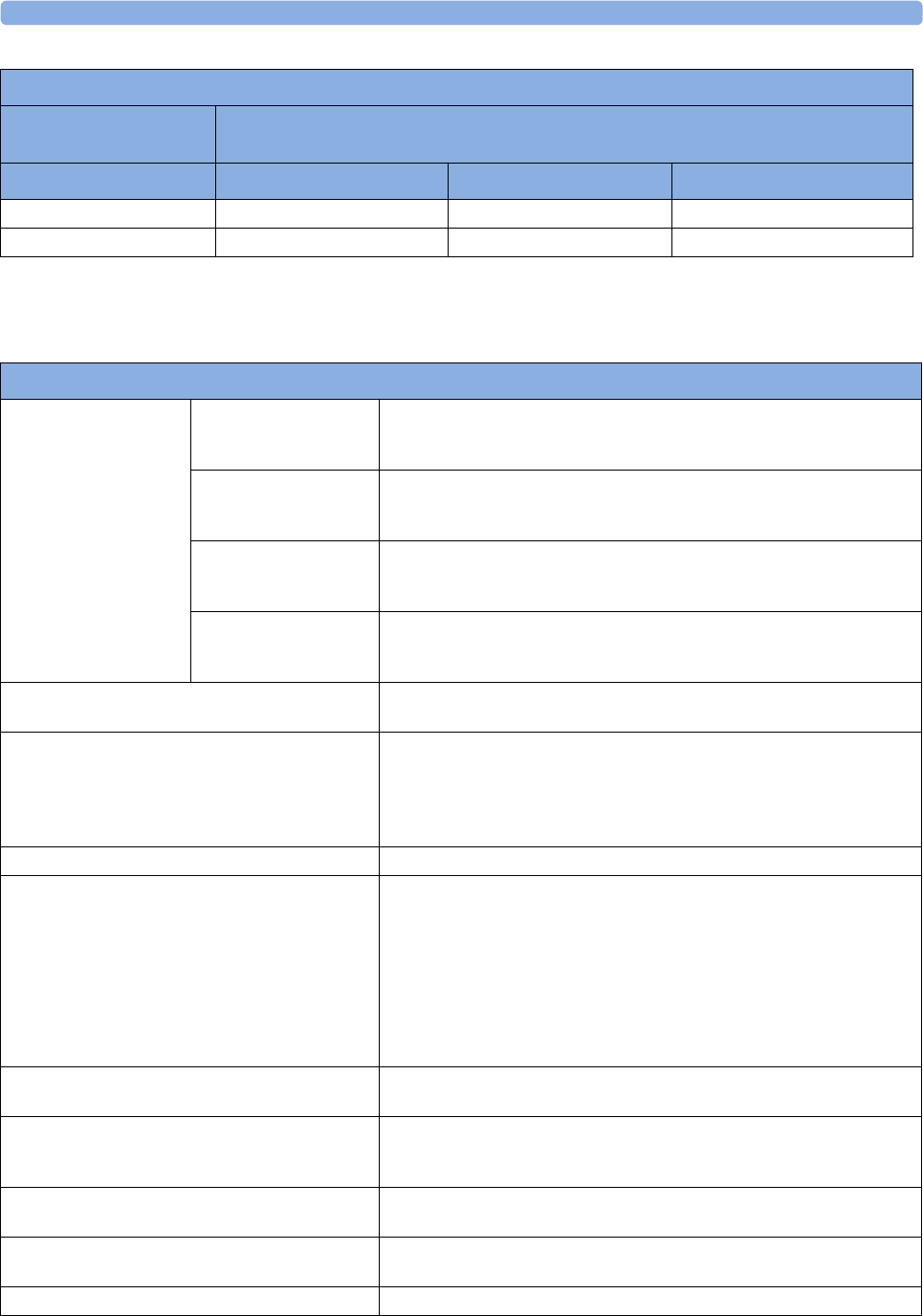
40 Specifications
482
NBP
Complies with IEC 60601-2-30:1999/EN 60601-2-30:2000.
9% 10 sec 10 sec 11 sec
>9% 10 sec 10 sec 10 sec
SpO2 Smart Alarm Delay - Detailed Specifications
Deviation from violated
alarm limit Resulting alarm delay according to selected mode
Short Medium Long
NBP Performance Specifications
Measurement Ranges Systolic Adult: 30 to 270 mmHg (4 to 36 kPa)
Pedi: 30 to 180 mmHg (4 to 24 kPa)
Neo: 30 to 130 mmHg (4 to 17 kPa)
Diastolic Adult: 10 to 245 mmHg (1.5 to 32 kPa)
Pedi: 10 to 150 mmHg (1.5 to 20 kPa)
Neo: 10 to 100 mmHg (1.5 to 13 kPa)
Mean Adult: 20 to 255 mmHg (2.5 to 34 kPa)
Pedi: 20 to 160 mmHg (2.5 to 21 kPa)
Neo: 20 to 120 mmHg (2.5 to 16 kPa)
Pulse Rate Adult: 40 to 300 bpm
Pedi: 40 to 300 bpm
Neo: 40 to 300 bpm
Accuracy Max. Std. Deviation: 8 mmHg (1.1 kPa)
Max. Mean Error: ±5 mmHg (±0.7 kPa)
Pulse Rate Measurement Accuracy 40 to 100 bpm: ±5 bpm
101 to 200 bpm: ±5% of reading
201 to 300 bpm: ±10% of reading
(average over NBP measurement cycle)
Pulse Rate Range 40 to 300 bpm
Measurement Time Typical at HR >60 bpm
Auto/manual/sequence:
Adult: 30 seconds
Neonatal: 25 seconds
Stat: 20 seconds
Maximum time:
Adult/pedi: 180 seconds
Neo: 90 seconds
Cuff Inflation Time Typical for normal adult cuff: Less than 10 seconds
Typical for neonatal cuff: Less than 2 seconds
Initial Cuff Inflation Pressure Adult: 165 ±15 mmHg
Pedi: 130 ±15 mmHg
Neo: 100 ±15 mmHg
Maximum Cuff Pressure Adult/Pedi: 300 mmHg
Neo: 150 mmHg
Auto Mode Repetition Times 1 min, 2 min, 2.5 min, 3 min, 10 min, 15 min, 20 min, 30 min, 45 min, 1h, 2h,
4h, 8h, 12h, 24h
STAT Mode Cycle Time 5minutes
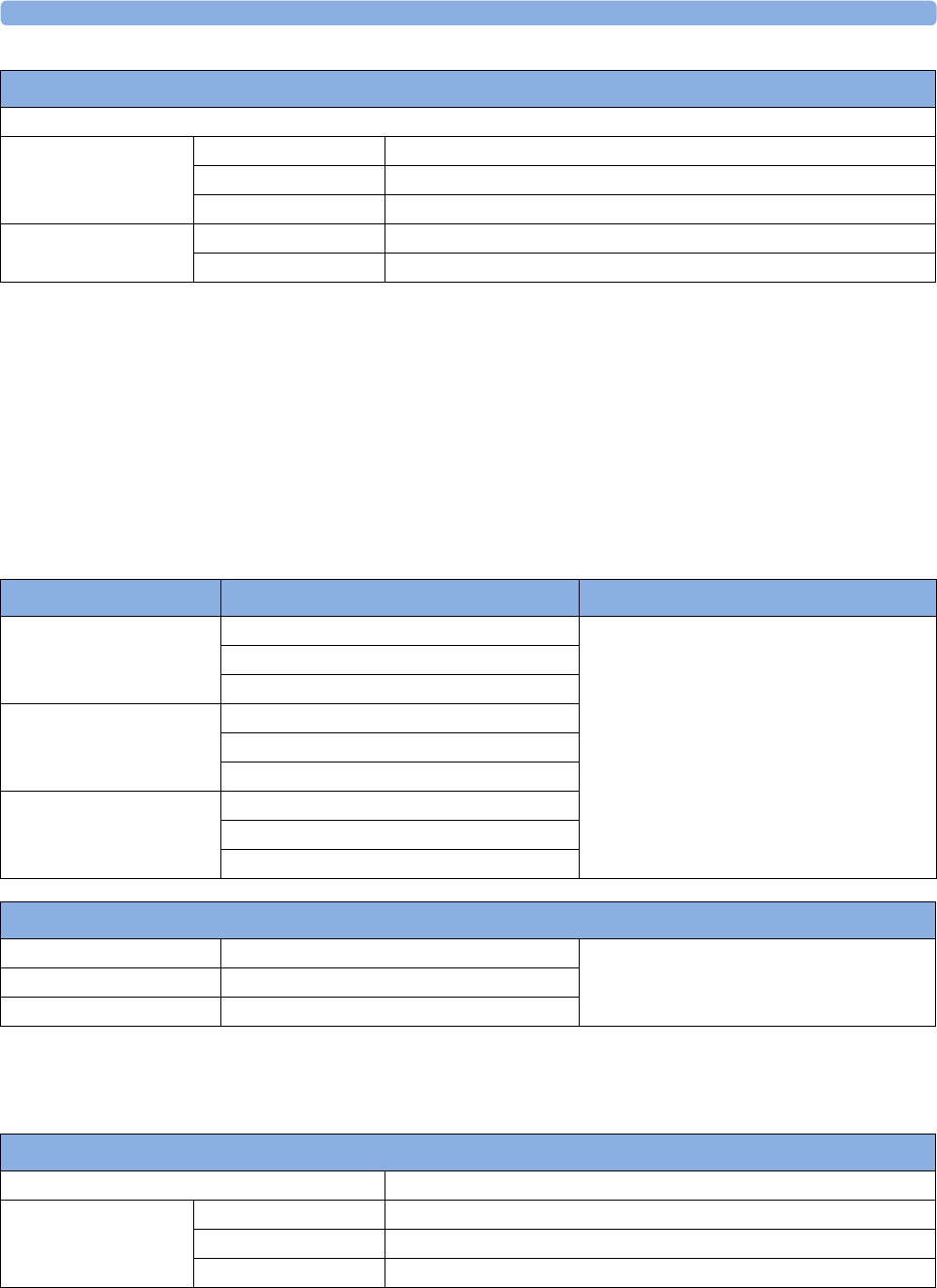
40 Specifications
483
Measurement Validation: In adult and pediatric mode, the blood pressure measurements determined
with this device comply with the American National Standard for Electronic or Automated
Sphygmomanometers (ANSI/AAMI SP10 - 1992) in relation to mean error and standard deviation,
when compared to intra-arterial or auscultatory measurements (depending on the configuration) in a
representative patient population. For the auscultatory reference the 5th Korotkoff sound was used to
determine the diastolic pressure.
In neonatal mode, the blood pressure measurements determined with this device comply with the
American National Standard for Electronic or Automated Sphygmomanometers (ANSI/AAMI SP10 -
1992 and AAMI/ANSI SP10A -1996) in relation to mean error and standard deviation, when
compared to intra-arterial measurements in a representative patient population.
Invasive Pressure and Pulse
Complies with IEC 60601-2-34:2000/EN 60601-2-34:2000.
Venipuncture Mode Inflation
Inflation Pressure Adult 20 to 120 mmHg (3 to 16 kPa)
Pediatric 20 to 80 mmHg (3 to 11 kPa)
Neonatal 20 to 50 mmHg (3 to 7 kPa)
Automatic deflation
after
Adult/pediatric 170 seconds
Neonatal 85 seconds
NBP Performance Specifications
NBP Alarm Specifications Range Adjustment
Systolic Adult: 30 to 270 mmHg (4 to 36 kPa) 10 to 30 mmHg: 2 mmHg (0.5 kPa)
>30 mmHg: 5 mmHg (1 kPa)
Pedi: 30 to 180 mmHg (4 to 24 kPa)
Neo: 30 to 130 mmHg (4 to 17 kPa)
Diastolic Adult: 10 to 245 mmHg (1.5 to 32 kPa)
Pedi: 10 to 150 mmHg (1.5 to 20 kPa)
Neo: 10 to 100 mmHg (1.5 to 13 kPa)
Mean Adult: 20 to 255 mmHg (2.5 to 34 kPa)
Pedi: 20 to 160 mmHg (2.5 to 21 kPa)
Neo: 20 to 120 mmHg (2.5 to 16 kPa)
NBP Overpressure Settings
Adult >300 mmHg (40 kPa) >2 sec not user adjustable
Pediatric >300 mmHg (40 kPa) >2 sec
Neonate >150 mmHg (20 kPa) >2 sec
Invasive Pressure Performance Specifications
Measurement Range -40 to 360 mmHg
Pulse Rate Range 25 to 350 bpm
Accuracy ±1% Full Range
Resolution 1 bpm
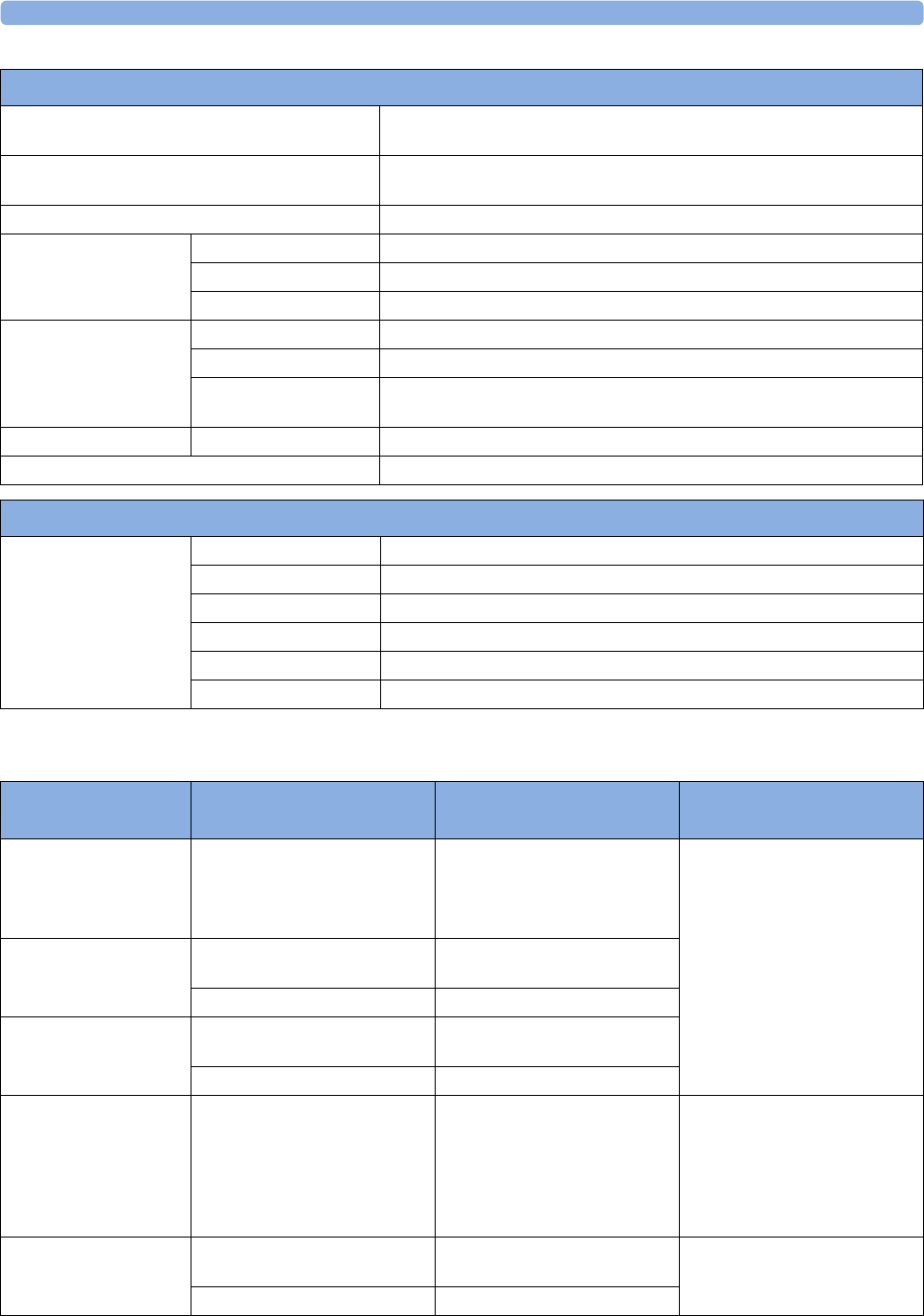
40 Specifications
484
Invasive Pressure Alarm Specifications
Input Sensitivity Sensitivity: 5 µV/V/mmHg (37.5 µV/V/kPa)
Adjustment range: ±10%
Transducer Load Impedance: 200 to 2000 Ω (resistive)
Output Impedance: ≤3000 Ω (resistive)
Frequency Response dc to 12.5 Hz or 40 Hz
Zero Adjustment Range ±200 mmHg (±26 kPa)
Accuracy ±1 mmHg (±0.1 kPa)
Drift Less than 0.1 mmHg/°C (0.013 kPa/°C)
Gain Accuracy Accuracy ±1%
Drift Less than 0.05%/°C
Non linearity and
Hysteresis
Error of ≤0.4 %FS (@CAL 200 mmHg)
Overall Accuracy (including transducer) ±4% of reading or ±4 mmHg (±0.5 kPa), whichever is greater
Volume displacement of CPJ840J6 0.1 mm3 /100 mmHg
Analog output Specifications
Analog Output
available only with
M1006B #C01 (@ CAL
200 mmHg)
Range -0.4 V to 3.6 V
Level 1 V / 100 mmHg
Accuracy ±3% full scale
Offset ±30 mV
Resolution 8 Bit (@ 5 V range)
Signal delay 20 ms
Invasive Pressure Performance Specifications
Invasive Pressure Alarm
Specifications Range Adjustment Delay
Pressure -40 to 360 mmHg
(-5.0 to 48 kPa)
-40 to 50 mmHg
2mmHg (0.5kPa)
>50 mmHg
5mmHg (1kPa)
max. 12 seconds
Extreme High Difference to high limit 0 to
25 mmHg
5 mmHg steps (0.5 kPa)
Clamping at -40 to 360 mmHg 5 mmHg steps (1.0 kPa)
Extreme Low Difference to low limit 0 to
25 mmHg
5 mmHg steps (0.5 kPa)
Clamping at -40 to 360 mmHg 5 mmHg steps (1.0 kPa)
Pulse 25 to 300 bpm Adult:
1 bpm steps (25 to 40 bpm)
5 bpm steps (40 to 300 bpm)
Pedi/Neo:
1 bpm steps (25 to 50 bpm)
5 bpm steps (50 to 300 bpm)
Tachycardia Difference to high limit 0 to
50 bpm
5 bpm steps max. 14 seconds
Clamping at 150 to 300 bpm 5 bpm steps
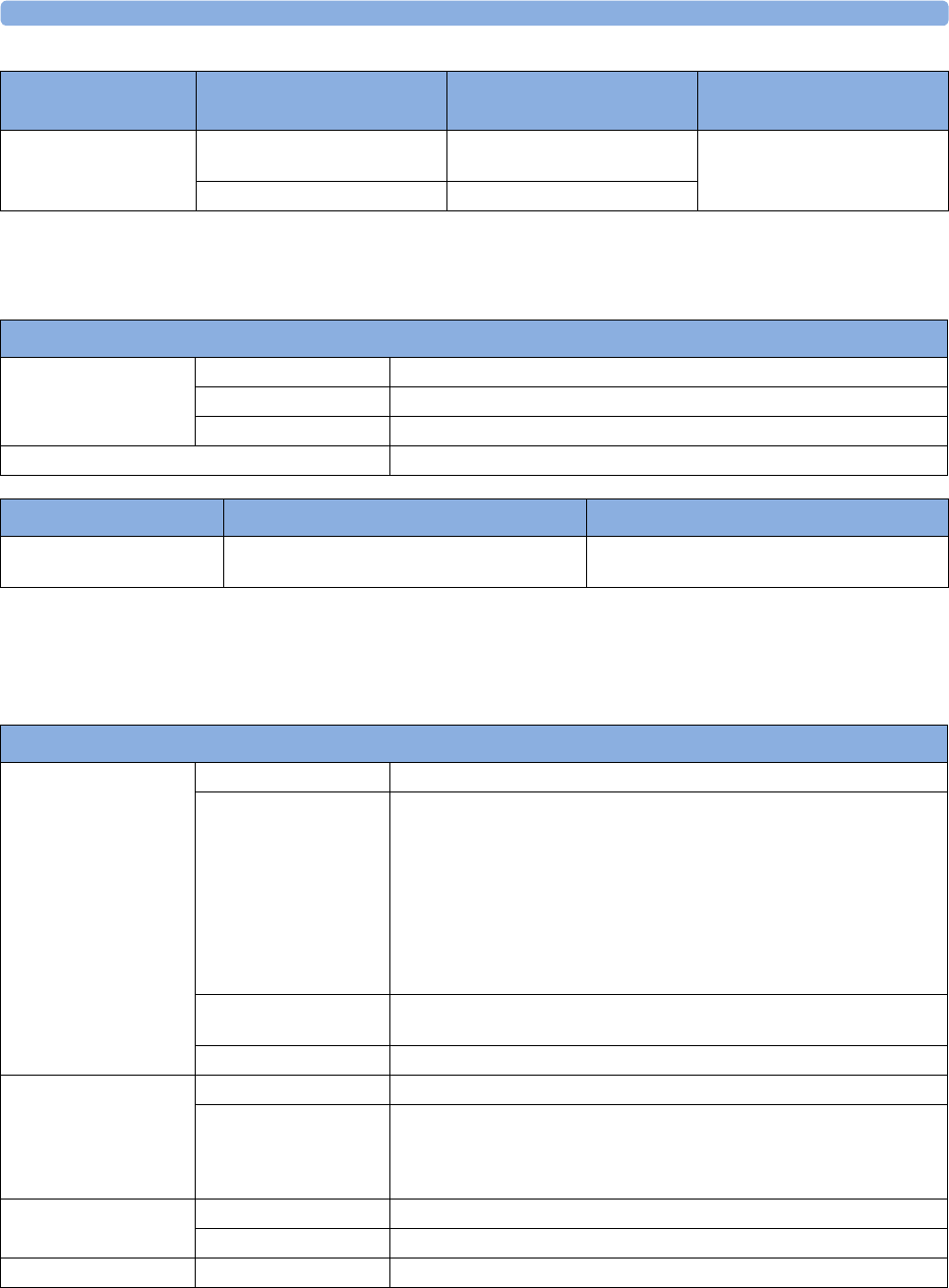
40 Specifications
485
Temp
Complies with EN 12470-4:2000 and IEC 60601-2-49:2001. Specified without transducer.
CO2
The CO2 measurement in M3014A and M3015A/B complies with EN ISO 21647:2004 + Cor.1:2005
(except alarm system; alarm system complies with IEC 60601-2-49:2001).
Bradycardia Difference to low limit 0 to
50 bpm
5 bpm steps max. 14 seconds
Clamping at 25 to 100 bpm 5 bpm steps
Invasive Pressure Alarm
Specifications Range Adjustment Delay
Temp Performance Specifications
Temp Range -1 to 45°C (30 to 113°F)
Resolution 0.1°C (0.2°F)
Accuracy ±0.1°C (±0.2°F)
Average Time Constant Less than 10 seconds
Temp Alarm Specifications Range Adjustment
Temp High/Low Alarms -1 to 45°C (30 to 113°F) -1 to 35°C (30 to 95°F), 0.5°C (1.0°F) steps
35 to 45°C (95 to 113°F), 0.1°C (0.2°F) steps
M3015A Microstream CO2 Performance Specifications
CO2 Range 0 to 150 mmHg (0 to 20 kPa), or 20% CO2, whichever is lower
Accuracy Up to 5 minutes during warmup: ±4 mmHg or 12%, whichever is greater
After 5 minutes warmup:
0 to 40 mmHg (0 to 5.3 kPa): ±2.2 mmHg (±0.3 kPa)
Above 40 mmHg (5.3 kPa): ±(5.5% + {0.08% per mmHg above 40 mmHg}) of
reading
These specifications are valid for 21% O2 and N2 balance, up to 35°C ambient
temperature, up to 60 rpm in adult mode and 100 rpm in neonatal mode.
Outside of these conditions the accuracy reaches at a minimum ±4 mmHg or
±12% of the reading, whichever is greater.
Resolution Numeric: 1.0 mmHg (0.1 kPa)
Wave: 0.1 mmHg (0.01 kPa)
Stability Included in Accuracy specifications
AwRR Range 0 to 150 rpm
Accuracy 0 to 40 rpm: ±1 rpm
41 to 70 rpm: ±2 rpm
71 to 100 rpm: ±3 rpm
>100 rpm: ±5% of reading
IPI Range 1 to 10
Resolution 1
Warm-up Time 5 minutes for full accuracy specification
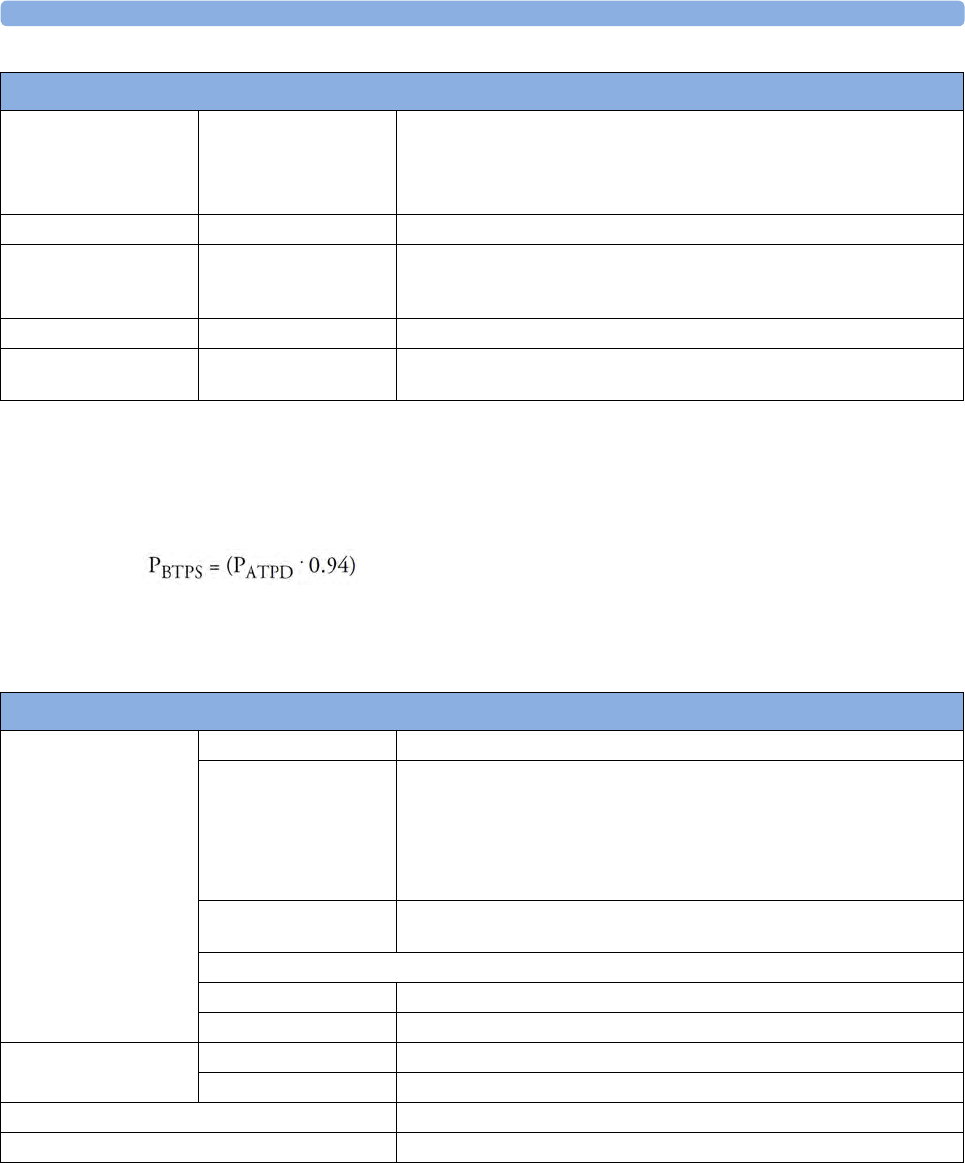
40 Specifications
486
Microstream CO2 Humidity Correction Factor
Either BTPS or ATPD can be selected as the humidity correction factor for the Microstream CO2
readings. The formula for the correction calculation is:
Rise Time 190 ms for neonatal mode
(measured with FilterLine H for neonatal)
240 ms for adult mode
(measured with FilterLine H for adult)
Sample Flow Rate 50 + 15/-7.5 ml/minute
Gas Sampling Delay
Time
Maximum:
3 seconds (2m sample lines)
6 seconds (4m sample lines)
Sound Pressure Acoustic noise: <45 dBA
Total System Response
Time
The total system response time is the sum of the delay time and the rise time.
M3015A Microstream CO2 Performance Specifications
where:
PBTPS = partial pressure at body temperature and pressure, saturated
PATPD = partial pressure at ambient temperature and pressure, dry
M3014A Mainstream CO2 Performance Specifications
CO2 Range 0 to 150 mmHg (0 to 20.0 kPa)
Accuracy after 2 minutes warmup:
For values between 0 and 40 mmHg: ±2.0 mmHg (±0.29 kPa)
For values from 41 to 70 mmHg: ±5% of reading
For values from 71 to 100 mmHg: ±8% of reading
The specifications are valid for standard gas mixtures, balance air, fully hydrated
at 35°C, Pabs = 760 mmHg, flow rate = 2 l/min.
Resolution Numeric: 1.0 mmHg (0.1 kPa)
Wave: 0.1 mmHg (0.01 kPa)
Stability:
Short term drift ±0.8 mmHg over four hours
Long term drift Accuracy specification will be maintained over a 120 hour period
awRR Range 2 to 150 rpm
Accuracy ±1 rpm
Warm-up Time 2minutes with CO
2 transducer attached for full accuracy specification
Response Time Less than 60 ms (with adult or infant reusable or disposable adapter)
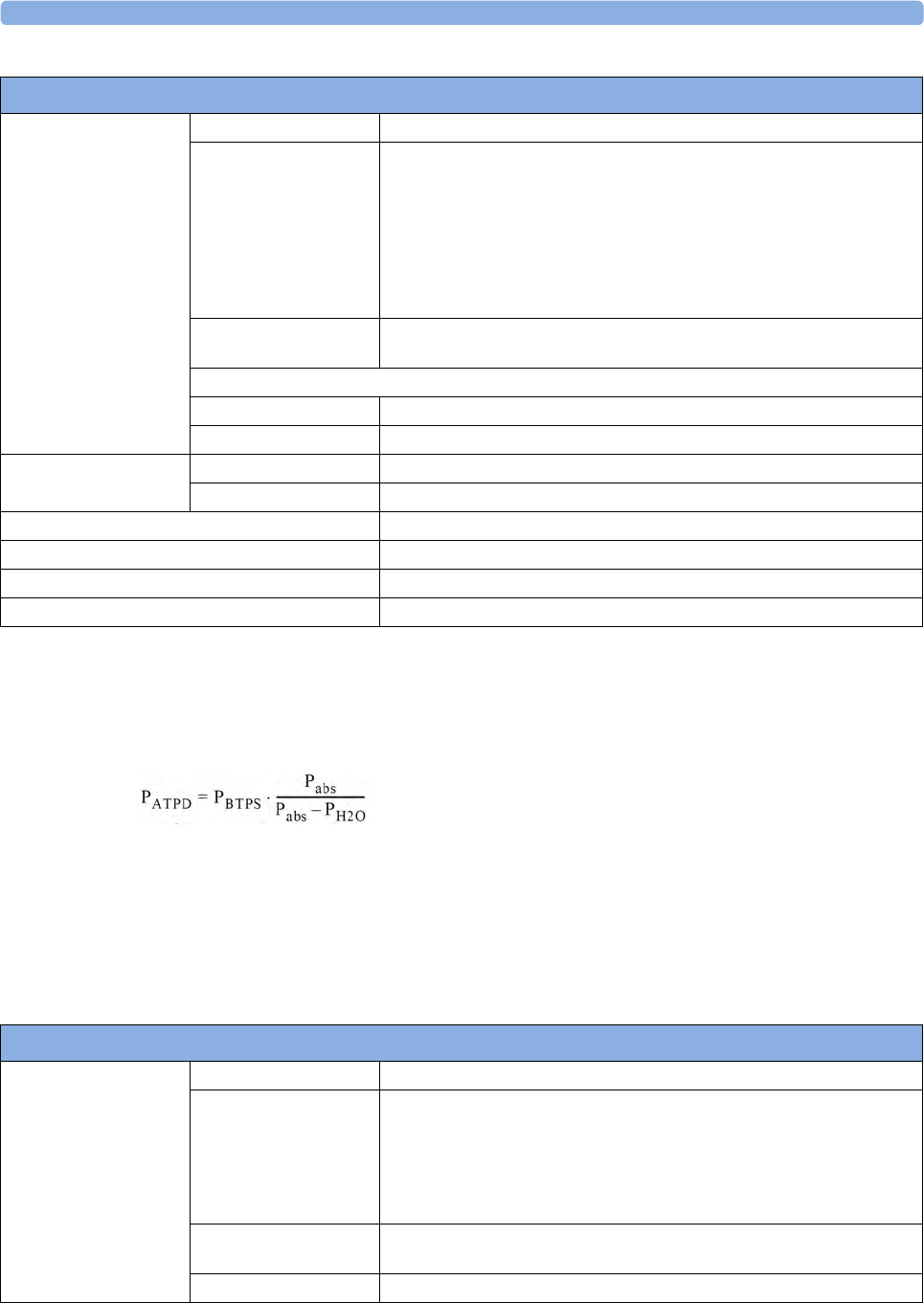
40 Specifications
487
M3014A Mainstream and Sidestream CO2 Humidity Correction Factor
Either BTPS or ATPD can be selected as the humidity correction factor for the CO2 readings. The
formula for the correction calculation is:
M3014A Sidestream CO2 Performance Specifications
CO2 Range 0 to 150 mmHg (0 to 20.0 kPa)
Accuracy after 2 minutes warmup:
For values between 0 and 40 mmHg: ±2.0 mmHg (±0.29 kPa)
For values from 41 to 70 mmHg: ±5% of reading
For values from 71 to 100 mmHg: ±8% of reading
For values from 101 to 150 mmHg: ±10% of reading
At respiration rates above 80 rpm, all ranges are ±12% of actual. The
specifications are valid for gas mixtures of CO2, balance N2, dry gas at
760 mmHg within specified operating temperature range.
Resolution Numeric: 1.0 mmHg (0.1 kPa)
Wave: 0.1 mmHg (0.01 kPa)
Stability:
Short term drift ±0.8 mmHg over four hours
Long term drift Accuracy specification will be maintained over a 120 hour period
awRR Range 2 to 150 rpm
Accuracy ±1 rpm
Warm-up Time 2minutes with CO
2 sensor attached for full accuracy specification
Sample Flow Rate 50 ±10 ml/minute
Total System Response Time 3seconds
Operating Temperature 0 to 40°C (32 to 100°F)
where:
PBTPS = partial pressure at body temperature and pressure,
saturated
PATPD = partial pressure at ambient temperature and pressure,
dry
Pabs = absolute pressure
PH2O = 42 mmHg @35°C and 100% RH
M3016A Mainstream CO2 Performance Specifications
CO2 Range -4 to 150 mmHg (-0.5 to 20.0 kPa)
Accuracy after 20 minutes warmup and calibration:
For values between 0 and 40 mmHg: ±2.2 mmHg (±0.29 kPa)
For values between 40 and 76 mmHg: ±5.5% of reading
The specifications are valid for 45% O2 and N2 or N2O balance. Outside these
conditions the accuracy reaches at a minimum the requirements of EN864/
ISO9918.
Resolution Numeric: 1.0 mmHg (0.1 kPa)
Wave: 0.1 mmHg (0.01 kPa)
Stability ±1.0 mmHg over a 7 day period

40 Specifications
488
Mainstream CO2 Humidity Correction Factor
Either BTPS or ATPD can be selected as the humidity correction factor for the Mainstream CO2
readings. The formula for the correction calculation is:
awRR Range 0 to 150 rpm
Accuracy ±2 rpm
Warm-up Time 20 minutes with CO2 transducer attached for full accuracy specification
Response Time Less than 125 ms (for step from 10% to 90%)
M3016A Mainstream CO2 Performance Specifications
where:
PBTPS = partial pressure at body temperature and pressure,
saturated
PATPD = partial pressure at ambient temperature and pressure,
dry
Pabs = absolute pressure
PH2O = 42 mmHg @35°C and 100% RH
CO2 Alarm
Specifications Range Adjustment Delay
etCO2High 20 to 95 mmHg (2 to 13 kPa) 1 mmHg (0.1 kPa) M3002A/M3014A/M3016A: less
than 14 seconds
M3015A: less than 21 seconds.
etCO2Low 10 to 90 mmHg (1 to 12 kPa)
imCO2High 2 to 20 mmHg
(0.3 to 3.0 kPa)
steps of 1 mmHg (0.1 kPa) M3002A/M3014A/M3016A: less
than 14 seconds
M3015A: less than 21 seconds.
awRR High Adult/pedi: 10 to 100 rpm
Neo: 30 to 150 rpm
under 20 rpm: 1 rpm steps
over 20 rpm:5 rpm steps
M3002A/M3014A/M3016A: less
than 14 seconds
M3015A: less than 21 seconds.
awRR Low Adult/pedi: 0 to 95 rpm
Neo: 0 to 145 rpm
M3015A:
settings <20 rpm: less than
8seconds
>20 rpm: less than 21 seconds
M3002A/M3014A/M3016A
settings <20 rpm: less than
4seconds
>20 rpm: less than 14 seconds
IPI Low (M3015A/B
only)
Adult/pedi: 2 to 9 steps of 1 Maximum 14 seconds after
displayed value goes below the low
alarm limit setting.
Apnea delay 10 to 40 seconds 5 second steps set apnea delay time + 4 seconds
(M3002A/M3014A/M3016A) or
8 seconds (M3015A with 2 m
sample lines) or 11 seconds
(M3015A with 4 m sample lines).
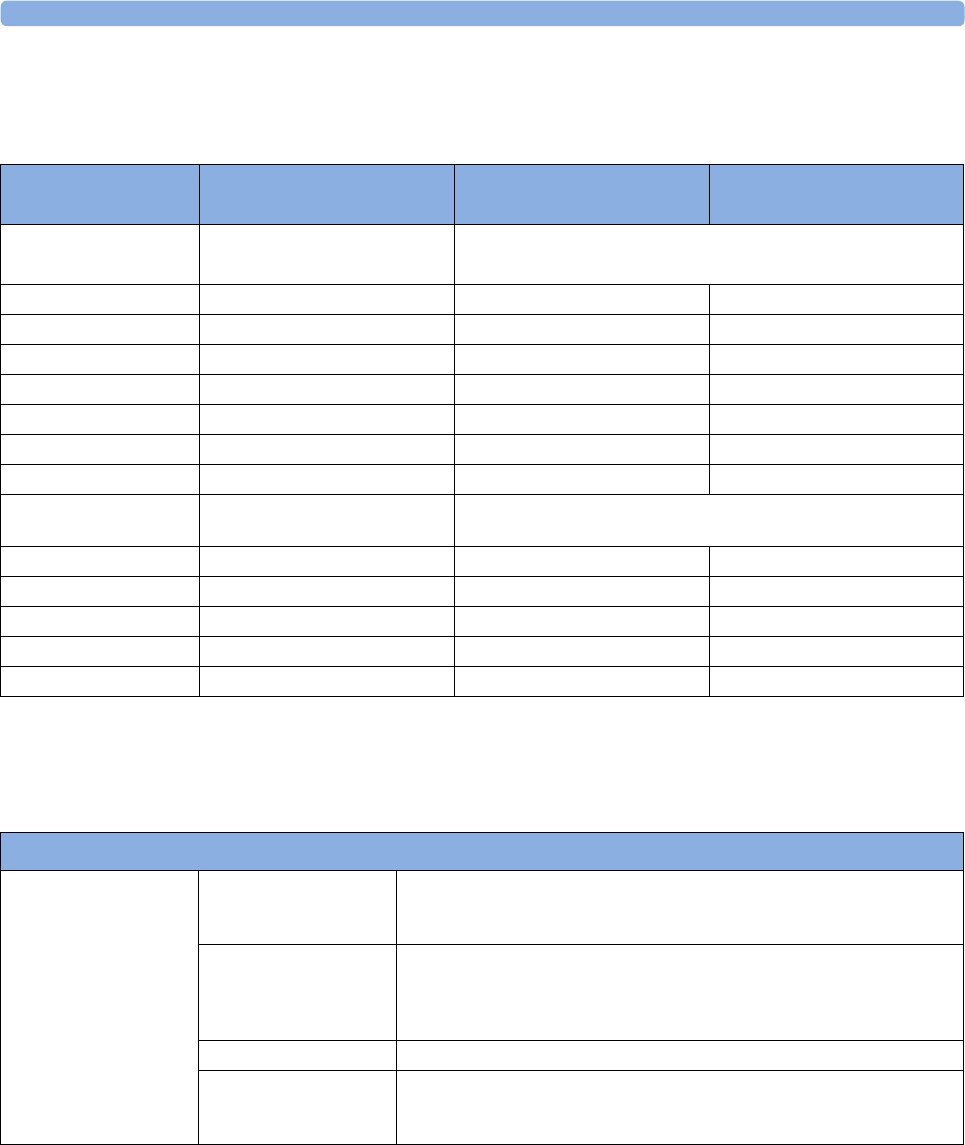
40 Specifications
489
Interfering Gas and Vapor Effects On CO2 Measurement Values
The specified deviations for M3002A/M3014A are valid when the appropriate corrections are switched on and set
correctly.
Spirometry
Complies with IEC 60601-2-49:2001. The following specifications apply for 760 mmHg ambient
pressure and patient gas: room air at 35°C, unless otherwise noted.
Gas or Vapor Gas Level
(% volume fraction) M3002A/M3014A M3015A
Additional deviation due to gas interference, measured at 0 -
40 mmHg CO2
Nitrous Oxide 60% ±1 mmHg ±5%
Halothane 4% ±2 mmHg ±5%
Enflurane 5% ±2 mmHg ±5%
Isoflurane 5% ±2 mmHg ±5%
Sevoflurane 5% ±2 mmHg ±5%
Xenon 80% -5 mmHg ±5%
Helium 50% ±1 mmHg ±5%
Metered dose inhaler
propellants
- not specified for use
Desflurane 15% +5 mmHg ±5%
Ethanol 0.1% ±1 mmHg ±5%
Isopropanol 0.1% ±1 mmHg ±5%
Acetone 0.1% ±1 mmHg ±5%
Methane 1% ±1 mmHg ±5%
Spirometry Performance Specifications
Flow Wave (AWF) Range ±25 l/min (neonatal)
±100 l/min (pediatric)
±180 l/min (adult)
Accuracy ±3% or
0.125 l/min (neonatal)
0.25 l/min (pediatric)
0.5 l/min (adult)
Scales ±10, ±20, ±40, ±60, ±80, ±100, ±120, ±150 l/min
Scale Default ±20 l/min (neonatal)
±100 l/min (pediatric)
±150 l/min (adult)
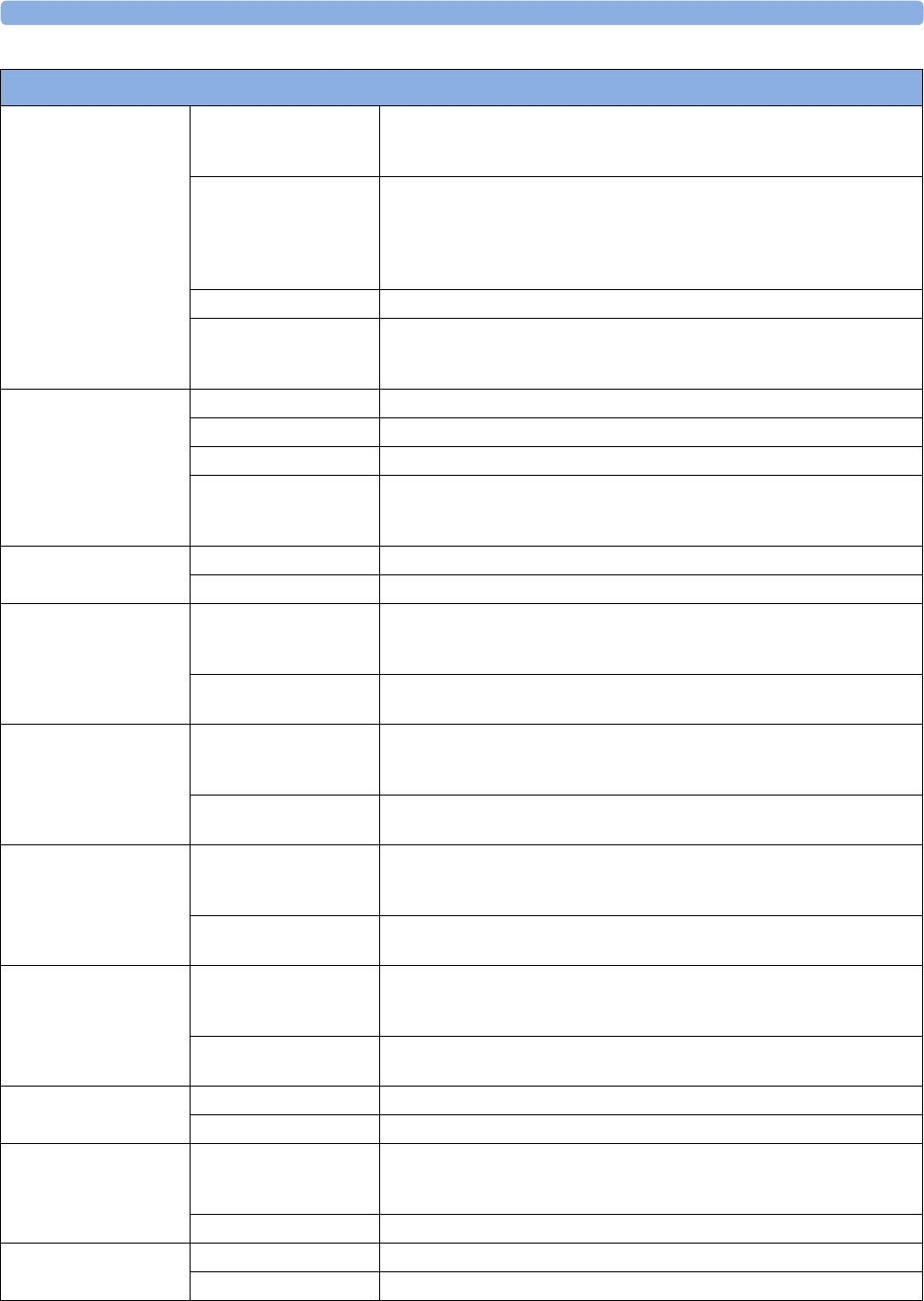
40 Specifications
490
Volume Wave (AWV) Range 0 to 100 ml (neonatal)
0 to 400 ml (pediatric)
0 to 3000 ml (adult)
Accuracy ±5% or
±3 ml (neonatal)
±12 ml (pediatric)
±90 ml (adult),
whichever is greater
Scales 50, 100, 200, 600, 800, 1000, 2000, 3000 ml
Scale Default 50 ml (neonatal)
200 ml (pediatric)
800 ml (adult)
Pressure Wave (AWP) Range -20 to 120 cmH2O
Accuracy ±2% or ±0.5 cmH2O whichever is greater
Scales 10, 20, 40, 60, 80, 100, 120 cmH2O
Scale Default 20 cmH2O (neonatal)
40 cmH2O (pediatric)
40 cmH2O (adult)
Respiration Rate
numeric (RRspir)
Range 2 to 120 breaths/min
Resolution 1 breath/min
Inspired Minute Volume
numeric (MVin)
Range 0.01 to 5 l/min (neonatal)
0.06 to 30 l/min (pediatric)
0.4 to 60 l/min (adult)
Resolution 0.01 l/min (neonatal/pediatric)
0.1 l/min (adult)
Expired Minute Volume
numeric (MVexp)
Range 0.01 to 5 l/min (neonatal)
0.06 to 30 l/min (pediatric)
0.4 to 60 l/min (adult)
Resolution 0.01 l/min (neonatal/pediatric)
0.1 l/min (adult)
Inspired Volume
numeric (TVin)
Range 5 to 100 ml (neonatal)
30 to 400 ml (pediatric)
200 to 3000 ml (adult)
Resolution 1 ml (neonatal/pediatric)
10 ml (adult)
Expired Volume
numeric (TVexp)
Range 5 to 100 ml (neonatal)
30 to 400 ml (pediatric)
200 to 3000 ml (adult)
Resolution 1 ml (neonatal/pediatric)
10 ml (adult)
Lung Compliance
numeric
Range 0 to 500 ml/cmH2O
Resolution 1 ml/cmH2O
Airway Resistance
numeric
Range 0 to 500 cmH2O/l/s (neonatal)
0 to 250 cmH2O/l/s (pediatric)
0 to 100 cmH2O/l/s (adult)
Resolution 1 cmH2O/l/s
Peak Inspiratory
Pressure numeric (PIP)
Range 0 to 120 cmH2O
Resolution 1 cmH2O
Spirometry Performance Specifications
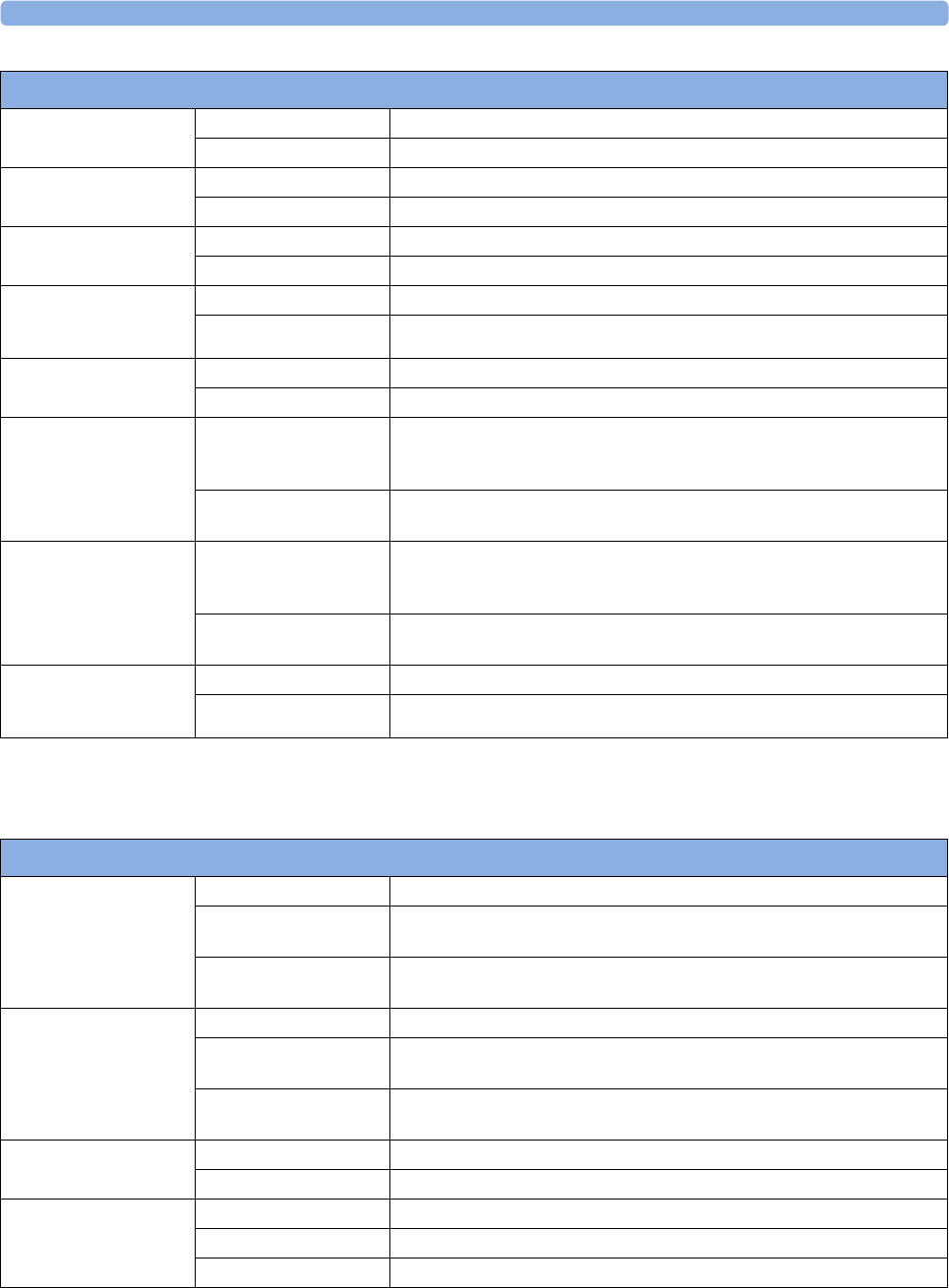
40 Specifications
491
Cardiac Output / Continuous Cardiac Output
Complies with IEC 60601-2-34:2000
Negative Inspiratory
Pressure numeric
Range -20 to 0 cmH2O
Resolution 1 cmH2O
Mean Airway Pressure Range 0 to 120 cmH2O
Resolution 1 cmH2O
Plateau Pressure
numeric
Range 0 to 120 cmH2O
Resolution 1 cmH2O
Positive End-Expiratory
Pressure numeric
(PEEP)
Range 0 to 99 cmH2O
Resolution 1 cmH2O
Barometric Pressure
numeric (PB)
Range 400 to 800 mmHg
Resolution 1 mmHg
Peak Inspiratory Flow
numeric (PIF)
Range 0.3 to 25 l/min (neonatal)
1 to 100 l/min (pediatric)
2 to 180 l/min (adult)
Resolution 0.1 l/min (neonatal)
1 l/min (pediatric/adult)
Peak Expiratory Flow
numeric (PEF)
Range 0.3 to 25 l/min (neonatal)
1 to 100 l/min (pediatric)
2 to 180 l/min (adult)
Resolution 0.1 l/min (neonatal)
1 l/min (pediatric/adult)
Inspiration to
Expiration ratio numeric
(I:E)
Range 1: 0.2 to 9.9
Resolution 0.1
Spirometry Performance Specifications
C.O./CCO Performance Specifications
C.O. (right heart) Range 0.1 to 20.0 l/min
Accuracy Instrument Specification (electrical): ±3% or 0.1 l/min
System Specification: ±5% or 0.2 l/min
Repeatability Instrument Specification (electrical): ±2% or 0.1 l/min
System Specification: ±3% or 0.1 l/min
C.O. (transpulmonary) Range 0.1 to 25.0 l/min
Accuracy Instrument Specification (electrical): ±4% or 0.15 l/min
System Specification: ±5% or 0.2 l/min
Repeatability Instrument Specification (electrical): ±2% or 0.1 l/min
System Specification: ±3% or 0.1 l/min
EVLW Range 10 to 5000 ml
Standard Deviation 10% or 1 ml/kg
ITBV Range 50 to 6000 ml
Accuracy ±10% or 30 ml
Repeatability ±5% or 20 ml
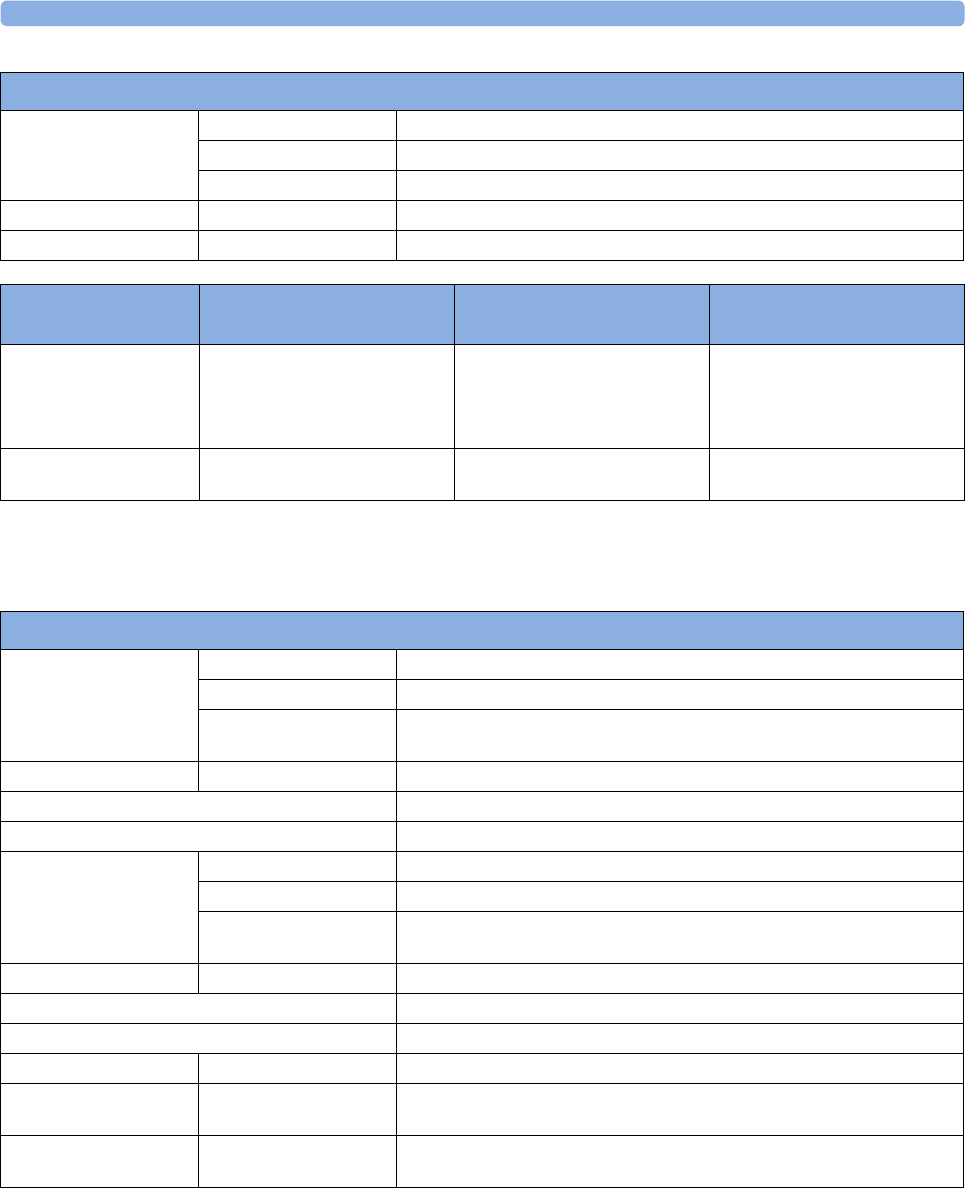
40 Specifications
492
tcGas
Complies with IEC 60601-2-23:1999/EN 60601-2-23:2000.
CCO Range 0.1 to 25.0 l/min
Standard Deviation 10% or 0.3 l/min
Display Update 2 seconds nominal
Blood Temperature Range 17.0 to 43°C (62.6 to 109,5°F)
Injectate Temperature Range -1 to 30°C (30.2 to 86.0°F)
C.O./CCO Performance Specifications
C.O./CCO Alarm
Specifications Range Adjustment Delay
TBlood 17 to 43°C Steps of 0.5°C (17 to 35°C)
Steps of 0.1°C (35 to 43°C)
Steps of 1°F (63 to 95°F)
Steps of 0.2°F (95 to 109°F)
10 seconds after the value exceeds
the set limit range
CCO 0.1 to 25.0 l/min 0.1 l/min (0.1 to 10.0 l/min)
0.5 l/min (10.0 to 25.0 l/min)
10 seconds after the value exceeds
the set limit range
tcGas Performance Specifications
tcpO2 Range 0 to 750 mmHg (0 to 100 kPa)
Resolution 1 mmHg (0.1 kPa)
Overall Accuracy
(incl. transducer)
0 to 20.9% O2 better than +5 mmHg (+0.7 kPa)
Above 20.9% O2 better than +10% of reading
tcpO2 Test Signal 60 mmHg (8.0 kPa)
tcpO2 Drift, including transducer Typically 1.25%/h
tcpO2 response time, including transducer Typically 30 s
tcpCO2 Range 5 to 200 mmHg (0.7 to 26.7 kPa)
Resolution 1 mmHg (0.1 kPa)
Overall Accuracy
(incl. transducer)
5 to 76 mmHg (0.7 to 10.1 kPa) better than +5 mmHg (+0.7 kPa)
Above 76 mmHg (10.1 kPa) better than +10% of reading
tcpCO2 Test Signal 40 mmHg (5.3 kPa)
tcpCO2 Drift, including transducer Typically 2.5%/h
tcpCO2 response time, including transducer Typically 60 s
Warm-up Time <3 minutes
Site Timer (M1018A
only)
0.5, 1, 1.5, 2, 2.5, 3, 4, 5, 6, 7, or 8 hours. Change Site alarm when site time is
expired and configurable automatic heating switch-off
Transducer Heating Available Temperatures -
37.0°C, 41.0 to 45°C in steps of 0.5°C
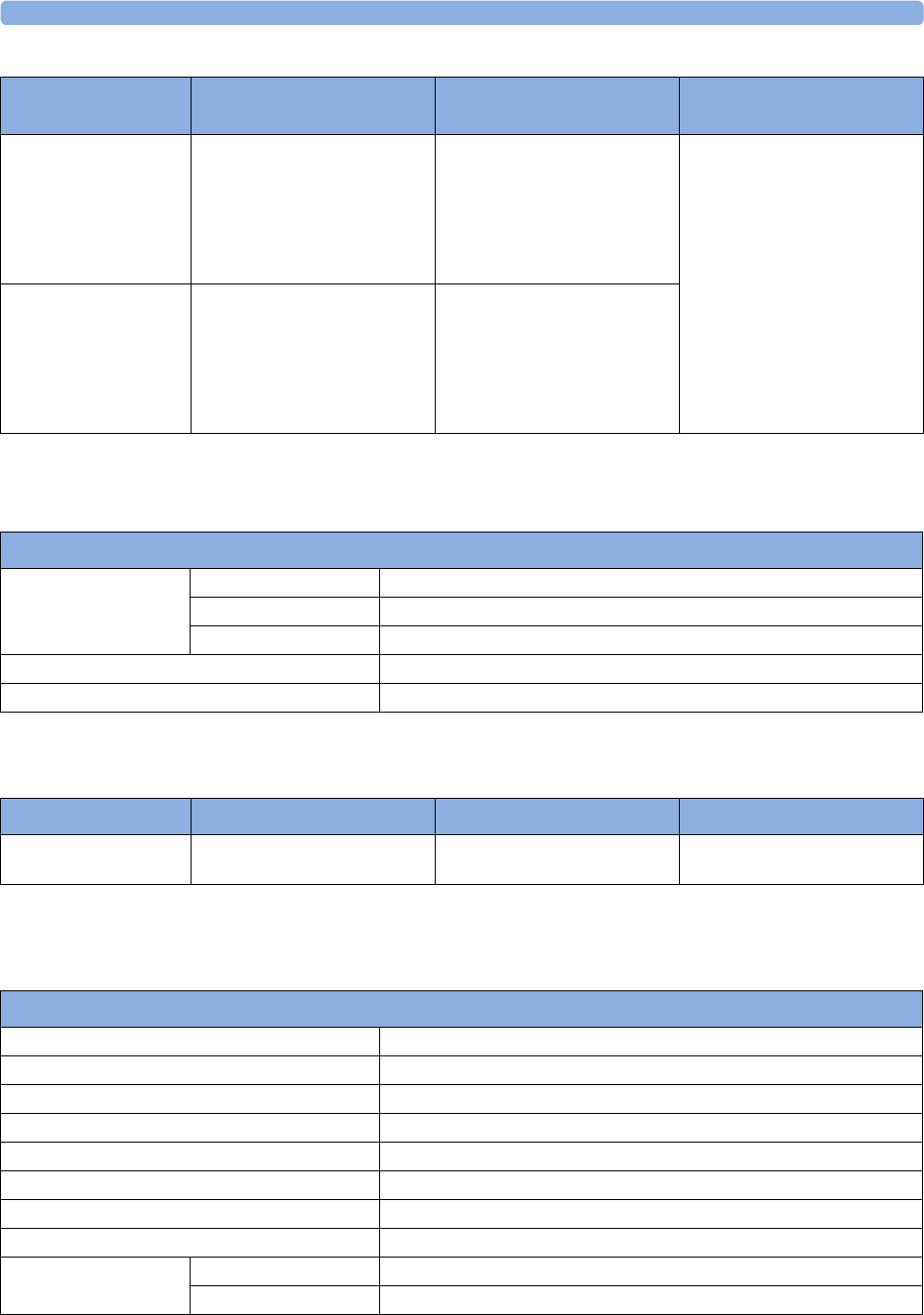
40 Specifications
493
Intravascular Oxygen Saturation
Complies with IEC 60601-2-49:2001.
1 The accuracy specification for Edwards Lifesciences’ Philips-compatible catheters has been verified
in the saturation range 40%-95%.
EEG
Complies with IEC 60601-2-26:1994/EN 60601-2-26:1994.
tcGas Alarm
Specifications Range Adjustment Alarm Delay
tcpO2 10 to 745 mmHg
1.0 to 99.5 kPa
10 to 30 mmHg: 1 mmHg
1.0 to 4.0 kPa: 0.1 kPa
32 to 100 mmHg: 2 mmHg
4.2 to 13 kPa: 0.2 kPa
105 to 745 mmHg: 5 mmHg
13.5 to 99.5 kPa: 0.5 kPa
10 seconds after the value exceeds
the set limit range.
tcpCO2 10 to 195 mmHg
1.0 to 26 kPa
10 to 30 mmHg: 1 mmHg
1.0 to 4.0 kPa: 0.1 kPa
32 to 100 mmHg: 2 mmHg
4.2 to 13 kPa: 0.2 kPa
105 to 195 mmHg: 5 mmHg
13.5 to 26 kPa: 0.5 kPa
Performance Specifications
SO2, SvO2, ScvO2 Range 10% to 100%
Accuracy ±2% (i.e. ±2 units), 1 standard deviation over 40% to 100%1 range.
Resolution 1%
Stability (system) Drift <2% over 24 hours
Response Time (10 % to 90 %) 5seconds
Alarm Specifications Range Adjustment Delay
SO2, SvO2, ScvO2 10% to 100% 1% max. 15 +4 seconds after value
exceeds the set limit range
EEG Performance Specifications
Leakage Current <=10 mA @ 110 Vac
Input Signal Range 1mVp-p
Differential Input Impedance >15 MΩ @ 10 Hz
Max. DC Input Offset Voltage ±320 mV
Input Protection Against defibrillation (5 kV) and electrosurgery
Common Mode Rejection >105 dB @ 5 kΩ imbalance and 60 Hz
Noise <0.4 µVrms (1 to 30 Hz)
Electromagnetic Susceptibility <10 µVp-p @ 3 V/m, 26-1000 MHz
Electrode Impedance
Measurement
Range 0 to 30 kΩ
Accuracy ±1 kΩ
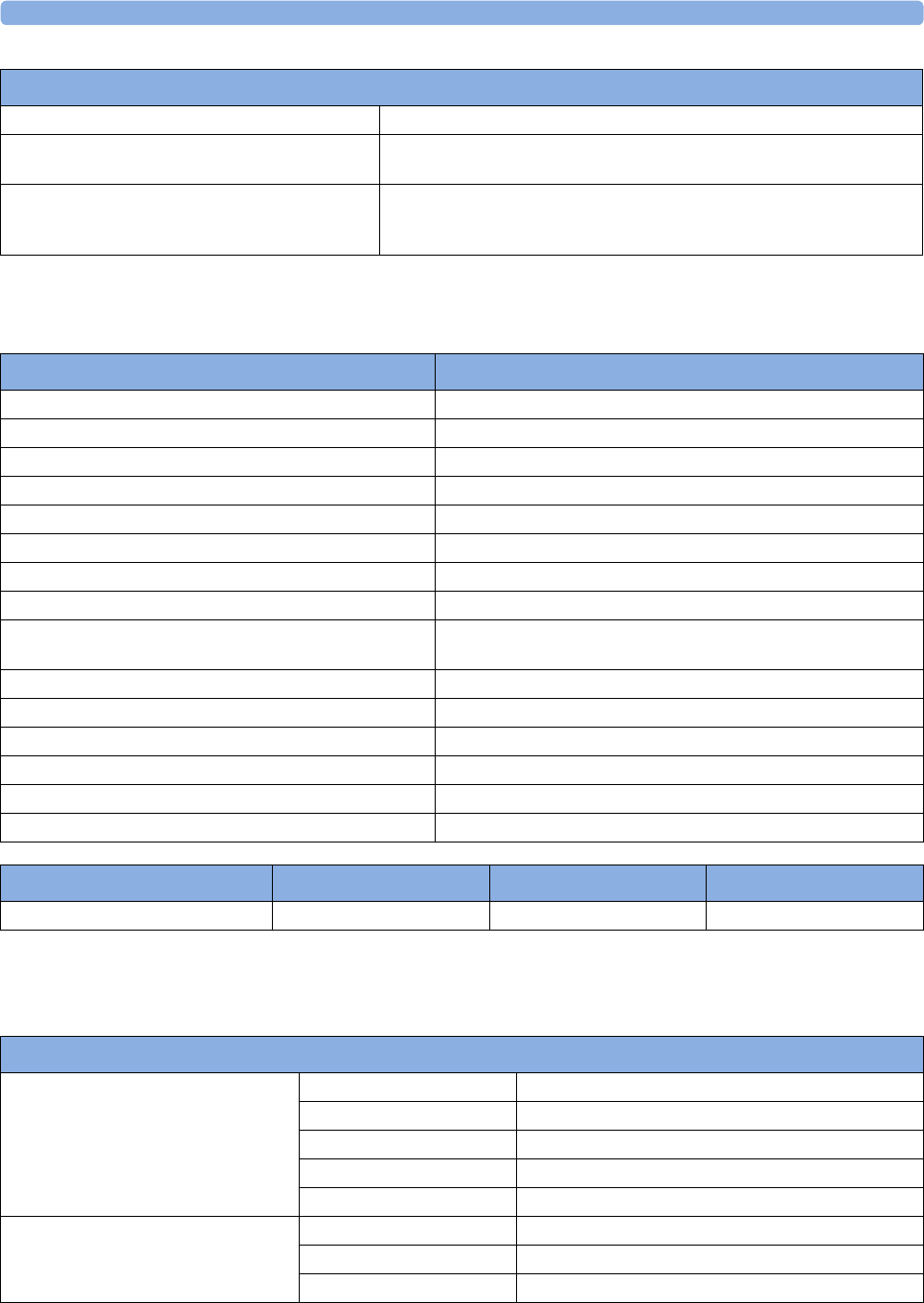
40 Specifications
494
BIS
Complies with IEC 60601-2-26:1994.
NMT
Complies with IEC 60601-2-49:2001
Bandwidth 0.5 Hz to 50 Hz (-3 dB)
Low Filter Cut-Off Frequencies 0.5, 1.0, 2.0, and 5.0 Hz
(12 dB/octave)
High Filter Cut-Off Frequencies 15 Hz (65 dB/octave)
30 Hz (75 dB/octave)
50 Hz (85 dB/octave)
EEG Performance Specifications
BIS Performance Specifications BIS, BISx M1034A
Bispectral Index (BIS) Range 0 - 100
Signal Quality Index (SQI) Range 0 - 100%
EMG Range 0 - 100 dB
Suppression Ratio (SR) 0 - 100%
Spectral Edge Frequency (SEF) 0.5 - 30.0 Hz
Total Powe r (TP) 0 - 100 dB
Bursts (BISx only) 0 - 30 /minute
Noise <0.3 µV RMS (2.0 µV peak-to-peak)
Wave Scale With gridlines on: ±25 µV, ±50 µV, ±100 µV, ±250 µV
With gridlines off: 50 µV, 100 µV, 200 µV, 500 µV
Update Frequency (BIS Numeric) 2048 ms
Bandwidth 0.25 - 100 Hz (-3 dB)
High Pass Filters 0.25 Hz, 1 Hz, 2 Hz (-3 dB)
Low Pass Filters 30 Hz, 50 Hz, 70 Hz, 100 Hz (-3 dB)
Notch Filters (for line frequency) 50 Hz, 60 Hz
Impedance Measurement Range 0 to 999 kΩ
BIS Alarm Specifications Range Adjustment Alarm Delay
BIS High/Low Alarm 0 - 100 1 Max. 2 seconds
NMT Performance Specifications
Stimulation Output Current Pulse 100, 200, or 300 µsecs; monophasic rectangle pulse
Current Range 5 to 60 mA in increments of 5 mA
Current Accuracy ± 5% or ± 2 mA, whichever is greater
Maximum Skin Resistance 3 kOhm
Maximum Output Voltage 300 V ±10%
Single Twitch Stimulation Mode Twitch 0 to 200% (resolution: 1%)
Repeat Time Manual, or 1 sec, 12 sec, 30 sec
Minimum Recovery Time None
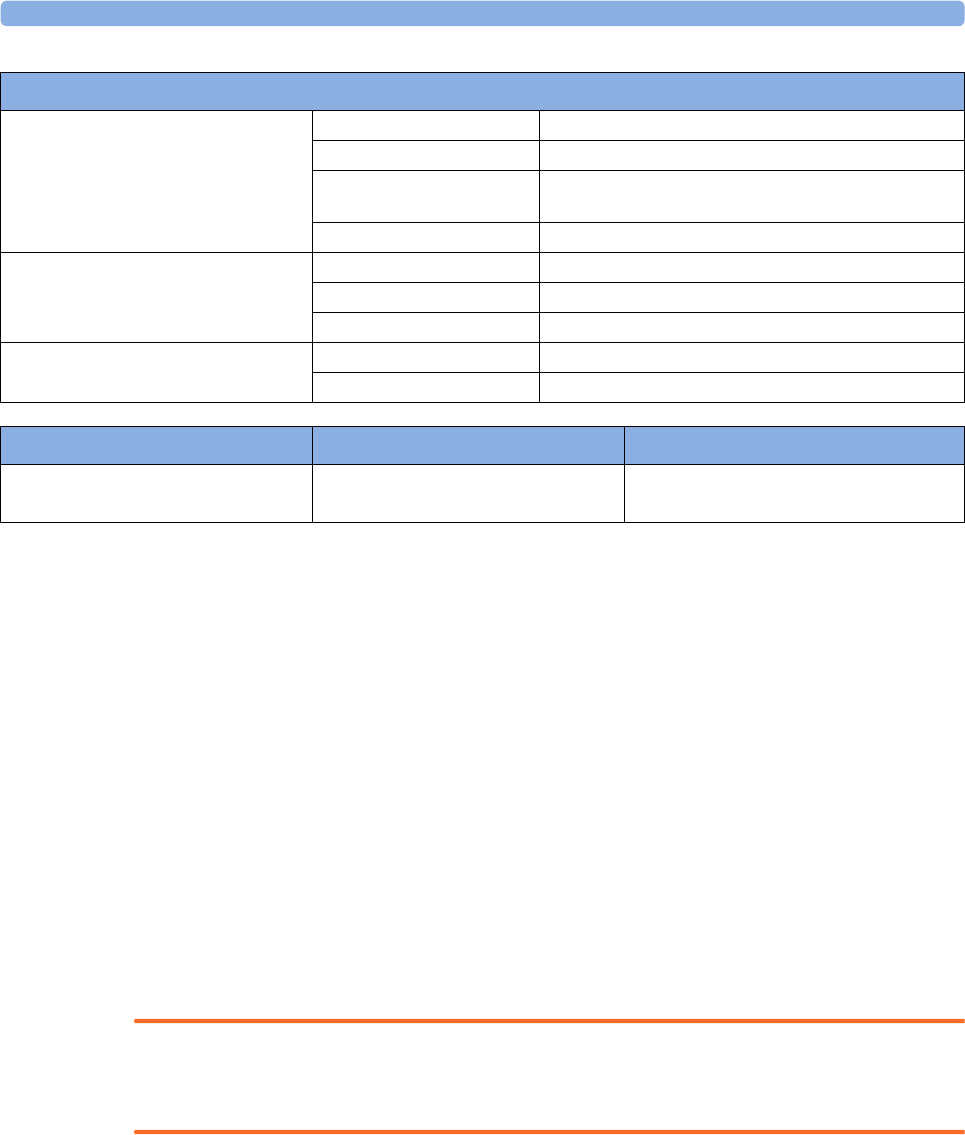
40 Specifications
495
Safety and Performance Tests
You must observe any national regulations on the qualification of the testing personnel and suitable
measuring and testing facilities. See the maintenance section for a list of required tests. Safety and
performance tests, and what to do if the instrument does not meet these specifications, are described
in the Service Guide.
Electromagnetic Compatibility (EMC) Specifications
Take special precautions regarding electromagnetic compatibility (EMC) when using medical electrical
equipment. You must operate your monitoring equipment according to the EMC information
provided in this book. Portable and mobile radiofrequency (RF) communications equipment can affect
medical electrical equipment.
Accessories Compliant with EMC Standards
All accessories listed in the accessories section comply, in combination with the patient monitor, with
the requirements of IEC 60601-1-2:2001 + A1:2004.
WARNING
Using accessories other than those specified may result in increased electromagnetic emission or
decreased electromagnetic immunity of the monitoring equipment.
Electromagnetic Emissions
The monitor is suitable for use in the electromagnetic environment specified in the table below. You
must ensure that it is used in such an environment.
Train-Of-Four Stimulation Mode TOF Count (TOFcnt) 0 to 4 (resolution: 1)
TOF Ratio (TOFrat) 5 to 150% (resolution: 1)
Repeat Time Manual, or 12 sec, 30 sec, 1 min, 5 min, 10 min, 15 min, 30
min, 60 min
Minimum Recovery Time 10 sec
Post-Tetanic-Count Stimulation Mode PTC 0 to 20 (resolution: 1)
Repeat Time Manual
Minimum Recovery Time 2 min
Double-Burst Stimulation Mode Repeat Time Manual
Minimum Recovery Time 20 sec
NMT Performance Specifications
NMT Alarm Specifications Range Alarm Delay
** TOFcnt High 0, 1, 2, 3 TOF Counts Max. 4 sec system delay after value goes
above the high alarm limit setting
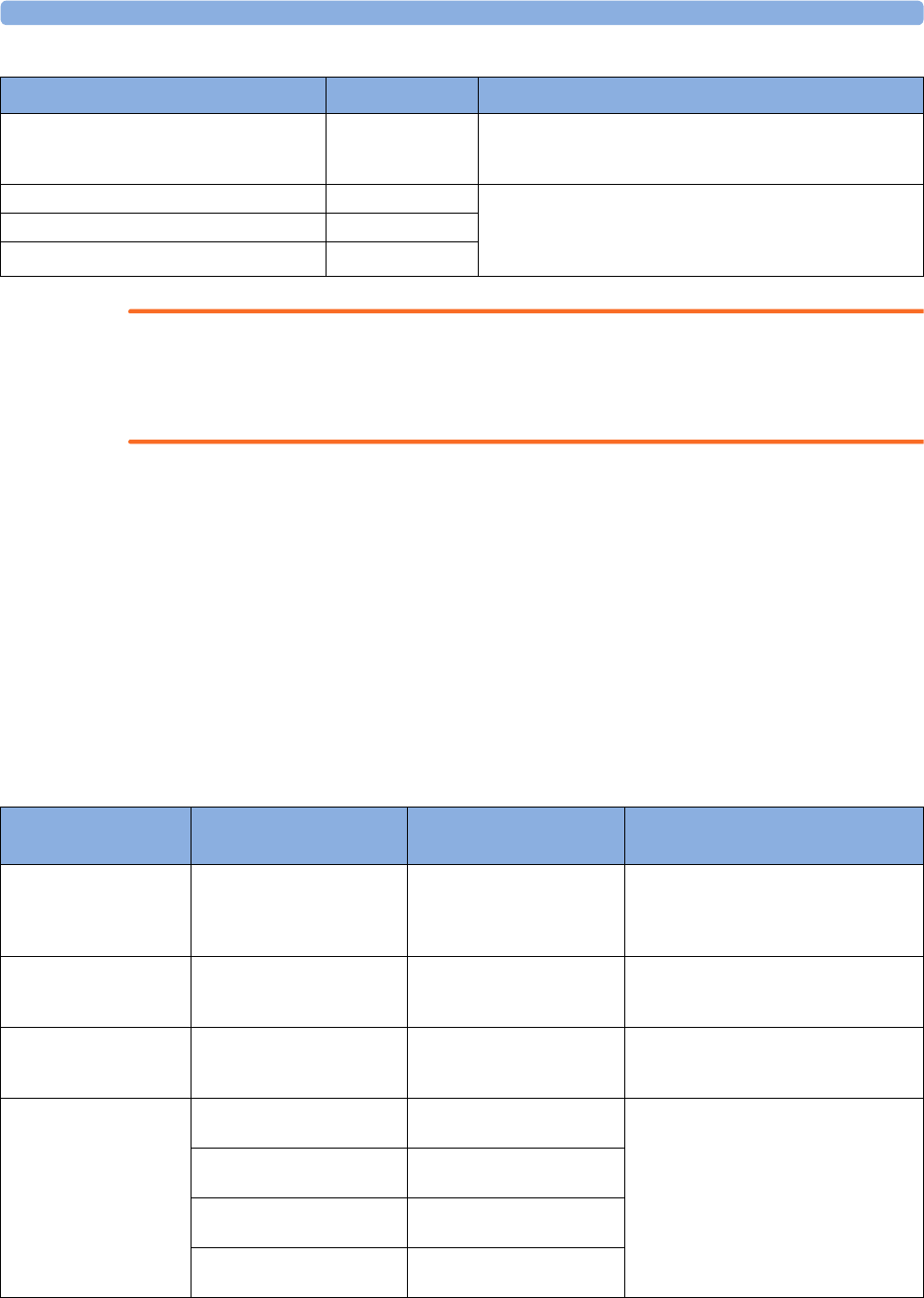
40 Specifications
496
WARNING
The monitor should not be used next to or stacked with other equipment. If you must stack the
monitor, you must check that normal operation is possible in the necessary configuration before you
start monitoring patients.
Avoiding Electromagnetic Interference (Resp and BIS)
The respiration (Resp) and BIS measurements are very sensitive measurements that measure very small
signals. Technological limitations do not allow higher immunity levels than 1 V/m for radiated RF
electromagnetic fields and 1 Vrms for conducted disturbances induced by RF fields. Electromagnetic
fields with field strengths above 1 V/m and conducted disturbances above 1 Vrms may cause
erroneous measurements. Therefore Philips recommends that you avoid using electrically radiating
equipment in the close proximity of these measurements.
Electromagnetic Immunity
The monitor is suitable for use in the specified electromagnetic environment. The user must ensure
that it is used in the appropriate environment as described below.
Emissions test Compliance Avoiding Electromagnetic Interference
Radiofrequency (RF) emissions Group 1 The monitor uses RF energy only for its internal function.
Therefore, its RF emissions are very low and are not likely to
cause any interference in nearby electronic equipment
RF emissions CISPR 11 Class A The monitor is suitable for use in all establishments other than
domestic and those directly connected to the public low-voltage
power supply network that supplies buildings used for domestic
purposes
Harmonic emissions IEC 61000-3-2 n/a
Voltage fluctuations IEC 61000-3-3 n/a
Immunity test IEC 60601-1-2
test level Compliance level Electromagnetic environment guidance
Electrostatic discharge
(ESD)
IEC 61000-4-2
±6 kV contact
±8 kV air
±6 kV contact
±8 kV air
Floors should be wood, concrete, or
ceramic tile. If floors are covered with
synthetic material, the relative humidity
should be at least 30%.
Electrical fast transient/
burst
IEC 61000-4-4
±2 kV for power supply lines
±1 kV for input/output lines
±2 kV for power supply lines
±1 kV for input/output lines
Mains power quality should be that of a
typical commercial and/or hospital
environment
Surge
IEC 61000-4-5
±1 kV differential mode
±2 kV common mode
±1 kV differential mode
±2 kV common mode
Mains power quality should be that of a
typical commercial and/or hospital
environment
Voltage dips, short
interruptions and voltage
variations on power supply
input lines
IEC 61000-4-11
<5% UT (>95% dip in UT) for
0.5 cycles
<5% UT (>95% dip in UT) for
0.5 cycles
Mains power quality should be that of a
typical commercial and/or hospital
environment. If the user of the monitor
requires continued operation during power
mains interruptions, it is recommended
that the monitor is equipped with an
internal battery or is powered from an
uninterruptible power supply.
40% UT (60% dip in UT) for
5cycles
40% UT (60% dip in UT) for
5 cycles
70% UT (30% dip in UT) for
25 cycles
70% UT (30% dip in UT) for
25 cycles
<5% UT (>95% dip in UT) for
5sec
<5% UT (>95% dip in UT) for
5sec
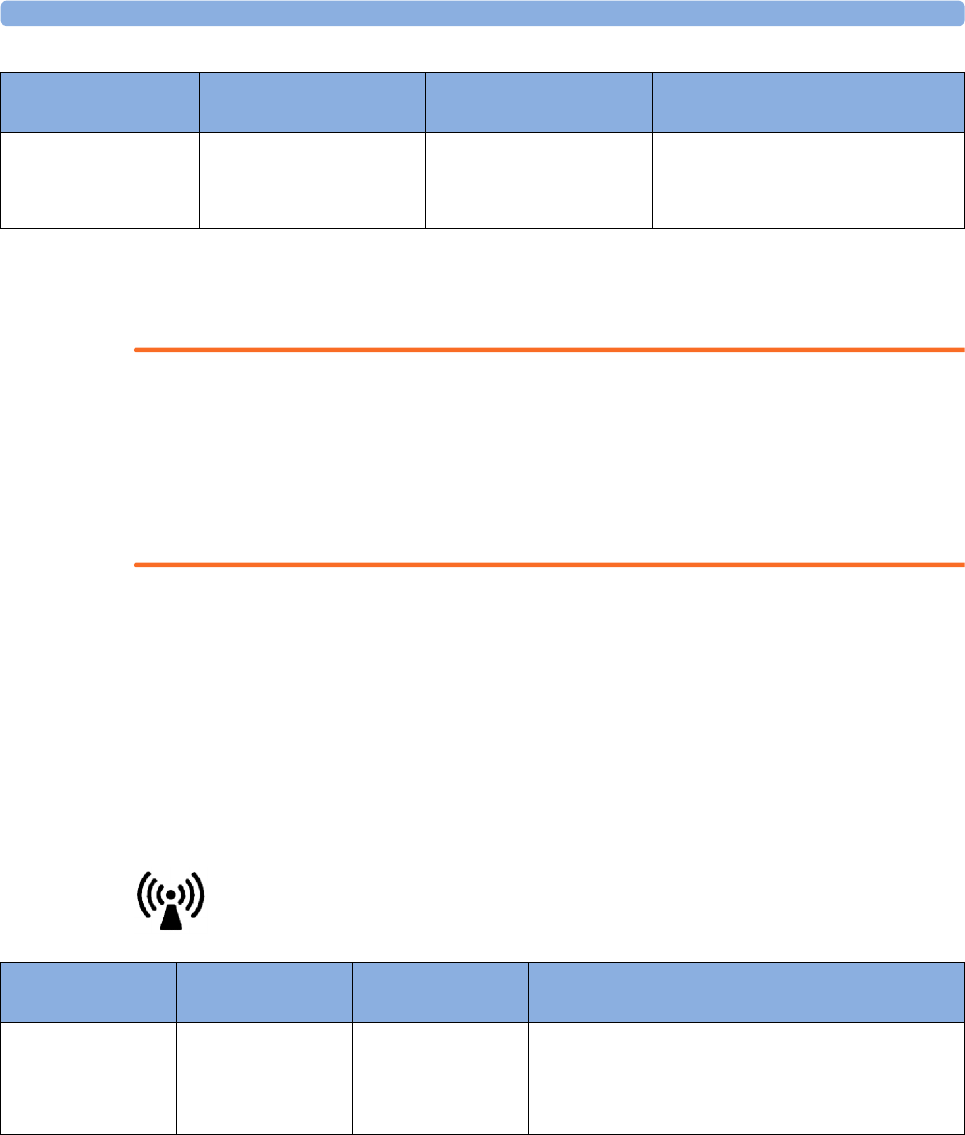
40 Specifications
497
In this table, UT is the a.c. mains voltage prior to application of the test level.
Recommended Separation Distance
WARNING
• This equipment generates, uses and radiates radio-frequency energy, and if it is not installed and
used in accordance with its accompanying documentation, may cause interference to radio
communications.
• The monitor, equipped with a wireless network interface, intentionally receives RF electromagnetic
energy for the purpose of its operation. Therefore, other equipment may cause interference, even
if that other equipment complies with CISPR emission requirements.
In the following table, P is the maximum output power rating of the transmitter in watts (W) according
to the transmitter manufacturer and d is the recommended separation distance in meters (m). The
values given in brackets are for respiration and BIS.
Portable and mobile RF communications equipment should be used no closer to any part of the
monitor, including cables, than the recommended separation distance calculated from the equation
appropriate for the frequency of the transmitter.
Field strengths from fixed RF transmitters, as determined by an electromagnetic site survey, should be
less than the compliance level in each frequency range.
Interference may occur in the vicinity of equipment marked with this symbol:
Power frequency (50/
60 Hz) magnetic field
IEC 61000-4-8
3 A/m 3 A/m Power frequency magnetic fields should be
a t levels characteristic of a typical location
in a typical commercial and/or hospital
environment
Immunity test IEC 60601-1-2
test level Compliance level Electromagnetic environment guidance
Immunity test IEC 60601-1-2
test level Compliance level Electromagnetic environment guidance
Conducted RF
IEC 61000-4-6
3Vrms
150 kHz to 80 MHz
3Vrms
(1 Vrms for respiration
and BIS)
Recommended separation distance:
d = 1.2√P
for respiration and BIS:
d = 3.5√P
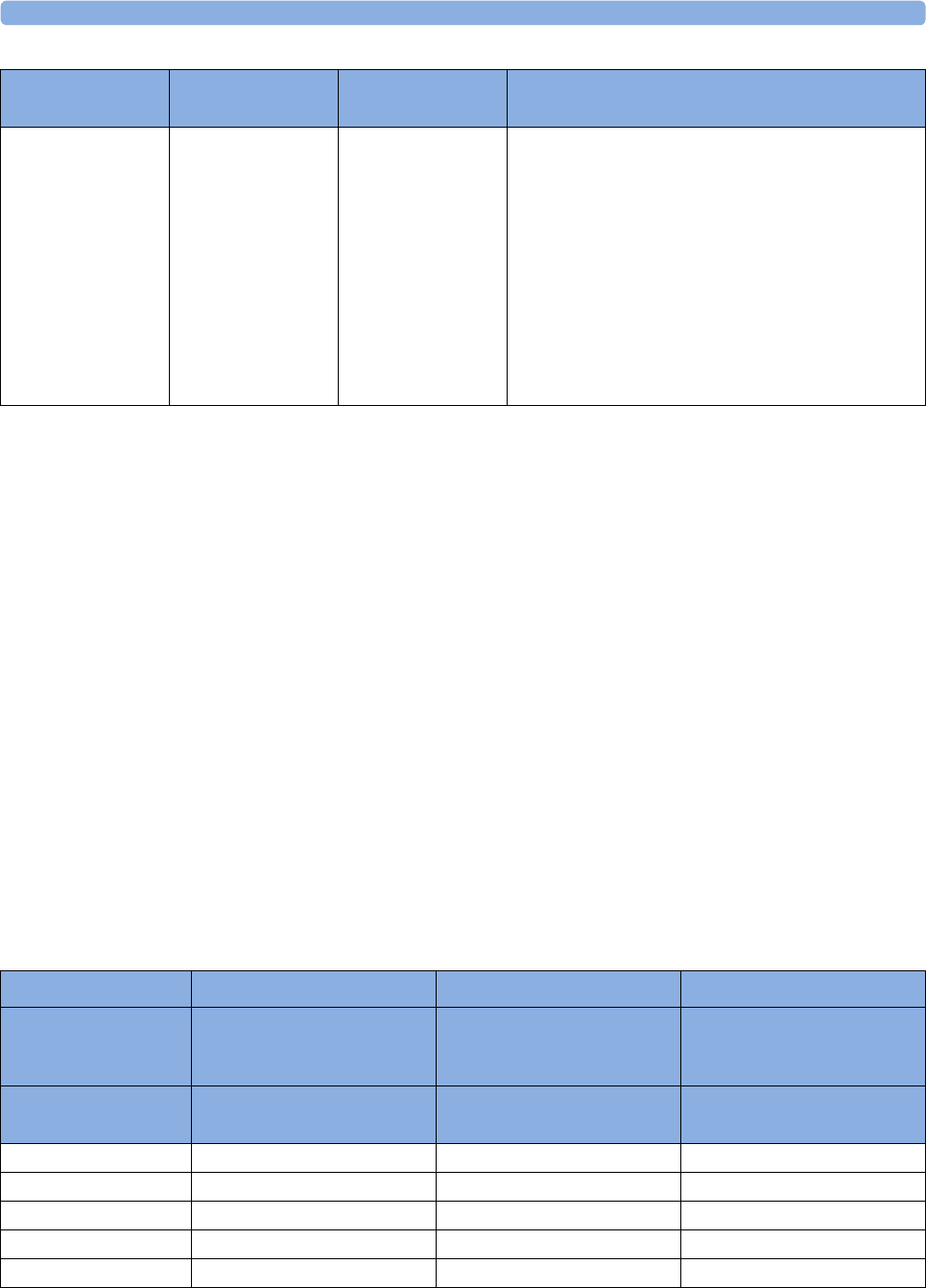
40 Specifications
498
Field strengths from fixed transmitters, such as base stations for radio (cellular, cordless) telephones
and land mobile radios, amateur radio, AM and FM radio broadcast and TV broadcast cannot be
predicted theoretically with accuracy. To assess the electromagnetic environment due to fixed RF
transmitters, an electromagnetic site survey should be considered. If the measured field strength in the
location in which the monitor is used exceeds the applicable RF compliance level above, the monitor
should be observed to verify normal operation. If abnormal performance is observed, additional
measures may be necessary, such as reorienting or relocating the monitor.
These guidelines may not apply in all situations. Electromagnetic propagation is affected by absorption
and reflection from structures, objects, and people.
Recommended Separation Distances from Portable and Mobile RF
Communication Equipment
The monitor is intended for use in an electromagnetic environment in which radiated RF disturbances
are controlled. The customer or user of the monitor can help prevent electromagnetic interference by
maintaining a minimum distance between portable and mobile RF communications equipment and the
monitor as recommended below, according to the maximum output power of the communications
equipment.
In the following table, P is the maximum output power rating of the transmitter in watts (W) according
to the transmitter manufacturer and d is the recommended separation distance in meters (m). The
values given in brackets are for respiration and BIS.
Radiated RF
IEC 61000-4-3
3V/m
80 MHz to 2.5 GHz
3V/m
(1 V/m for respiration
and BIS)
Recommended separation distance:
80 MHz to 800 MHz
d = 1.2√P
80 MHz to 800 MHz for respiration and BIS
d = 3.5√P
800 MHz to 2,5 GHz
d = 2.3√P
800 MHz to 2,5 GHz for respiration and BIS
d = 7.0√P
2.0 to 2,3 GHz for short range radio
d = 7.0√P
Immunity test IEC 60601-1-2
test level Compliance level Electromagnetic environment guidance
Frequency of transmitter 150 kHz to 80 MHz 80 MHz to 800 MHz 800 MHz to 2,5 GHz
Equation
d = 1.2√P
for respiration and BIS:
d = 3.5√P
d = 1.2√P
for respiration and BIS:
d = 3.5√P
d = 2.3√P
for respiration and BIS:
d = 7.0√P
Rated max. output
power of transmitter Separation distance Separation distance Separation distance
0.01 W 0.1 (0.4) m 0.1 (0.4) m 0.2 (0.7) m
0.1 W 0.4 (1.1) m 0.4 (1.1) m 0.7 (2.2) m
1 W 1.3 (3.5) m 1.3 (3.5) m 2.3 (7.0) m
10 W 3.8 (11.1) m 3.8 (11.1) m 7.3 (22.1) m
100 W 12.0 (35.0) m 12.0 (35.0) m 23.0 (70.0) m

40 Specifications
499
Recommended Separation Distances for WLAN Operation
To avoid interference in the presence of other RF sources, following separation distances are
recommended;
• A separation distance of 1 m to BlueTooth (Class 1), DECT and WLAN devices (if connected to a
different WLAN infrastructure) operating in the same frequency band.
• A separation distance of 3 m to other radio transmitters with a pulsed mode of operation and a
duty cycle less than 50%, operating in the same frequency band.
• A separation distance of 10 m to a consumer grade microwave oven and 30 m to a commercial
grade microwave oven, if operating in the 2,4 GHz band.
If other continuous wave transmitters operate in the same frequency band, a minimum signal-to-noise
ratio (SNR) of 25 dB should be provided at the monitor location.
These guidelines may not apply in all situations. Electromagnetic propagation is affected by absorption
and reflection from structures, objects, and people.
Electrosurgery Interference/Defibrillation/Electrostatic Discharge
The equipment returns to the previous operating mode within 10 seconds without loss of any stored
data. Measurement accuracy may be temporarily decreased while performing electrosurgery or
defibrillation. This does not affect patient or equipment safety. Do not expose the equipment to x-ray
or strong magnetic fields (MRI).
Fast Transients/Bursts
The equipment will return to the previous operating mode within 10 seconds without loss of any
stored data (M1032A within 30 seconds). If any user interaction is required, the monitor indicates this
with a technical alarm (INOP).
Restart time
After a power interruption, an ECG wave will be shown on the display after 30 seconds maximum. If
an X2 is connected to a host monitor, it can take up to a maximum of 45 seconds until the ECG wave
is shown.

40 Specifications
500
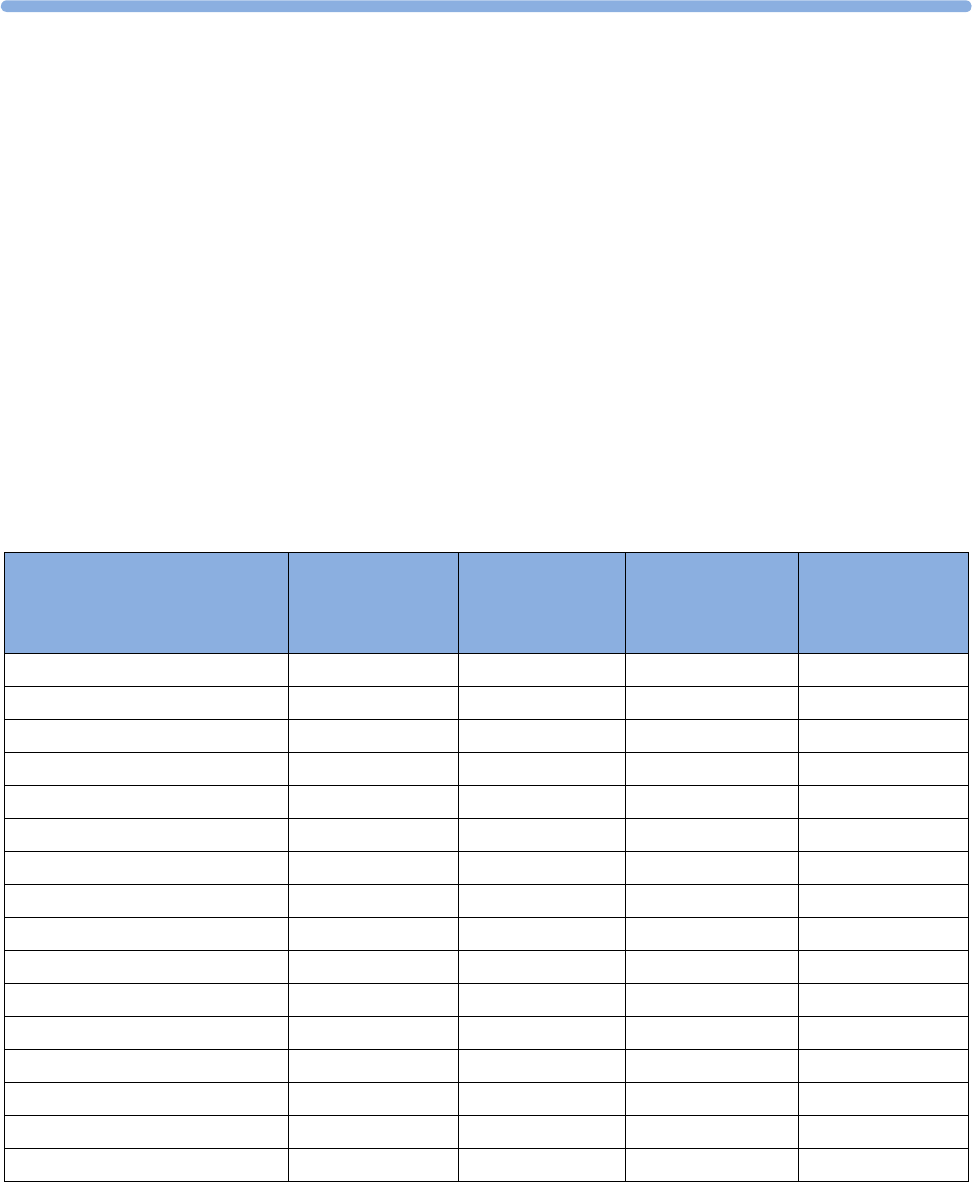
41
501
41Default Settings Appendix
This appendix documents the most important default settings of your monitor as it is delivered from
the factory. For a comprehensive list and explanation of default settings, see the Configuration Guide
supplied with your monitor. The monitor's default settings can be permanently changed in
Configuration Mode.
Note: If your monitor has been ordered pre-configured to your requirements, the settings at delivery
will be different from those listed here.
Country-Specific Default Settings
Certain default settings are specific to a particular country. These are listed here for all countries
alphabetically.
Country-Description Line Frequency
50/60 [Hz]
Units
Weight
kg, lb
Units
Height
in, cm
ECG Cable Color
IEC, AAMI
Afghanistan 50 kg cm AAMI
Åland Islands 50 kg cm IEC
Albania 50 kg cm IEC
Algeria 50 kg cm IEC
American Samoa 60 lb in AAMI
Andorra 60 lb in AAMI
Angola 50 kg cm IEC
Anguilla 60 lb in AAMI
Antarctica 60 lb in AAMI
Antigua and Barbuda 50 kg cm AAMI
Argentina 50 kg cm AAMI
Armenia 50 kg cm IEC
Aruba 60 kg cm AAMI
Australia 50 kg cm AAMI
Austria 50 kg cm IEC
Azerbaijan 50 kg cm IEC
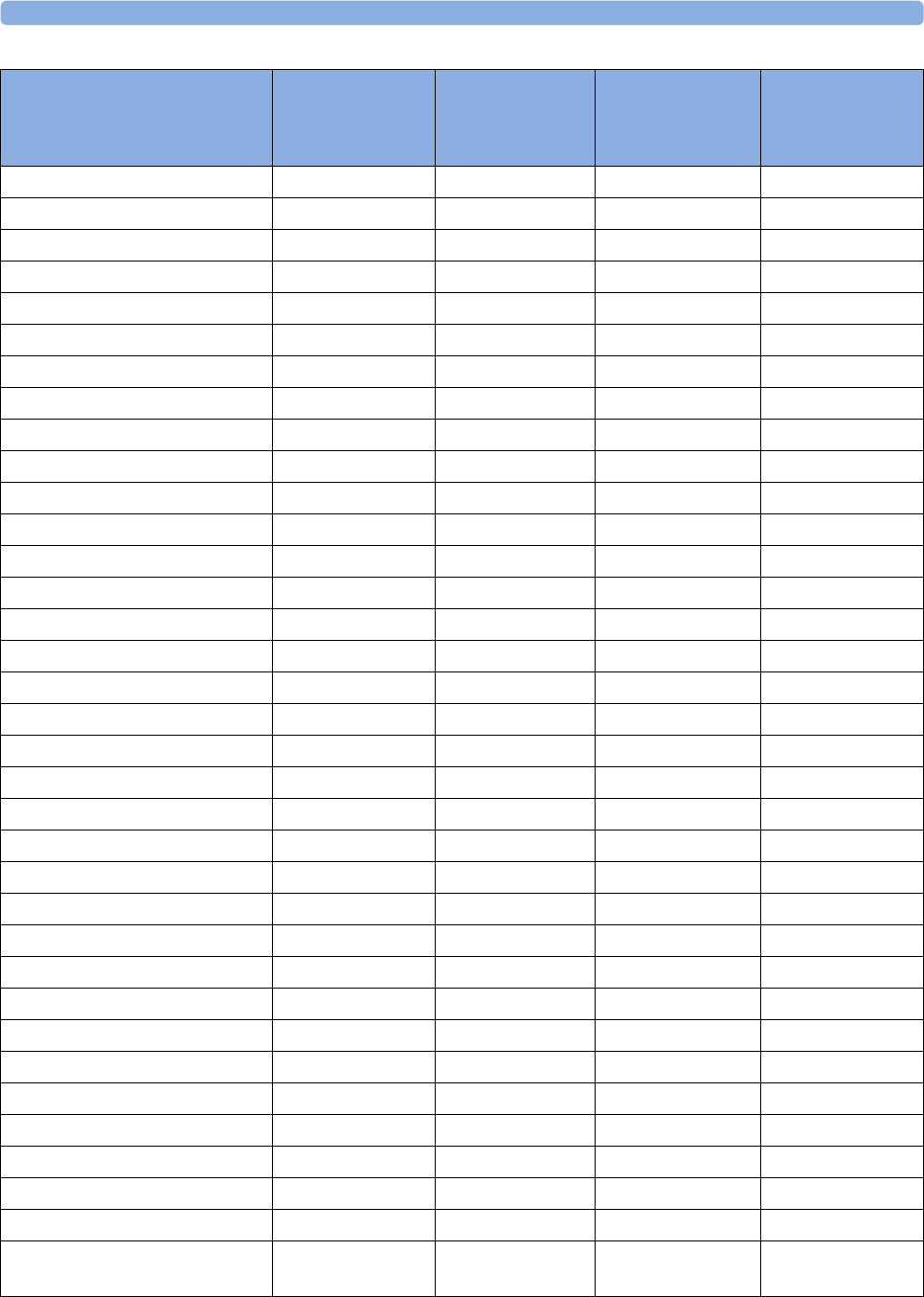
41 Default Settings Appendix
502
Bahamas 60 kg cm AAMI
Bahrain 50 kg cm AAMI
Bangladesh 50 kg cm IEC
Barbados 50 kg cm AAMI
Belarus 50 kg cm IEC
Belgium 50 kg cm IEC
Belize 60 lb in AAMI
Benin 60 lb in AAMI
Bermuda 60 kg cm AAMI
Bhutan 60 lb in AAMI
Bolivia 60 kg cm AAMI
Bosnia and Herzegovina 50 kg cm IEC
Botswana 50 kg cm IEC
Bouvet Island 60 lb in AAMI
Brazil 60 kg cm AAMI
British Indian Ocean Territory 60 lb in AAMI
Brunei Darussalam 50 kg cm IEC
Bulgaria 50 kg cm IEC
Burkina Faso 50 kg cm IEC
Burundi 50 kg cm IEC
Cambodia 50 kg cm IEC
Cameroon 50 kg cm IEC
Canada 60 kg cm AAMI
Cape Verde 60 lb in AAMI
Cayman Islands 60 kg cm AAMI
Central African Republic 50 kg cm IEC
Chad 60 lb in AAMI
Chile 50 kg cm AAMI
China 50 kg cm AAMI
Christmas Islands 60 lb in AAMI
Cocos Keeling Islands 60 lb in AAMI
Colombia 60 kg cm AAMI
Comoros 60 lb in AAMI
Congo 50 kg cm IEC
Congo, The Democratic Republic
of the
50 kg cm IEC
Country-Description Line Frequency
50/60 [Hz]
Units
Weight
kg, lb
Units
Height
in, cm
ECG Cable Color
IEC, AAMI
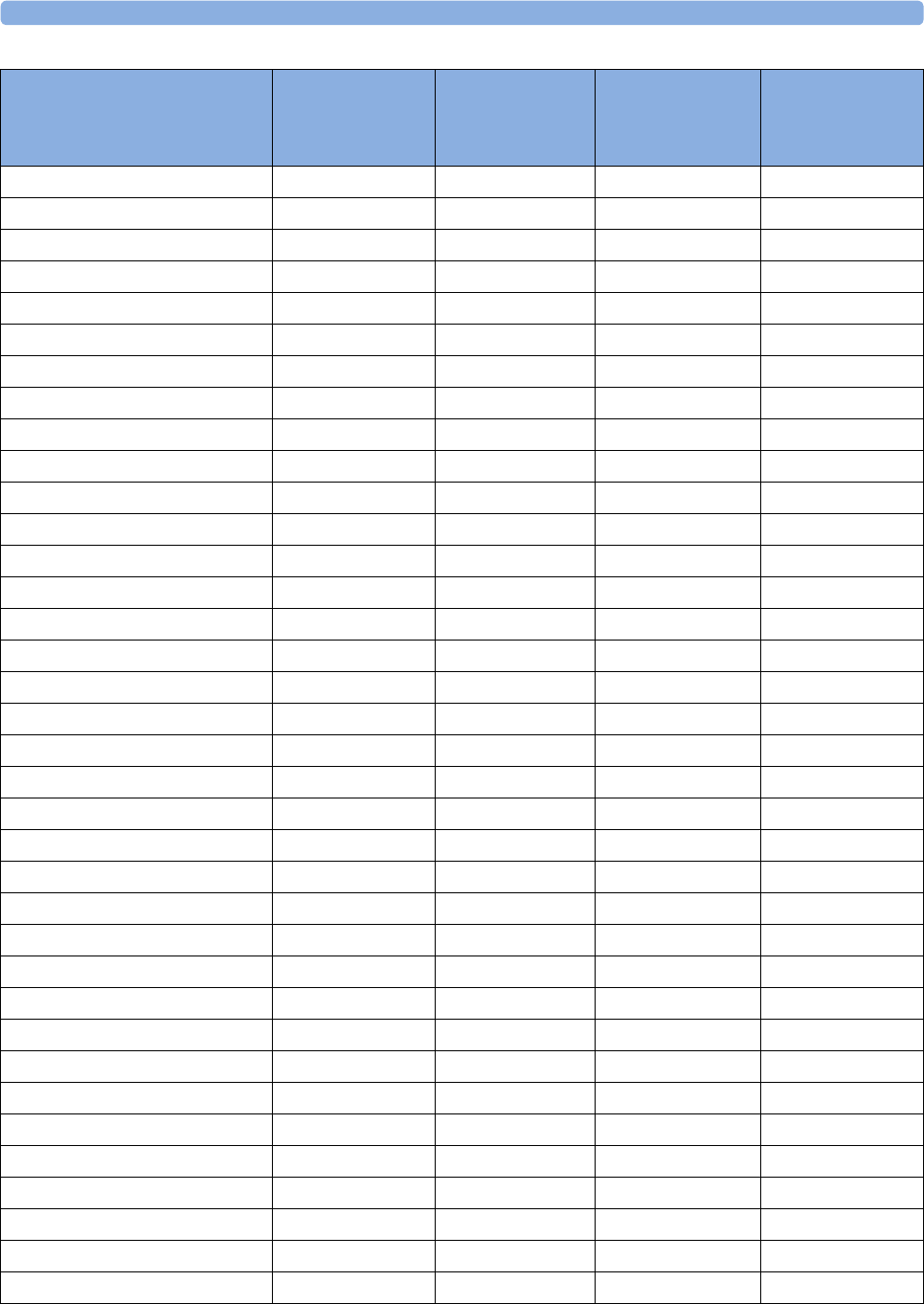
41 Default Settings Appendix
503
Cook Islands 60 lb in AAMI
Costa Rica 60 kg cm AAMI
Côte d'Ivoire 50 kg cm IEC
Croatia 50 kg cm IEC
Cuba 60 kg cm IEC
Cyprus 50 kg cm IEC
Czech Republic 50 kg cm IEC
Denmark 50 kg cm IEC
Djibouti 50 kg cm IEC
Dominica 50 kg cm AAMI
Dominican Republic 60 kg cm AAMI
Ecuador 60 kg cm AAMI
Egypt 50 kg cm IEC
El Salvador 60 kg cm AAMI
Equatorial Guinea 50 kg cm IEC
Eritrea 50 kg cm IEC
Estonia 50 kg cm IEC
Ethiopia 50 kg cm IEC
Falkland Islands, Malvinas 60 lb in AAMI
Faroe Islands 60 lb in AAMI
Fiji 60 lb in AAMI
Finland 50 kg cm IEC
France 50 kg cm IEC
French Guiana 50 kg cm IEC
French Polynesia 60 lb in AAMI
French Southern Territories 60 lb in AAMI
Gabon 50 kg cm IEC
Gambia 50 kg cm IEC
Georgia 60 lb in AAMI
Germany 50 kg cm IEC
Ghana 50 kg cm IEC
Gibraltar 60 lb in AAMI
Greece 50 kg cm IEC
Greenland 60 lb in AAMI
Grenada 50 kg cm AAMI
Guadeloupe 50 kg cm IEC
Country-Description Line Frequency
50/60 [Hz]
Units
Weight
kg, lb
Units
Height
in, cm
ECG Cable Color
IEC, AAMI
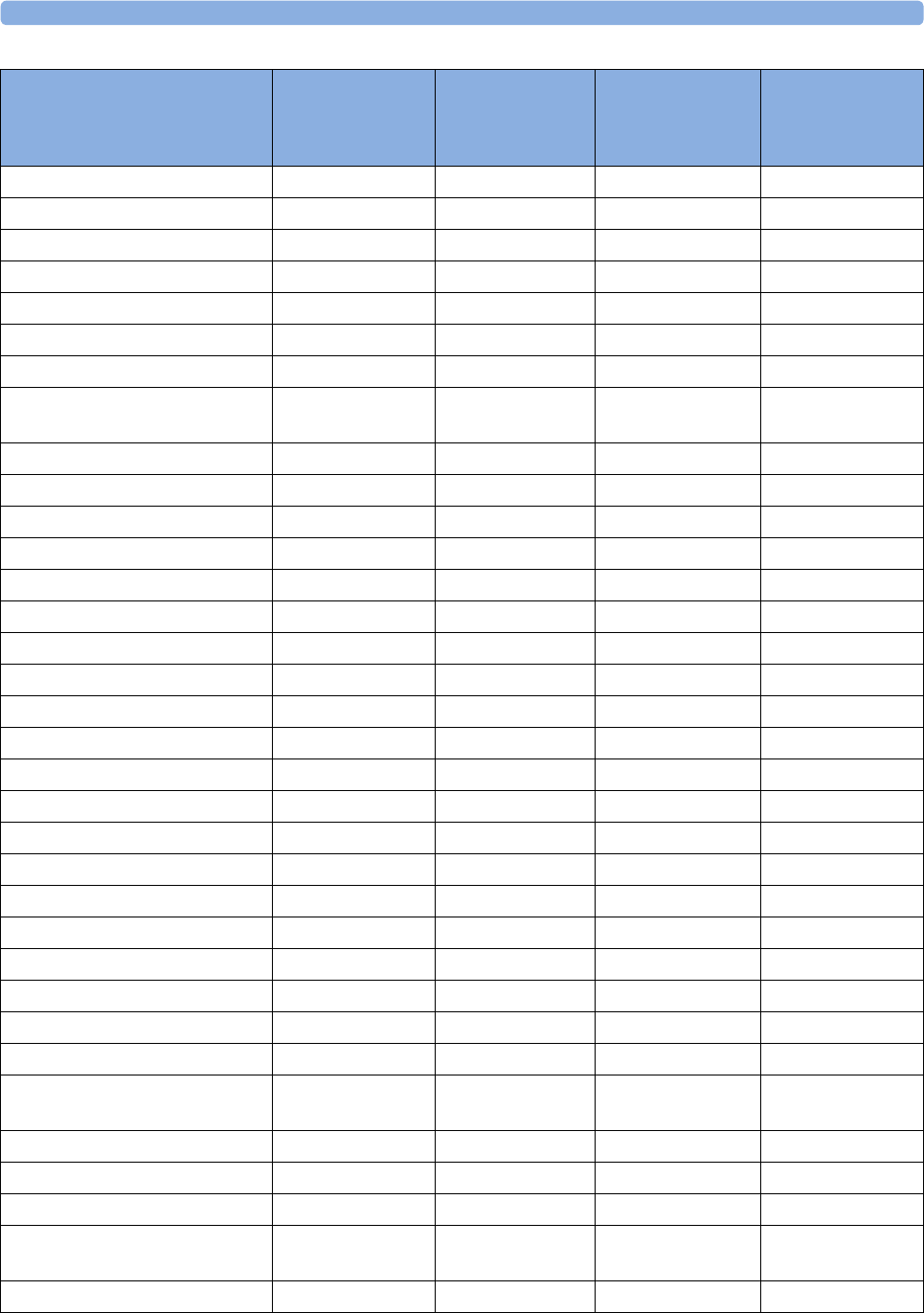
41 Default Settings Appendix
504
Guam 60 lb in AAMI
Guatemala 60 kg cm AAMI
Guernsey 50 kg cm IEC
Guinea 60 lb in AAMI
Guinea-Bissau 60 lb in AAMI
Guyana 60 kg cm AAMI
Haiti 60 kg cm AAMI
Heard Island and McDonald
Islands
60 lb in AAMI
Holy See, Vatican City State 60 lb in AAMI
Honduras 60 kg cm AAMI
Hong Kong 50 kg cm IEC
Hungary 50 kg cm IEC
Iceland 50 kg cm IEC
India 50 kg cm IEC
Indonesia 50 kg cm IEC
Iran, Islamic Republic of 50 kg cm AAMI
Iraq 50 kg cm AAMI
Ireland 50 kg cm IEC
Isle of Man 50 kg cm IEC
Israel 50 kg cm IEC
Italy 50 kg cm IEC
Jamaica 50 kg cm AAMI
Japan 50 kg cm IEC
Jersey 50 kg cm IEC
Jordan 50 kg cm AAMI
Kazakhstan 50 kg cm IEC
Kenya 50 kg cm IEC
Kiribati 60 lb in AAMI
Korea, Democratic People's
Republic of
60 lb in AAMI
Korea, Republic of 60 kg cm AAMI
Kuwait 50 kg cm AAMI
Kyrgyzstan 60 lb in AAMI
Lao People's Democratic
Republic
50 kg cm IEC
Latvia 50 kg cm IEC
Country-Description Line Frequency
50/60 [Hz]
Units
Weight
kg, lb
Units
Height
in, cm
ECG Cable Color
IEC, AAMI
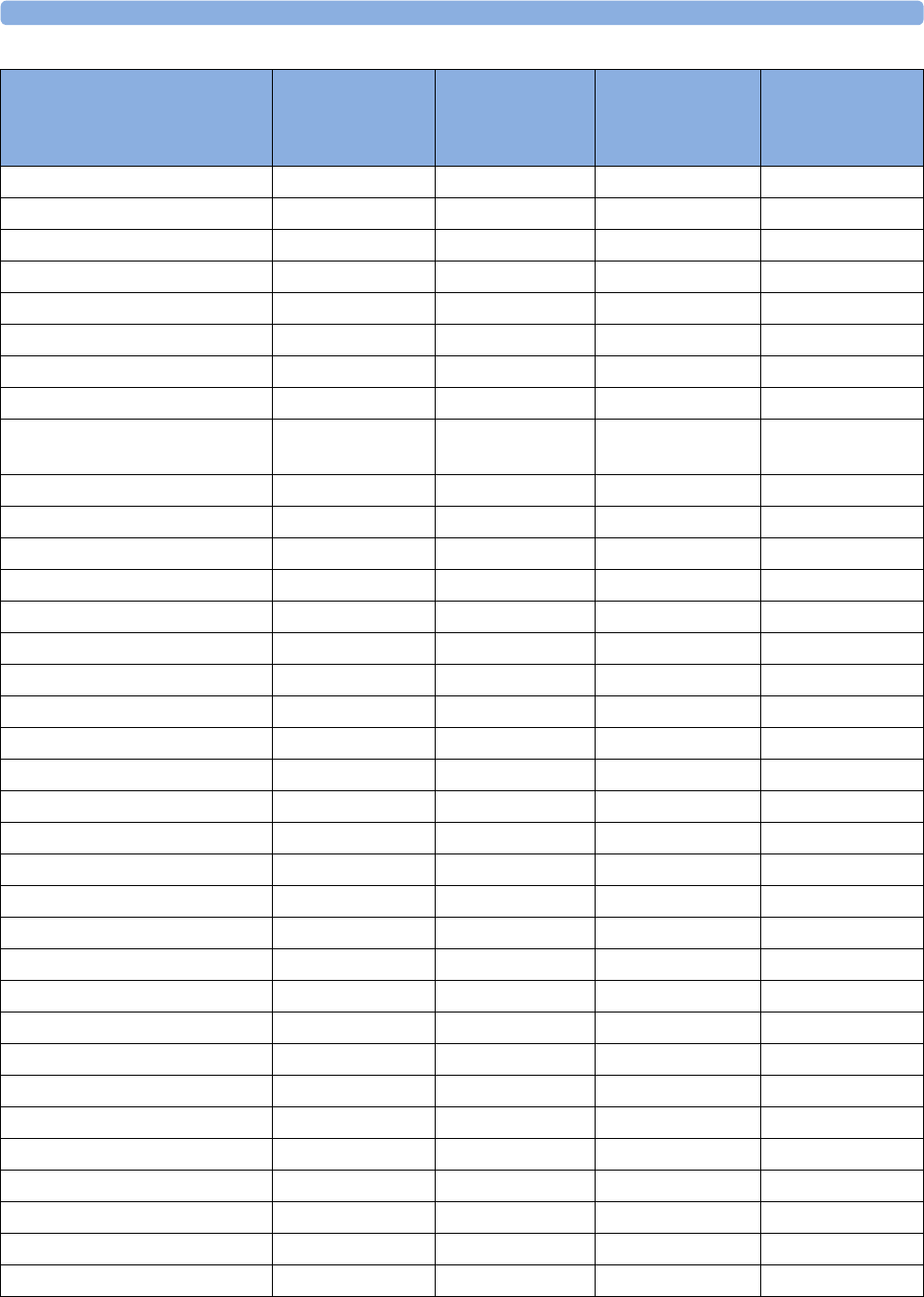
41 Default Settings Appendix
505
Lebanon 50 kg cm AAMI
Lesotho 50 kg cm IEC
Liberia 50 kg cm IEC
Libyan Arab Jamahiriya 60 lb in AAMI
Liechtenstein 60 lb in AAMI
Lithuania 50 kg cm IEC
Luxembourg 50 kg cm IEC
Macao 50 kg cm IEC
Macedonia, The former
Yugoslavian Republic of
50 kg cm IEC
Madagascar 50 kg cm IEC
Malawi 50 kg cm IEC
Malaysia 50 kg cm IEC
Maldives 60 lb in AAMI
Mali 50 kg cm IEC
Malta 50 kg cm IEC
Marshall Islands 60 lb in AAMI
Martinique 60 kg cm IEC
Mauritania 50 kg cm IEC
Mauritius 60 lb in AAMI
Mayotte 60 lb in AAMI
Mexico 60 kg cm AAMI
Micronesia, Federal States of 60 lb in AAMI
Moldova, Republic of 60 lb in AAMI
Monaco 60 lb in AAMI
Mongolia 60 lb in AAMI
Montenegro 50 kg cm IEC
Montserrat 50 kg cm AAMI
Morocco 50 kg cm IEC
Mozambique 50 kg cm IEC
Myanmar 60 lb in AAMI
Namibia 50 kg cm IEC
Nauru 60 lb in AAMI
Nepal 50 kg cm IEC
Netherlands 50 kg cm IEC
Netherlands Antilles 50 kg cm AAMI
Country-Description Line Frequency
50/60 [Hz]
Units
Weight
kg, lb
Units
Height
in, cm
ECG Cable Color
IEC, AAMI
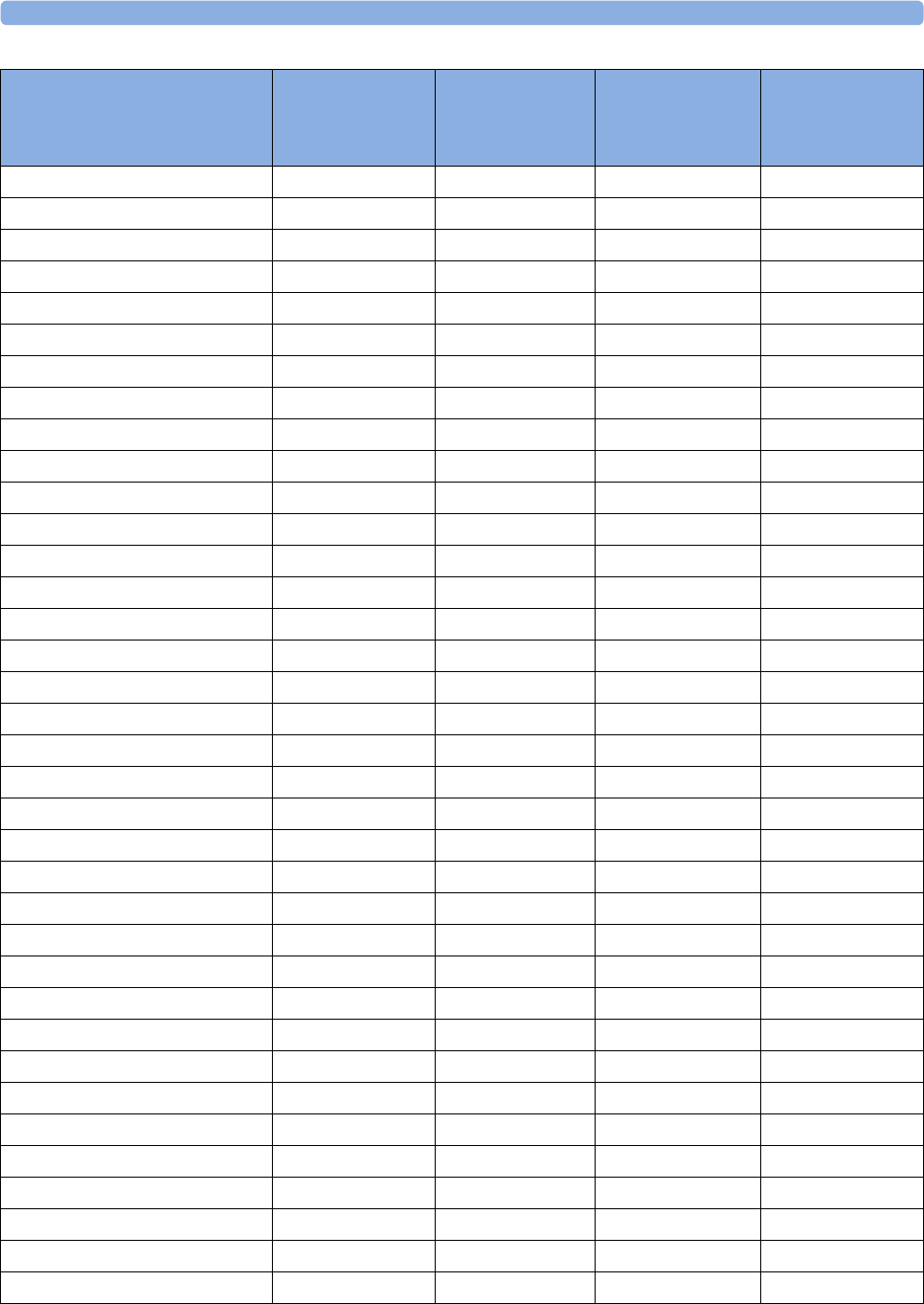
41 Default Settings Appendix
506
New Caledonia 60 lb in AAMI
New Zealand 50 kg cm AAMI
Nicaragua 60 kg in AAMI
Niger 50 kg cm IEC
Nigeria 50 kg cm IEC
Niue 60 lb in AAMI
Norfolk Islands 60 lb in AAMI
Northern Mariana Islands 60 lb in AAMI
Norway 50 kg cm IEC
Oman 50 kg cm AAMI
Pakistan 50 kg cm IEC
Palau 60 lb in AAMI
Palestinian Territory 50 kg cm AAMI
Panama 60 lb in AAMI
Papua New Guinea 60 lb in AAMI
Paraguay 50 kg cm AAMI
Peru 60 kg cm AAMI
Philippines 60 kg cm AAMI
Pitcairn 60 lb in AAMI
Poland 50 kg cm IEC
Portugal 50 kg cm IEC
Puerto Rico 60 lb in AAMI
Qatar 50 kg cm AAMI
Reunion 60 lb in AAMI
Romania 50 kg cm IEC
Russian Federation 50 kg cm IEC
Rwanda 50 kg cm IEC
Saint Helena 60 lb in AAMI
Saint Kitts and Nevis 60 kg cm AAMI
Saint Lucia 50 kg cm AAMI
Saint Pierre and Miquelon 60 lb in AAMI
Saint Vincent & the Grenadines 50 kg cm AAMI
Samoa 60 lb in AAMI
San Marino 60 lb in AAMI
Sao Tome and Principe 60 lb in AAMI
Saudi Arabia 50 kg cm AAMI
Country-Description Line Frequency
50/60 [Hz]
Units
Weight
kg, lb
Units
Height
in, cm
ECG Cable Color
IEC, AAMI
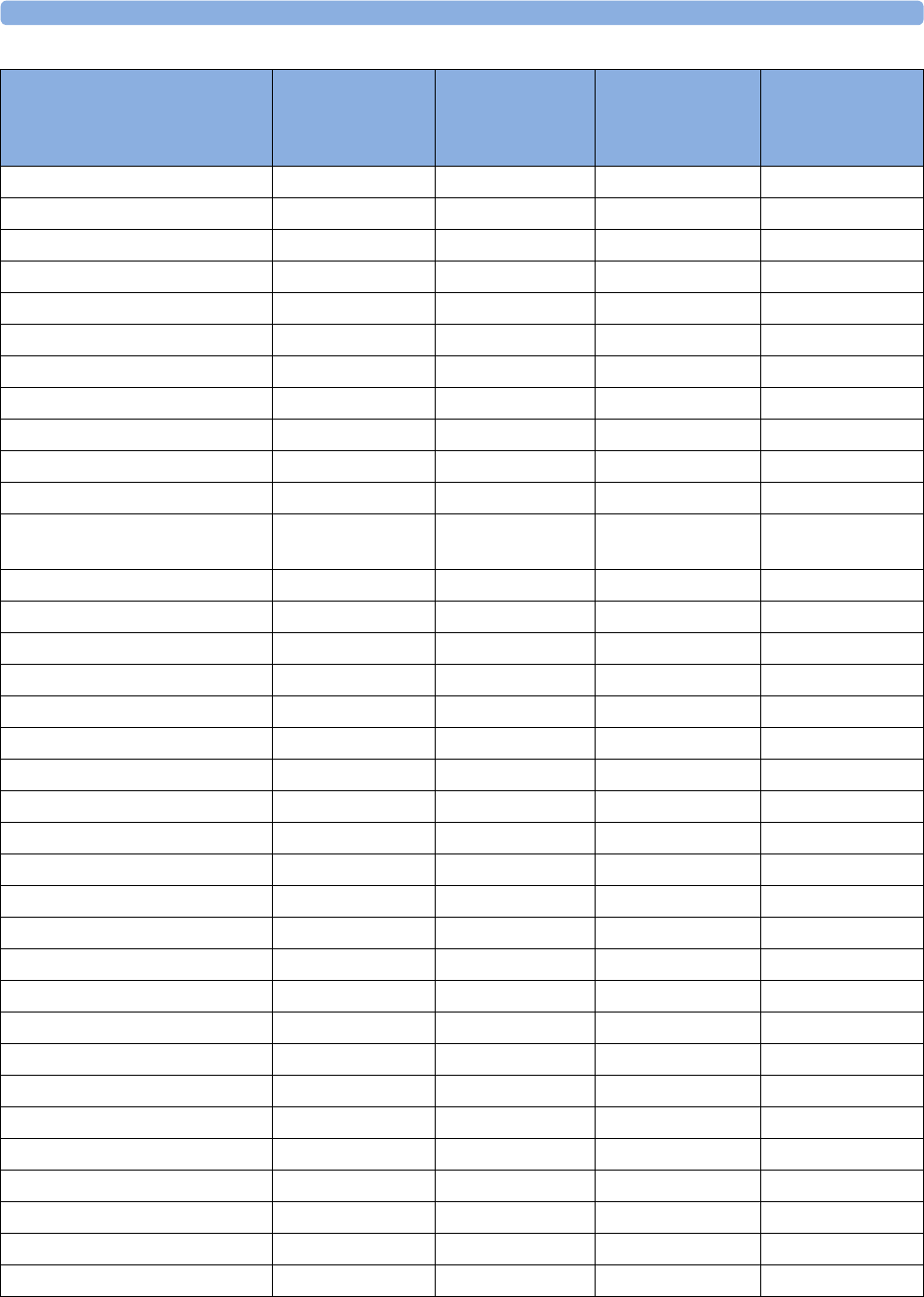
41 Default Settings Appendix
507
Senegal 50 kg cm IEC
Serbia 50 kg cm IEC
Serbia & Montenegro 50 kg cm IEC
Seychelles 60 lb in AAMI
Sierra Leone 50 kg cm IEC
Singapore 50 kg cm IEC
Slovakia 50 kg cm IEC
Slovenia 50 kg cm IEC
Solomon Islands 60 lb in AAMI
Somalia 50 kg cm IEC
South Africa 60 lb in AAMI
South Georgia and the South
Sandwich Islands
60 lb in AAMI
Spain 50 kg cm IEC
Sri Lanka 50 kg cm IEC
Sudan 50 kg cm IEC
Suriname 60 kg cm AAMI
Svalbard and Jan Mayen 60 lb in AAMI
Swaziland 60 lb in AAMI
Sweden 50 kg cm IEC
Switzerland 50 kg cm IEC
Syrian Arab Rep 50 kg cm AAMI
Taiwan, Province of China 60 kg cm AAMI
Tajikistan 60 lb in AAMI
Tanzania, United Republic of 60 lb in AAMI
Thailand 50 kg cm AAMI
Timor-Leste 60 lb in AAMI
Togo 60 lb in AAMI
Tokelau 60 lb in AAMI
Tonga 60 lb in AAMI
Trinidad and Tobago 60 kg cm AAMI
Tunisia 50 kg cm IEC
Turkey 50 kg cm IEC
Turkmenistan 60 lb in AAMI
Turks and Caicos Islands 60 kg cm AAMI
Tuvalu 60 lb in AAMI
Country-Description Line Frequency
50/60 [Hz]
Units
Weight
kg, lb
Units
Height
in, cm
ECG Cable Color
IEC, AAMI
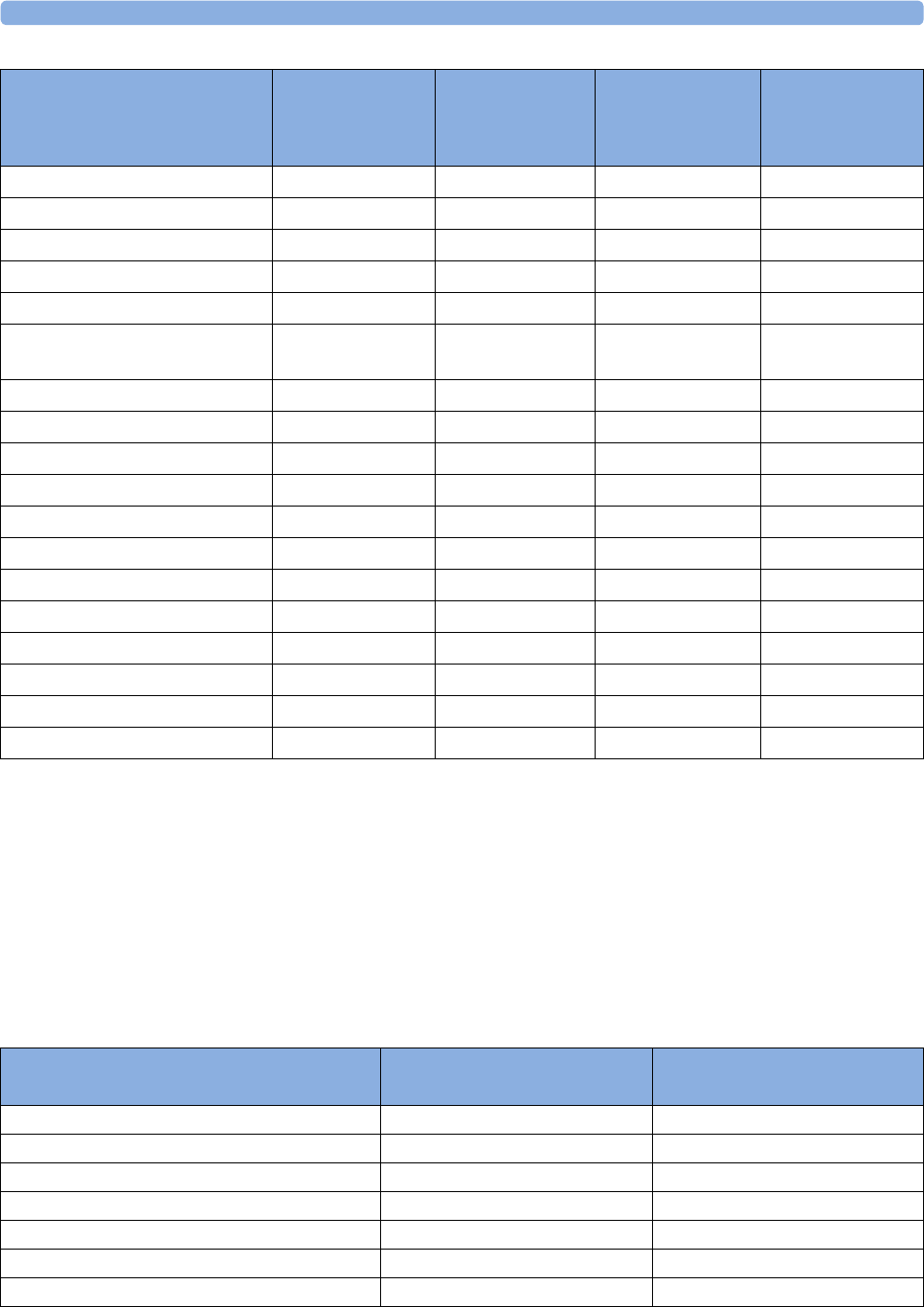
41 Default Settings Appendix
508
Alarm and Measurement Default Settings
The default wave speed for all measurements except Respiration is 25 mm/sec. For Respiration the
default wave speed is 6.25 mm/sec.
In the following tables, settings may be entered only once per table row if they are the same for all
patient categories.
Alarm Default Settings
Uganda 60 lb in AAMI
Ukraine 60 lb in AAMI
United Arab Emirates 50 kg cm AAMI
United Kingdom 50 kg cm IEC
United States 60 lb in AAMI
United States Minor Outlying
Islands
60 lb in AAMI
Uruguay 50 kg cm AAMI
Uzbekistan 60 lb in AAMI
Vanuatu 60 lb in AAMI
Venezuela 60 lb in AAMI
Viet Nam 50 kg cm IEC
Virgin Islands, British 50 kg cm AAMI
Virgin Islands, United States 60 lb in AAMI
Wallis and Futuna Islands 60 lb in AAMI
Western Sahara 50 kg cm IEC
Yemen 50 kg cm AAMI
Zambia 60 lb in AAMI
Zimbabwe 60 lb in AAMI
Country-Description Line Frequency
50/60 [Hz]
Units
Weight
kg, lb
Units
Height
in, cm
ECG Cable Color
IEC, AAMI
Alarm Settings Factory Default H10/H20/H40 H30 (deviations from H10/H20/
H40)
Alarm Volume 5
Alarms Off 2 min
Pause Al. 5min Enabled
Pause Al. 10min Enabled
Auto Alarms Off Off
AlarmOffReminder Off
Visual Latching Red&Yellow Red Only
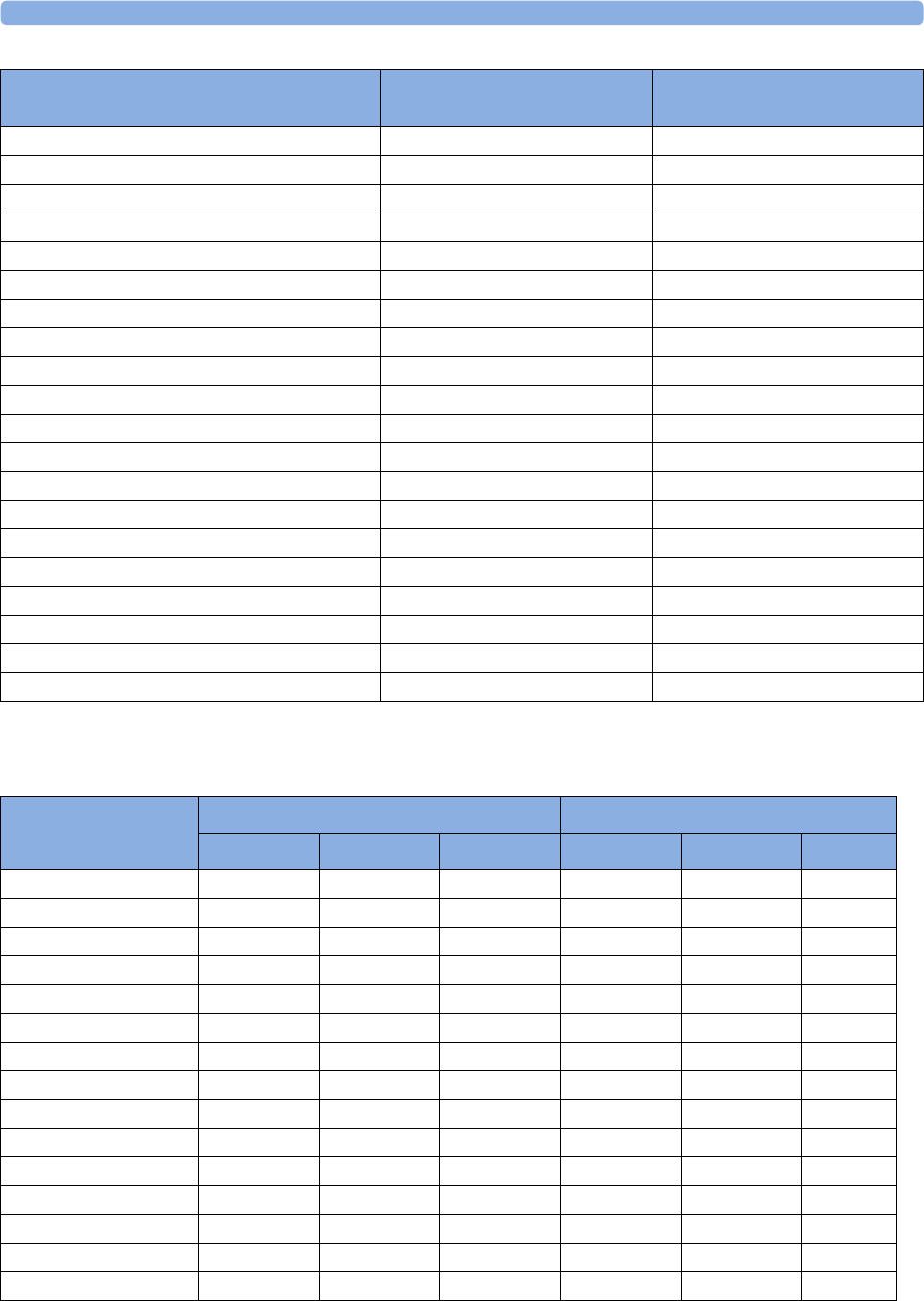
41 Default Settings Appendix
509
ECG, Arrhythmia, ST and QT Default Settings
Audible Latching Red&Yellow Off
Alarm Reminder On
Reminder Time 3 min
Alarm Sounds Traditional
RedAlarmInterval 10 sec
Yel.Al. Interval 20 sec
Alarm Low 42
Red Alarm Volume AlarmVol. +2
Yell.AlarmVolume AlarmVol. +0
INOP Volume AlarmVol. +0
AutoIncrease Vol 2 Steps
IncreaseVolDelay 20 sec
Keep Blinking No
Relay1 Sensitiv. R&Y&C
Relay2 Sensitiv. Red&Yellow
Relay3 Sensitiv. Red
CyanRelayLatency 5sec
Yel.RelayLatency 2sec
Alarm Text Standard
NoCentrMonMinVol On4
Alarm Settings Factory Default H10/H20/H40 H30 (deviations from H10/H20/
H40)
ECG Settings
Factory defaults H10/H20/H40 H30 (deviations from H10/H20/H40)
Adult Pedi Neo Adult Pedi Neo
High Limit 120 bpm 160 bpm 200 bpm
Low Limit 50 bpm 75 bpm 100 bpm
ECG/Arrhy Alarms On On On
Alarm Source Auto Auto Auto Auto
ECG OnOnOn
QRS Volume 111
Primary Lead II II II
Secondary Lead V V V
Analysis Mode Multi Lead Multi Lead Multi Lead
Lead Placement Standard Standard Standard
Mod.LeadPlacment Off Off Off
Filter Monitor Monitor Monitor Filter
AutoFilter Off Off Off
Default ECG Size Size x1 Size x1 Size x1
Color Green Green Green
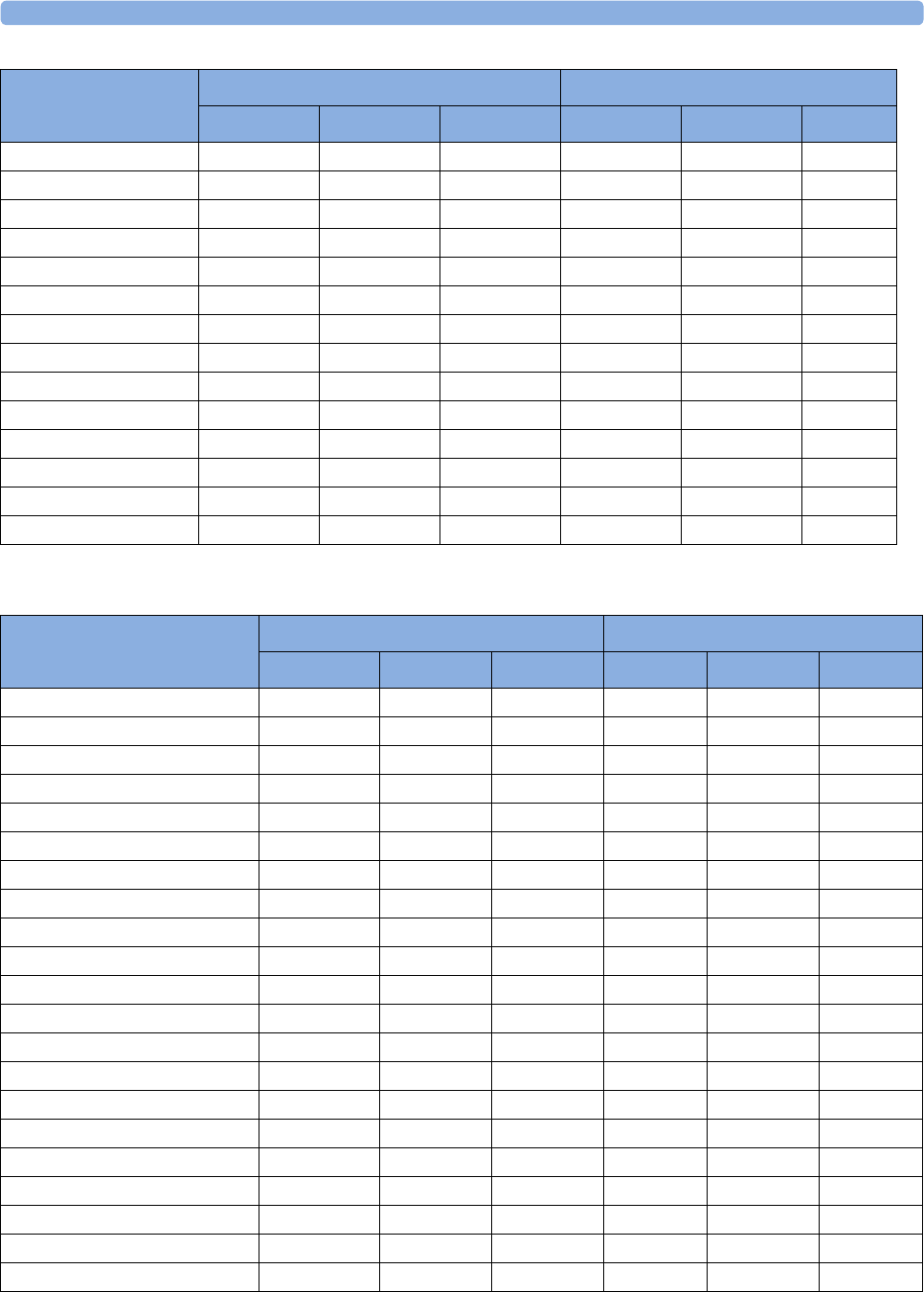
41 Default Settings Appendix
510
Arrhythmia Default Settings
Asystole Thresh. 4.0 sec 4.0 sec 3.0 sec
Δ ExtrTachy 20 bpm 20 bpm 20 bpm
Tachy Clamp 200 bpm 220 bpm 240 bpm
Δ ExtrBrady 20 bpm 20 bpm 20 bpm
Brady Clamp 40 bpm 40 bpm 50 bpm 40 bpm 60 bpm 80 bpm
ECG Alm Off INOP Cyan Cyan Cyan
Fallback On On On
Alarms Off Enabled Enabled Enabled
AlarmSource Sel. Enabled Enabled Enabled
Va Lead V2 V2 V2
Vb Lead V5 V5 V5
SyncPulse Sensit Medium Medium Medium
SyncPulse Marker On On On
PulseAlarms Tele Enabled Enabled Enabled
ECG Settings
Factory defaults H10/H20/H40 H30 (deviations from H10/H20/H40)
Adult Pedi Neo Adult Pedi Neo
Arrhythmia Settings
Factory defaults H10/H20/H40 H30 (deviations from H10/H20/H40)
Adult Pedi Neo Adult Pedi Neo
Arrhythmia On On Off Off Off Off
Pause Threshold 2.0 sec 2.0 sec 1.5 sec
VTach HR 100 120 150
VTach Run 555
Vent Rhythm 14 14 14
SVT HR 180 200 210
SVT Run 555
PVCs/min 10 5 5
Non-Sustain On On On
Vent Rhythm On On On
Run PVCs On On On
Pair PVCs On On On Off Off Off
R-on-T PVCs On On On Off Off Off
V.Bigeminy On On On Off Off Off
V.Trigeminy On OnOnOffOffOff
PVCs/min On On On Off Off Off
Multif.PVCs On OnOnOffOffOff
Pacer n.Cap On On On
Pacer n.Pac On On On
Pause On OnOnOffOffOff
Missed Beat On On On Off Off Off
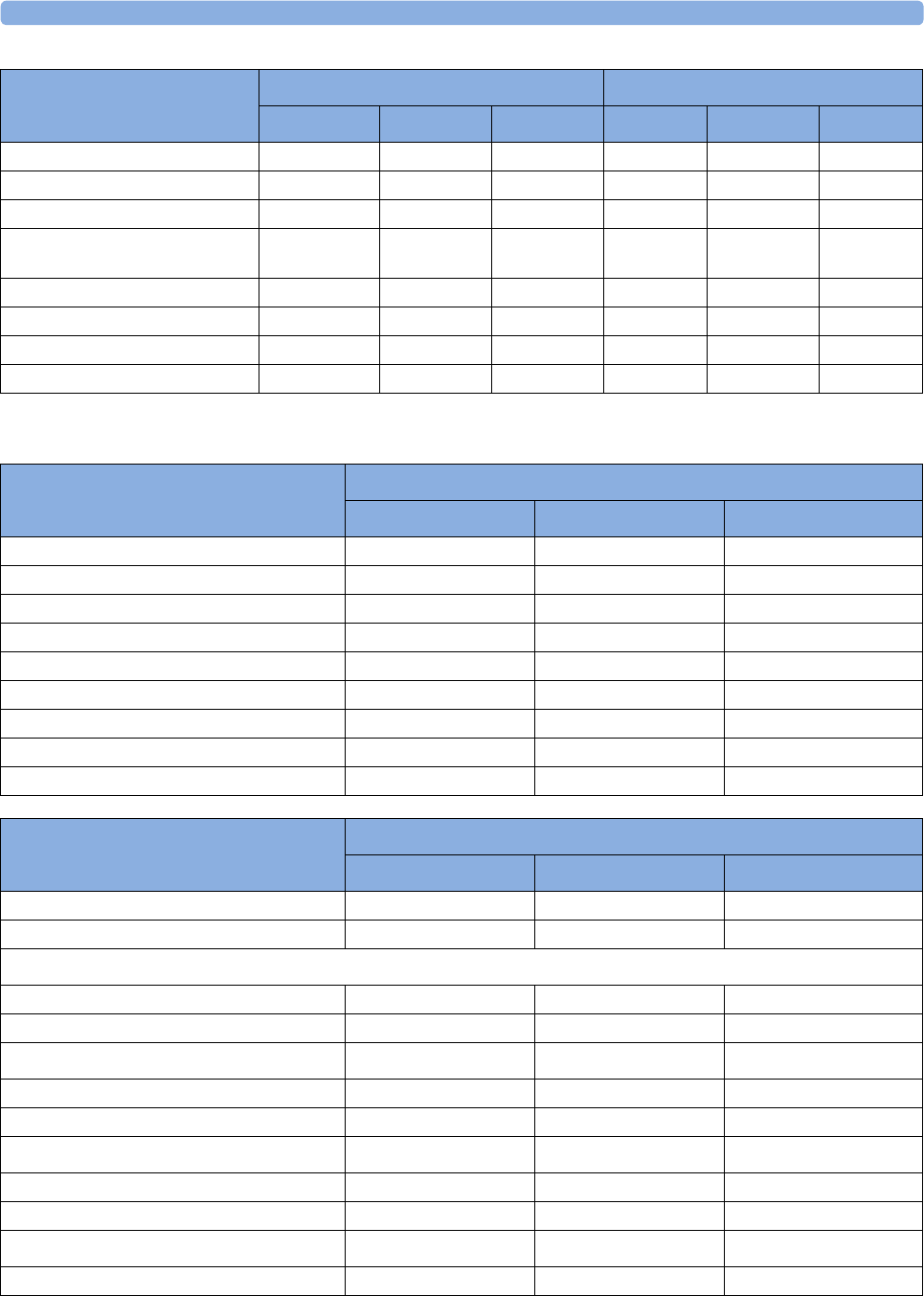
41 Default Settings Appendix
511
ST and QT Default Settings
SVT On On On
Afib On On On
Irregular HR On On On Off Off Off
HR Alarms Short Yellow Short
Yellow
Short
Yellow
TimeOut 1st 3 min 3 min 3 min
TimeOut 2nd 10 min 10 min 10 min
ArrhyOff Message Yes Yes Yes
Some ECG Al INOP On On On Off Off Off
Arrhythmia Settings
Factory defaults H10/H20/H40 H30 (deviations from H10/H20/H40)
Adult Pedi Neo Adult Pedi Neo
Lead-independent ST Settings
Factory Defaults
Factory Adult Factory Pedi Factory Neo
ISO/J Point detection Auto Auto Auto
Alarms (ST) On On On
STE Off Off Off
Alarms (STE) On On On
ST Analysis On Off Off
ST-Index Off Off Off
ISO Point -80 ms -80 ms -80 ms
J Point 48 ms 48 ms 48 ms
ST Offset J+60 J+60 J+60
ST Settings - Lead I, II, III, V, aVR, aVL, V1-
6, MCL
Factory Defaults
Factory Adult Factory Pedi Factory Neo
ST (Label) High Alarm Limit +1.0 mm +1.0 mm +1.0 mm
ST (Label) Low Alarm Limit -1.0 mm -1.0 mm -1.0 mm
ST Settings - Lead V, MCL
ST (Label) High Alarm Limit +2.0 mm +2.0 mm +2.0 mm
ST (Label) Low Alarm Limit -2.0 mm -2.0 mm -2.0 mm
STE Settings - Limb leads
STE Male Limb, Alarm Limit 1.0 mm 1.0 mm 1.0 mm
STE Female Limb, Alarm Limit 1.0 mm 1.0 mm 1.0 mm
ST Settings - lead V2, V3
STE Male V2,V3, Alarm Limit
STE Female V2,V3, Alarm Limit
STE Settings - V1, V4-V6
STE Male V1,V4-6, Alarm Limit 1.0 mm 1.0 mm 1.0 mm
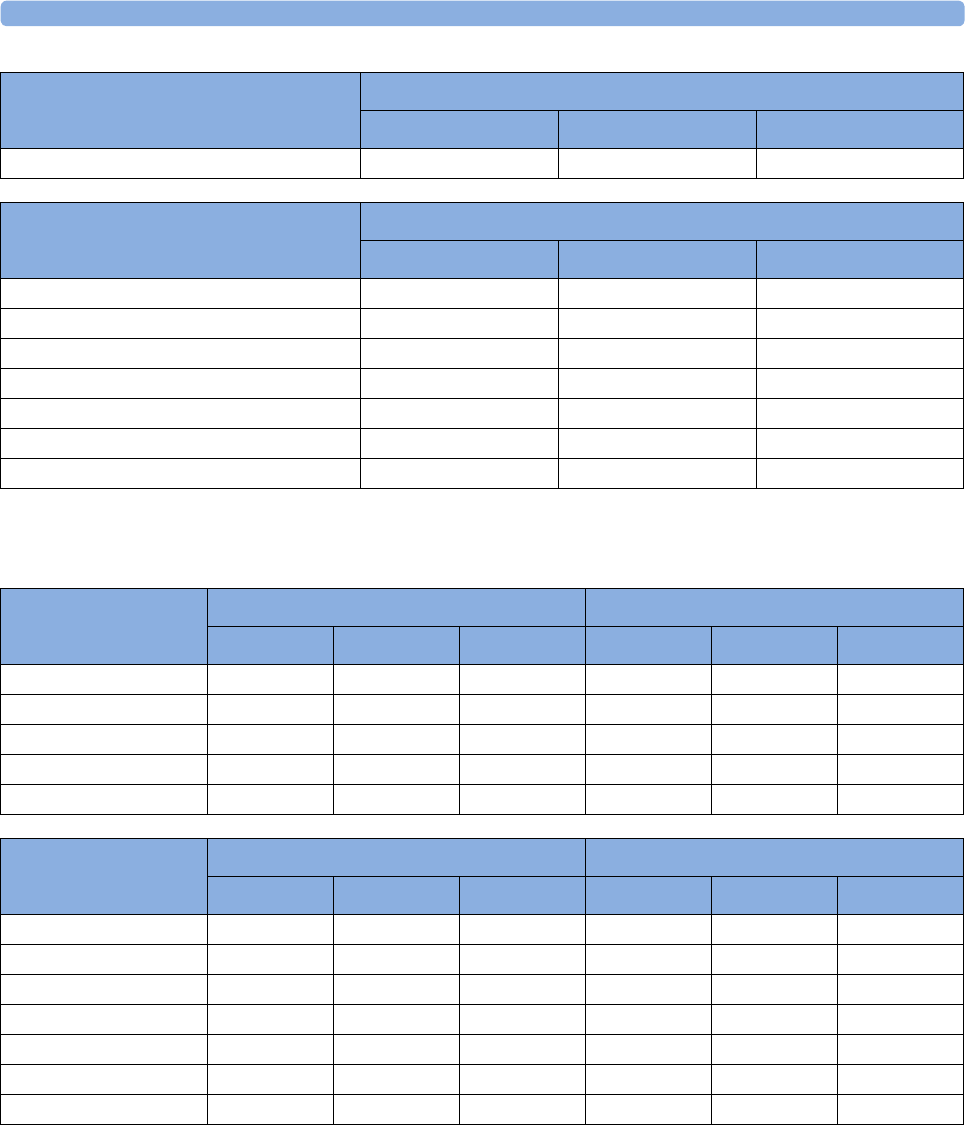
41 Default Settings Appendix
512
Pulse Default Settings
1 When Pulse is not the alarm source, the alarms will be Off.
Pulse alarms use the settings of the currently selected Pulse alarm source.
STE Fem. V1,V4-6, Alarm Limit 1.0 mm 1.0 mm 1.0 mm
ST Settings - Lead I, II, III, V, aVR, aVL, V1-
6, MCL
Factory Defaults
Factory Adult Factory Pedi Factory Neo
QT Settings
Factory Defaults
Factory Adult Factory Pedi Factory Neo
QT Lead All All All
QTc High Limit 500 ms 480 ms 460 ms
ΔQTc High Limit 60 ms 60 ms 60 ms
QTc High Alarm OnOnOn
ΔQTc High Alarm OnOnOn
QT Analysis Off Off Off
QTc Formula Bazett Bazett Bazett
Pulse Settings
Factory defaults H10/H20/H40 H30 (deviations from H10/H20/H40)
Adult Pedi Neo Adult Pedi Neo
Alarm Source Auto Auto Auto Auto Auto Auto
Pulse (source label) On On On
System Pulse SpO₂SpO₂SpO₂Auto Auto Auto
Alarms Off Enabled Enabled Enabled
AlarmSource Sel. Enabled Enabled Enabled
Pulse Alarm Settings
Factory defaults H10/H20/H40 H30 (deviations from H10/H20/H40)
Adult Pedi Neo Adult Pedi Neo
Pulse Alarms1On On On
High Limit 120 bpm 160 bpm 200 bpm
Low Limit 50 bpm 75 bpm 100 bpm
Δ ExtrBrady 20 bpm 20 bpm 20 bpm
Brady Clamp 40 bpm40 bpm50 bpm40 bpm60 bpm80 bpm
Δ ExtrTachy 20 bpm 20 bpm 20 bpm
Tachy Clamp 200 bpm 220 bpm 240 bpm
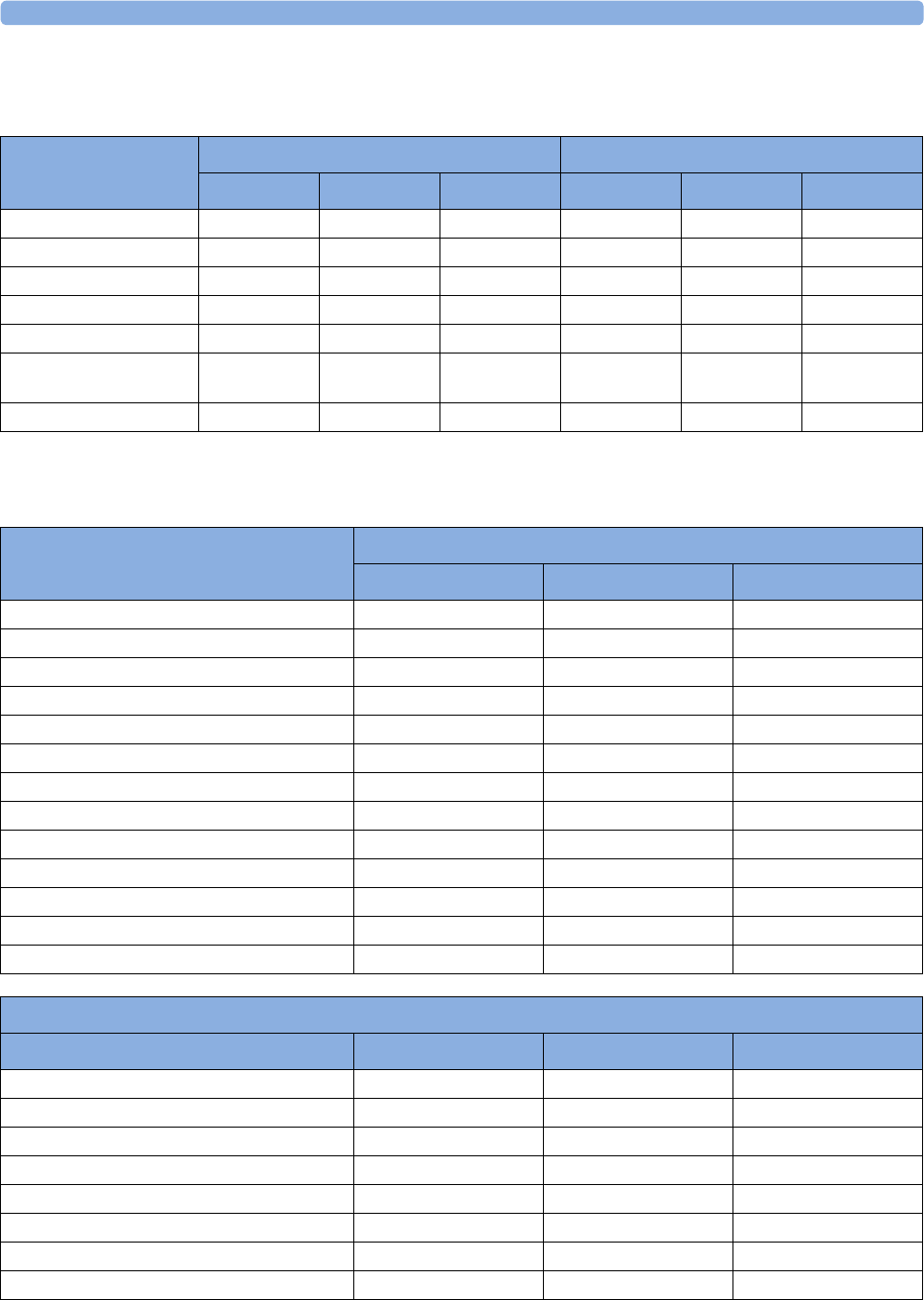
41 Default Settings Appendix
513
Respiration Default Settings
SpO2 Default Settings
Respiration Settings
Factory defaults H10/H20/H40 H30 (deviations from H10/H20/H40)
Adult Pedi Neo Adult Pedi Neo
High Limit 30 rpm 30 rpm 100 rpm
Low Limit 8 rpm 8 rpm 30 rpm
Apnea Time 20 sec 20 sec 20 sec
Alarms On On On
Resp On On On Off Off Off
Detection Auto
(Trigger Mode)
Auto
(Trigger Mode)
Auto
(Trigger Mode)
Color Yellow Yellow Yellow White White White
SpO2 Settings
Factory Defaults
Adult Pedi Neo
Mode Continuous Continuous Continuous
Repeat Time 15 min 15 min 15 min
Alarms On On On
QRS Volume 111
Tone Modulation Yes Yes Yes
Tone Mod. Type Enhanced Enhanced Enhanced
Perfusion OnOnOn
Average 10 sec 10 sec 10 sec
NBP Alarm Suppr. On On On
Extd. Auto OnOff Disabled Disabled Disabled
Color Cyan (light blue) Cyan (light blue) Cyan (light blue)
Average in Mon. No No No
Signal Quality OnOnOn
SpO2 Alarm Default Settings
Setting Adult Pedi Neo
Desat Limit 80 80 80
Low Limit 90 90 85
High Limit 100 100 95
Desat Delay 20 sec 20 sec 20 sec
High Alarm Delay 10 sec 10 sec 10 sec
Low Alarm Delay 10 sec 10 sec 10 sec
SmartAlarmDelay (SAD) Off Off Off
High Alarm Delay (SAD) Short Short Short
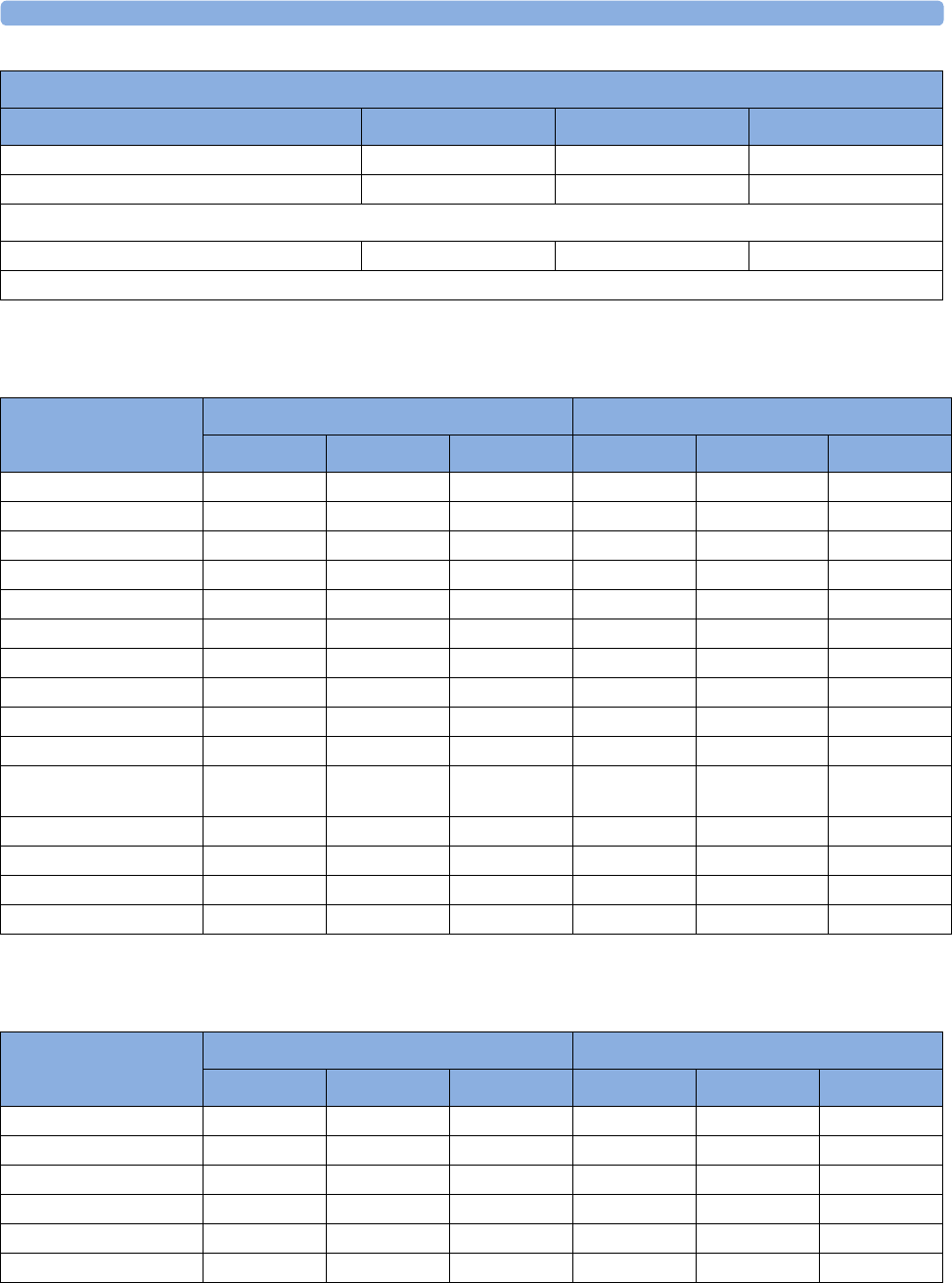
41 Default Settings Appendix
514
NBP Default Settings
Temperature Default Settings
Low Alarm Delay (SAD) Short Short Short
Label SpO₂SpO₂SpO₂
Pulse settings
Pulse (SpO₂) OnOnOn
For all other Pulse default settings, refer to the Pulse Default Settings table.
SpO2 Alarm Default Settings
Setting Adult Pedi Neo
NBP Settings
Factory defaults H10/H20/H30 H30 (deviations from H10/H20/H40)
Adult Pedi Neo Adult Pedi Neo
Mode Auto Auto Manual
Alarms from Sys. Sys. Sys.
High Limit 160/90 (110) 120/70 (90) 90/60 (70) 180/90 (110)
Low Limit 90/50 (60) 70/40 (50) 40/20 (24) 70/50 (65)
Alarms On On On
NBP OnOnOn
Repeat Time 10 min 10 min 10 min 3 min 3 min 3 min
Pulse (NBP) OnOnOn
Unit mmHg mmHg mmHg
Done Tone Off Off Off On On
Start Time Synchronize
d
Synchronize
d
Synchronize
d
NotSynchron
.
NotSynchron. NotSynchron
.
VP Pressure 60 mmHg 40 mmHg 30 mmHg
Reference Auscultatory Auscultatory Invasive
Aging Time 10 min 10 min 10 min
Color Red Red Red Magenta Magenta Magenta
Temp Settings
Factory defaults H10/H20/H40 H30 (deviations from H10/H20/H40)
Adult Pedi Neo Adult Pedi Neo
Low Limit 36 36 36 35 35 35
High Limit 39 39 39
Alarms On On On
Unit °C °C °C
Range 35...43 35...43 35...43
Color Green Green Green Light Green Light Green Light Green
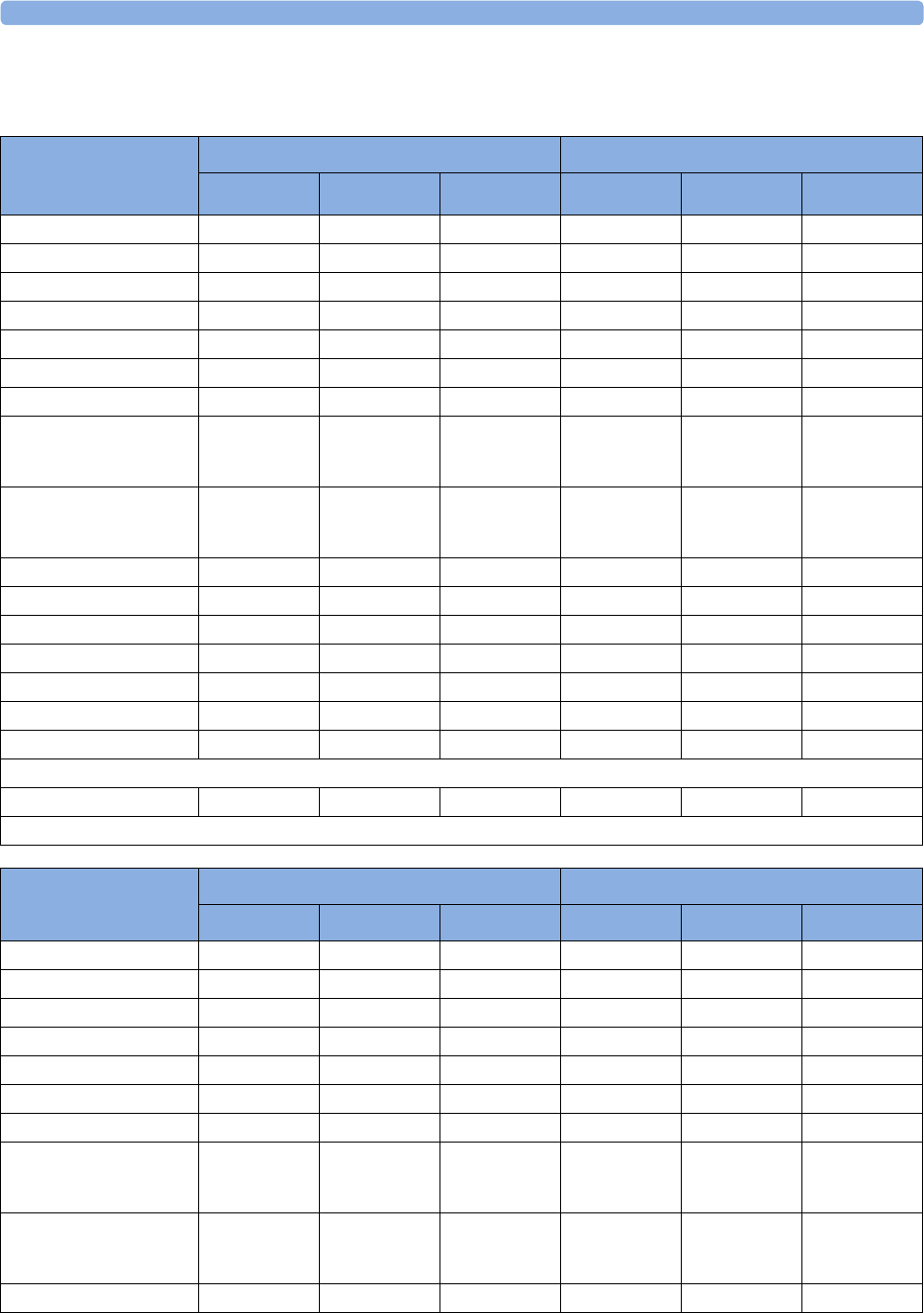
41 Default Settings Appendix
515
Invasive Pressure Default Settings
ABP, P, P1, P2, P3, P4,
UAP, ART, Ao, FAP, BAP
Settings
Factory defaults H10/H20/H40 H30 (deviations from H10/H20/H40)
Adult Pedi Neo Adult Pedi Neo
Alarms from Sys. Sys. Sys.
High Limit 160/90 (110) 120/70 (90) 90/60 (70) 180/90 (110)
Low Limit 90/50 (70) 70/40 (50) 55/20 (36) 70/50 (70)
Alarms On On On
Extreme Alarms Disabled Disabled Disabled
Δ Extreme High 15 10 5
Δ Extreme Low 15 10 5
Sys. High Clamp/Dia.
High Clamp (Mean
High Clamp)
190/100 (125) 140/80 (100) 105/75 (75)
Sys. Low Clamp/Dia.
Low Clamp (Mean Low
Clamp)
80/45 (65) 60/35 (45) 45/15 (30) 65/45 (65)
Scale 150 100 100
Mean only No No No
Filter 12 Hz 12 Hz 12 Hz
Mercury Cal Yes Yes Yes
Artifact Suppr. 60 sec 60 sec 60 sec
Unit mmHg mmHg mmHg
Color Red Red Red
Pulse settings for all arterial pressures except P1 to P4
Pulse (<Press Label>) On On On
For all other Pulse default settings, refer to the Pulse Default Settings table.
CVP, RAP, LAP, UVP
Settings
Factory defaults H10/H20/H40 H30 (deviations from H10/H20/H40)
Adult Pedi Neo Adult Pedi Neo
Alarms from Mean Mean Mean
High Limit 14/6 (10) 10/2 (4) 10/2 (4)
Low Limit 6/-4 (0) 2/-4 (0) 2/-4 (0)
Alarms On On On
Extreme Alarms Disabled Disabled Disabled
Δ Extreme High 555
Δ Extreme Low 555
Sys. High Clamp/ Dia.
High Clamp (Mean
High Clamp)
20/10 (15) 15/5 (10) 15/5 (10)
Sys. Low Clamp/Dia.
Low Clamp (Mean Low
Clamp)
0/-5 (-5) 0/-5 (-5) 0/-5 (-5)
Scale 30 30 30
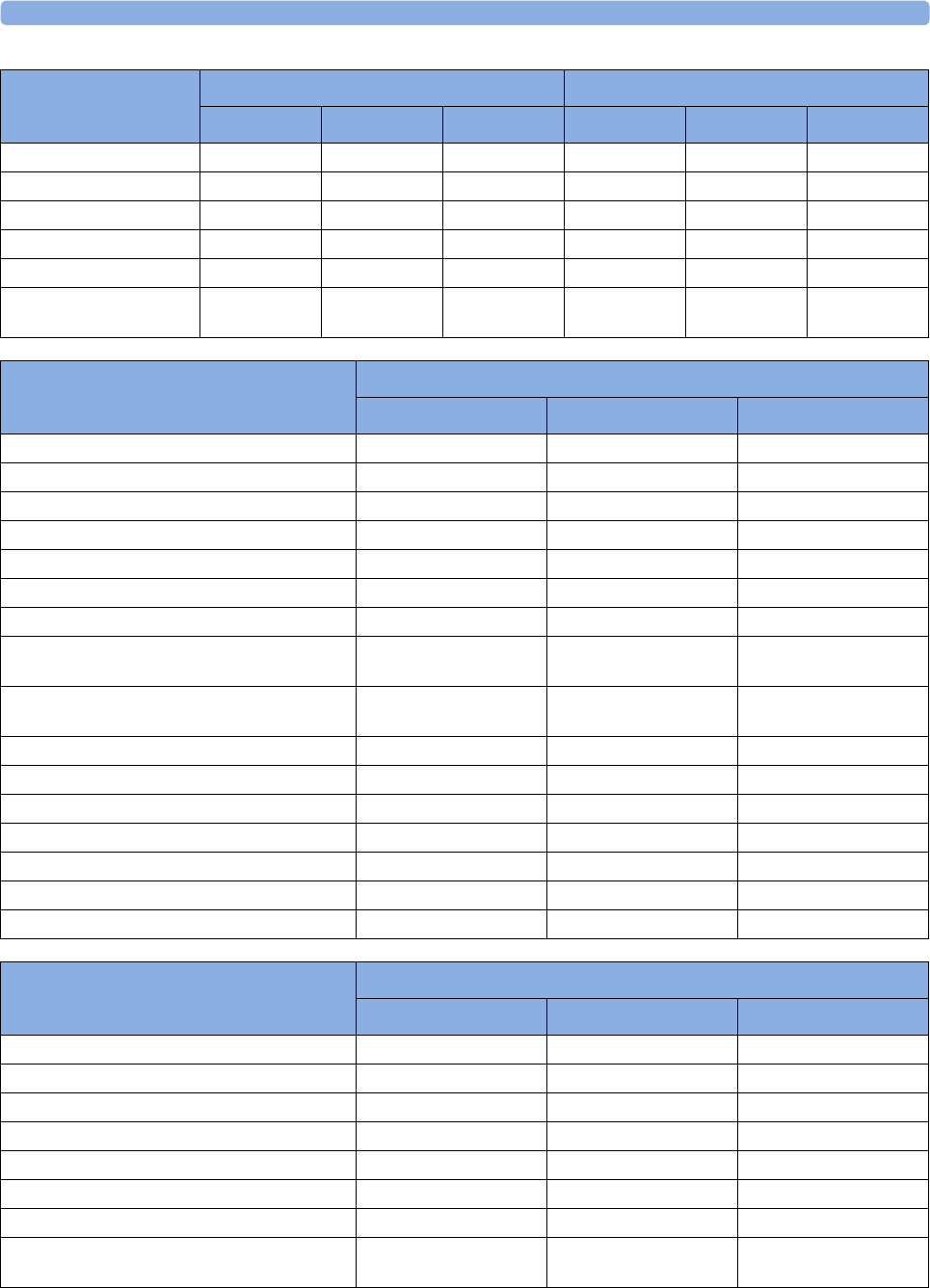
41 Default Settings Appendix
516
Mean only Yes Yes Yes
Filter 12 Hz 12 Hz 12 Hz
Mercury Cal Yes Yes Yes
Artifact Suppr. 60 sec 60 sec 60 sec
Unit mmHg mmHg mmHg
Color Cyan (light
blue)
Cyan (light
blue)
Cyan (light
blue)
Blue Blue Blue
CVP, RAP, LAP, UVP
Settings
Factory defaults H10/H20/H40 H30 (deviations from H10/H20/H40)
Adult Pedi Neo Adult Pedi Neo
PAP Settings
Factory Defaults
Adult Pedi Neo
Alarms from Dia. Dia. Dia.
High Limit 34/16 (20) 60/4 (26) 60/4 (26)
Low Limit 10/0 (0) 24/-4 (12) 24/-4 (12)
Alarms On On On
Extreme Alarms Disabled Disabled Disabled
Δ Extreme High 555
Δ Extreme Low 555
Sys. High Clamp/Dia. High Clamp (Mean
High Clamp)
45/20 (25) 65/5 (35) 65/5 (35)
Sys. Low Clamp/Dia. Low Clamp (Mean
Low Clamp)
5/-5 (-5) 15/-5 (5) 15/-5 (5)
Scale 30 30 30
Mean only No No No
Filter 12 Hz 12 Hz 12 Hz
Mercury Cal Yes Yes Yes
Artifact Suppr. 60 sec 60 sec 60 sec
Unit mmHg mmHg mmHg
Color Yellow Yellow Yellow
ICP, IC1, IC2 Settings
Factory Defaults
Adult Pedi Neo
Alarms from Mean Mean Mean
High Limit 14/6 (10) 10/2 (4) 10/2 (4)
Low Limit 6/-4 (0) 2/-4 (0) 2/-4 (0)
Alarms On On On
Extreme Alarms Disabled Disabled Disabled
Δ Extreme High 10 10 10
Δ Extreme Low 10 10 10
Sys. High Clamp/Dia. High Clamp (Mean
High Clamp)
20/10 (15) 15/5 (10) 15/5 (10)
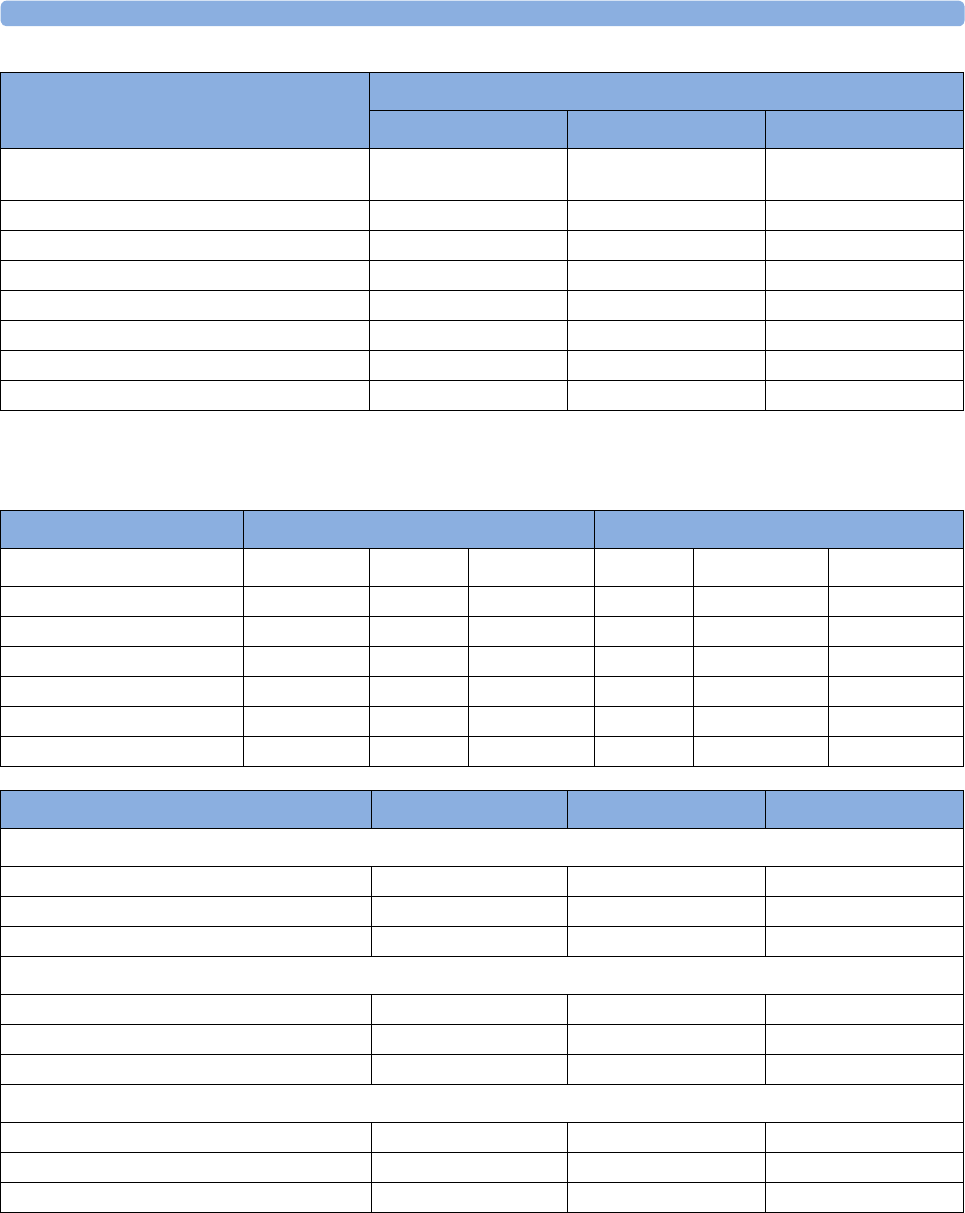
41 Default Settings Appendix
517
Cardiac Output Default Settings
Sys. Low Clamp/Dia. Low Clamp (Mean
Low Clamp)
0/-5 (-5) 0/-5 (-5) 0/-5 (-5)
Scale 30 30 30
Mean only Yes Yes Yes
Filter 12 Hz 12 Hz 12 Hz
Mercury Cal Yes Yes Yes
Artifact Suppr. 60 sec 60 sec 60 sec
Unit mmHg mmHg mmHg
Color Magenta Magenta Magenta
ICP, IC1, IC2 Settings
Factory Defaults
Adult Pedi Neo
C.O. Settings Factory defaults H10/H20/H40 H30 (deviations from H10/H20/H40)
Adult Pedi Neo Adult Pedi Neo
Auto-Calibration On On On
Tblood HighLimit 39.0°C 39.0°C 39.0°C
Tblood Low Limit 36.0°C 36.0°C 36.0°C
Tblood Alarms On On On
Temperature Unit °C °C °C
Color Green Green Green Yellow Yellow Yellow
CCO/CCI Settings Factory Adult Factory Pedi Factory Neo
Settings common to CCO and CCI
Alarms from CCO CCO CCO
CCO from ABP ABP ABP
Color Green Green Green
CCO
Alarms On On On
CCO High Limit 8.5 l/min 3.7 l/min 1.3 l/min
CCO Low Limit 4.0 l/min 2.6 l/min 0.3 l/min
CCI
Alarms On On On
CCI High Limit 4.3 l/min/m24.3 l/min/m25.2 l/min/m2
CCI Low Limit 2.0 l/min/m22.6 l/min/m21.2 l/min/m2
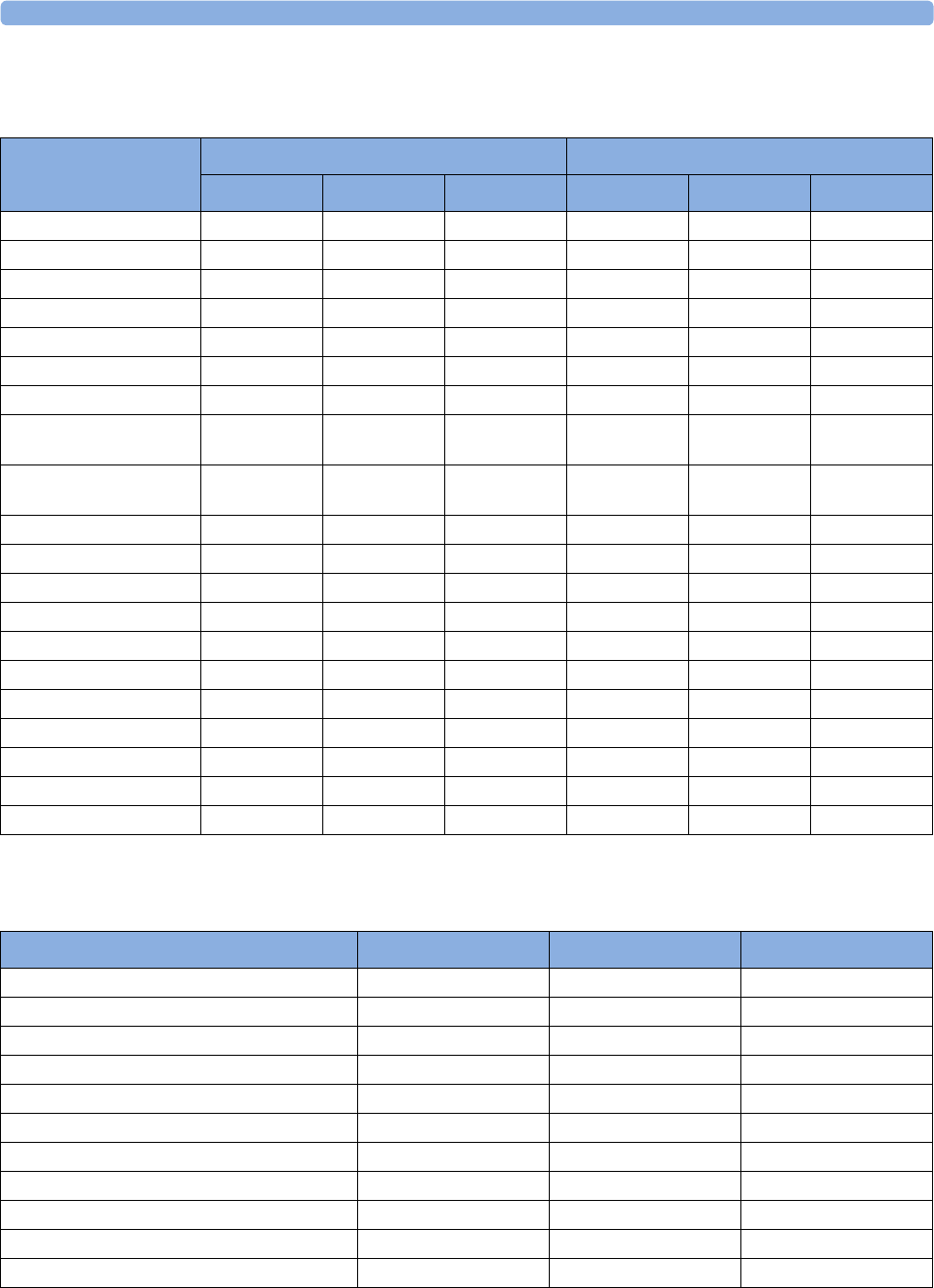
41 Default Settings Appendix
518
CO2 Default Settings
Spirometry Default Settings
CO2 Settings
Factory defaults H10/H20/H40 H30 (deviations from H10/H20/H40)
Adult Pedi Neo Adult Pedi Neo
etCO₂ Low 30 30 30 25 25 25
etCO₂ High 50 50 50 60 60 60
imCO₂ High 444
CO₂ Alarms On On On
Unit mmHg mmHg mmHg
Scale 40 mmHg 40 mmHg 40 mmHg 50 50 50
imCO₂On On On Off Off Off
N₂O Corr. (only
M3015A/M3016A)
Off Off Off
Oxygen Corr. (only
M3014A)
16% 16% 16%
Gas Corr. (only M3014A) Off Off Off
Humidity Corr. BTPS BTPS BTPS
Max Hold Off Off Off
awRR On On On
awRR Alarms On On On
High Limit (awRR) 30 30 60
Low Limit (awRR)8830
Apnea Time 20 sec 20 sec 20 sec
IPI On On
Low Alarm (IPI) On On
Color Yellow Yellow Yellow White White White
Spirometry Settings Factory Adult Factory Pedi Factory Neo
Apnea Time 20 20 20
MVexp Low 4.0 l/min 2.5 l/min 0.4 l/min
MVexp High 8.0 l/min 4.0 l/min 0.8 l/min
PIP High 40 25 20
PEEP Low 000
PEEP High 25 25 25
High Limit (RRspir)8830
Low Limit (RRspir)303060
Scale (AWF) ±150 l/min ±100 l/min ±20 l/min
Scale (AWV) ±800 ml ±200 ml ±50 ml
Scale (AWP) ±40 cmH2O ±40 cmH2O±20 cmH
2O
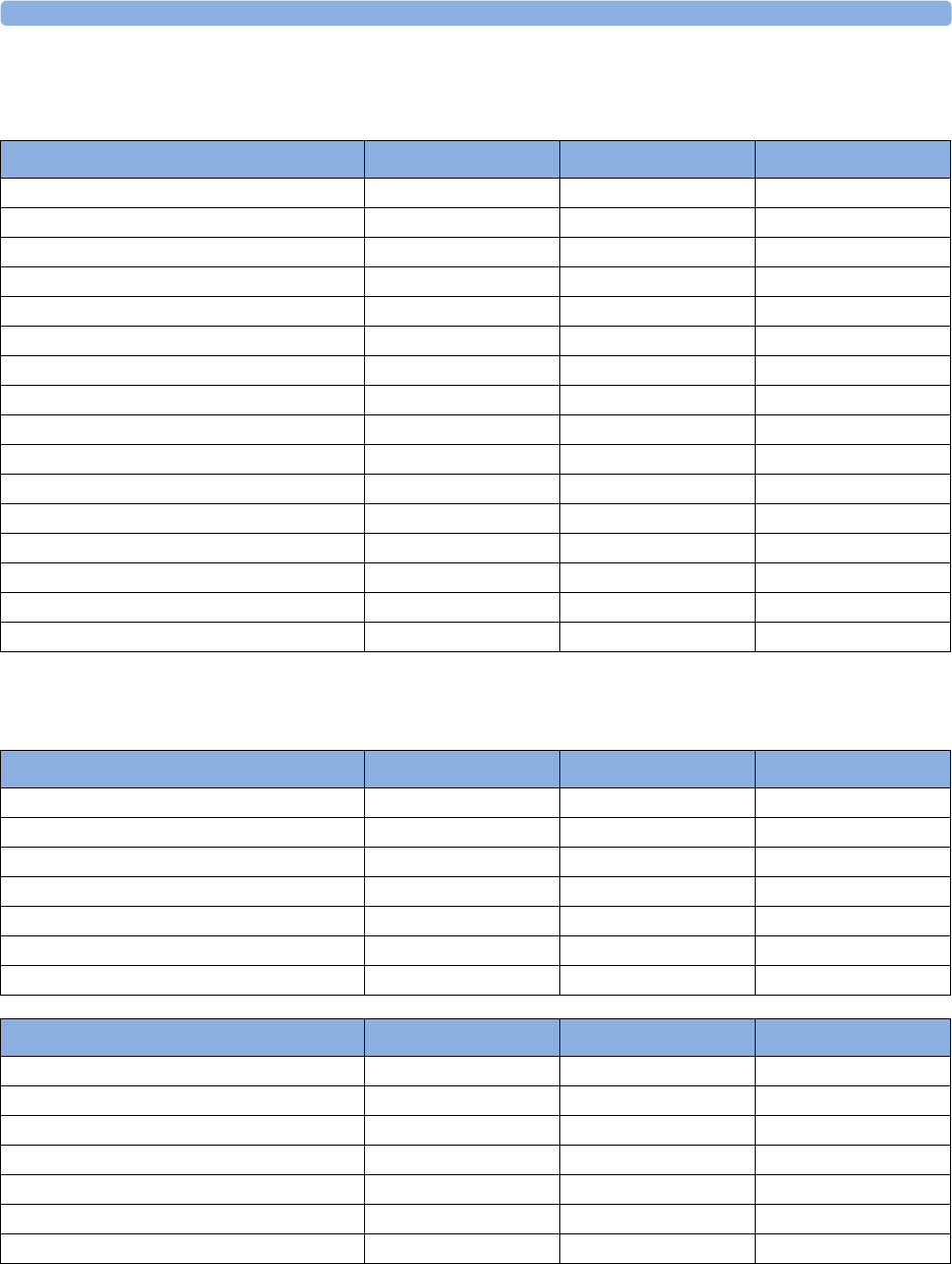
41 Default Settings Appendix
519
tcGas Default Settings
Intravascular Oxygen Saturation Default Settings
tcGas Settings Factory Adult Factory Pedi Factory Neo
tcpO₂ High Limit 80 mmHg 80 mmHg 80 mmHg
tcpO₂ Low Limit 50 mmHg 50 mmHg 50 mmHg
tcpO₂ Alarms On On On
tcpCO₂ HighLimit 50 mmHg 50 mmHg 50 mmHg
tcpCO₂ Low Limit 30 mmHg 30 mmHg 30 mmHg
tcpCO₂ Alarms On On On
Site Timer 4.0 hours 4.0 hours 4.0 hours
Disable Timer Not Allowed Not Allowed Not Allowed
Heat Switch Off (i.e., after Site Timer elapsed) No No No
Transducer Temp. 43.0°C 43.0°C 43.0°C
CO₂ Correction (Severinghaus) On On On
MetabolismFactor 8 mmHg 8 mmHg 8 mmHg
tcGas Unit mmHg mmHg mmHg
Temperature Unit °C °C °C
tcpO₂ Color Blue Blue Blue
tcpCO₂ Color Green Green Green
SO2 Settings Factory Adult Factory Pedi Factory Neo
Low Limit 70% 70% 70%
HR High Limit 80% 80% 80%
Alarms On On On
Light Intensity On On On
Color Yellow Yellow Yellow
Hb/Hct Entry Hct [%] Hct [%] Hct [%]
Factor Entry Disabled Disabled Disabled
SvO2 Settings Factory Adult Factory Pedi Factory Neo
Low Limit 60% 60% 60%
High Limit 80% 80% 80%
Alarms On On On
Light Intensity On On On
Color Yellow Yellow Yellow
Hb/Hct Entry Hct [%]
Factor Entry Disabled
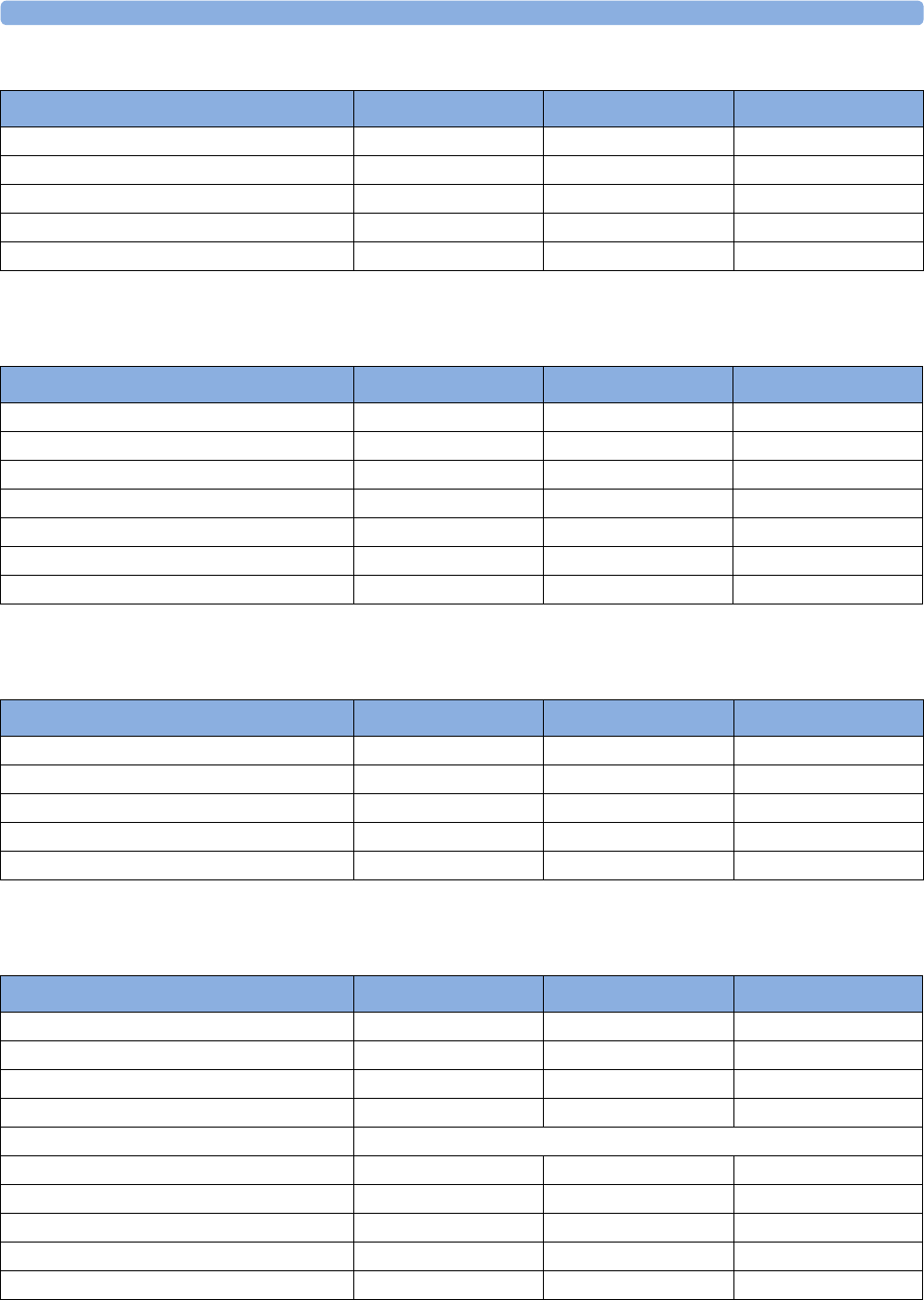
41 Default Settings Appendix
520
SvO2 Default Settings
ScvO2 Default Settings
EEG Default Settings
ScvO2 Settings Factory Adult Factory Pedi Factory Neo
Low Limit 70% 70% 70%
High Limit 80% 80% 80%
Alarms On On On
Light Intensity On On On
Color Yellow Yellow Yellow
SvO2 Settings Factory Adult Factory Pedi Factory Neo
Low Limit 60% 60% 60%
High Limit 80% 80% 80%
Alarms On On On
Light Intensity On On On
Color Yellow Yellow Yellow
Hb/Hct Entry Hct [%]
Factor Entry Disabled
ScvO2 Settings Factory Adult Factory Pedi Factory Neo
Low Limit 70% 70% 70%
High Limit 80% 80% 80%
Alarms On On On
Light Intensity On On On
Color Yellow Yellow Yellow
EEG Settings Factory Adult Factory Pedi Factory Neo
TP, SEF OnOnOn
MDF, PPF, Delta, Theta, Alpha, Beta Off Off Off
SEF Threshold 90% 90% 90%
Numeric Average 8 sec 8 sec 8 sec
Wave Scale 100µV (or ± 50µV if Show Gridlines is configured to Yes)
Show Gridlines No No No
Low Filter 0.5 Hz 0.5 Hz 0.5 Hz
High Filter 30 Hz 30 Hz 30 Hz
Impedance Limit 5 kOhm 5 kOhm 5 kOhm
Smoothing CSA On On On
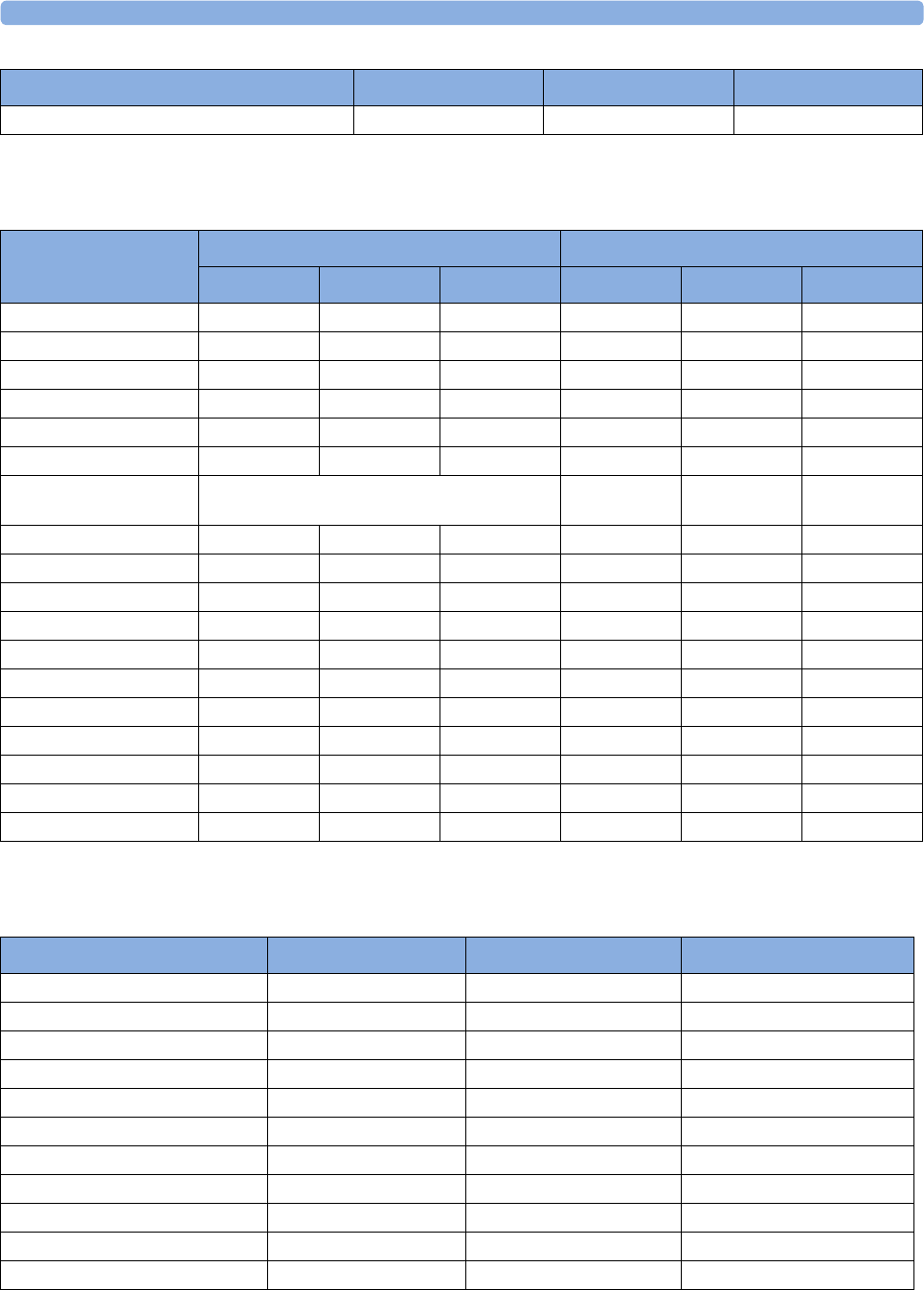
41 Default Settings Appendix
521
BIS Default Settings
NMT Default Settings
Color Yellow Yellow Yellow
EEG Settings Factory Adult Factory Pedi Factory Neo
BIS Settings
Factory defaults H10/H20/H40 H30 (deviations from H10/H20/H40)
Adult Pedi Neo Adult Pedi Neo
SQI OnOnOn
EMG OnOnOn
SR On On On
SEF Off Off Off
TP Off Off Off
Bursts On On On Off Off Off
Scale 100µV (or +/- 50µV if Show Gridlines is
configured to Yes)
Show GridlinesNoNoNo
Filters OnOnOn
Low Filter 2 Hz 2 Hz 2 Hz
High Filter 70 Hz 70 Hz 70 Hz
Notch Filter On On On
High Limit 70 70 70
Low Limit 20 20 20
Alarms On On On
Show ImpedValues Off Off Off
Smoothing Rate 30 sec 30 sec 30 sec 15 sec 15 sec 15 sec
Color Yellow Yellow Yellow Magenta Magenta Magenta
NMT Settings Factory Adult Factory Pedi Factory Neo1
Stimulation TOF TOF TOF
Mode Manual Manual Manual
Repeat Time TOF 30sec 30sec 30sec
Repeat Time Twitch 12 sec 12 sec 12 sec
Current 50 mA 50 mA 50 mA
Pulse Width 200 µsec 200 µsec 200 µsec
Alarms Off Off Off
Suppress Alarms On On On
TOFcnt High Lim 33 3
Stimul. Modes TOF/PTC TOF/PTC TOF/PTC
Value Lifetime 5 min 5 min 5 min
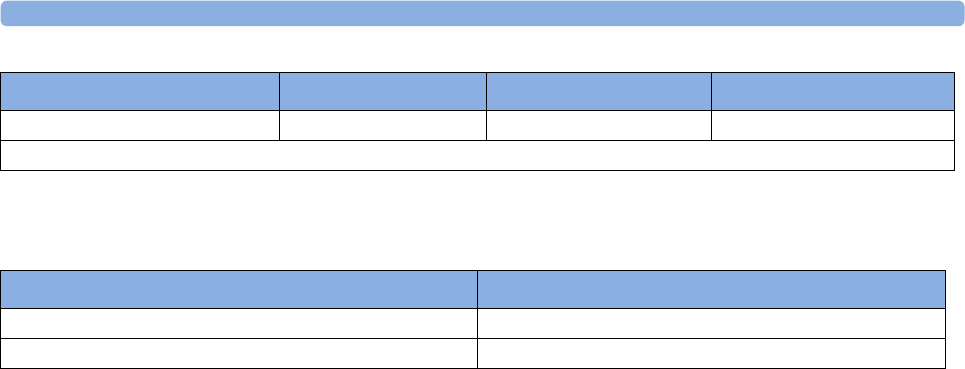
41 Default Settings Appendix
522
VueLink Default Settings
Color Light Green Light Green Light Green
1The NMT Measurement may not be used for neonatal patients and is therefore not supported in the neonatal mode.
NMT Settings Factory Adult Factory Pedi Factory Neo1
VueLink Settings Factory defaults
Device Alarms Ignored
Color Green

523
1Index
#
10-lead placement (ECG) 142
12-lead placement (ECG) 142
3-lead placement (ECG) 140
4-slot flexible module rack 19
5-lead placement (ECG) 141
8-slot flexible module rack 19
A
AAMI ECG lead labels 139
abdominal breathing 186
and Resp electrode placement 186
aberrantly conducted beats 156
accessories 242, 256
10-electrode cable sets 421
3-electrode cable sets 420, 422
5-electrode cable sets 420, 422
6-electrode cable sets 420
C.O. 228, 230, 233, 247, 436
CO2 243, 247, 248, 249
CO2 (mainstream) 437, 438
CO2 (microstream) 438
ECG 133
Hospira Inc. 440
NBP 423
adult cuffs 425
comfort cuffs 423
disposable cuffs 425
multi-patient comfort cuff kits 423
neonatal/infant cuffs (single
patient) 426
reusable cuffs 423
single patient, adult/pediatric soft
cuffs 425
Nellcor 429
pressure 426
Pulsion 426
resp 419
set combiners and organizers 421, 423
SpO2 191, 192, 429
Nellcor adhesive sensors
(disposable) 429
Philips sensors (disposable) 429
Philips sensors (reusable) 429
SvO2 273, 274, 441
temperature 435
trunk cables 419, 422
active alarms 59
address, Philips 444
addressograph (printer configuration
setting) 376
adjusting ST measurement points 168
adjusting wave scale (pressure) 217
adjusting wave size (CO2) 250, 260
admitting a patient
editing information 109
quick admit 108
advanced event surveillance 333
airway adapter 249
CO2, microstream accessory 249
alarm latching 72, 161
alarm limits 67, 68, 70, 377
changing 37
checking 67
manually adjusting 68
narrow 70
report 312
setting 67
ST 171
switching auto limits on/off 70
using automatic limits 70
wide 70
window 68
alarm recording 360
alarm source selection, disabled 183
alarms 59
acknowledging 63
active 59
active SpO2 source 201
alphabetical listing 75
apnea delay 251, 260
apnea delay time (Resp) 188
arrhythmia 154
audible indicators 61
awrr limits 252
chaining 162
CO2 specific 251
CO2, apnea delay 251, 260
CO2, awRR 252
desat, SpO2 200
effect on pressure alarms during
zero 215
extending pause time 66
high priority 59
INOP 59
ISO/IEC standard 62
limit, SpO2 479
NBP source 209
patient messages 75
pausing 64
physiological 75
pleth as source 200
recordings 73
red 59
restarting 66
reviewing 71
reviewing messages 71
reviewing window 71
selftest 73
silencing 63
SpO2 high and low limits 199
SpO2 specific 194
ST 171
suspended symbol 66
SvO2, behavior during
measurement 272
switching on and off 41
temperature 211
testing 73
tone configuration 62
traditional 62
volume, changing 62
VueLink and external devices 389
yellow 59
alphabetical listing of alarms 75
analog output 447
ECG 133
pressure 213
annotating events 342
annotation 342
apnea alarm delay 251, 260
apnea alarm delay time (RESP) 188
apnea alarms 188
and Resp detection modes 187
arrhythmia 154
aberrantly conducted beats 156
analysis, how it works 154
atrial fibrillation and flutter 155
beat labels 157
initiating learning 159, 160
intermittent bundle branch block 156
learning during ventricular rhythm 160
levels of analysis 149, 154
monitoring non-paced patients 155
monitoring paced patients 155
options 154
relearning 159
relearning and lead fallback 160
status messages 157
switching on/off 70
understanding the display 156

524
arrhythmia alarms 59, 160, 161, 162, 164, 475
adjusting alarm limits 161
all yellow on/off 161
chaining 162
latching 72
multiple 162
PVC-related alarms 164
sinus and SV rhythm ranges 478, 479
switching on/off 70
timeout periods 161
arrhythmia monitoring 152
and defibrillation 152
arrhythmia options 149
arrhythmia relearning 145
with EASI INOP 145
arterial catheter constant (PiCCO) 230
arterial pressure source 221
arterial pulsation 191
arterial values 263
artifact suppression (pressure) 218
Aspect Medical Systems Inc 445
atrial fibrillation and flutter 155
audible latching (arrhythmia alarms) 161
auto alarm limits 70
switching on/off 70
auto detection mode (Resp) 186
auto ECG wave gain (recordings) 362
auto window (care groups) 131
autofilter 137
automatic arrhythmia relearn 159
automatic default setting 41
automatic NBP 208
repeat time 206
autosize 137
ECG wave 136
average trend events 334
awRR alarms 252
limits 252
B
balloon inflation, wedge measurement 222
baseline 168, 174
ST map, updating 174
ST, updating 168
basic arrhythmia option 149, 154
basic event surveillance 333, 338
setup 230
beat labels 157
arrhythmia 154
BIS 285
Continuous Impedance Check 288
Cyclic Impedance Check 288
filters 290
Ground Check 288
impedance indicators 289
monitoring 36
monitoring setup 286
numerics 206
on/off 290
safety information 152, 188, 239
smoothing rate 290
changing 37
window 68
blood pressure. See also NBP (non-
invasive) or PRESS (invasive) 203
BSA formula (trends) 328
buffer (EEG) on reports 284
buffer (EEG) on screen 282
C
C.I. 226
C.O. 225
accessories 242, 256
calibrating measurements (PiCCO) 232
curve alert messages 236
documenting measurements 235
editing measurements (PiCCO) 232
editing measurements (RH method) 235
flow-through method 233
hemocalc window 228
hemodynamic parameters available 226
injectate guidelines 235
PiCCO method 228
Procedure window 226
prompt messages 238
results table 226
right heart thermodilution method 233
saving measurements (PiCCO) 232
setup for PiCCO method 230
setup for RH method 233
temperature unit 226
warning messages 238
C.O./CCO safety information 239
Calc Type 326
calculating 381
drug infusions 381
calculating cerebral perfusion 221
calculating oxygen extraction 277
calculating pulse pressure variation 221, 229
calculating temperature difference 212
calculations 325, 326
pop-up keys 33, 335
calculations reports 329
calculations review 327
calculator 35
calibrating 210
CO2 transducer 247
tcGas transducer 265
calibrating C.O. measurements 232
calibration 210, 219, 273, 274, 276
NBP 210
pressure 219
pressure transducer 219
SvO2 light intensity 274
SvO2, pre-insertion 273
calibration status indicators (C.O) 232
capnography 25
mainstream 25
Microstream 25
capturing loops 400
carbon dioxide, see CO2 241, 255
cardiac output 225, 378
how the measurement works 203
report 312
cardiac overlay 185, 187
and Resp detection modes 187
when measuring Resp 185
cardiotach alarms 149
care groups 131
alarm notification 131
pop-up window 131
catheter 274
SvO2, insertion 274
catheter constant, setting (PiCCO) 230
catheter preparation 273
SvO2 271
CCO 225, 228, 230, 232
calibration status indicators 232
choosing the correct pressure
source 230
how the measurement works 203
PiCCO method 228
cerebral perfusion 221
CFI 226
chaining 162
change screen menu 37
changing 37
changing ECG lead sets 139
changing EEG wave scale 283
changing EEG wave speed 283
changing Resp detection mode 186
changing Resp wave size 187
changing Resp wave speed 188
changing screen content 37
changing screens 37
changing wave scale 283
checking battery charge 407
checking paced status 134
cleaning 411
infection control 411
method 412
monitoring accessories 413
recommended substances 412

525
recorder printhead 413
clock 397
displaying on main screen 397
CO2 241
airway adapter 249
alarms, apnea delay 251, 260
alarms, awRR 252
alarms, specific 251
awRR alarm limits 252
checking transducer accuracy 247
correction, humidity 250
correction, N2O 250
corrections 250, 260
FilterLine 249
mainstream accessories 242, 256
measuring mainstream 243, 247
measuring microstream 249
method, mainstream 241
method, microstream 241
method, sidestream 241
microstream accessories 249
microstream extension 248
removing exhaust gases 246, 250
transducer, calibrating 247
transducer, using 247
troubleshooting 417
wave scale, adjusting 250, 260
CO2 (mainstream) 437, 438
accessories 242, 256
CO2 (microstream) 438
accessories 242, 256
combi-events 340
computation constant (RH) 234
configuration 36
drug calculator 381
trends database 319
configuration mode 36
conflict 44
label 44
connecting BIS accessories 286
connecting temperature probe 211
connection direction symbol 445
connectors 447
continuous cardiac output 225
Continuous Impedance Check (BIS) 288
conventional 12-lead ECG 143
correcting the NBP measurement 205
counting events 340
CPAP (RESP) 186
cuff 205, 206
pressure, NBP 206
selection, NBP 205
current view 172
ST map 172
curve alert messages (C.O.) 236
Cyclic Impedance Check (BIS) 288
D
database 339
events 334
trends 319
date, setting 47
default profile 40
default settings 501
defibrillation 152, 284
and arrhythmia monitoring 152
and ECG monitoring 152
during EEG monitoring 284
delayed recording 360
deleting events 339
demonstration mode 36
desat alarm, SpO2 200
detection modes (Resp) 186
device driver 390, 393
language conflict with monitor 390, 393
diagnostic (ECG filter setting) 137
disabling touch operation 30
disconnect INOPs 64
silencing 63
disinfecting 411
infection control 411
recommended substances 412
display 156, 166, 186, 206
ECG 134
NBP 206
Resp 186
ST 166
display settings 39
disposal 417
gas cylinder 417
parts and accessories 417
documenting events 342
dosemeter (drug calculator) 384
dPmax 226
drip table (drug calculator) 385
drug calculator 381
dual SpO2 201
dual Temp measurement 212
dyshemoglobins 192
intravascular (SpO2) 192
E
early systolic blood pressure, NBP 206
EASI 138, 145
activating 138
ECG monitoring 145
lead placement 138, 185
EASI ECG lead labels 139
ECG 133
accessories 242, 256
alarms off (Config Mode) 152
changing lead sets 139
choosing electrode sites 138
conventional 12-lead 143
external pacing electrodes 152
filter settings 137
fusion beat pacemakers 152
intrinsic rhythm 152
modified 12-lead 143
New Lead Setup 139
pacemaker failure 152
rate adaptive pacemakers 152
unfiltered 137
wave size 136
ECG analog output 447
ECG cable 152
for operating room 152
ECG cables, connecting 133
ECG connector 133
ECG electrode colors 139
ECG electrode placement 152
during electrosurgery 152
ECG gain 362, 371
in reports 332
ECG lead labels 139
ECG lead placement 138
choosing EASI/Standard 138
ECG leads monitored 139
ECG report 371, 379
lead layout 371
ECG safety information 152
ECG source tracking 124
ECG wave 136
autosize 137
calibration bar 137
ectopic status messages (arrhythmia
monitoring) 158
editing C.O. measurements (PiCCO
method) 232
editing C.O. measurements (RH
methods) 235
EEG
accessories 242, 256
monitor configuration and upgrade 284
EEG monitoring
changing filter frequencies 283
changing wave scale 283
changing wave speed 283
electrode-to-skin impedance 281
gridlines 283
impedance quality indicators 281
safety information 152, 188, 239
setting report buffer time 284
setting screen buffer time 282

526
setup 230
skin preparation 133
switching numerics on and off 283
EEG wave 290
changing scale 290
electrical interference
during EEG monitoring 284
electrode placement (ECG) 133, 143
conventional 12-lead 143
modified 12-lead 143
electrode placement (Resp) 185, 186
with abdominal breathing 186
with lateral chest expansion 186
electrode-to-skin impedance (BIS) 289
electrode-to-skin impedance (EEG) 281
electrosurgery 152
and ECG 152
EMC interference 188
Resp 186
EMI filter for ECG 137
end case reports 372
setup 230
enhanced arrhythmia option 149, 154
entering values 328
calculations 325, 326
event database 339
event episode reports 372
event groups 334
event report 346
event review reports 372
event snapshots 334
event surveillance 333
options 154
events 333
annotation 342
combi-events 340
counting oxyCRG/NER events 340
event counter 340
event episode 334
event episode recording 344
event episode types 334
event episode window 342
event post-time 334
event pre-time 334
event retriggering 337
event review recording 343
event review window 341
event summary view 340
event time 334
event triggers 336
event values 342
manual event triggers 339
setting up NER 338
events pop-up keys 335
EVLW/EVLWI 226
exhaust gases, removing 246, 250
extension cable for SpO2 192
external devices 387, 388, 389
alarms and INOPS 389
connecting to VueLink 387
connecting via VueLink 388
external pacing electrodes 152
and ECG monitoring 152
extreme bradycardia alarm 151, 183
extreme pressure alarms 218
extreme rate alarms 151, 183
extreme tachycardia alarm 151, 183
F
fallback (ECG) 139
FAST 191
Fourier artefact suppression
technology 191
filter (ECG filter setting) 137
filter (ECG) 137
filter frequencies (EEG) 283
FilterLine 249
CO2, microstream accessory 249
filters 290
BIS 290
flexible module rack 19
flushing invasive pressure accessories 213
FMS-4 19
FMS-8 19
functional arterial oxygen saturation 191
fusion beat pacemakers 152
and ECG monitoring 152
G
gas cylinder 417
empty, disposing of 418
GEDV/GEDVI 226
getting started 48
global trend time 320
graphic trend 312
report 312
graphic trends 313
graphic trends report 319
gridlines (EEG) 283, 290
Ground Check (BIS) 288
H
hardkeys 33
help 71
INOPS 71
hemodynamic calculations 325
hemodynamic measurement module
extension 27
hemodynamic parameters 226
high filter (EEG) 283
high pass filter (BIS) 290
high resolution recording 360
high-res trend event episodes 334
high-res trend waves 331
about 41
OxyCRG 331
high-res waves 332
in reports 332
recordings 73
HiResTrnd 334
see high-res trend 334
horizon trend 320
trend time 320
HR = RR (Resp) 186
HR alarms 152
when arrhythmia off 152
HR alarms off (Config Mode) 152
HR and pulse alarm source selection 183
HR from (heart rate source) 182
humidity correction 250
hypotension evaluation 352
I
IEC ECG lead labels 139
impedance indicators (BIS) 289
impedance quality indicators 281
IMV (Resp) 186
infection control 411
cleaning 411
disinfecting 411
sterilizing 411
Information Center 113, 114
transferring patients 113, 114
transferring patients using IIT 114
injectate guidelines for C.O. 235
injectate volume setting (C.O.) 230
INOPs 59, 64, 389
from external devices 389
indicators 59
silencing 63
installation 447
connectors 447
integrated PC 50
intermittent bundle branch block 156
intermittent mandatory ventilation
(Resp) 186
intravascular dyshemoglobins (SpO2) 192
intrinsic rhythm 152
invasive pressure 213
in-vivo calibration, SvO2 274, 276

527
iPC 50
desktop 51
input devices 51
shutting down 52
ISO point (ST) 169
ITBV/ITBVI 226
J
J point (ST) 169
K
keys 30, 33
hardkeys 33
permanent keys 30
pop-up 33
L
label conflict resolution 44
labels 44
resolving conflict 44
lactate measurement 352
language conflicts with device driver 390
latching 72
alarms, behavior 72
latching arrhythmia alarms 161
lateral chest expansion (neonates) 186
monitoring Resp 186
LCW/LCWI 226
lead fallback 160
and arrhythmia relearning 160
lead fallback (ECG) 139
lead labels (ECG) 139
lead placement 138, 185
activating EASI/Standard 138
for Resp measurement 185
leads monitored (ECG) 139
Leads Off INOP (ECG) 139
levels of arrhythmia analysis 154
levels of event surveillance 333
line frequency interference (BIS) 290
loops 399, 400, 401
capturing 400
loop size in window 400
loops report 401
source device 401
volume-flow 399
low filter (EEG) 283
low pass filter (BIS) 290
LVCI 226
M
M8048A 19
mainstream 25
capnography 25
mainstream CO2 242, 247, 256
accessories 242, 256
measuring 243, 247
maintenance 415
schedule 415
visual inspection 415
management bundle recommendations 354
manual detection mode (Resp) 187, 188
and apnea alarms 188
manually triggering events 339
manufacturer's information 444
map 172
ST 172
Mason-Likar lead system 143
max hold setting (CO2) 241
mean pressure calculation (trends) 328
measurement 41, 42
setting up 41
switching on and off 41
wave speed, changing 42
measurement module extension 25, 27
M3012A 27
M3015A 25
M3016A 25
measurement modules 48
measurement points, ST 168
measurement selection window 44
measurement settings 39
merging patient data 118
methemoglobin (SpO2) 192
Microstream capnography 25
microstream CO2 248, 249
accessories 242, 256
measuring 243, 247
mismatch 117
patient data, resolving 117
MMS 115
using for patient transfer 115
modified 12-lead ECG 143
modified screen history 37
modifying 37
screens 37, 39
module 263, 387, 391
tcGas 263
VueLink 387
VueLink Type A and Type B 387
monitor 49
starting monitoring 49
monitor (ECG filter setting) 137
monitor defaults 501
monitor revision 48
how to find 48
monitor settings 39
changing 37
monitoring 36
monitoring mode 36
mouse 30
using 30
multi-measurement module 133
ECG connector 133
N
N2O correction 250
narrow alarm limits 70
navigating 30
mouse 30
permanent keys 30
trackball 30
NBP 203
adult cuffs 425
alarm source 209
ANSI/AAMI SP10-1992 203
automatic mode, enabling 208
calibrating 210
comfort cuff kits 423
comfort cuffs 423
cuff pressure 206
cuff, applying 205
cuff, selecting 205
cuff, tightness 205
disposable cuffs 425
how the measurement works 203
measurement correction 205
measurement limitations 204
measurement methods, auto 204
measurement methods, manual 204
measurement methods, sequence 204
measurement methods, stat 204
measurement, starting 207
measurement, stopping 207
neonatal cuffs (disposable) 426
numerics 206
oscillometric method 203
pediatric cuffs 425
preparing to measure 205
repeat time 206
repeat time for automatic 208
repetition time, setting 208
reusable cuffs 423
single patient, adult/pediatric soft
cuffs 425
site inspection 192
time of last measurement 206
units 206
venous puncture 210
neonatal event counting 340
neonates 186
Resp electrode placement 186
NER setup 338

528
non-invasive blood pressure. See NBP 203
non-paced patients 155
arrhythmia monitoring 152
notch filter (BIS) 290
numerics 206
explanation of NBP display 206
nurse call 66
O
on screen calculator 35
operating 30
mouse 30
permanent keys 30
trackball 30
operating modes 36
configuration 36
demonstration 36
monitoring 36
passcode protection 36
service 36
operating room ECG cable 152
orange ECG cable 152
organizers 421, 423
Oridion Systems Ltd 445
Original Calc pop-up key 327
oscillometric NBP measurement
method 203
overlapping screen trends 321
oxyCRG 331, 340
event counting 340
OxyCRG event episodes 334
oxygen extraction 277
oxygenation calculations 325
P
pace pulse rejection (ECG) 134, 136
about 41
switching on/off 70
paced patients 136, 152, 155
arrhythmia monitoring 152
repolarization tails 136
safety information 152, 188, 239
setting status 152
paced status 134
checking 67
pacemaker failure 152
paper size 372
for reports 372
parameter scales 317
trends 317
passcode protection 36
patient 203
category, NBP 203
patient alarm messages 75
patient mismatch 117
patient reports 376
contents 376
patient trends 311
viewing 311
paused alarms 64, 66
extending time 66
restarting 66
PAWP 222
performance specifications 475
performance test 495
performing calculations 327
perfusion indicator 191, 192, 200
pf loops 399
Philips contact information 444
physiological alarms 59
PiCCO method 228
C.O. 228
CCO 228
setup 230
pleth alarm source 200
pleth wave 200
pleth waveform 191
pop-up keys 33, 335
events 334
power 49
disconnecting from 49
mains power 49
disconnecting from 49
PPV 221, 229
preparing skin 133
for ECG 133
pressure 213
alarms during zero 215
arterial source 221
calibration pressure 219
cerebral perfusion, calculating 221
performance specifications 475
wave scale 217
wave size 136
wedge 222
wedge, editing 223
zeroing the transducer 215
pressure accessories 426
pressure analog output 224
pressure artifact suppression 218
pressure of NBP cuff 206
pressure transducer 215
calibration 219
zeroing 215
pressure-flow loops 399
pressure-volume loops 399
previous screen 37
primary lead (ECG) 134
selecting 134
print job 374
suspended 374
printer 373, 374, 375
disabling 30
settings 41, 125, 501
status messages 157
unavailable 374
printing 369
C.O. measurements 235
calculations reports 329
event reports 342
ST map reports 175
status log 417
trends reports 319
wedge 222
priority list for trends 316
probes 211
disposable temperature 211
profiles 39, 40
default profile 40
patient category 39
swapping 40
swapping setting block 40
protocol log 355
ProtocolWatch 349
SSC sepsis 349
pulse 181, 182
system pulse source 181
pulse numerics for SpO2 192
pulse pressure variation 221, 229
Pulsion Medical Systems AG 445
pv loops 399
PVC-related alarms 164
PVR/PVRI 226
Q
QRS tone pitch, SpO2 201
QRS volume, changing 137
QT alarms 178
QT baseline 177
QT measurement algorithm 175
QT monitoring 176
limitations 176
QT/QTc monitoring 175
quick admit 108
R
radiated field immunity 188
Resp 186
rate adaptive pacemakers 152
and ECG monitoring 152
ratemeter (drug calculator) 384

529
RCW/RCWI 226
realtime recording 360
realtime report 378
realtime reports 372
content 372
rear connectors 448
Recorder 357
reloading paper 364
recorder 413
cleaning the print head 413
recorder status messages 365
recording 357
alarm 62
annotation 342
beat-to-beat 360
C.O. measurements 235
context 360
delayed 360
drug calculations 386
ECG gain 362, 371
extending 359
high resolution 360
preventing fading ink 363
procedure 360
realtime 360
recording strip 362
recording strip code 363
ST segments 168
starting and stopping 359
types 360
wave scale 217
waveforms recorded 363
wedge 222
recording alarms 73
recording events 342
recording strip code 363
recycling 417
reference waves, wedge measurement 222
rejecting pace pulses 134
relearning arrhythmia 159
repolarization tails 136
report 312
cardiac output 225, 378
event review 346
reports 369
alarm limits 377
calculations 325, 326
choosing paper size 372
contents 376
drip table 386
drug calculator 381
ECG 133
loops 399, 400, 401
patient trends 311
realtime report 378
re-routing 374
scheduled 372
setting up 41
ST map 175
stopping printouts 371
titration table 386
trends 319
re-routing reports 374
resampling vitals 326
resolving patient mismatch 117
resp accessories 419
Resp alarms 188
apnea alarm delay time 188
Resp detection level 188
and apnea detection 188
Resp detection modes 186, 187
and cardiac overlay 185
changing 37
Resp display 186
Resp monitoring 185
and cardiac overlay 185
Resp safety information 188
Resp wave 187, 188
changing size 187
changing speed 42
respiratory loops 401
source device 401
restarting paused alarms 66
results table (C.O.) 226
resuscitation bundle recommendations 353
re-triggering events 337
retrolental fibroplasia (SpO2) 199
review 327
calculations 325, 326
reviewing alarm messages 71
reviewing alarms 71
reviewing alarms window 71
RH method 234
computation constant 234
rhythm status messages (arrhythmia
monitoring) 157
right heart thermodilution method
(C.O.) 233
right heart thermodilution setup (C.O.) 233
rule of six 382
RVSW/RVSWI 226
S
safety 456
monitor 49
safety information 152, 188, 239
BIS 291
C.O./CCO 239
ECG 133
Resp 186
safety test 495
same patient data merge 118
saving C.O. measurements (RH
methods) 235
scale 136, 187
ECG wave 136
Resp wave 187, 188
scales 317
for trends waveforms 317
scheduled reports 372
screen 30
disabling touch operation 30
screen trend 320
trend time 320
screen trends 320
screening criteria 351
screens 37, 39
changing 37
changing content 37
understanding 37
visitor screen 39
secondary lead (ECG) 134
selecting 134
SEF numeric (BIS) 290
on/off 290
selecting the primary lead (ECG) 134
selecting the secondary lead (ECG) 134
selftest 73
sensor 191
disposable SpO2 191
sensor temperature 264
tcGas 263
sepsis management bundle 349, 354
recommendations 353
sepsis resuscitation bundle 349, 353
recommendations 353
sequence mode 208
service mode 36
set combiners 421, 423
setting the arterial catheter constant
(PiCCO) 230
setting the computation constant (RH) 234
setting up 41
trends 311
setting up reports 371
setting up the sequence 208
settings 41, 125, 501
about 41
default 501
measurement settings 39
monitor settings 39
screen settings 41
synchronized telemetry and
monitor 125

530
settings blocks 39
severe sepsis screening 349, 351
criteria 351
short yellow alarms on/off 161
signal quality of SpO2 194
sinus and SV rhythm ranges 478, 479
site timer 264
tcGas 263
skin preparation 133
ECG 133
smartkeys key 35
smoothing rate (BIS) 290
snapshots 334
events 334
source device 401
loops 399, 400, 401
source tracking 124
ECG 133
specifications 475
arrhythmia 154
speed 42
recording 360
wave speed, changing 42
SpO2 191
accessories 429
active alarm source 200
alarms specific to SpO2 194
arterial pulsation 191
assessing suspicious reading 194
calculating difference between
values 201
connecting the cables 192
disposable sensors 191
dual SpO2 201
extension cable 192
FAST technology 191
Nellcor adhesive sensors
(disposable) 429
perfusion indicator 191, 192, 200
Philips sensors (disposable) 429
Philips sensors (reusable) 429
pleth as alarm source 200
pleth wave 200
pleth waveform 191
pulse numerics 192
signal quality 194
site inspection 192
tone modulation 201
SpO2 desat alarm 200
SpO2 limit alarms 199
Sp-vO2 277
SQI numeric 290
on/off 290
SR numeric (BIS) 290
on/off 290
SSC guidelines 349
SSC sepsis 349
ST 164
adjusting alarm limits 161
baseline, updating 168
ensuring diagnostic quality 164
filtering 164
measurement points, adjusting 168
snippets 166
ST display 166
ST map 172
baseline, updating 174
current view 172
report, printing (ST map) 175
scale, changing 174
task window 174
trend view 173
trending interval, changing 175
ST maps 172
ST point 169
standard 10-lead placement 142
standard 3-lead placement 140
standard 5-lead placement (ECG) 141
standardized rate 381
starting monitoring 49
status log 417
printing 417
status messages 157
printer 373, 374, 375
recorder 413
status messages (arrhythmia) 157, 158
ectopic 158
rhythm 157
sterilizing 411
infection control 411
stopping reports printouts 371
surgical ECG cable 152
surviving sepsis campaign 349
suspended alarm 66
suspicious SpO2 reading 194
SV/SI 226
SvO2 271
accessories 242, 256
catheter insertion 274
catheter preparation 273
in-vivo calibration 274, 276
light intensity calibration 274
monitoring 36
SVR/SVRI 226
system pulse 181
systolic blood pressure, NBP, early 206
T
tabular trends 313
Tamb 212
task window for ST map 174
Tcereb 212
tcGas 263
sensor temperature 264
transducer, calibrating 247
tcGas site timer 264
technical alarms messages 81
see INOPs 81
telemetry alarms 124
suspending at bedside 124
temperature 211
accessories 435
alarm settings 211
connecting probe to monitor 211
difference, calculating 212
dual Temp measurement 212
extended label set 212
first 212
label 44
making a measurement 211
probe, disposable 211
probe, selecting 211
second 212
tcGas sensor 264
temperature probe 211
testing alarms 73
time, setting 47
timers 395, 396, 397
counting direction 396
displaying on main screen 397
notification 397
selecting label 396
viewing 311
Tinj Probe Type 230
titration table (drug calculator) 385
tone configuration, alarm 62
tone mod (SpO2) 201
tone modulation 201
touchscreen 30
disabling 30
TP numeric (BIS) 290
on/off 290
trackball 30
trackball, using 30
trademarks 445
transcutaneous gas measurements 263
transducer 215, 247, 265
CO2, accuracy 247
CO2, calibrating 247
pressure, zeroing 215
tcGas, calibrating 265
transferring centrally-monitored
patients 113, 114
using IIT 114

531
transferring patients with MMS 115
trend time 320
global 320
trend view 173
ST map 172
trending interval 175
ST map 172
trends 311
automatic unit conversion 328
automatic value substitution 328
database configuration 319
resolution 316
screen trends 320
setting parameter scales 317
setup 230
viewing 311
trends pop-up keys 312
trends priority list 316
ST map 172
trigger conditions 337
events 337
triggers 336
for events 336
troubleshooting 417
CO2 247, 248, 249
trunk cables 419, 422
Ttymp 212
Tvesic 212
U
unfiltered ECG signal 137
upgrading 284
effect on EEG configuration 284
V
V electrode placement (ECG) 142
venous puncture 210
ventilation calculations 325
viewing arrhythmia waves 156
viewing trends 311
visible waves report 372
visitor screen 39
visual latching (arrhythmia alarms) 161
vital signs 312
recording 319
report 319
vital signs report 319
volume 62
alarm 62
volume-flow loops 399
VueLink 387
alarm messages 389
device driver conflicts 390
language conflicts 390
module 387
module options 387
module setup 388
visible waves and numerics 387
W
wave 42, 217, 250, 260
changing speed 42
scale (CO2) 250, 260
scale (pressure) 217
size (CO2) 250, 260
size (pressure) 217
wave channel speed 42
wave group speed 42
wave scale (EEG) 290
changing 37
wave size 136
Resp 186
wave size (ECG) 136
wave speed 42
eeg speed 42
wave speed 42
global speed 42
respiratory speed 42
wave speed (EEG) 283
wave speed (Resp) 188
wedge 222
balloon inflation 222
editing 223
pulmonary artery 222
reference waves 222
wide alarms limits 70
Z
zero 215
effect on pressure alarms 215
zeroing 215
pressure transducer 215

532

Part Number 453564443141
Published in Germany 11/2013
*453564443141*
